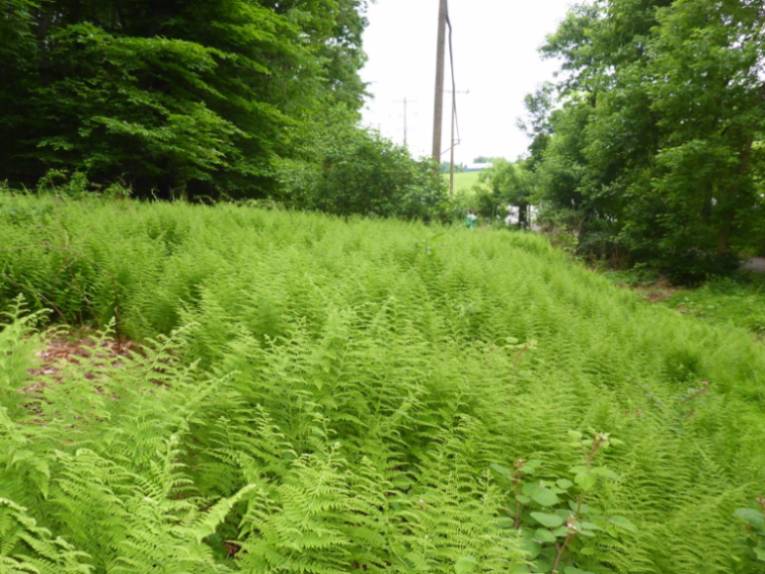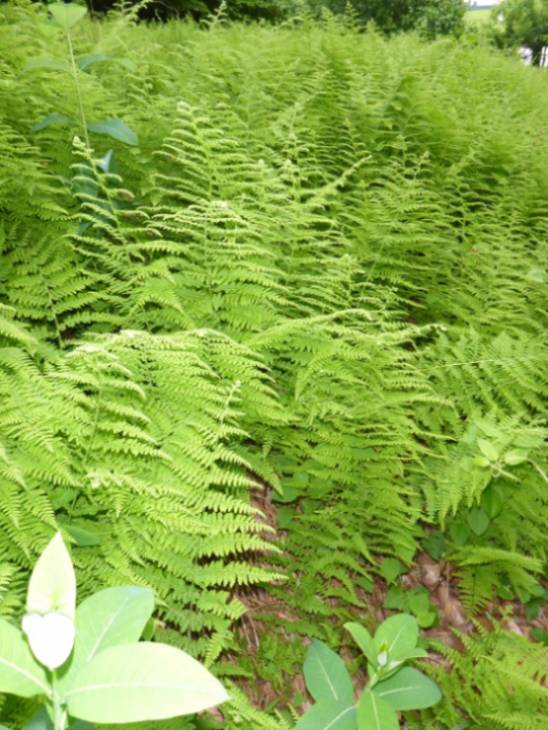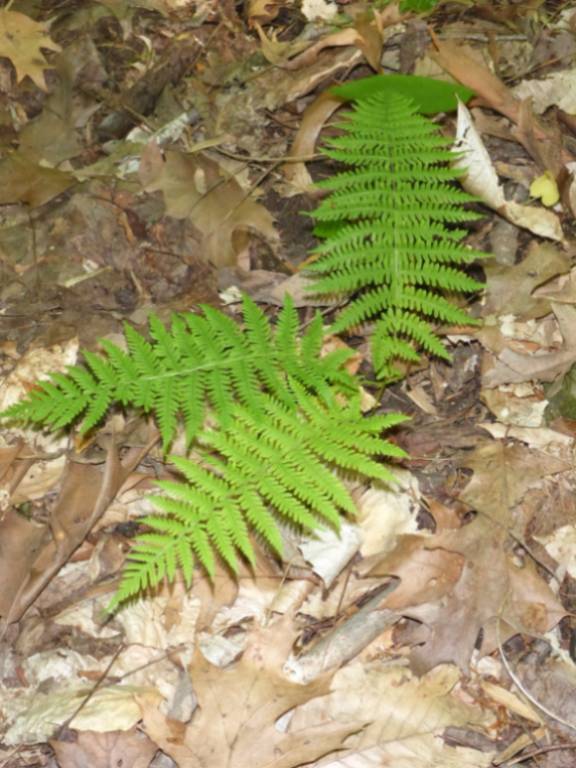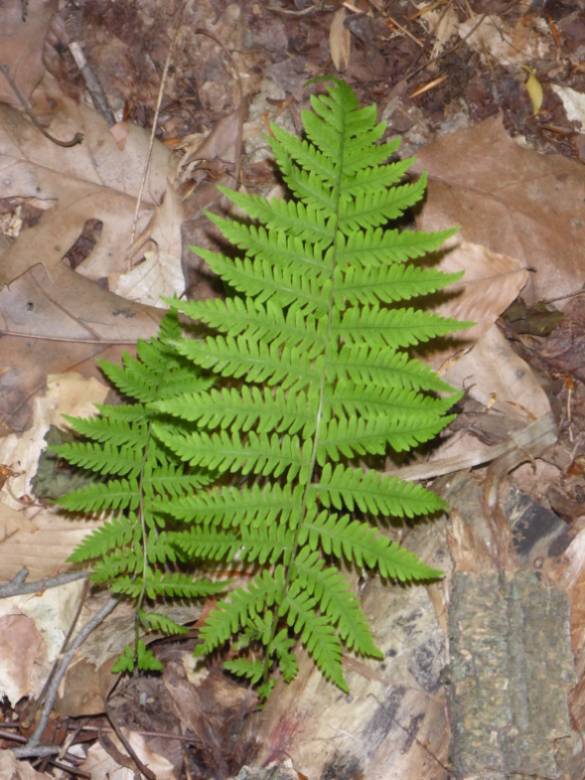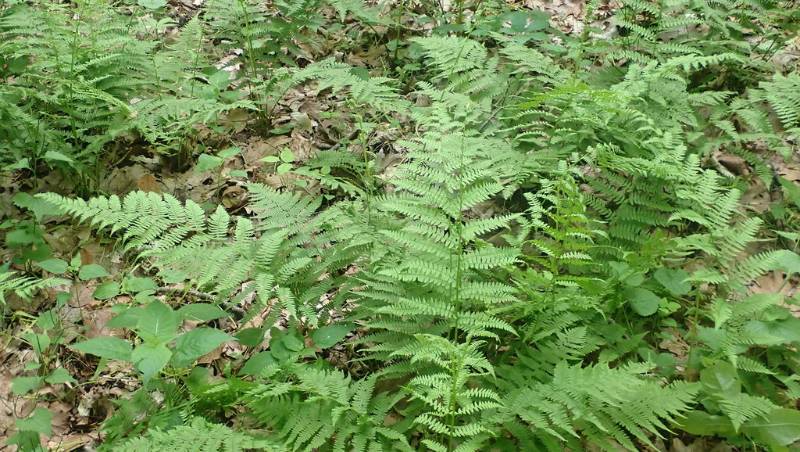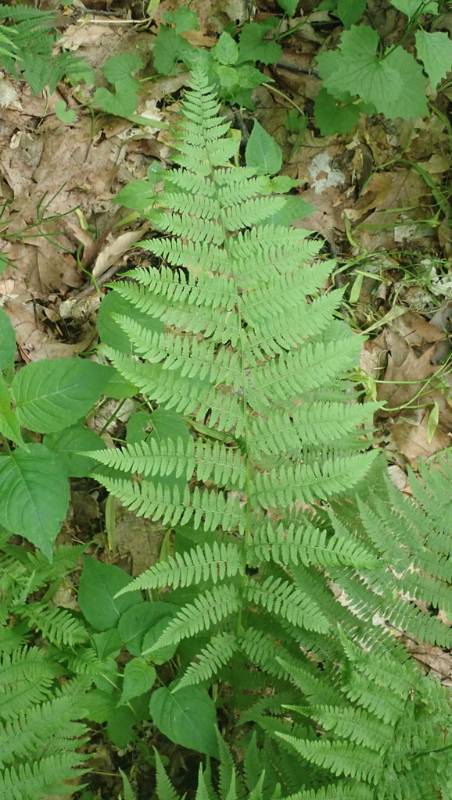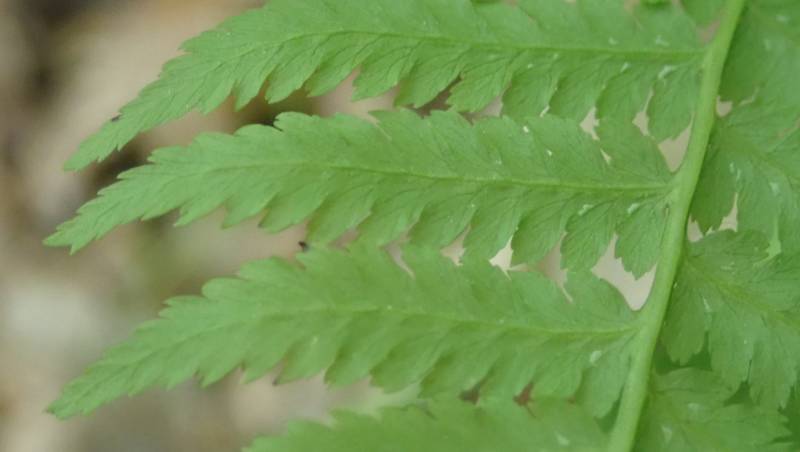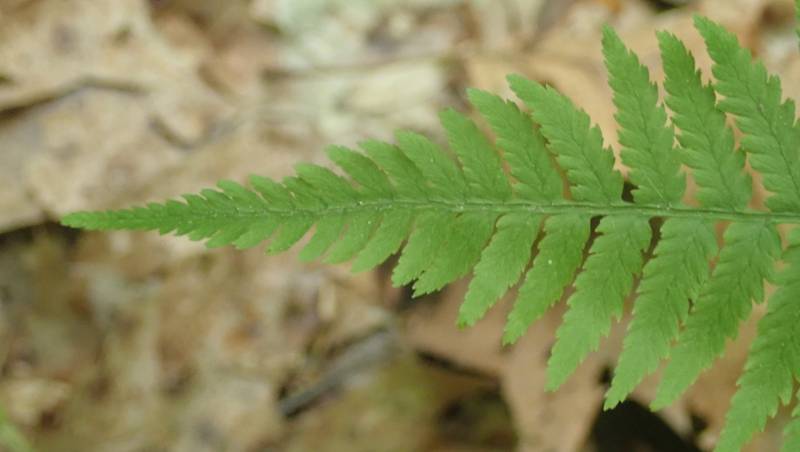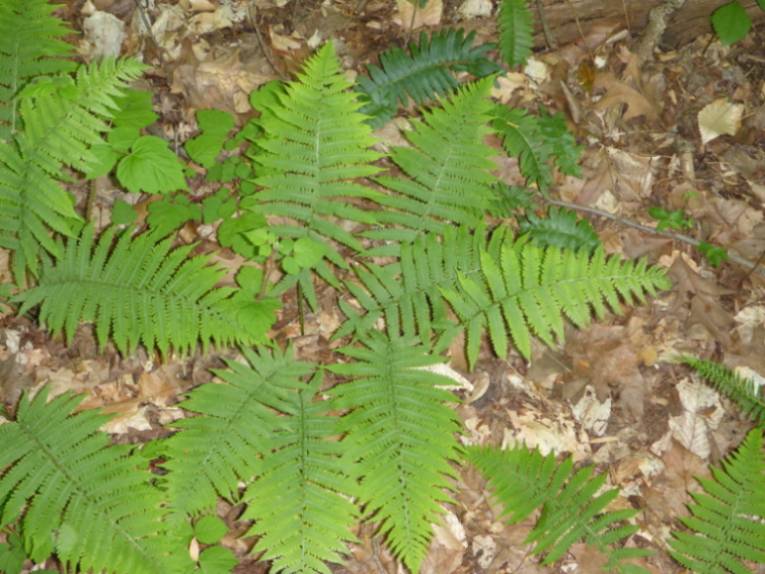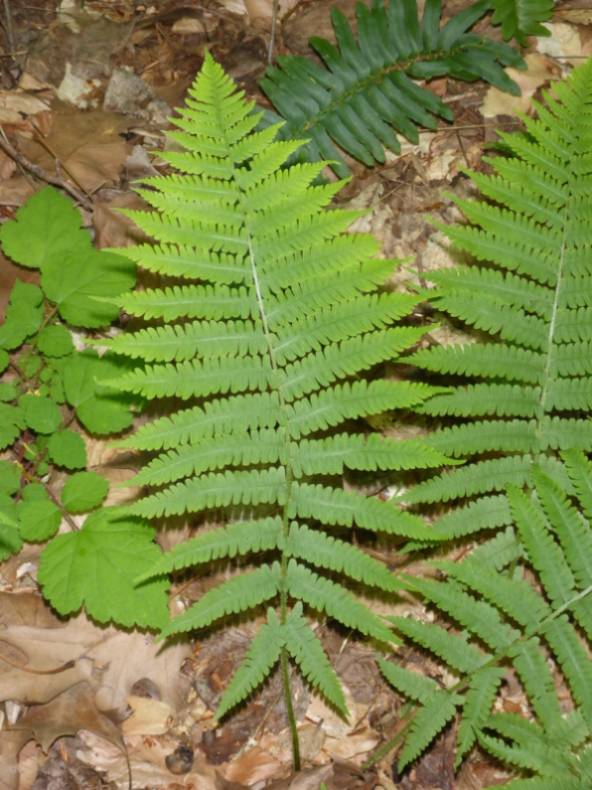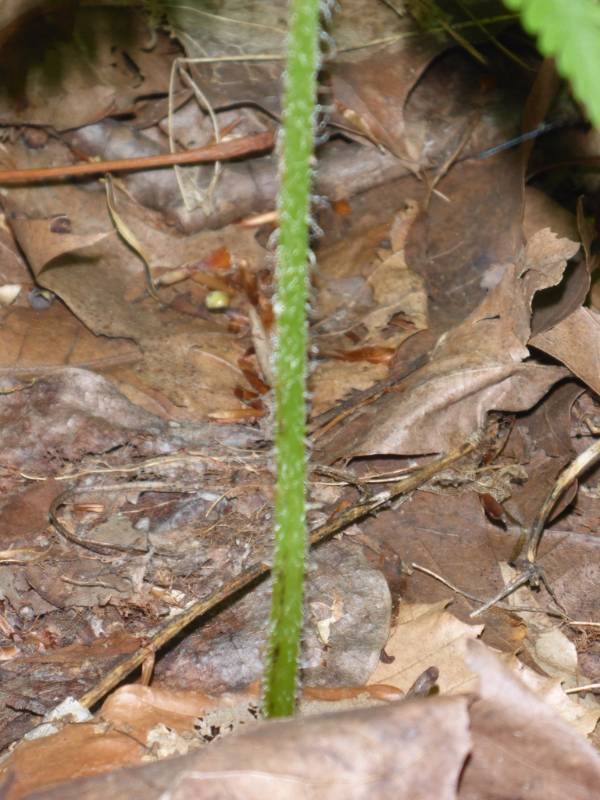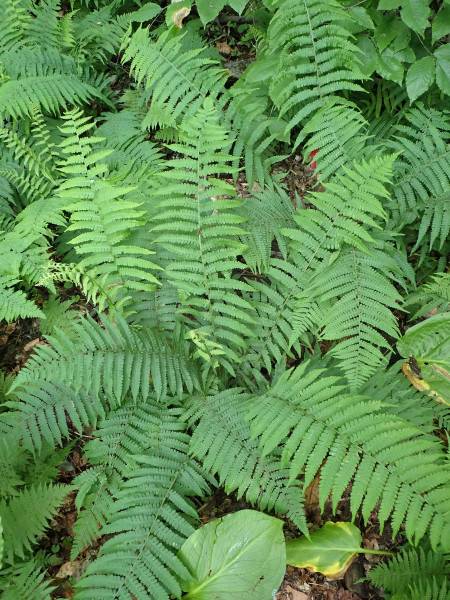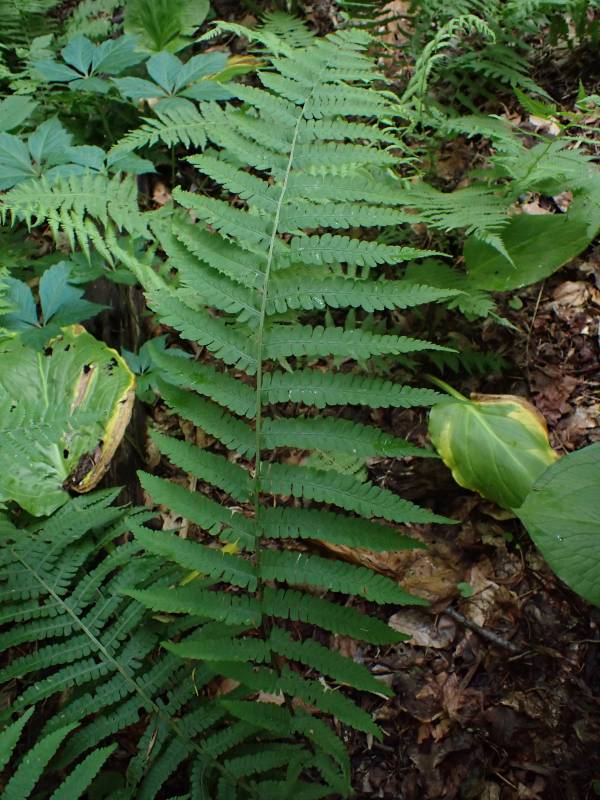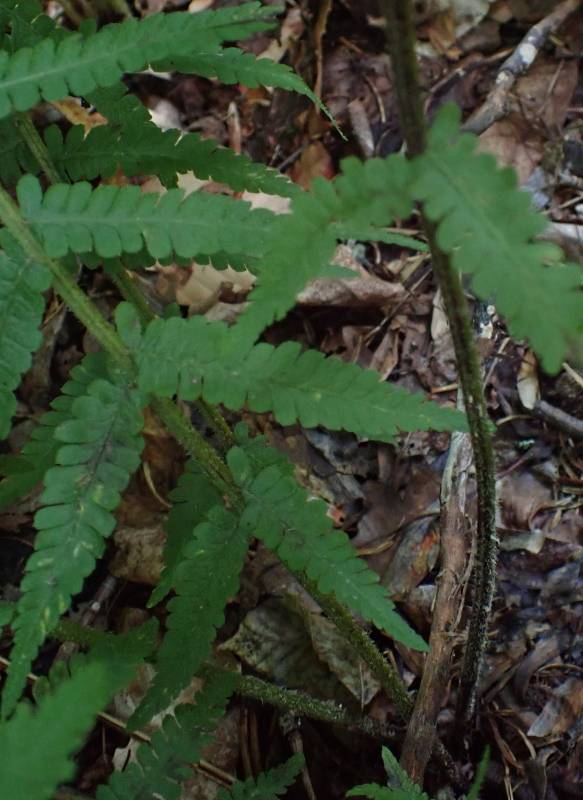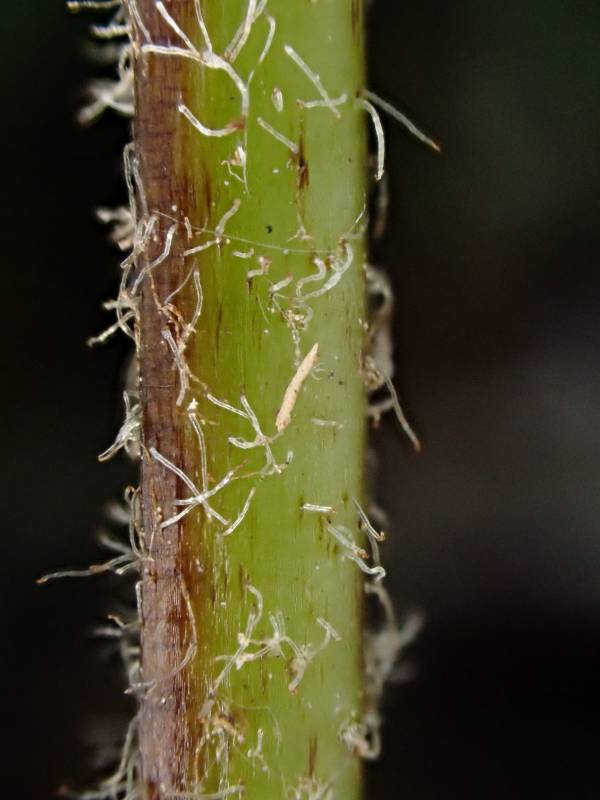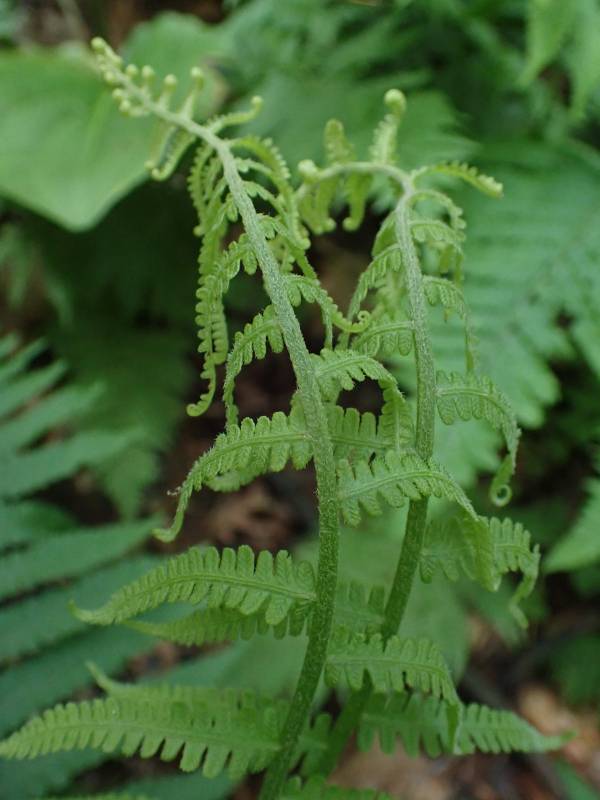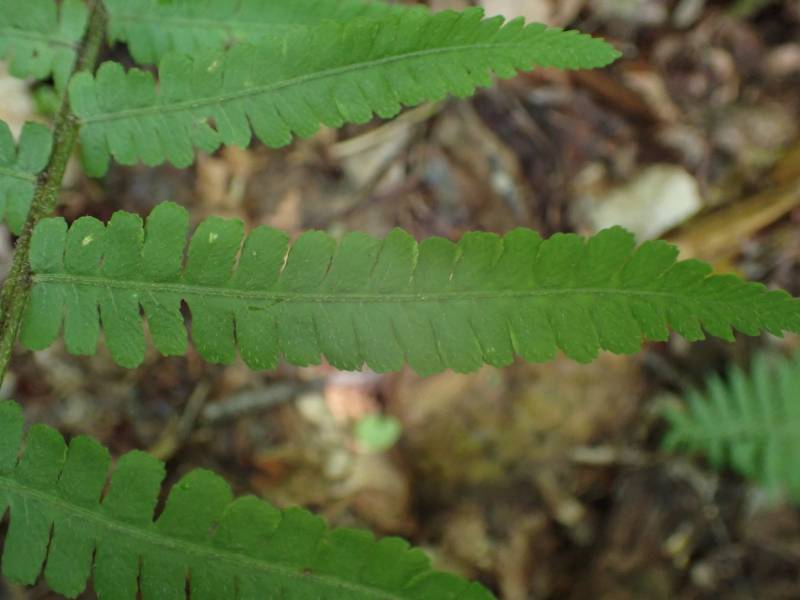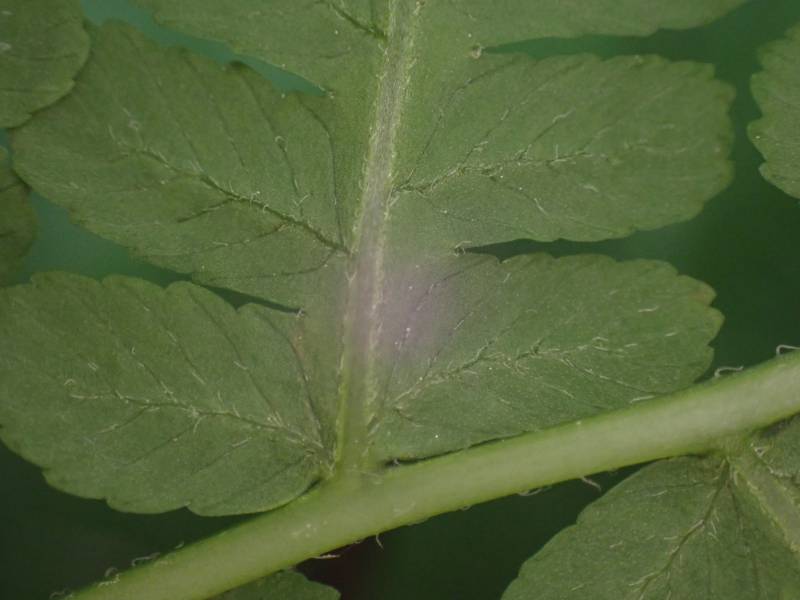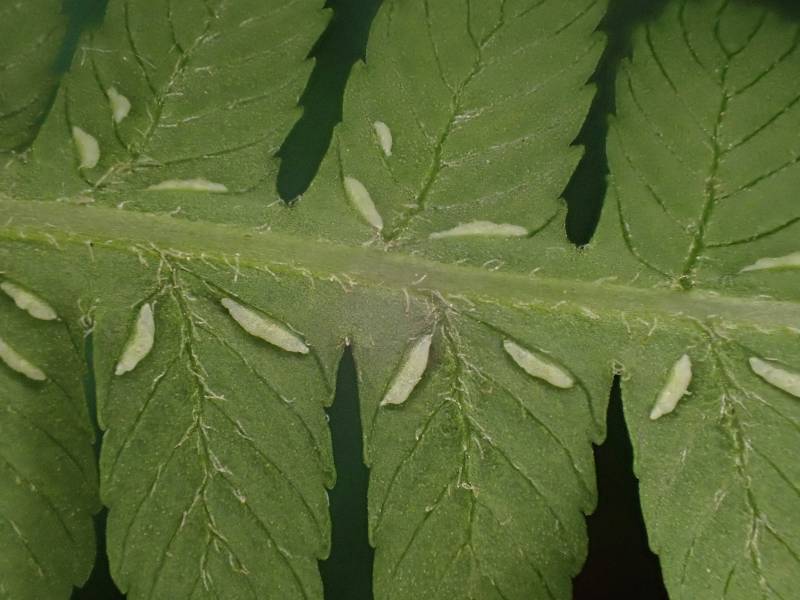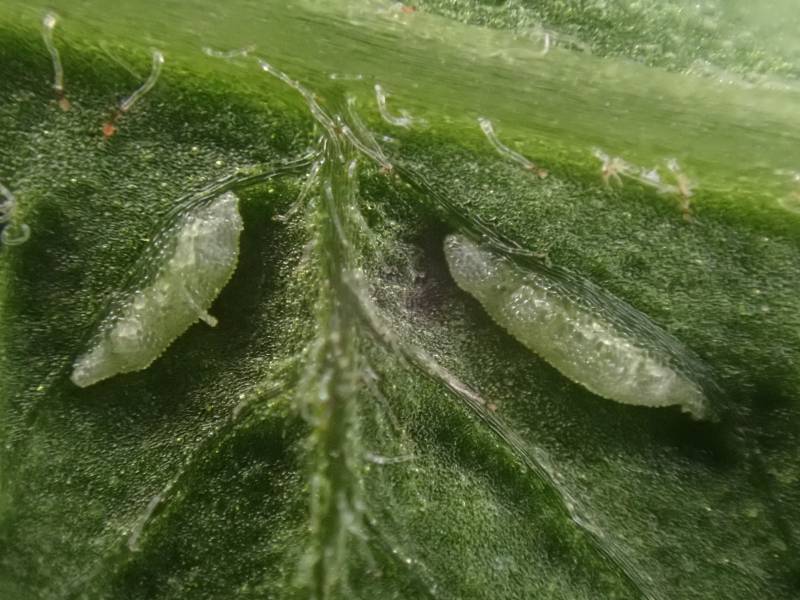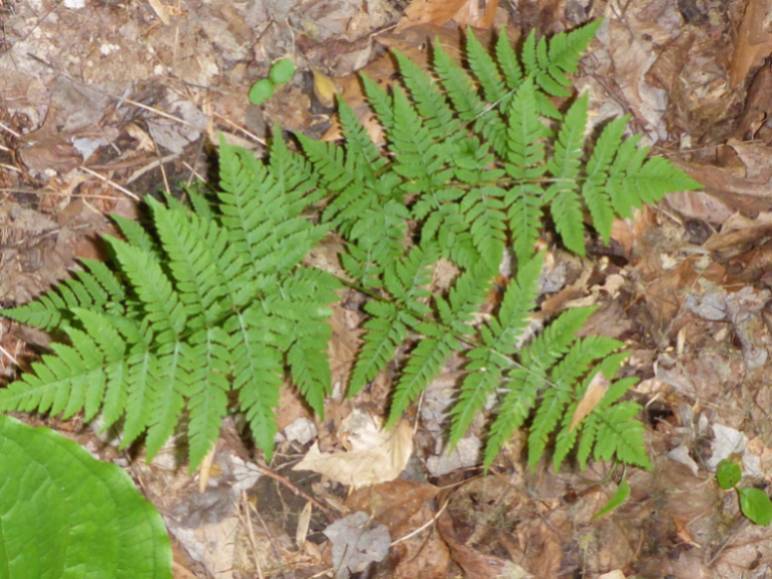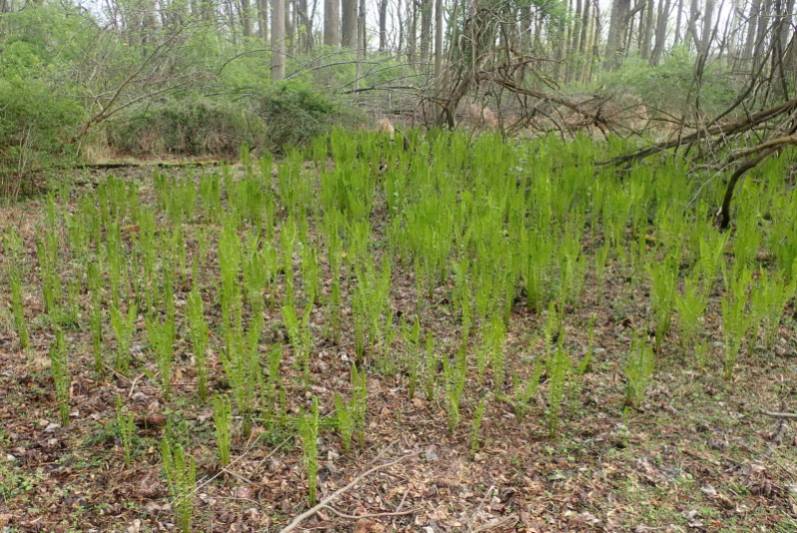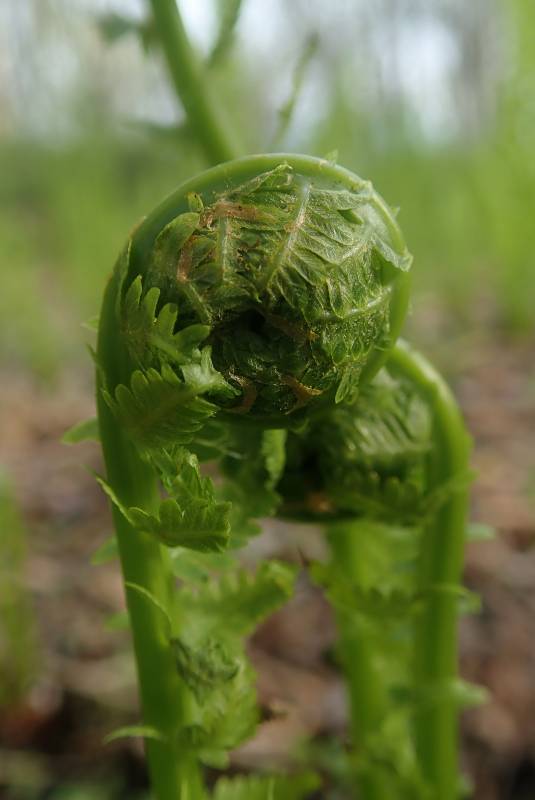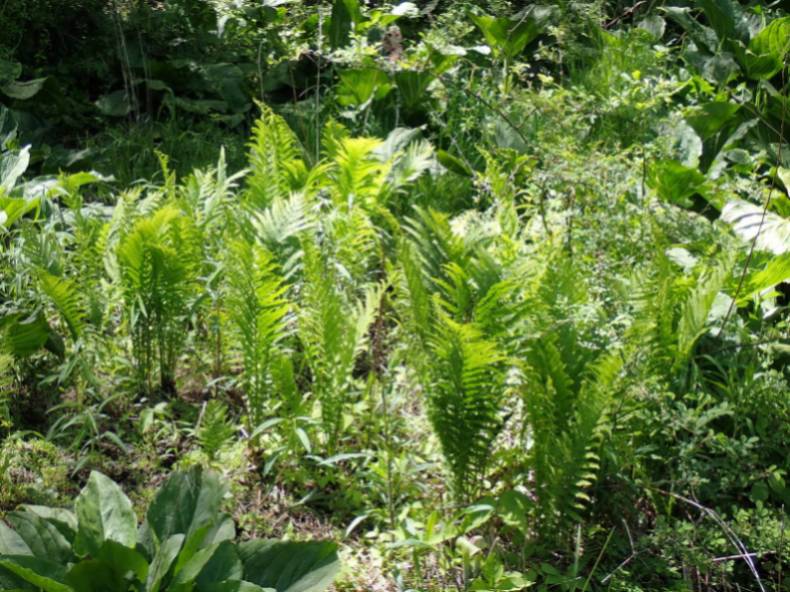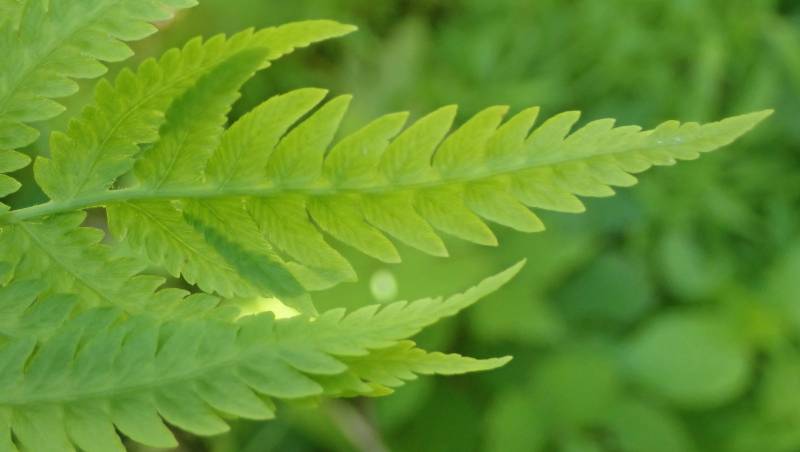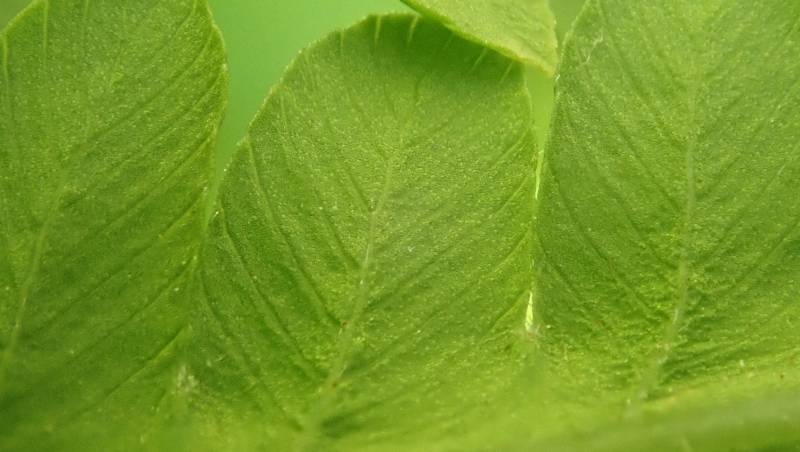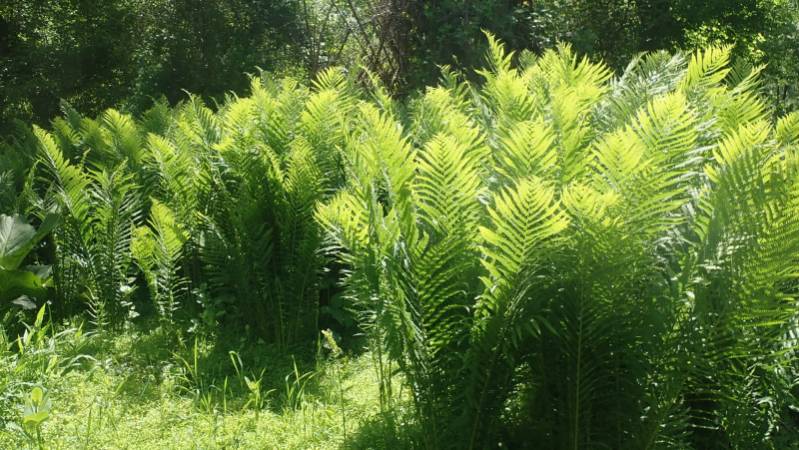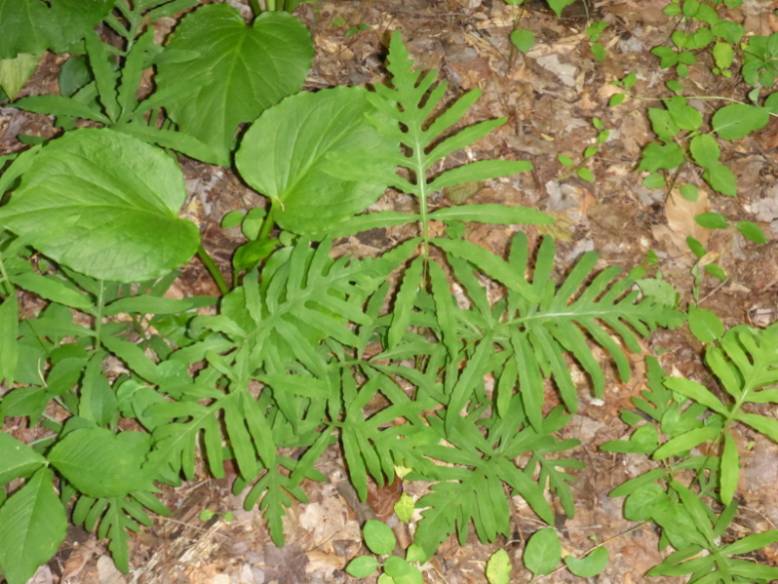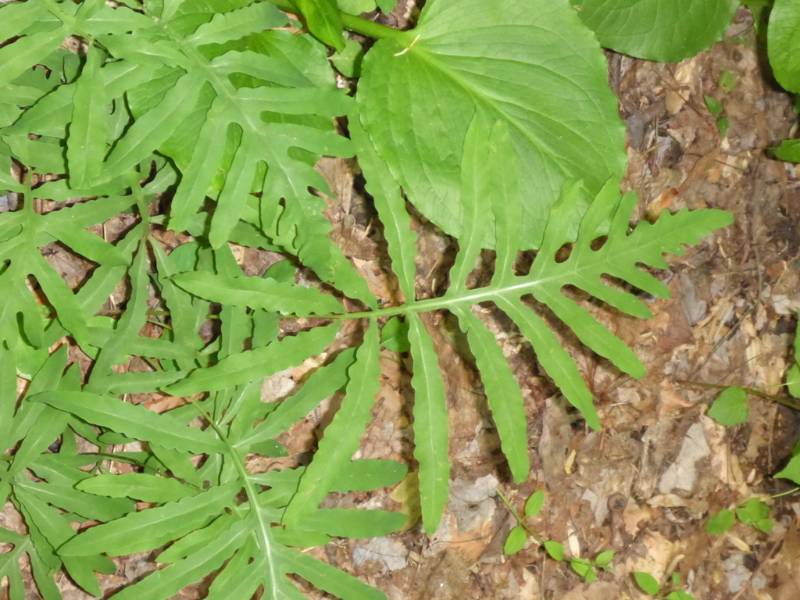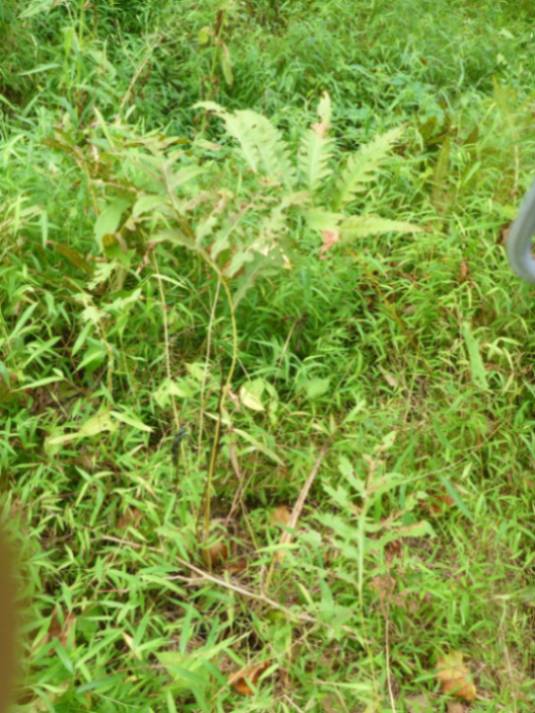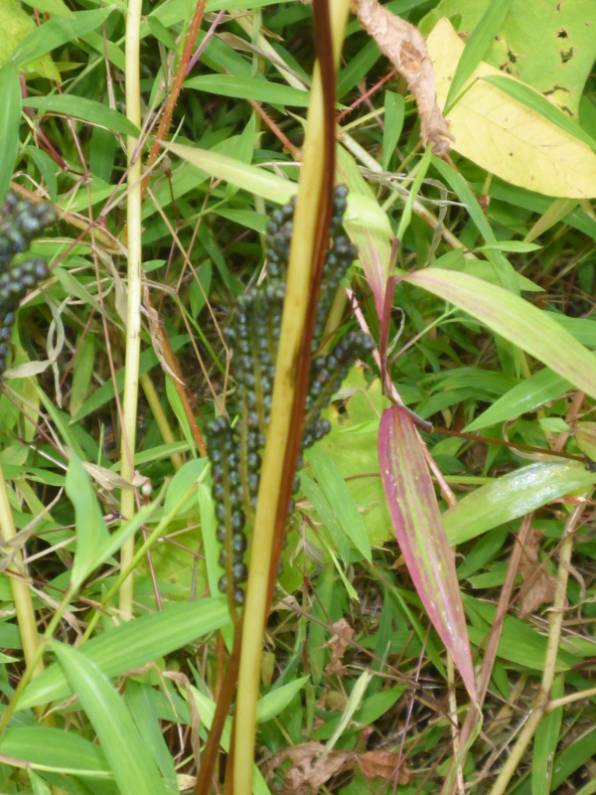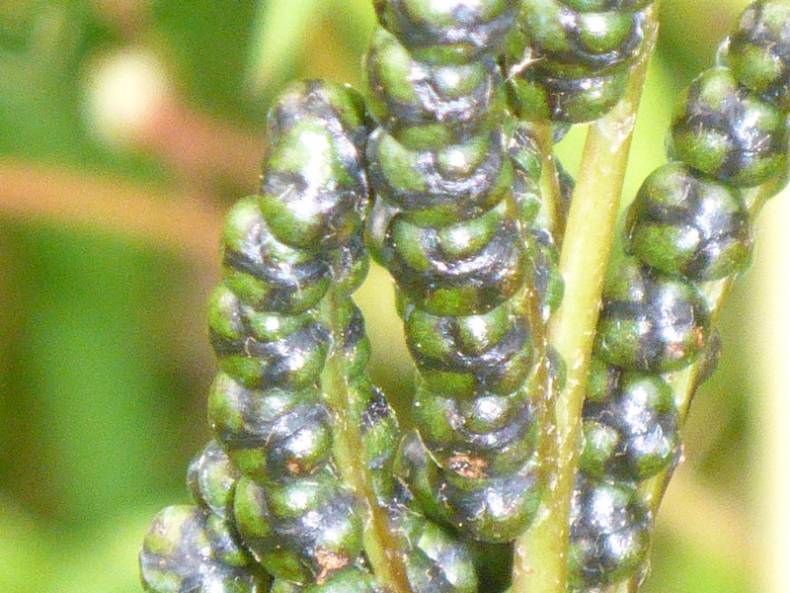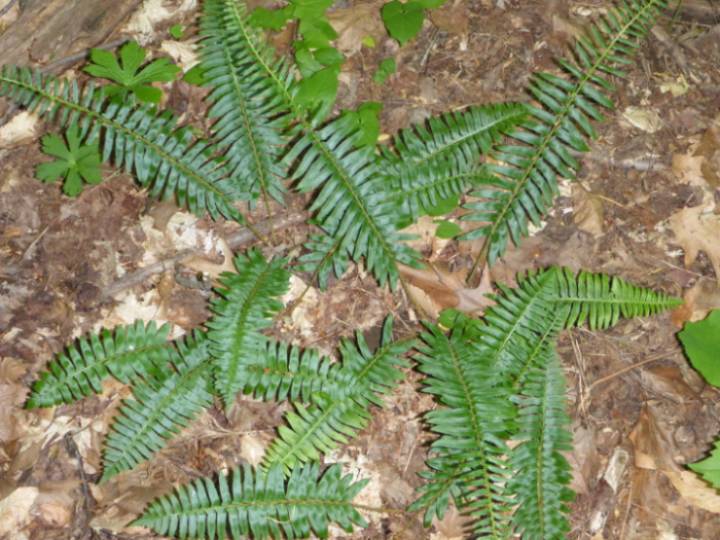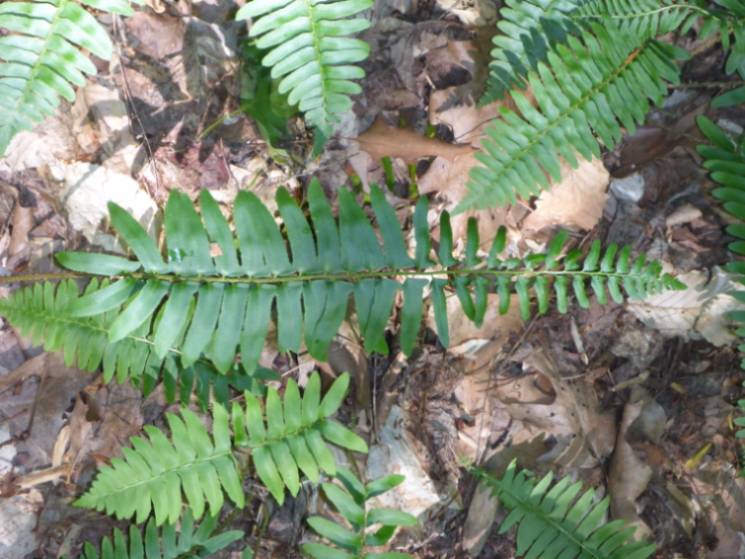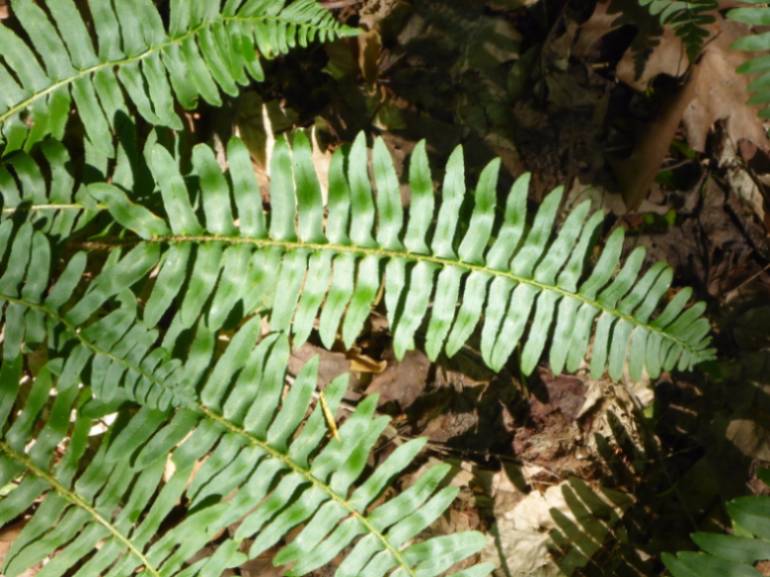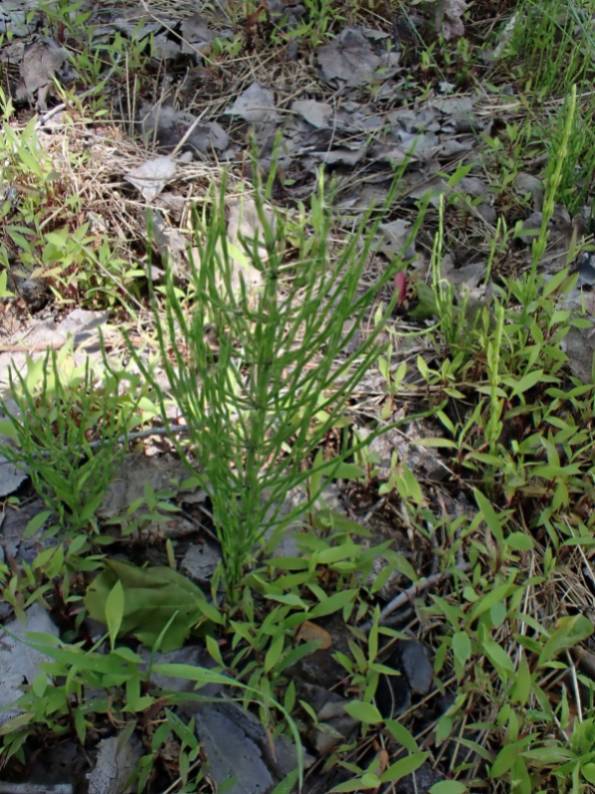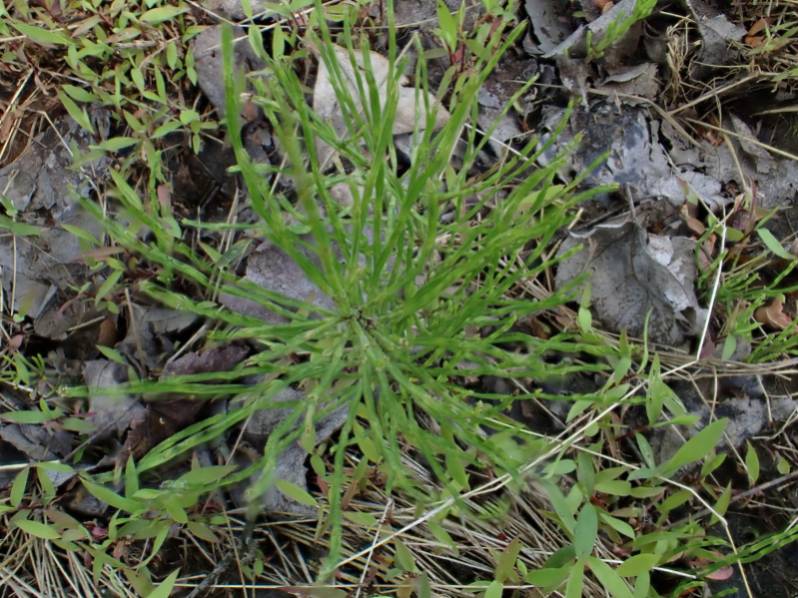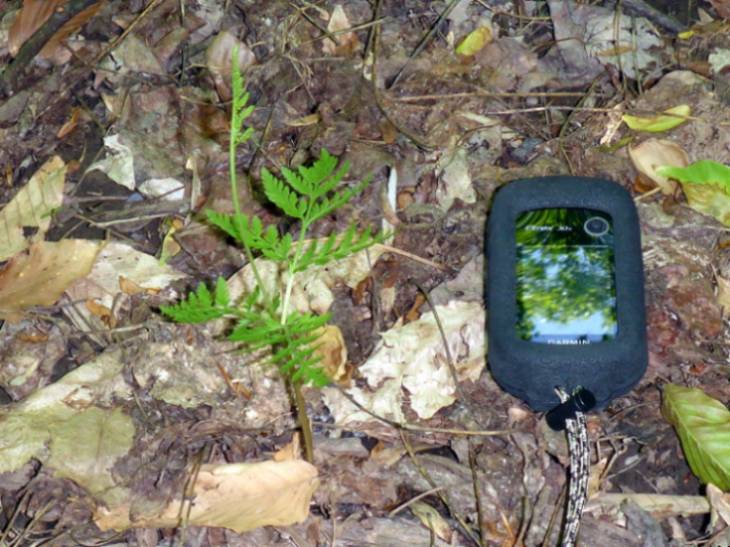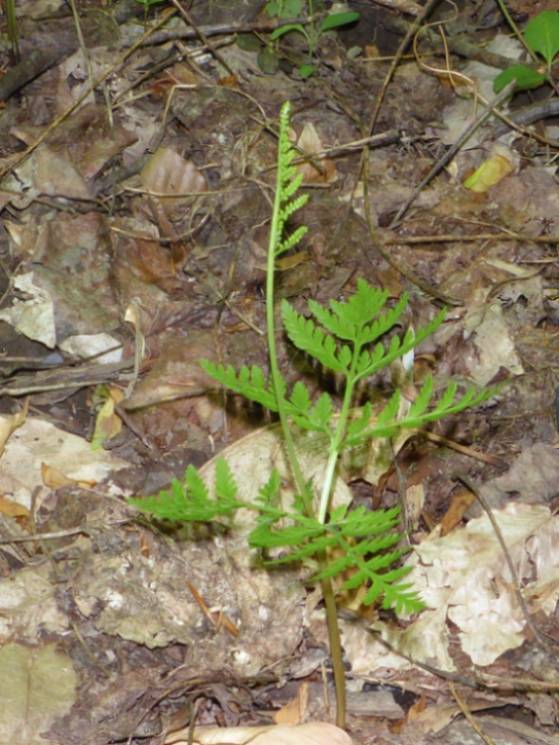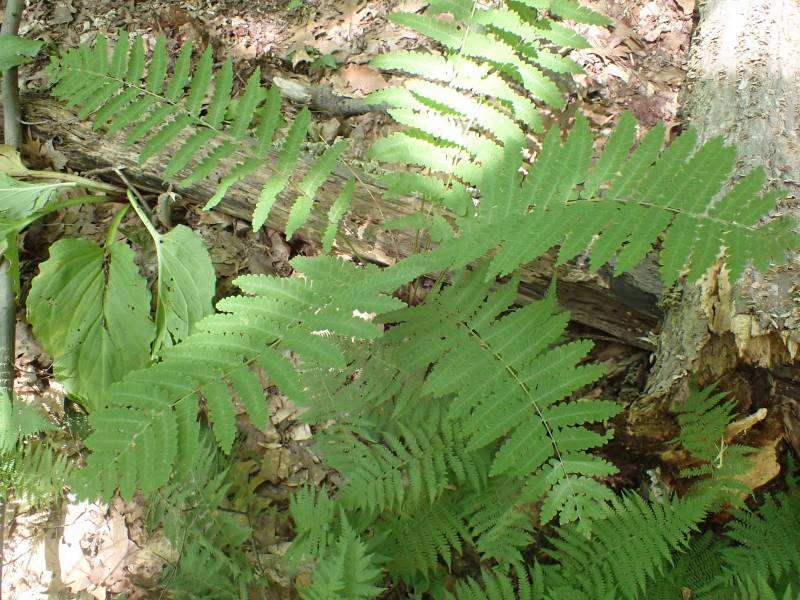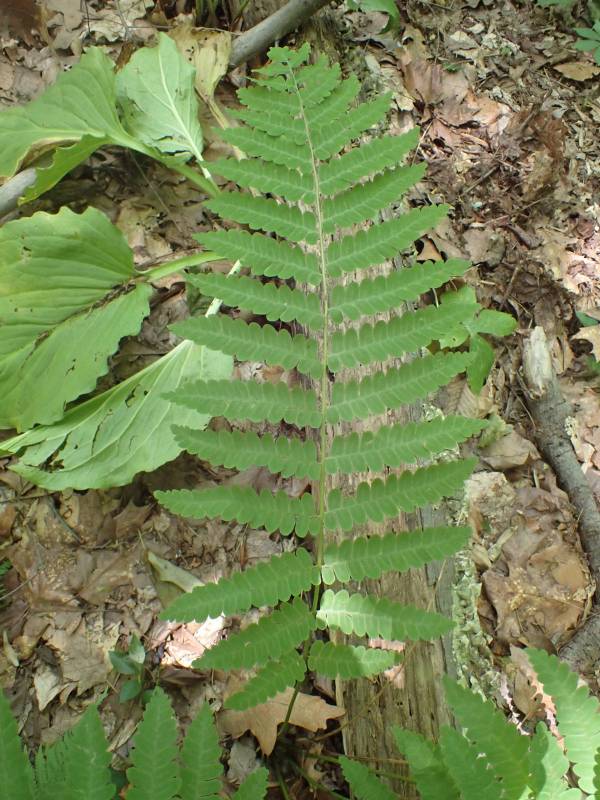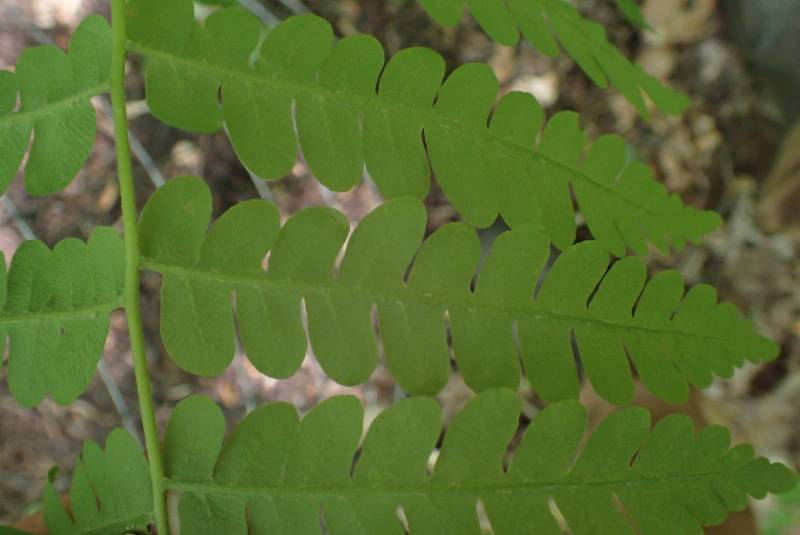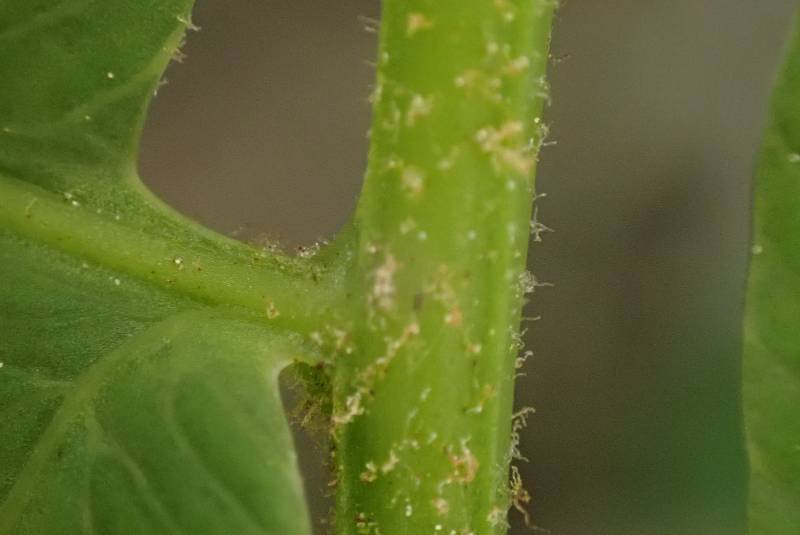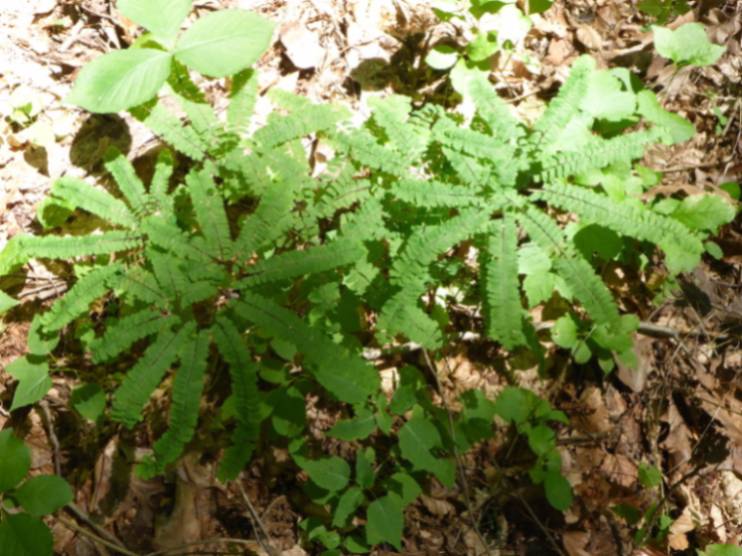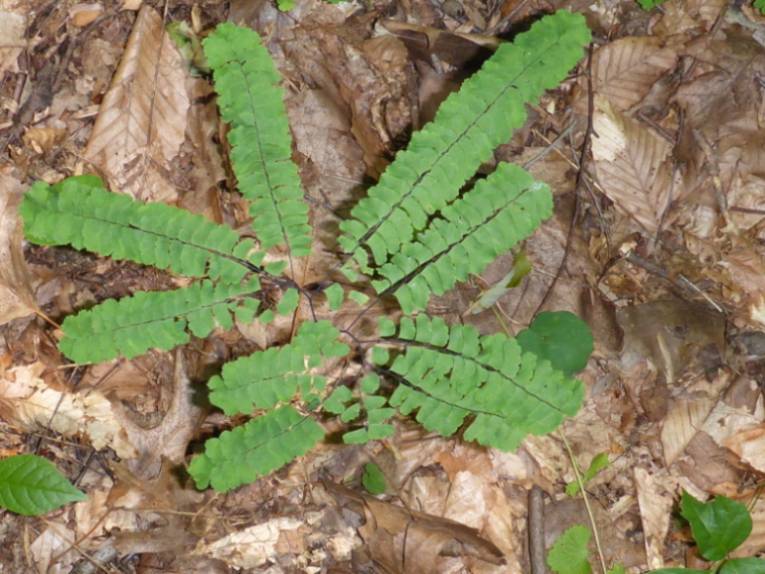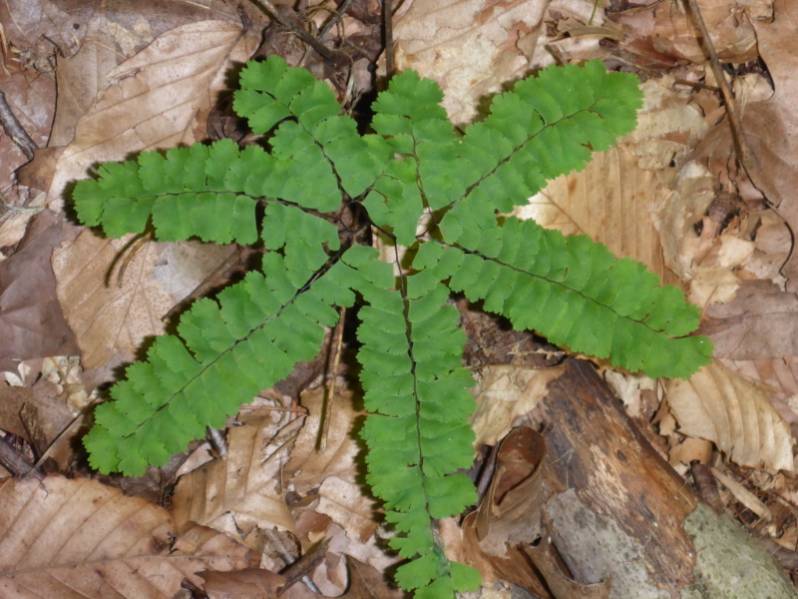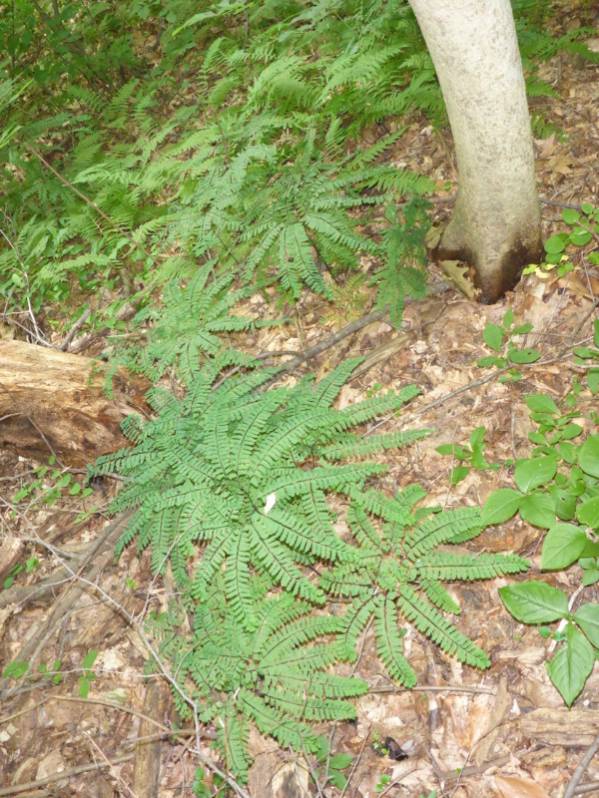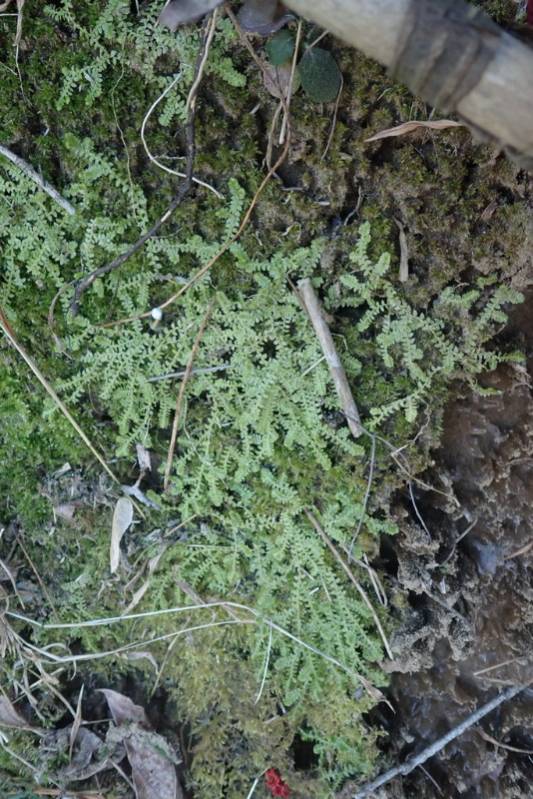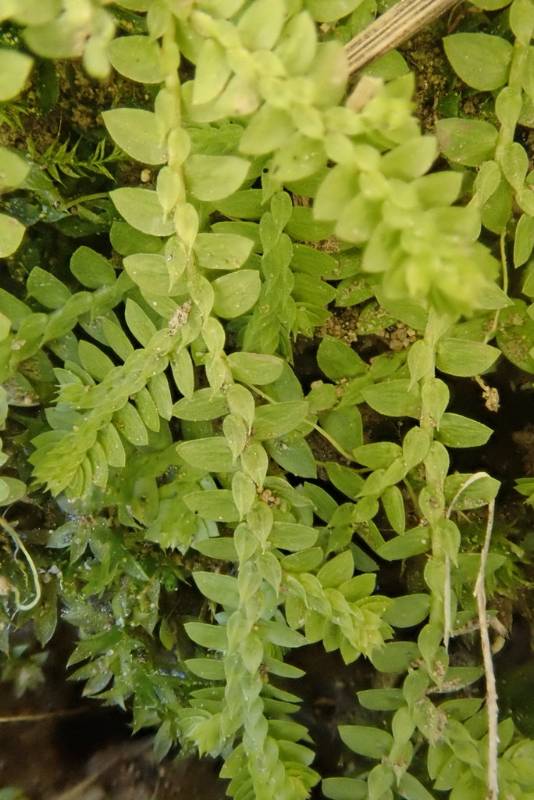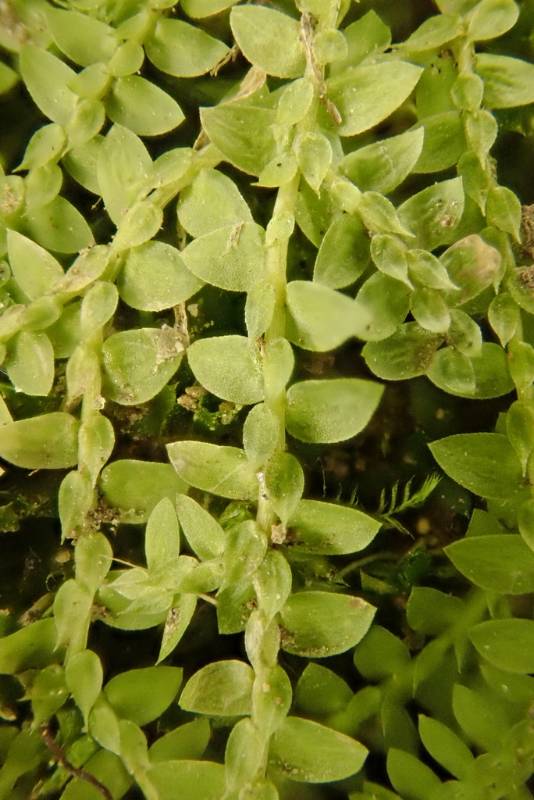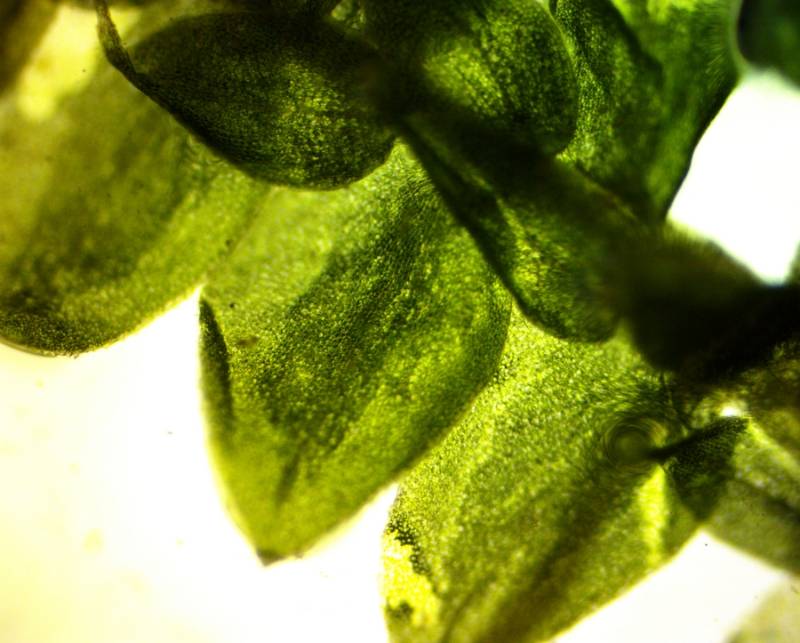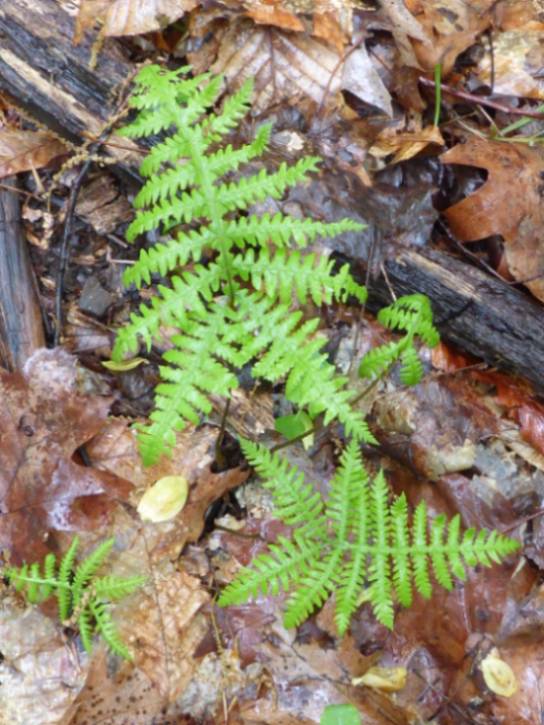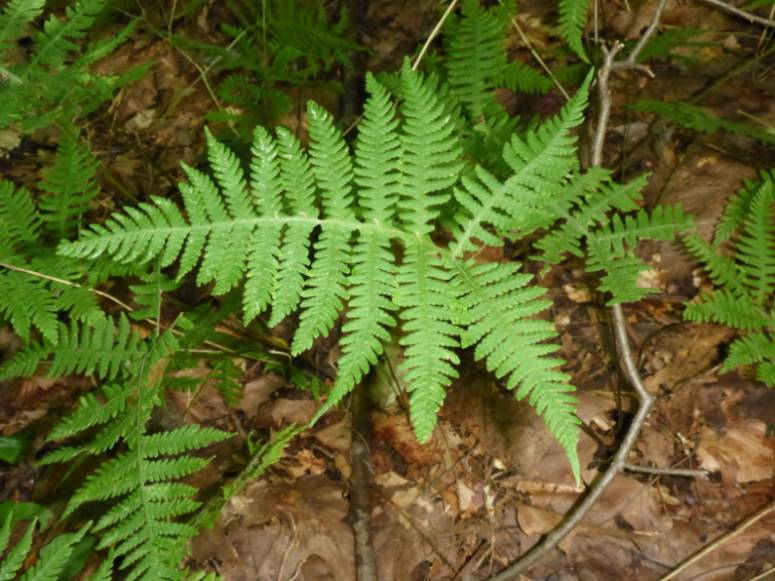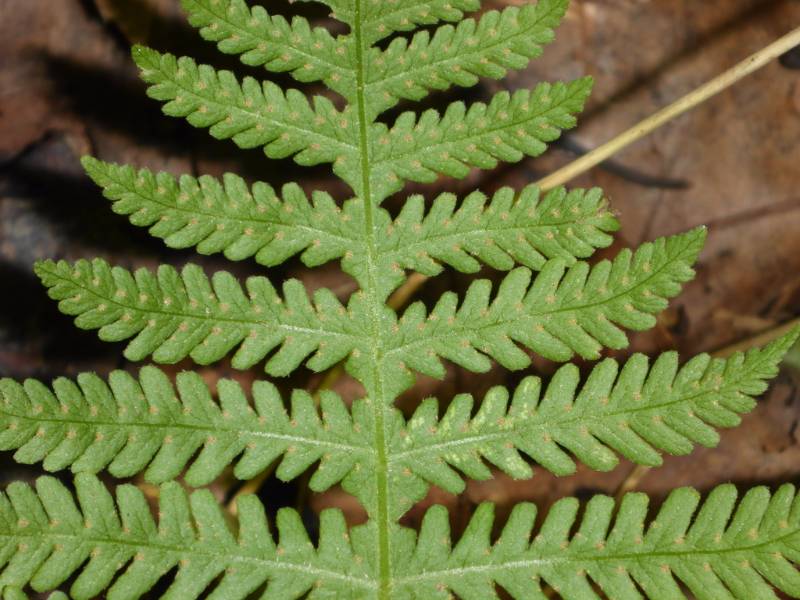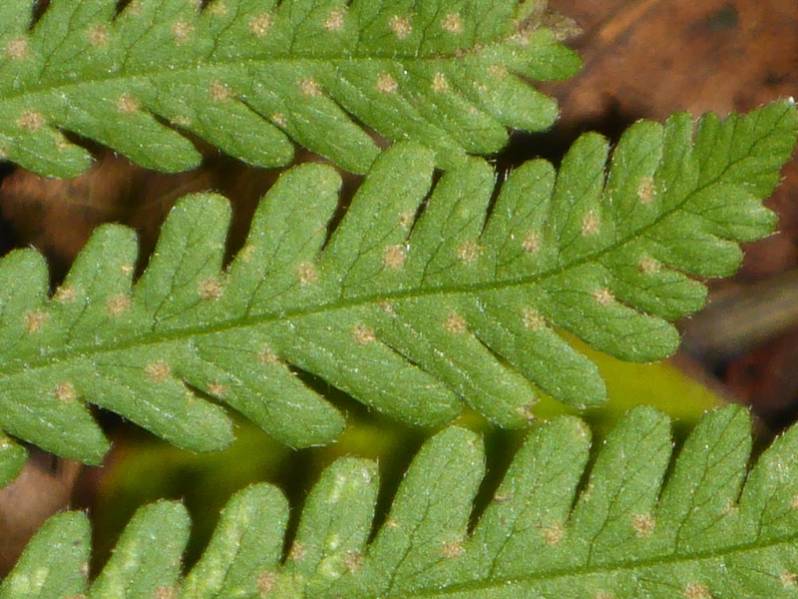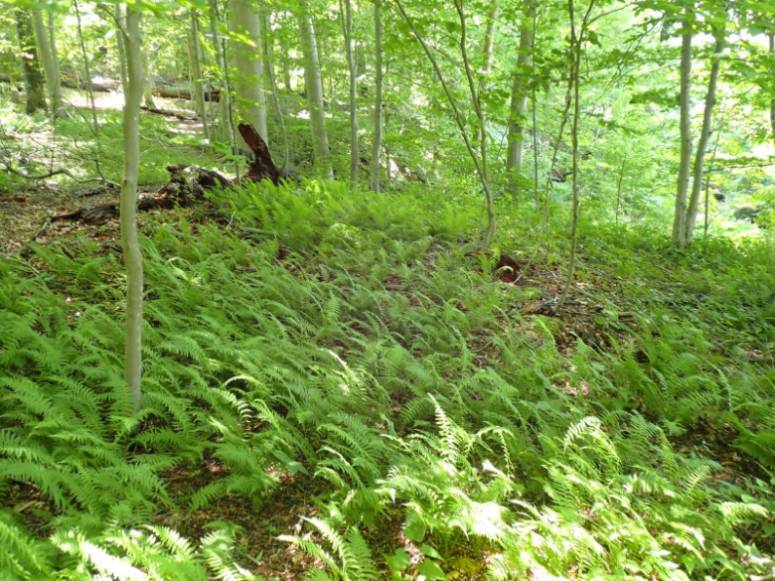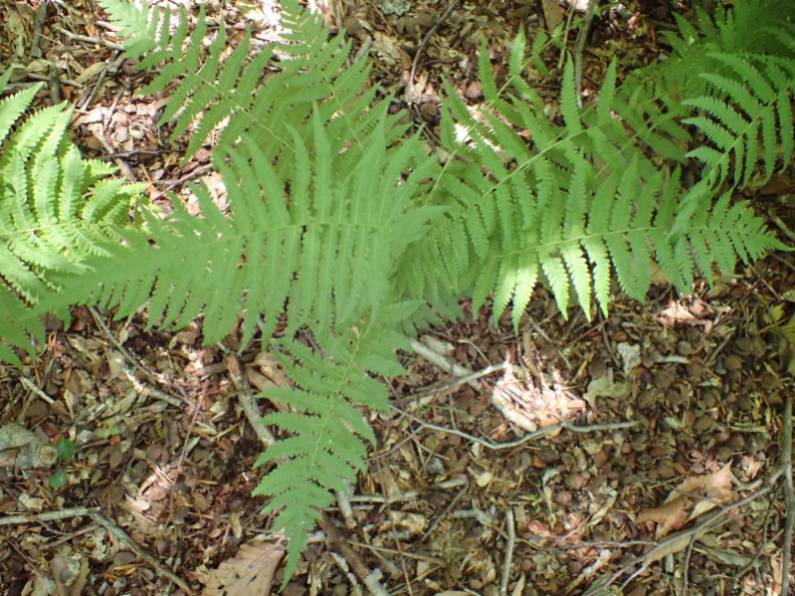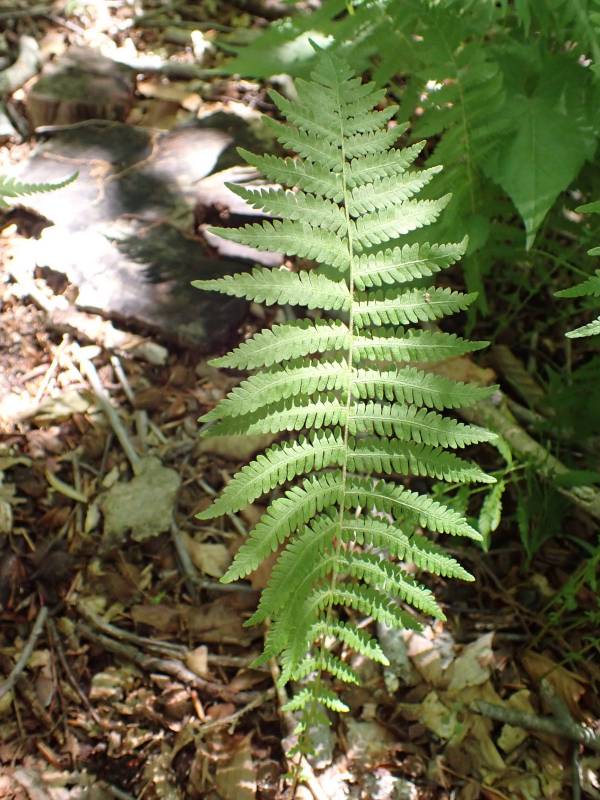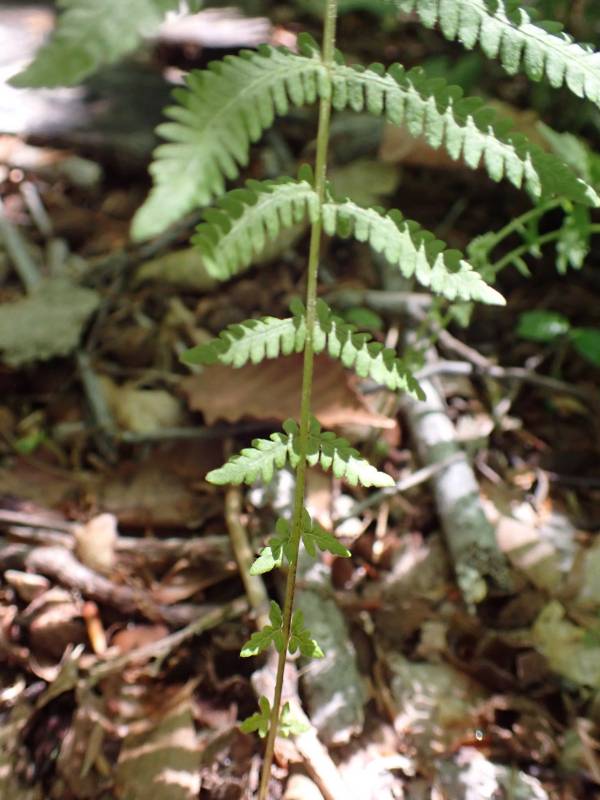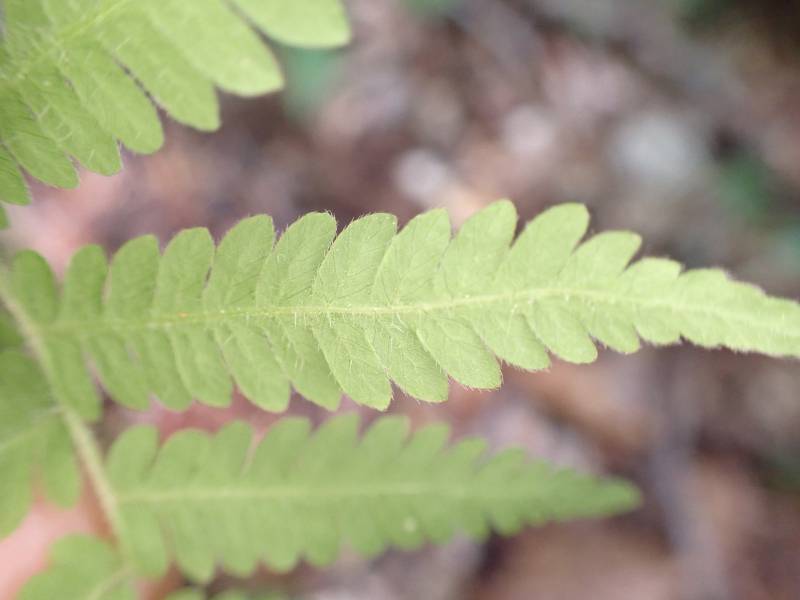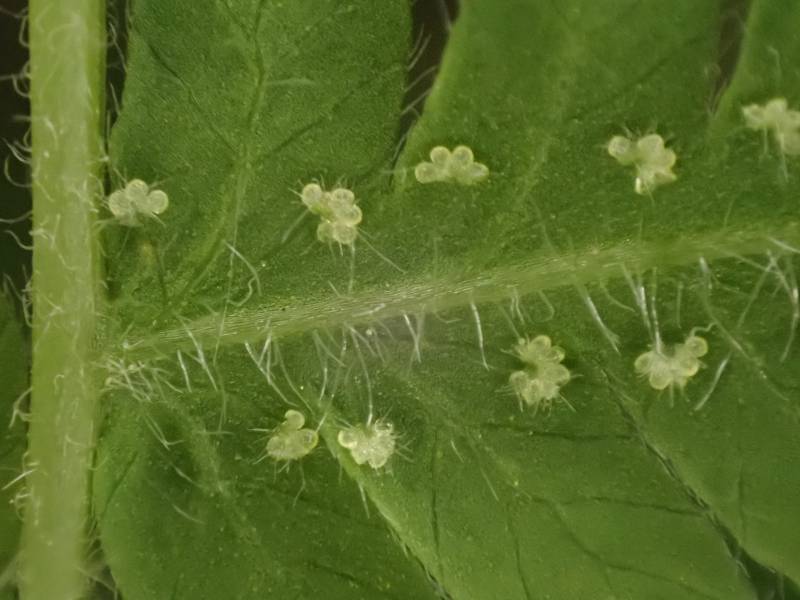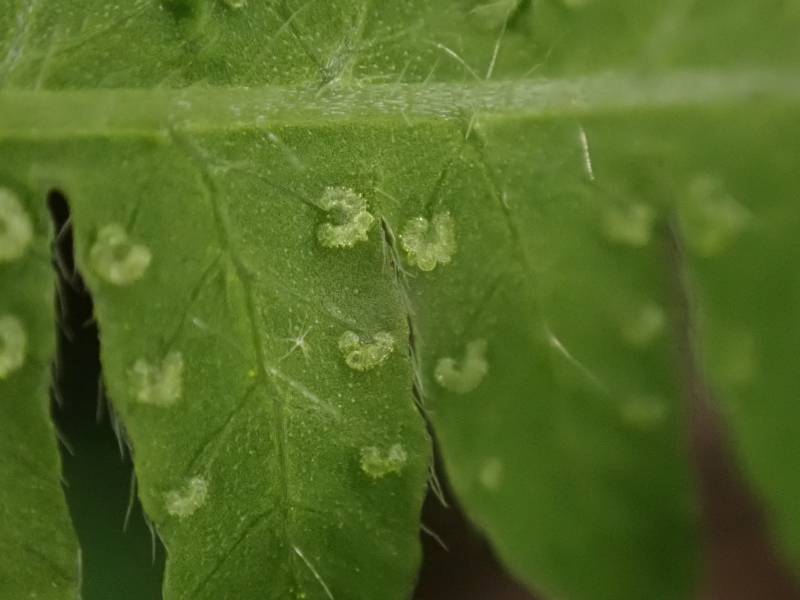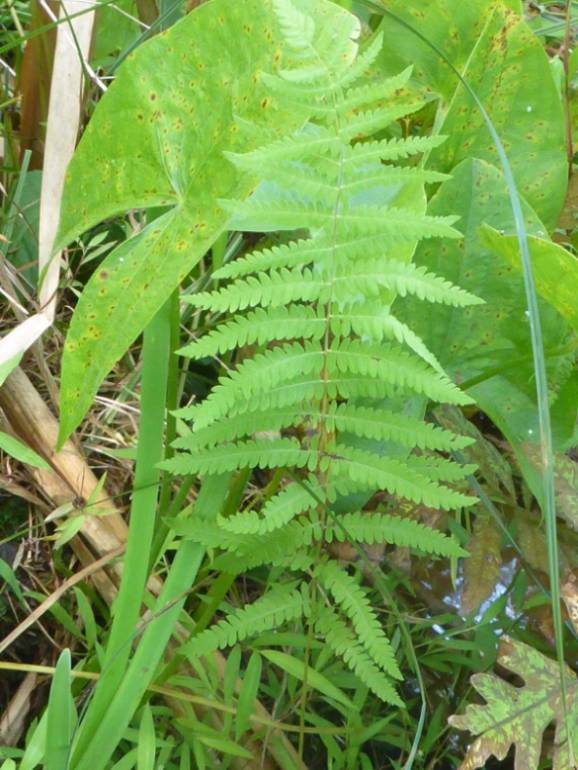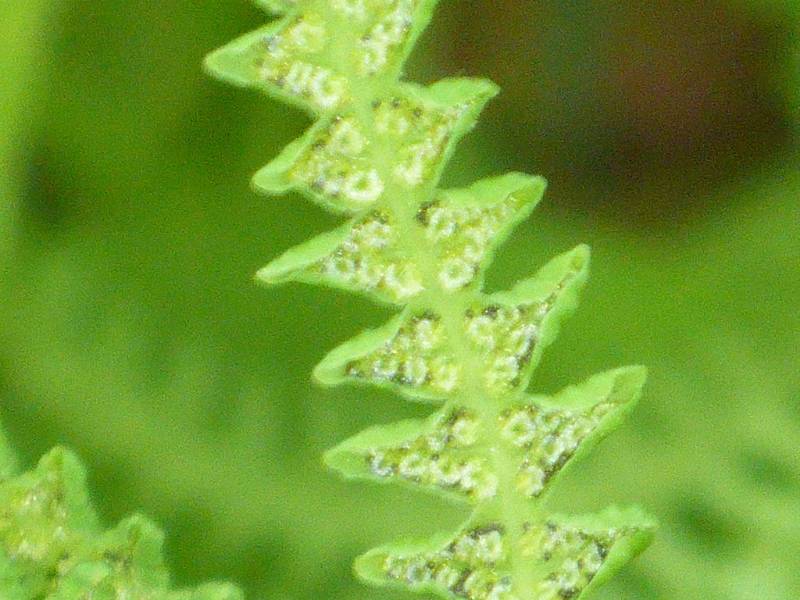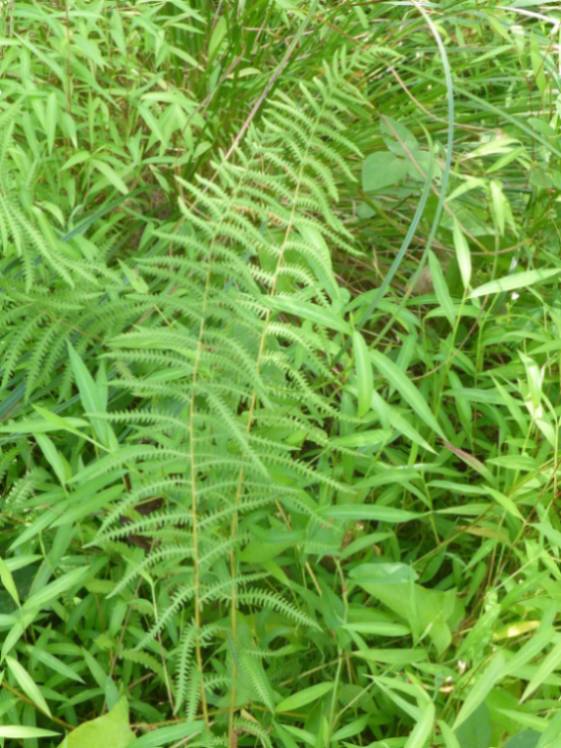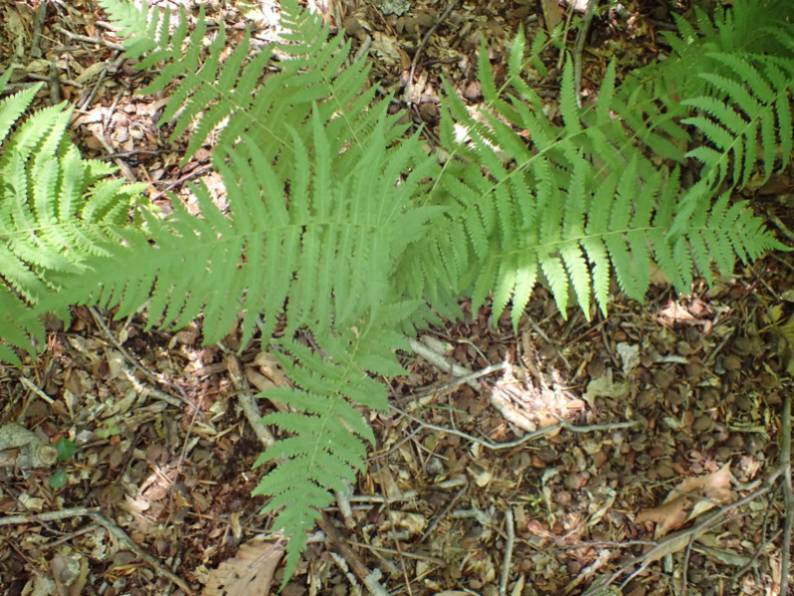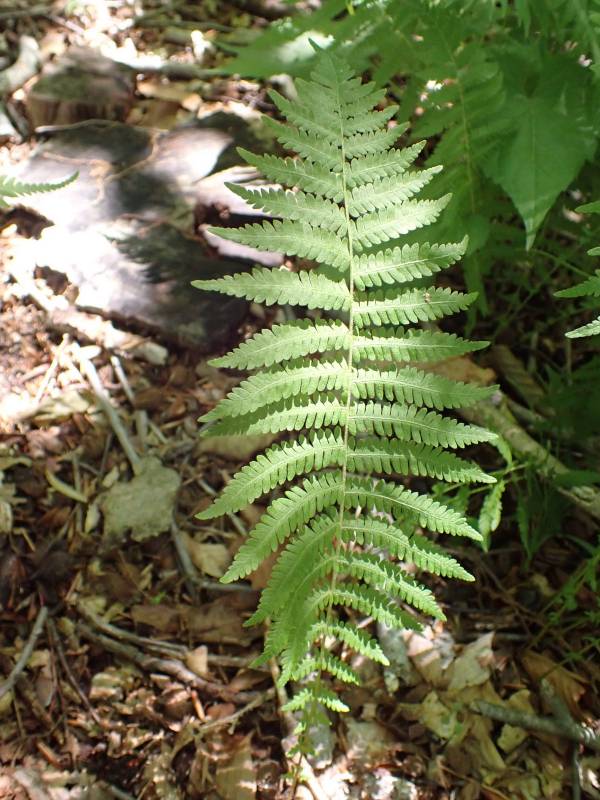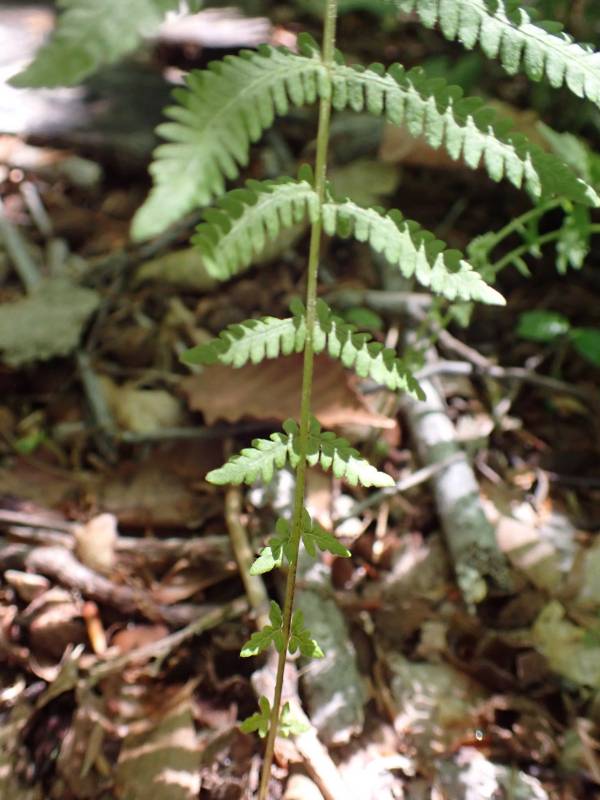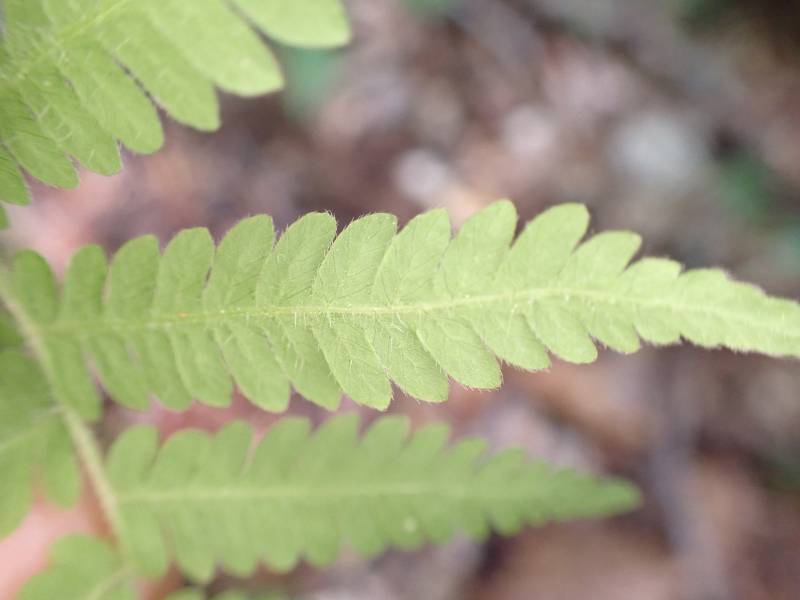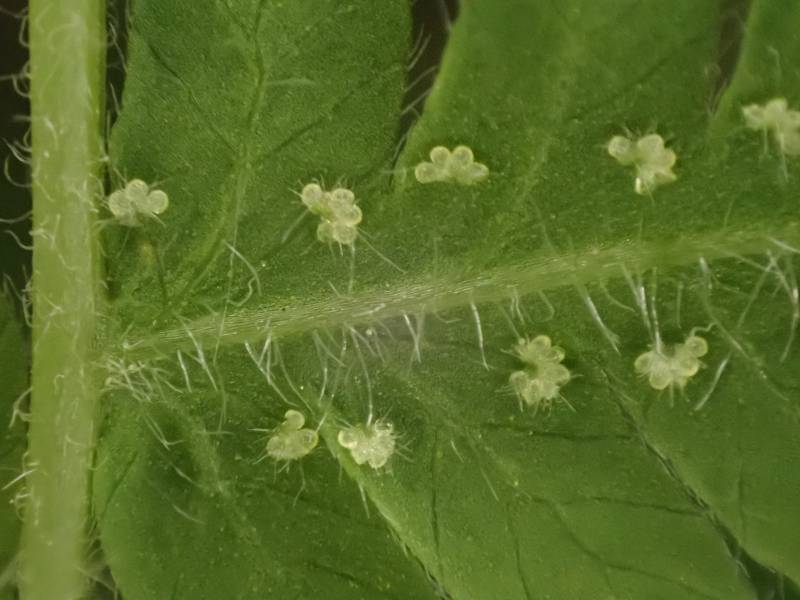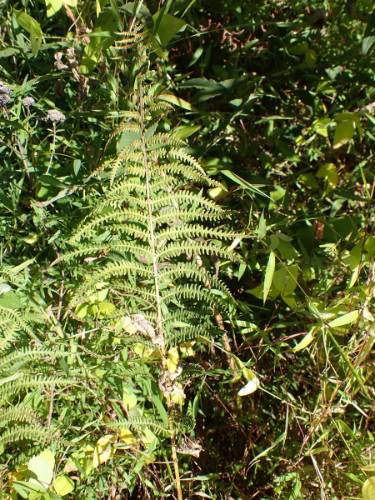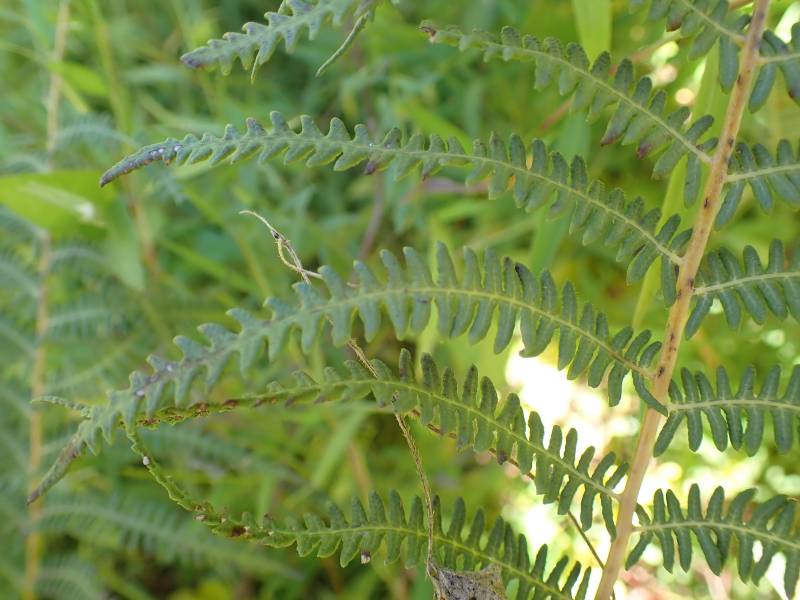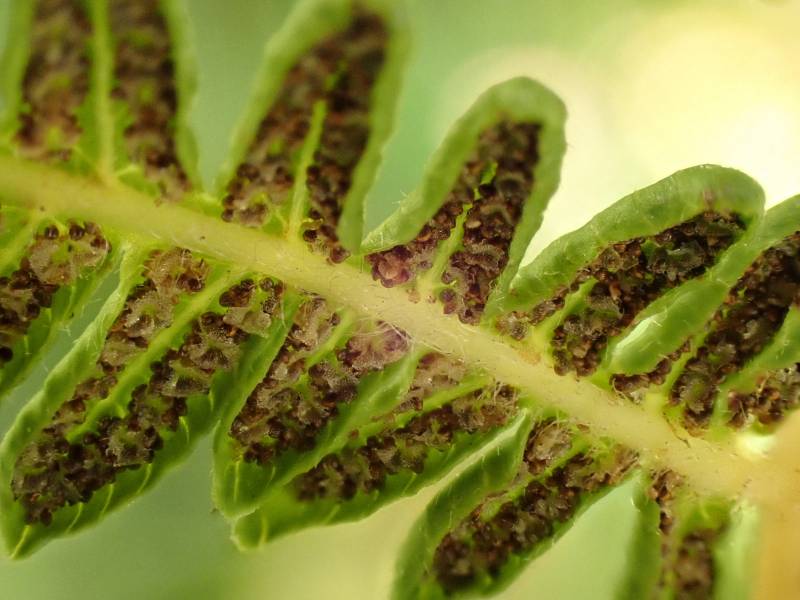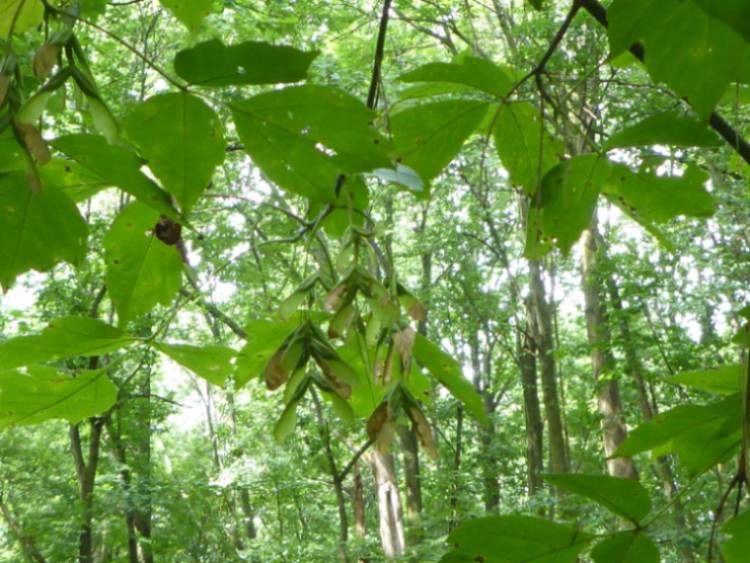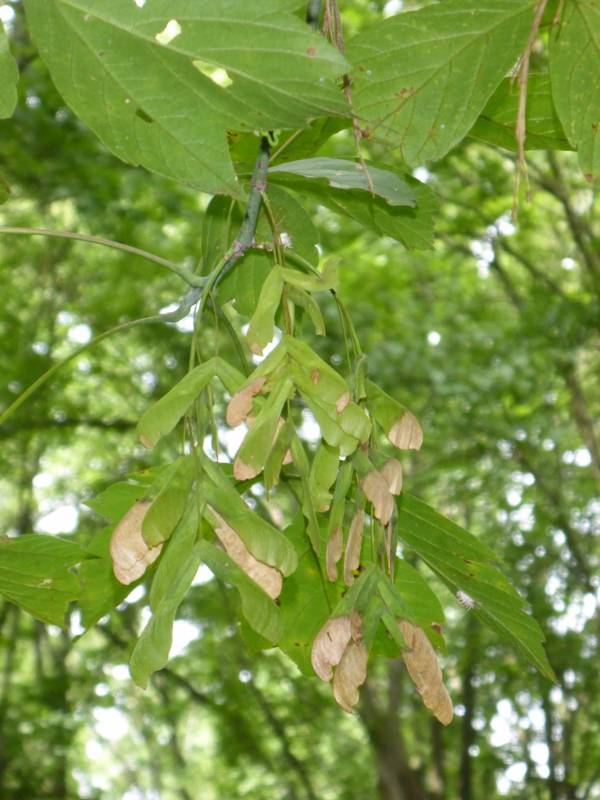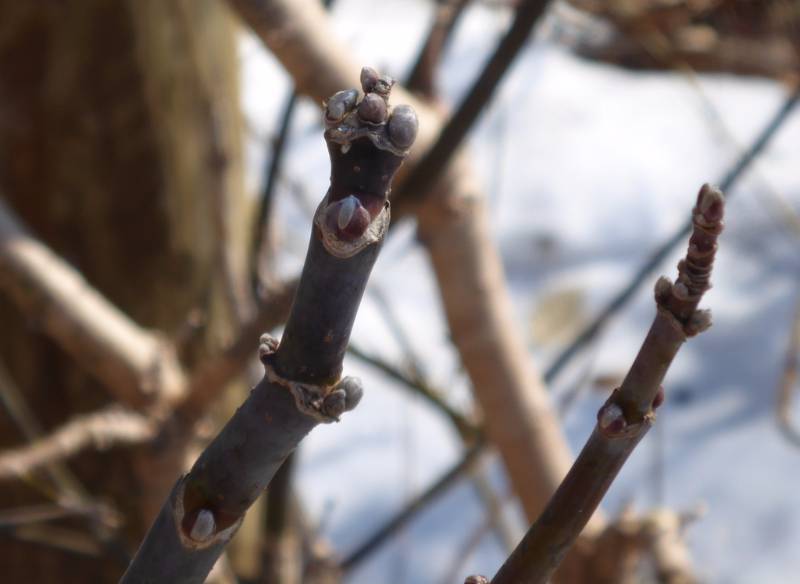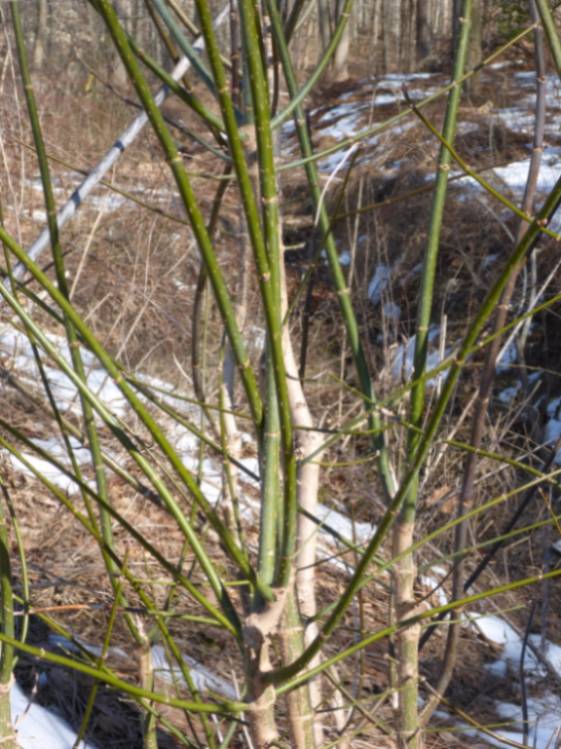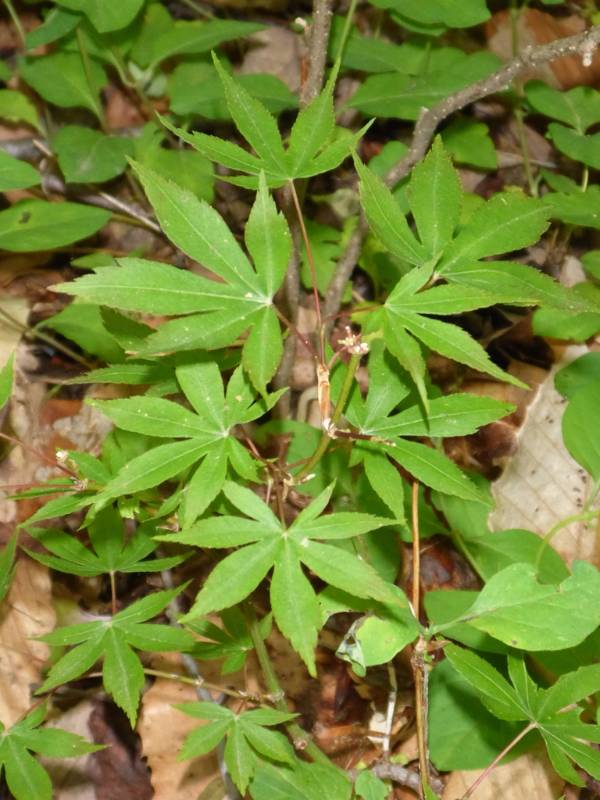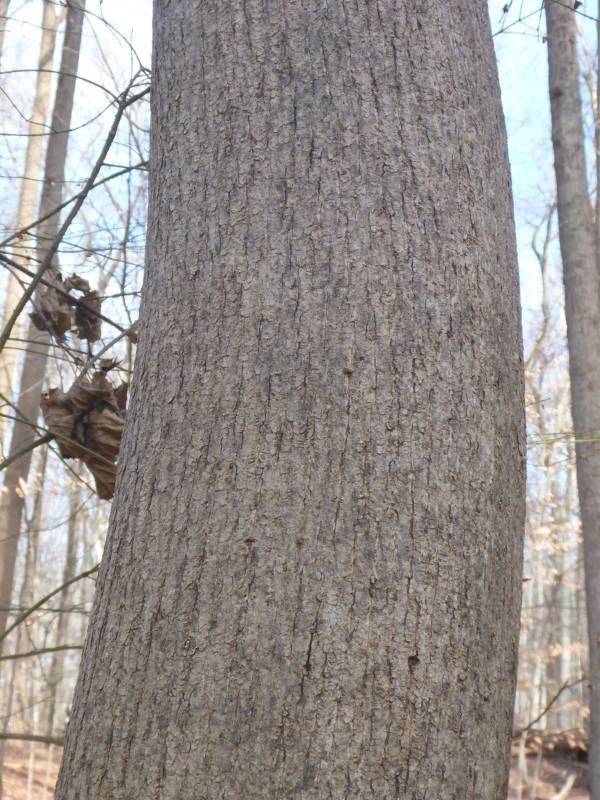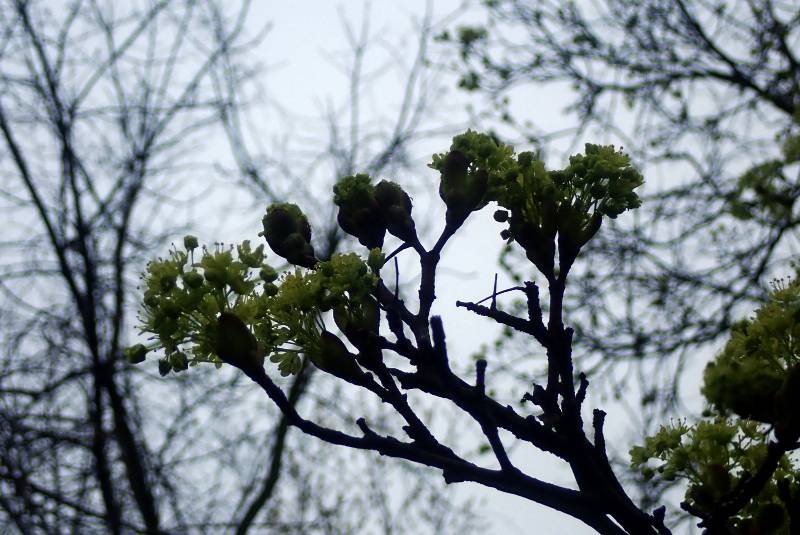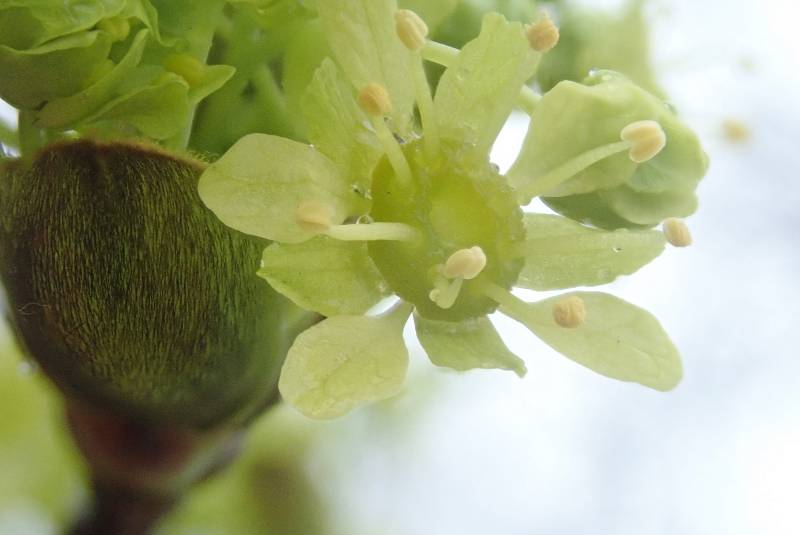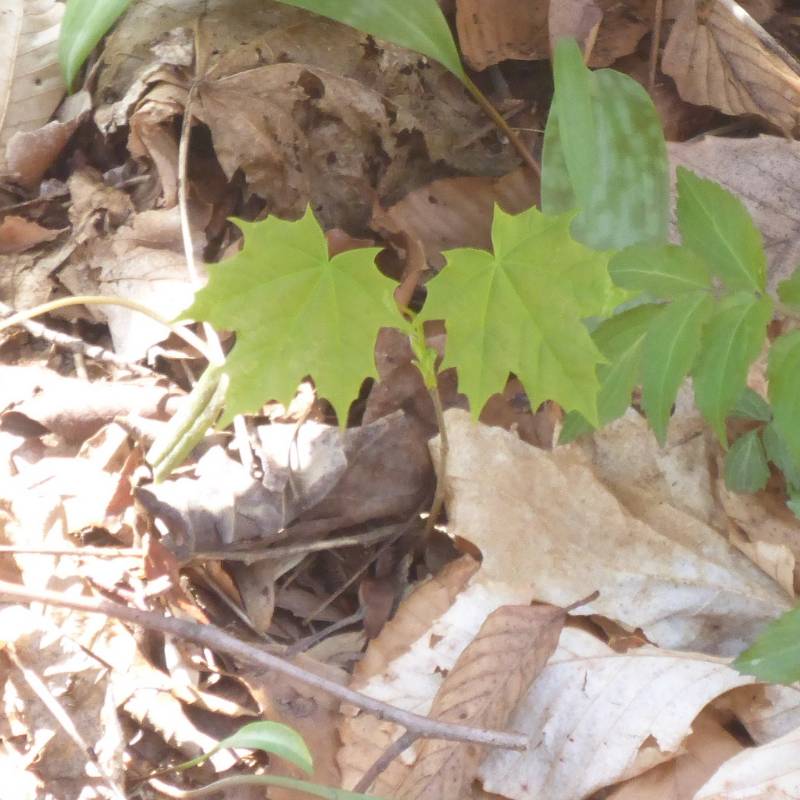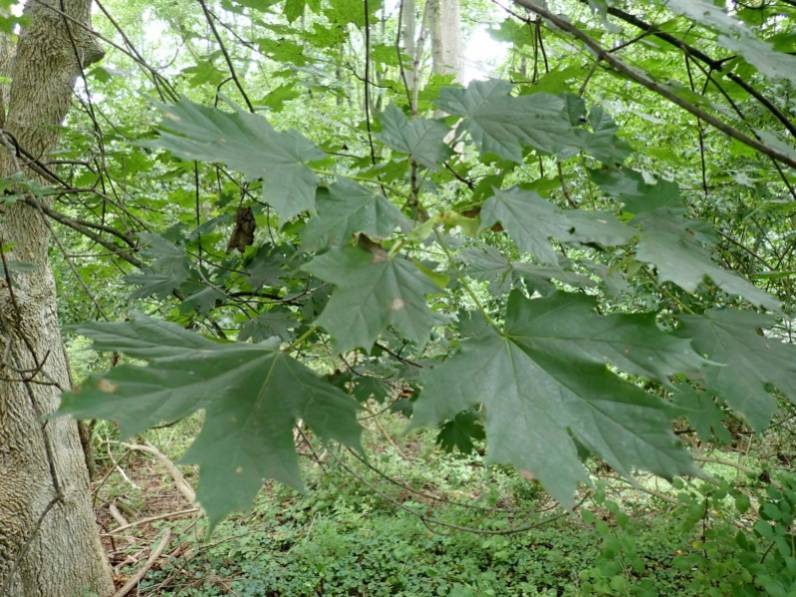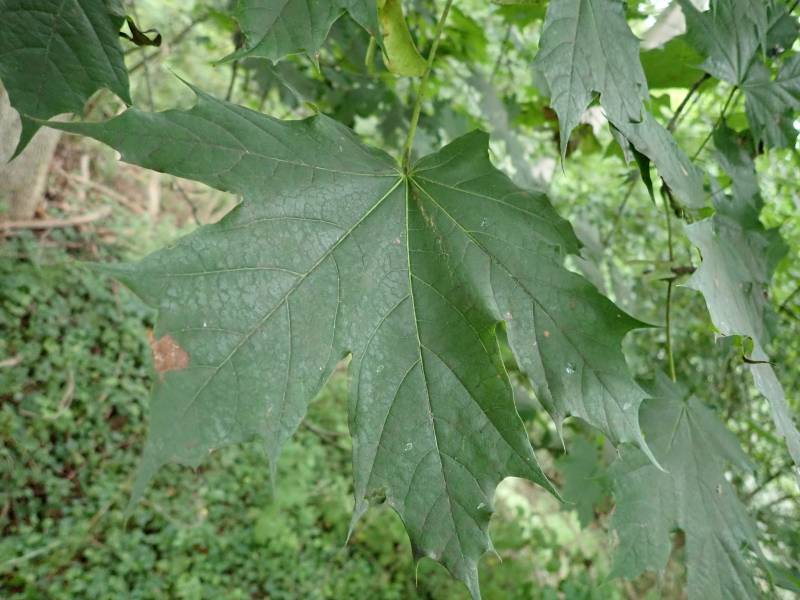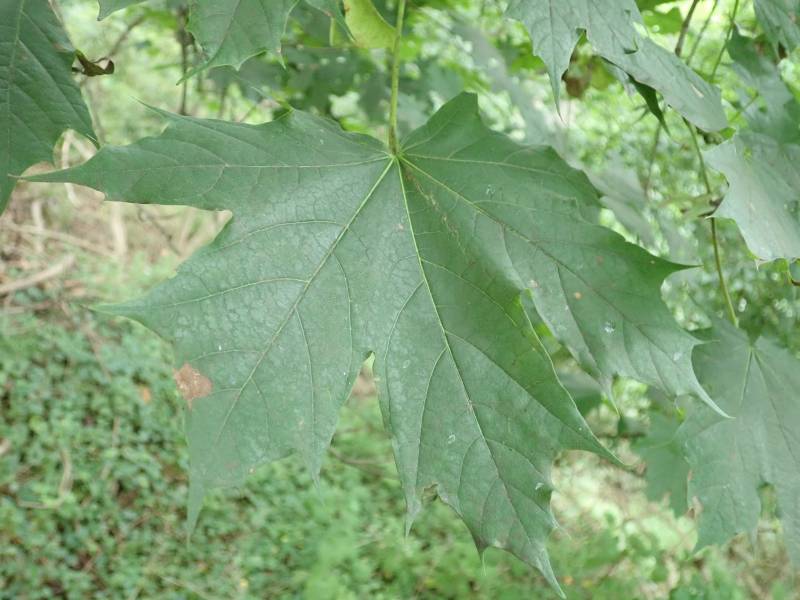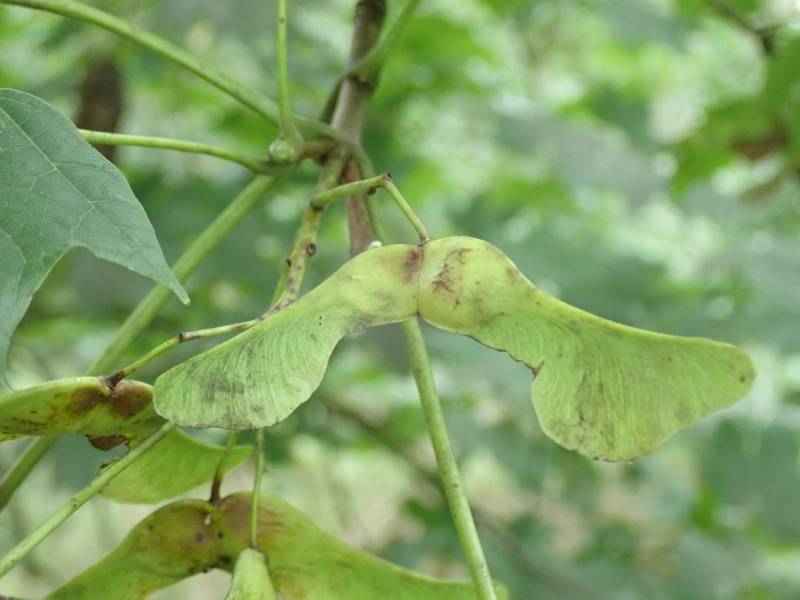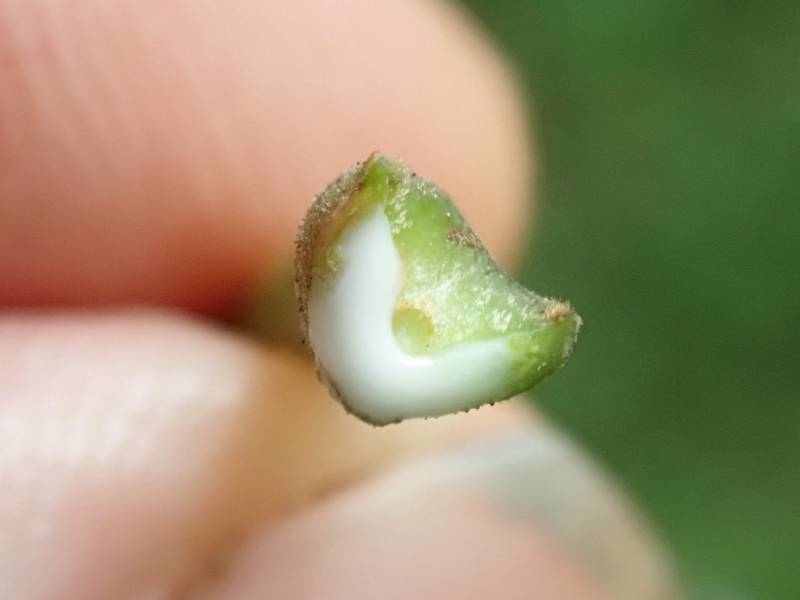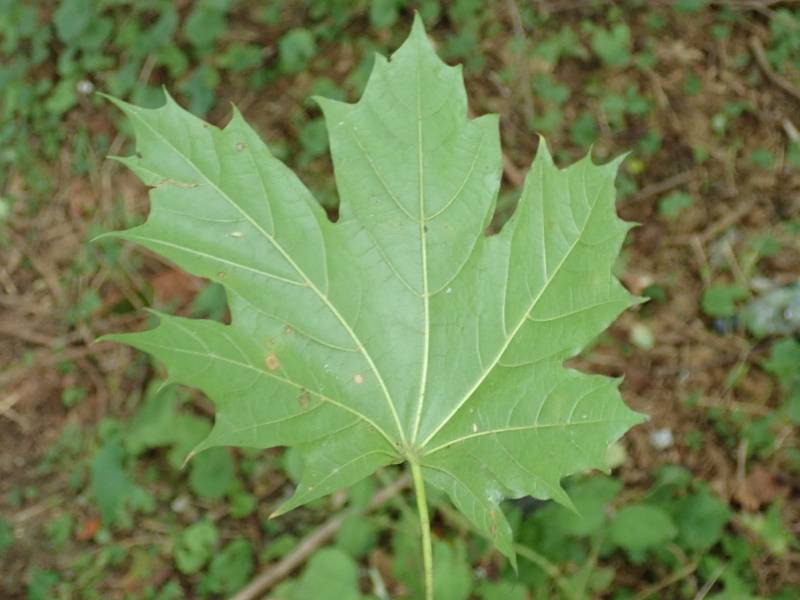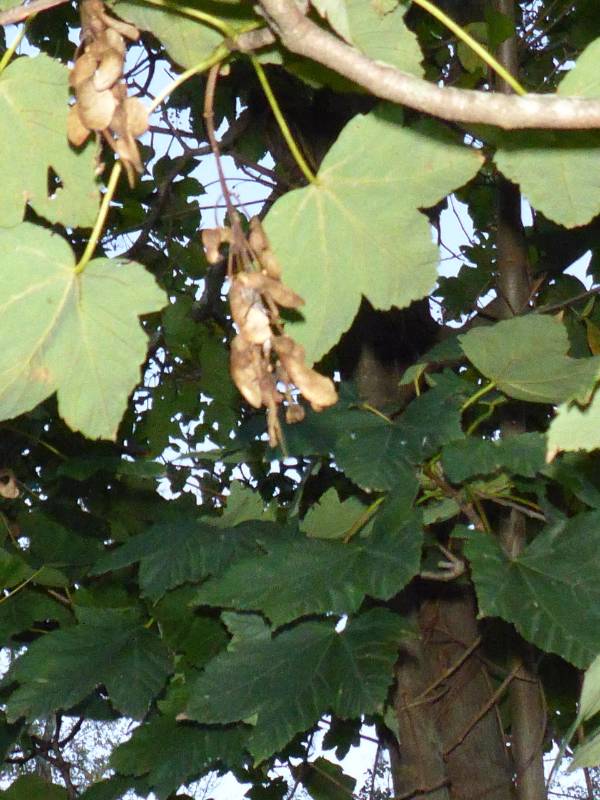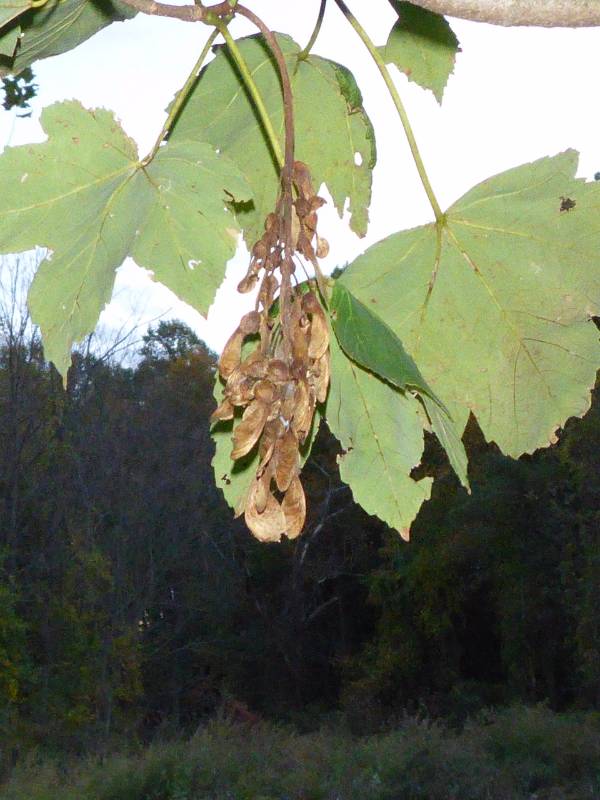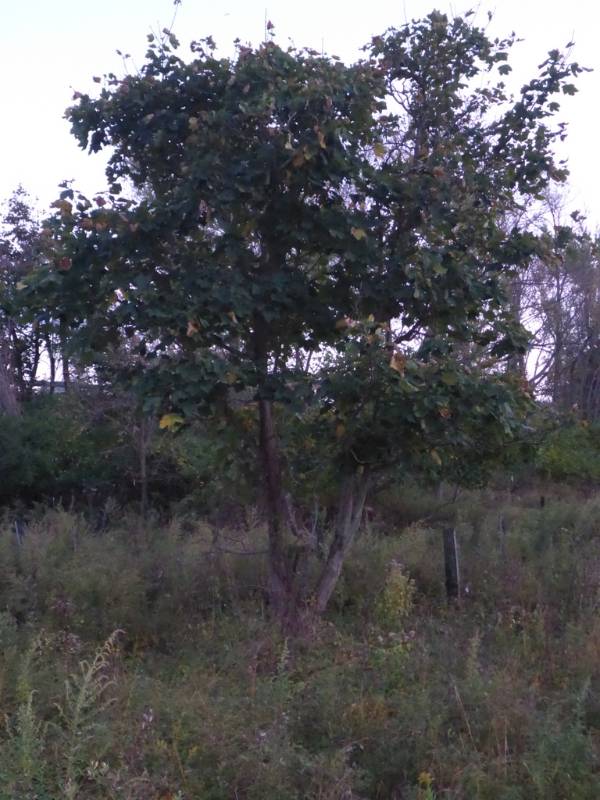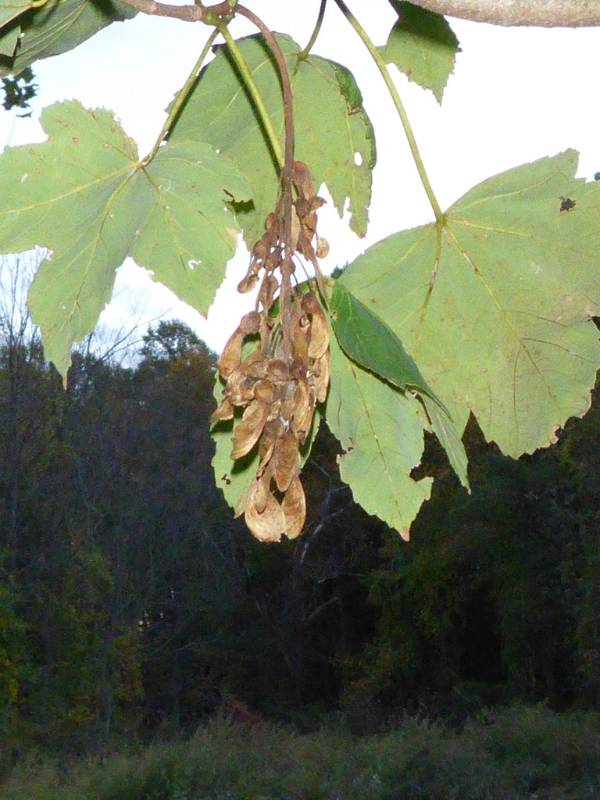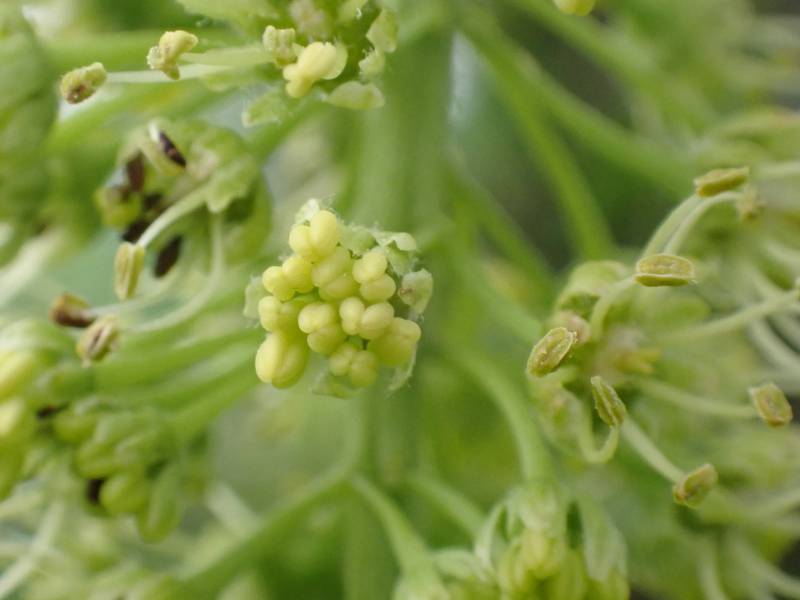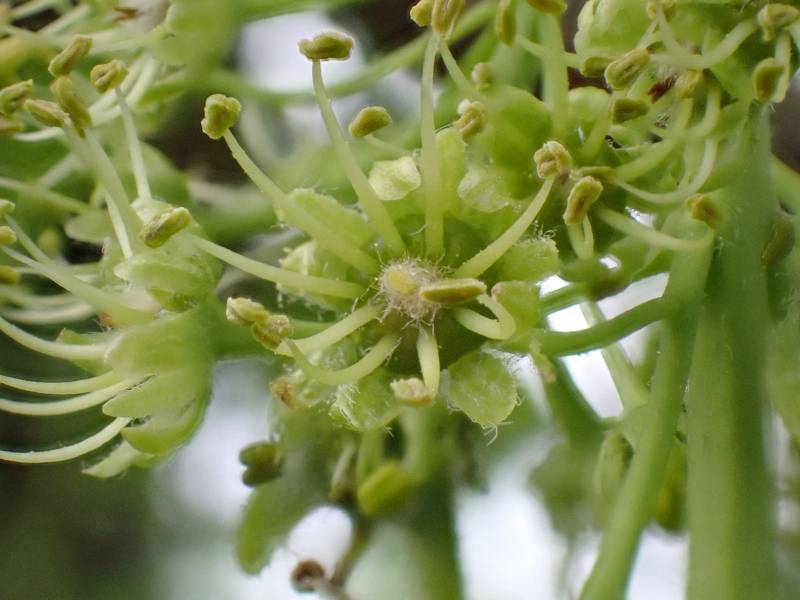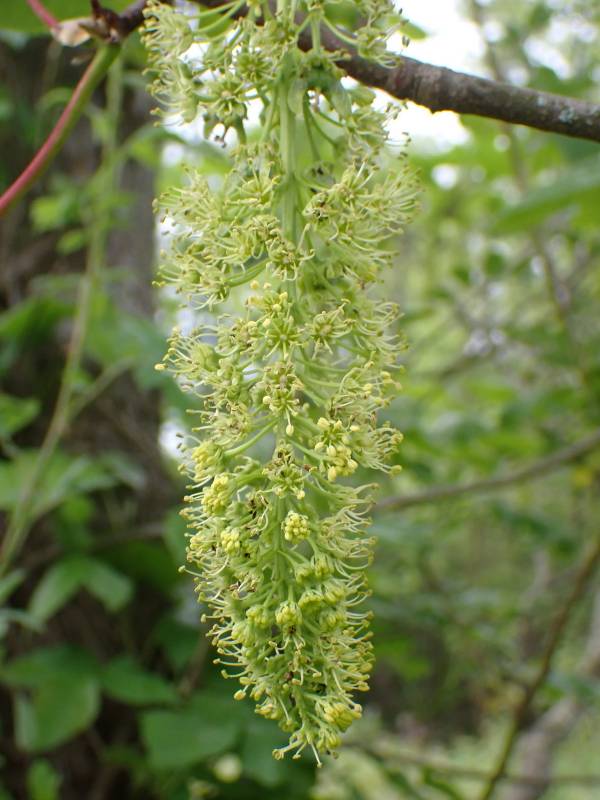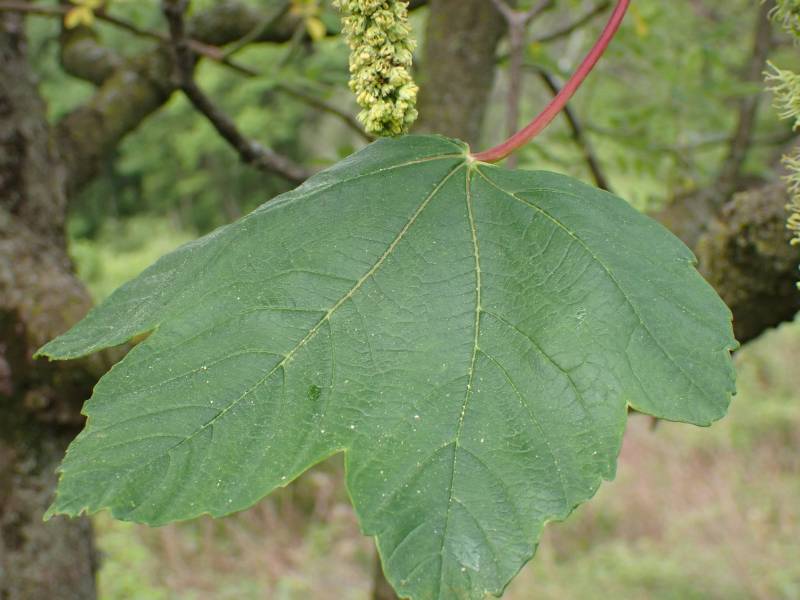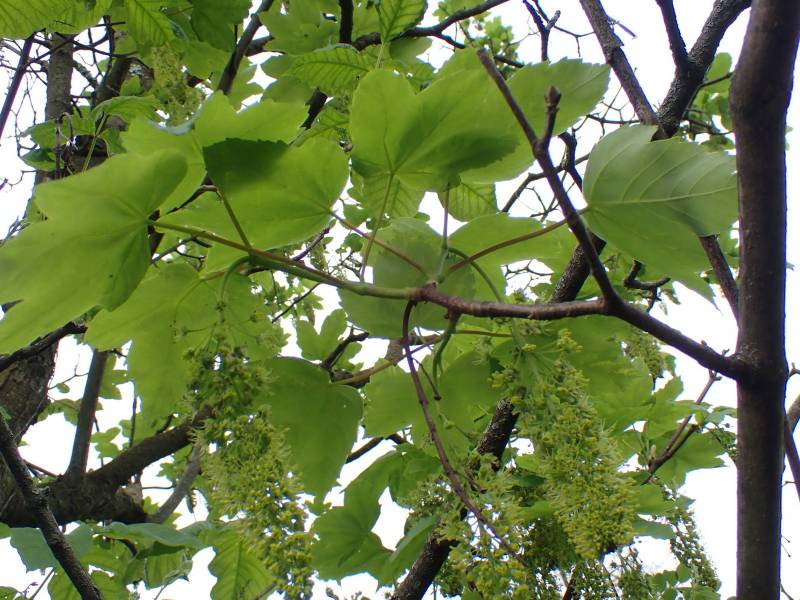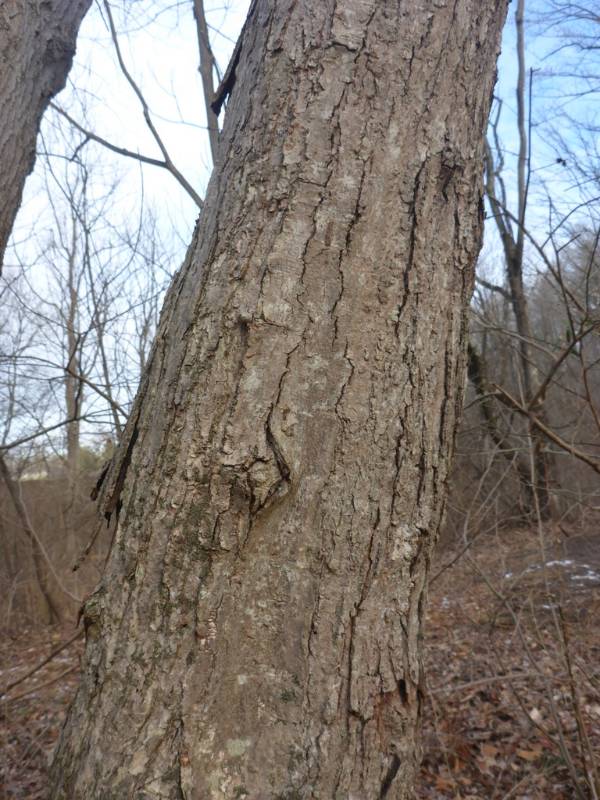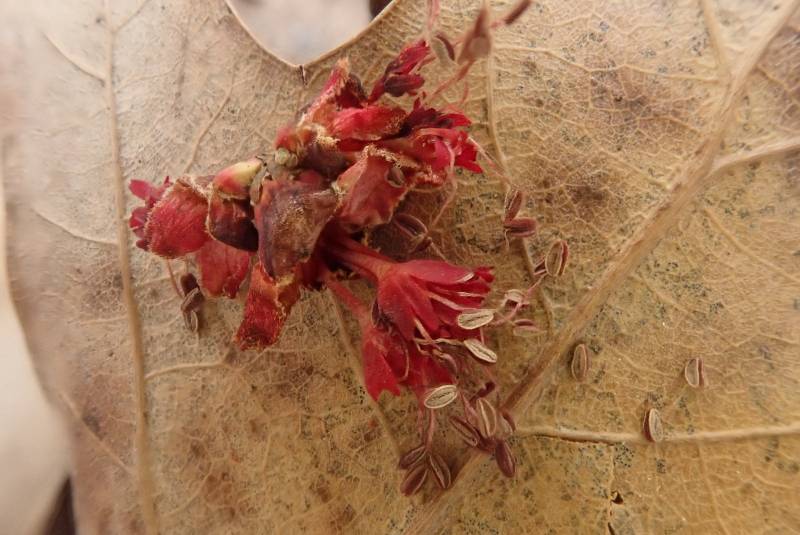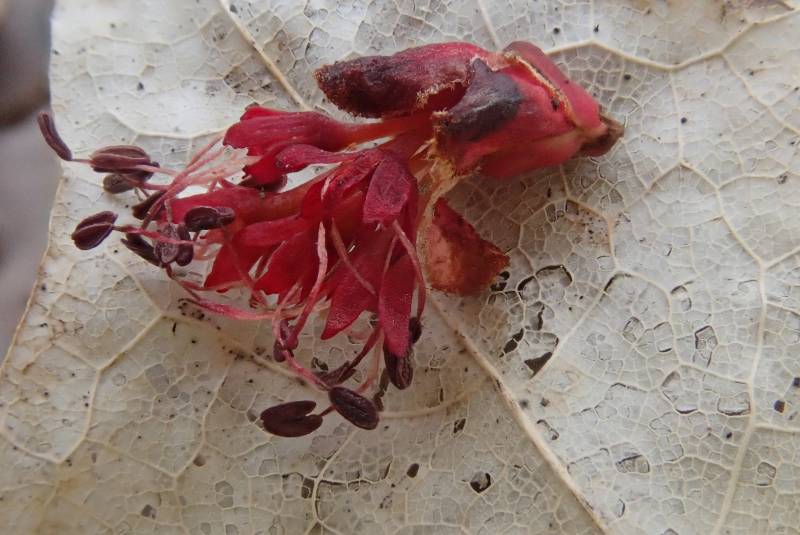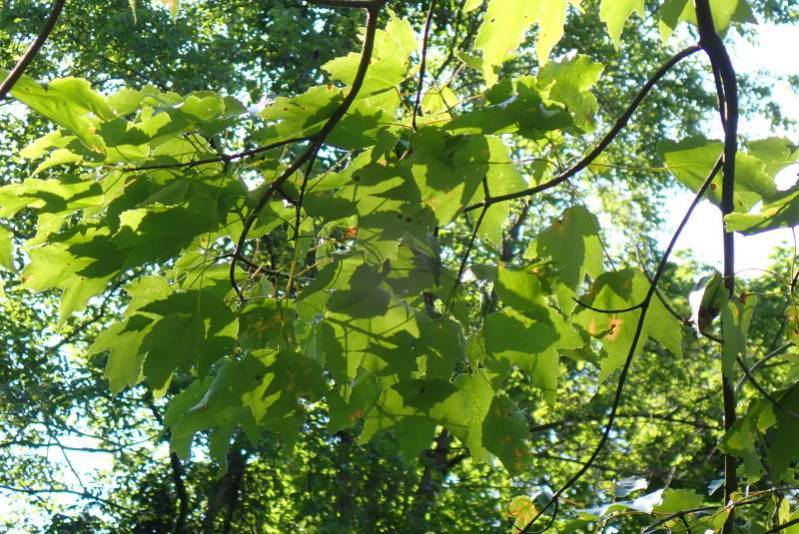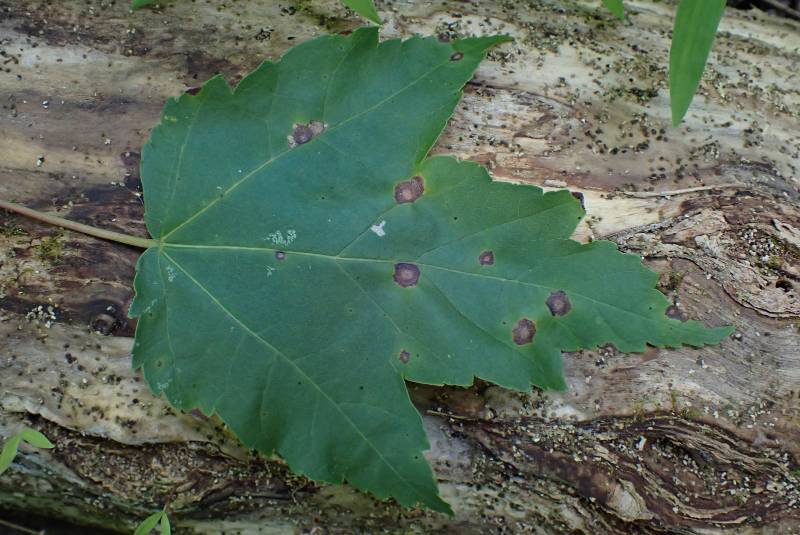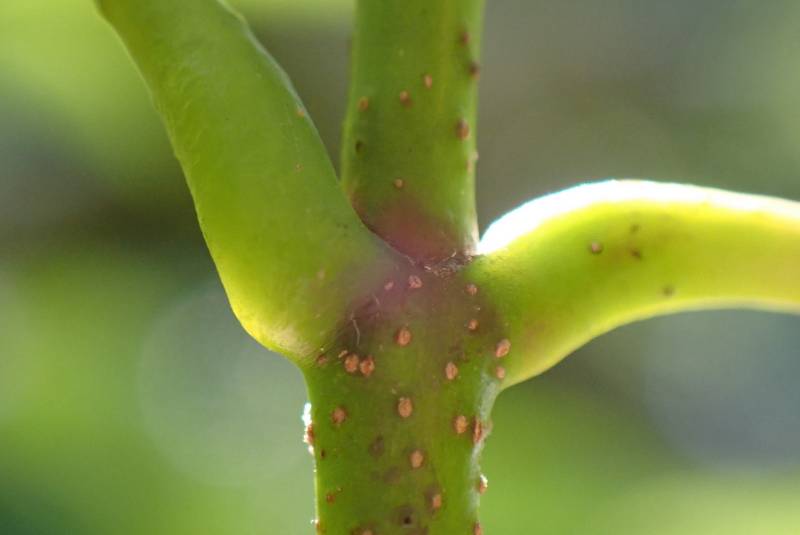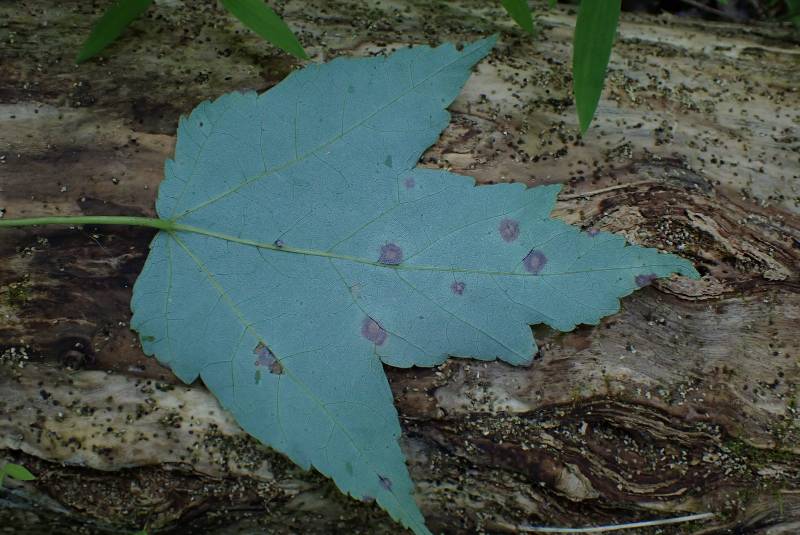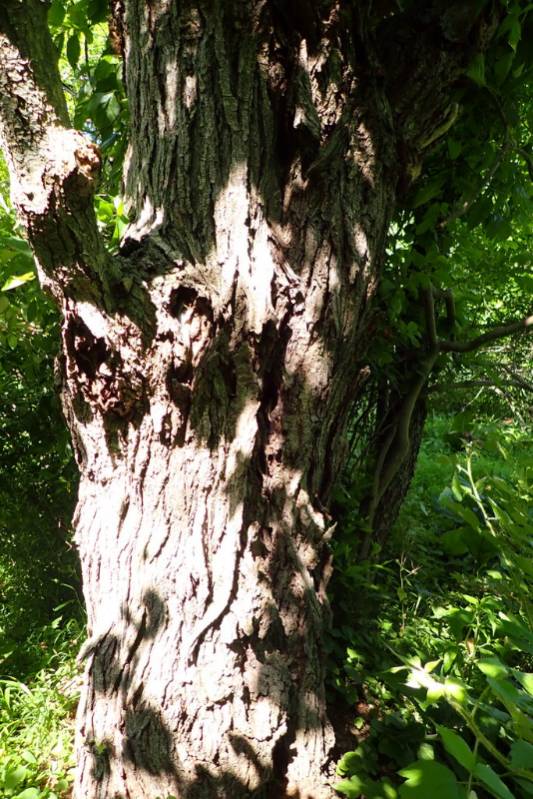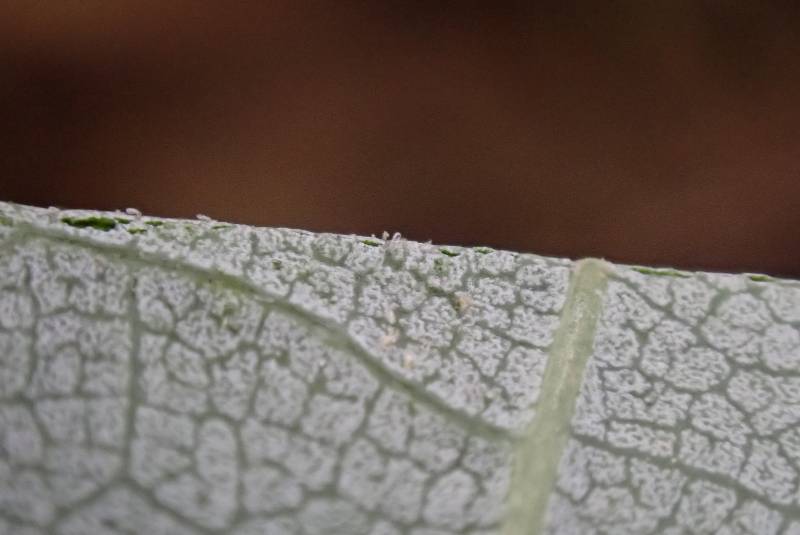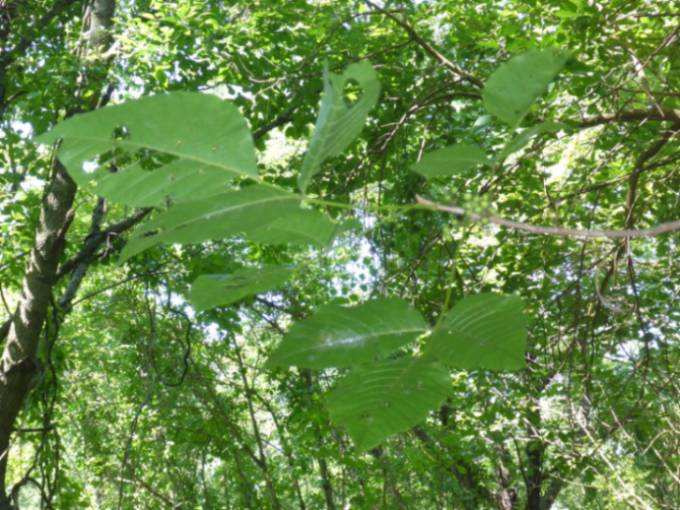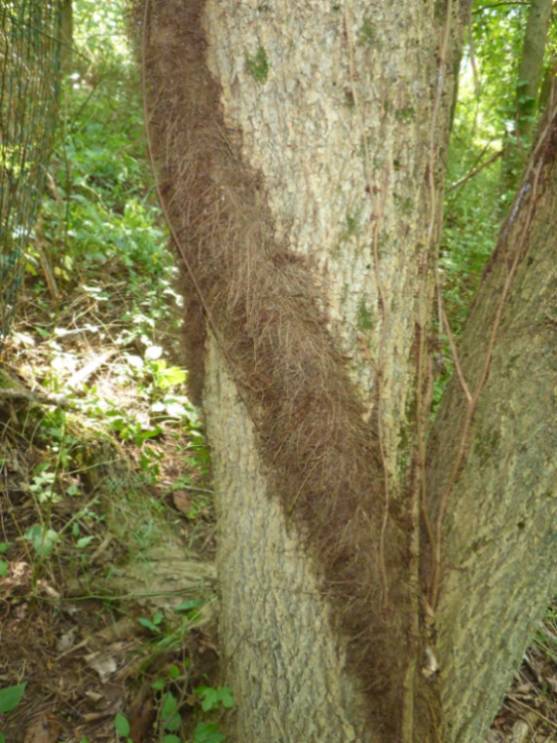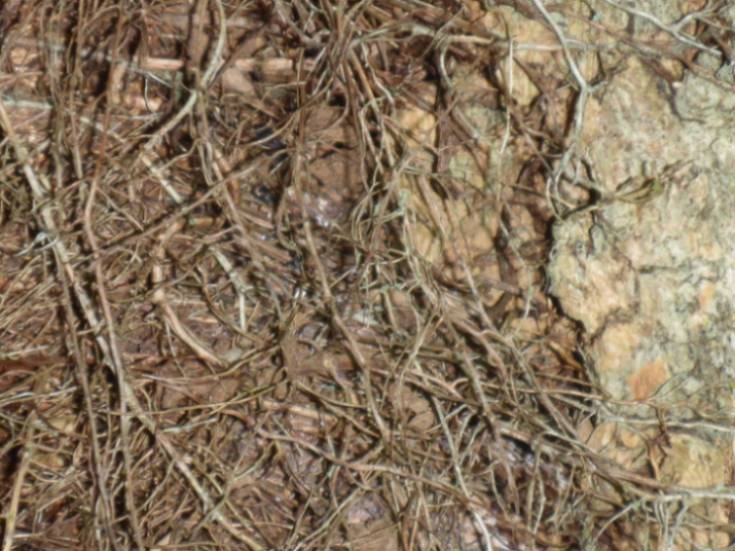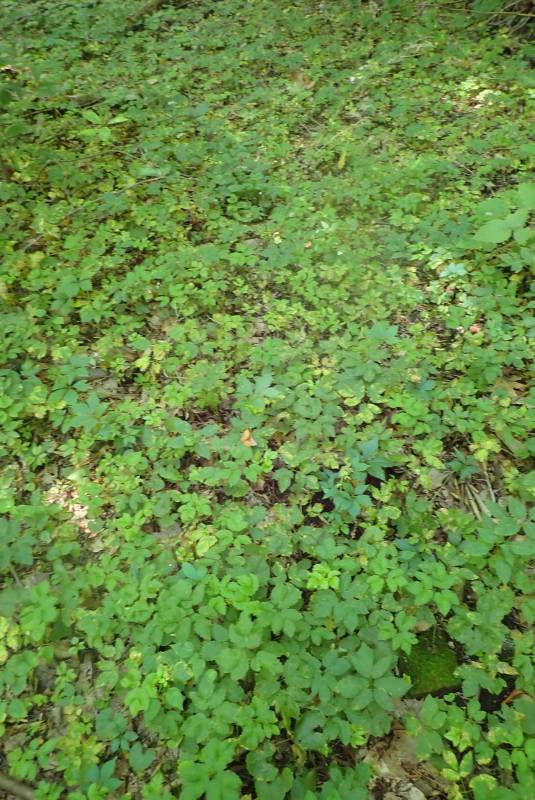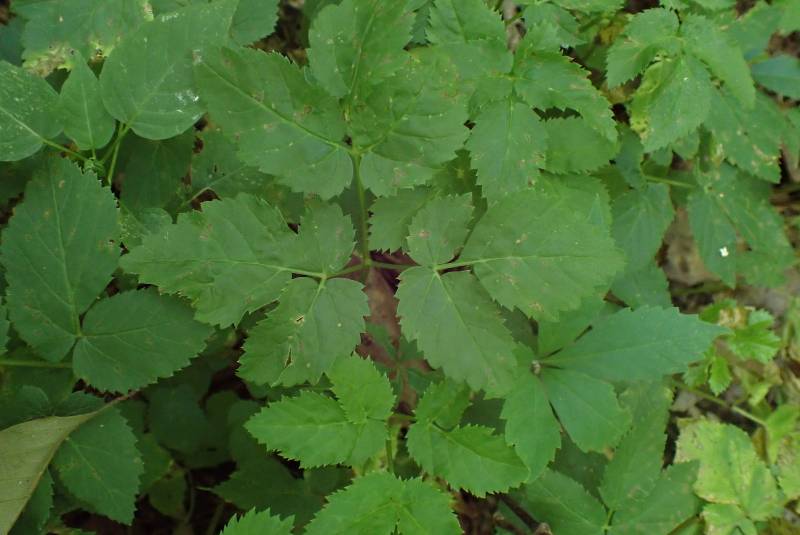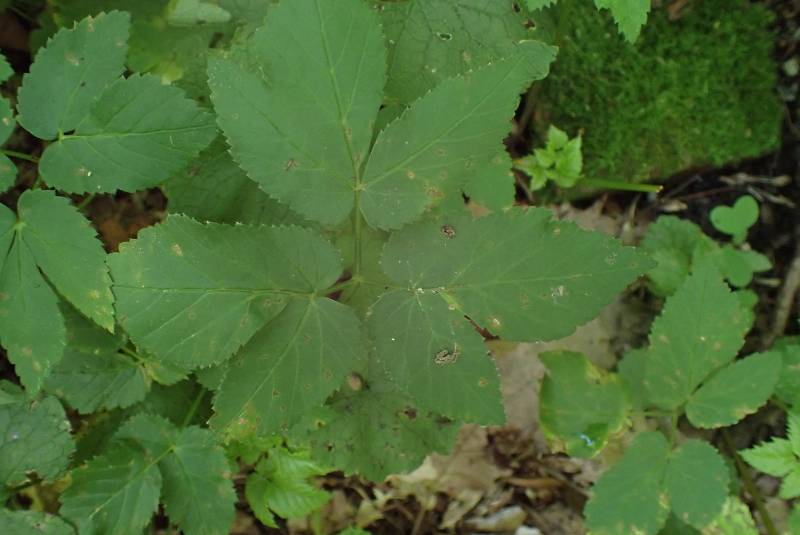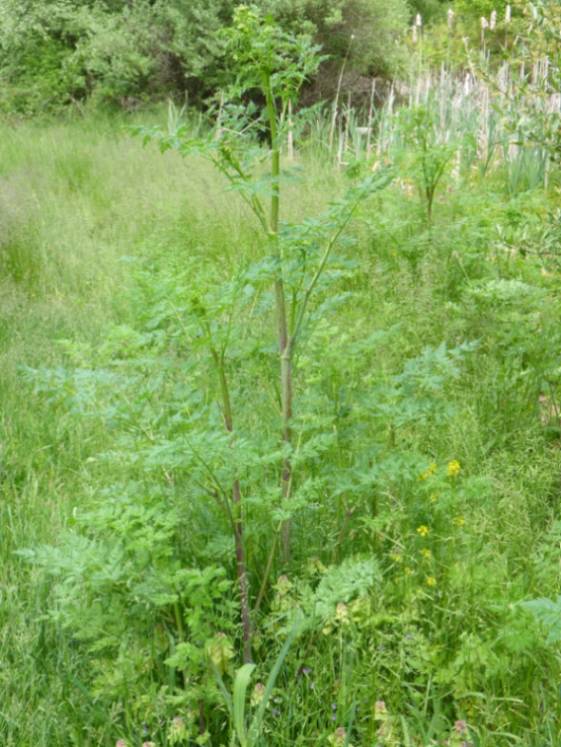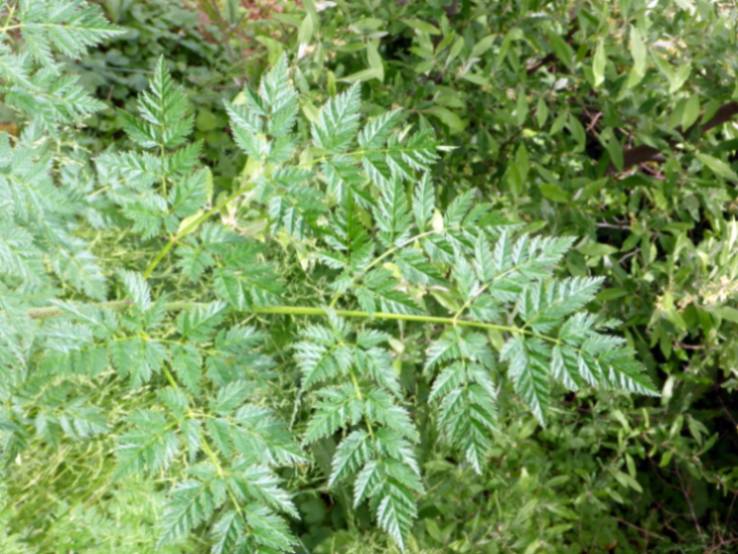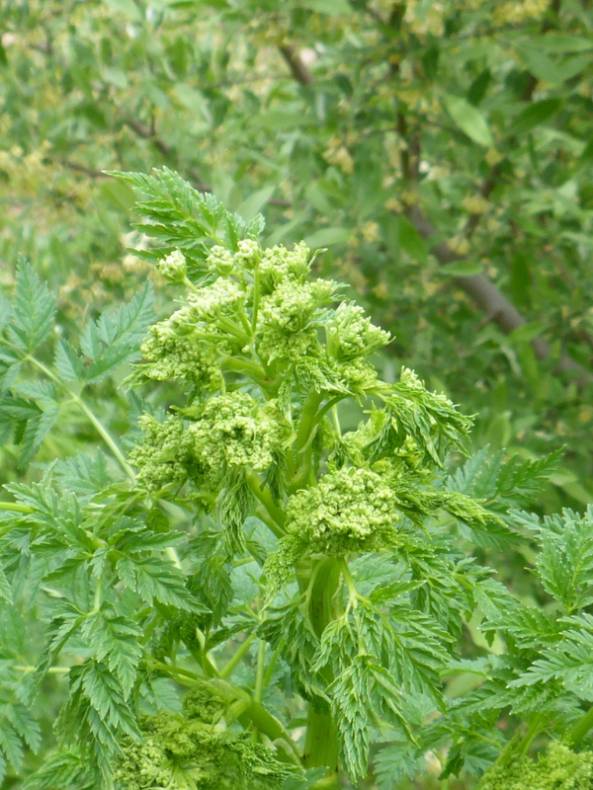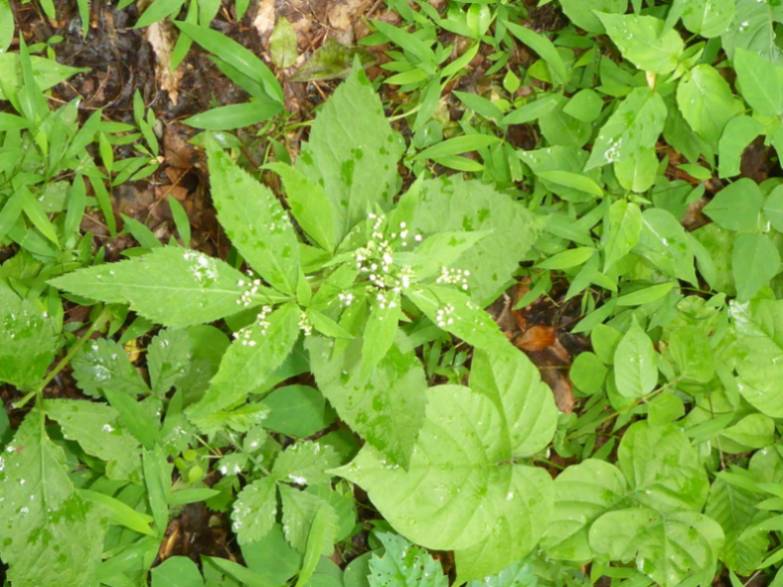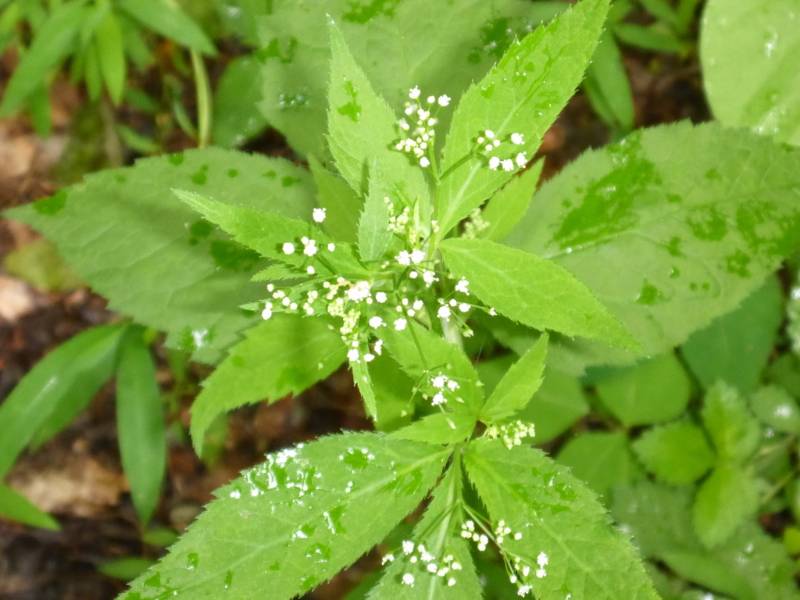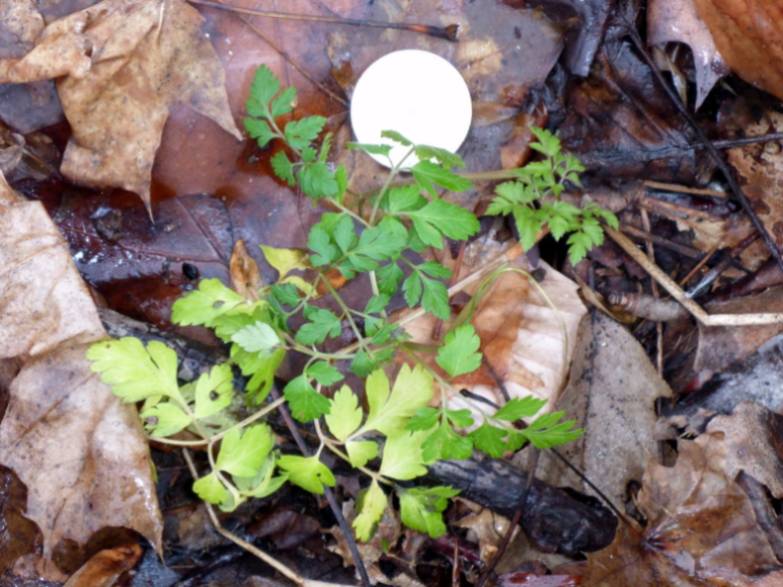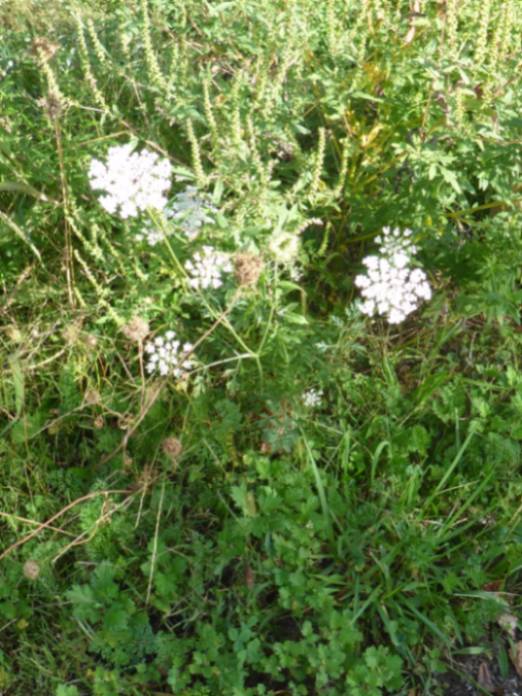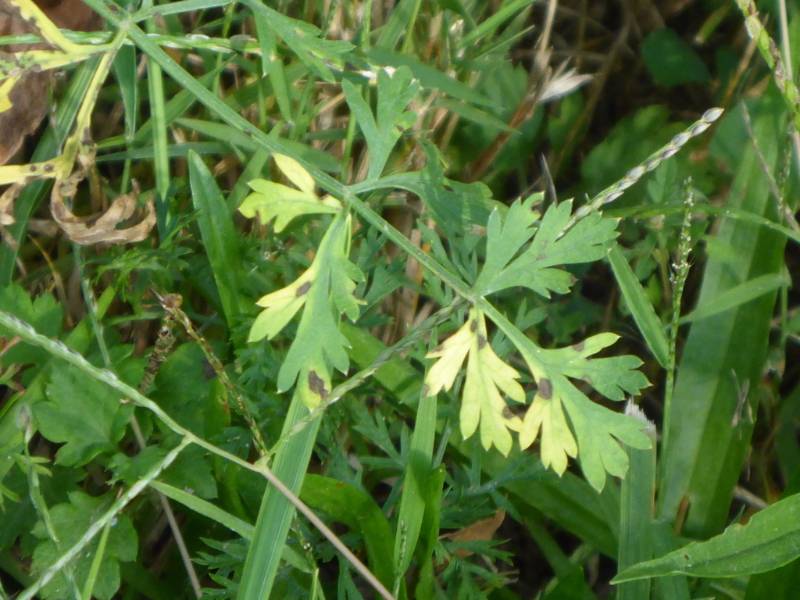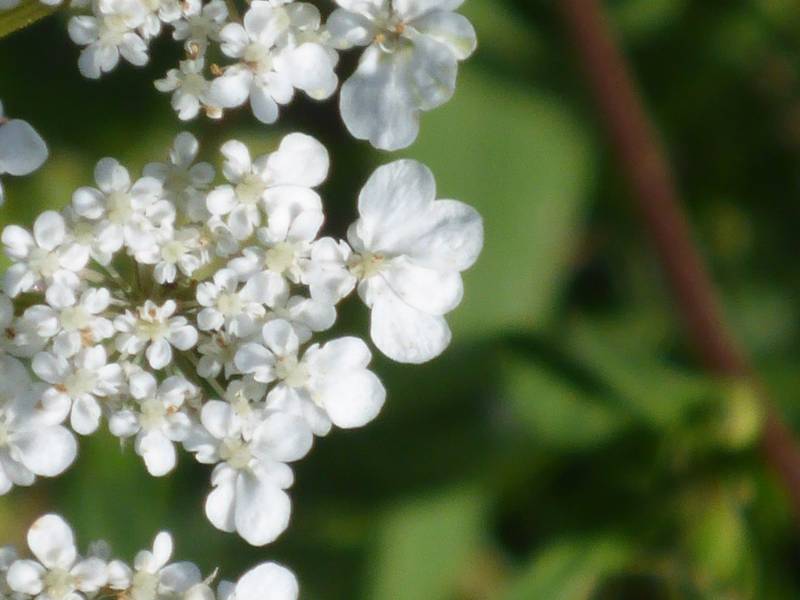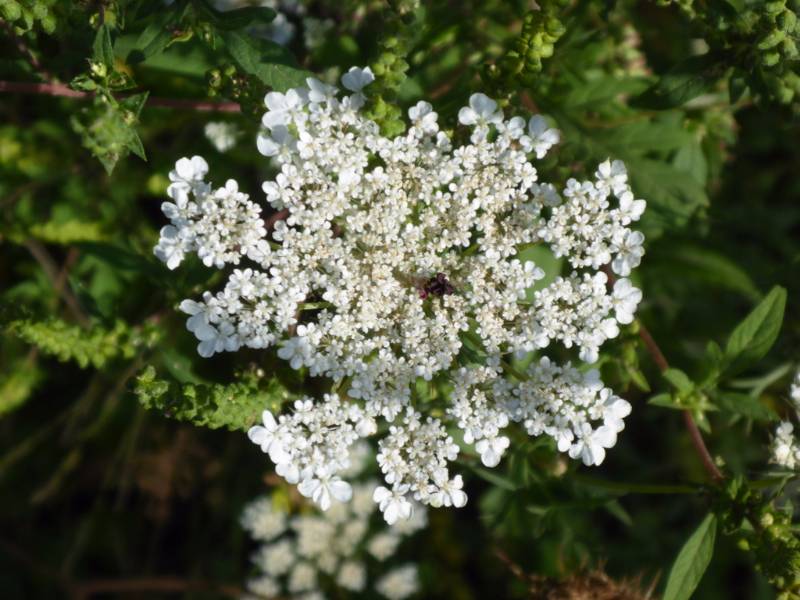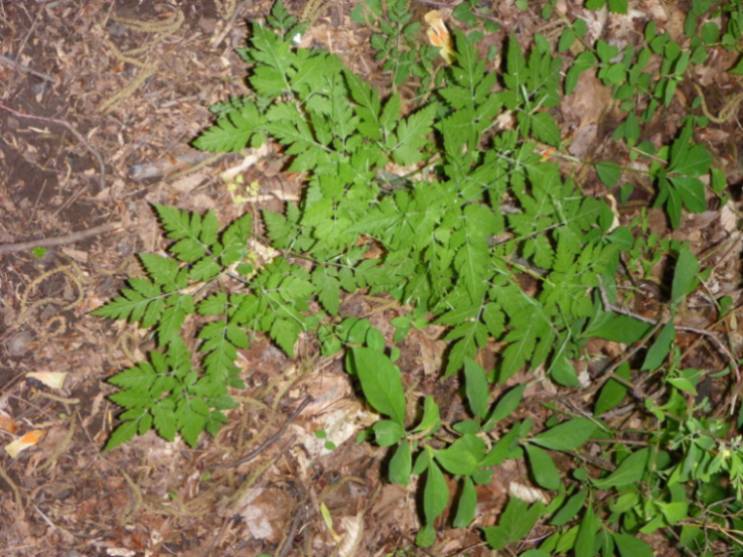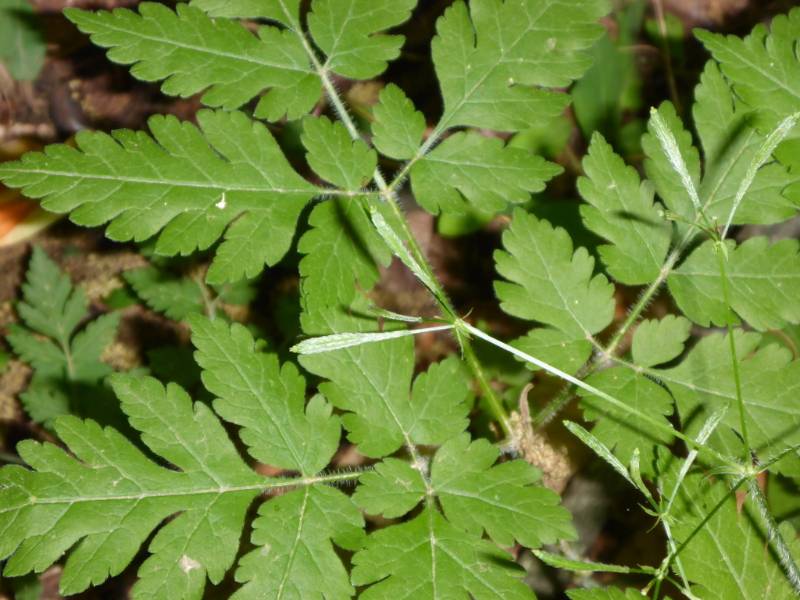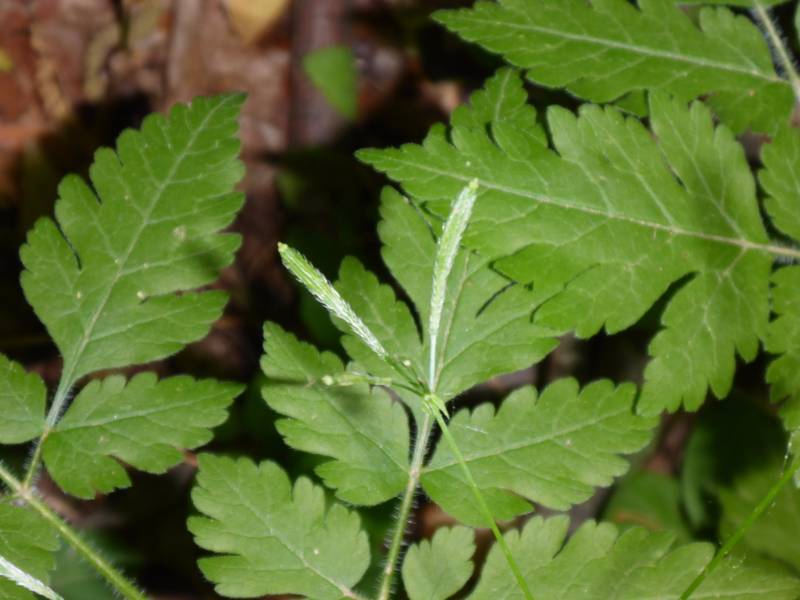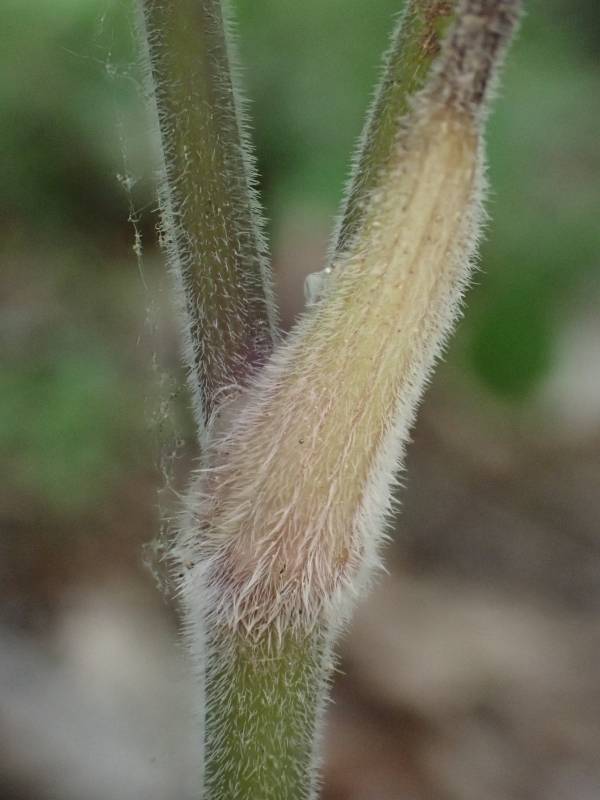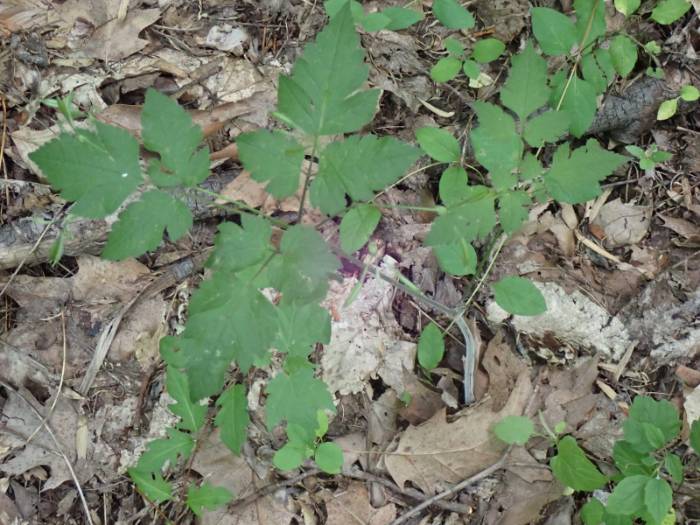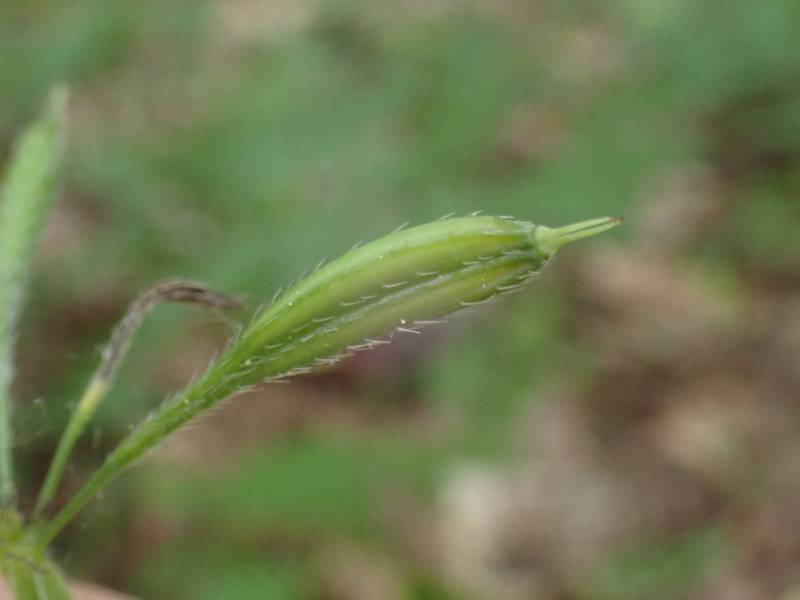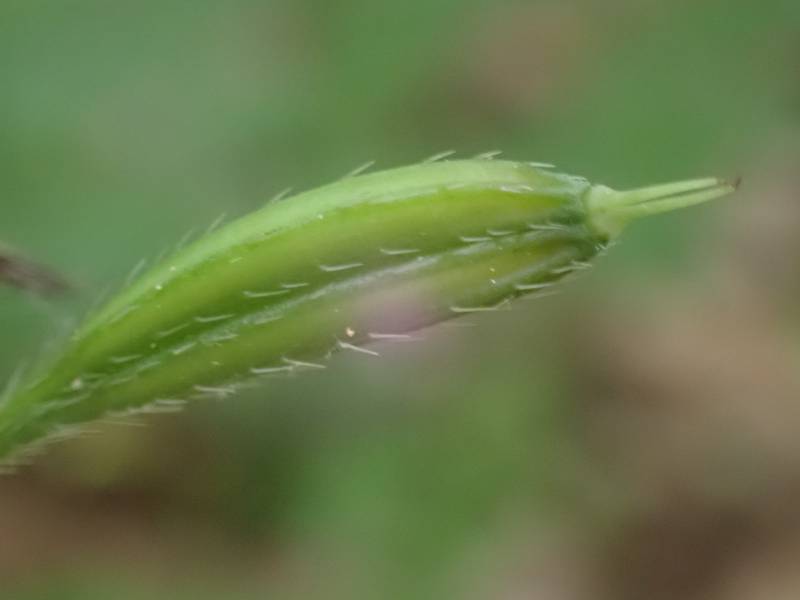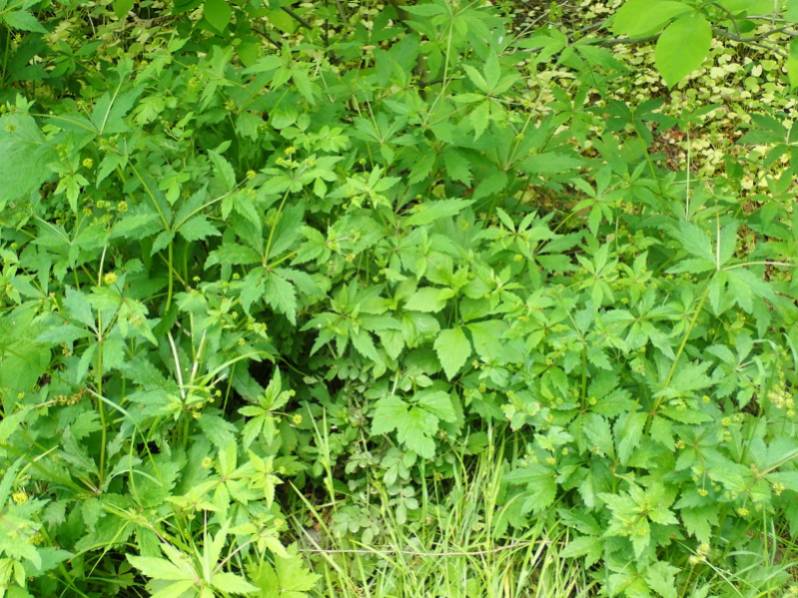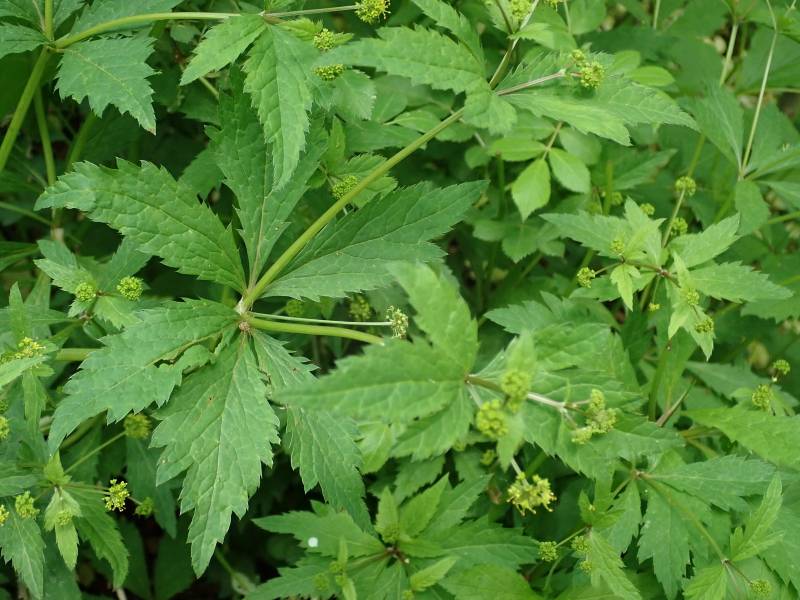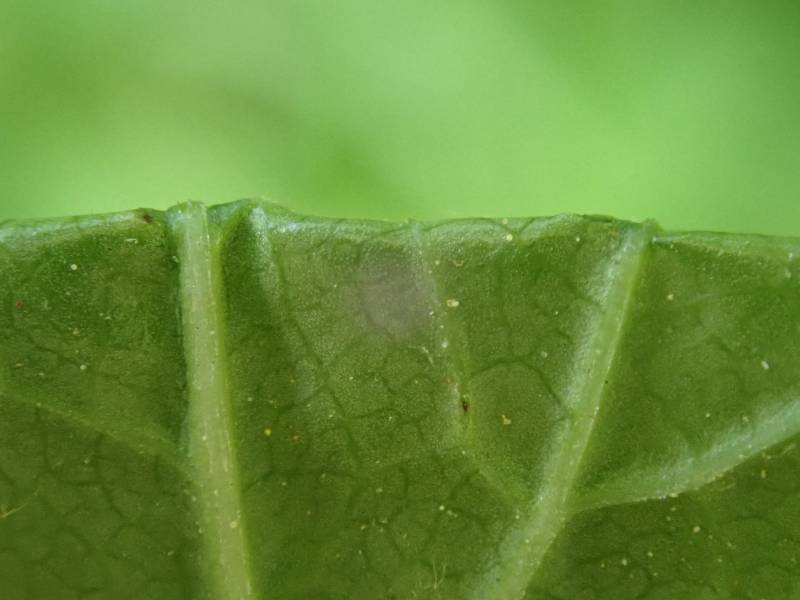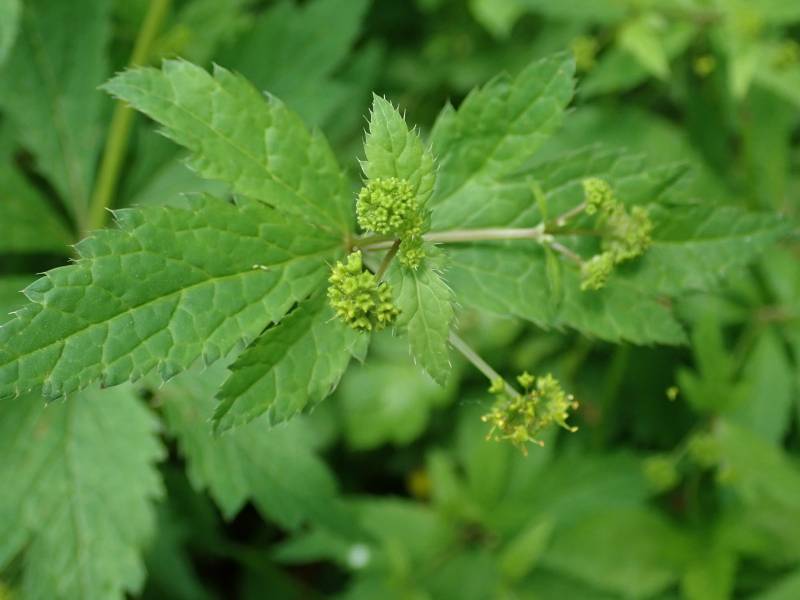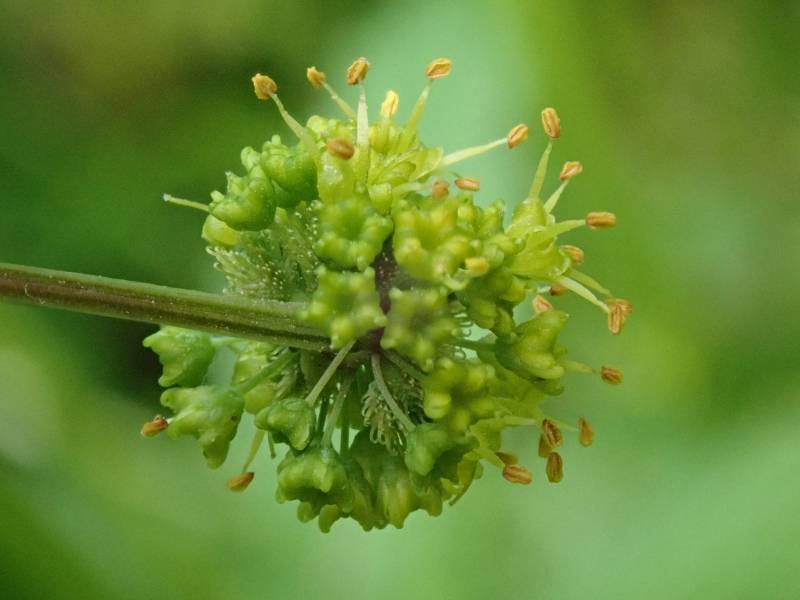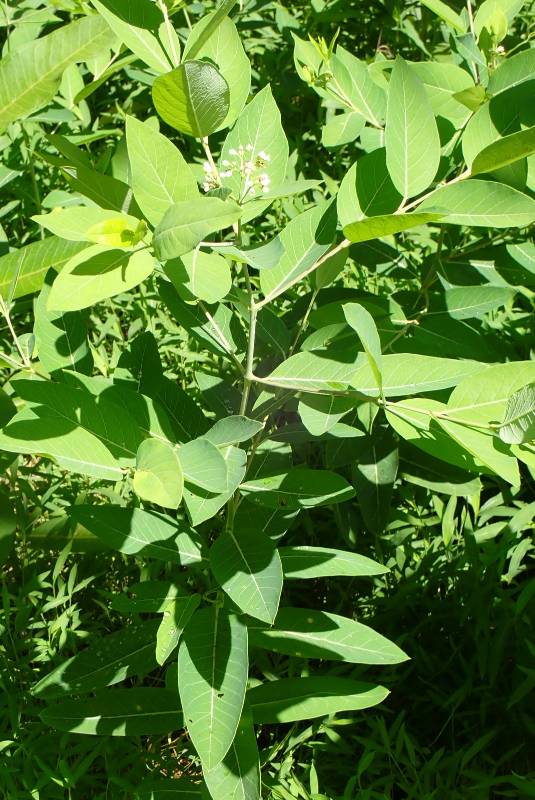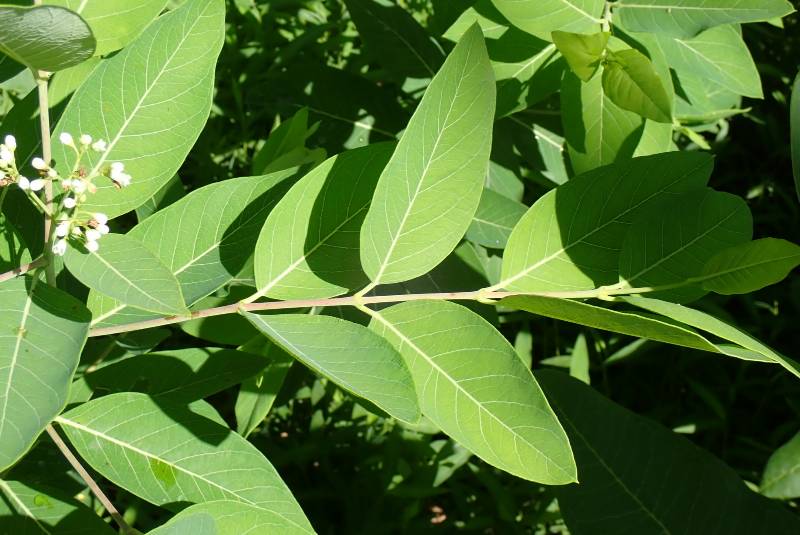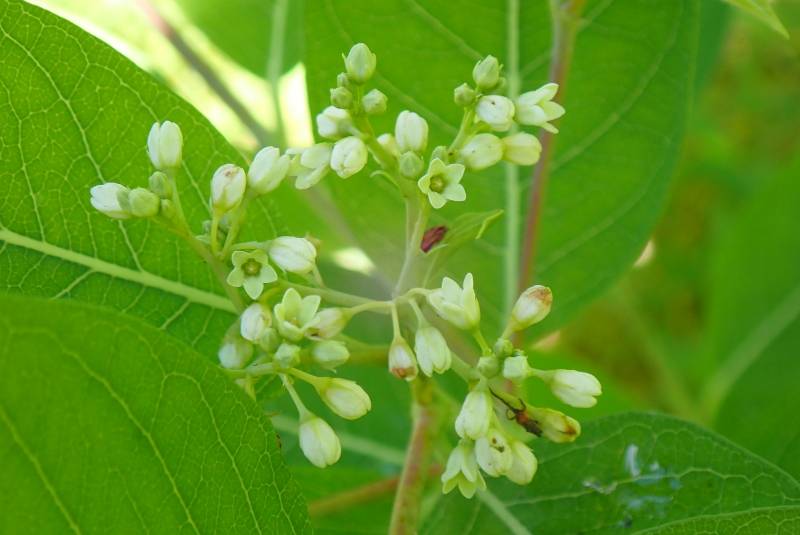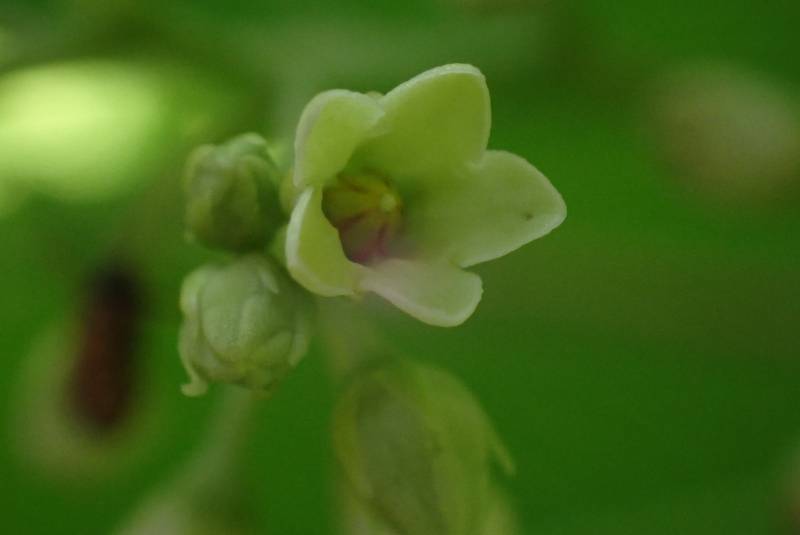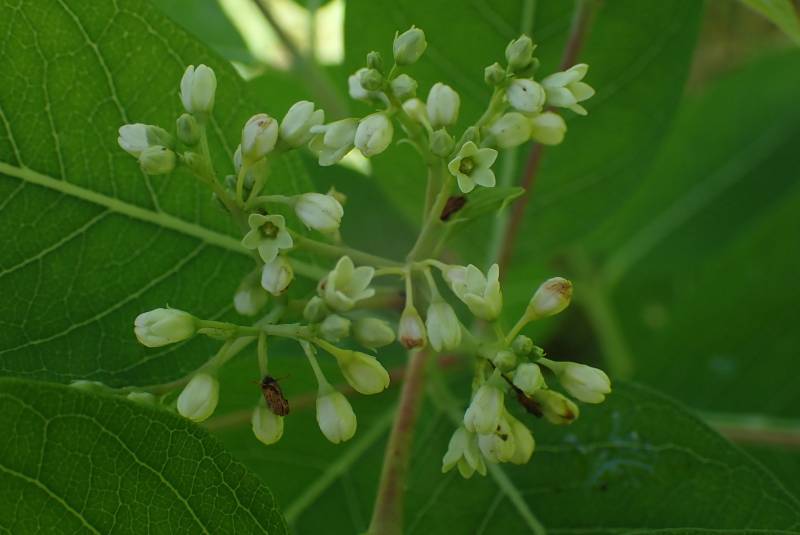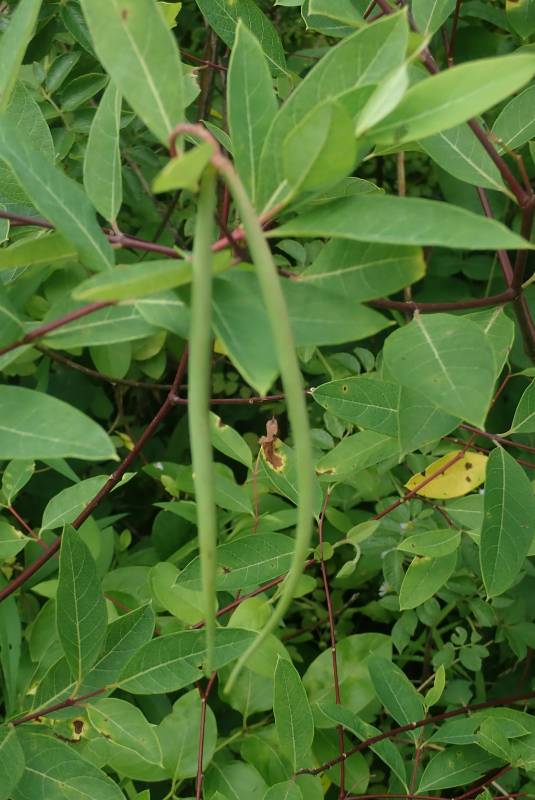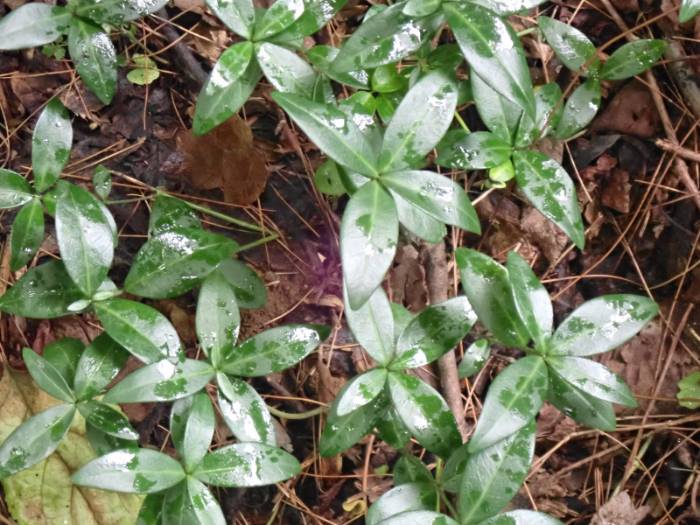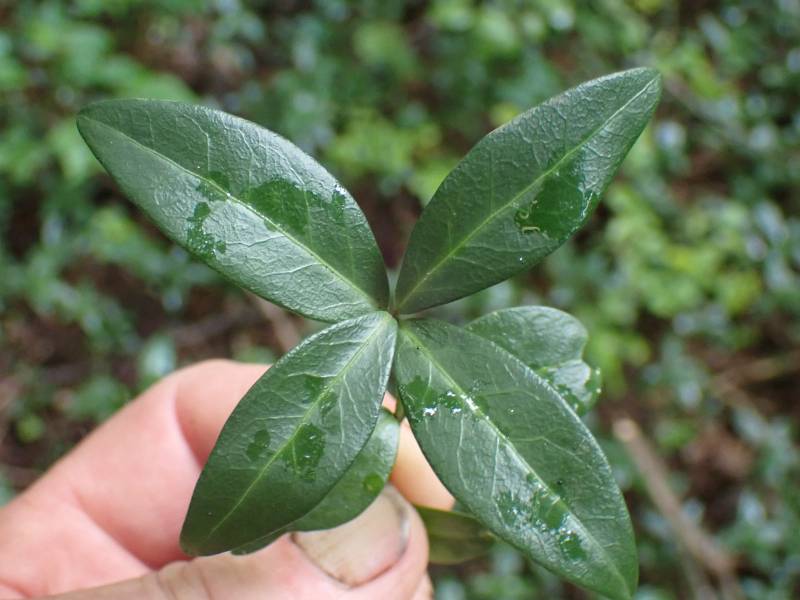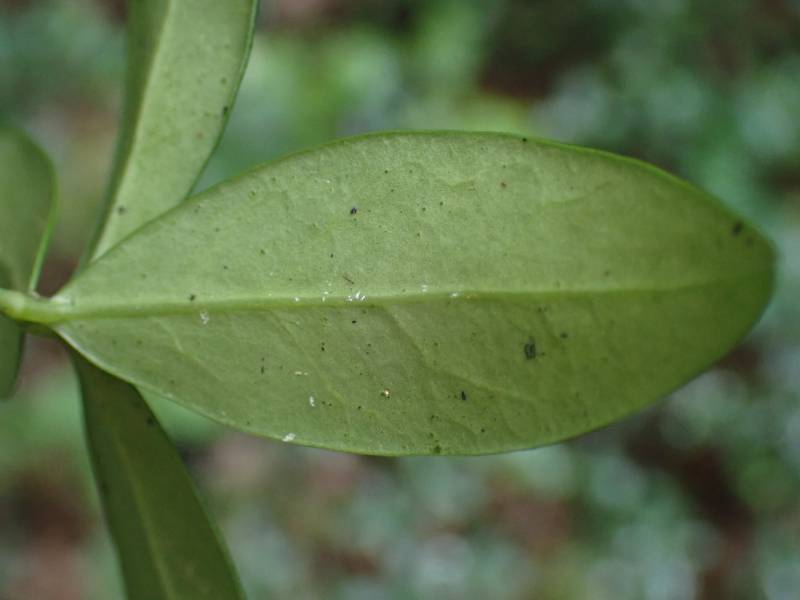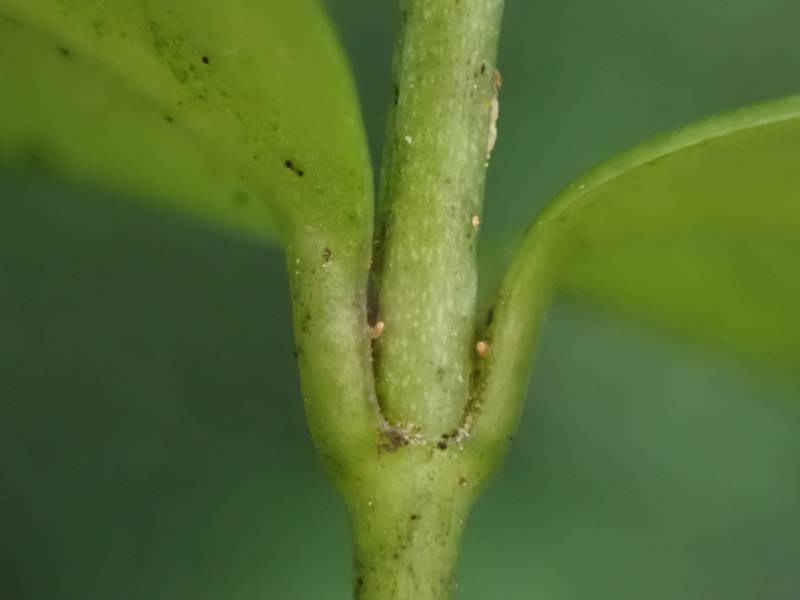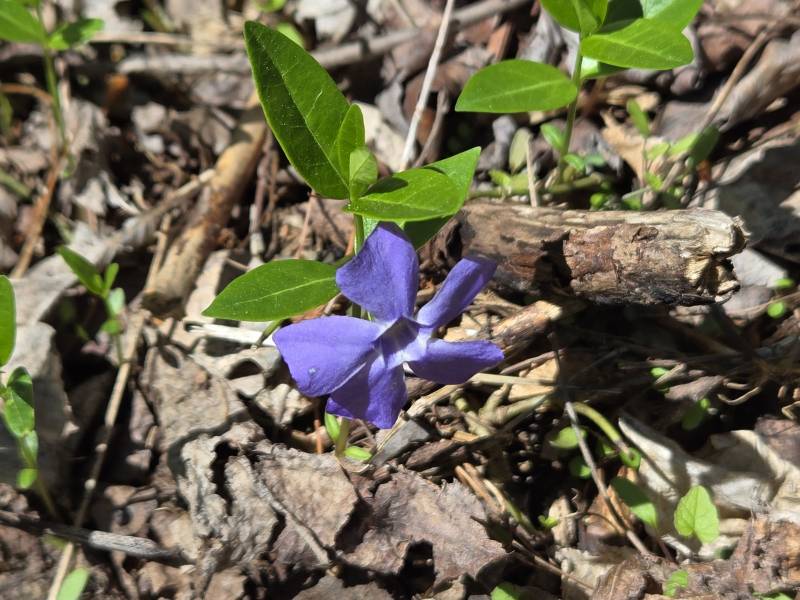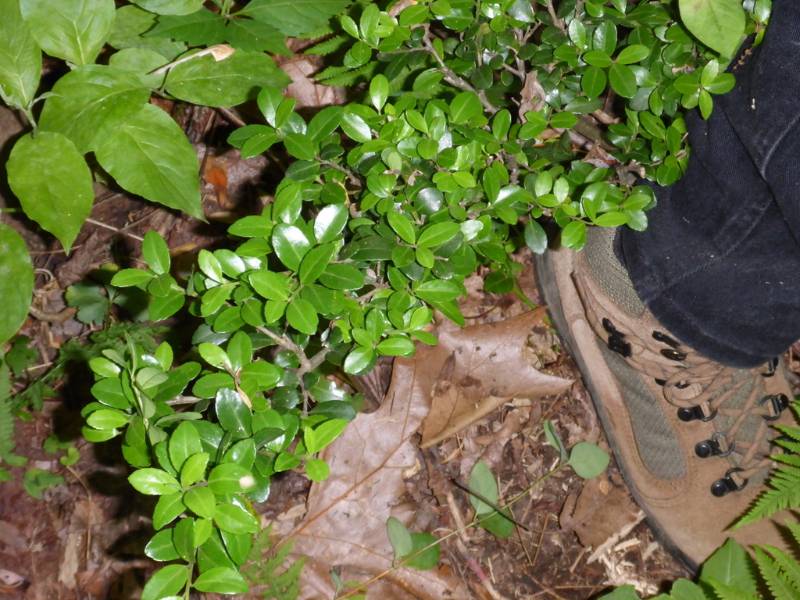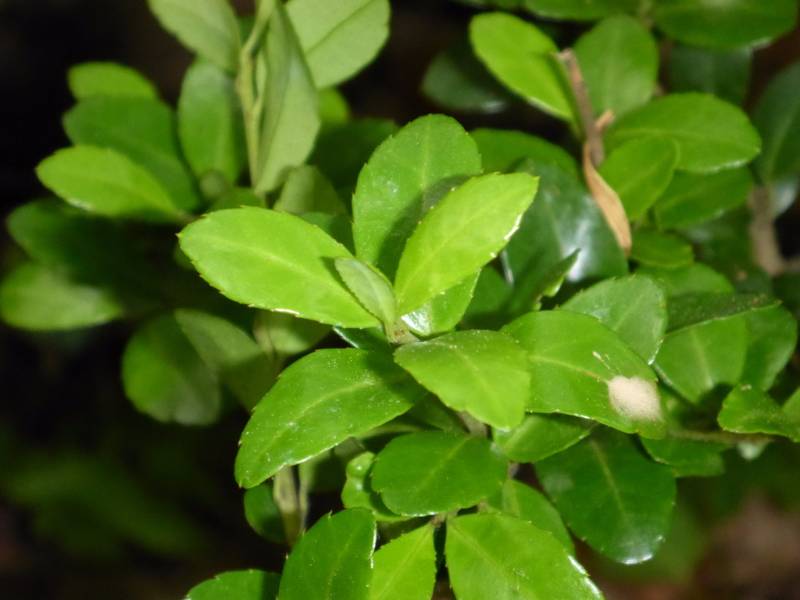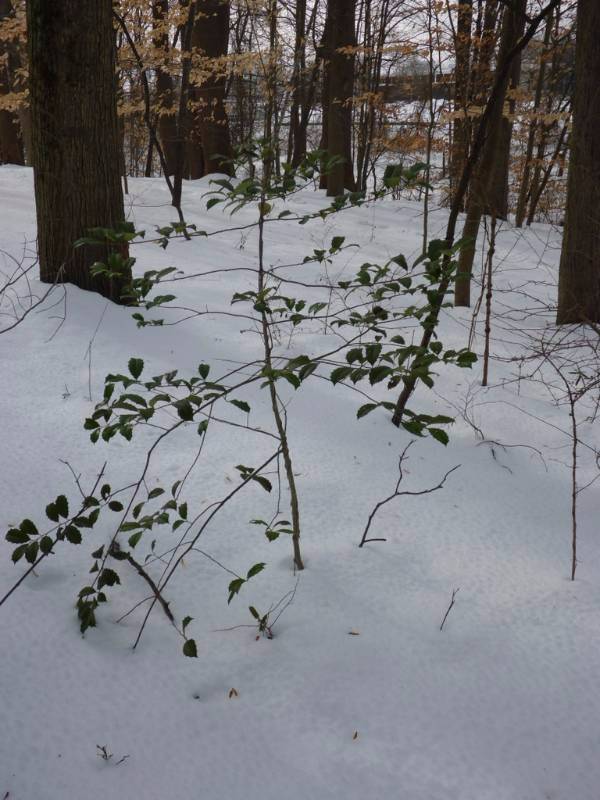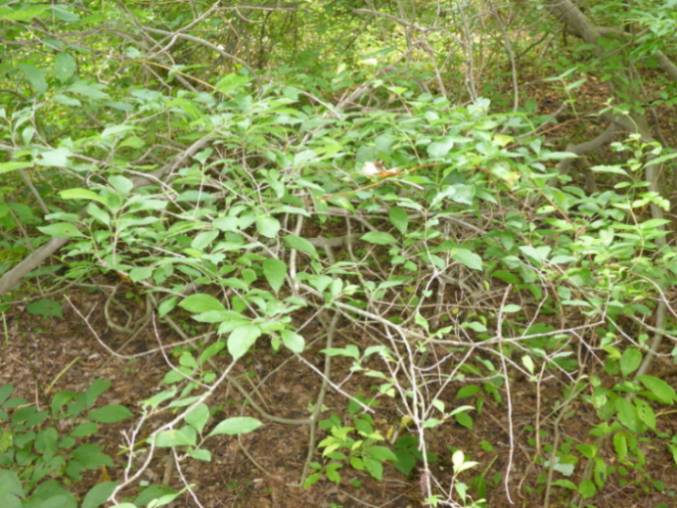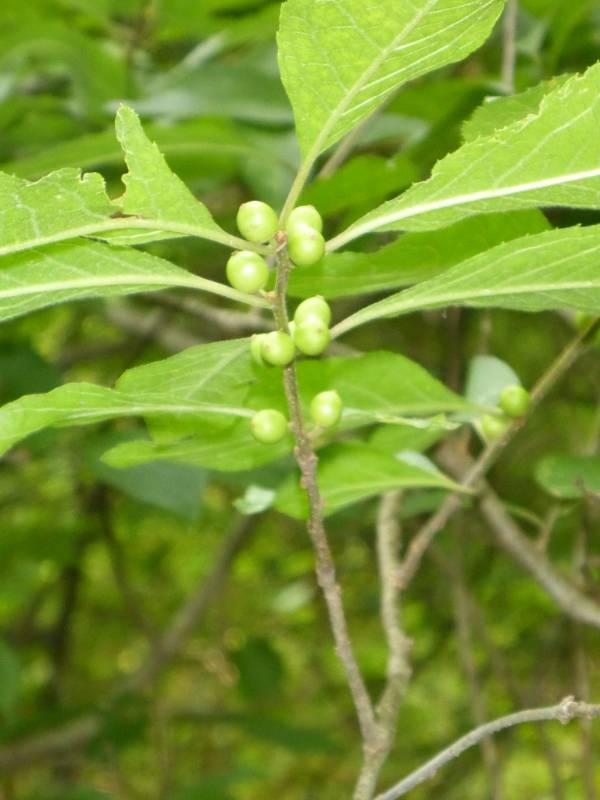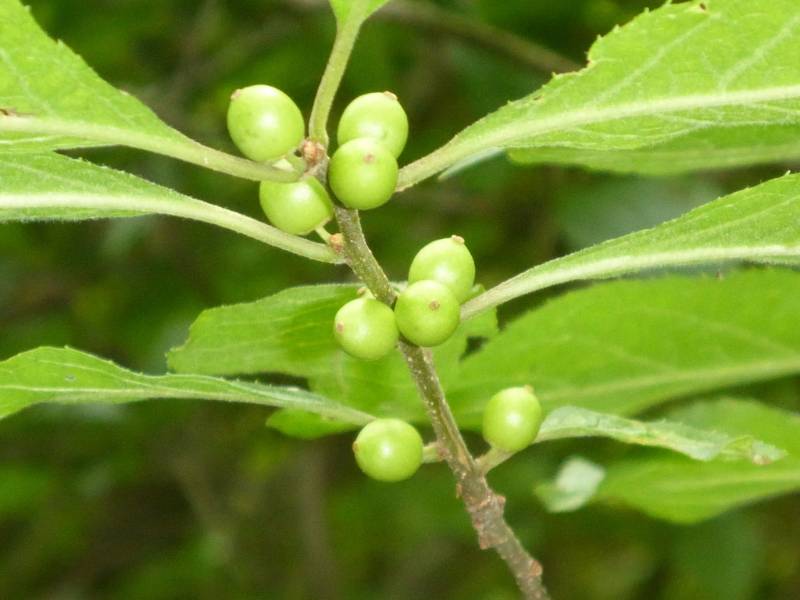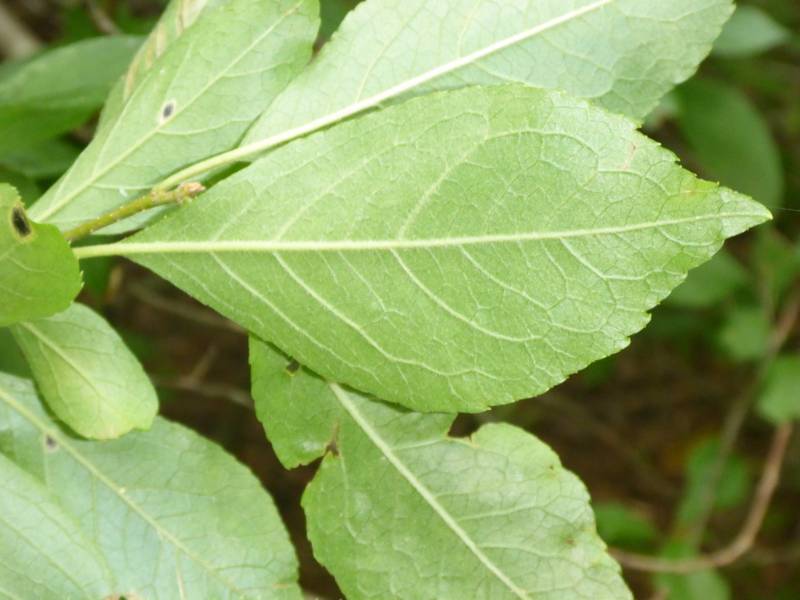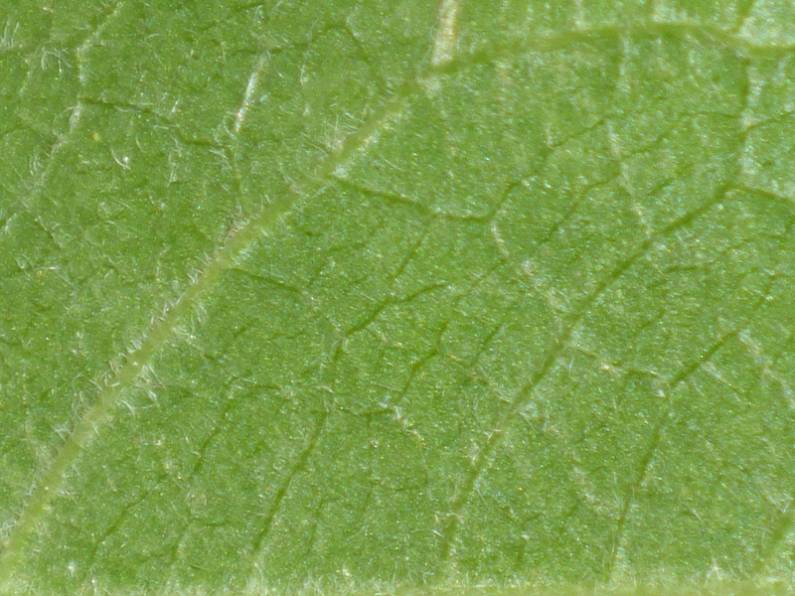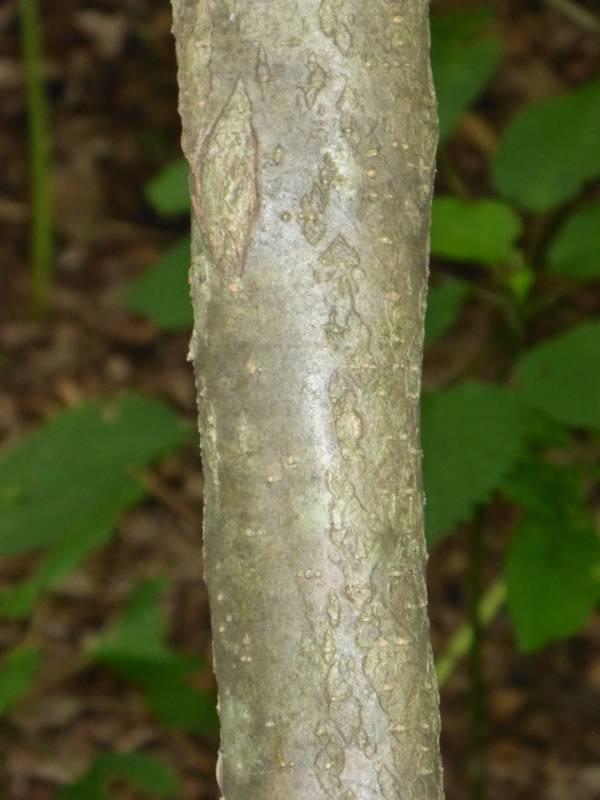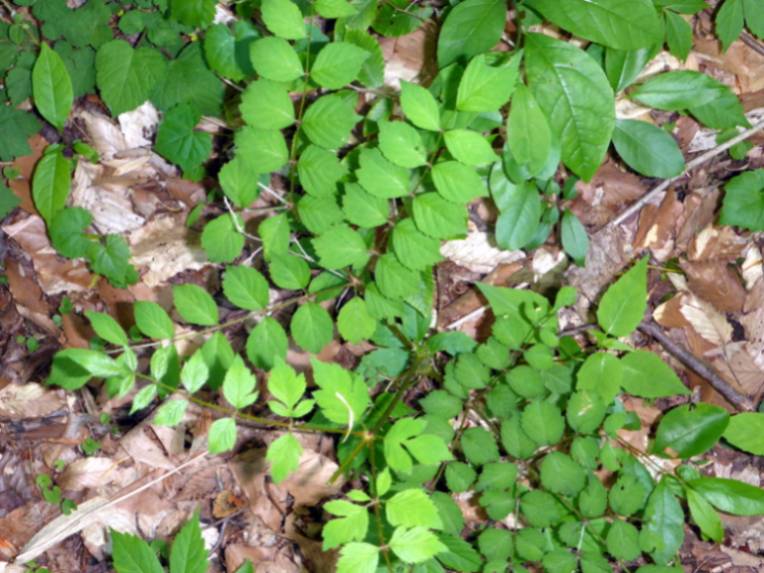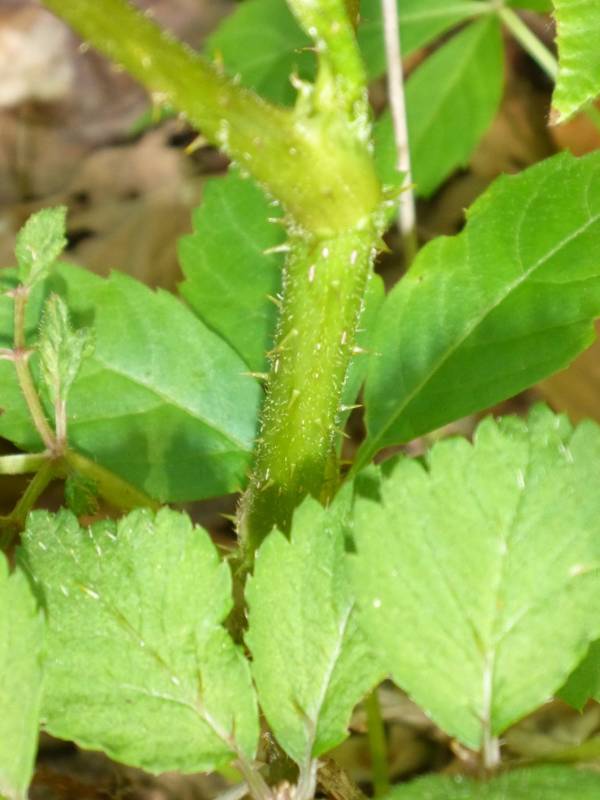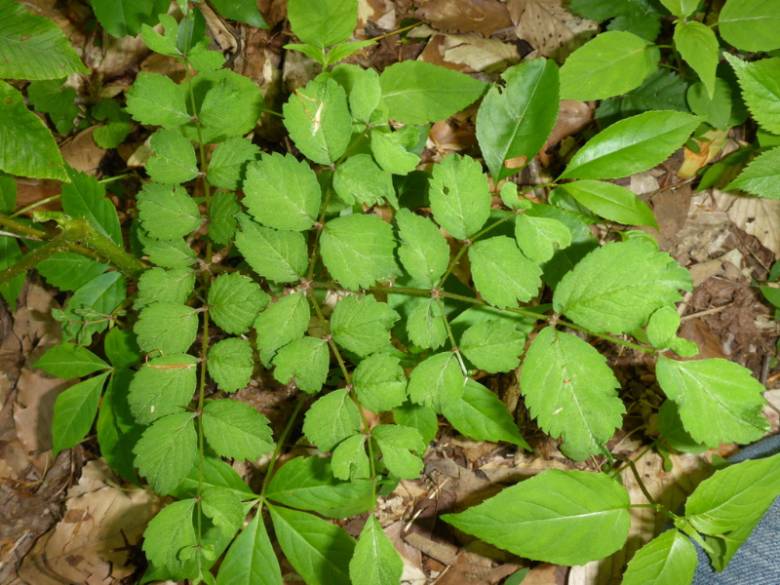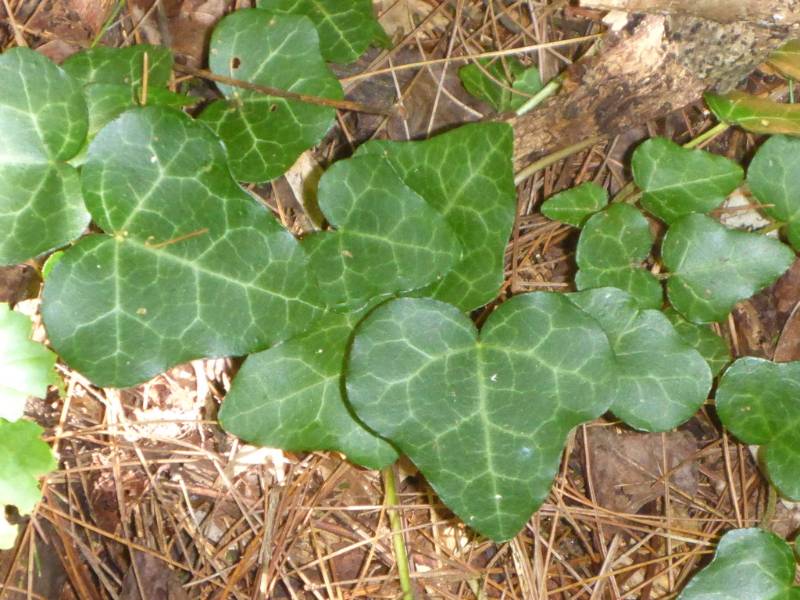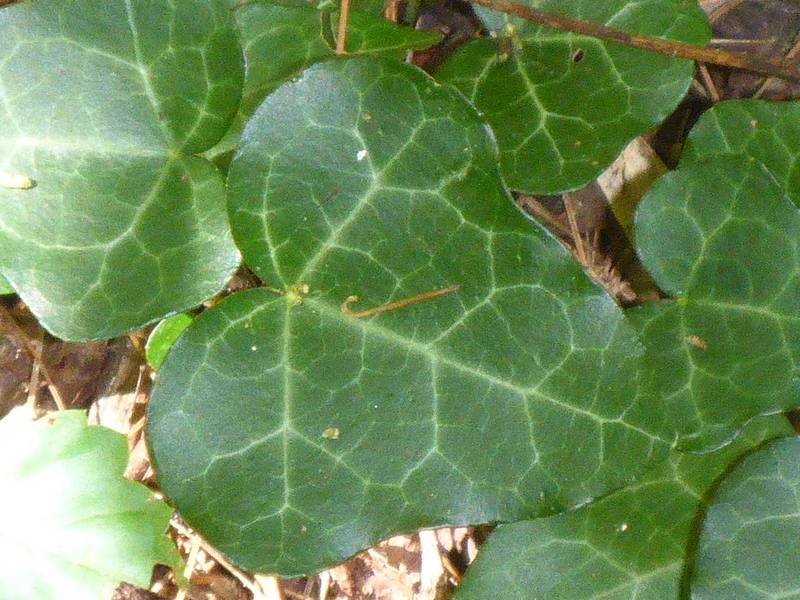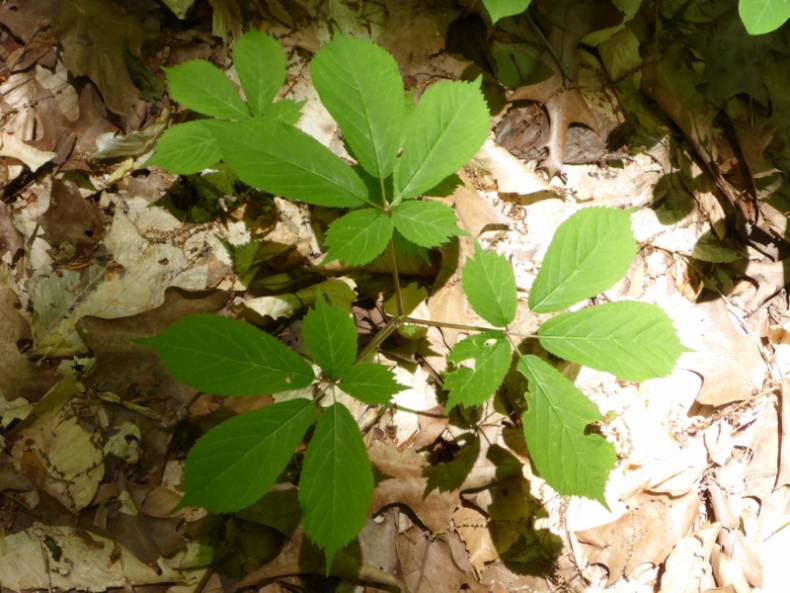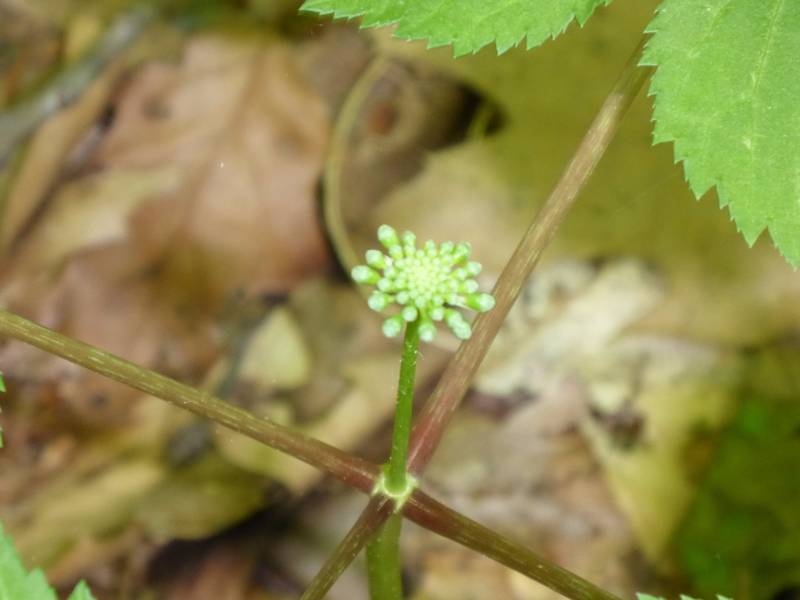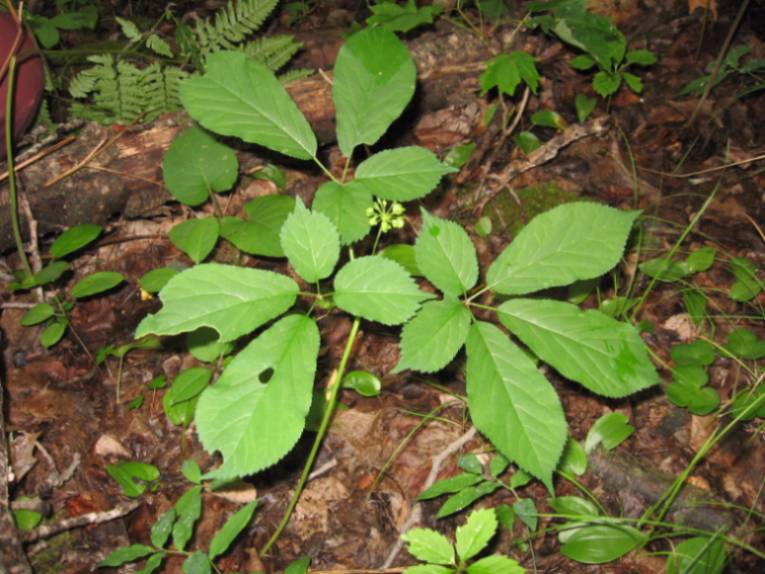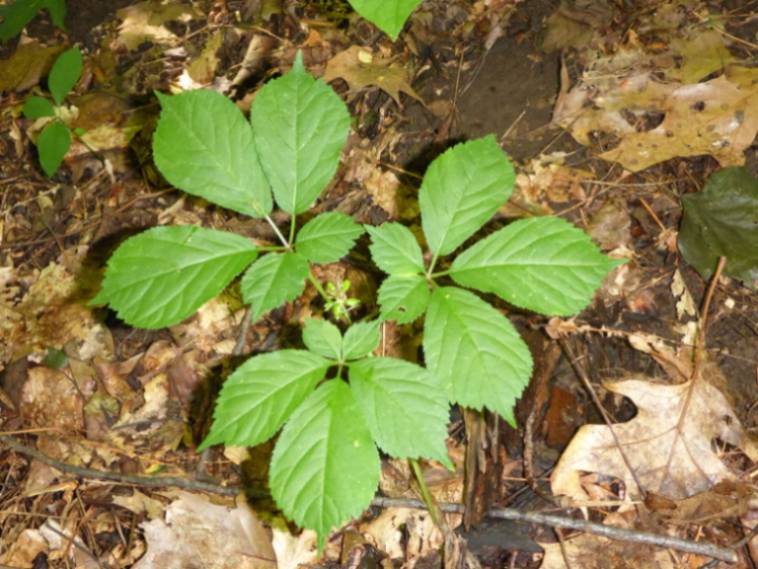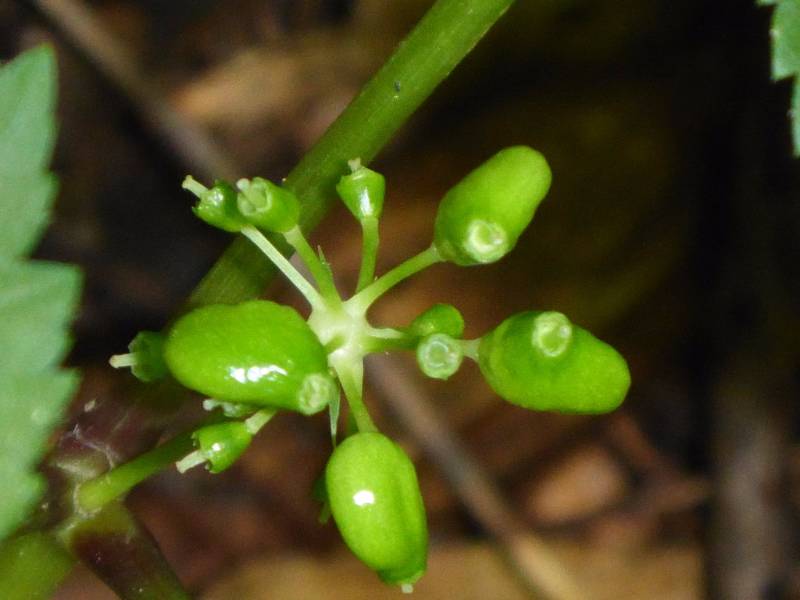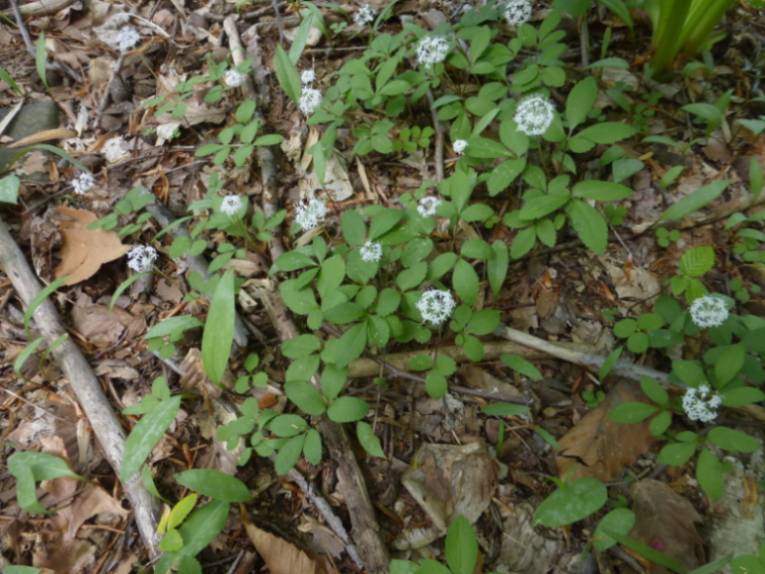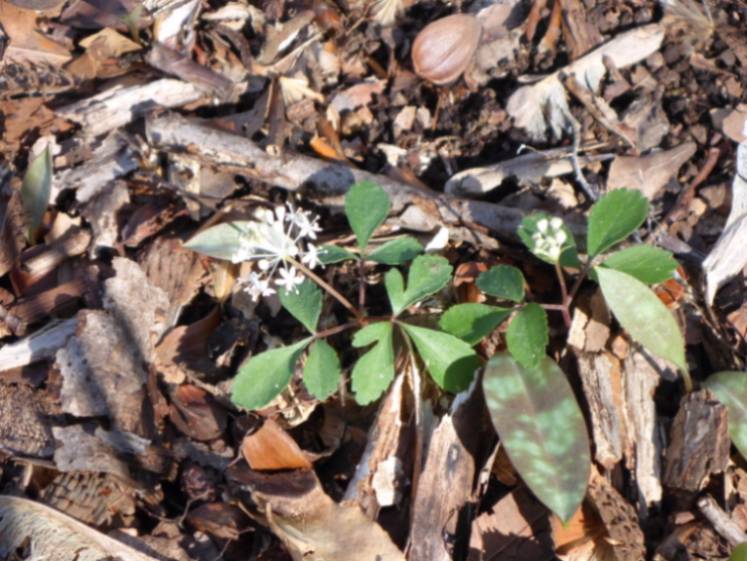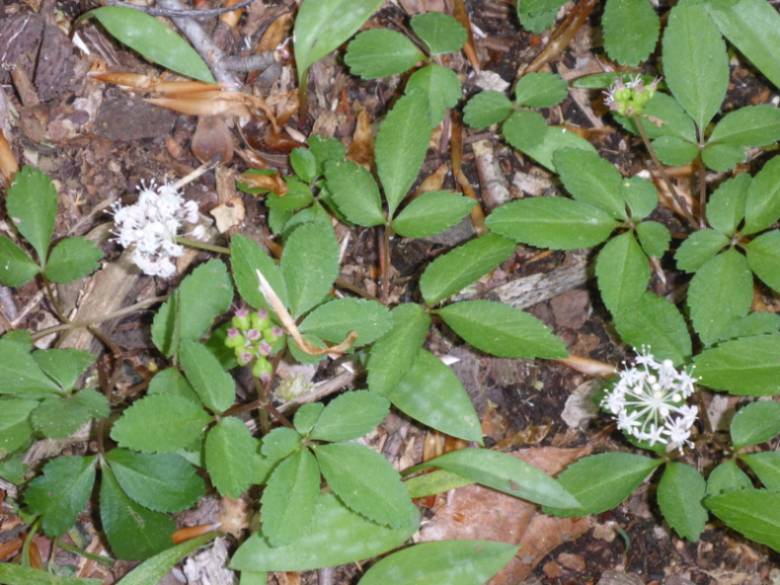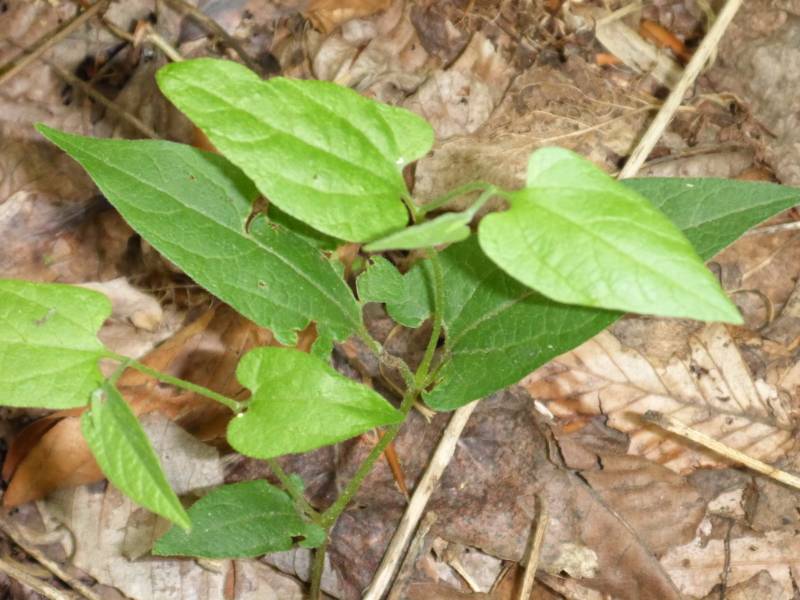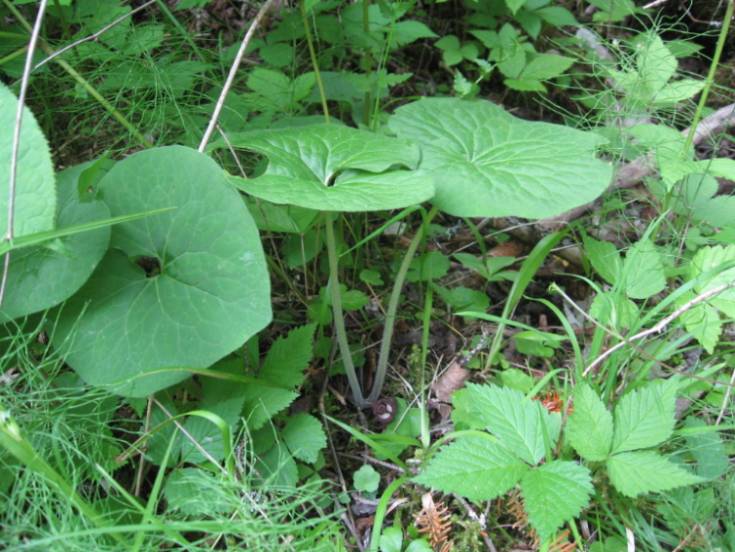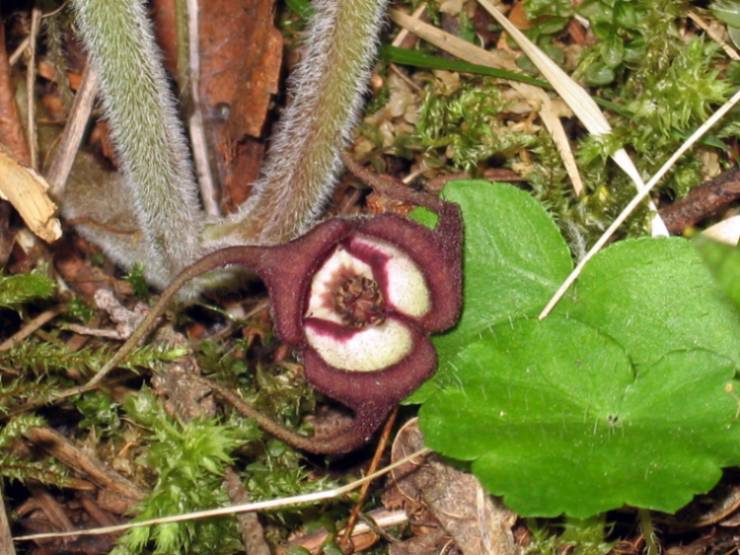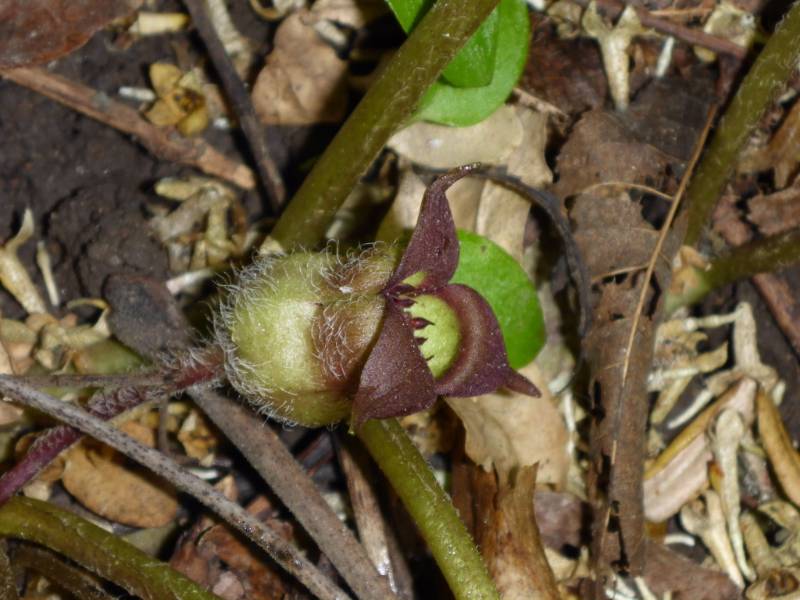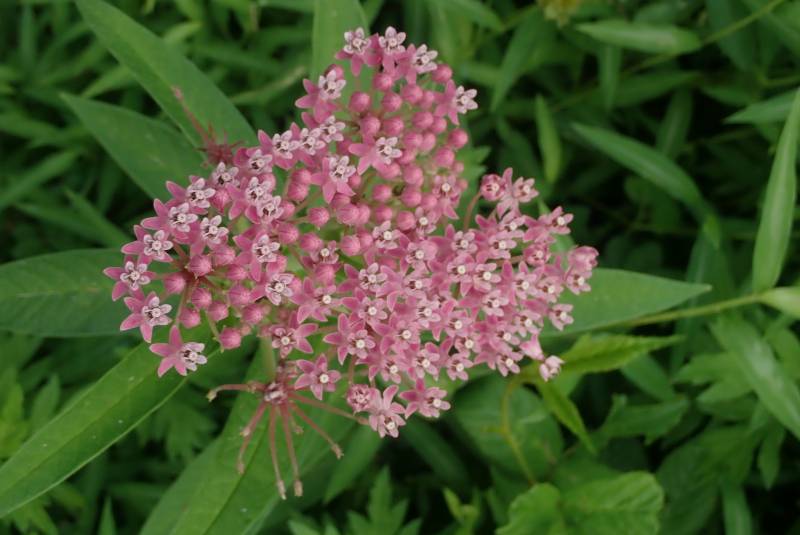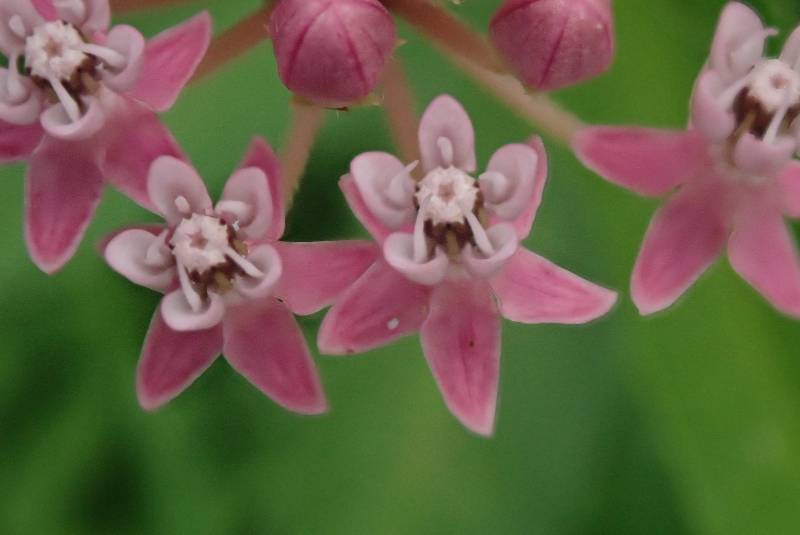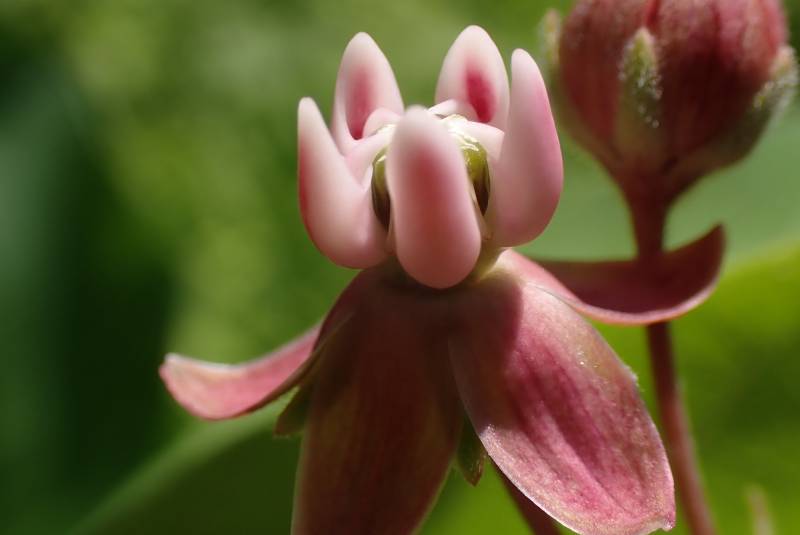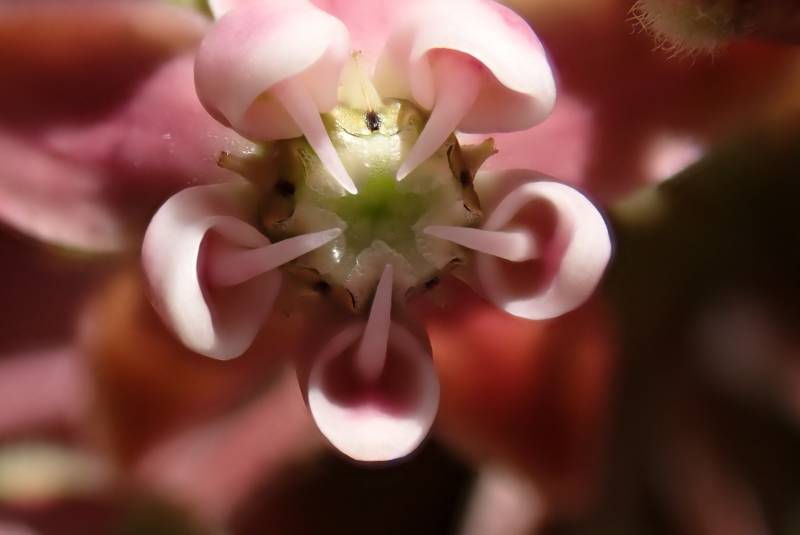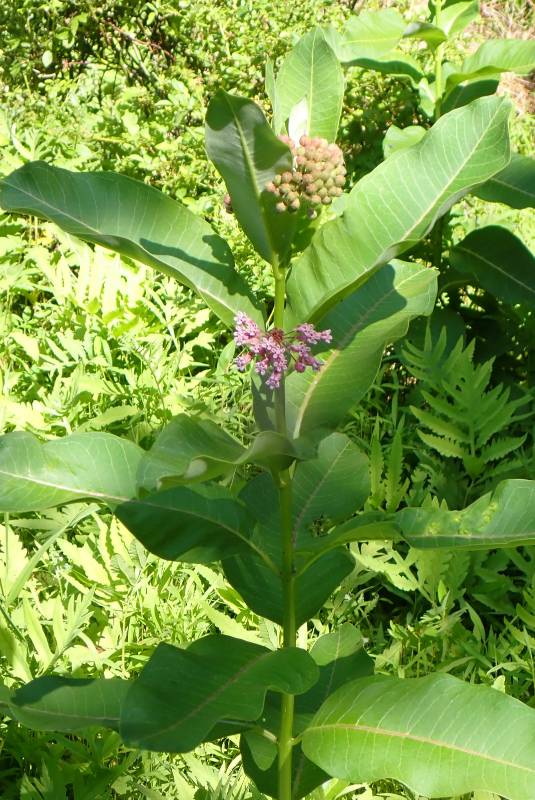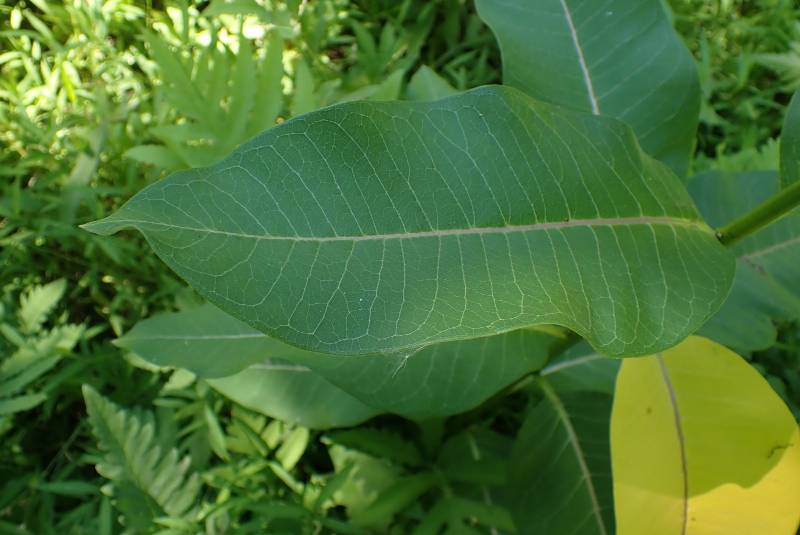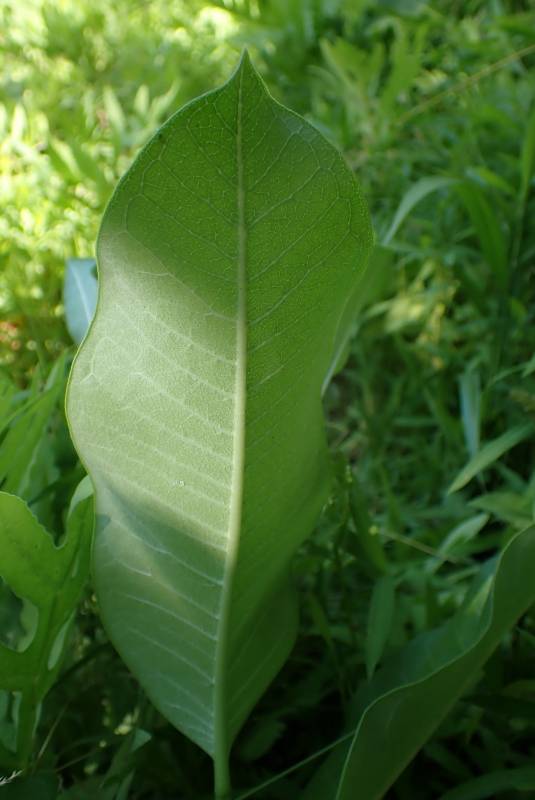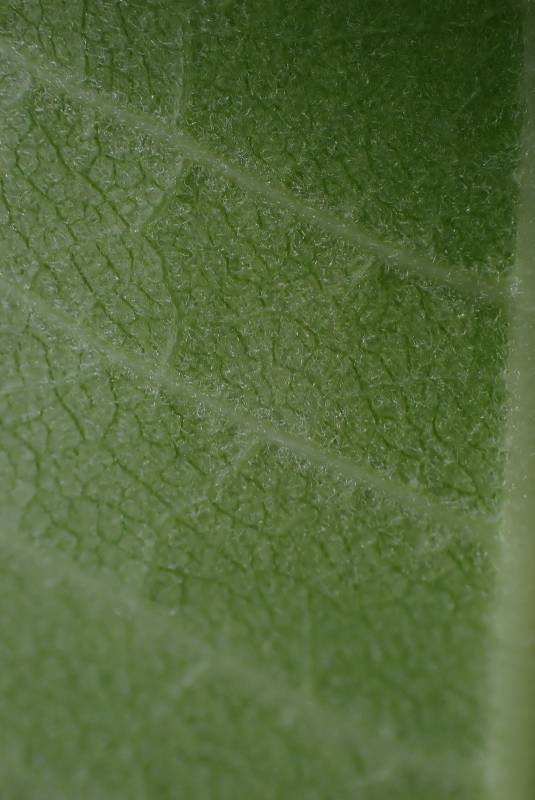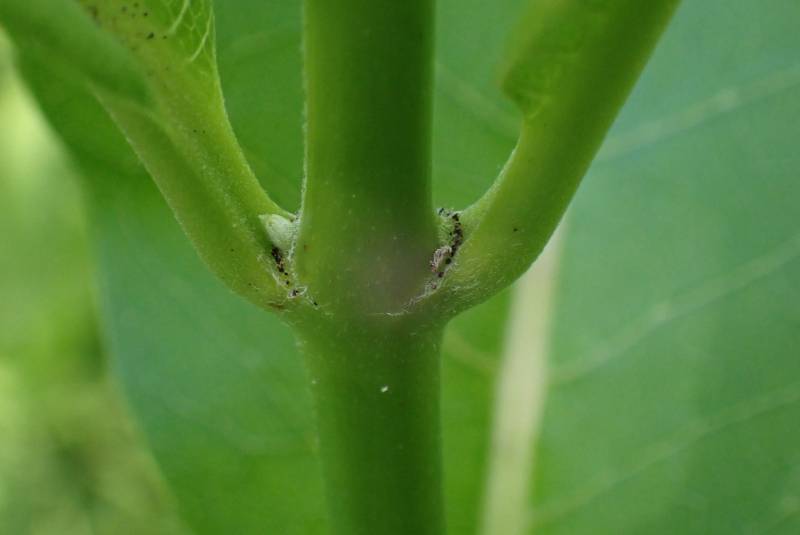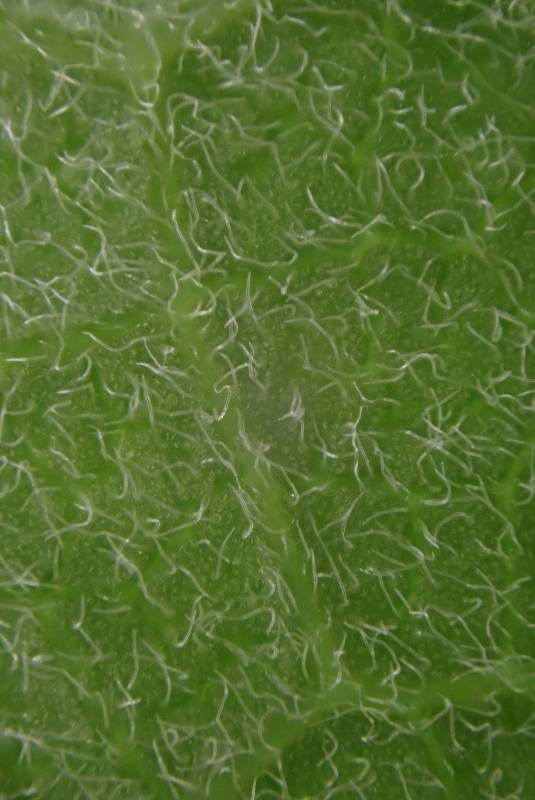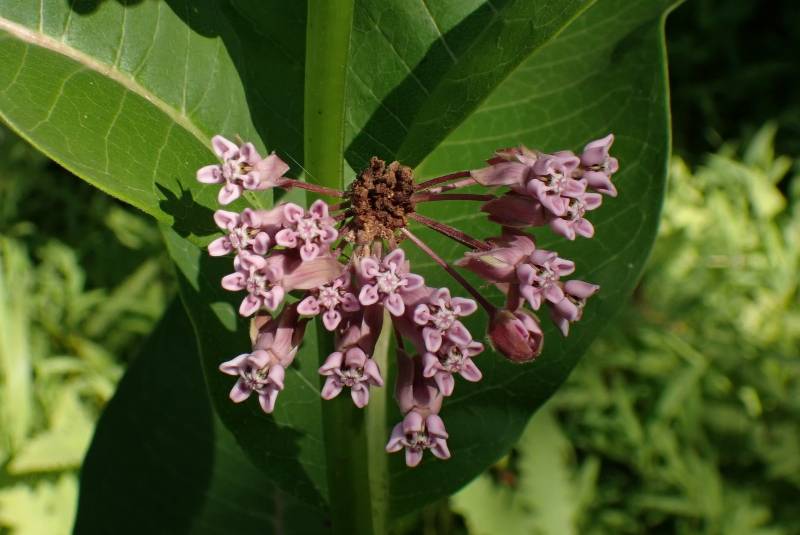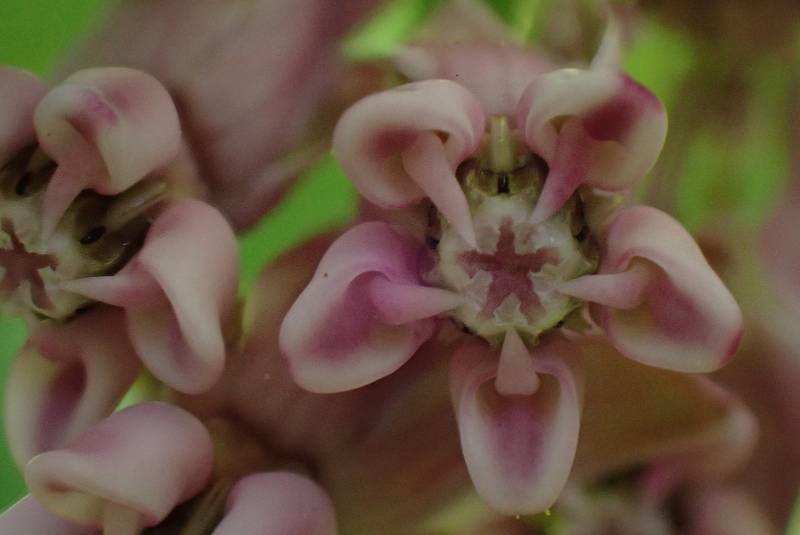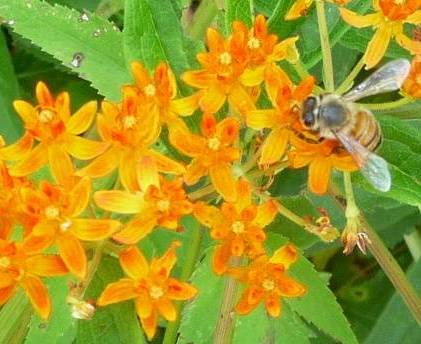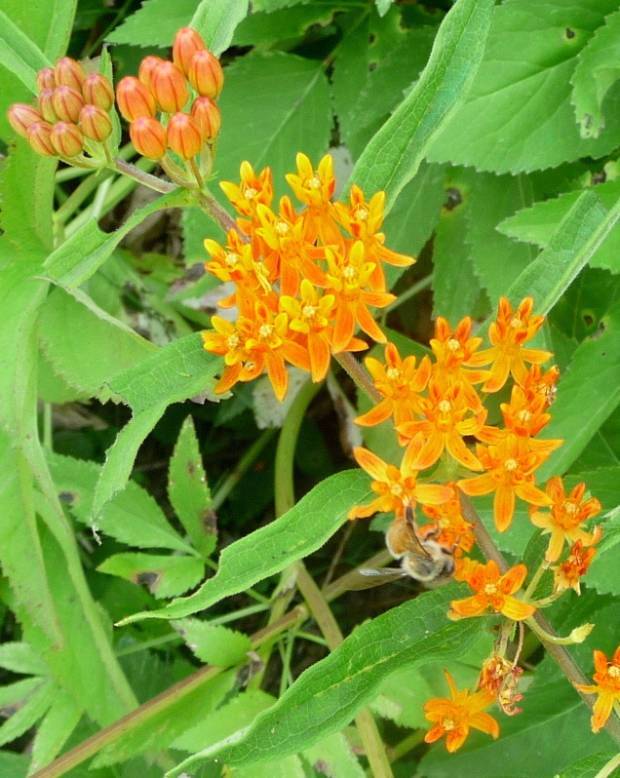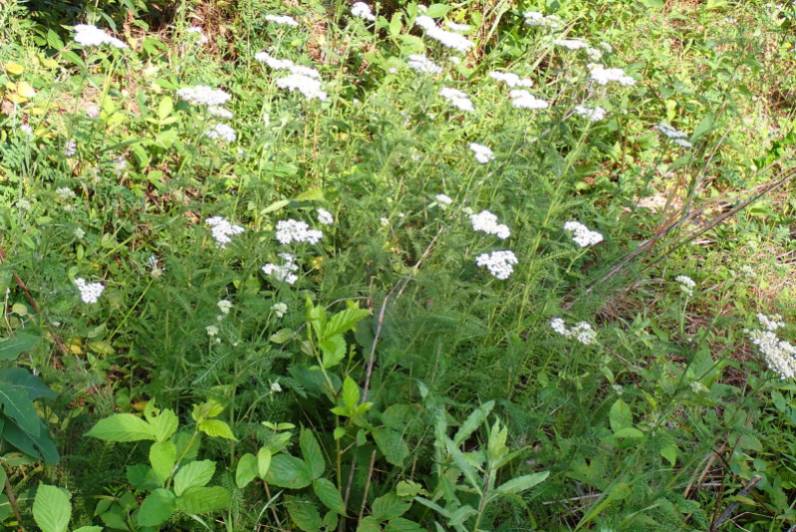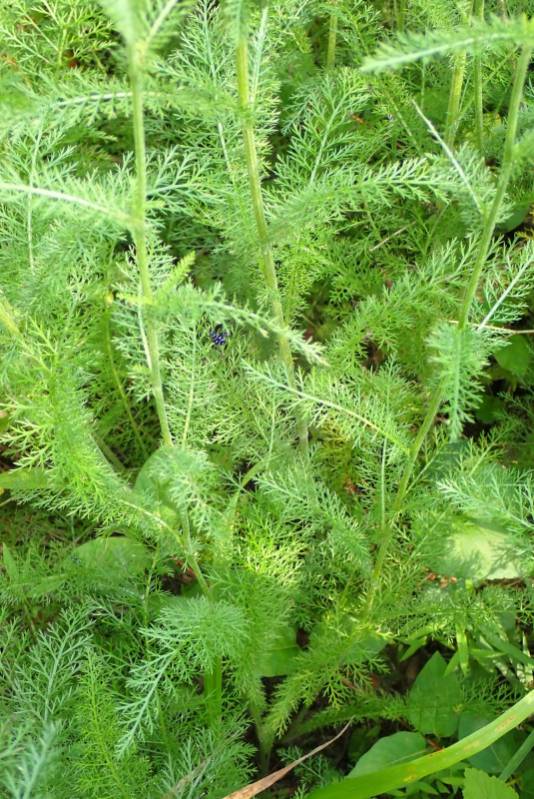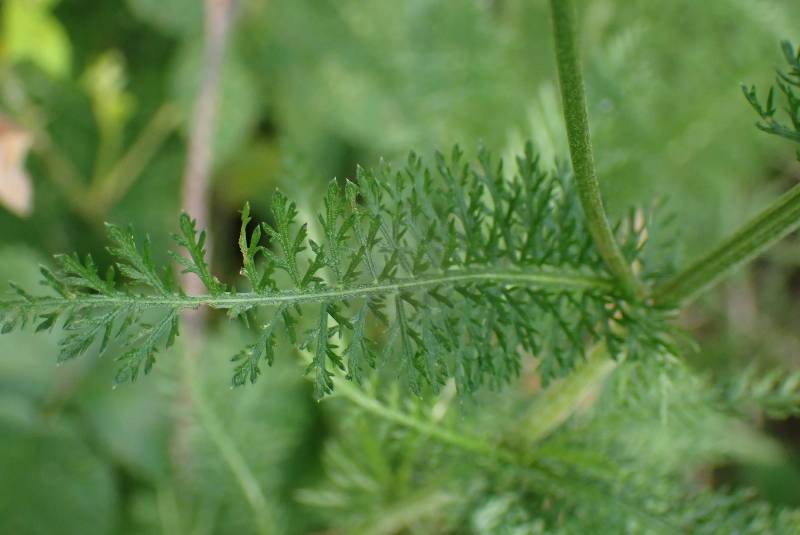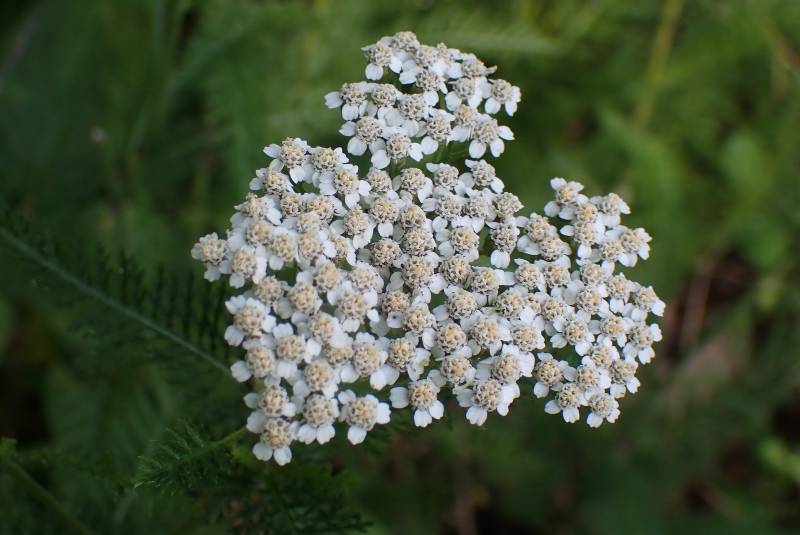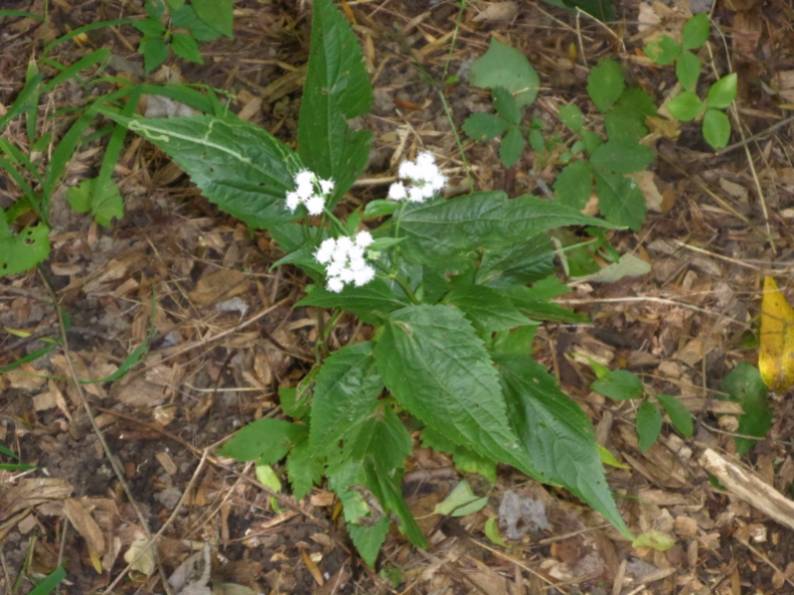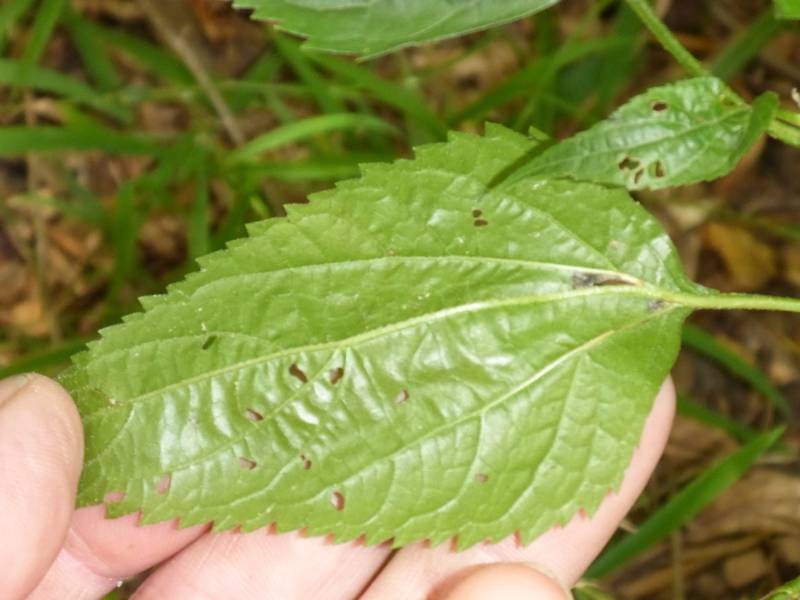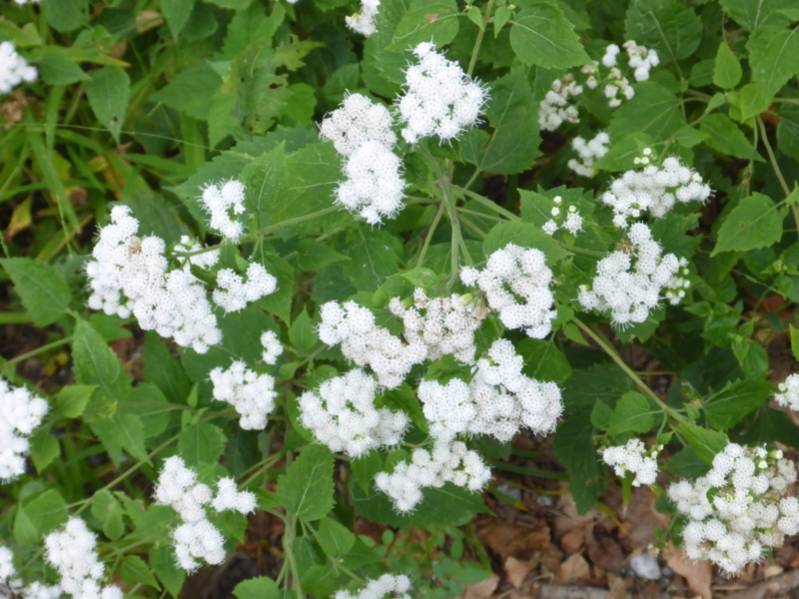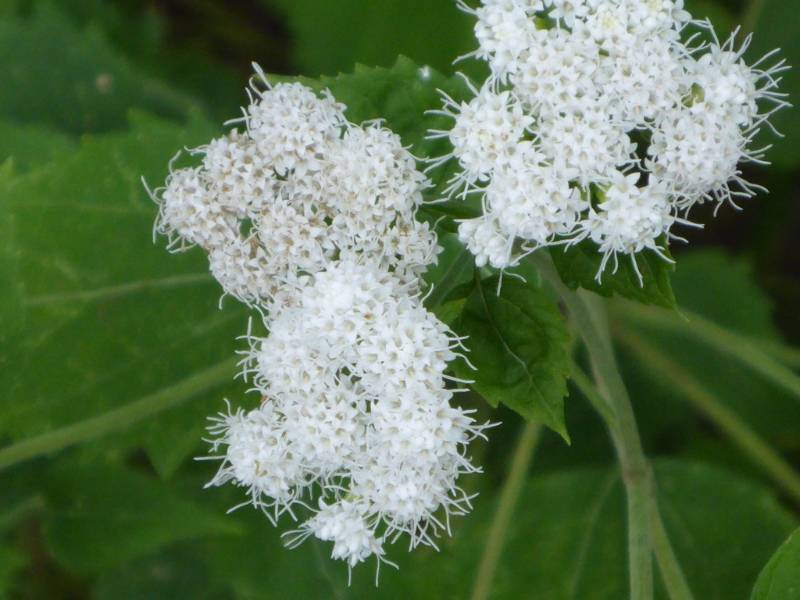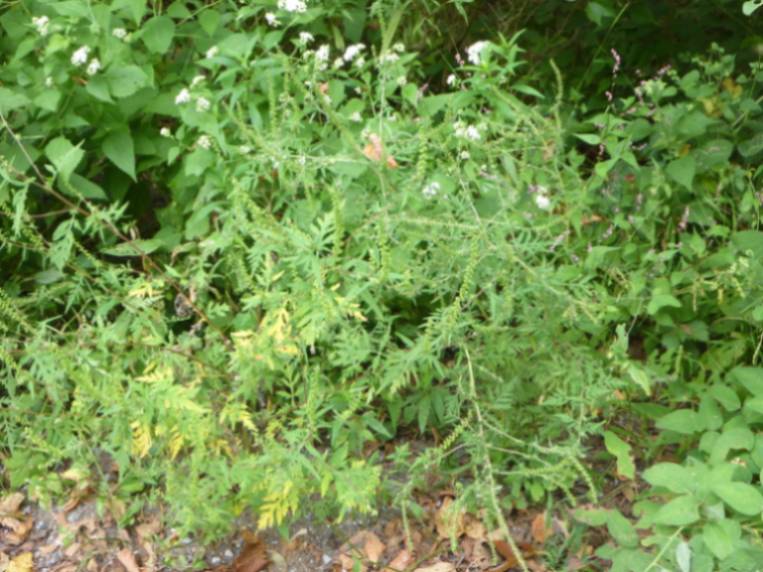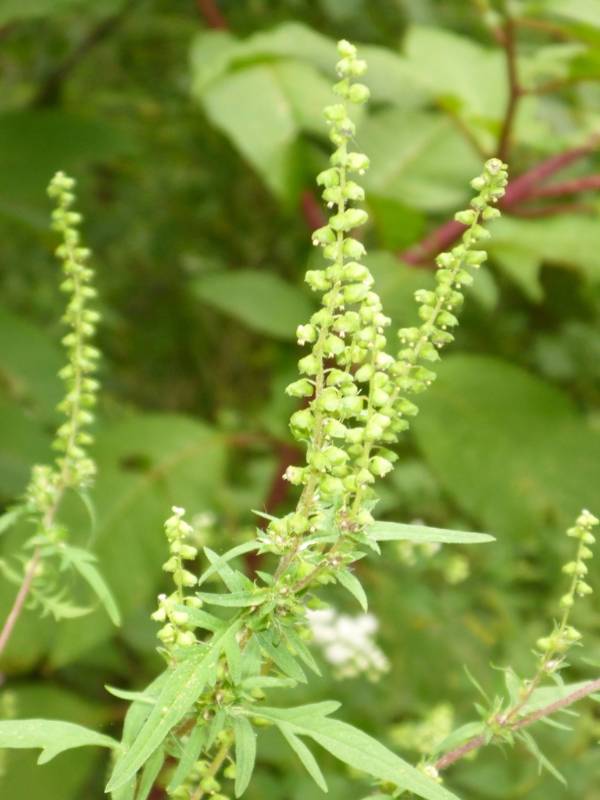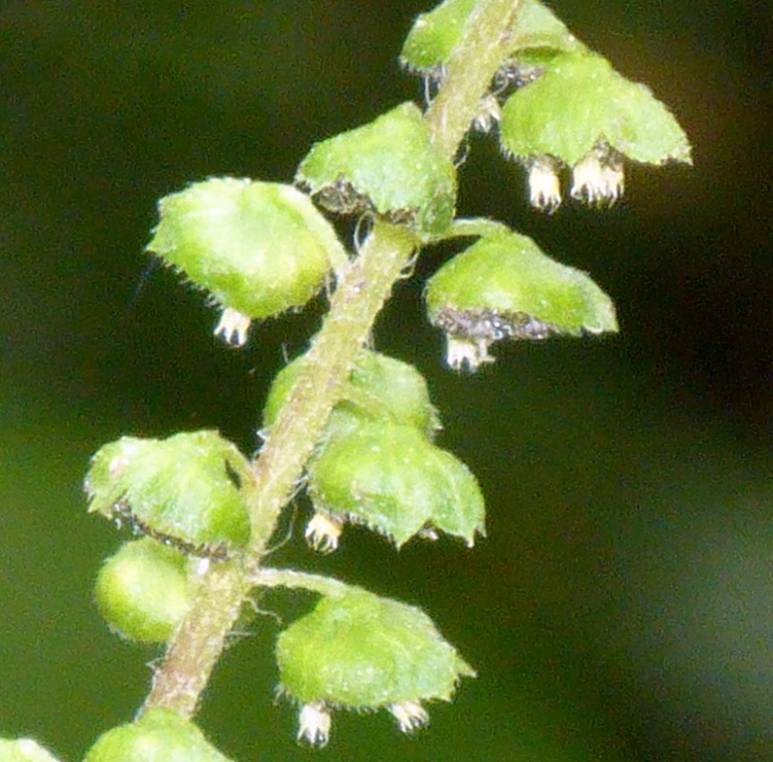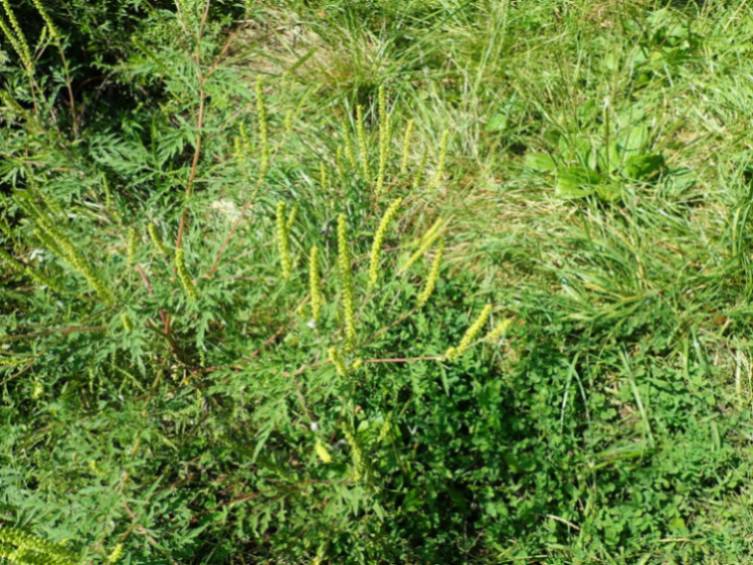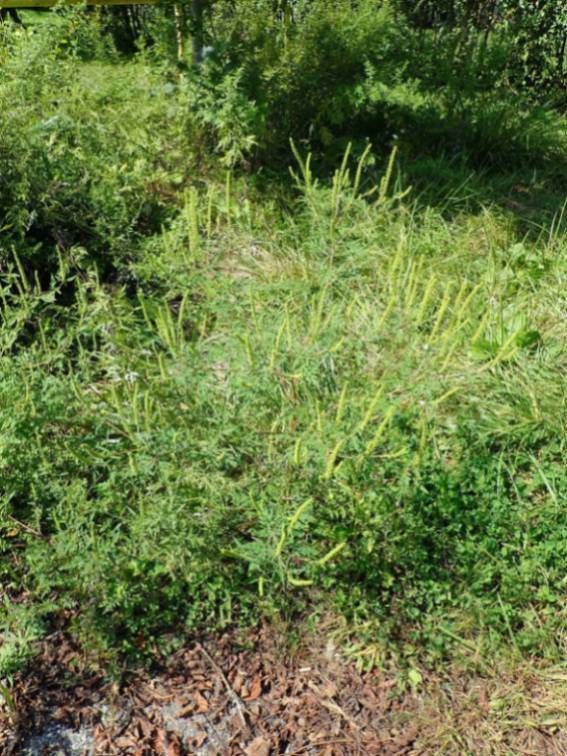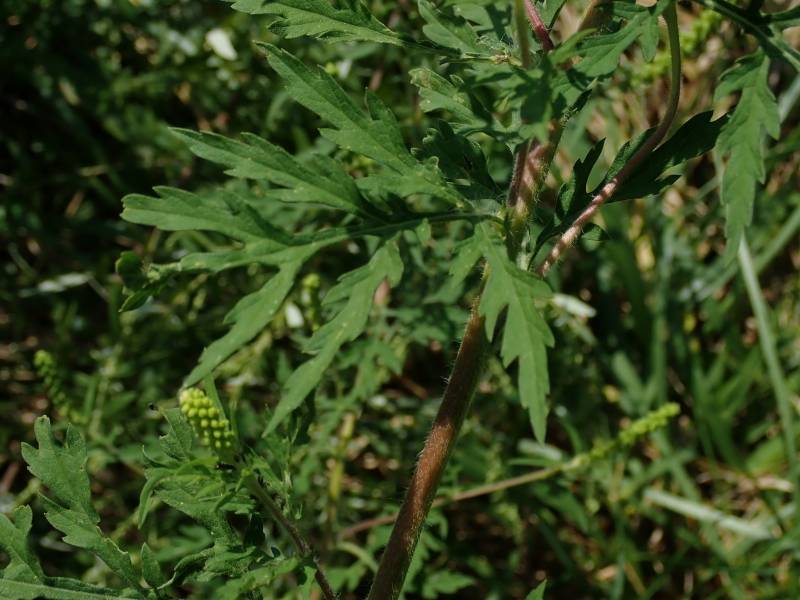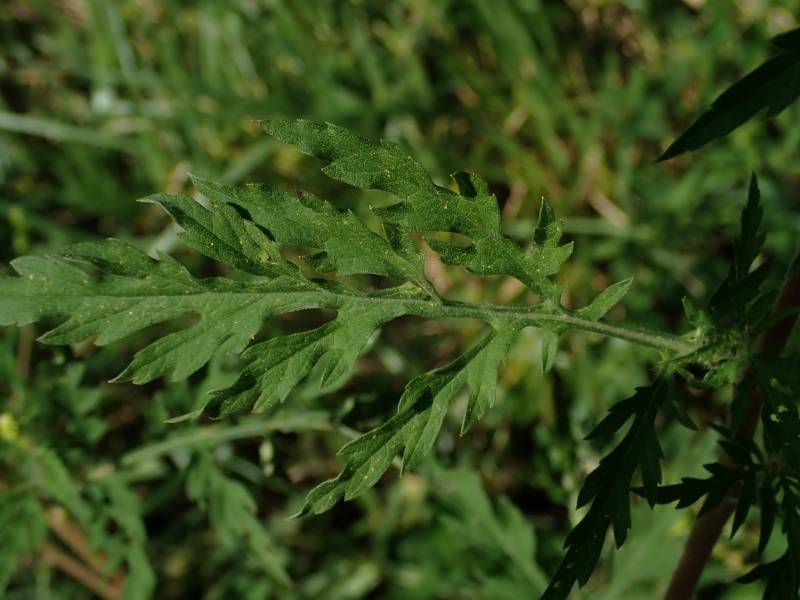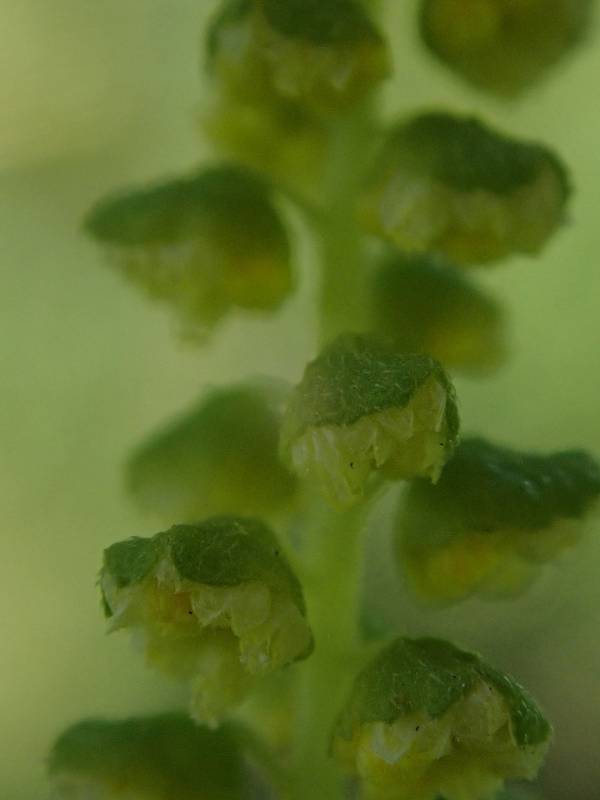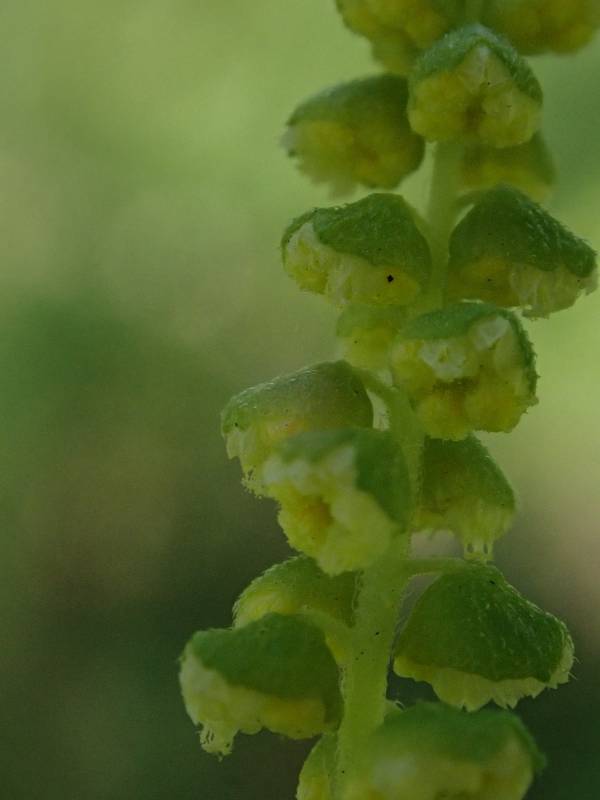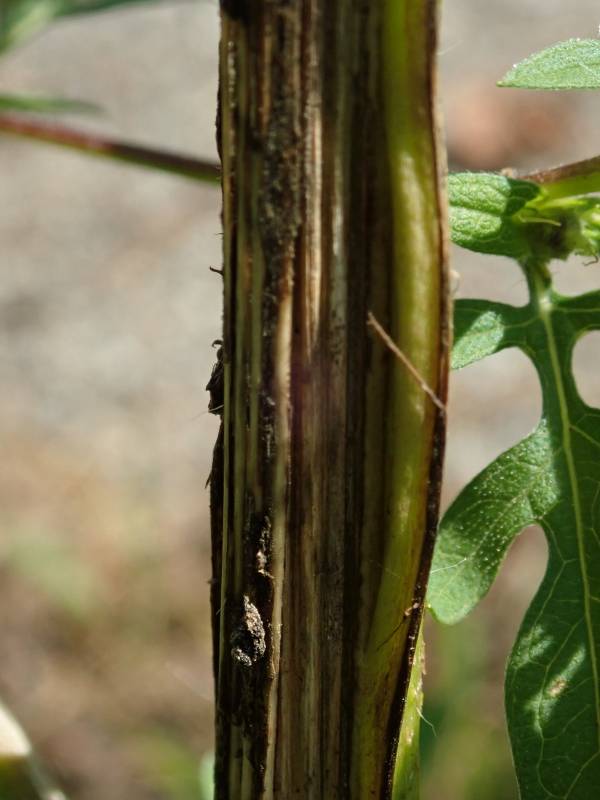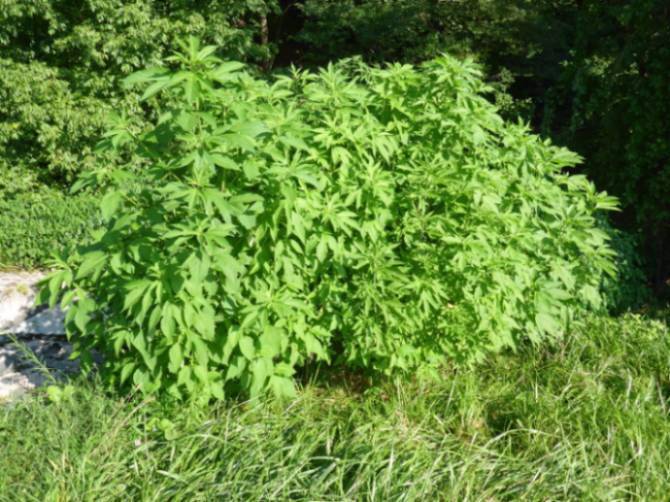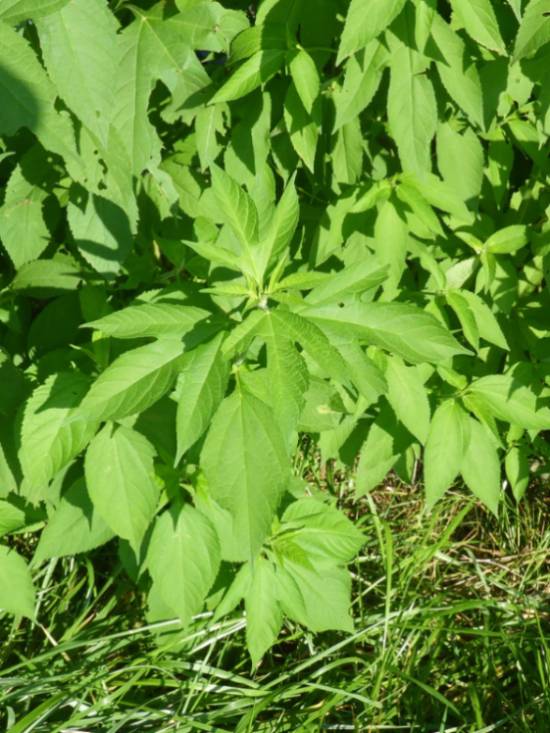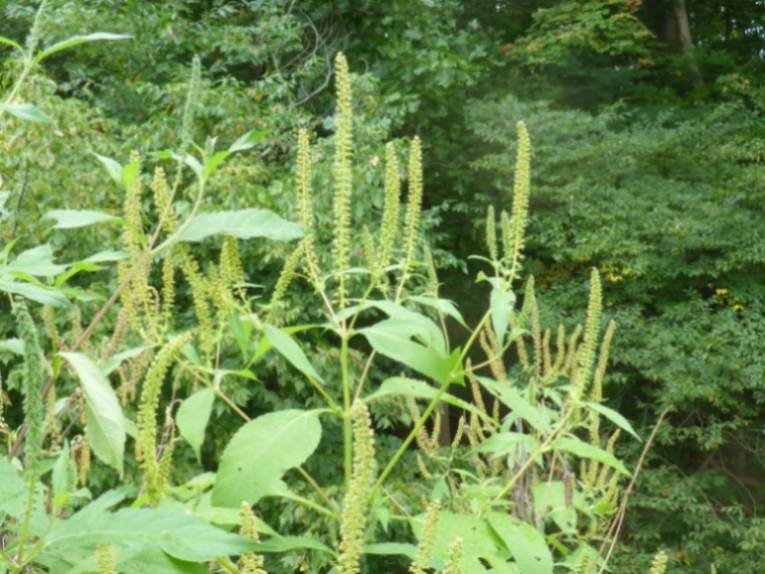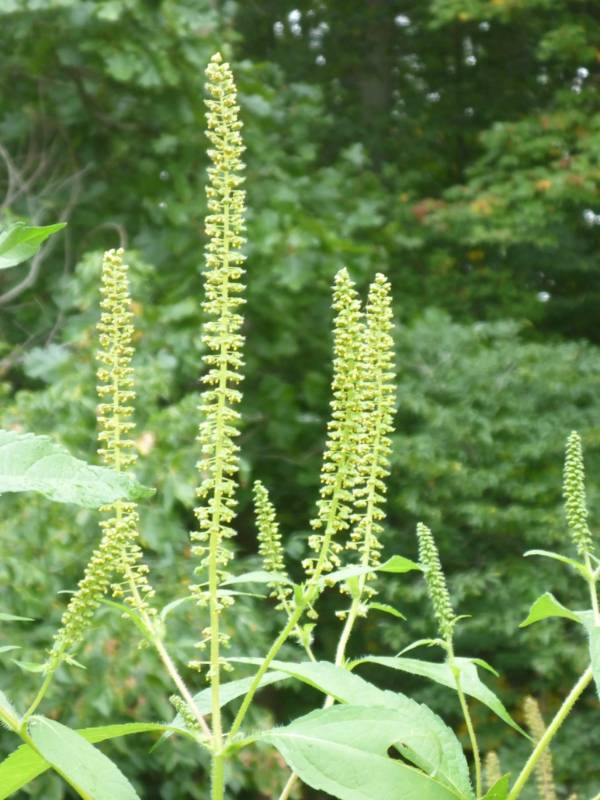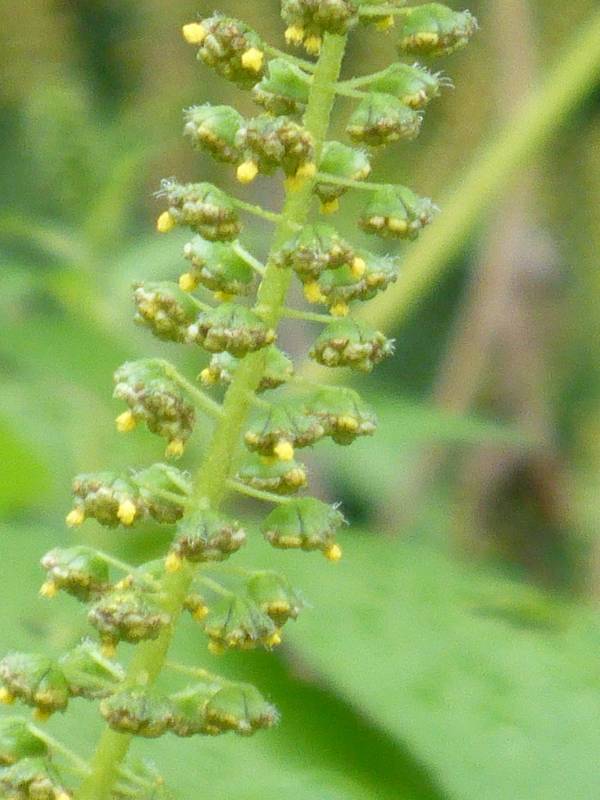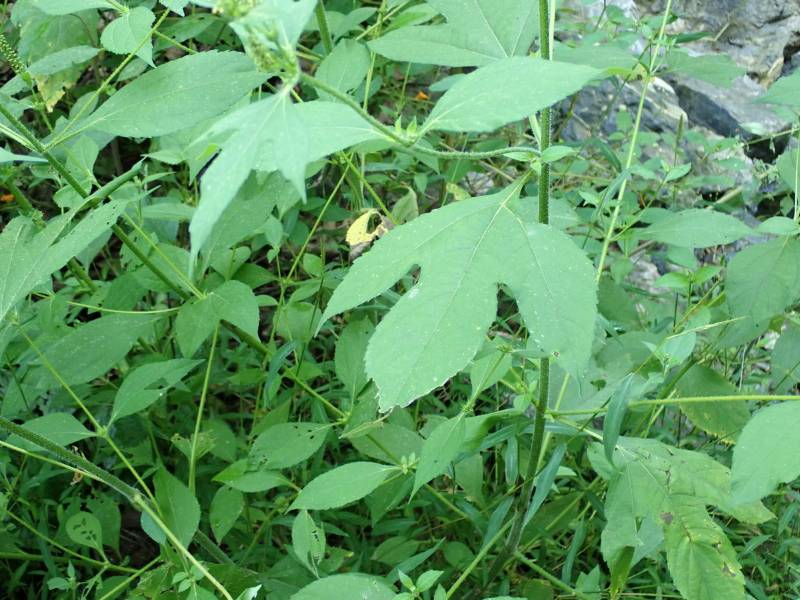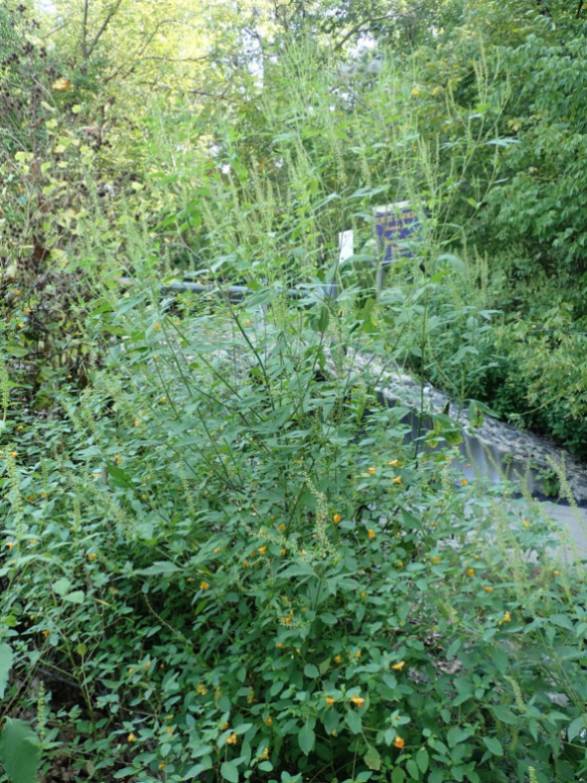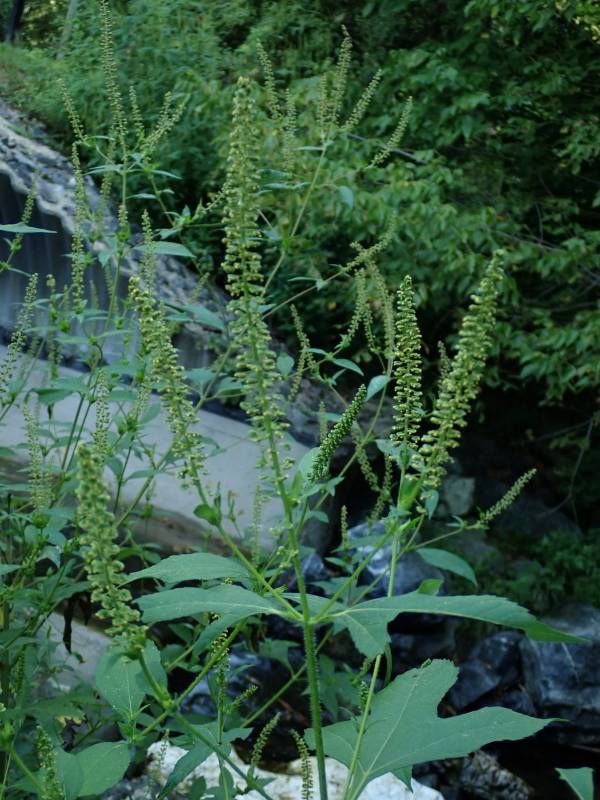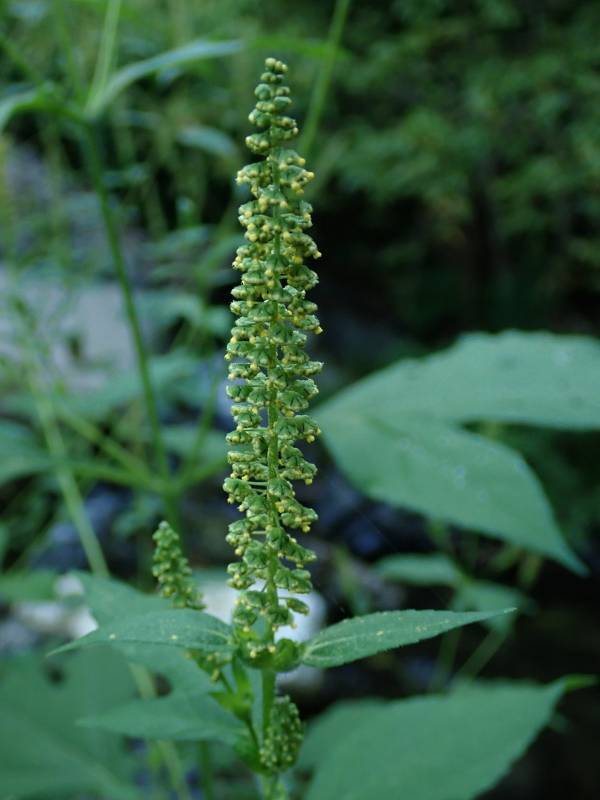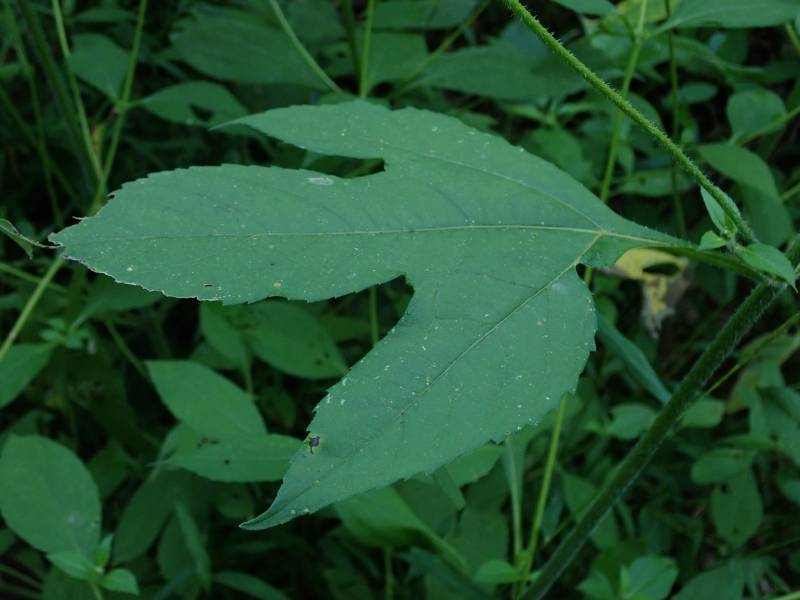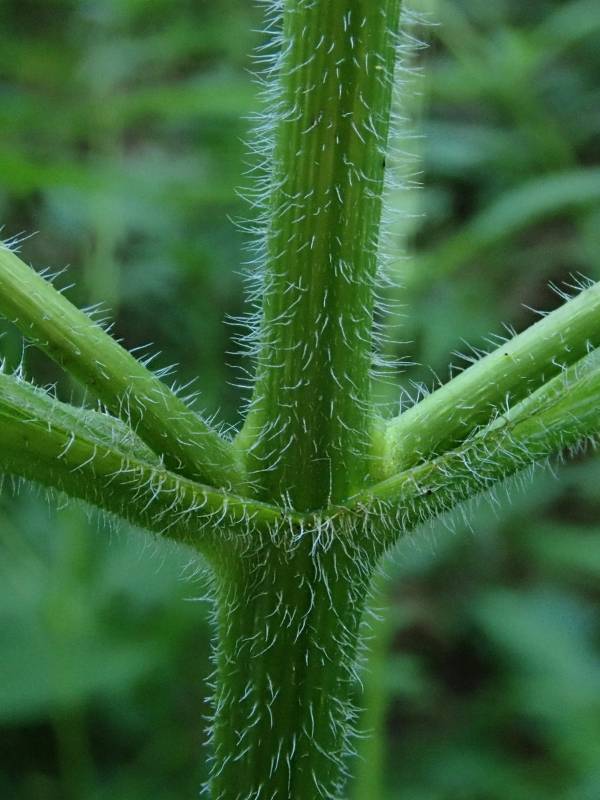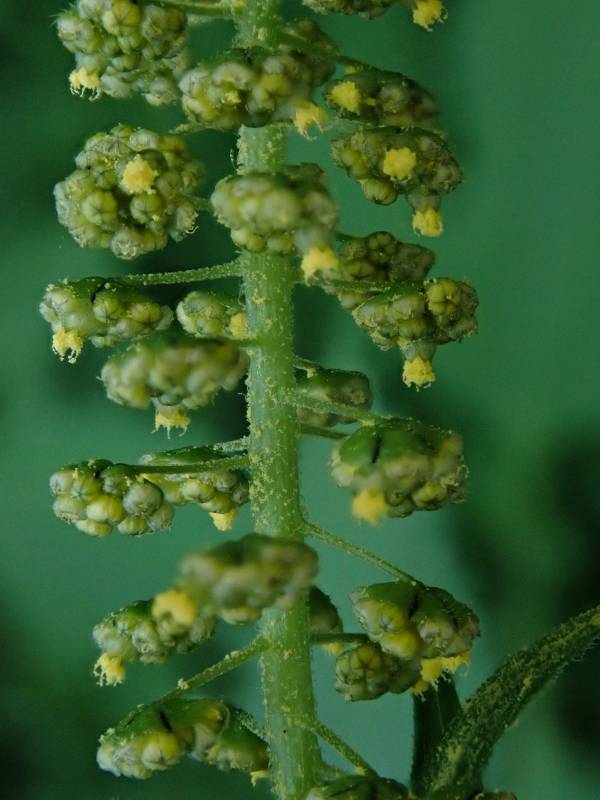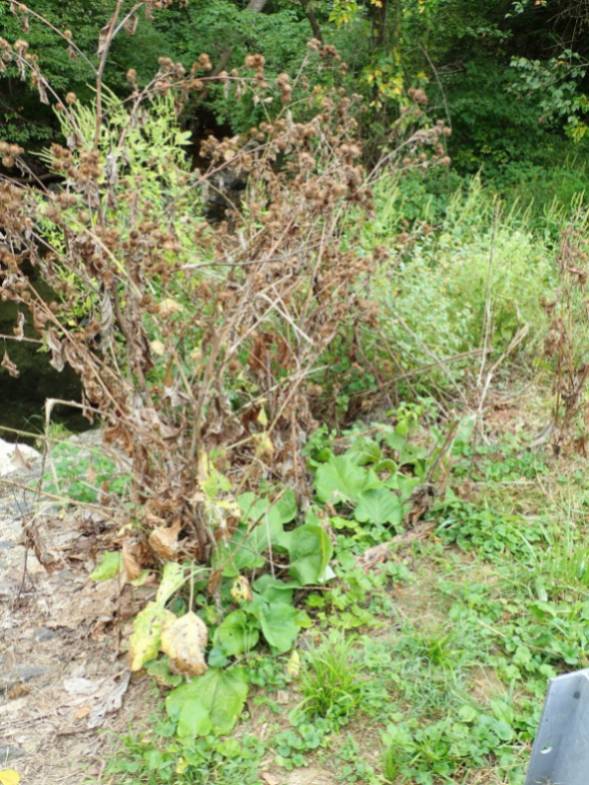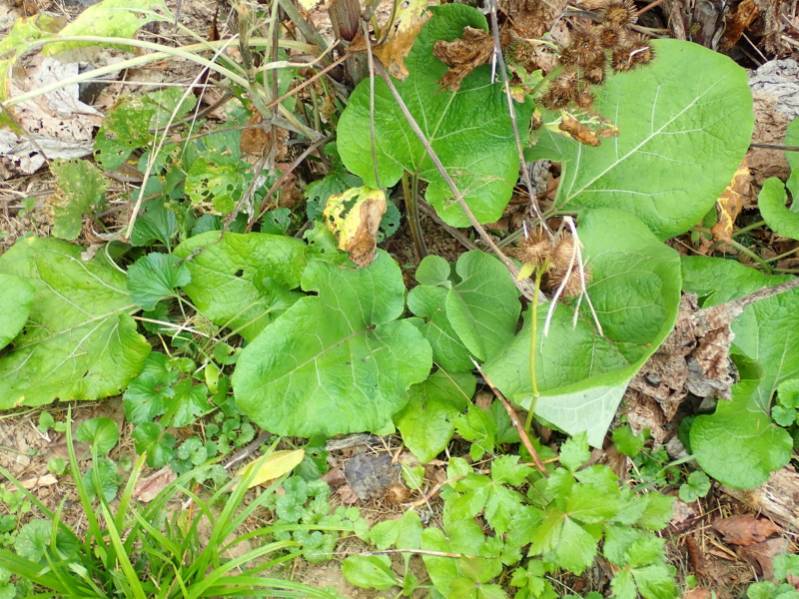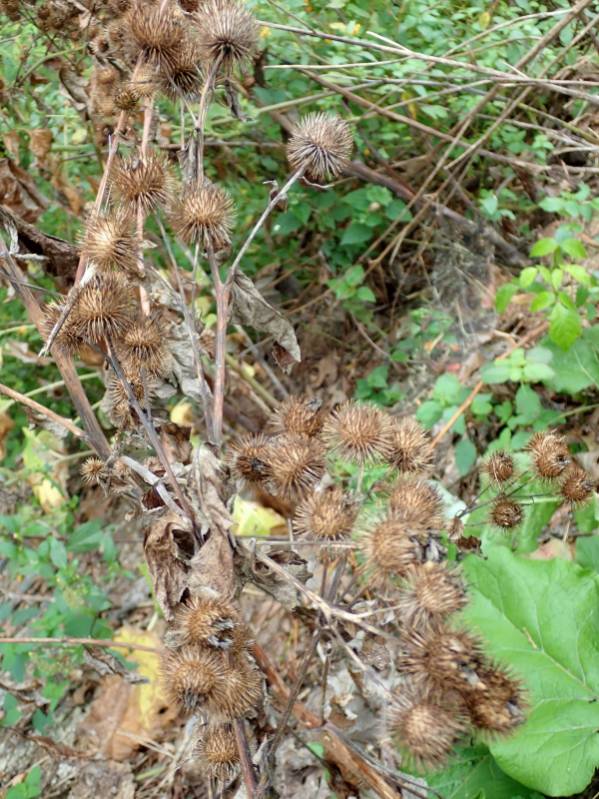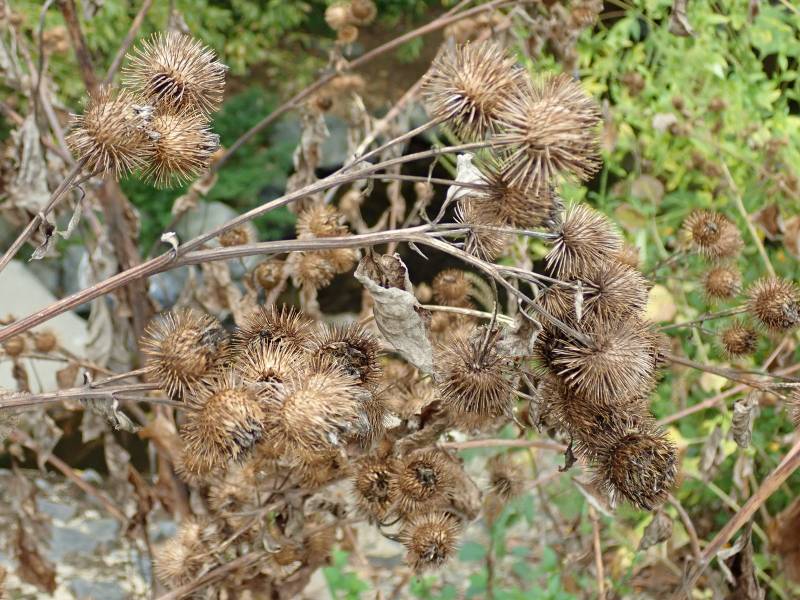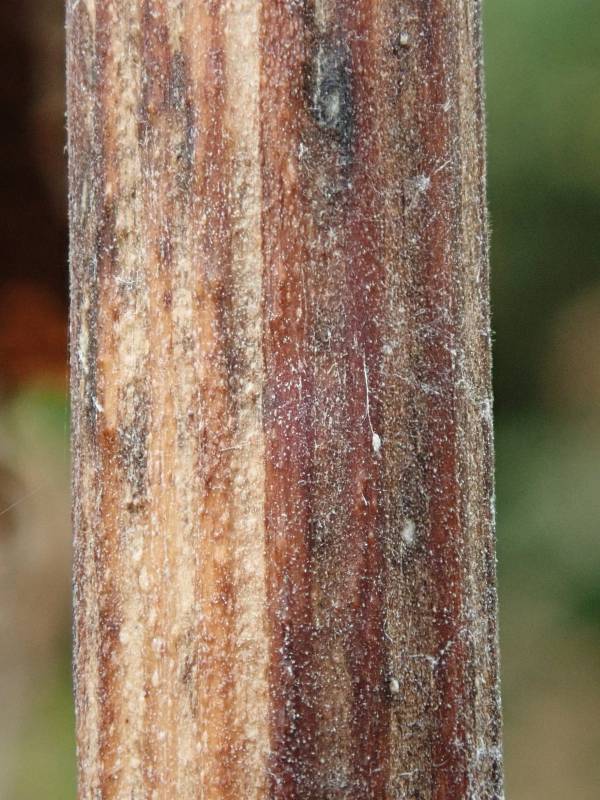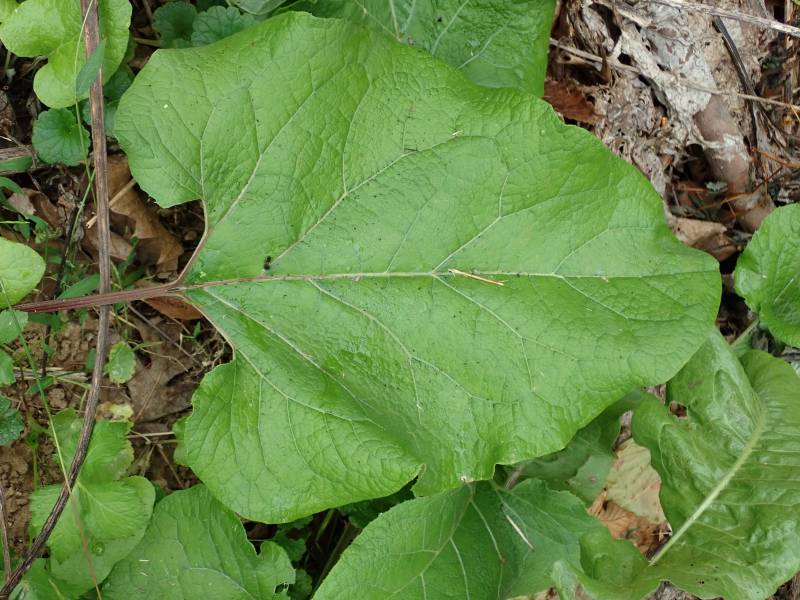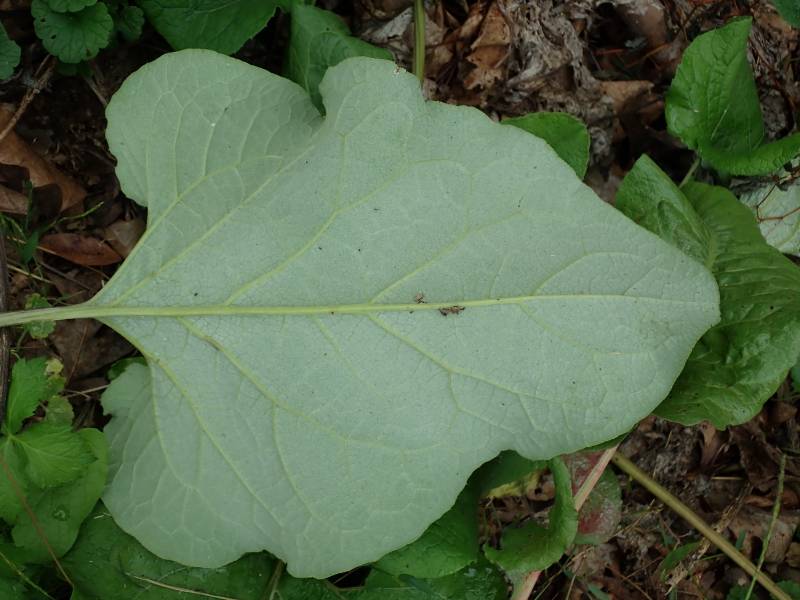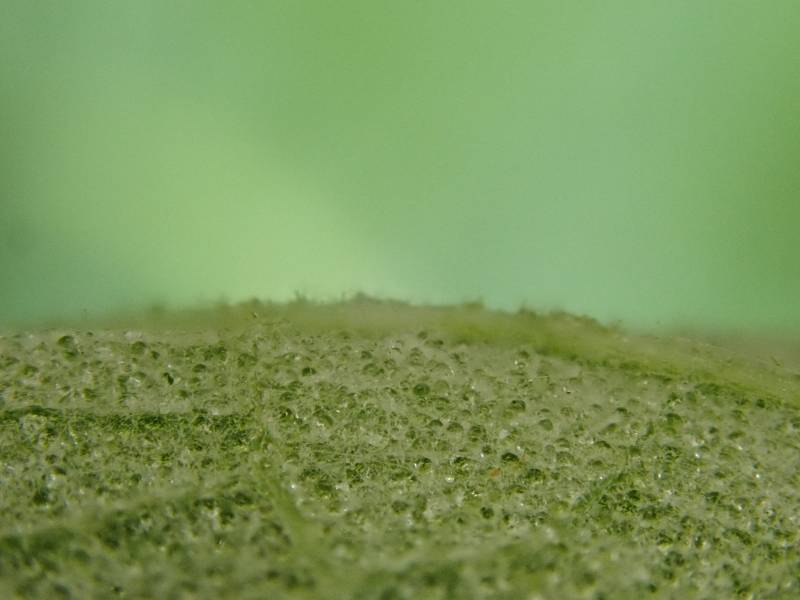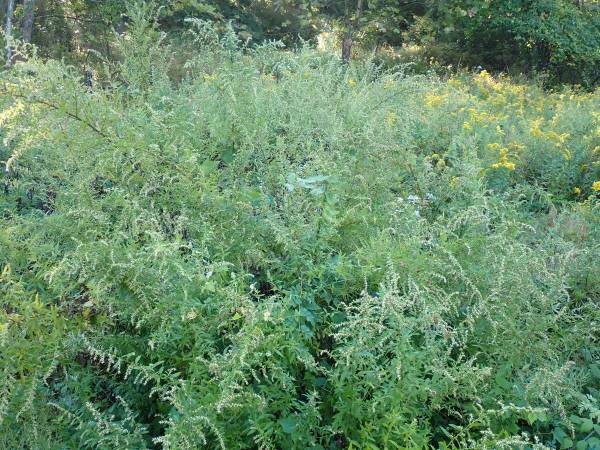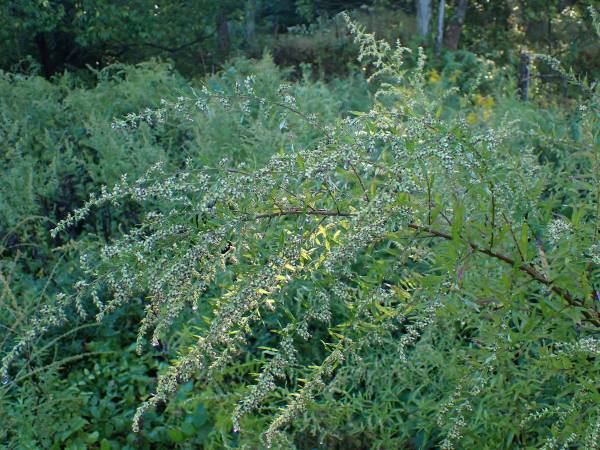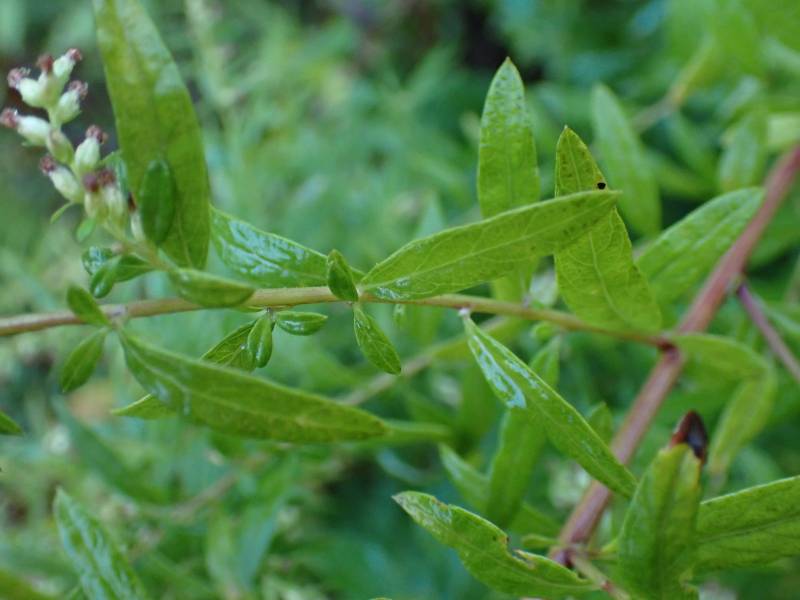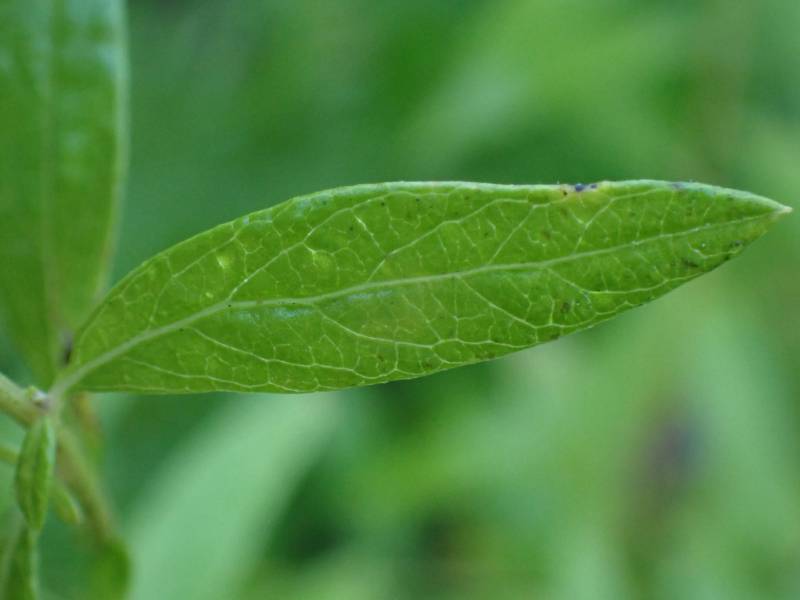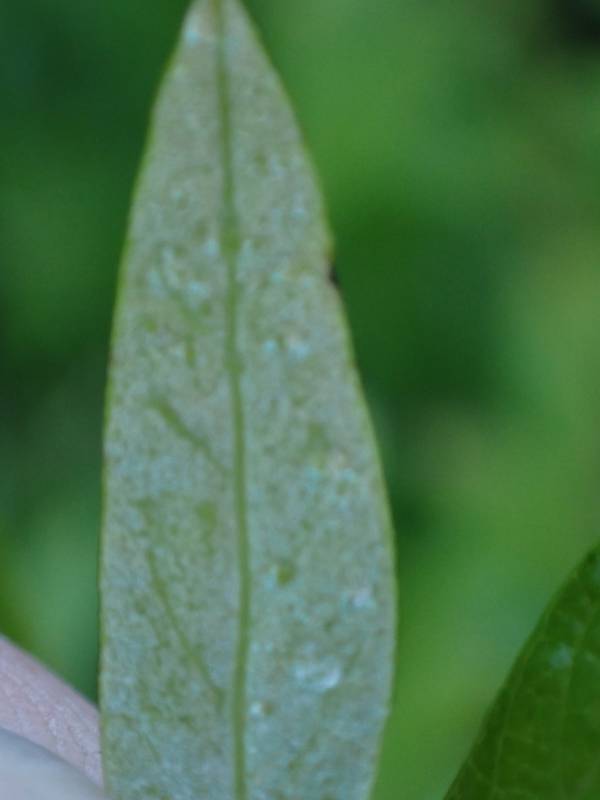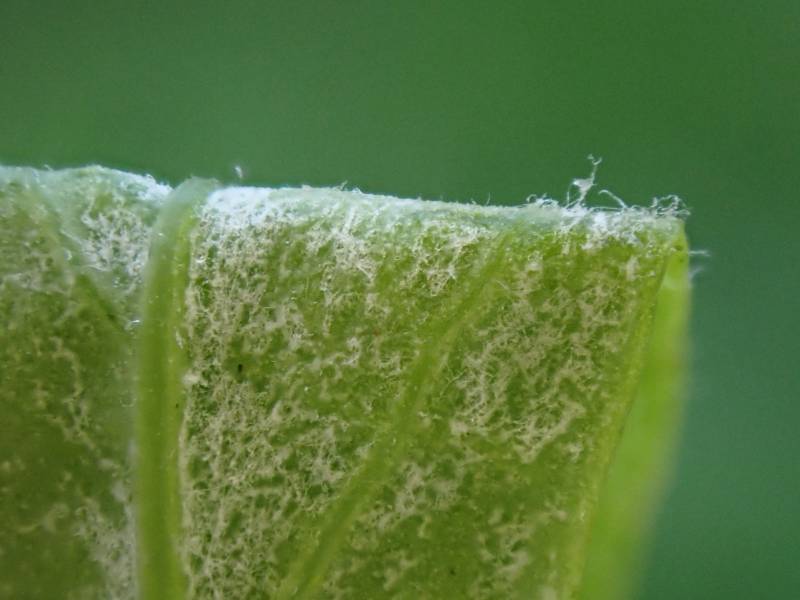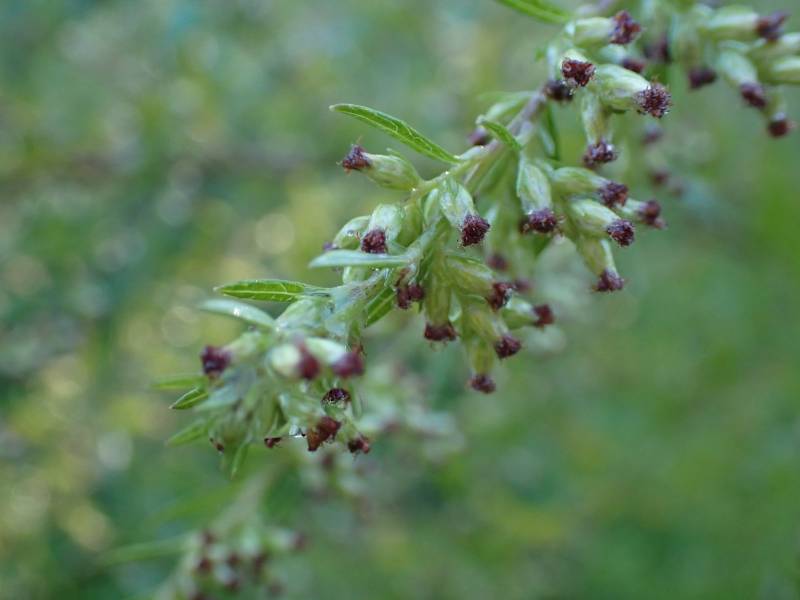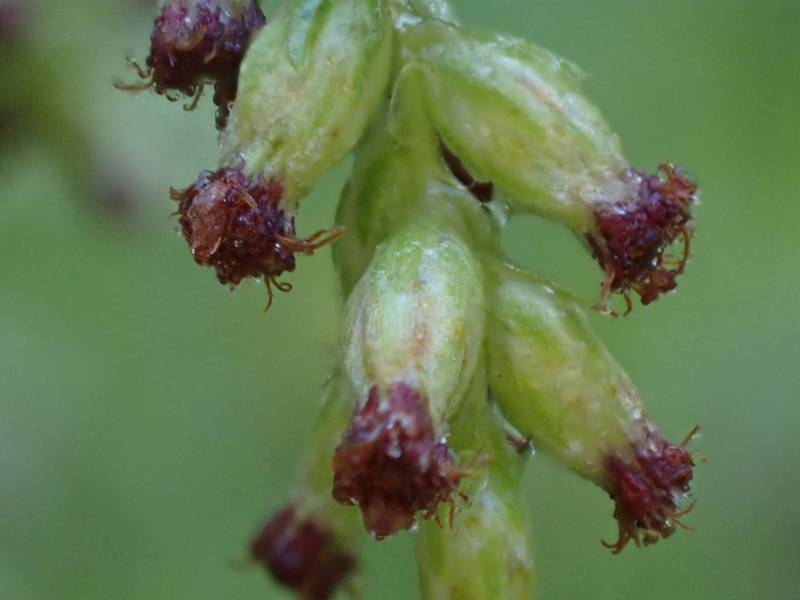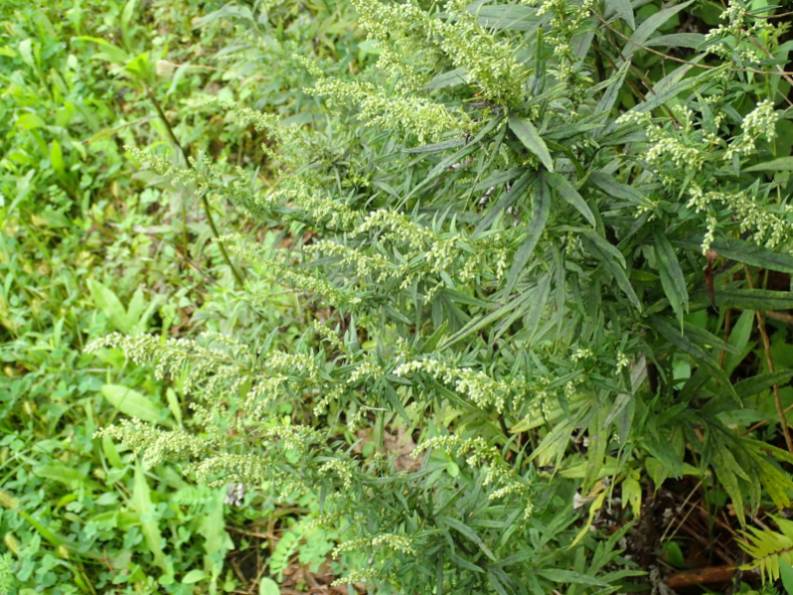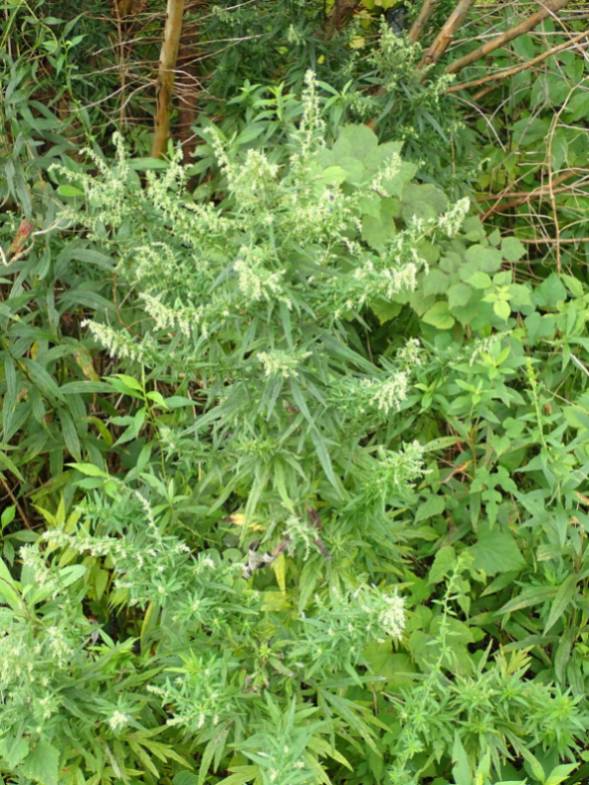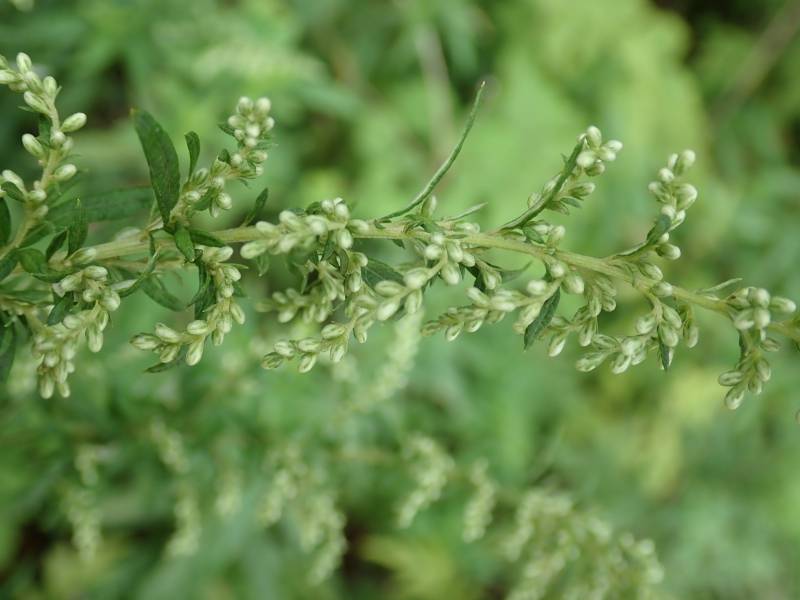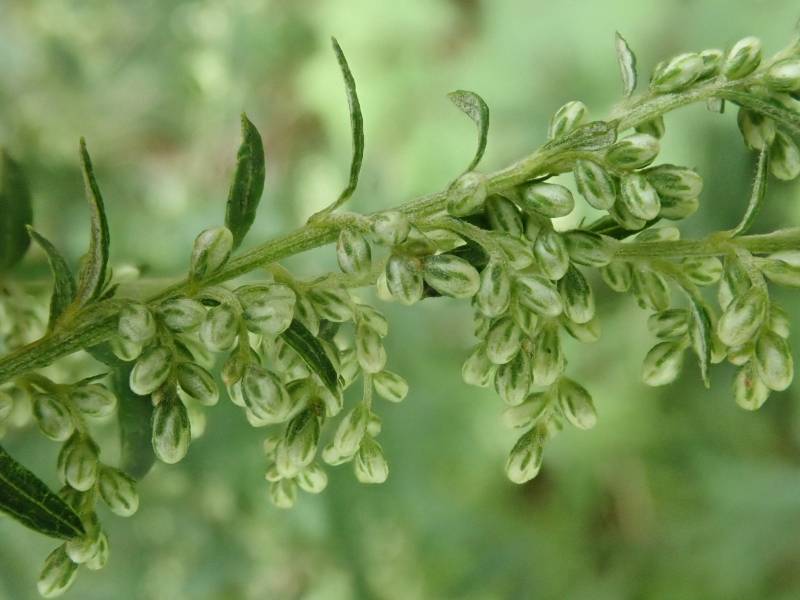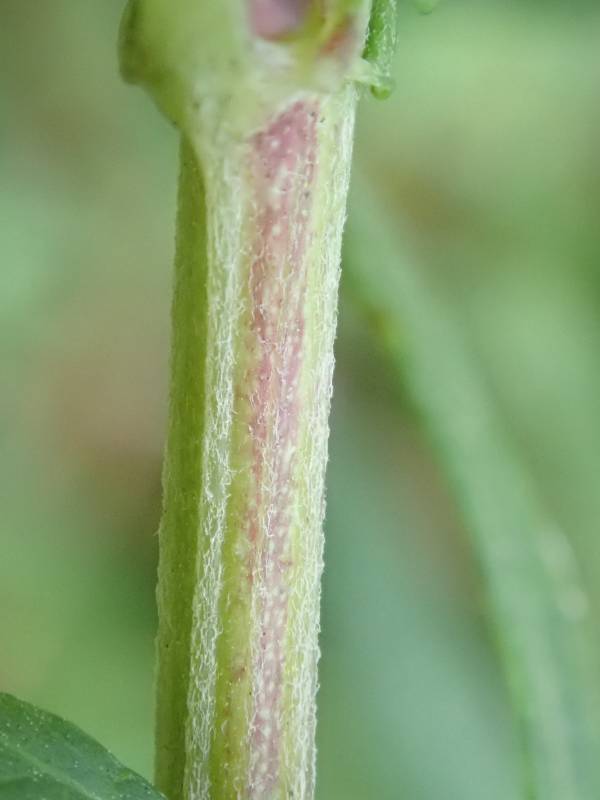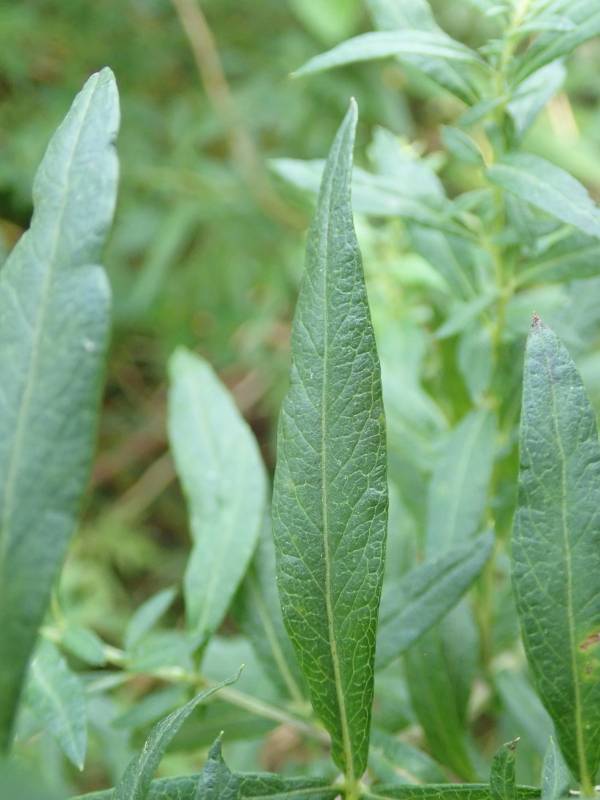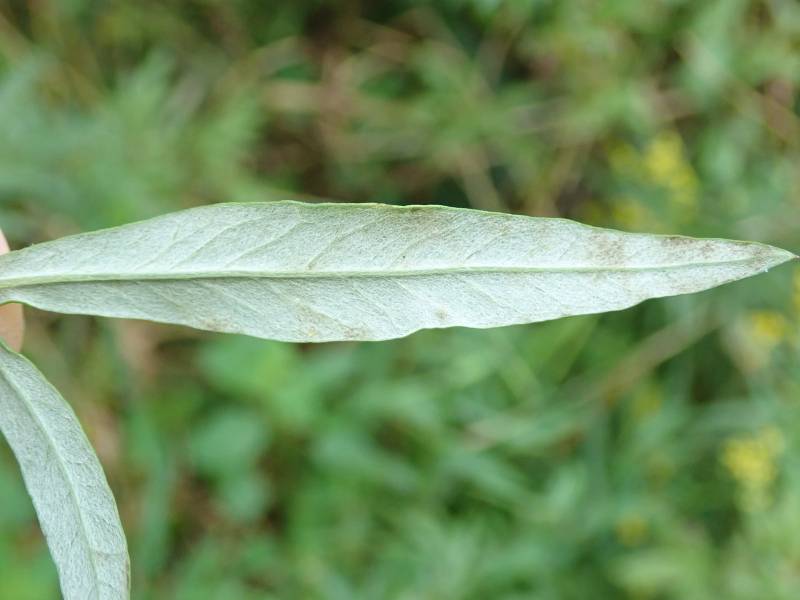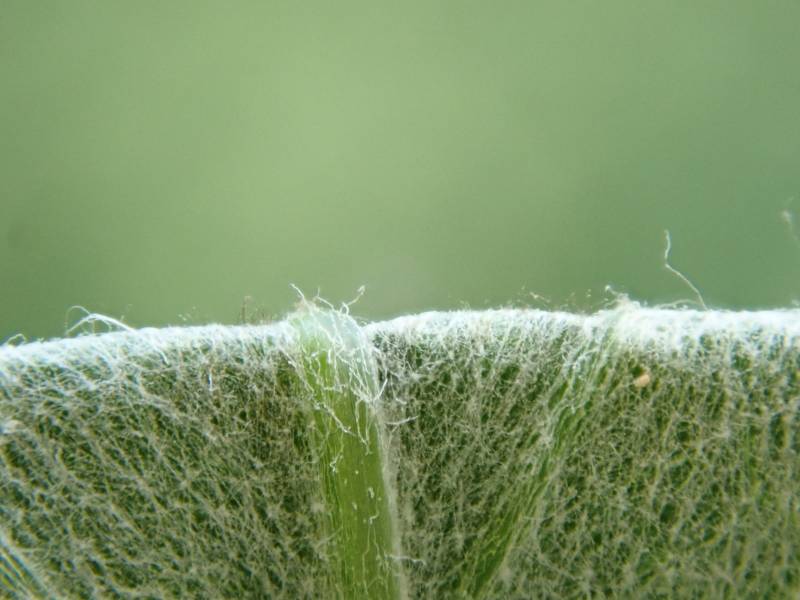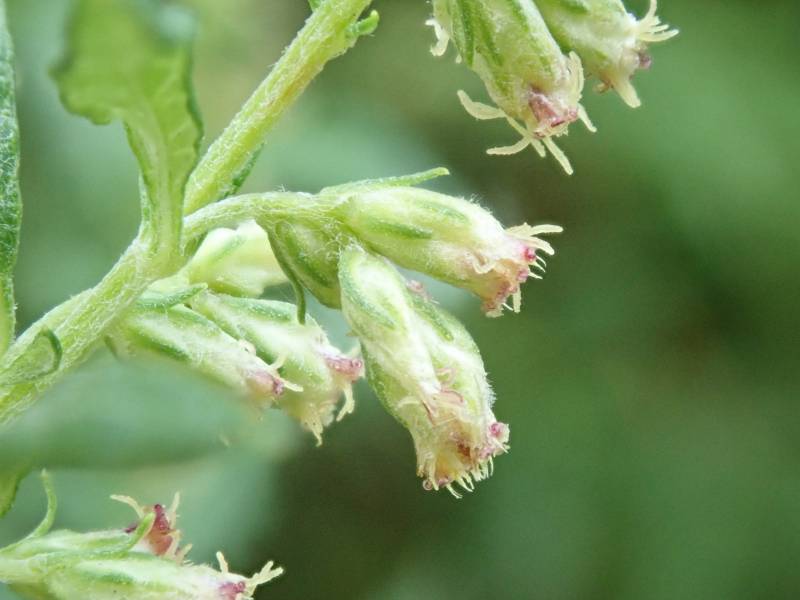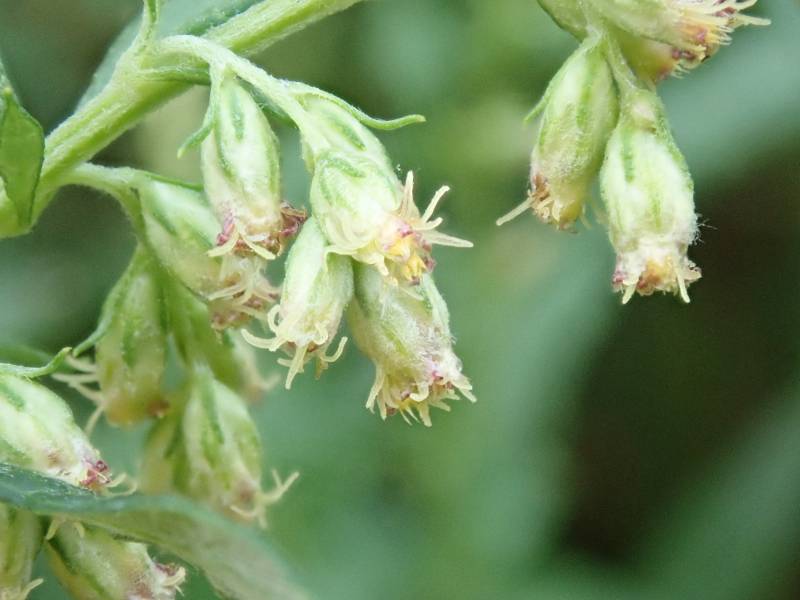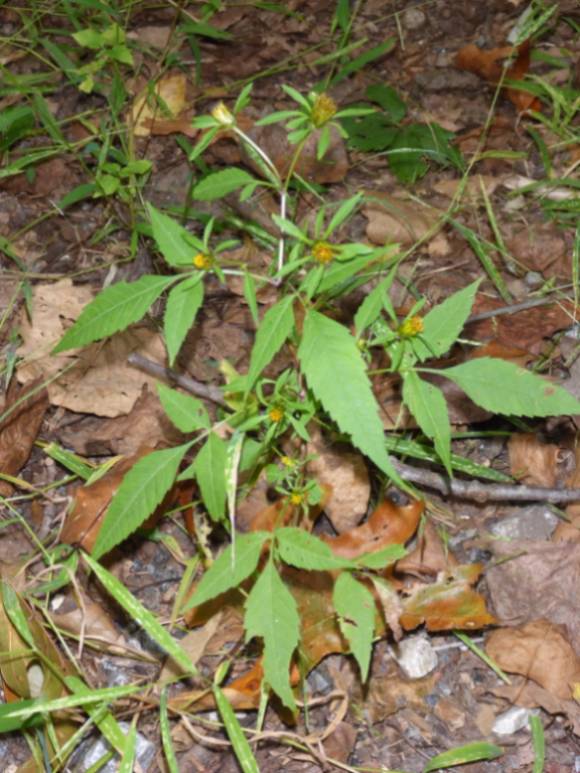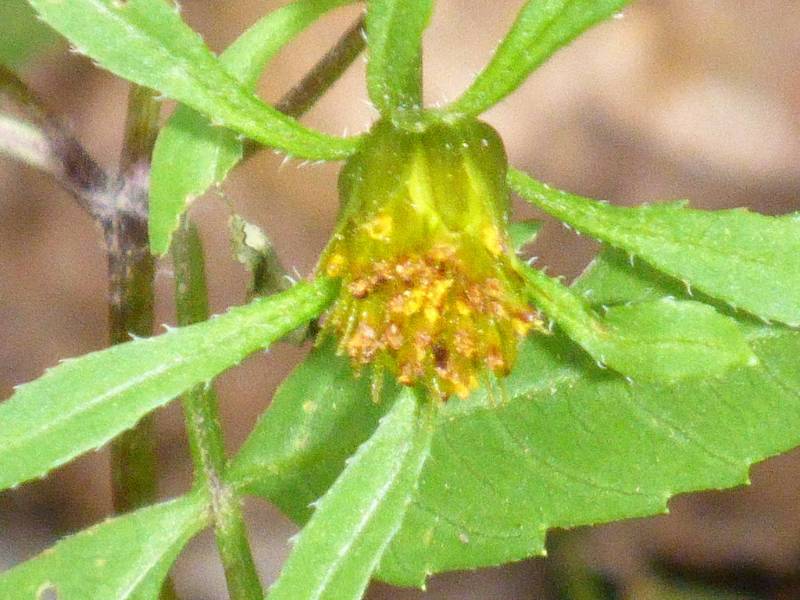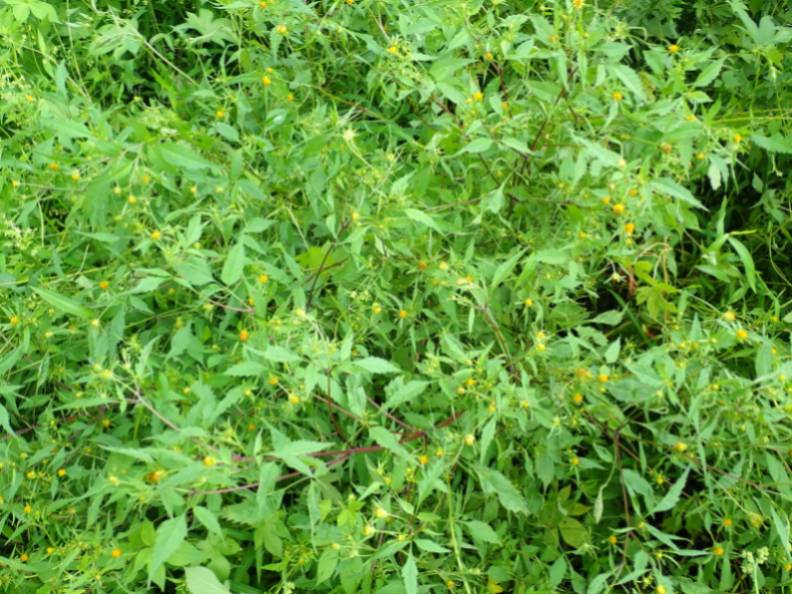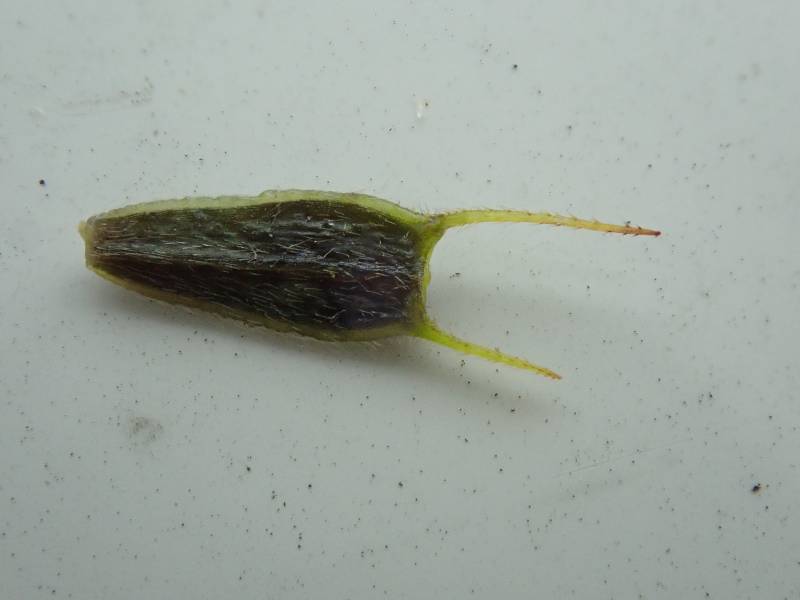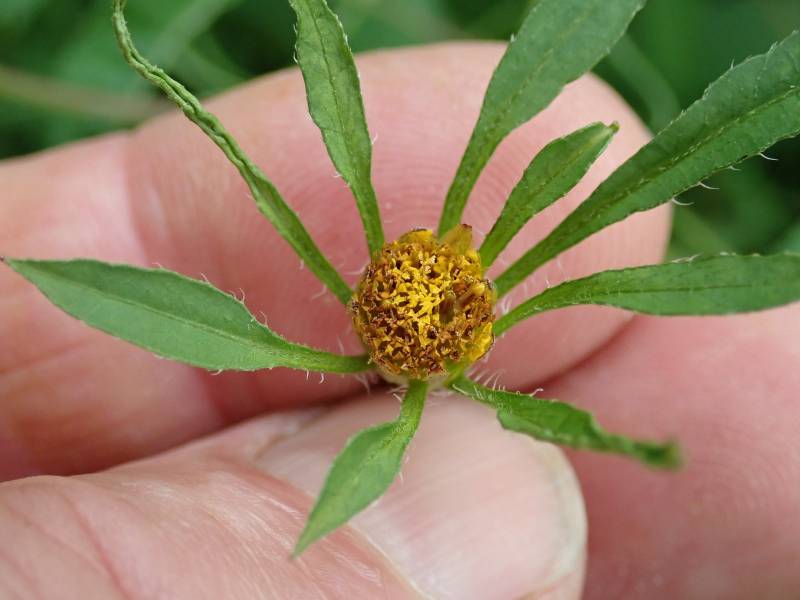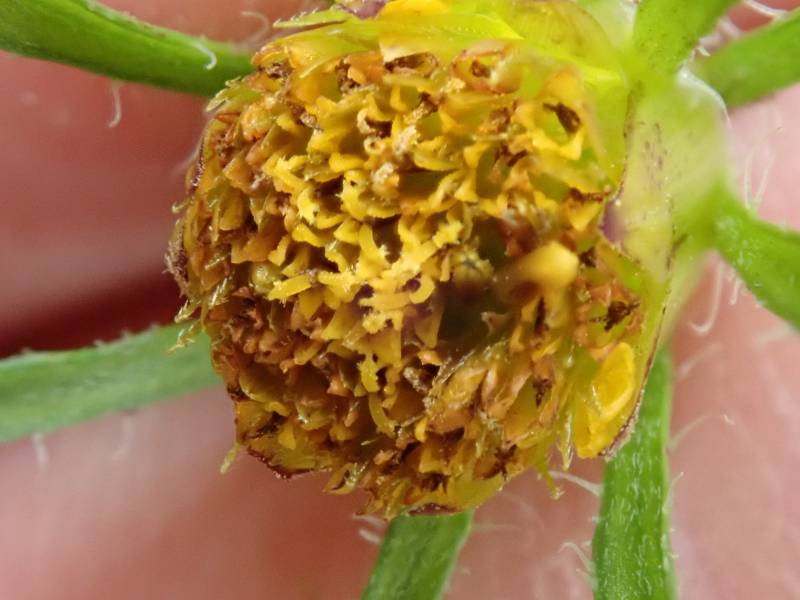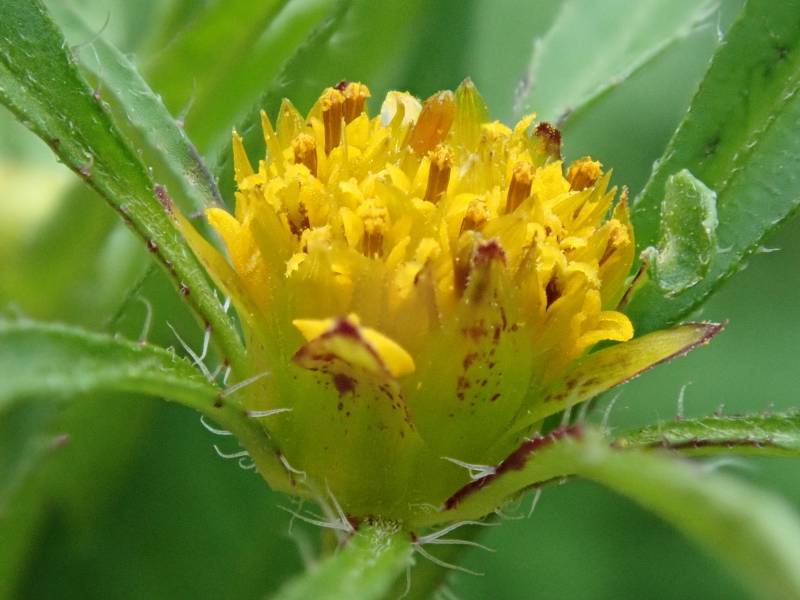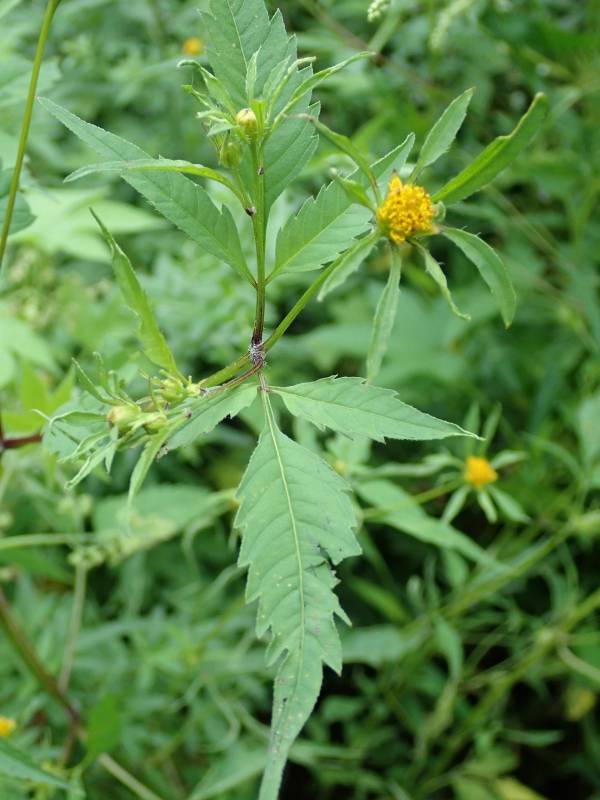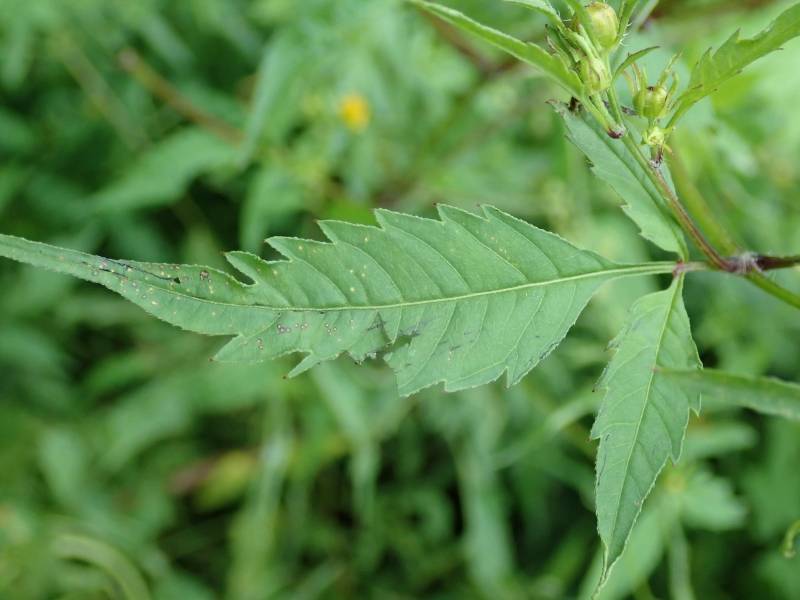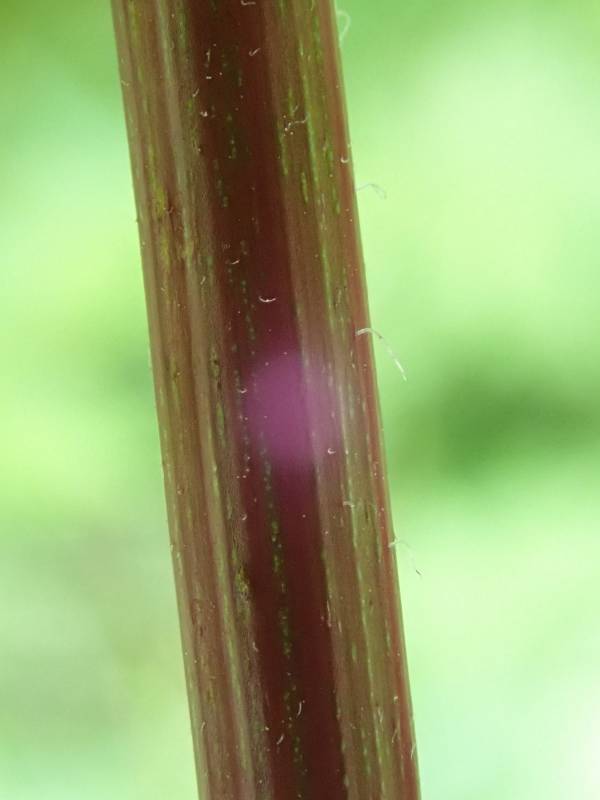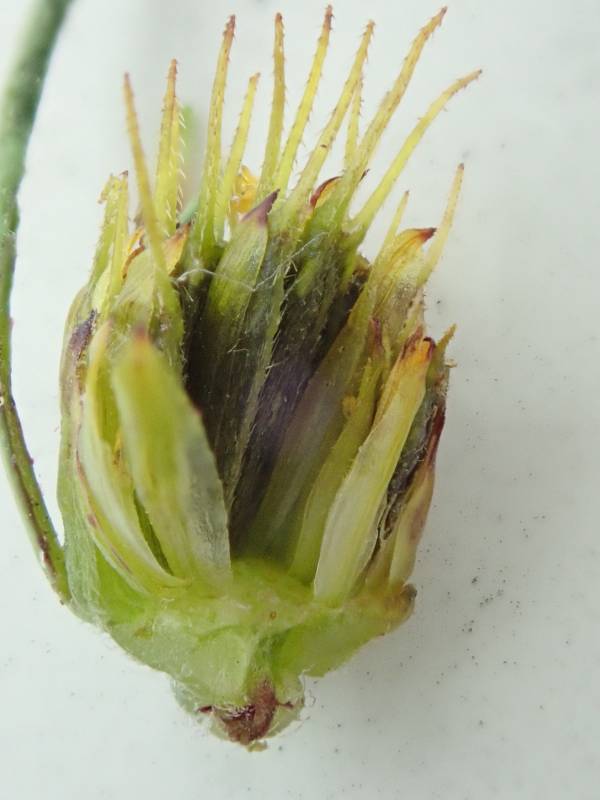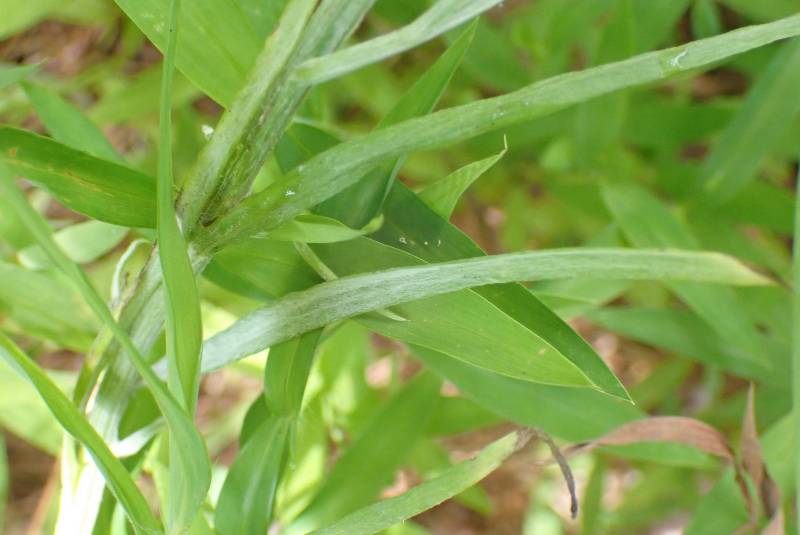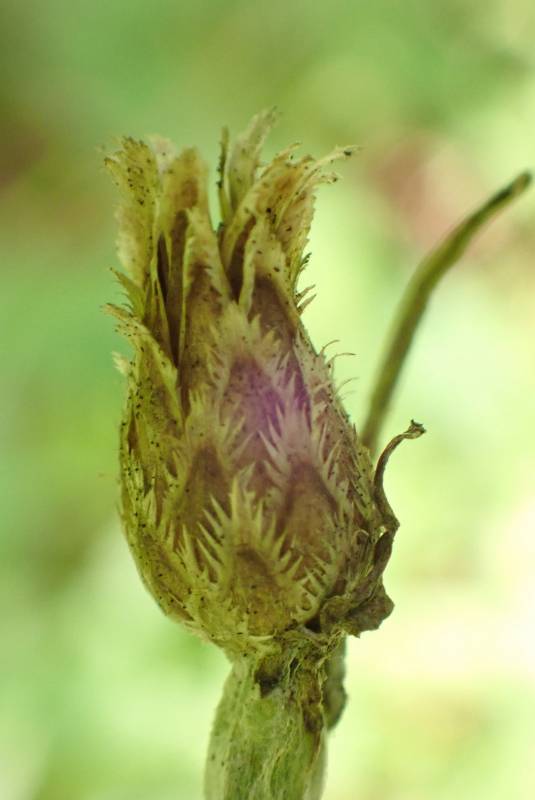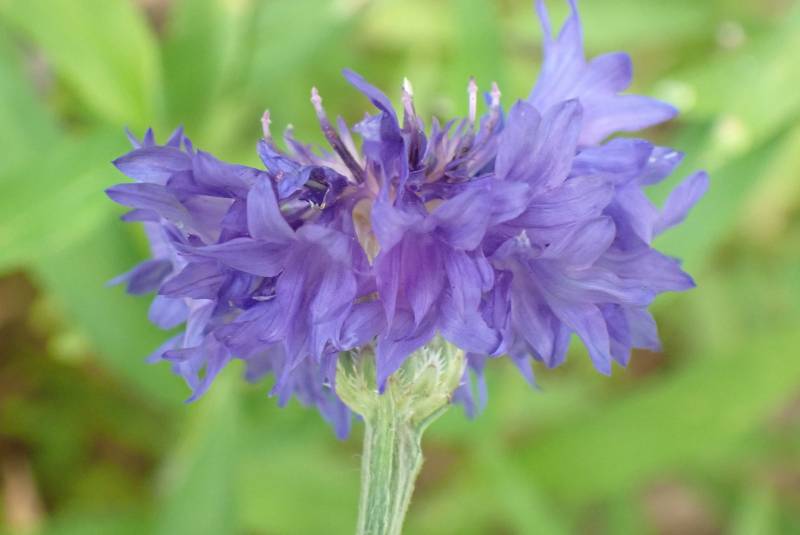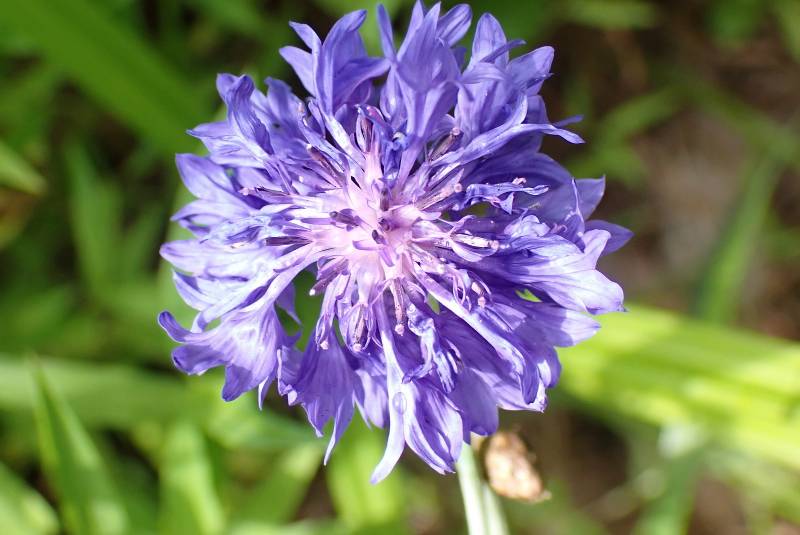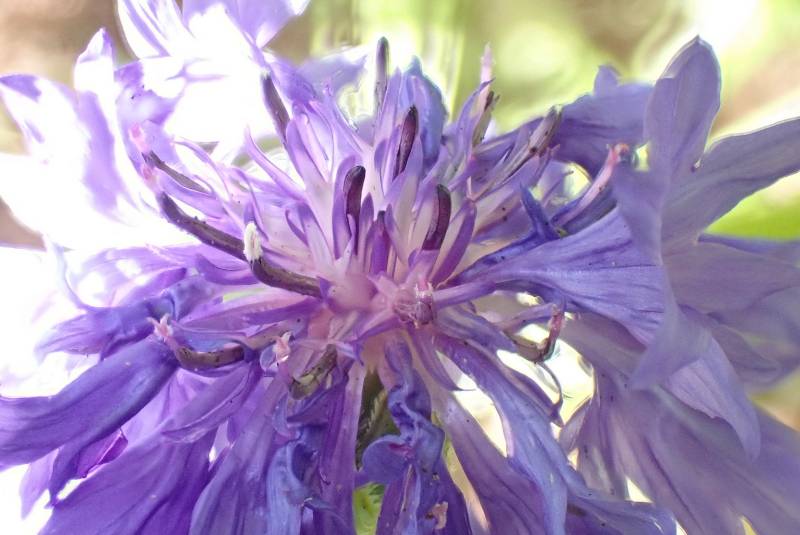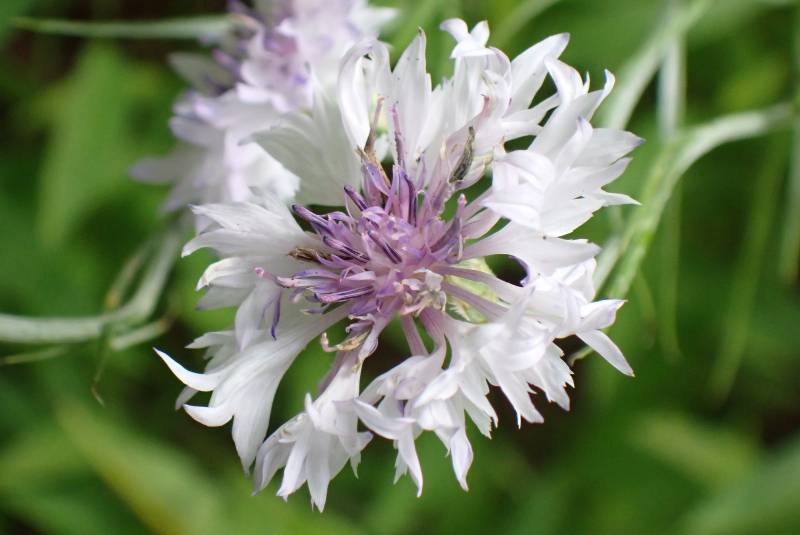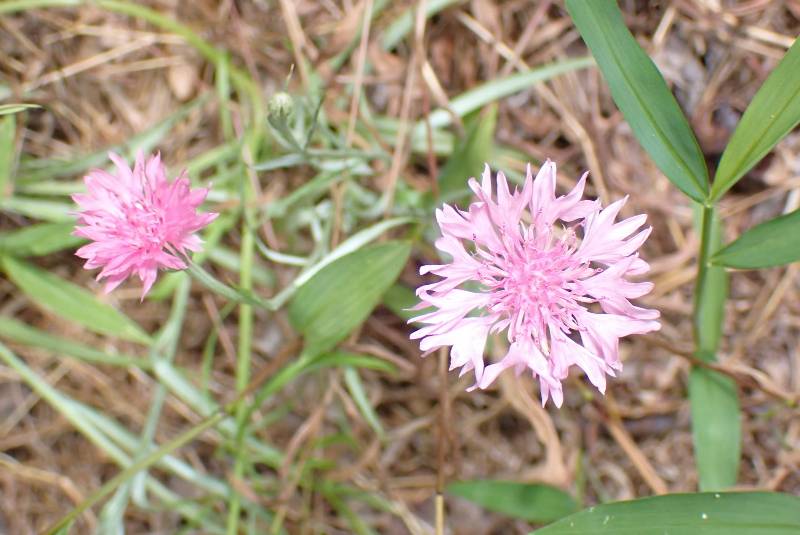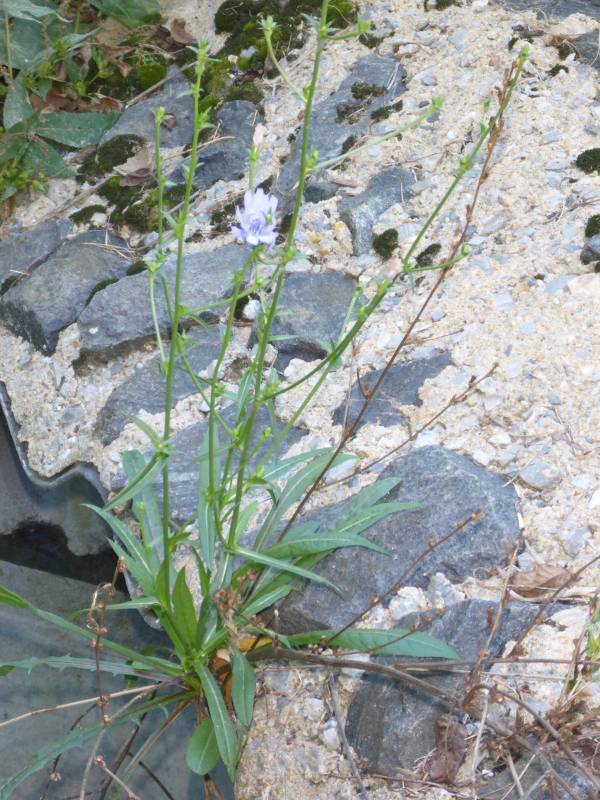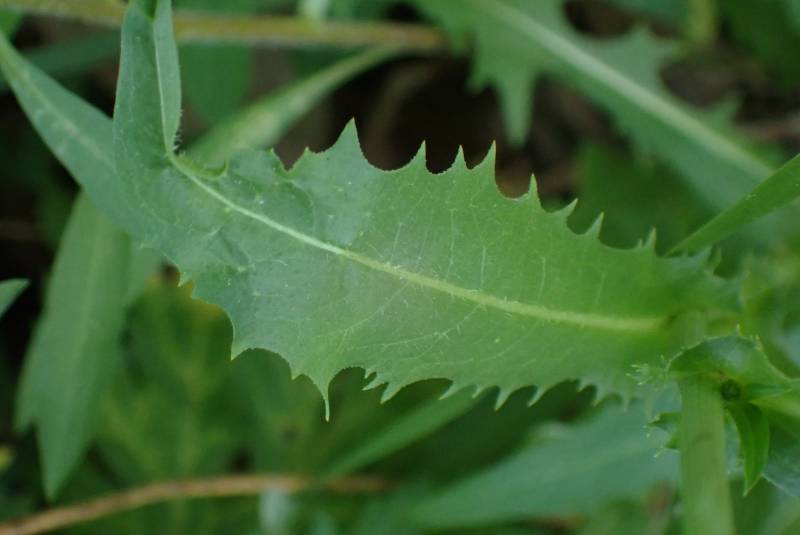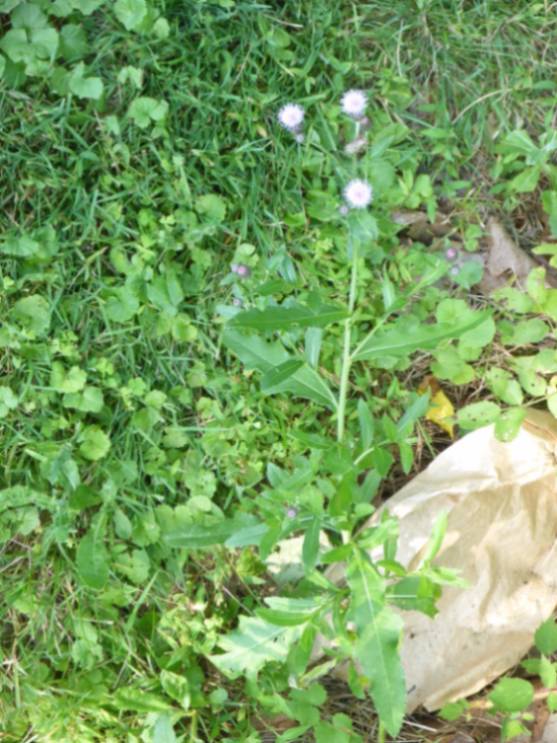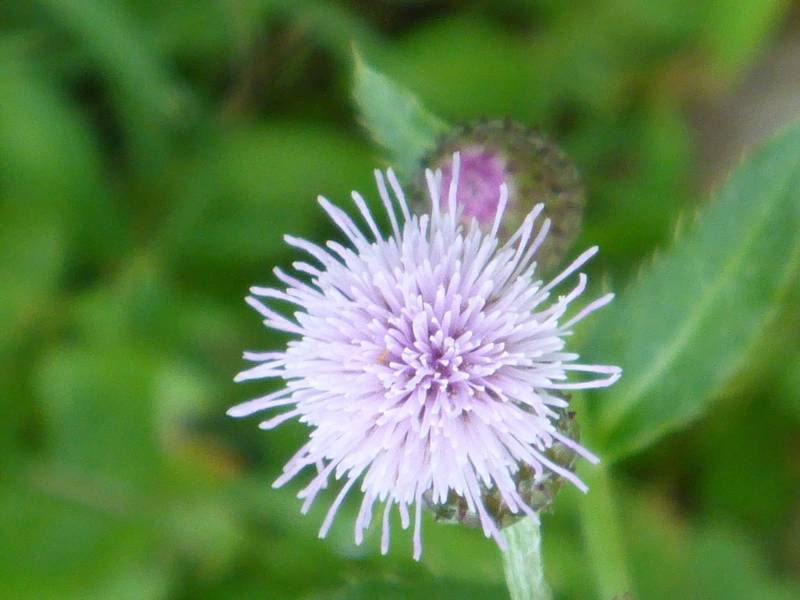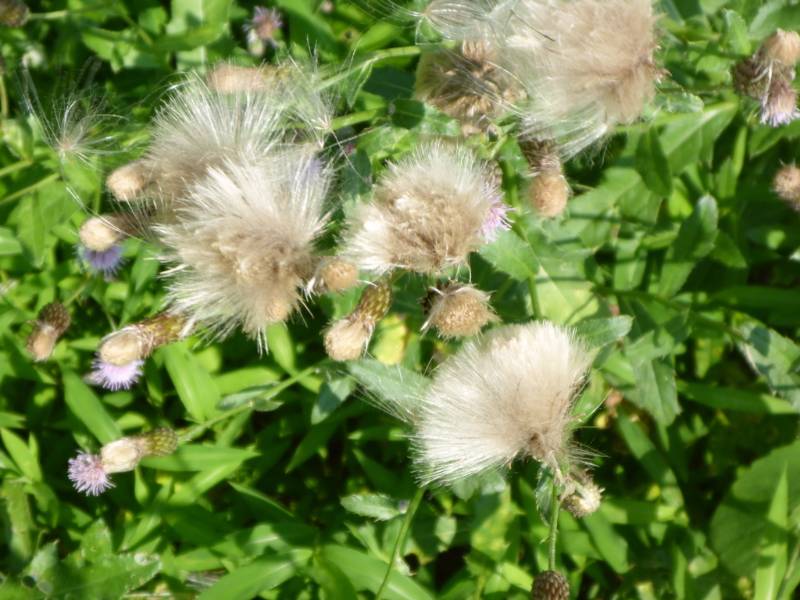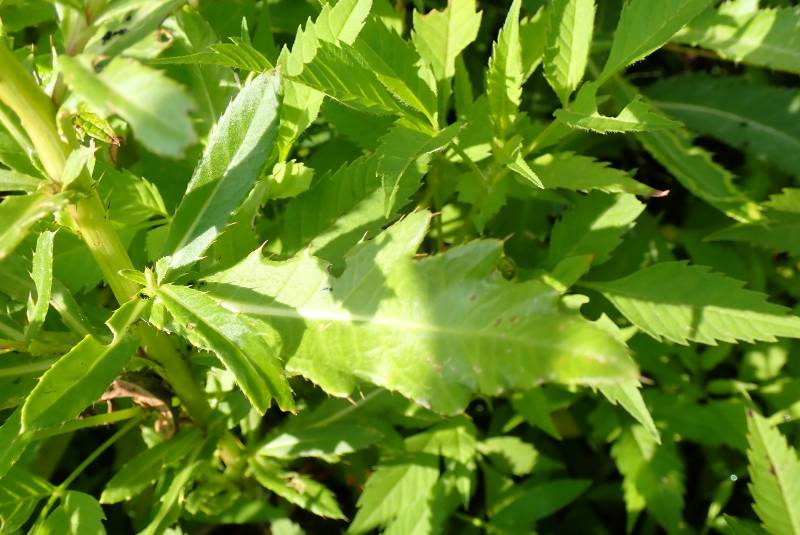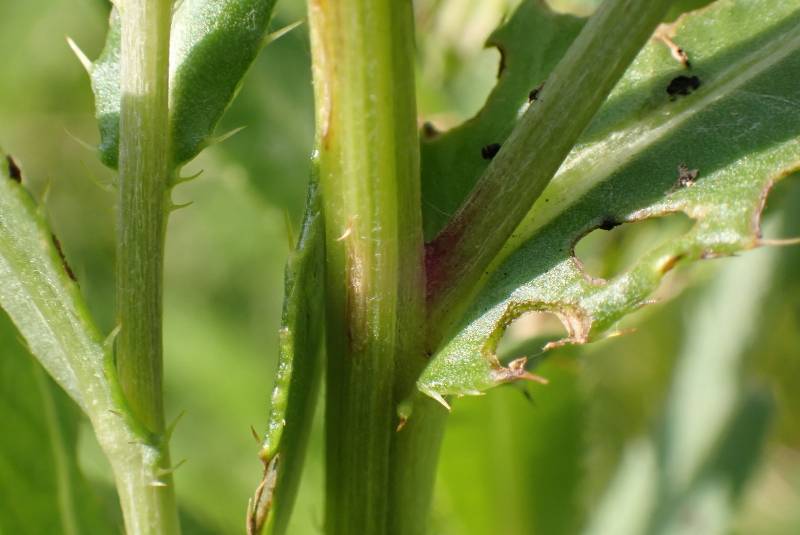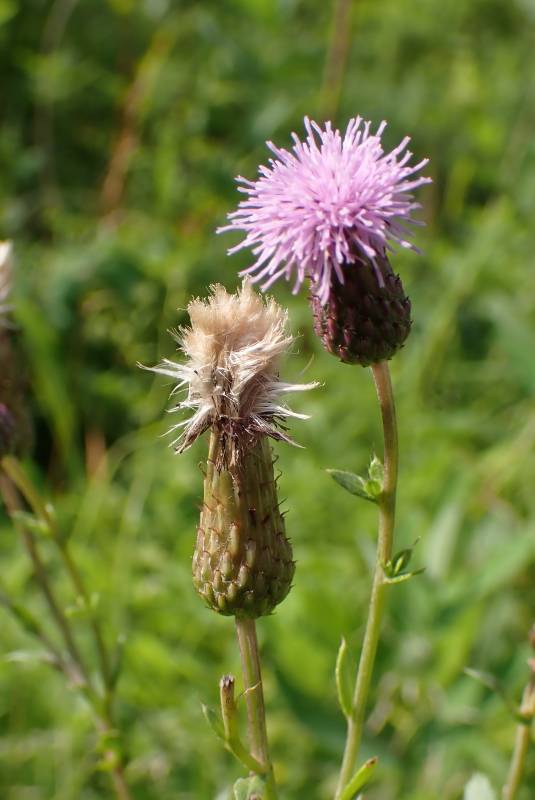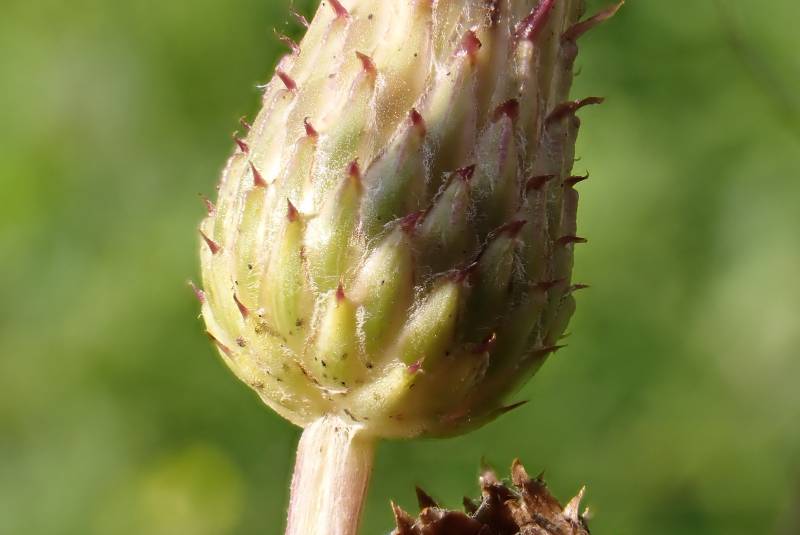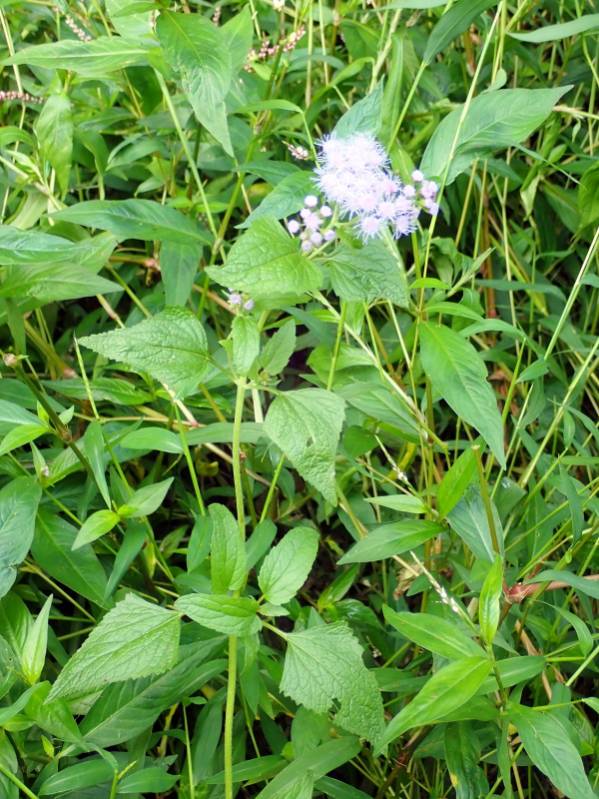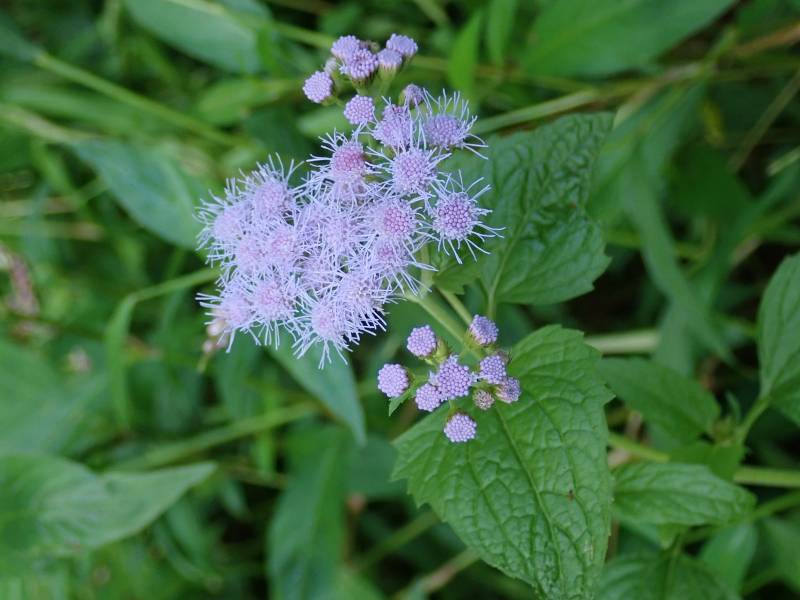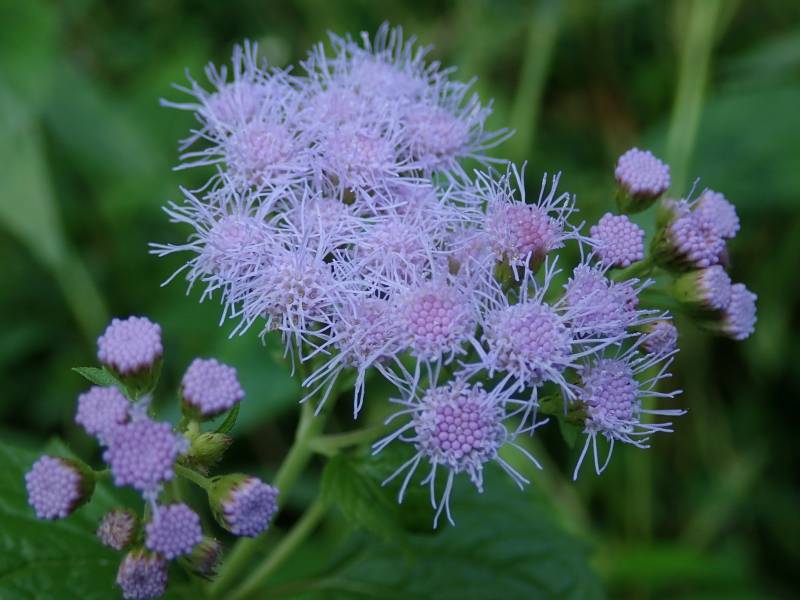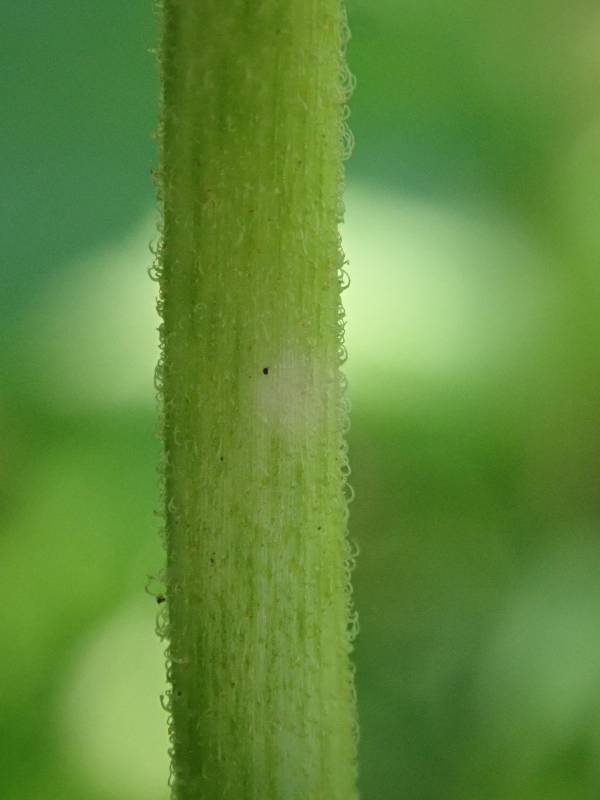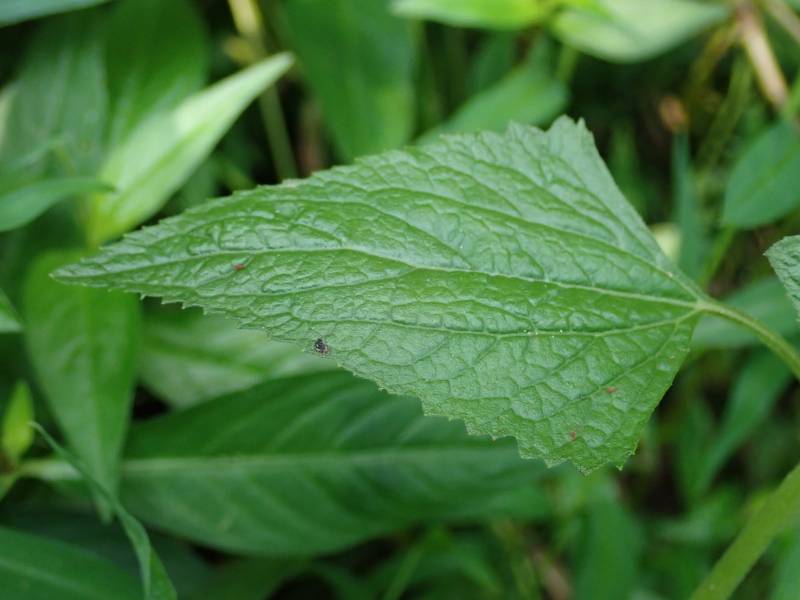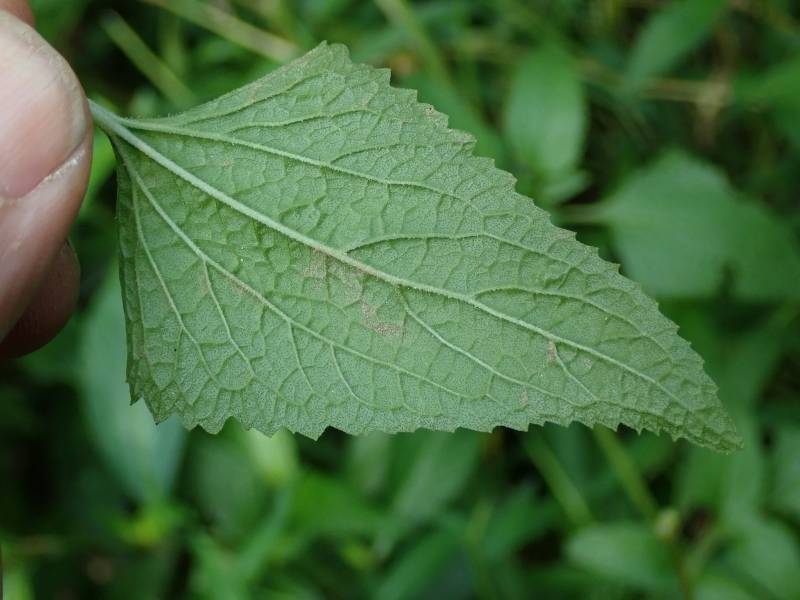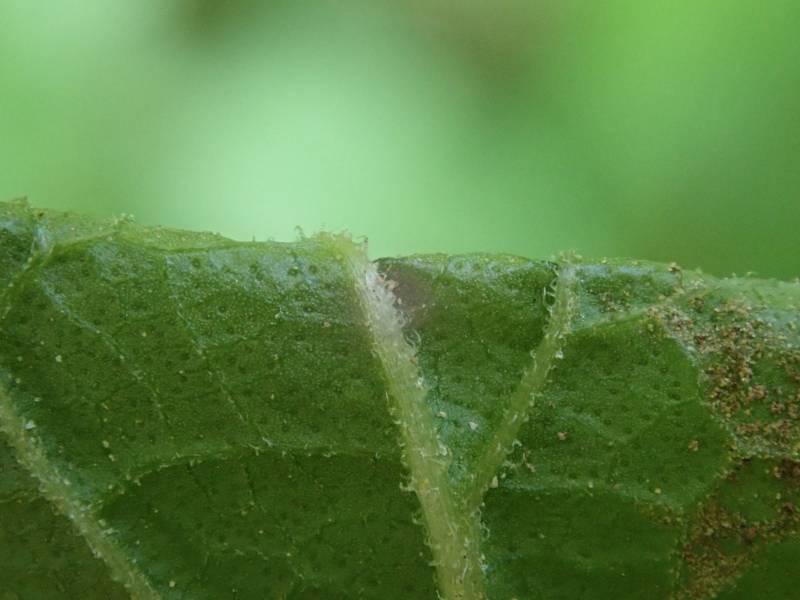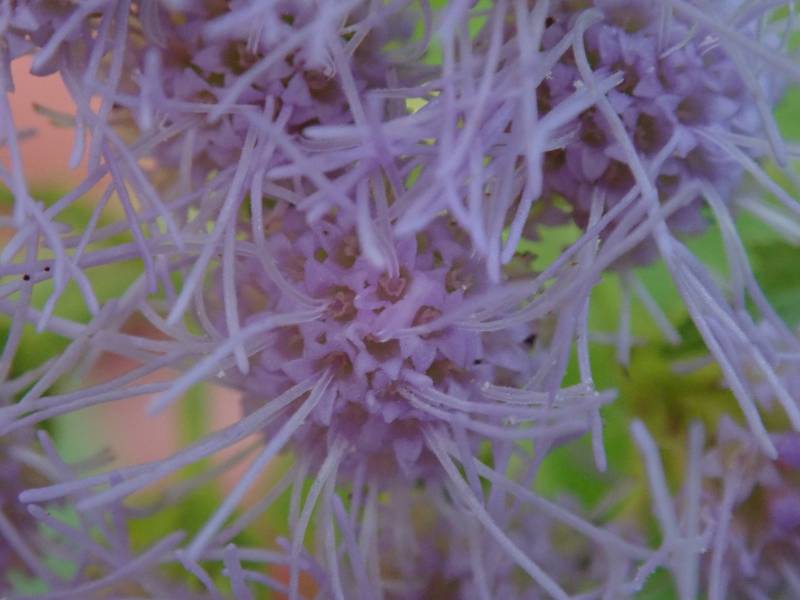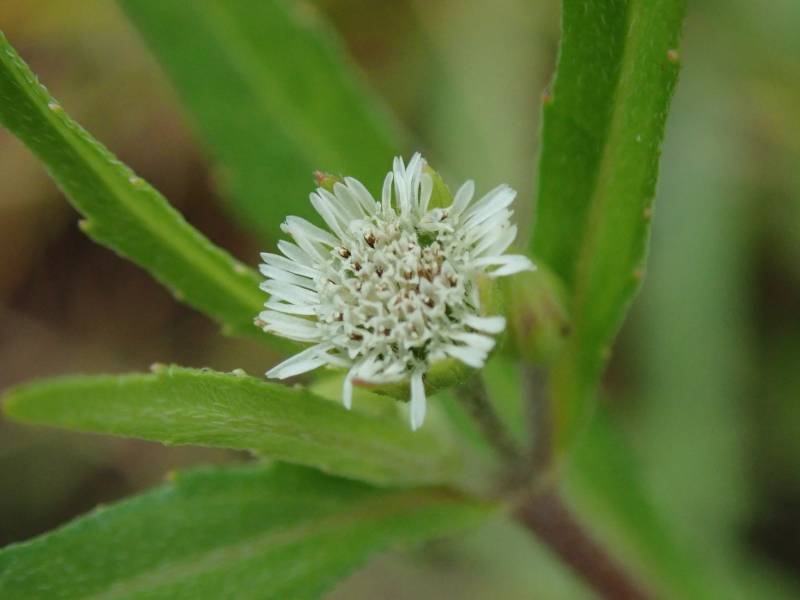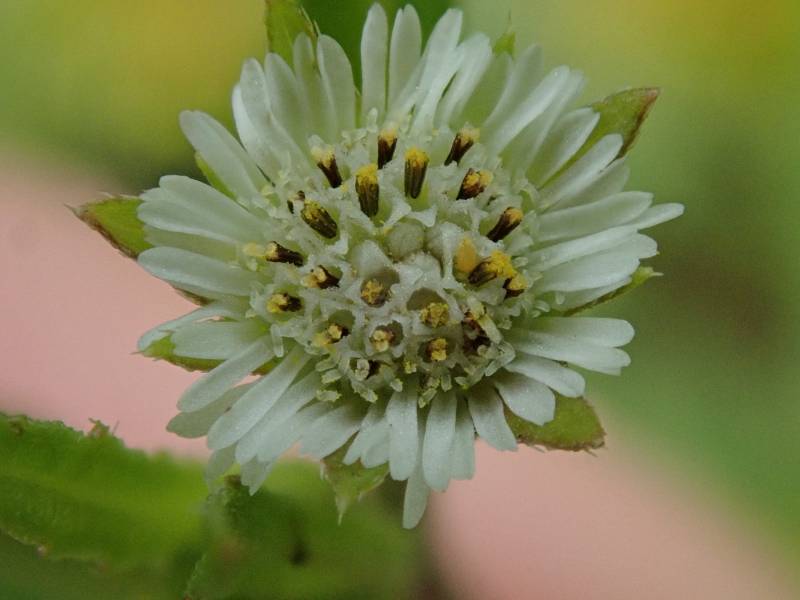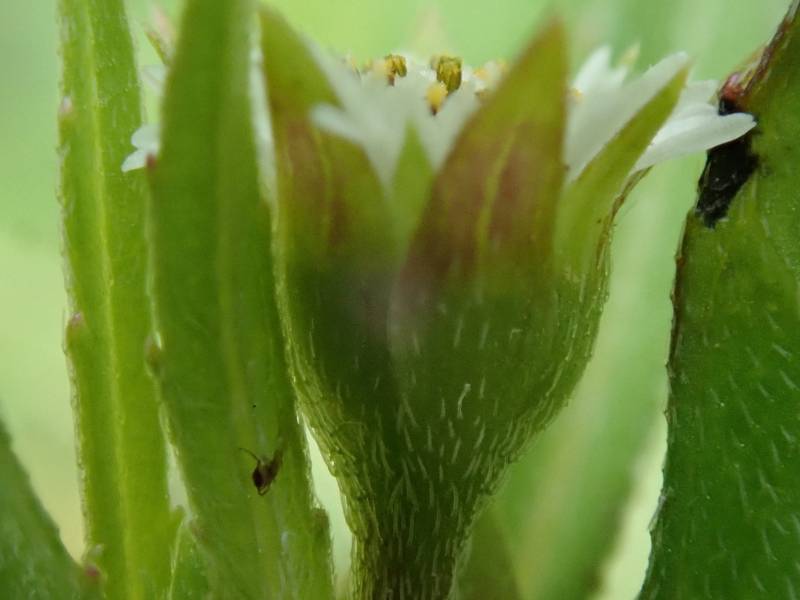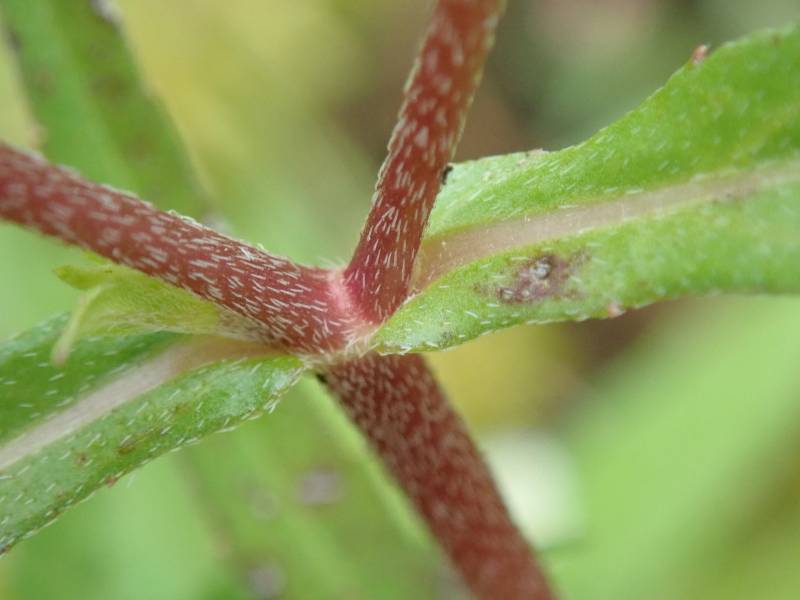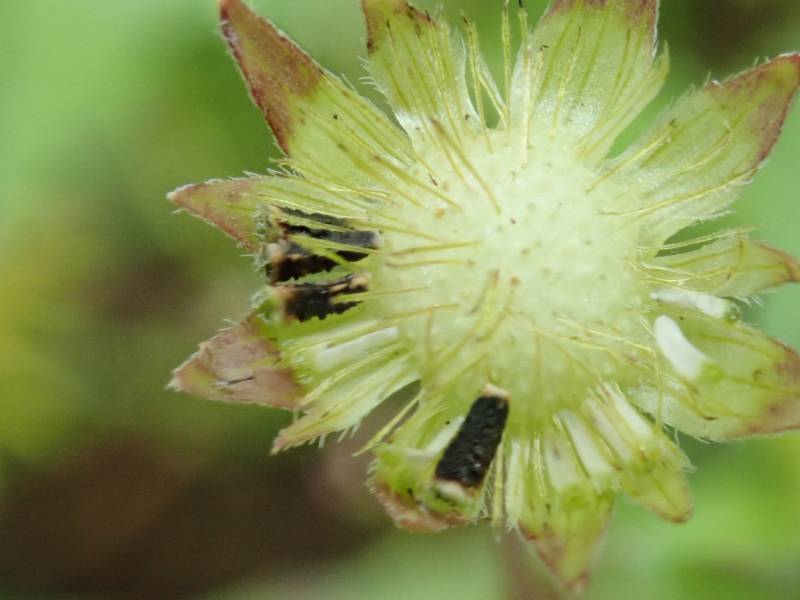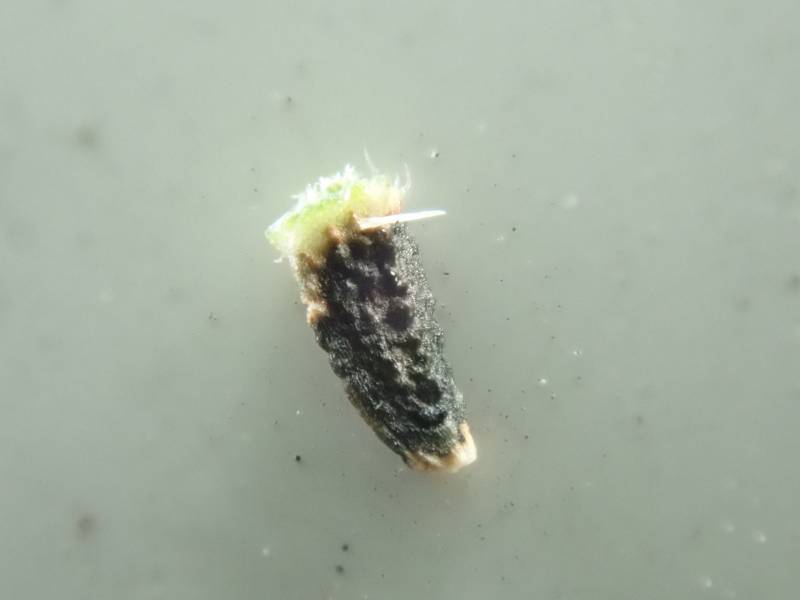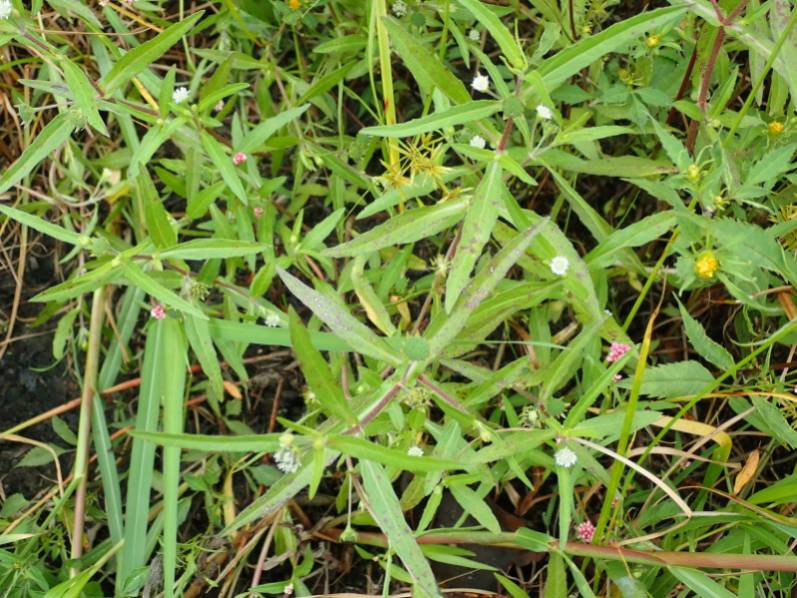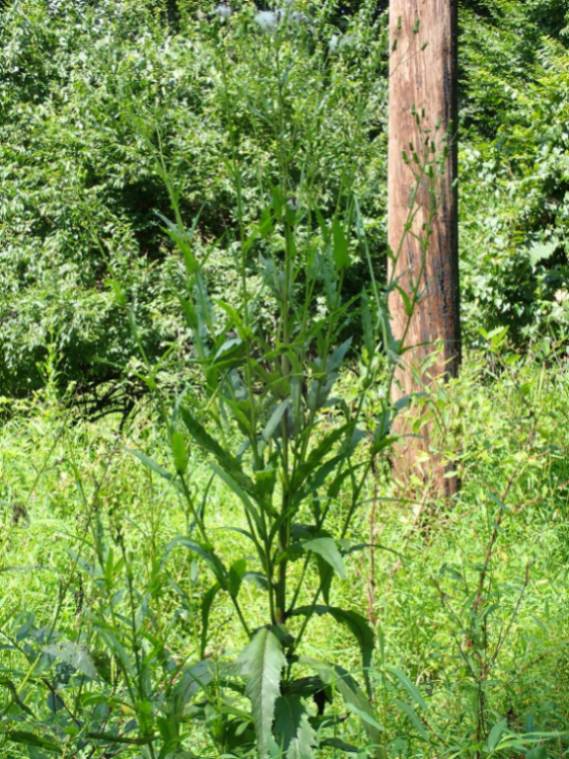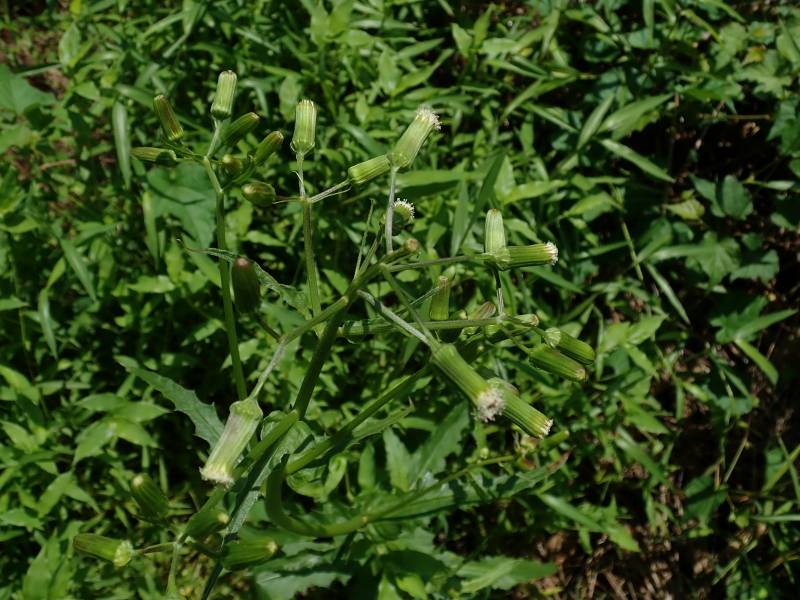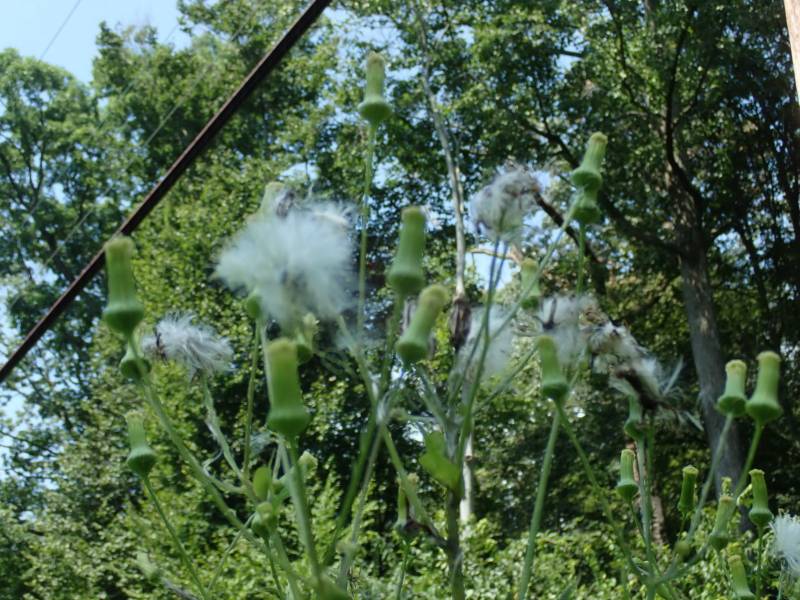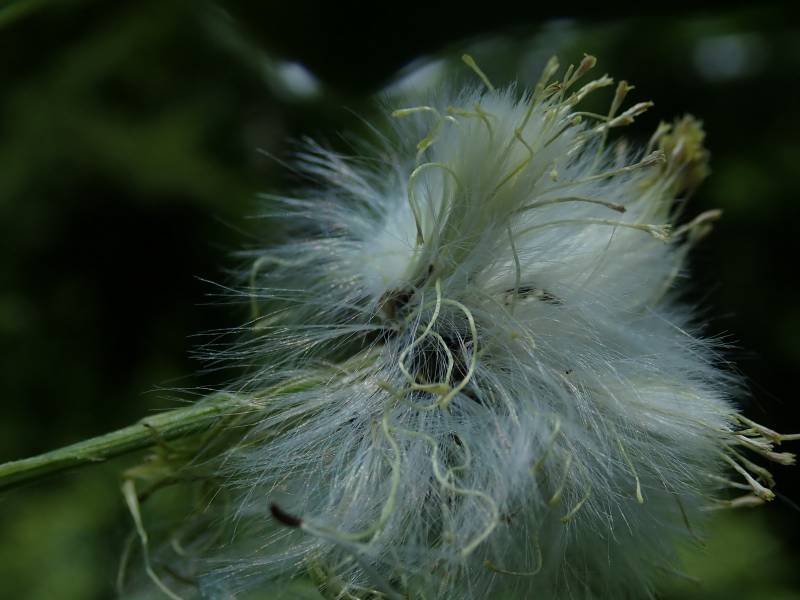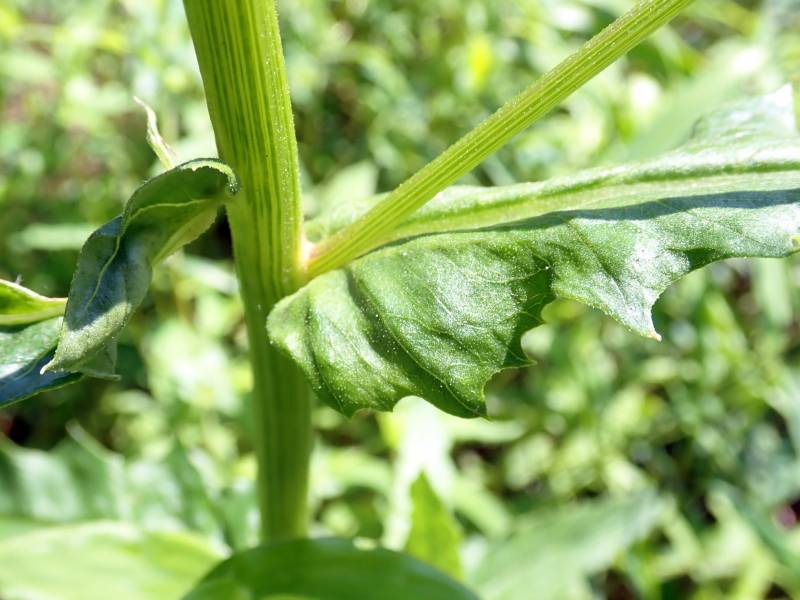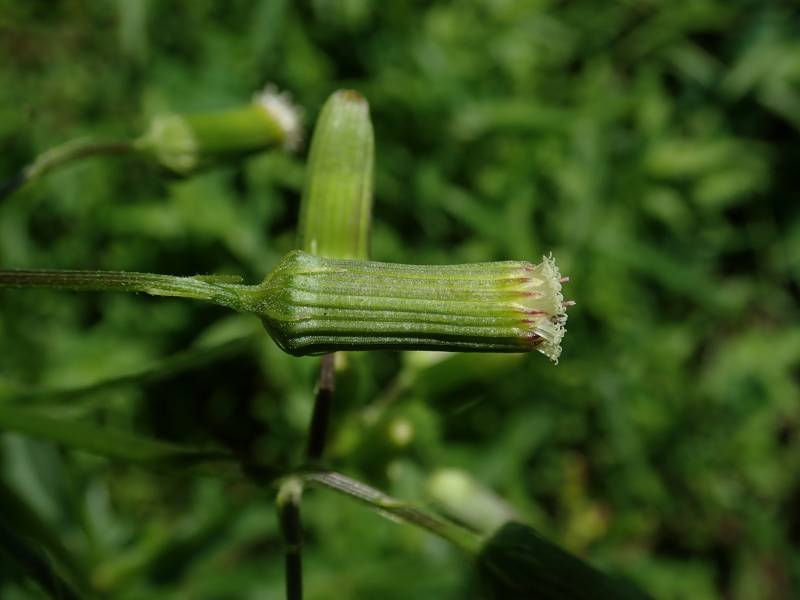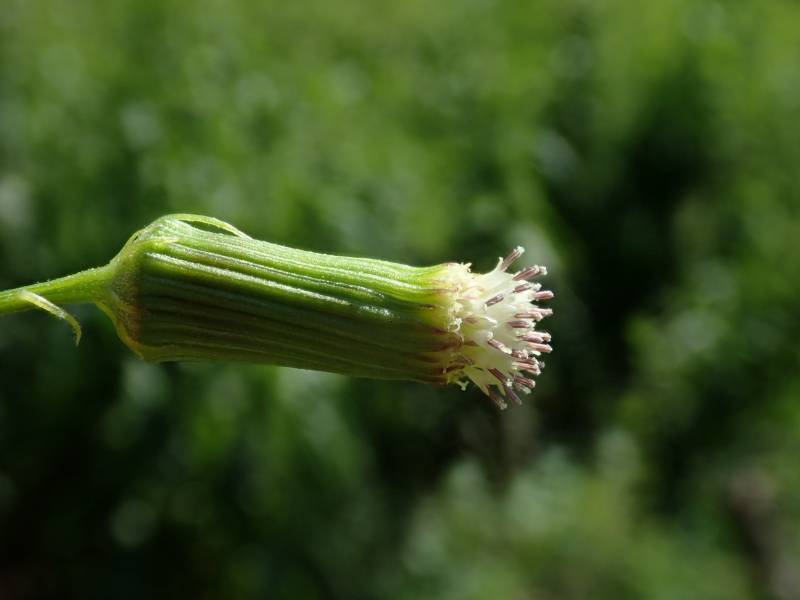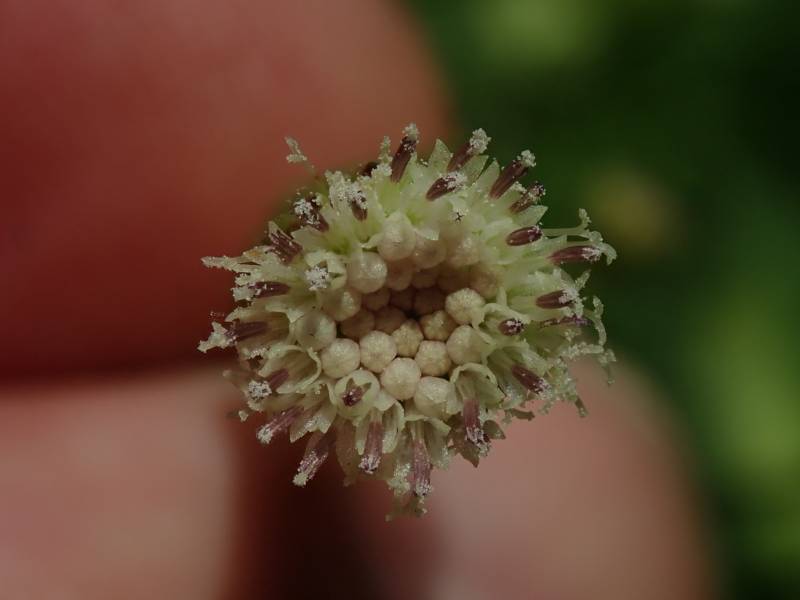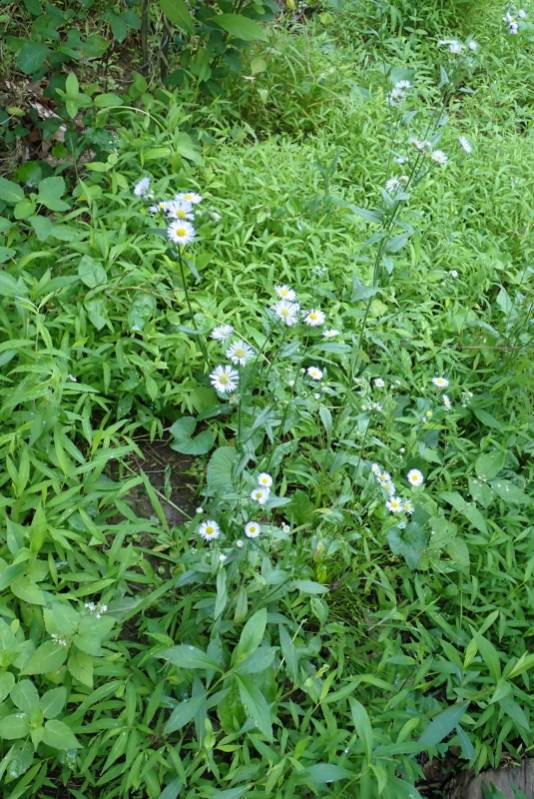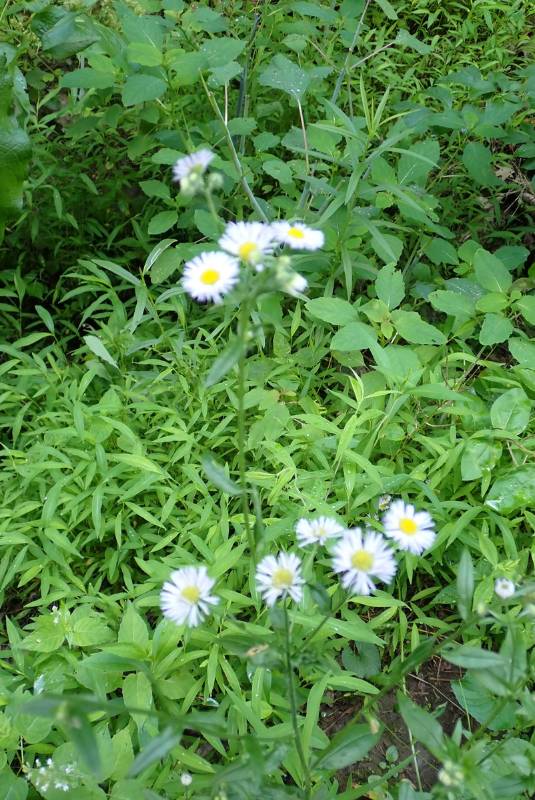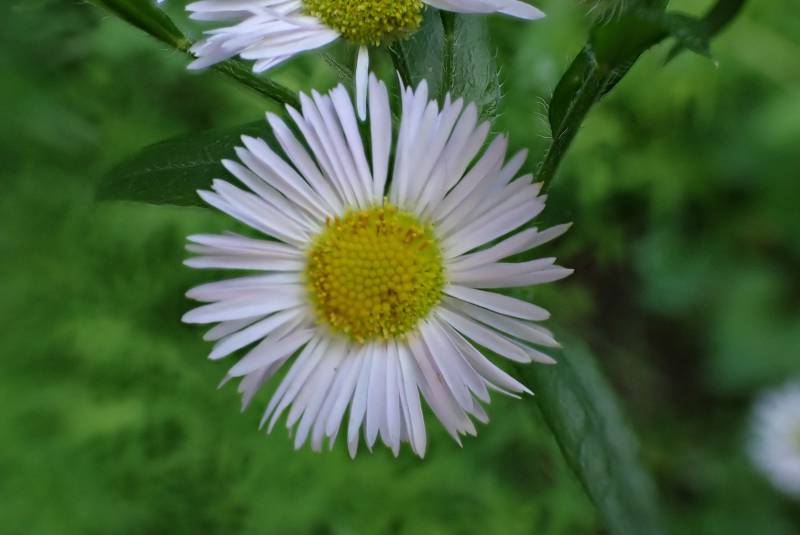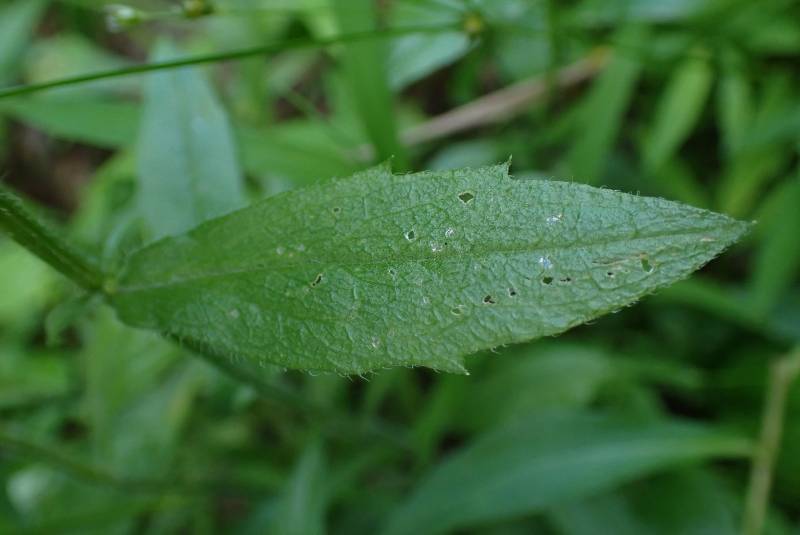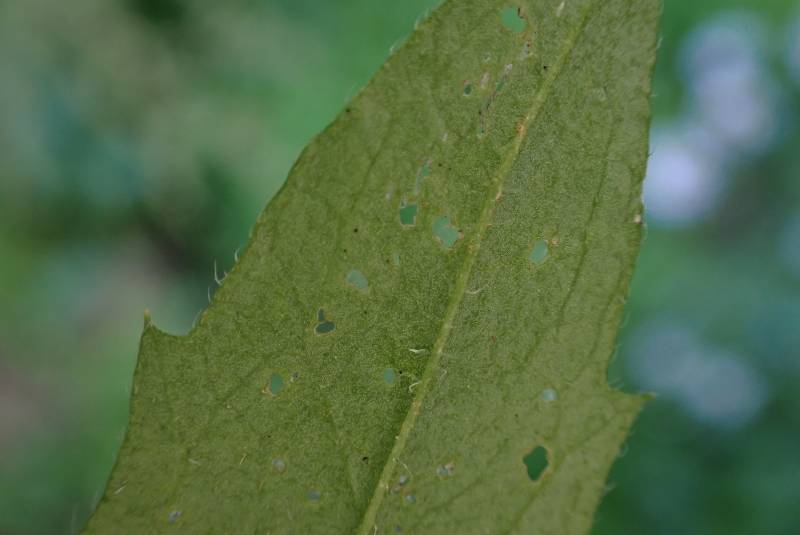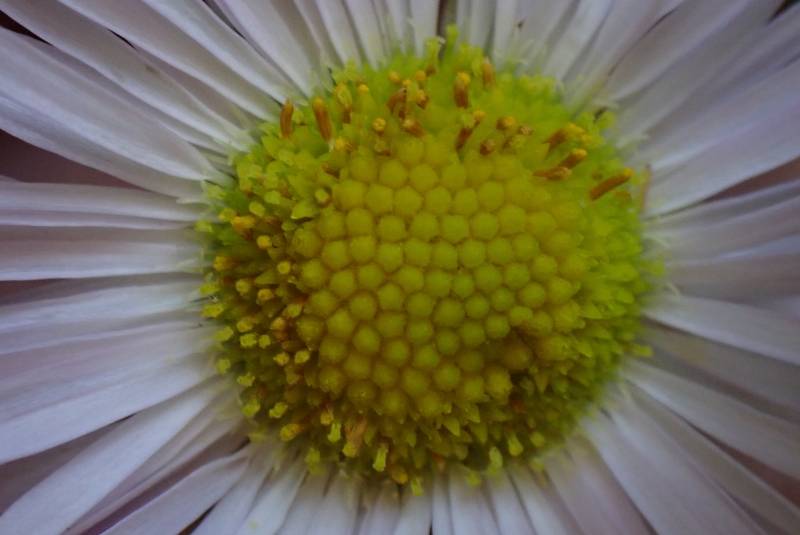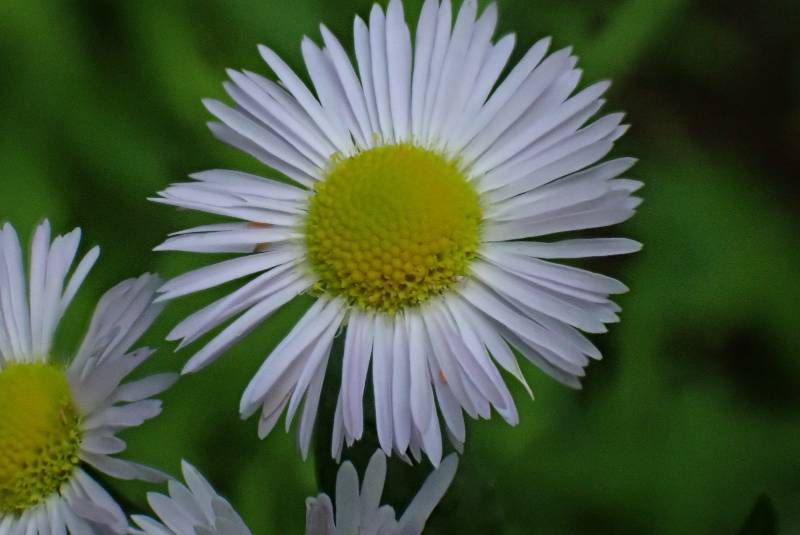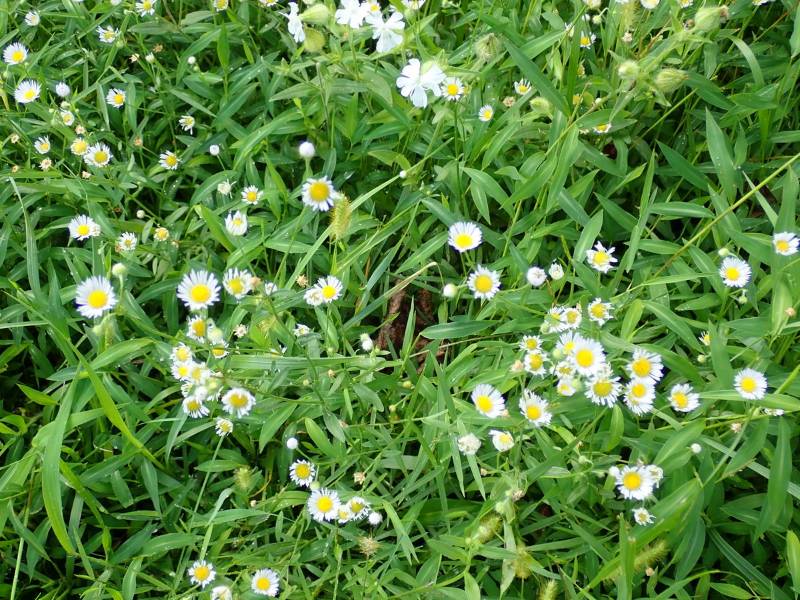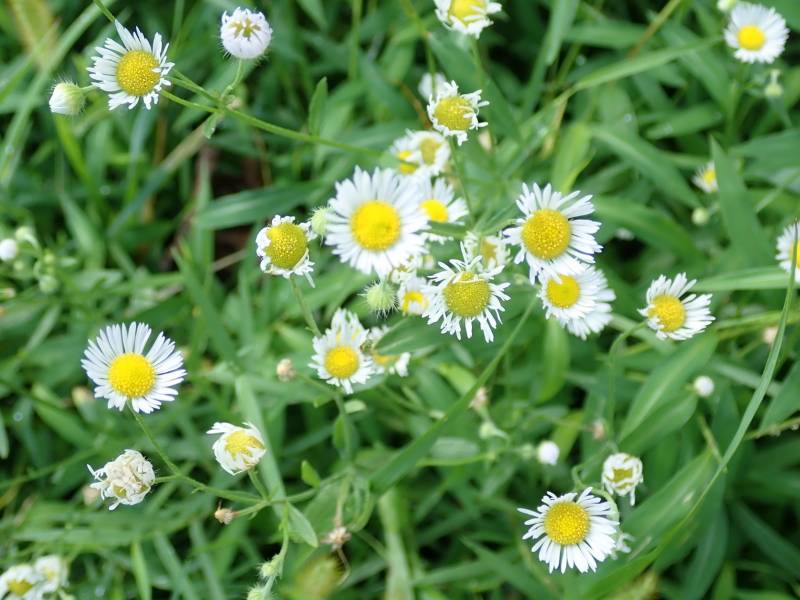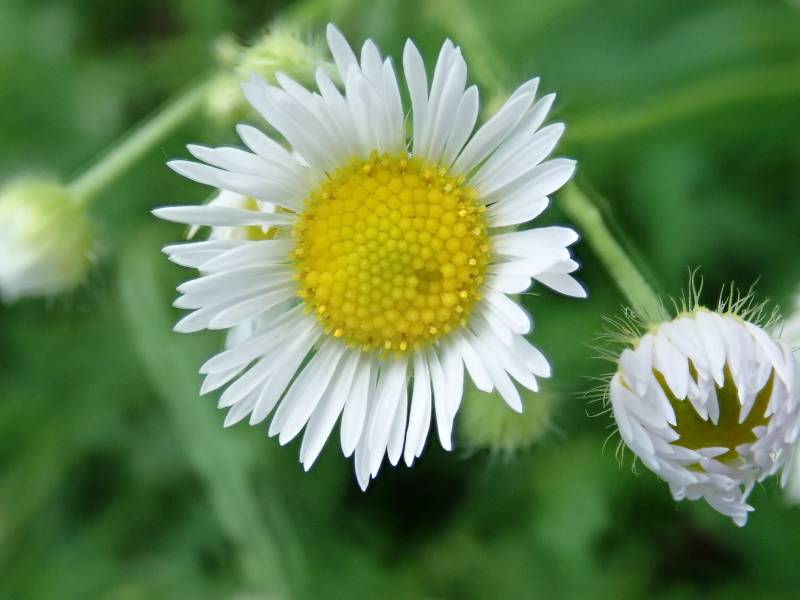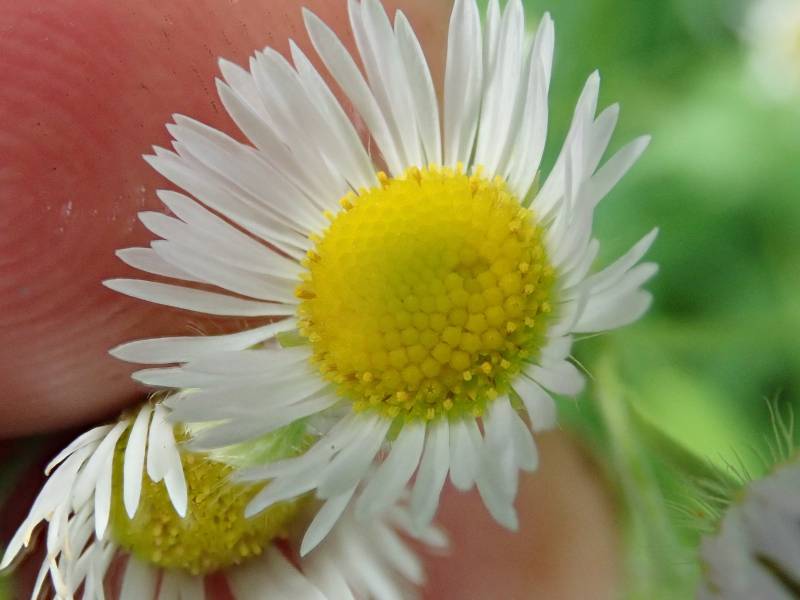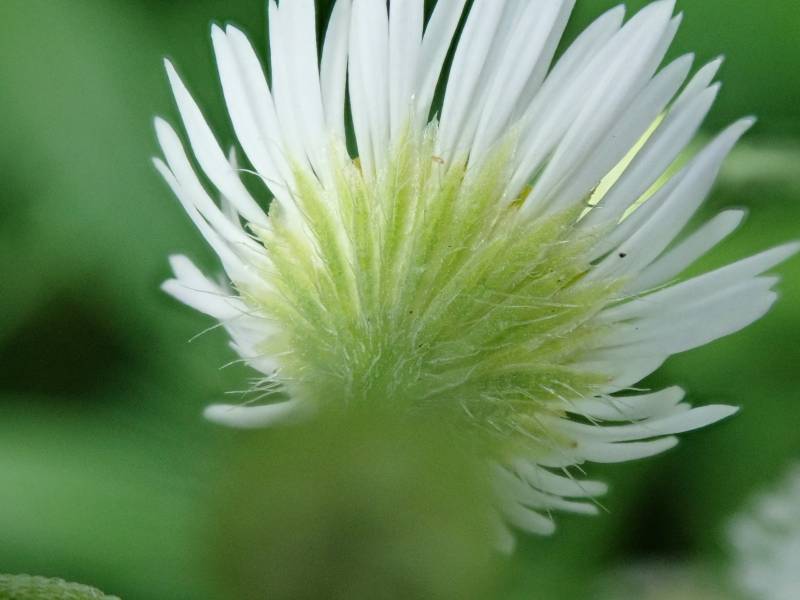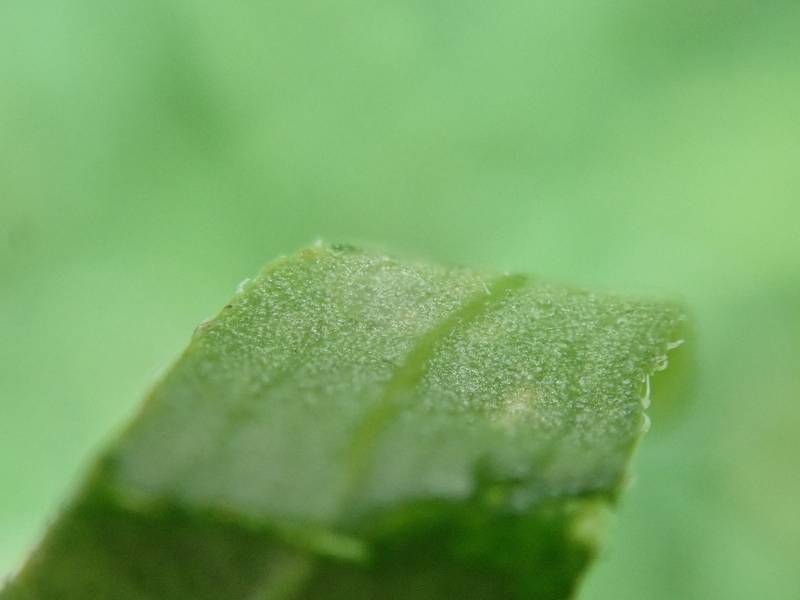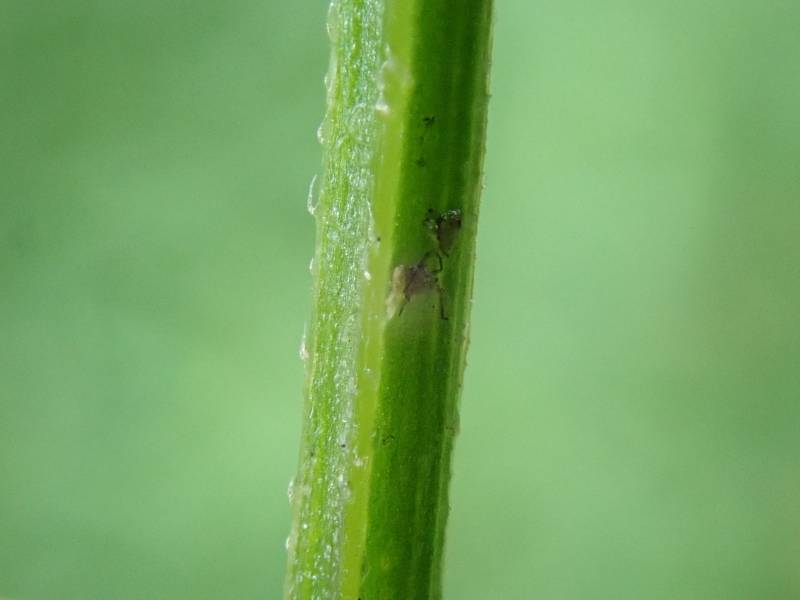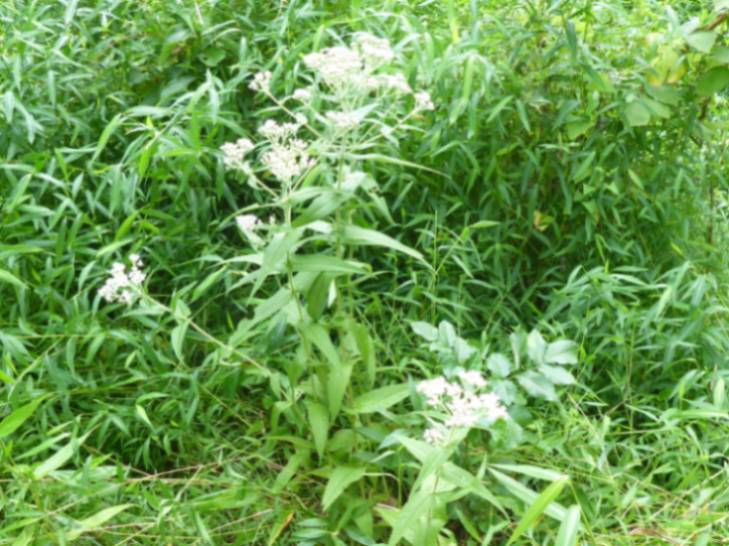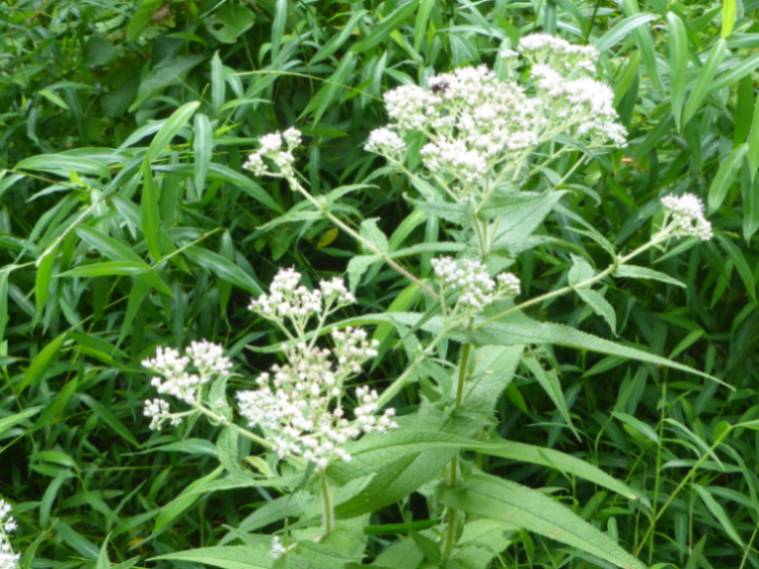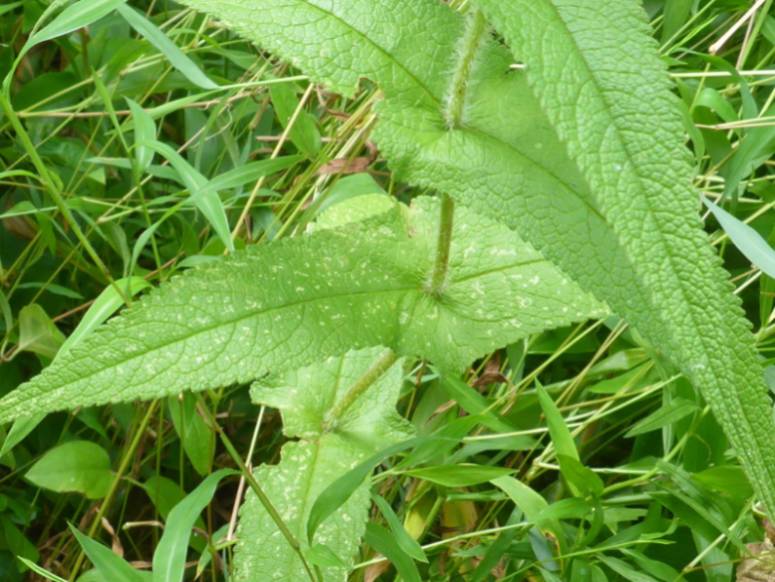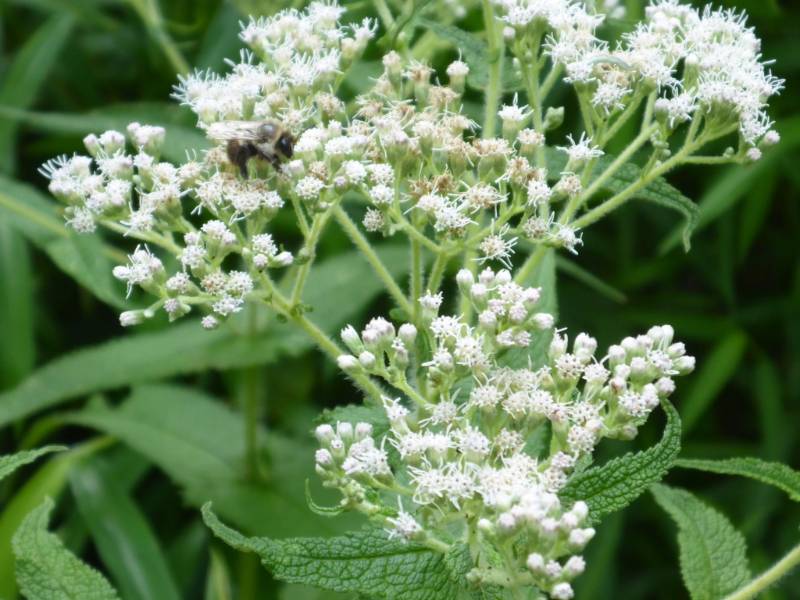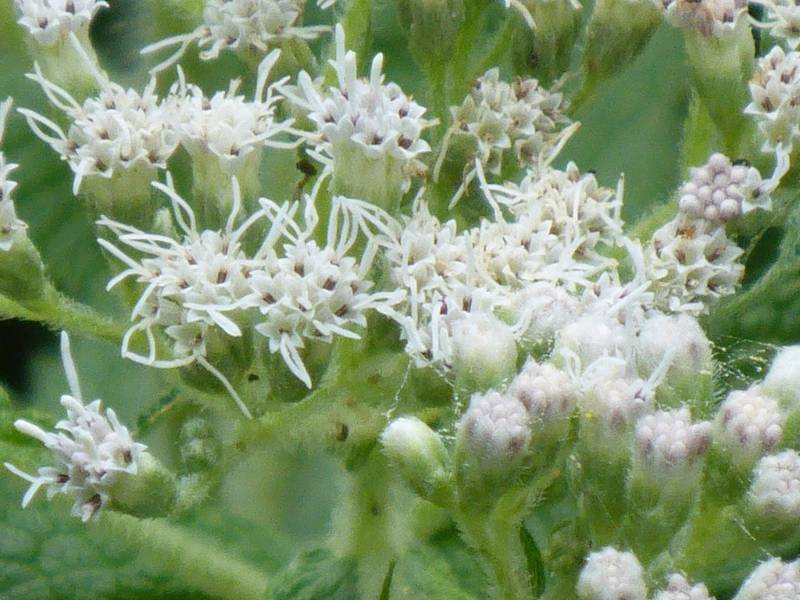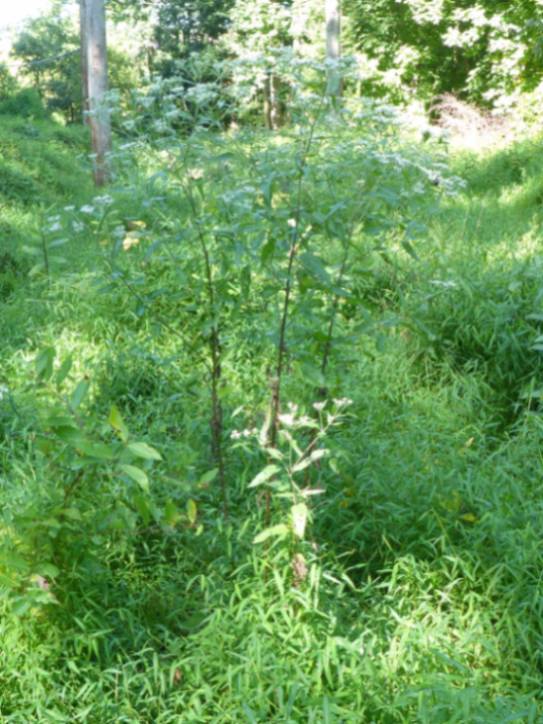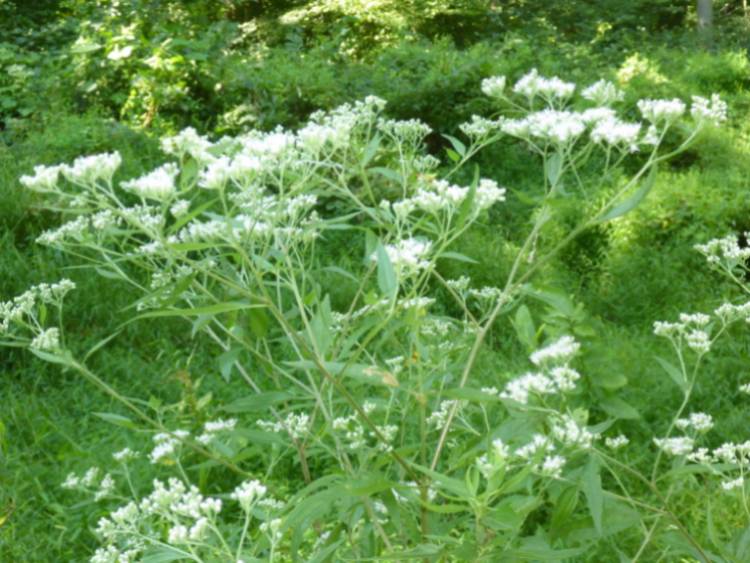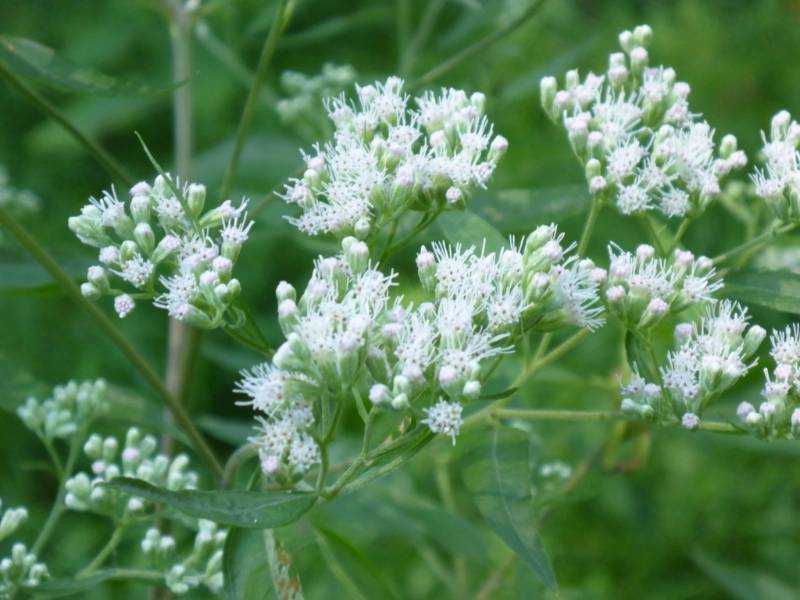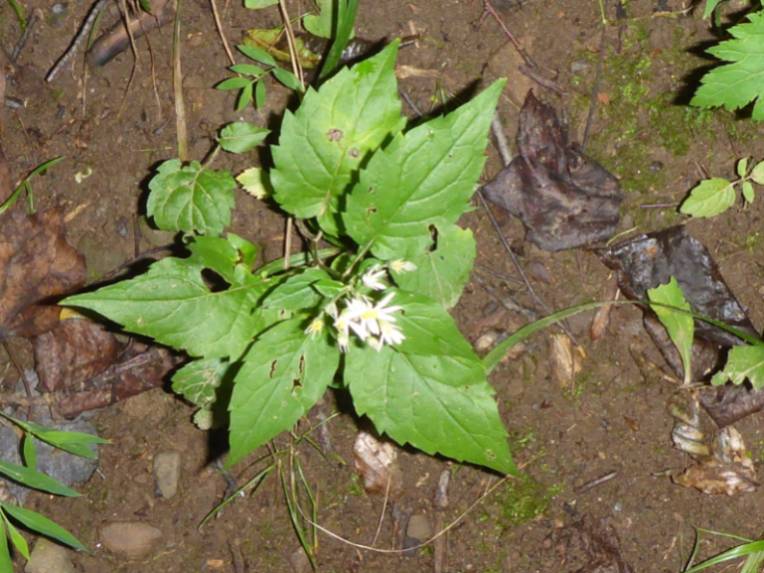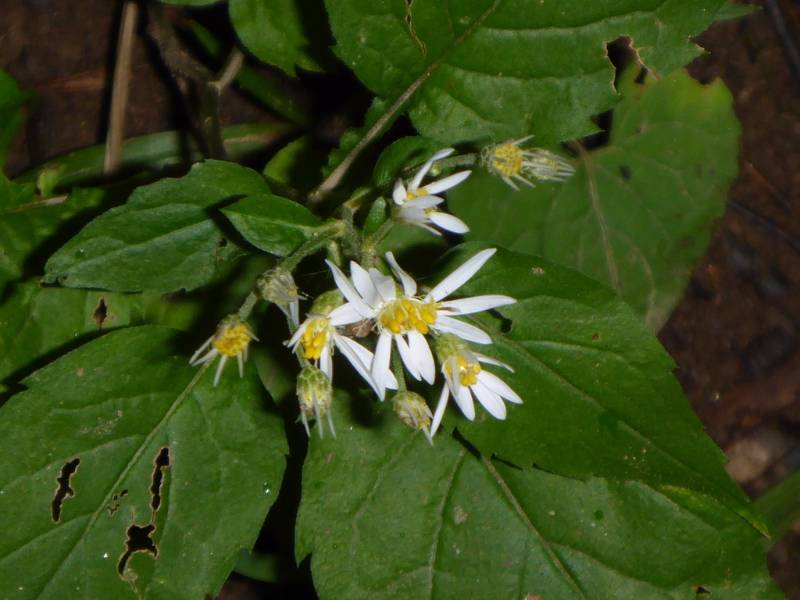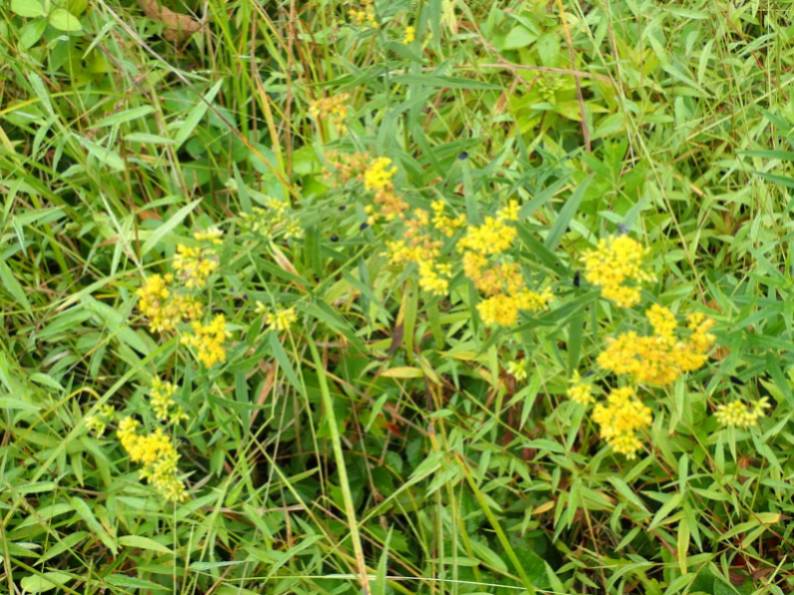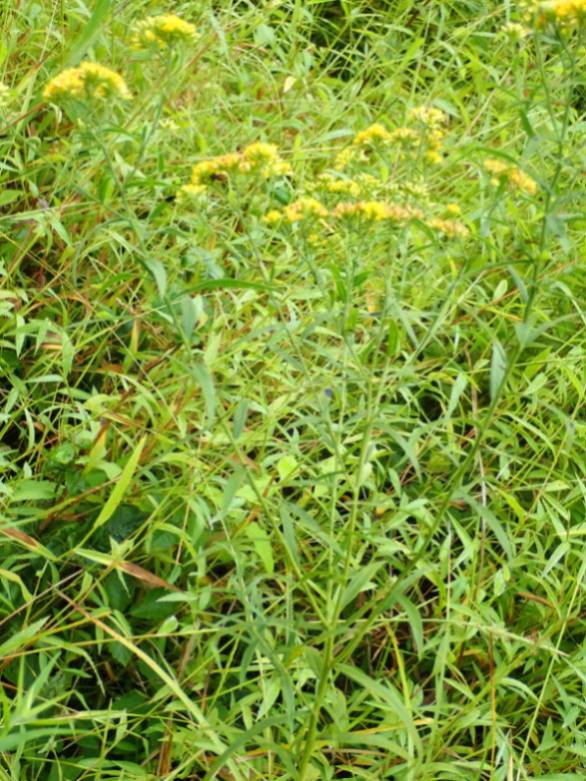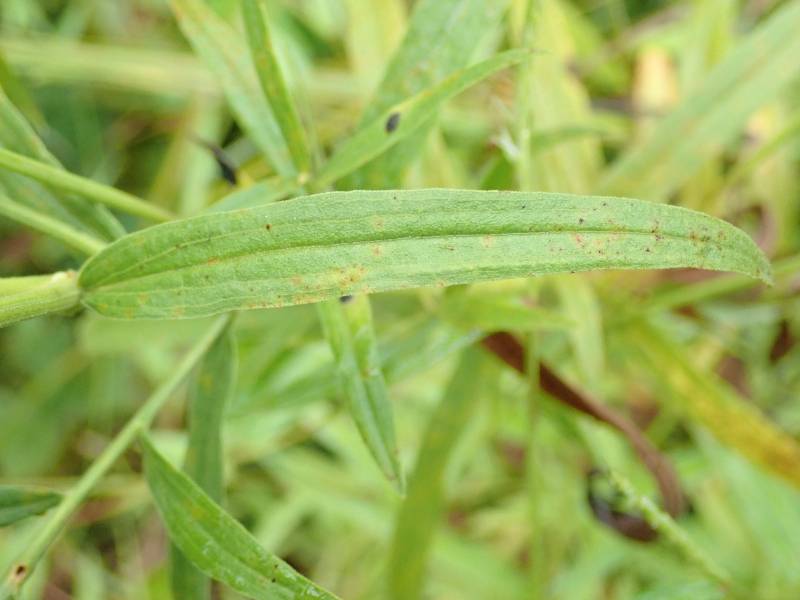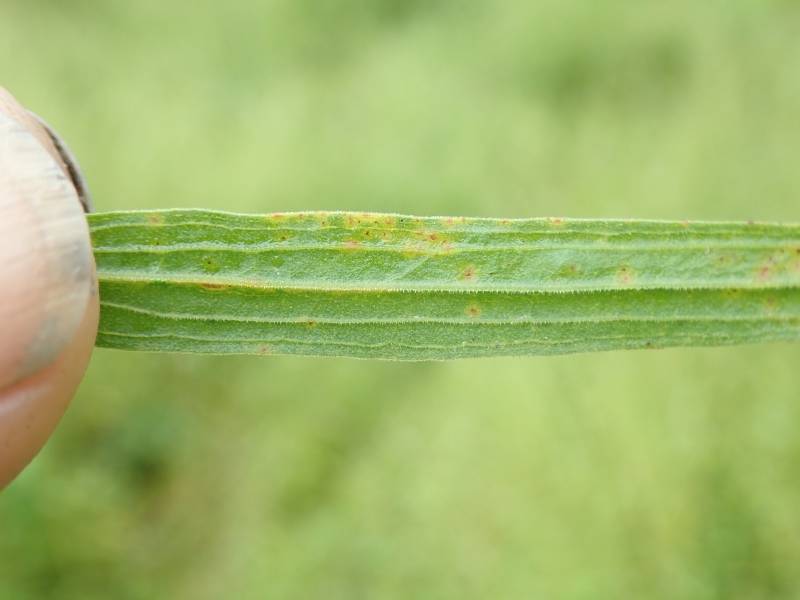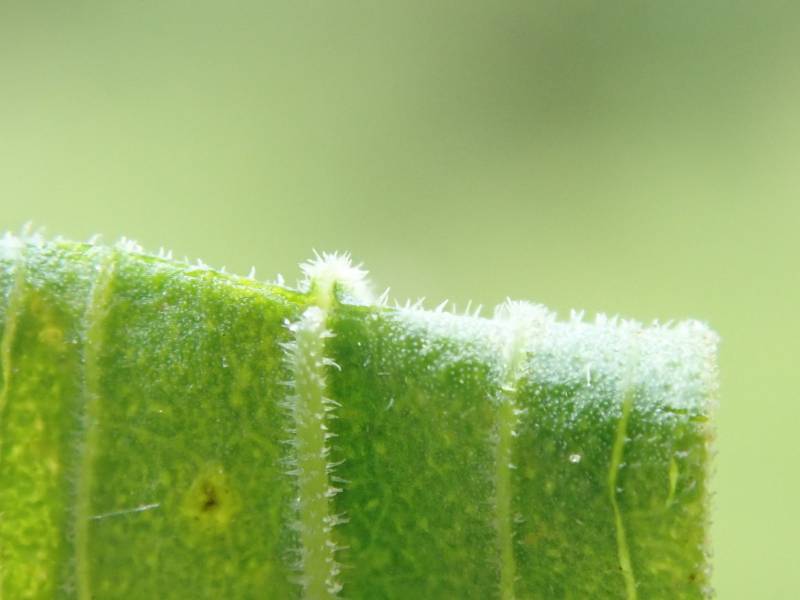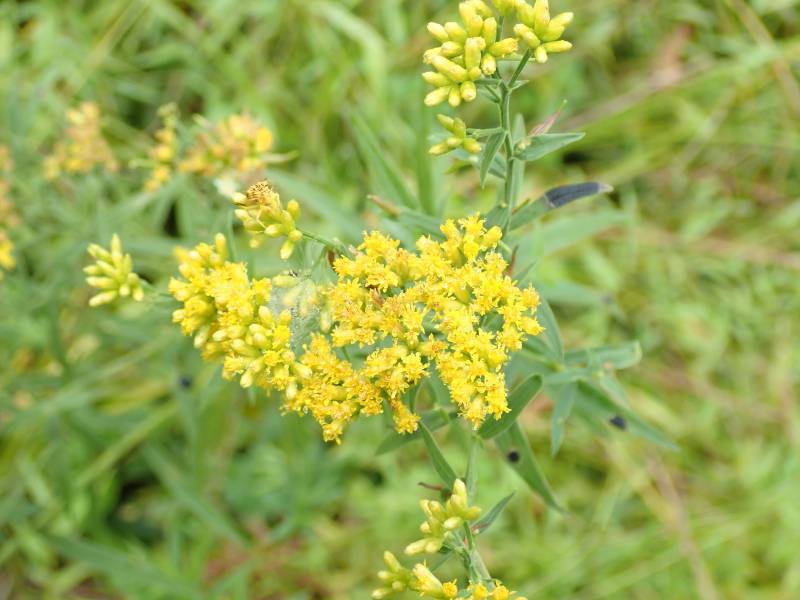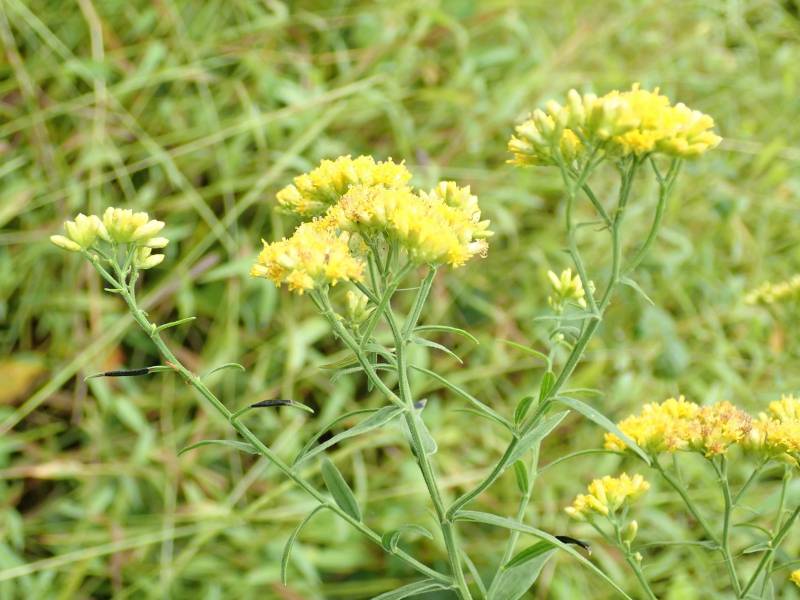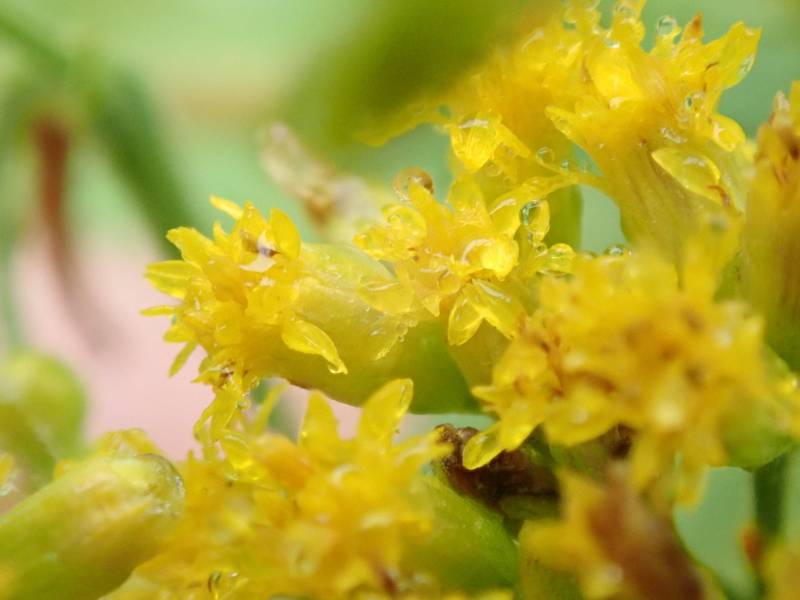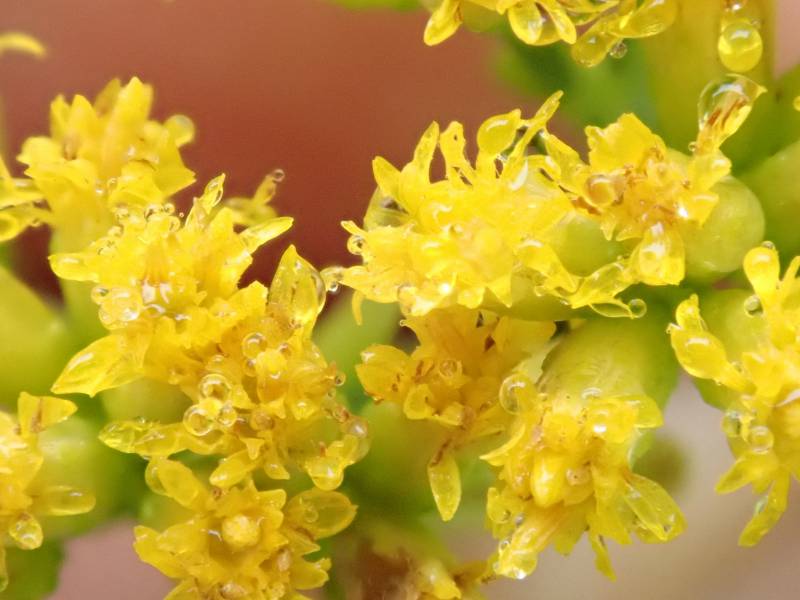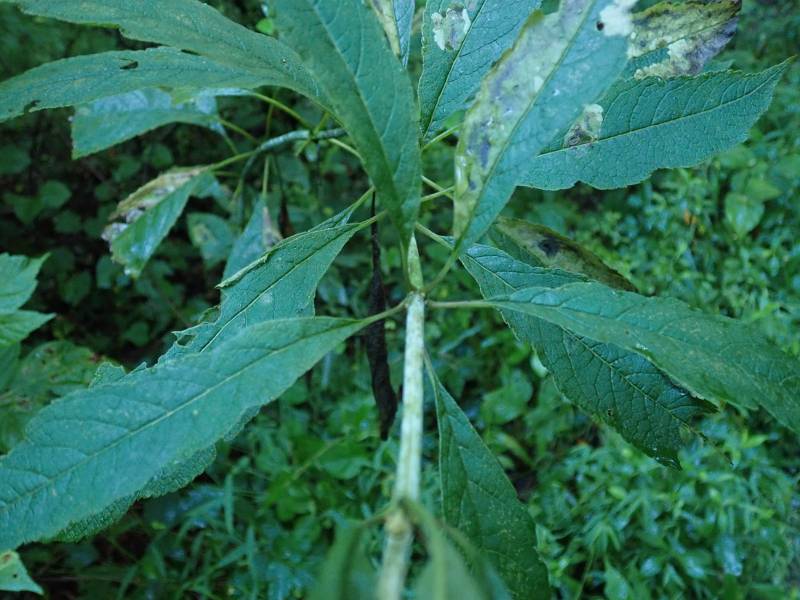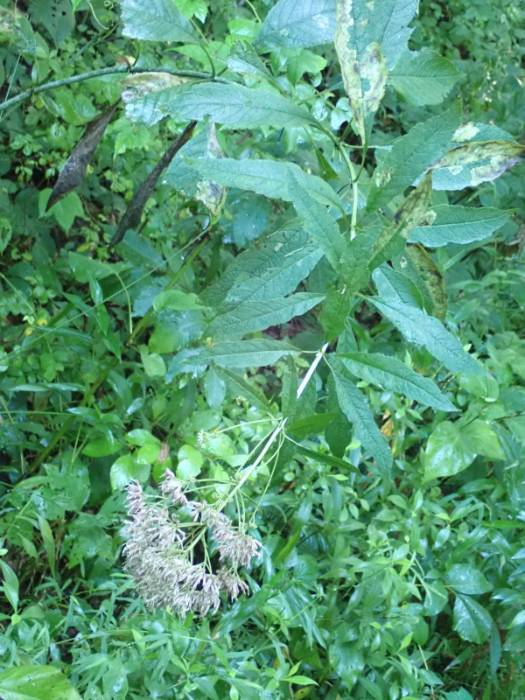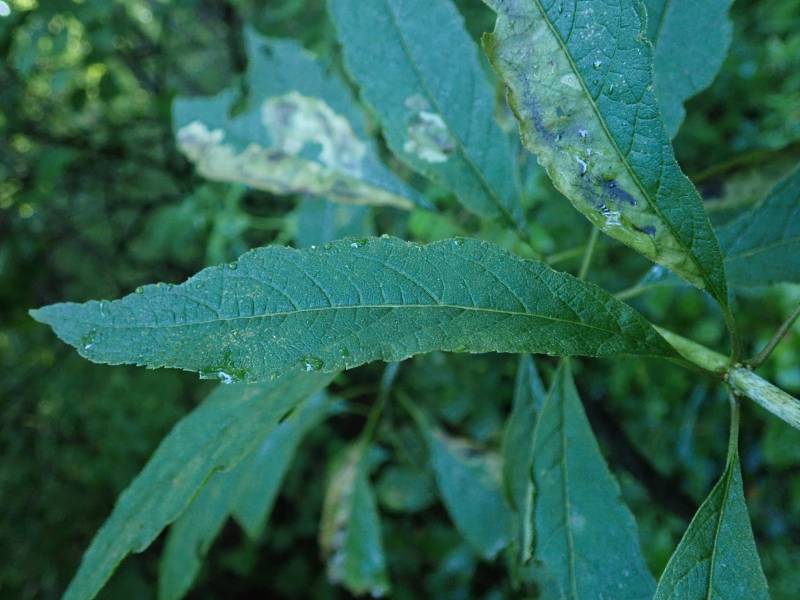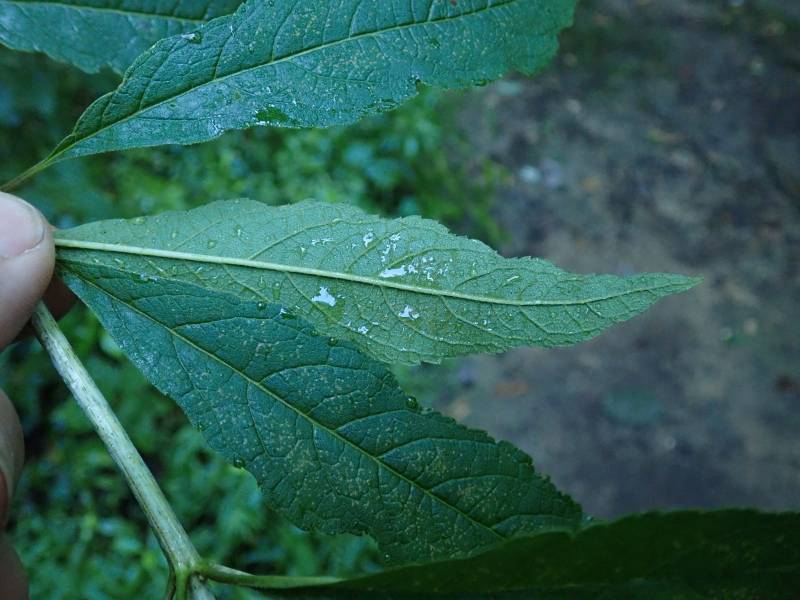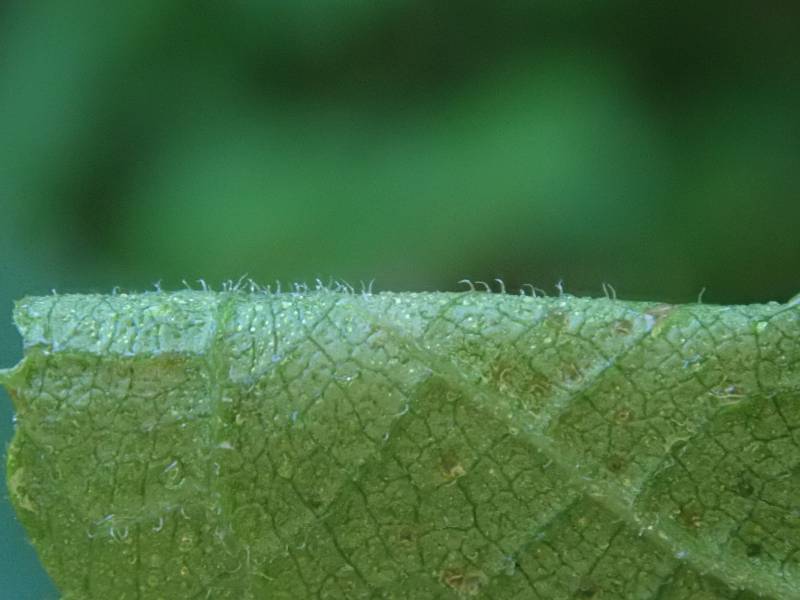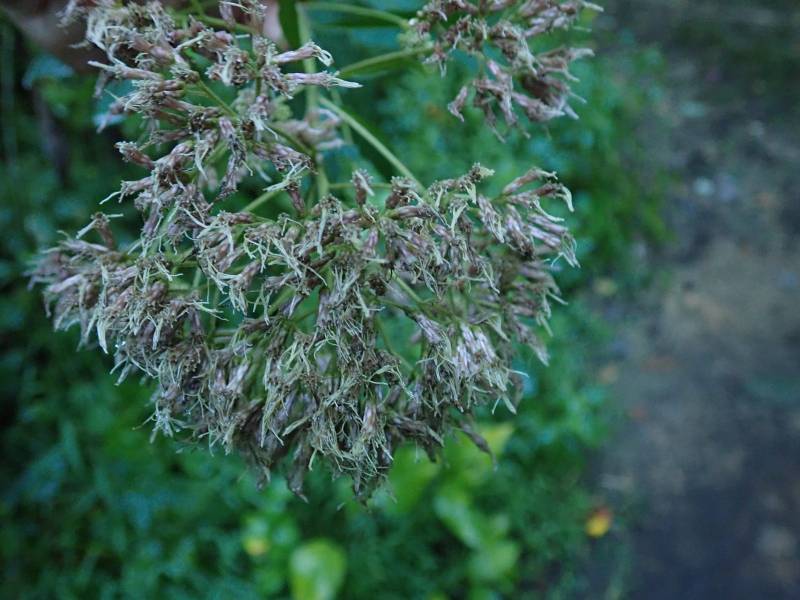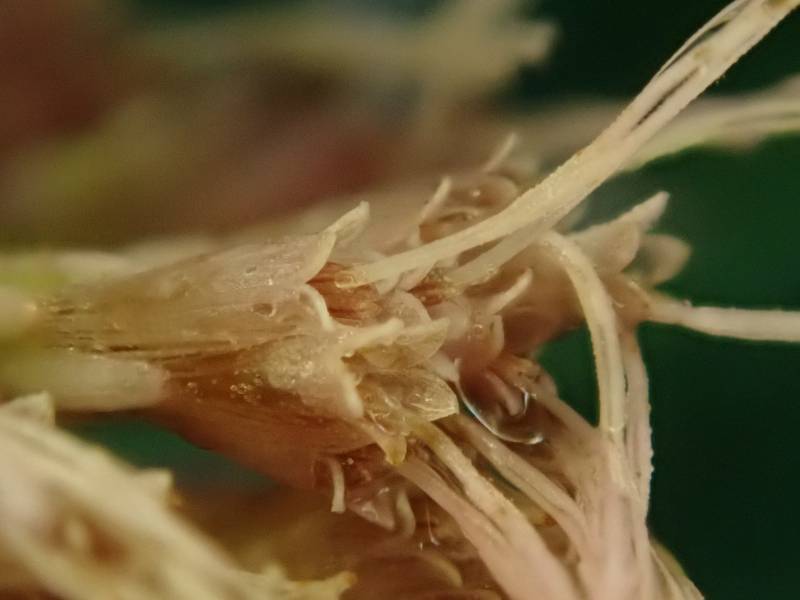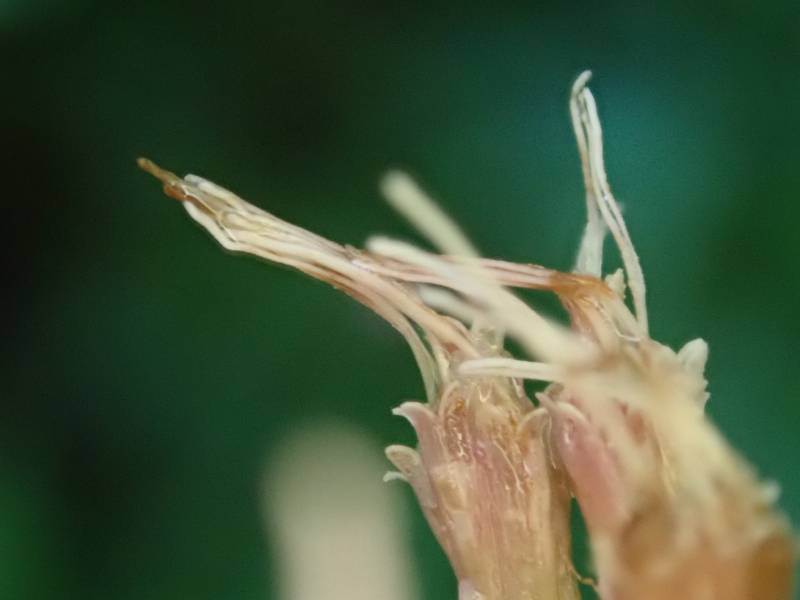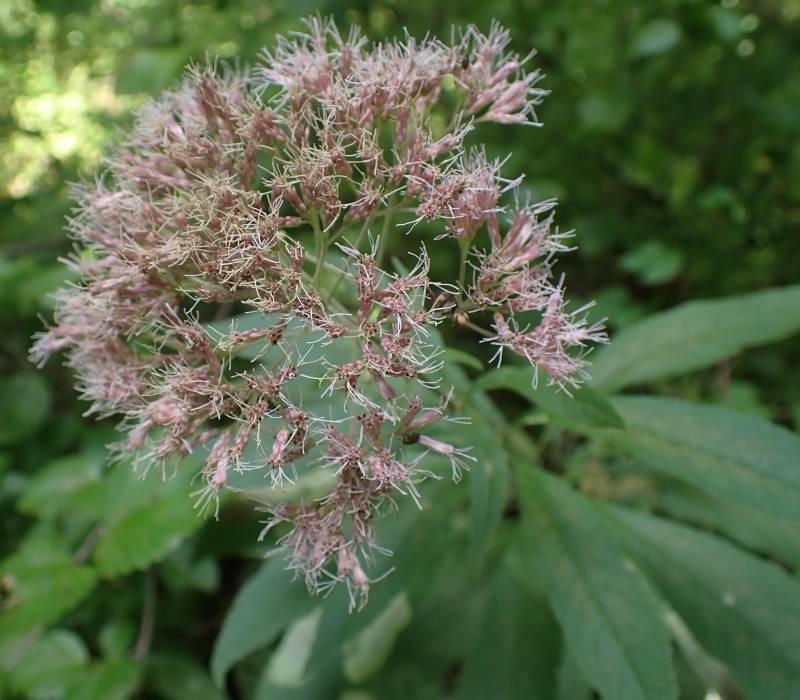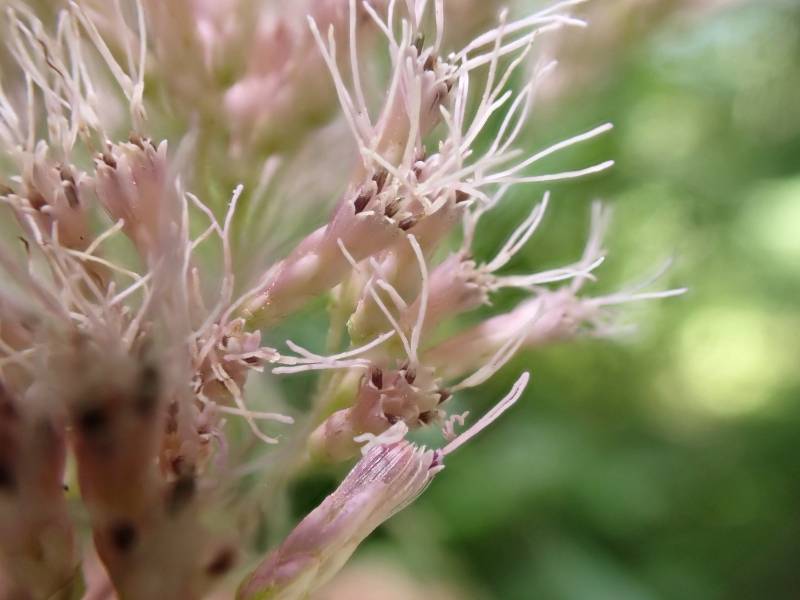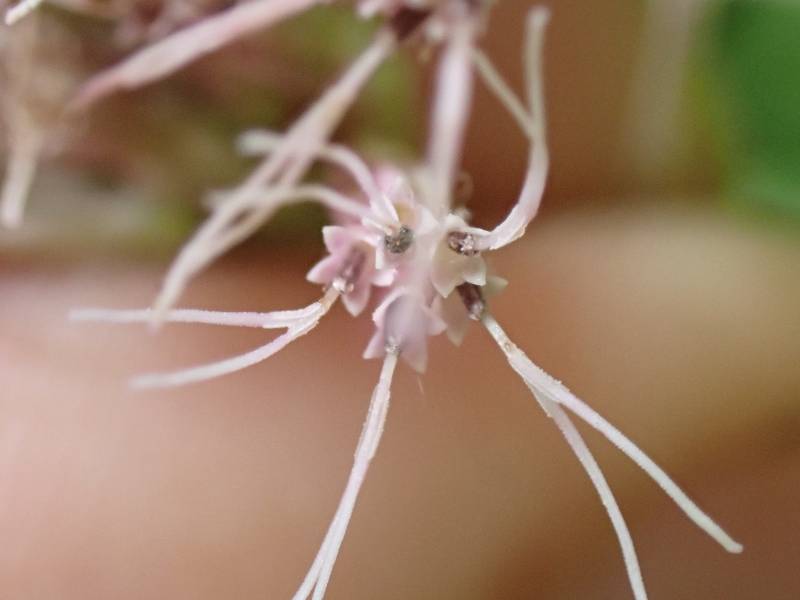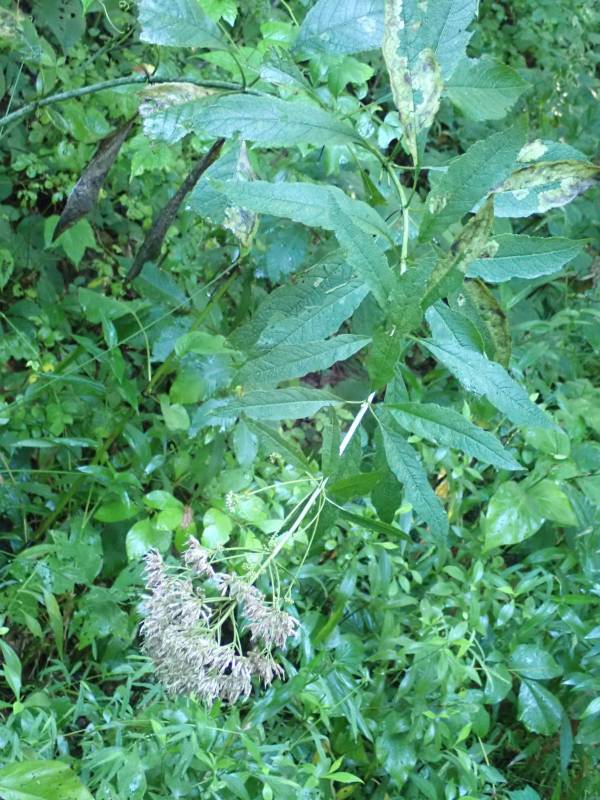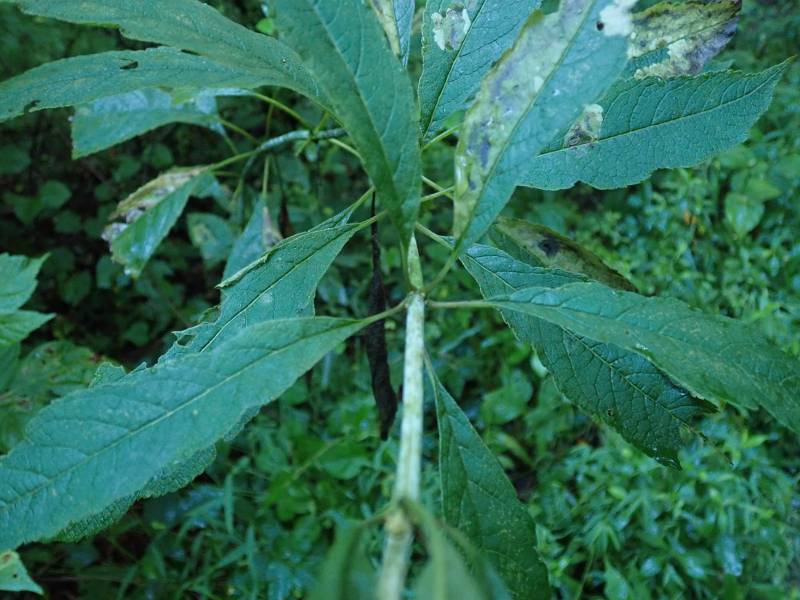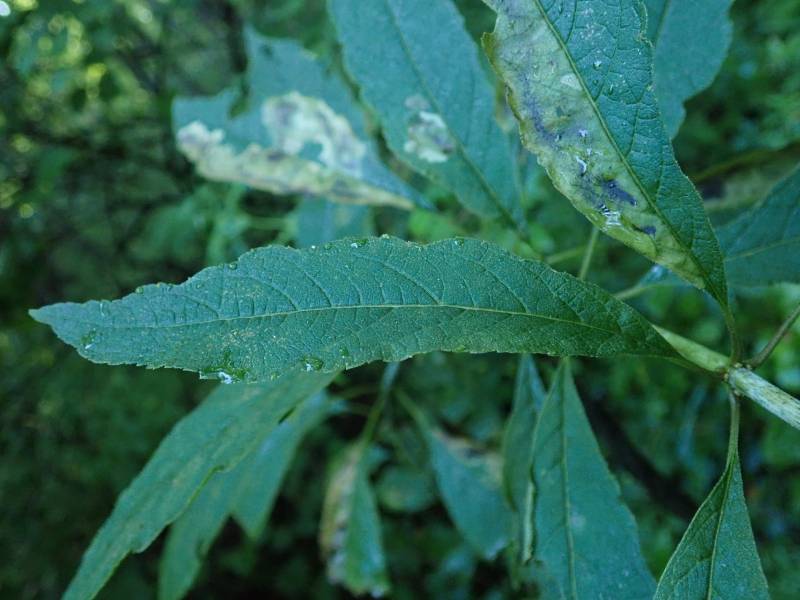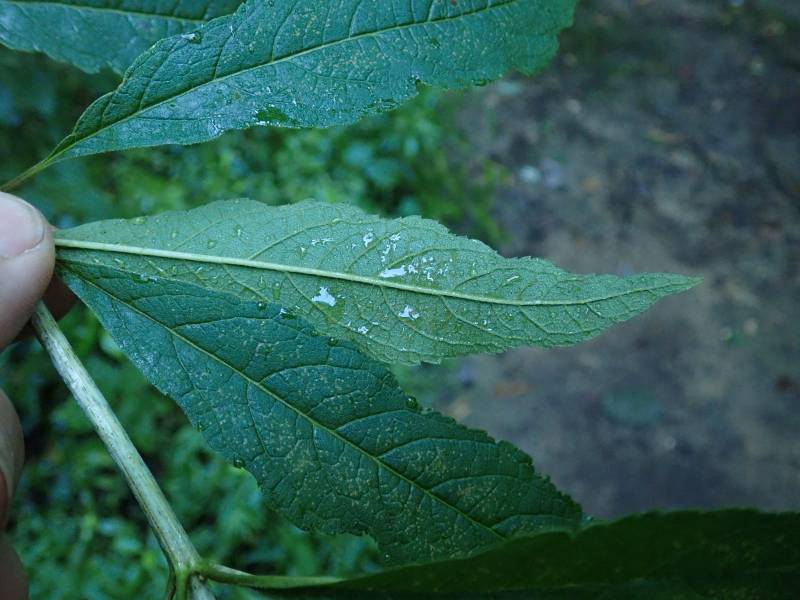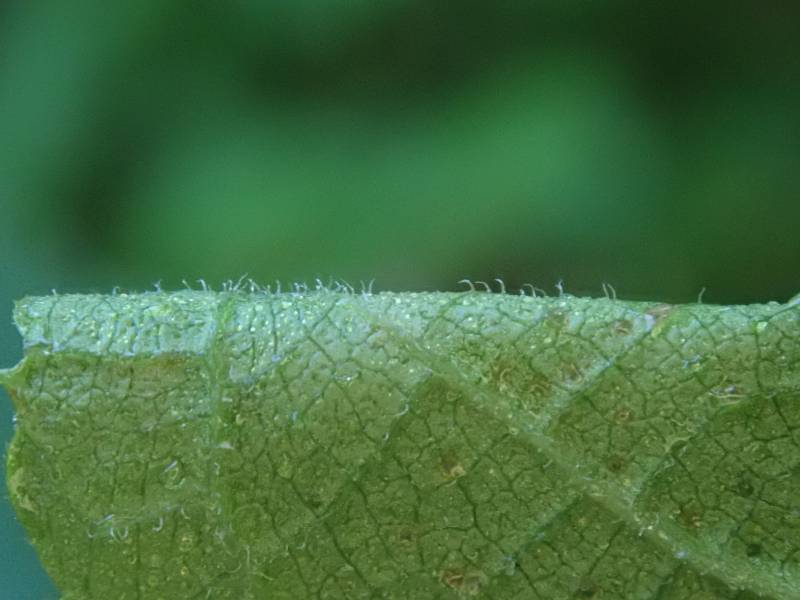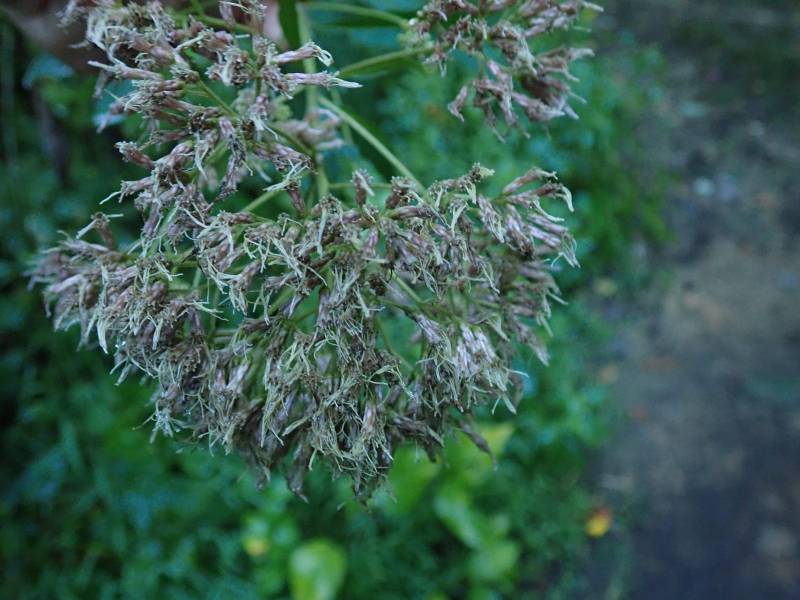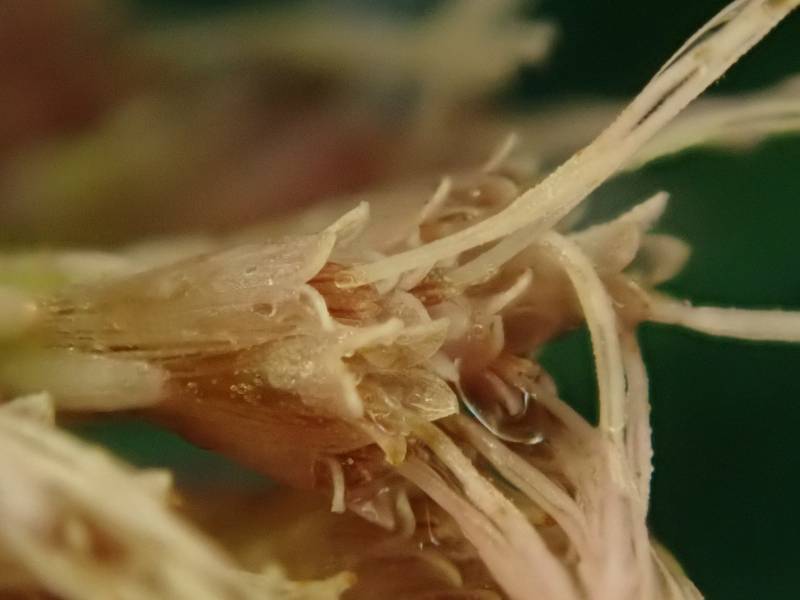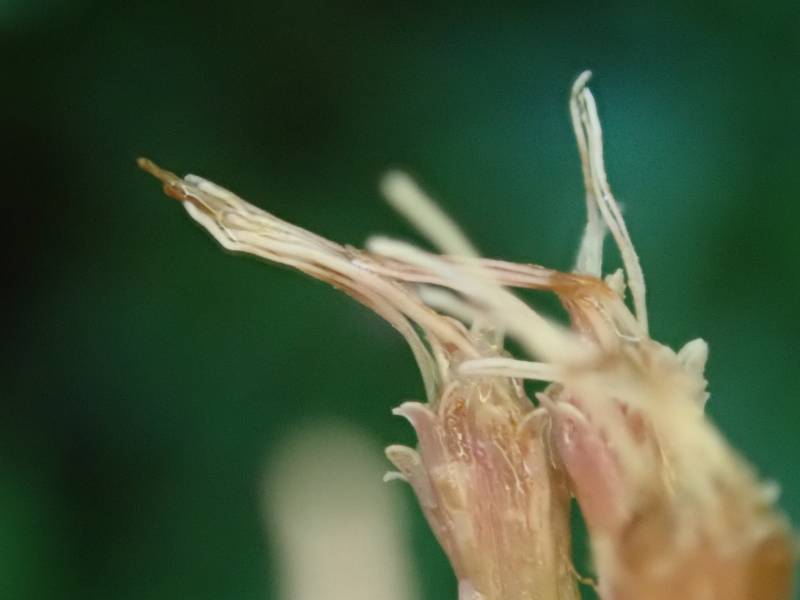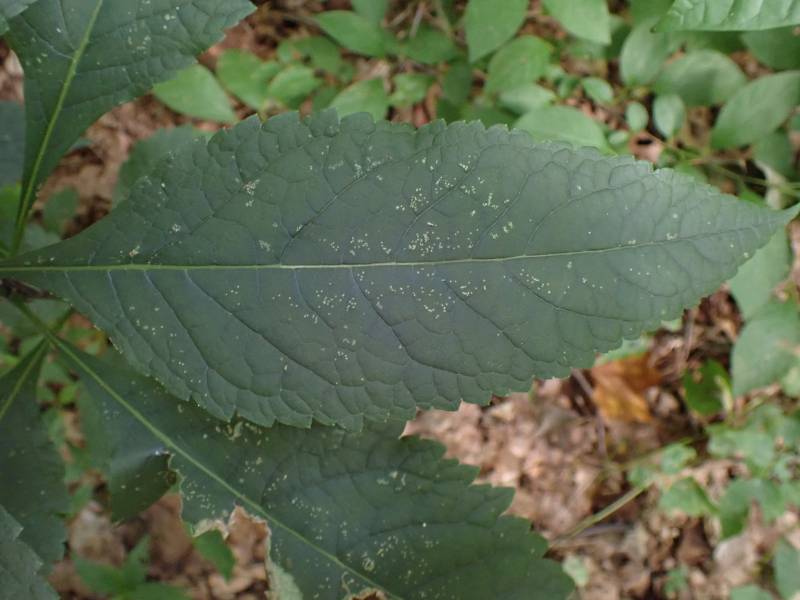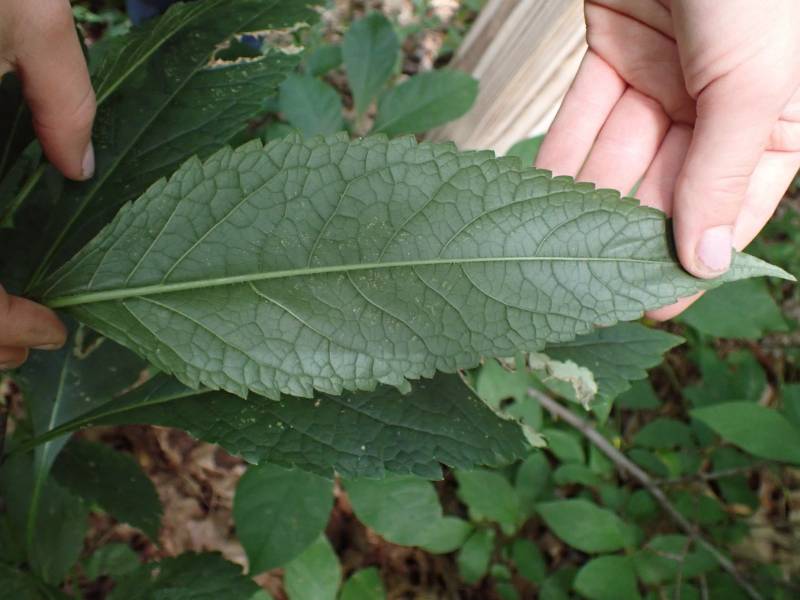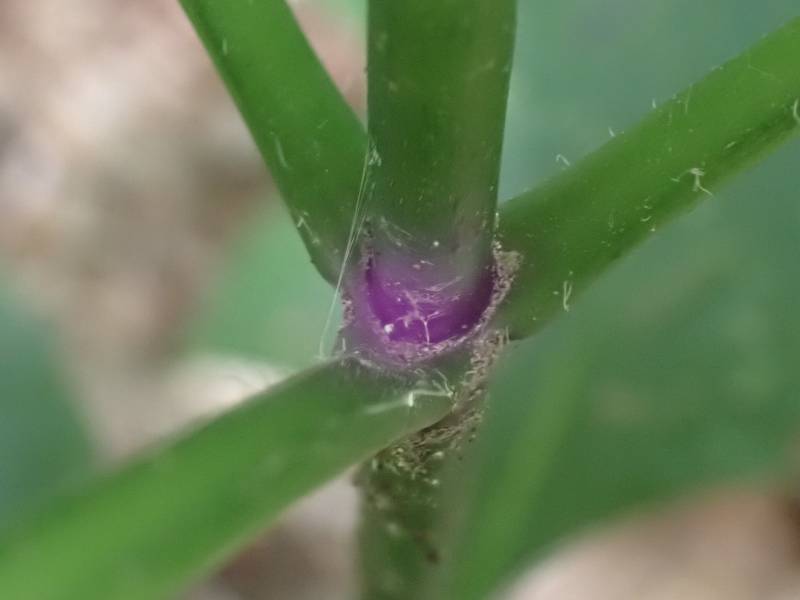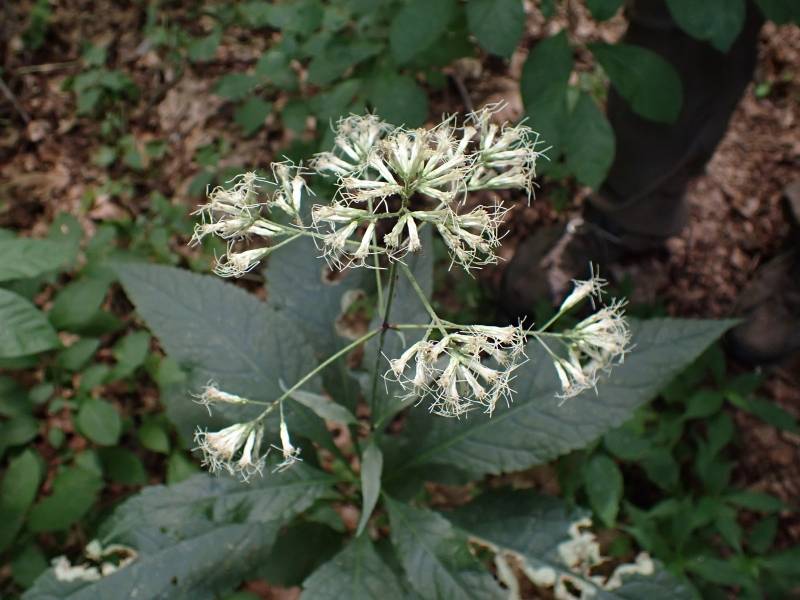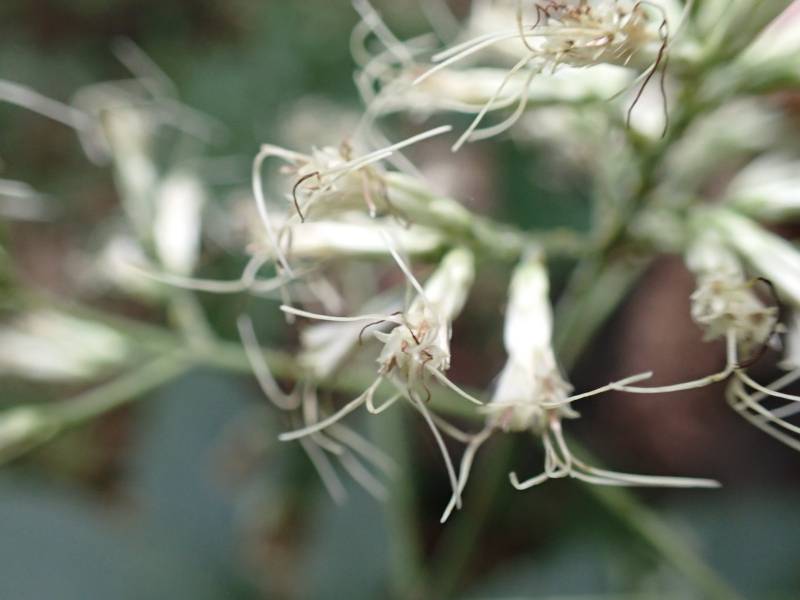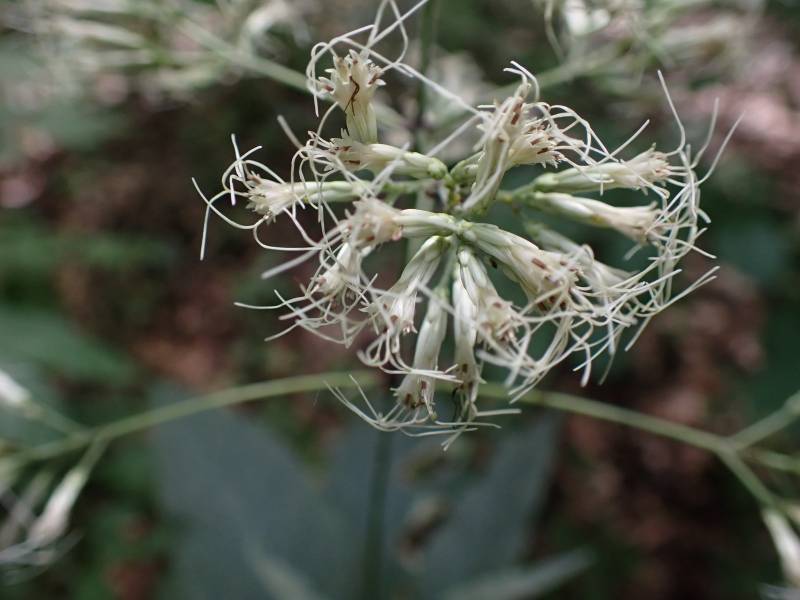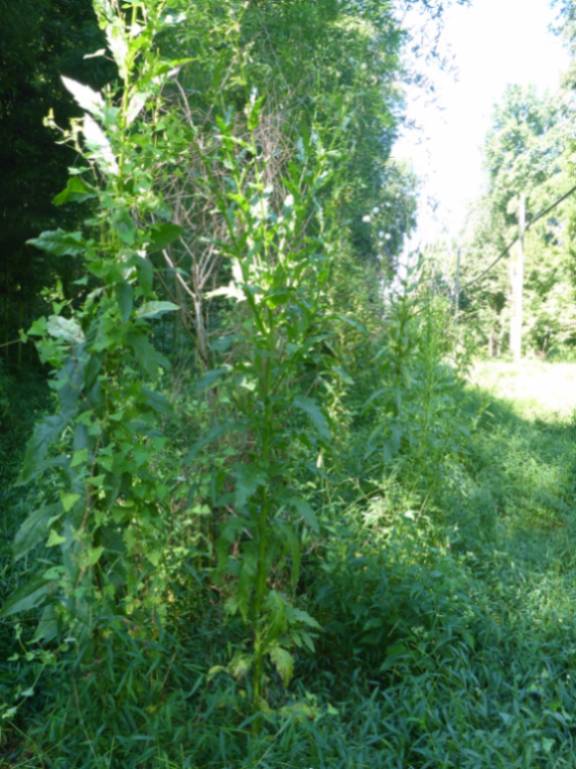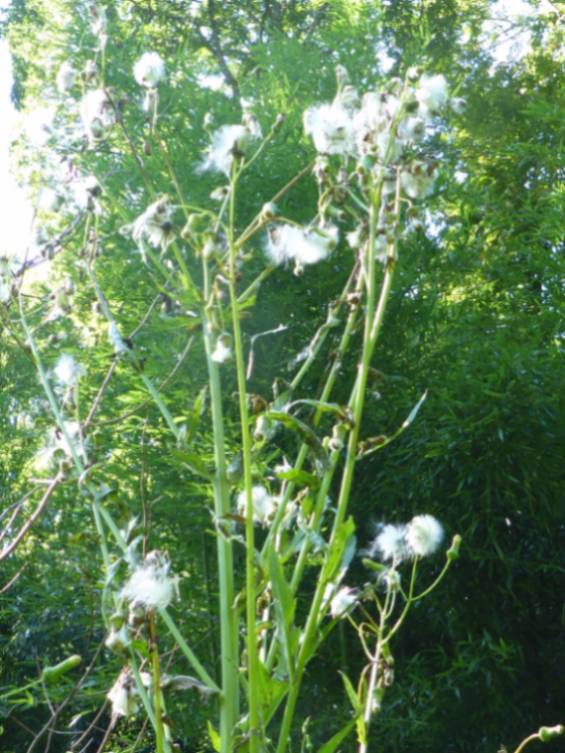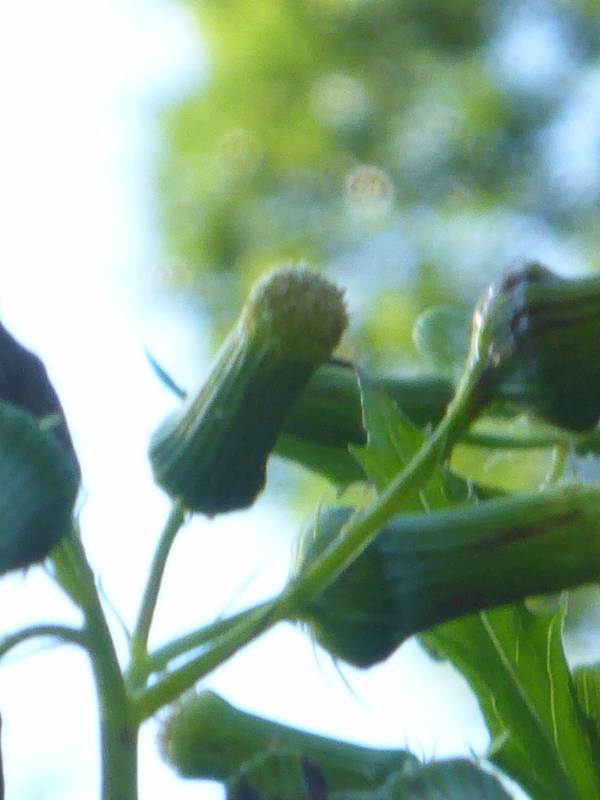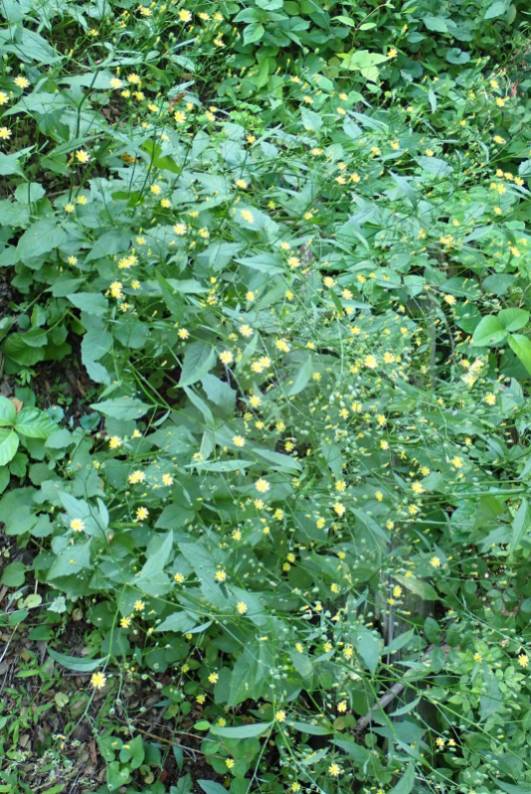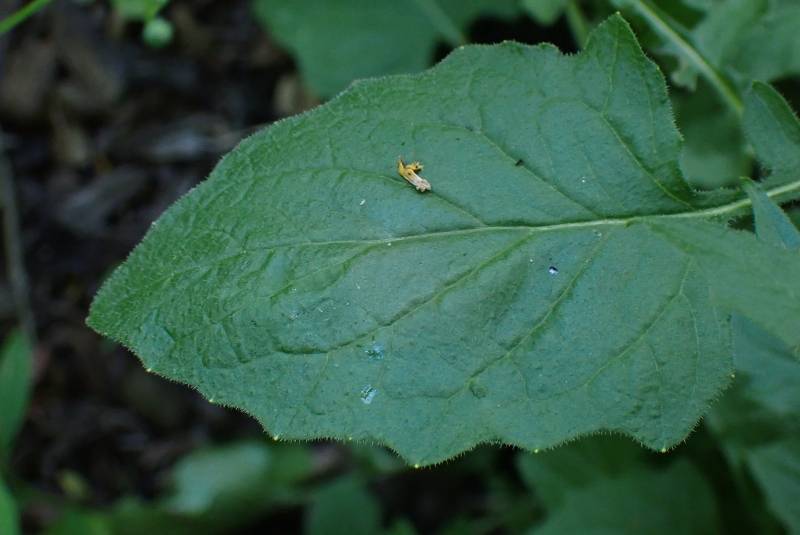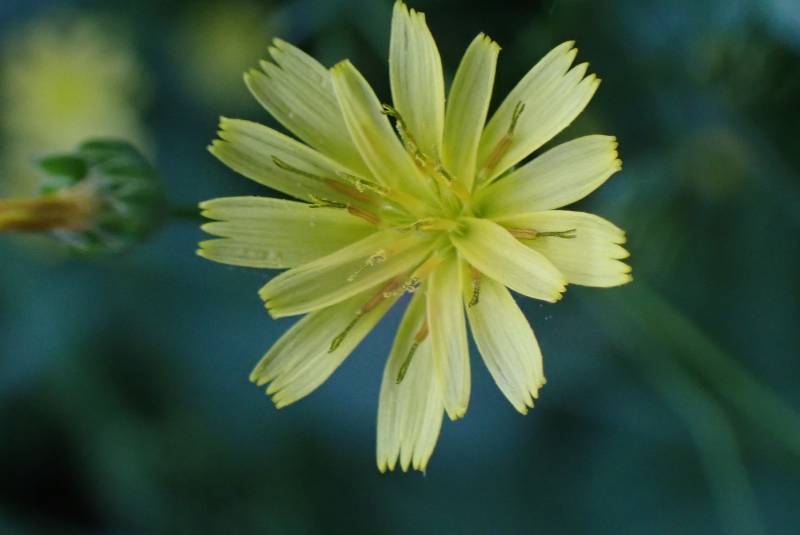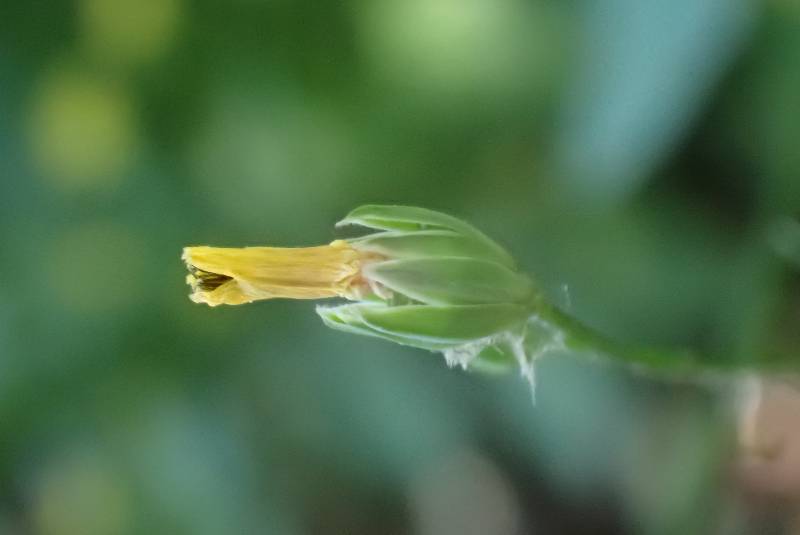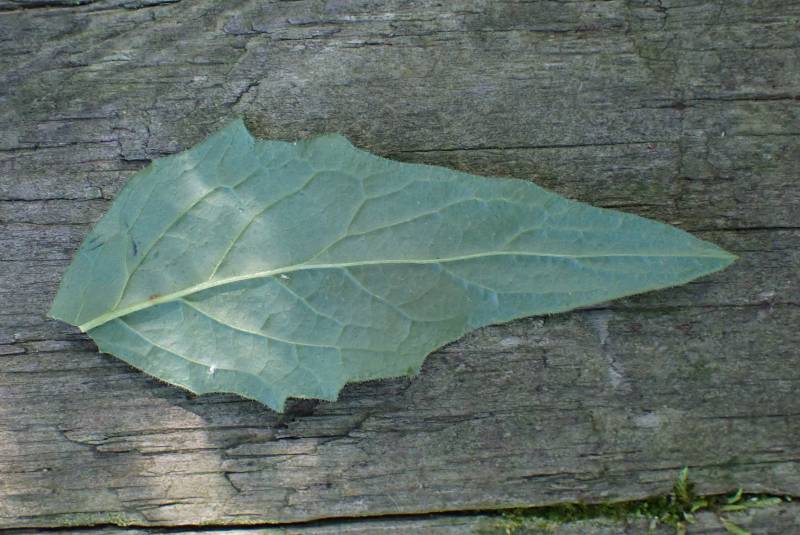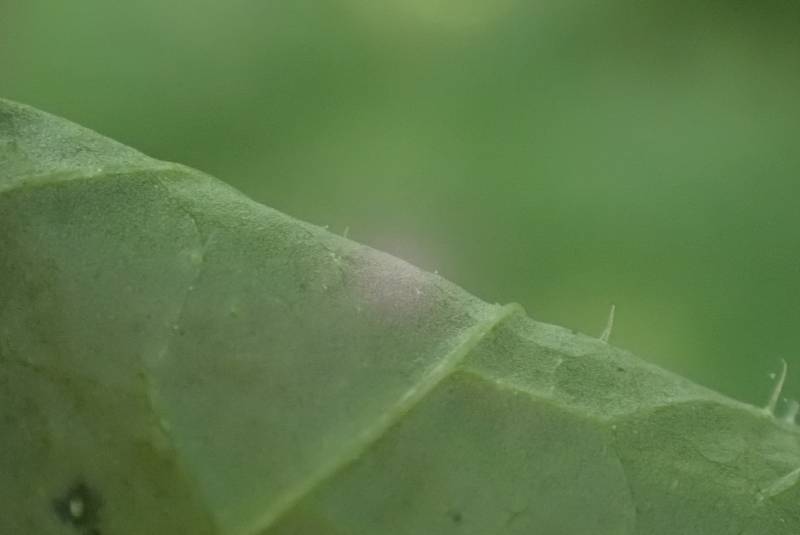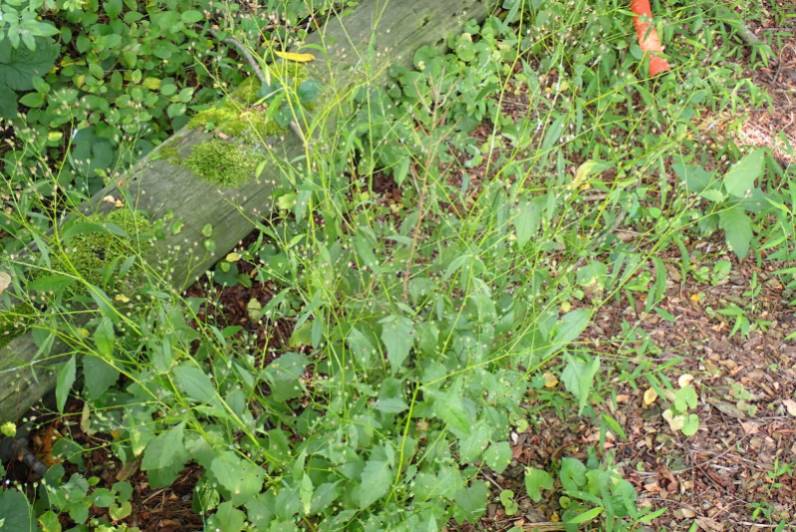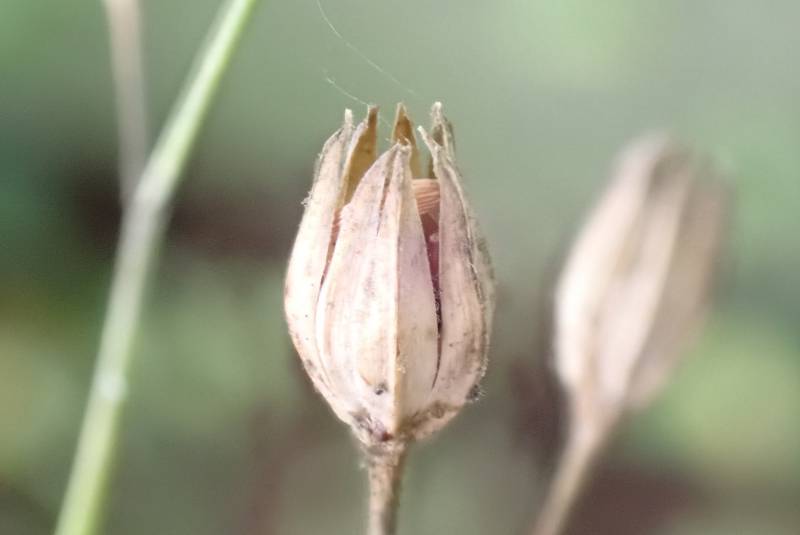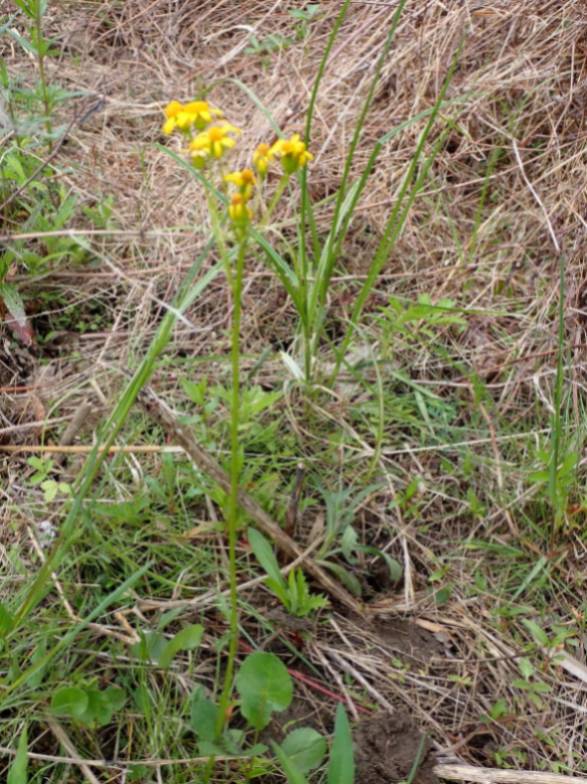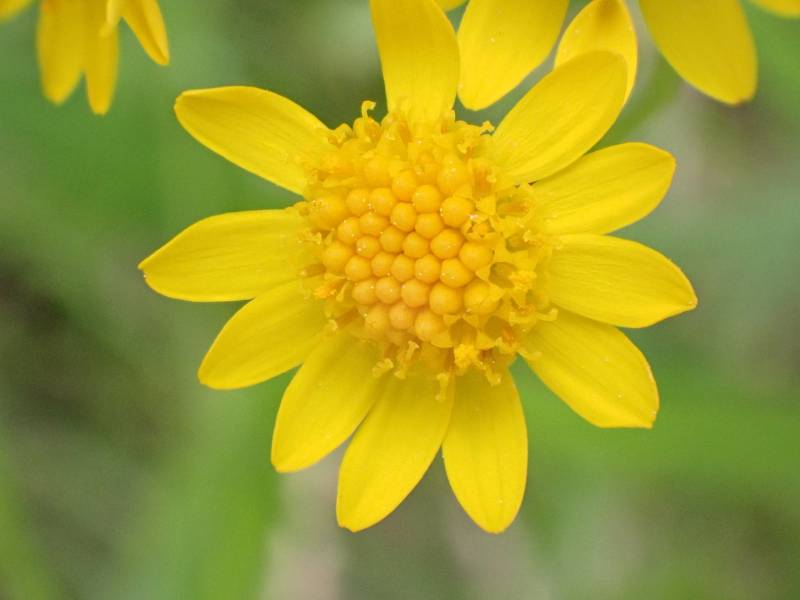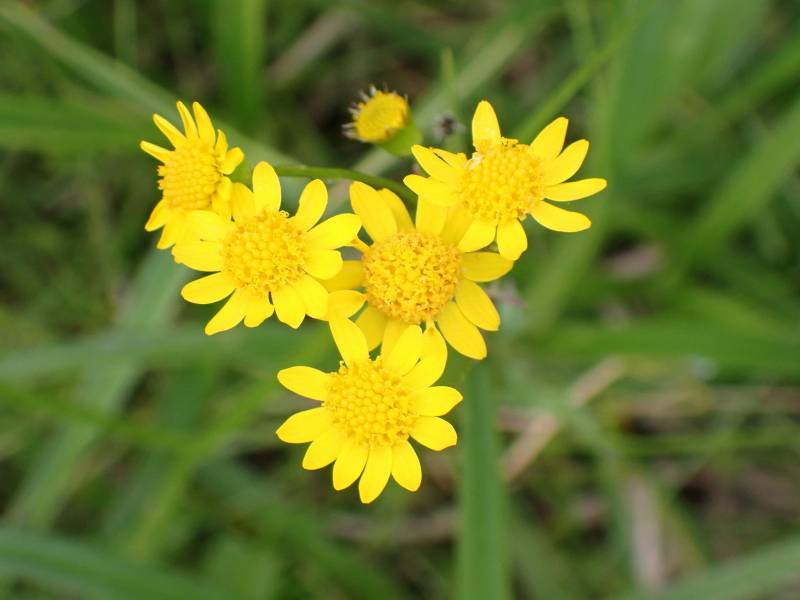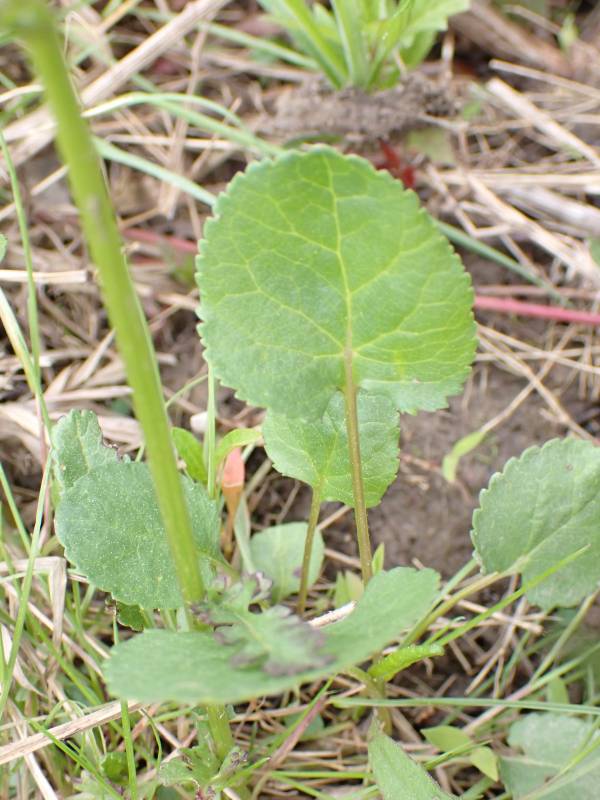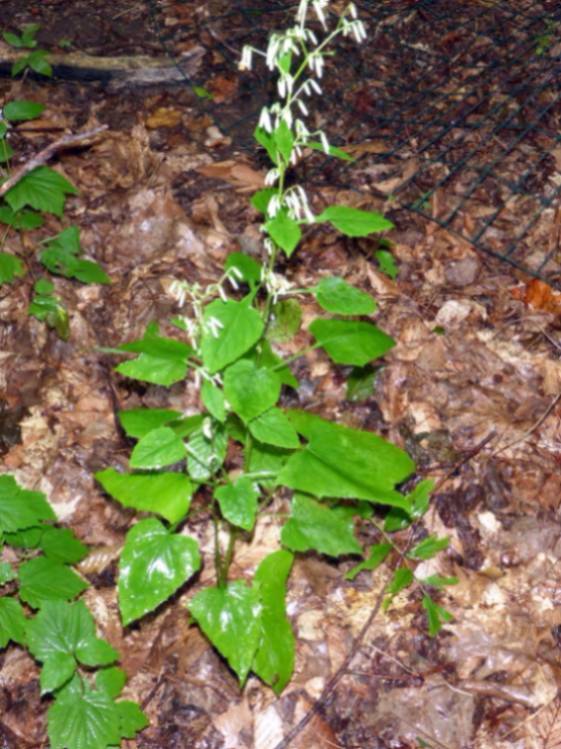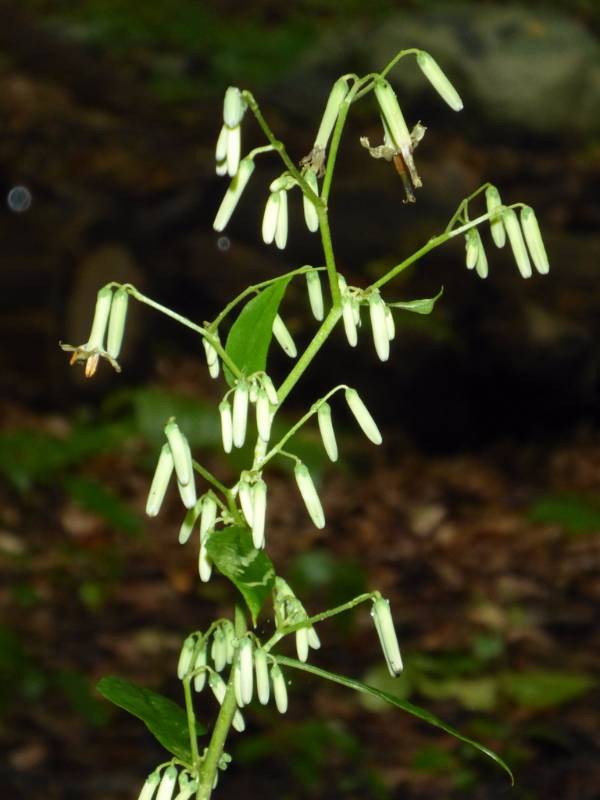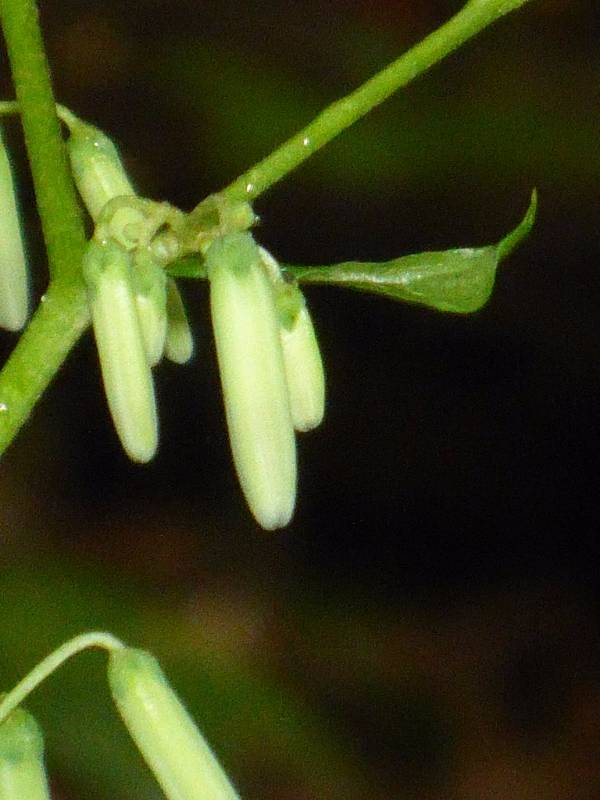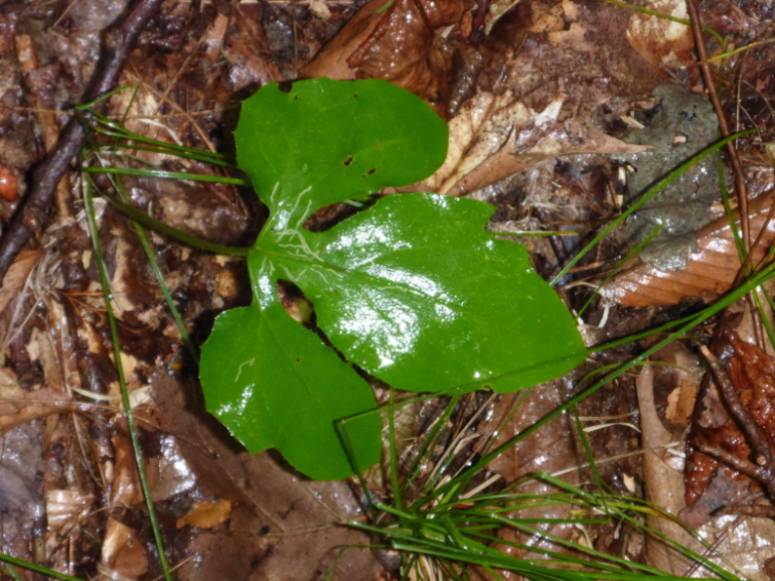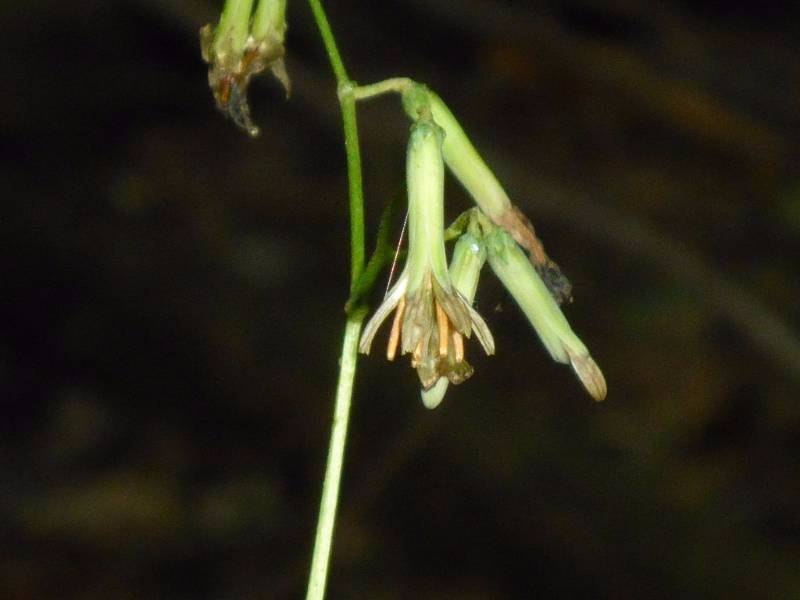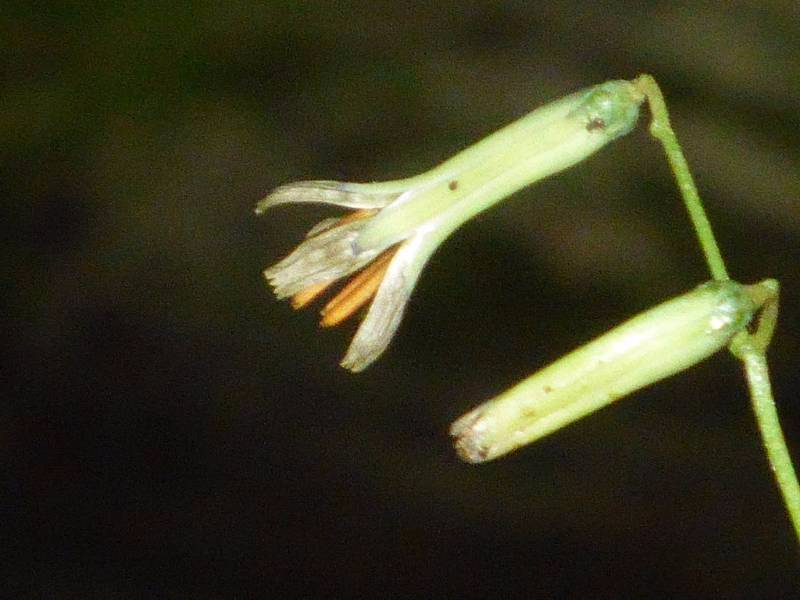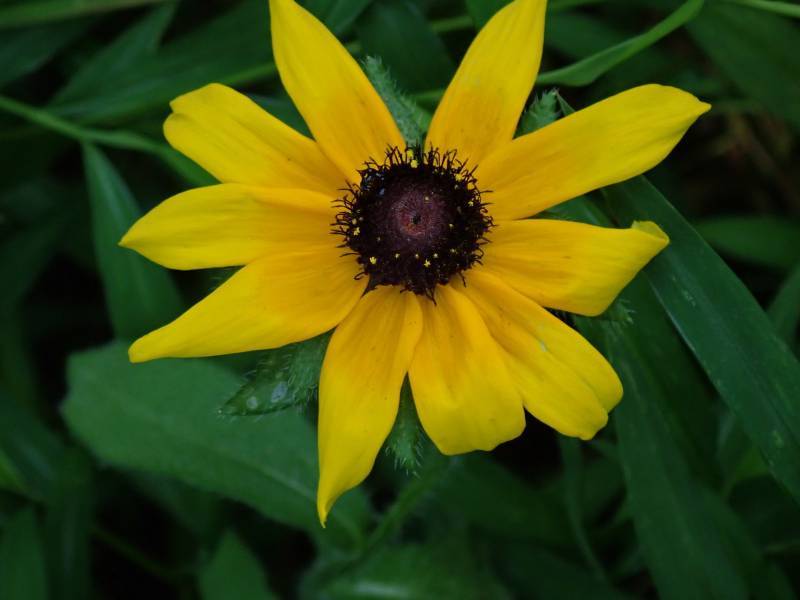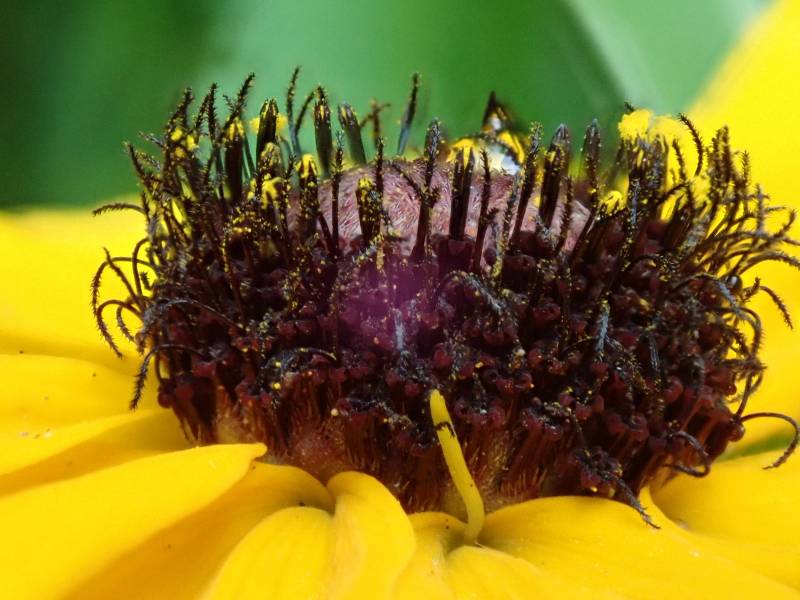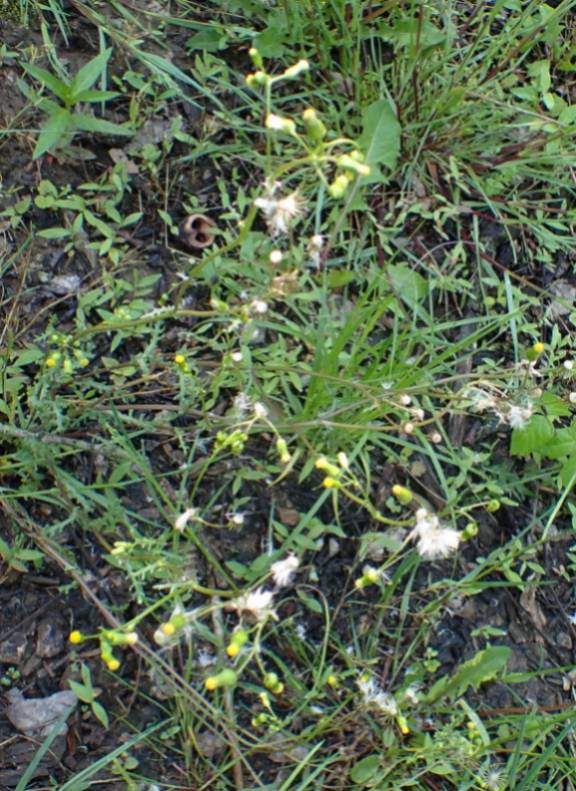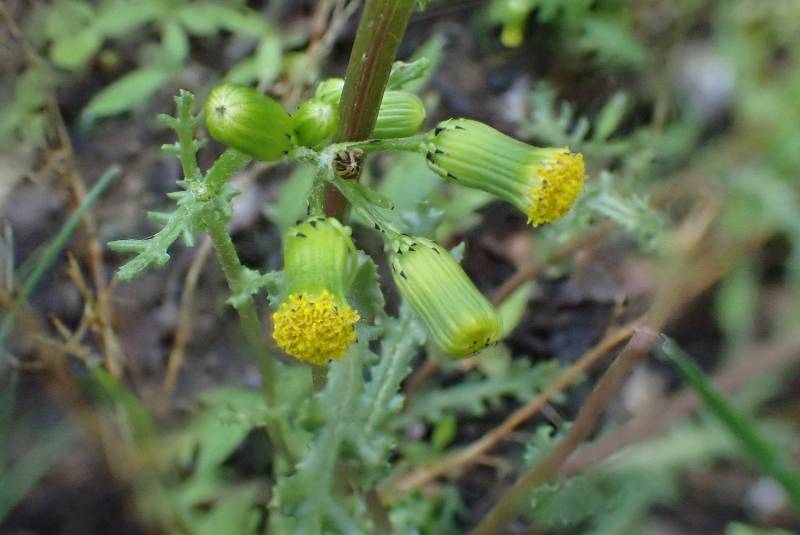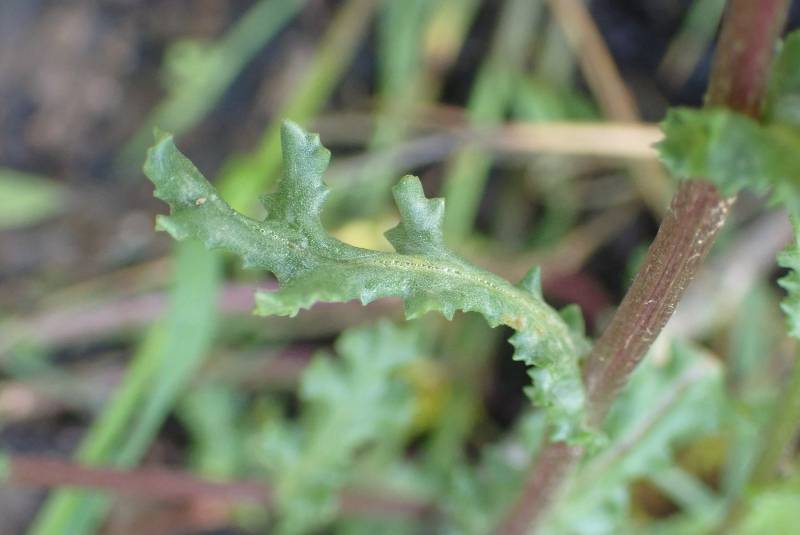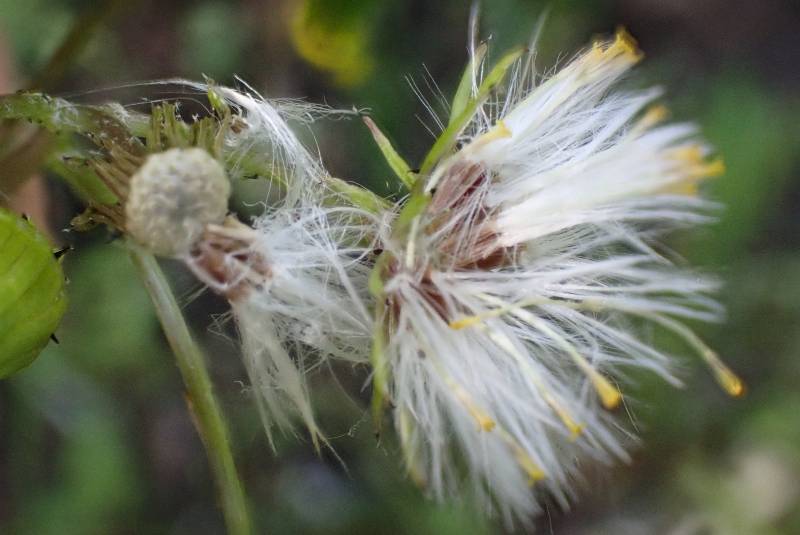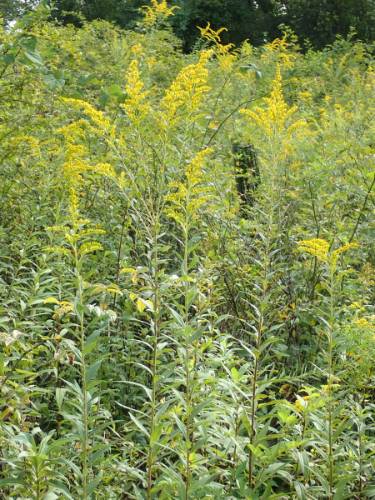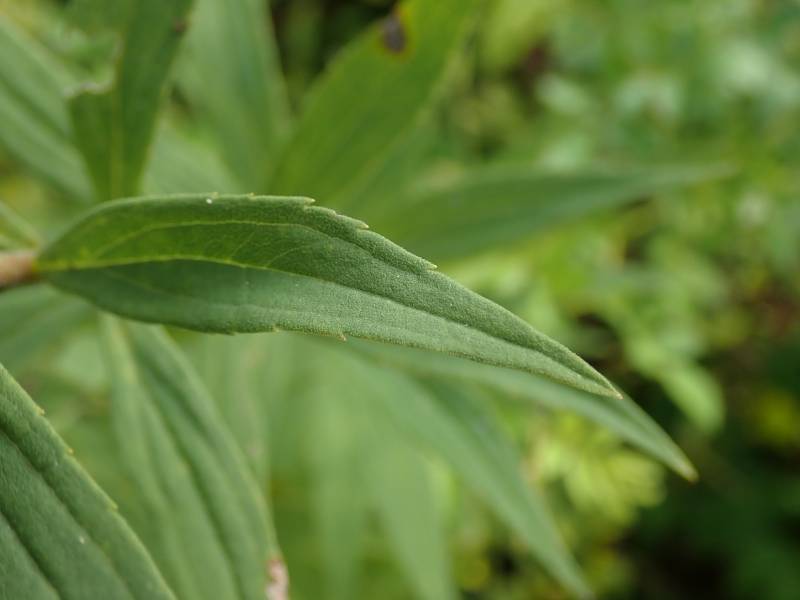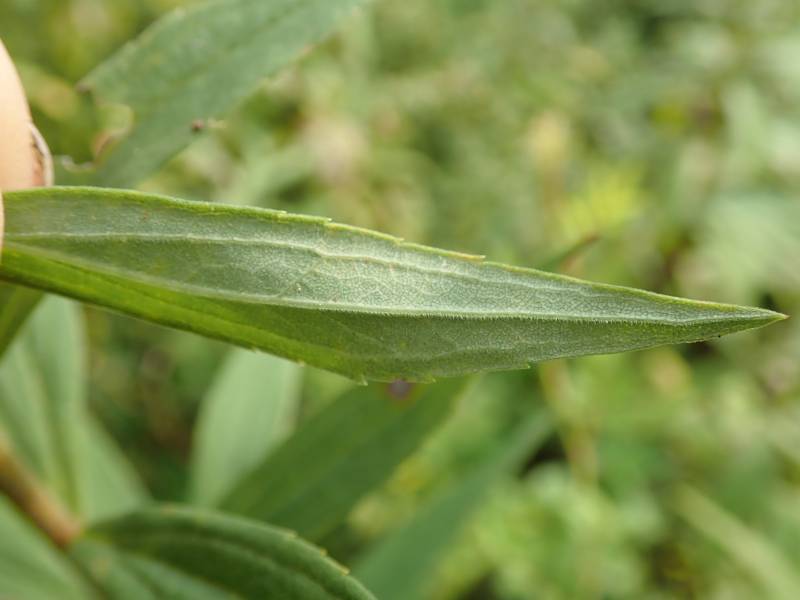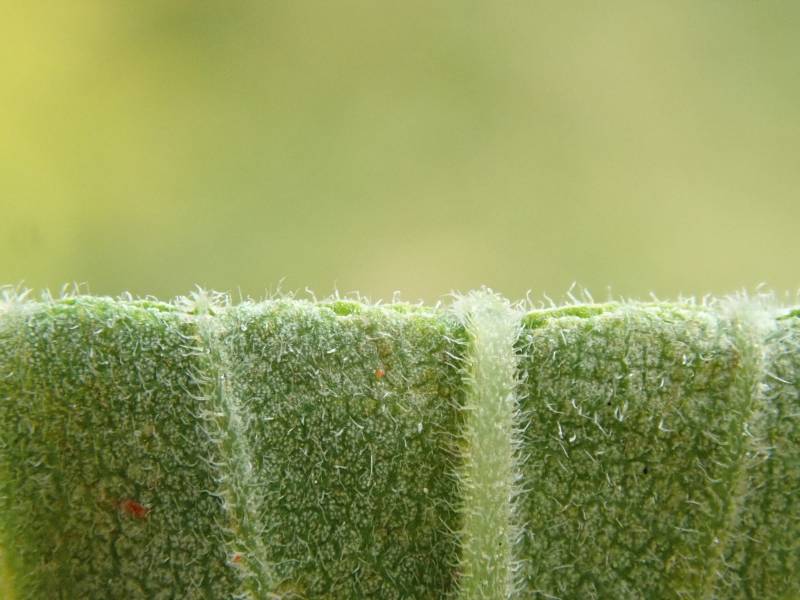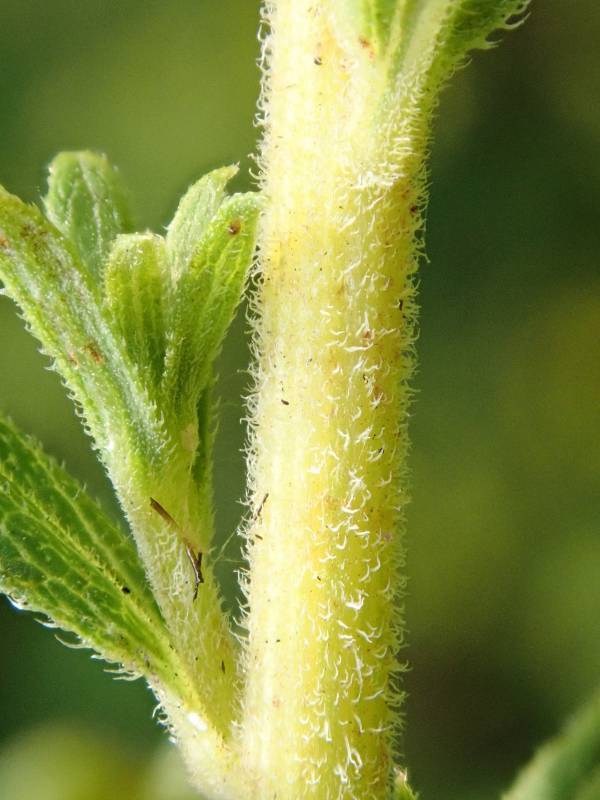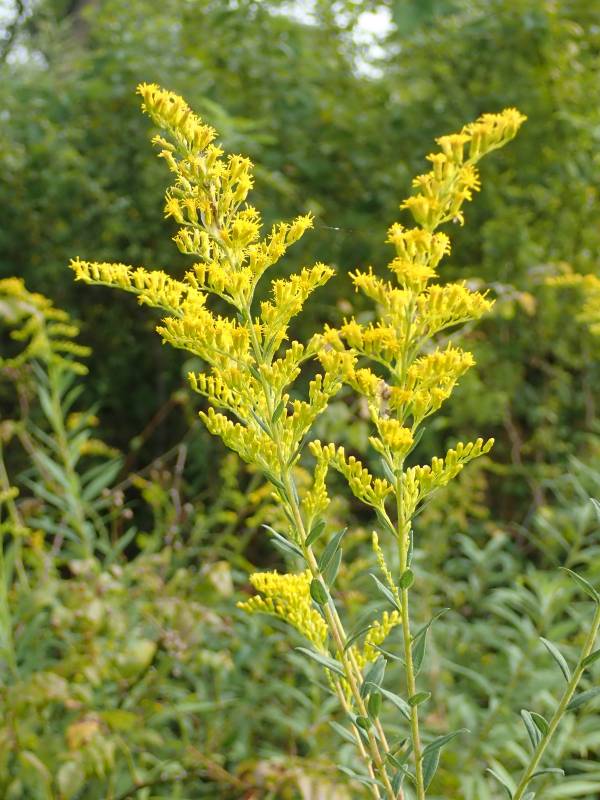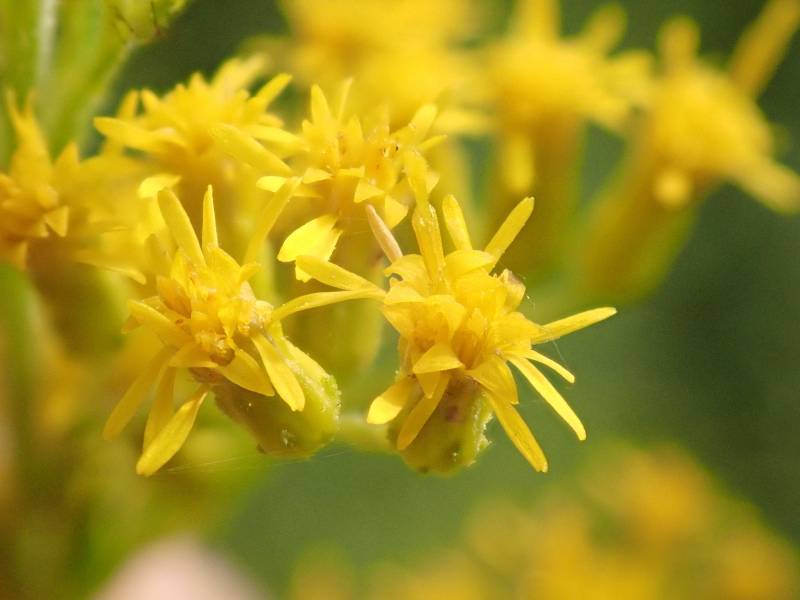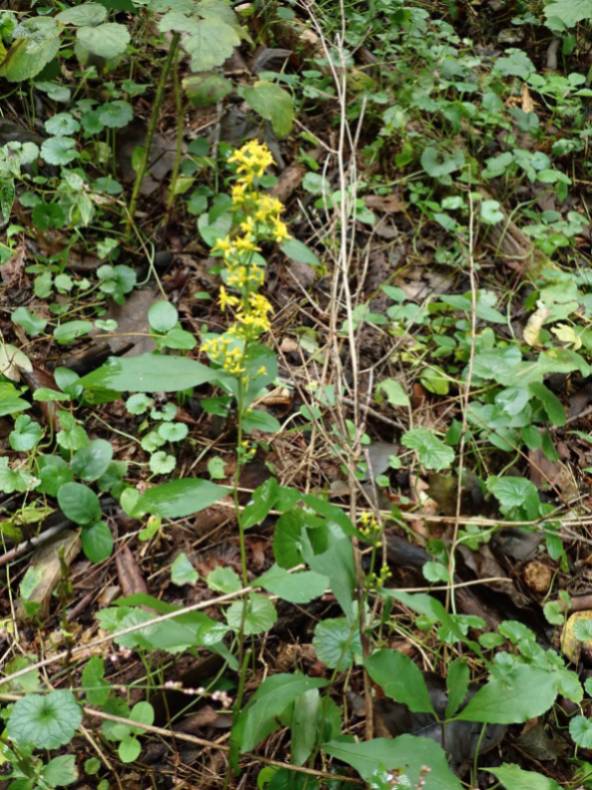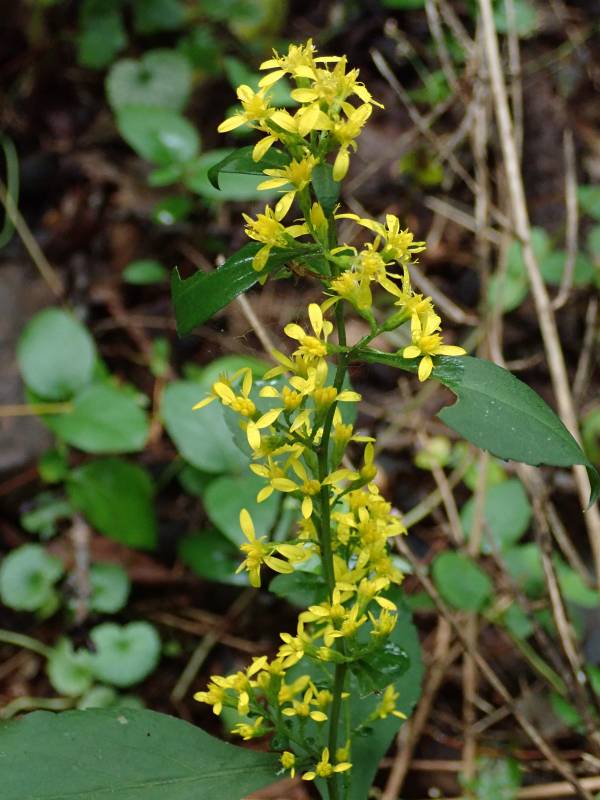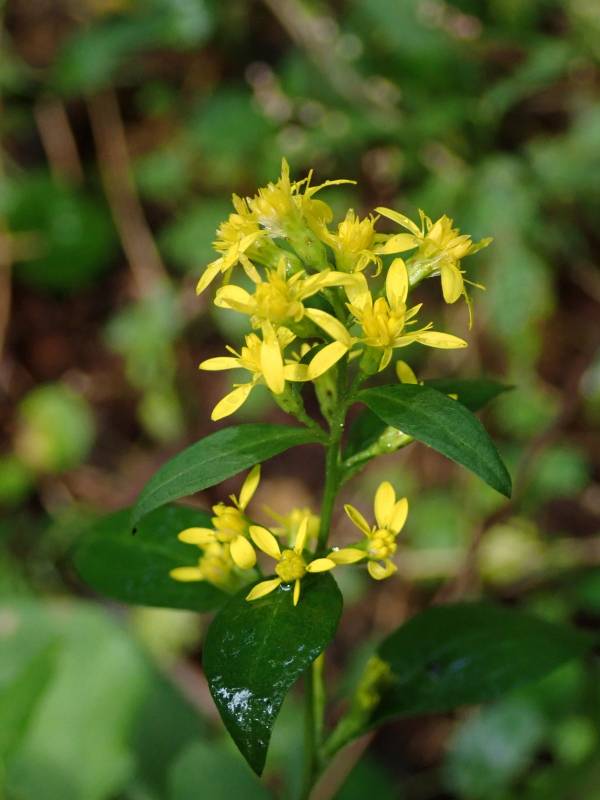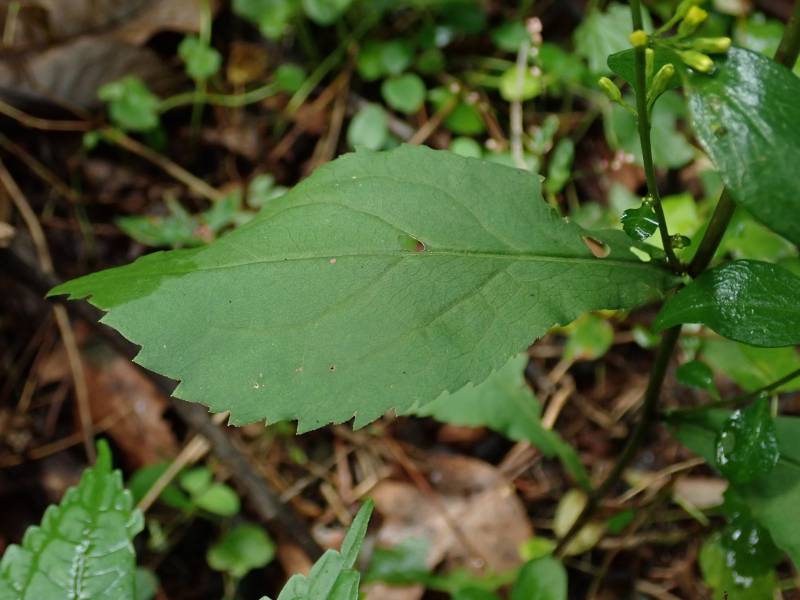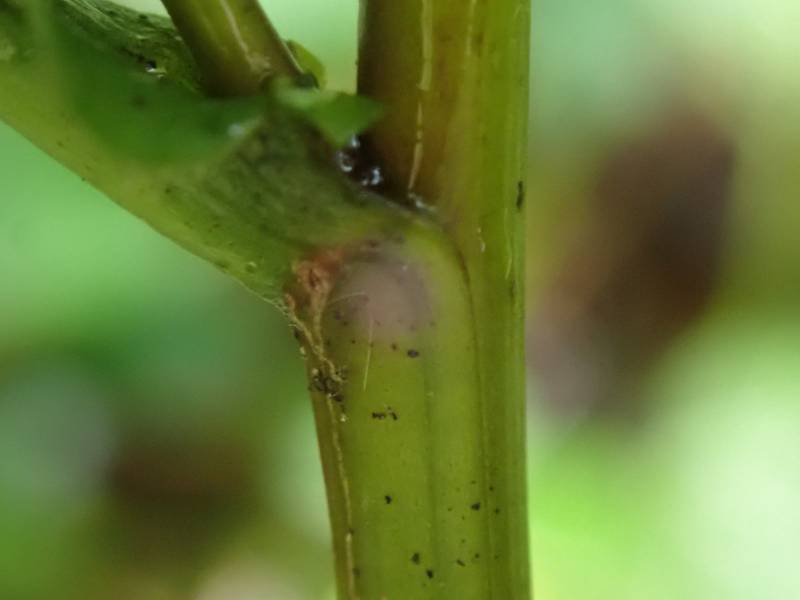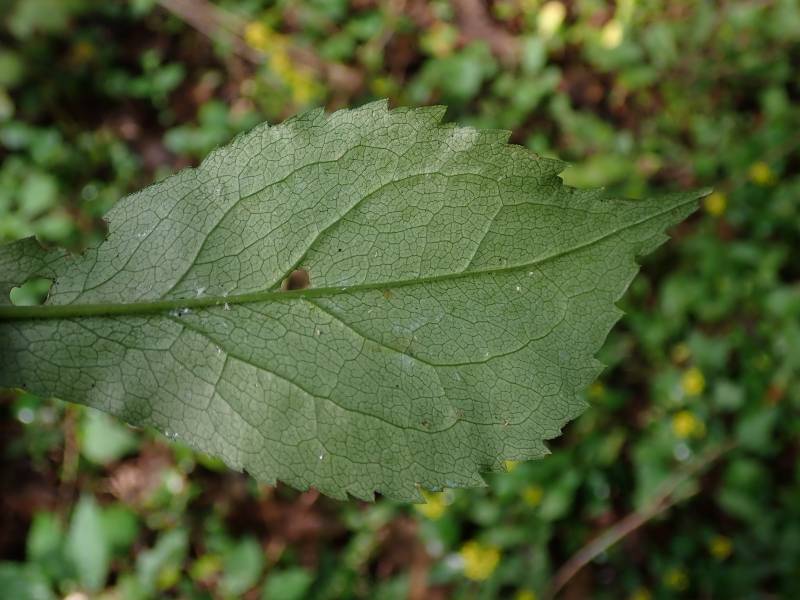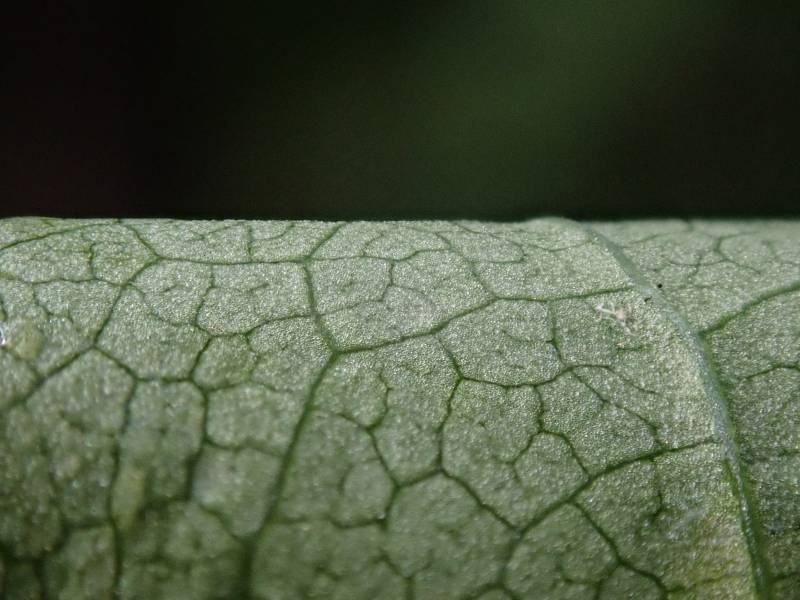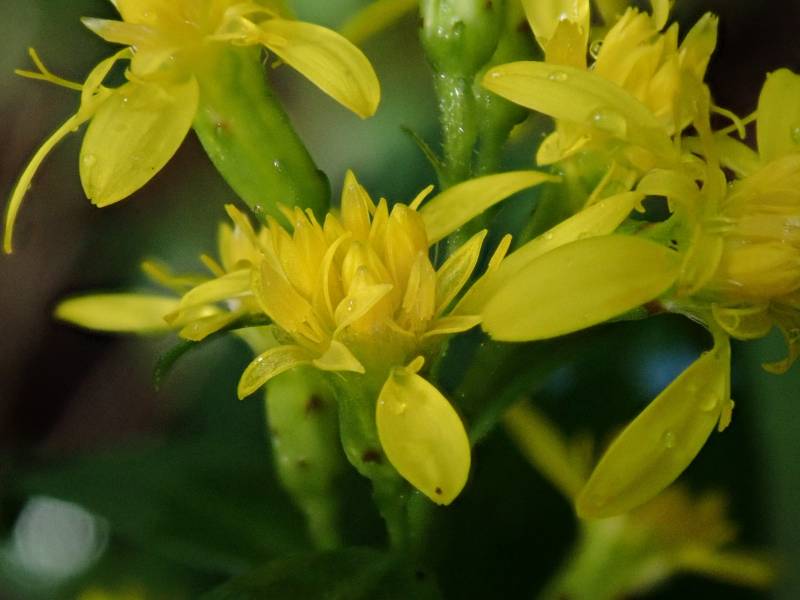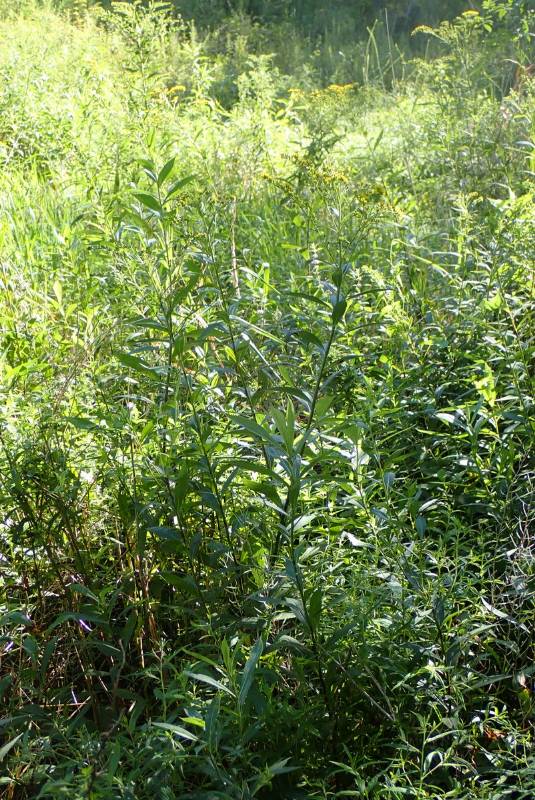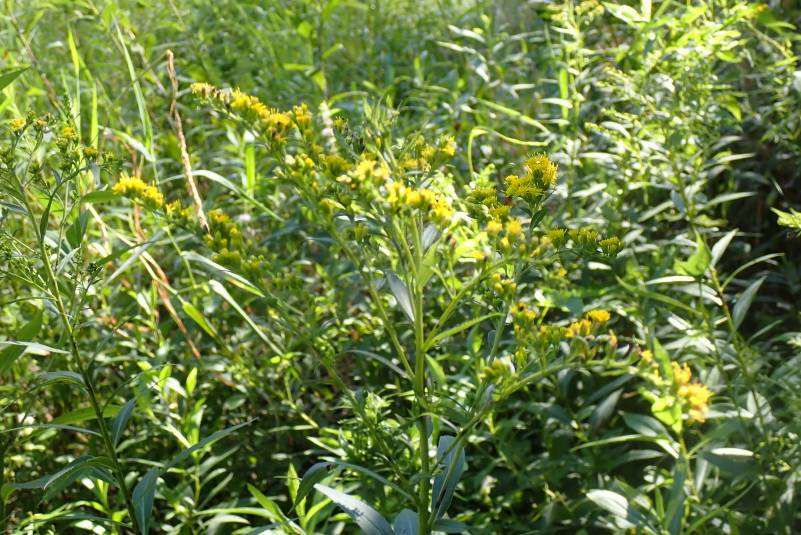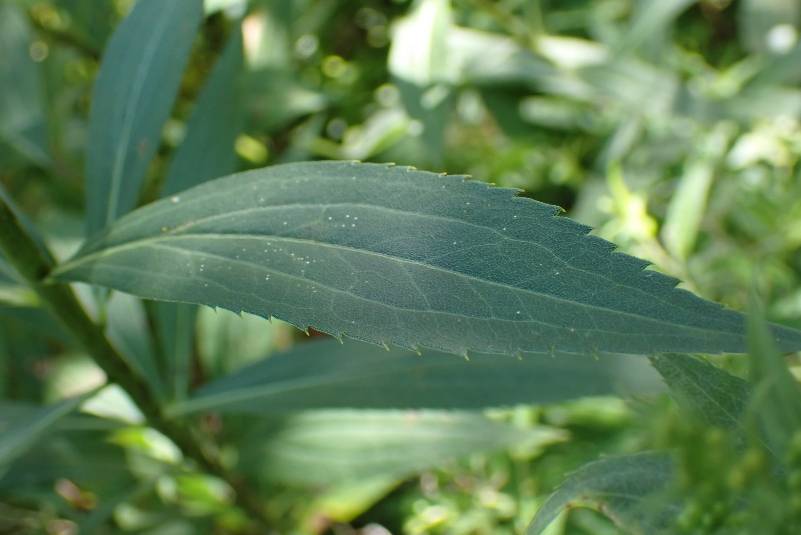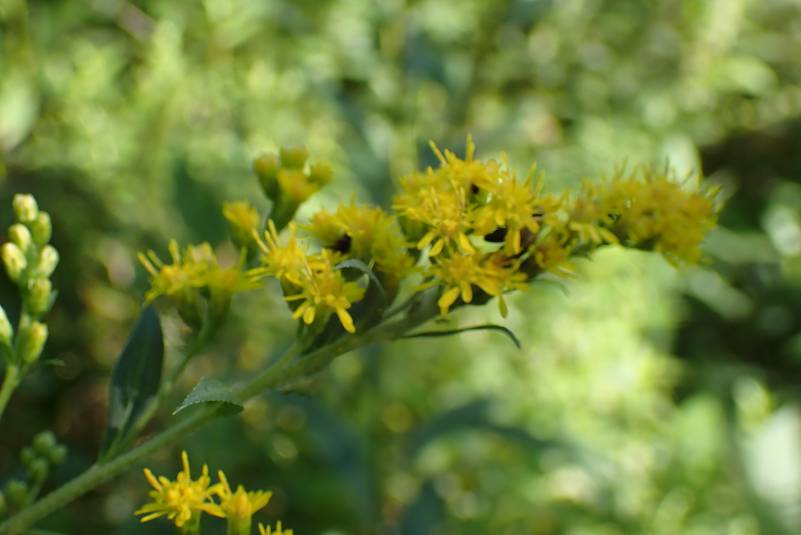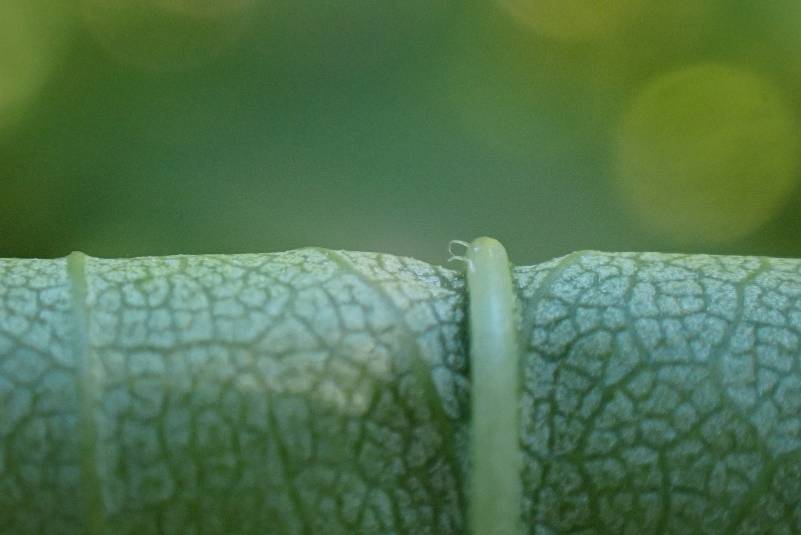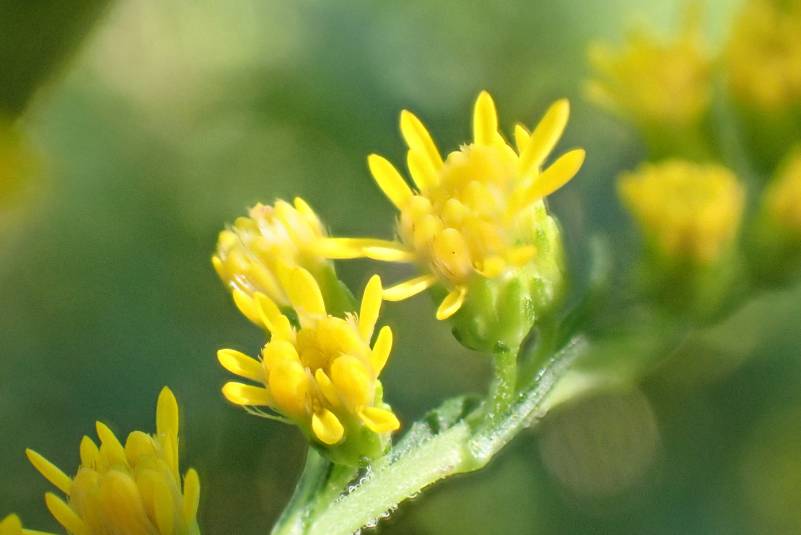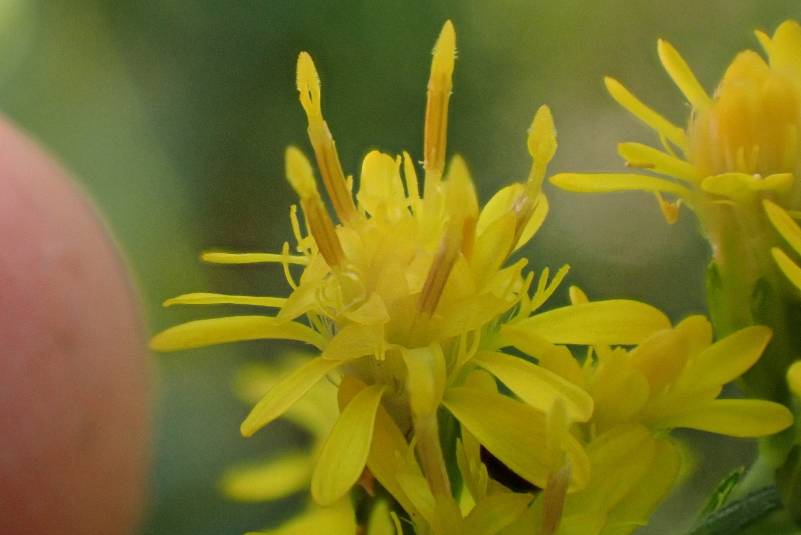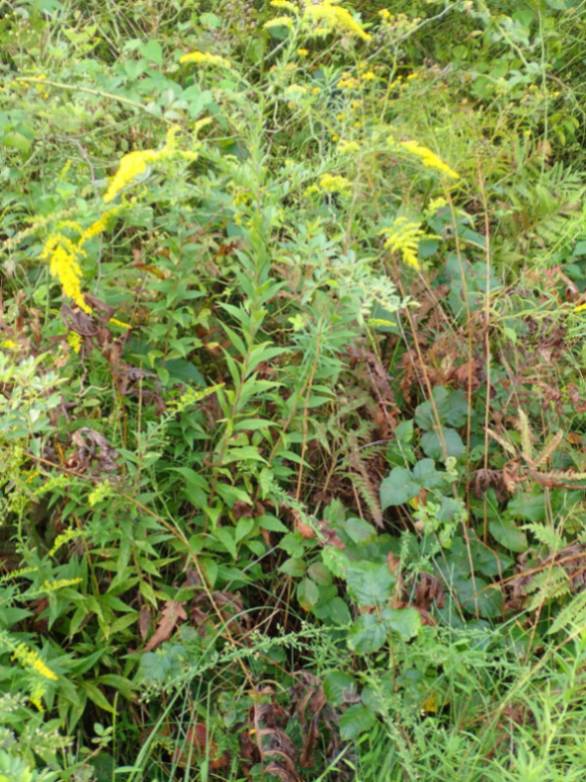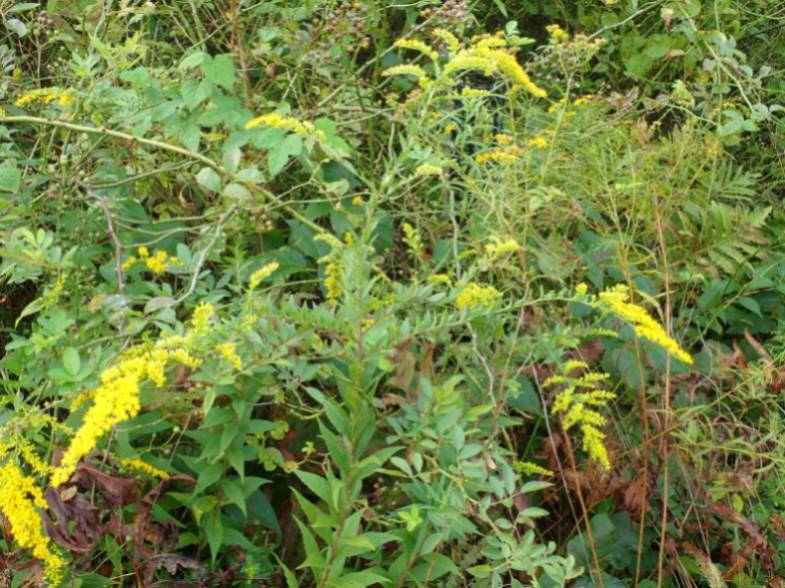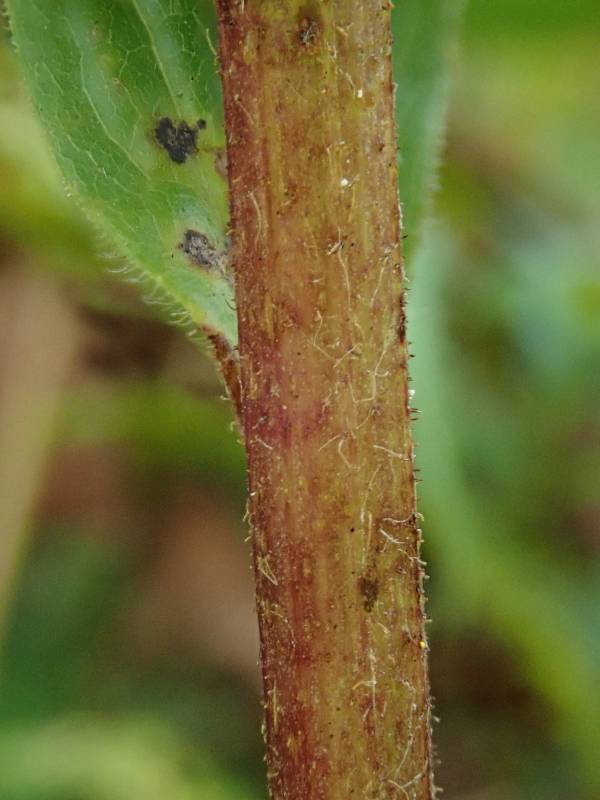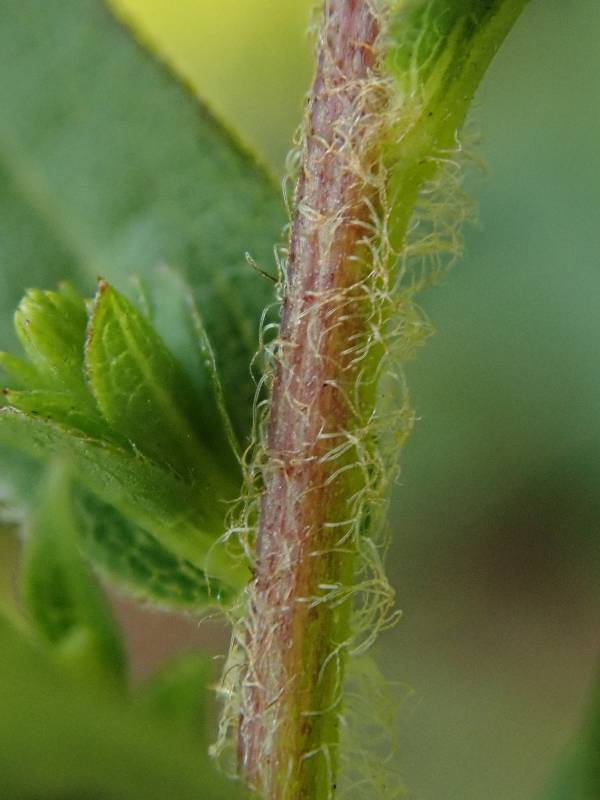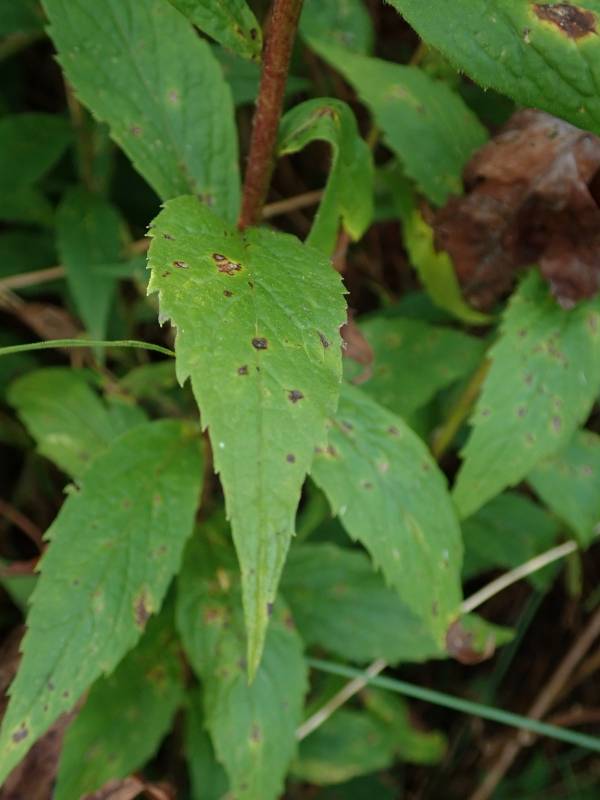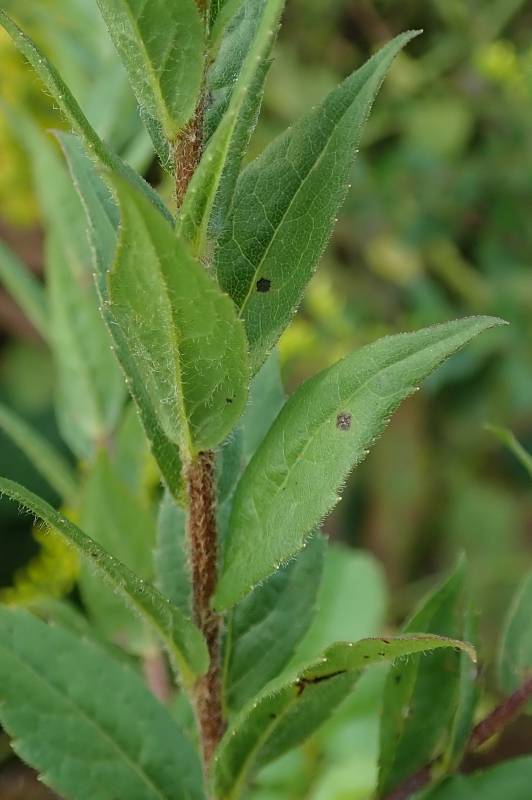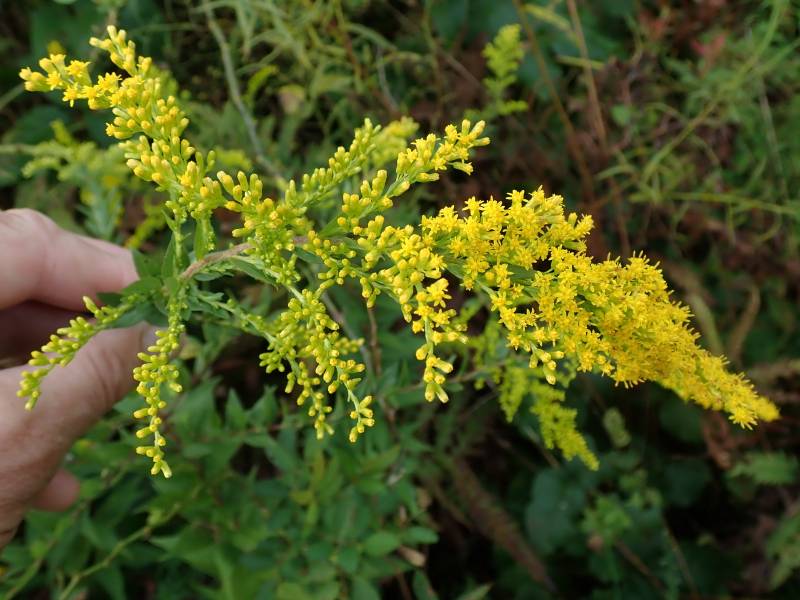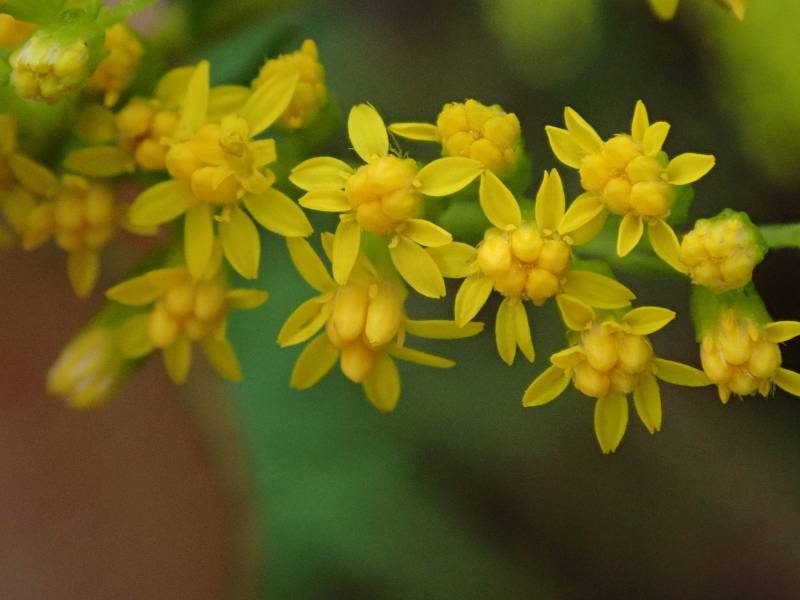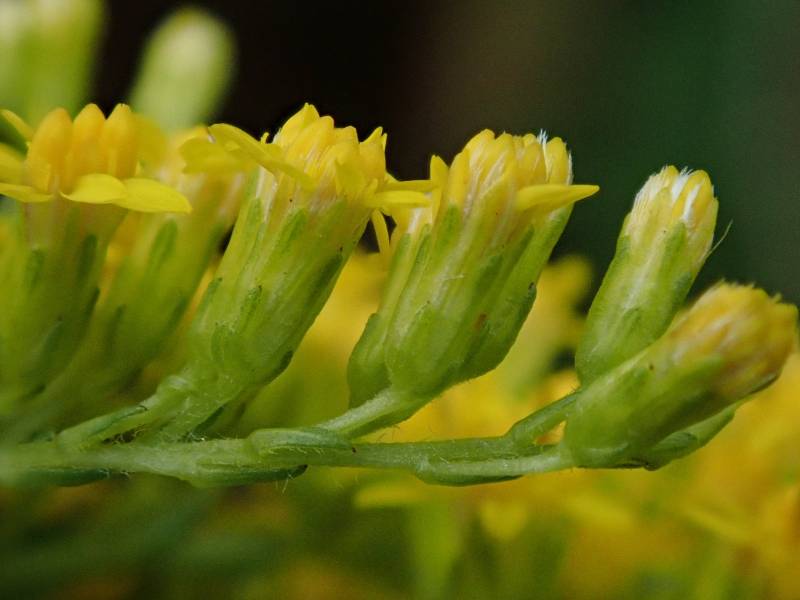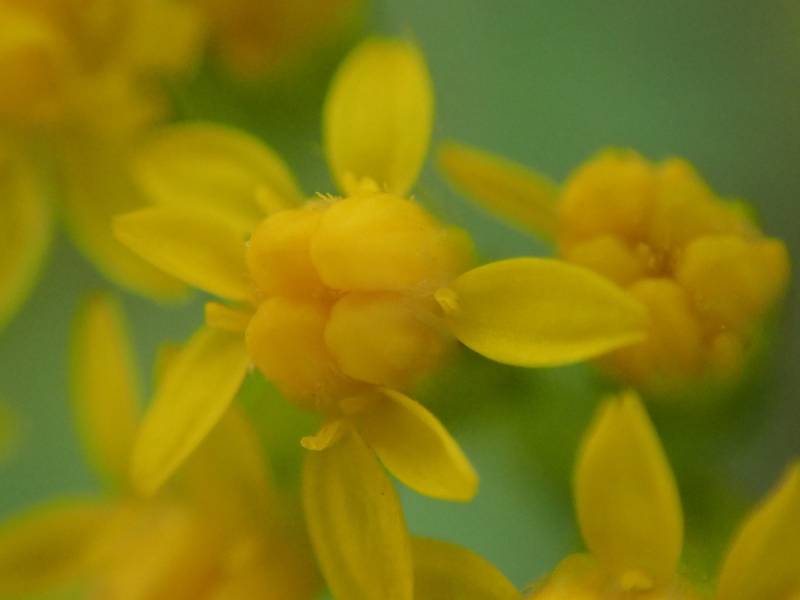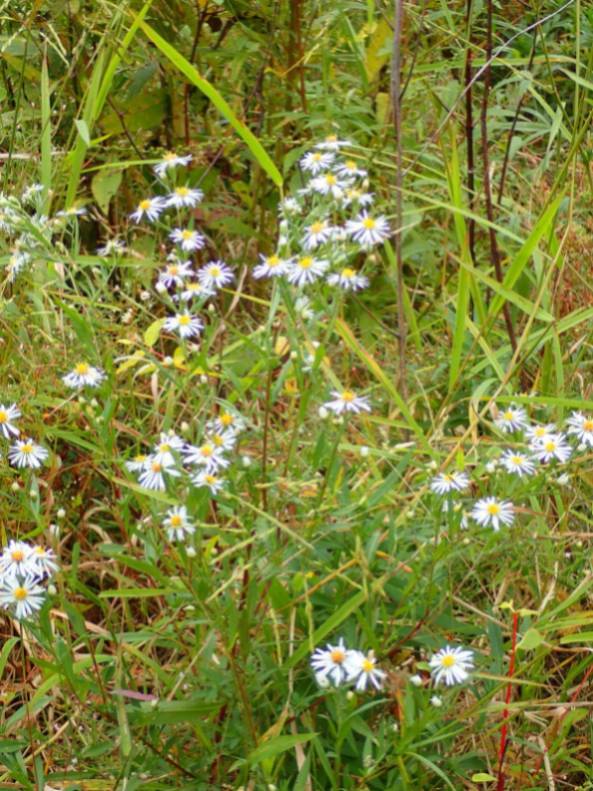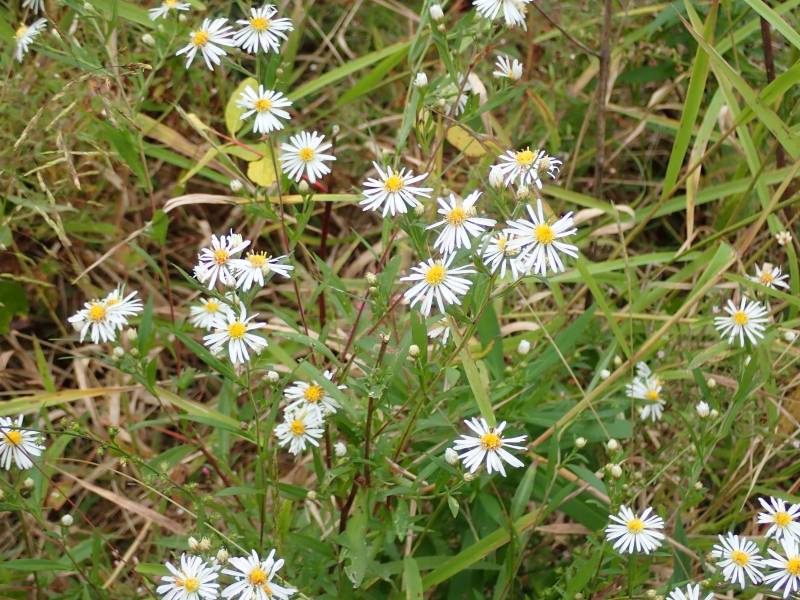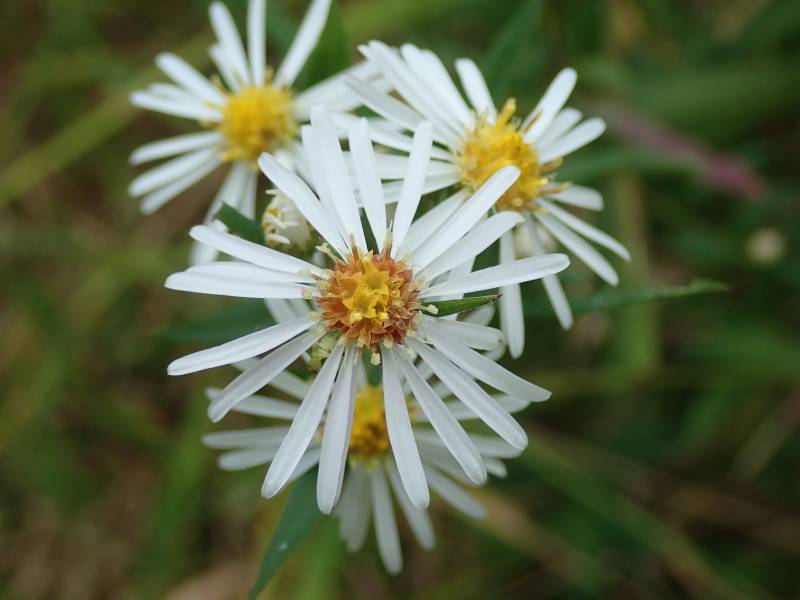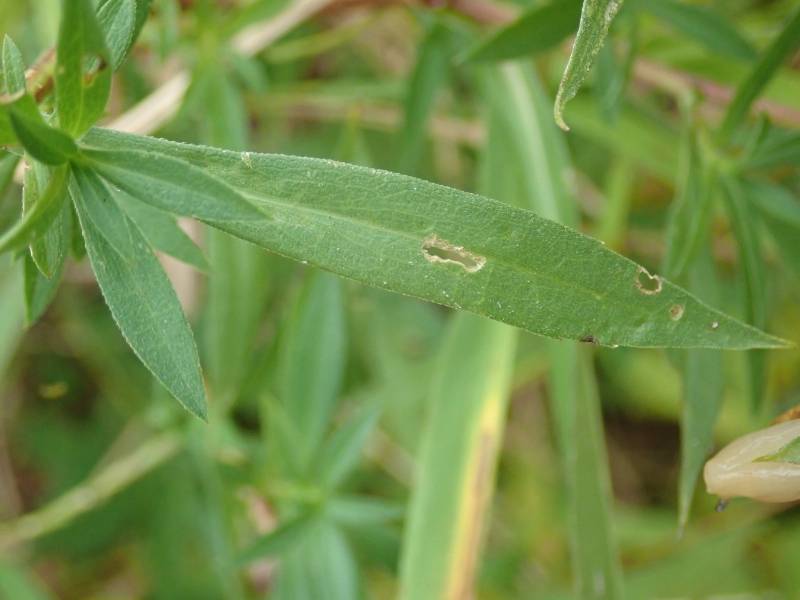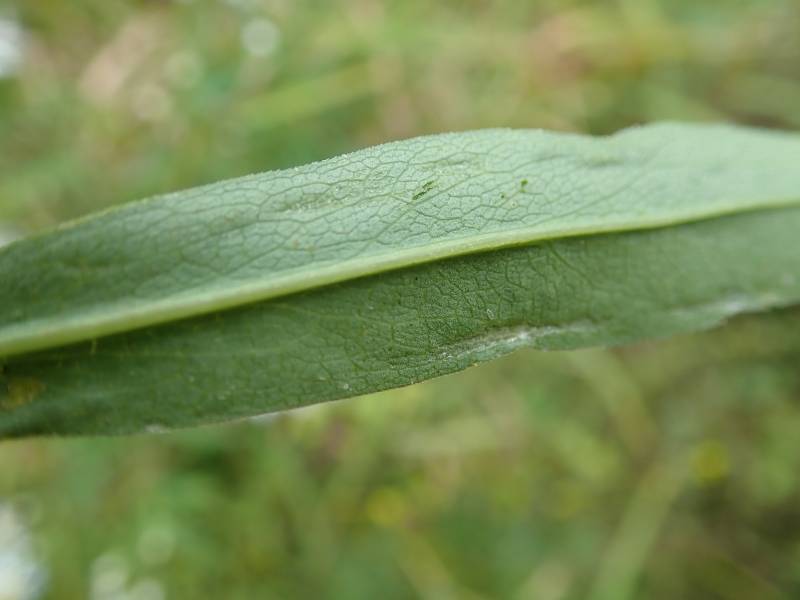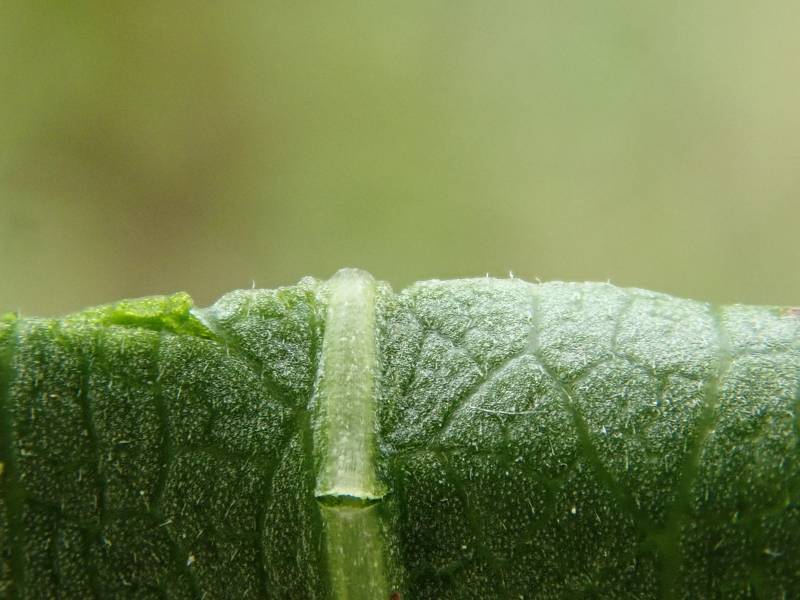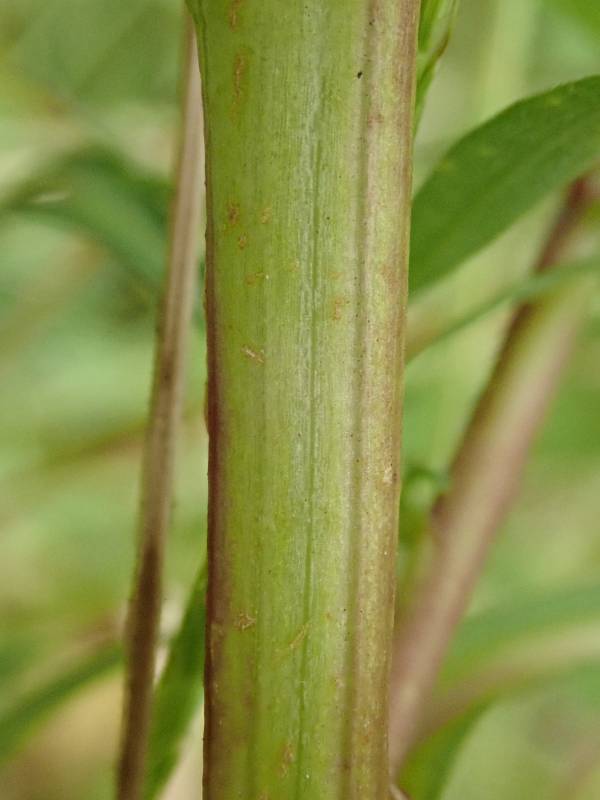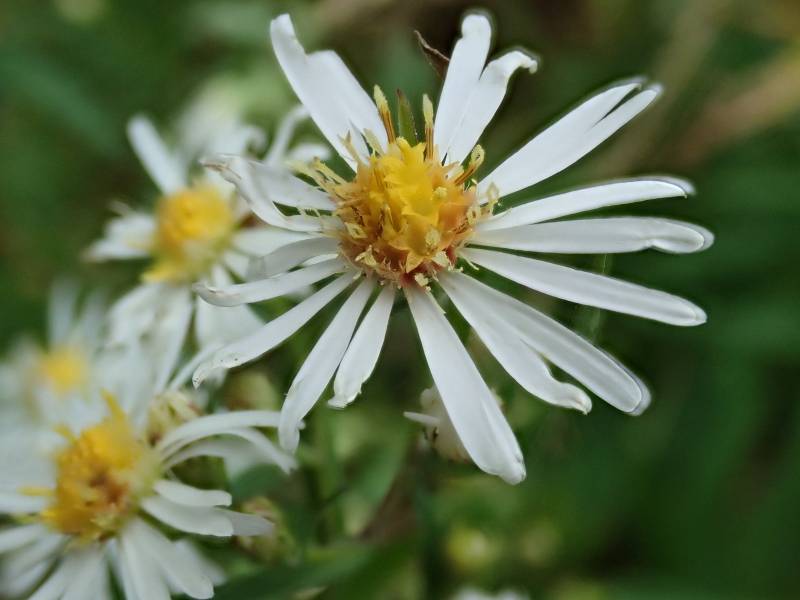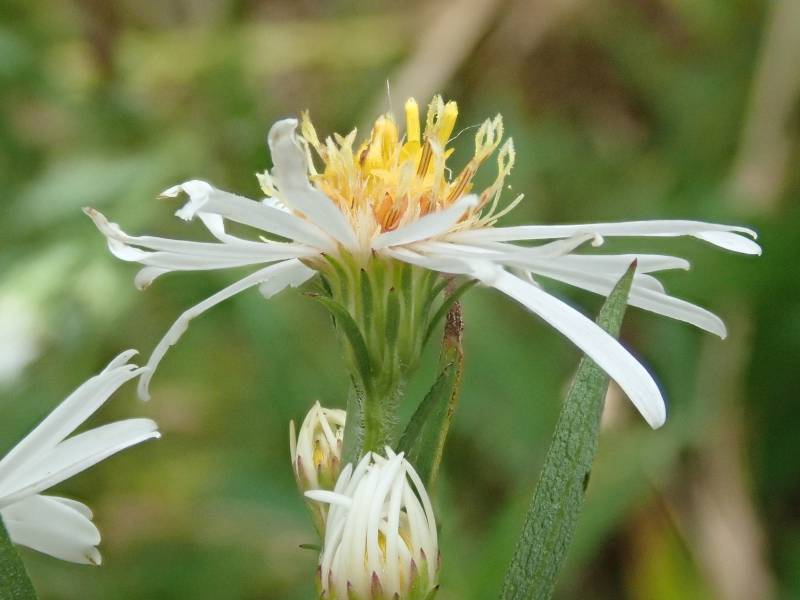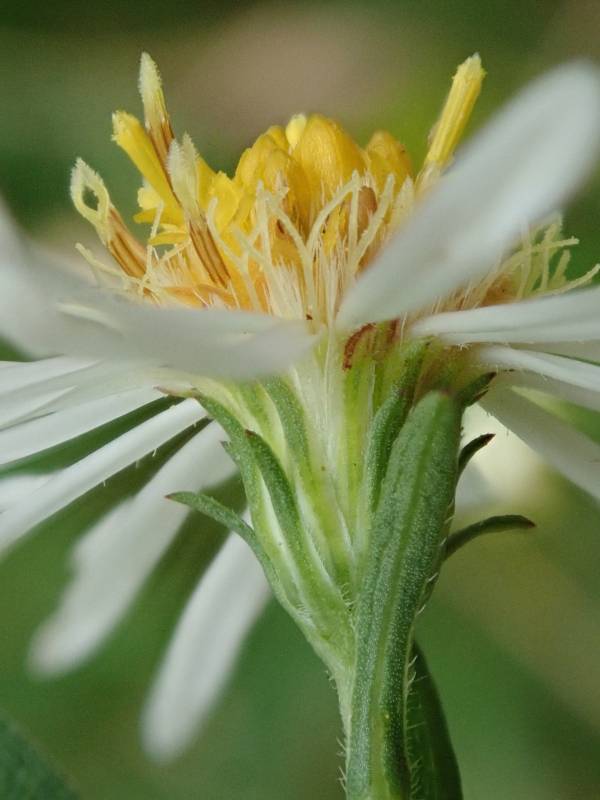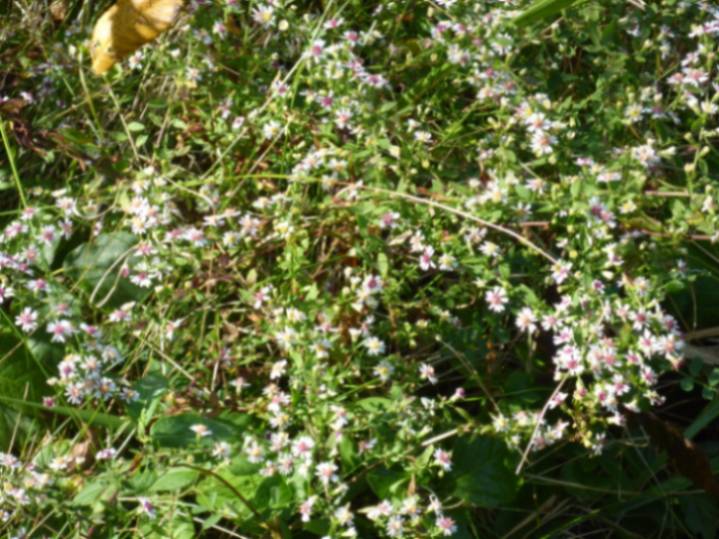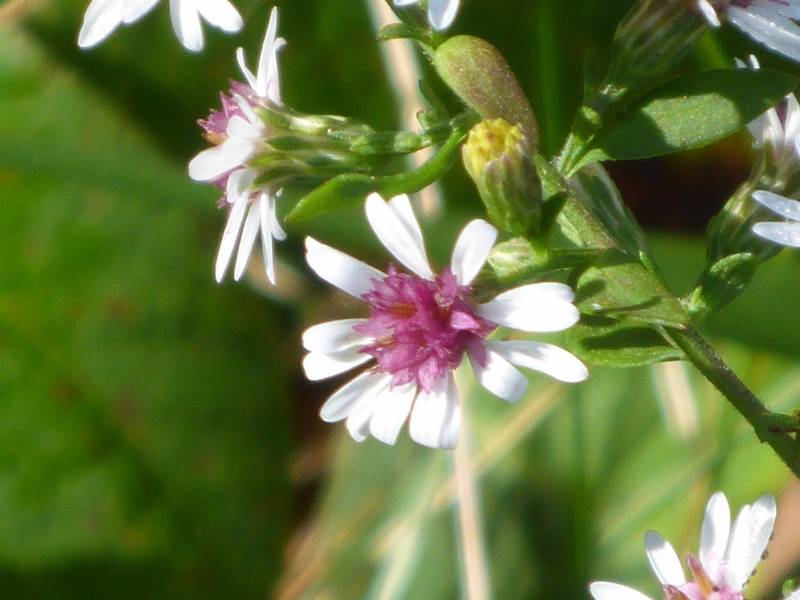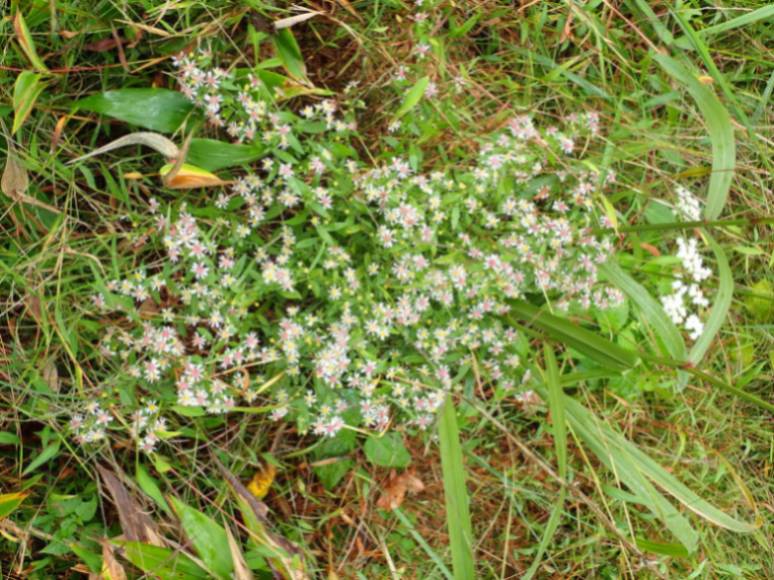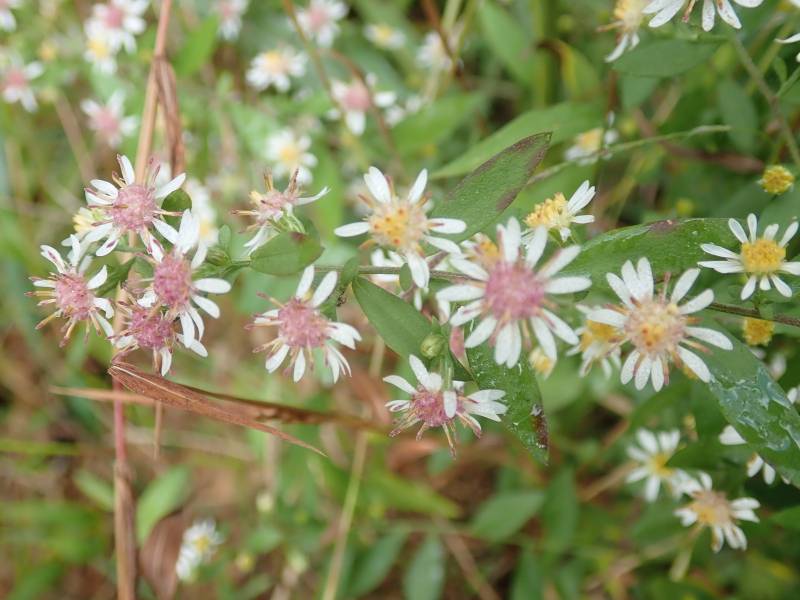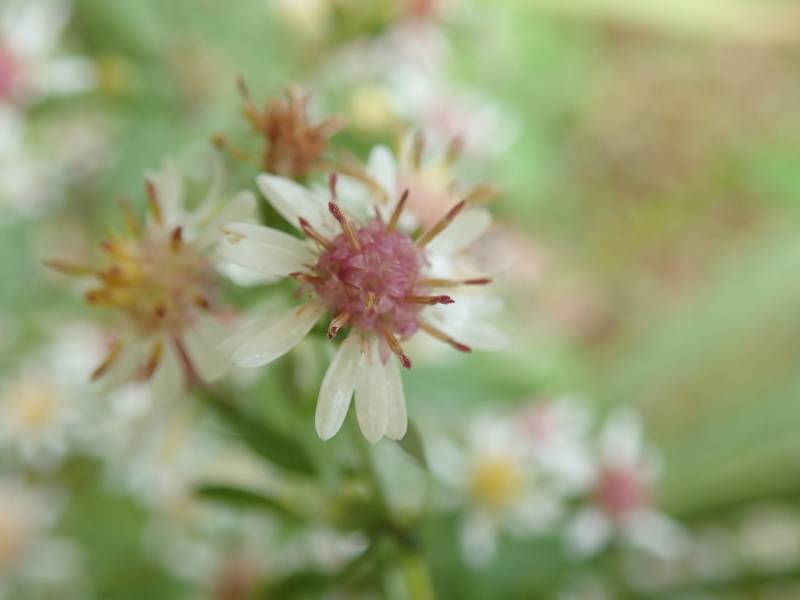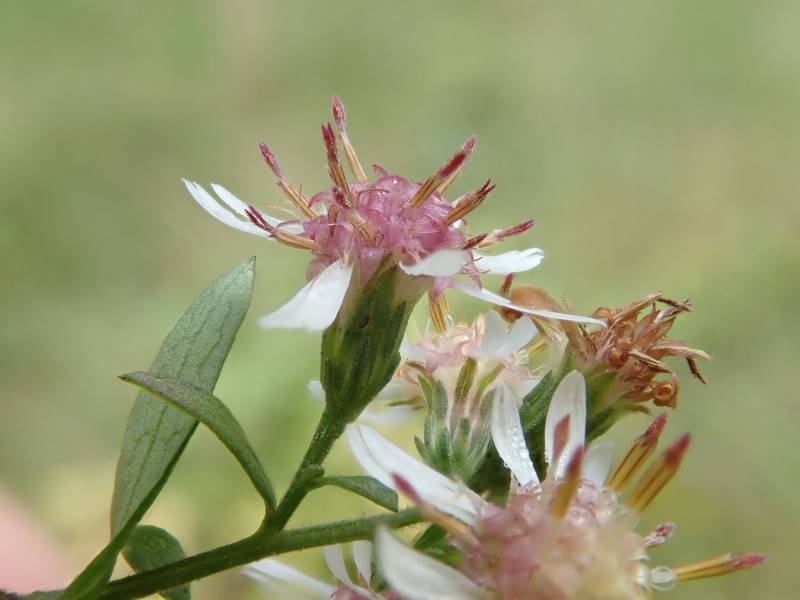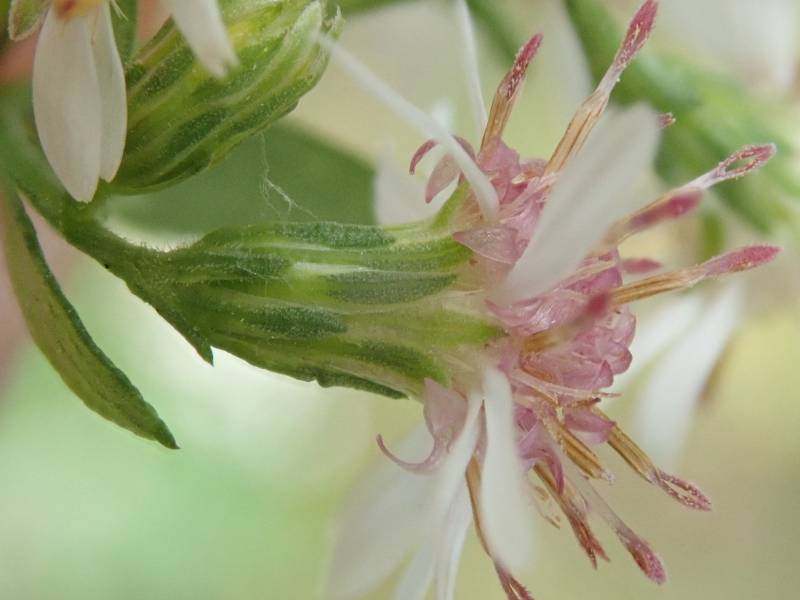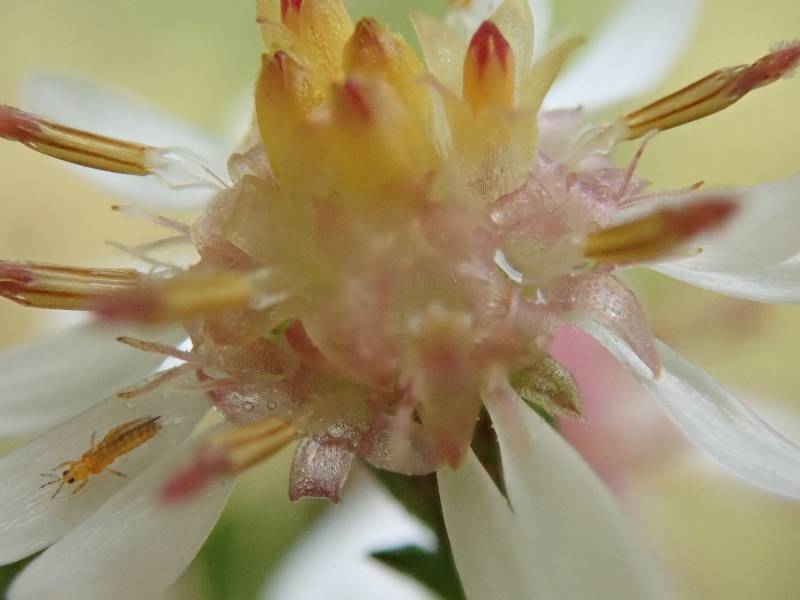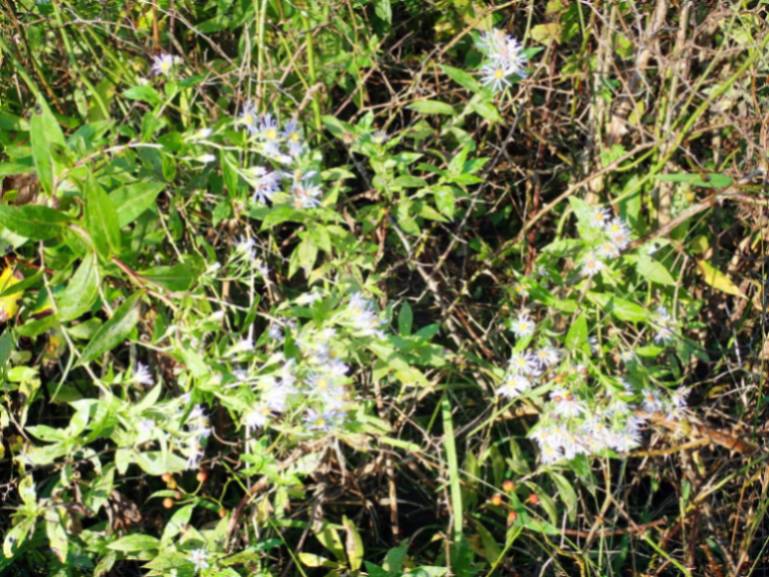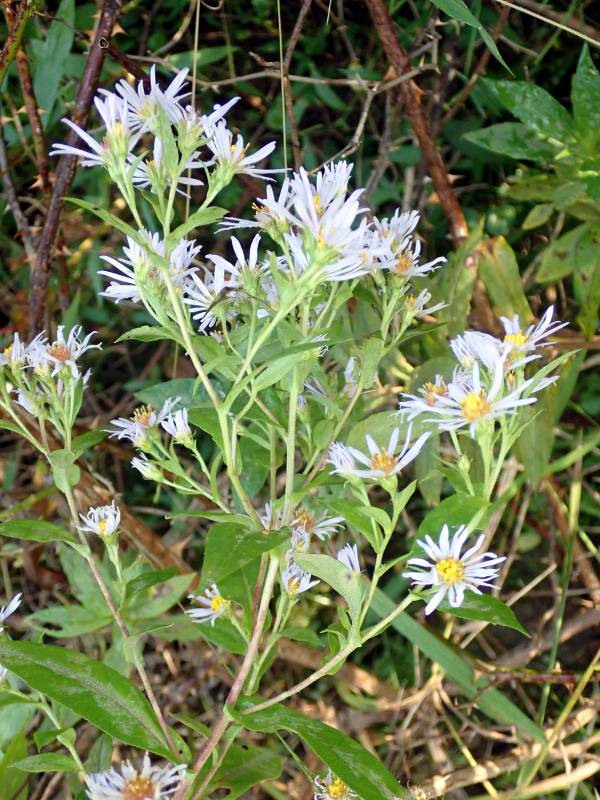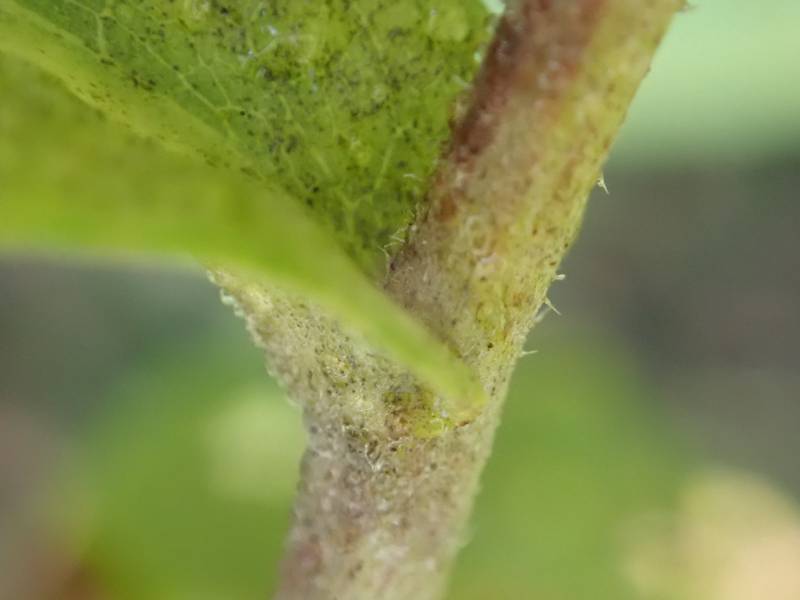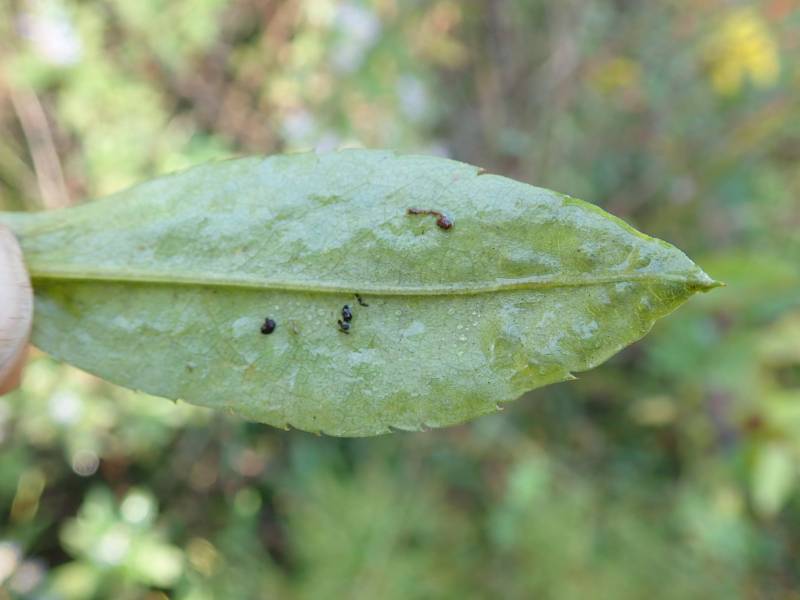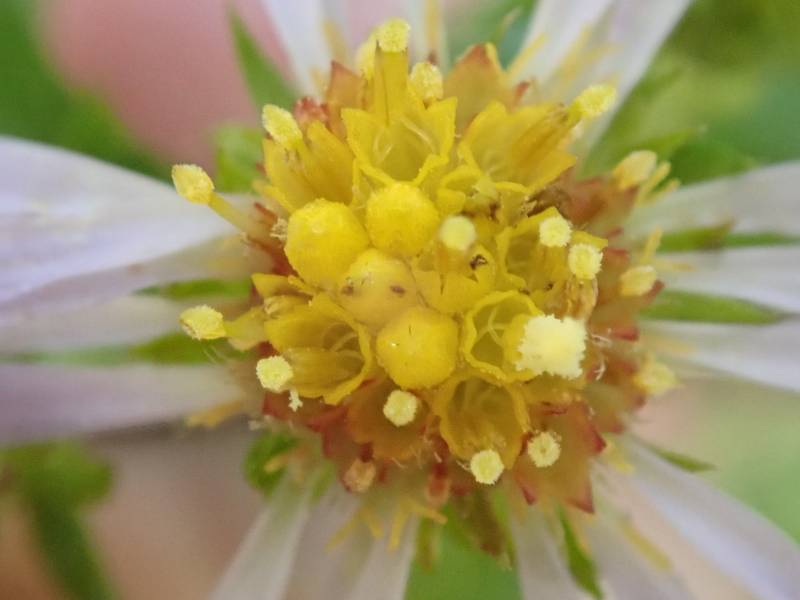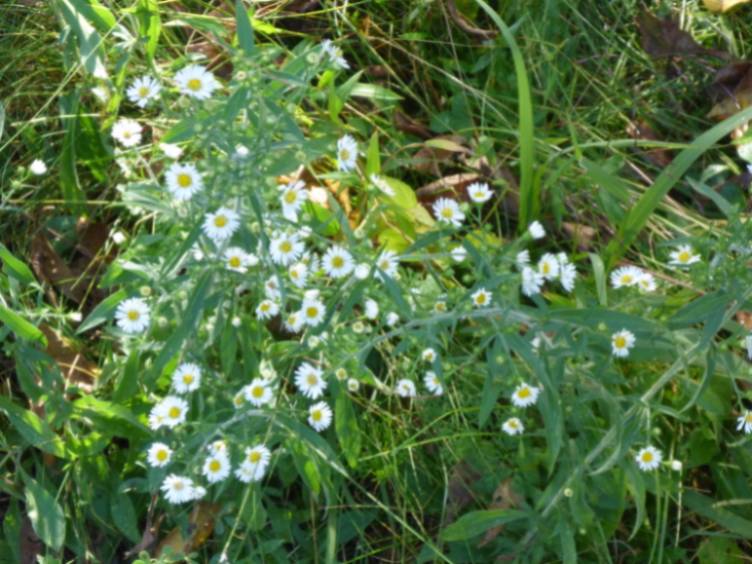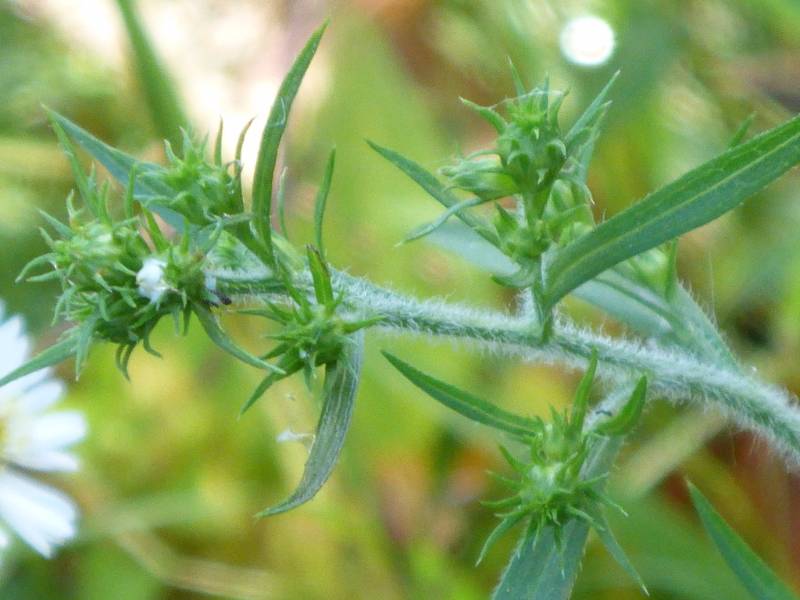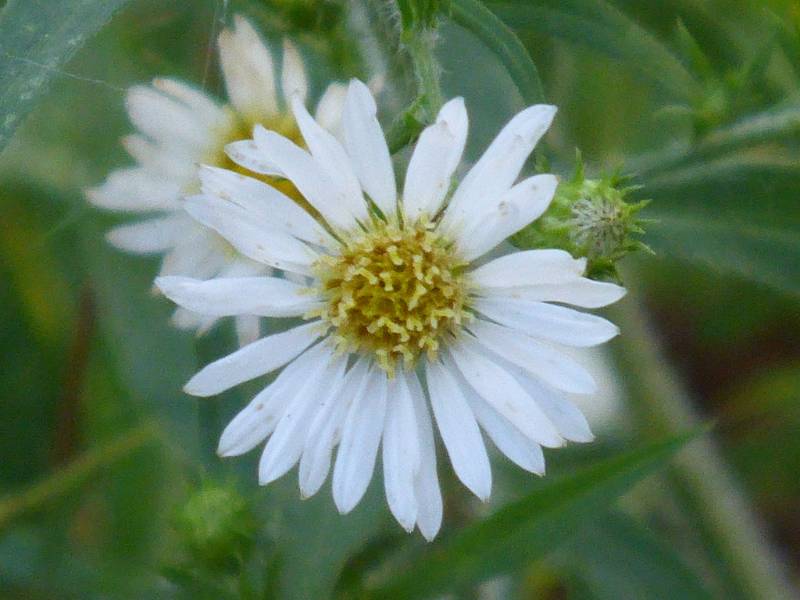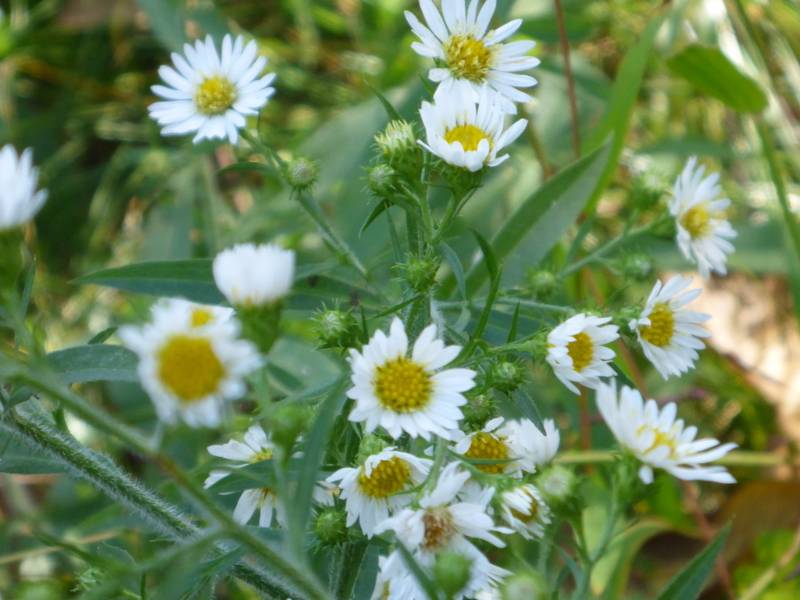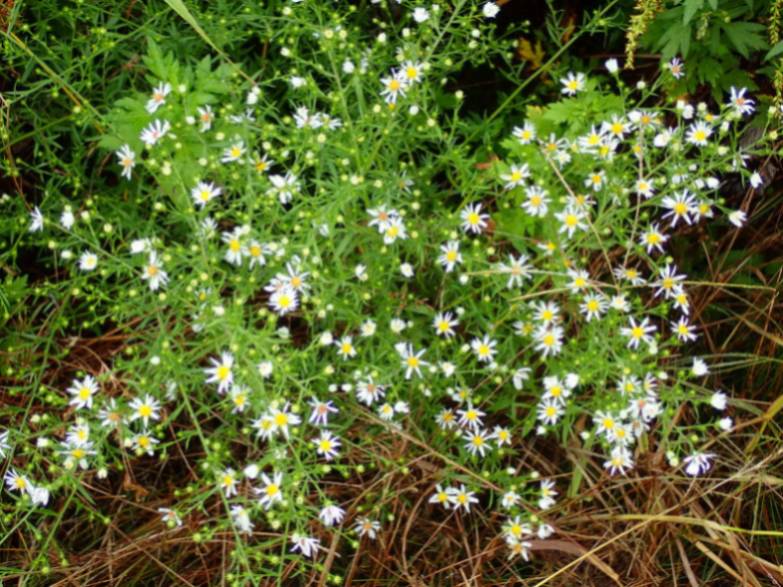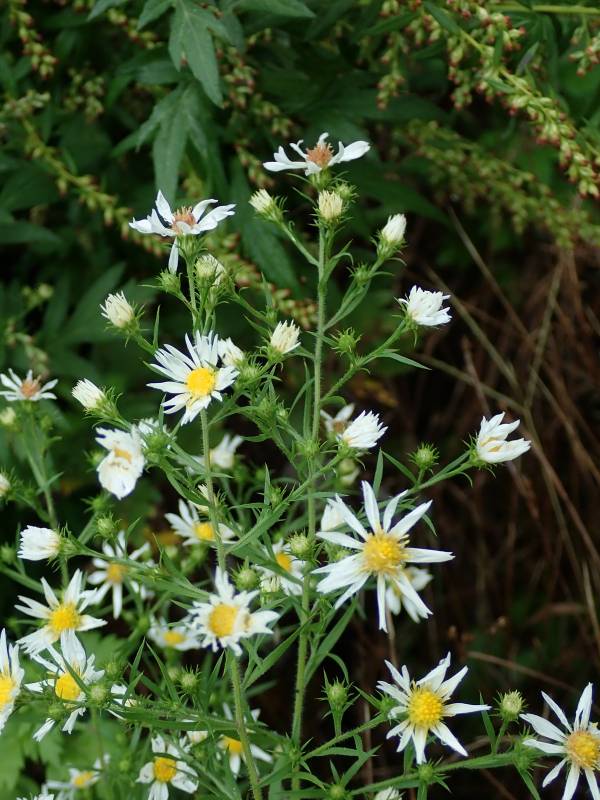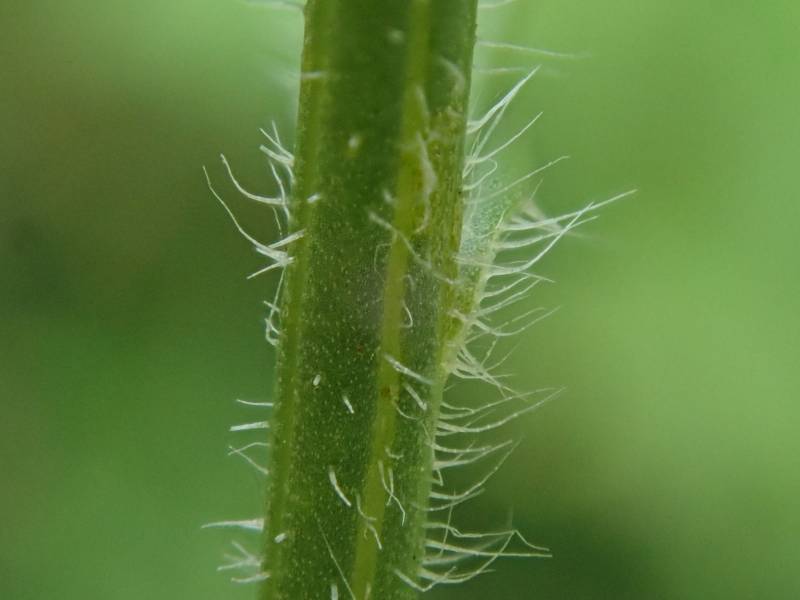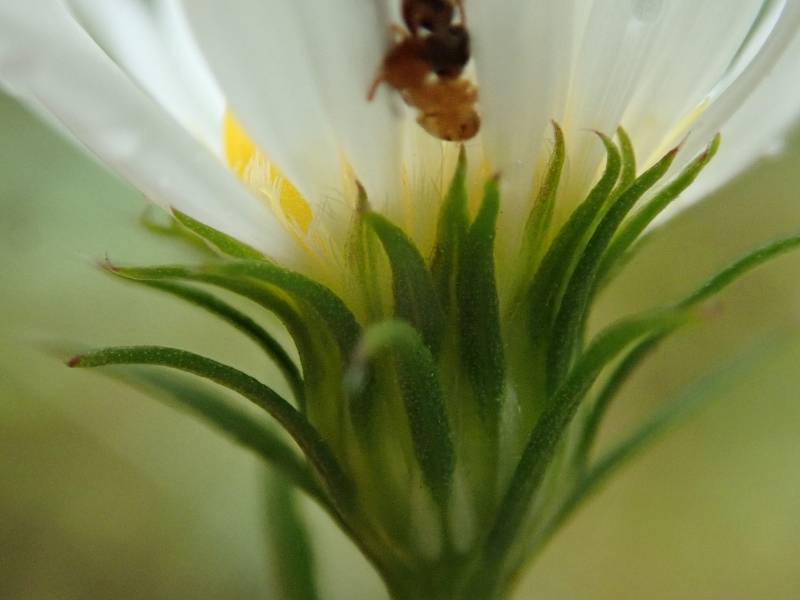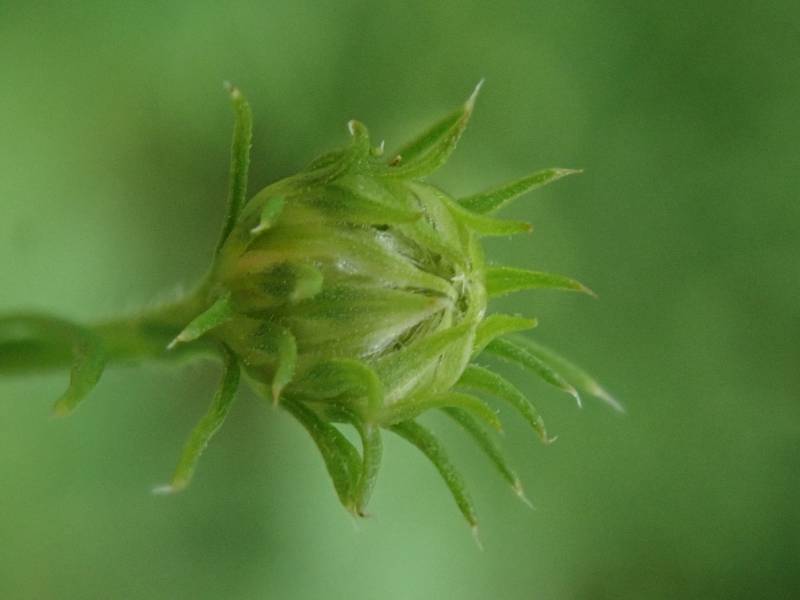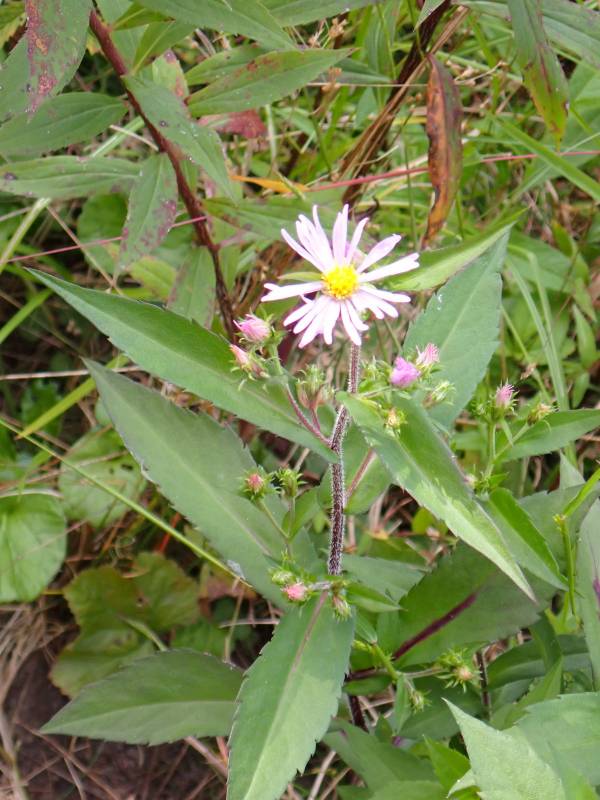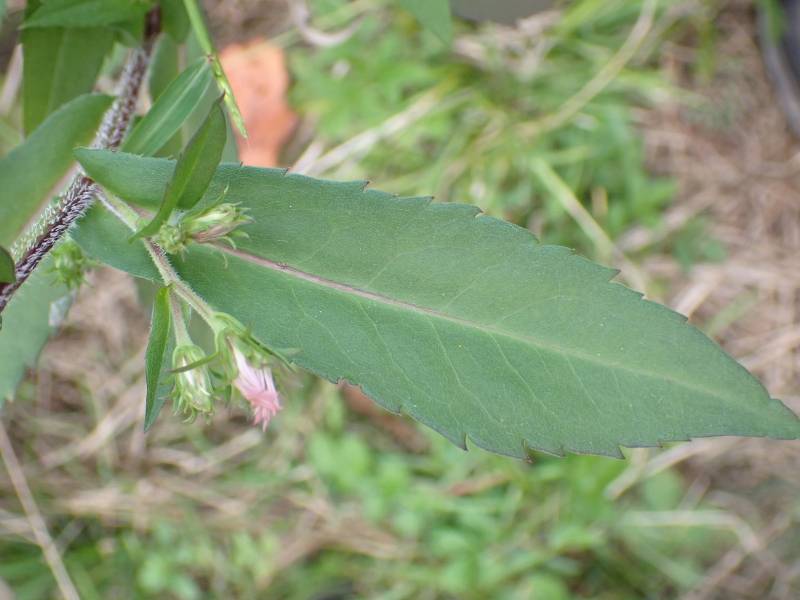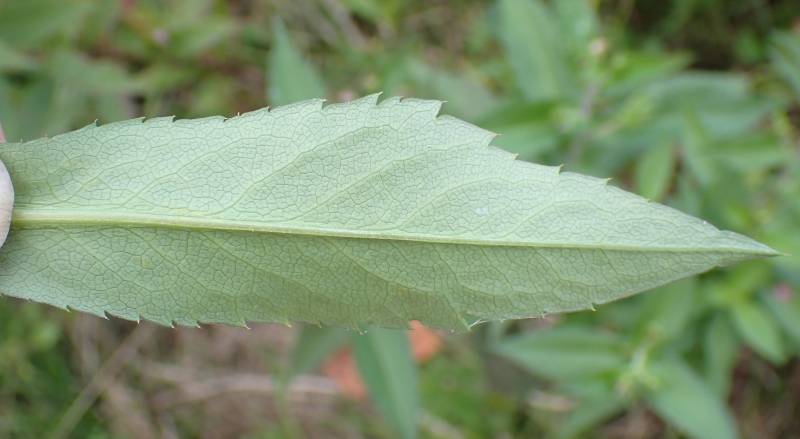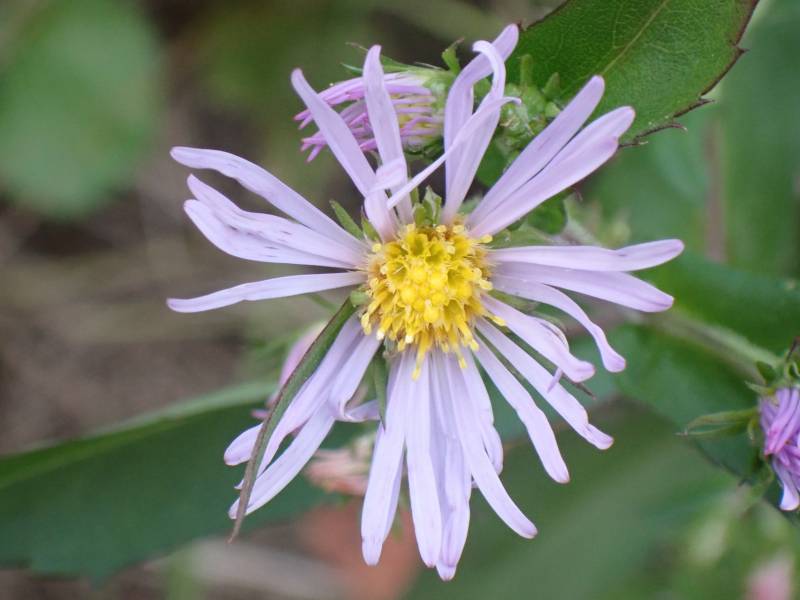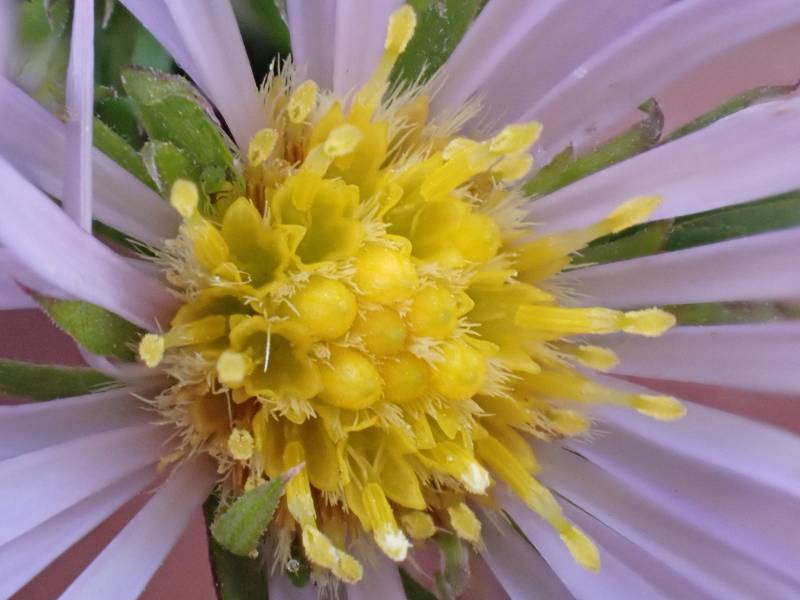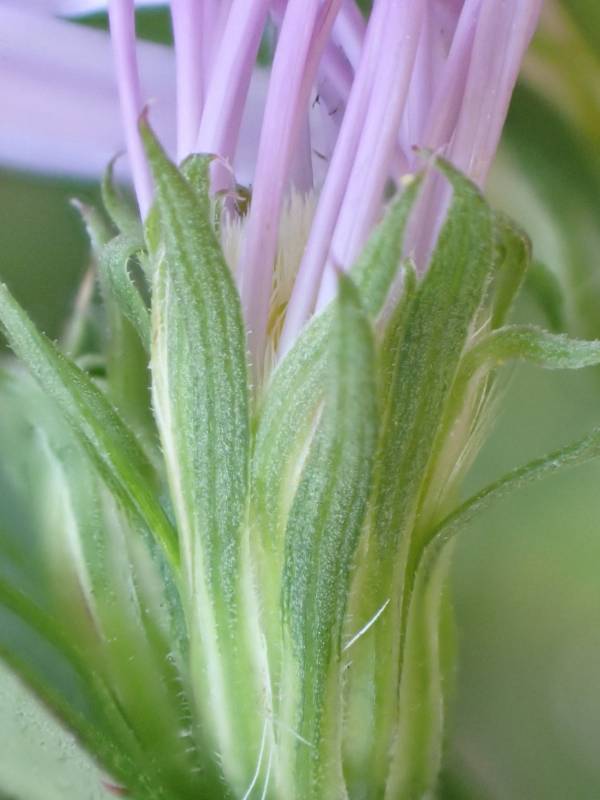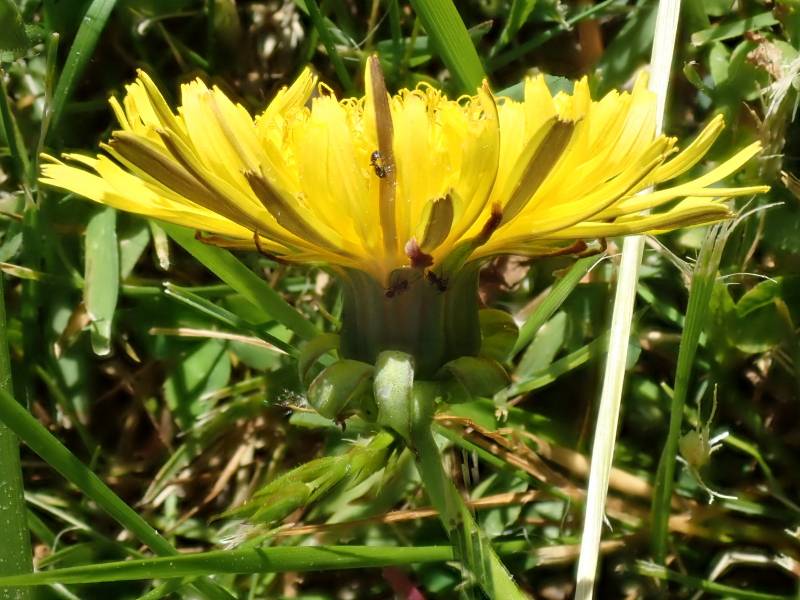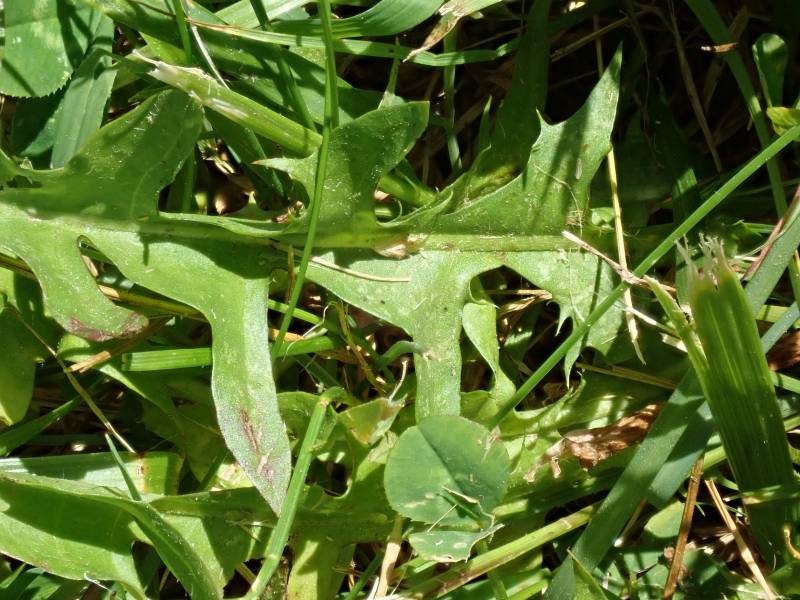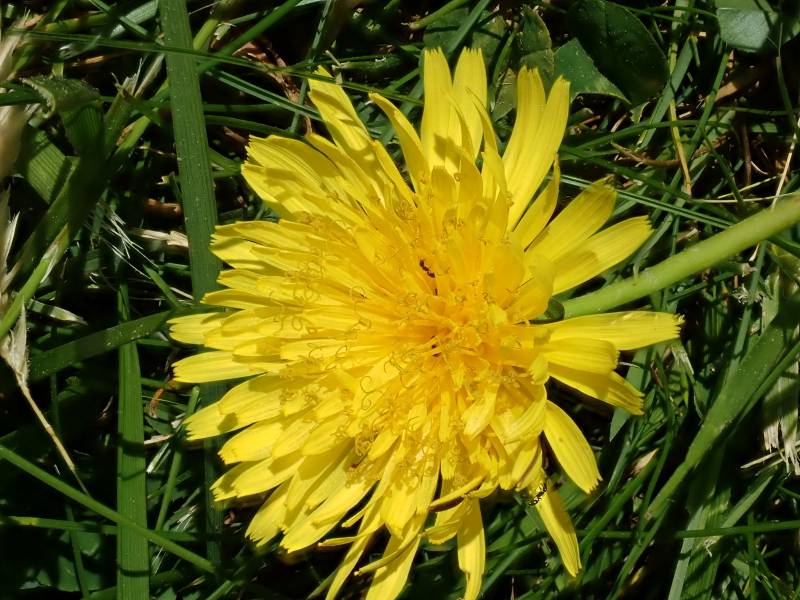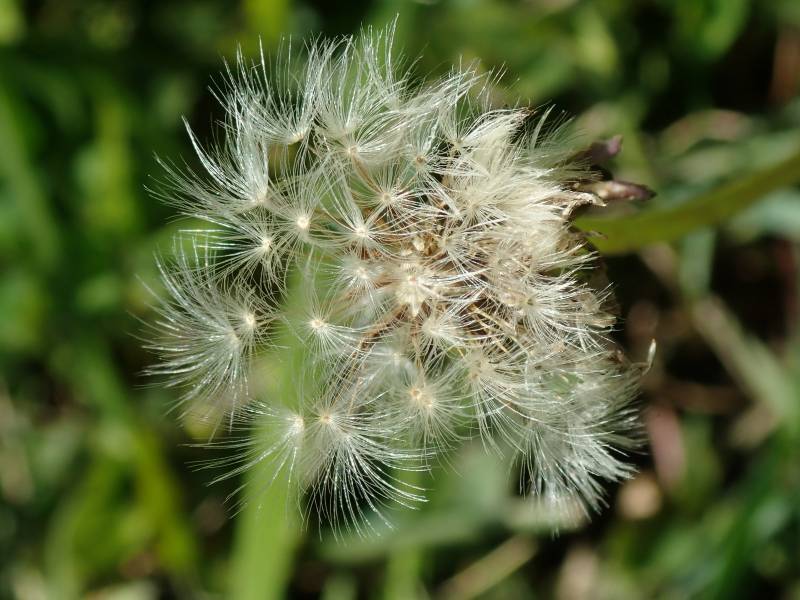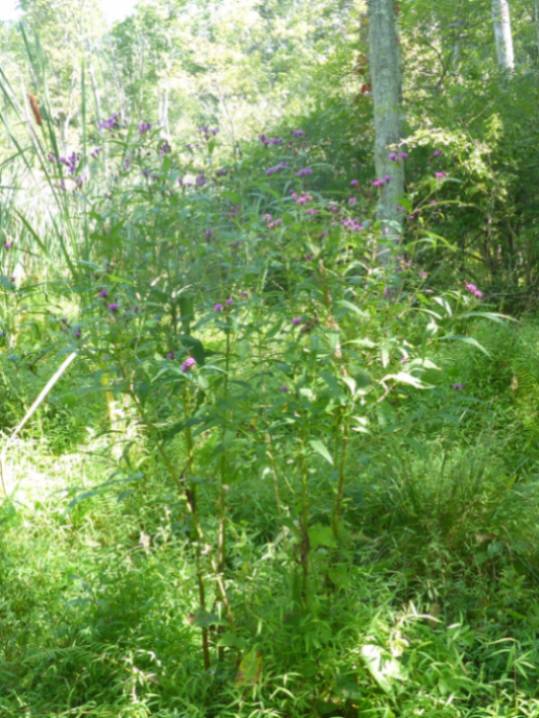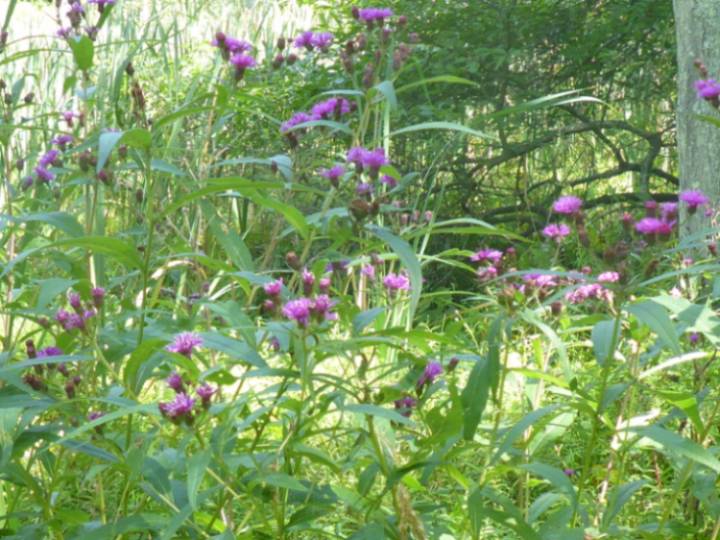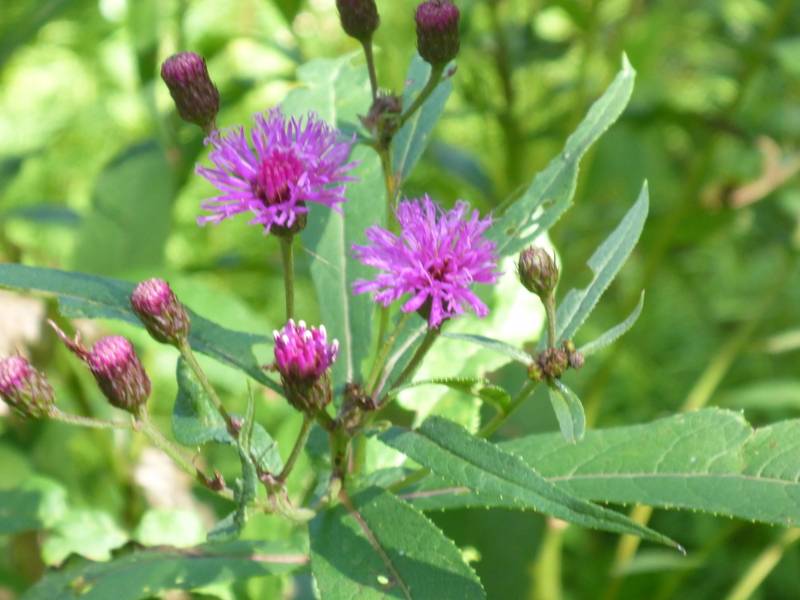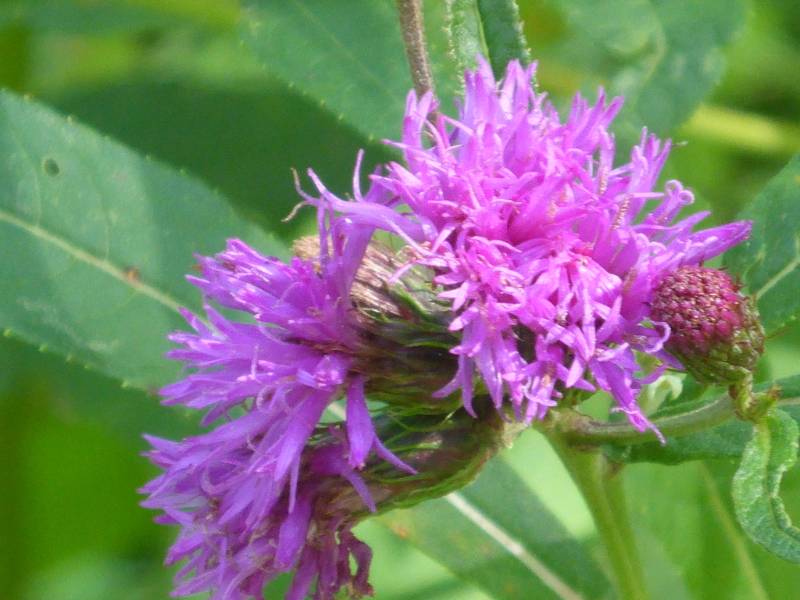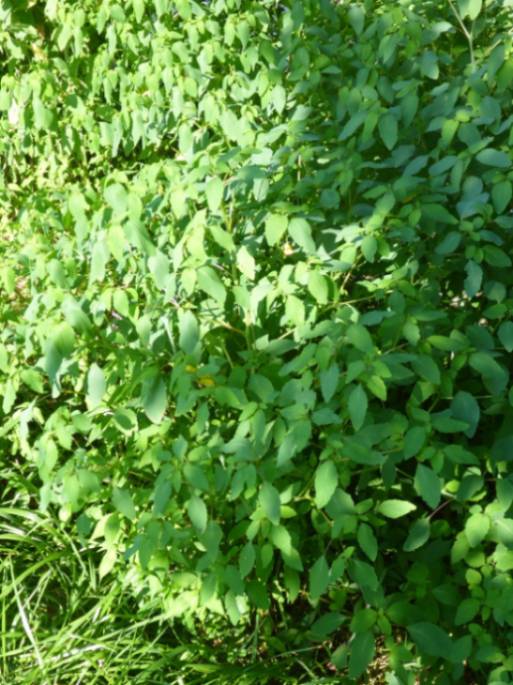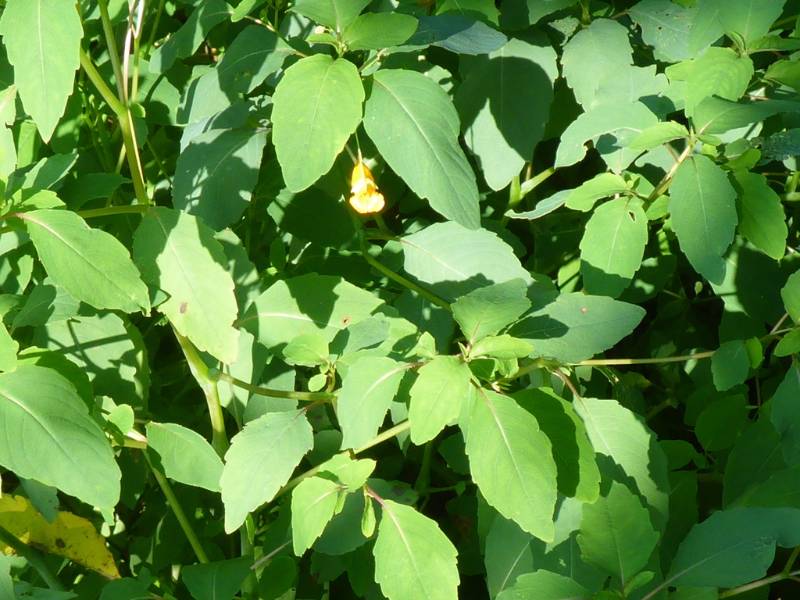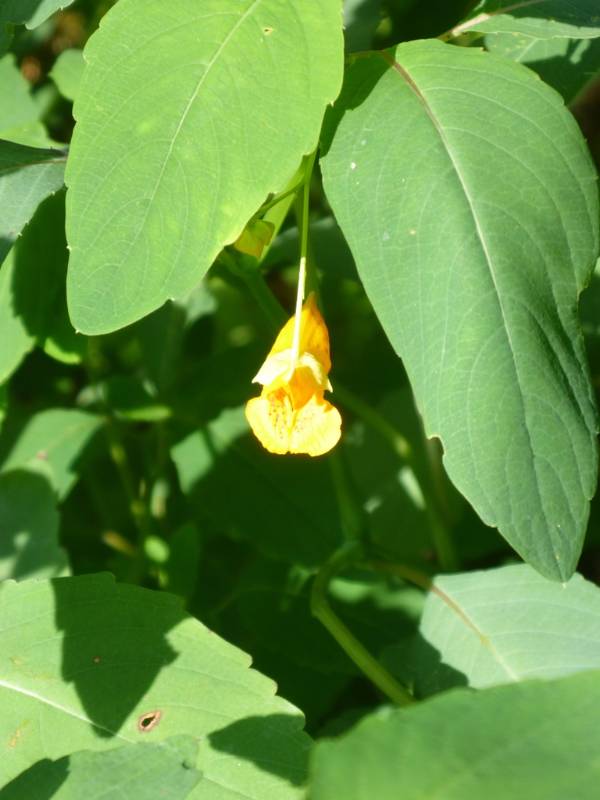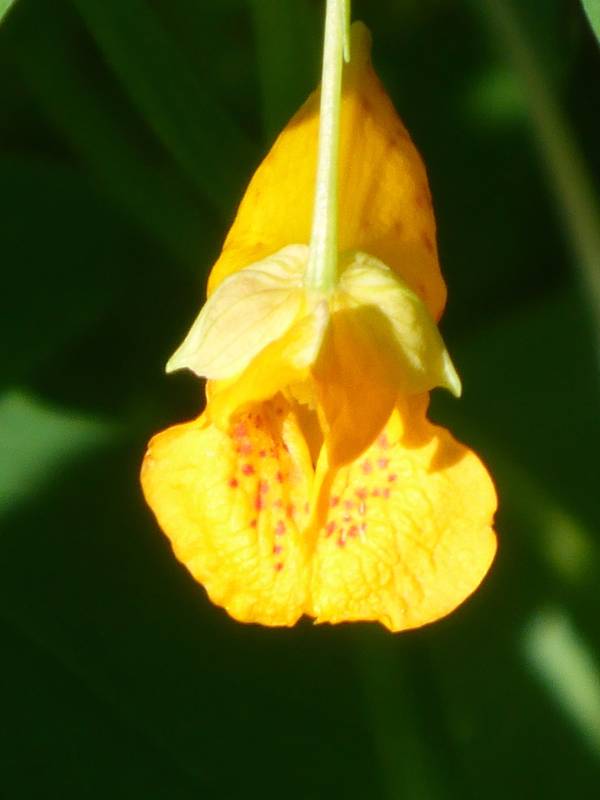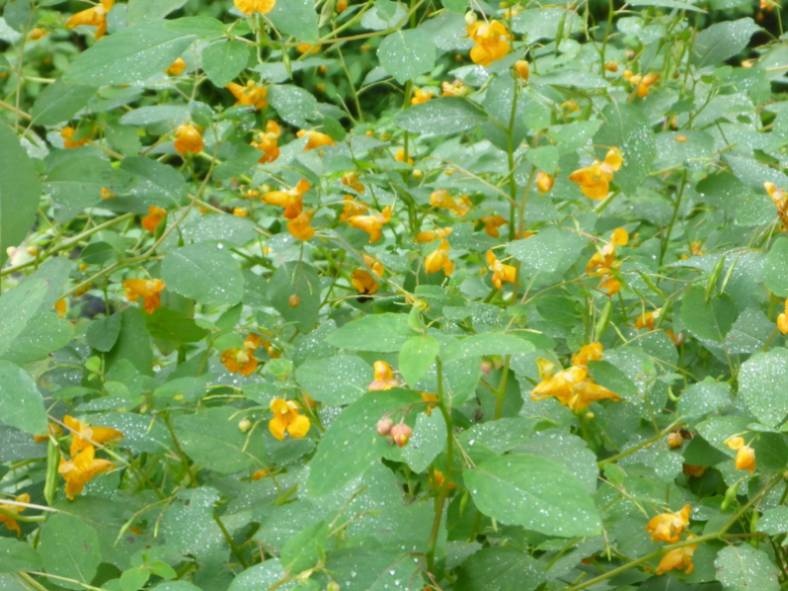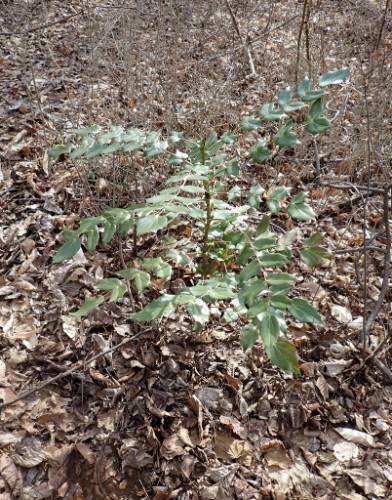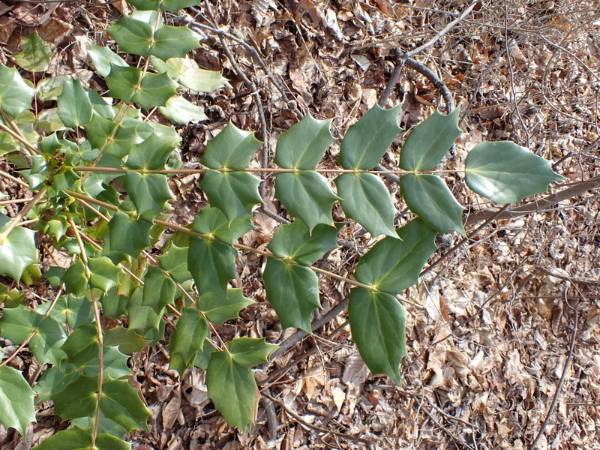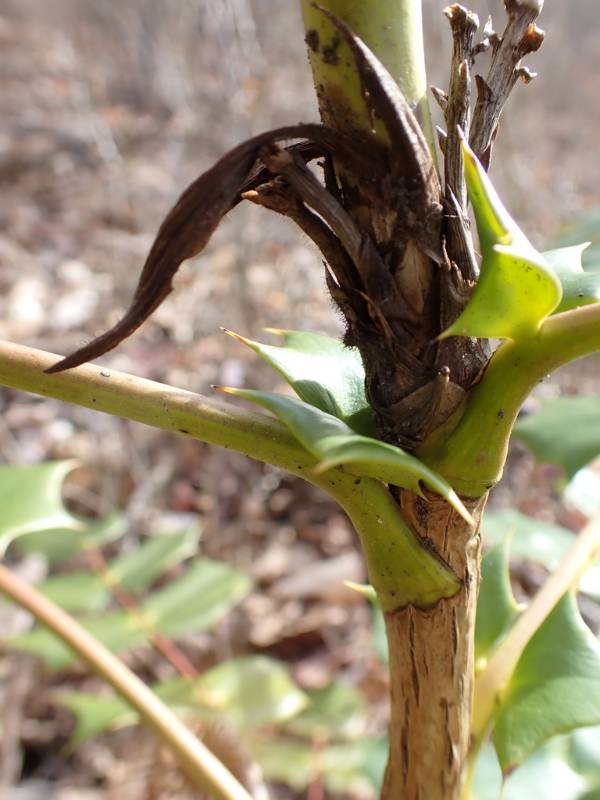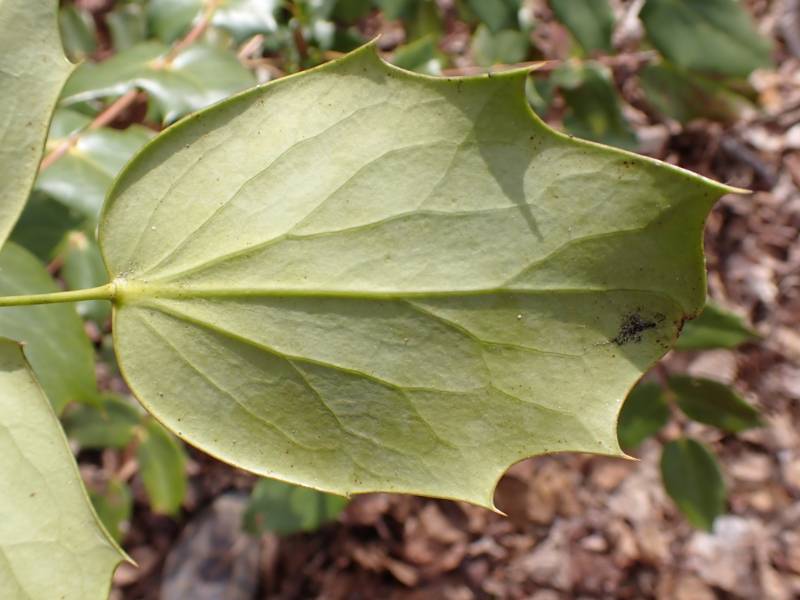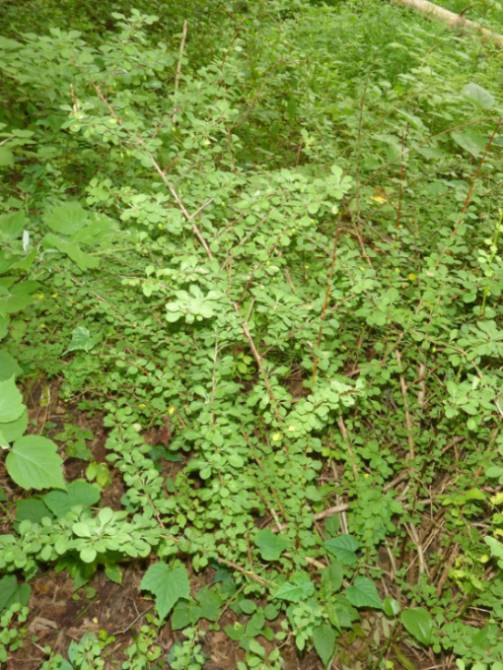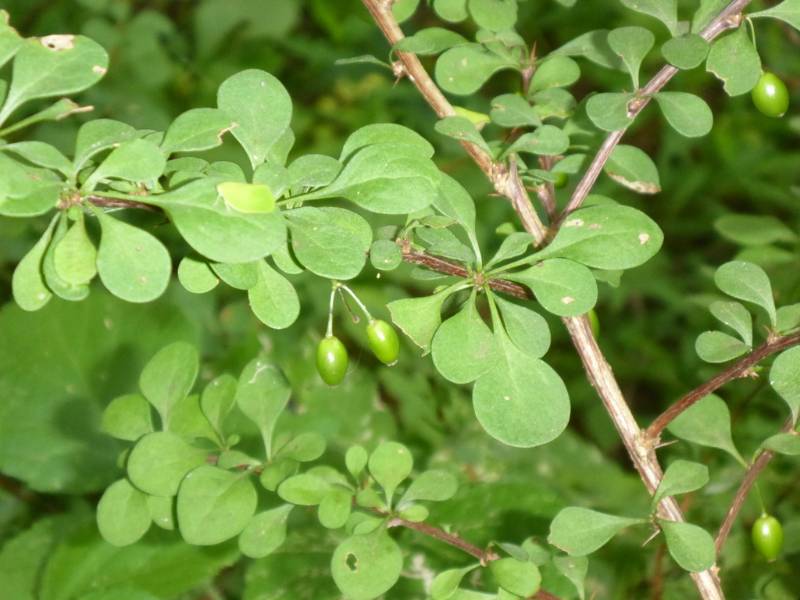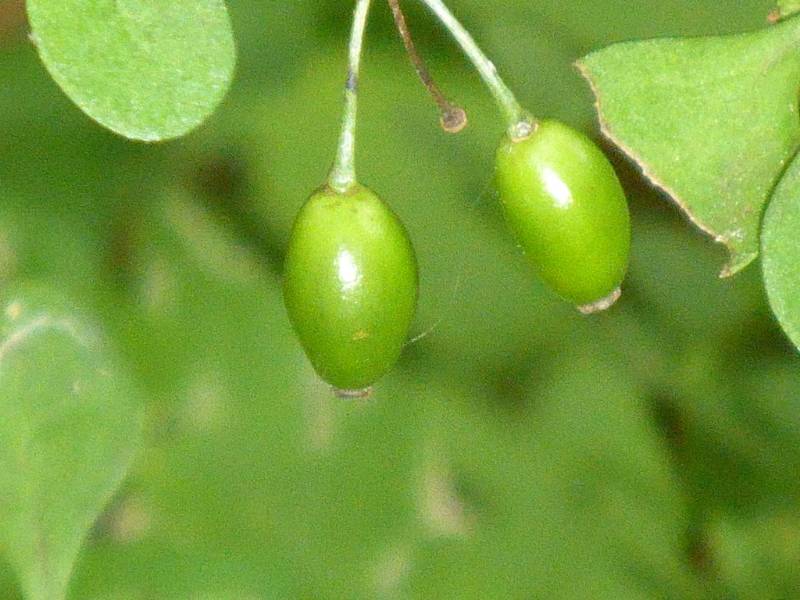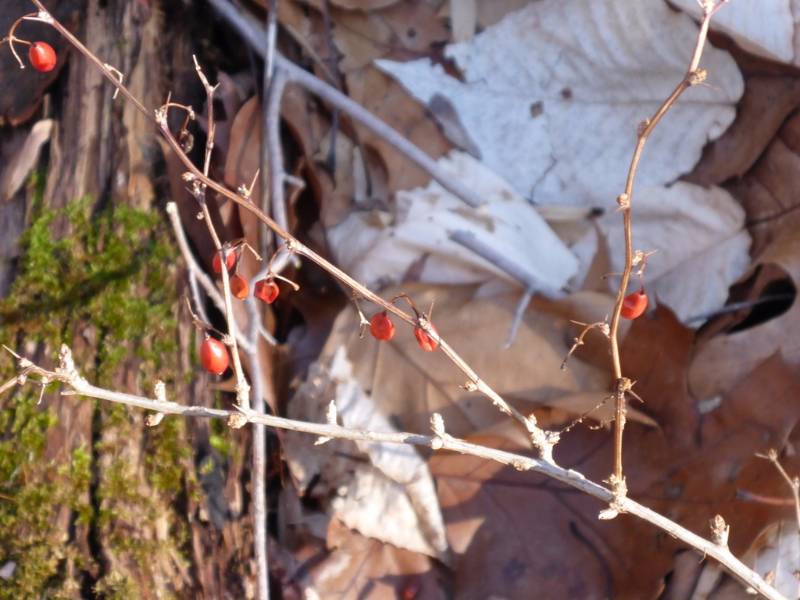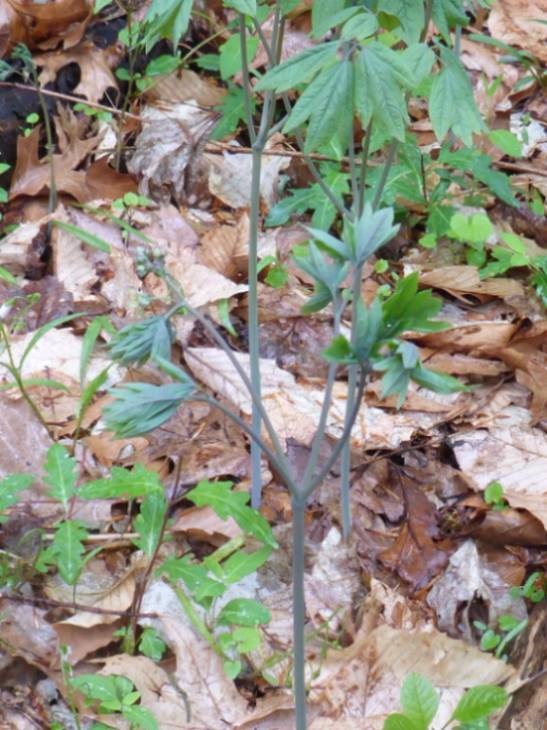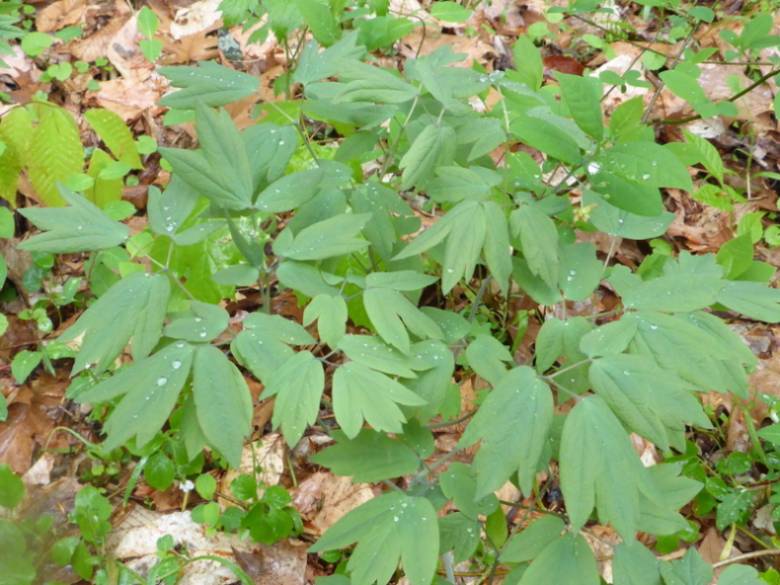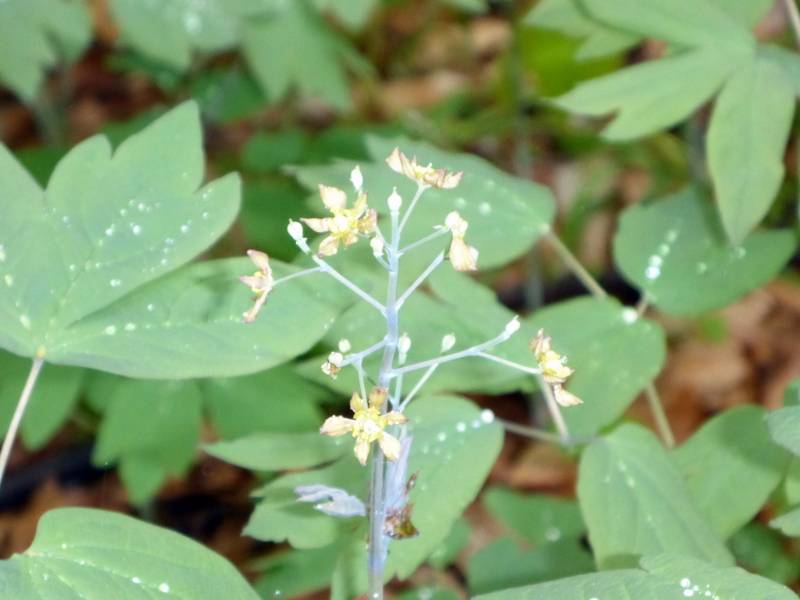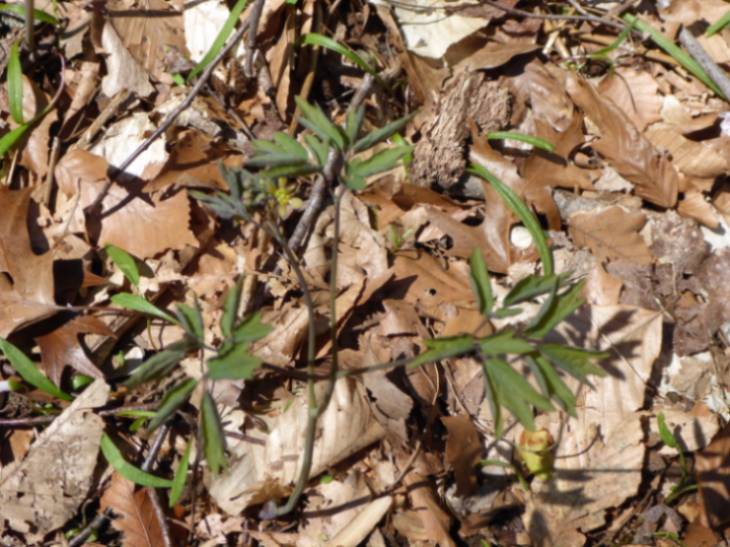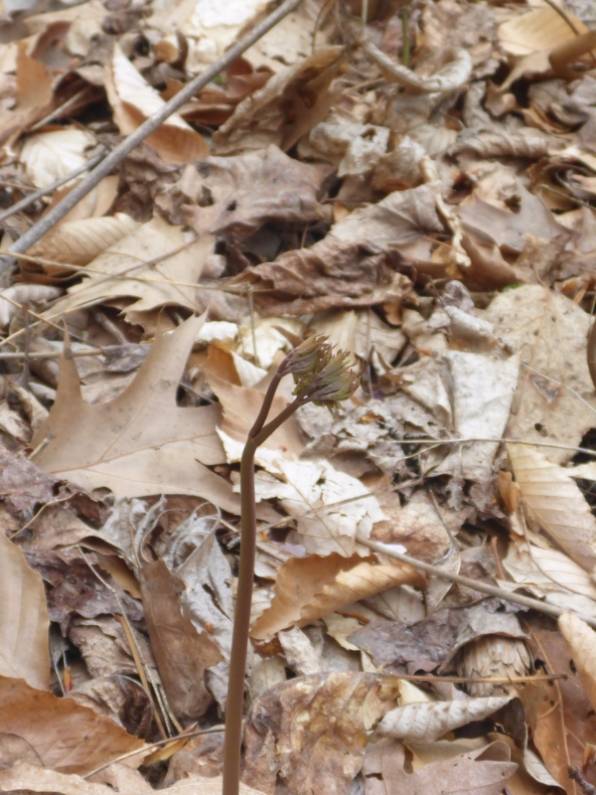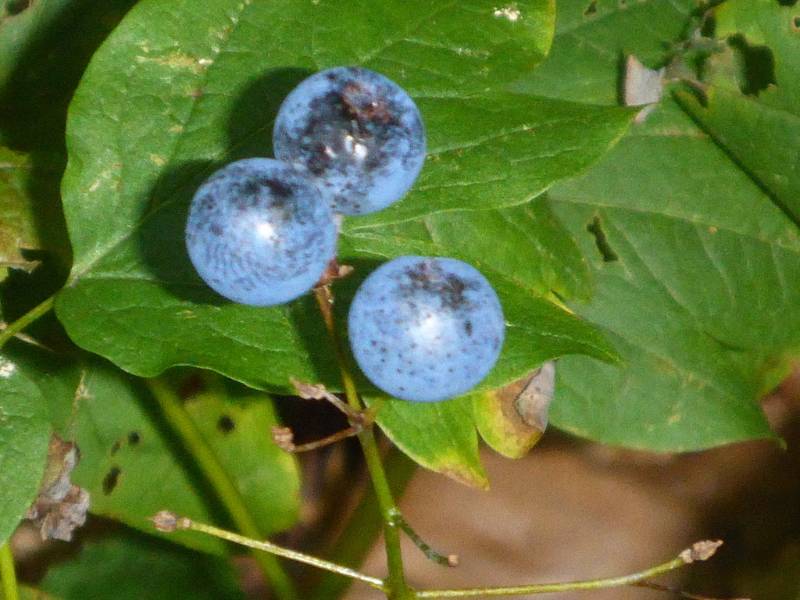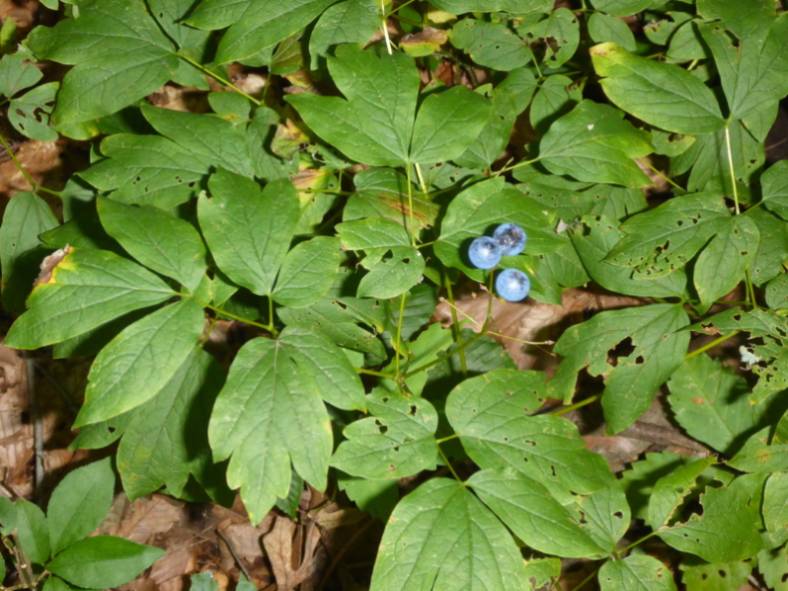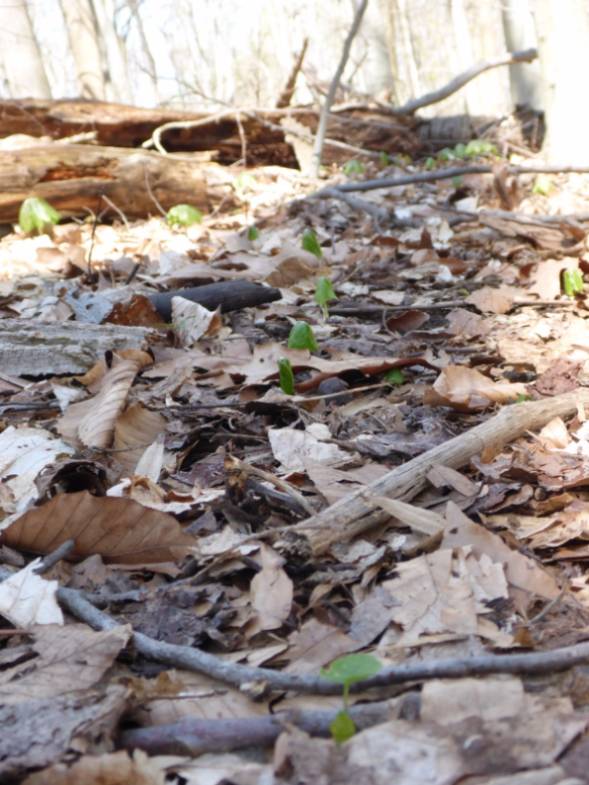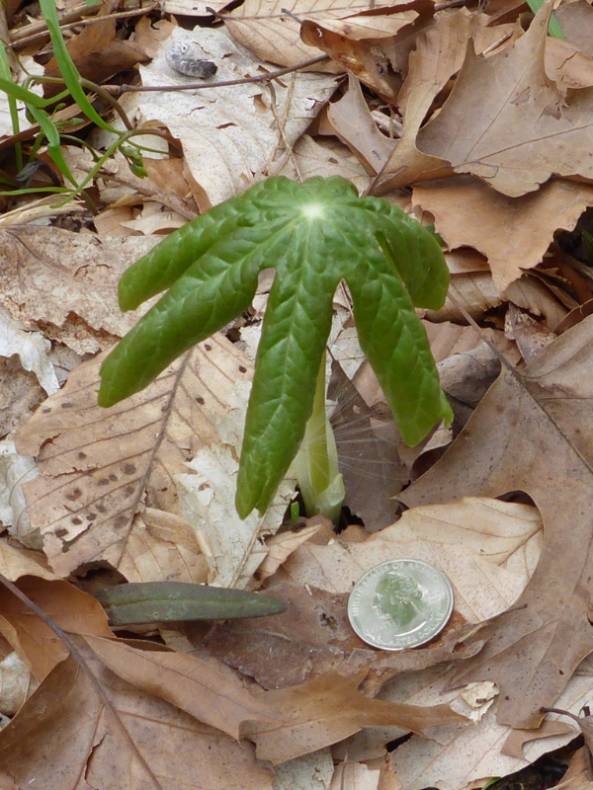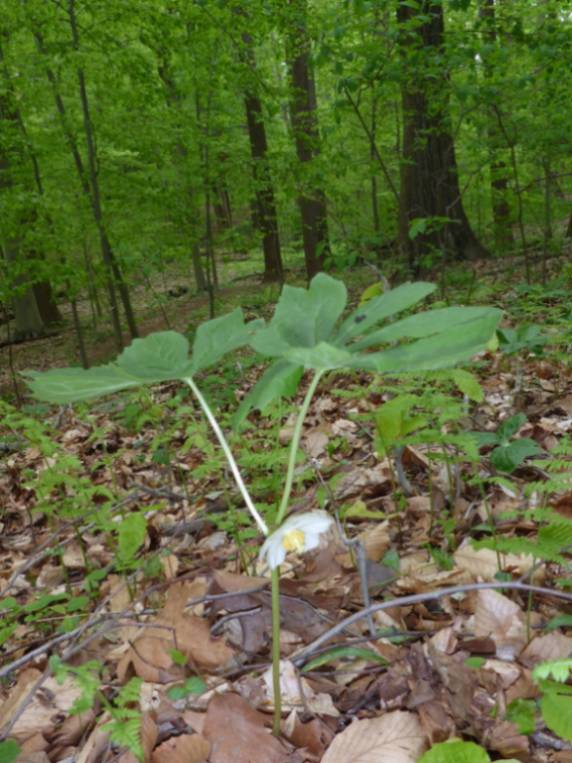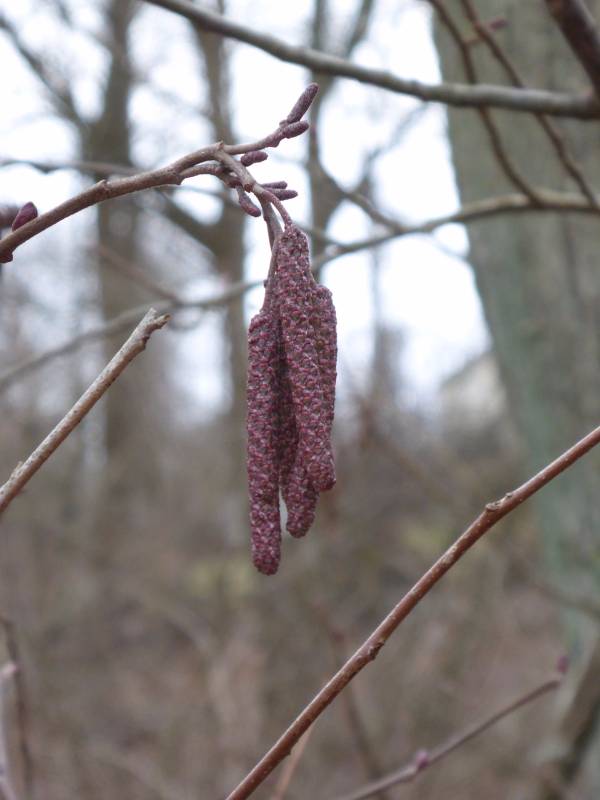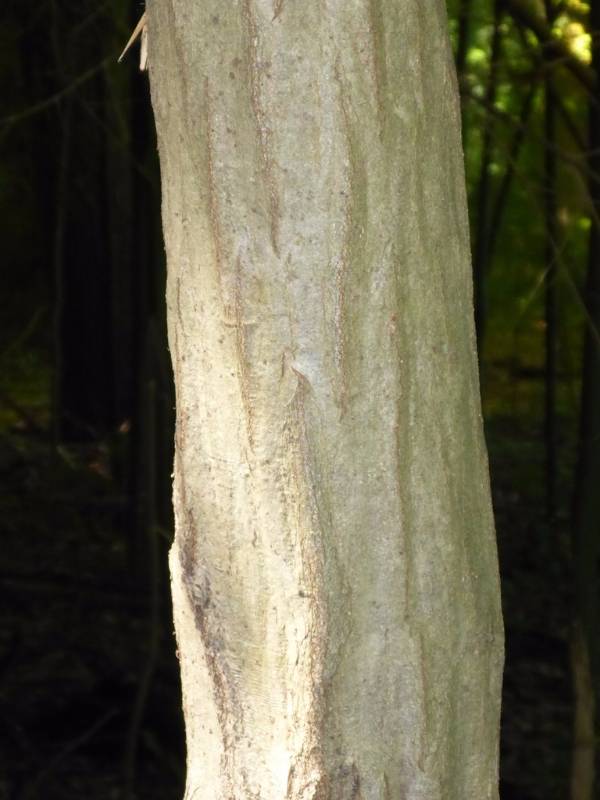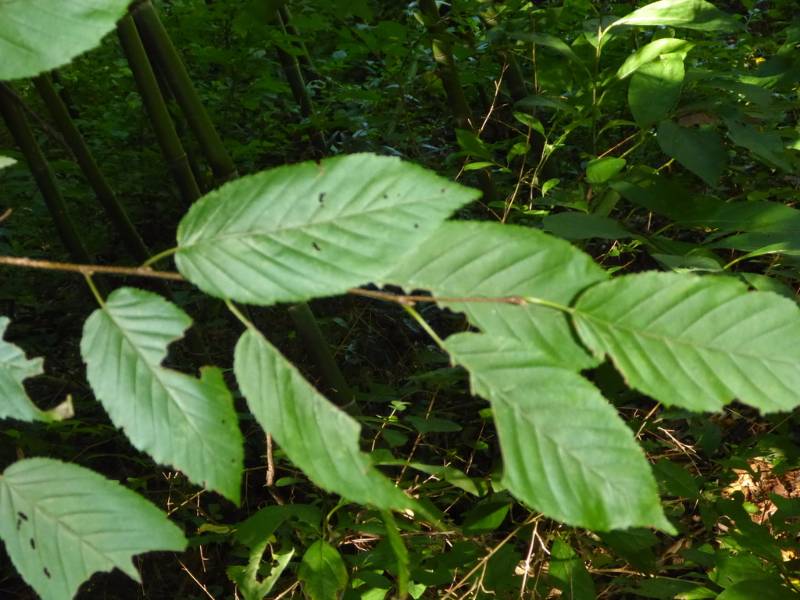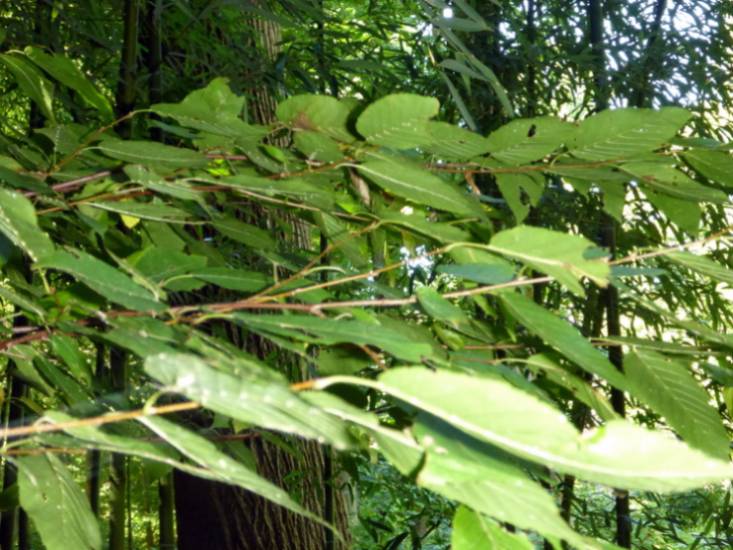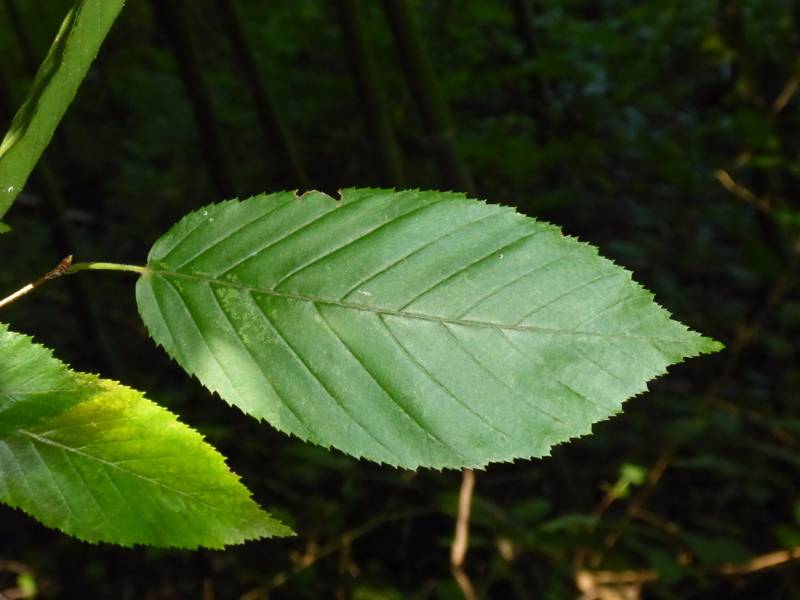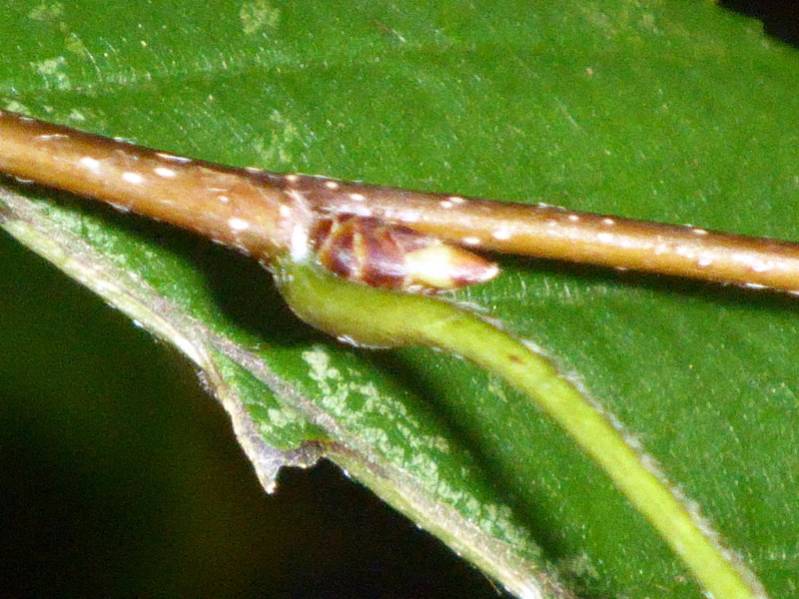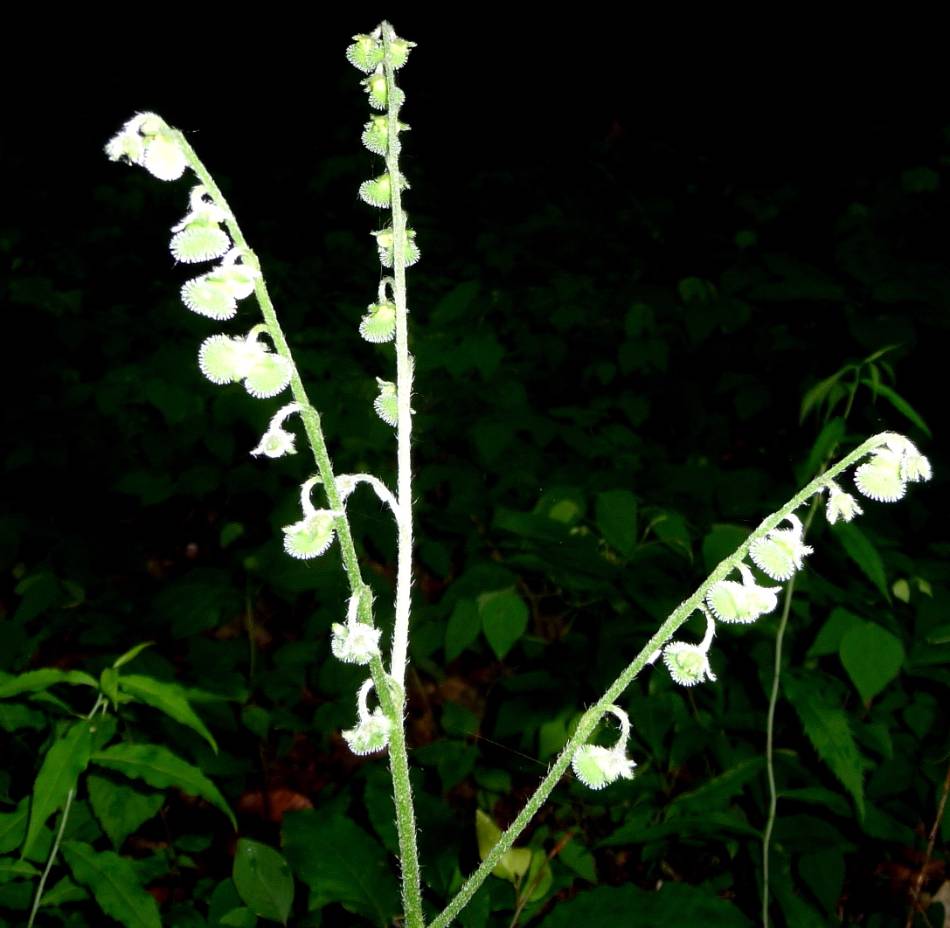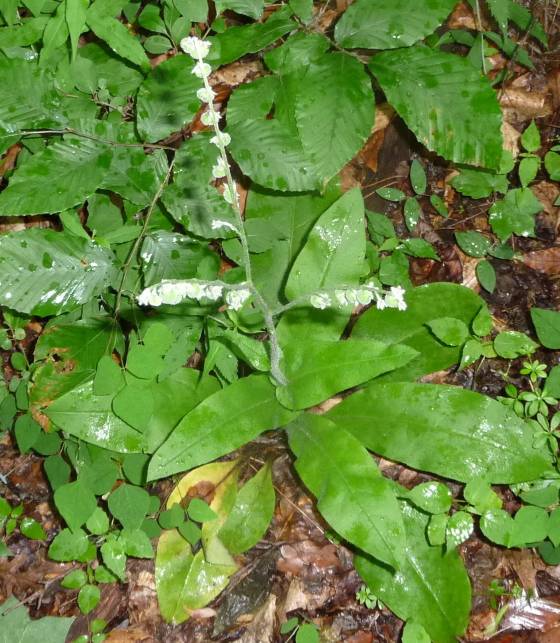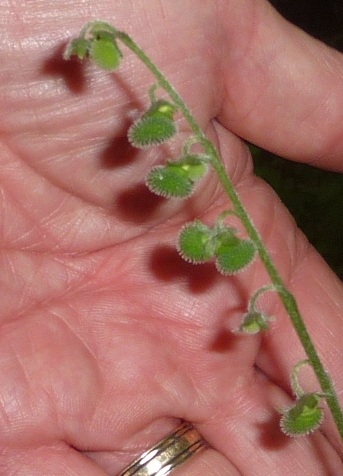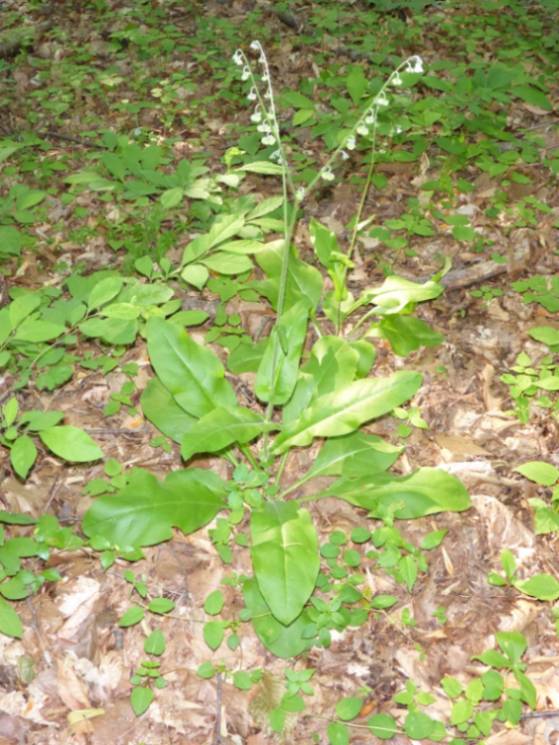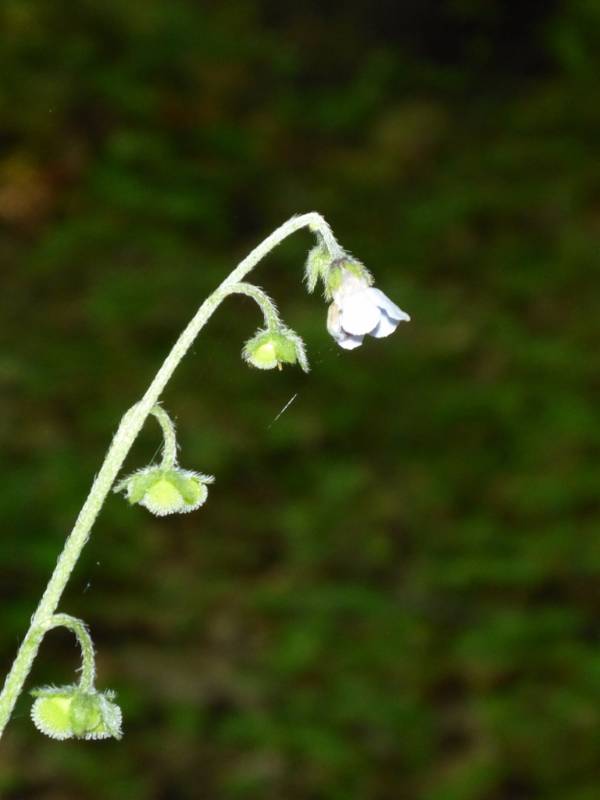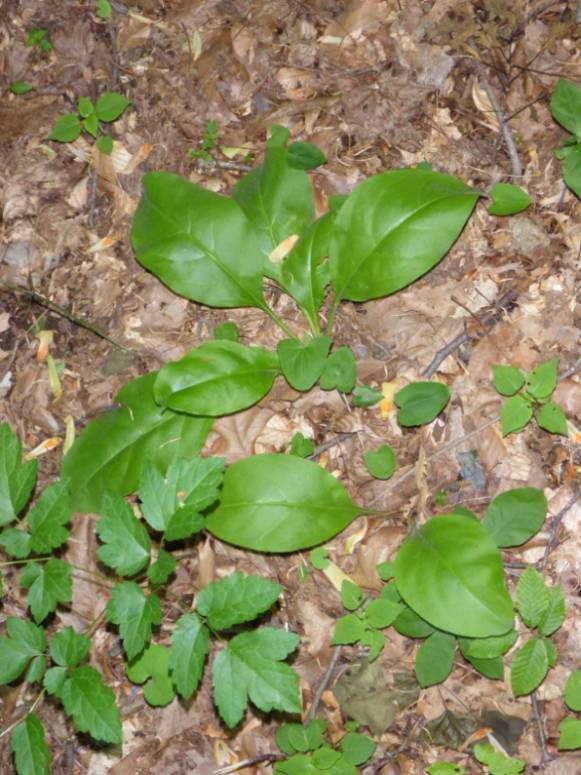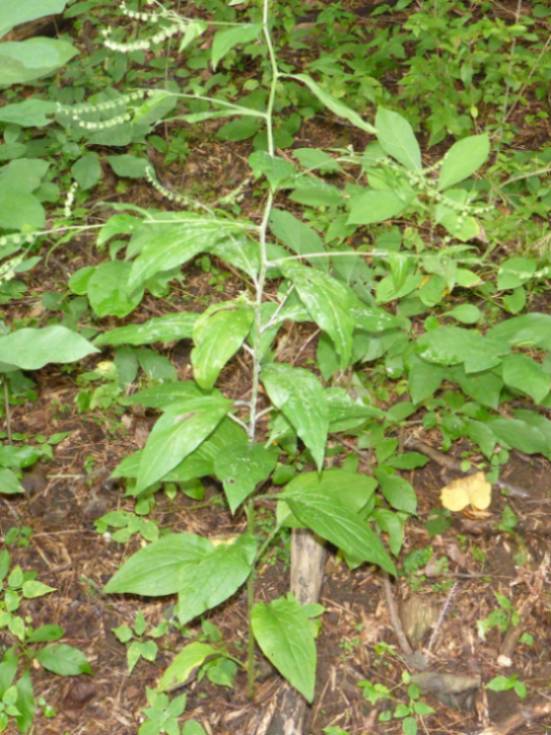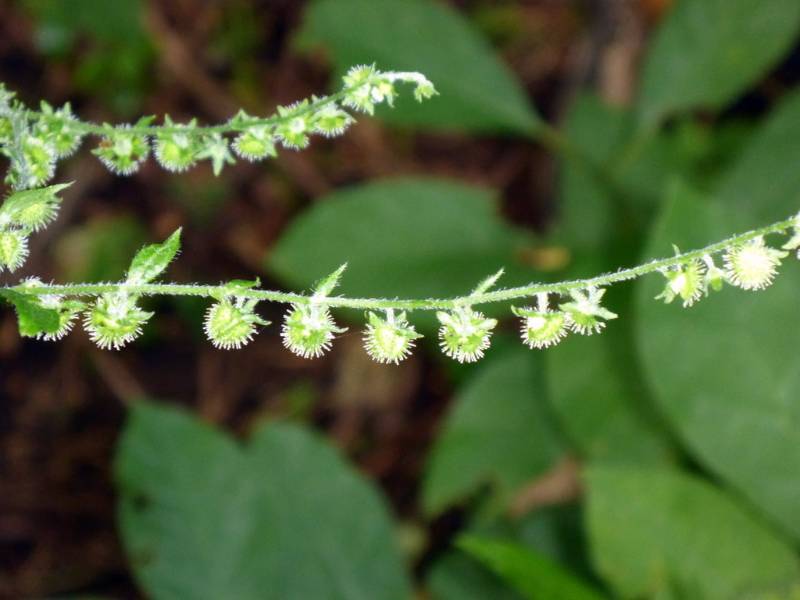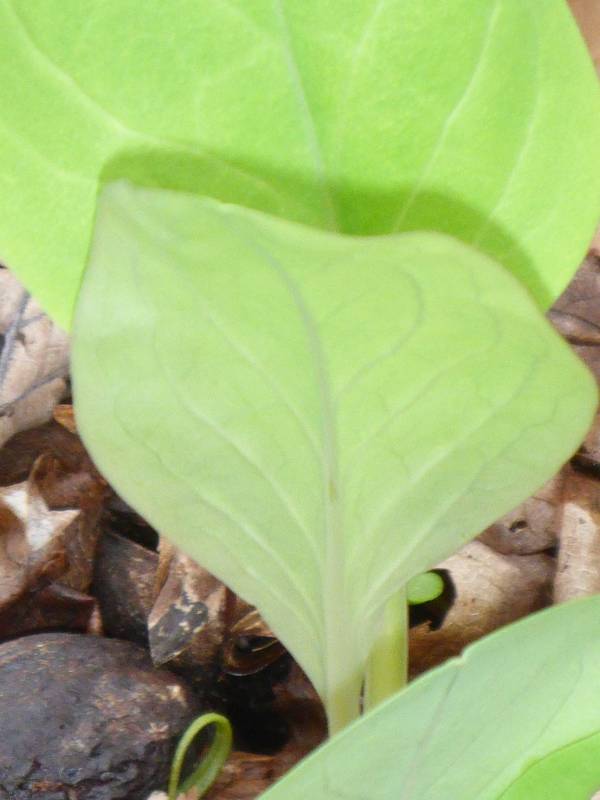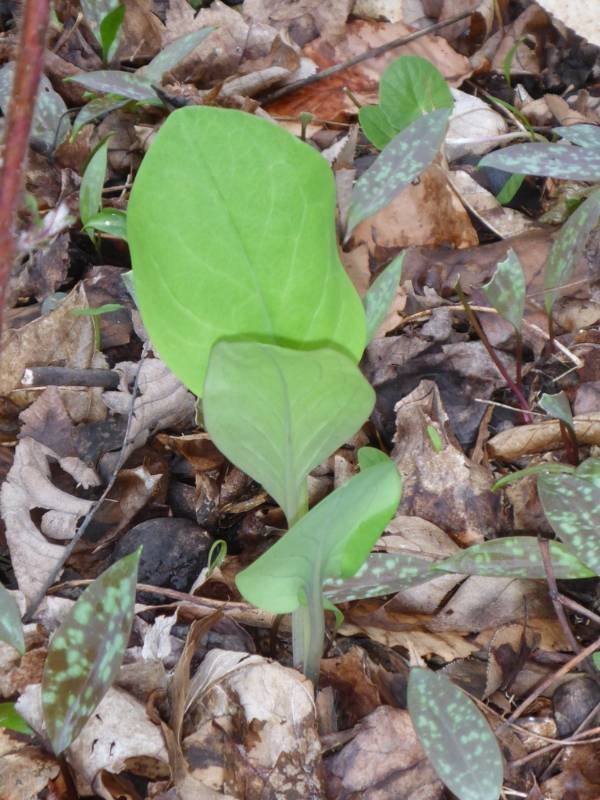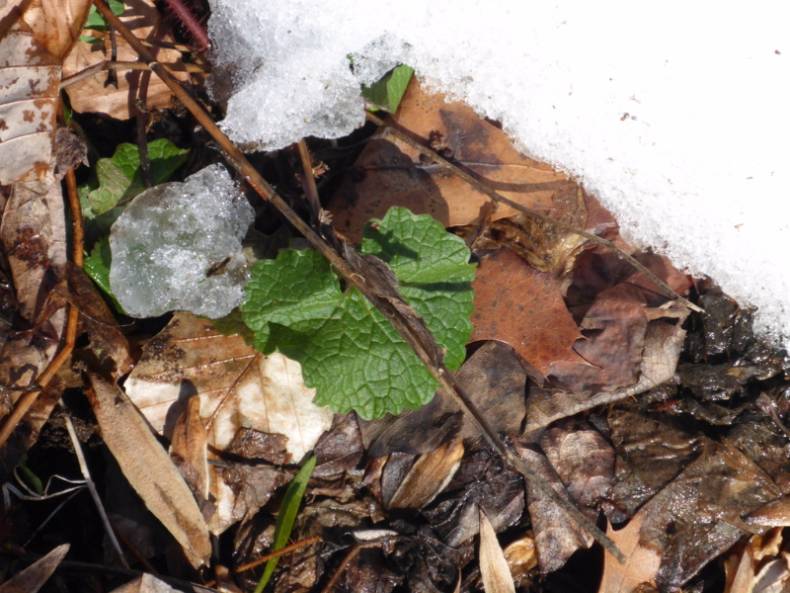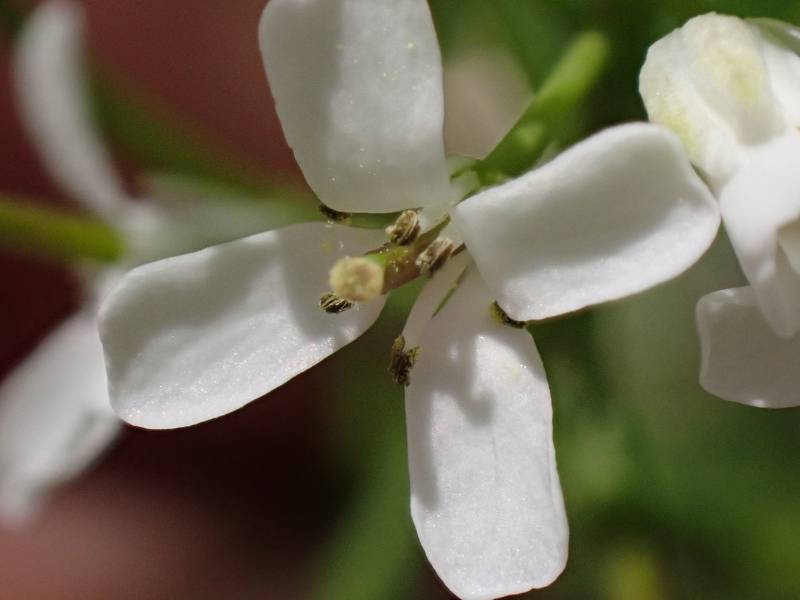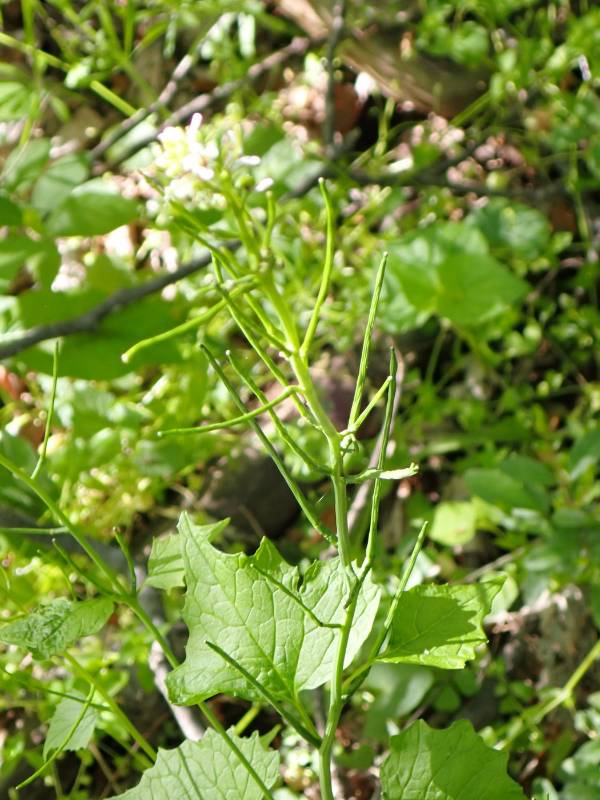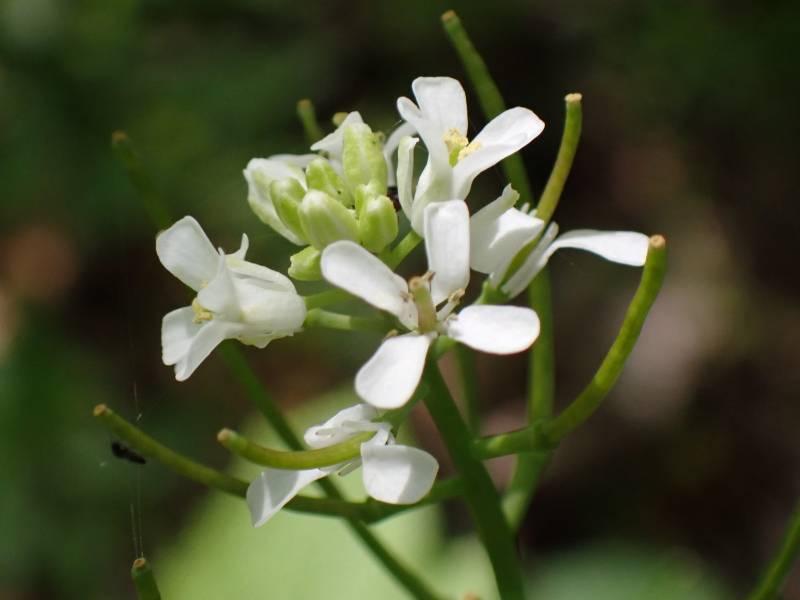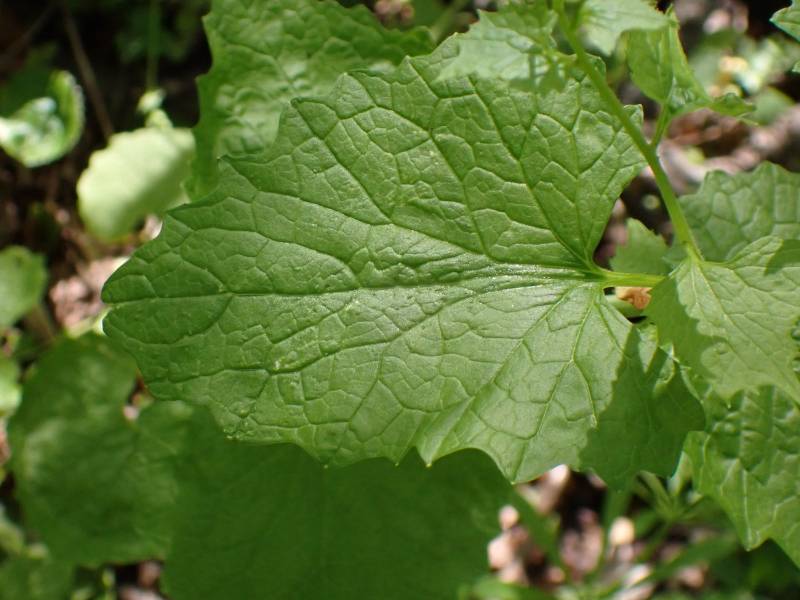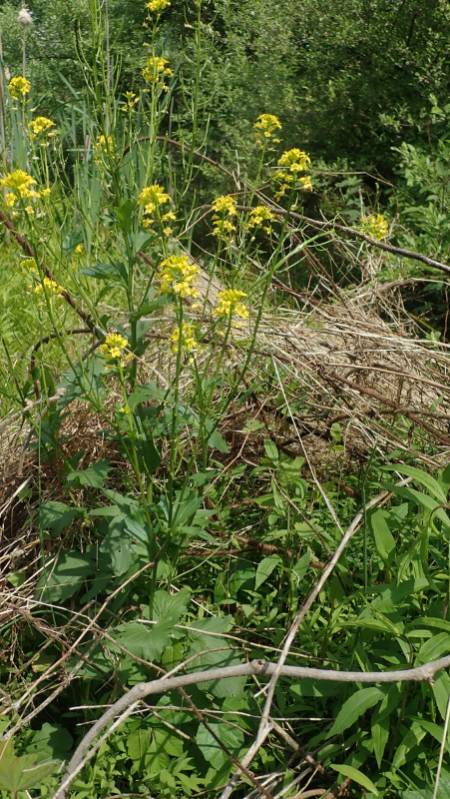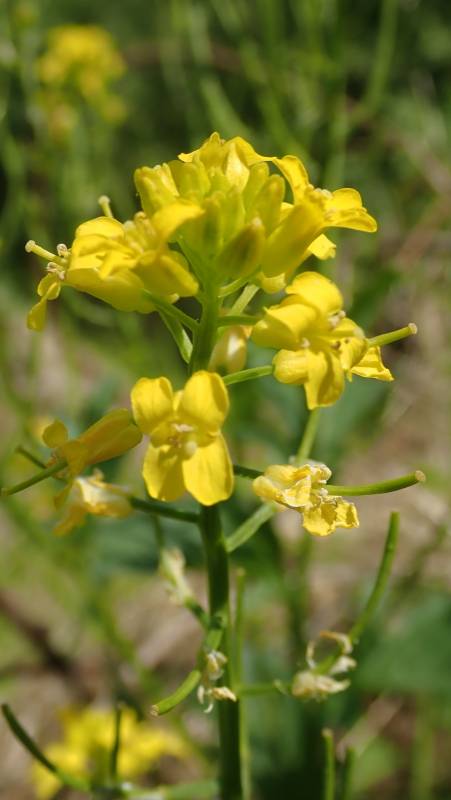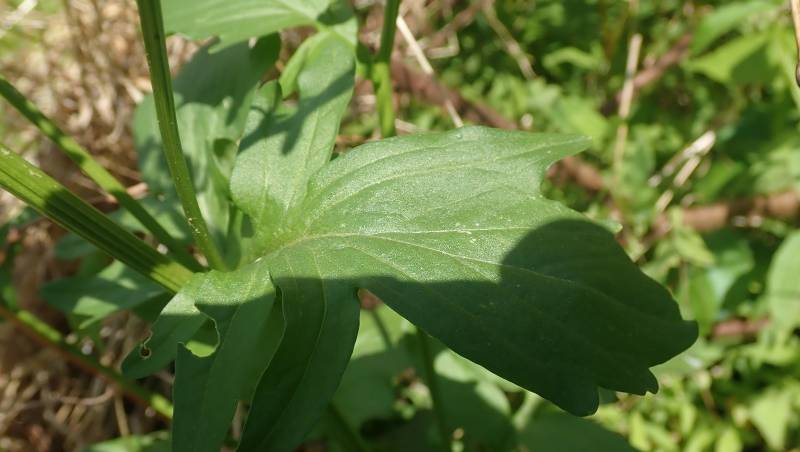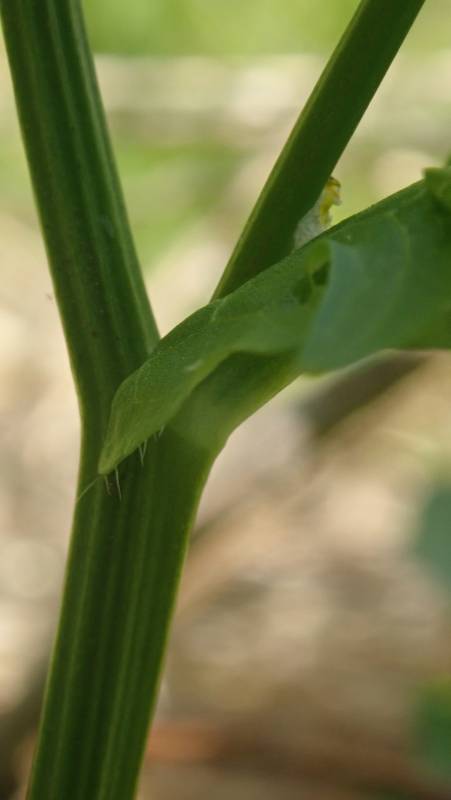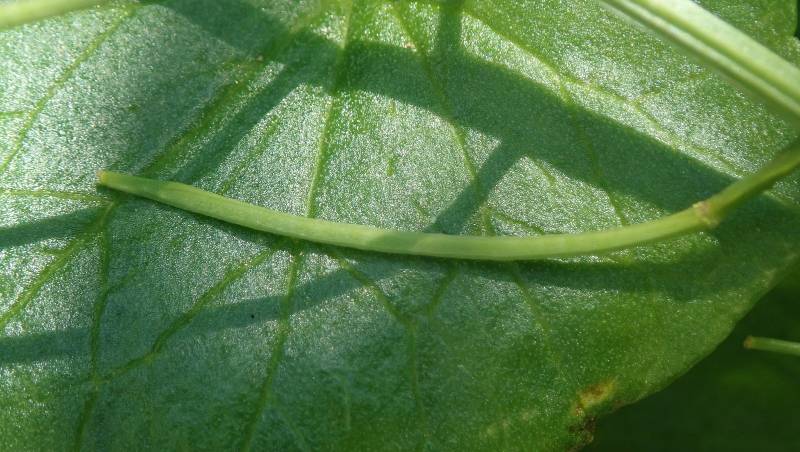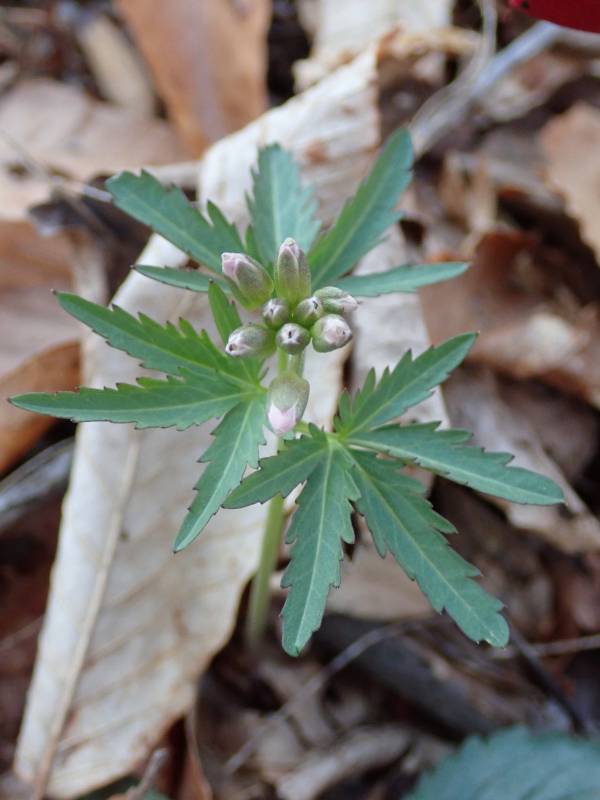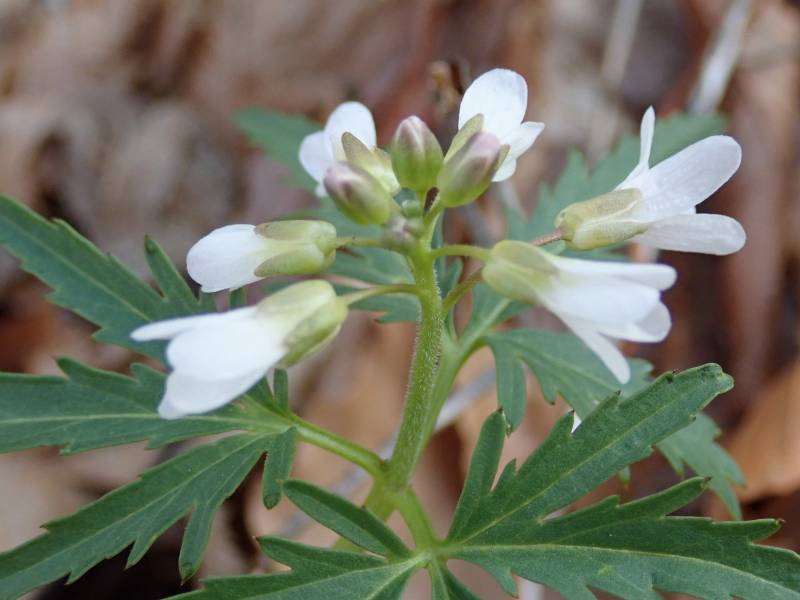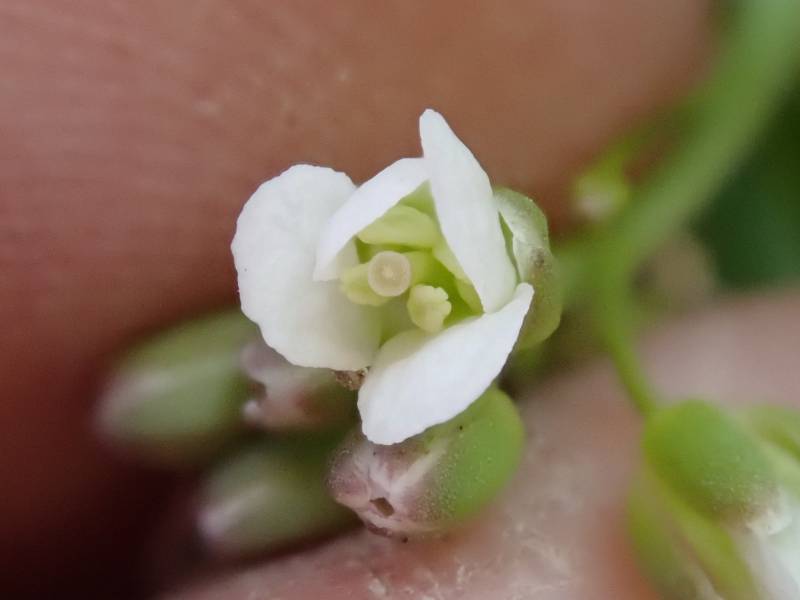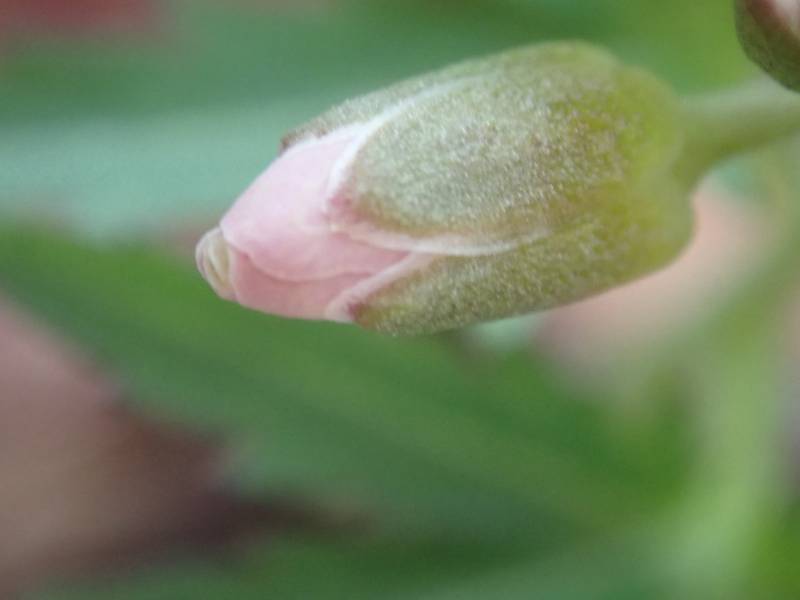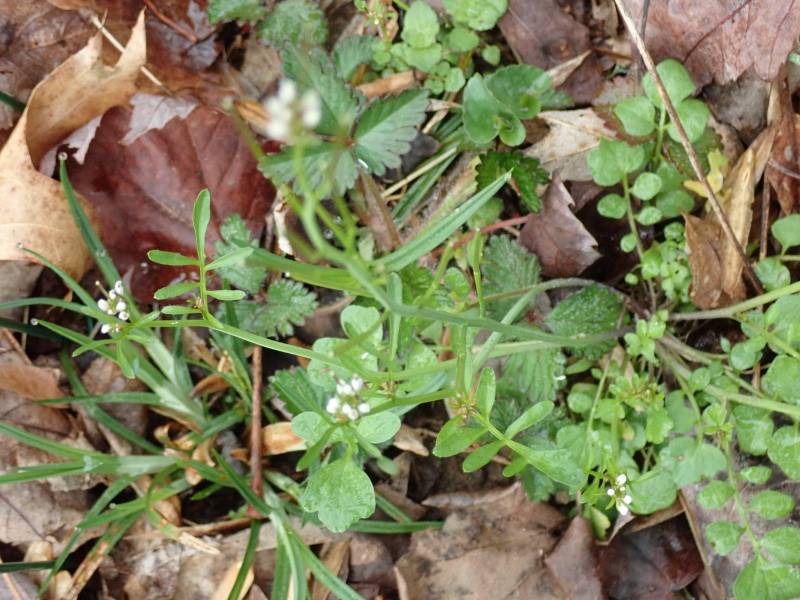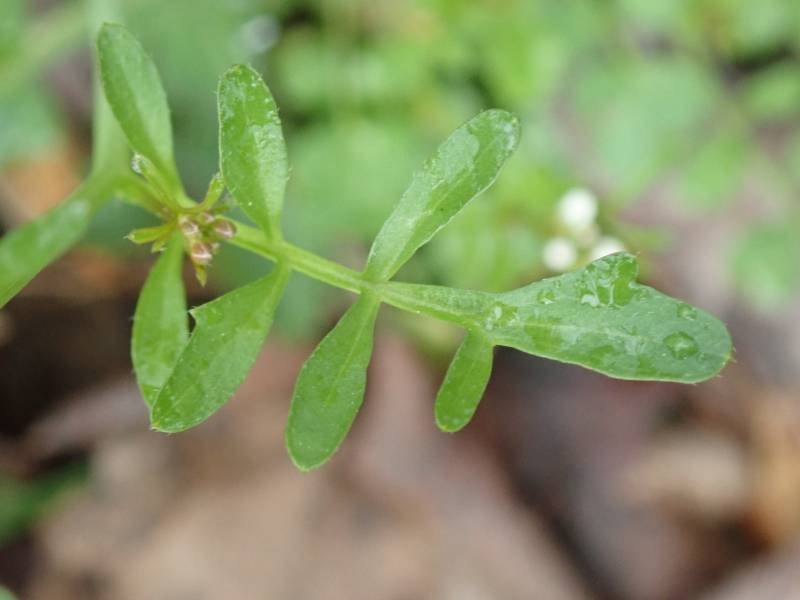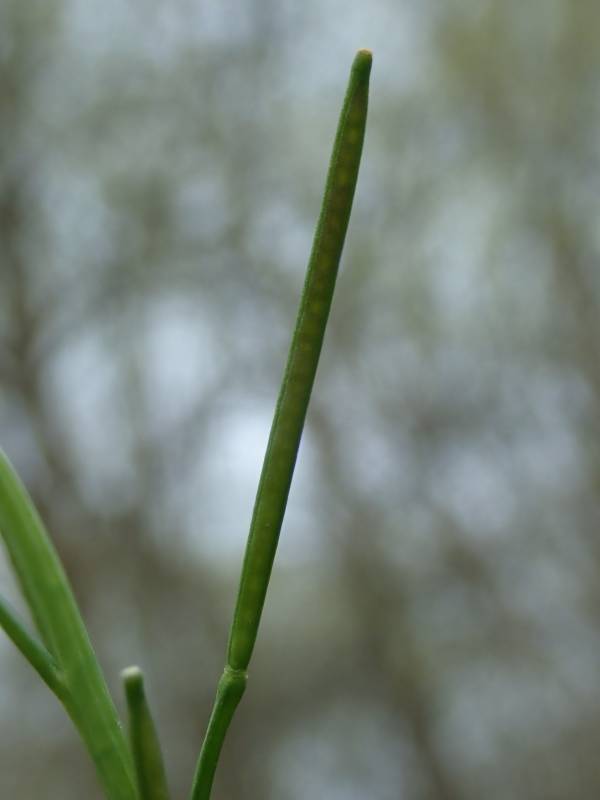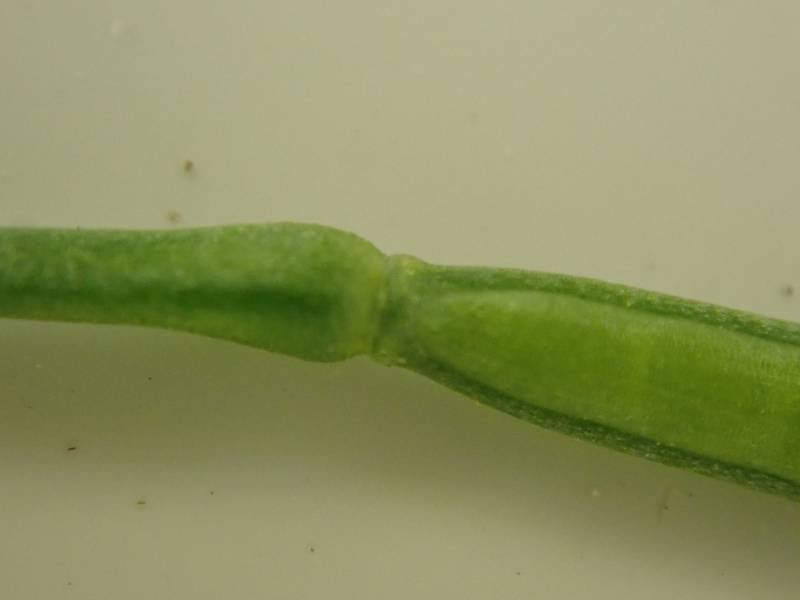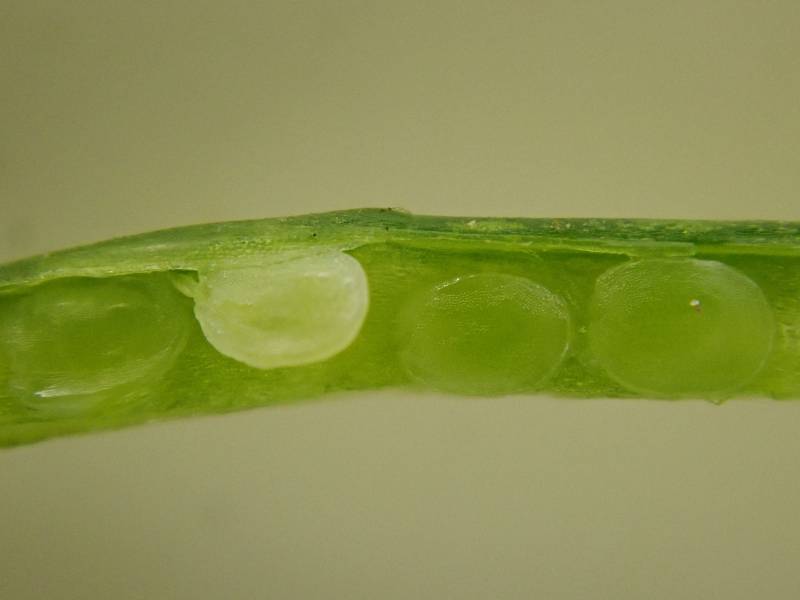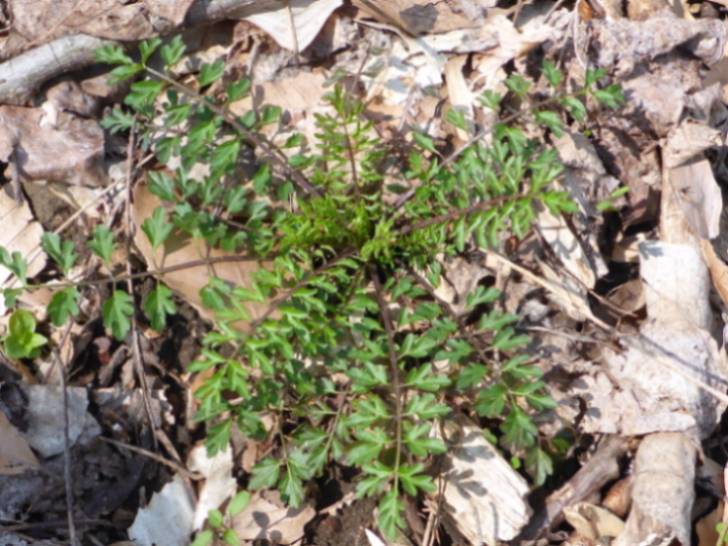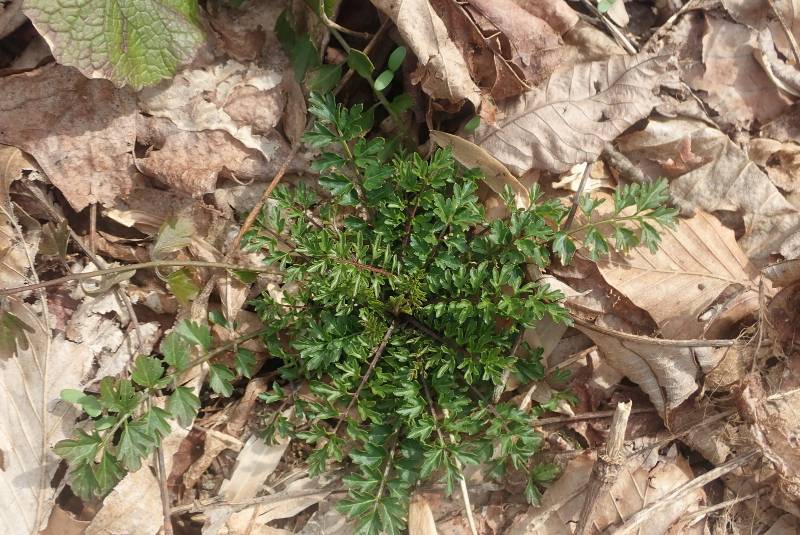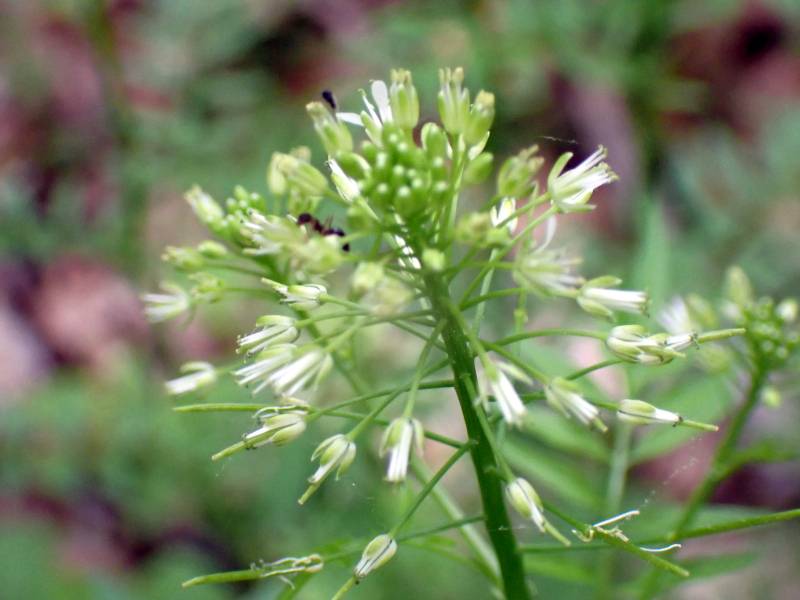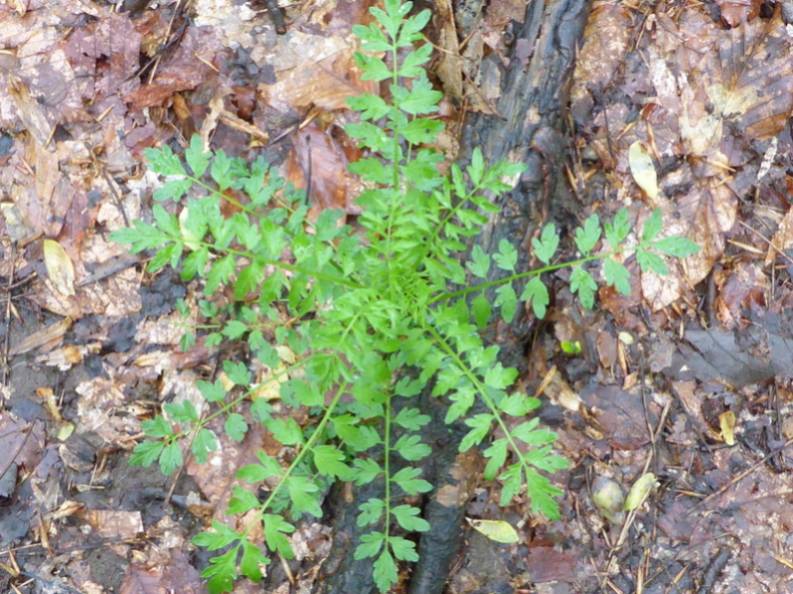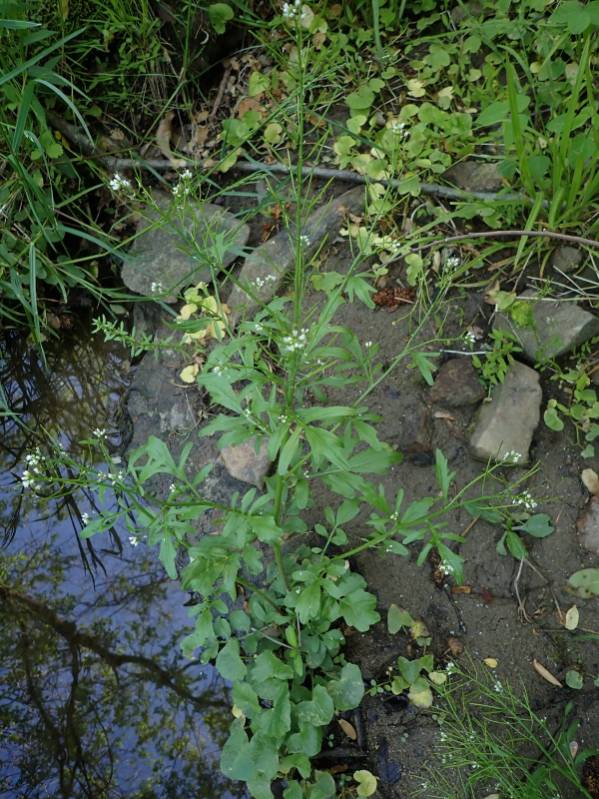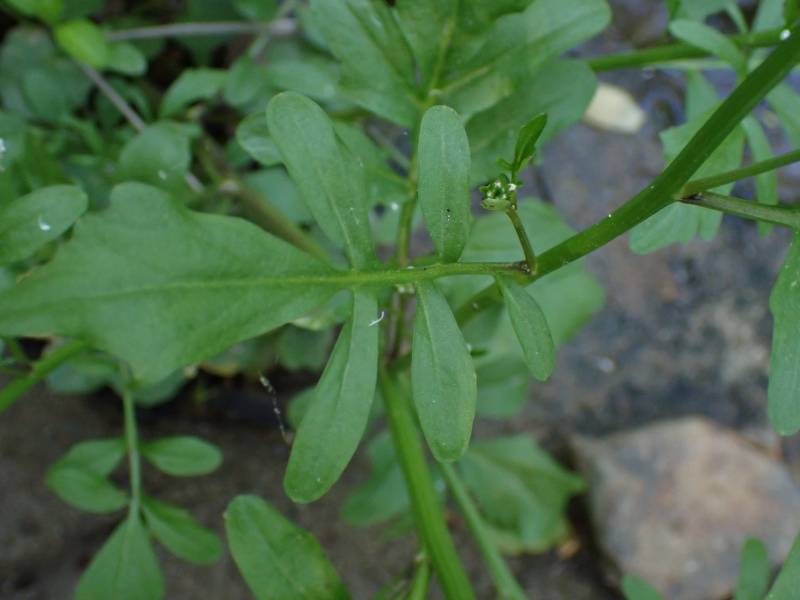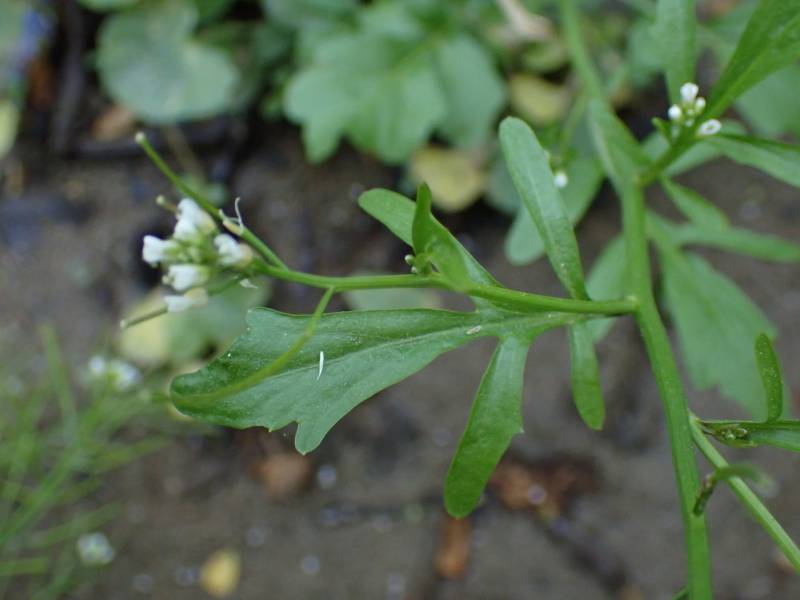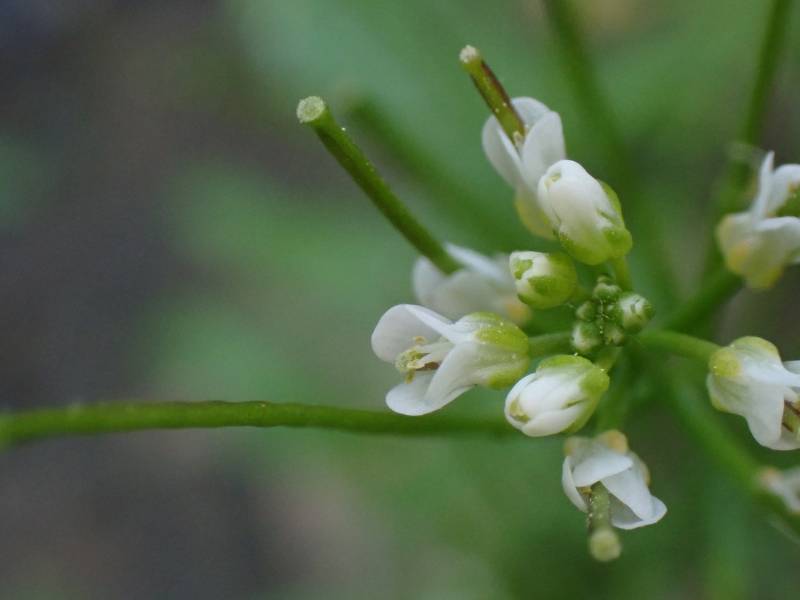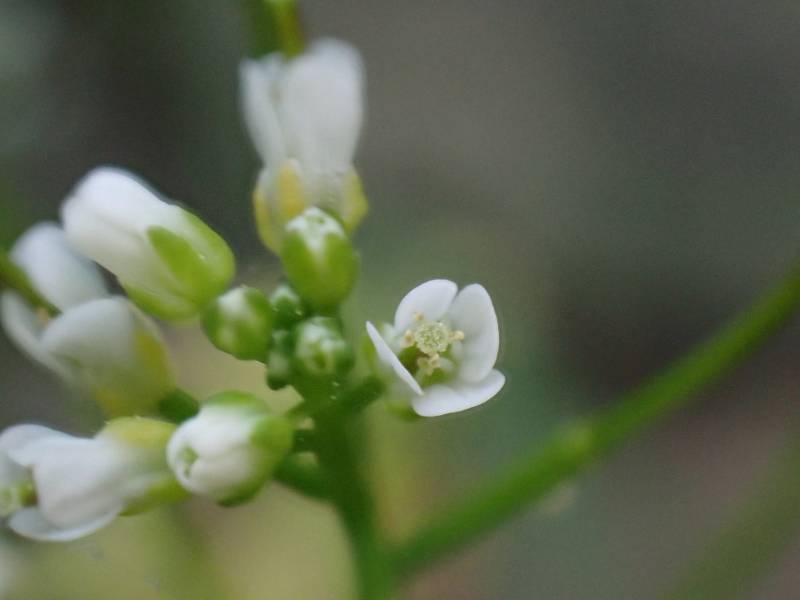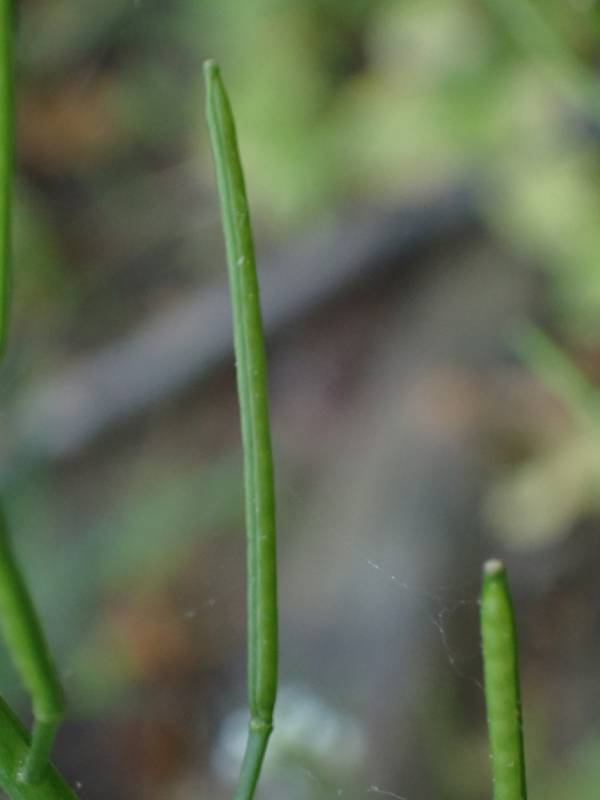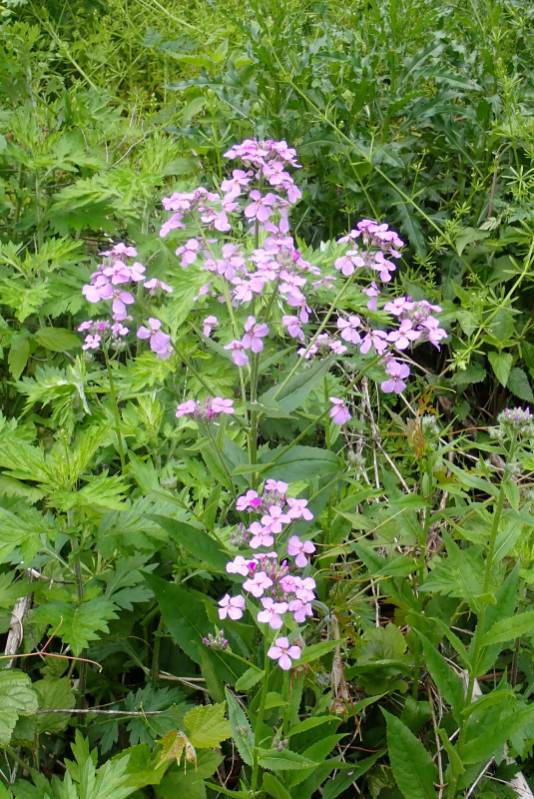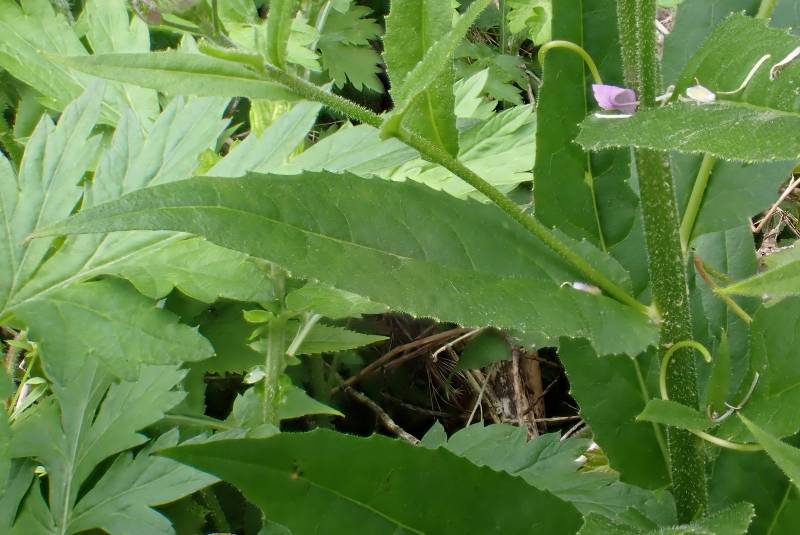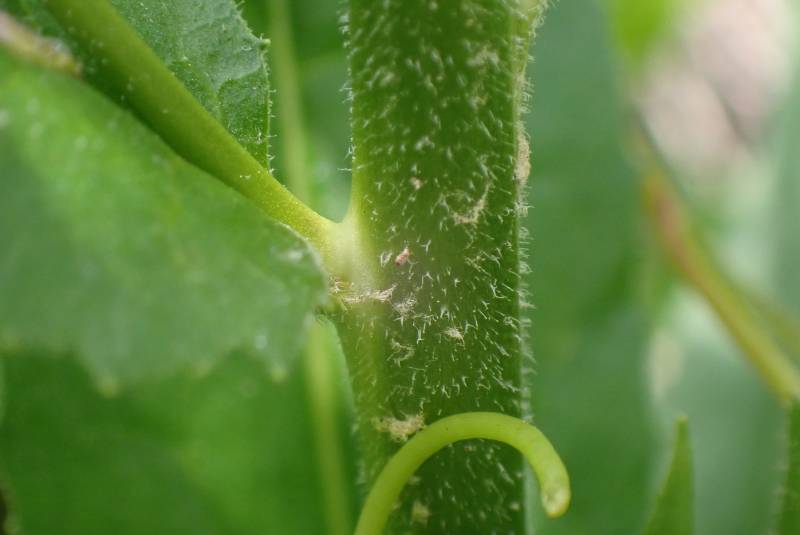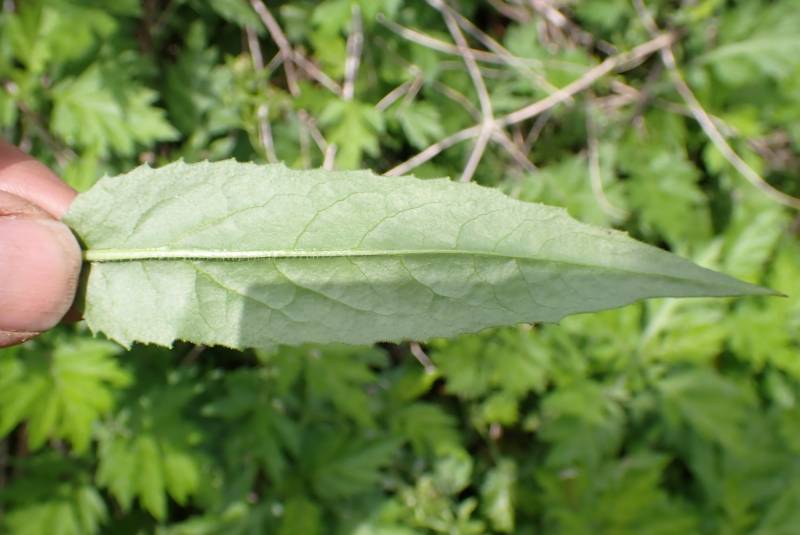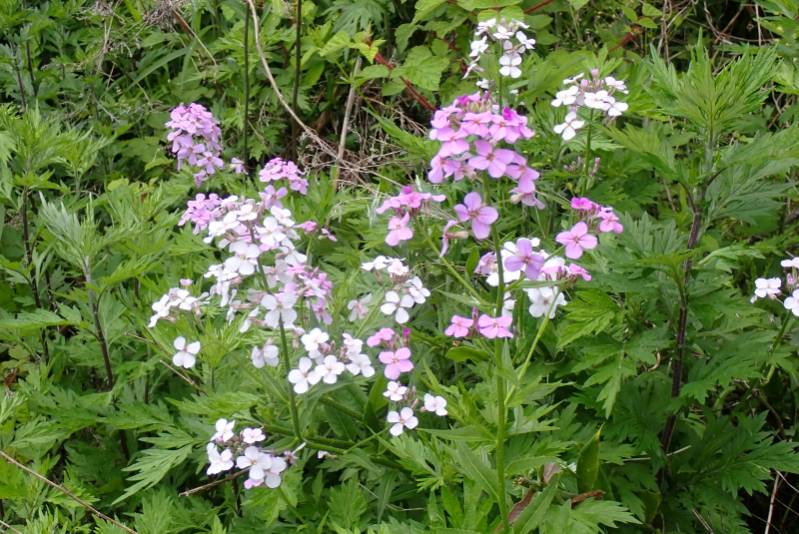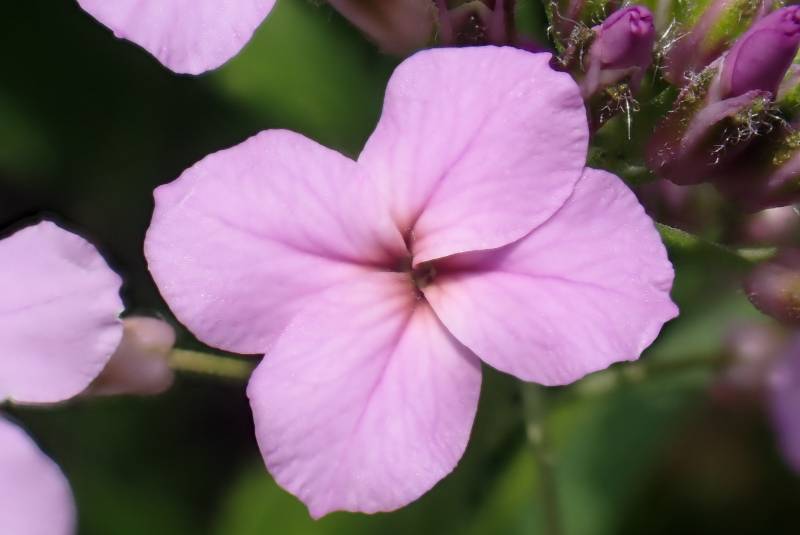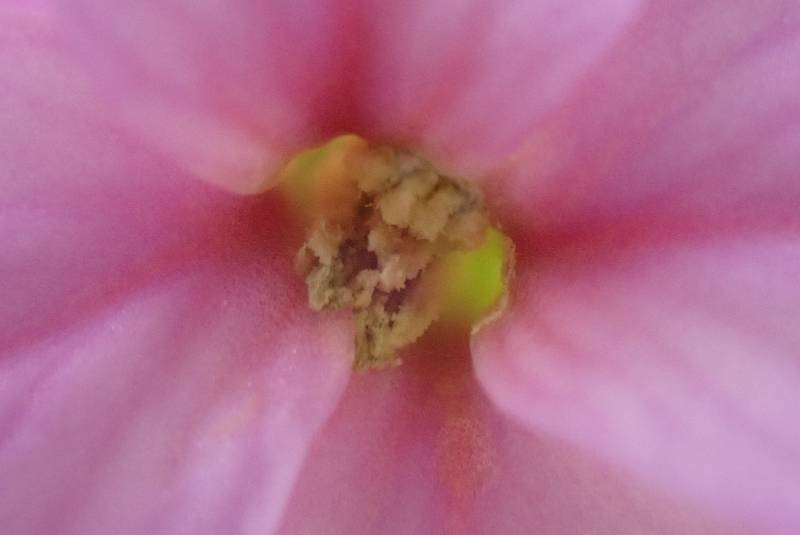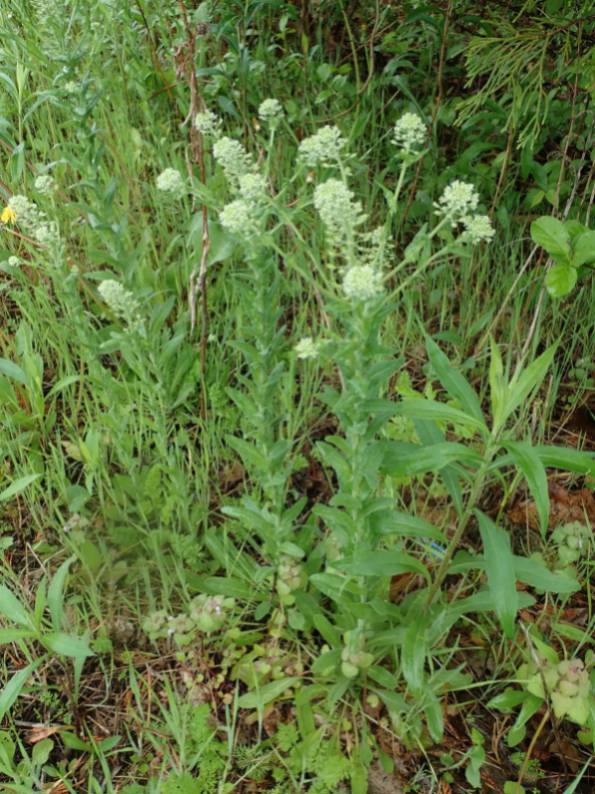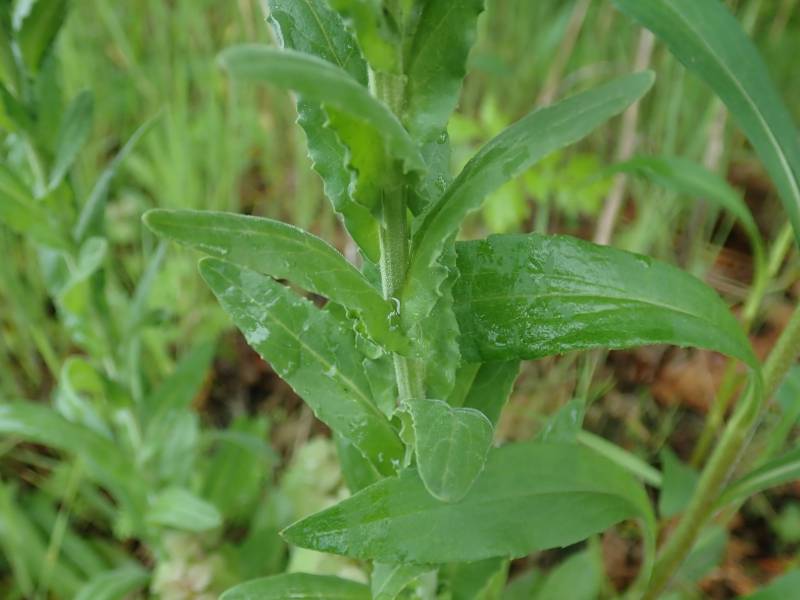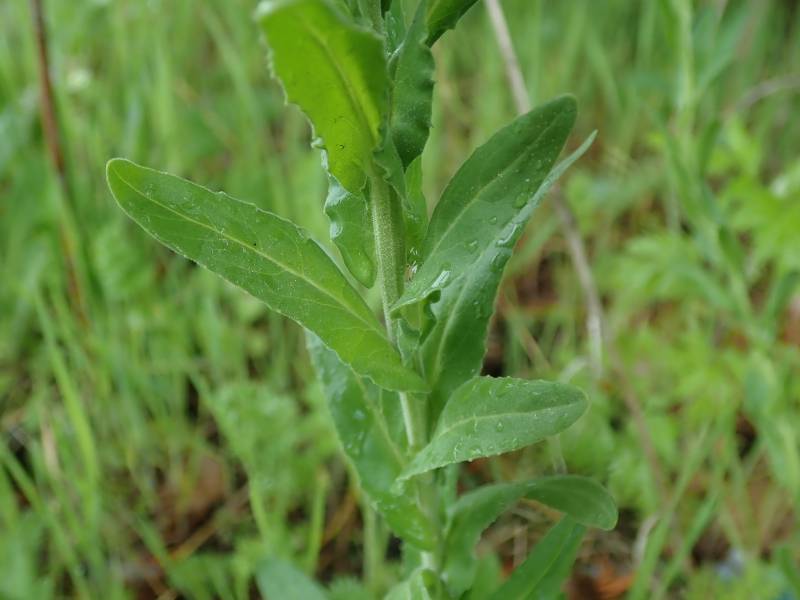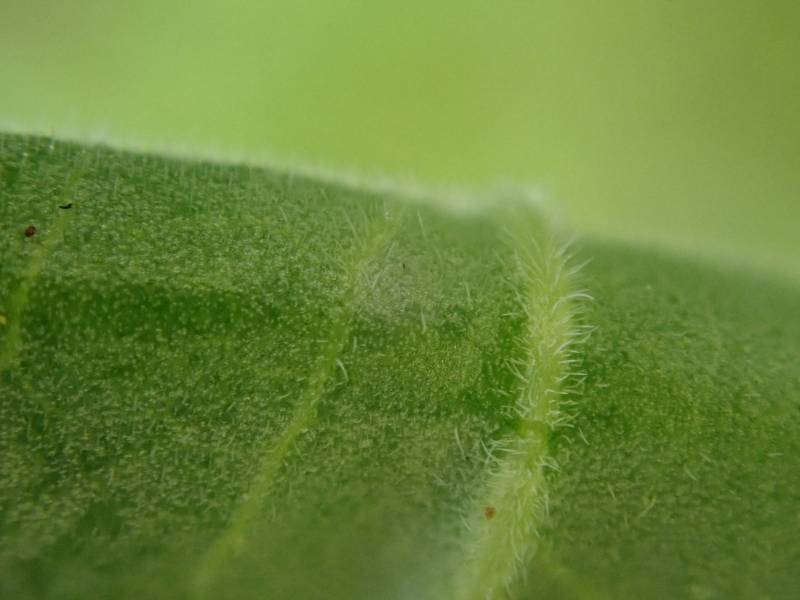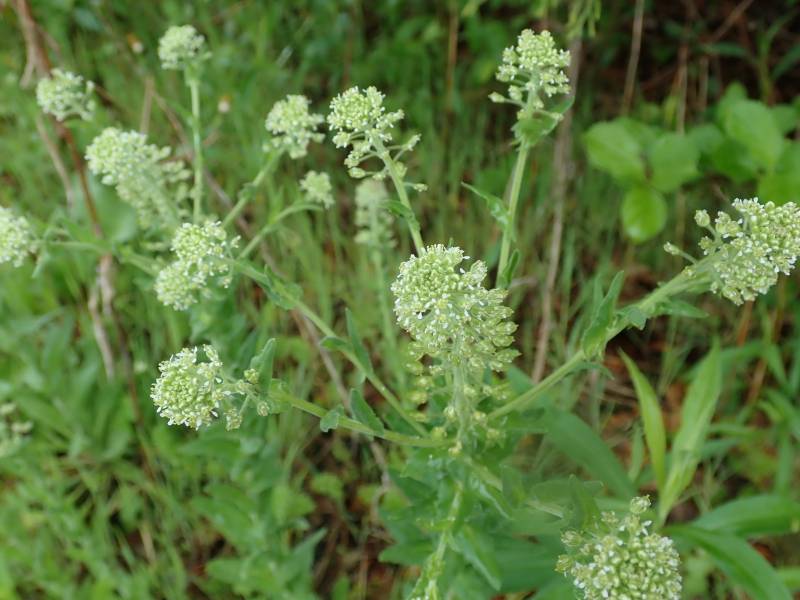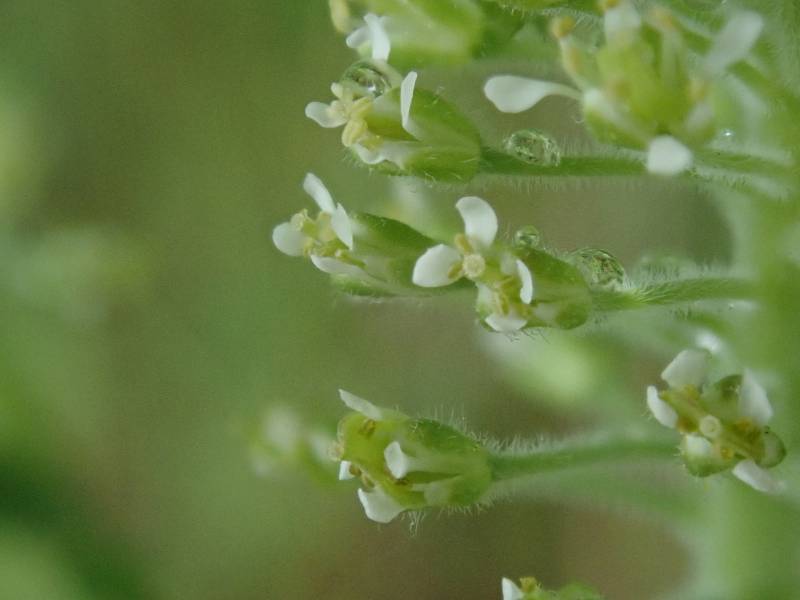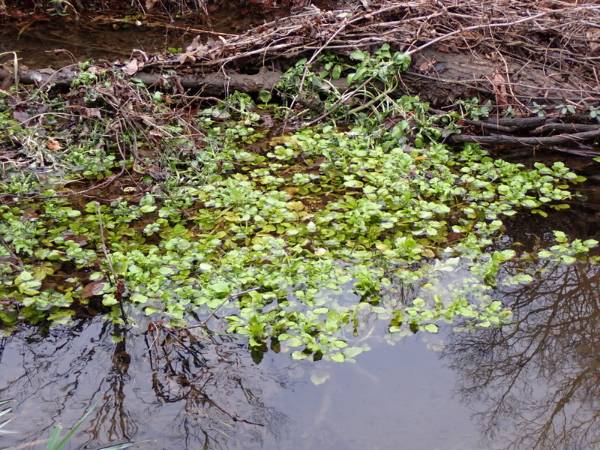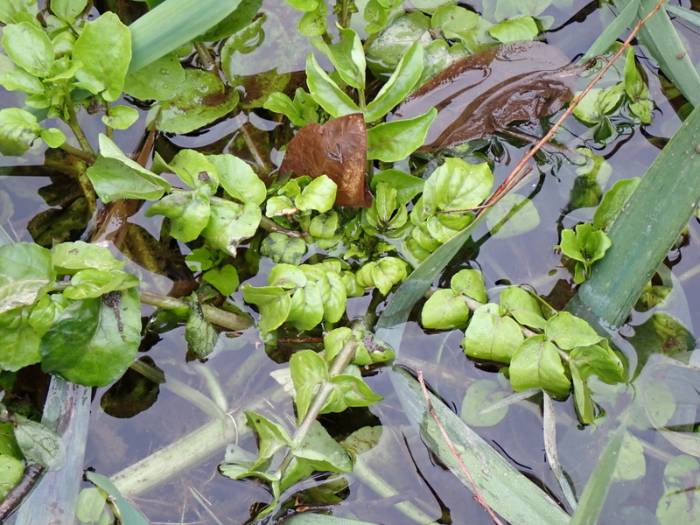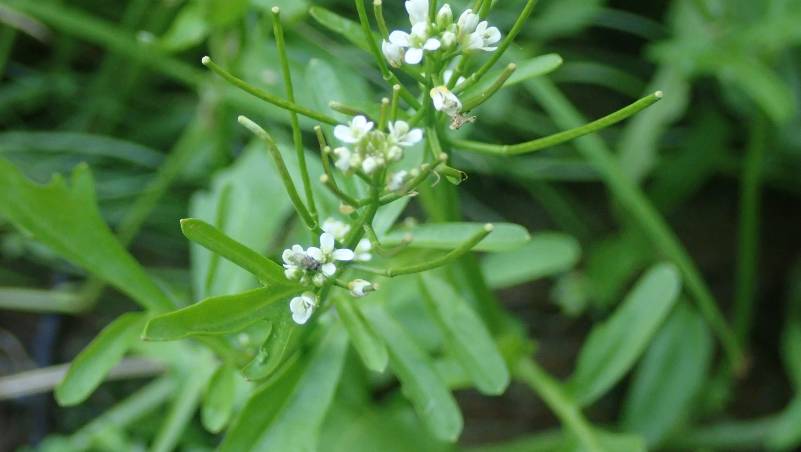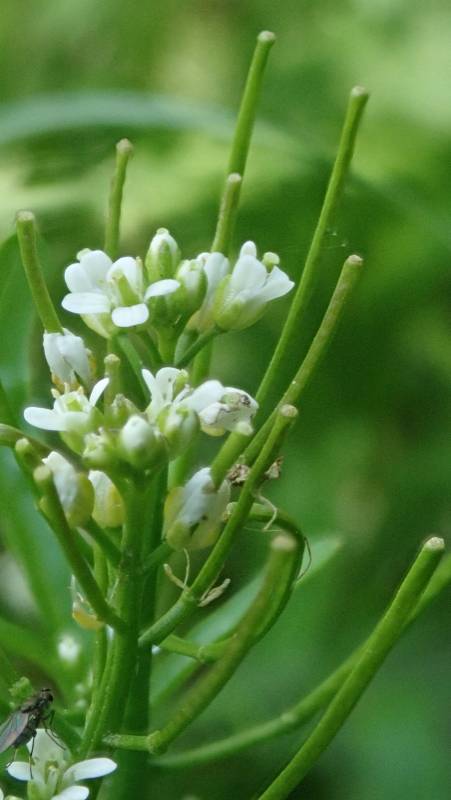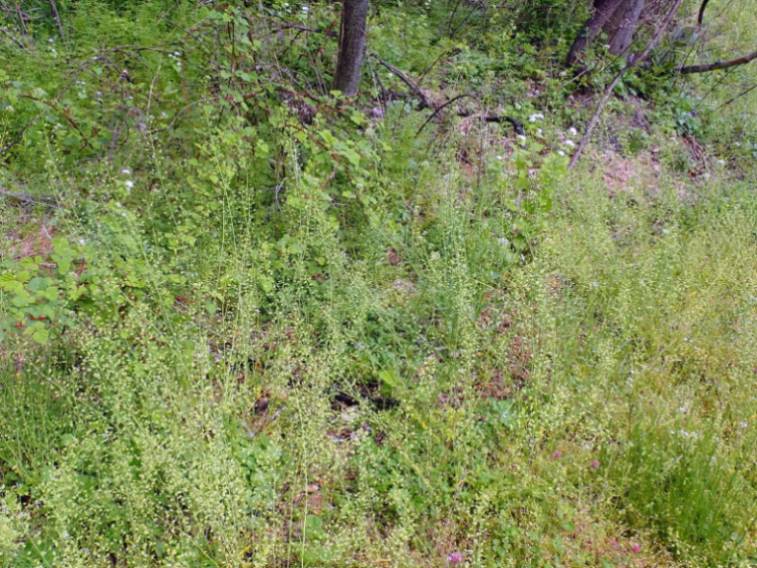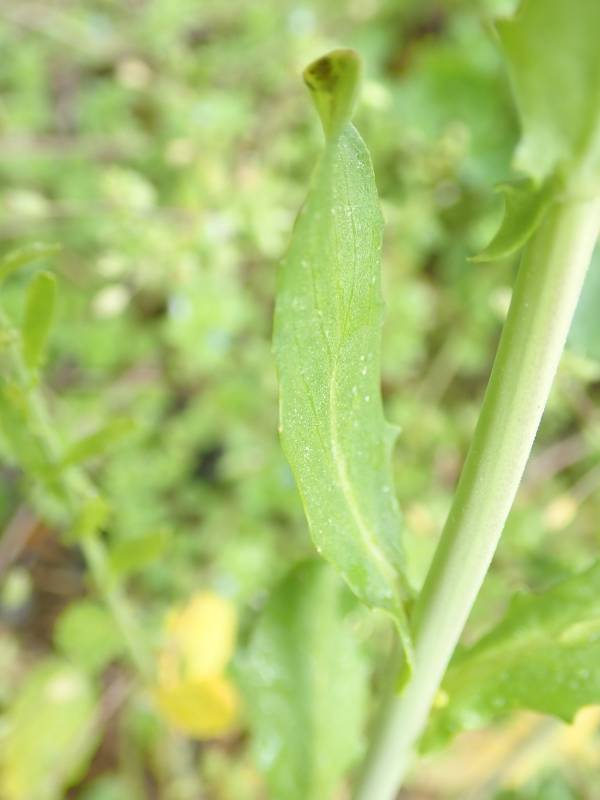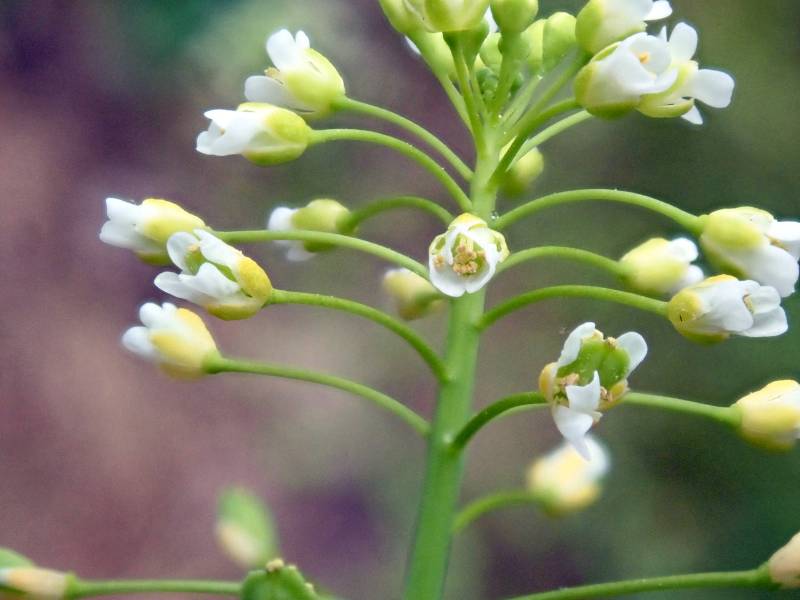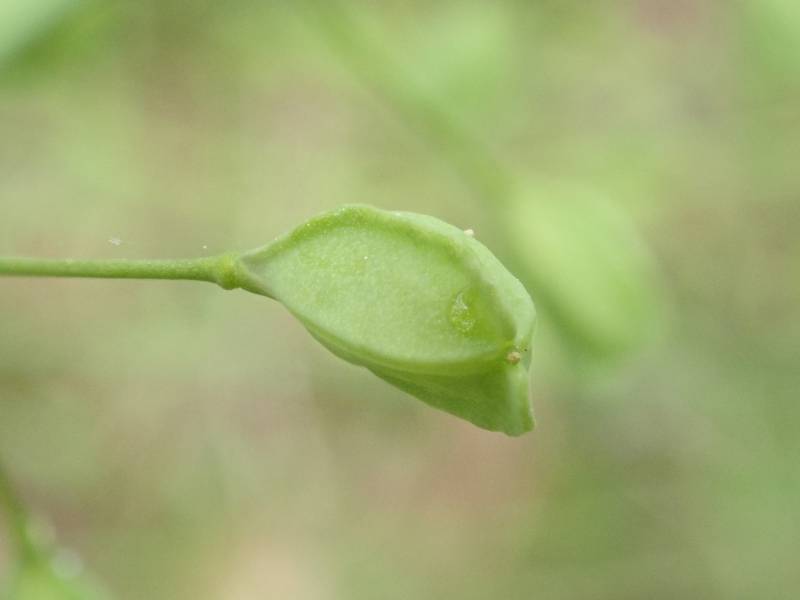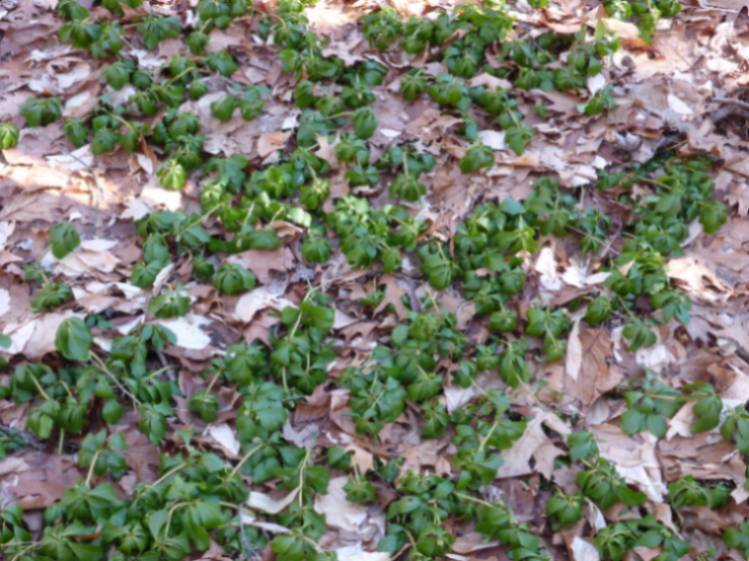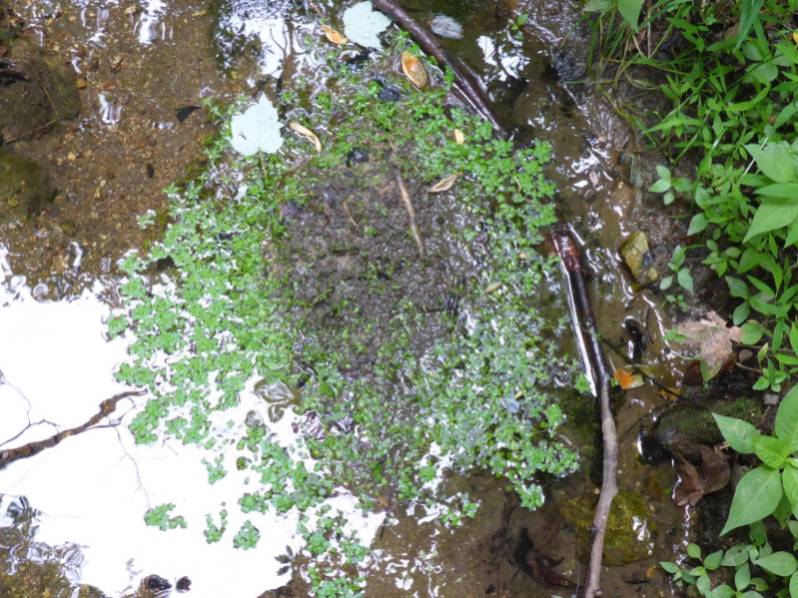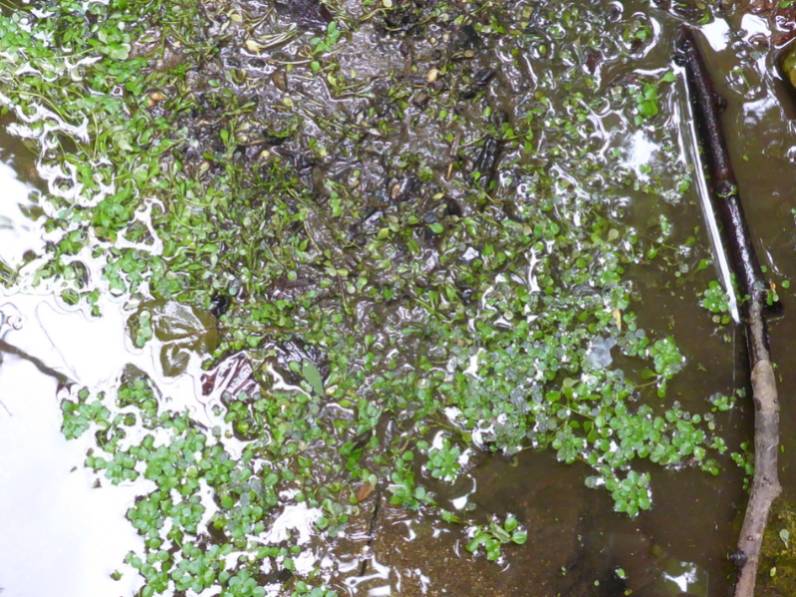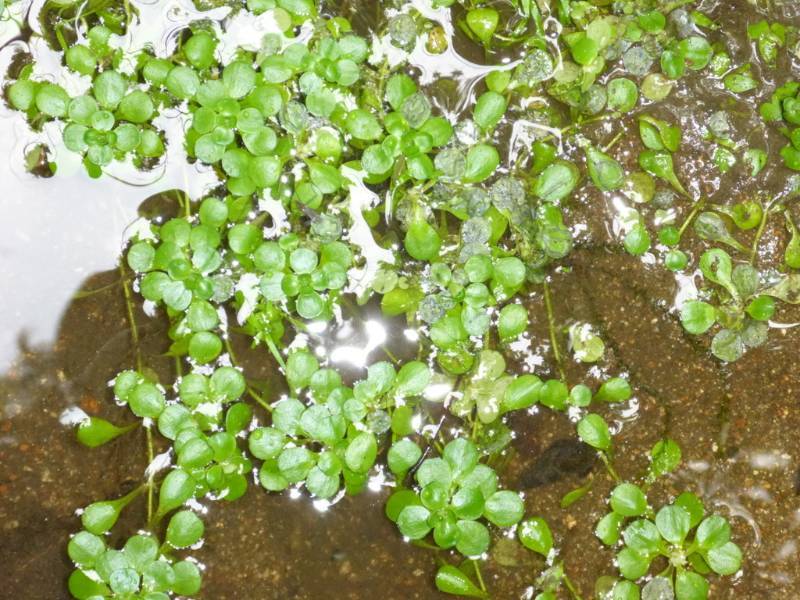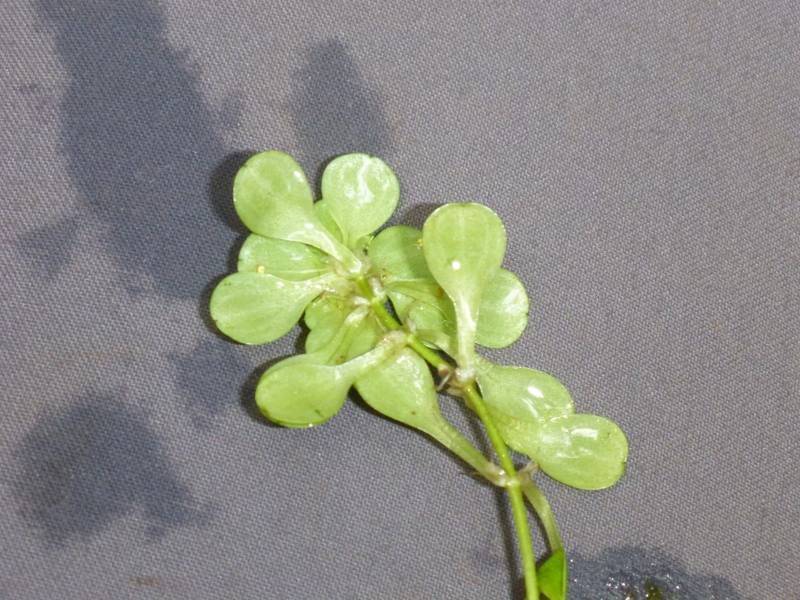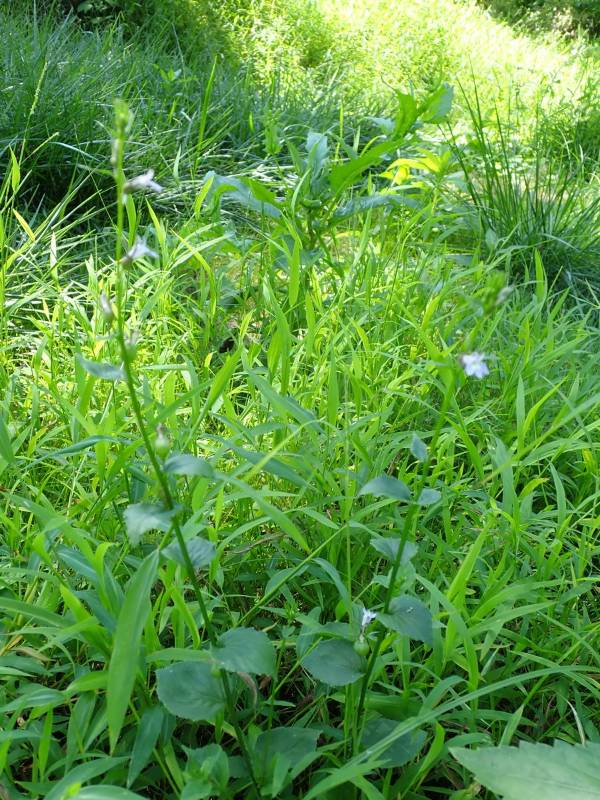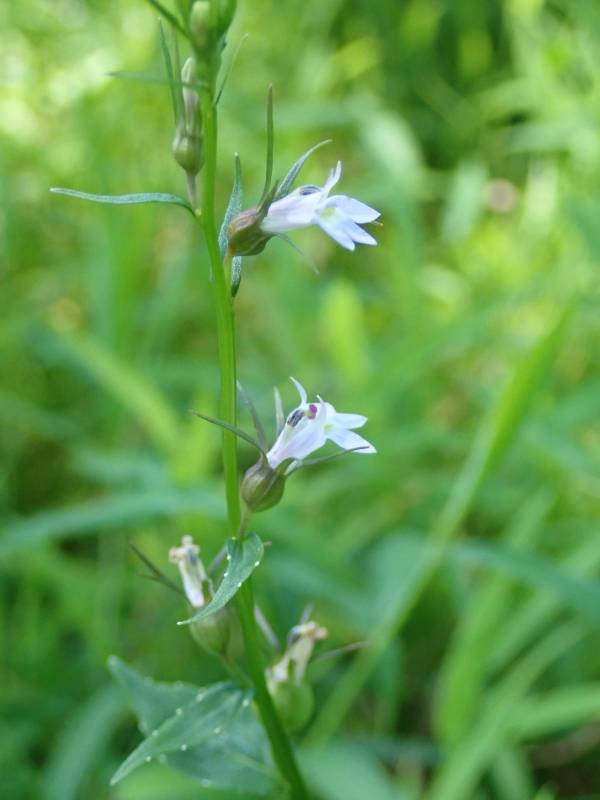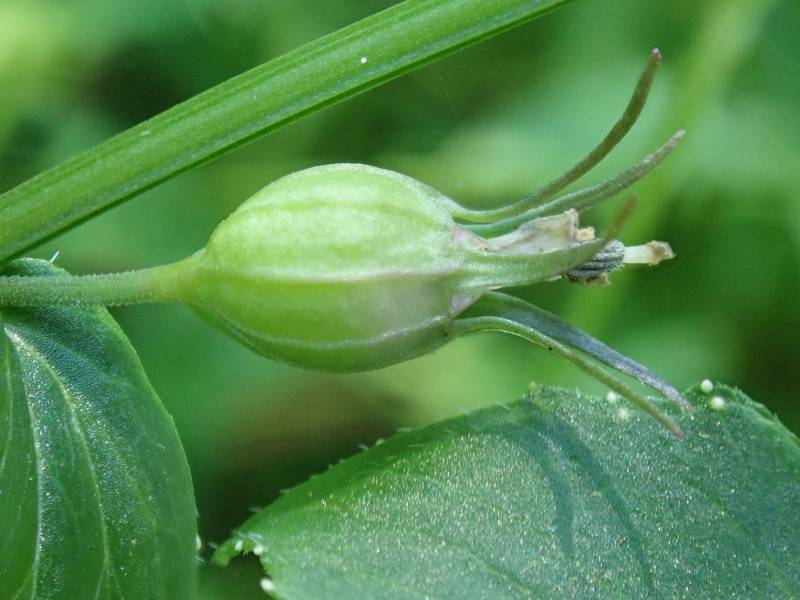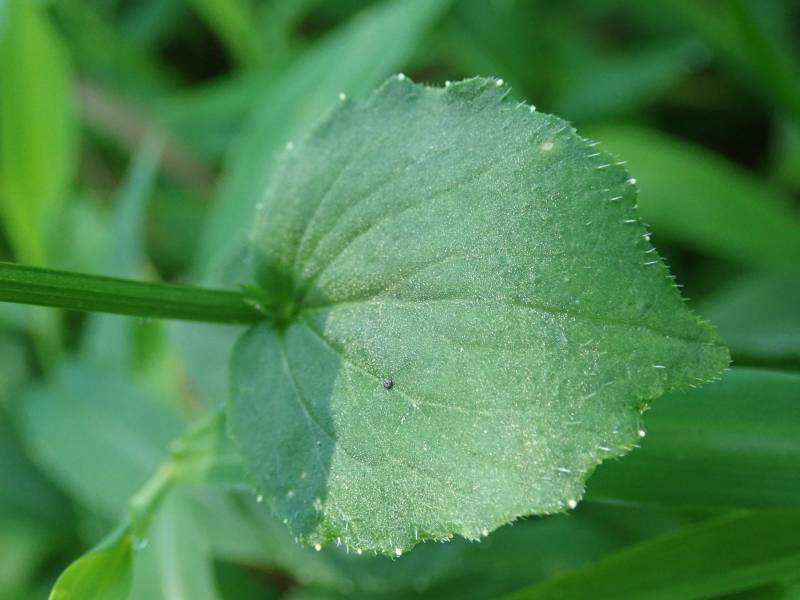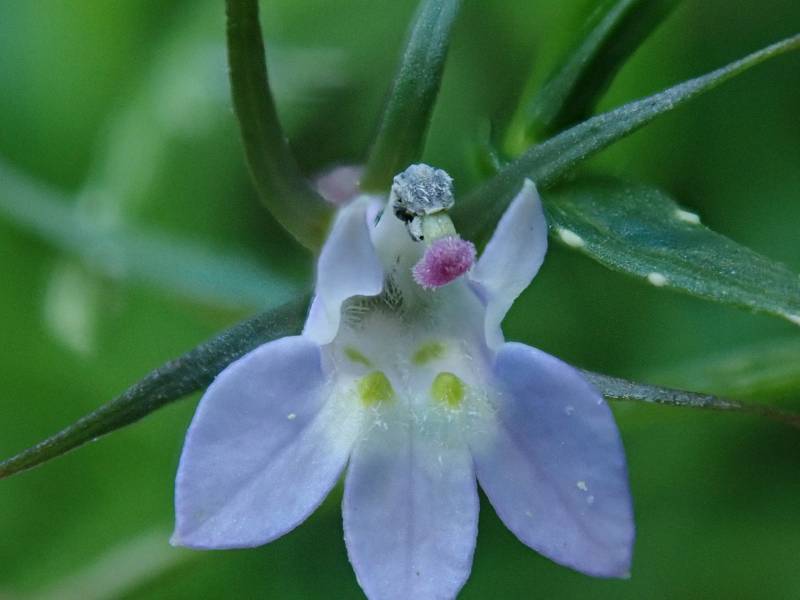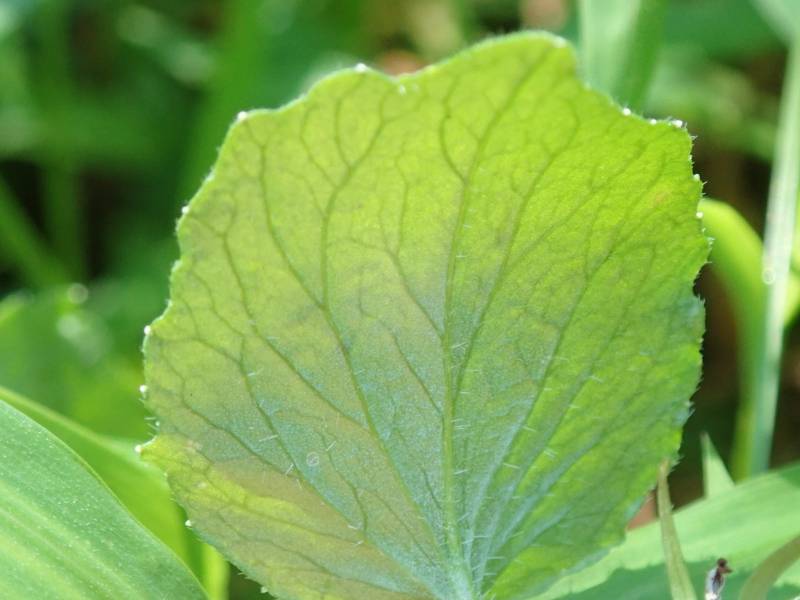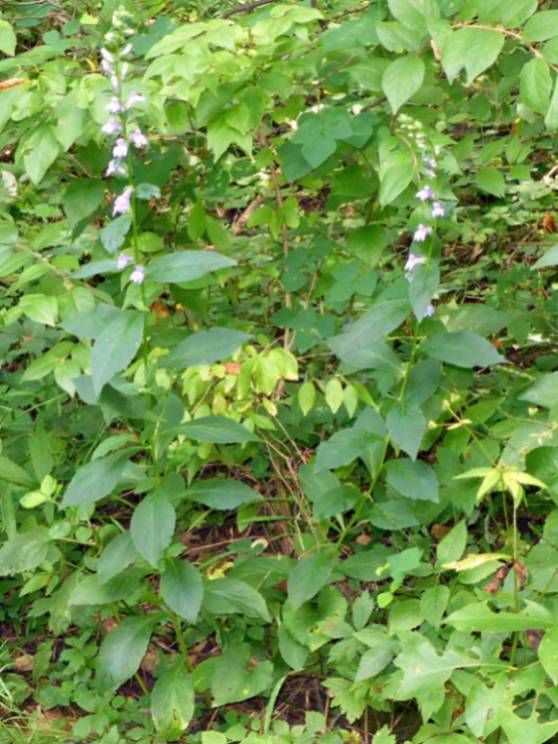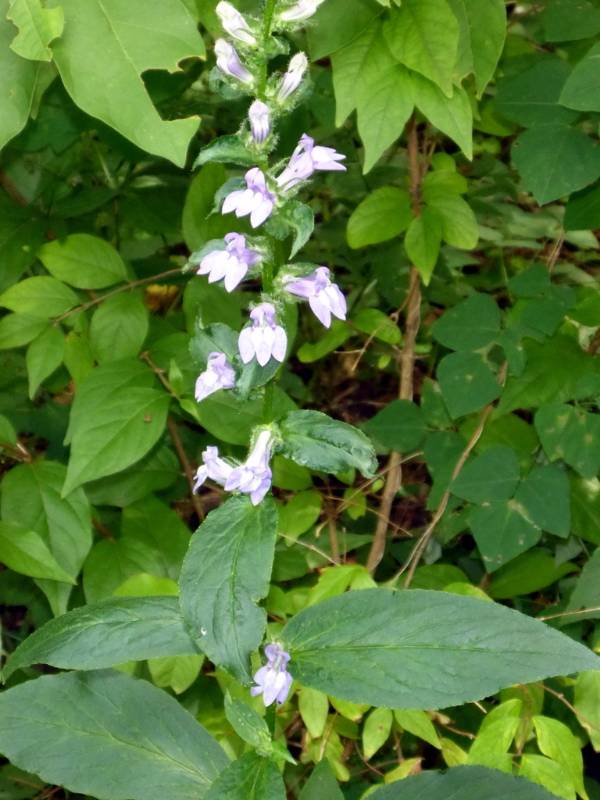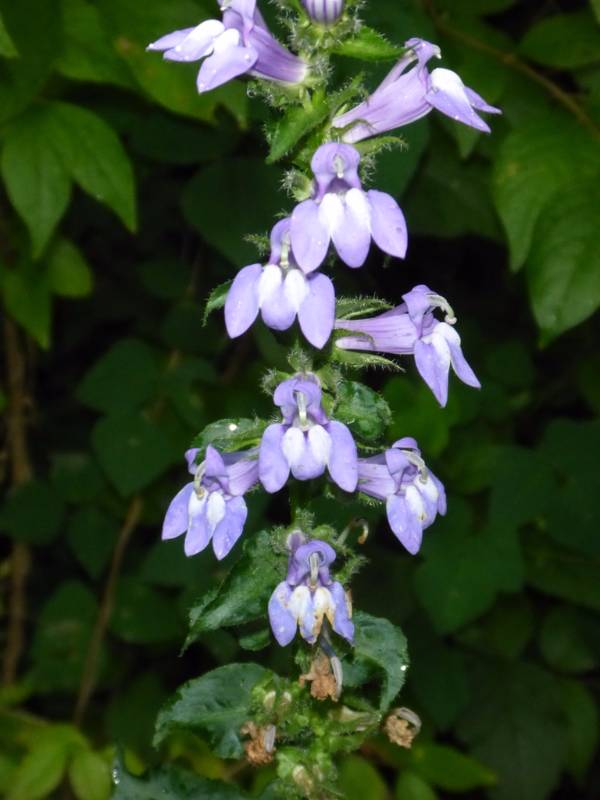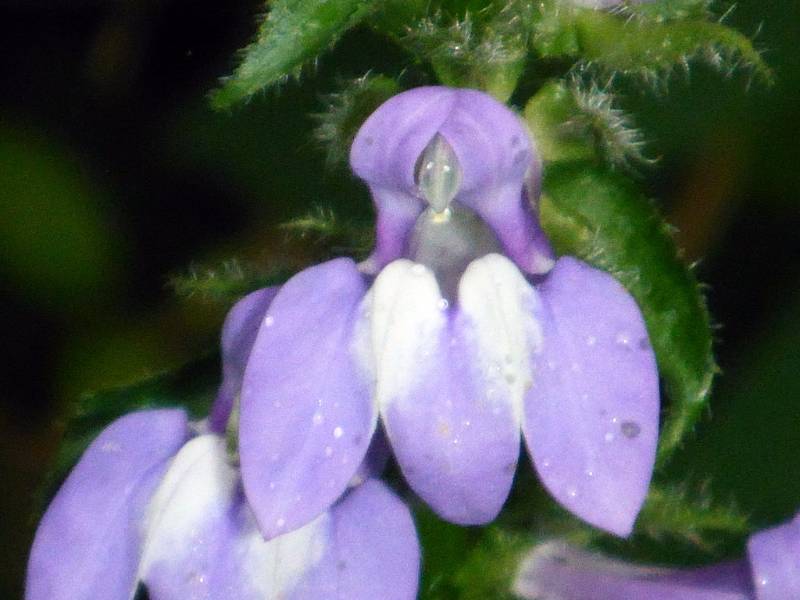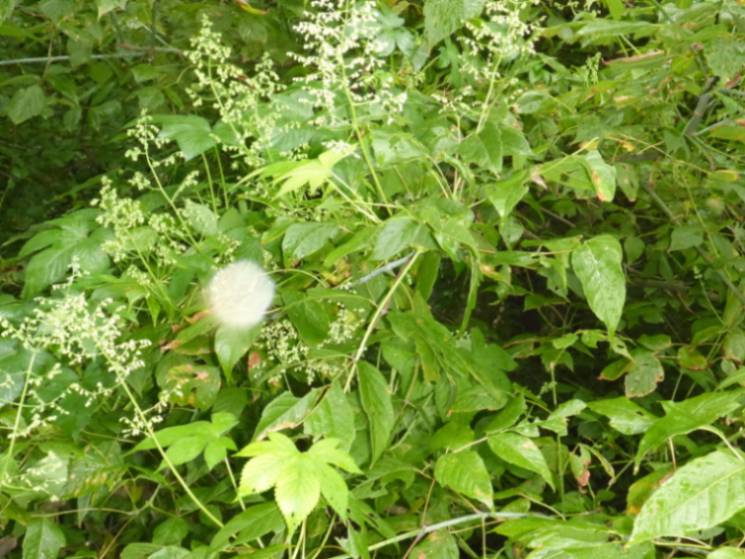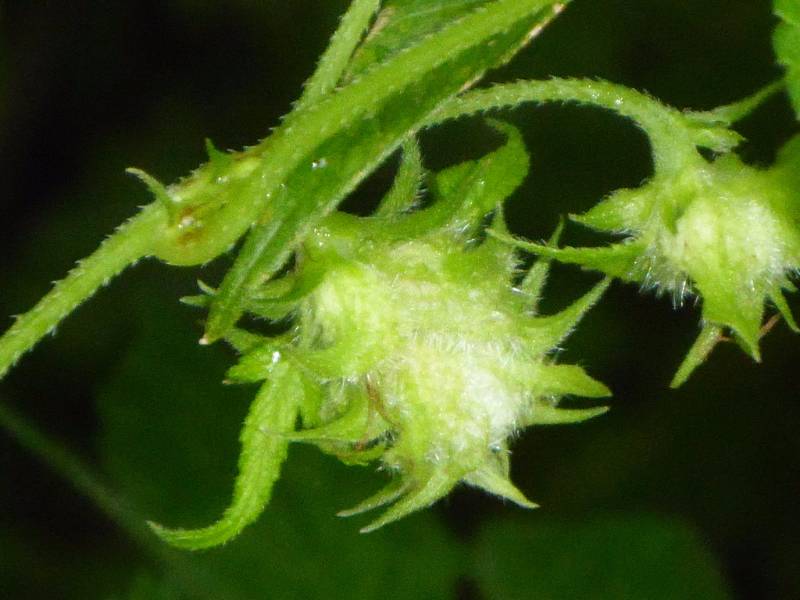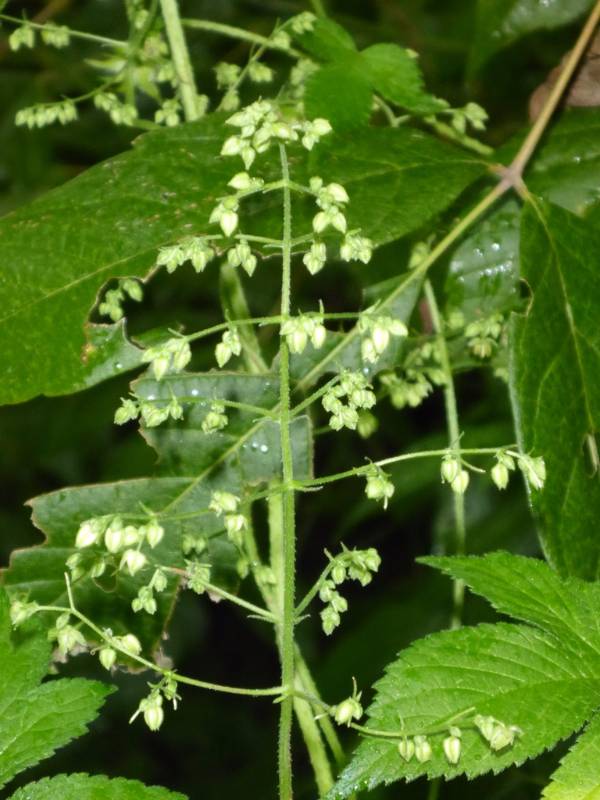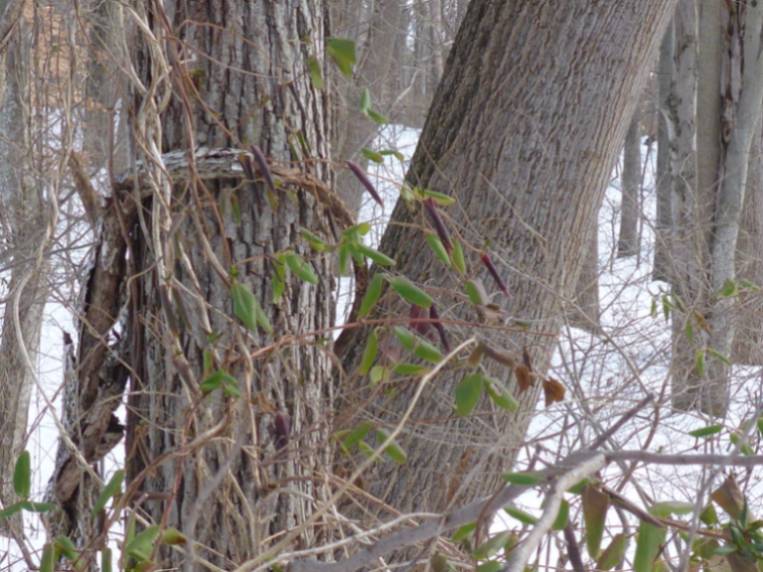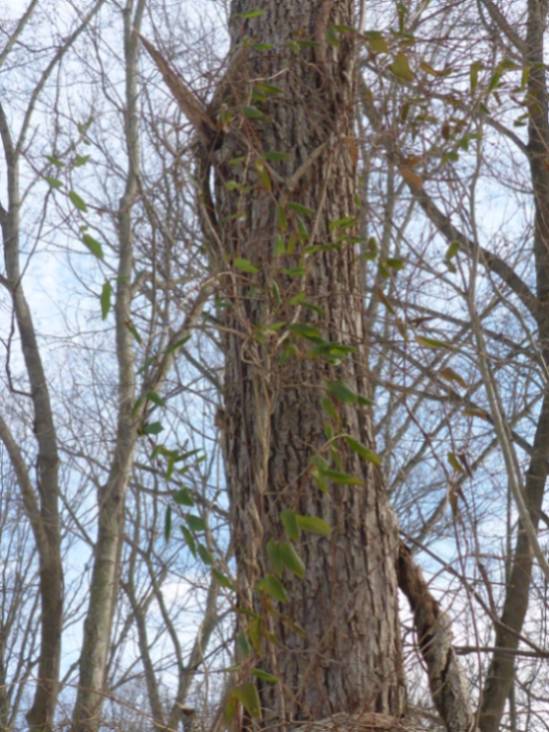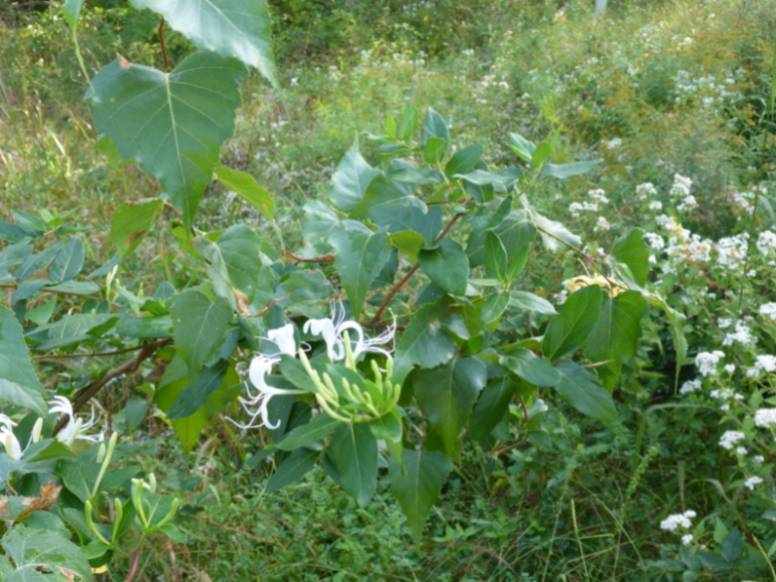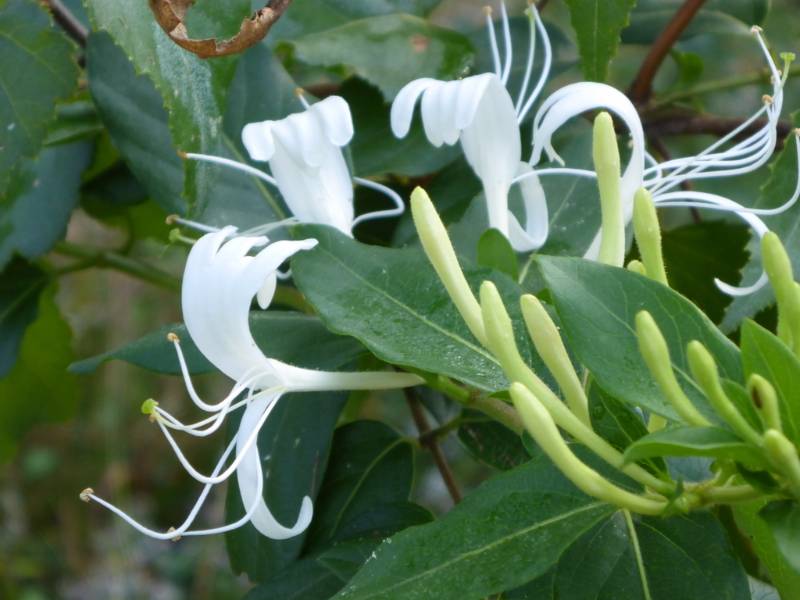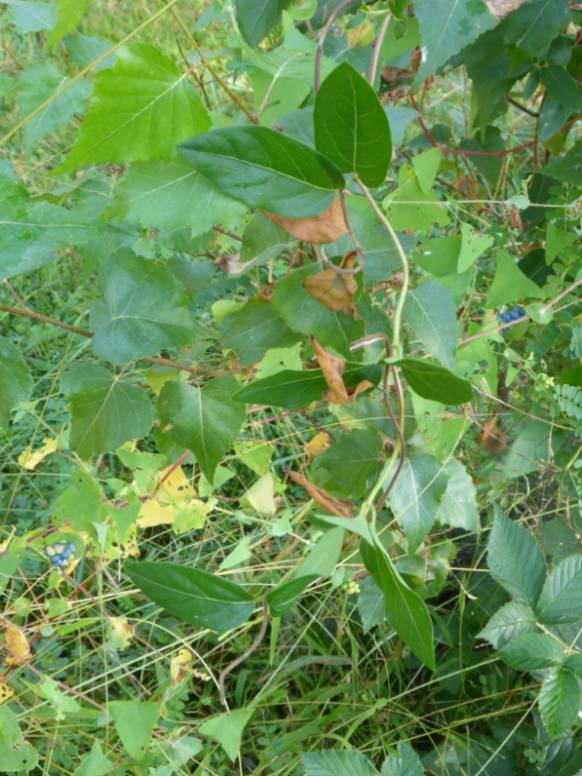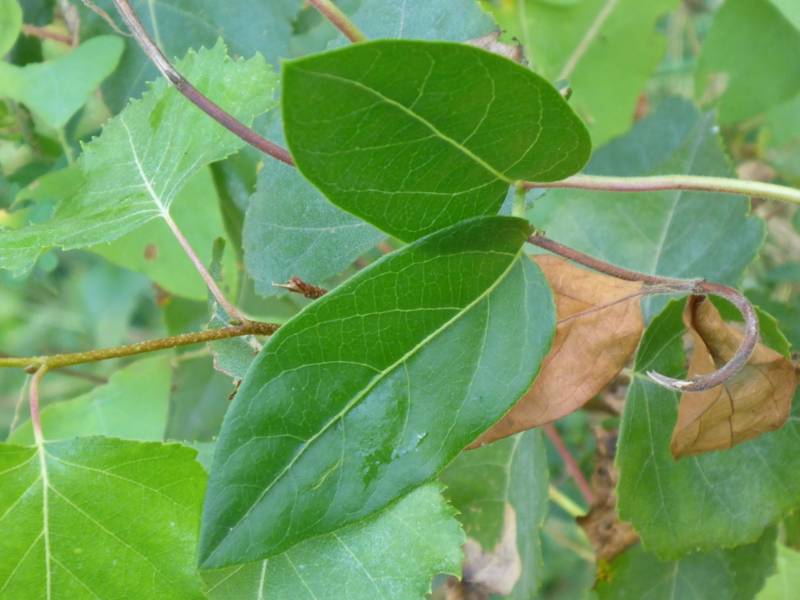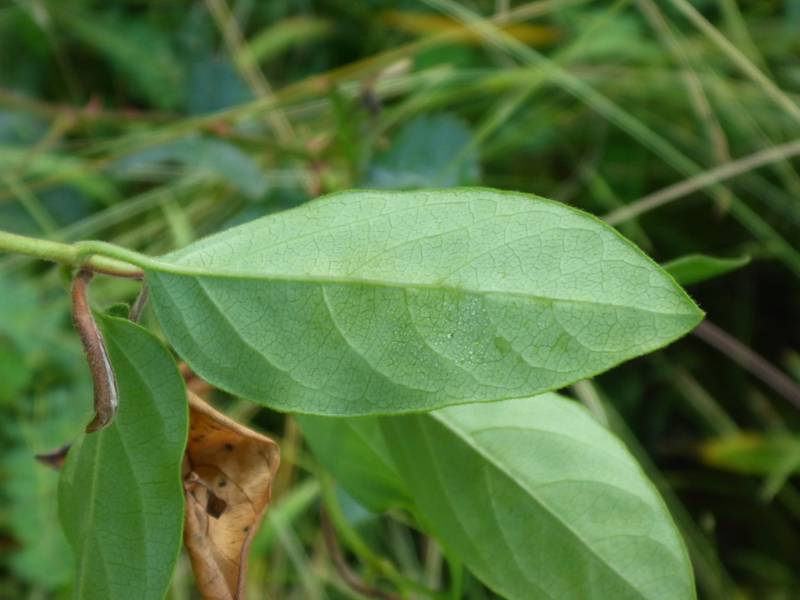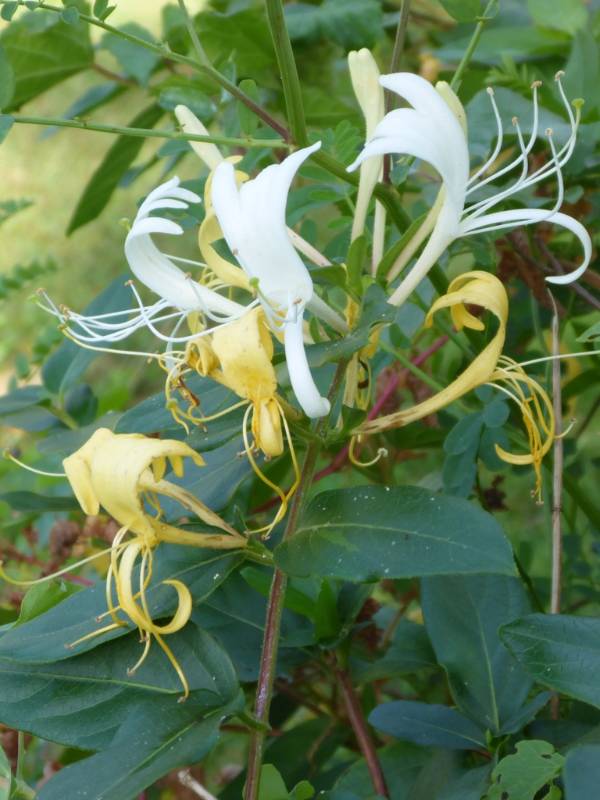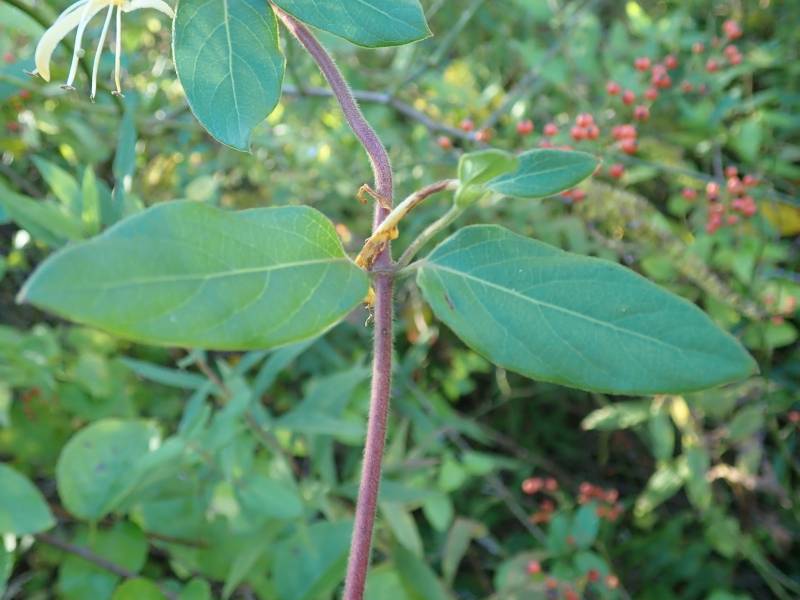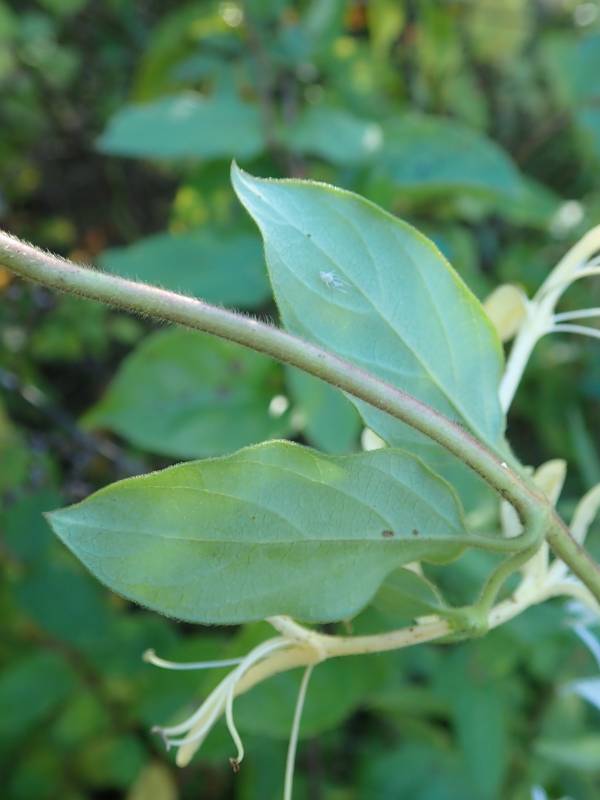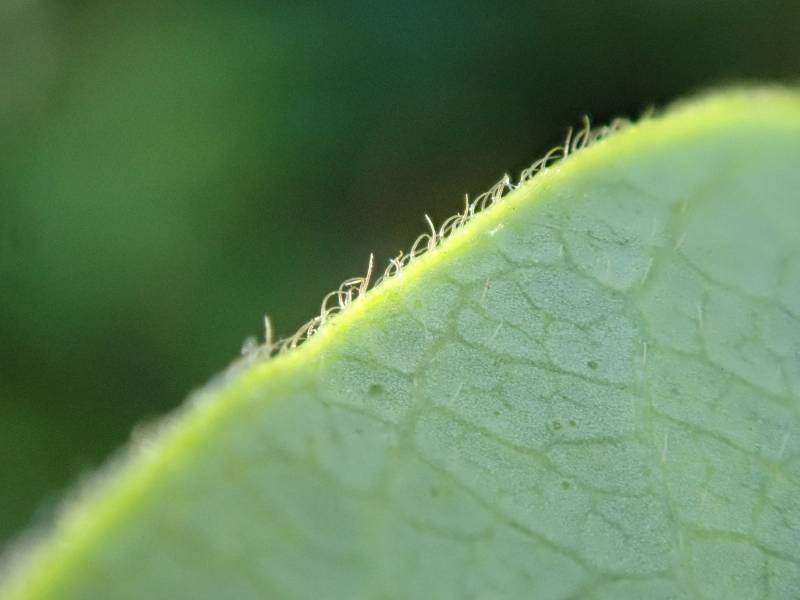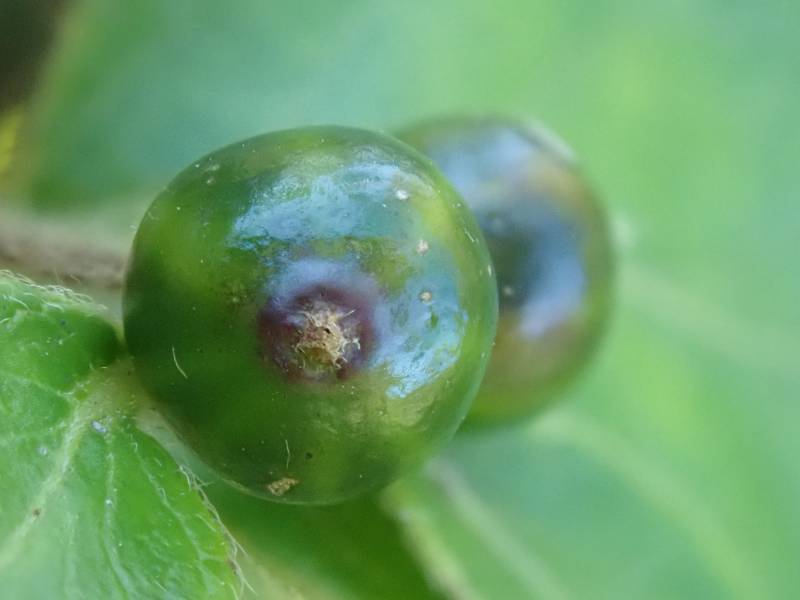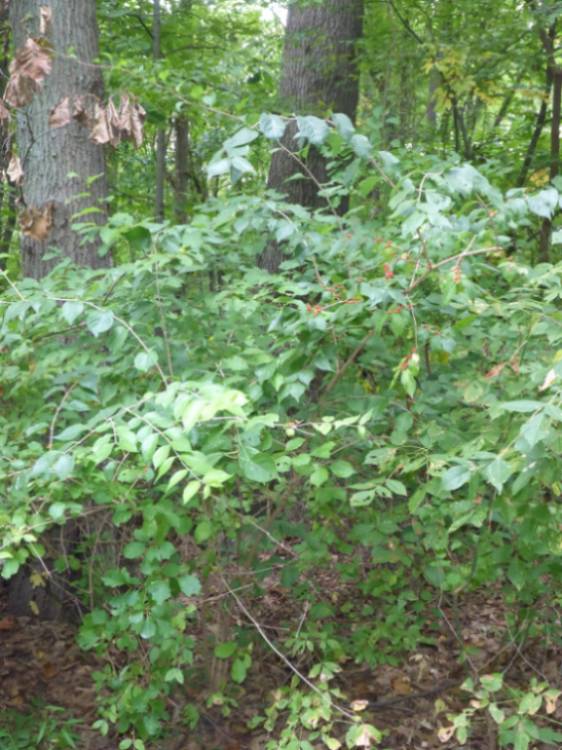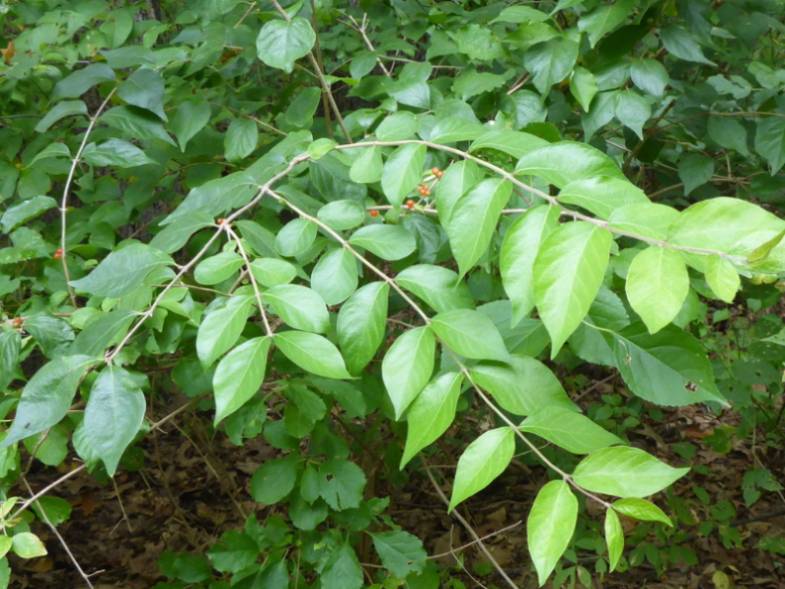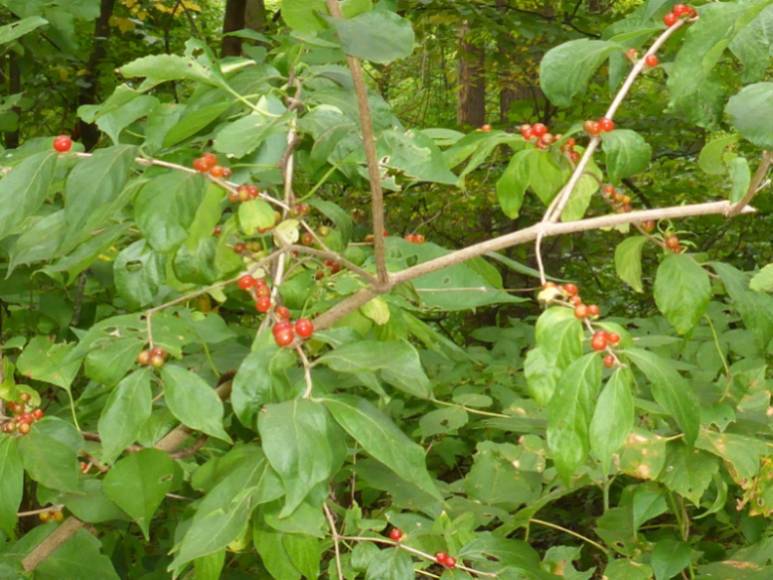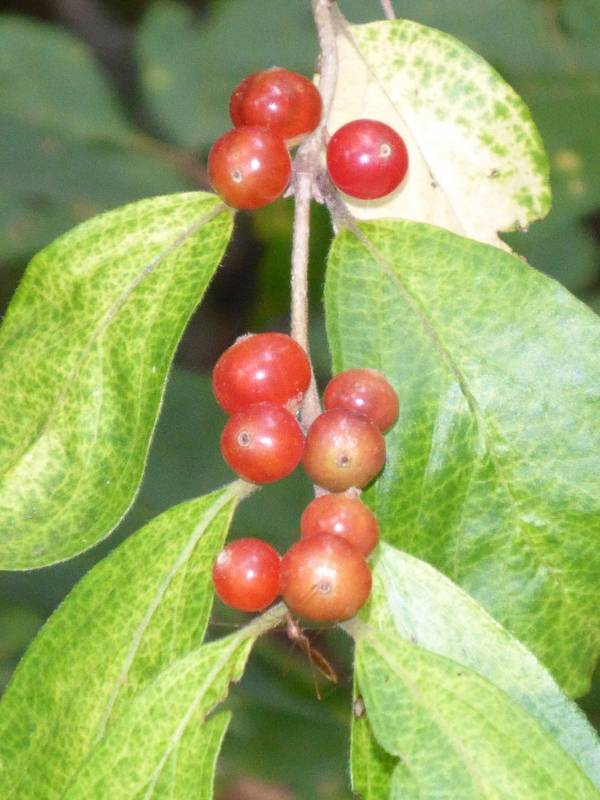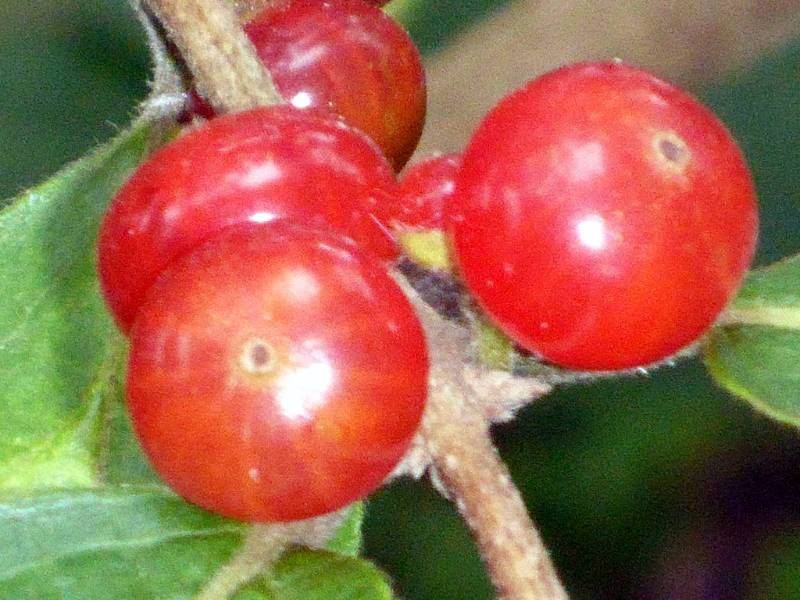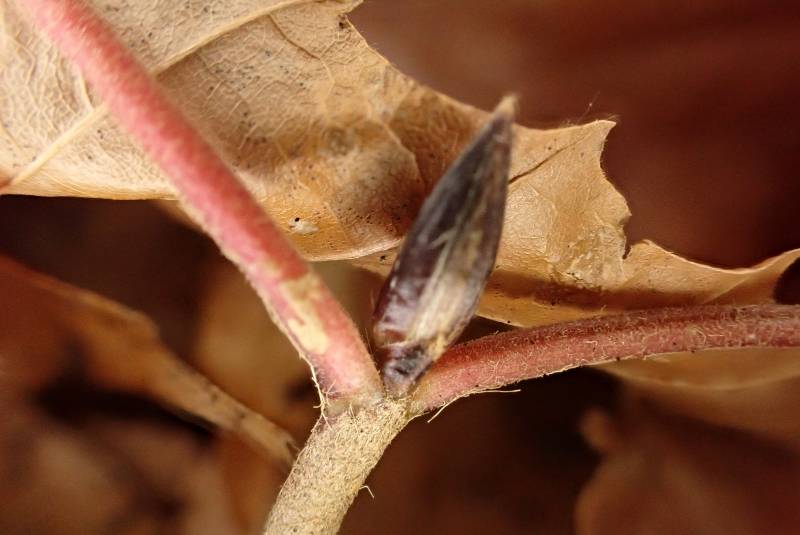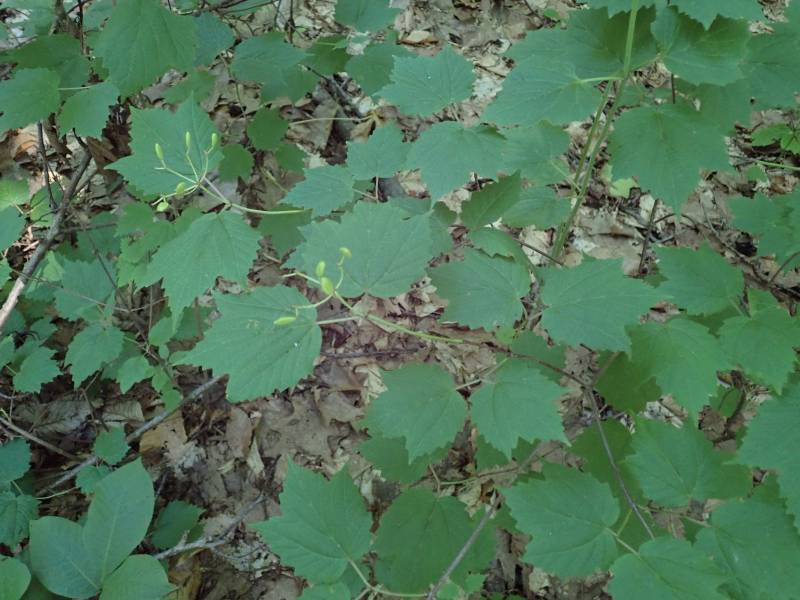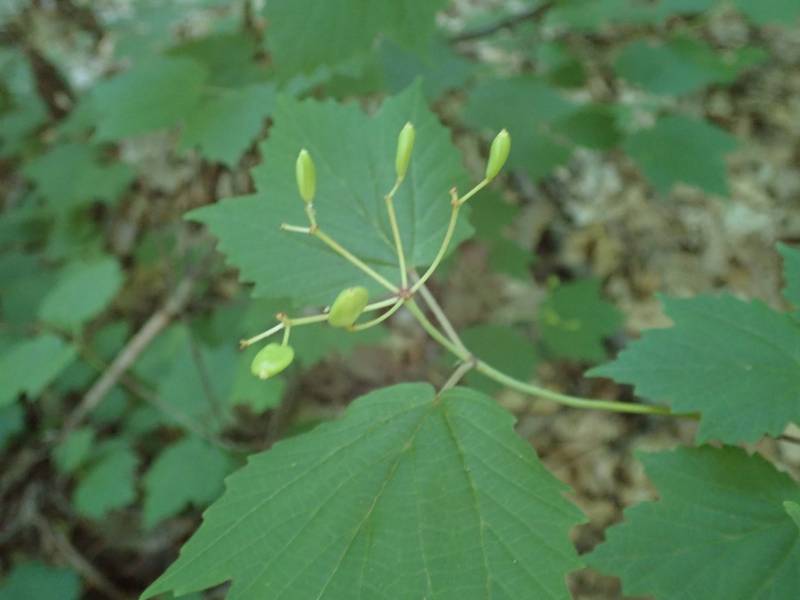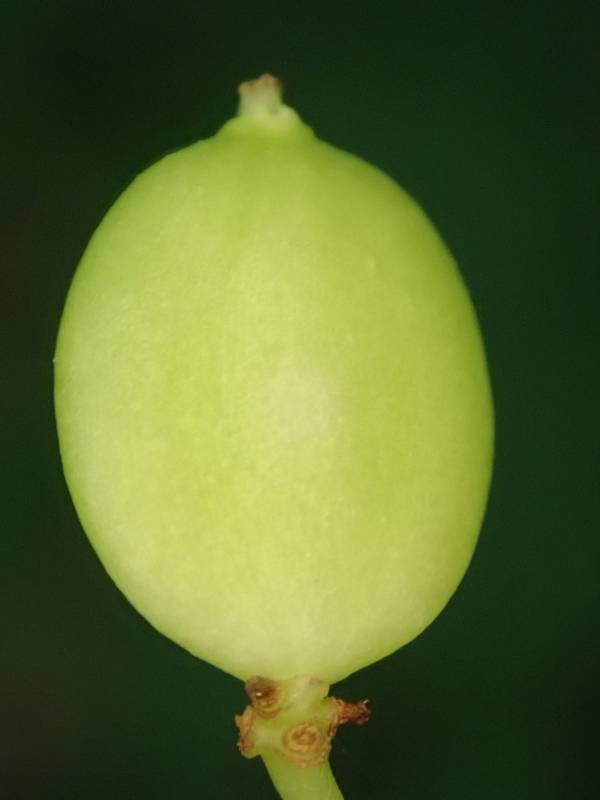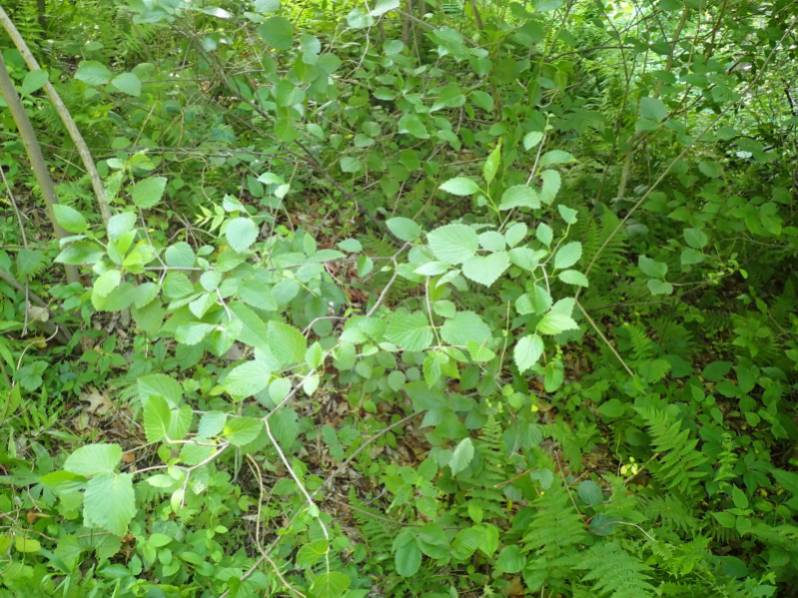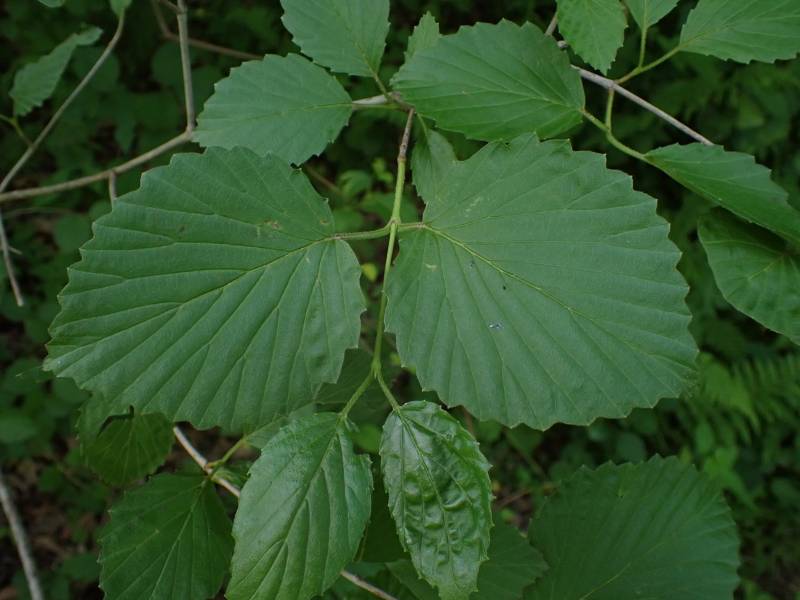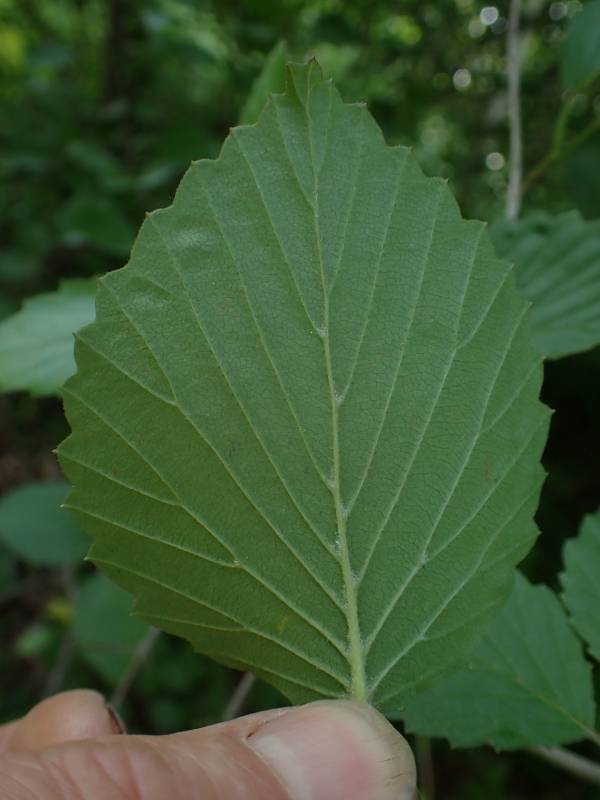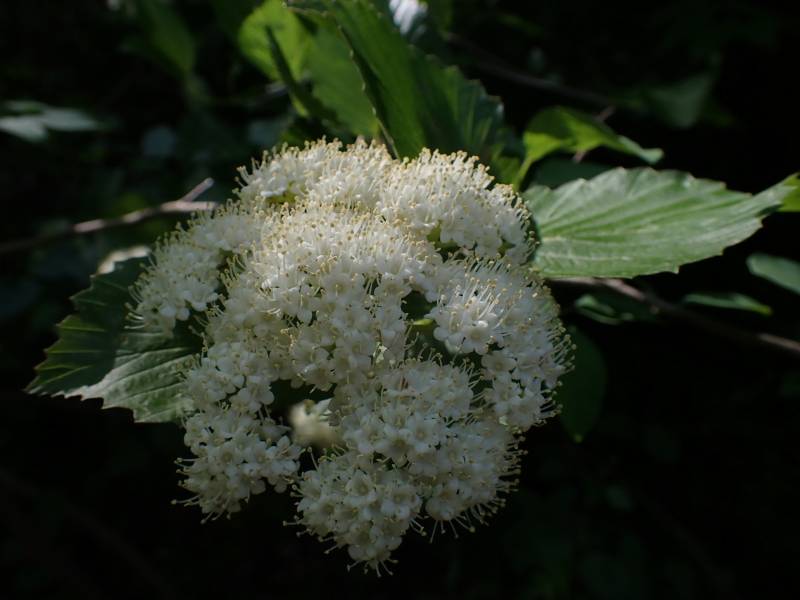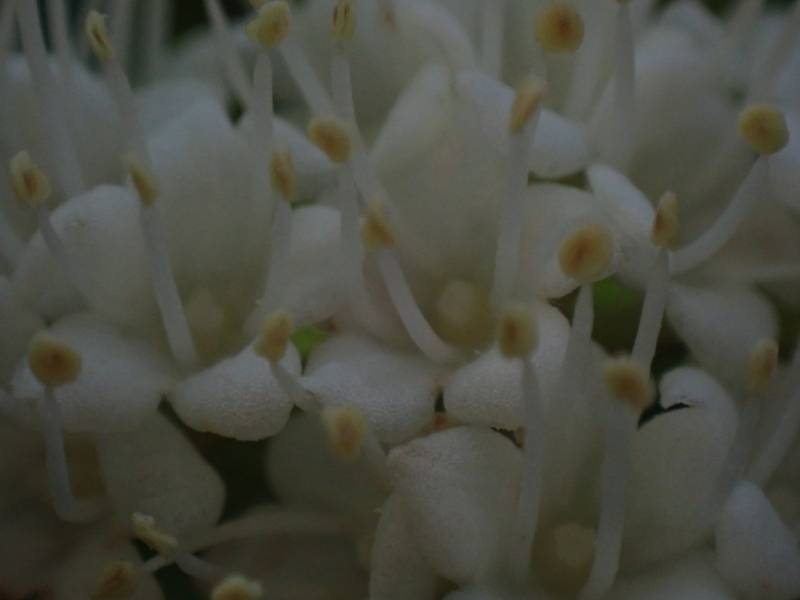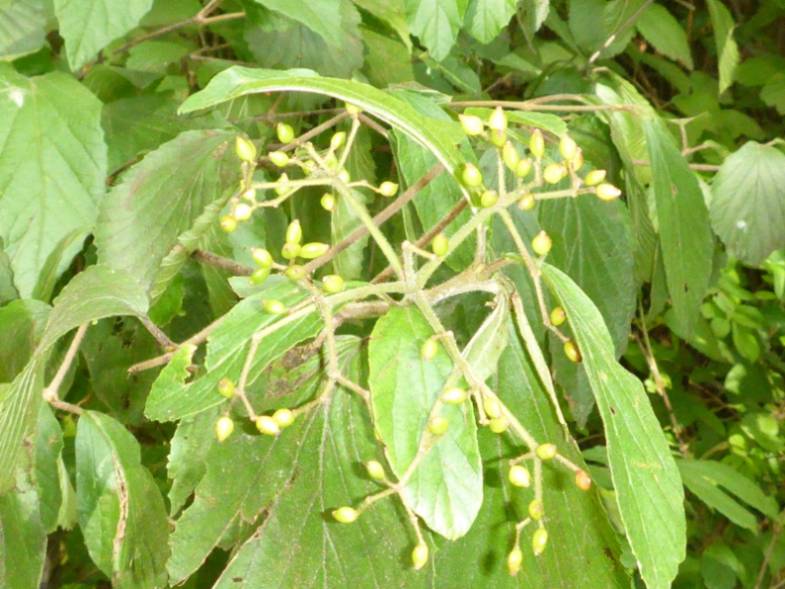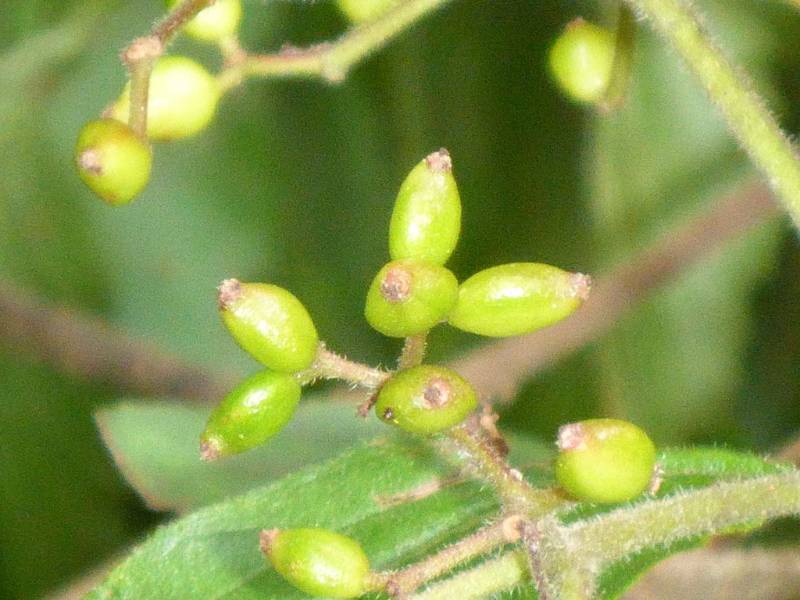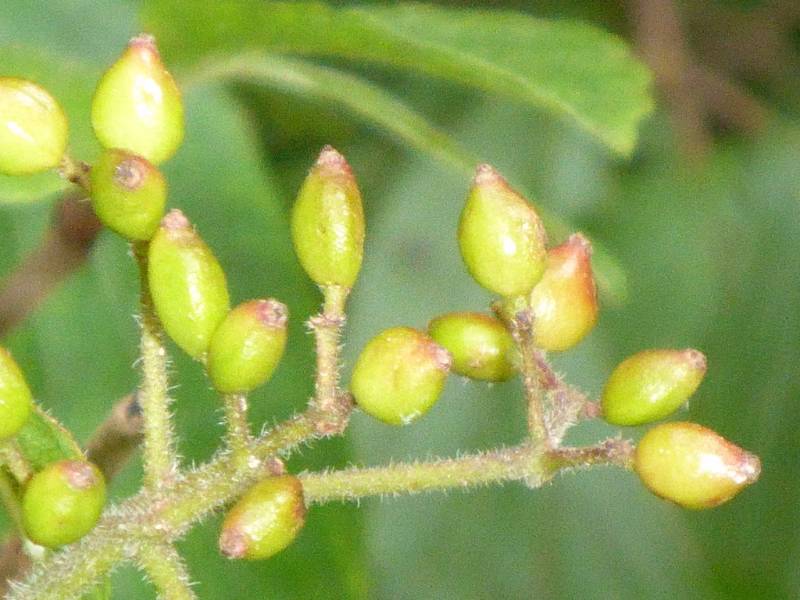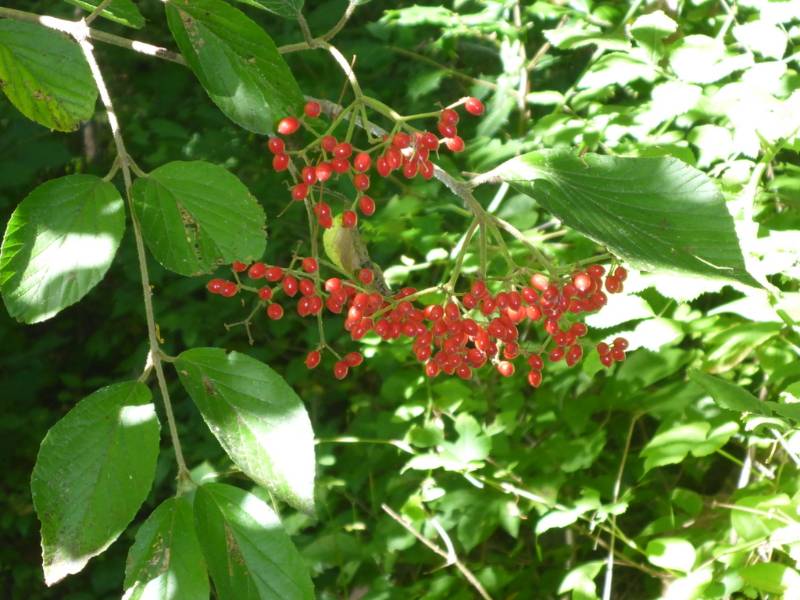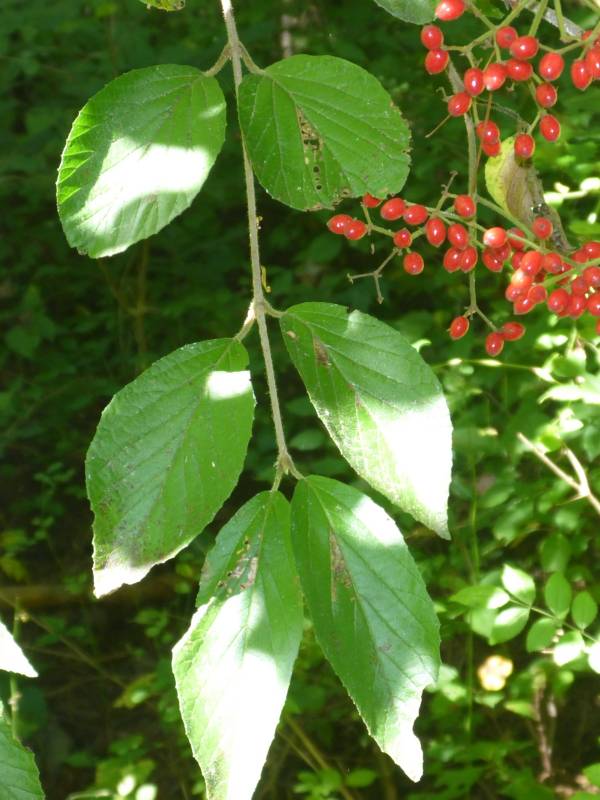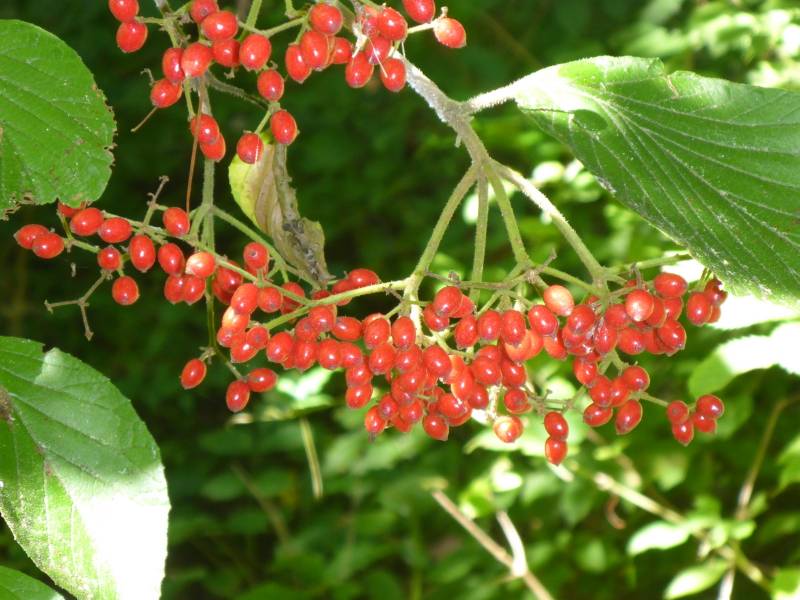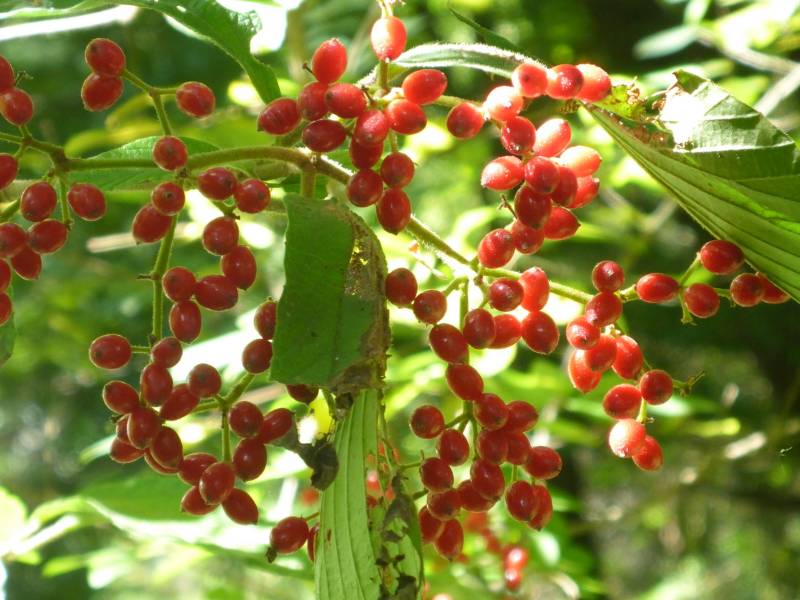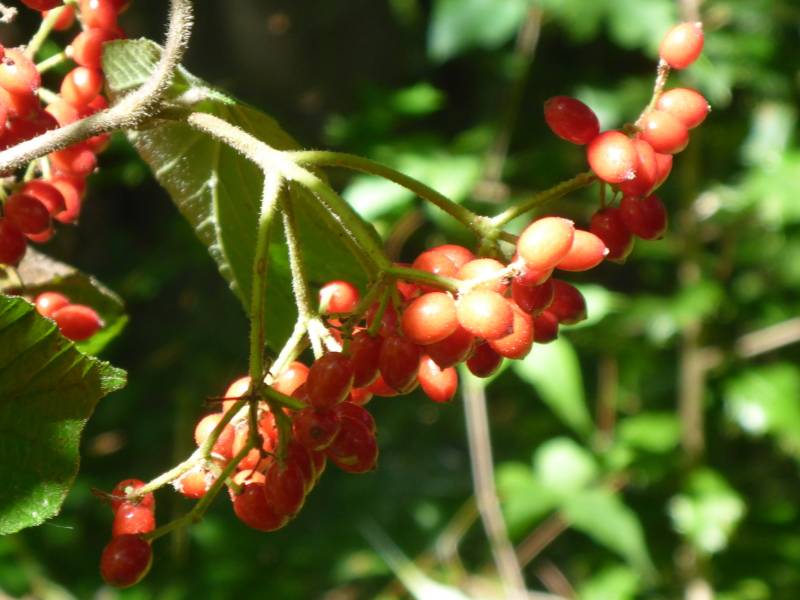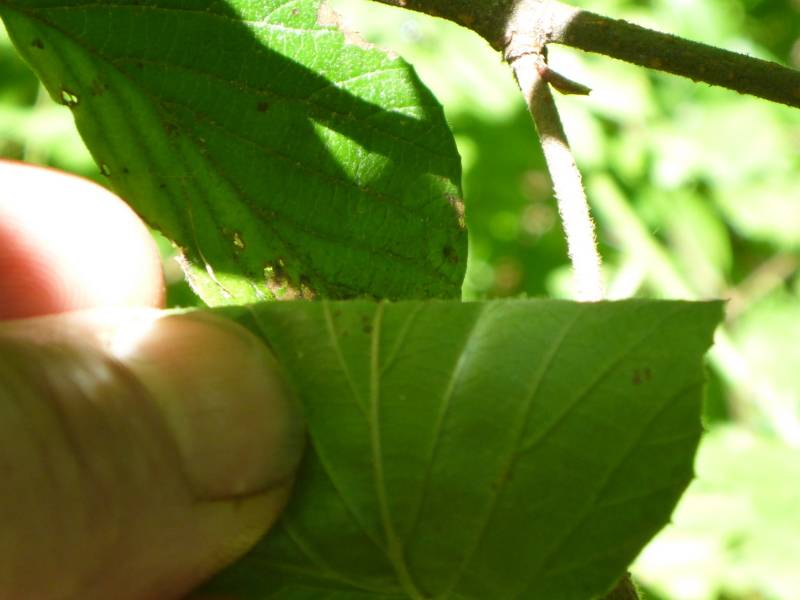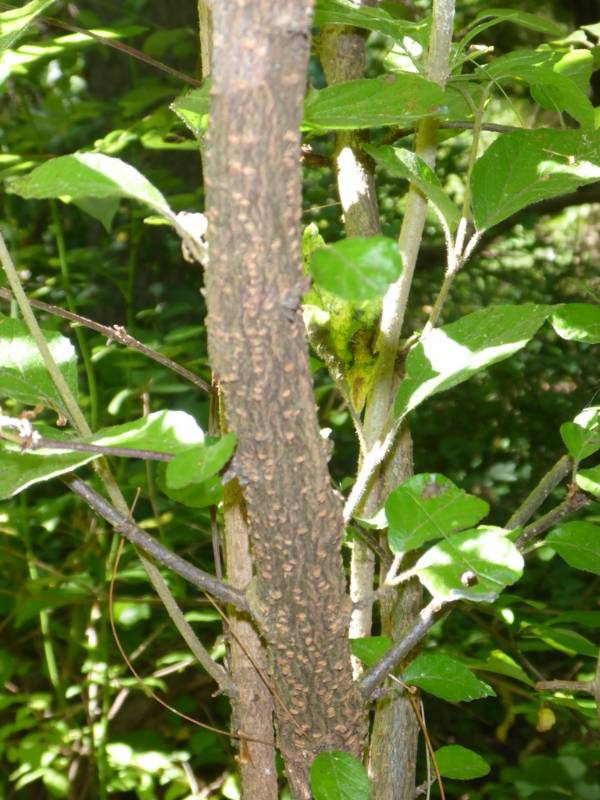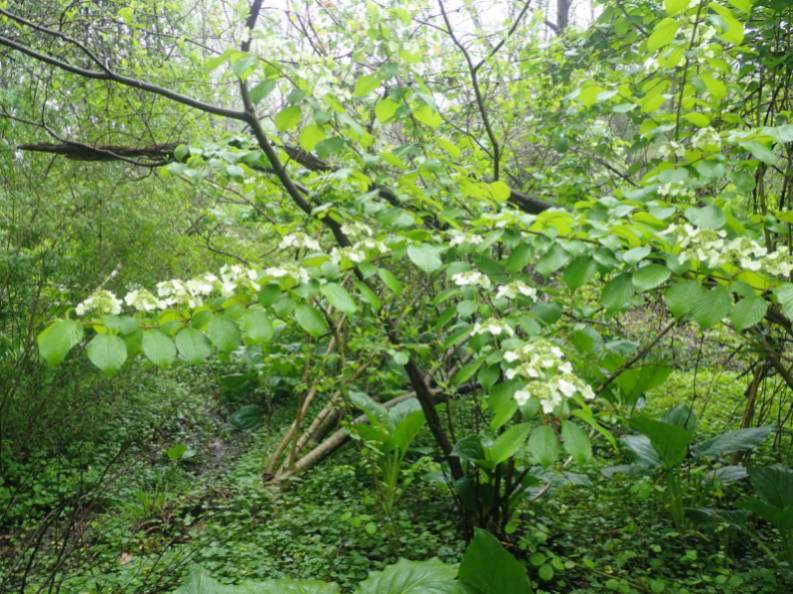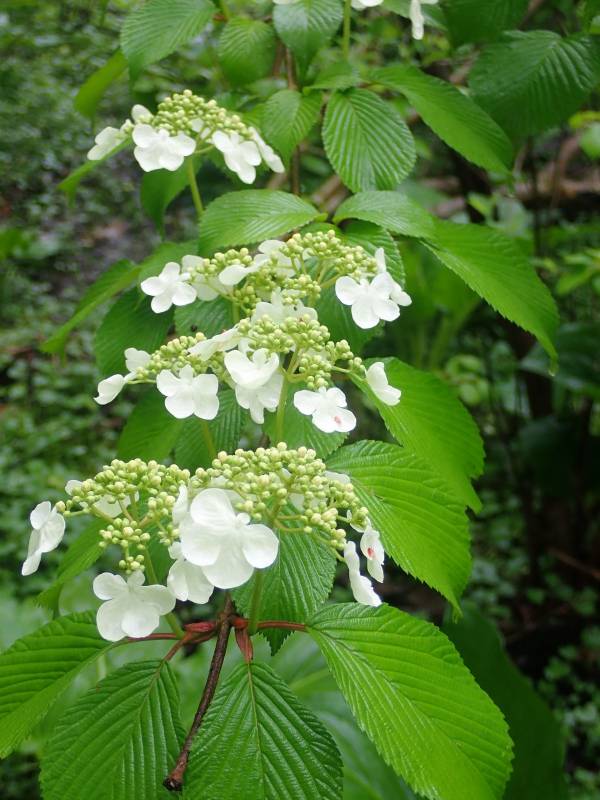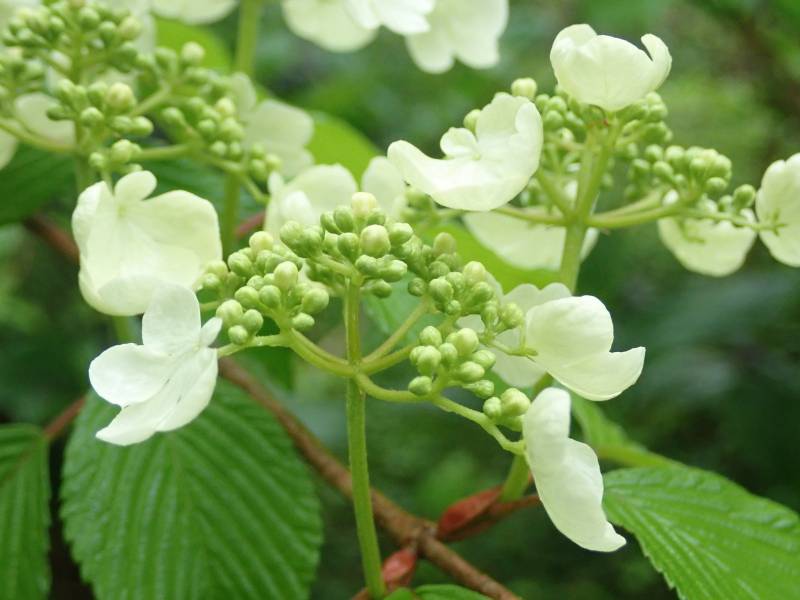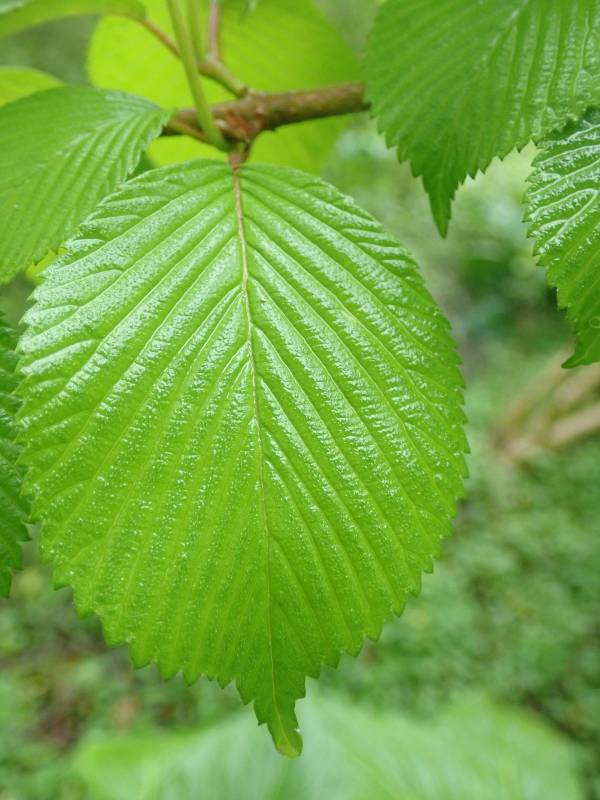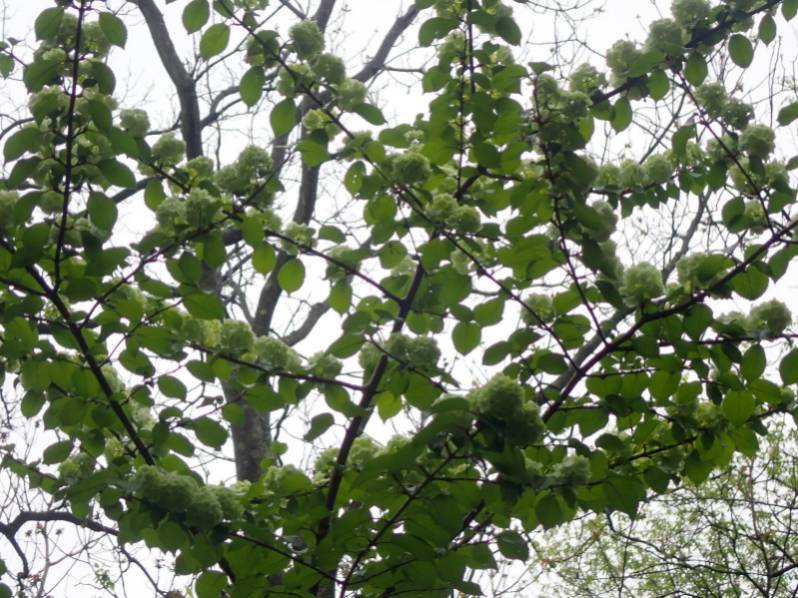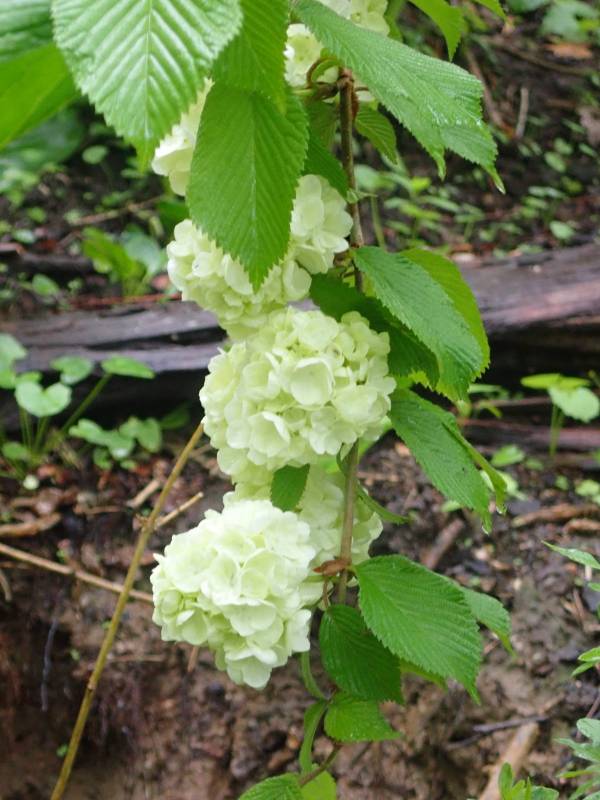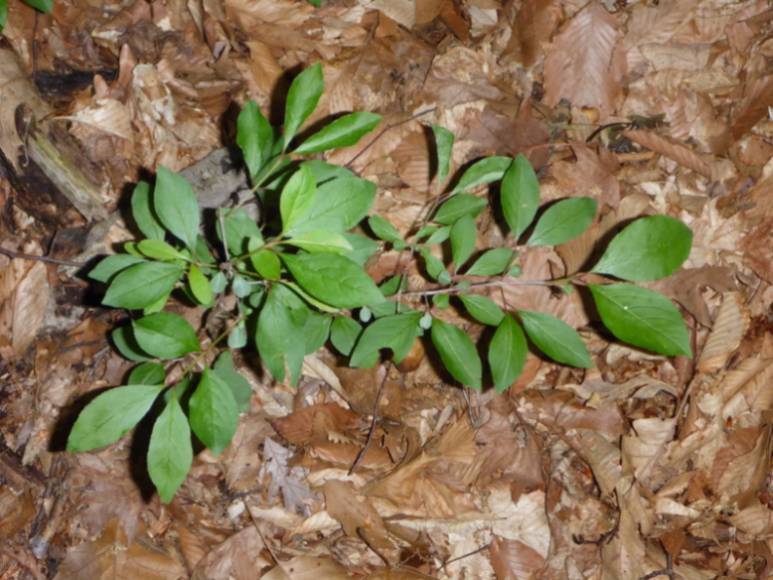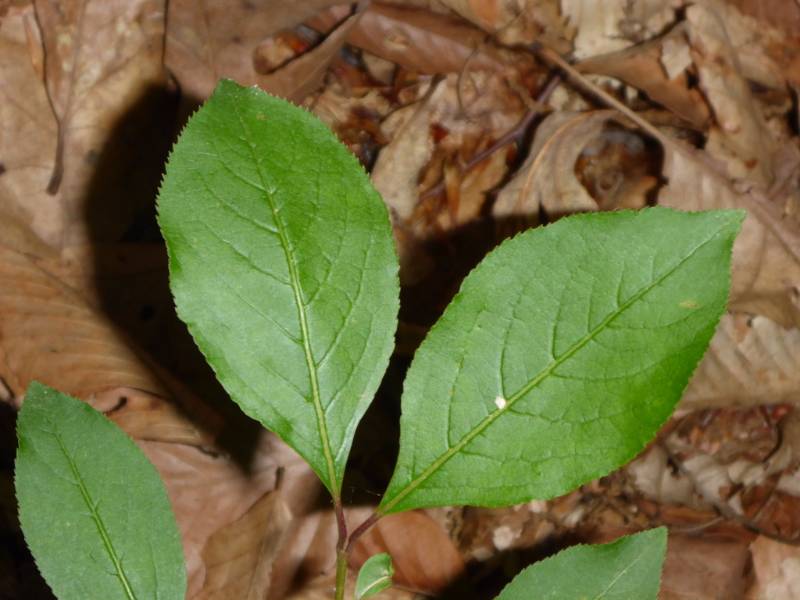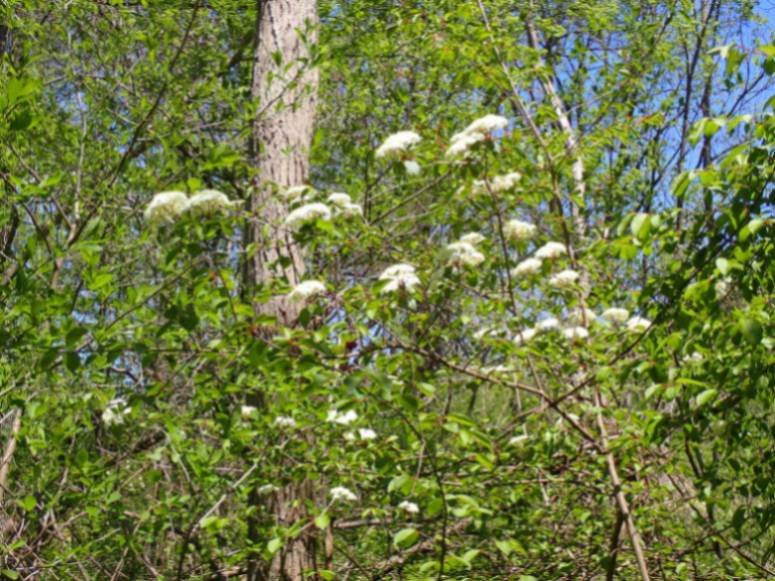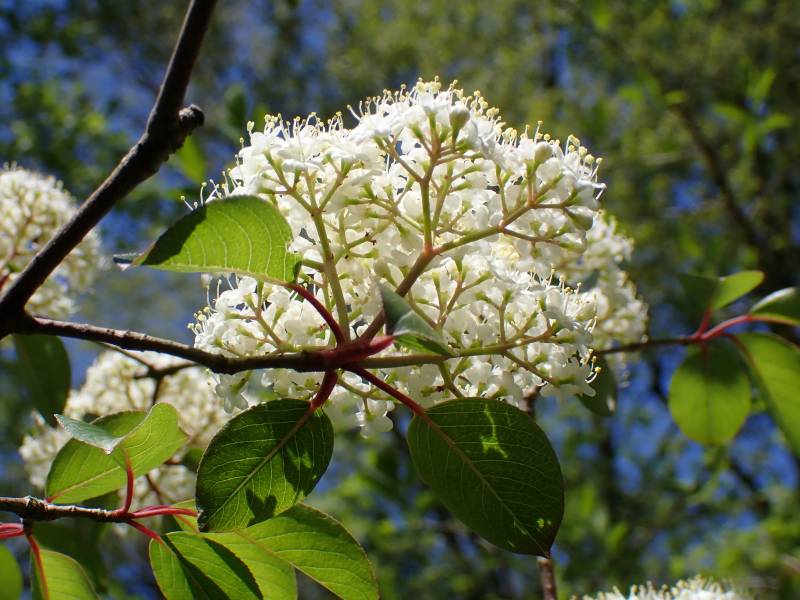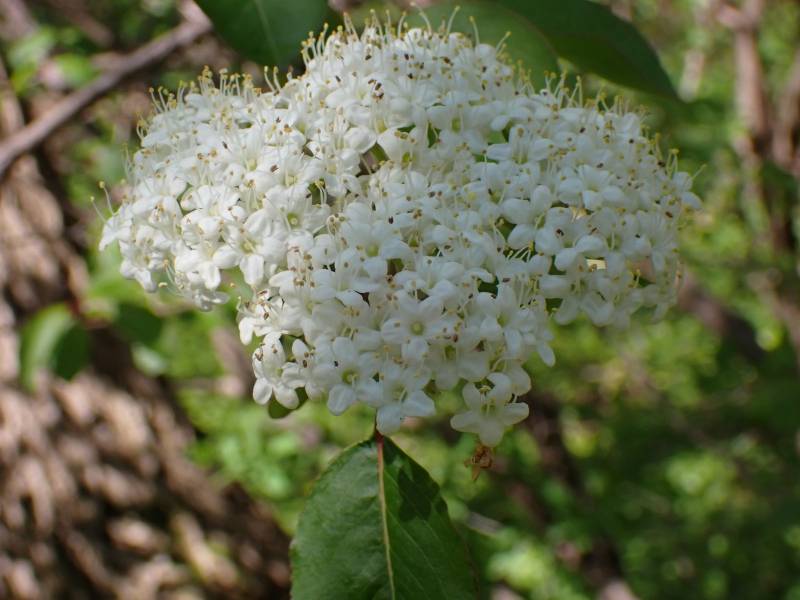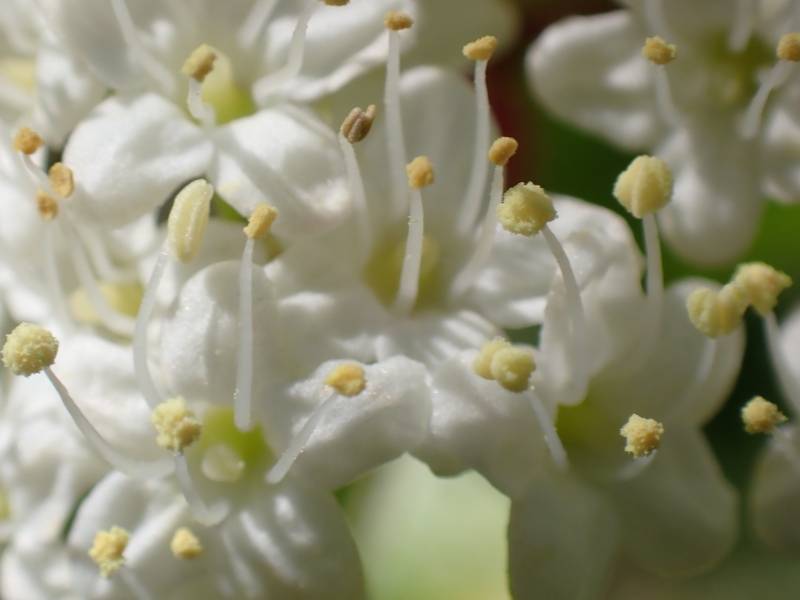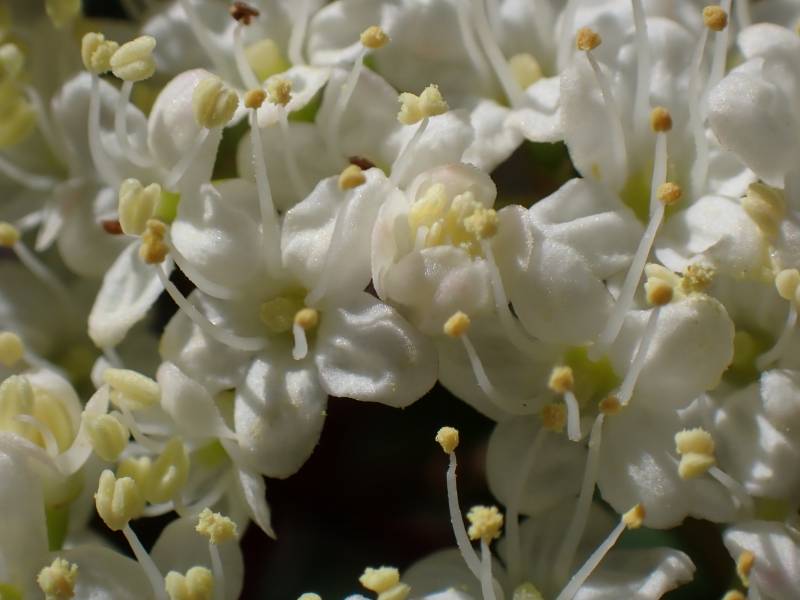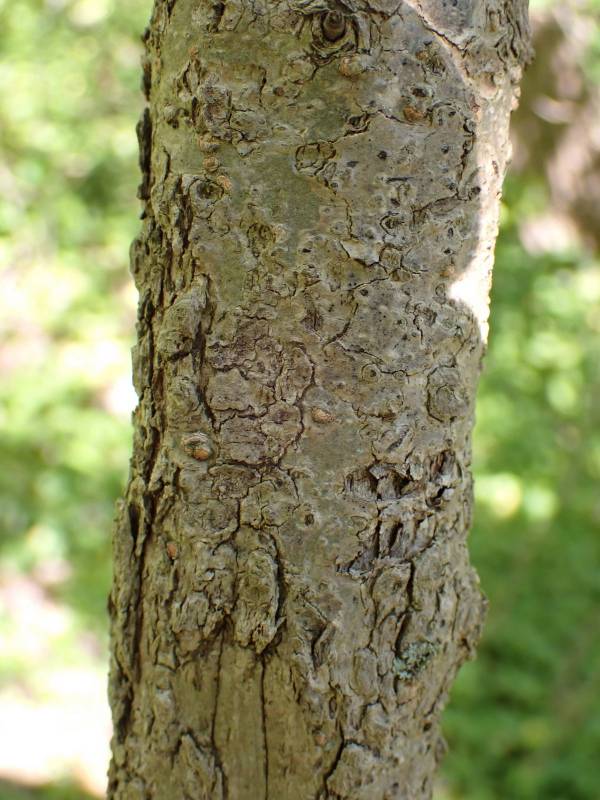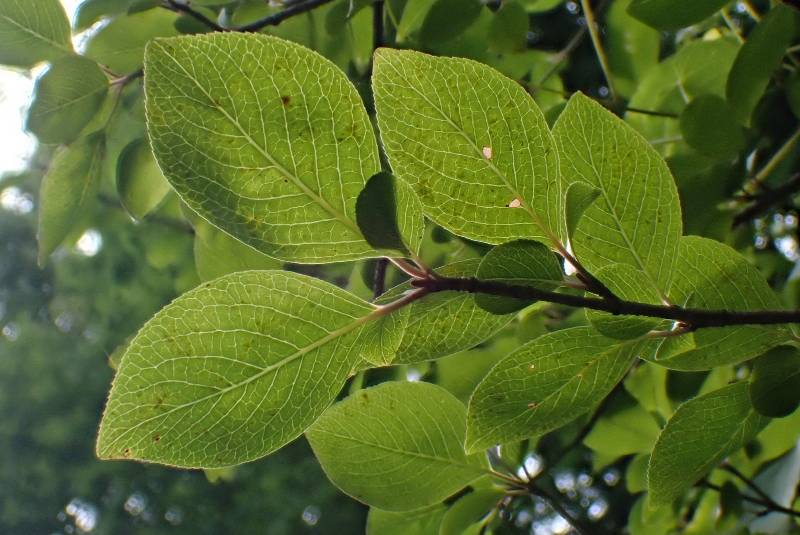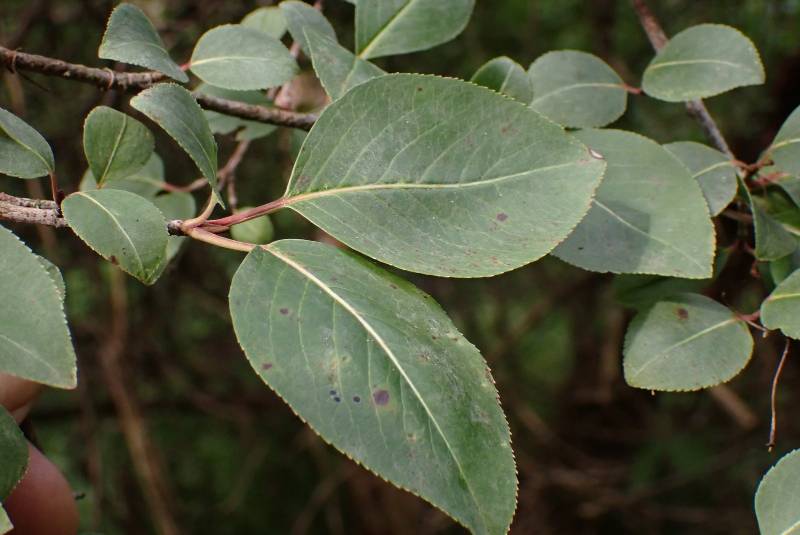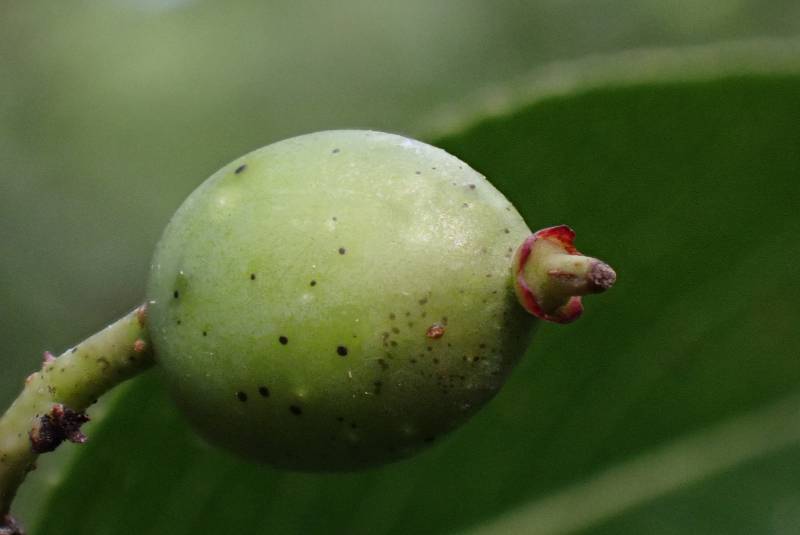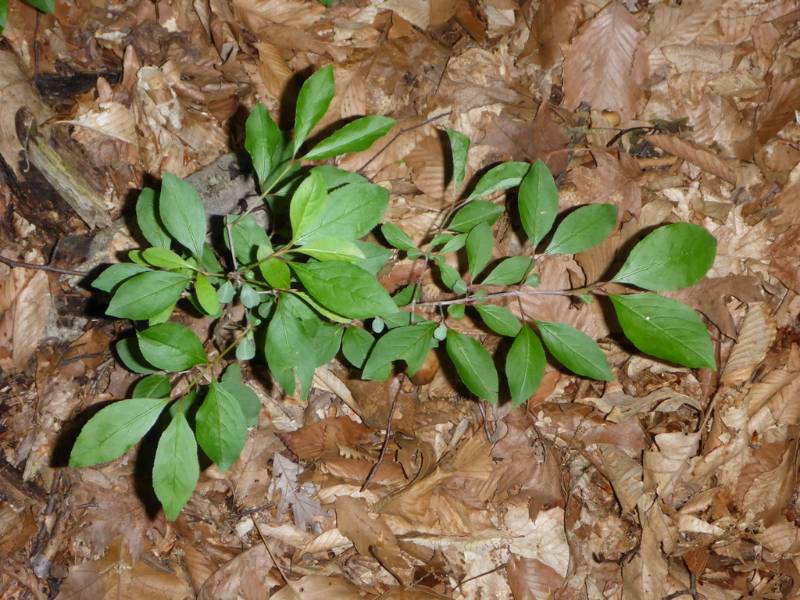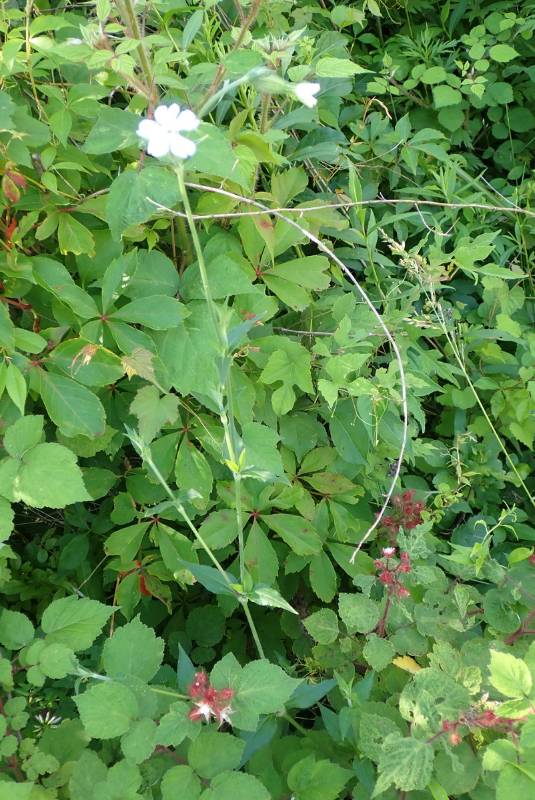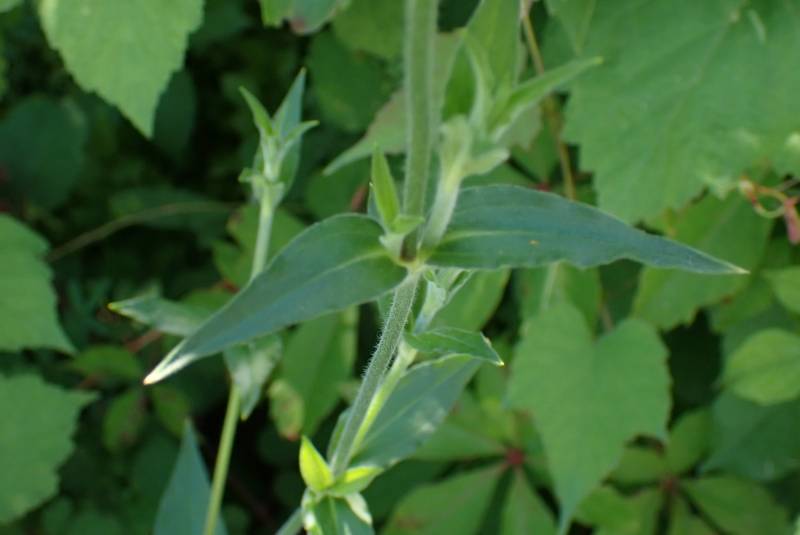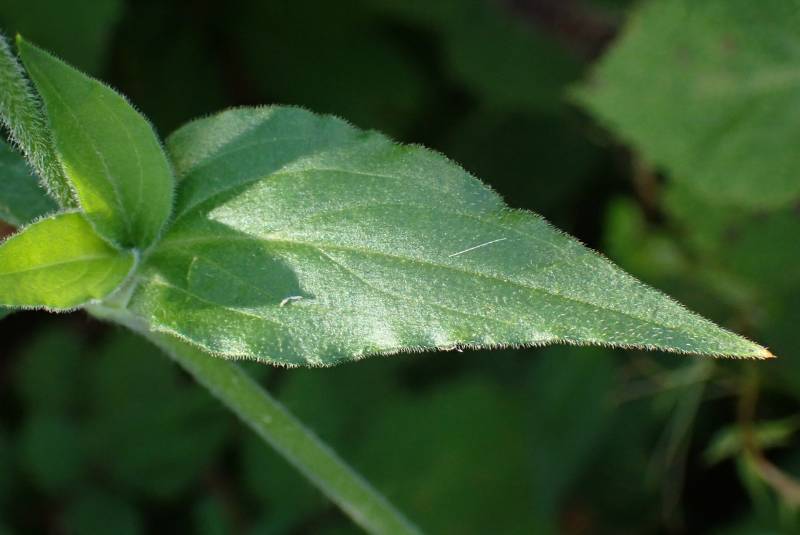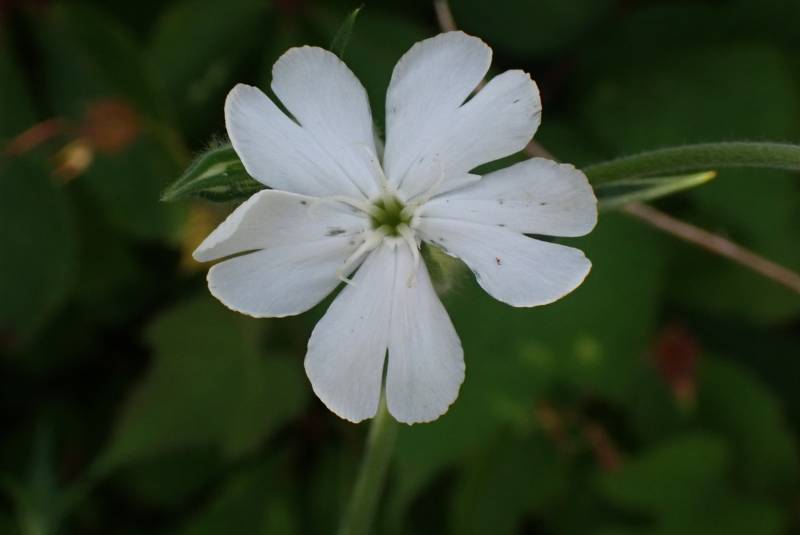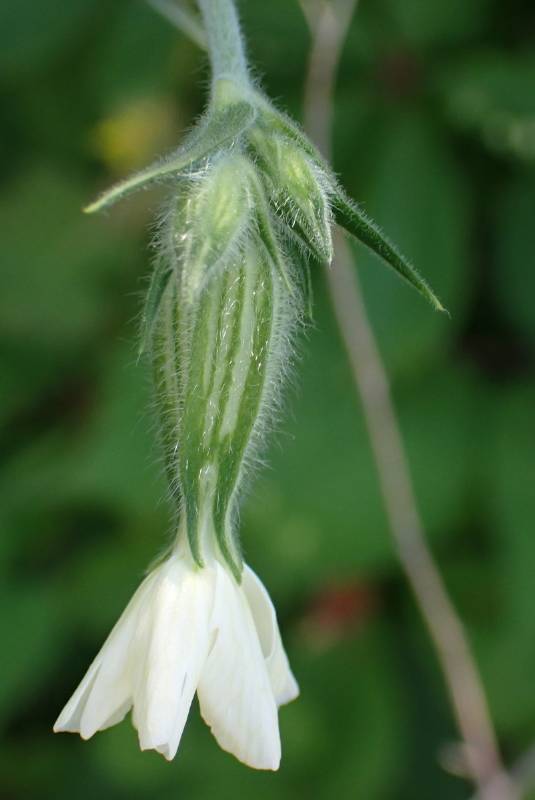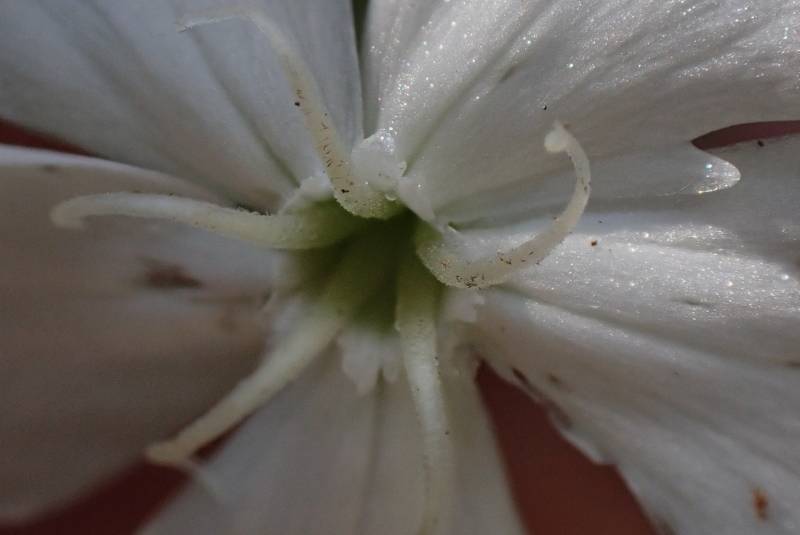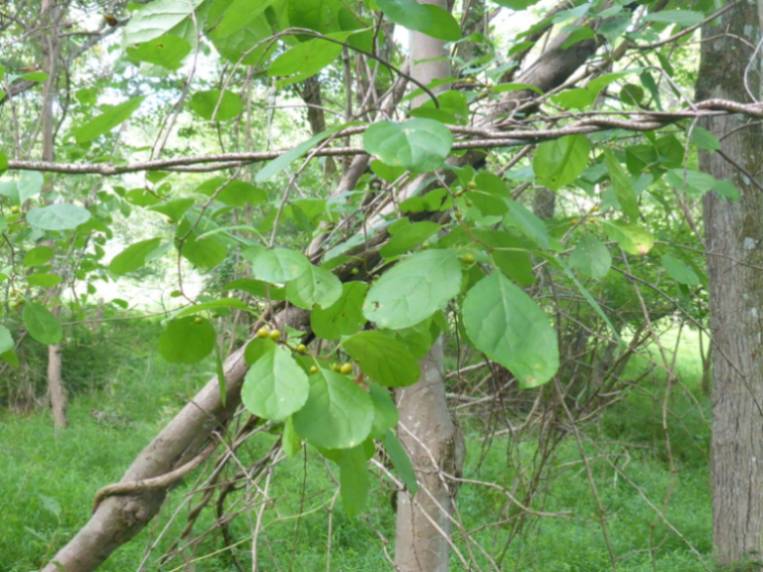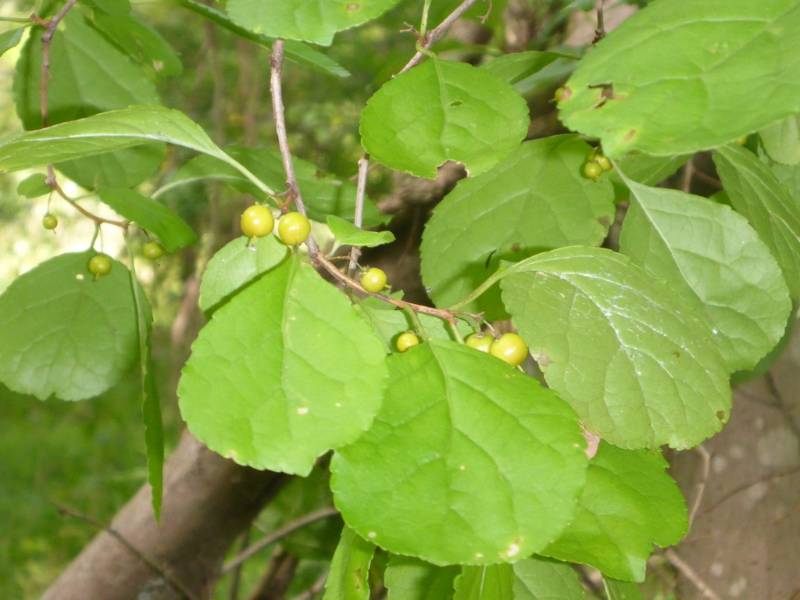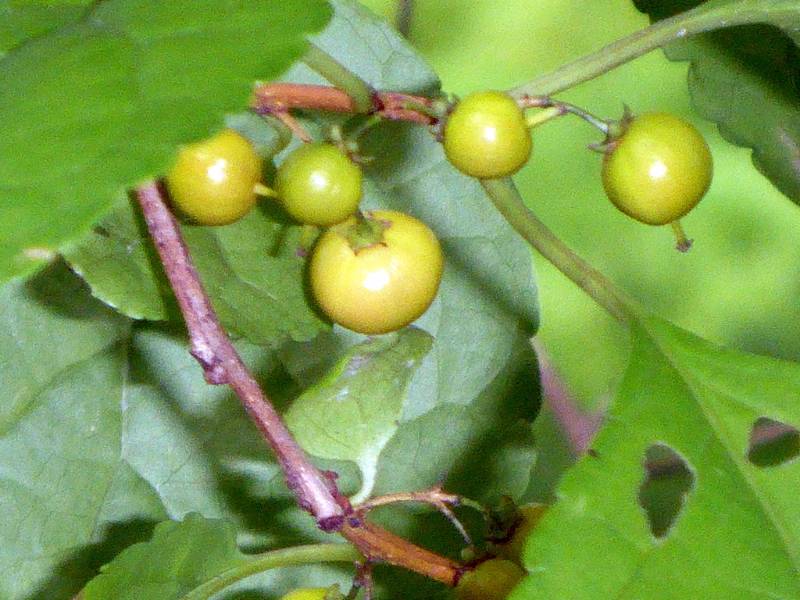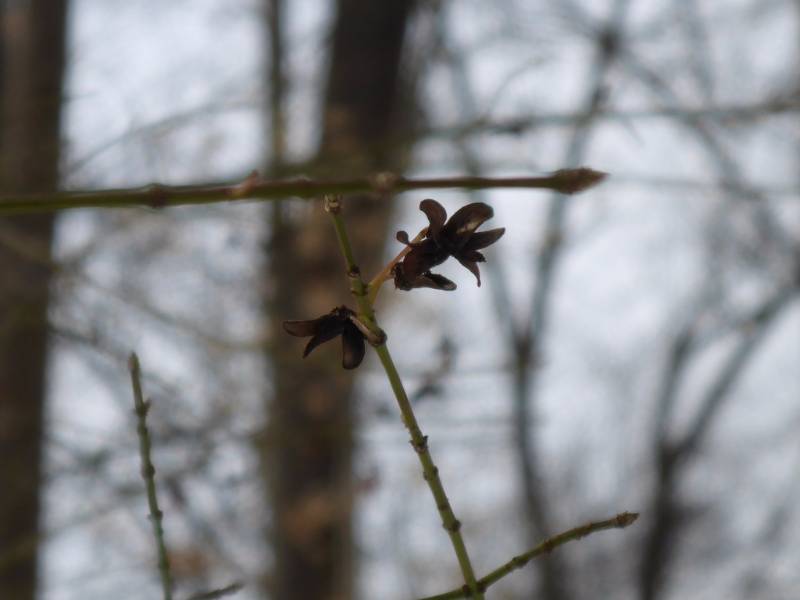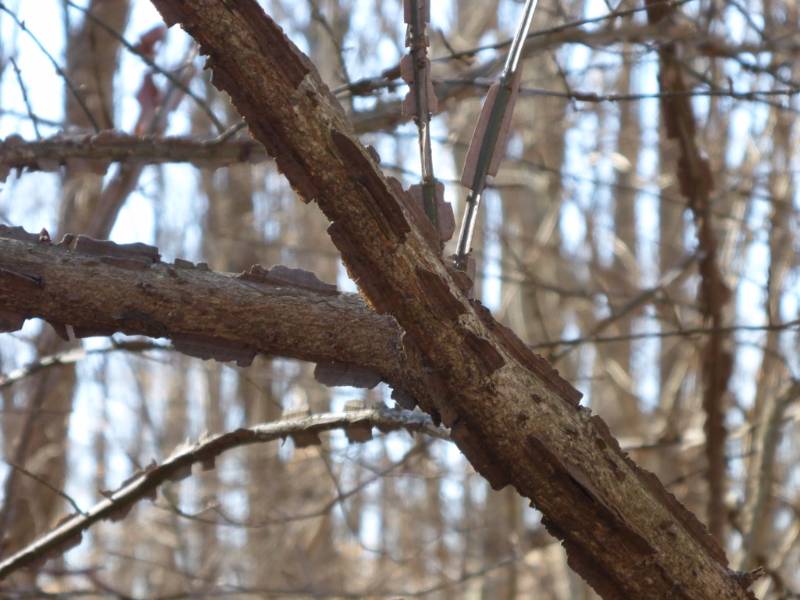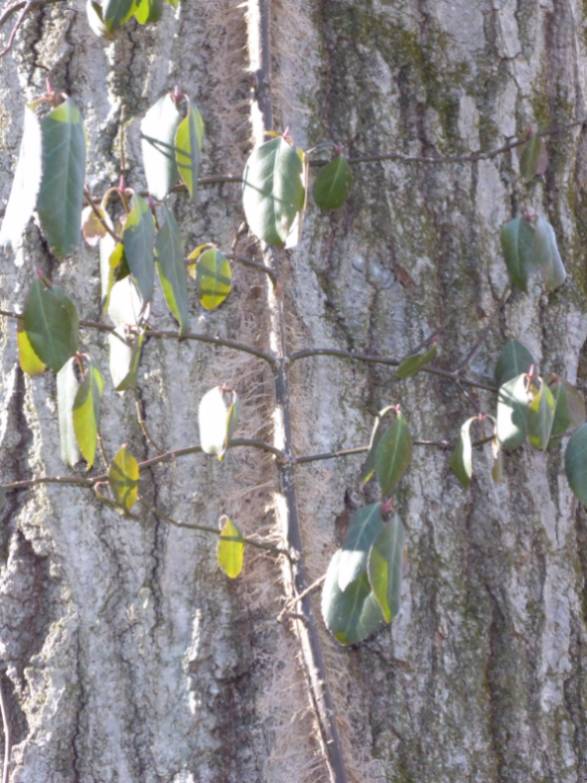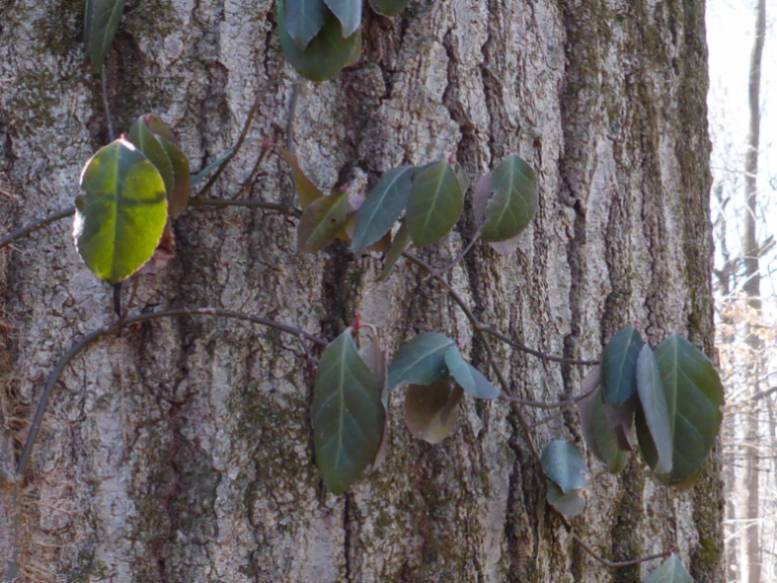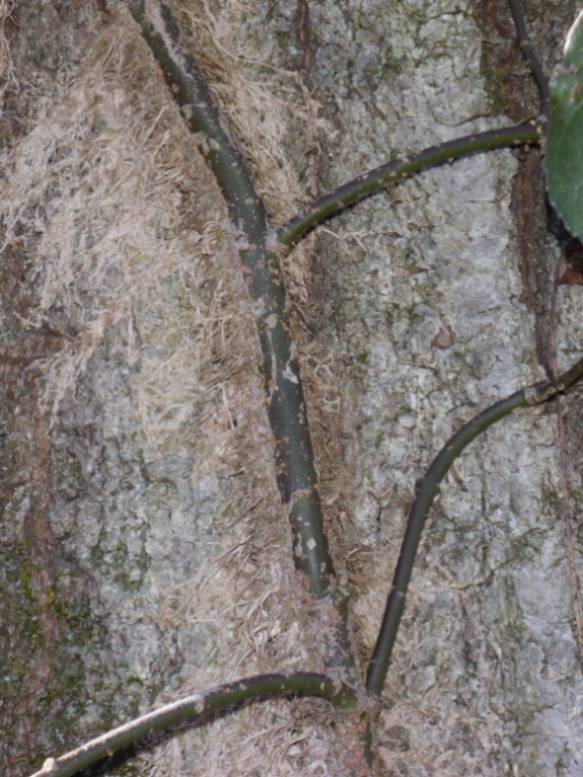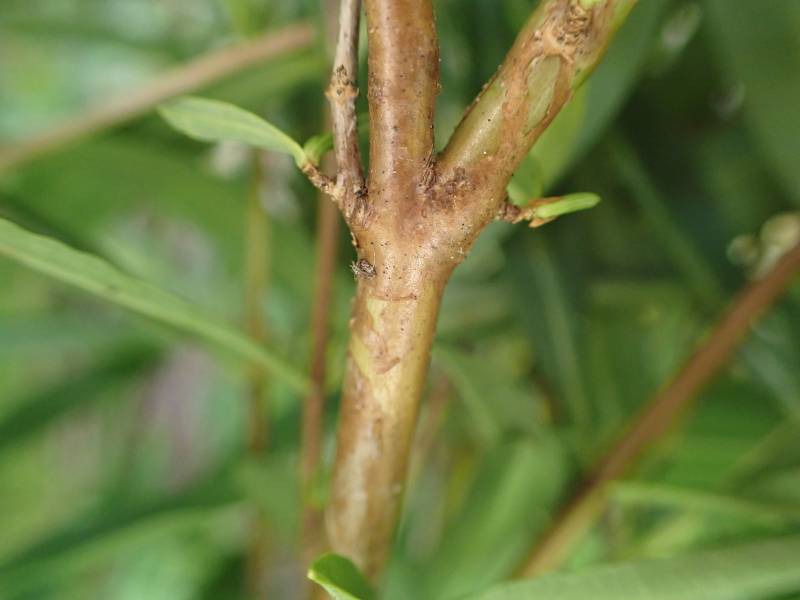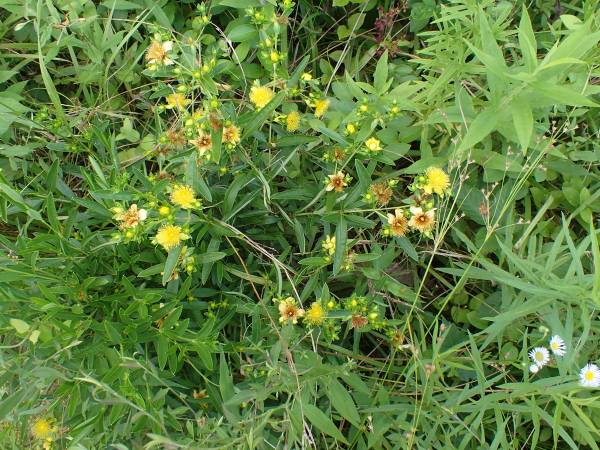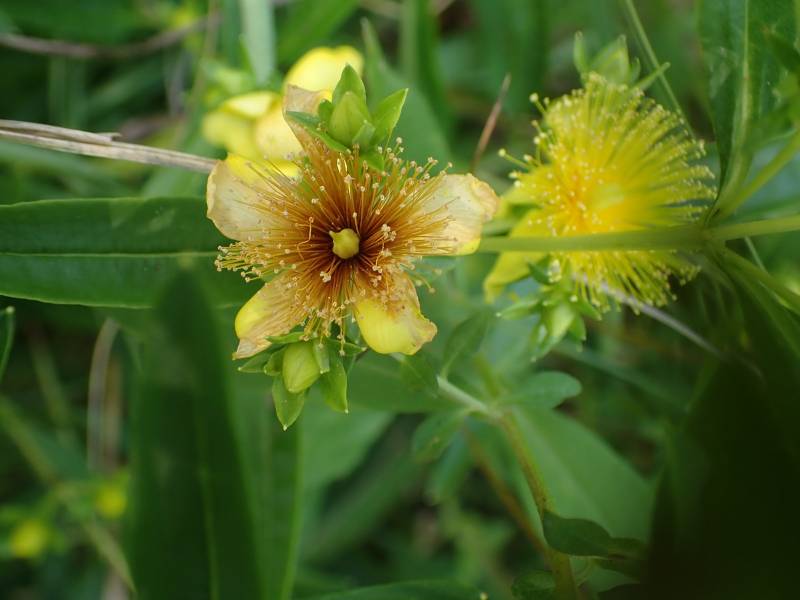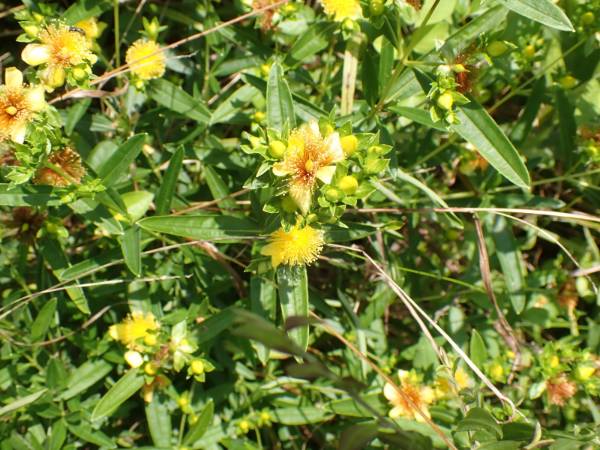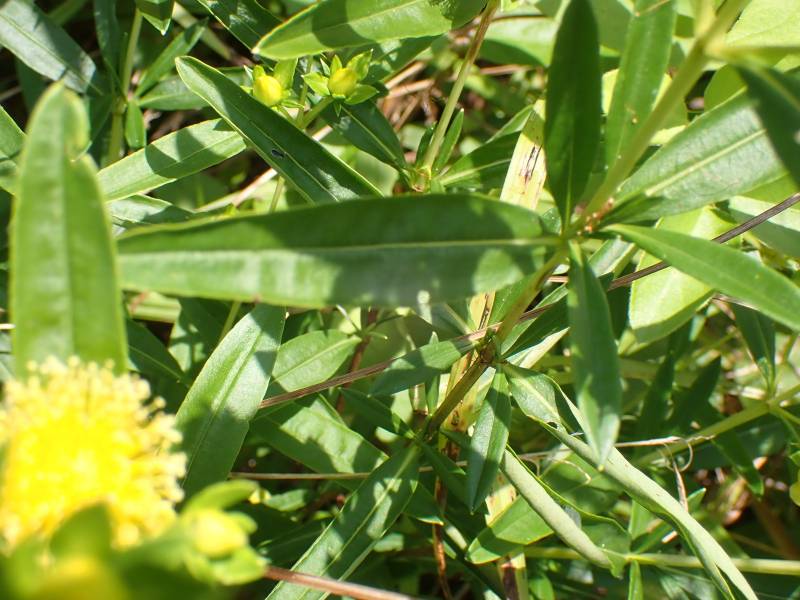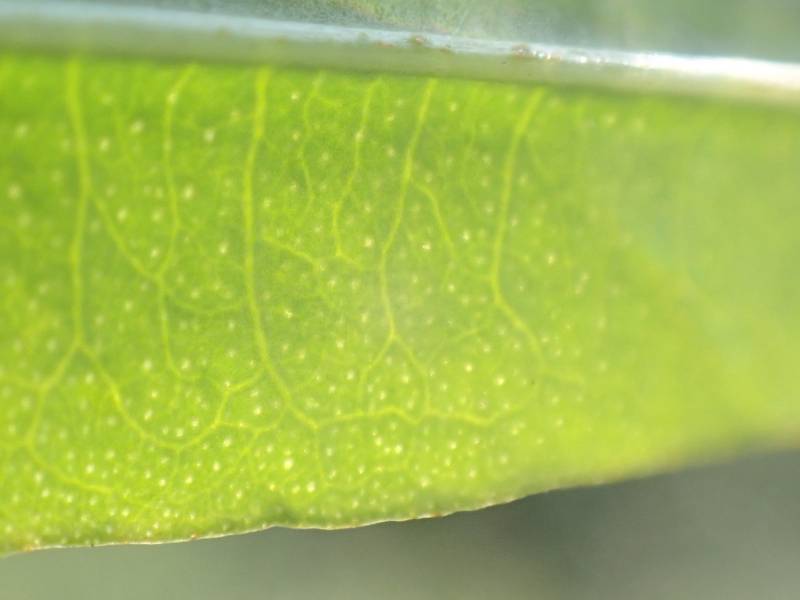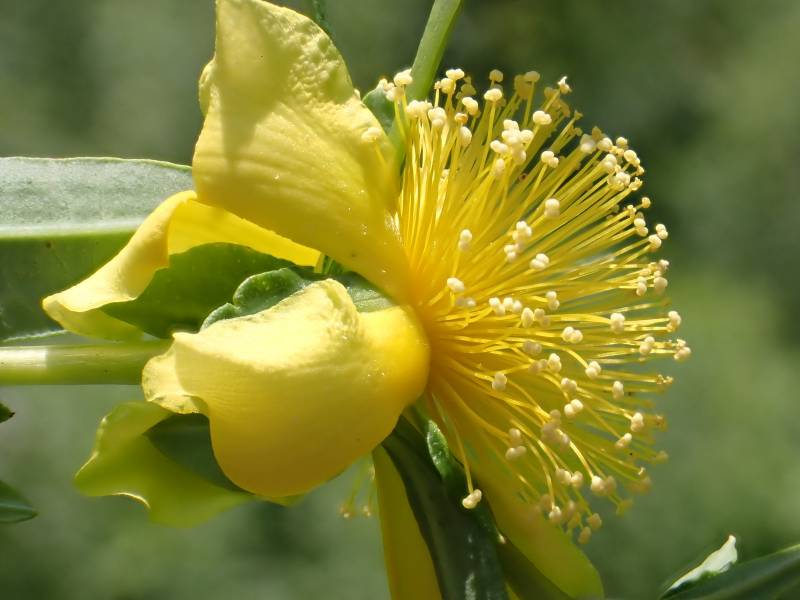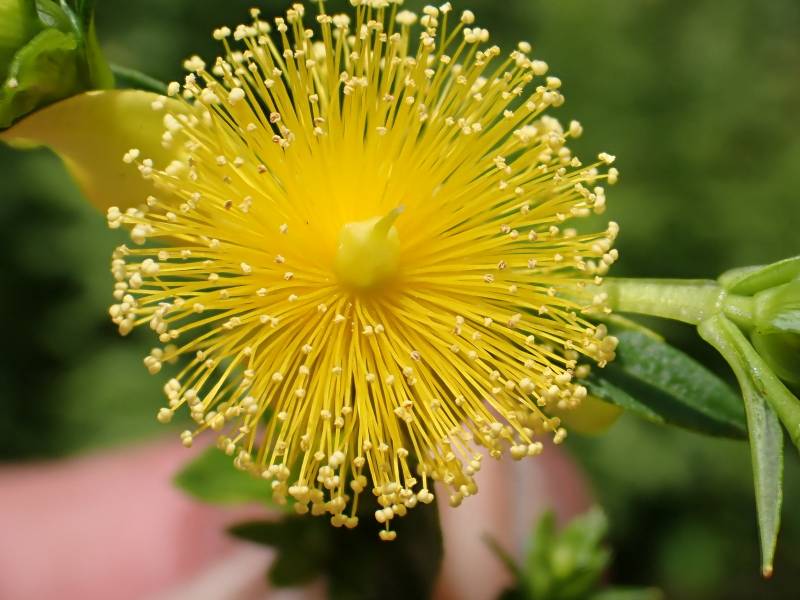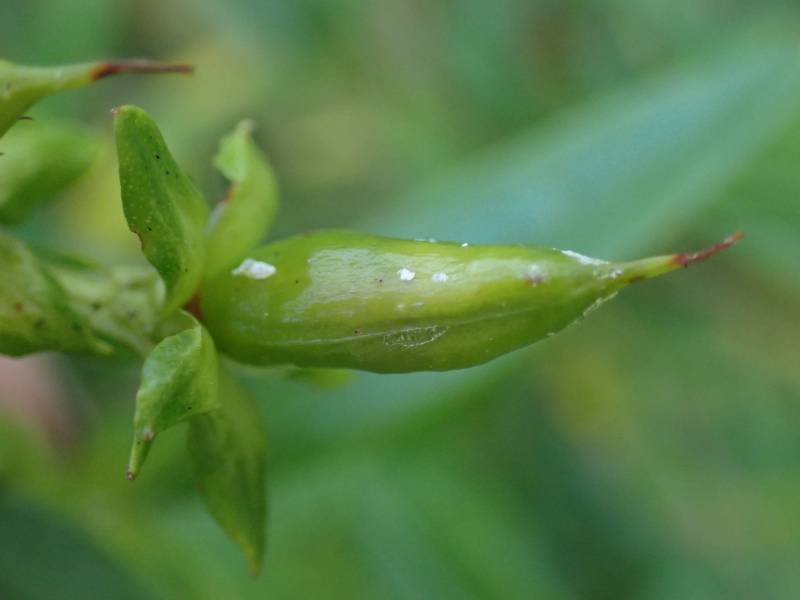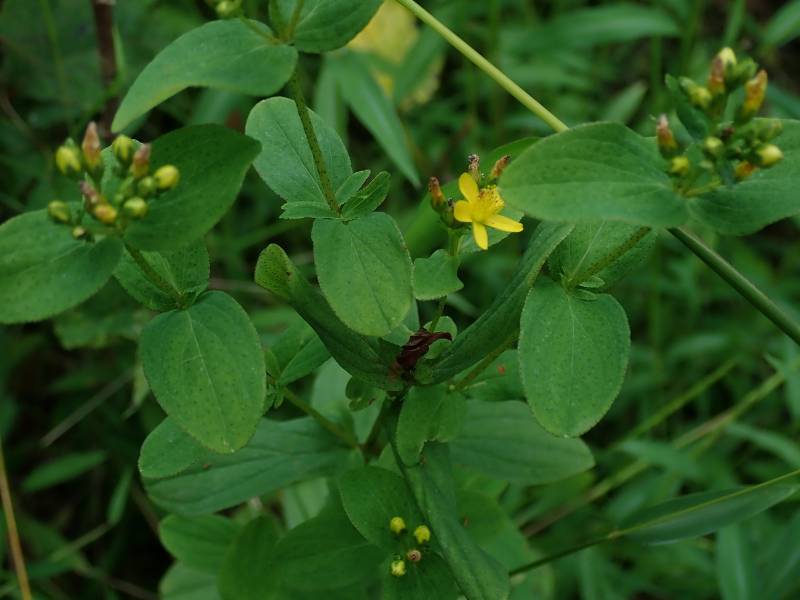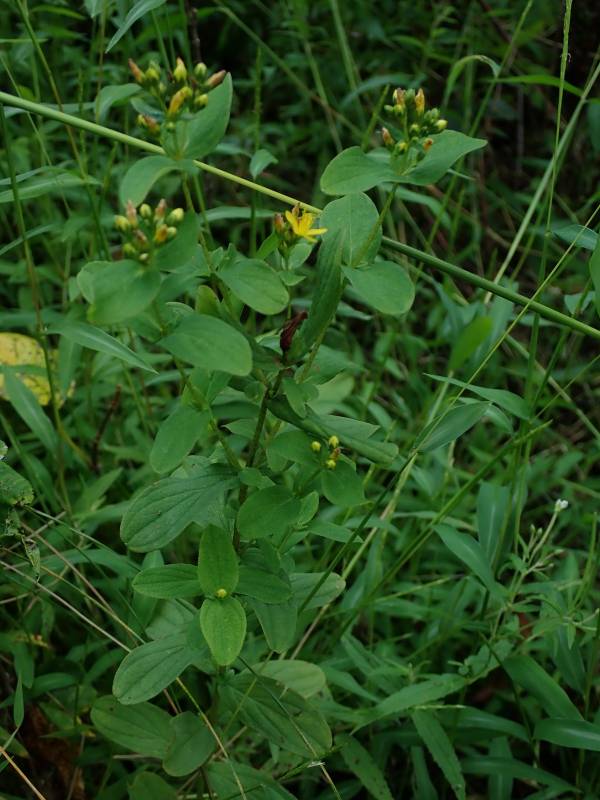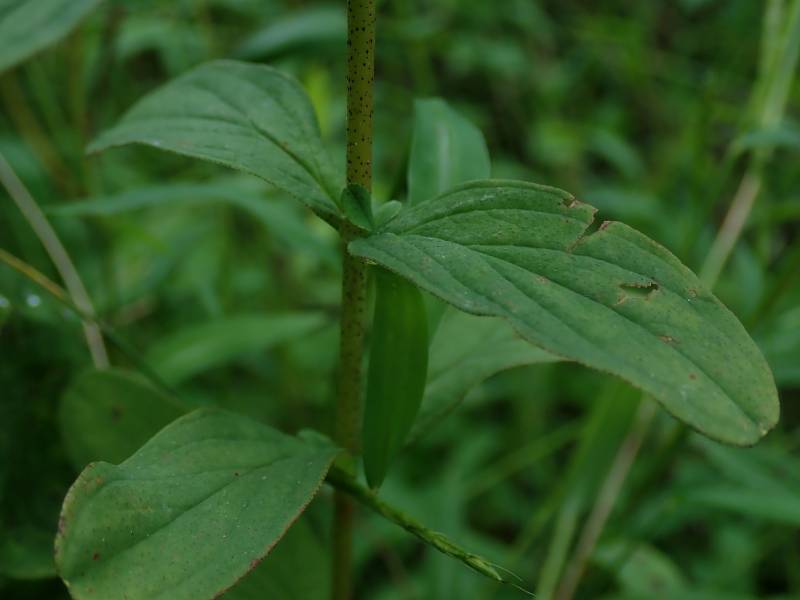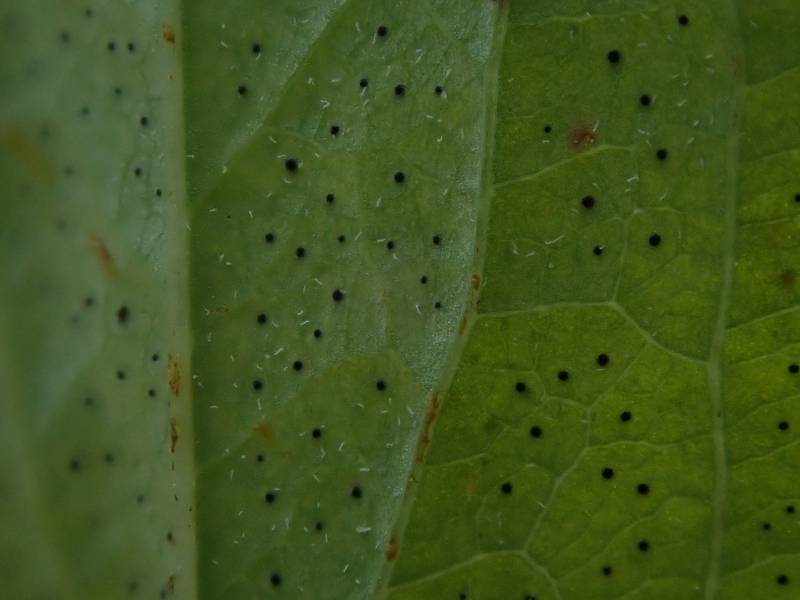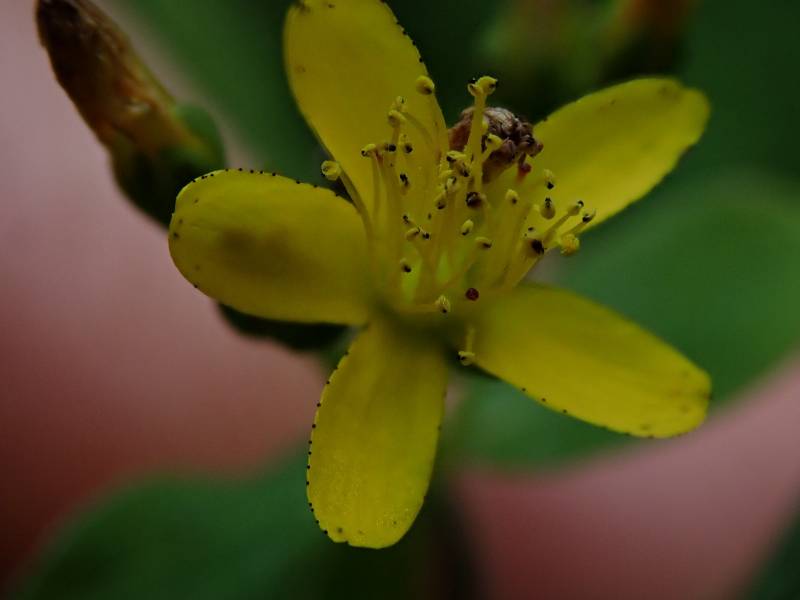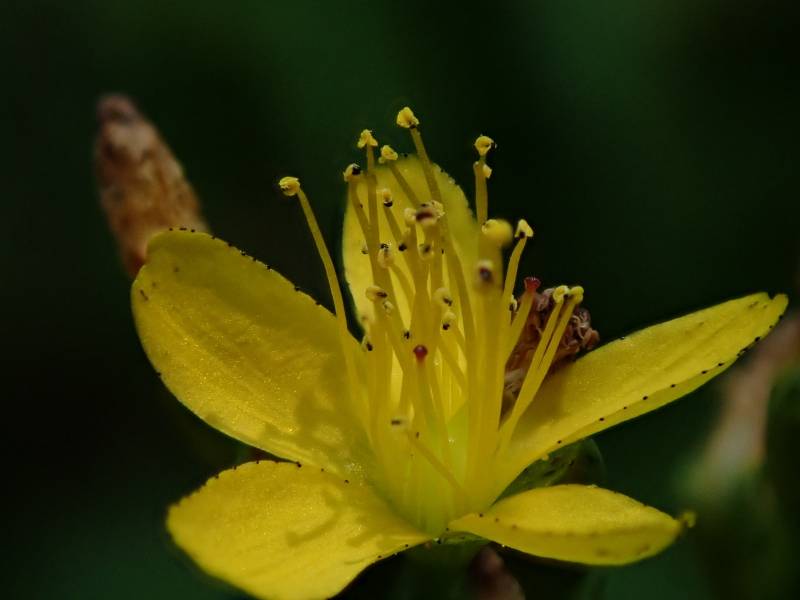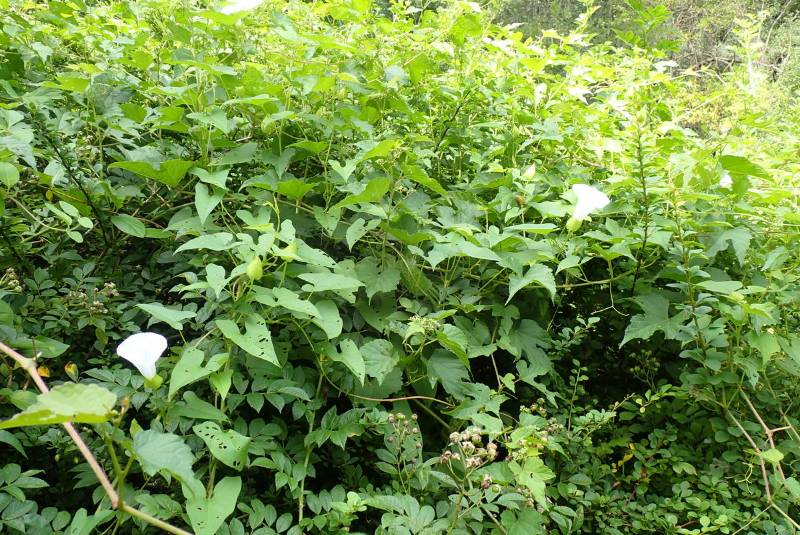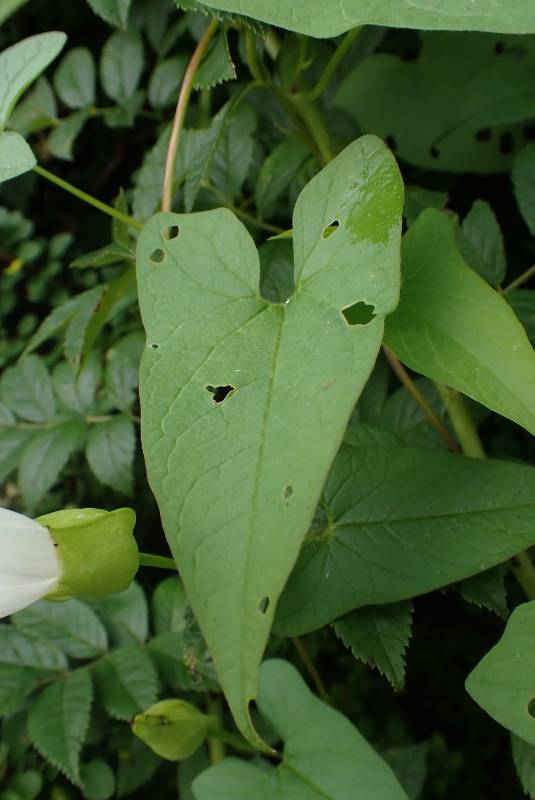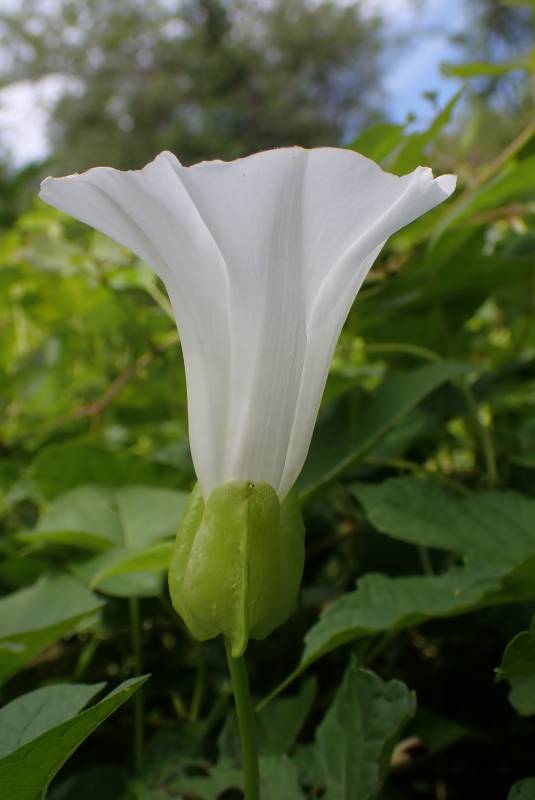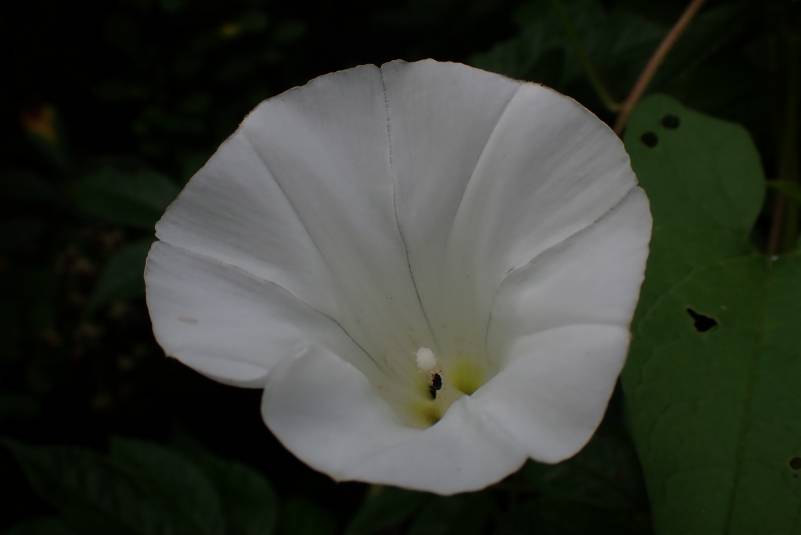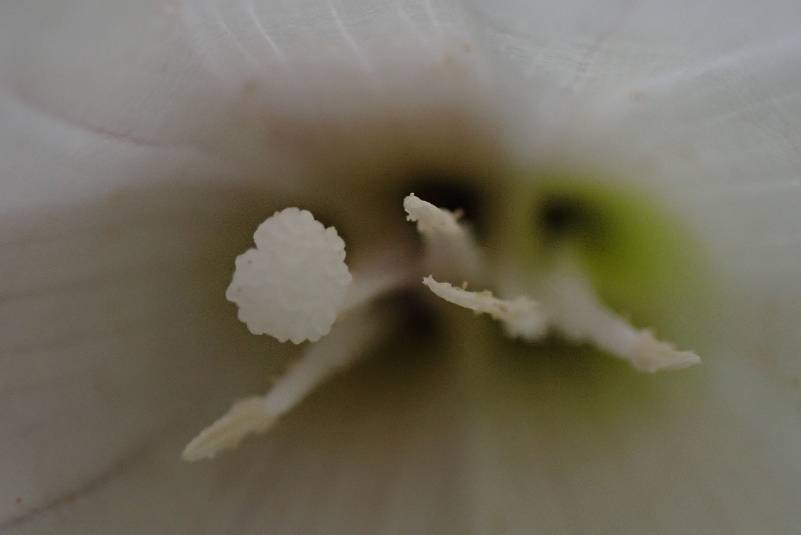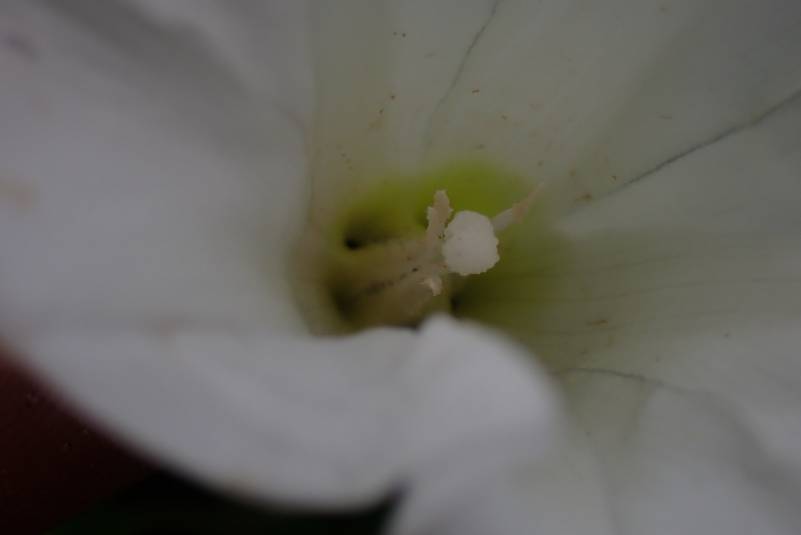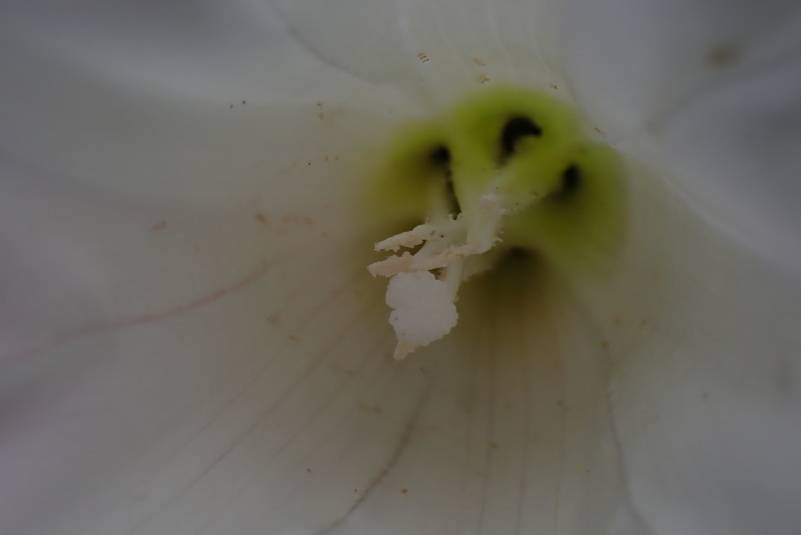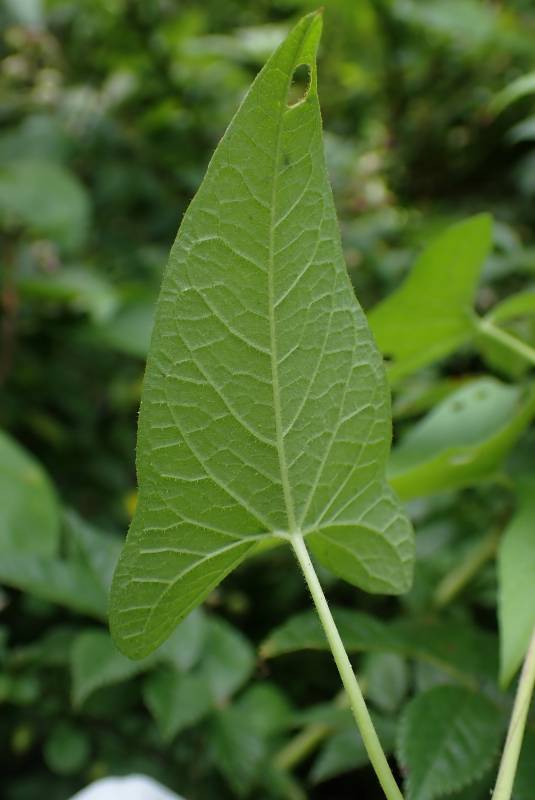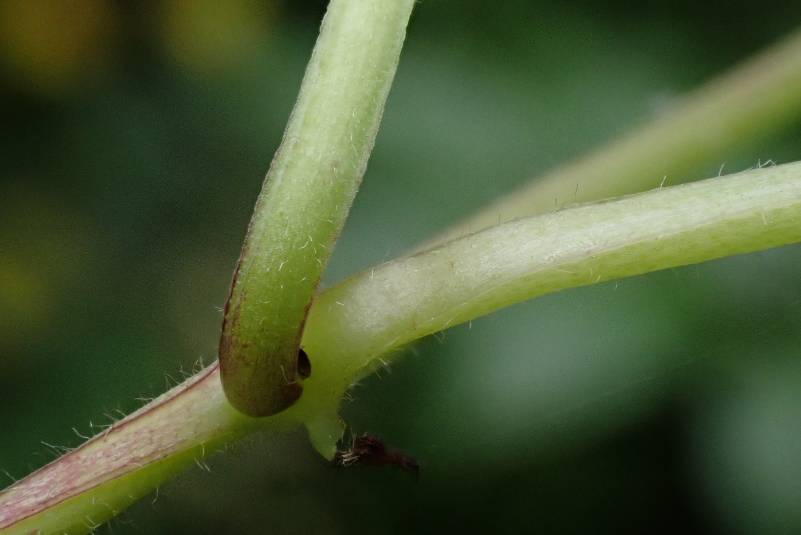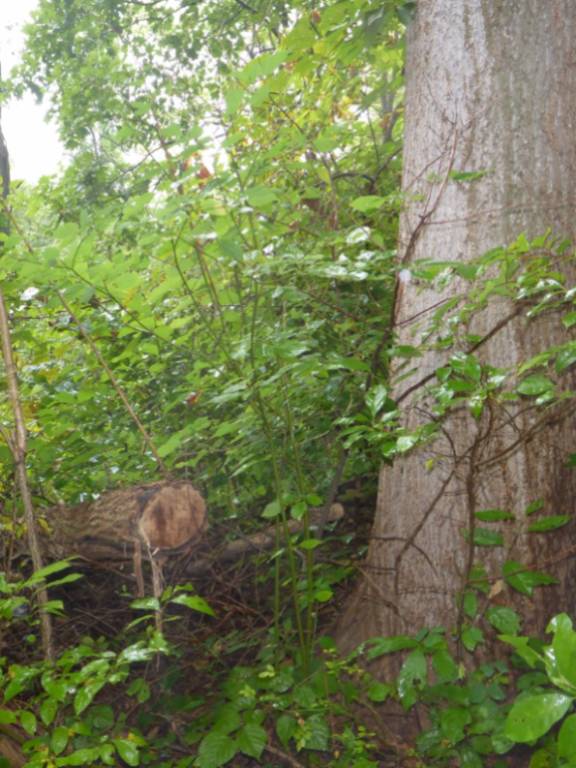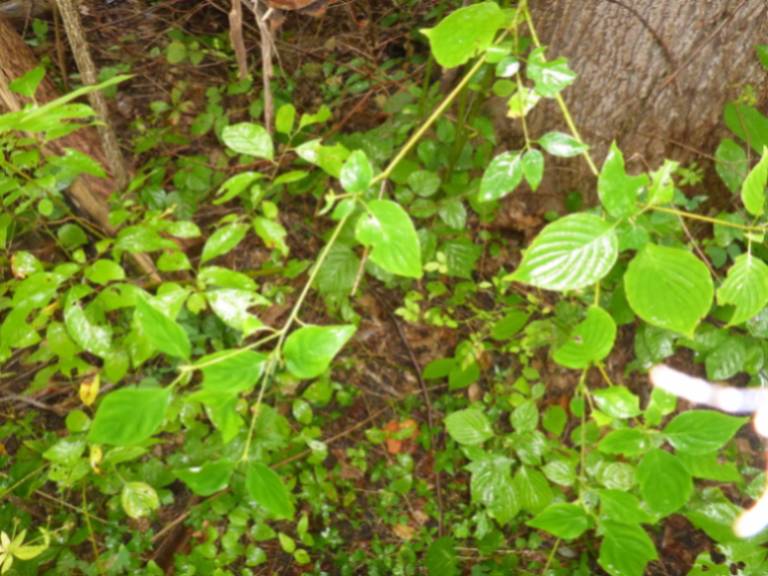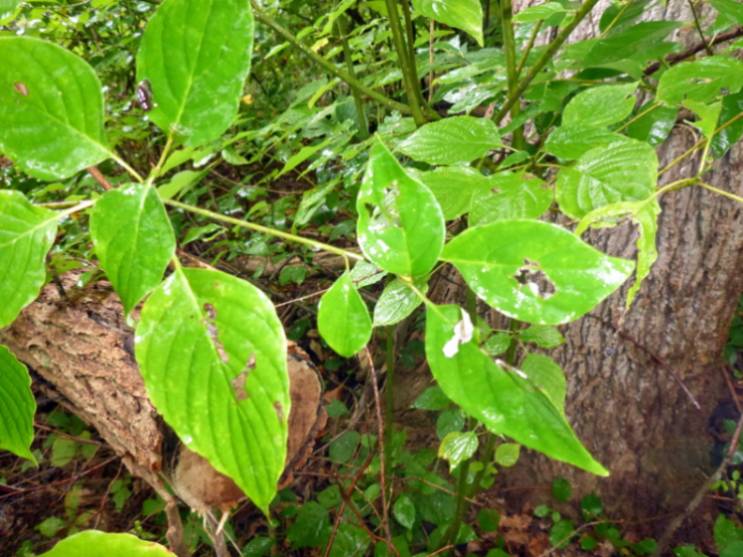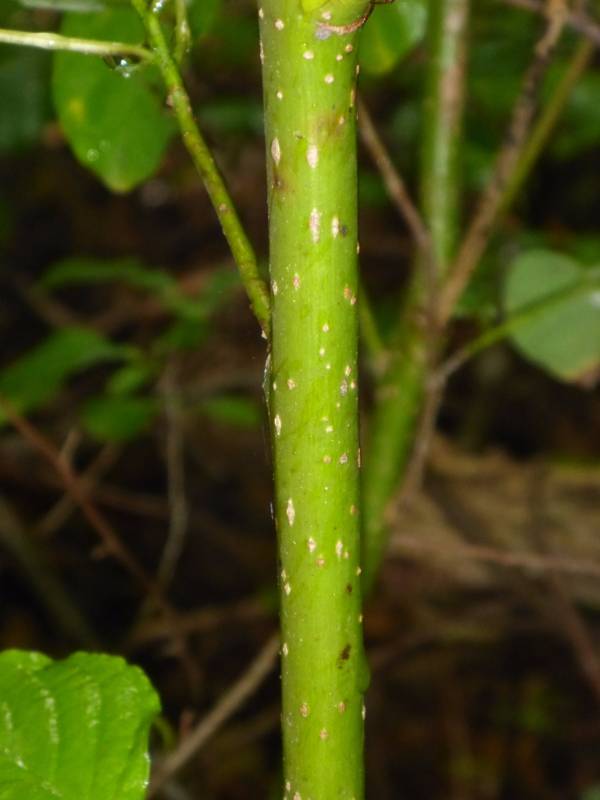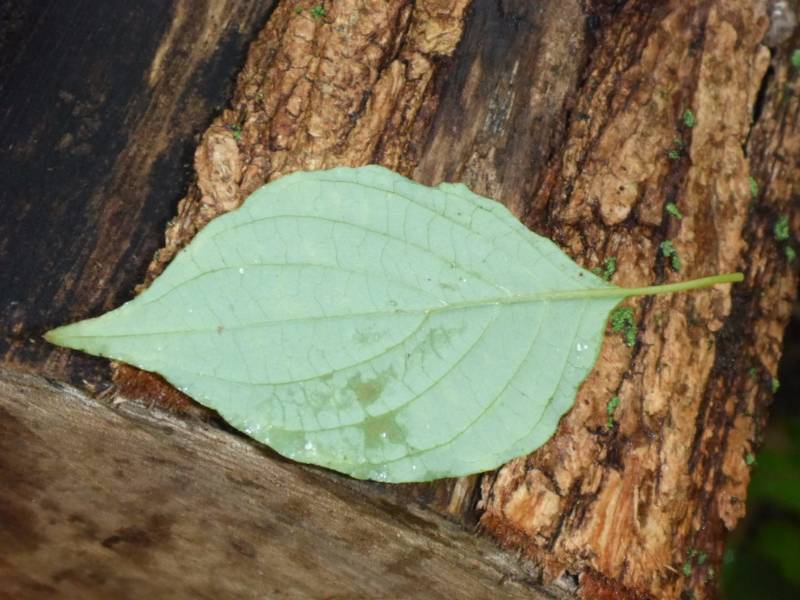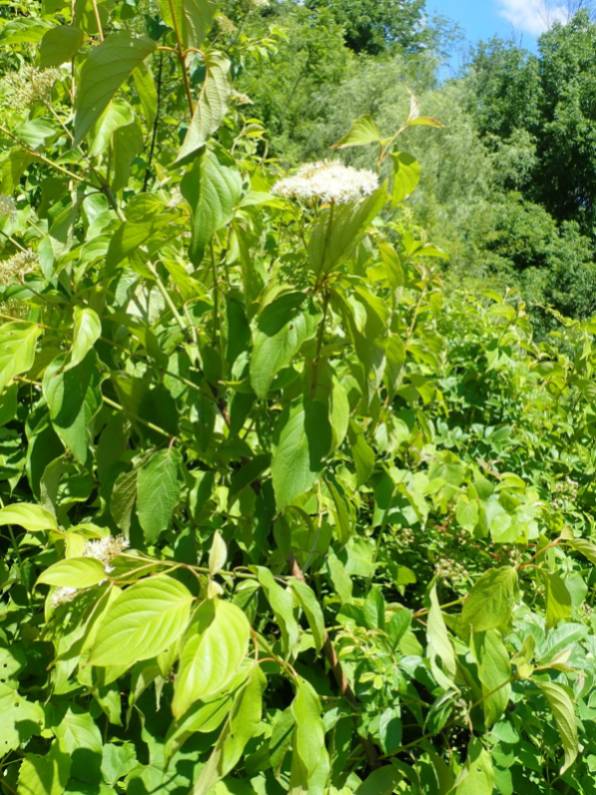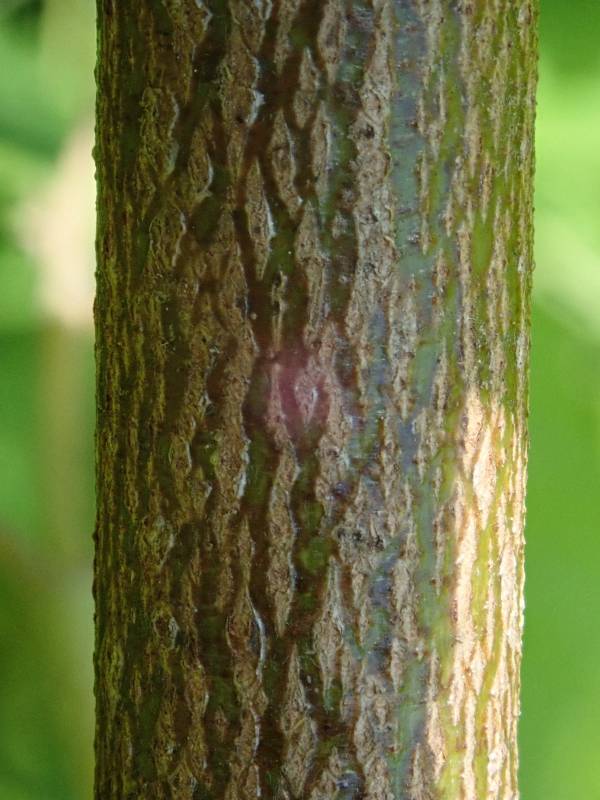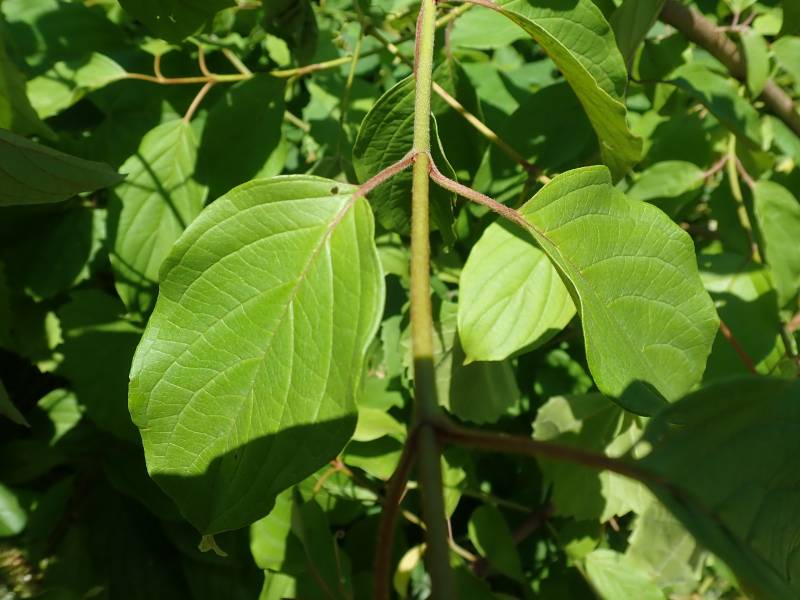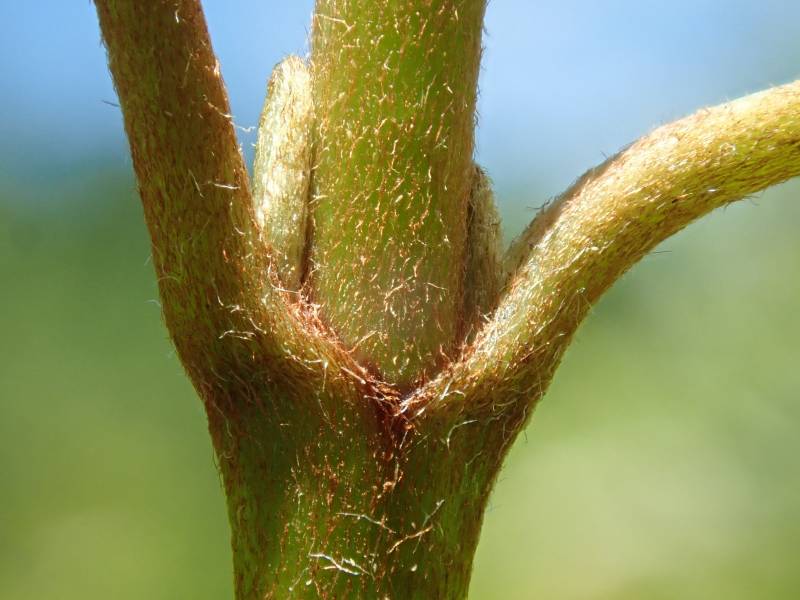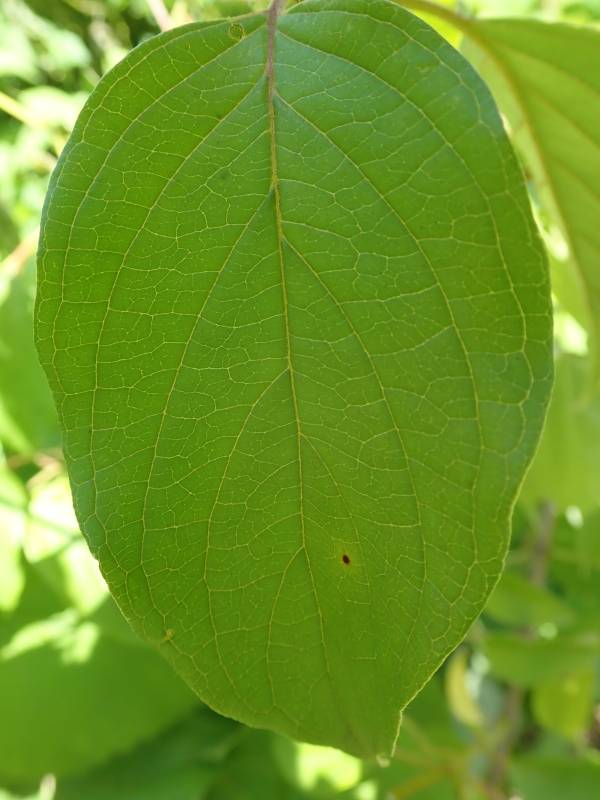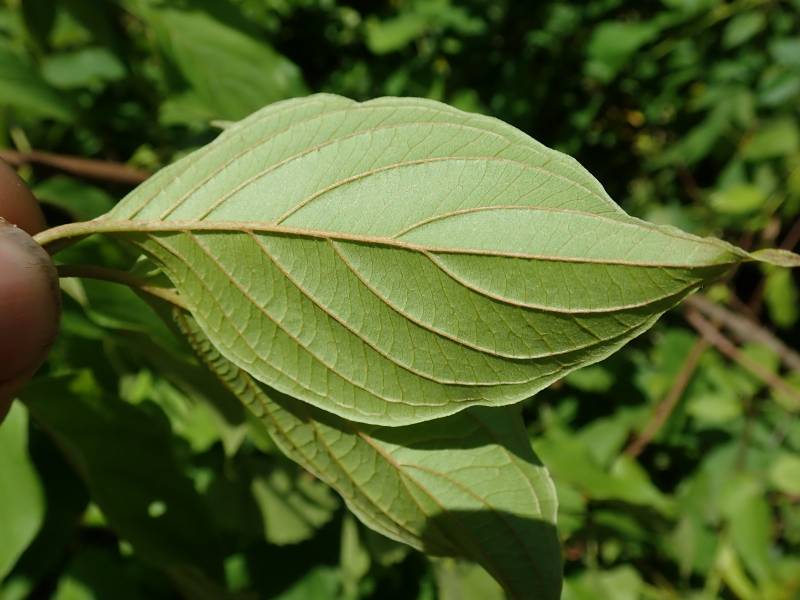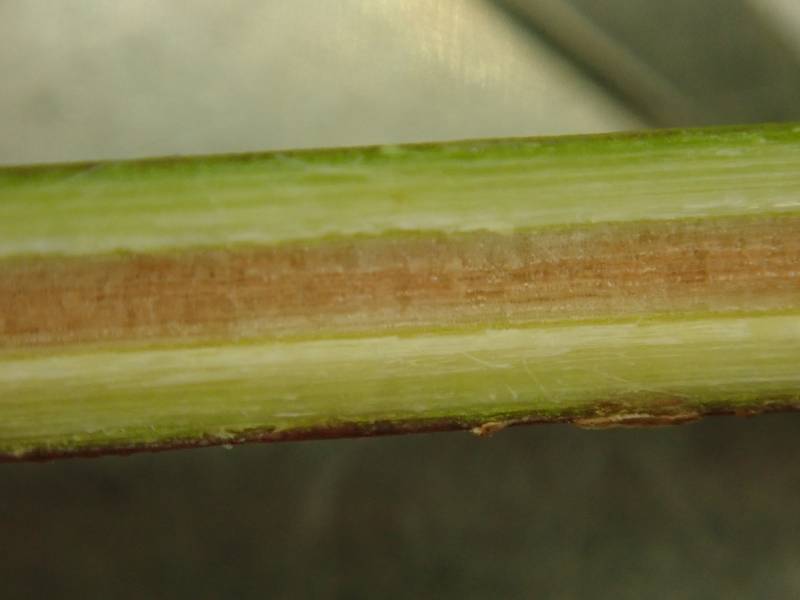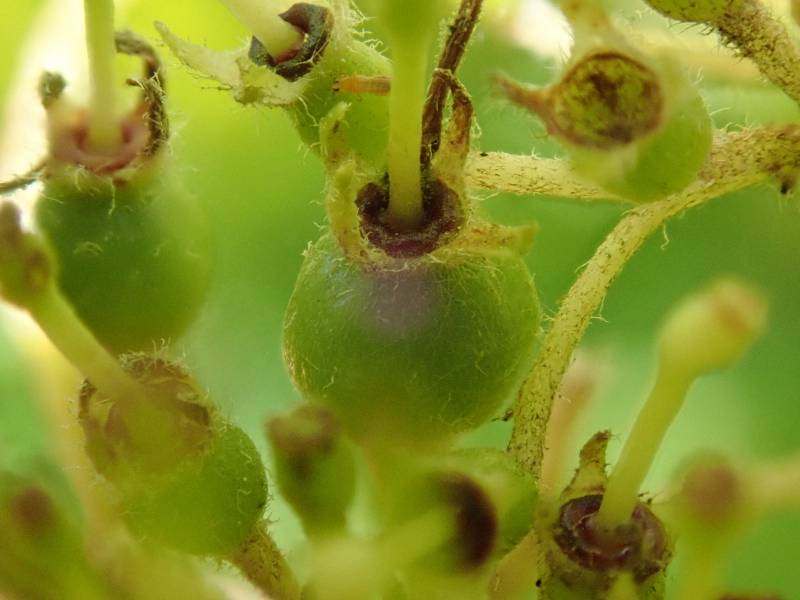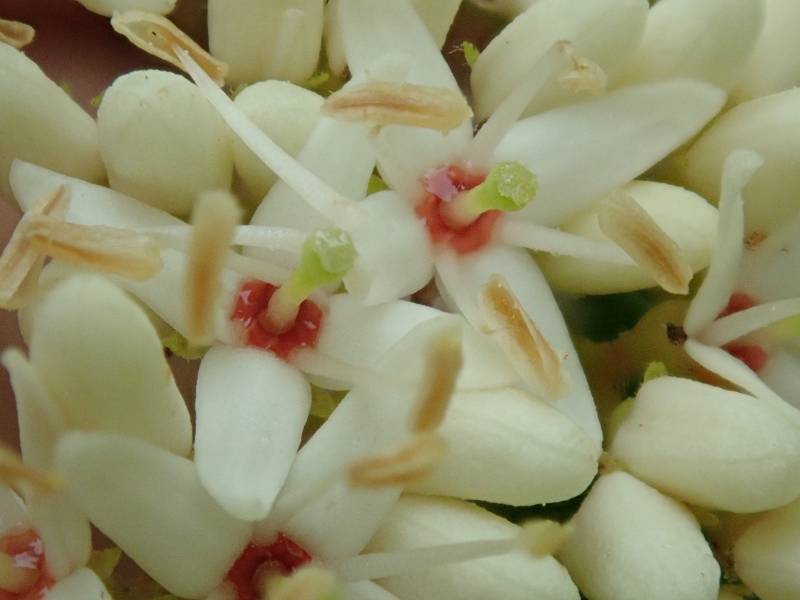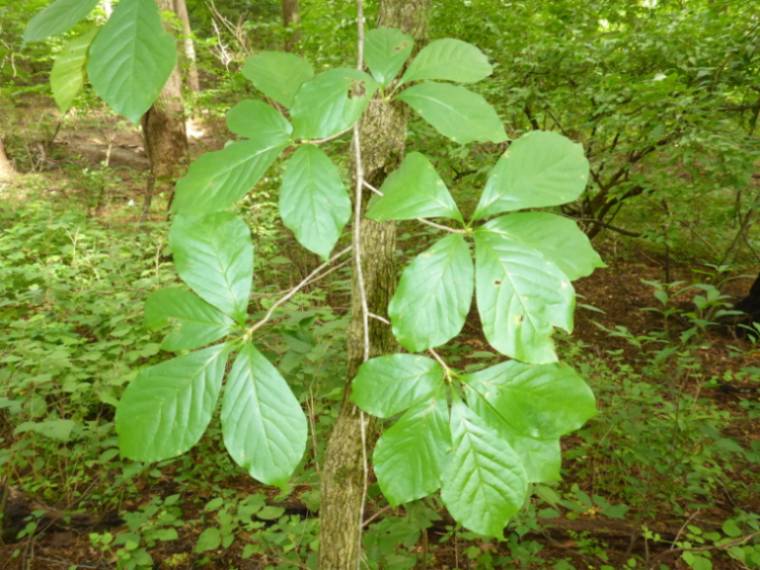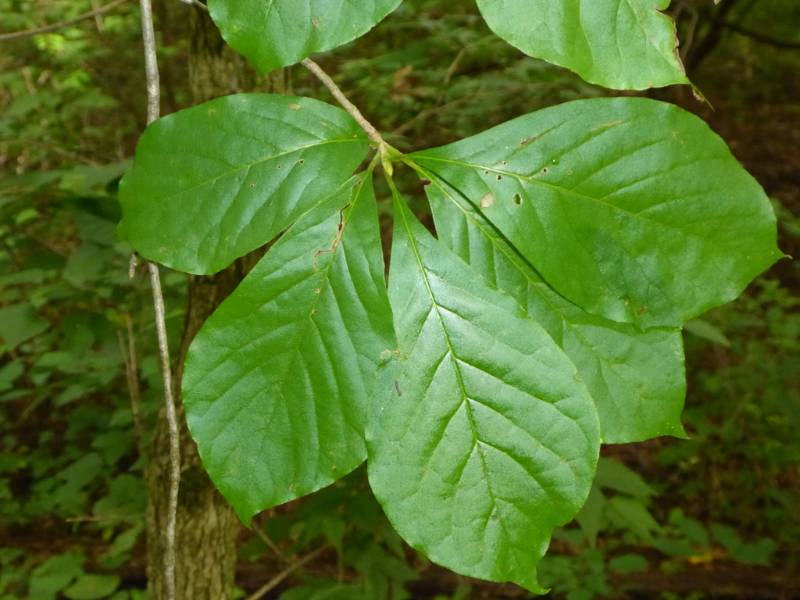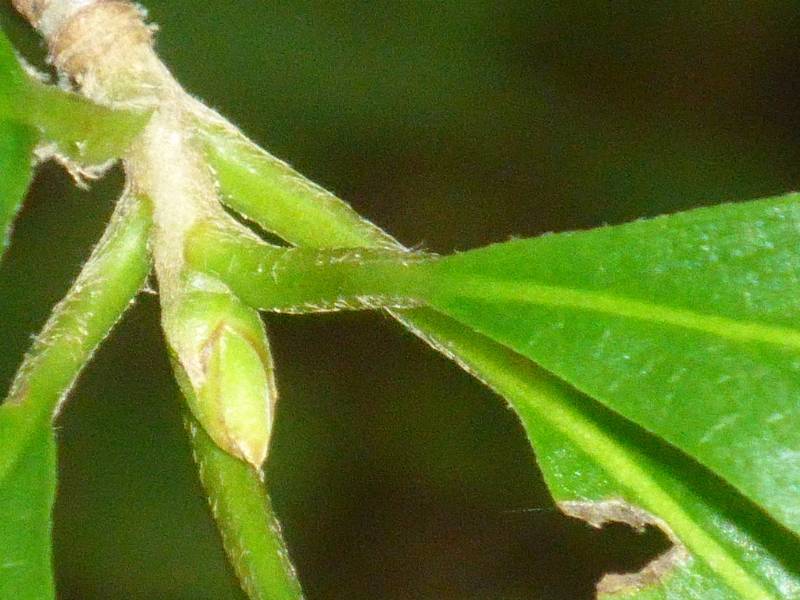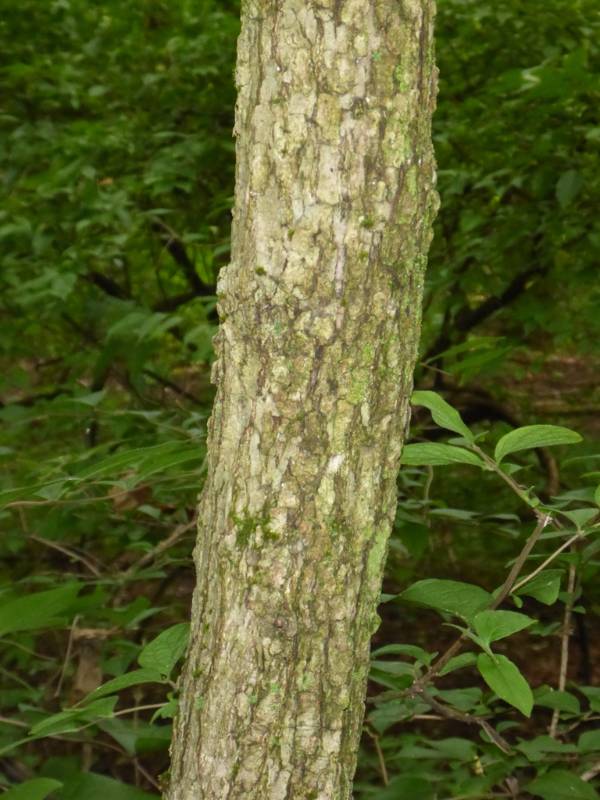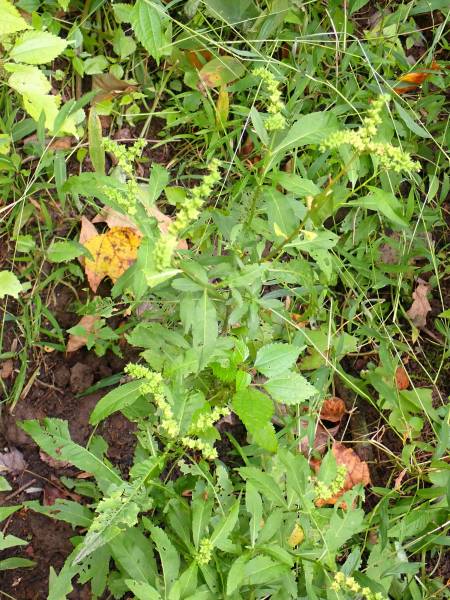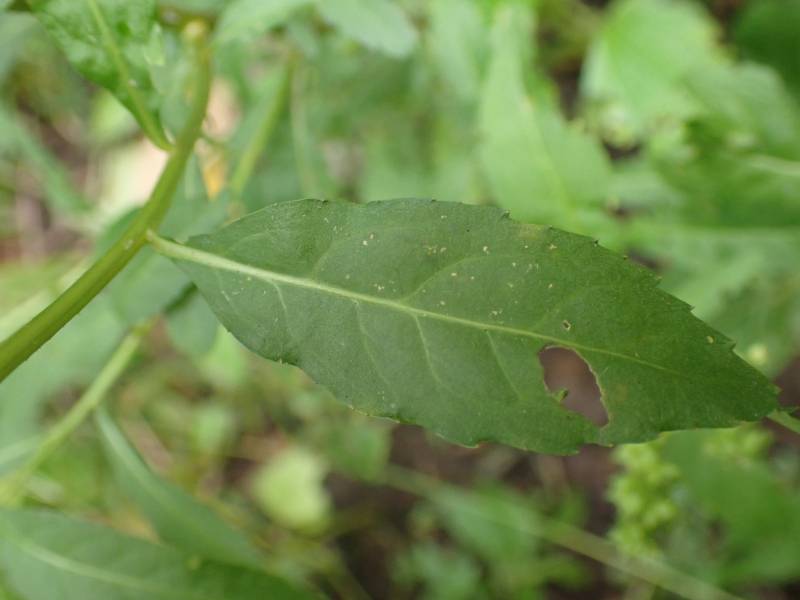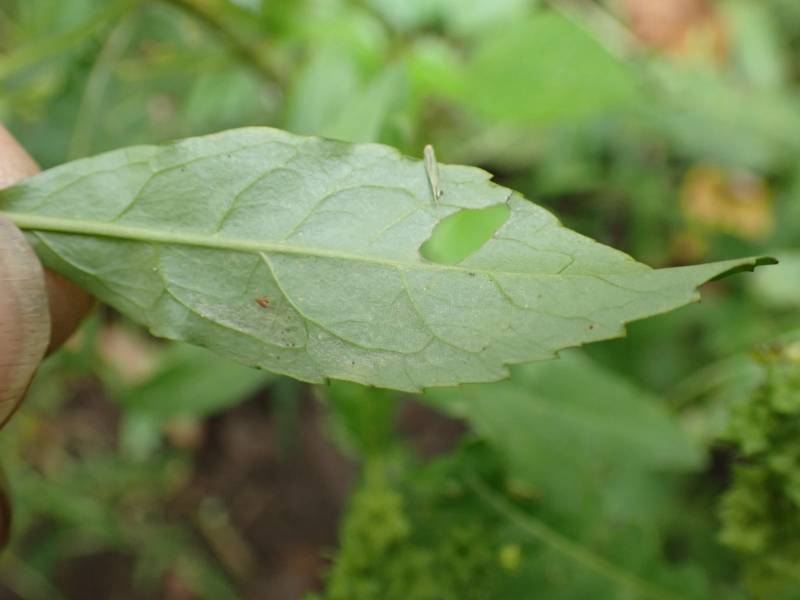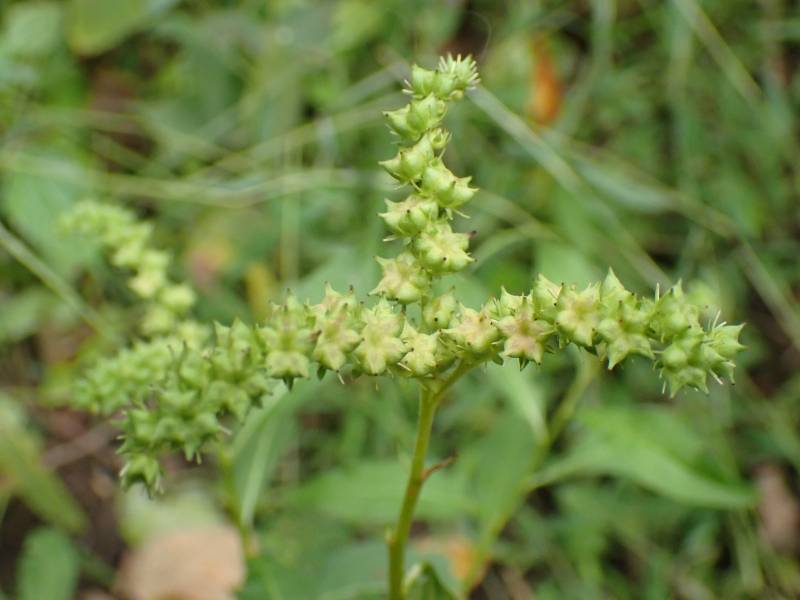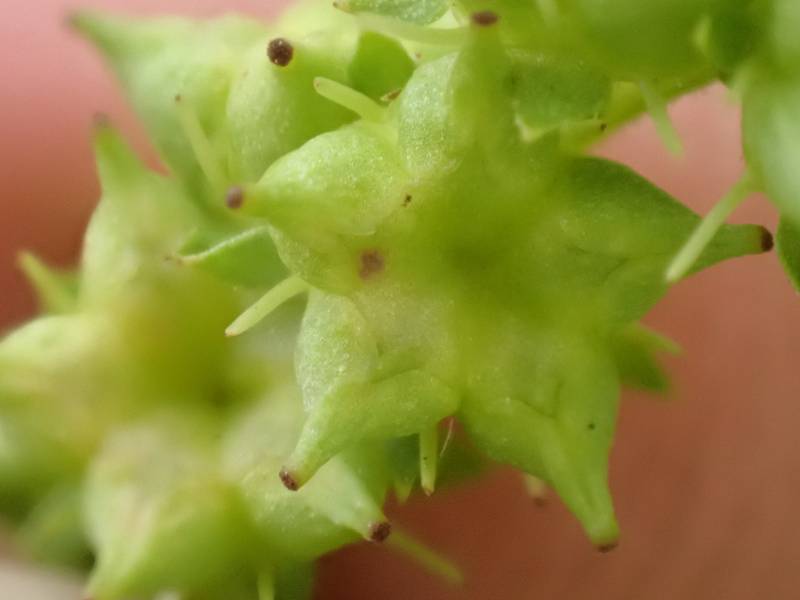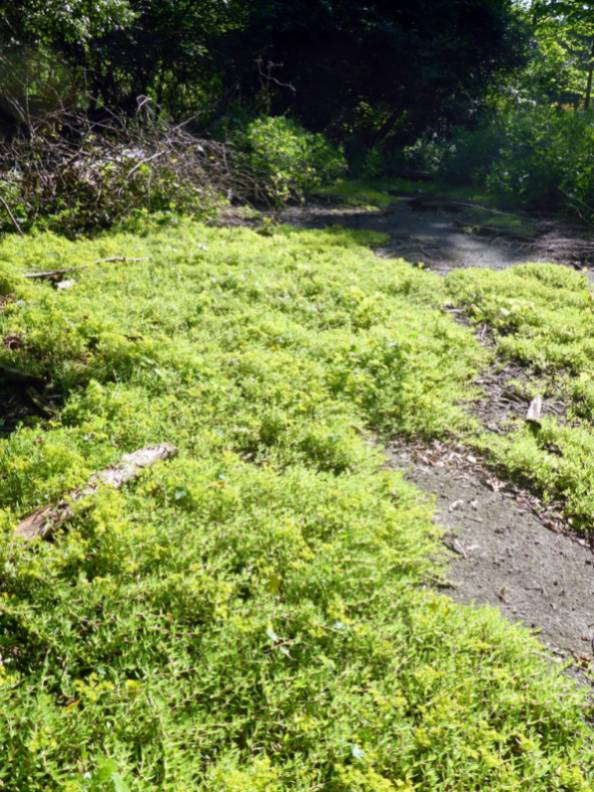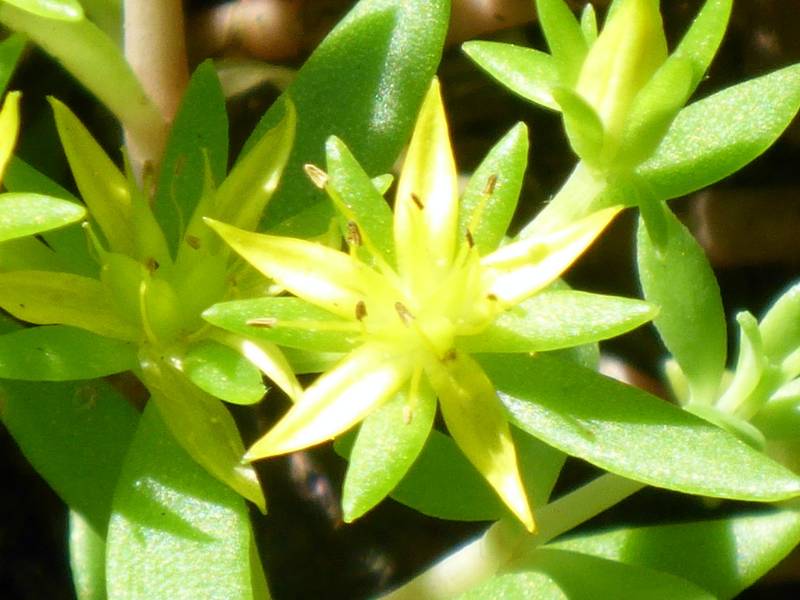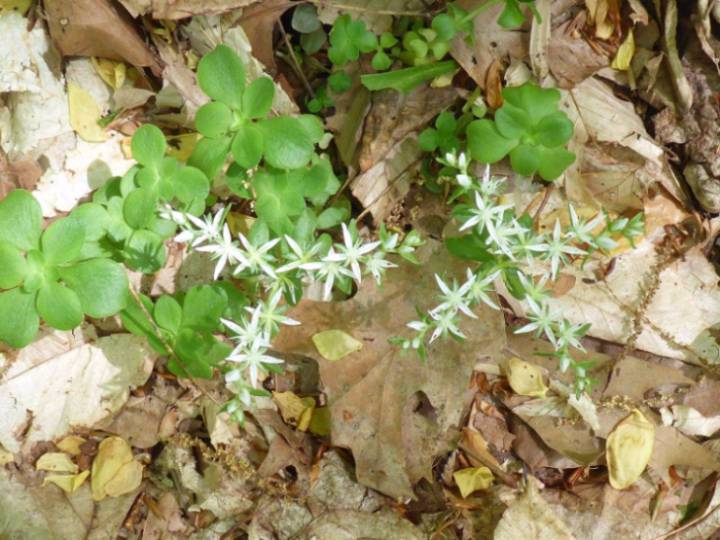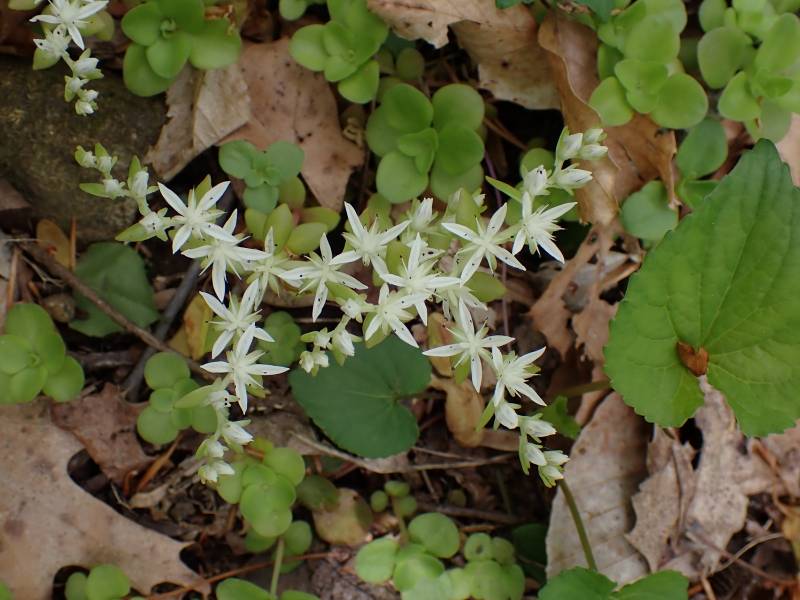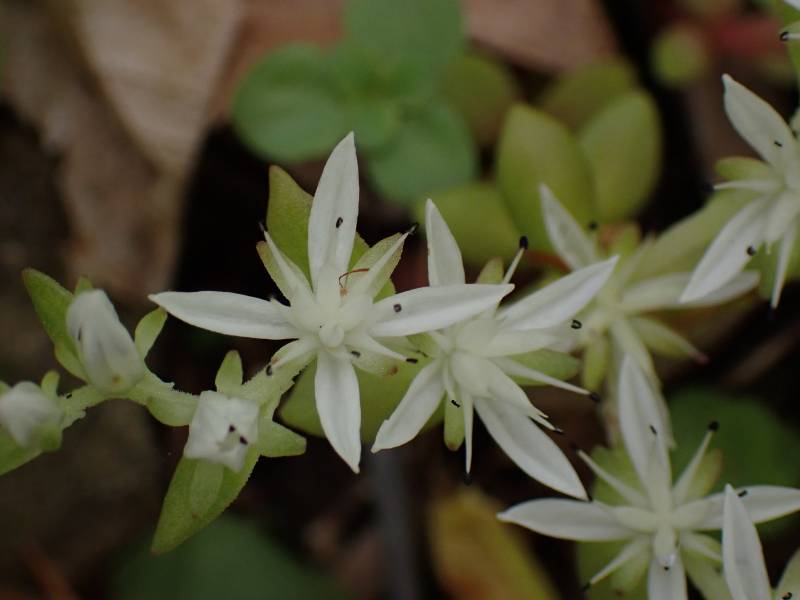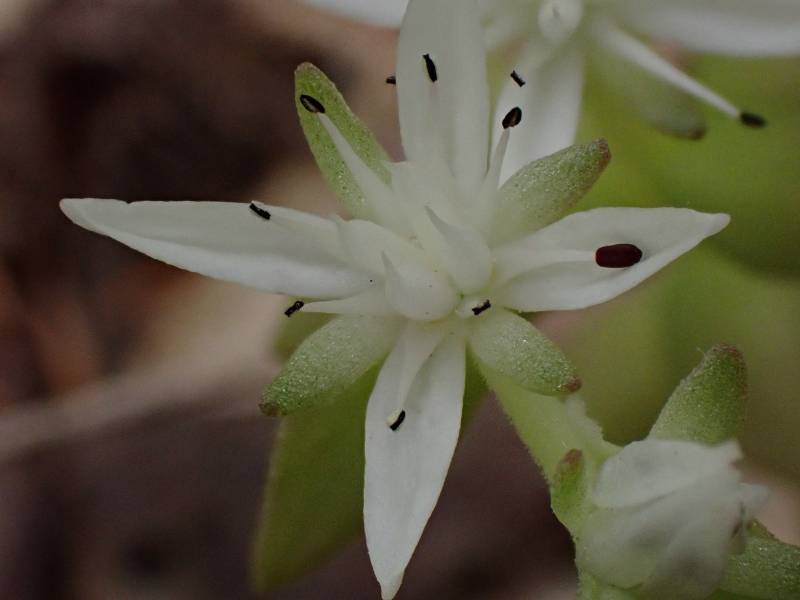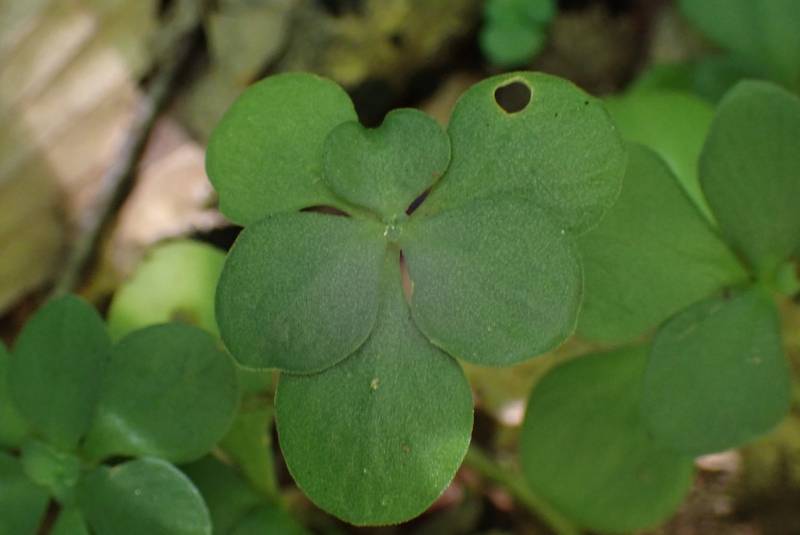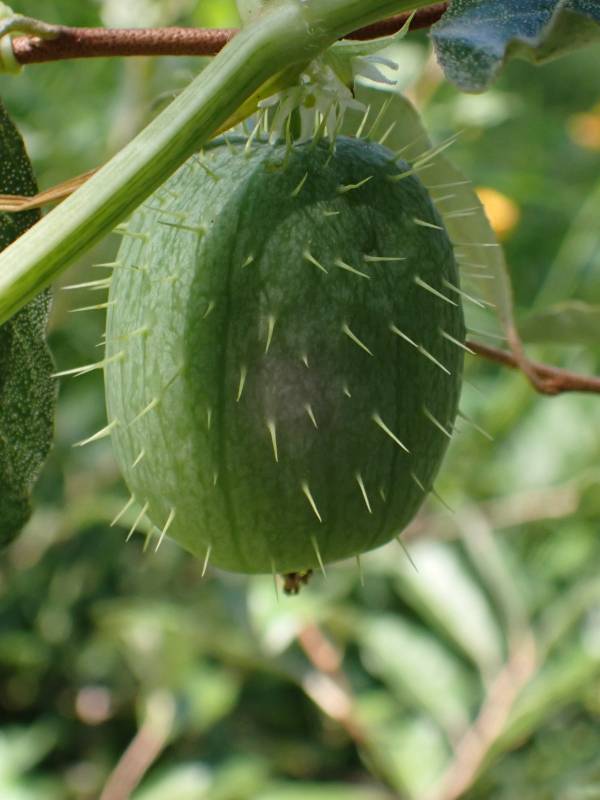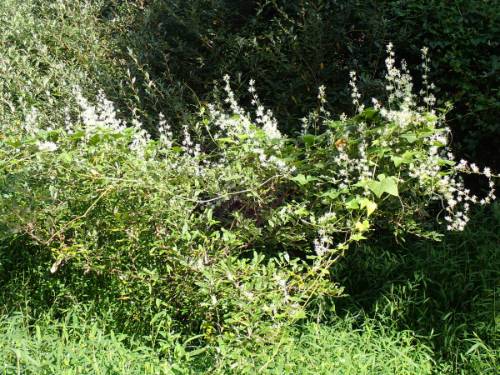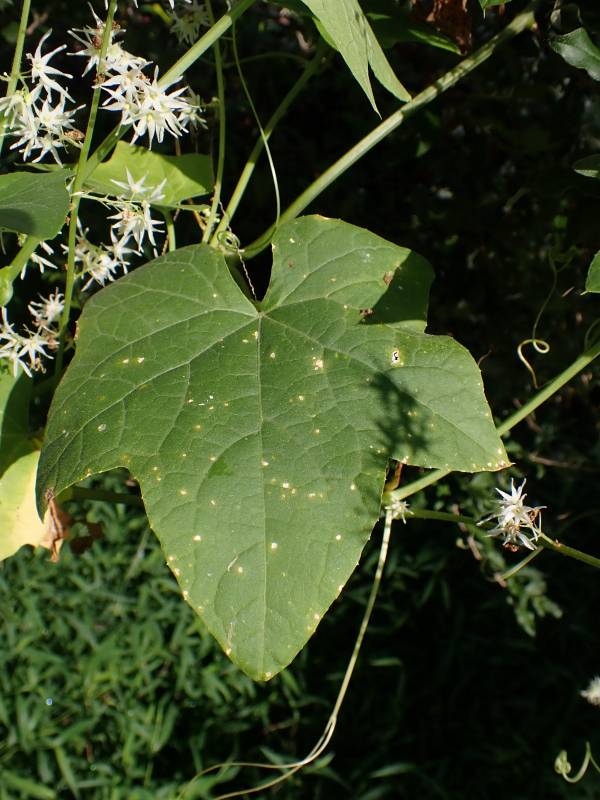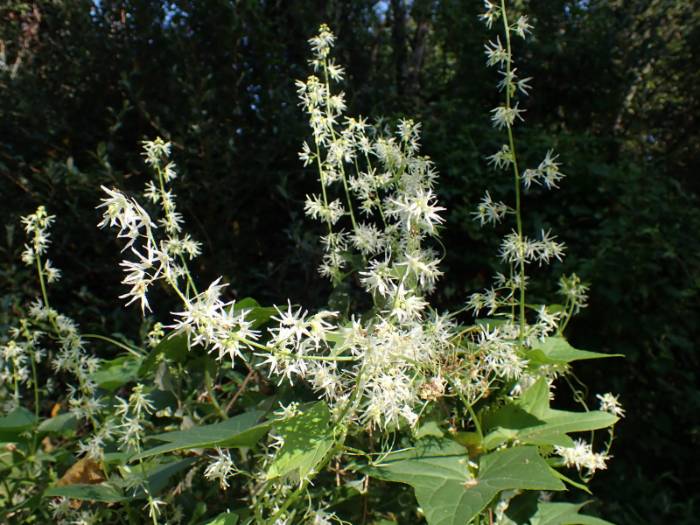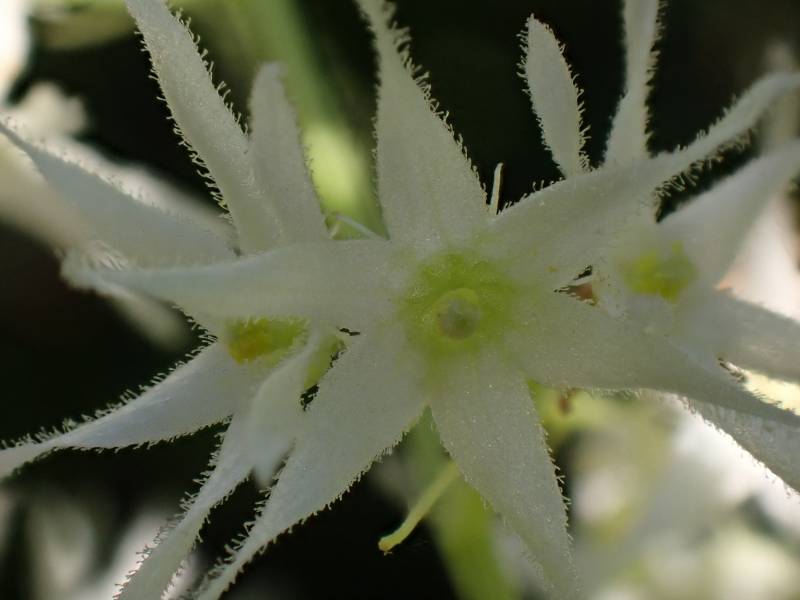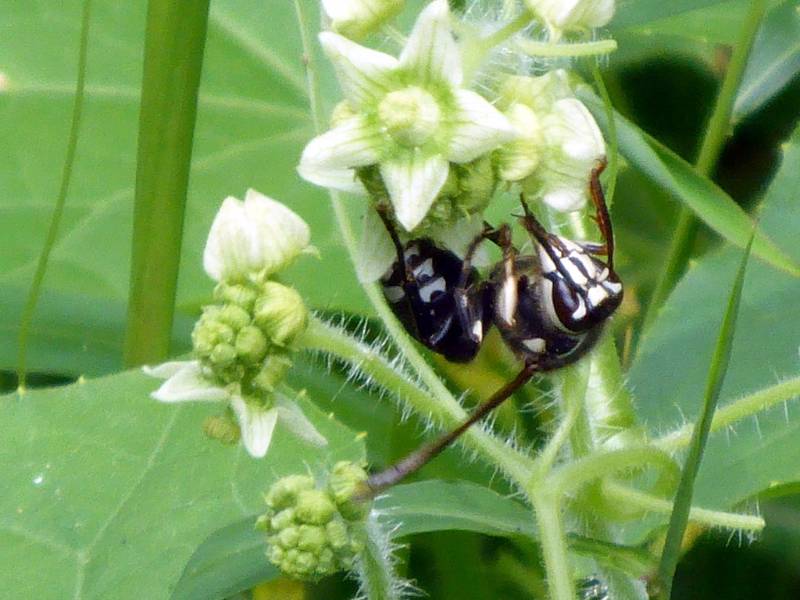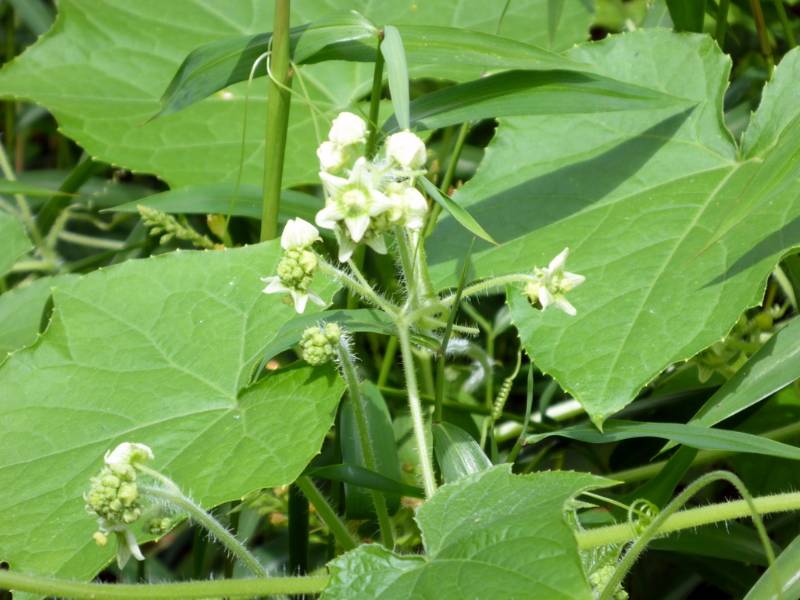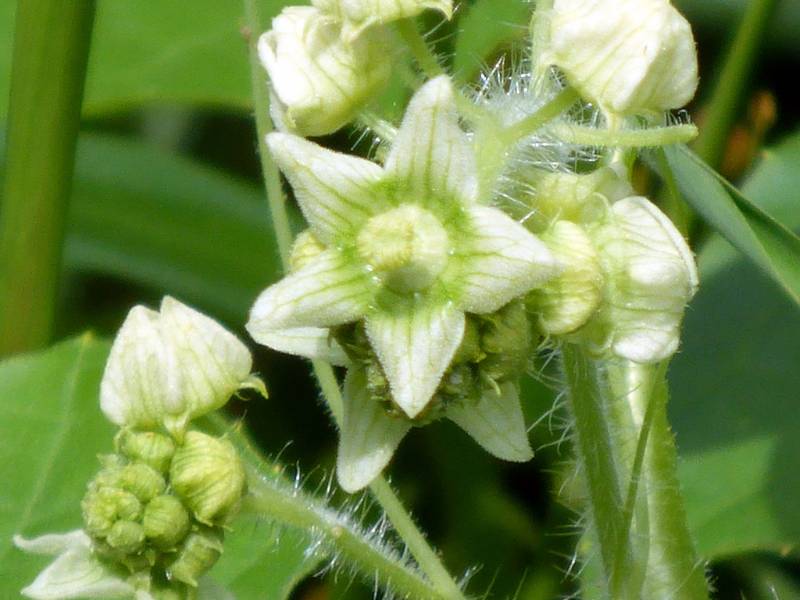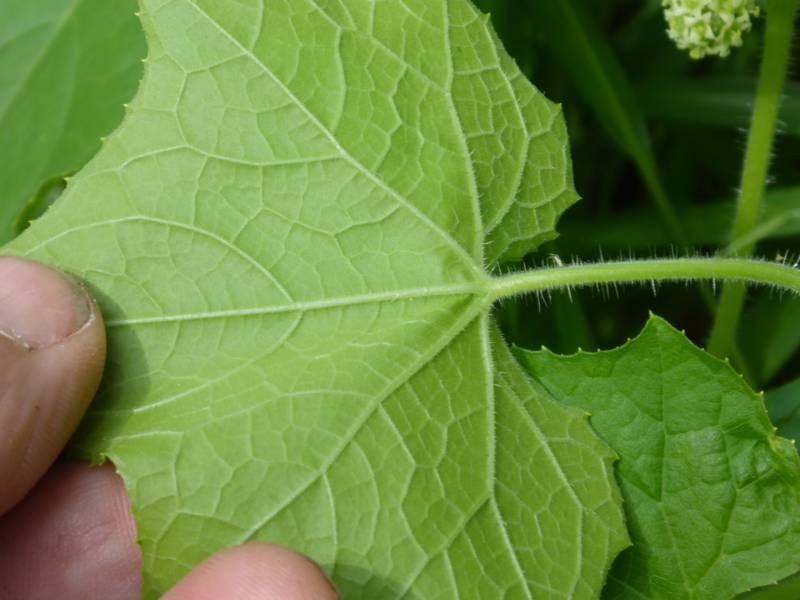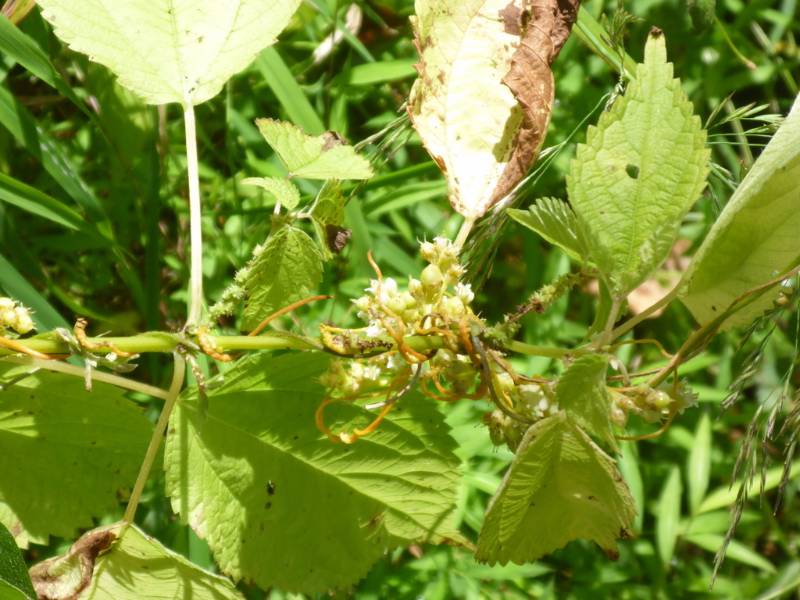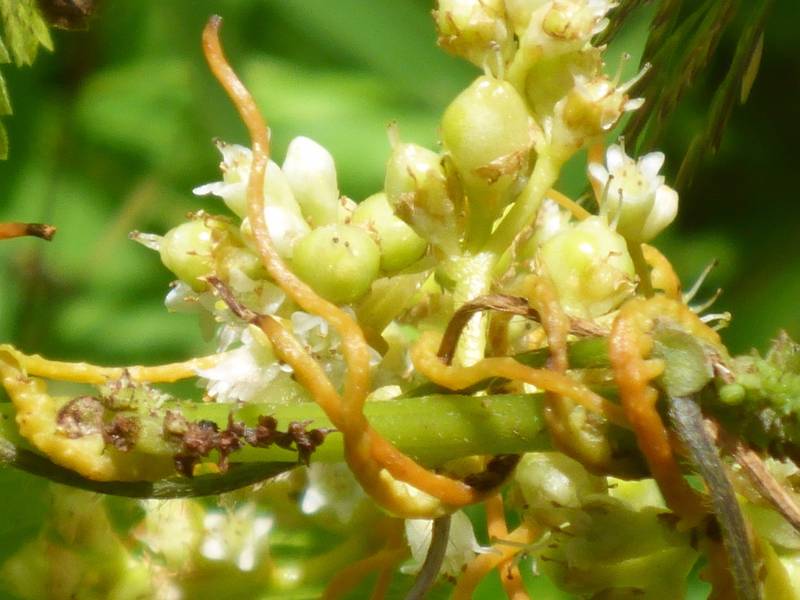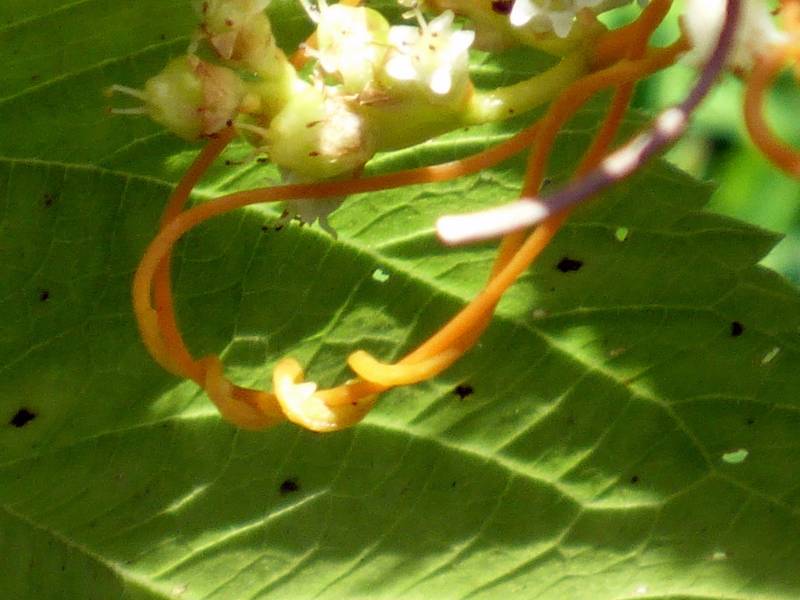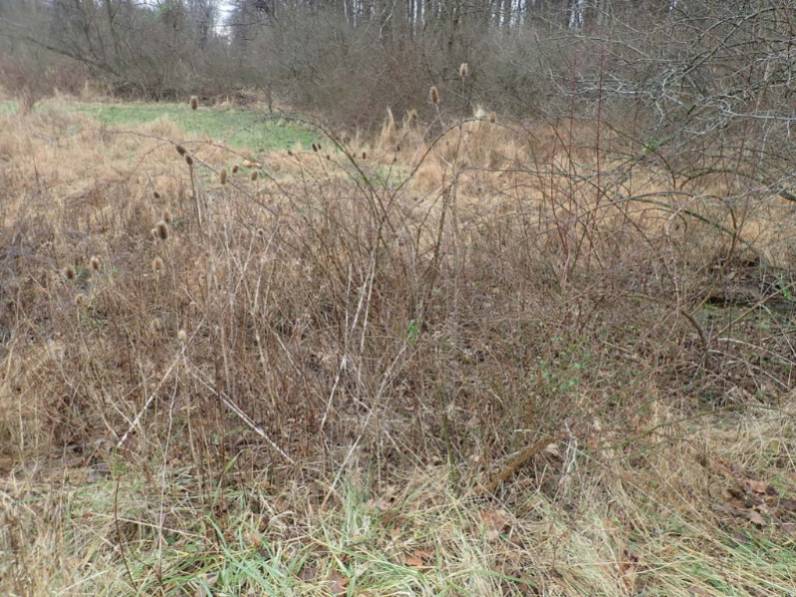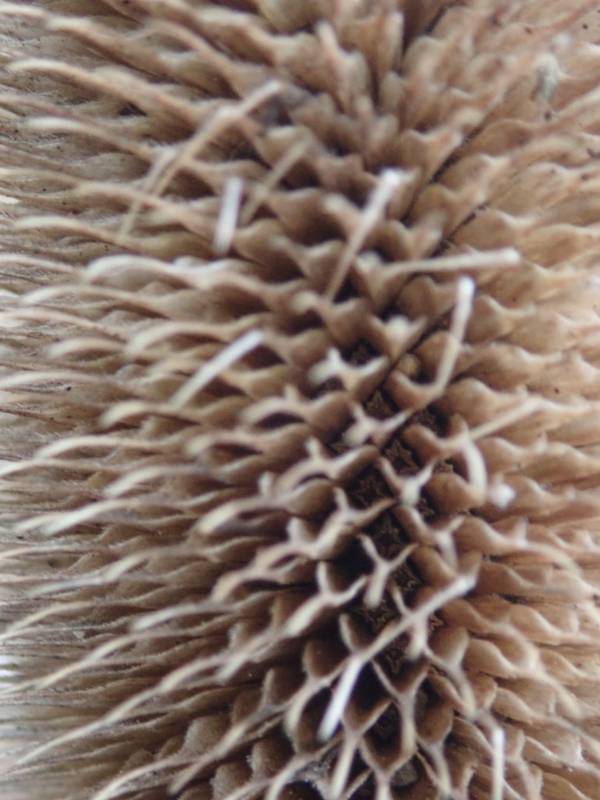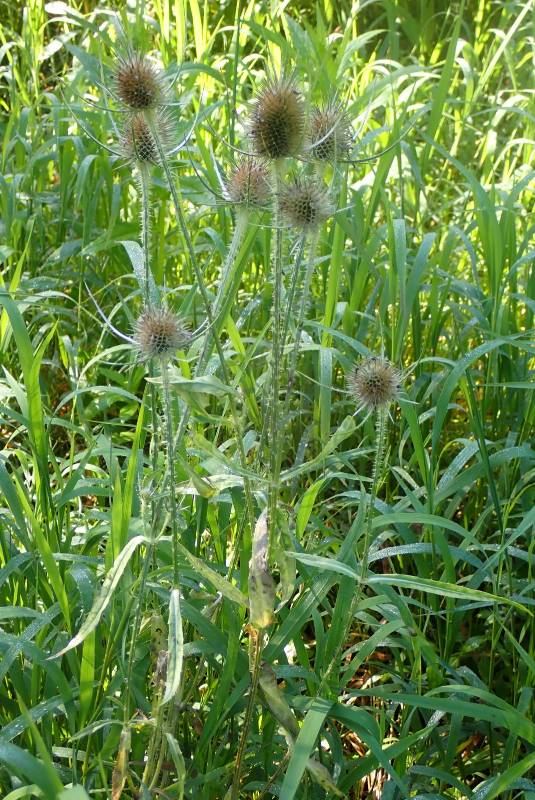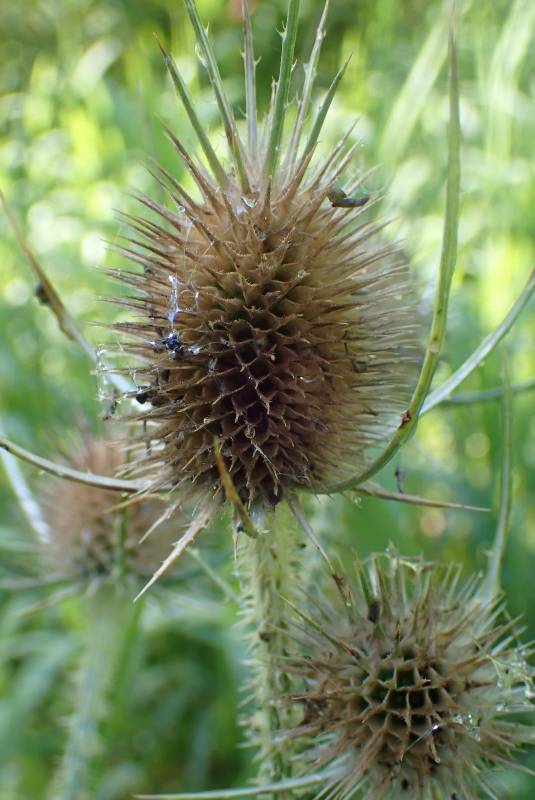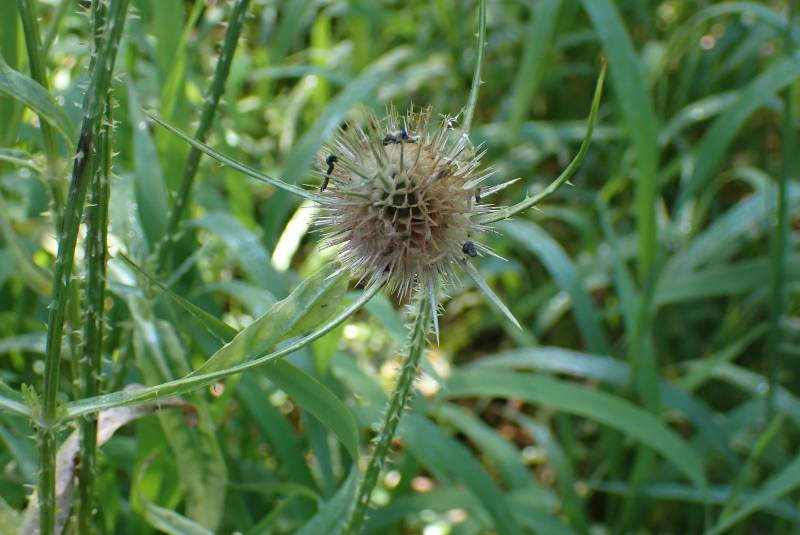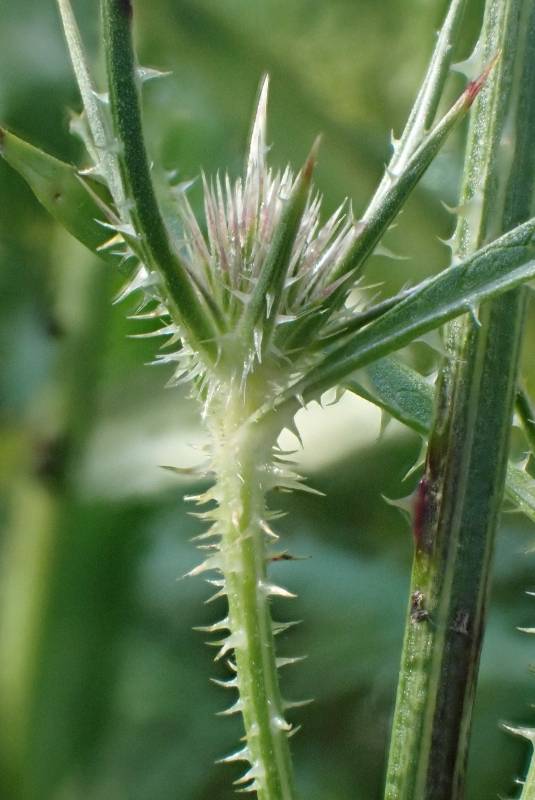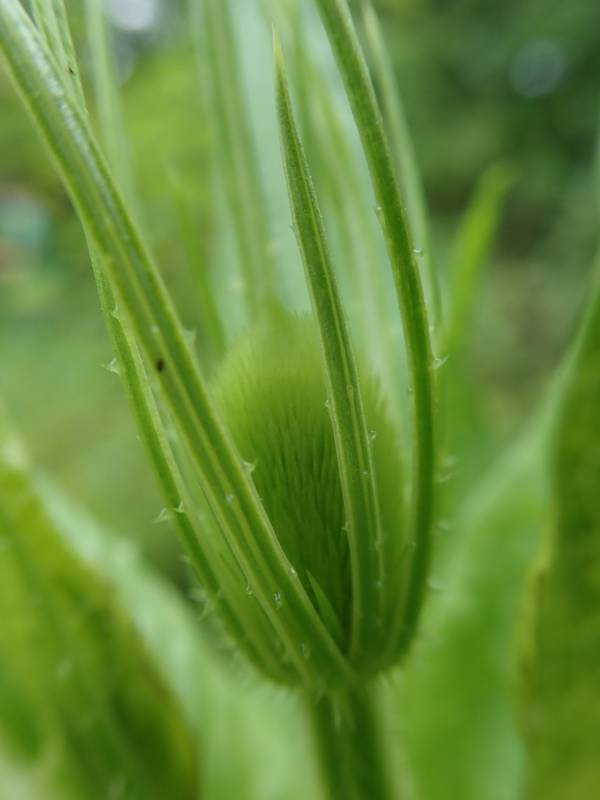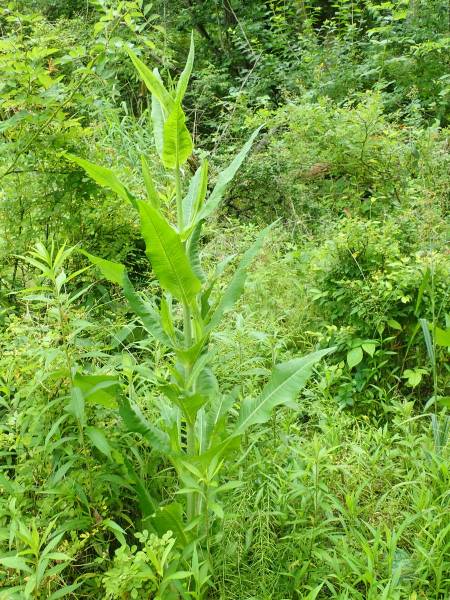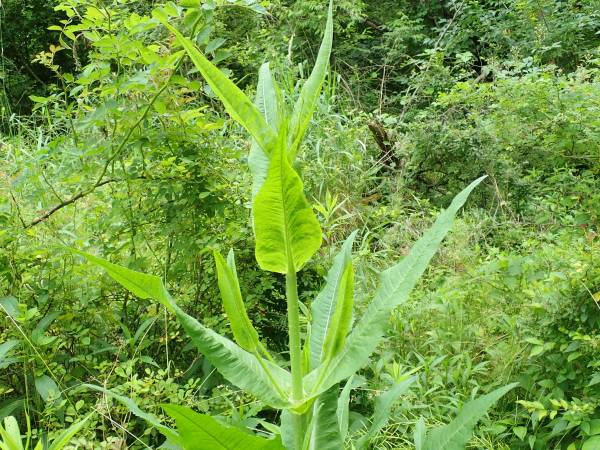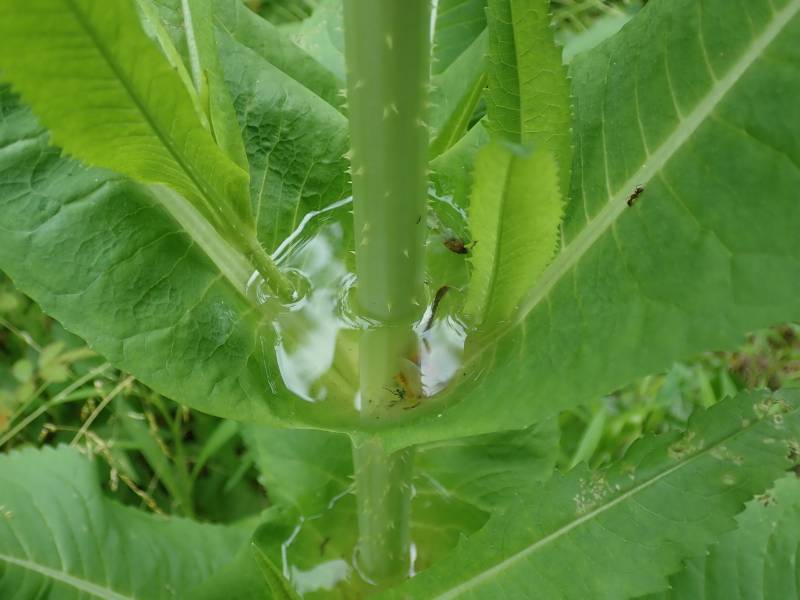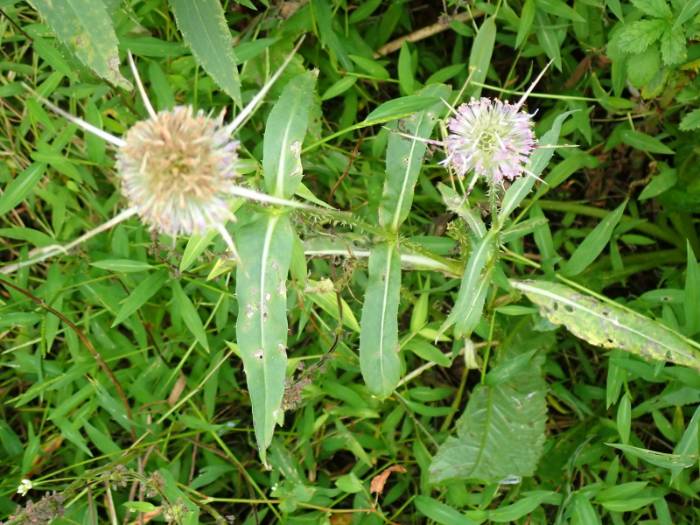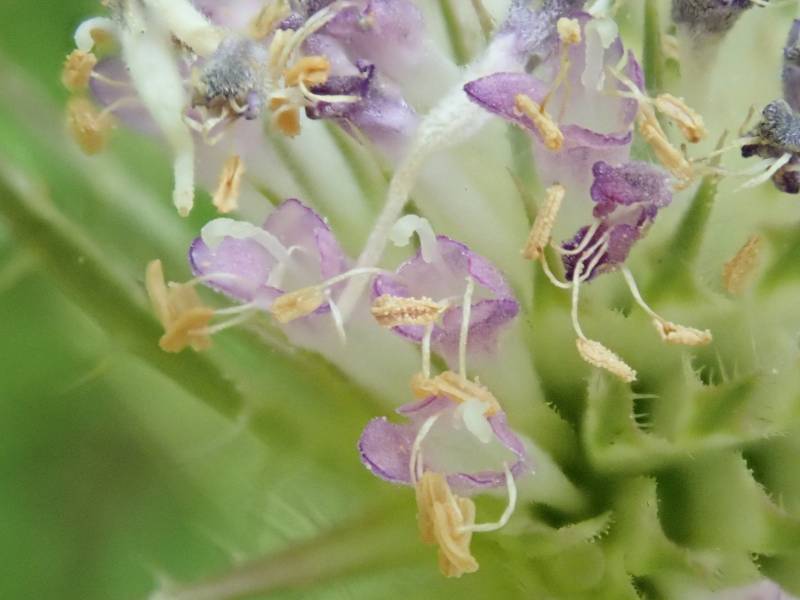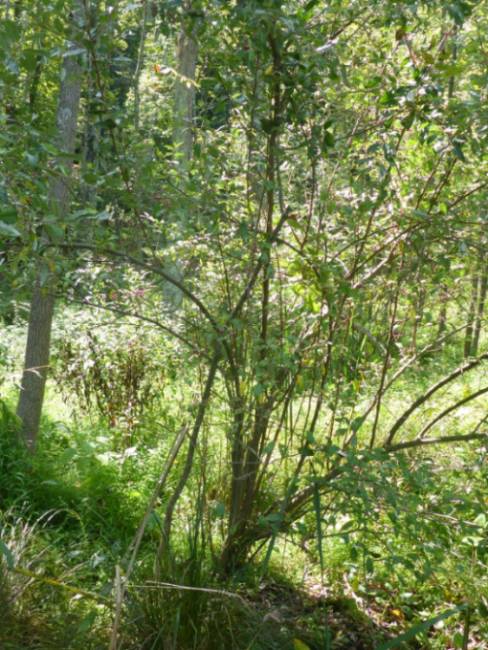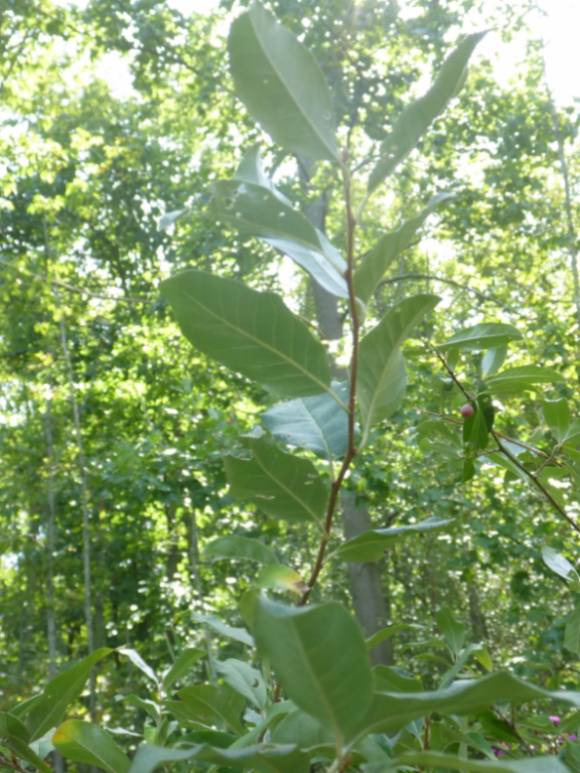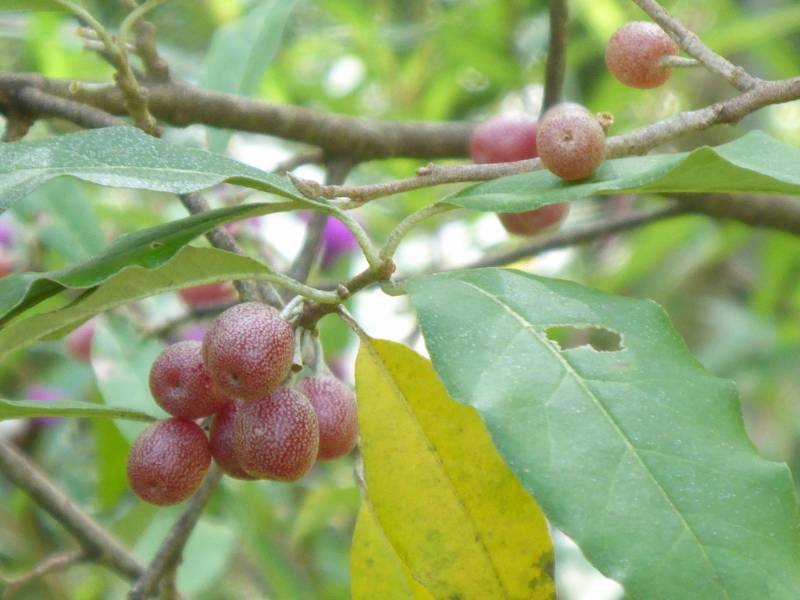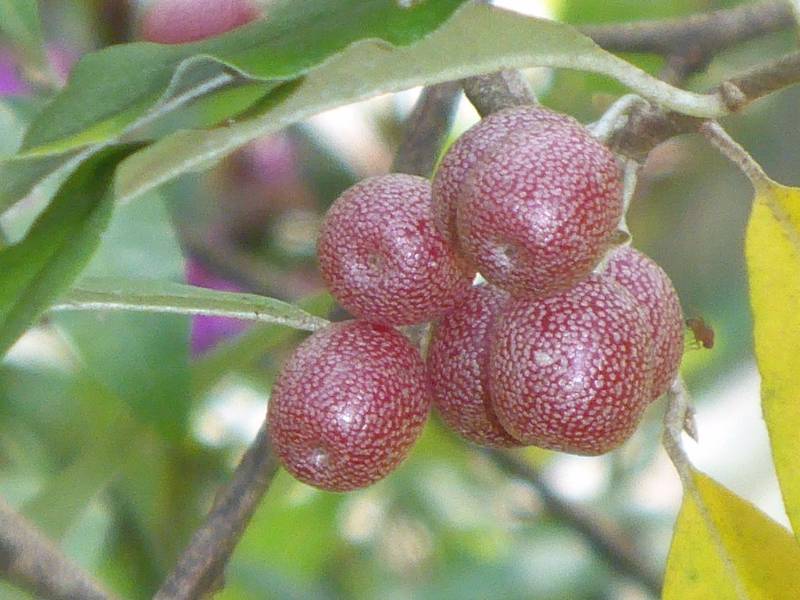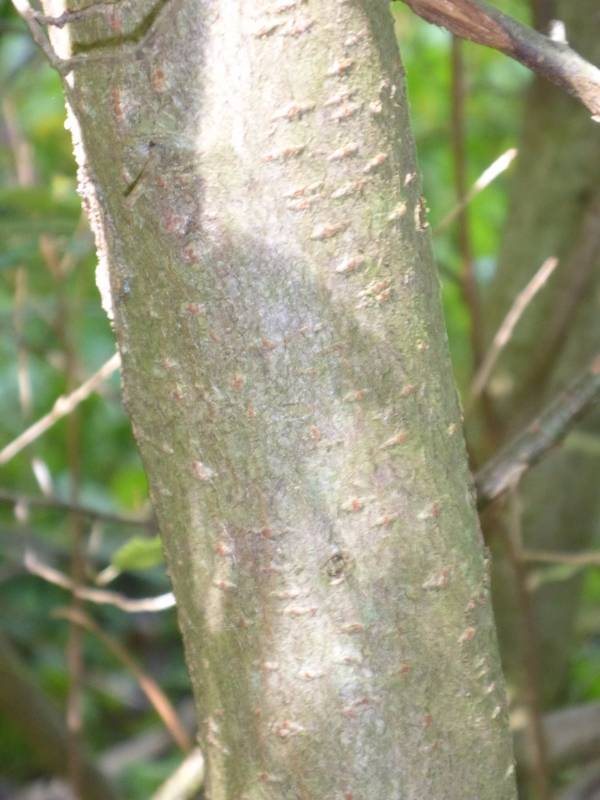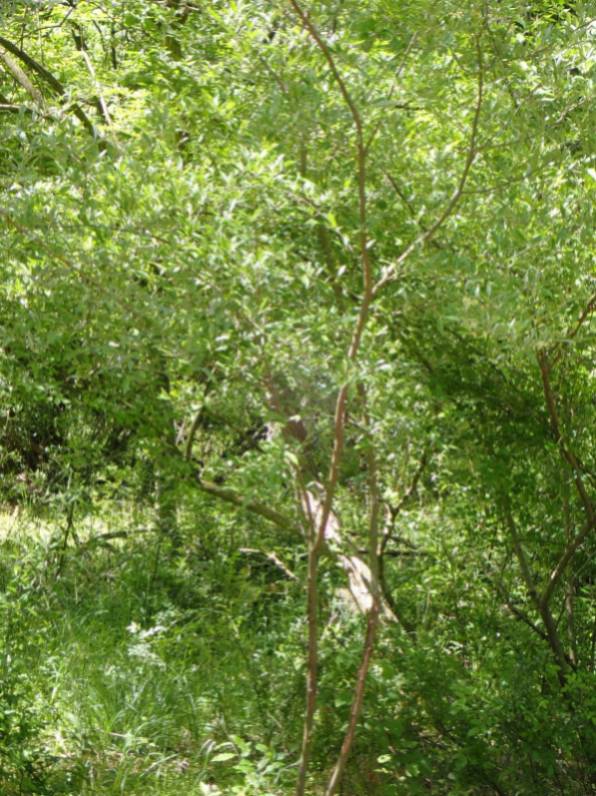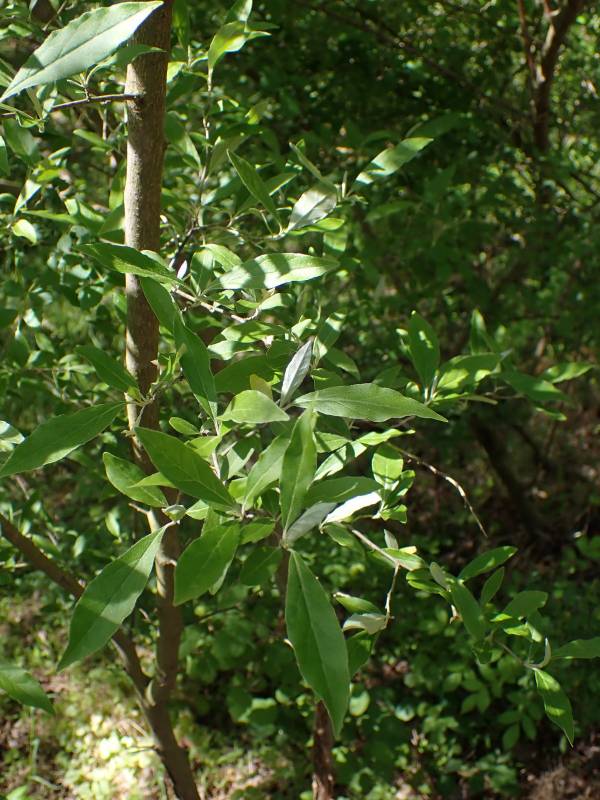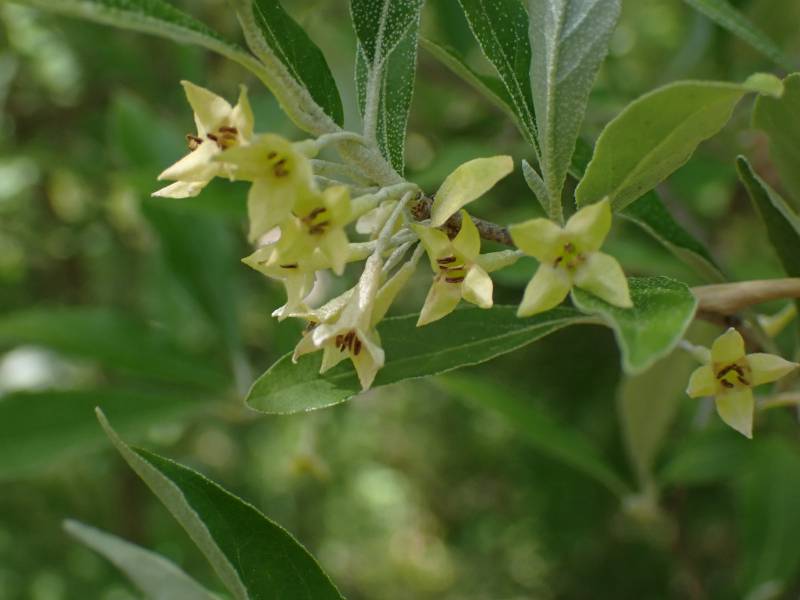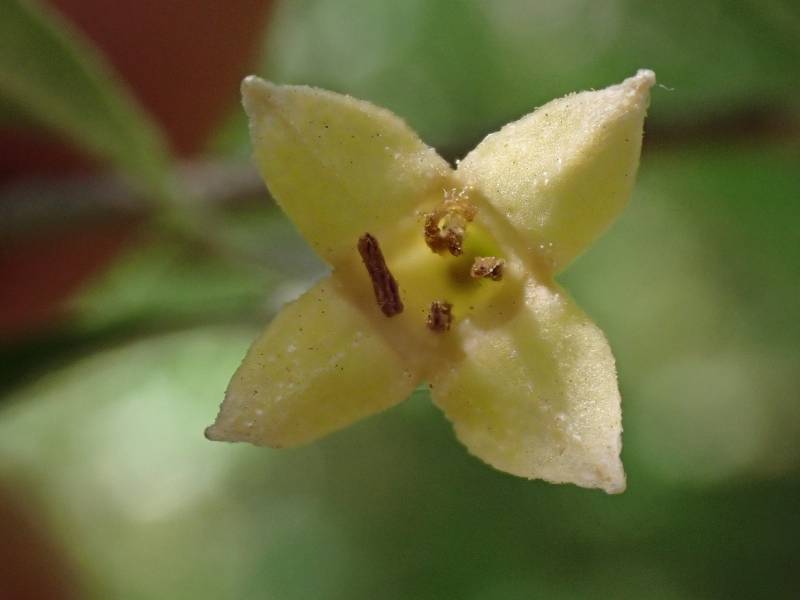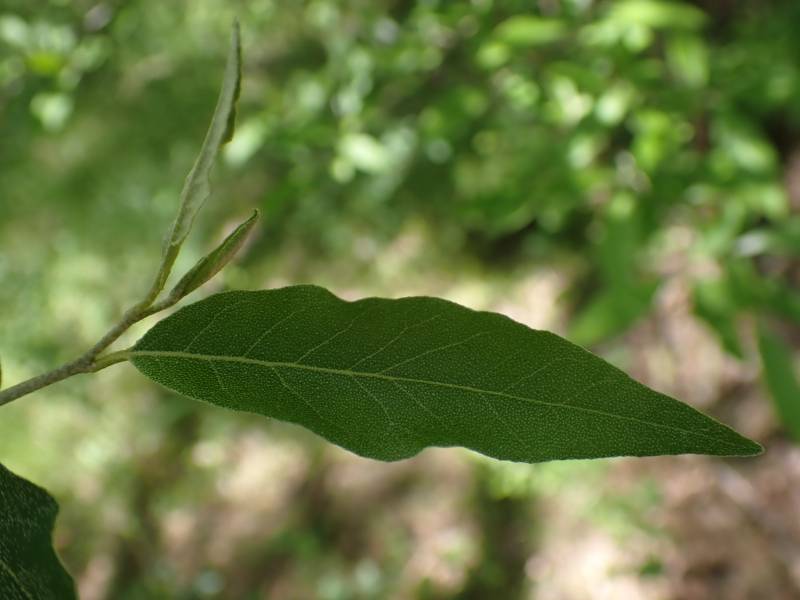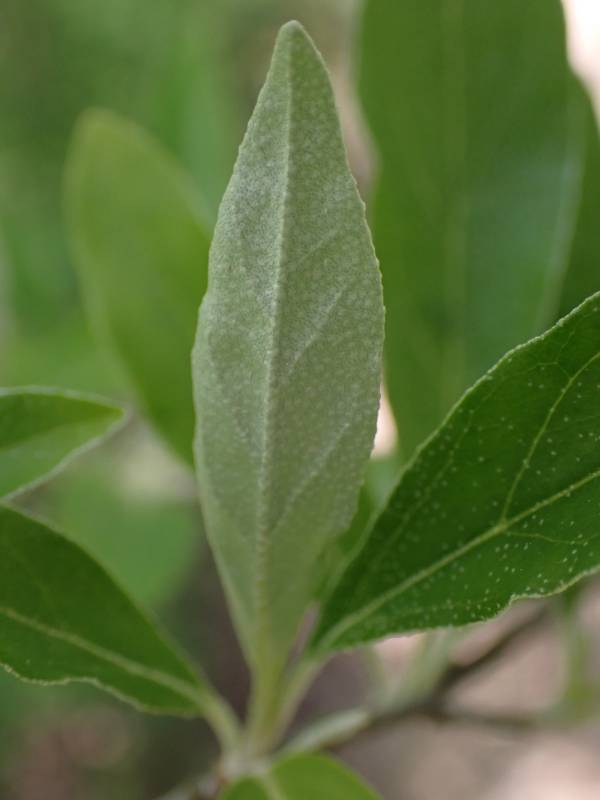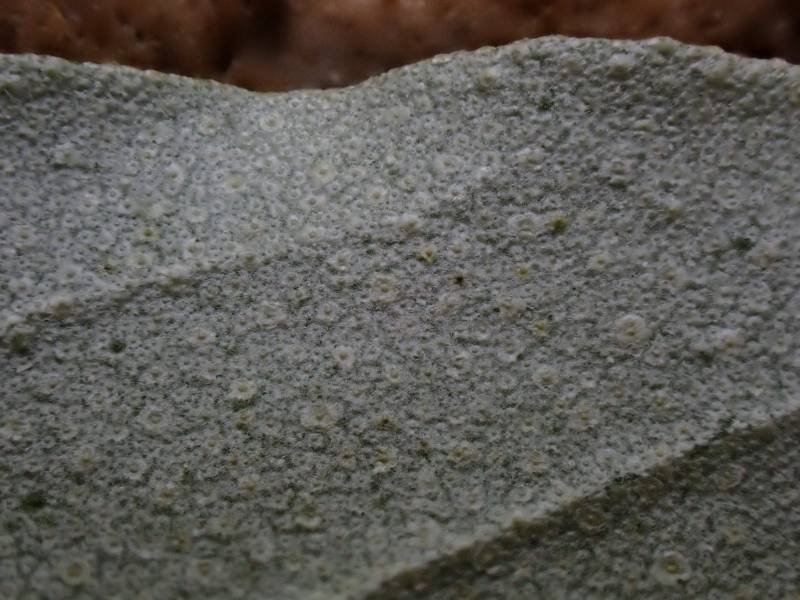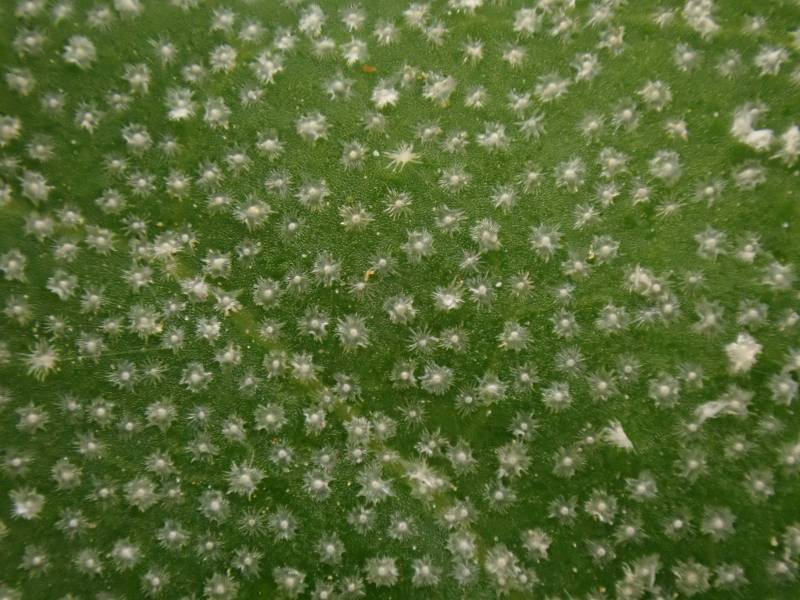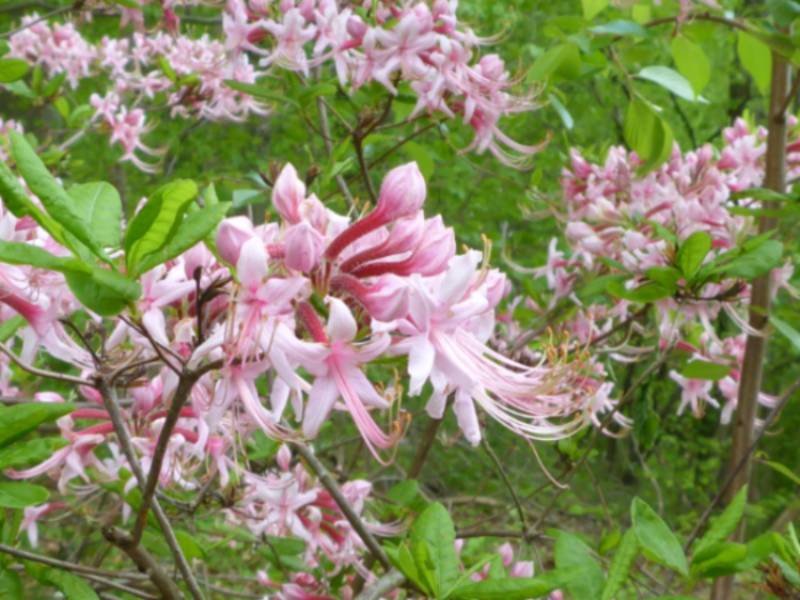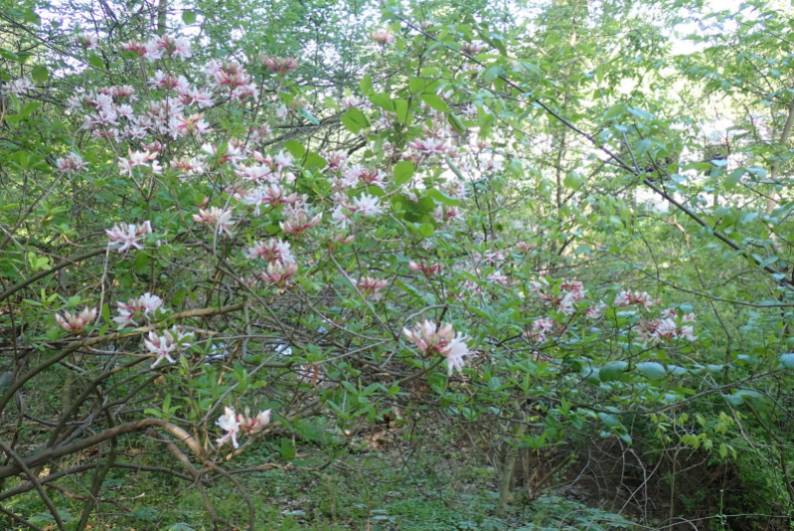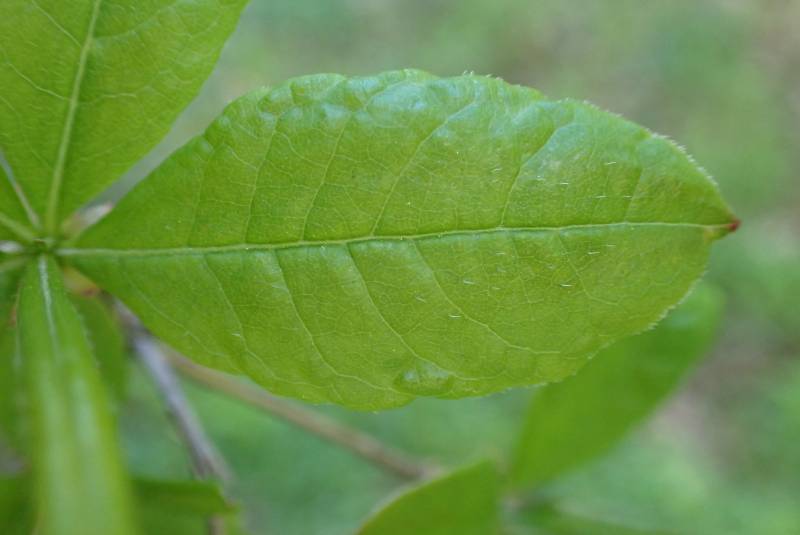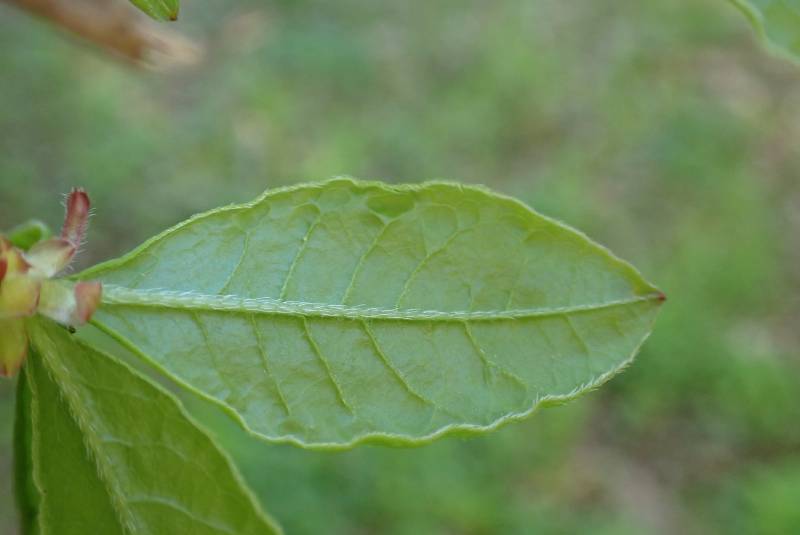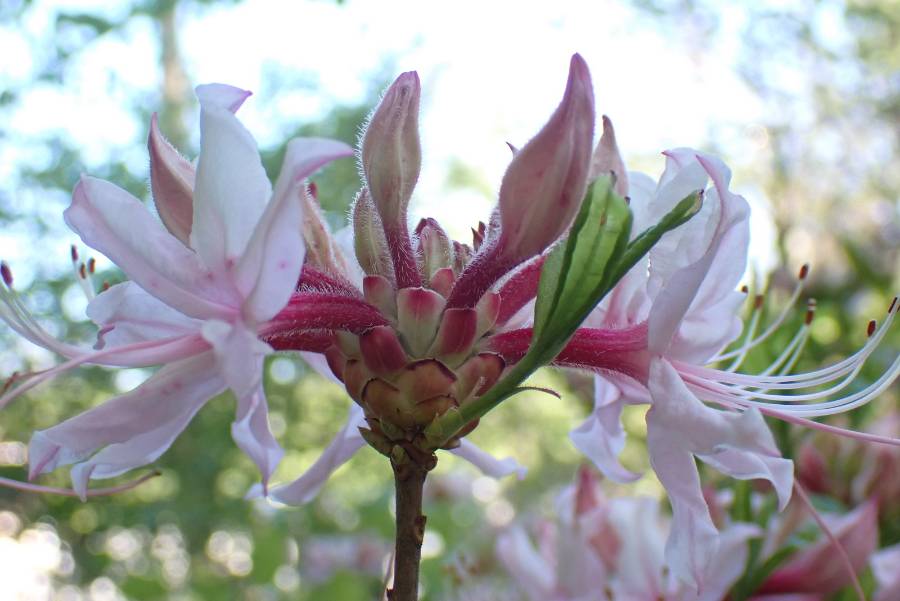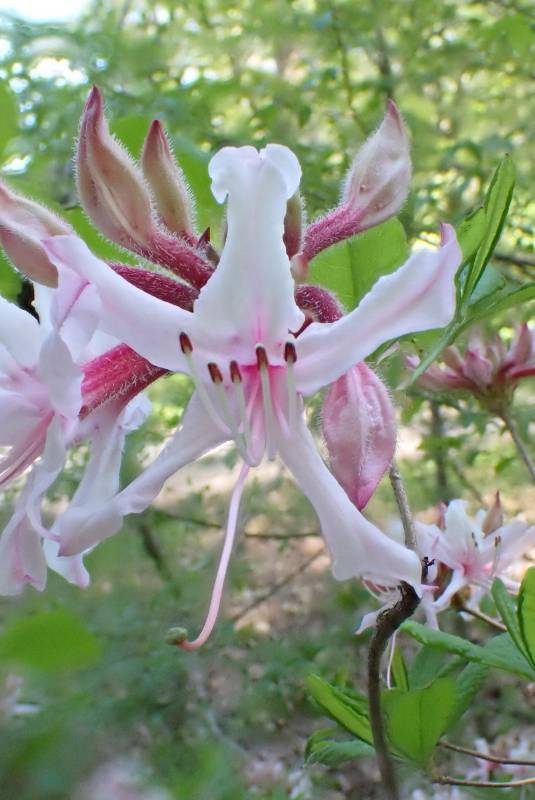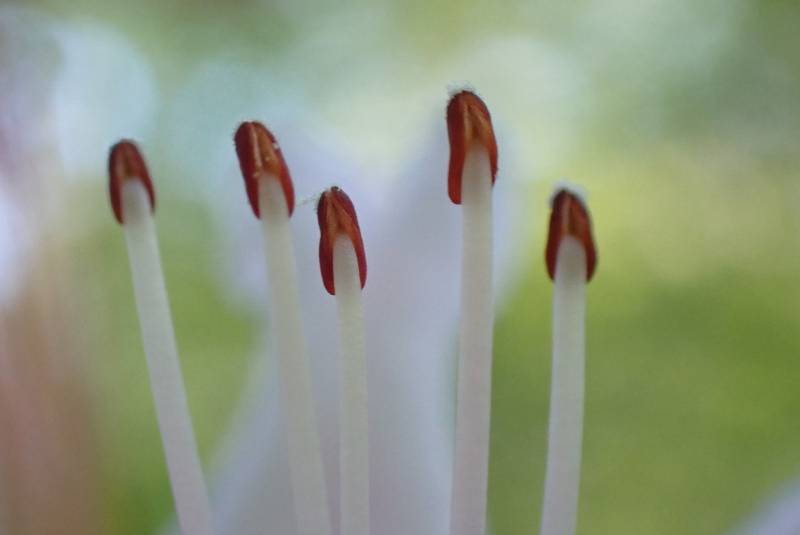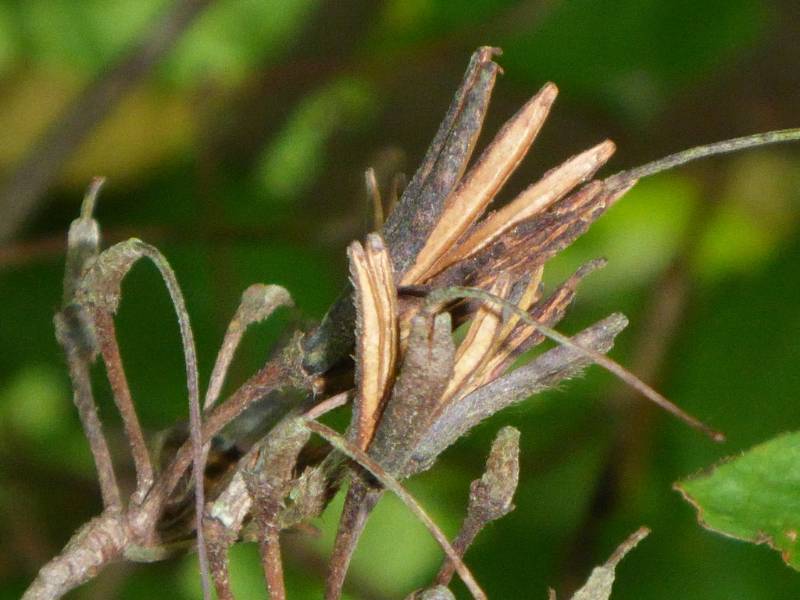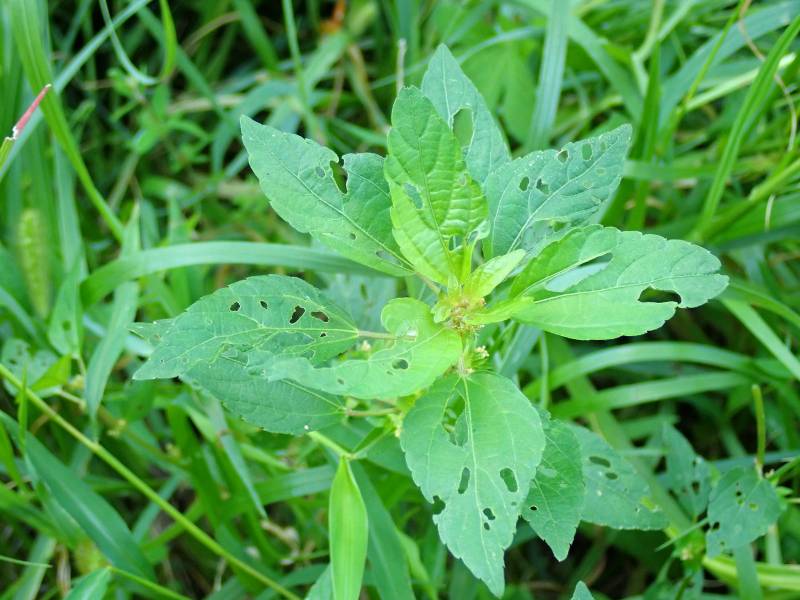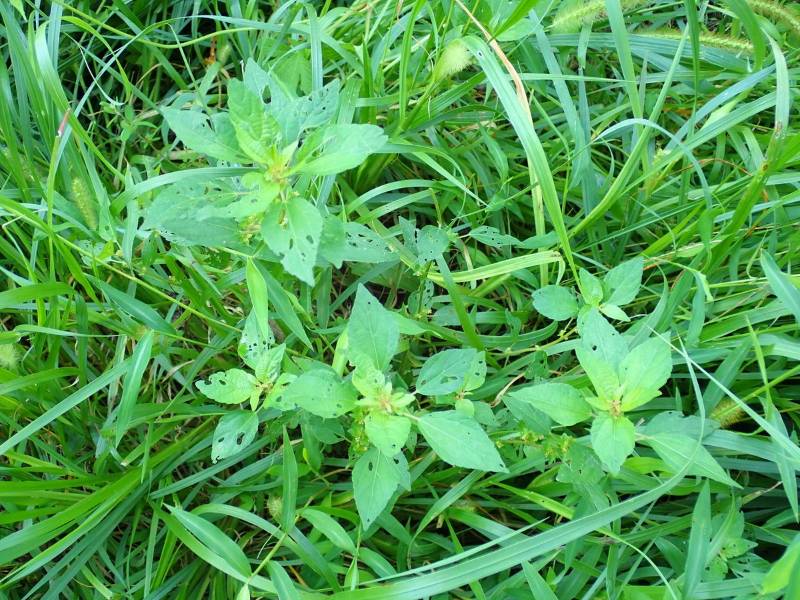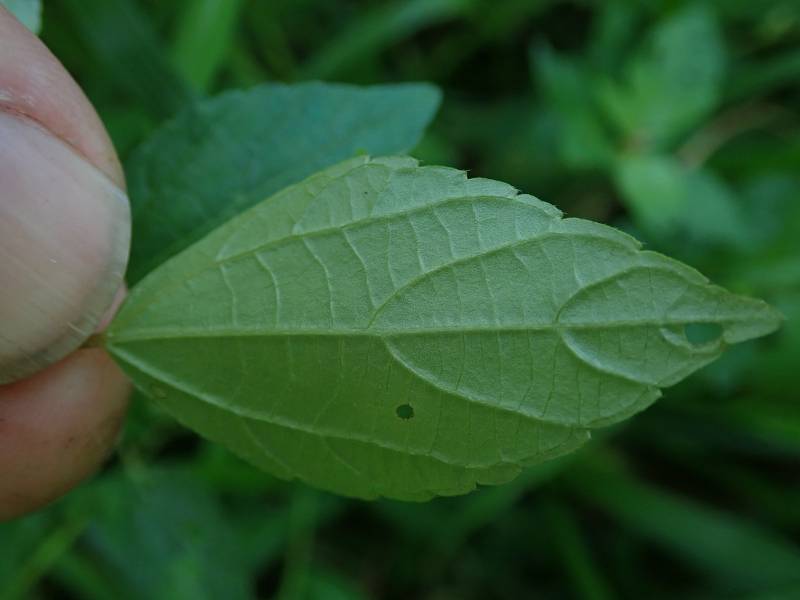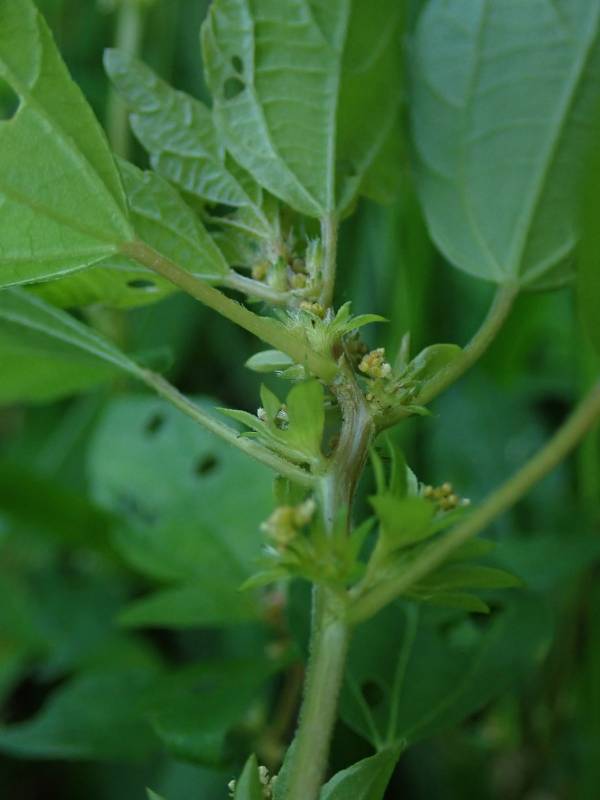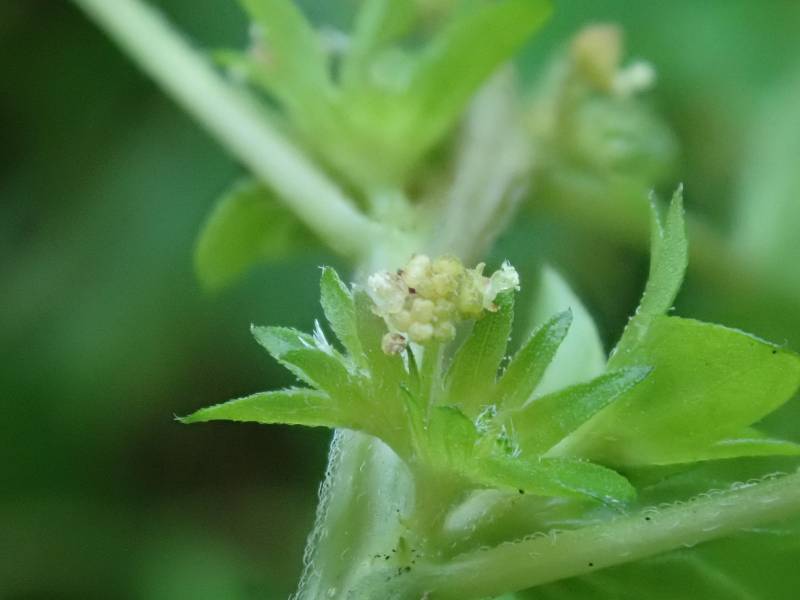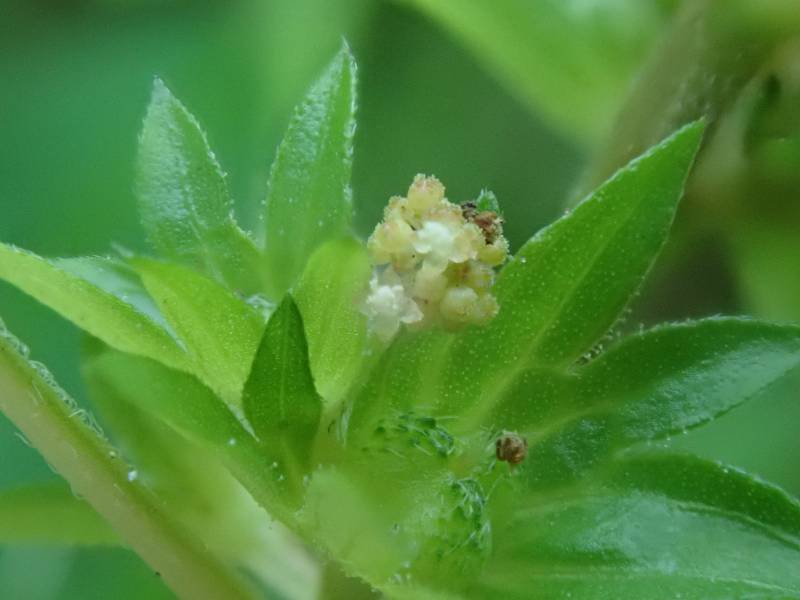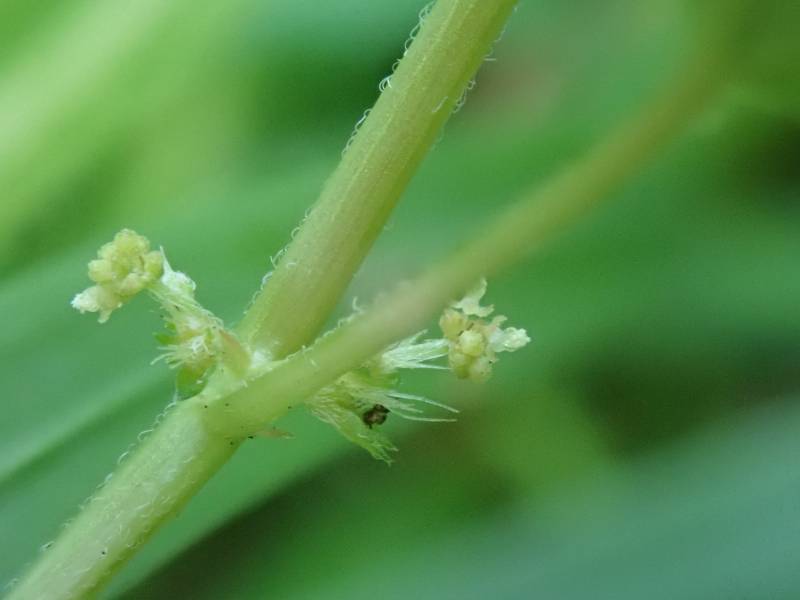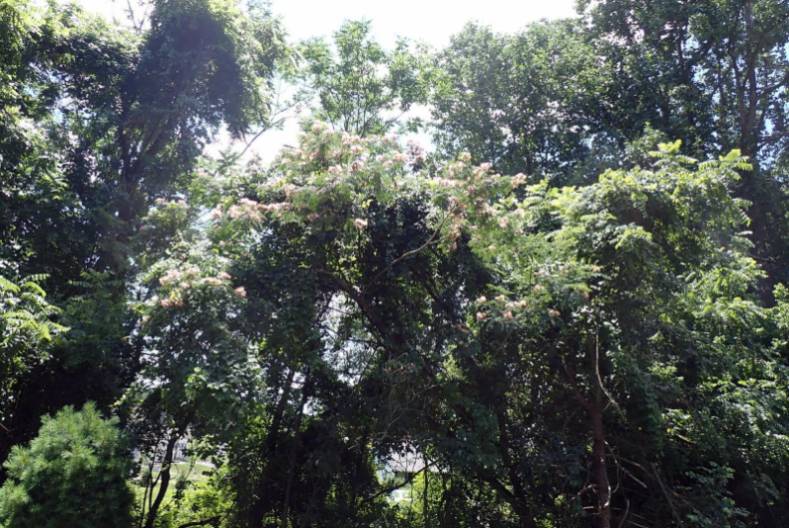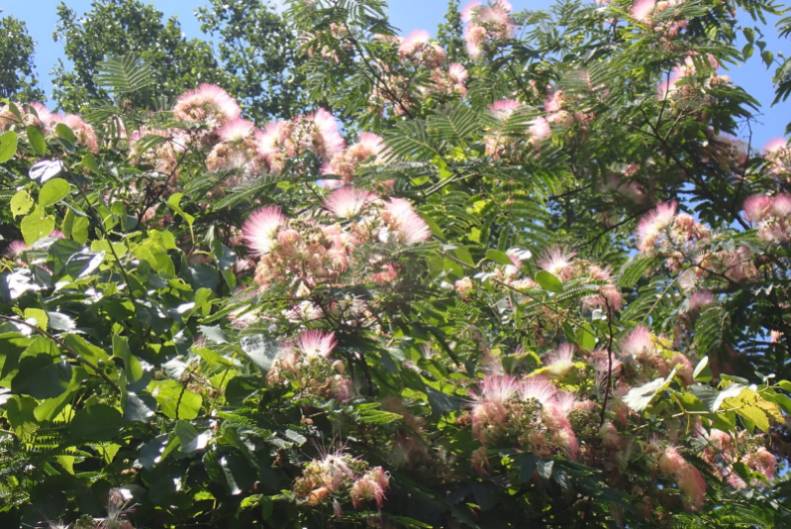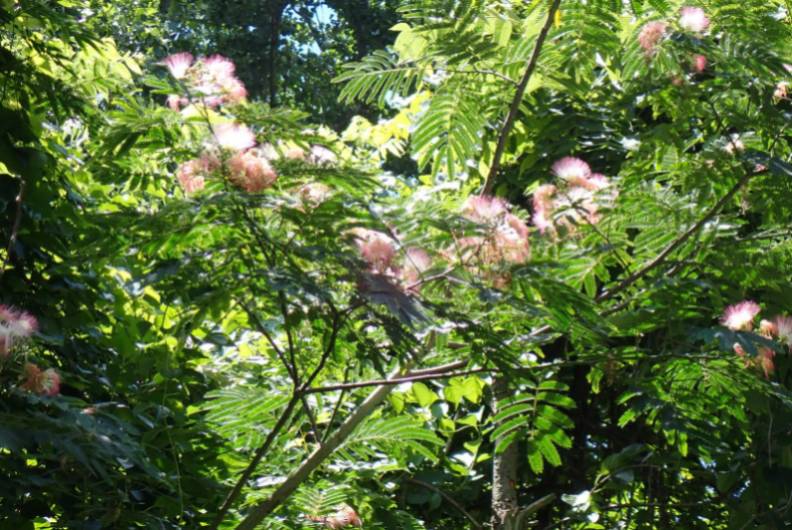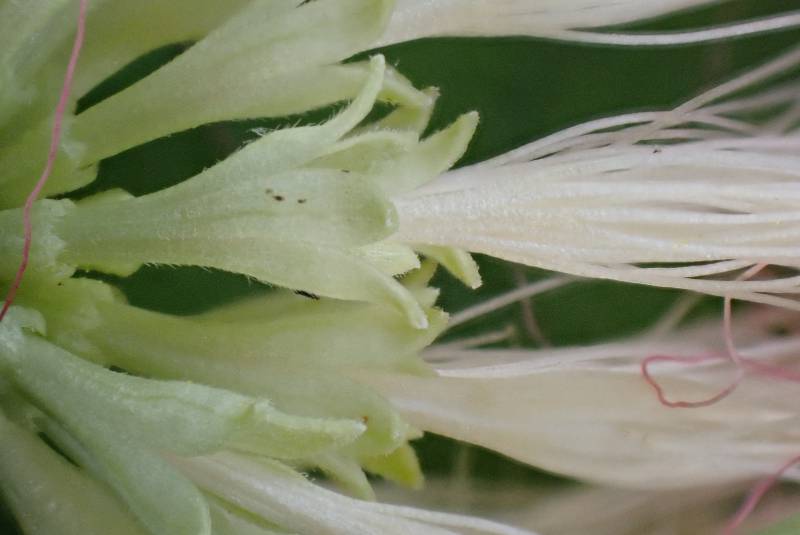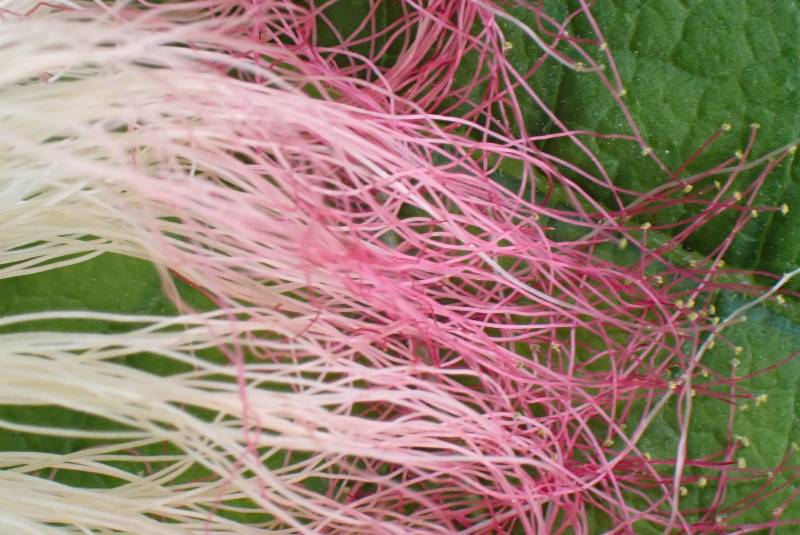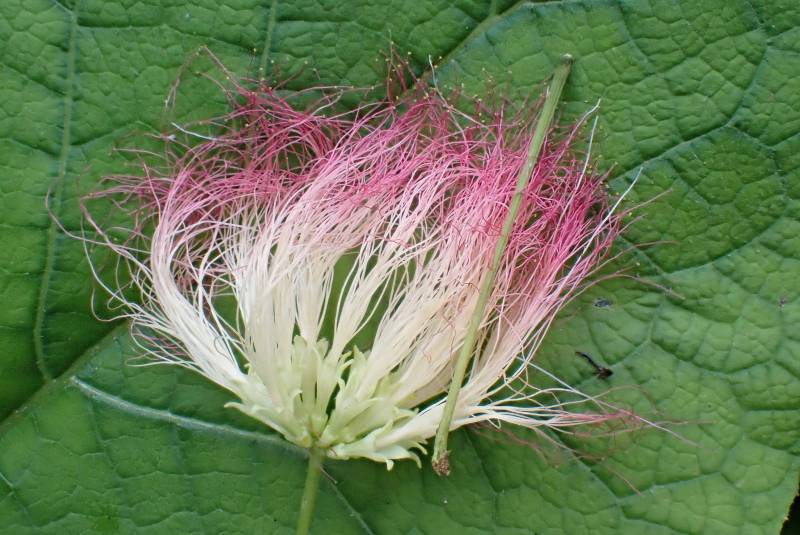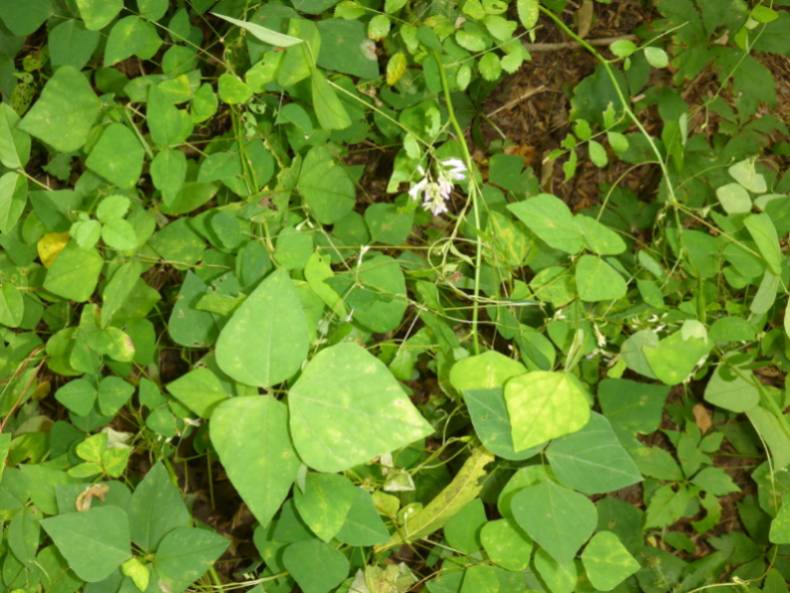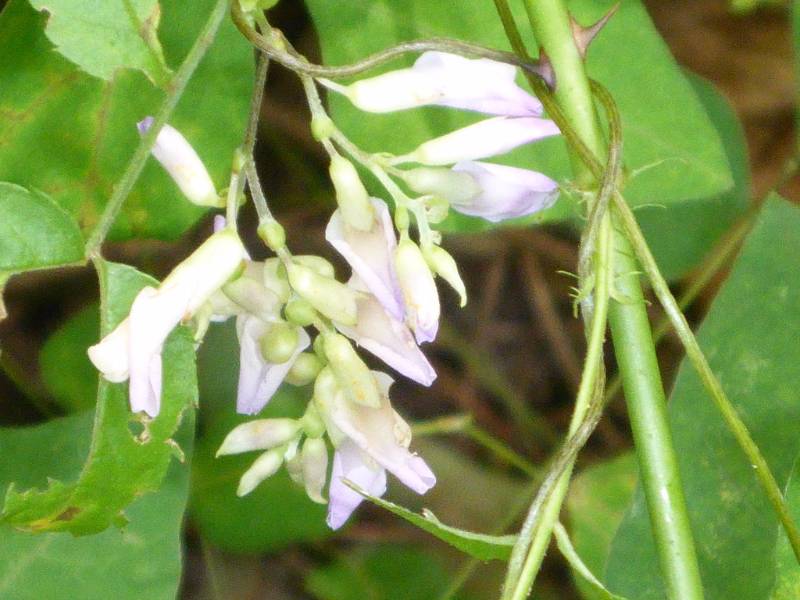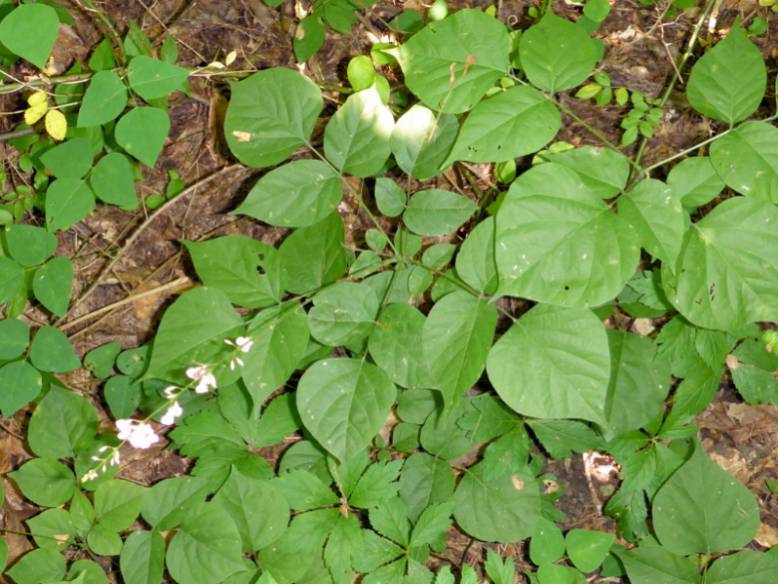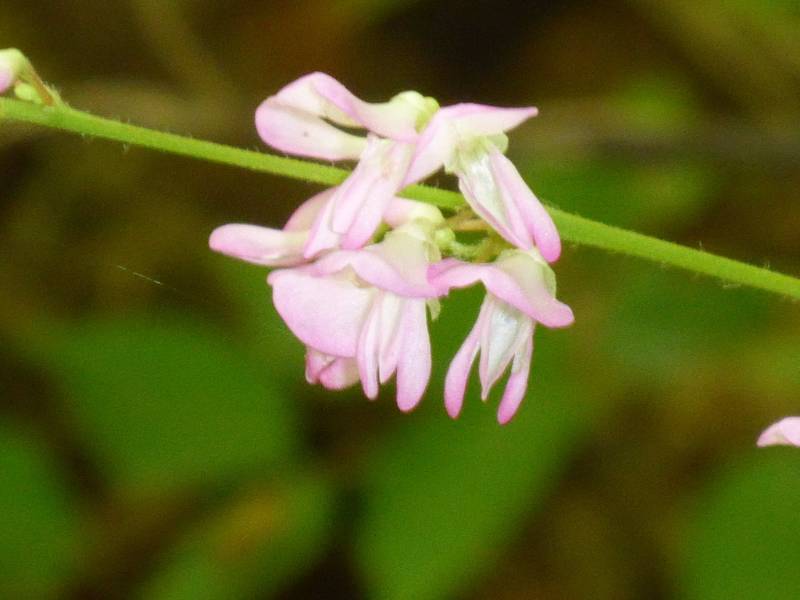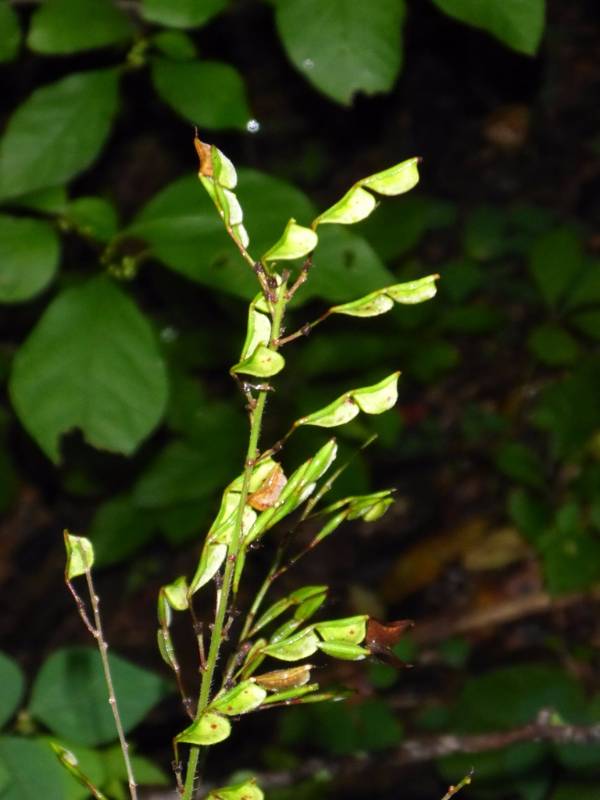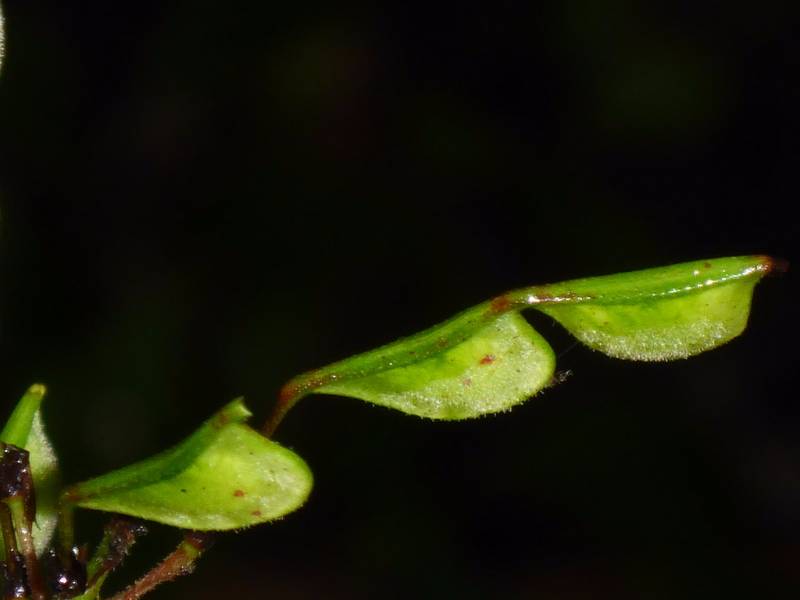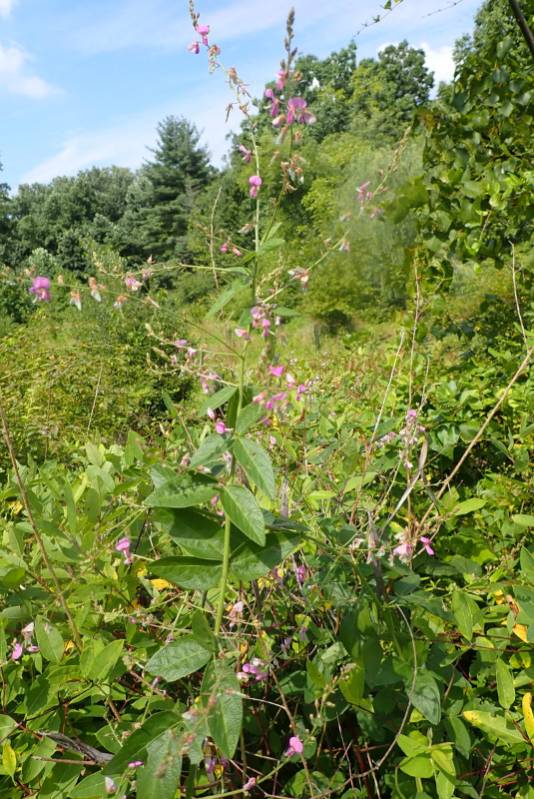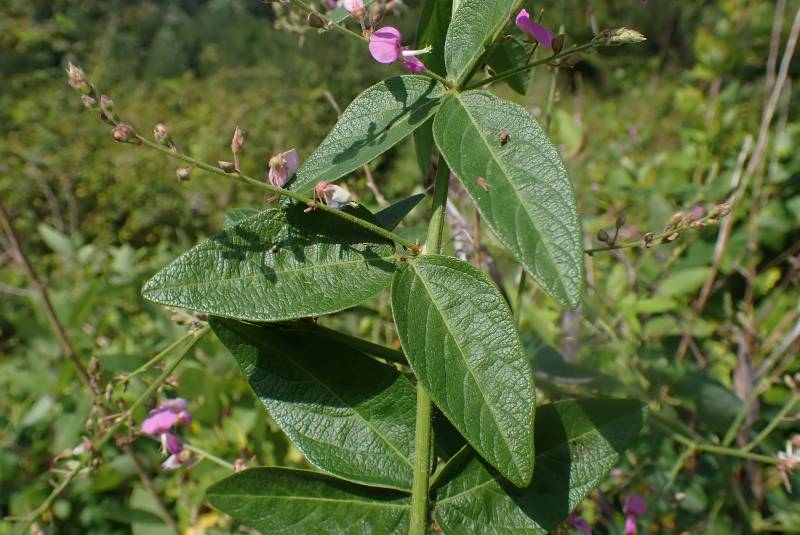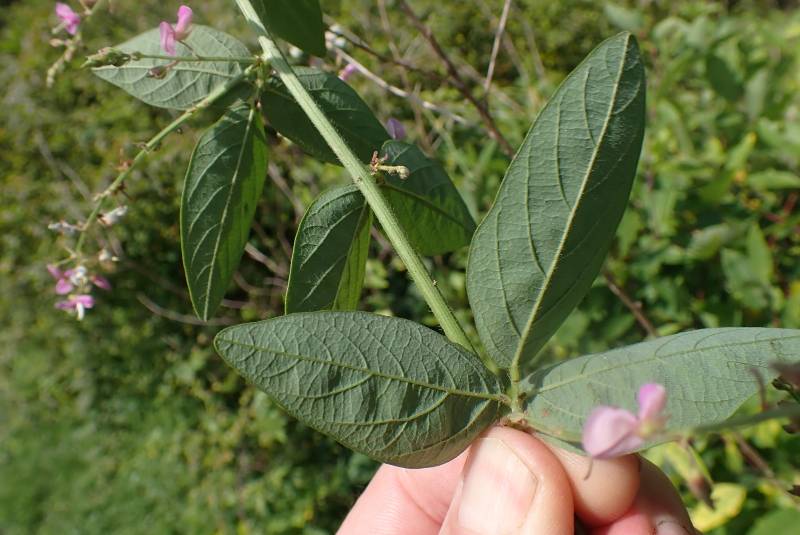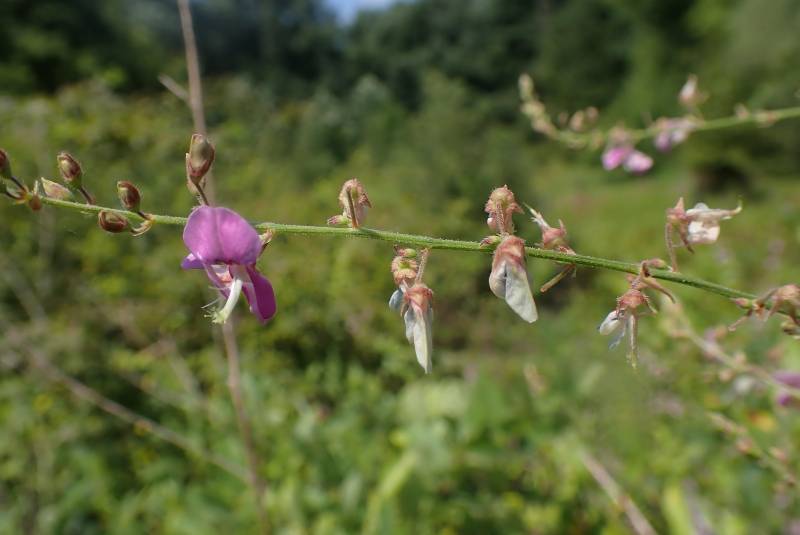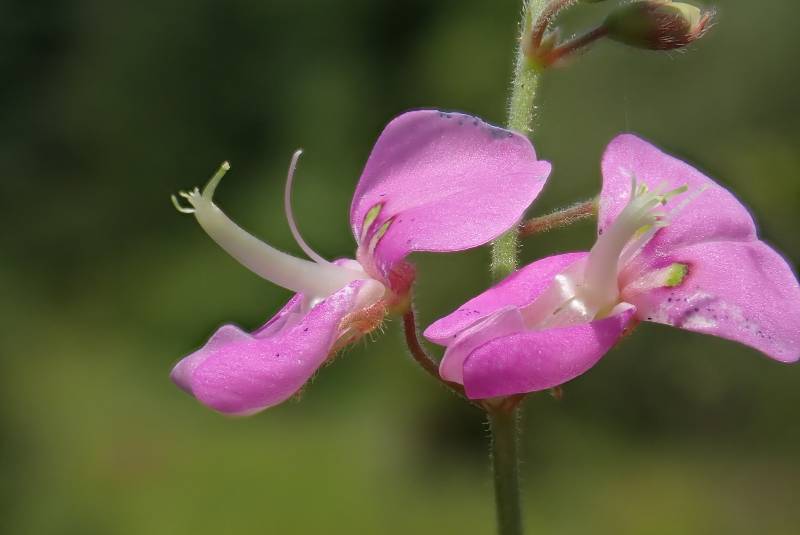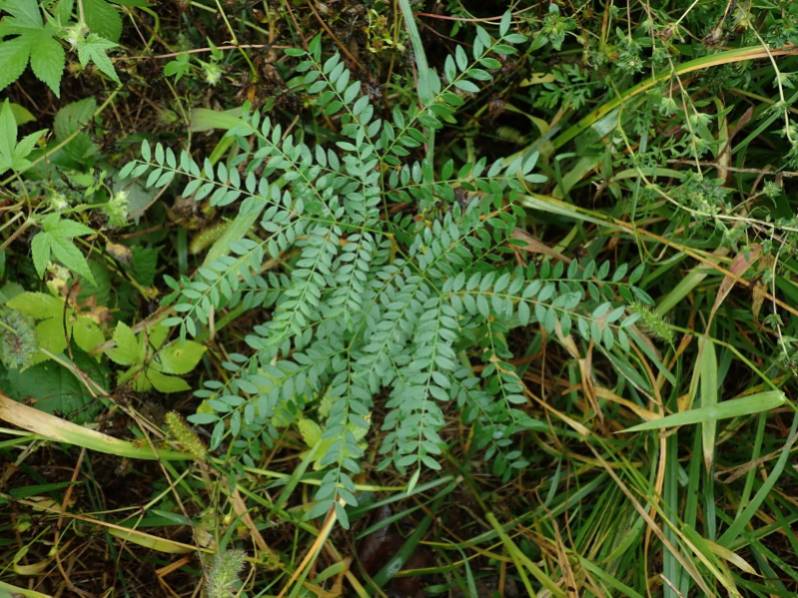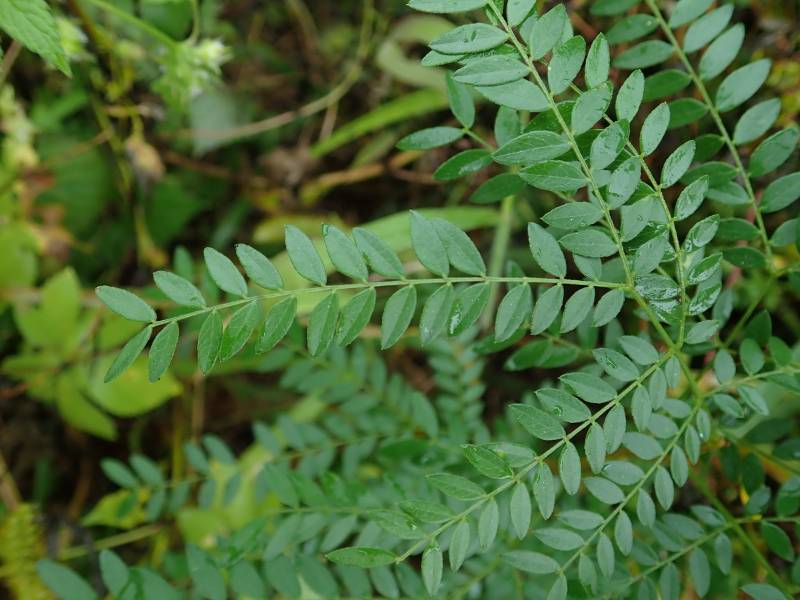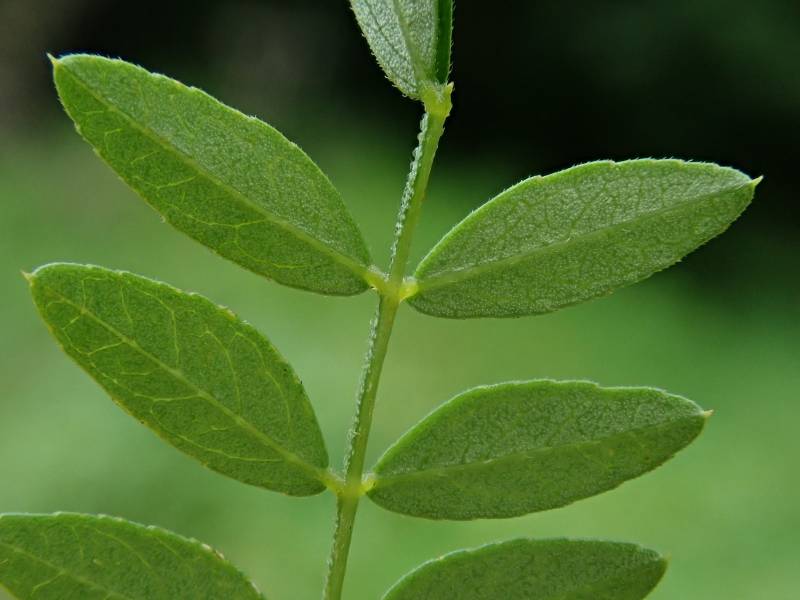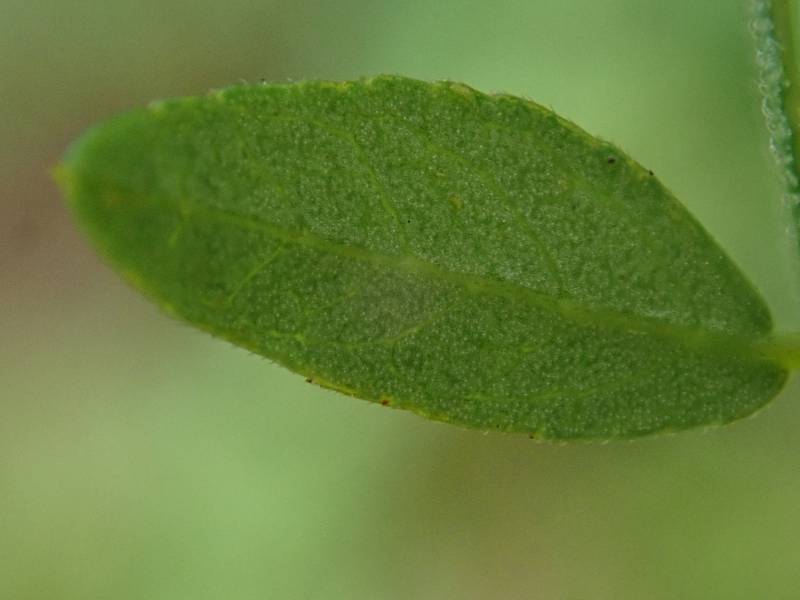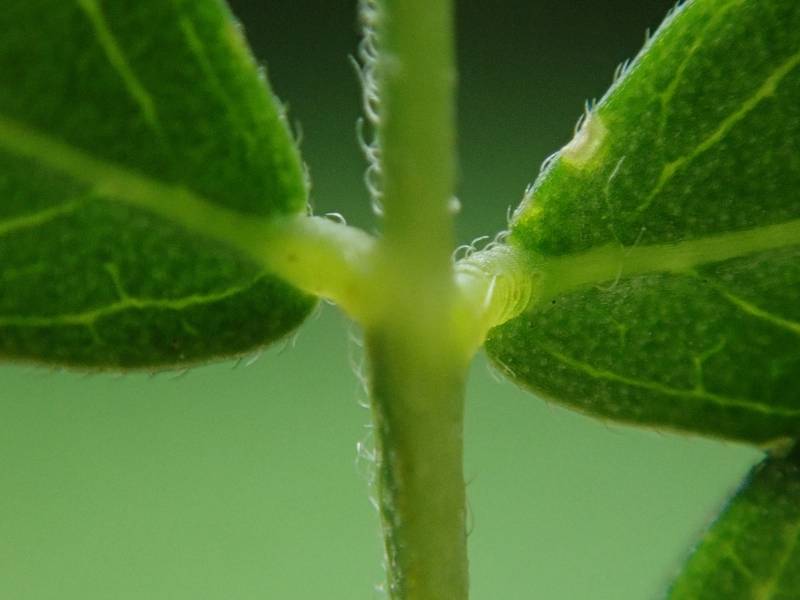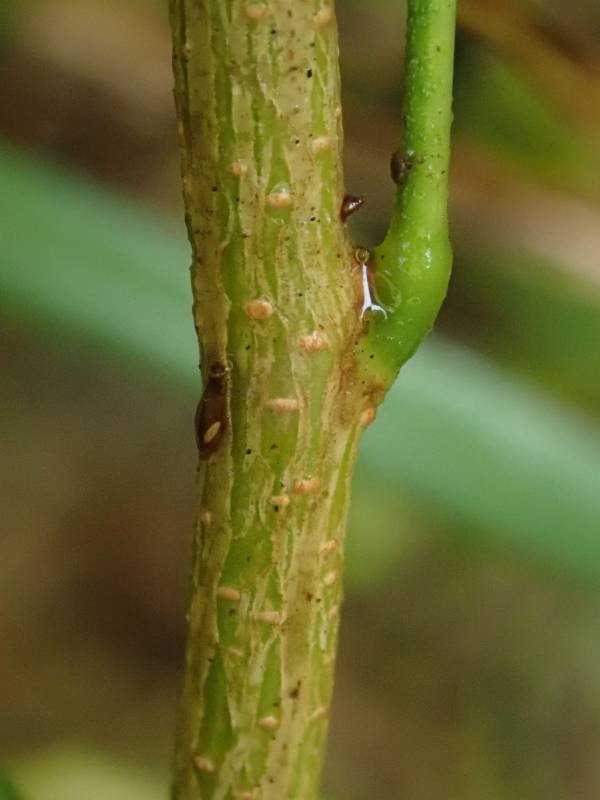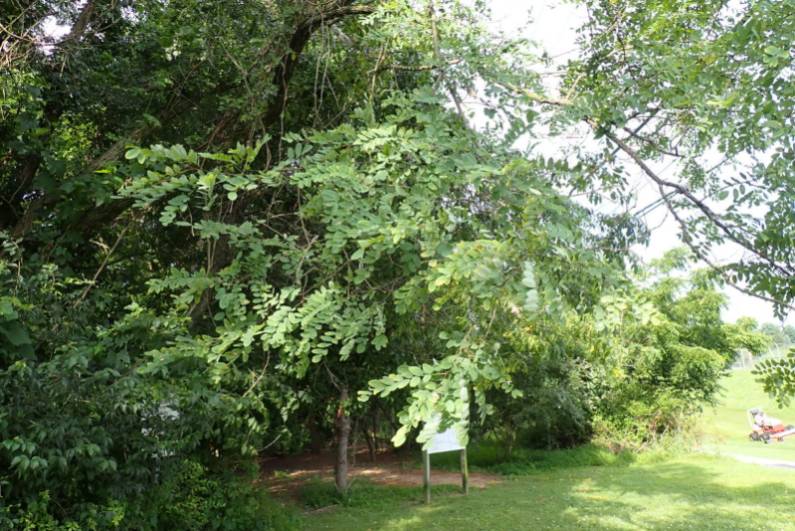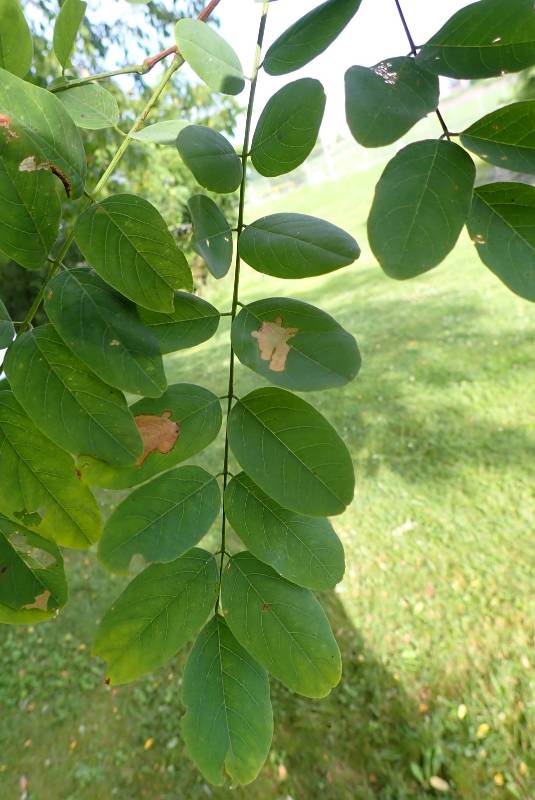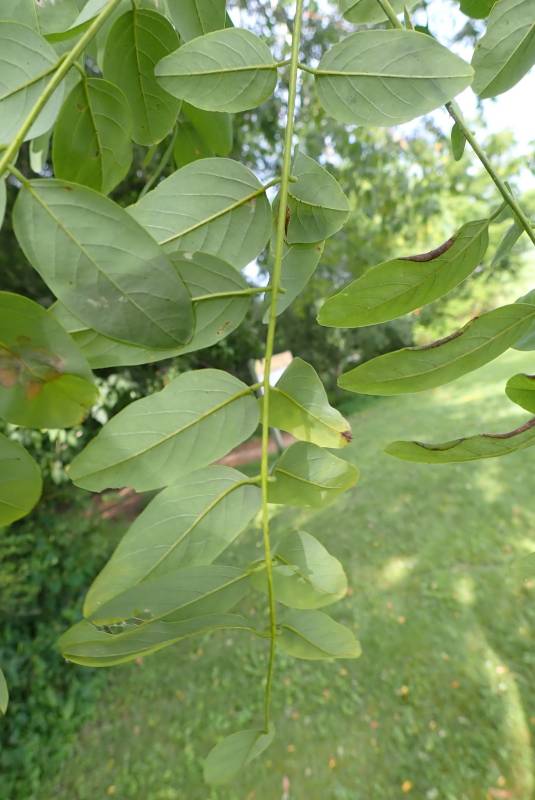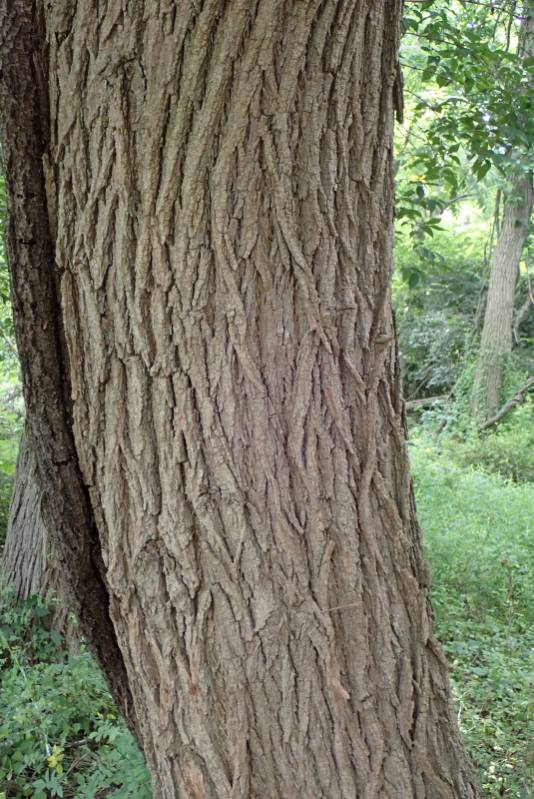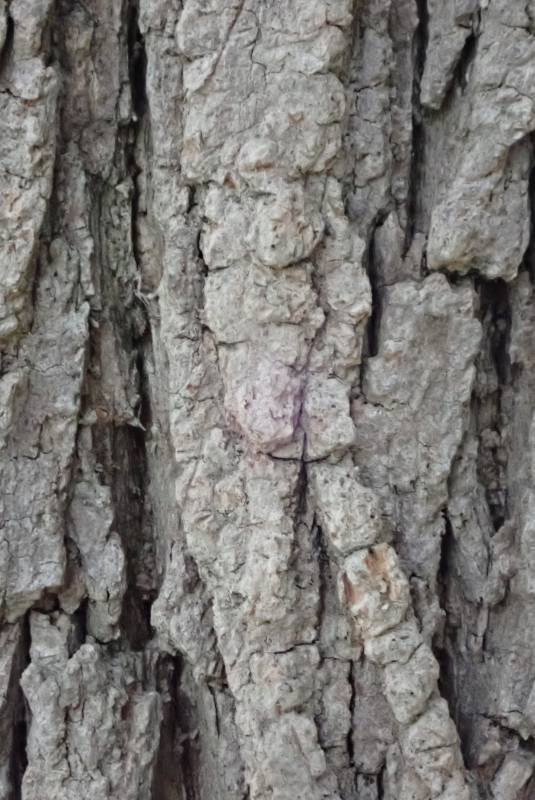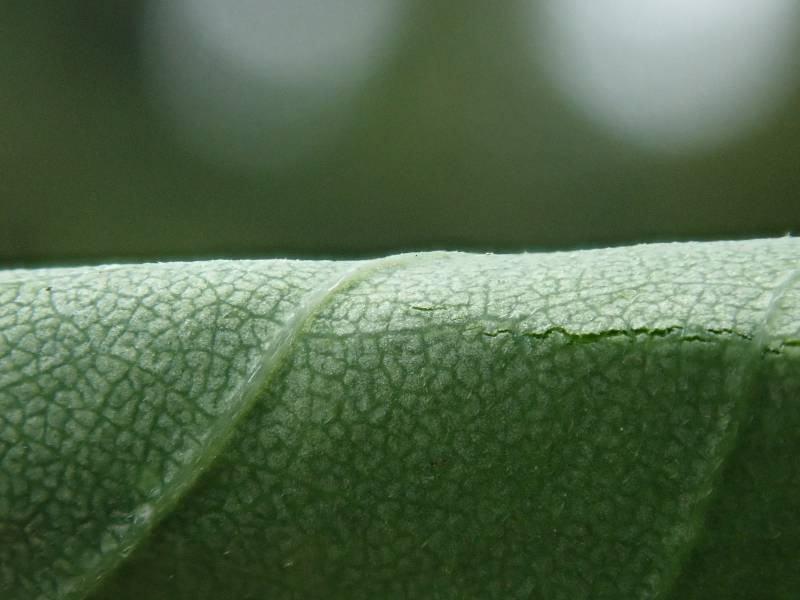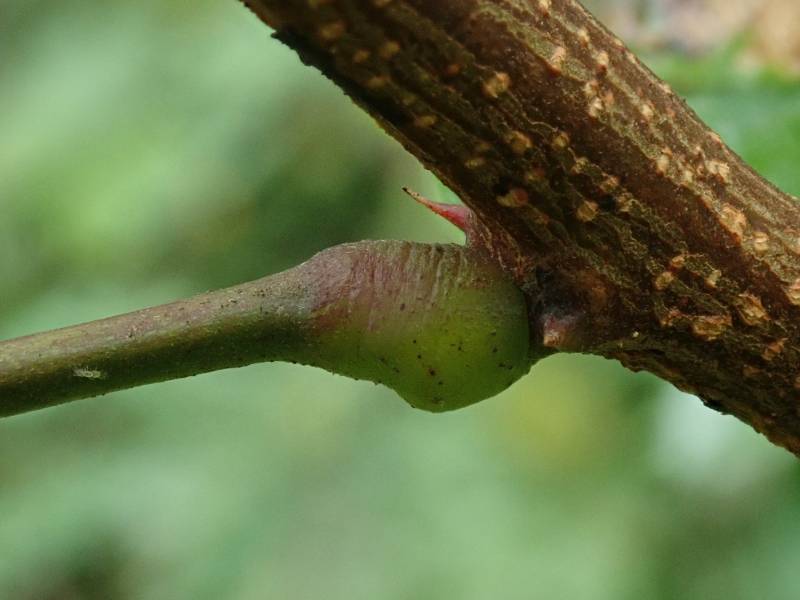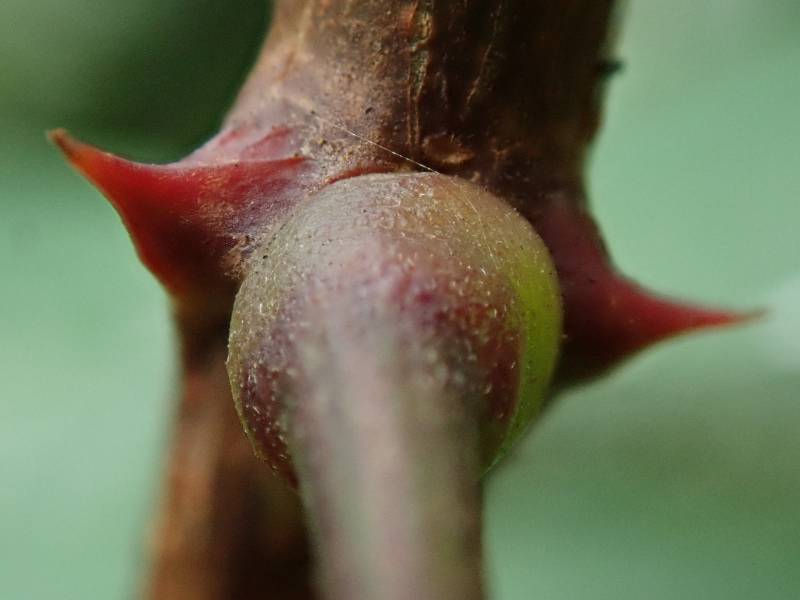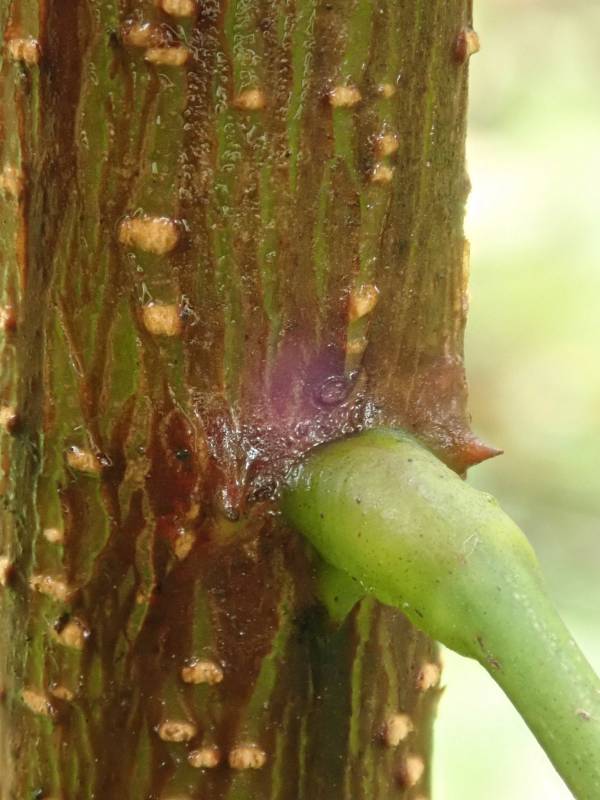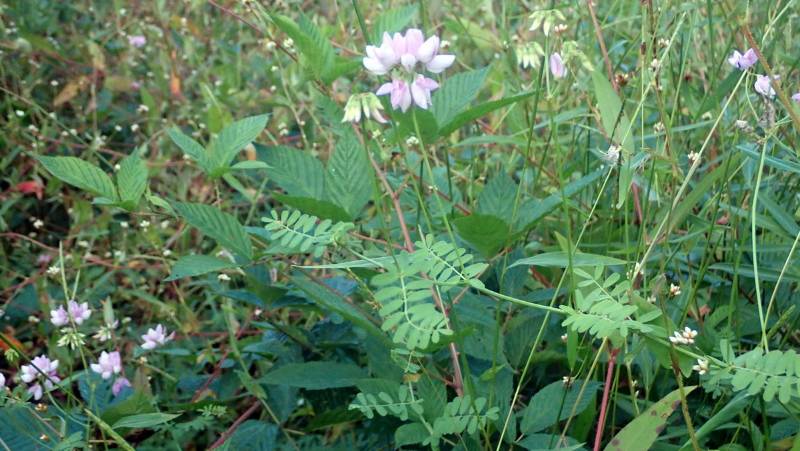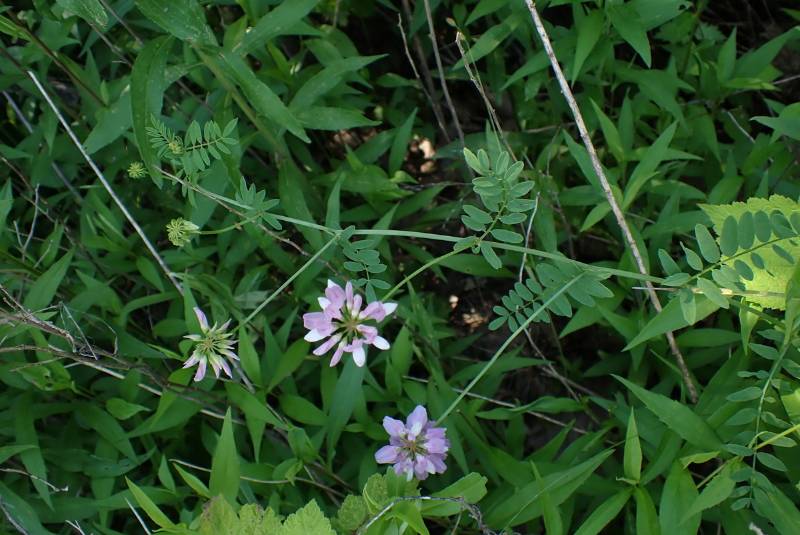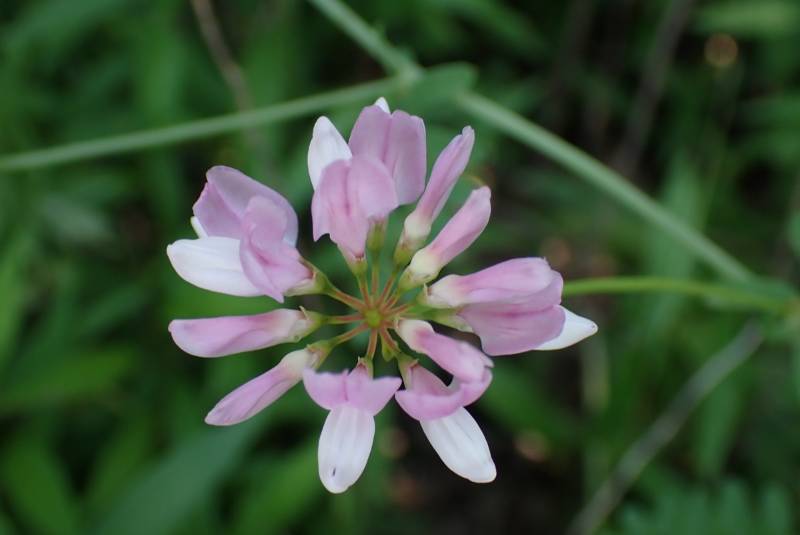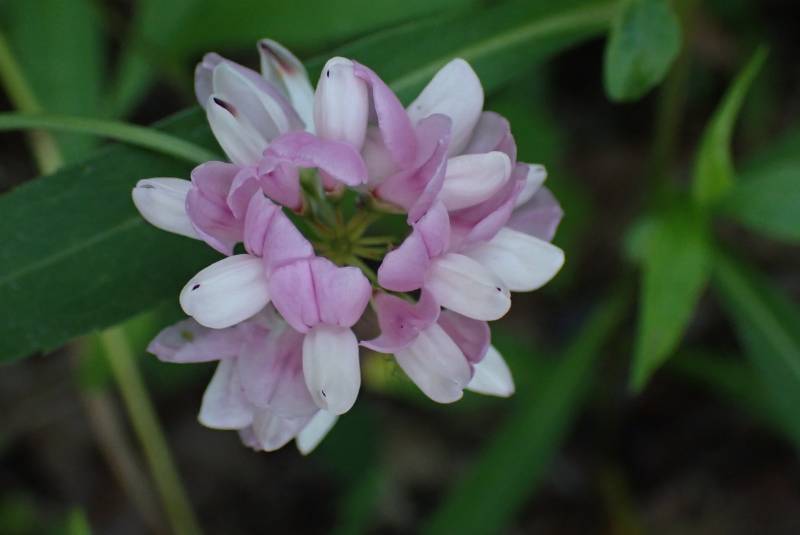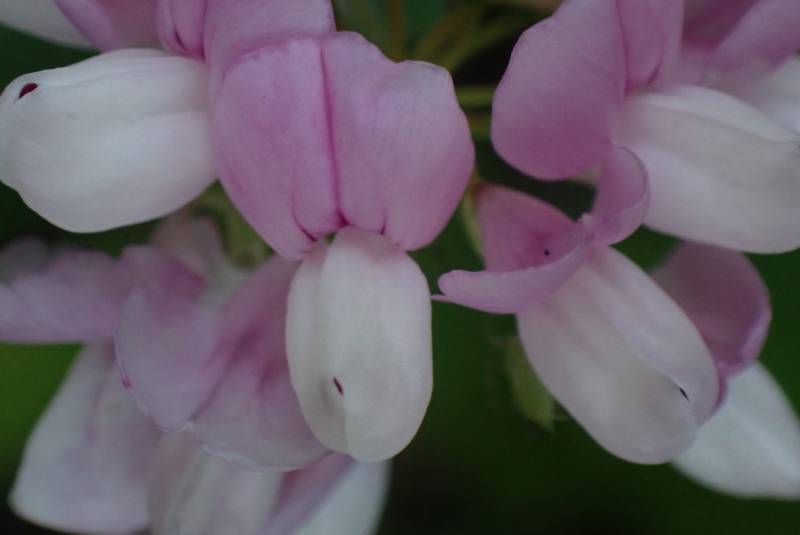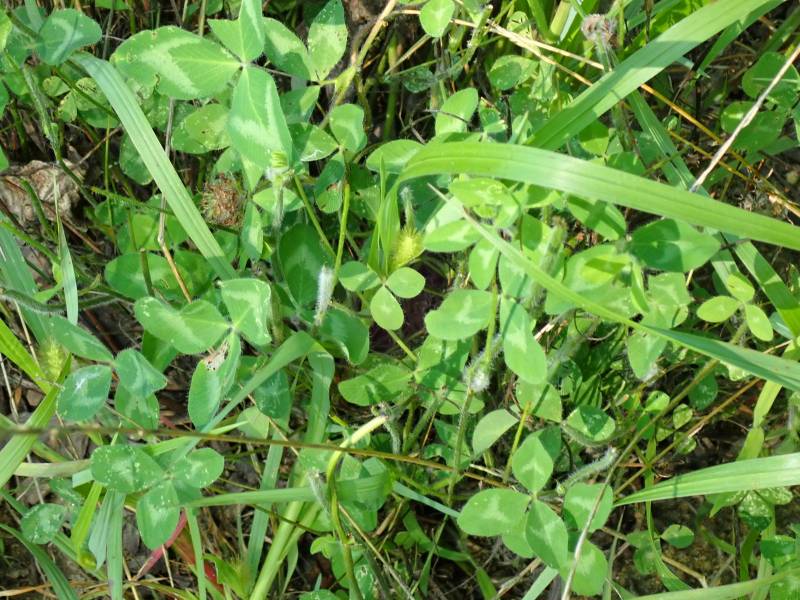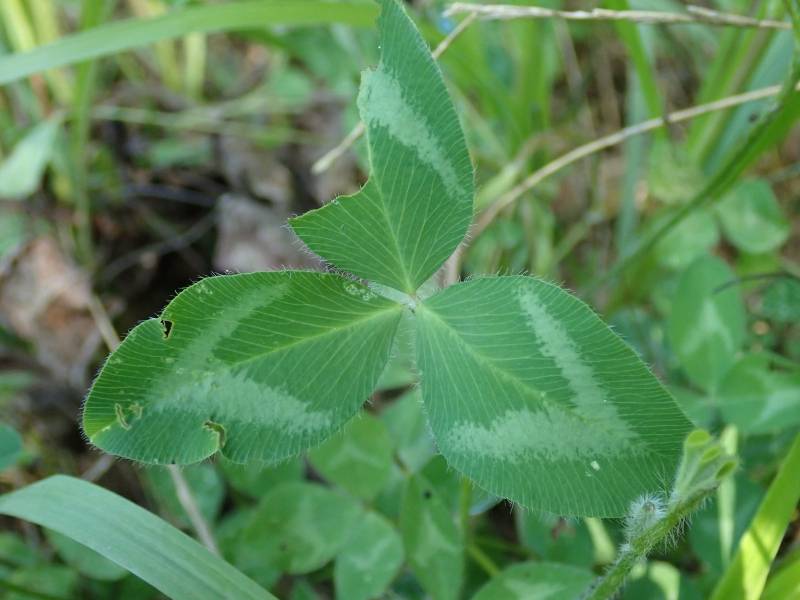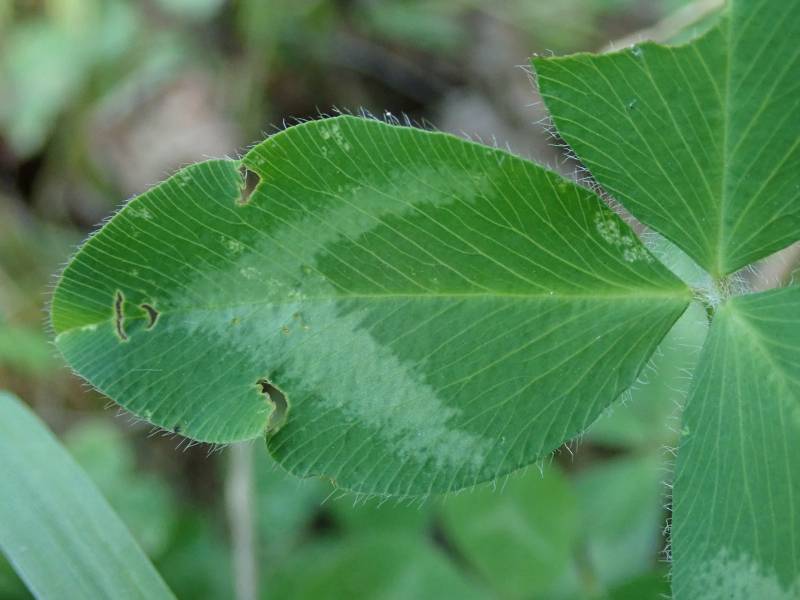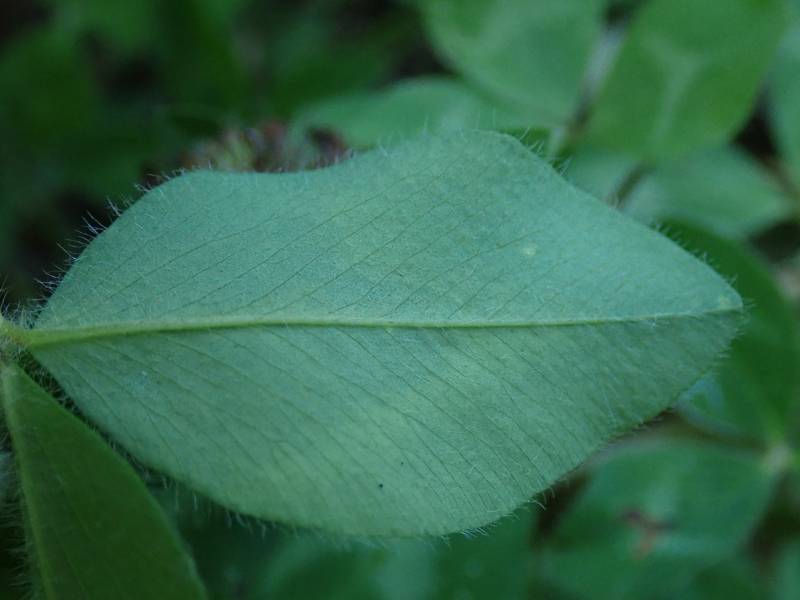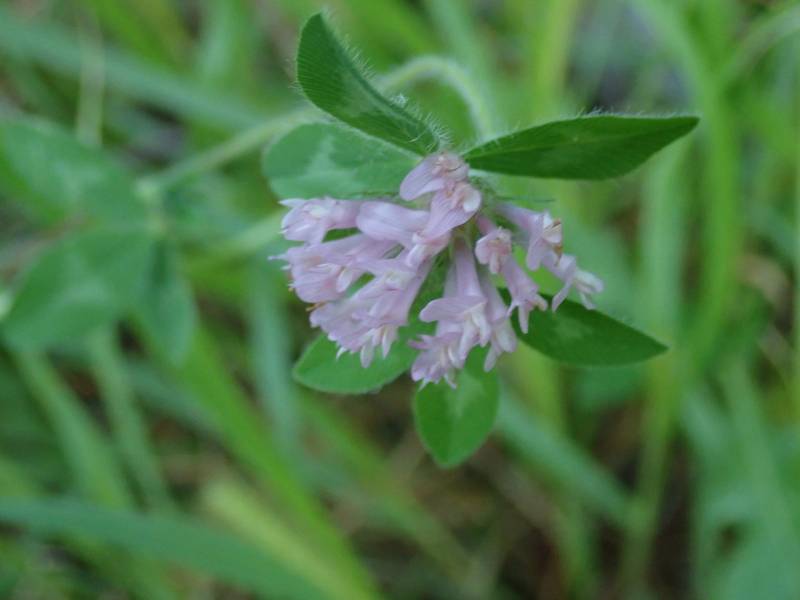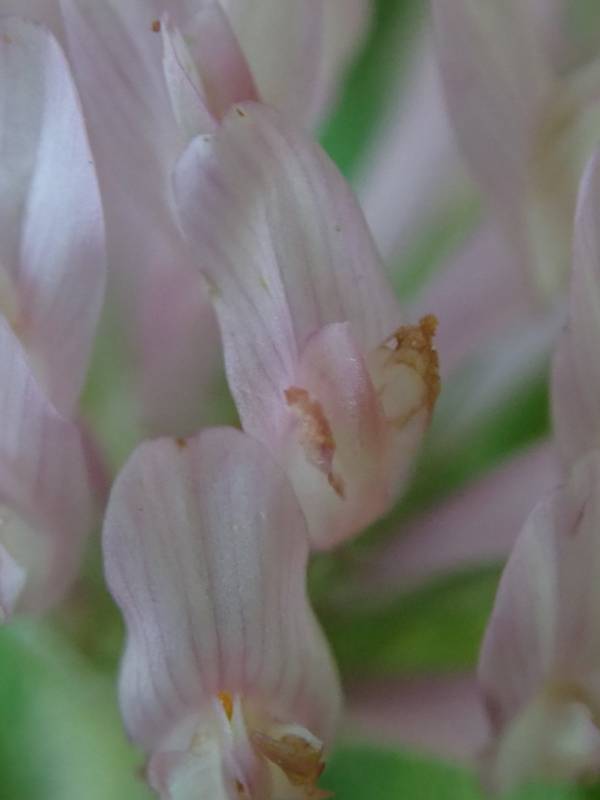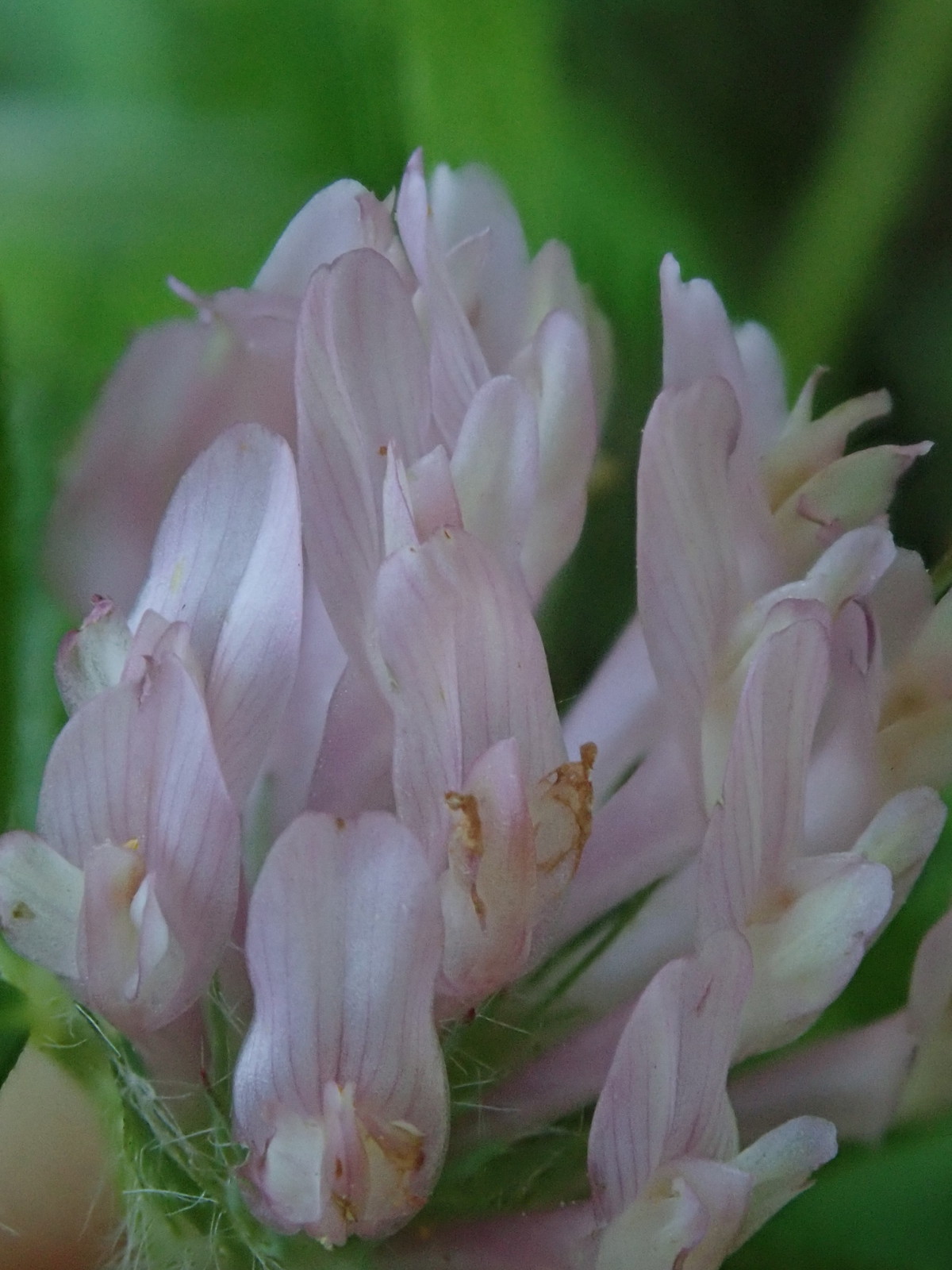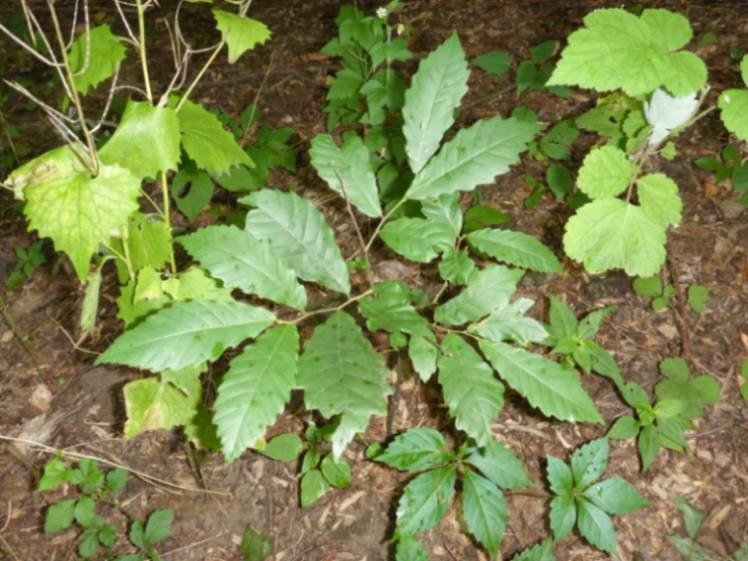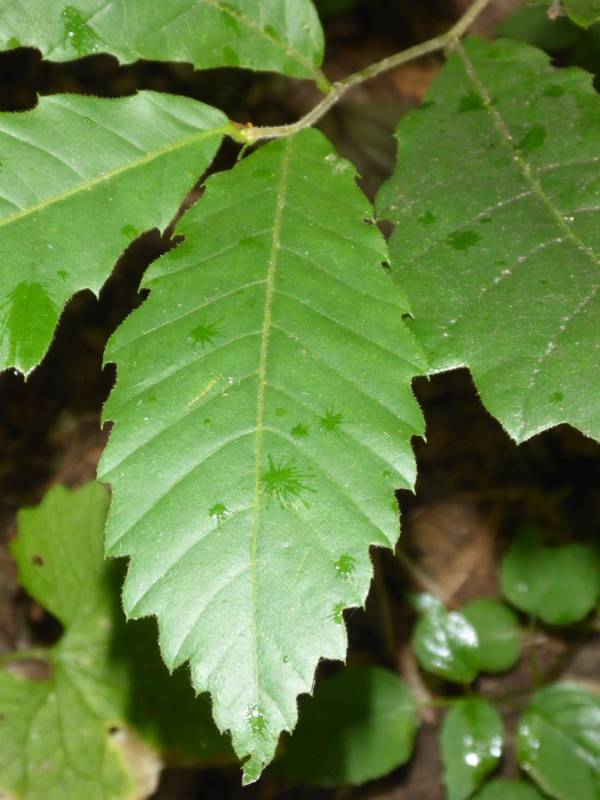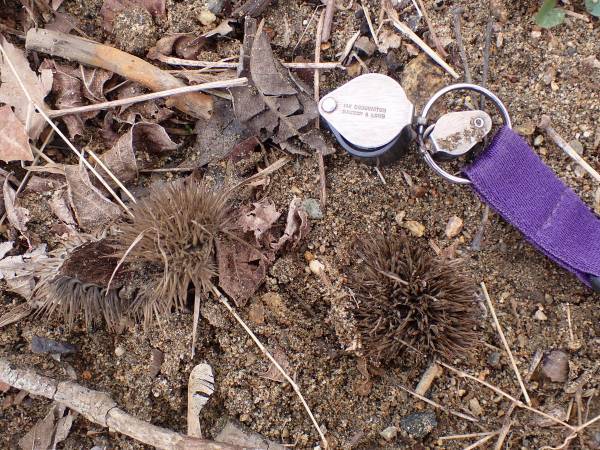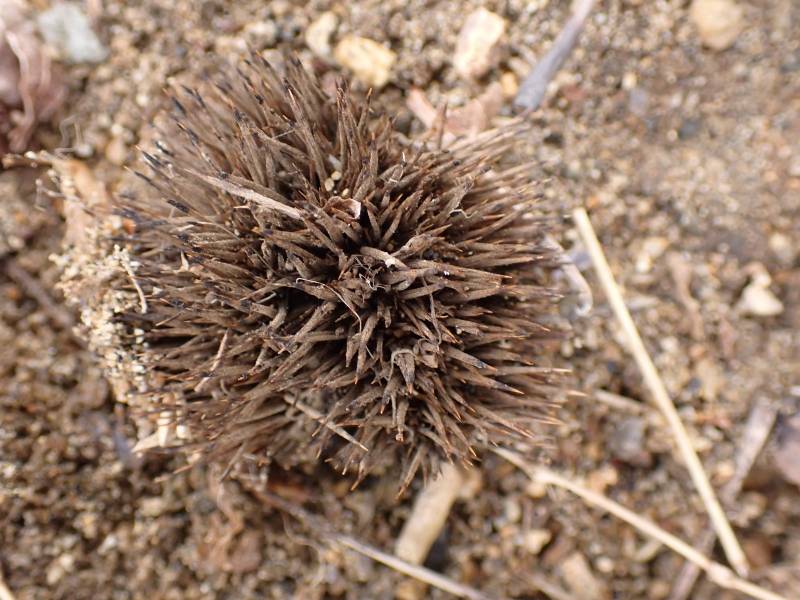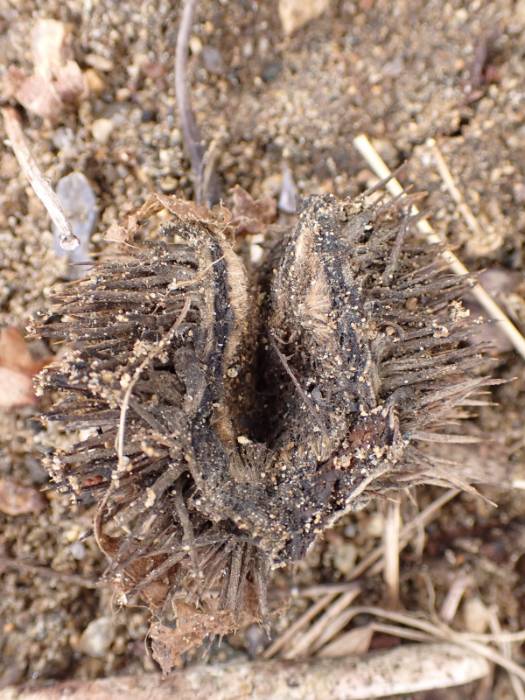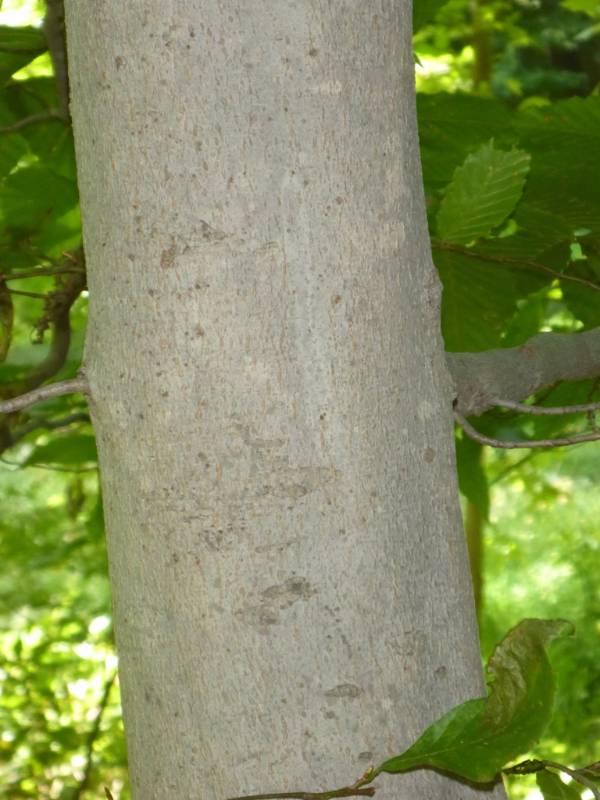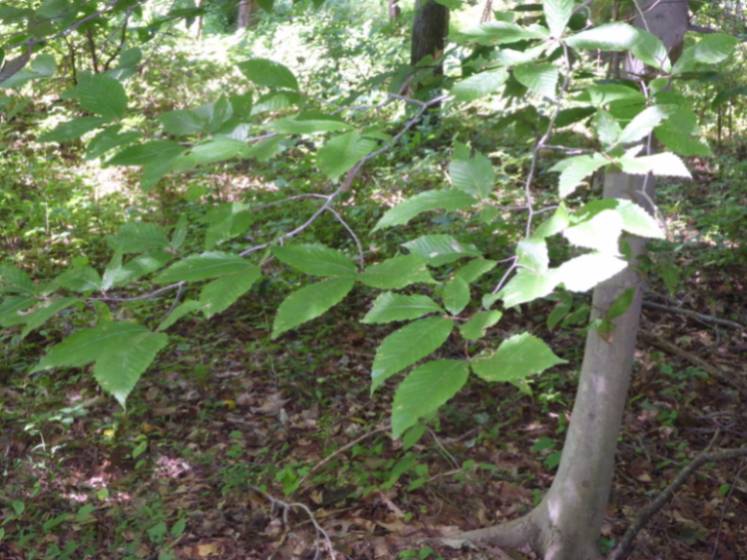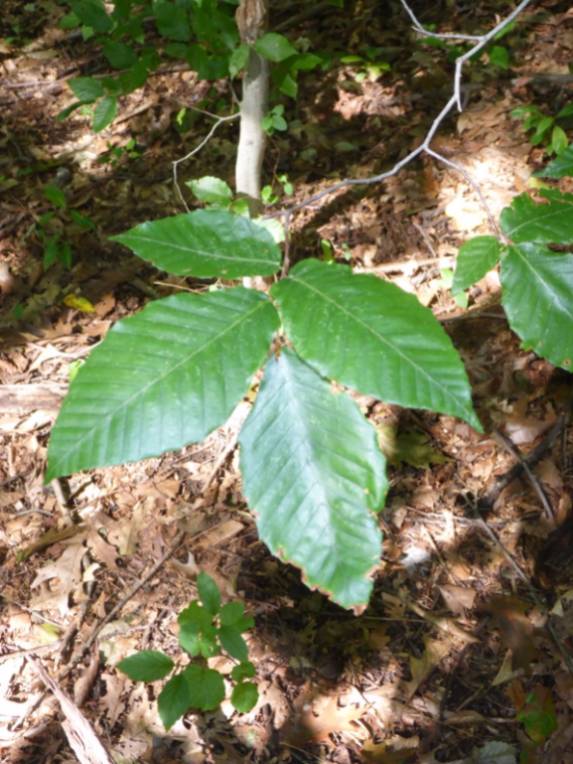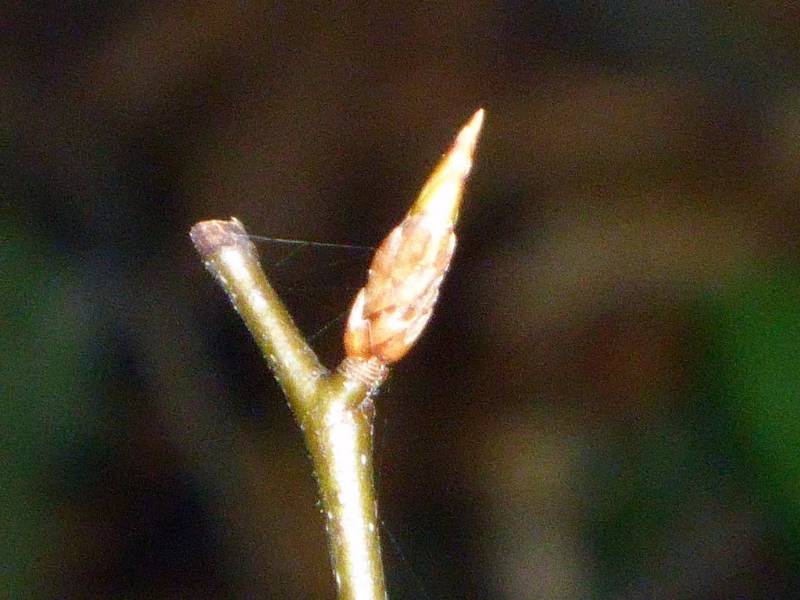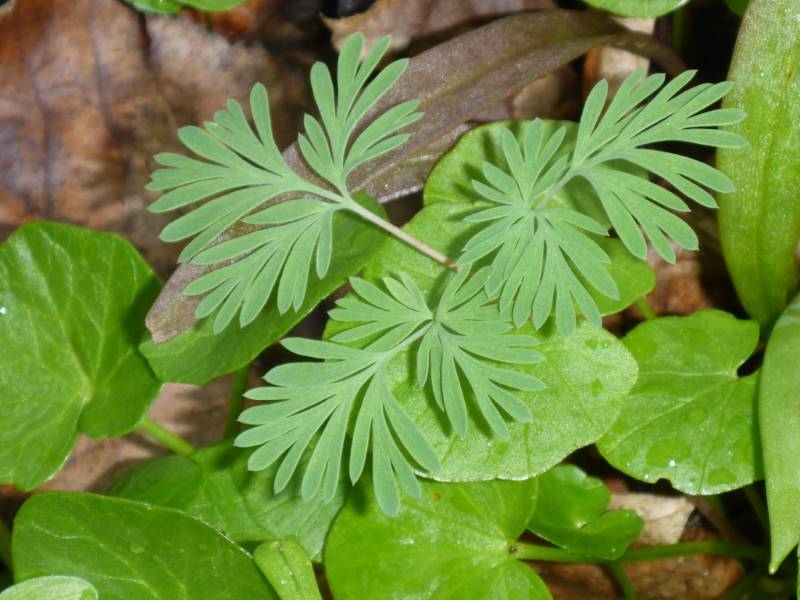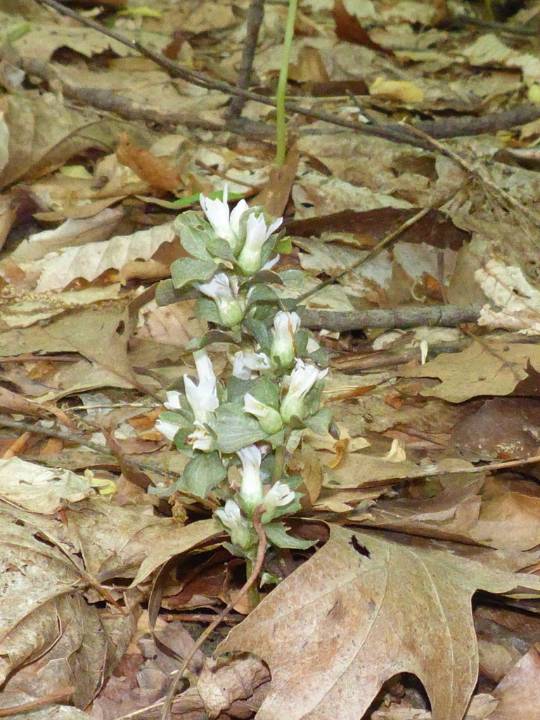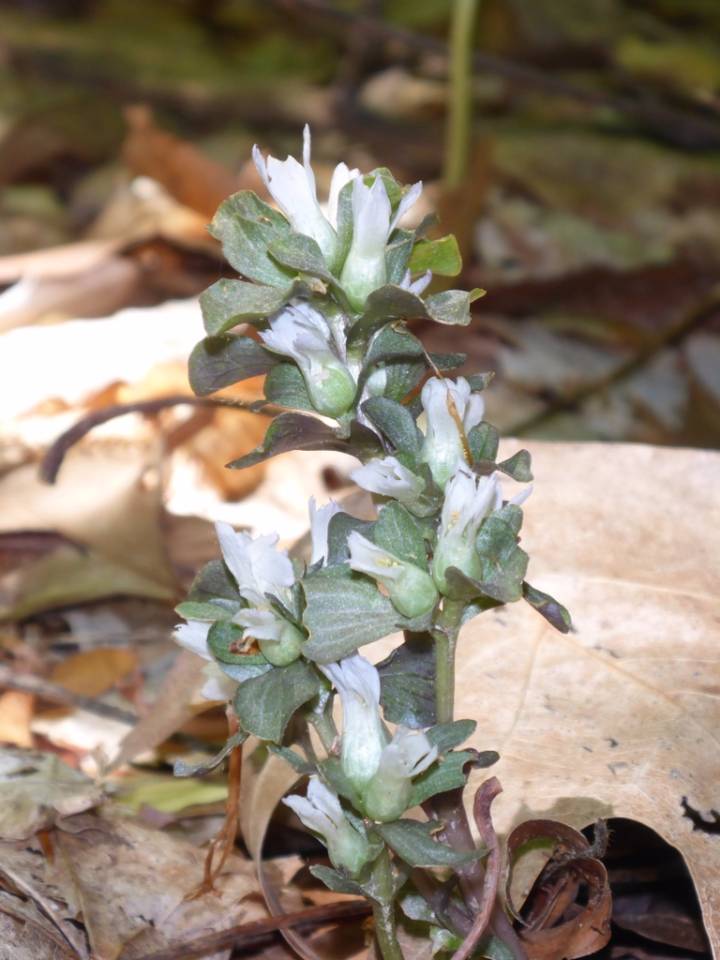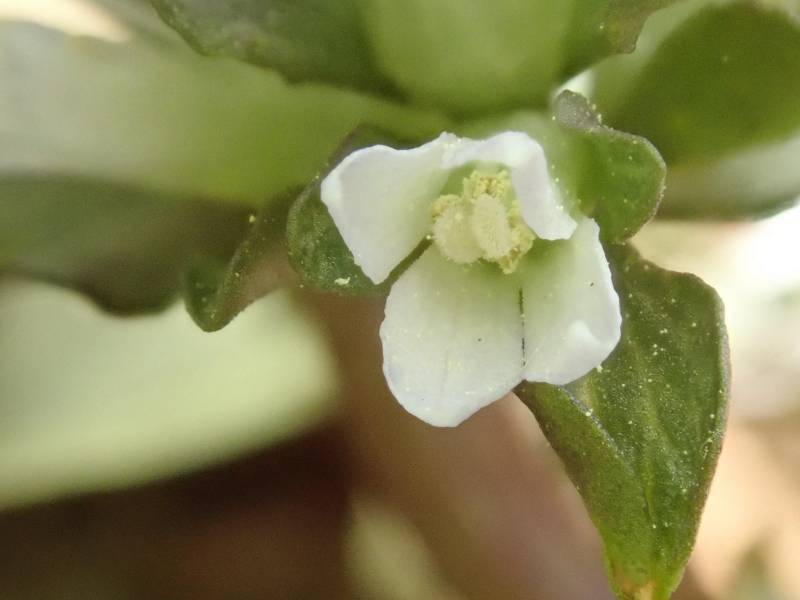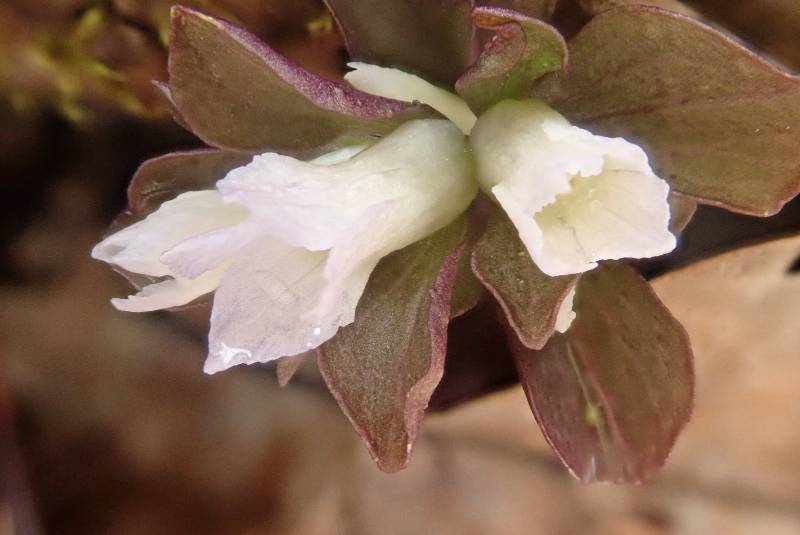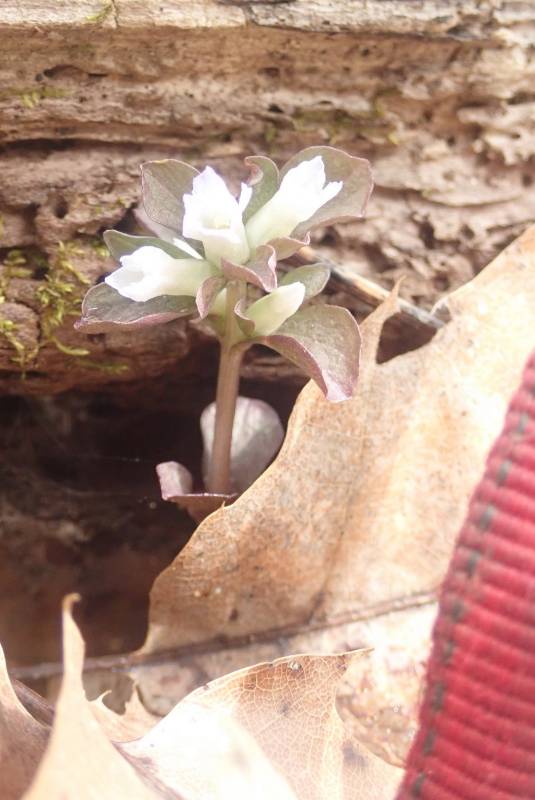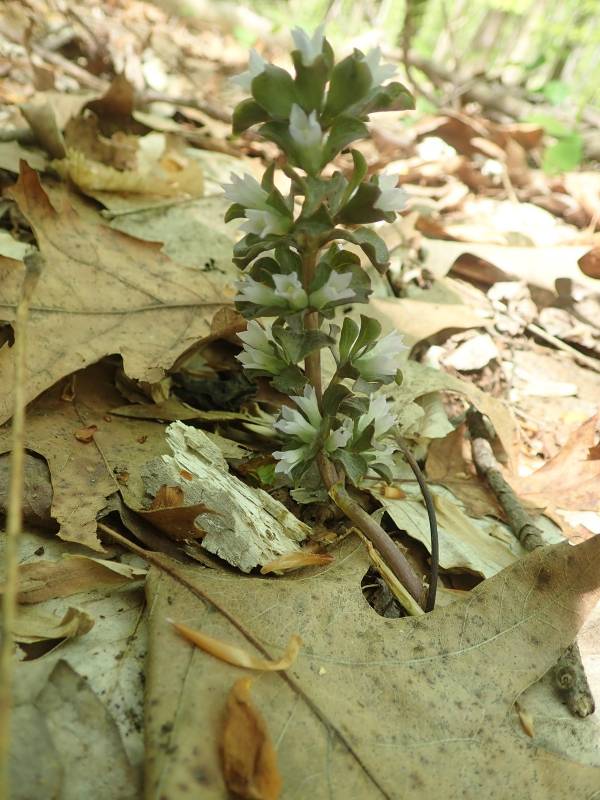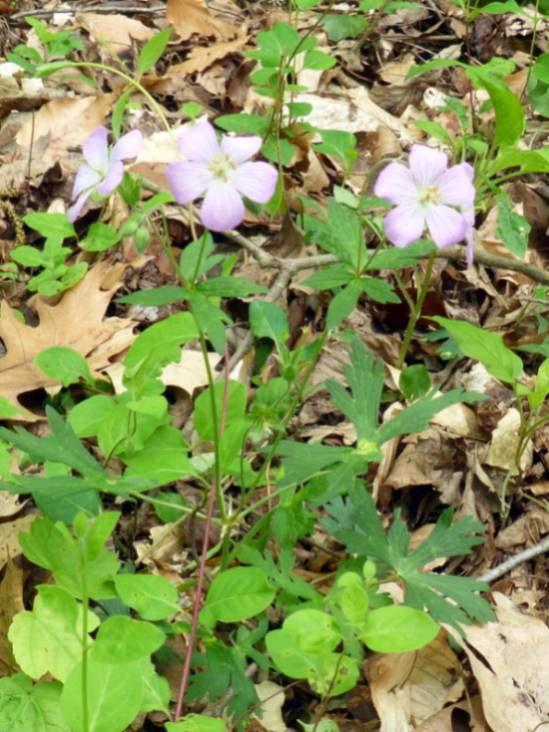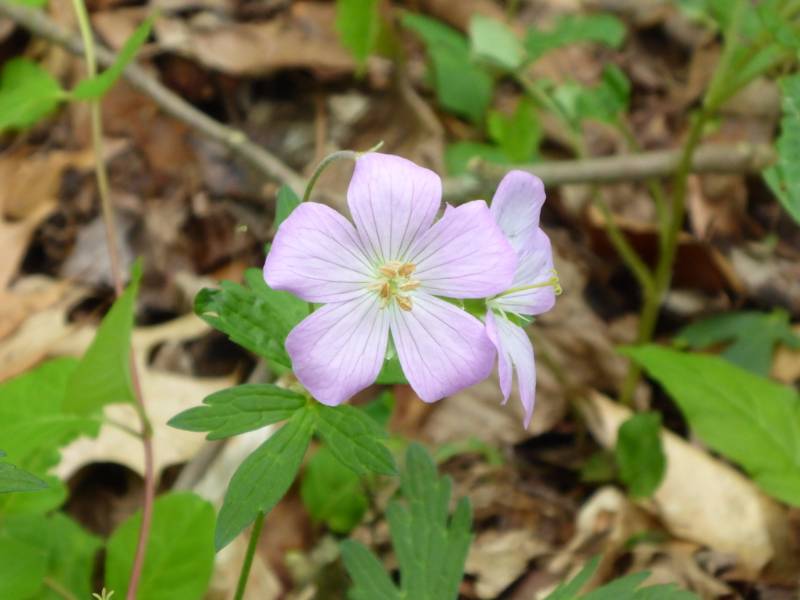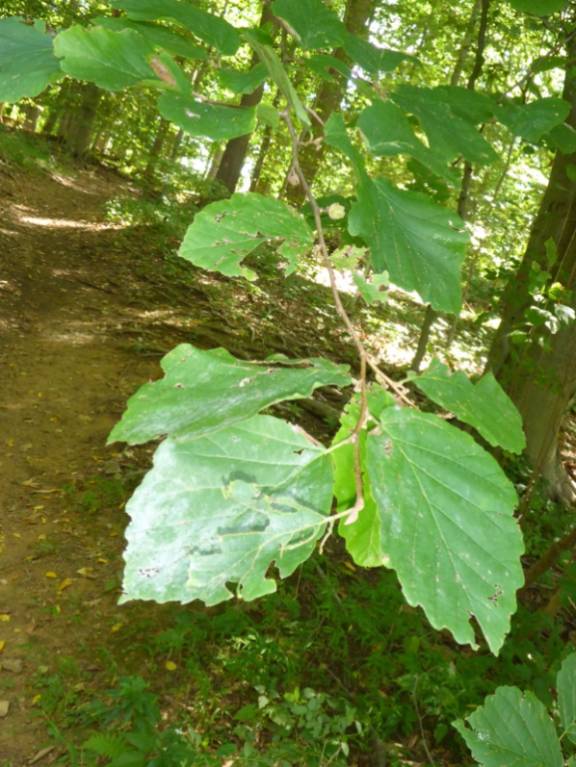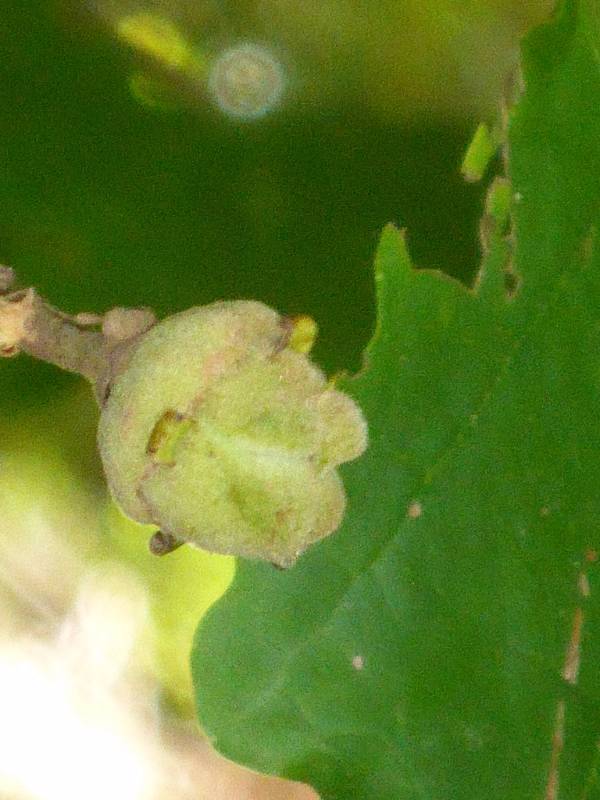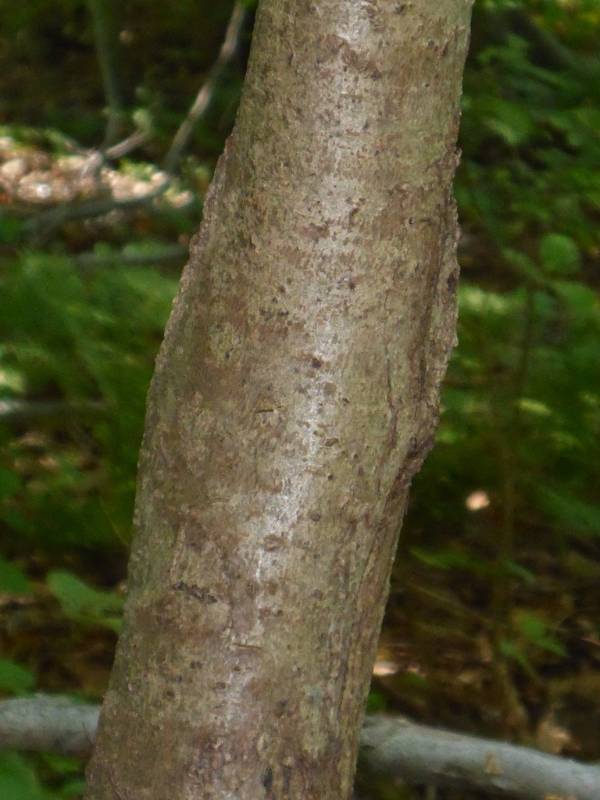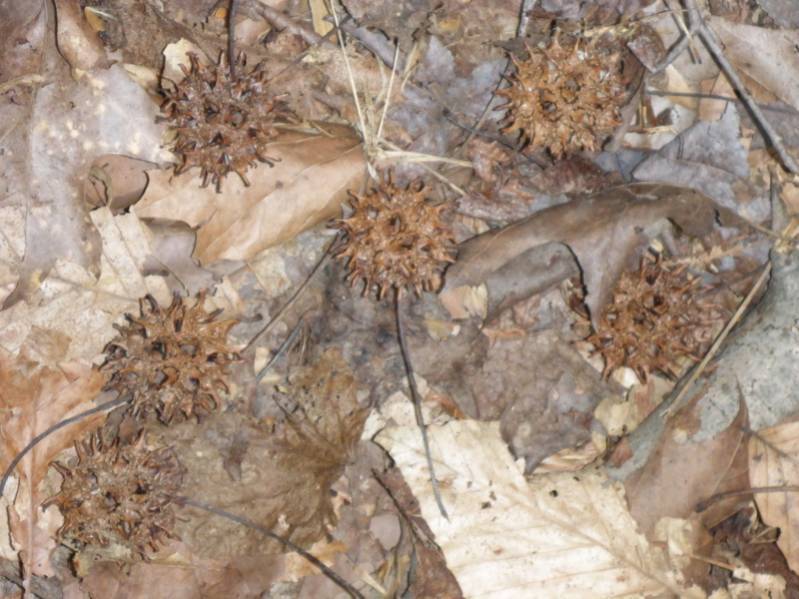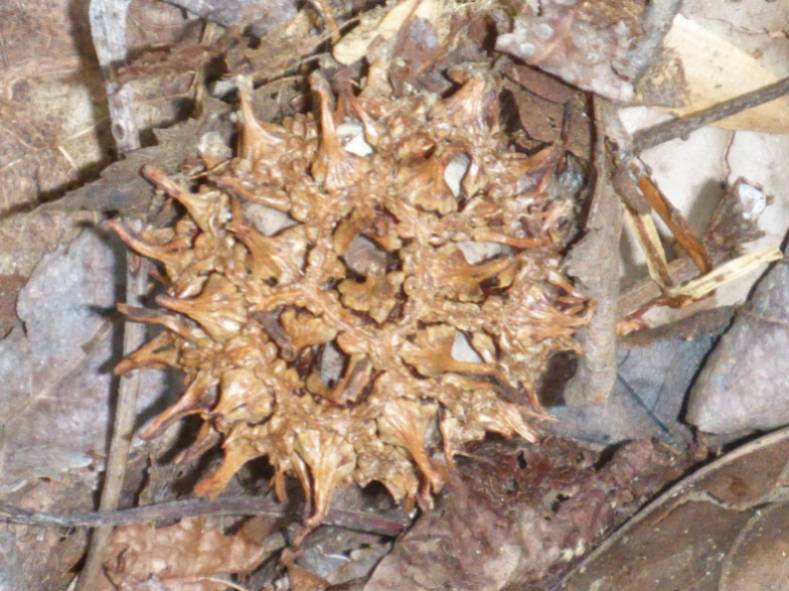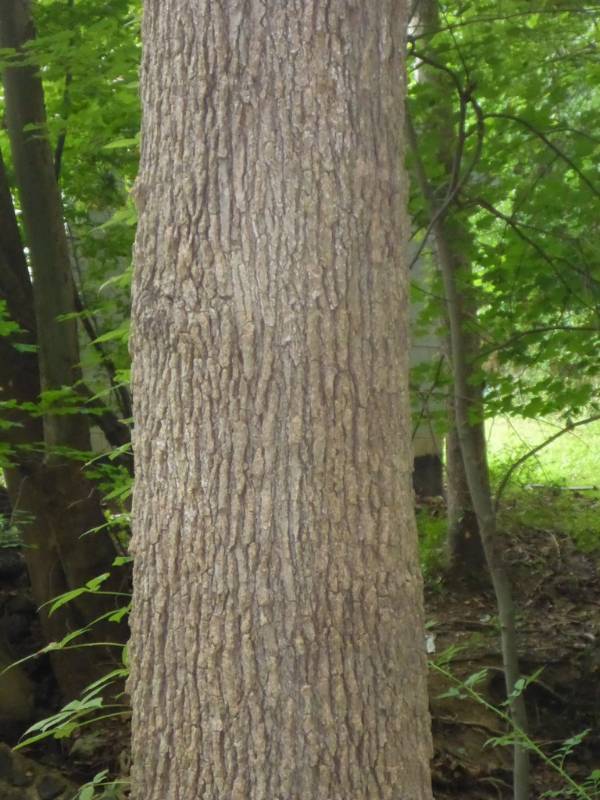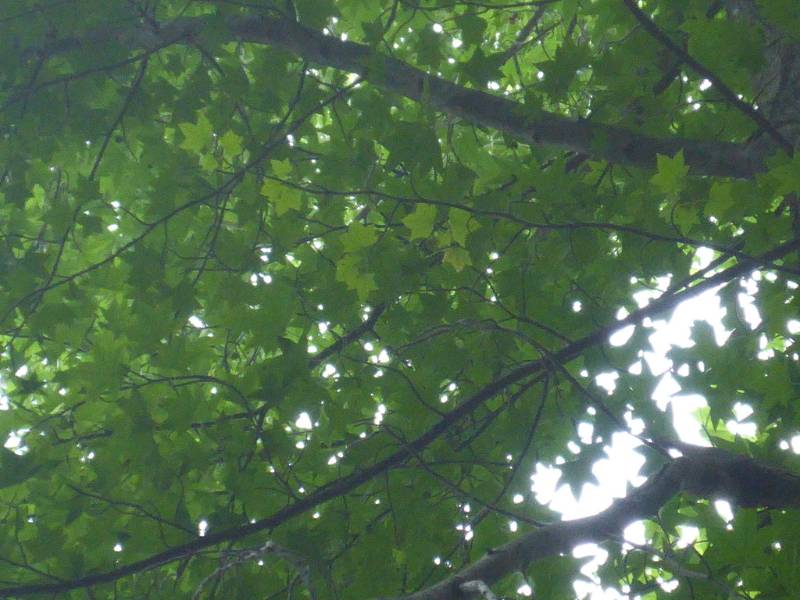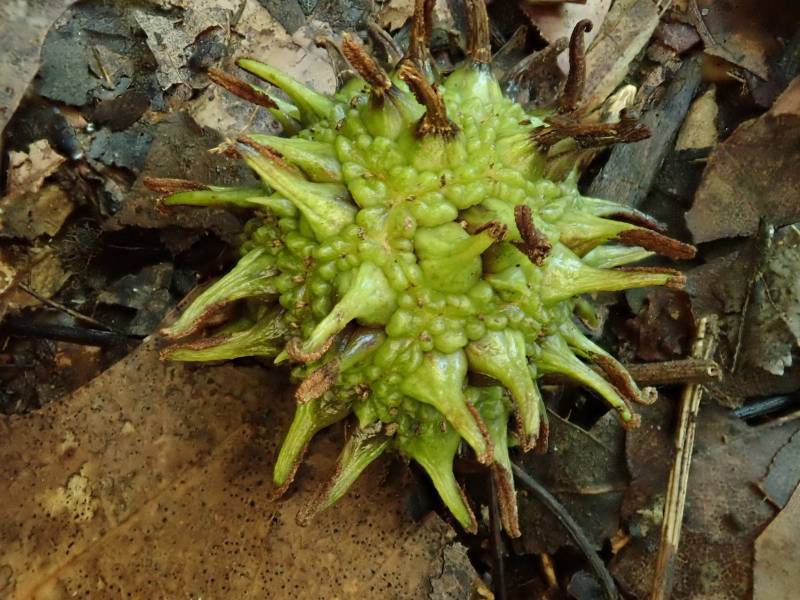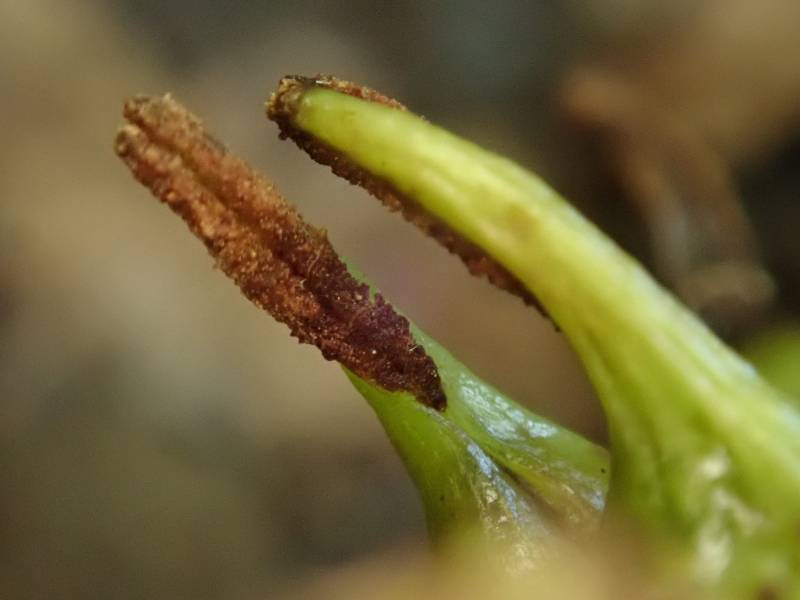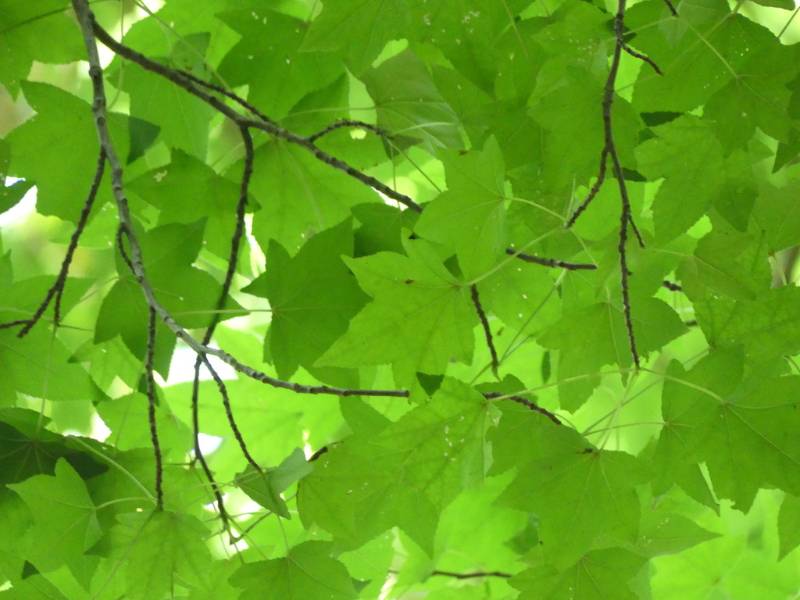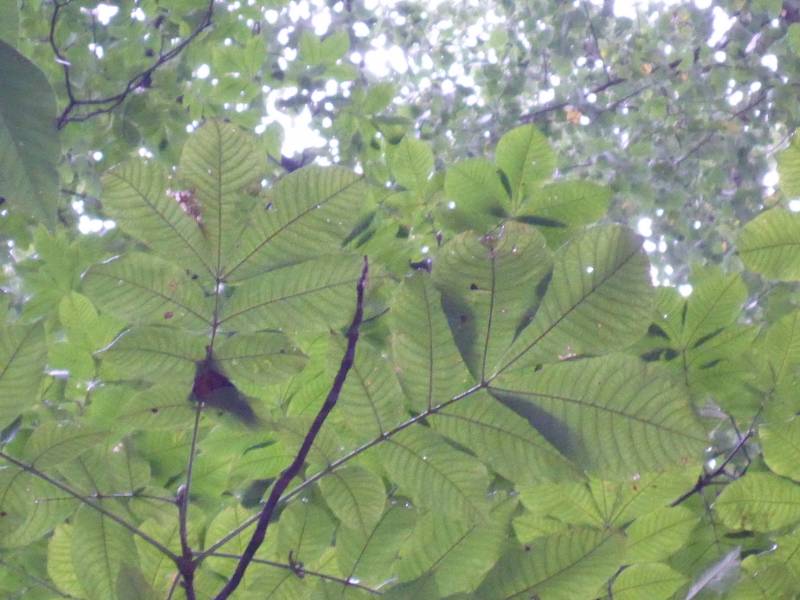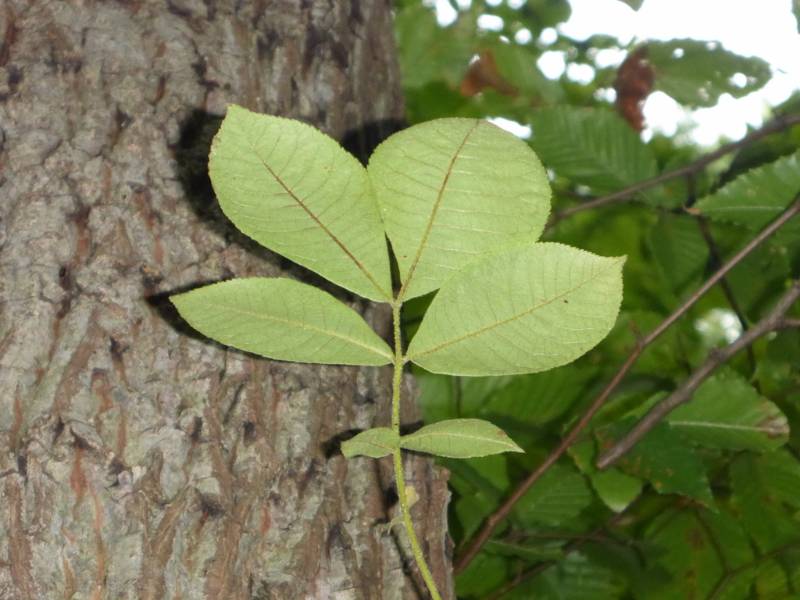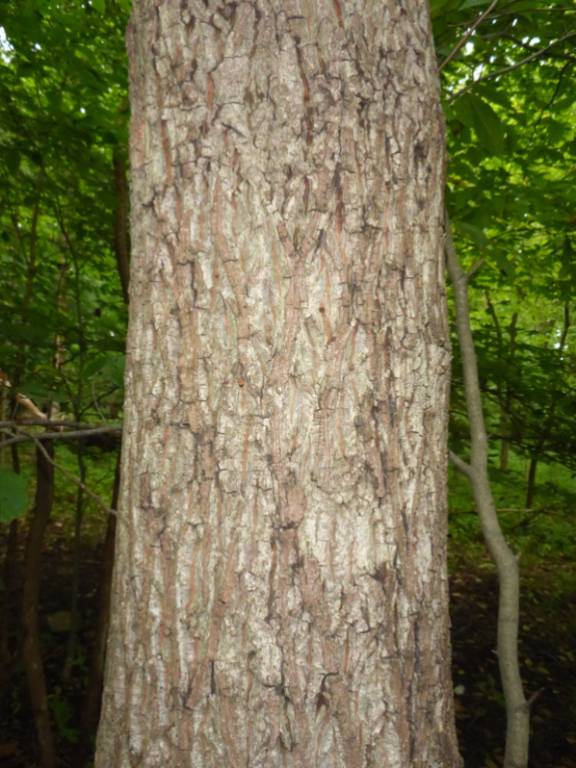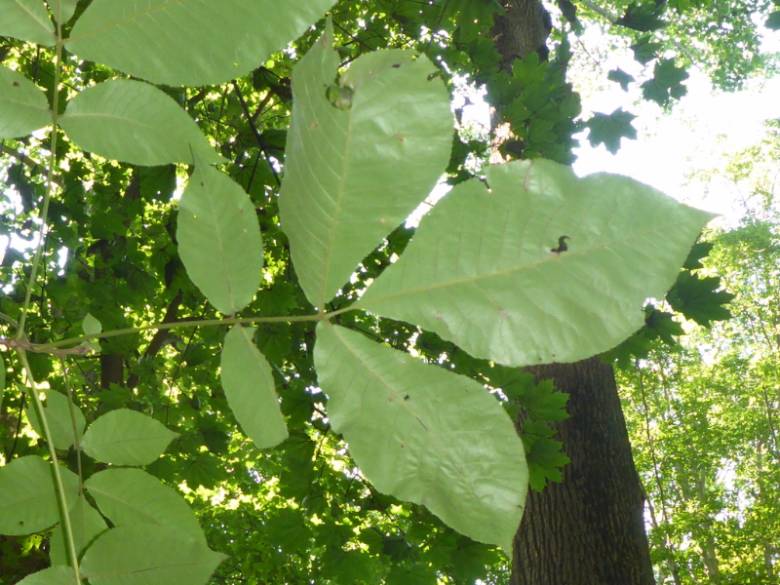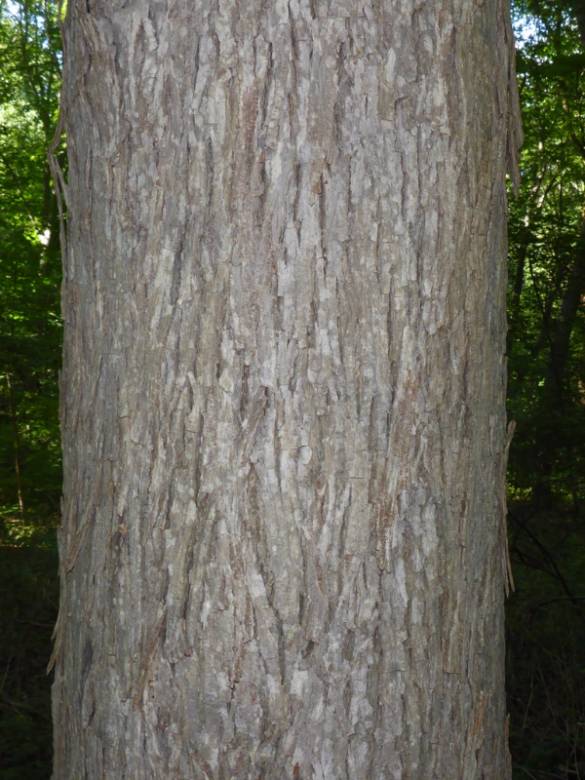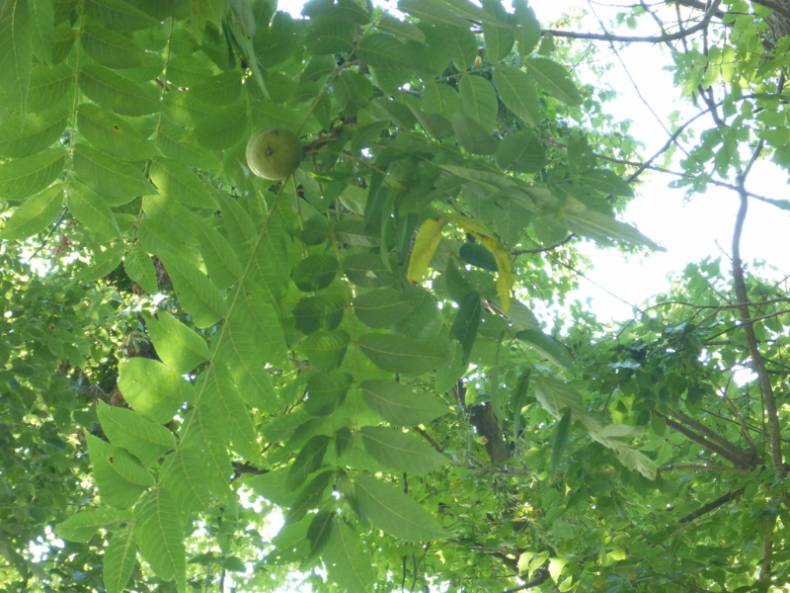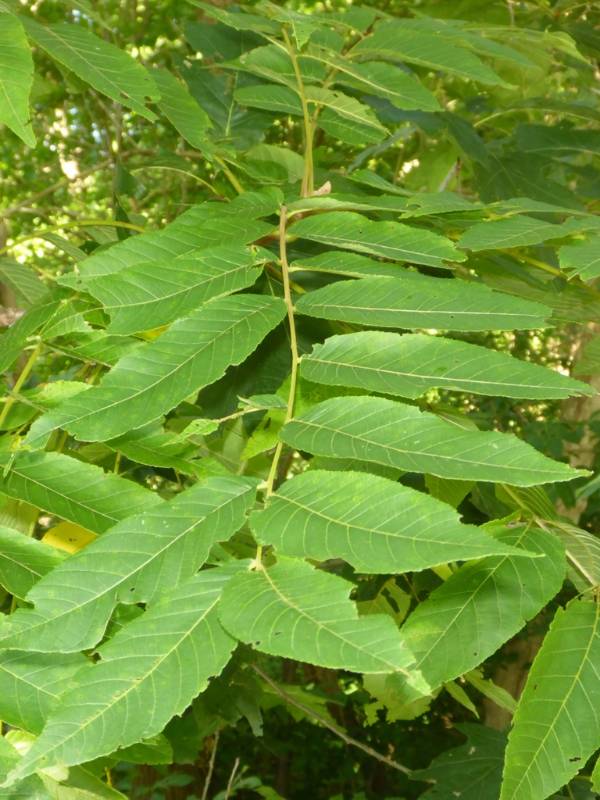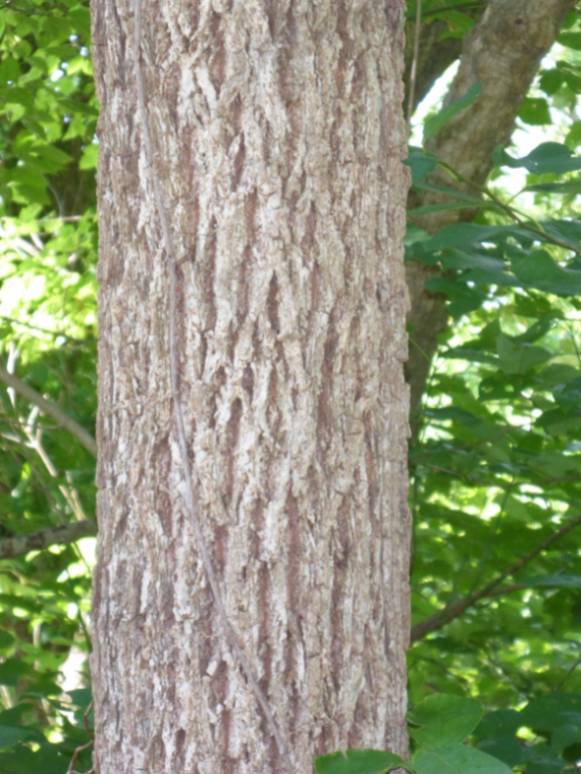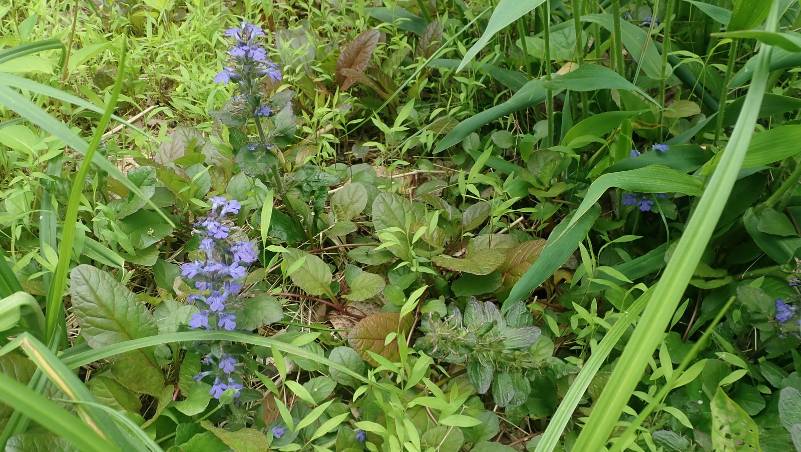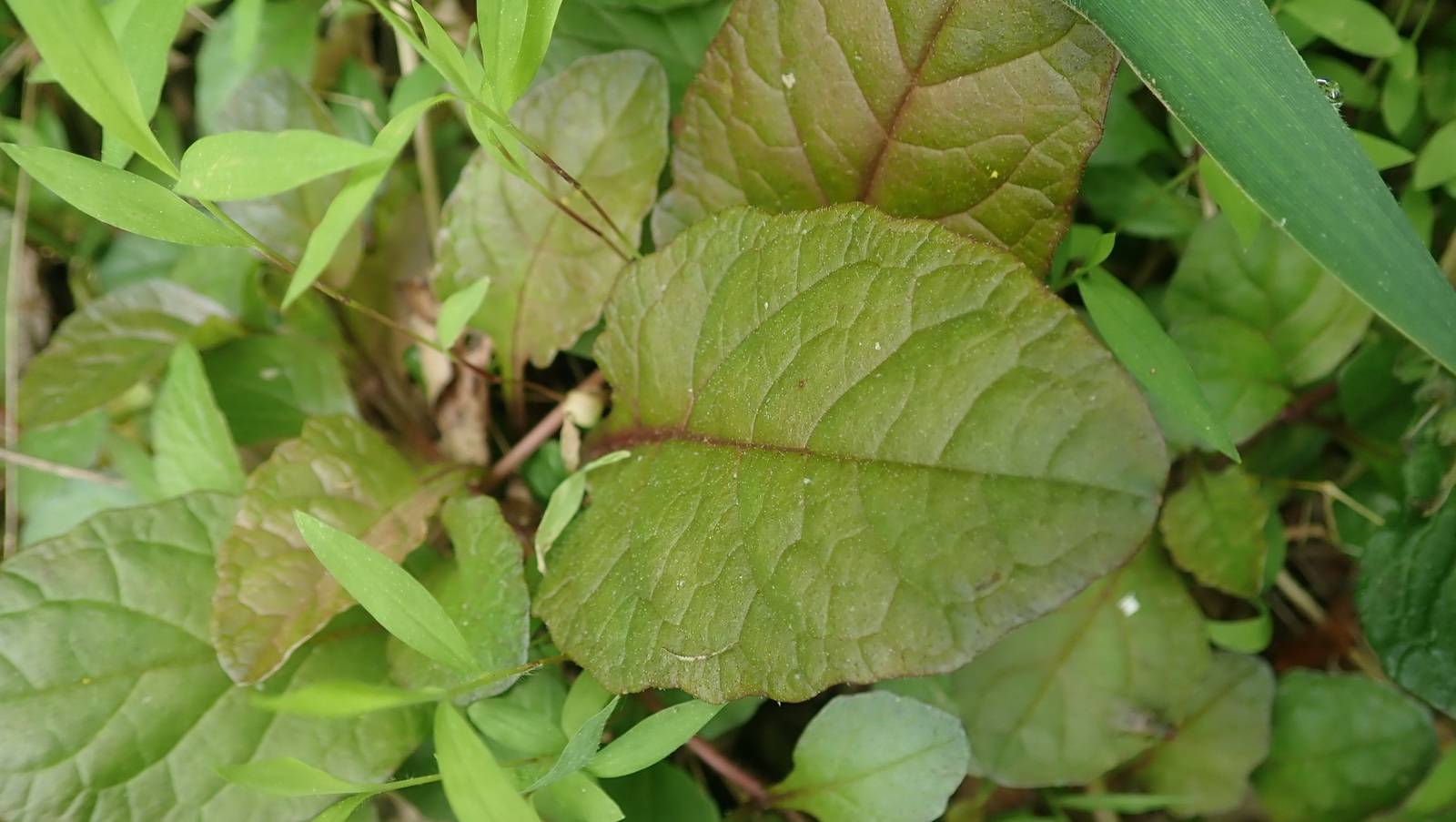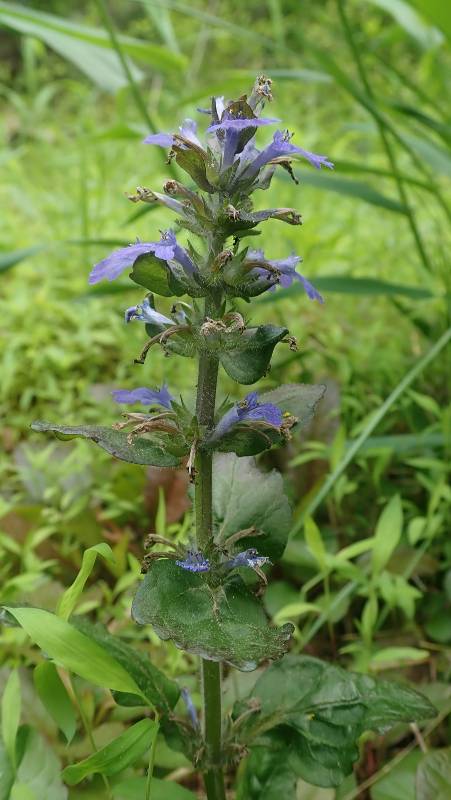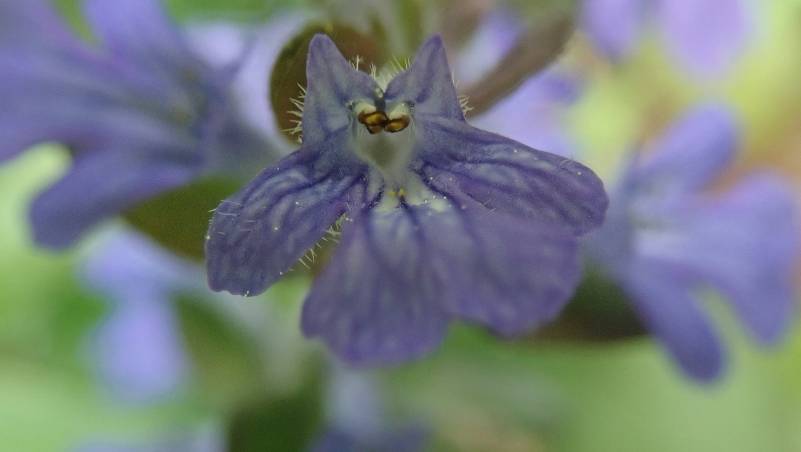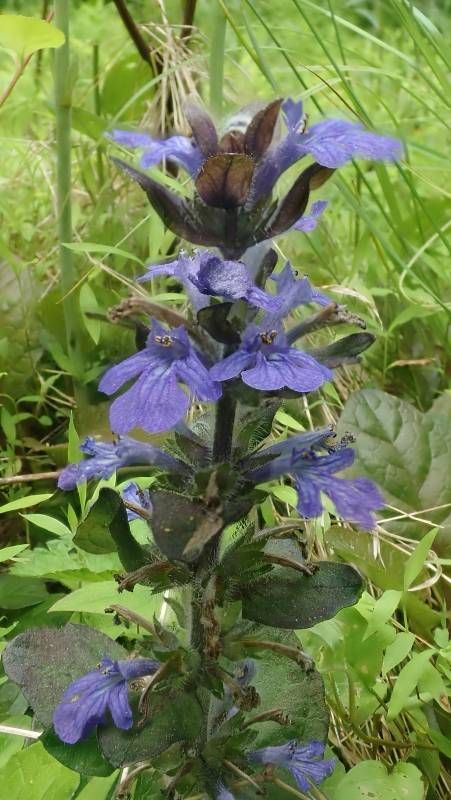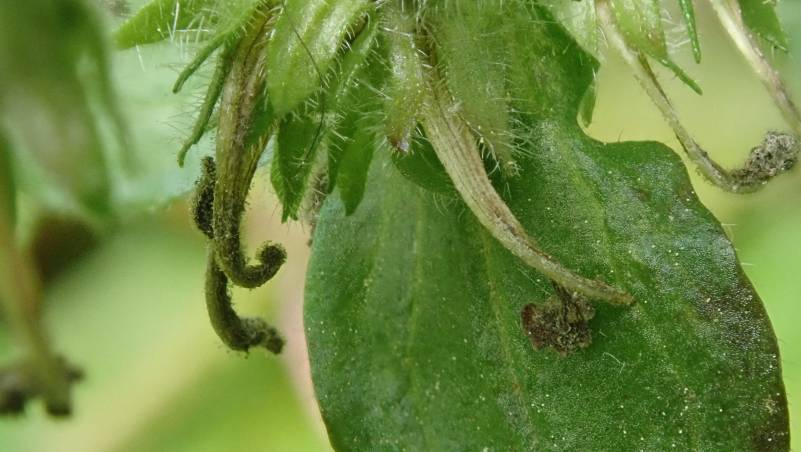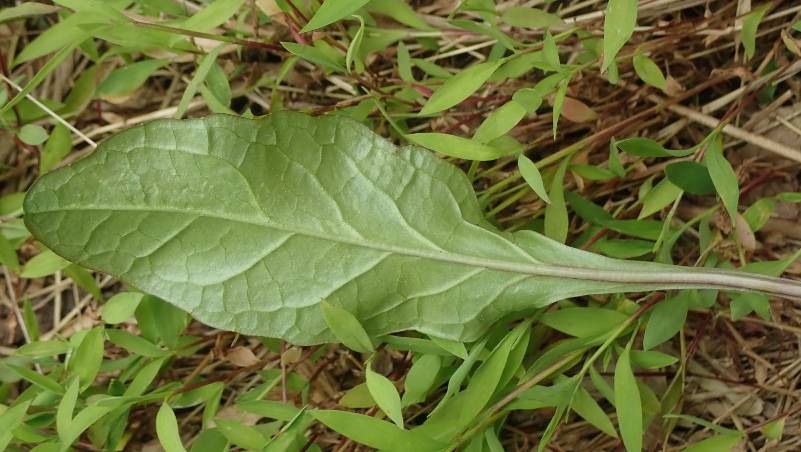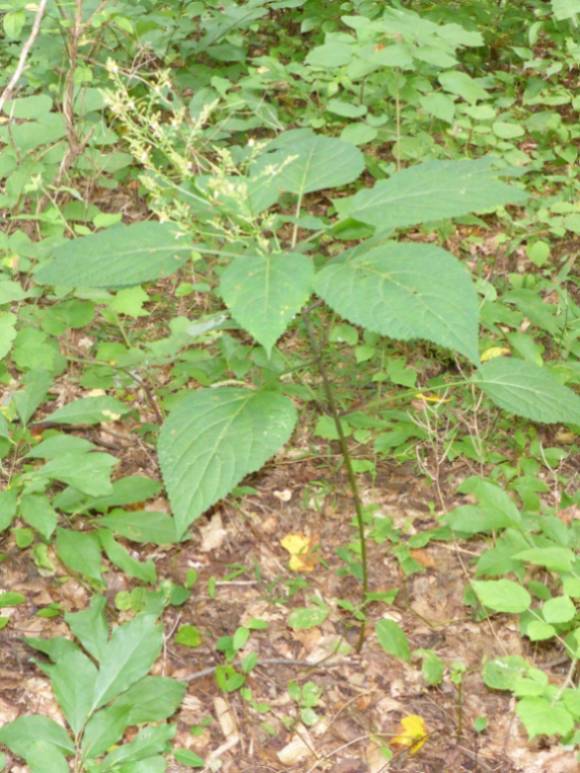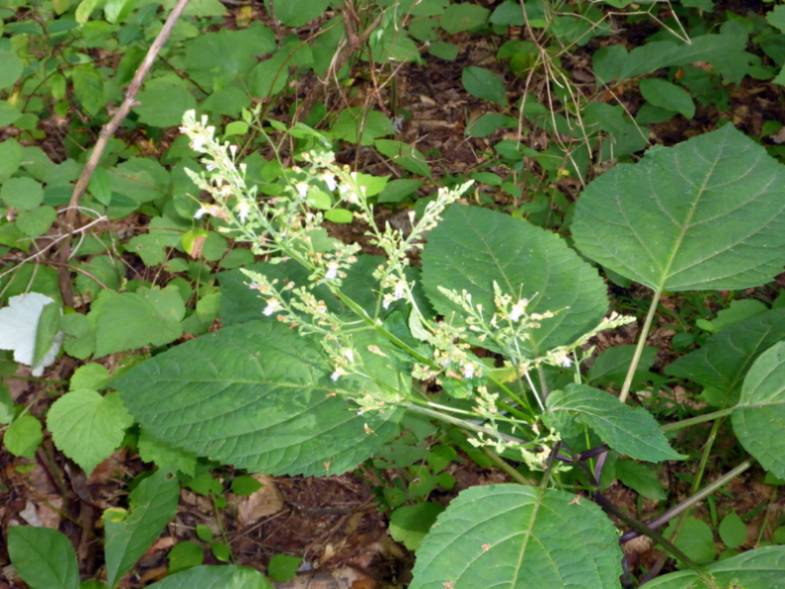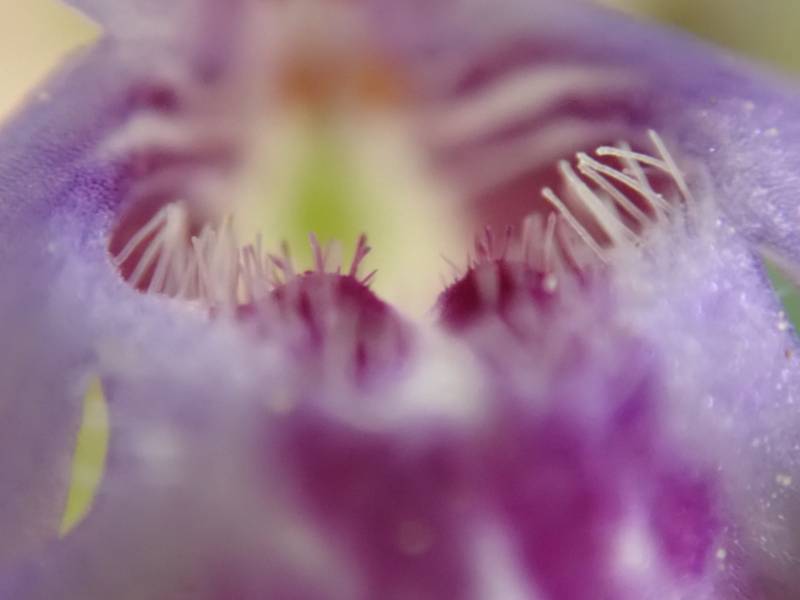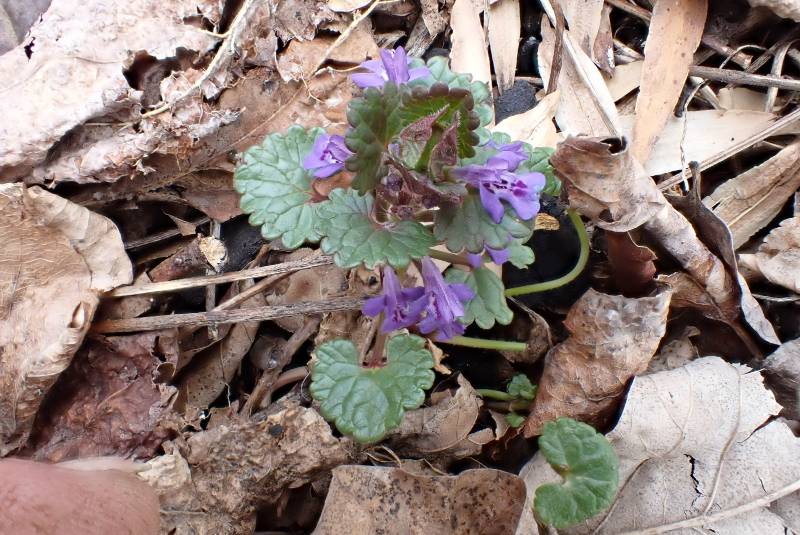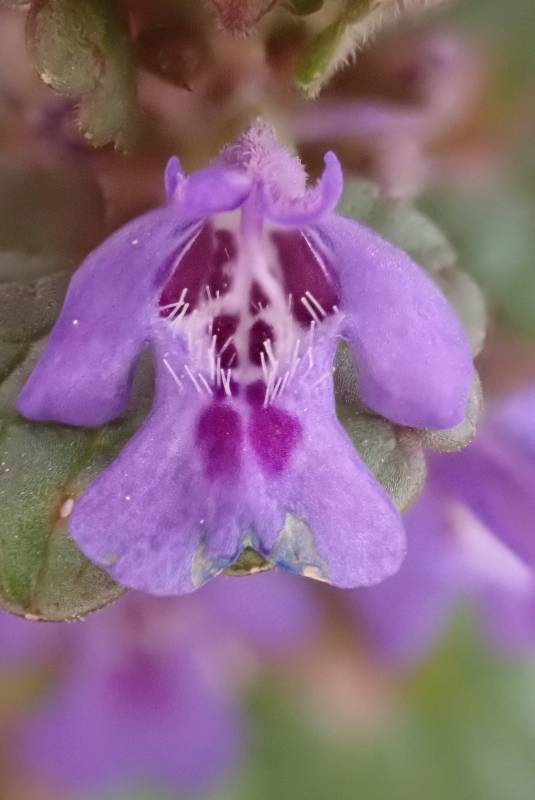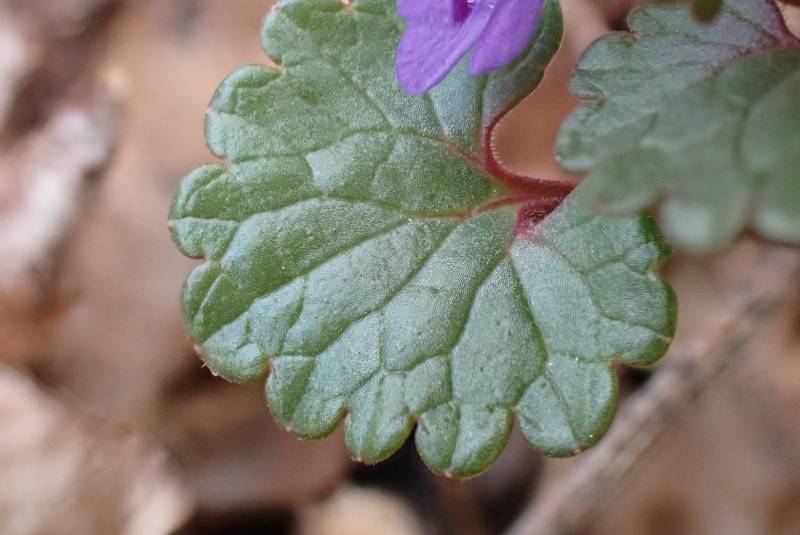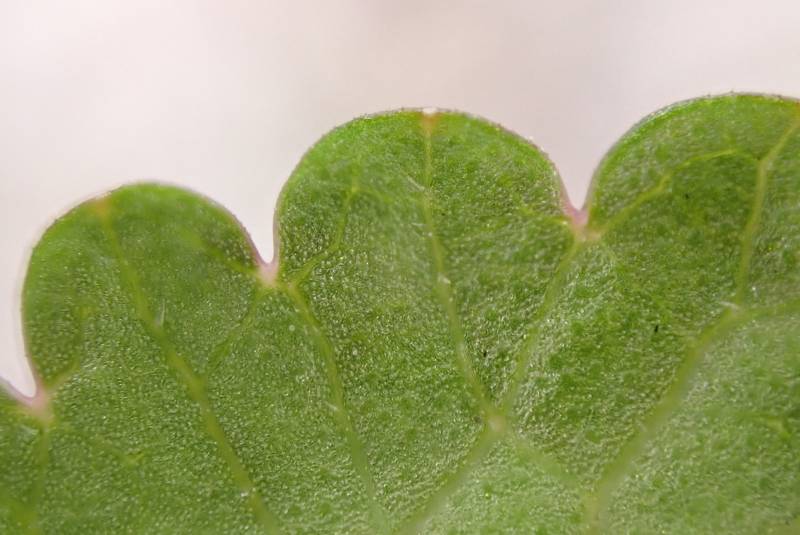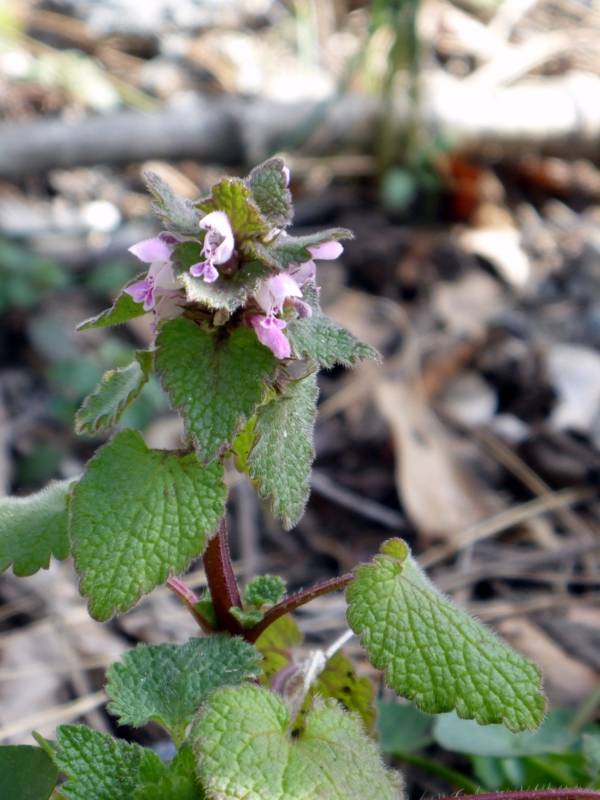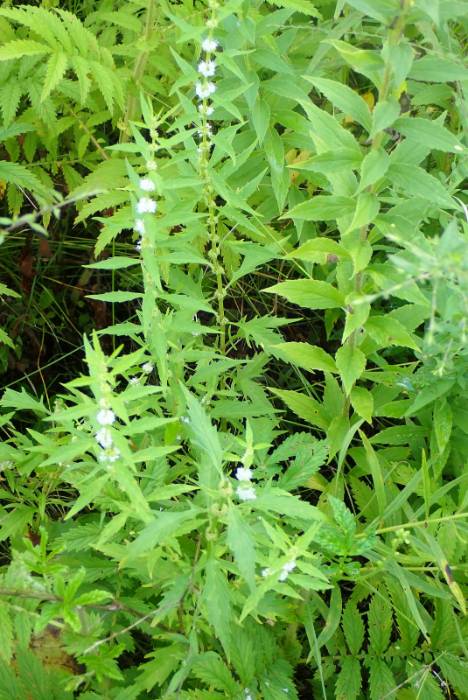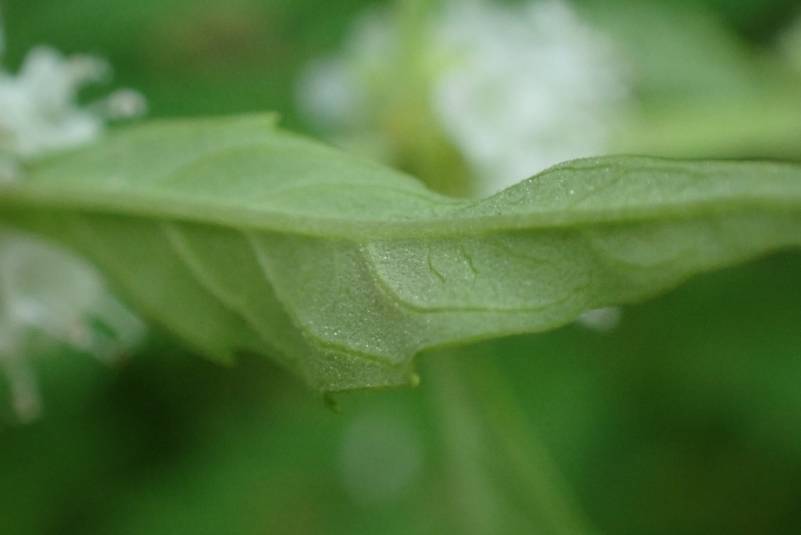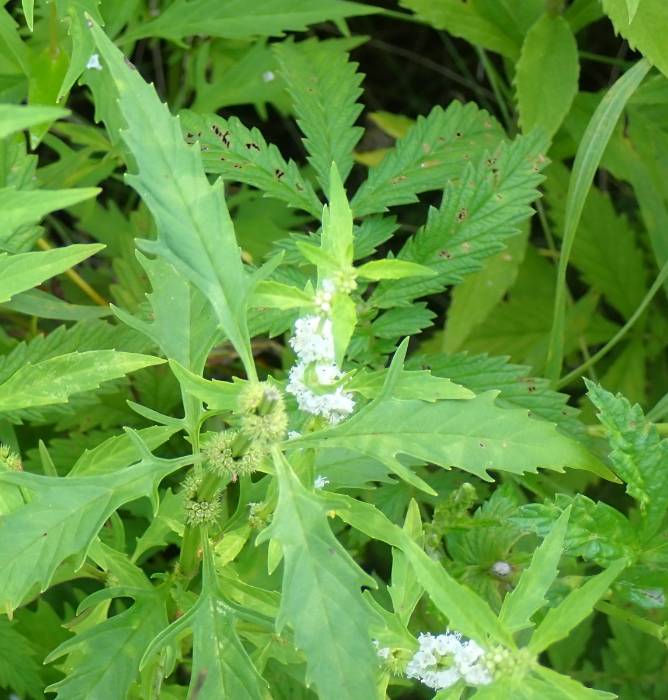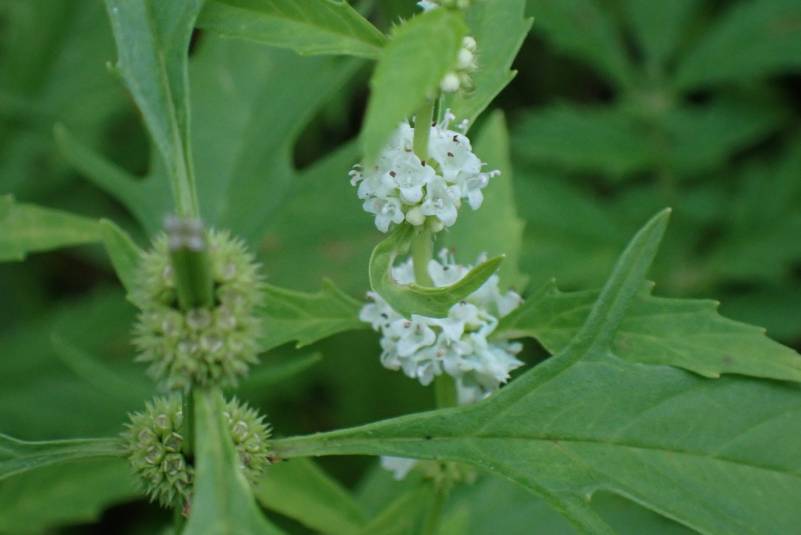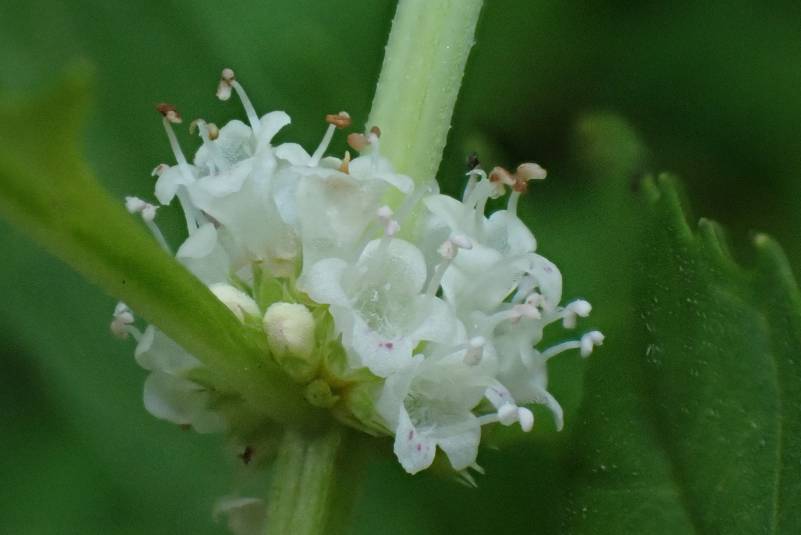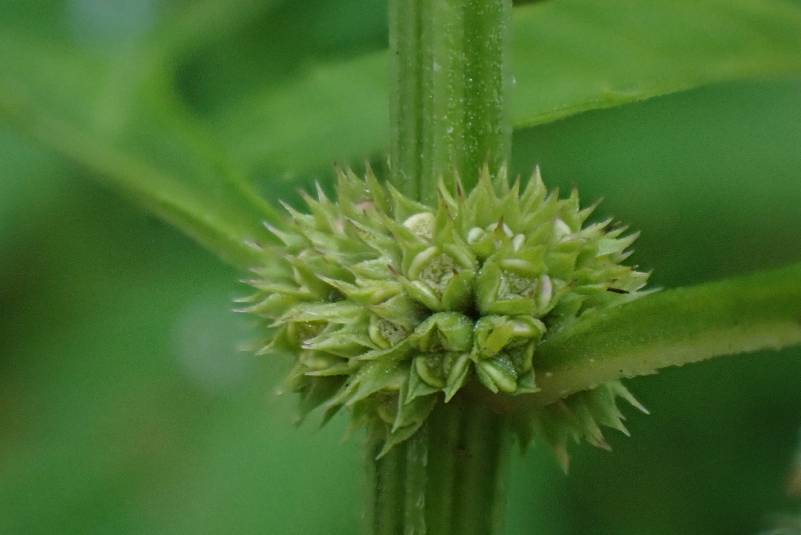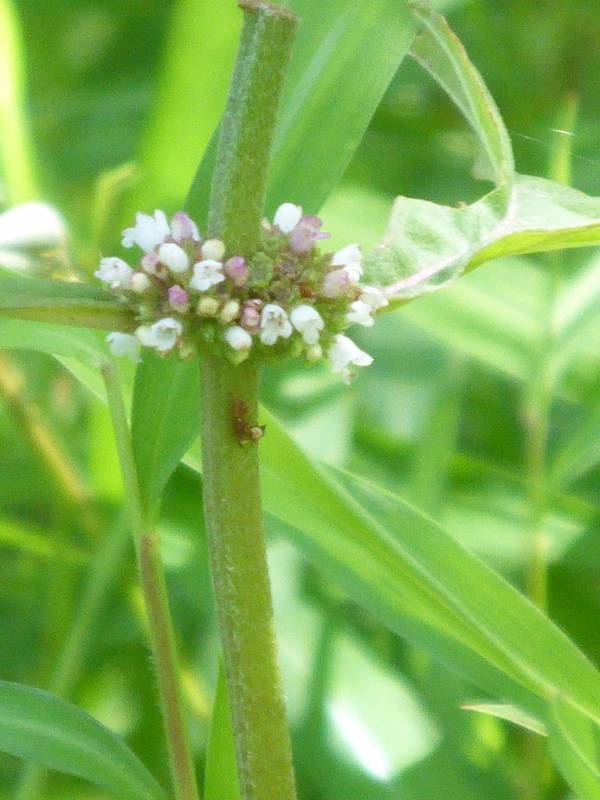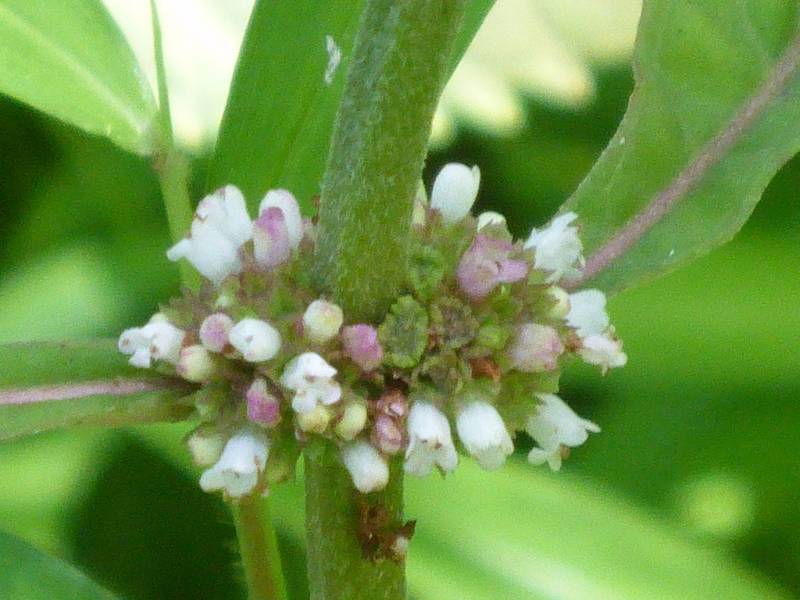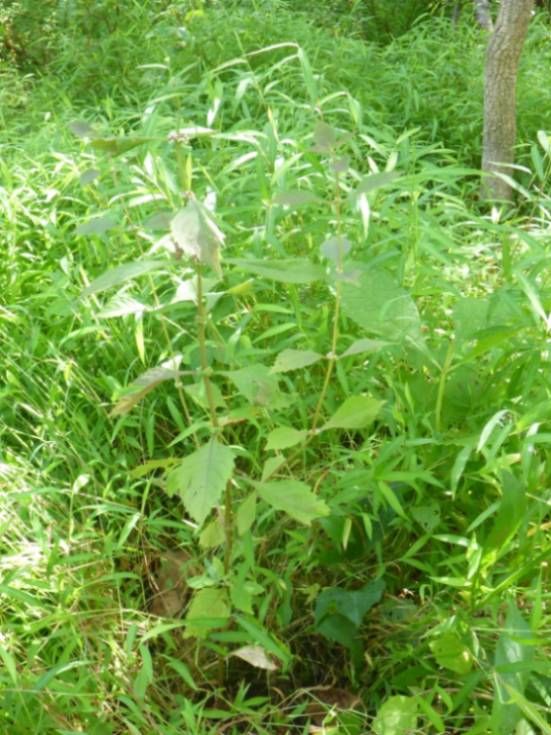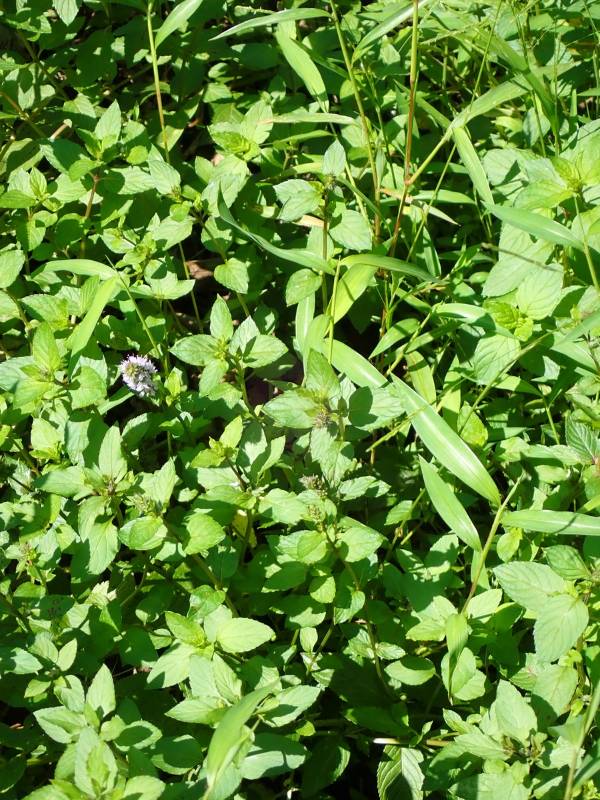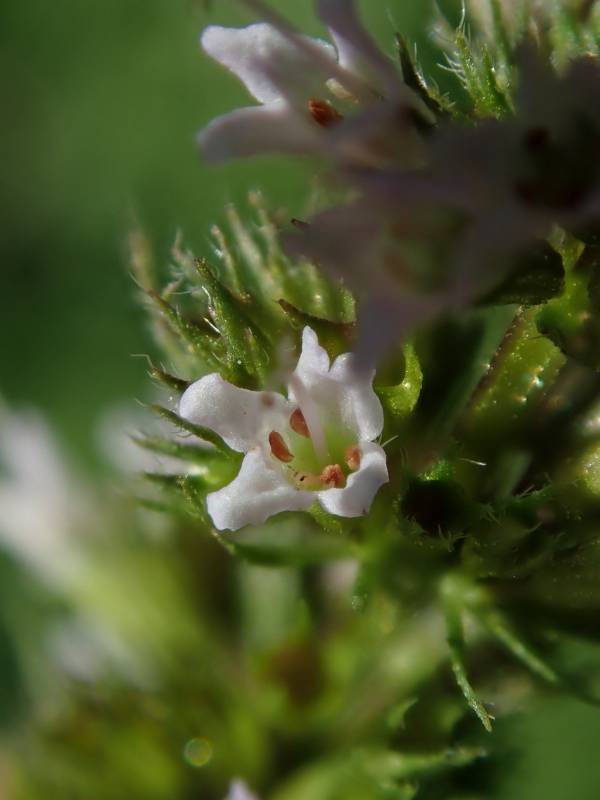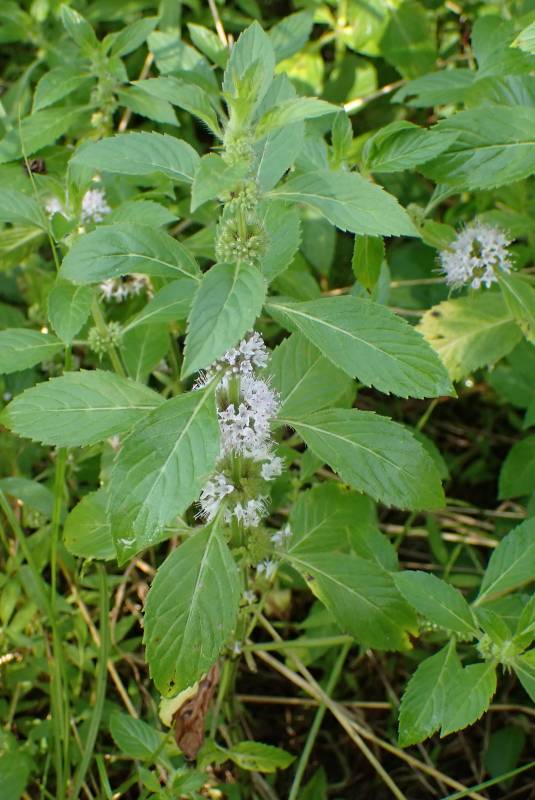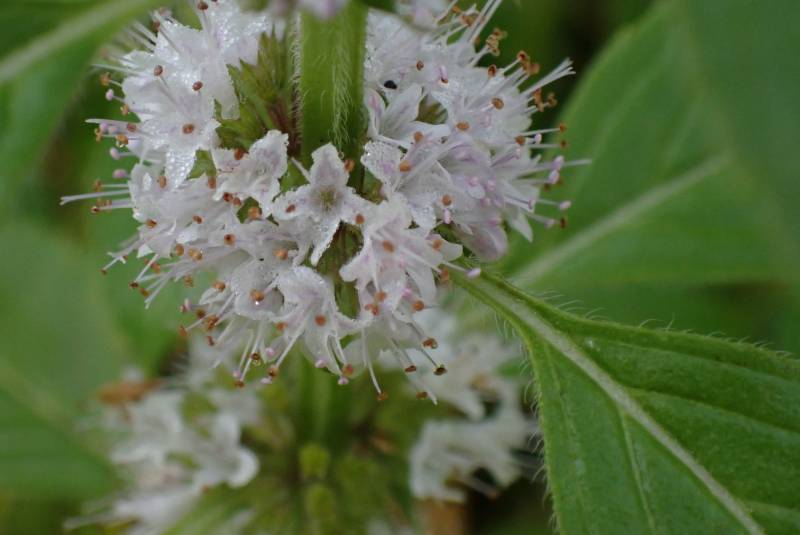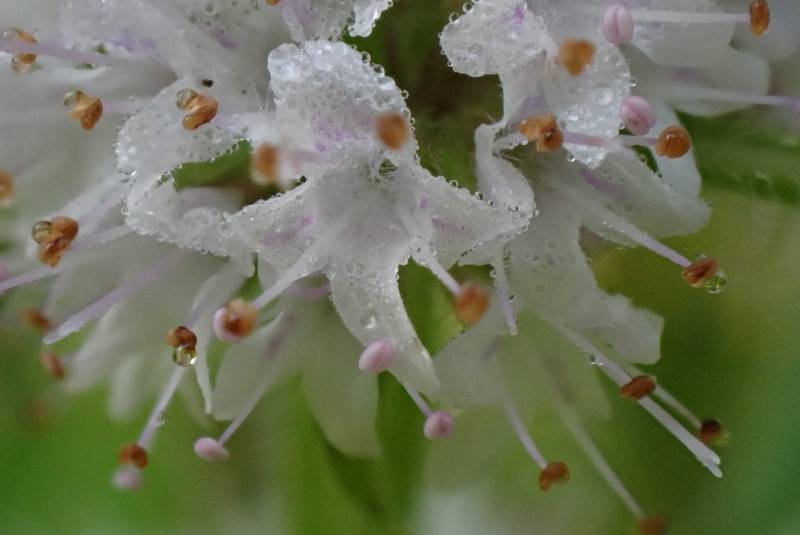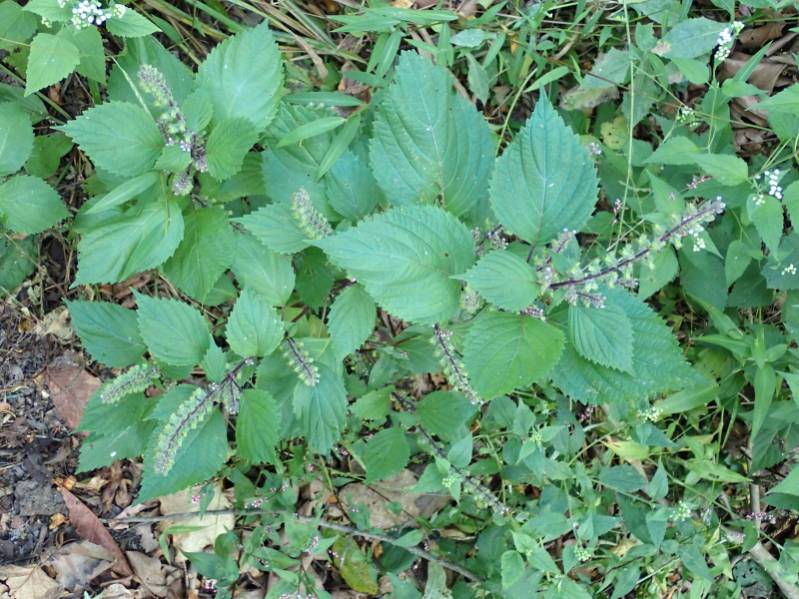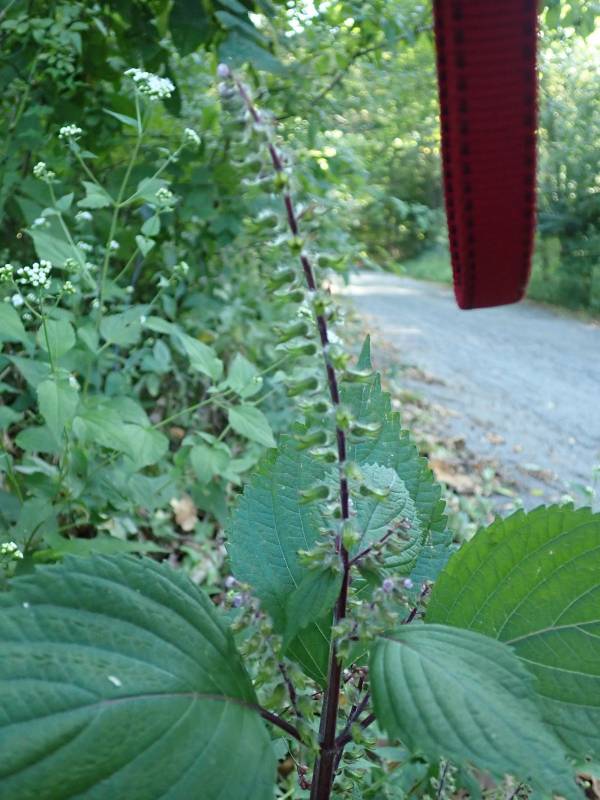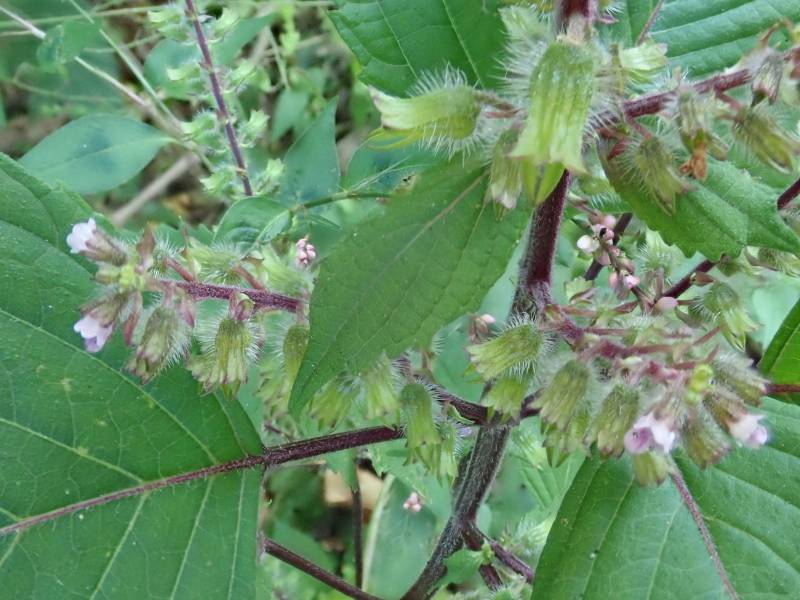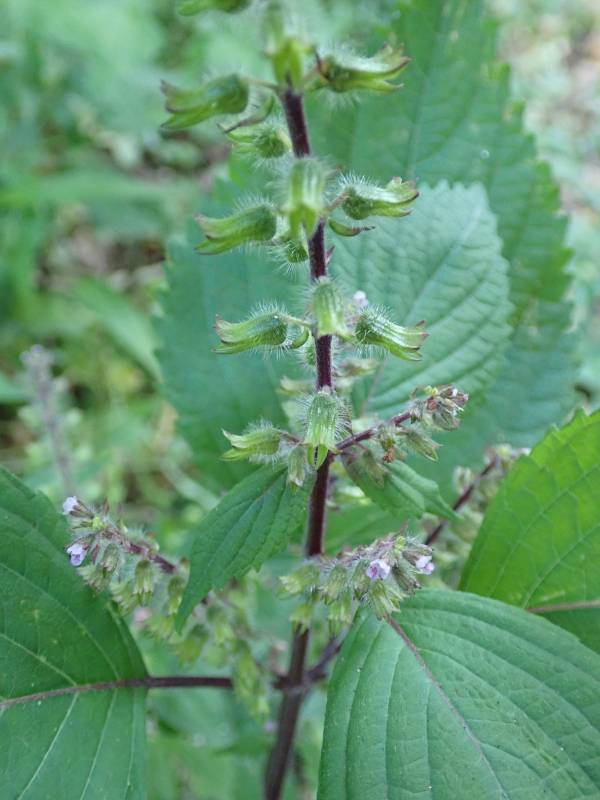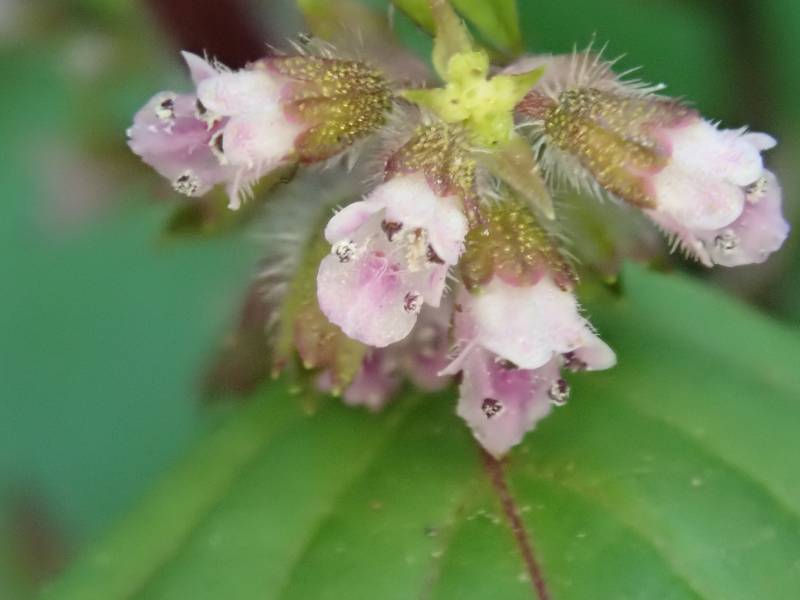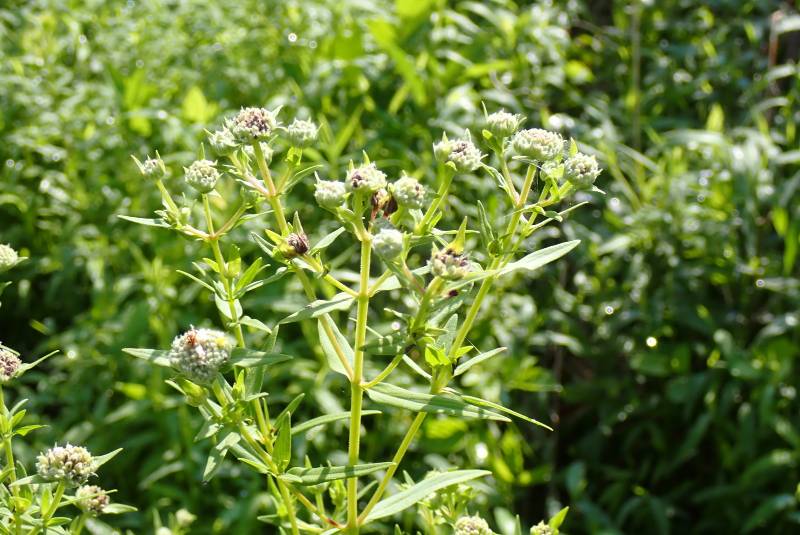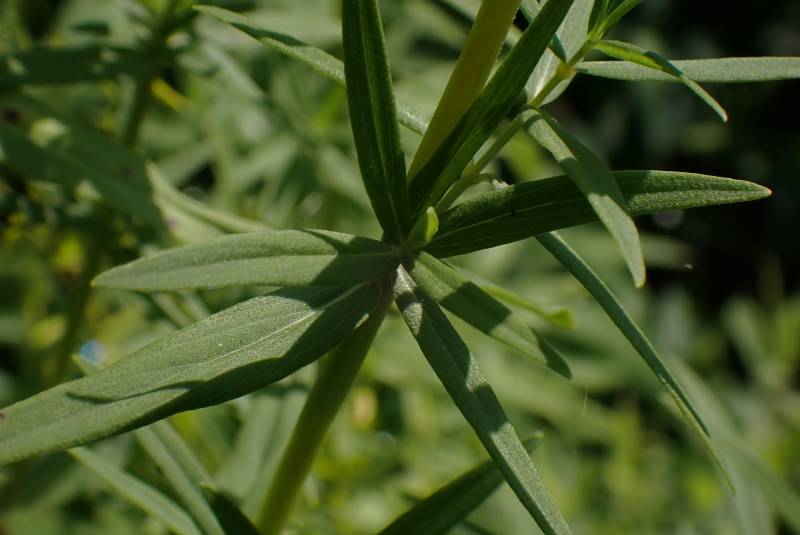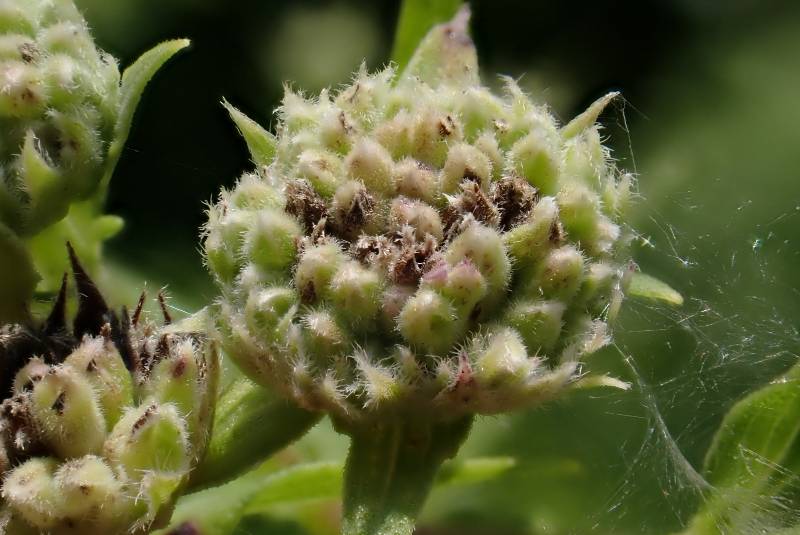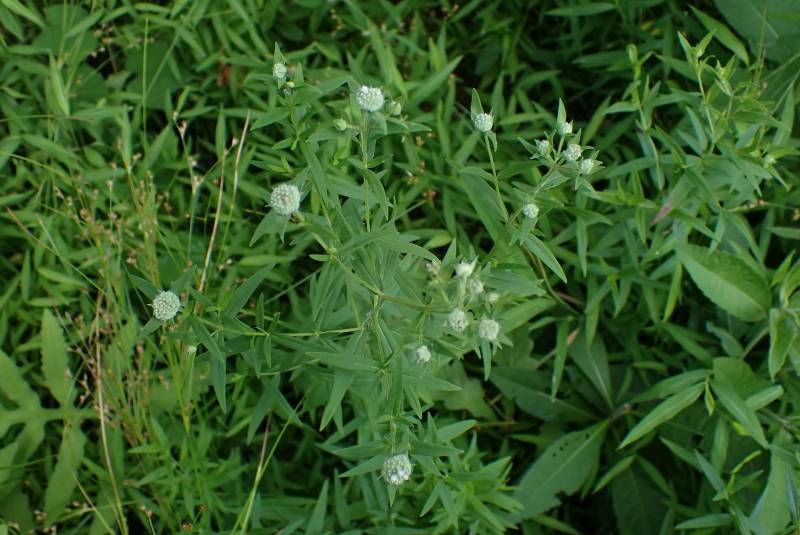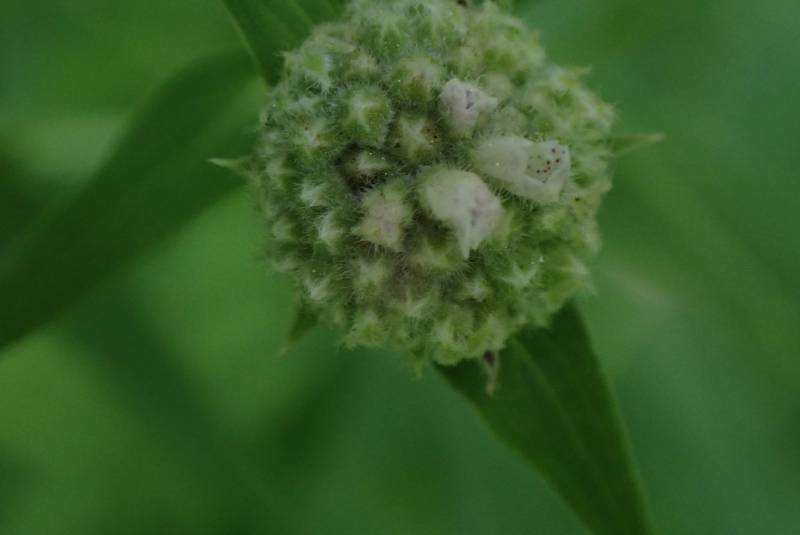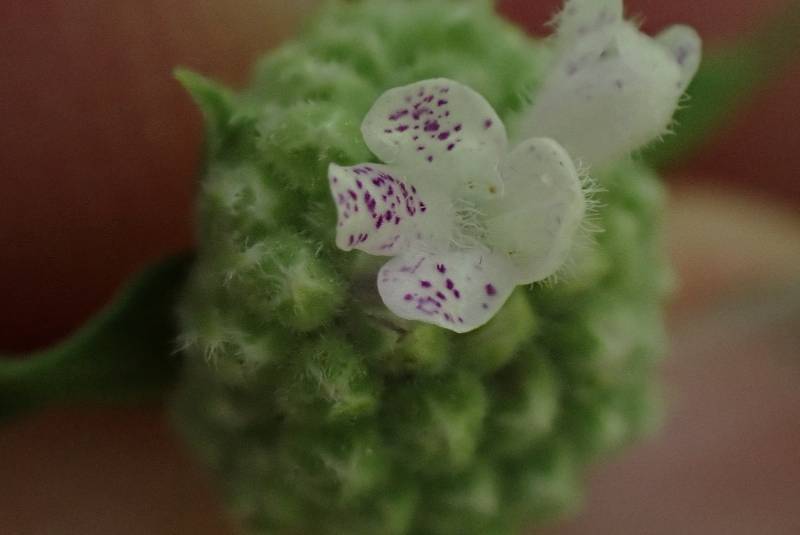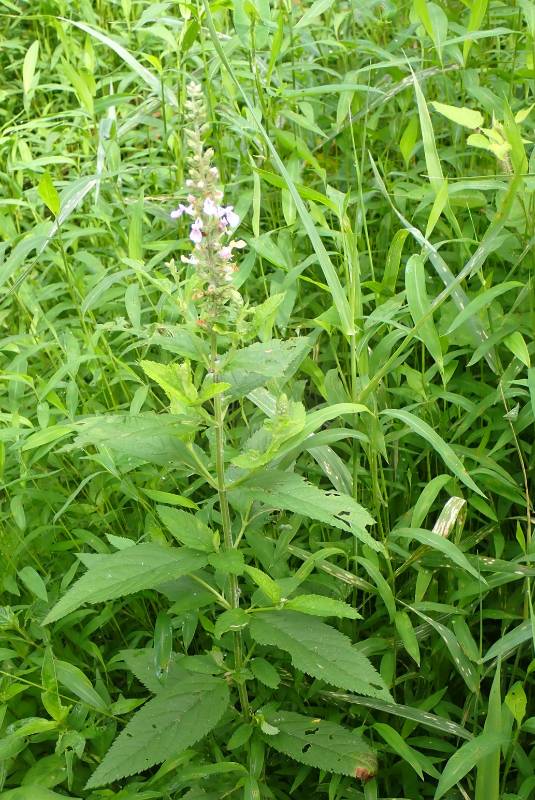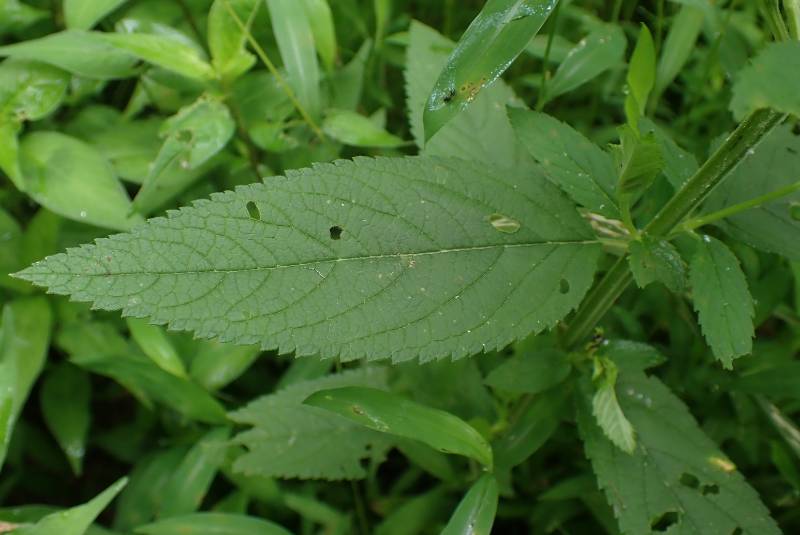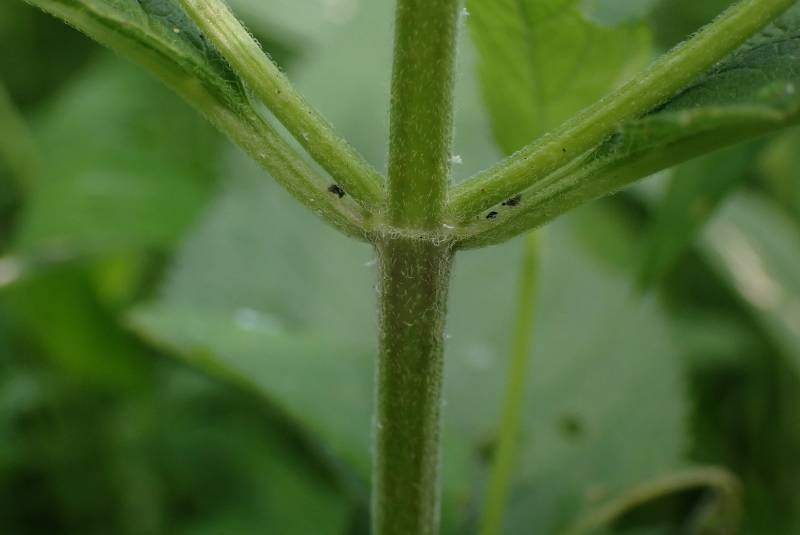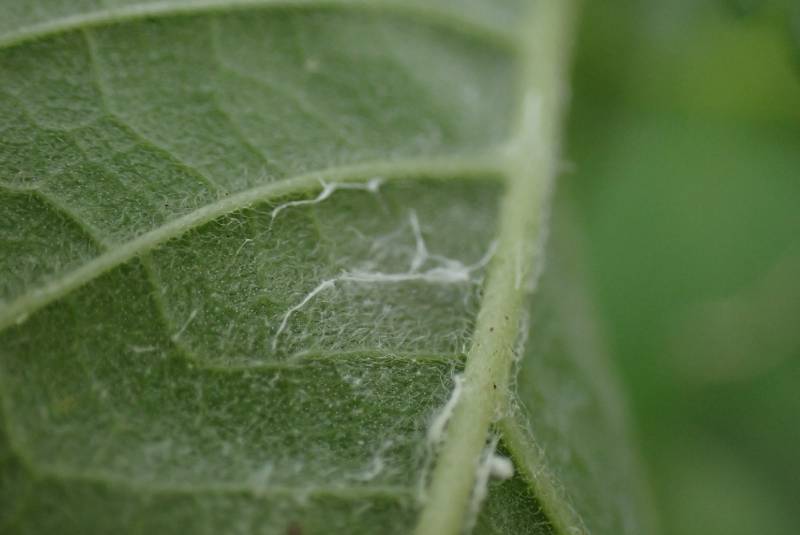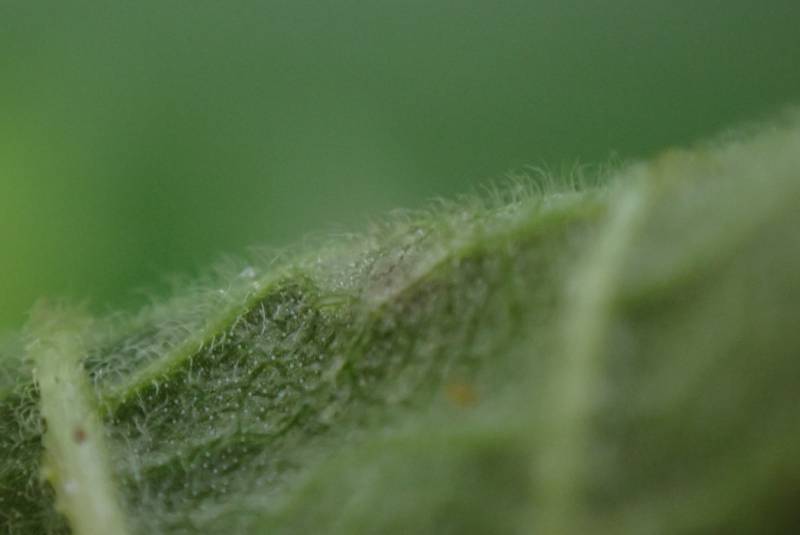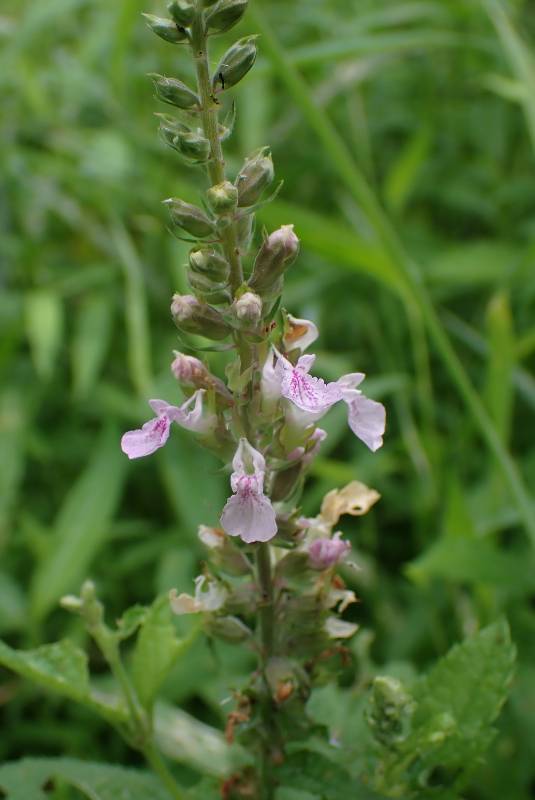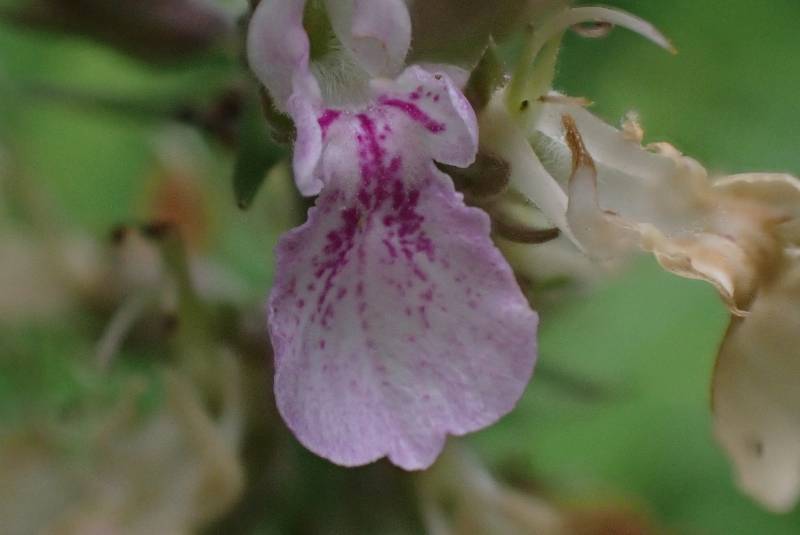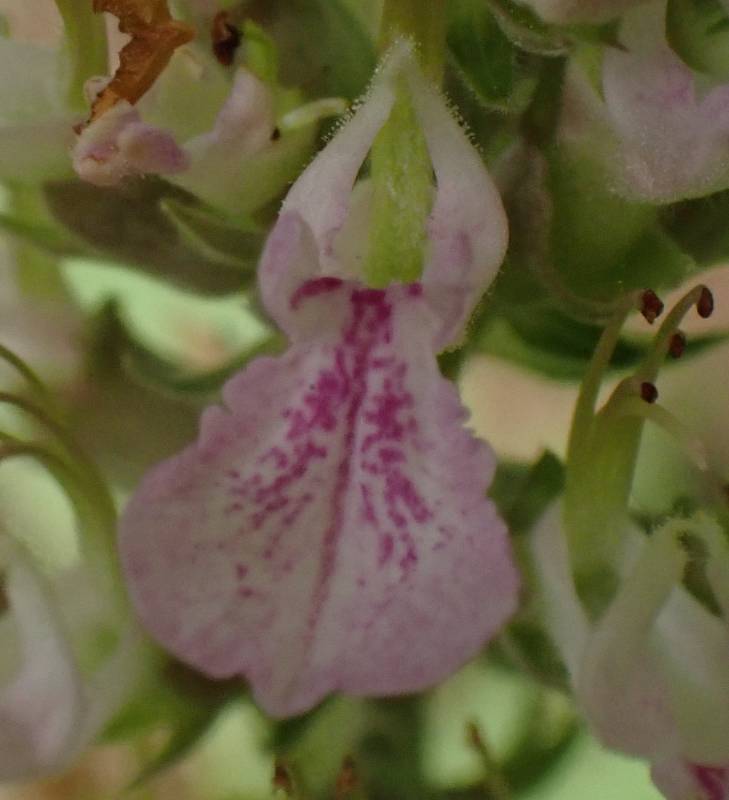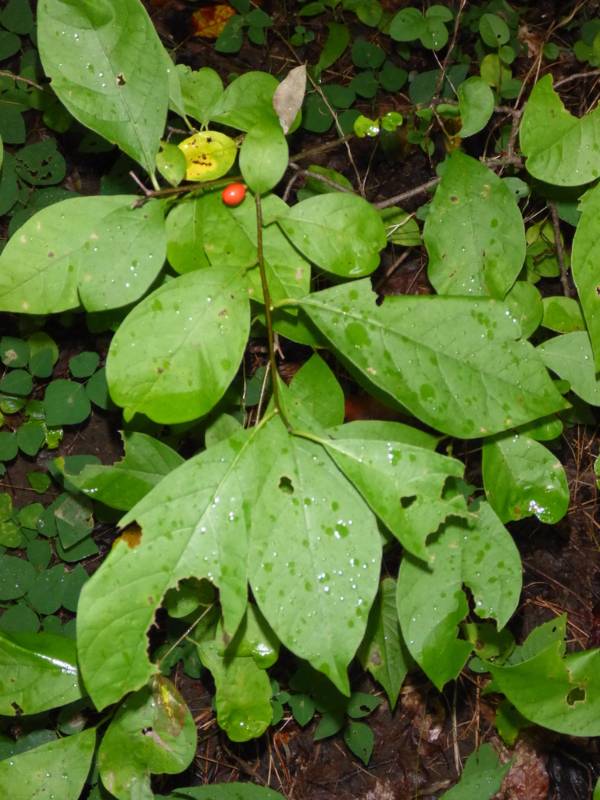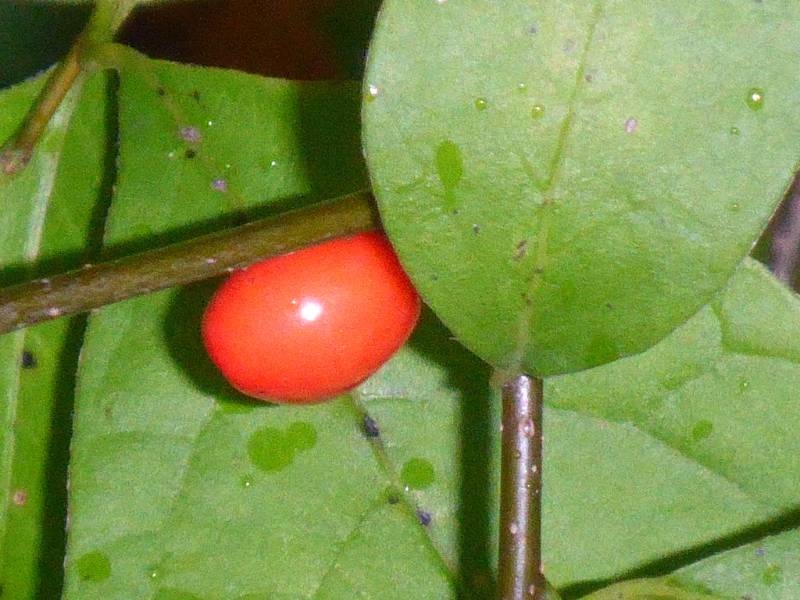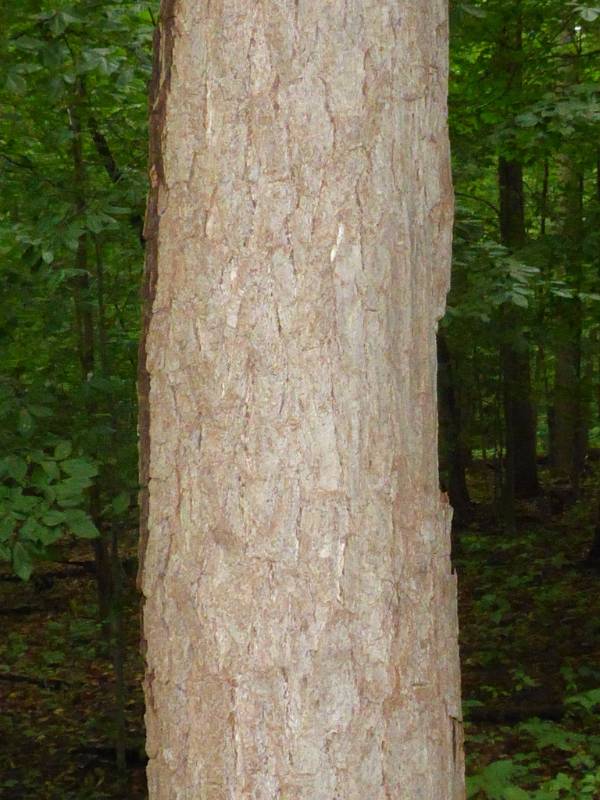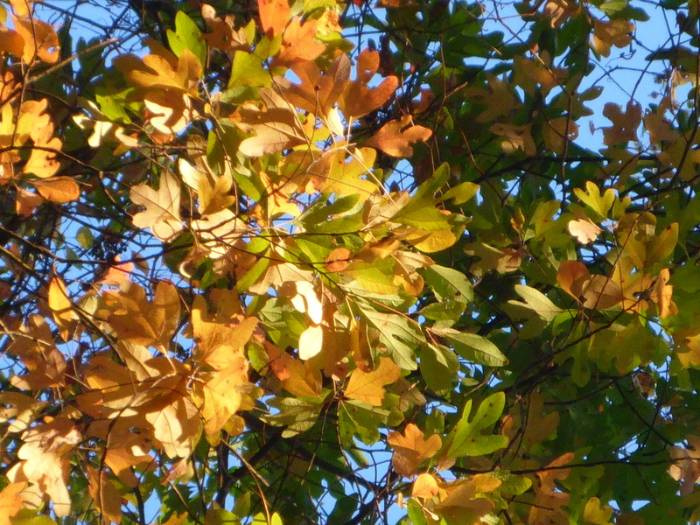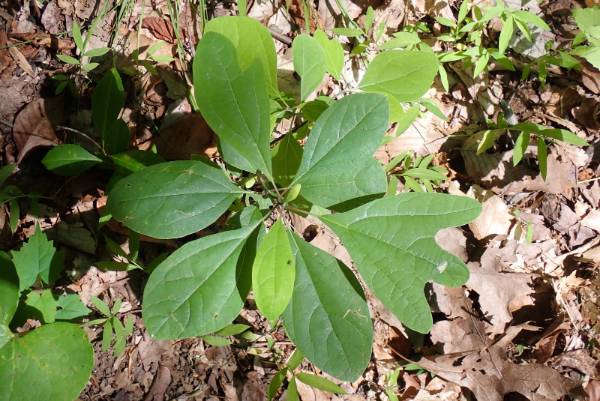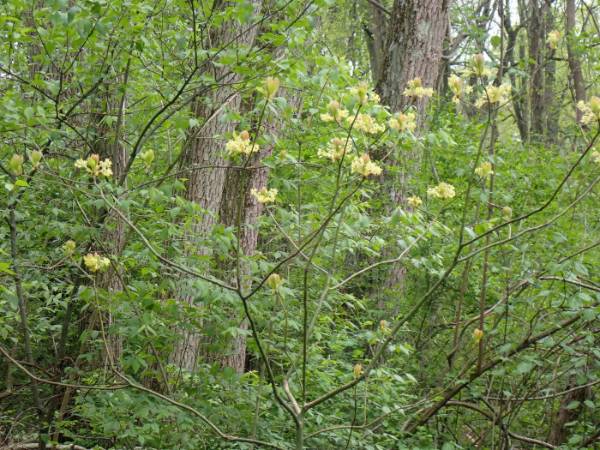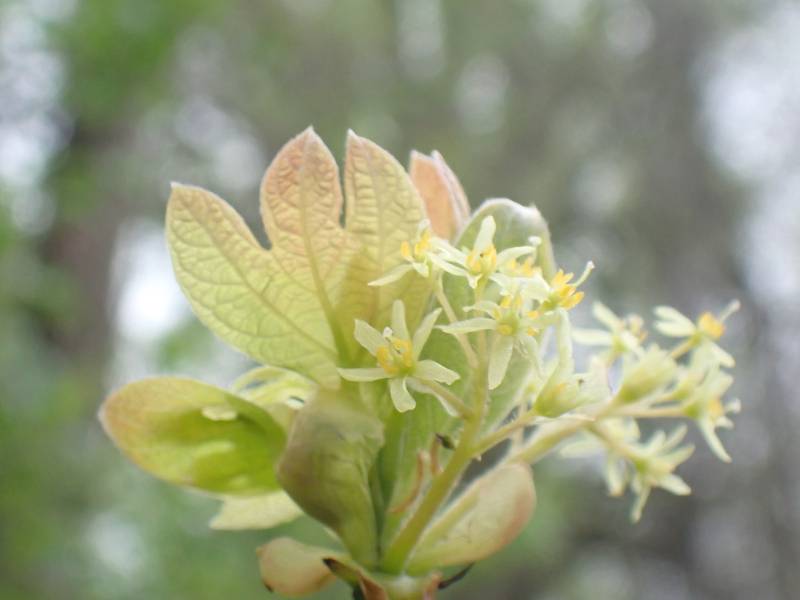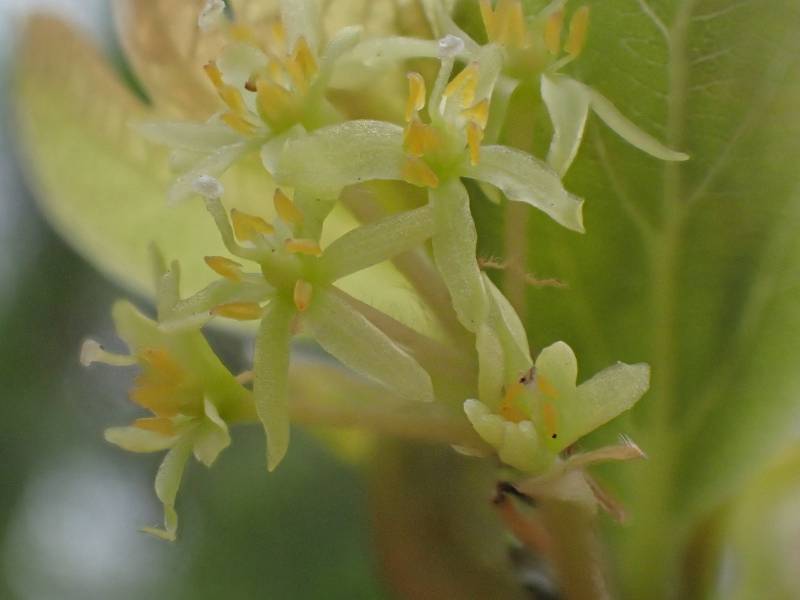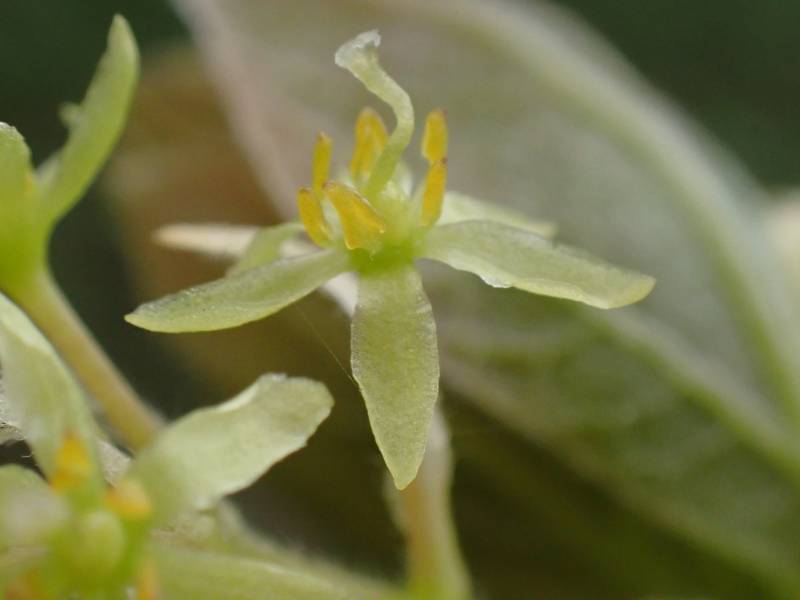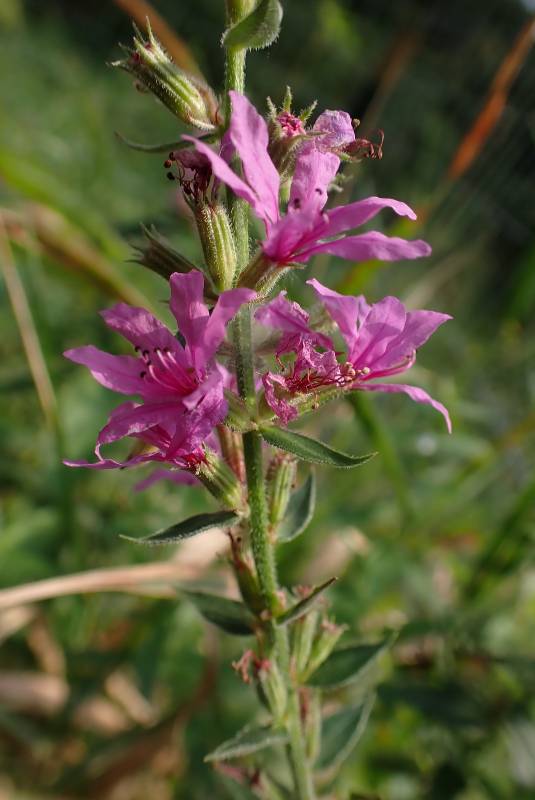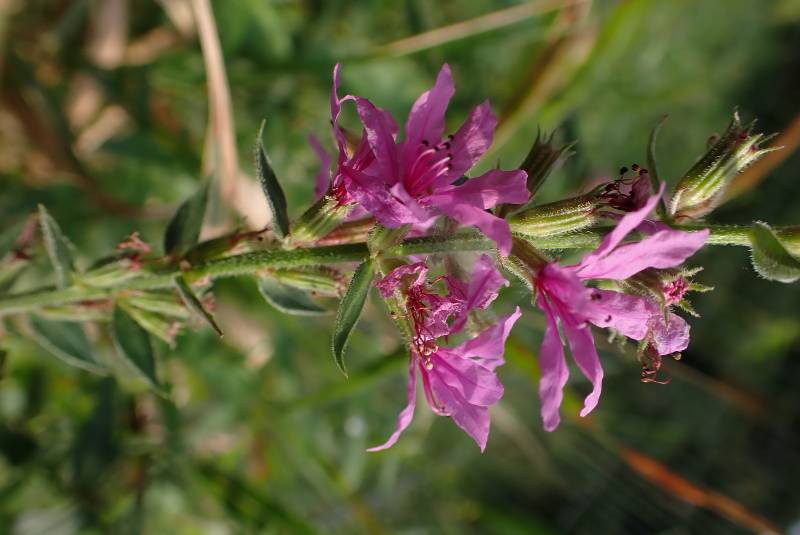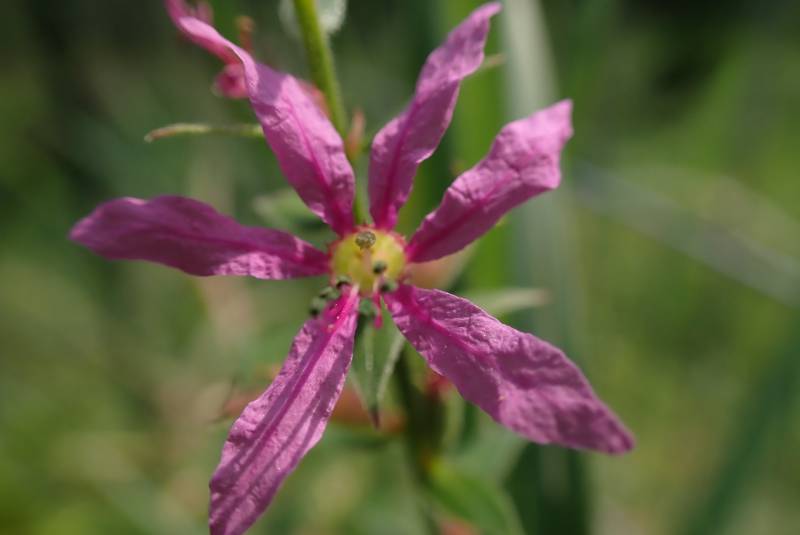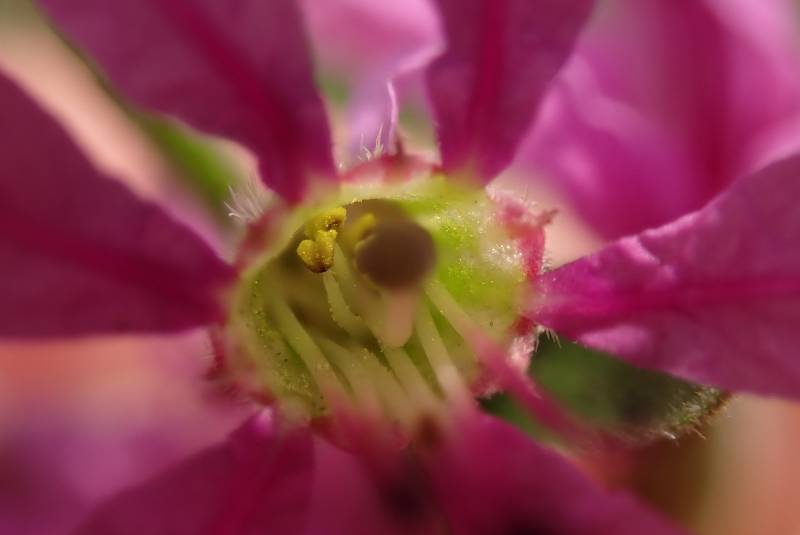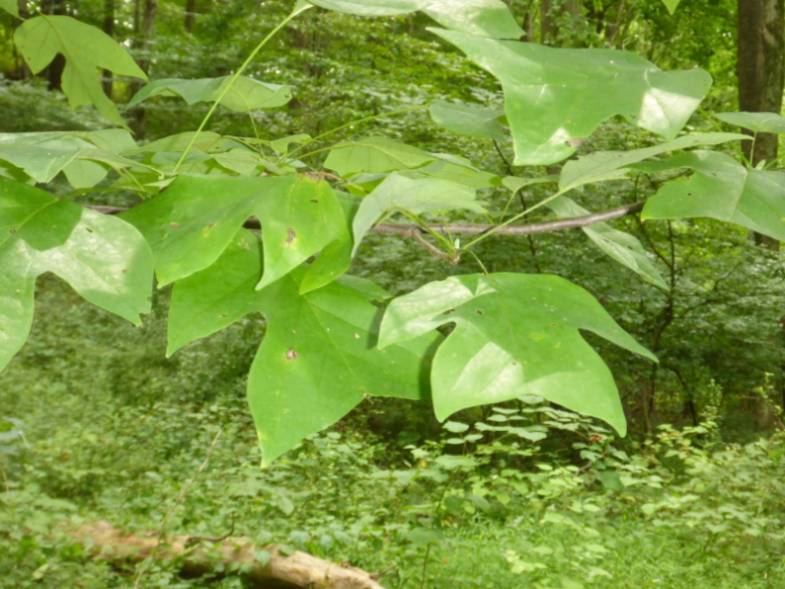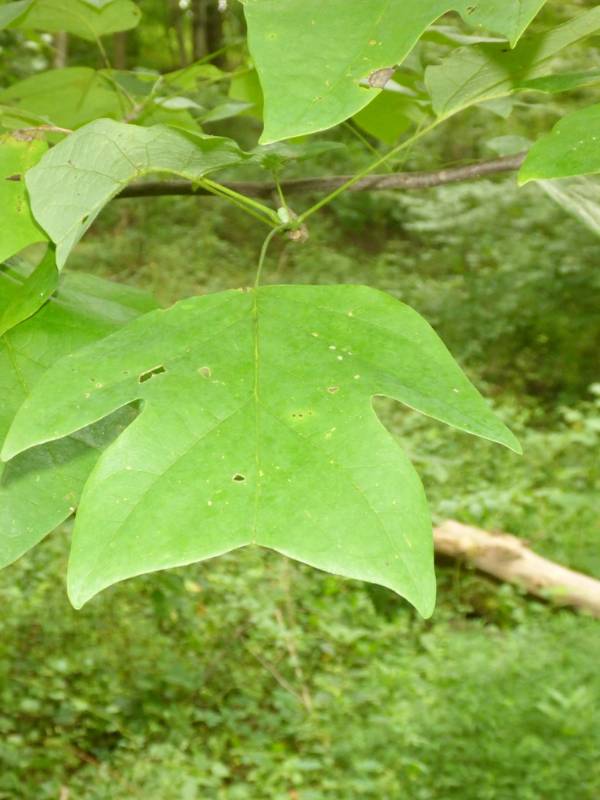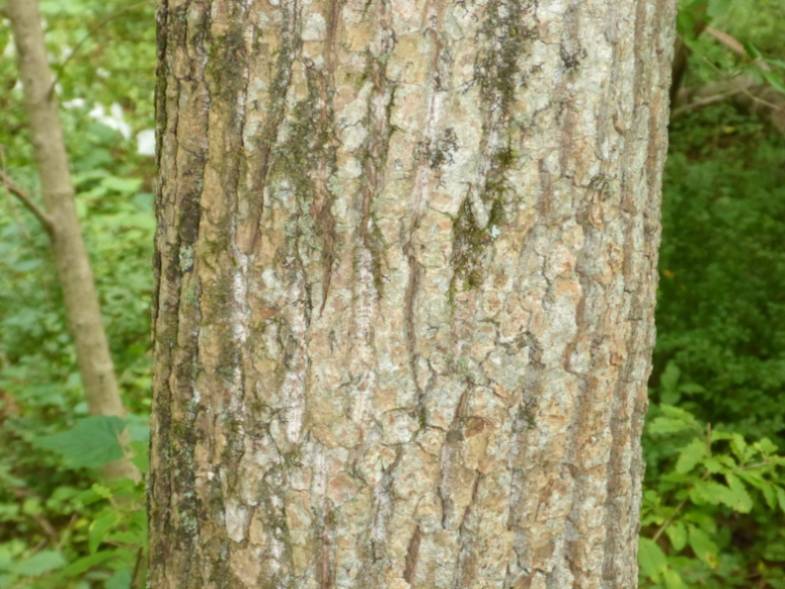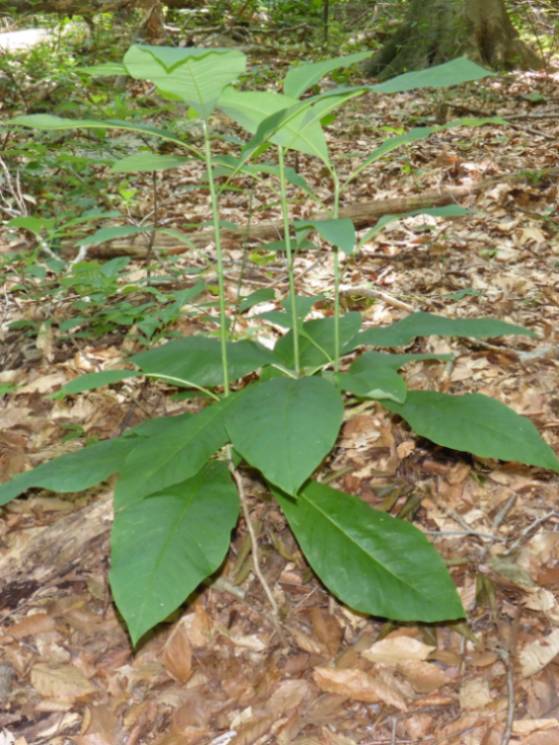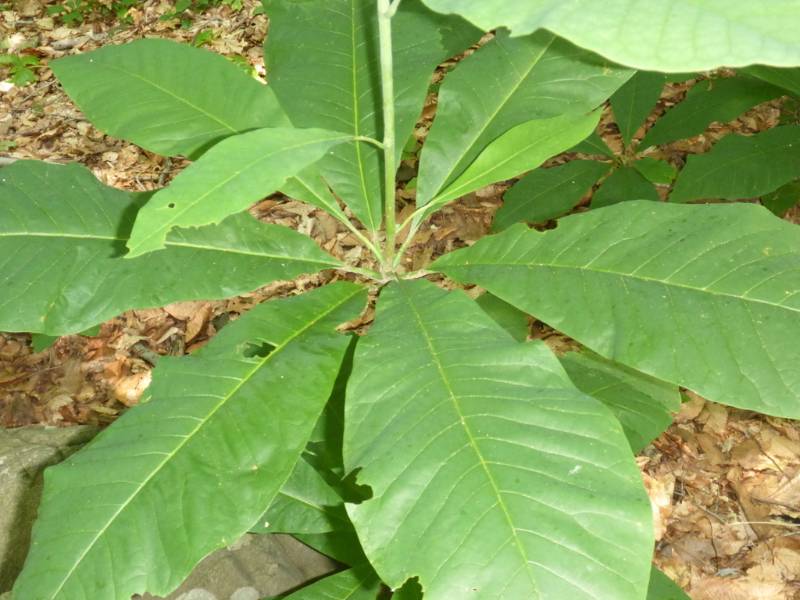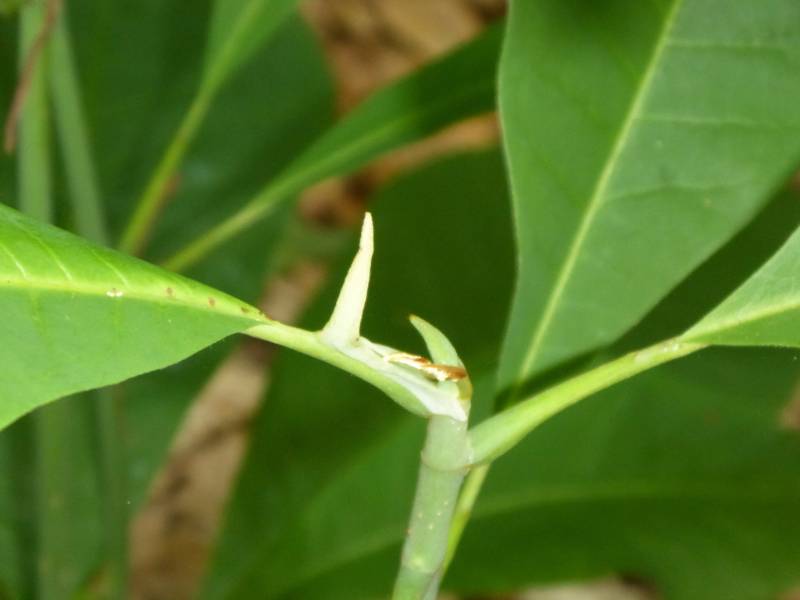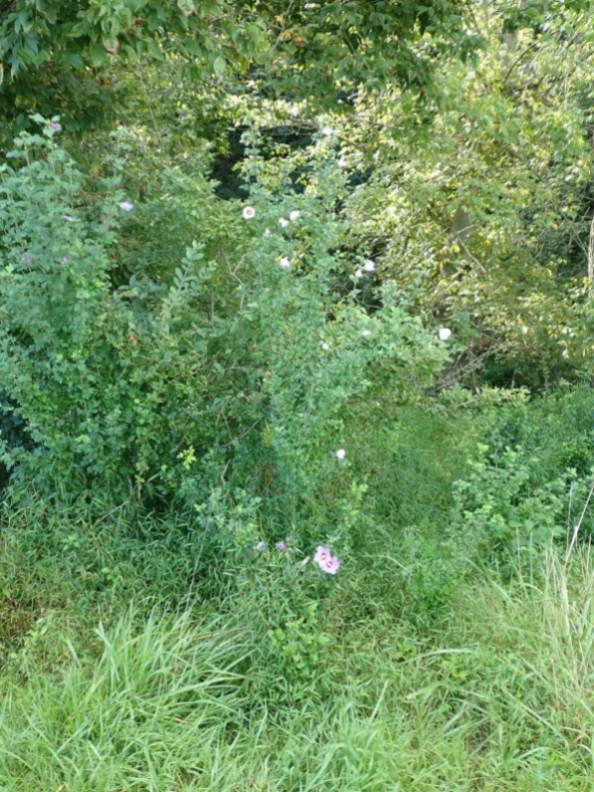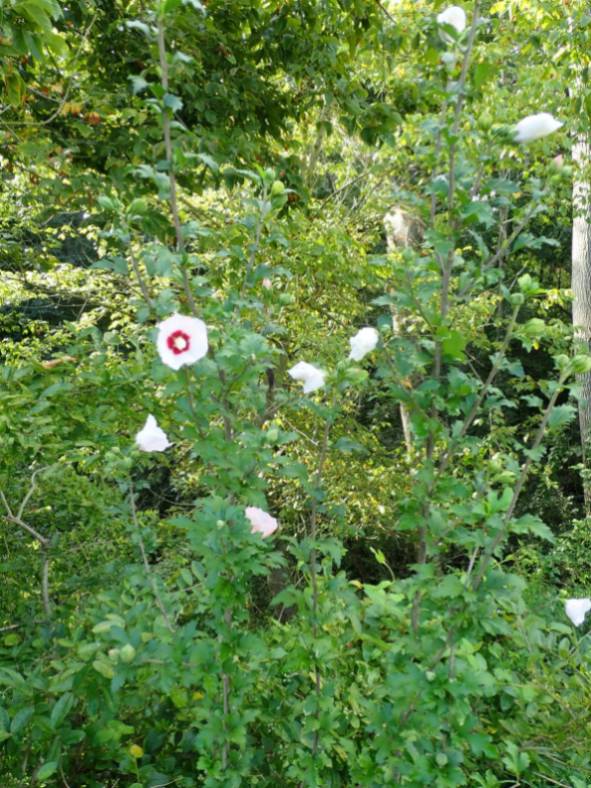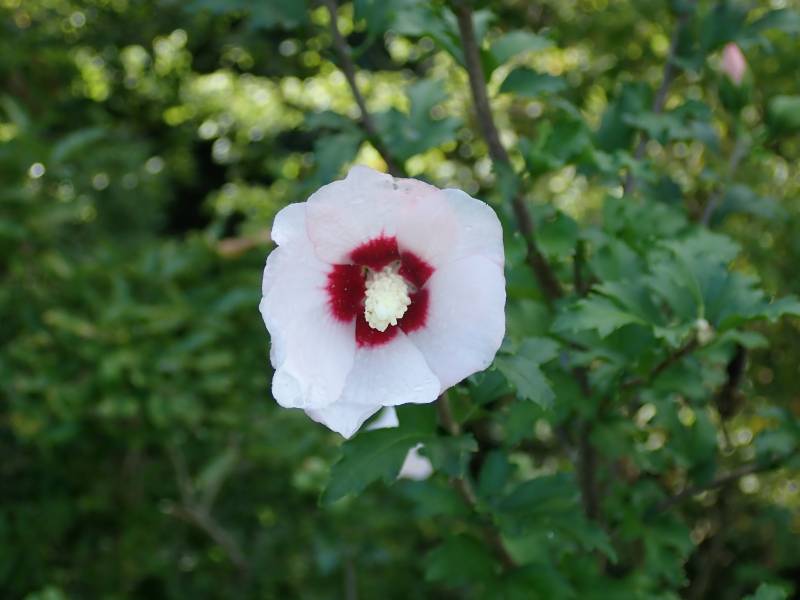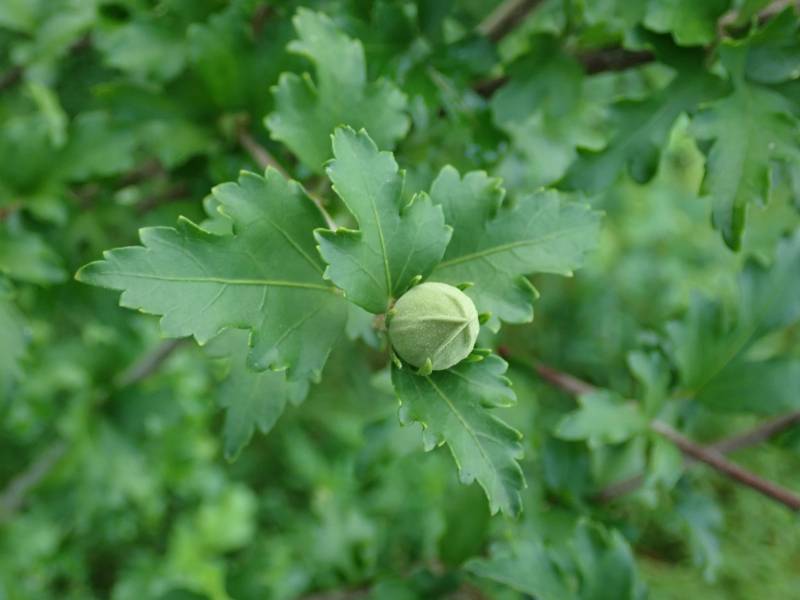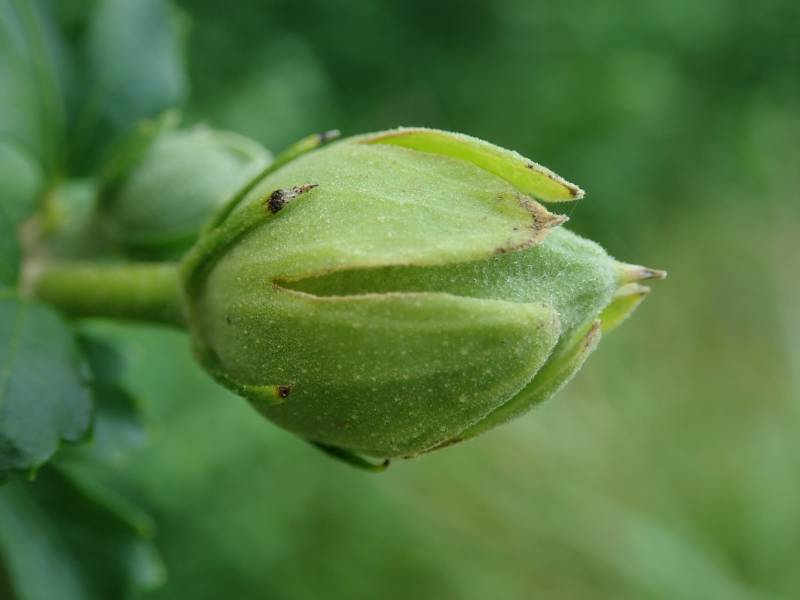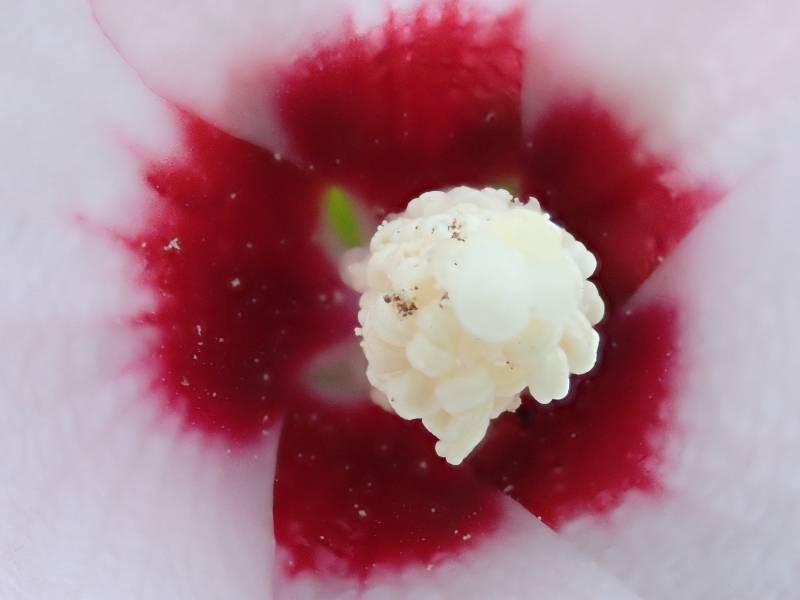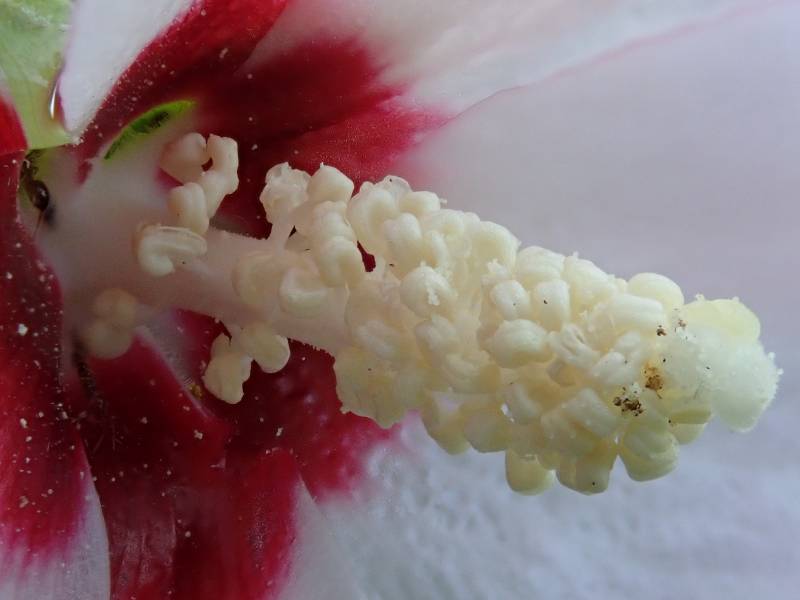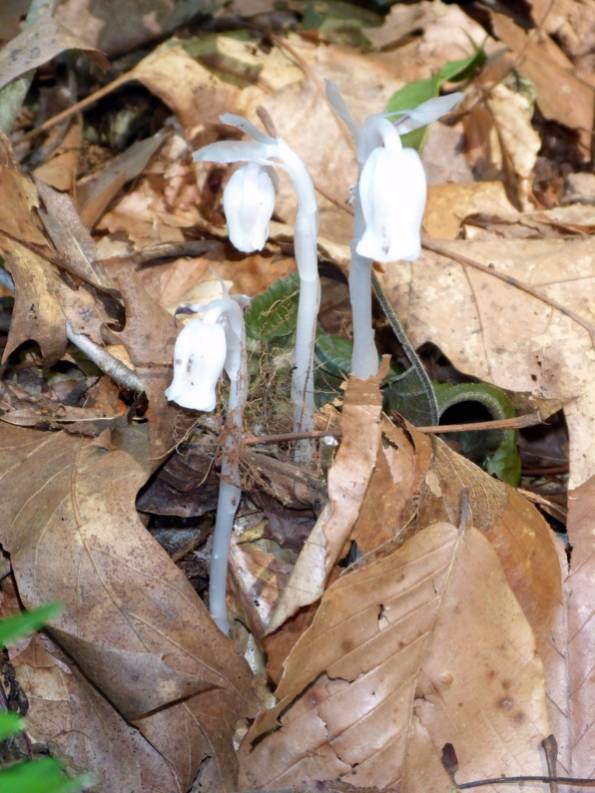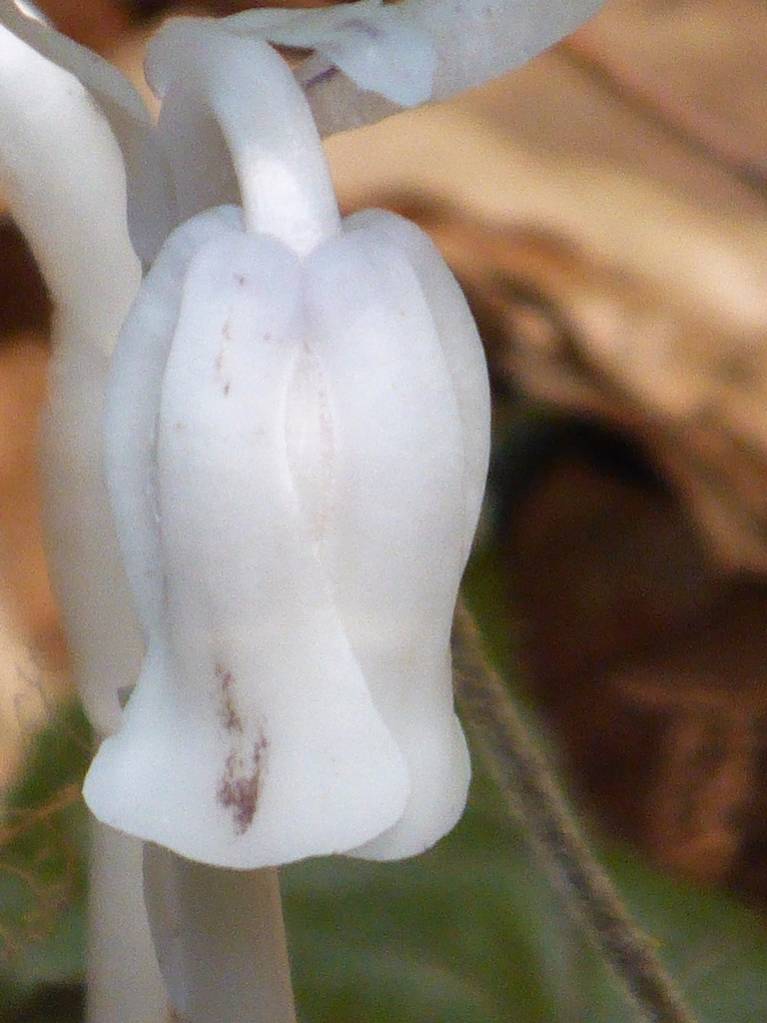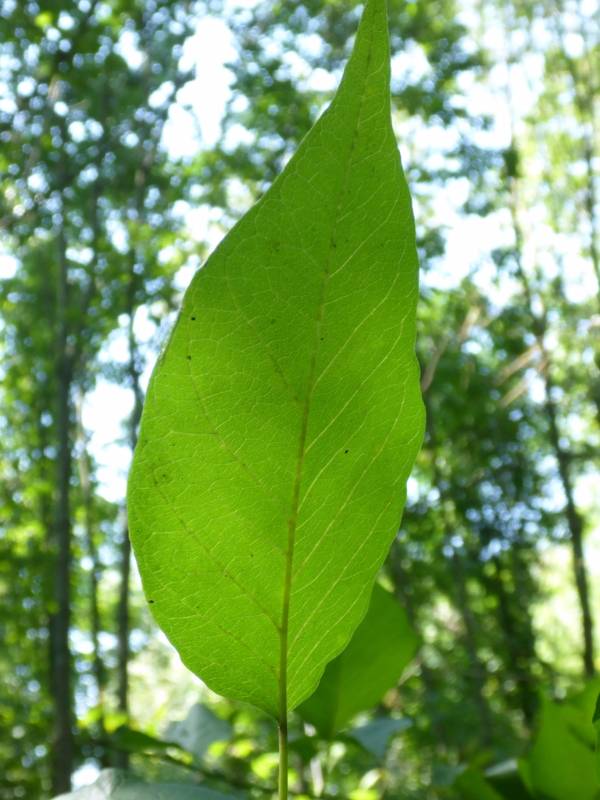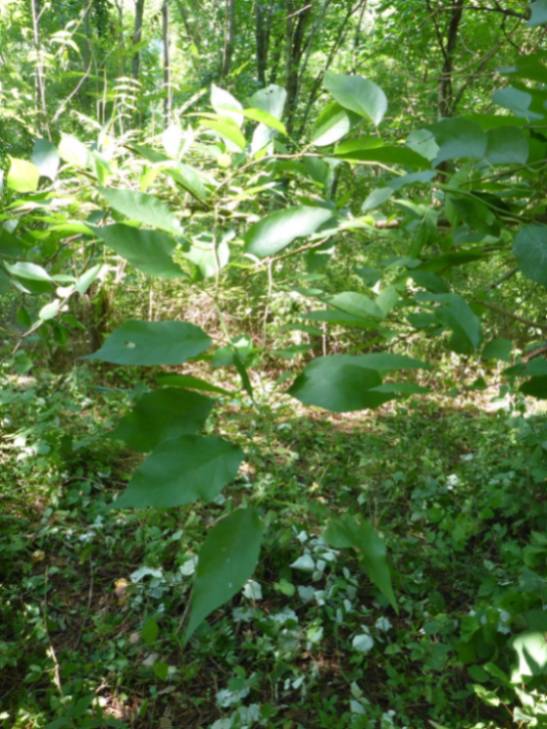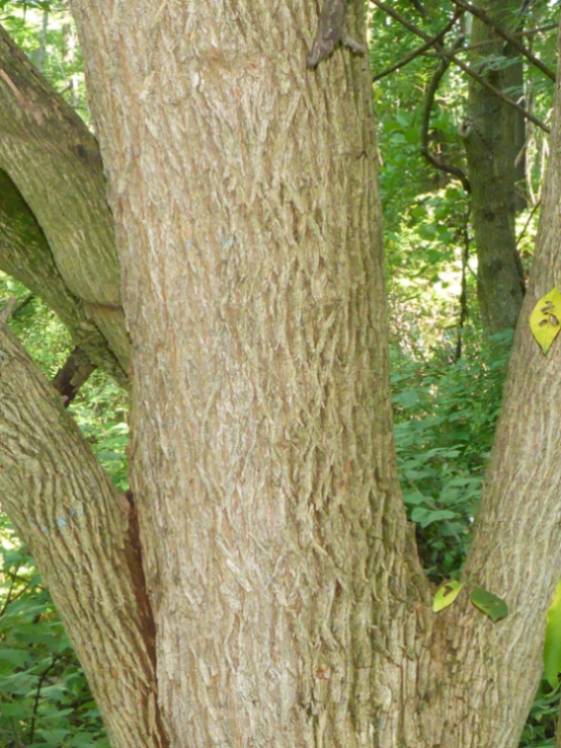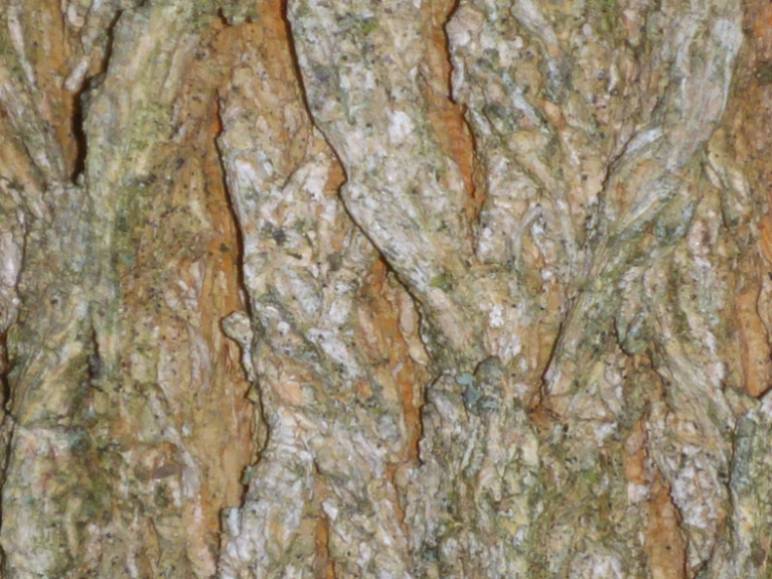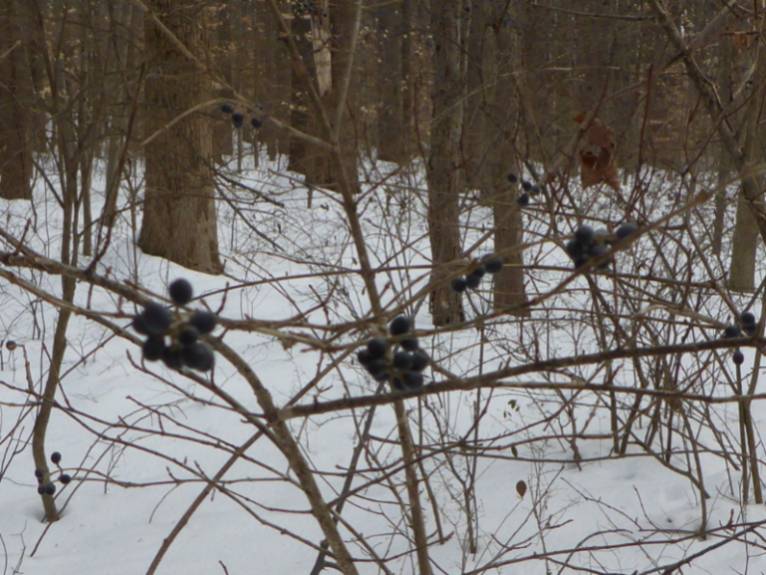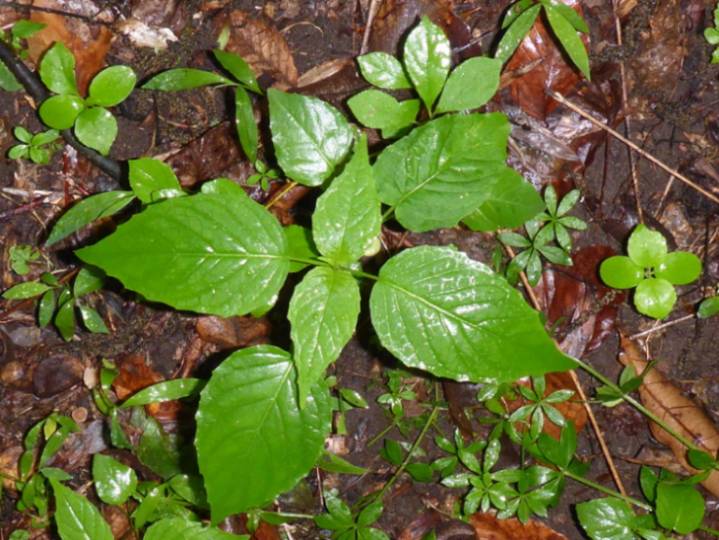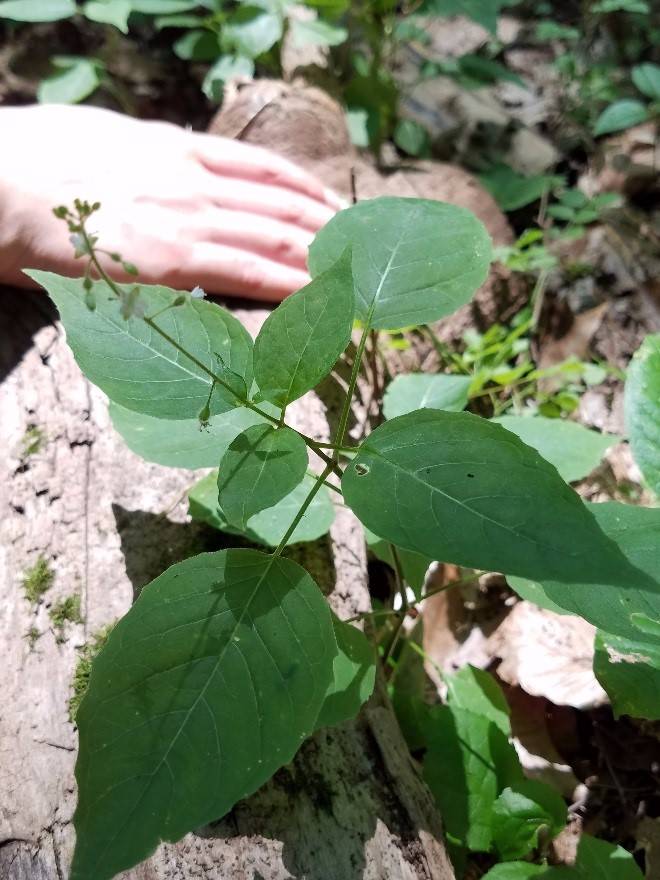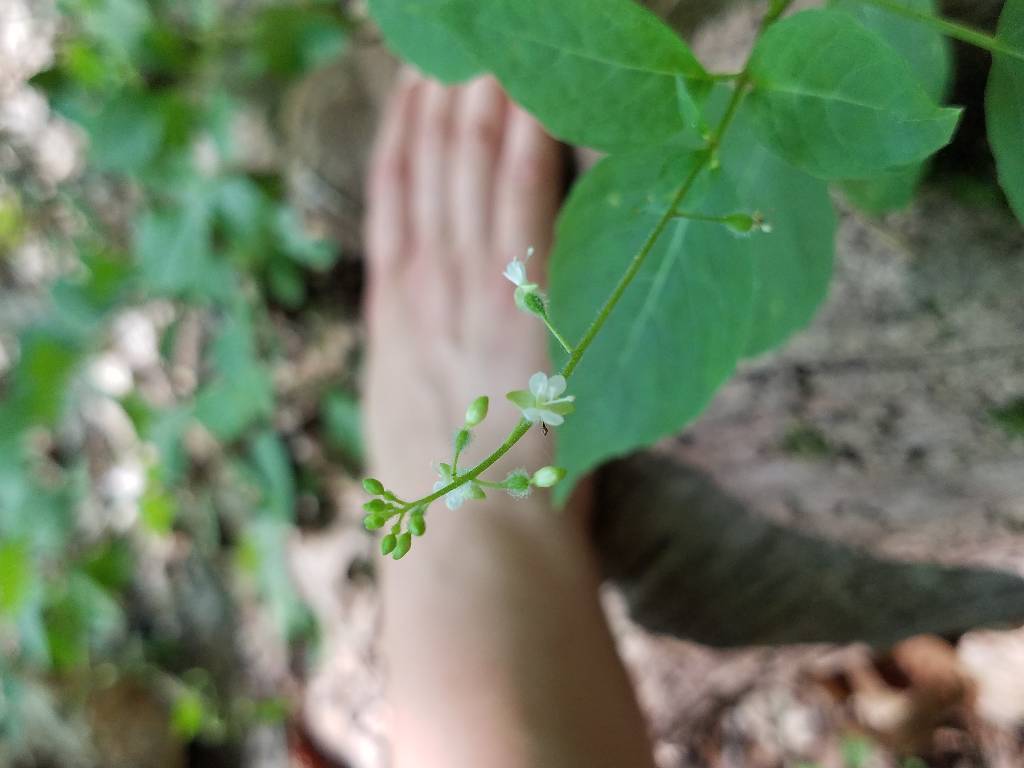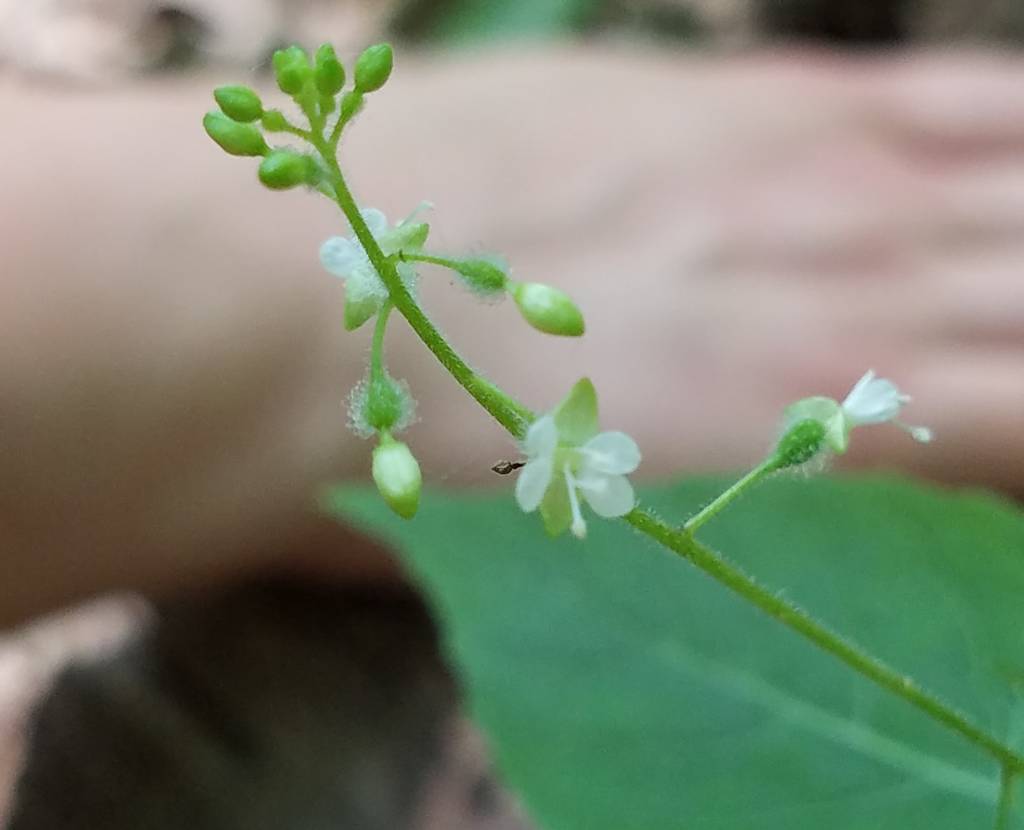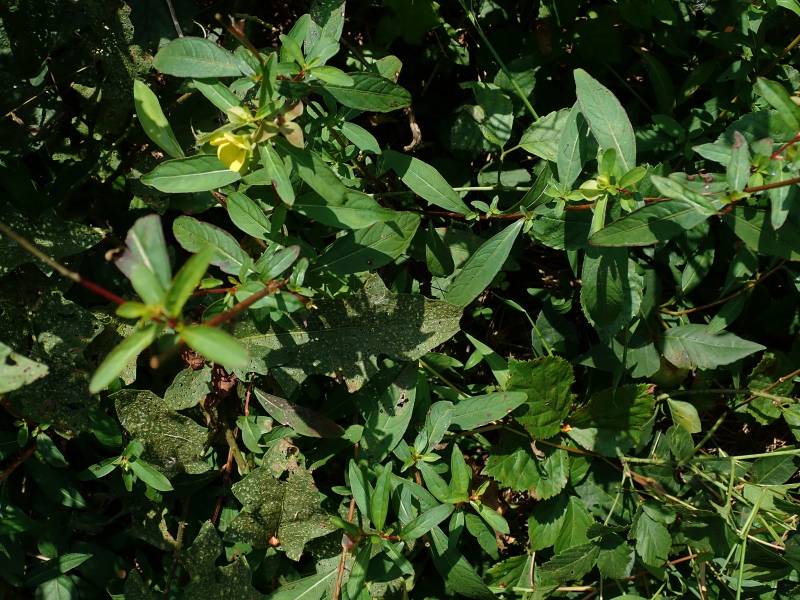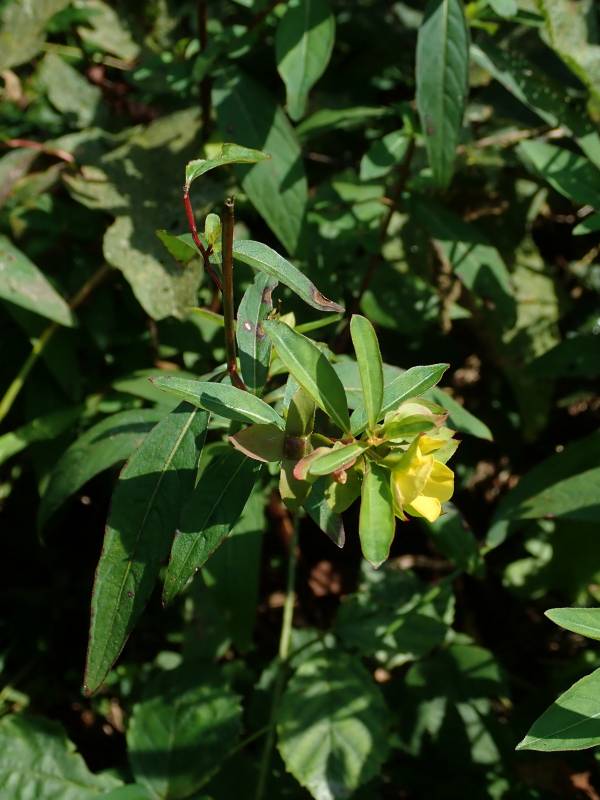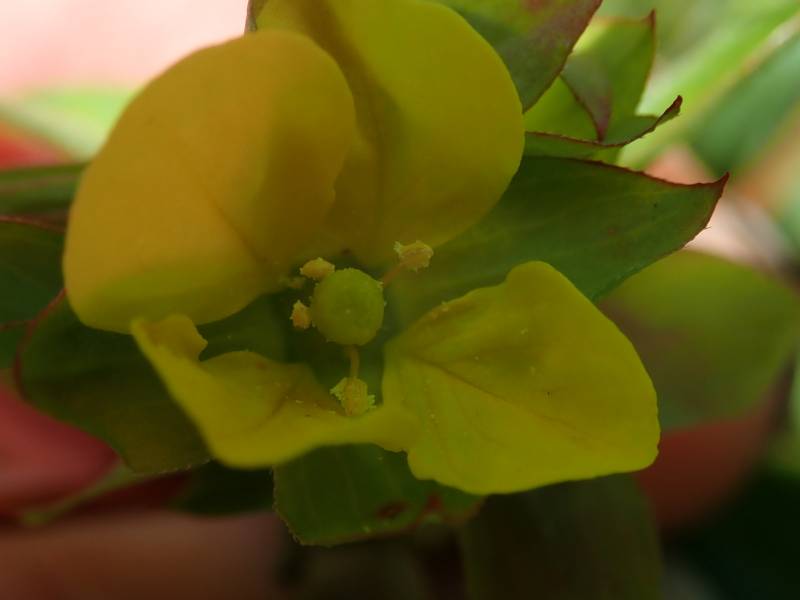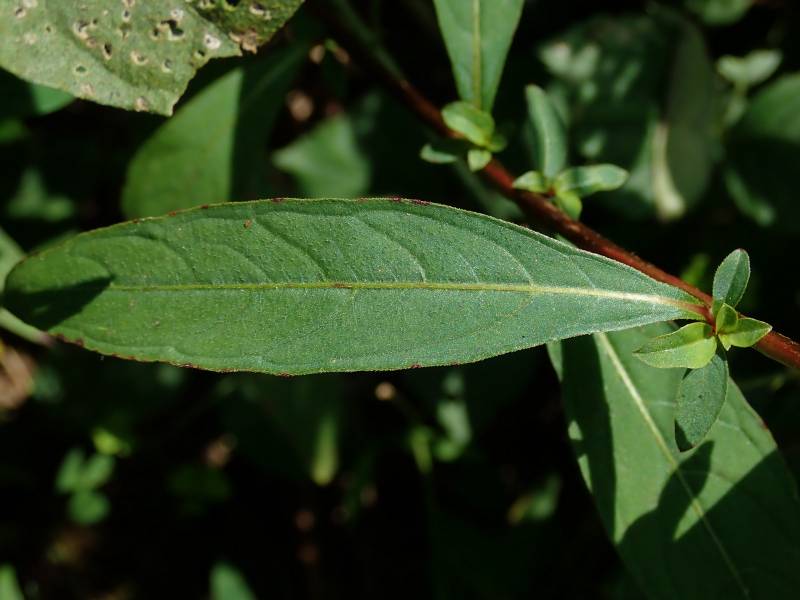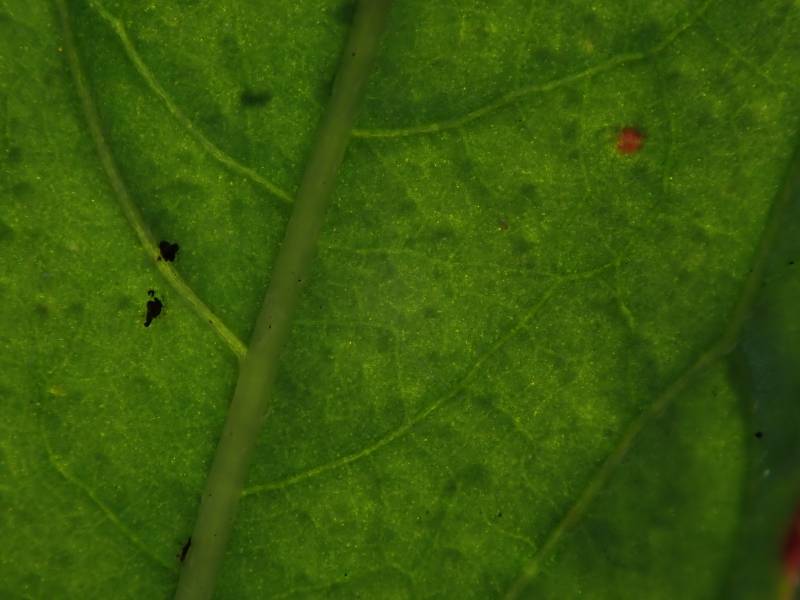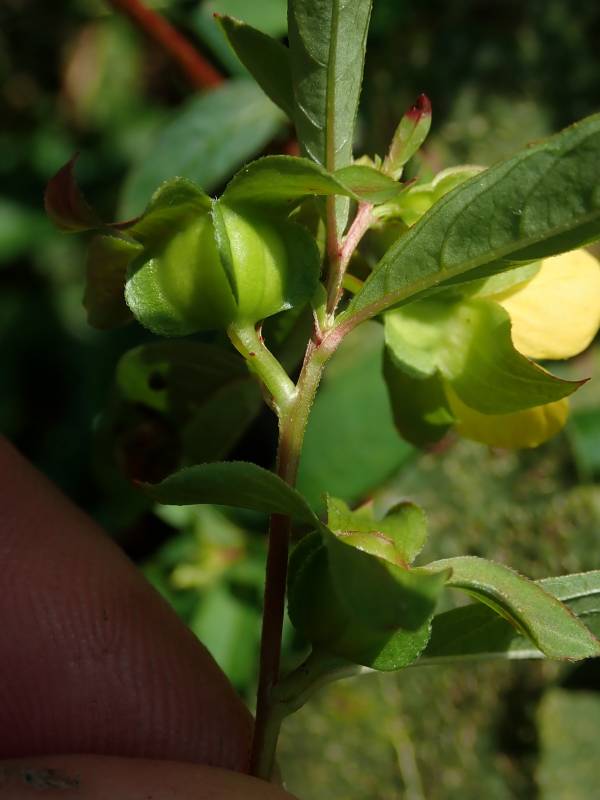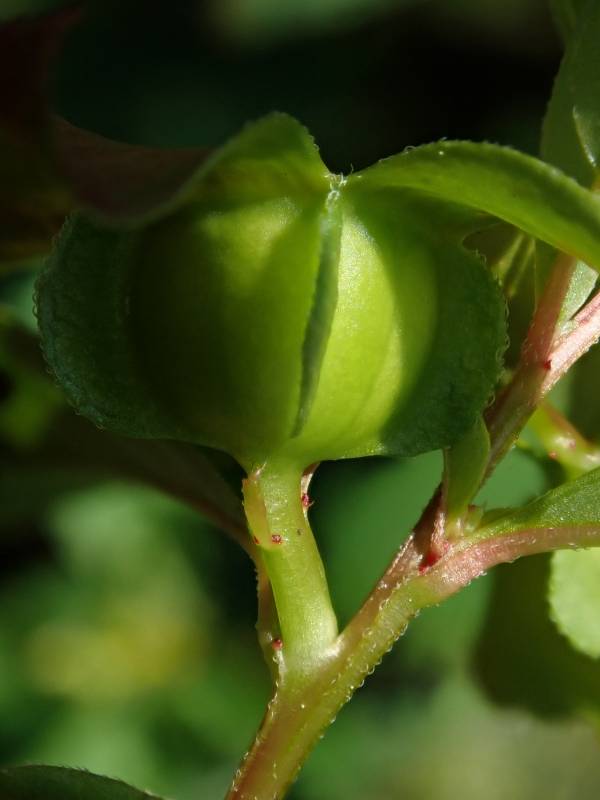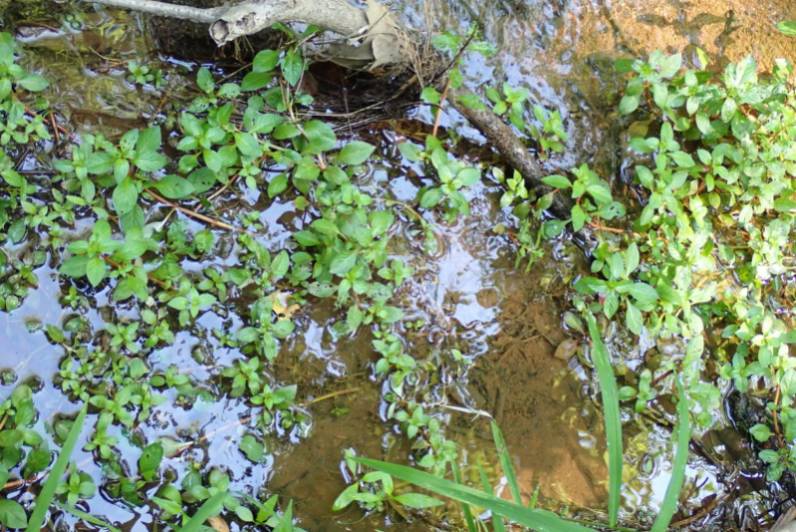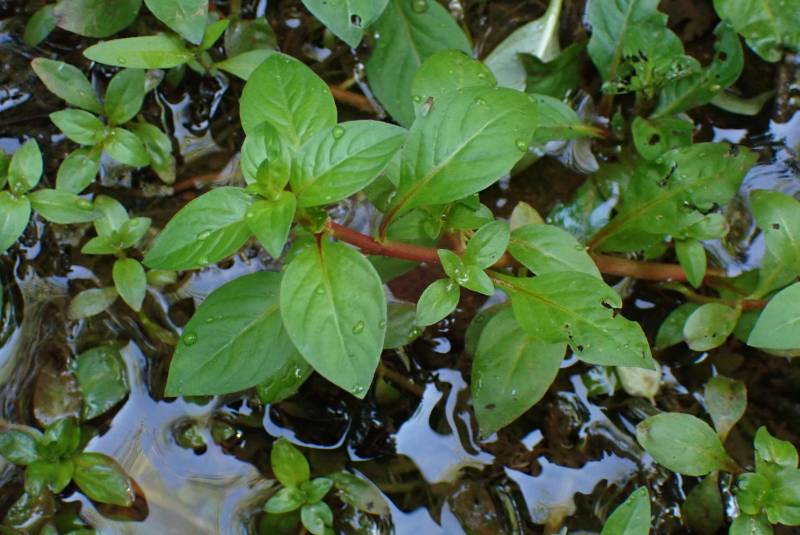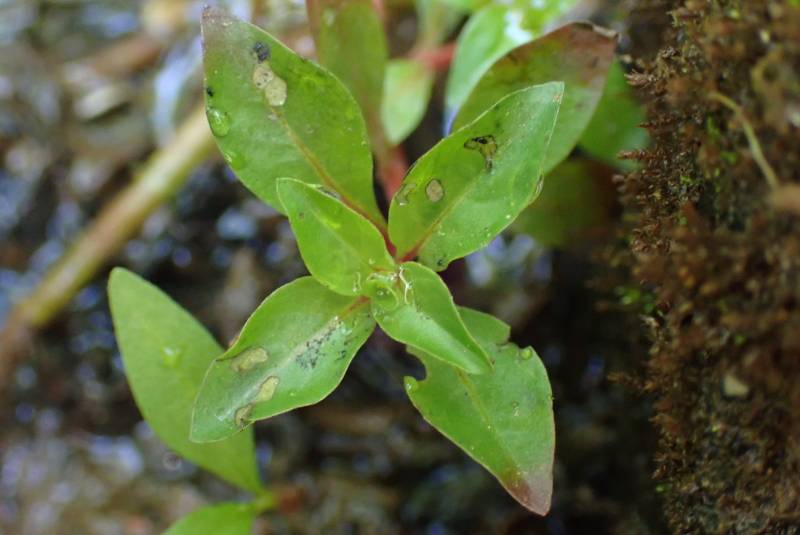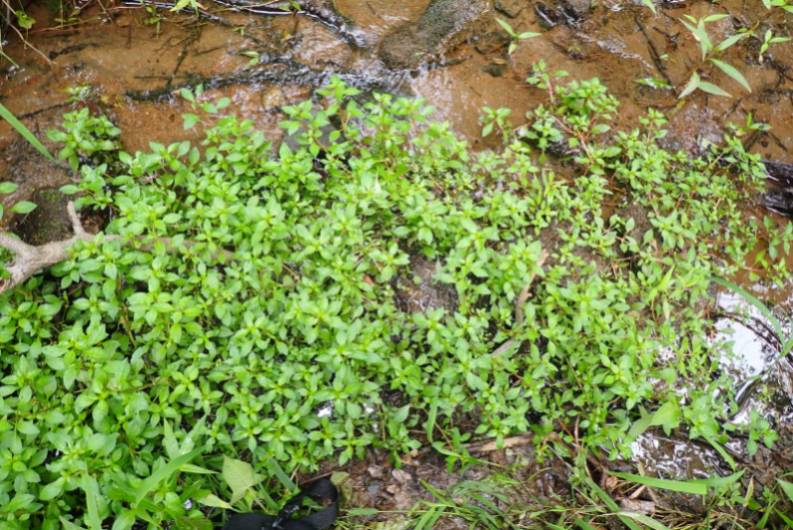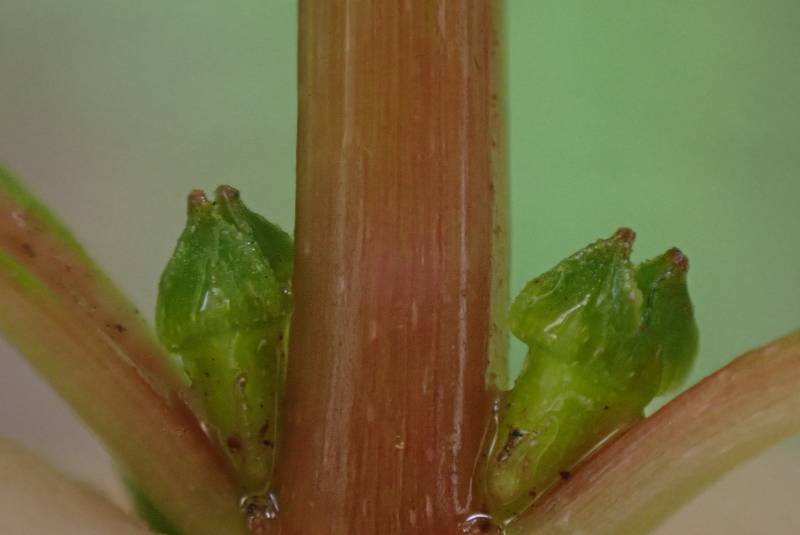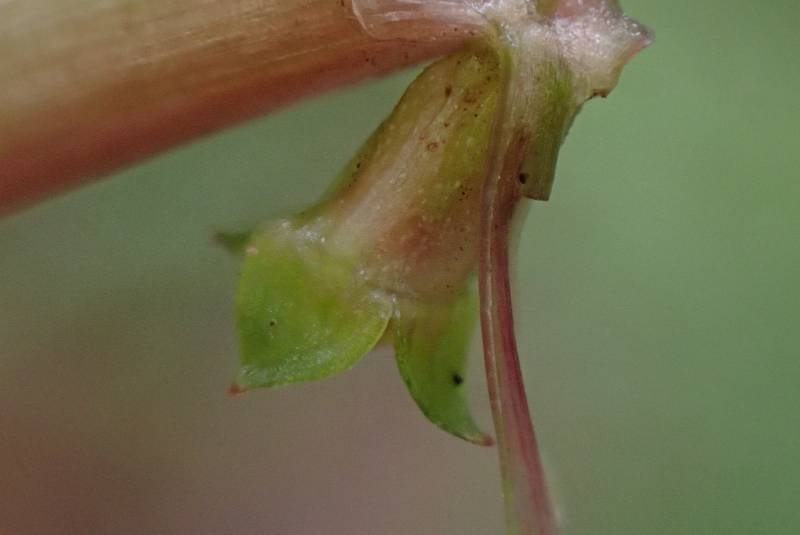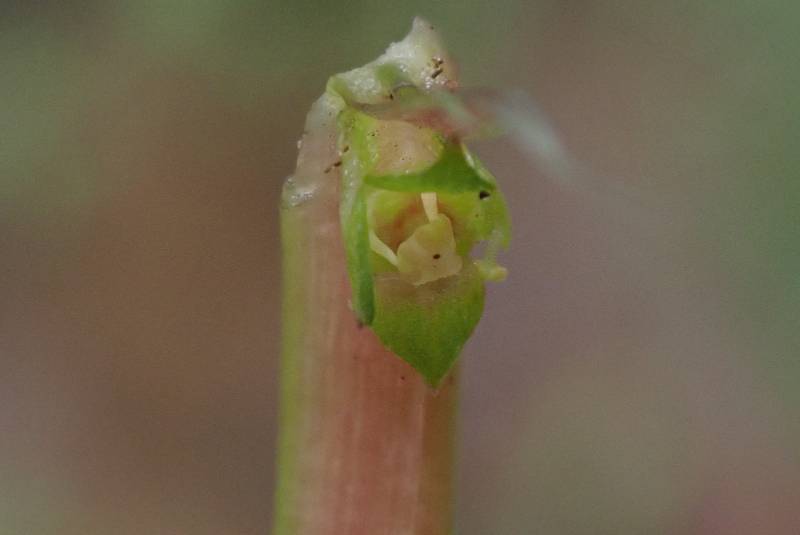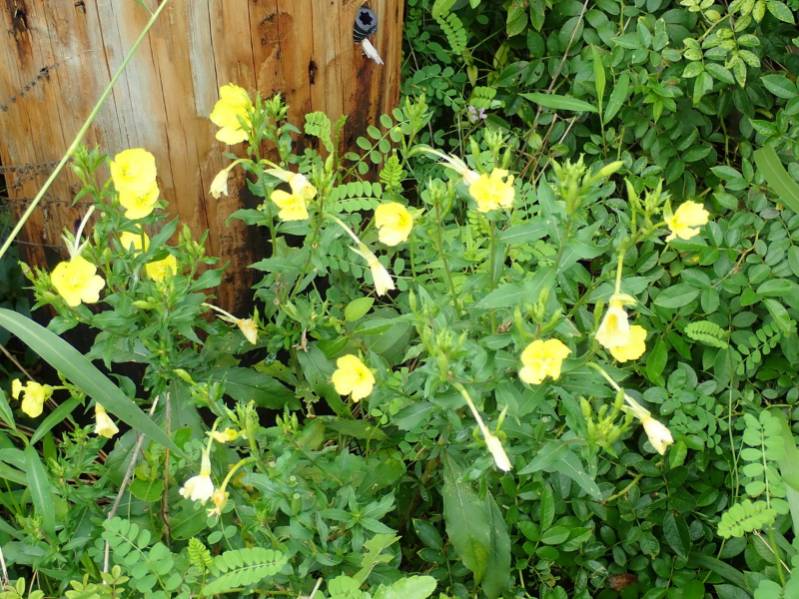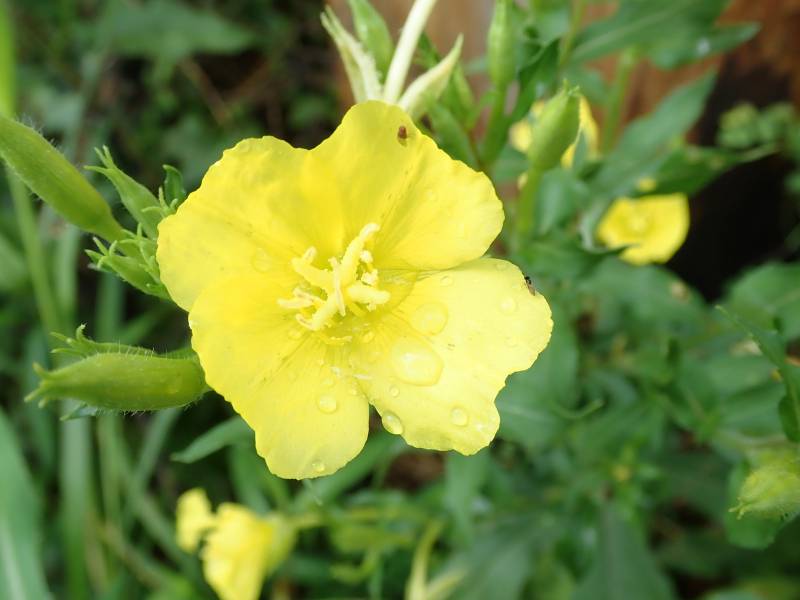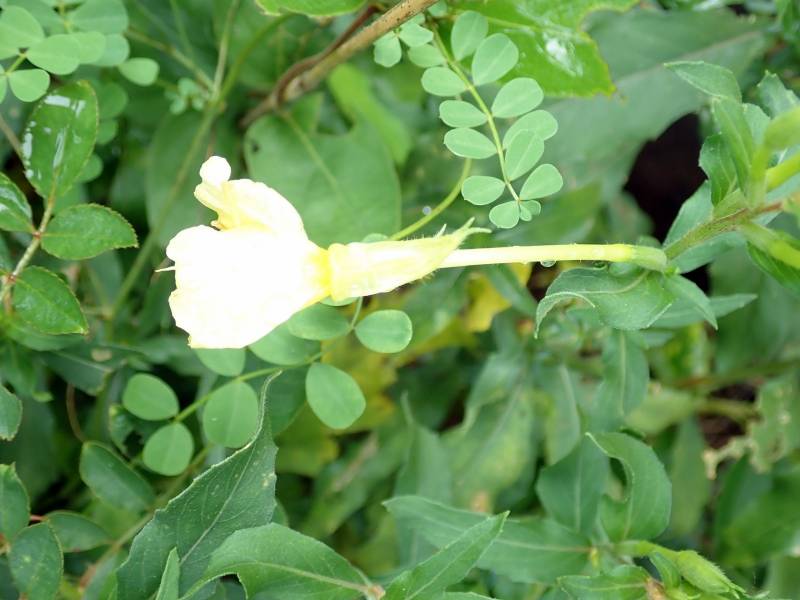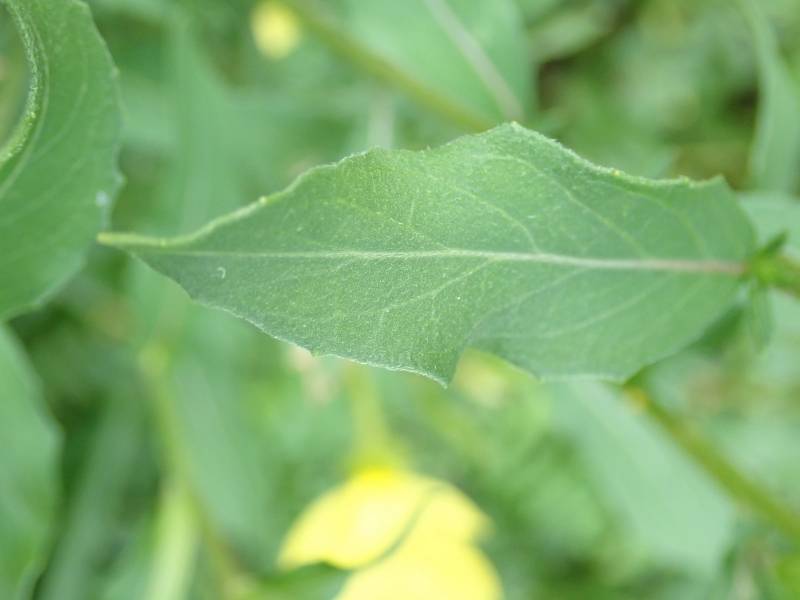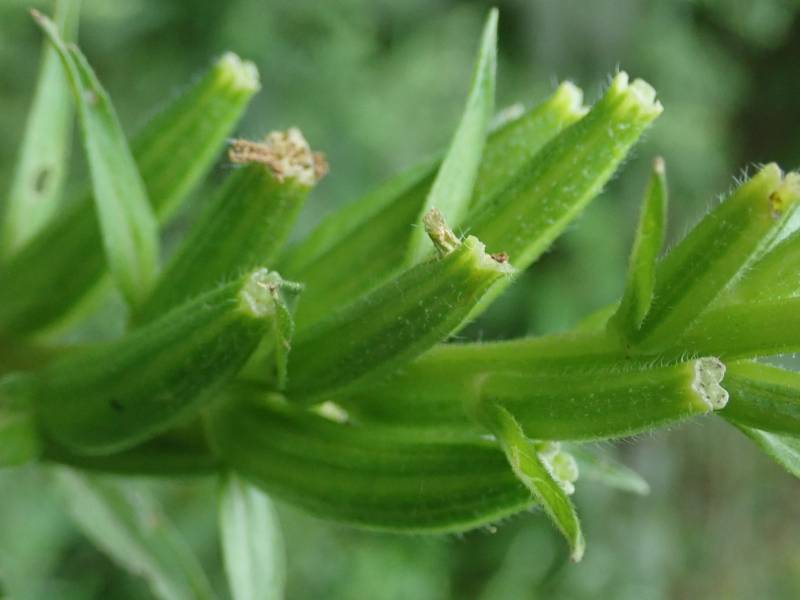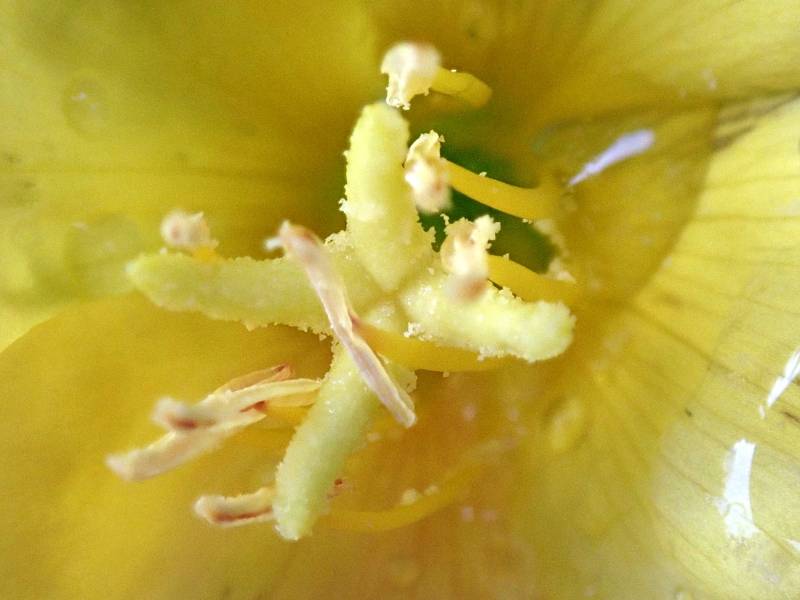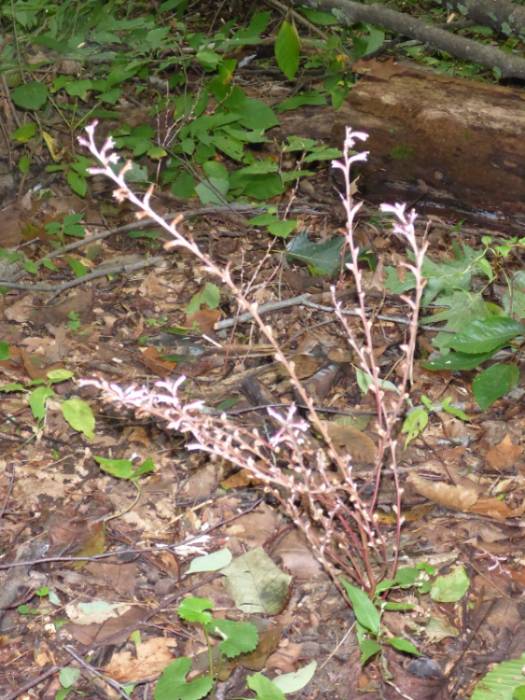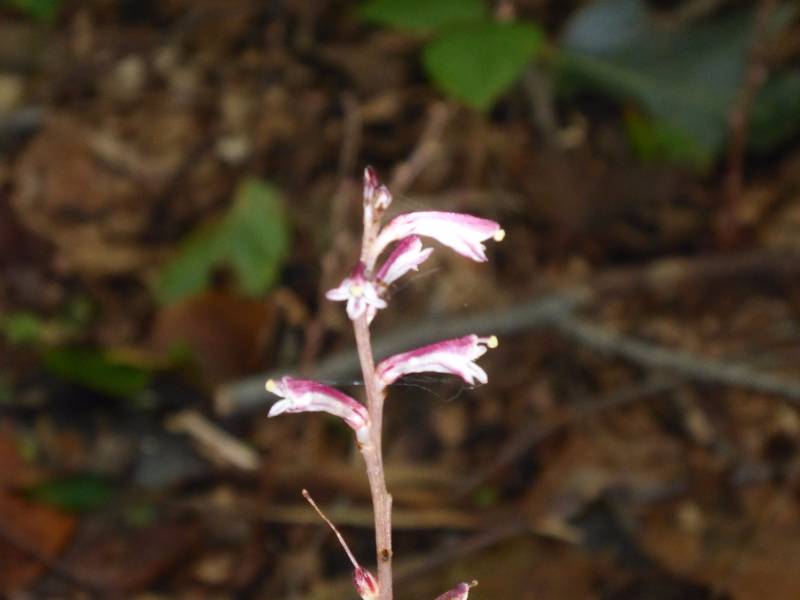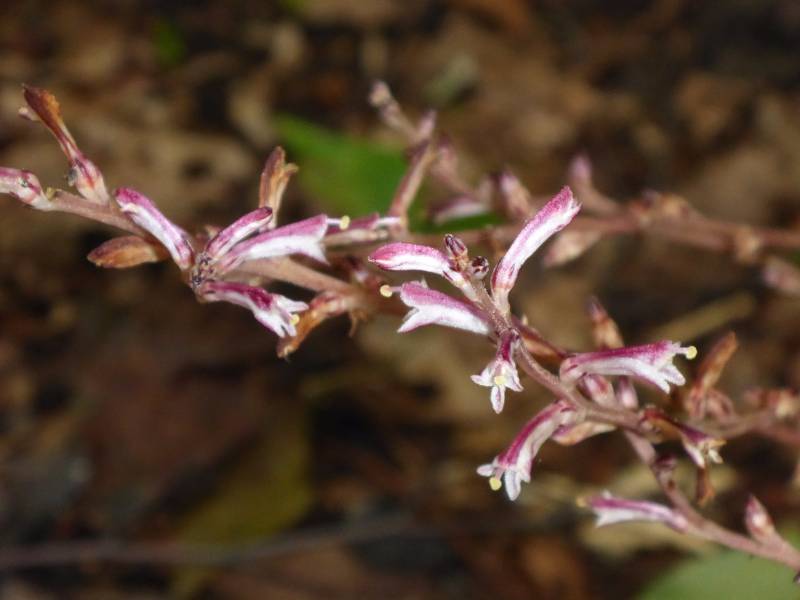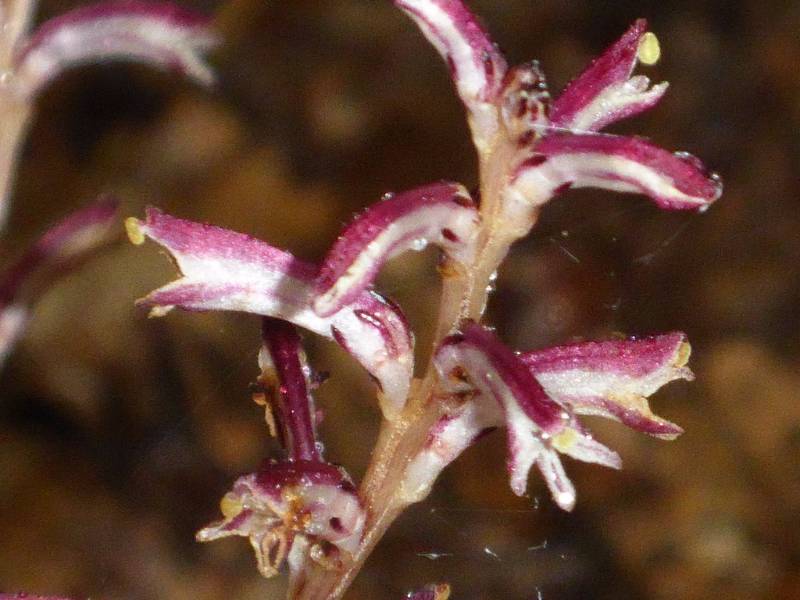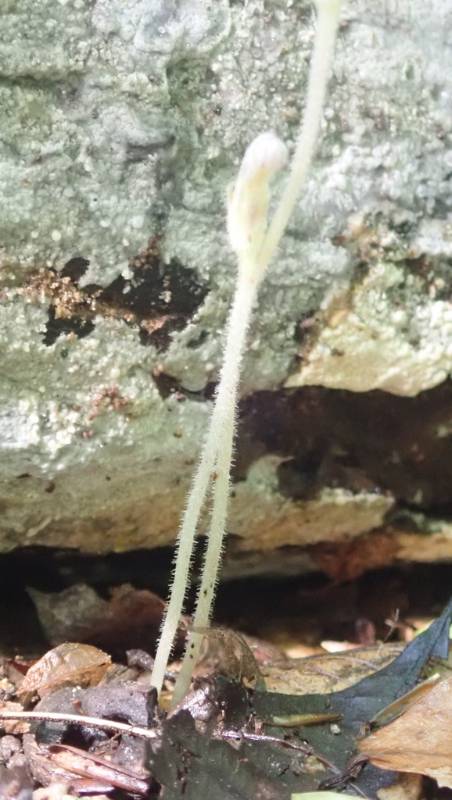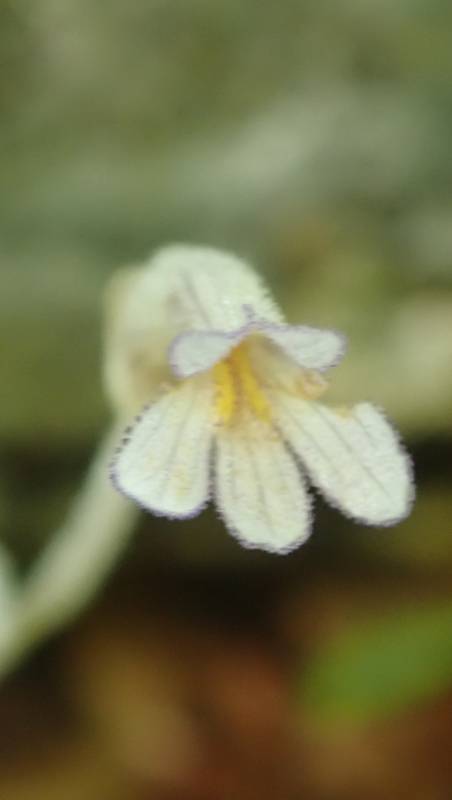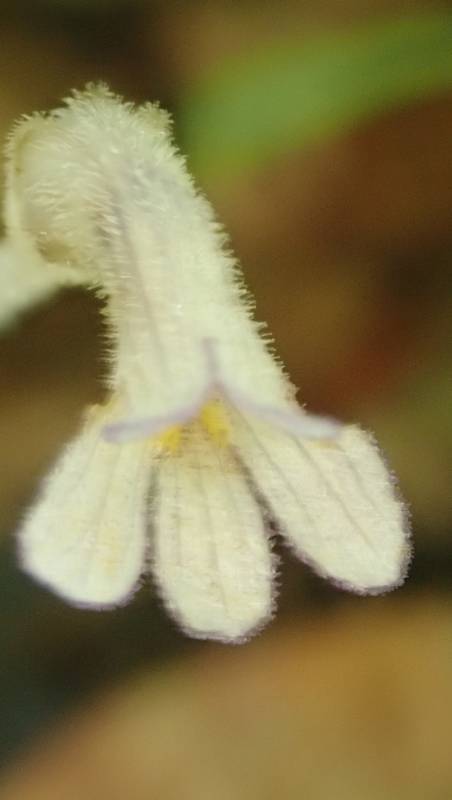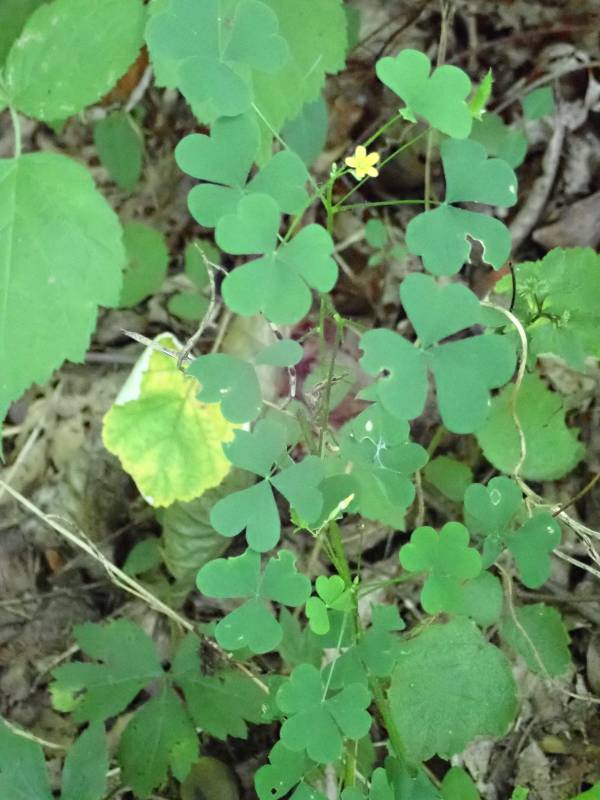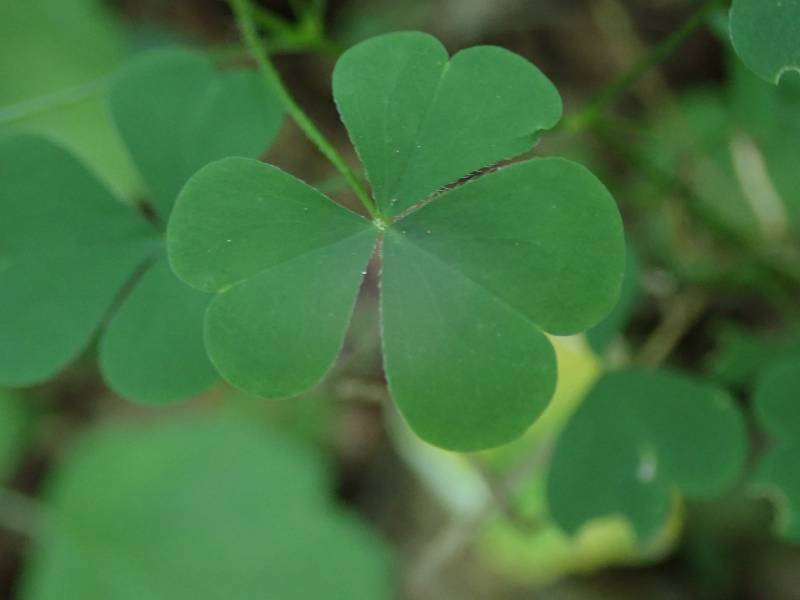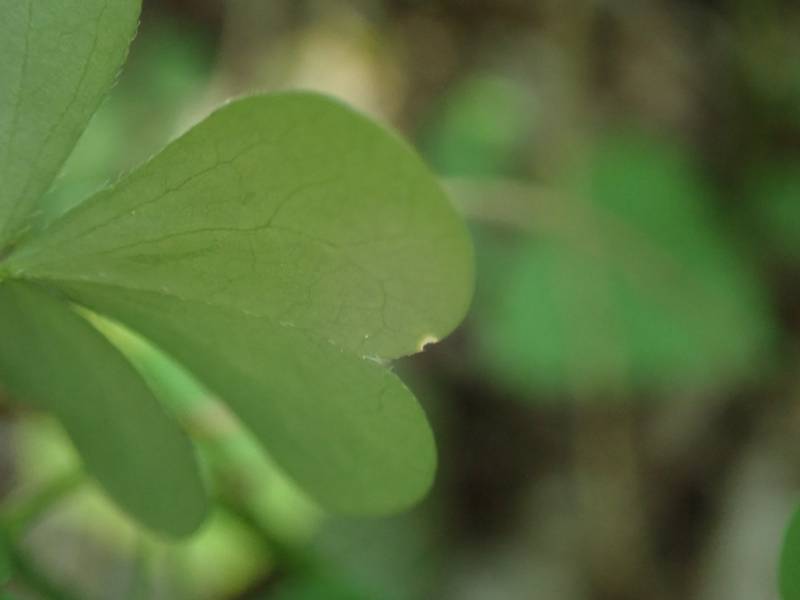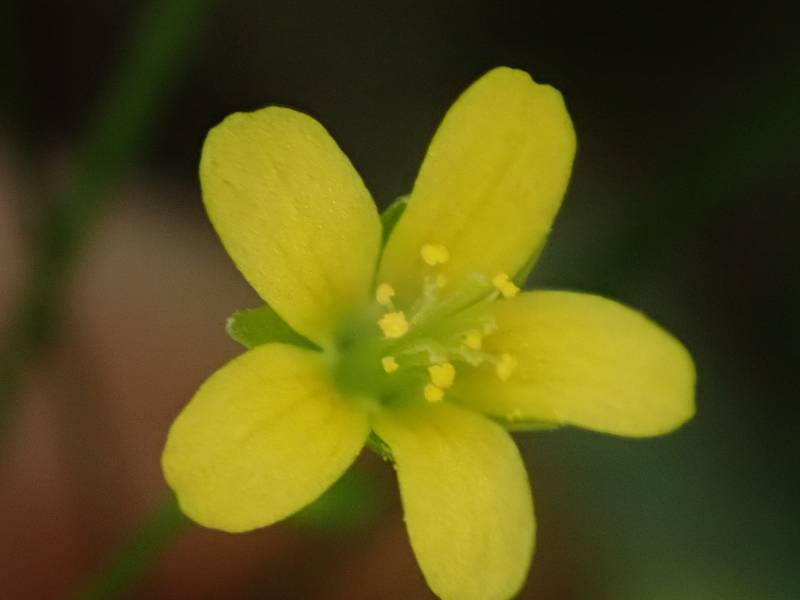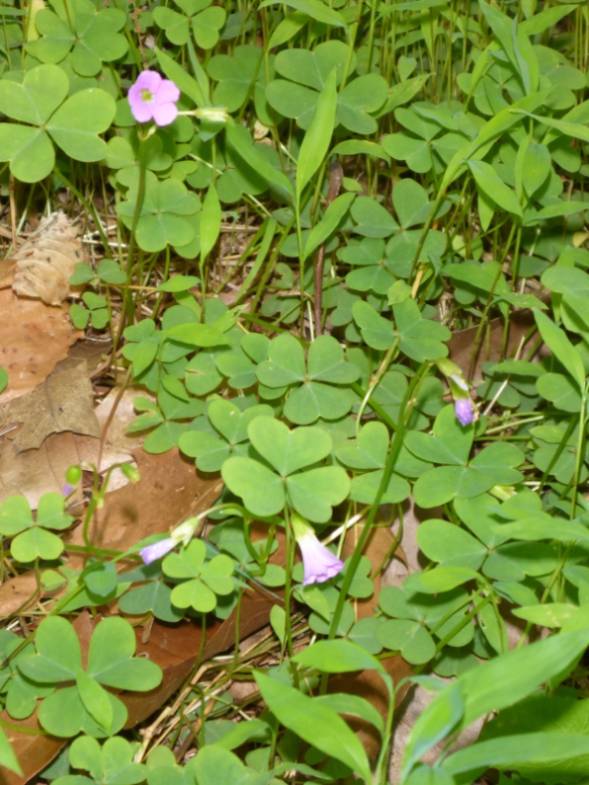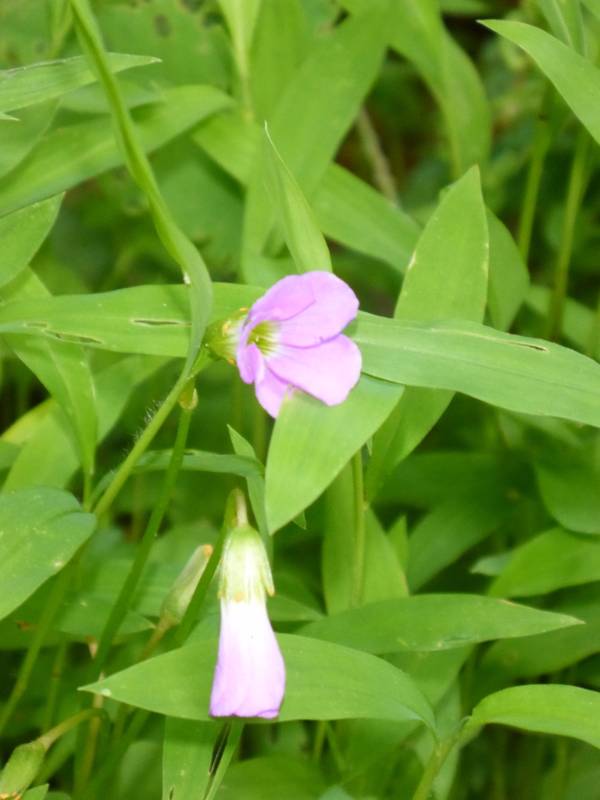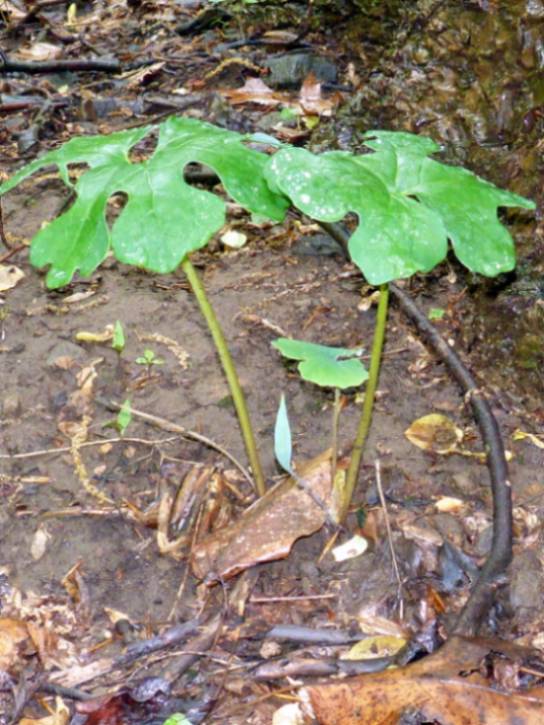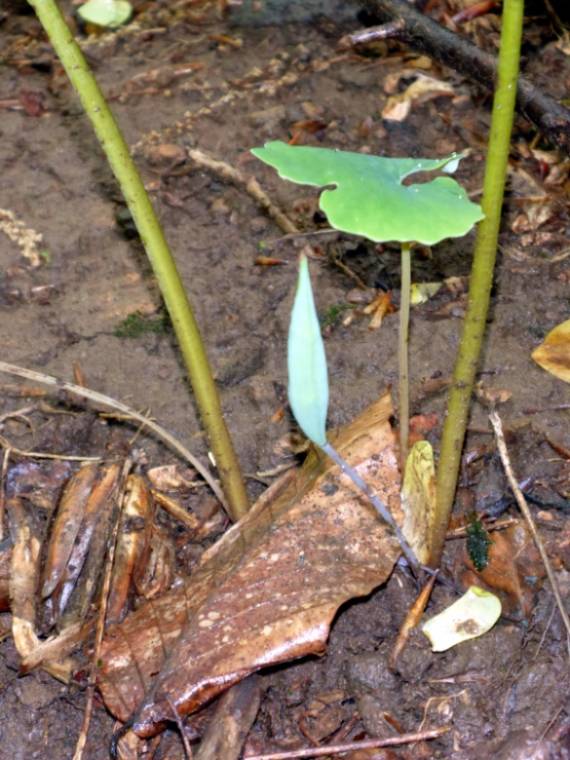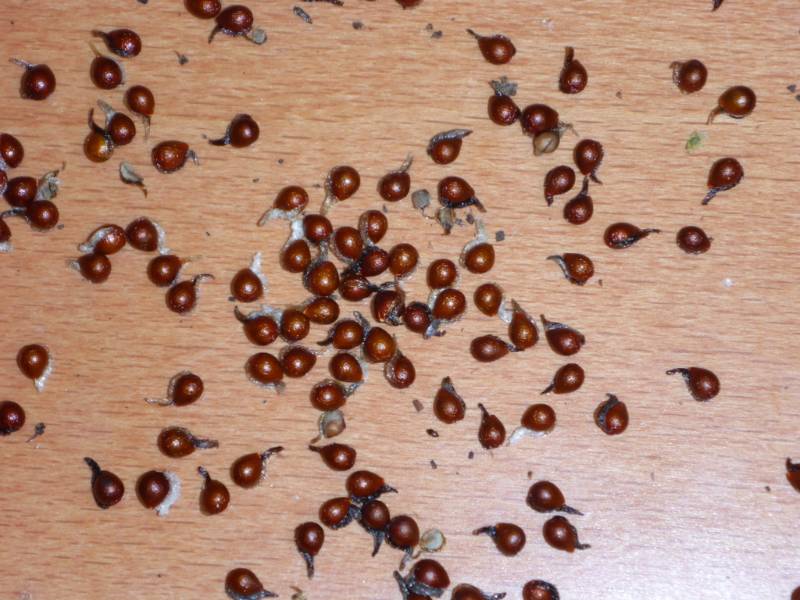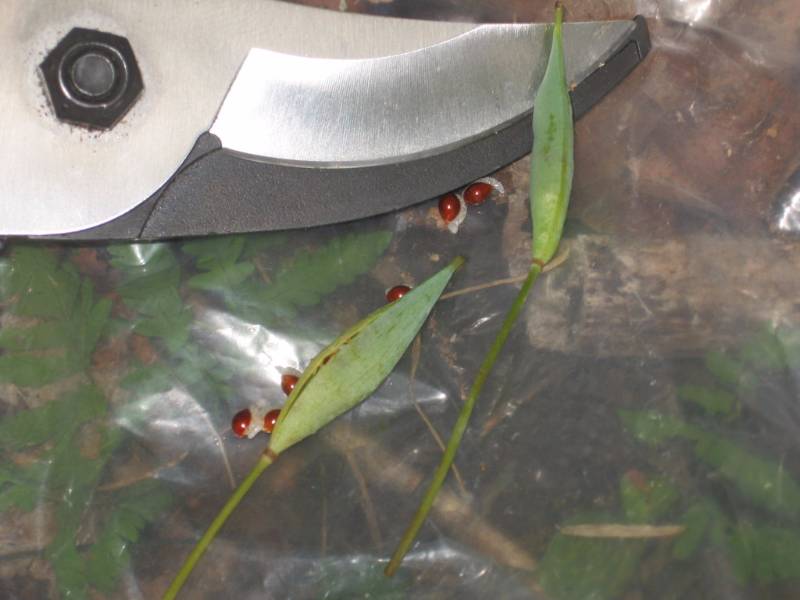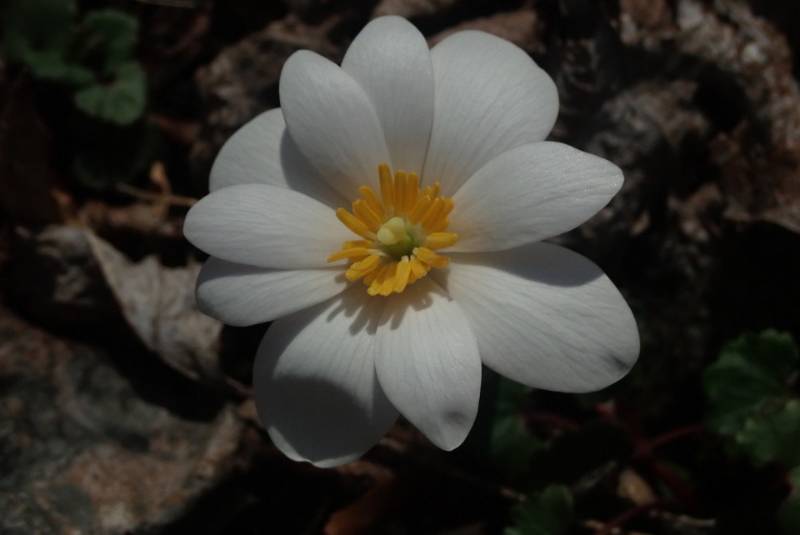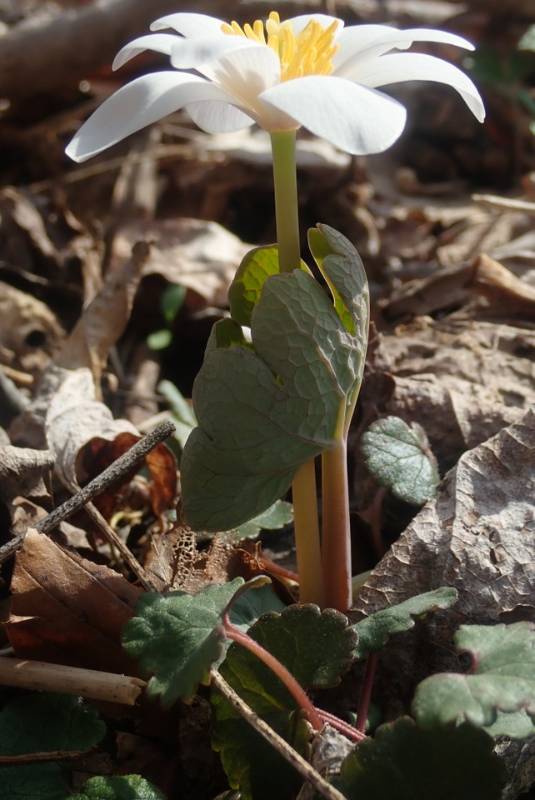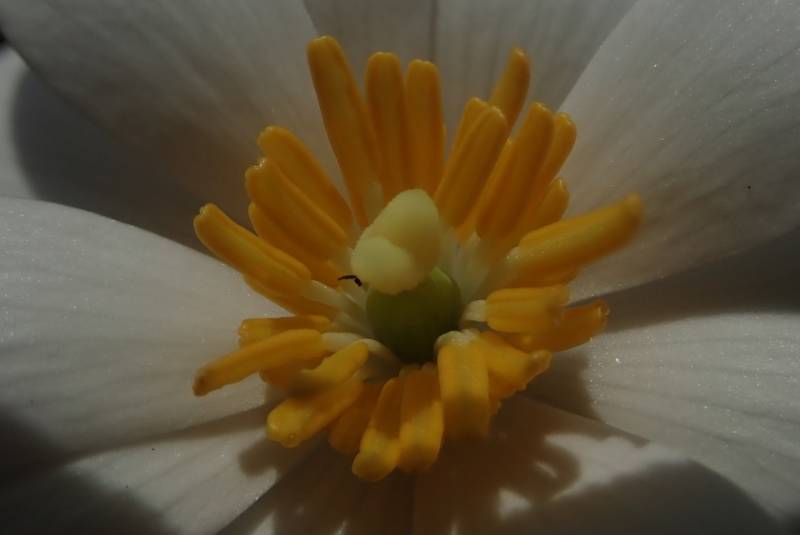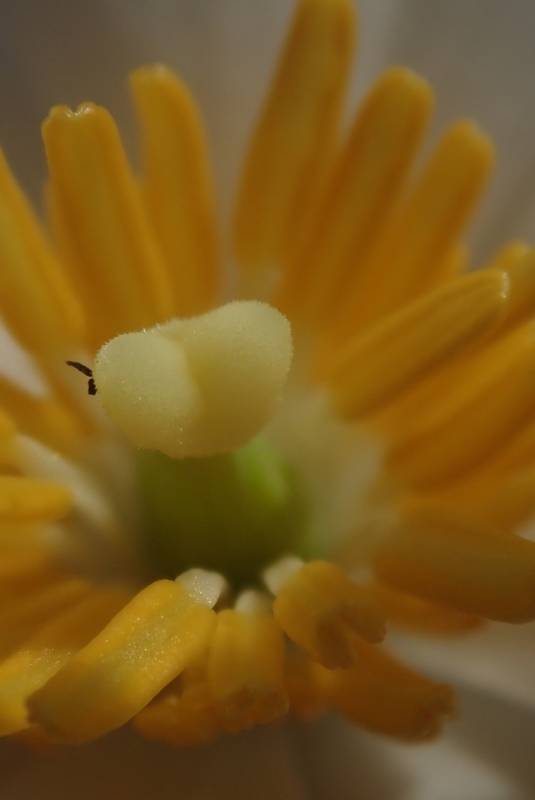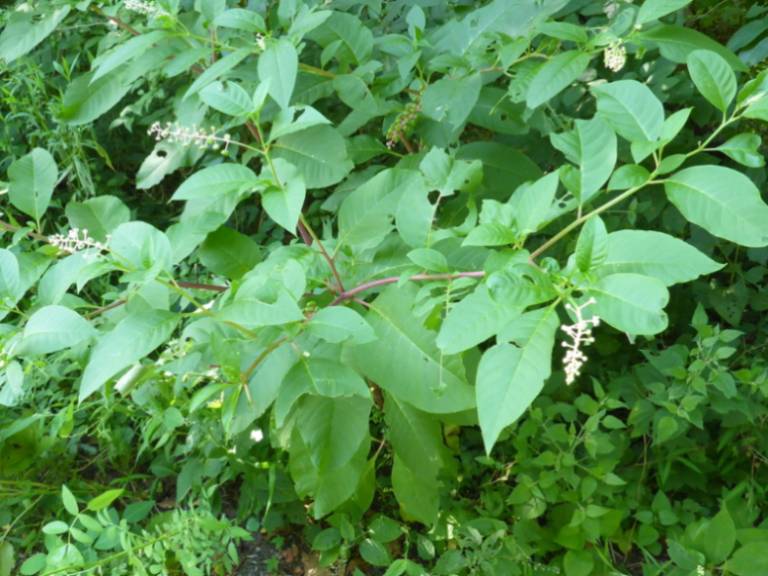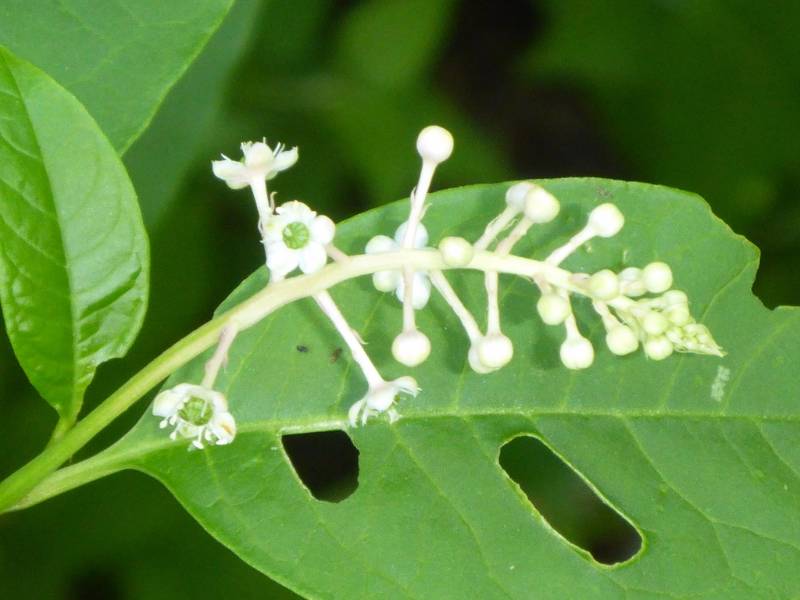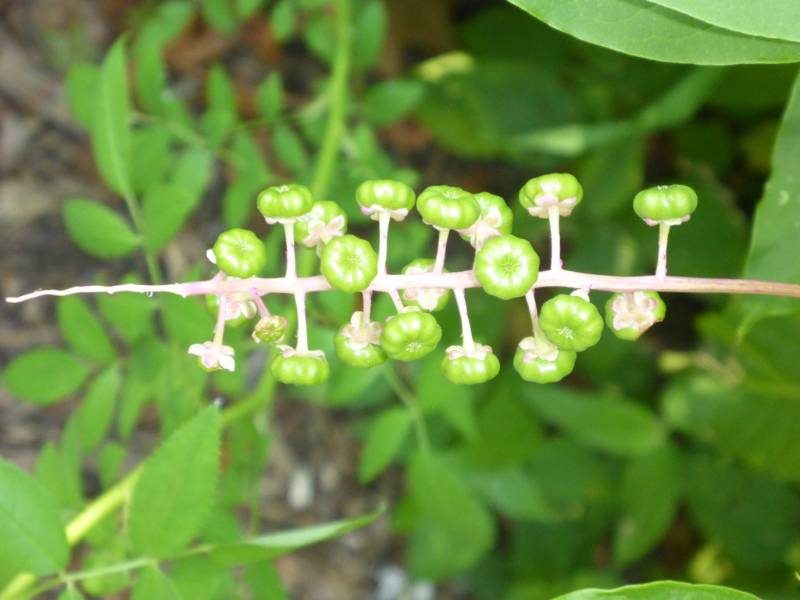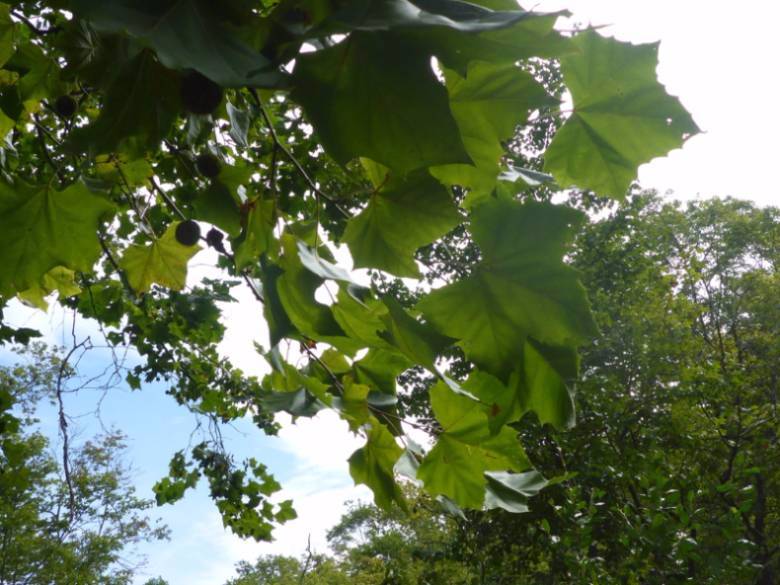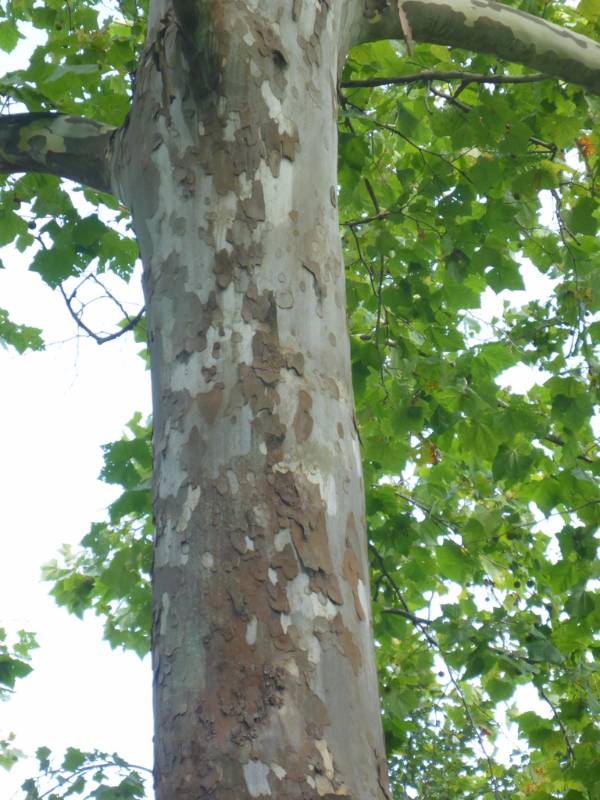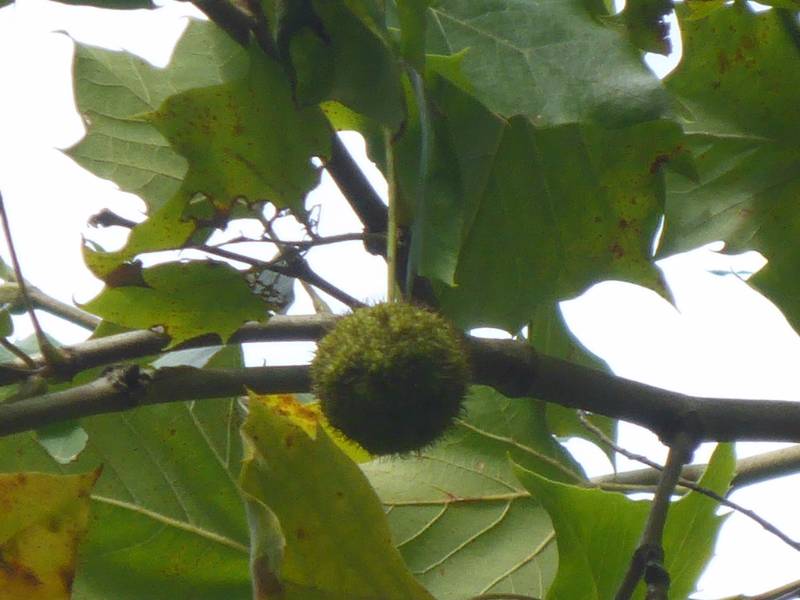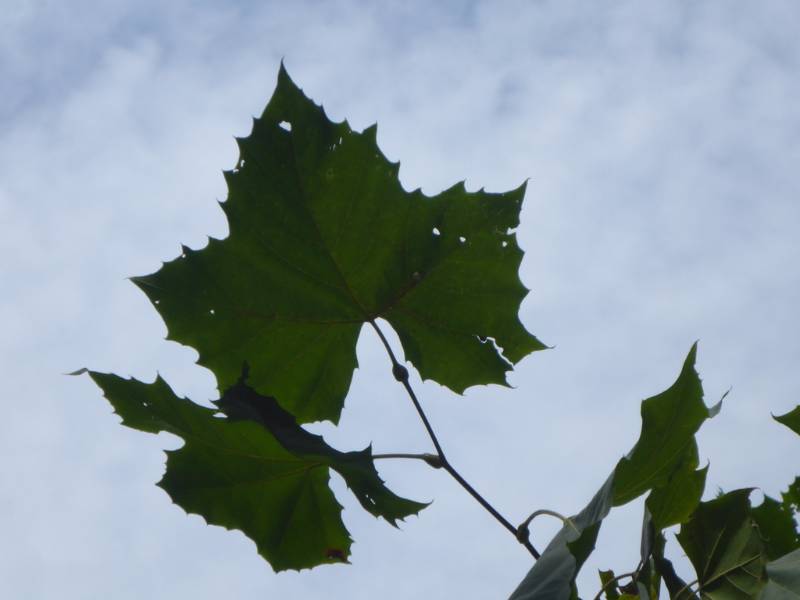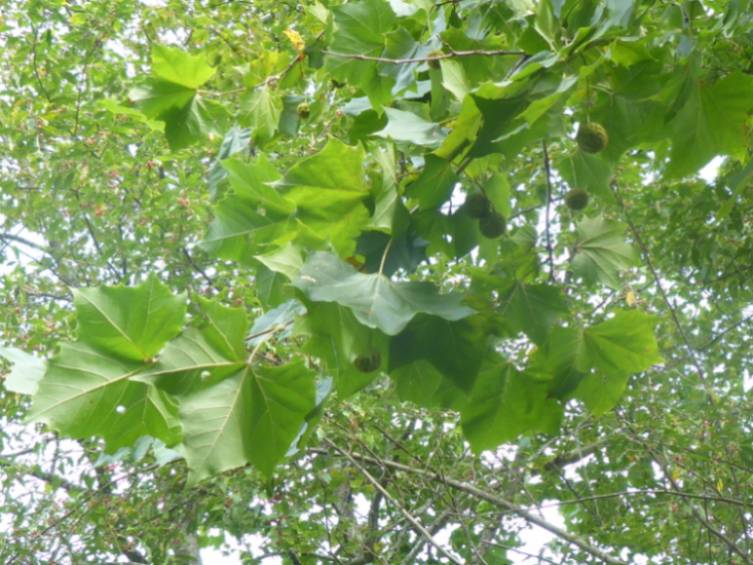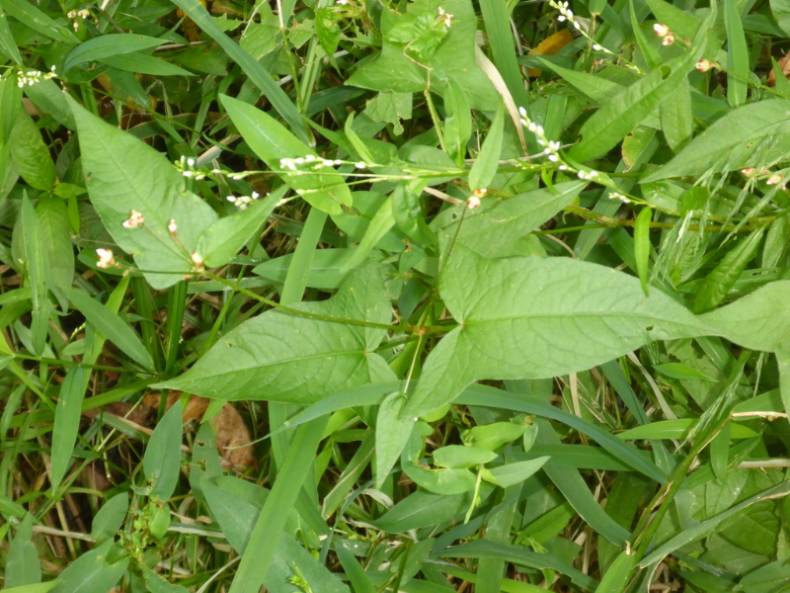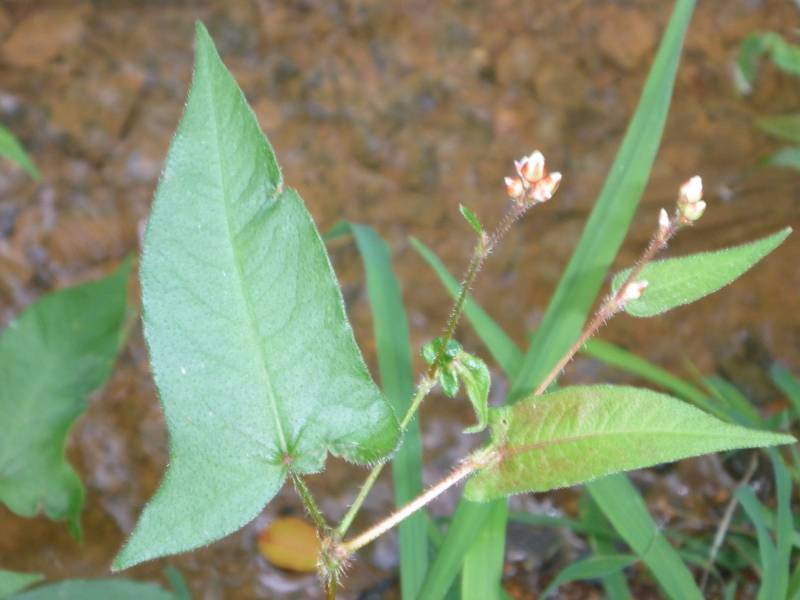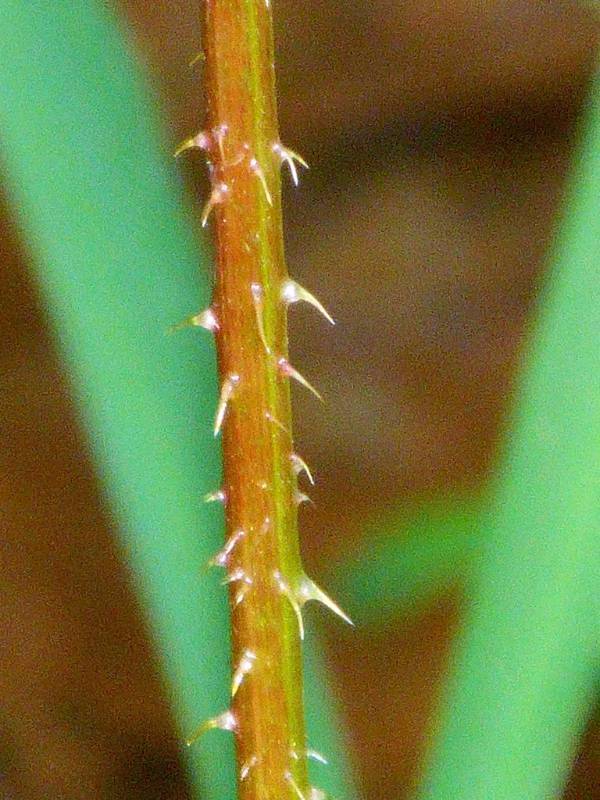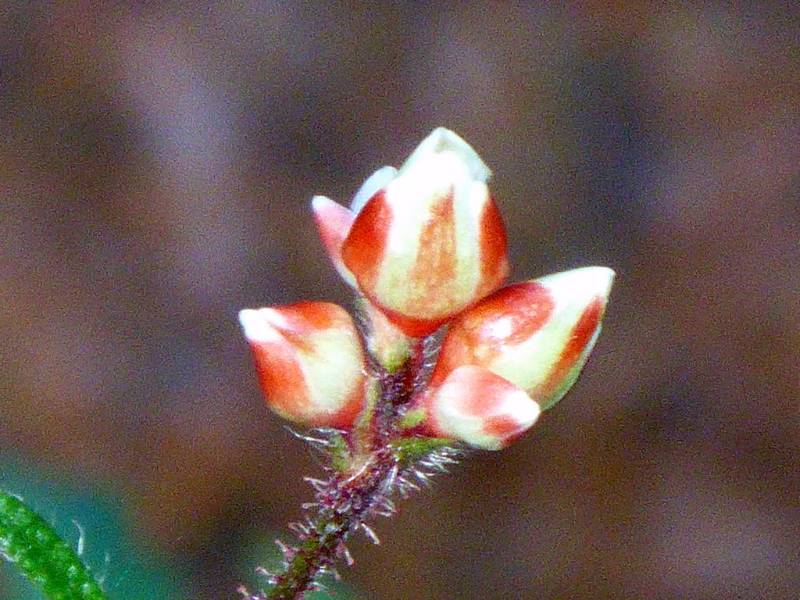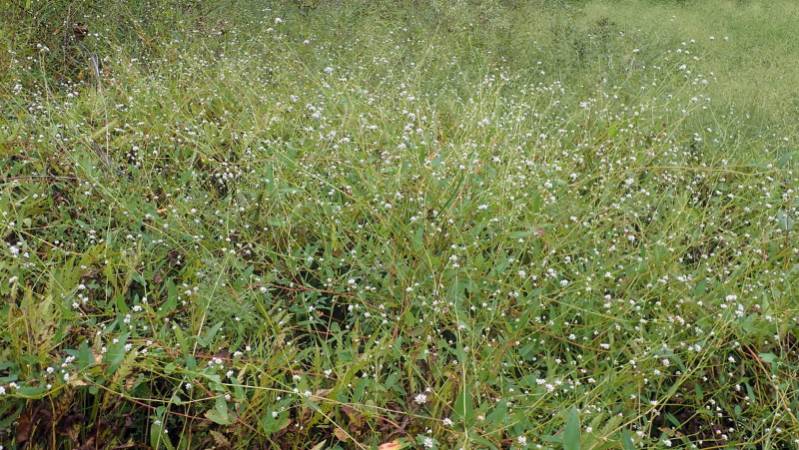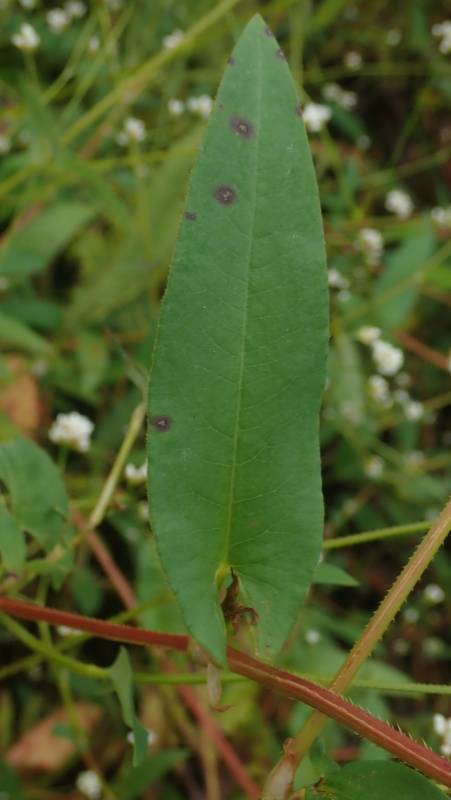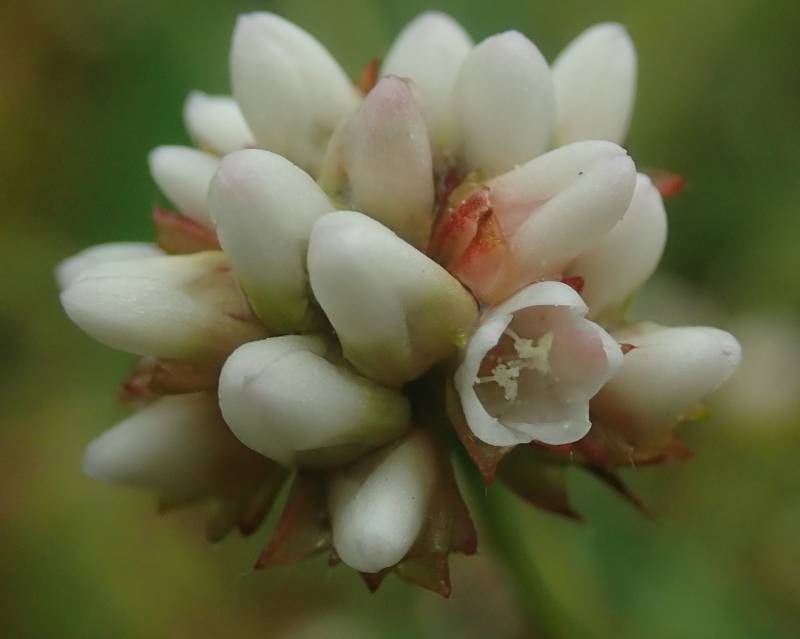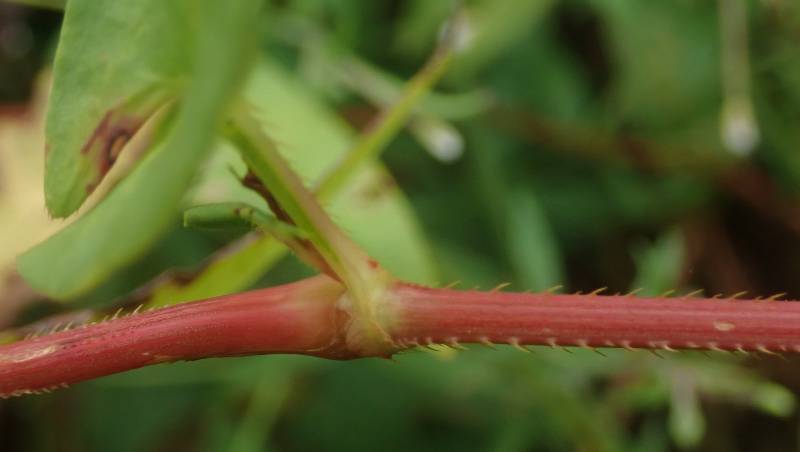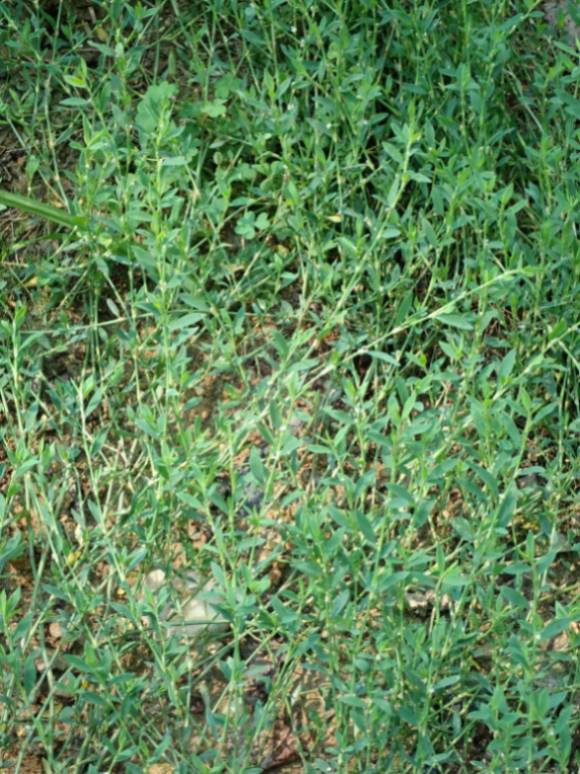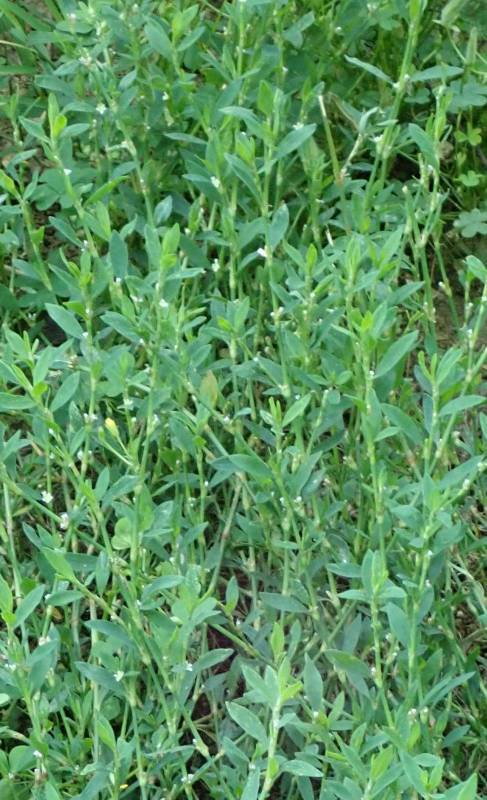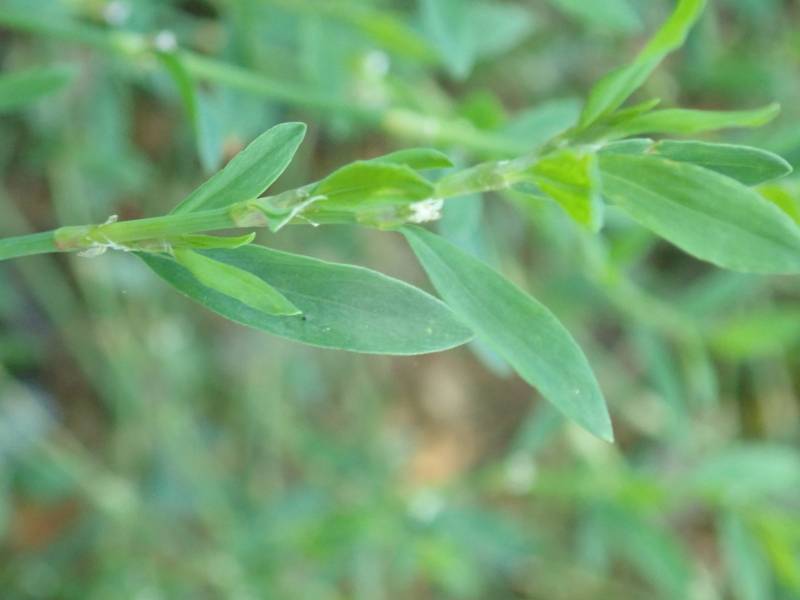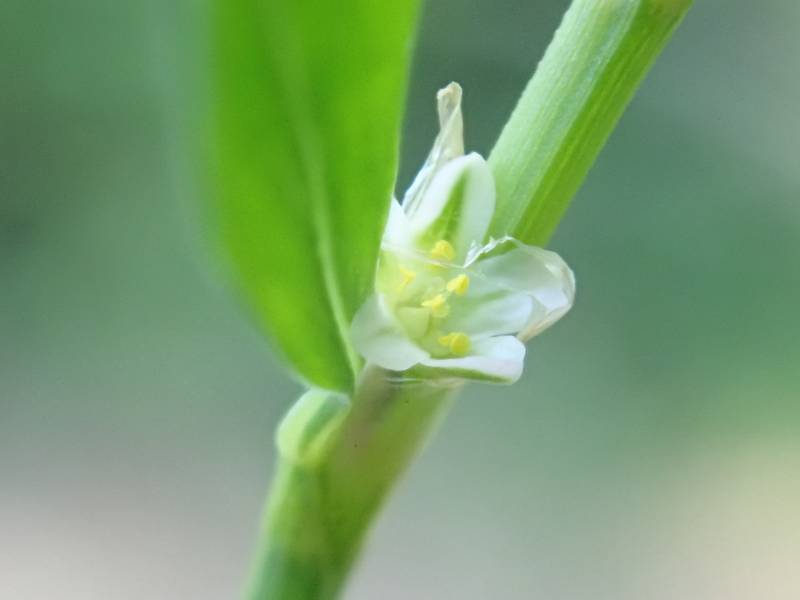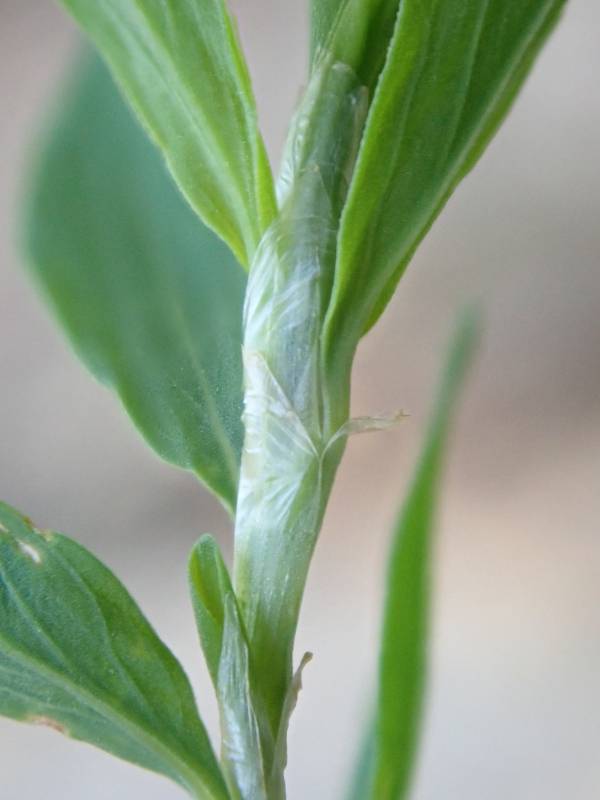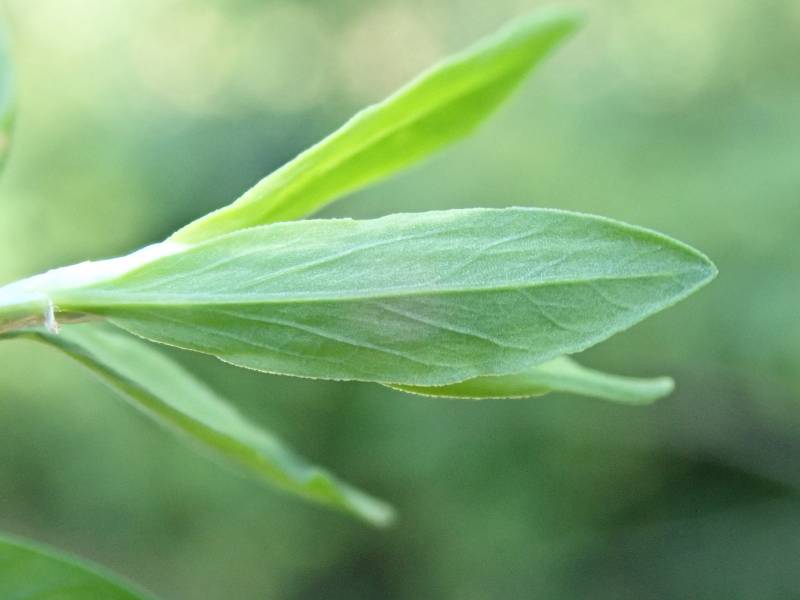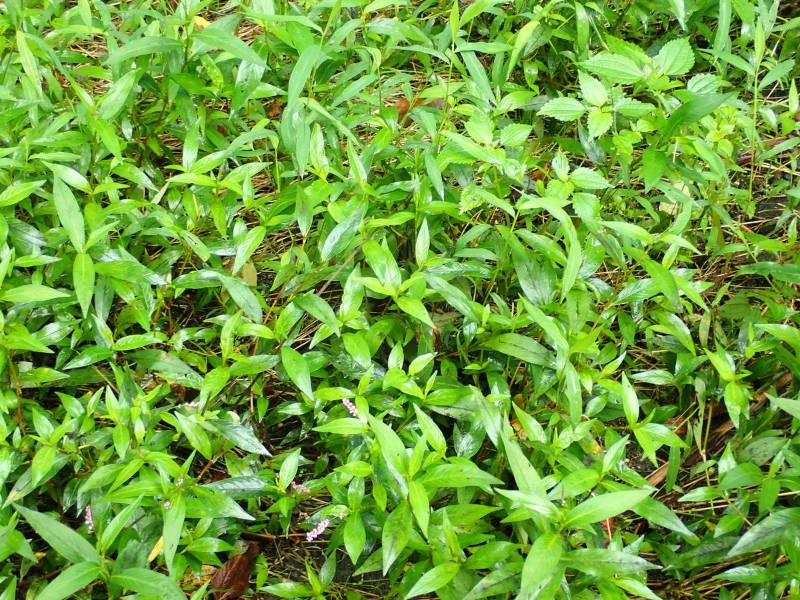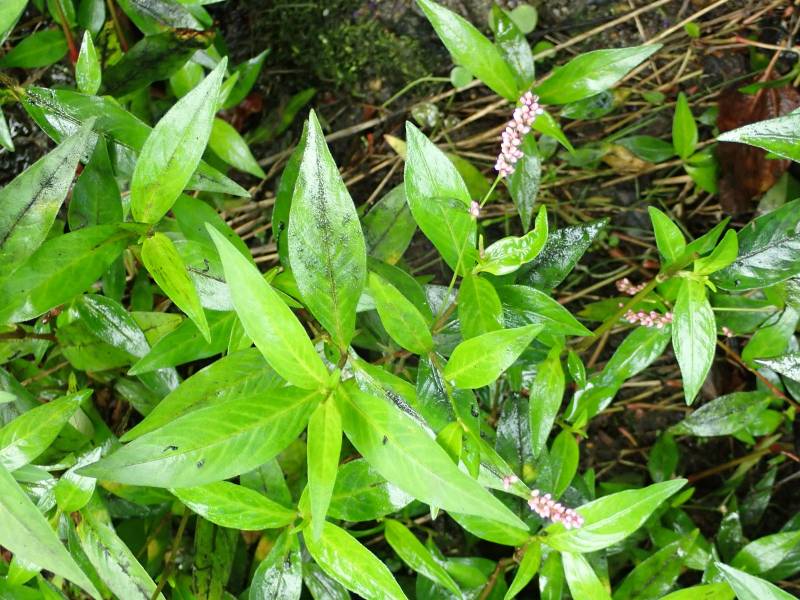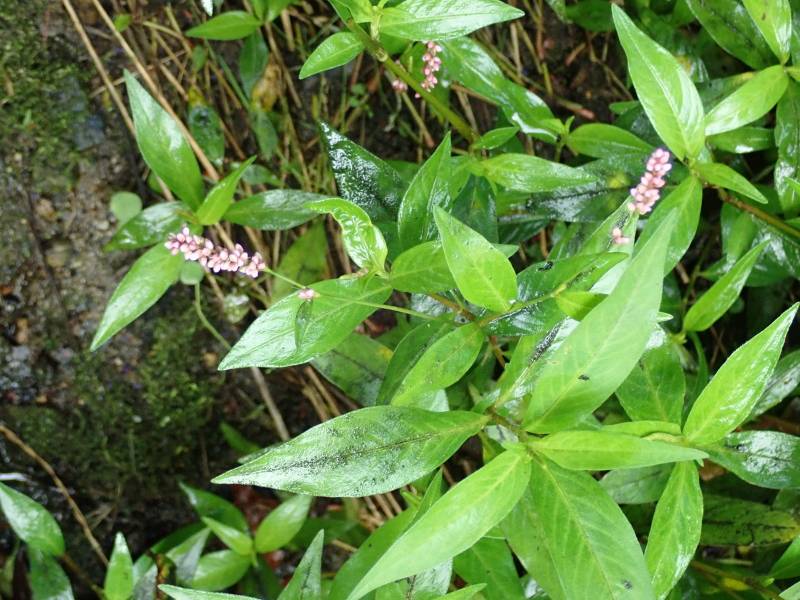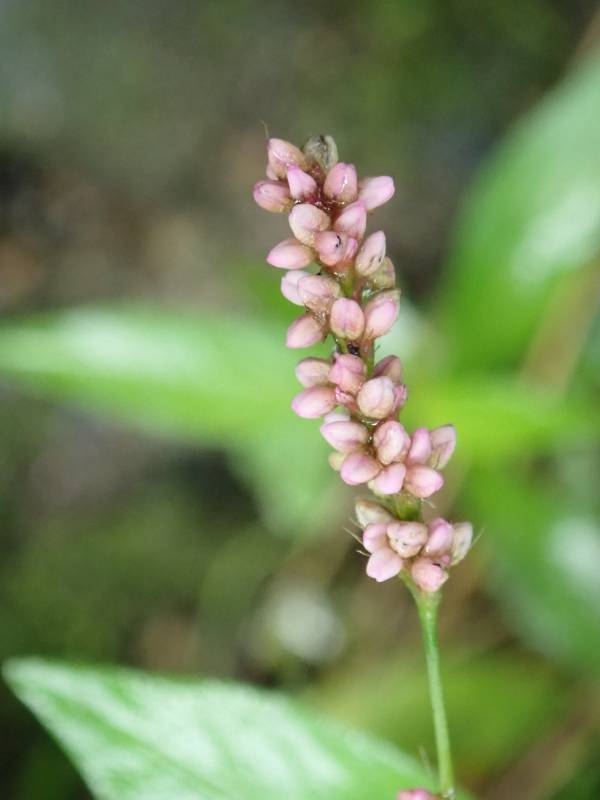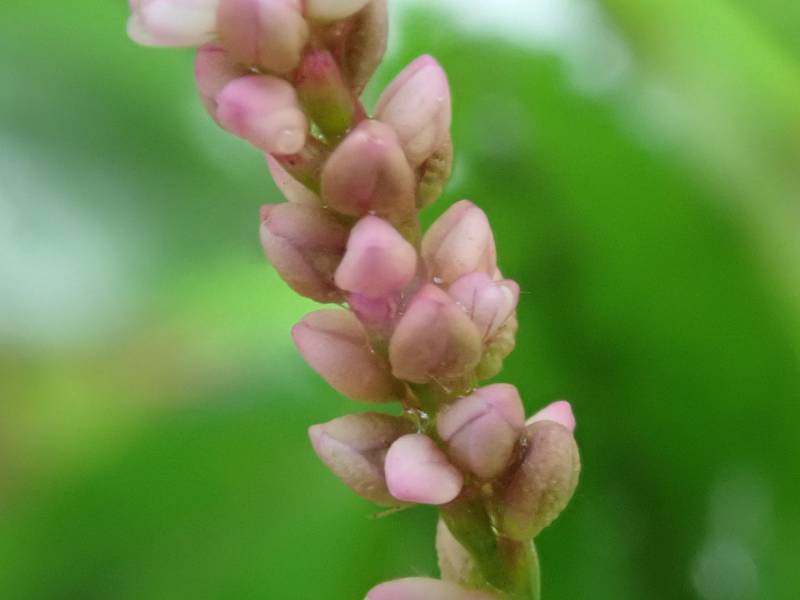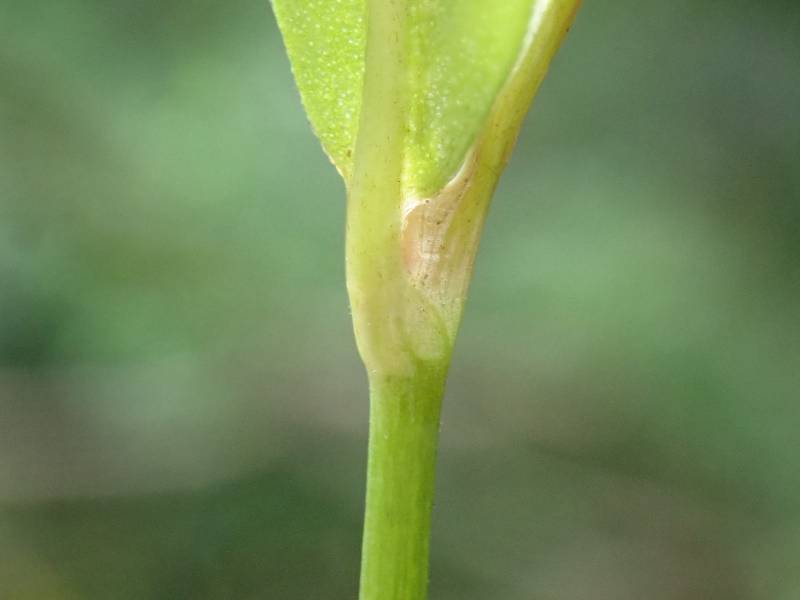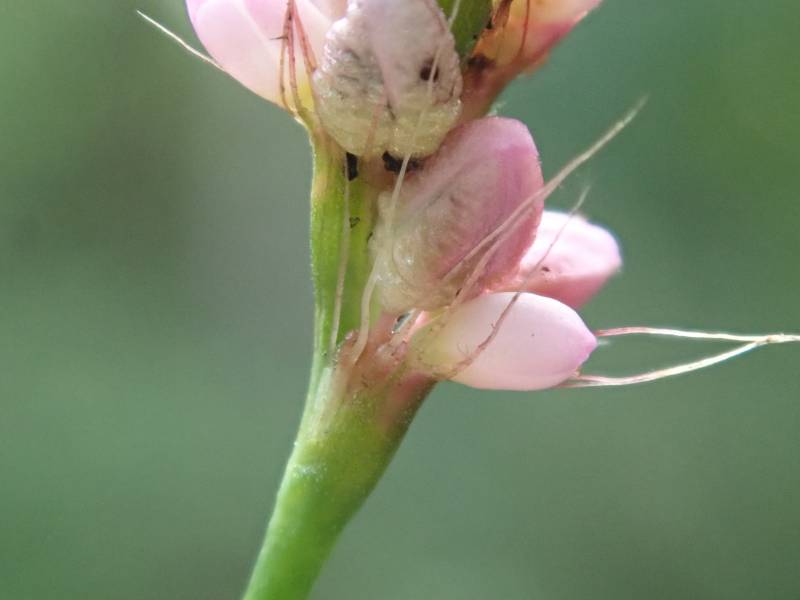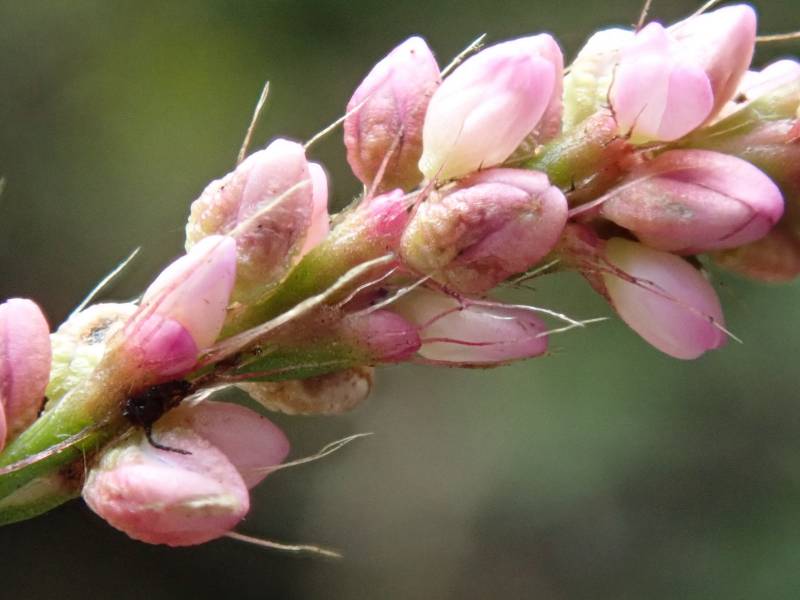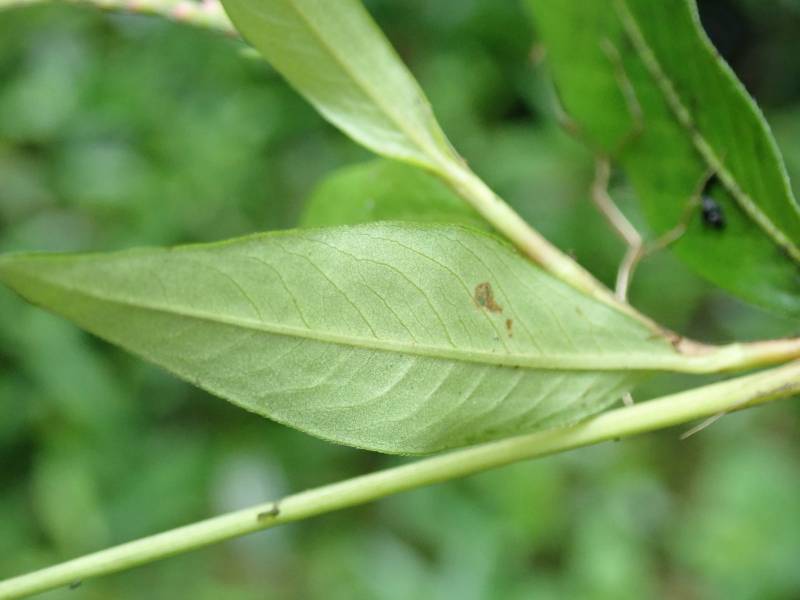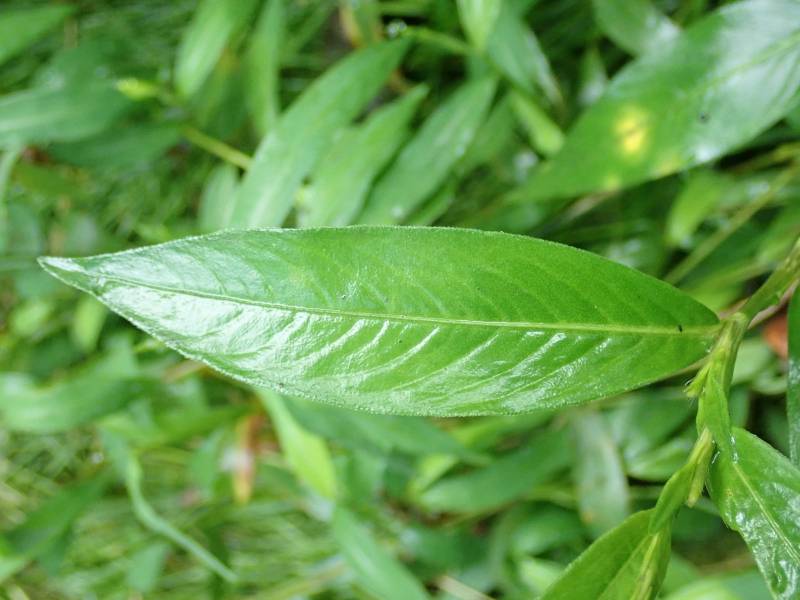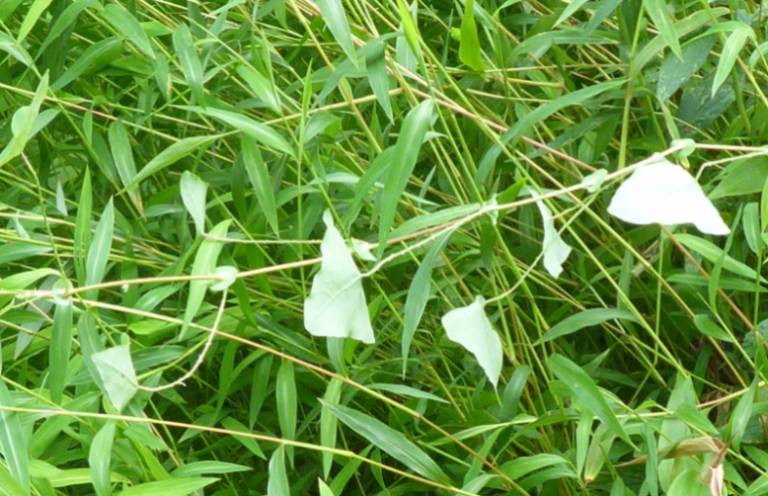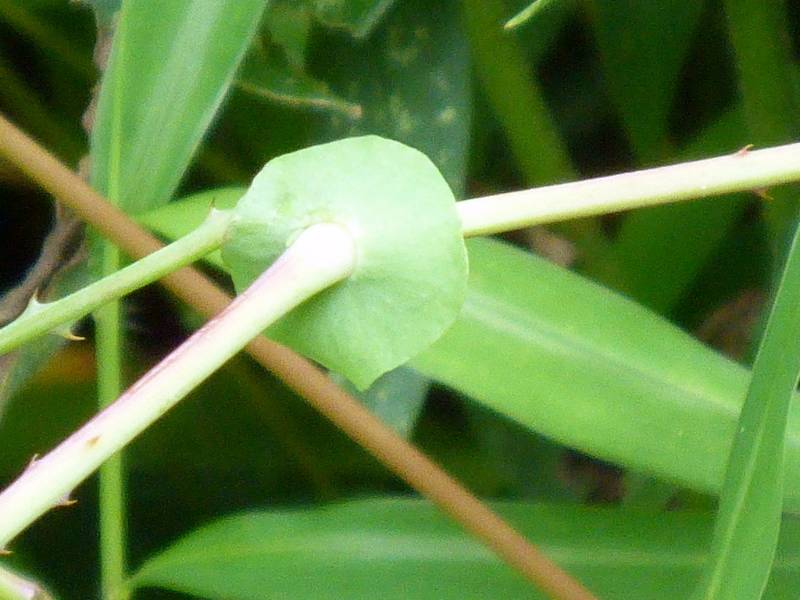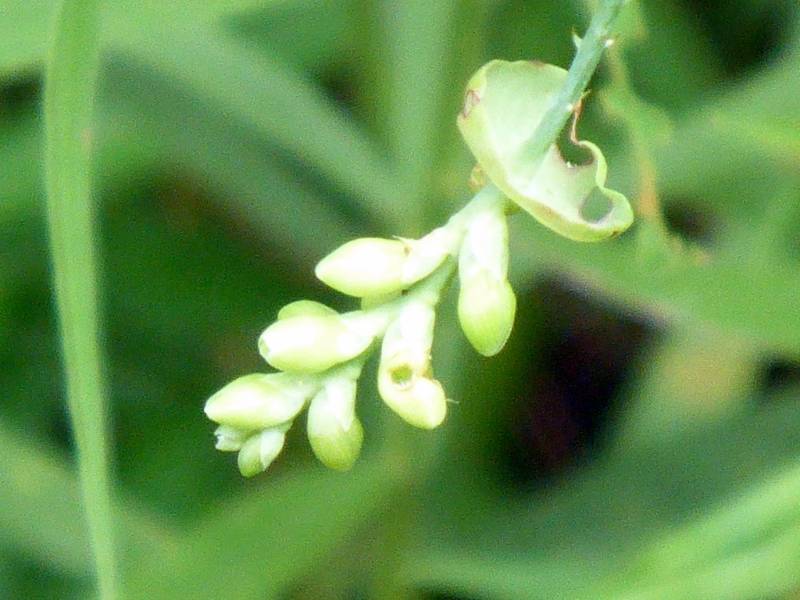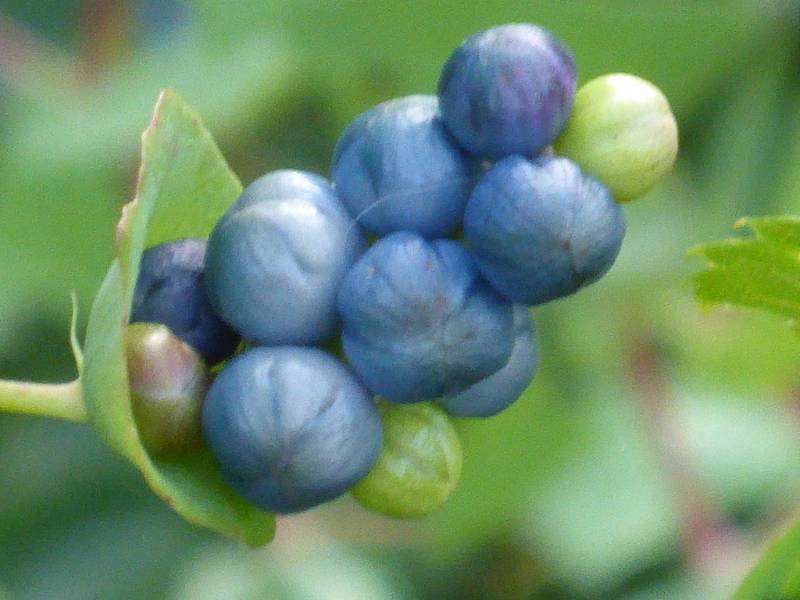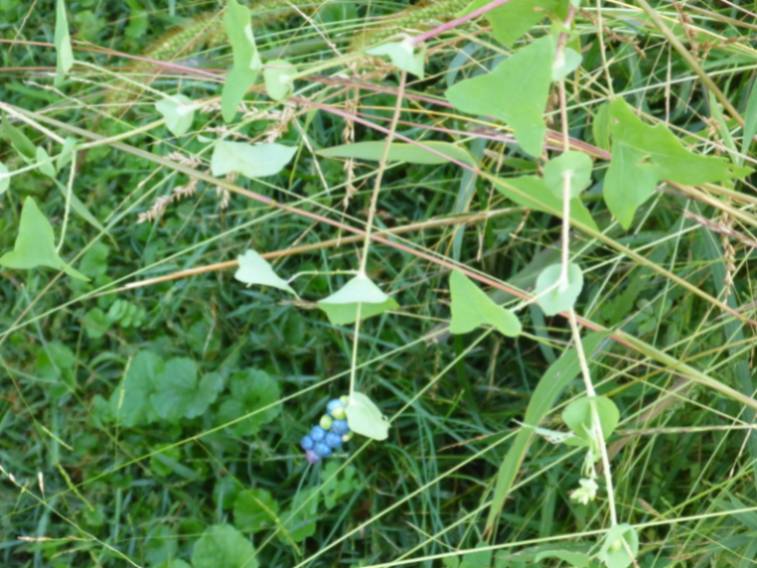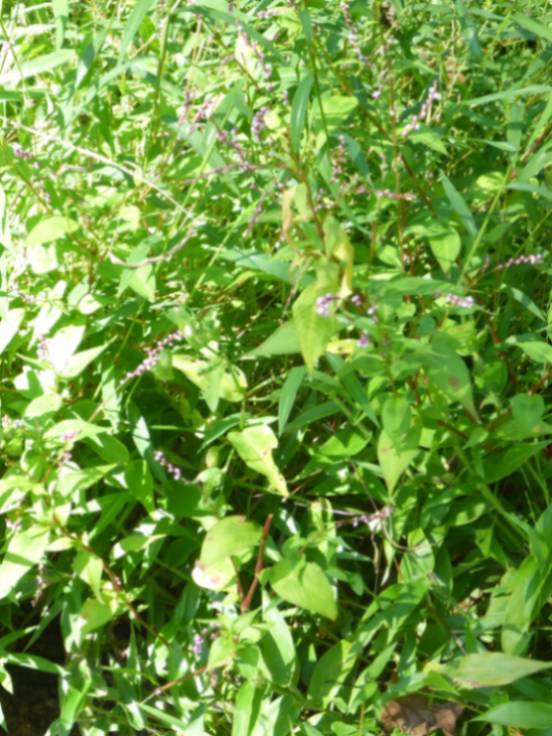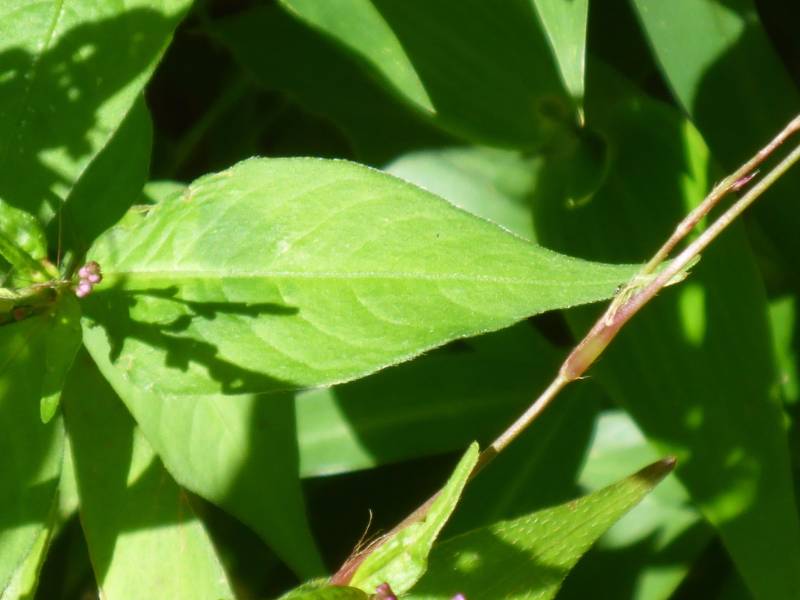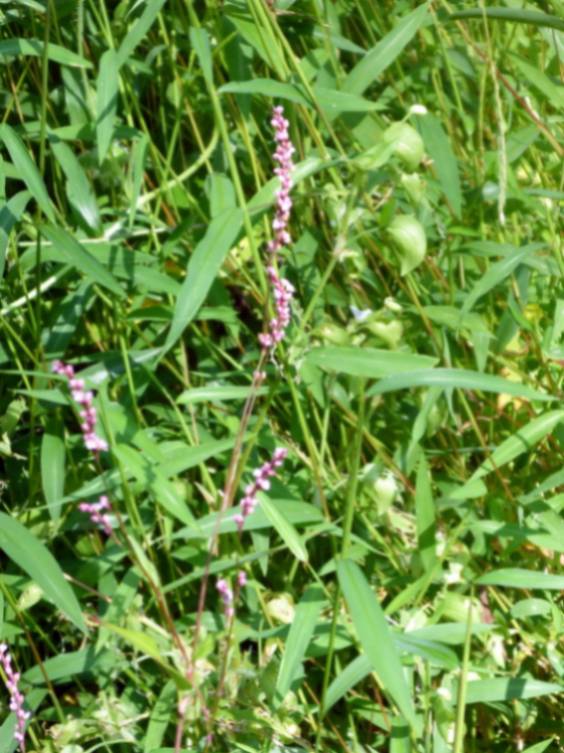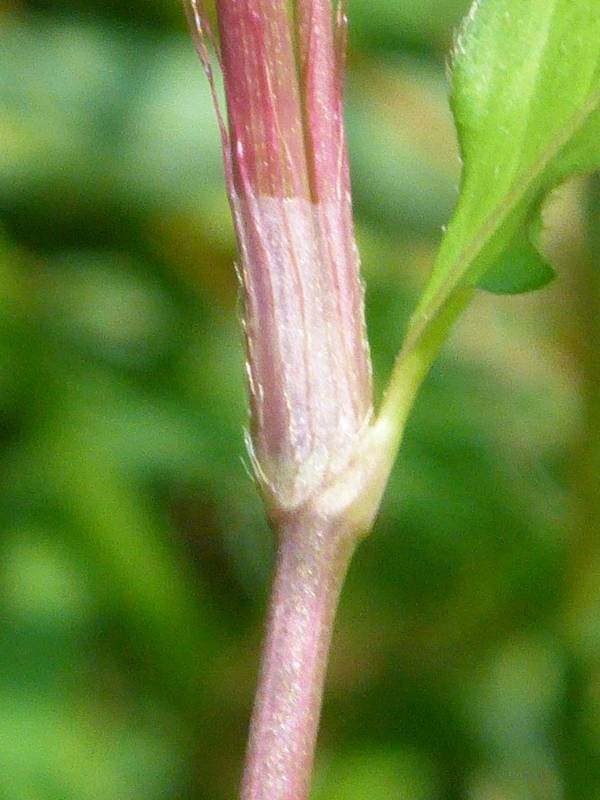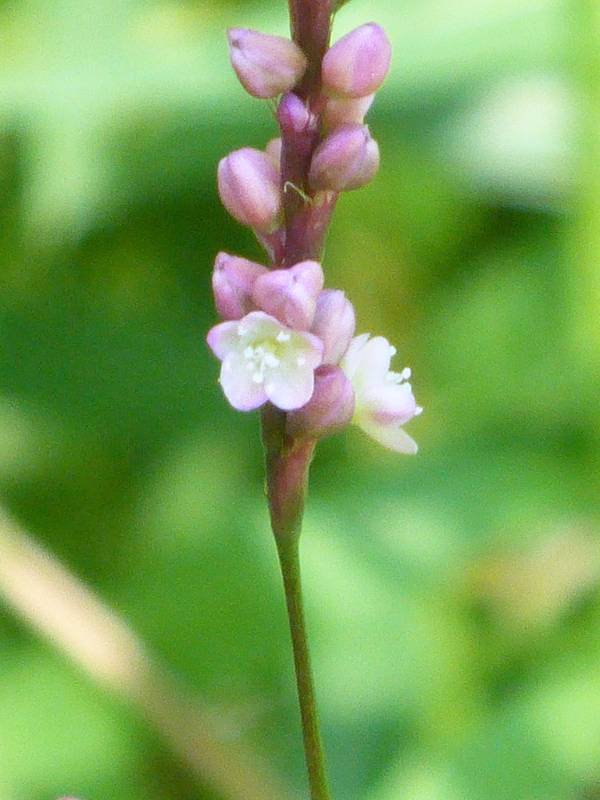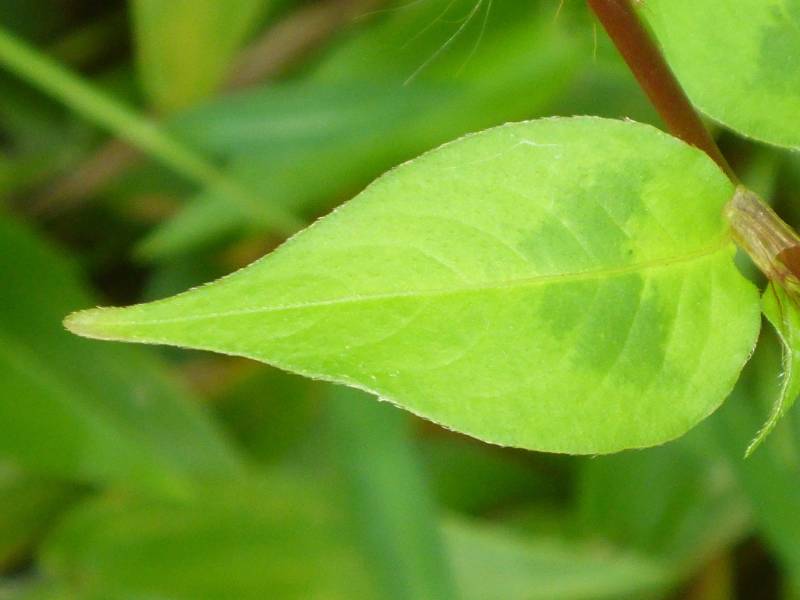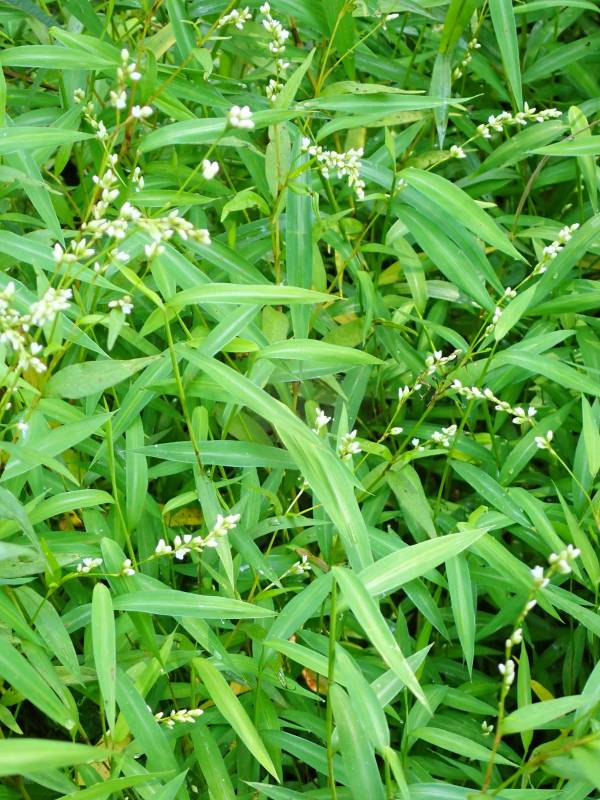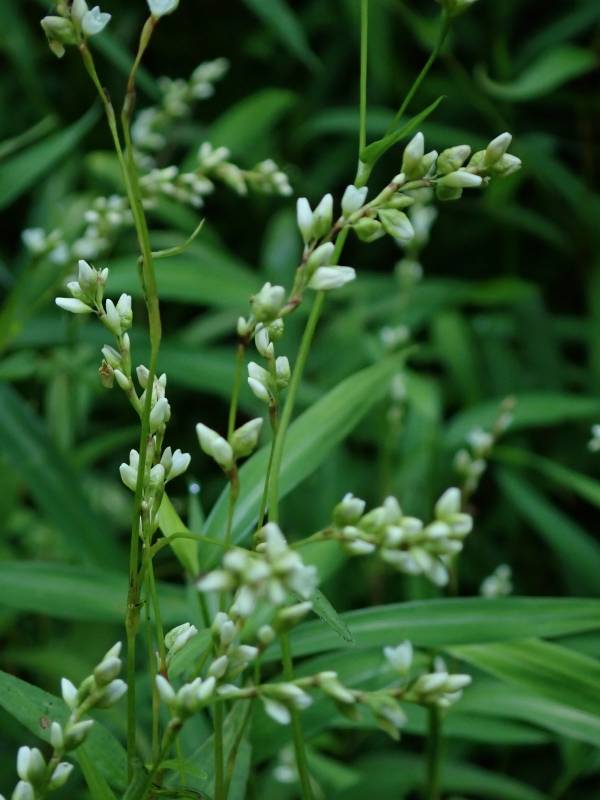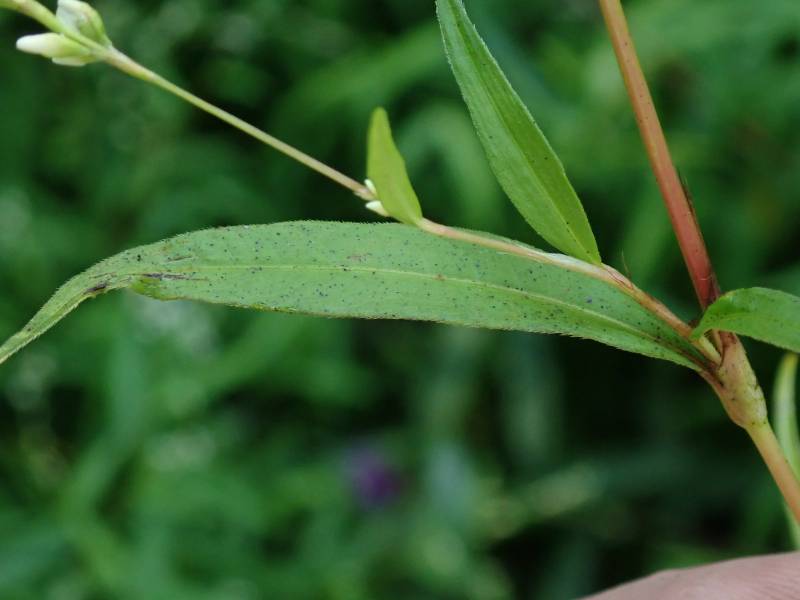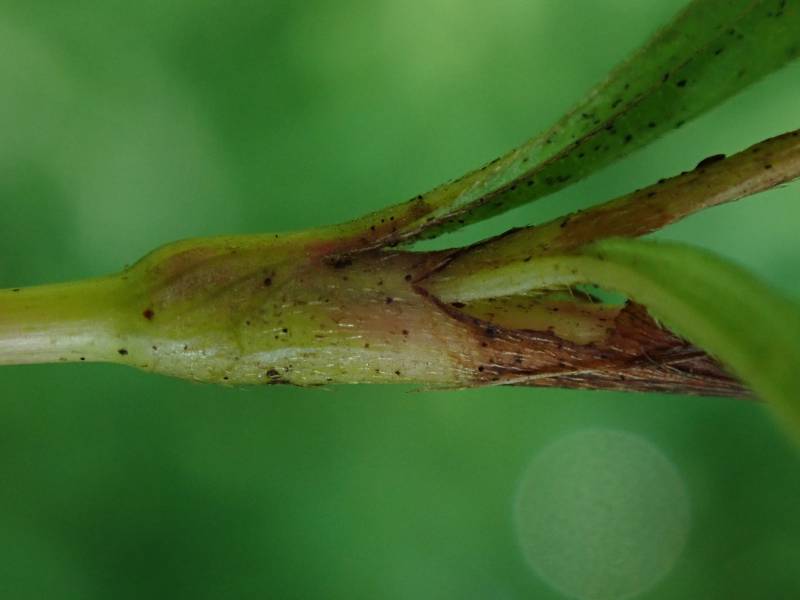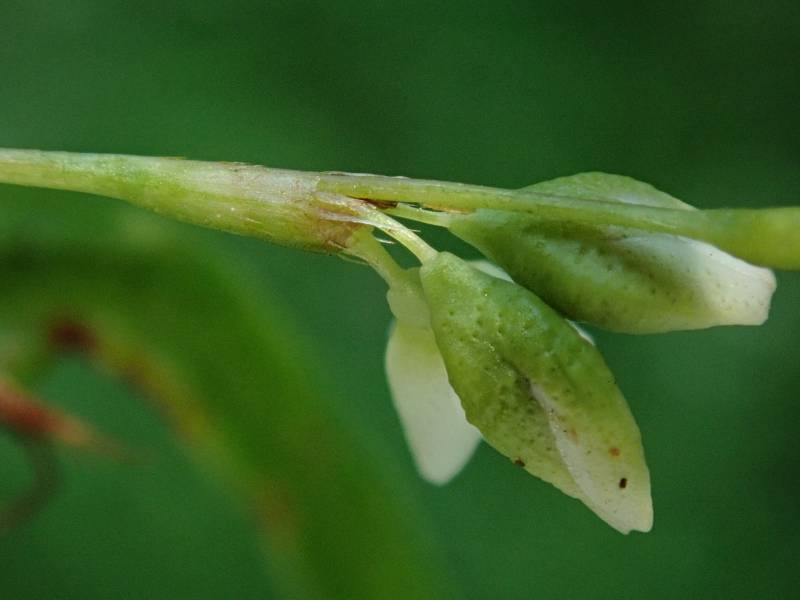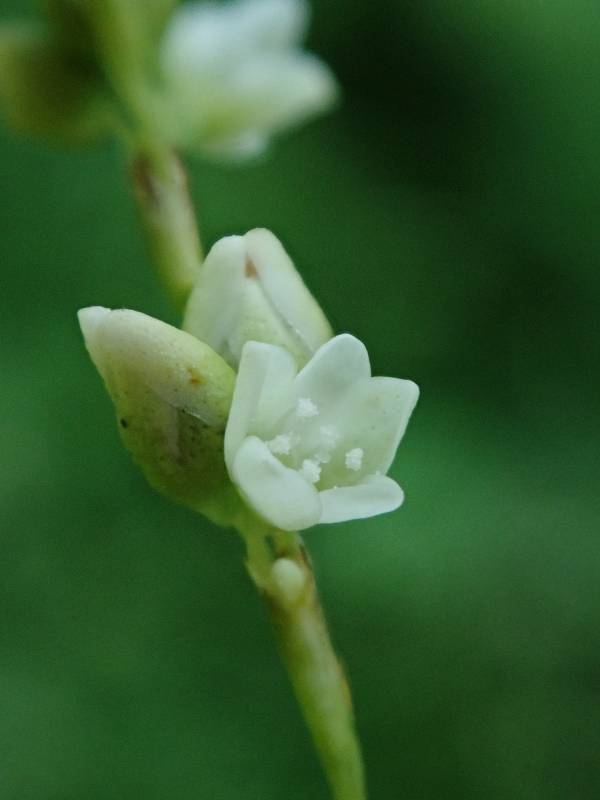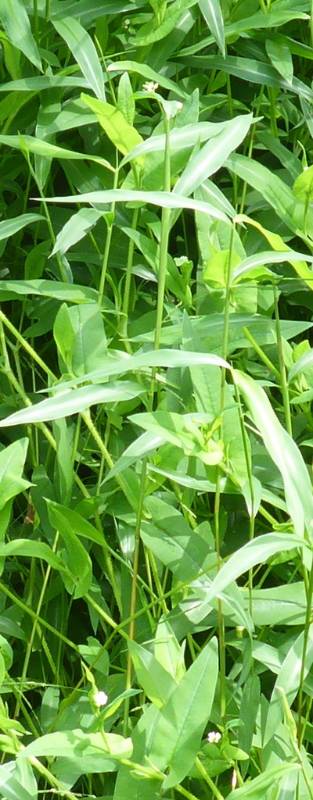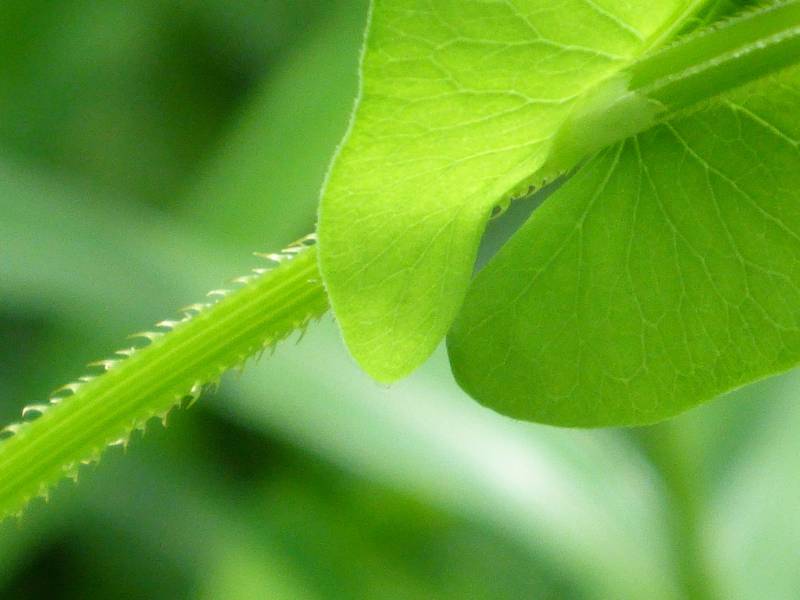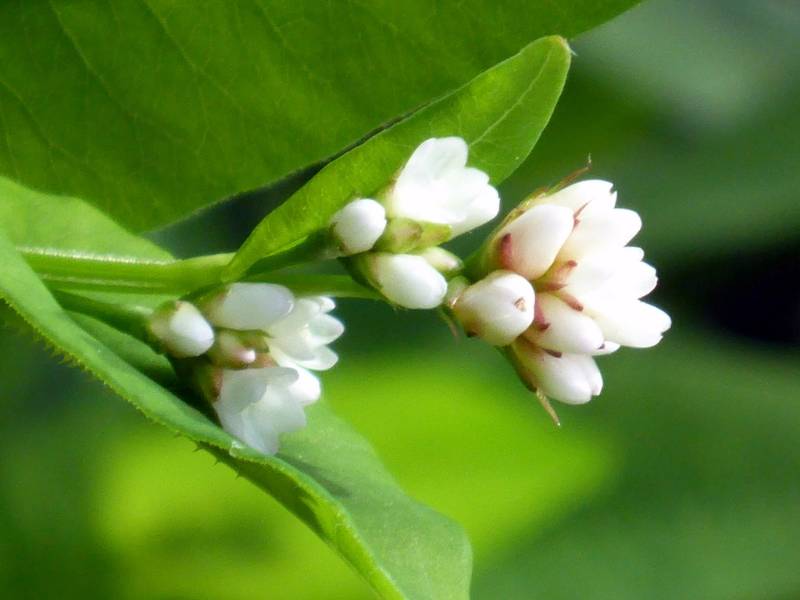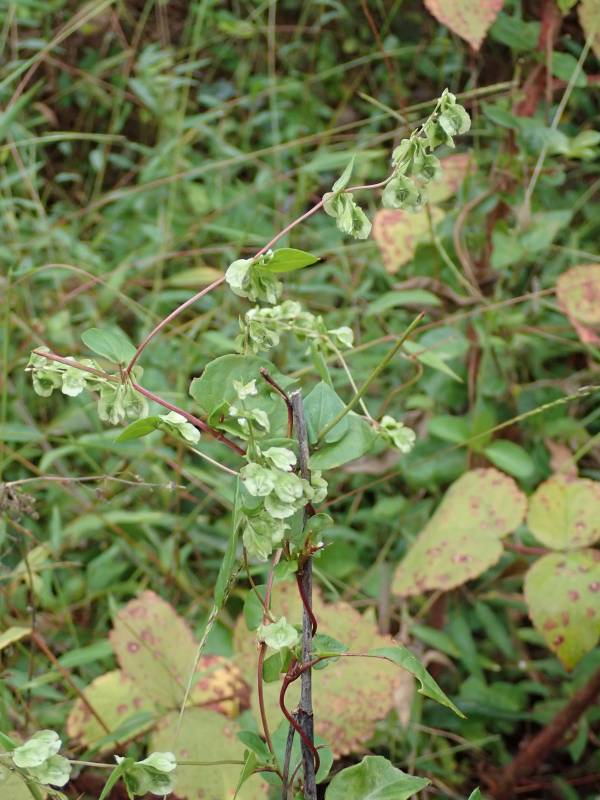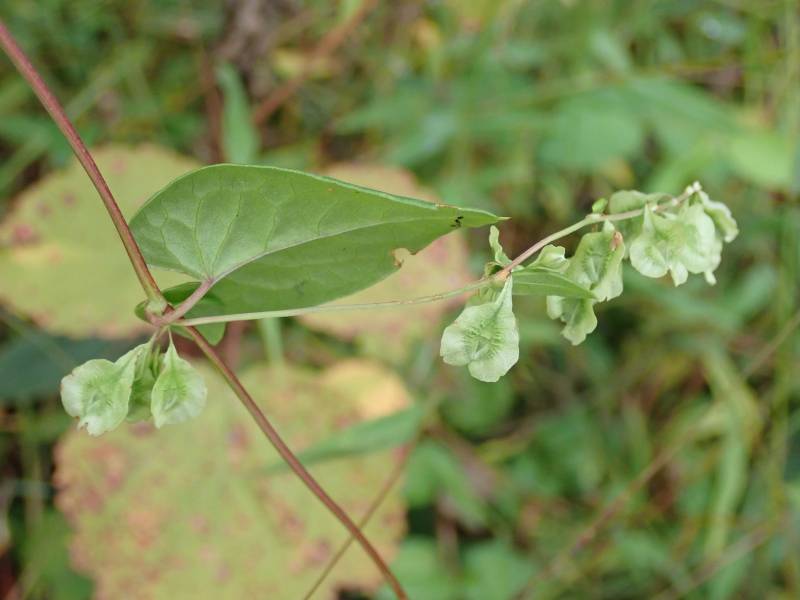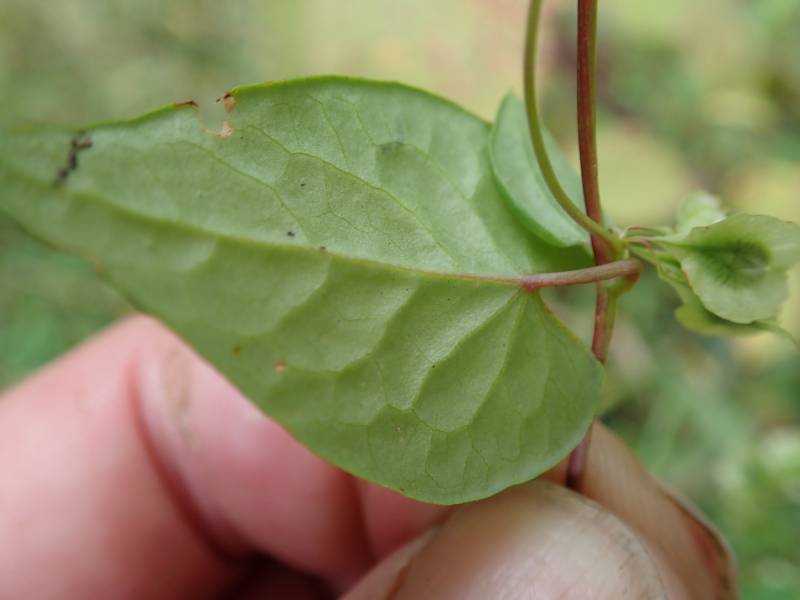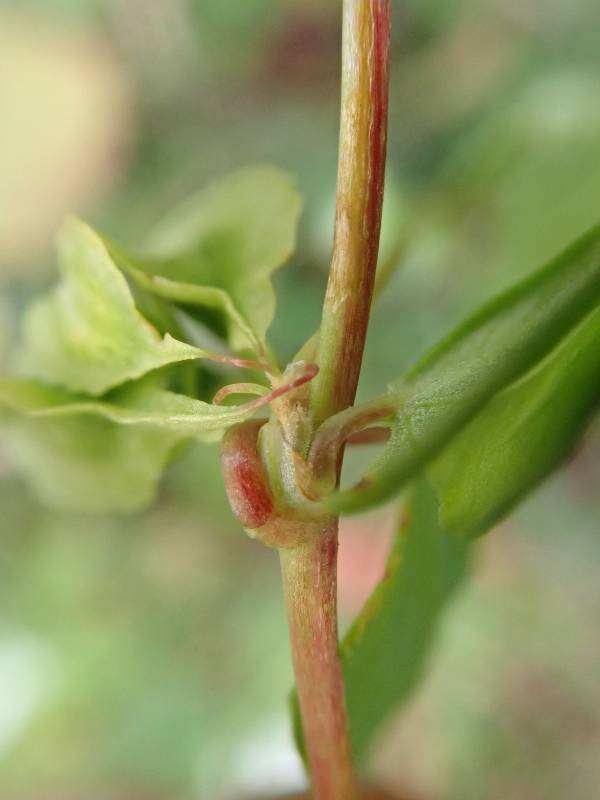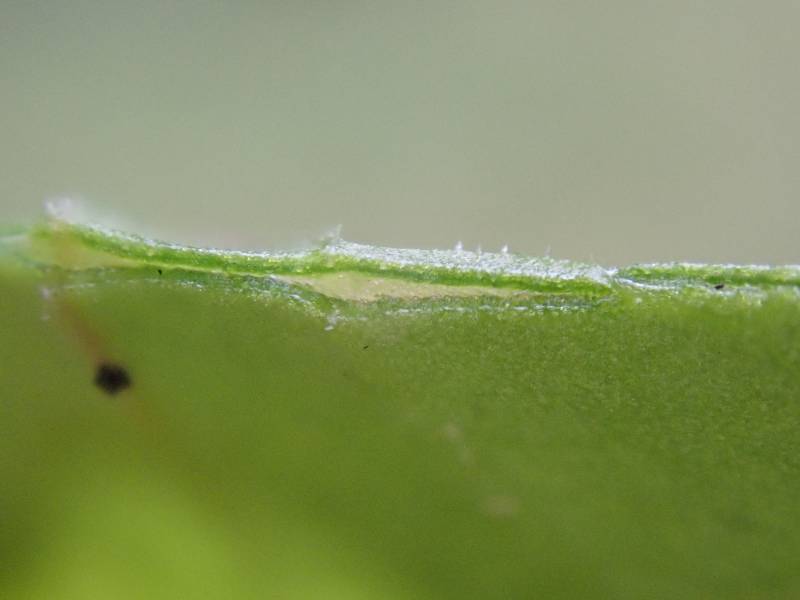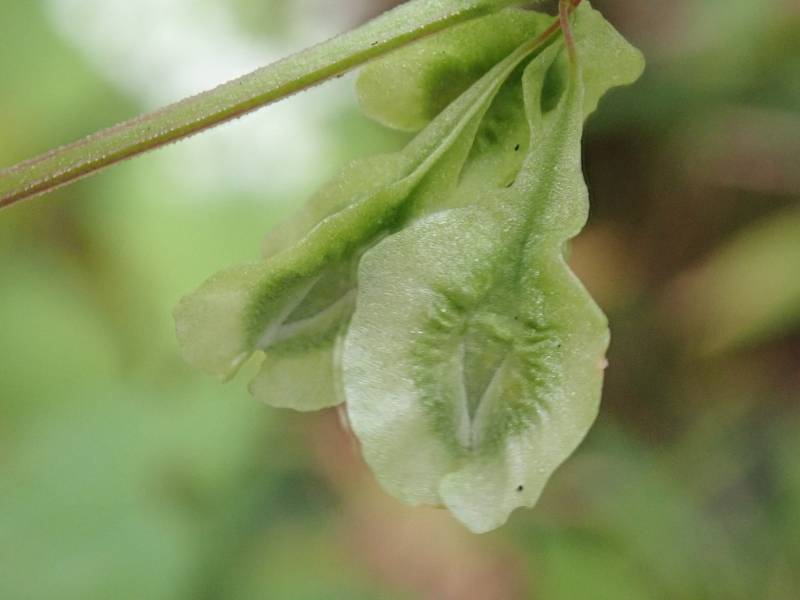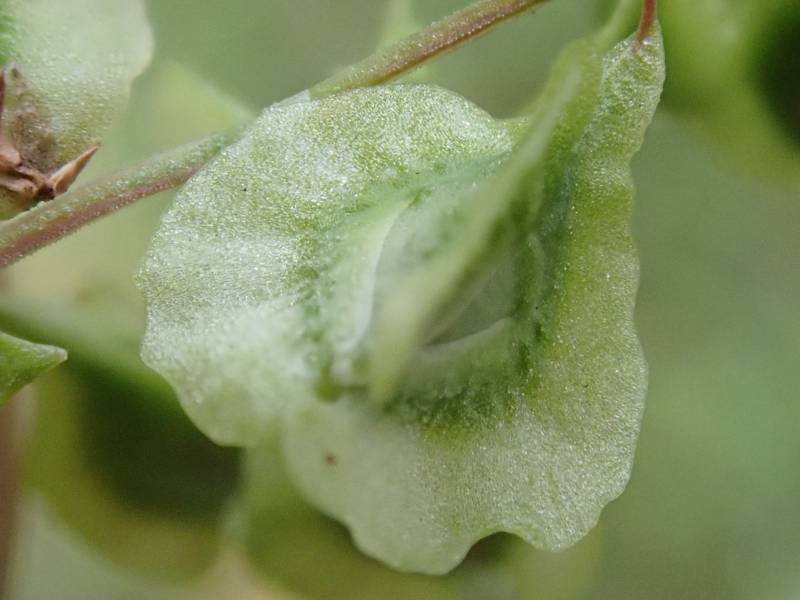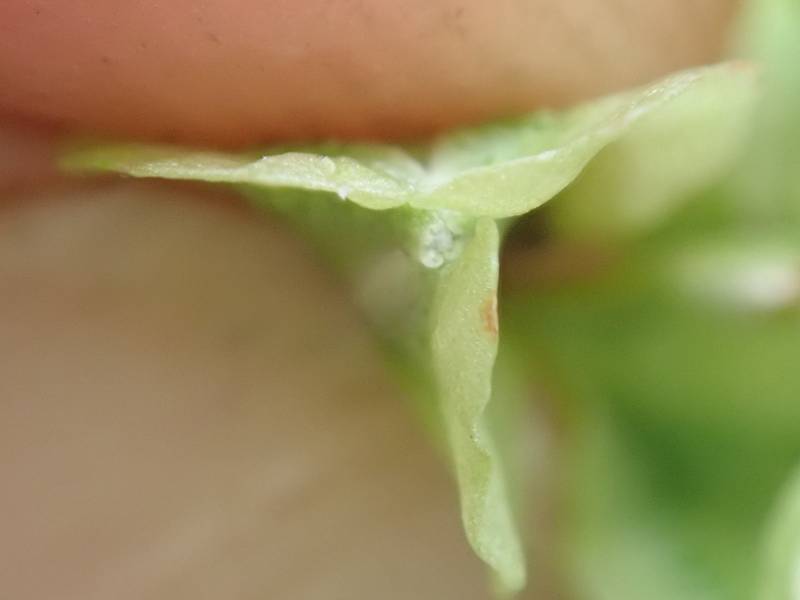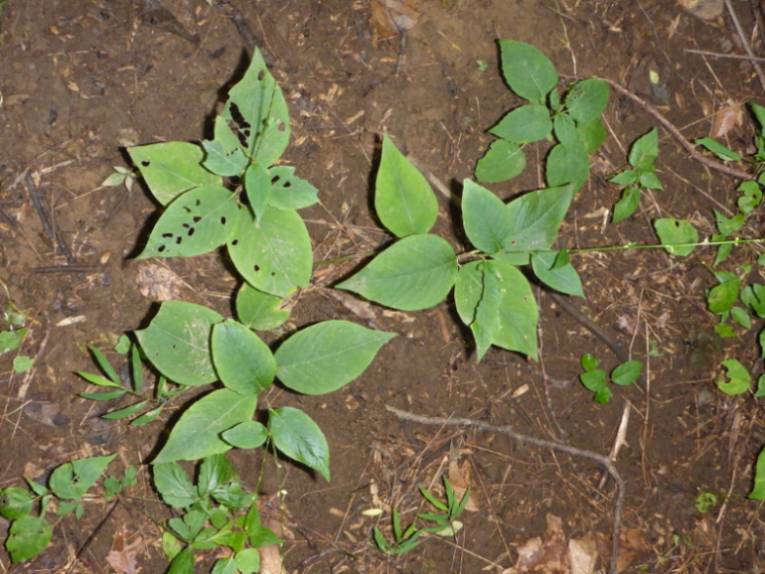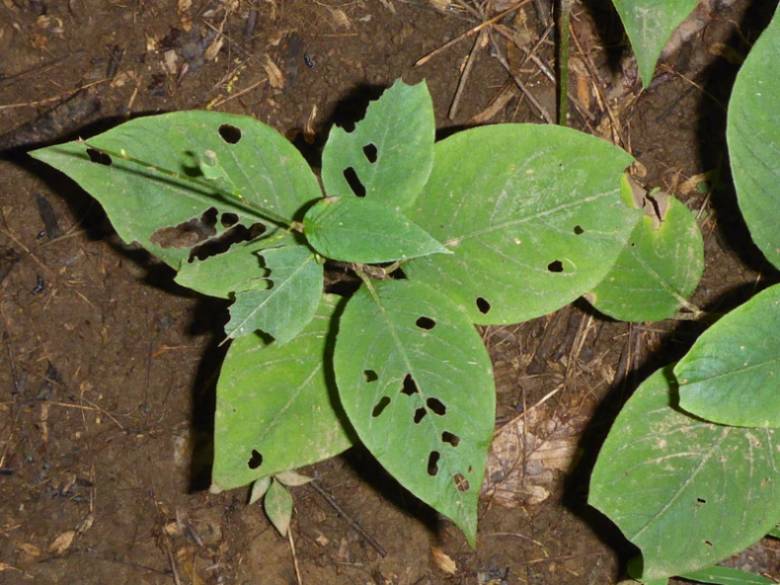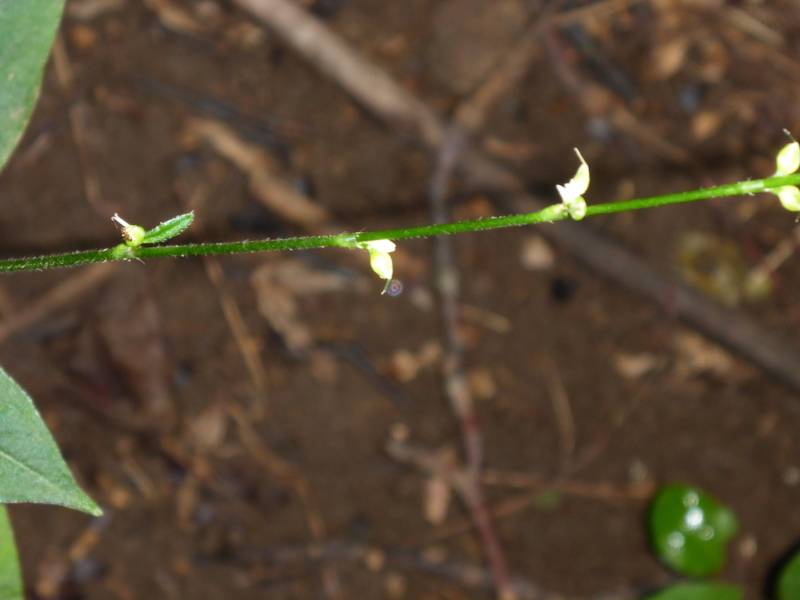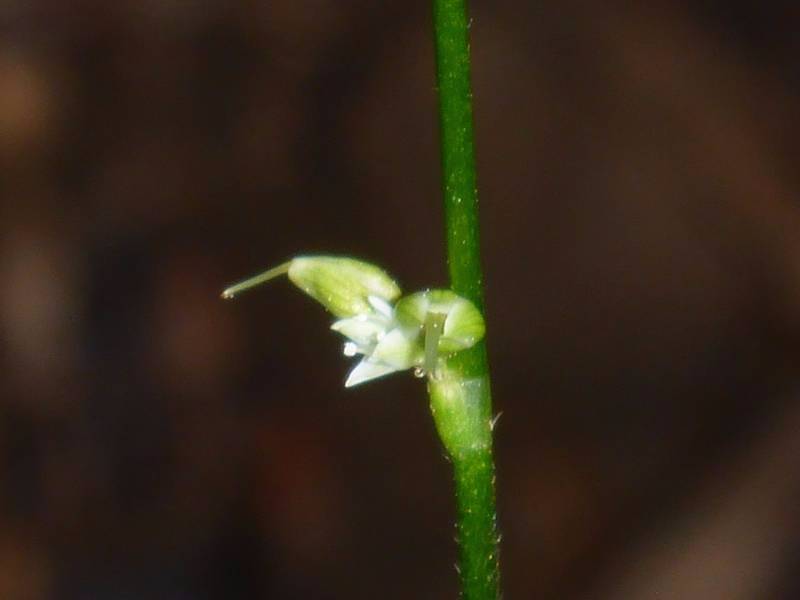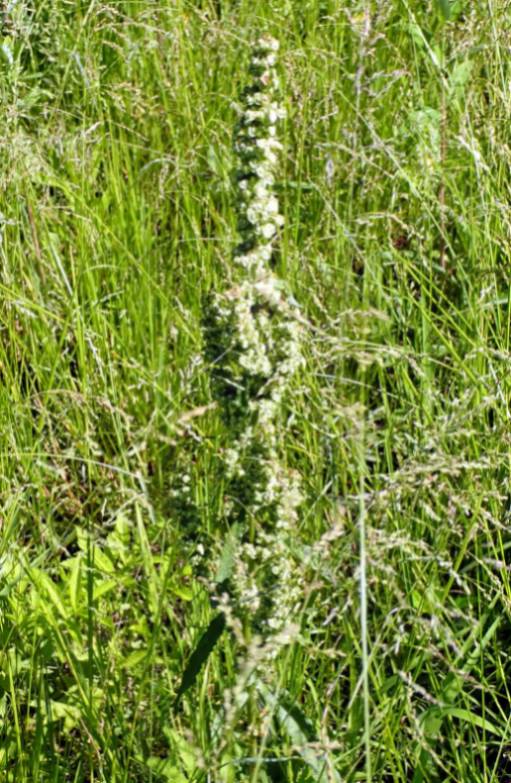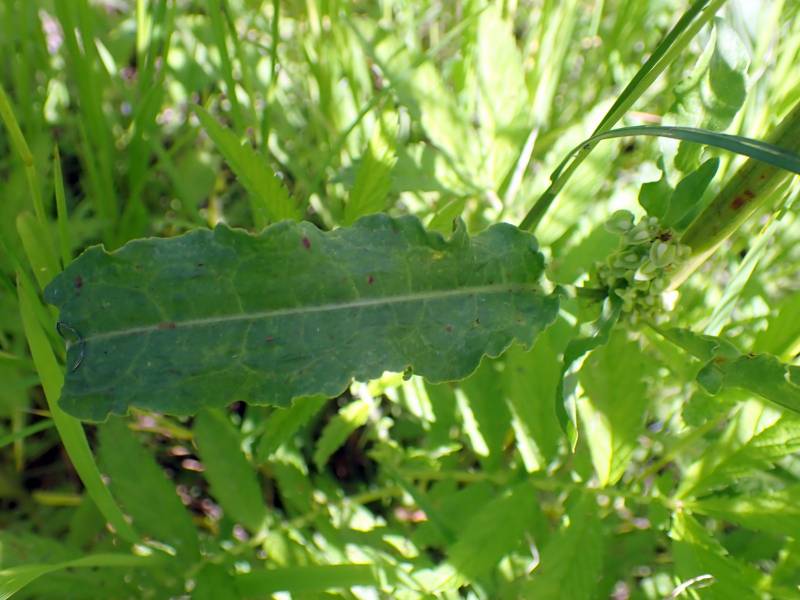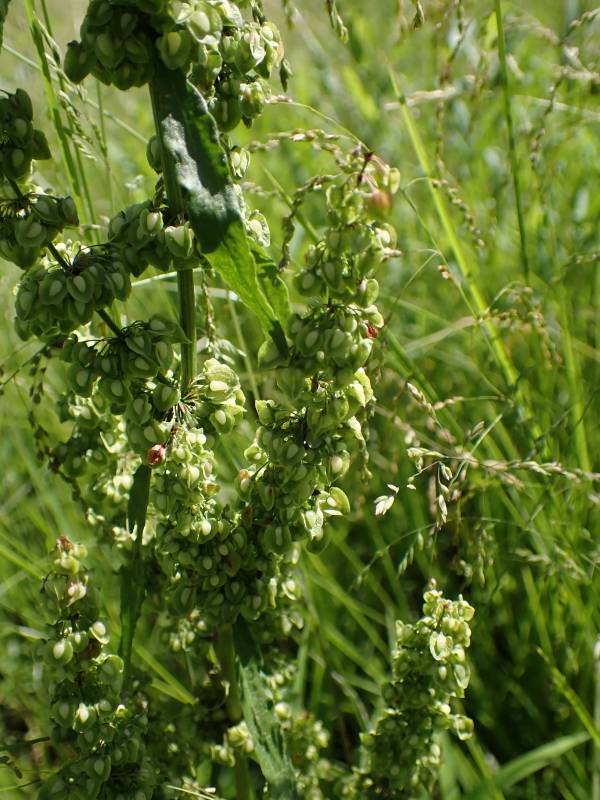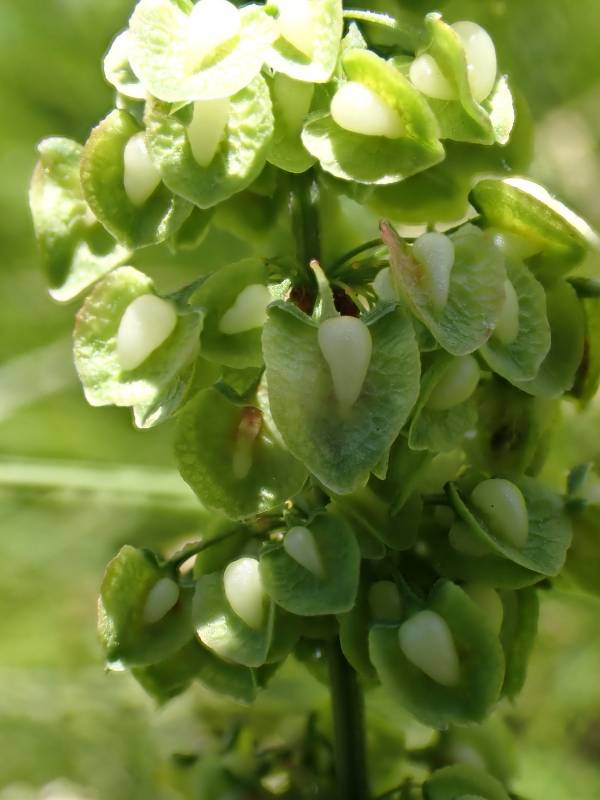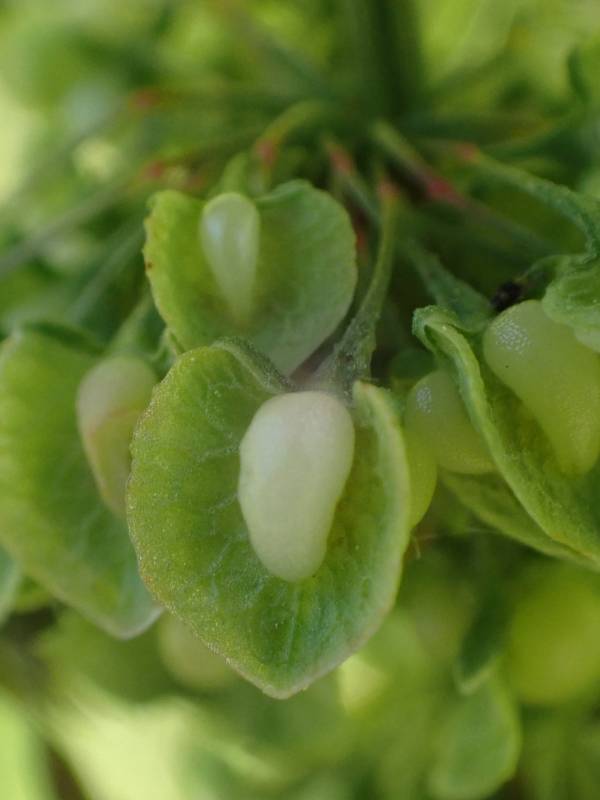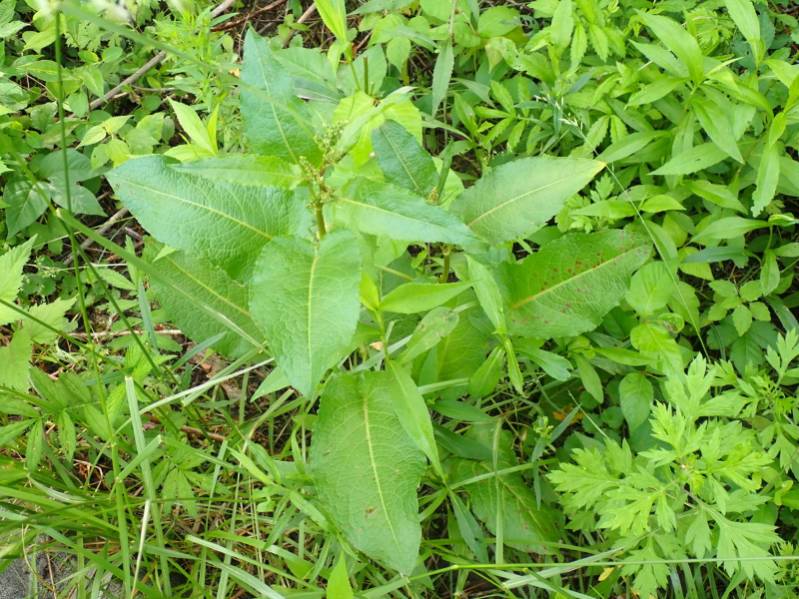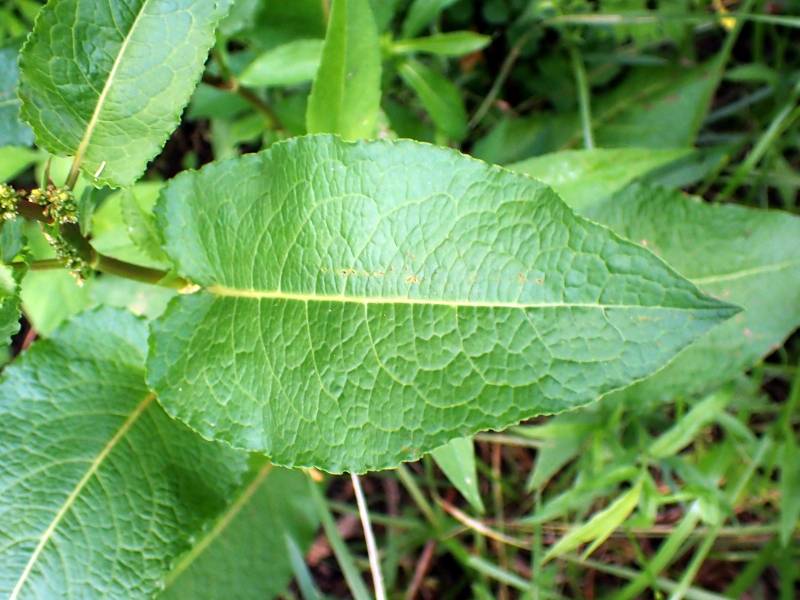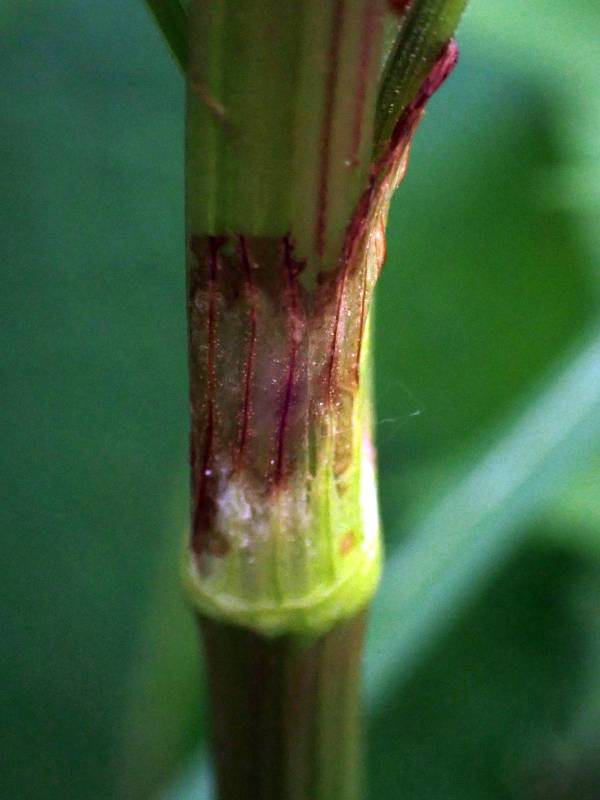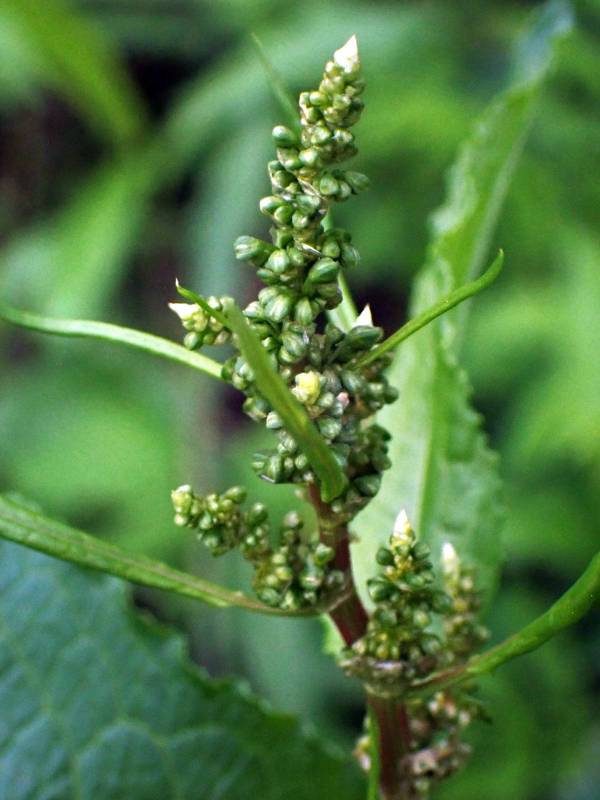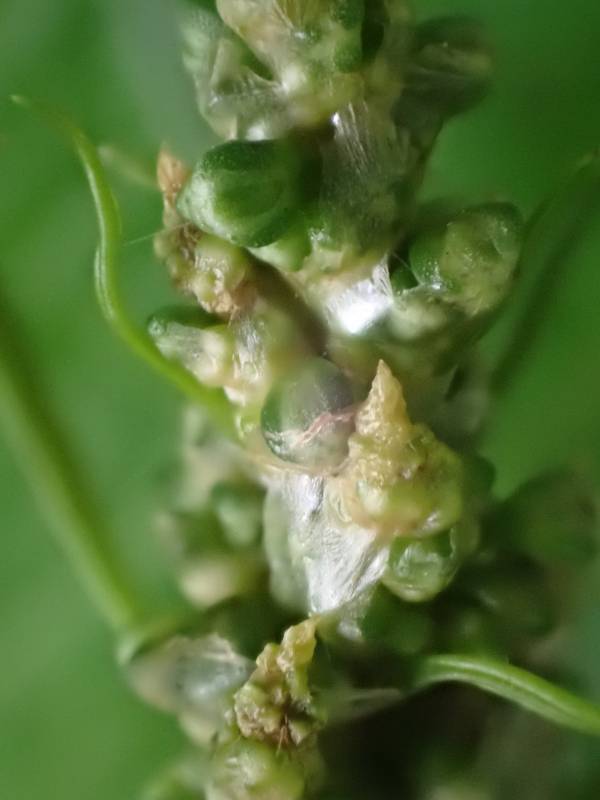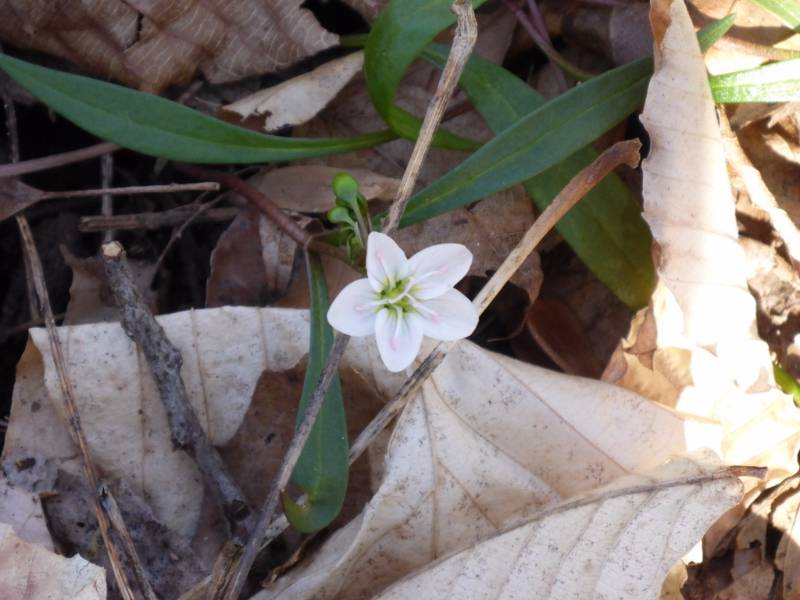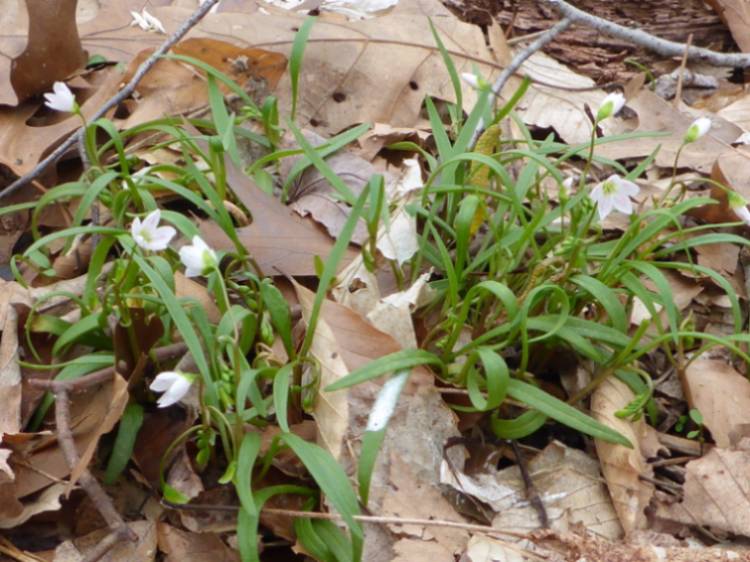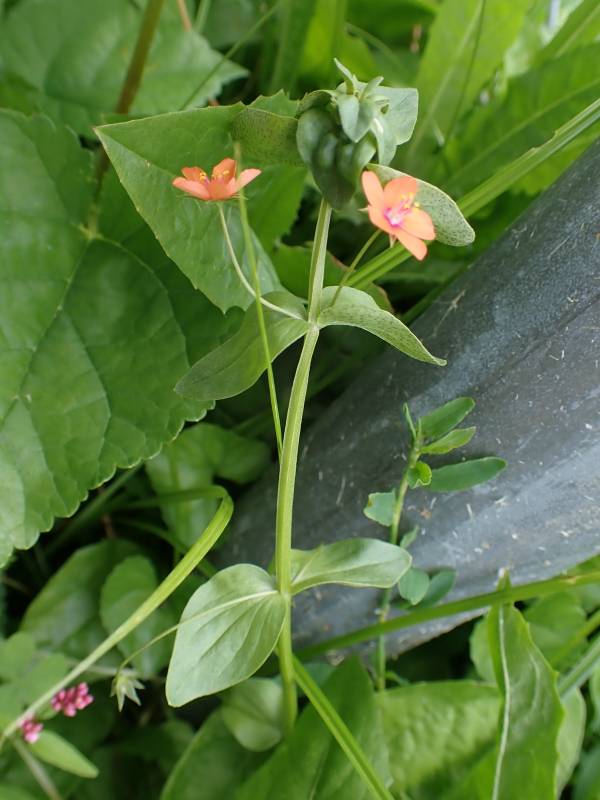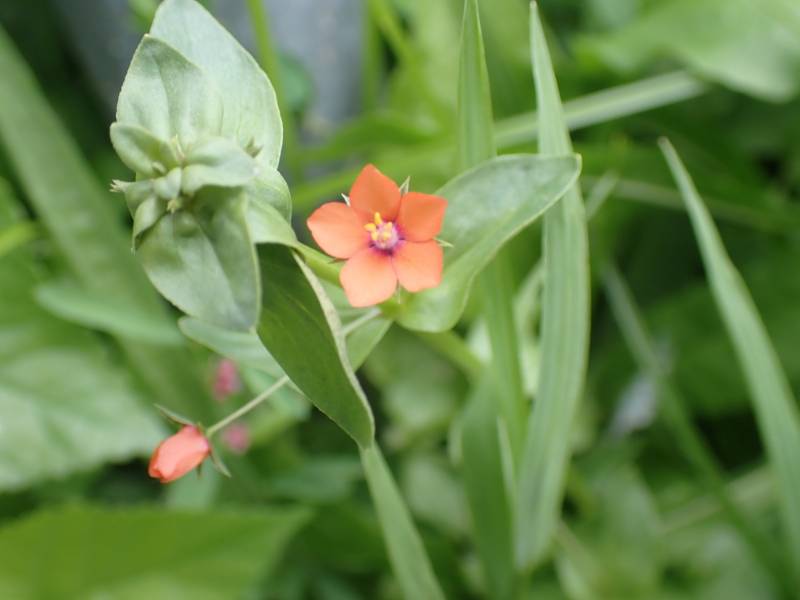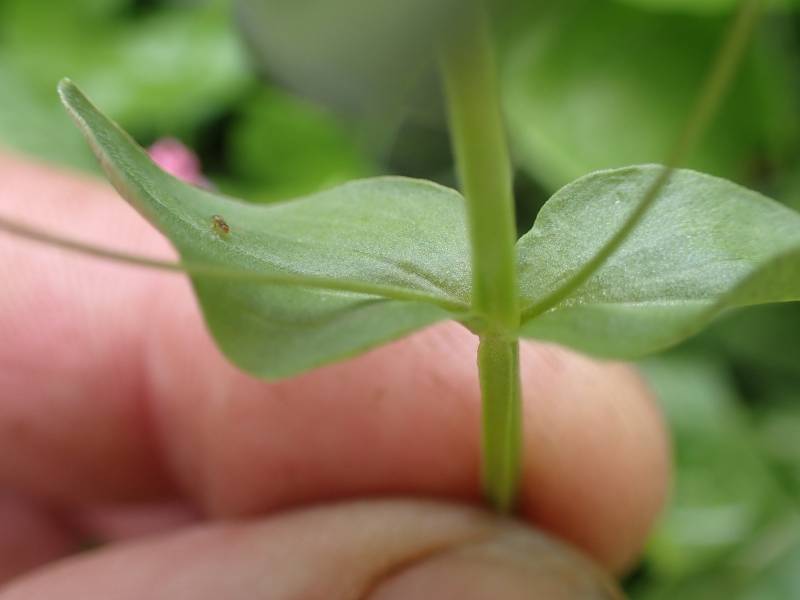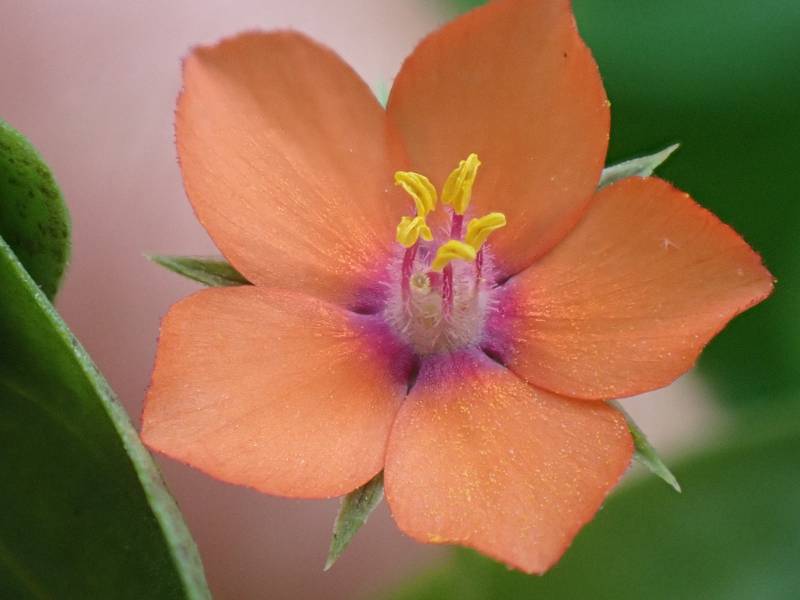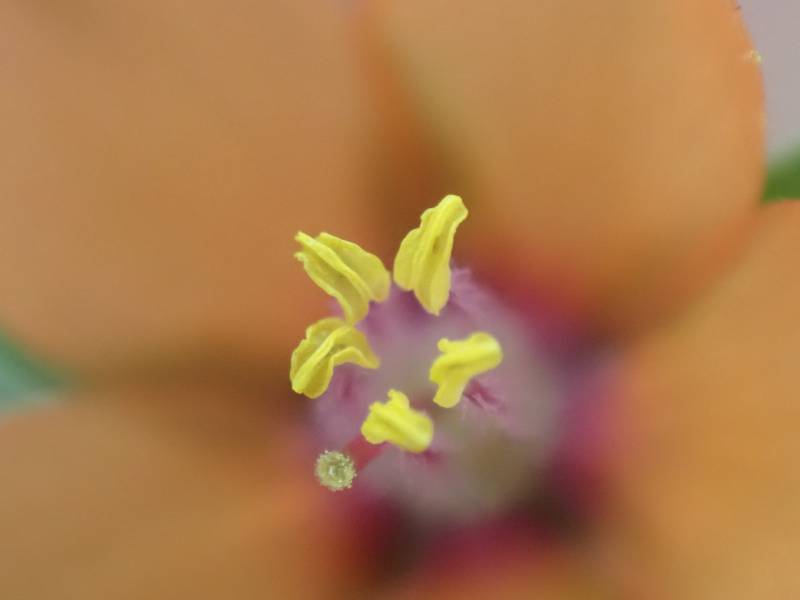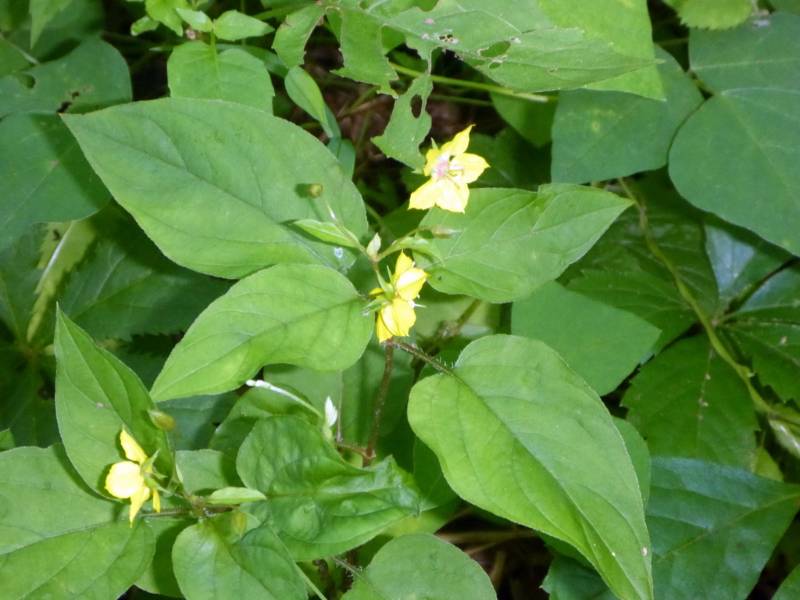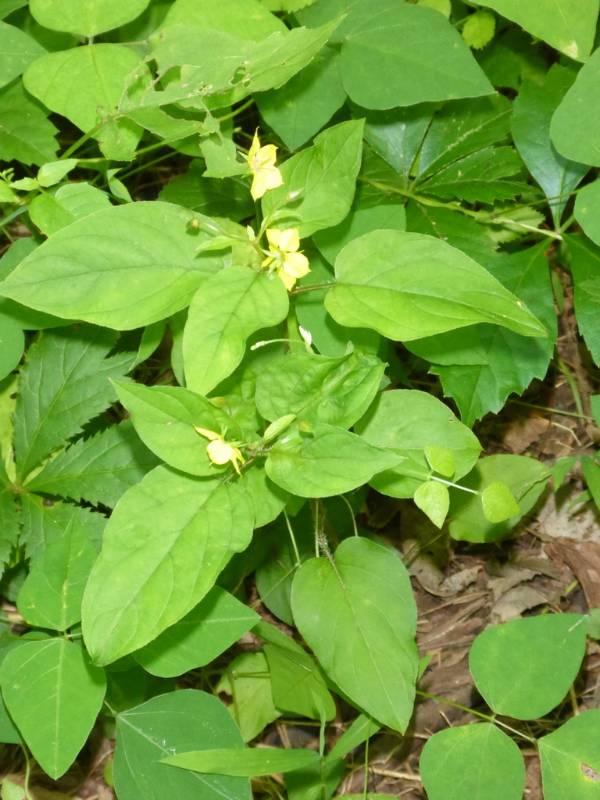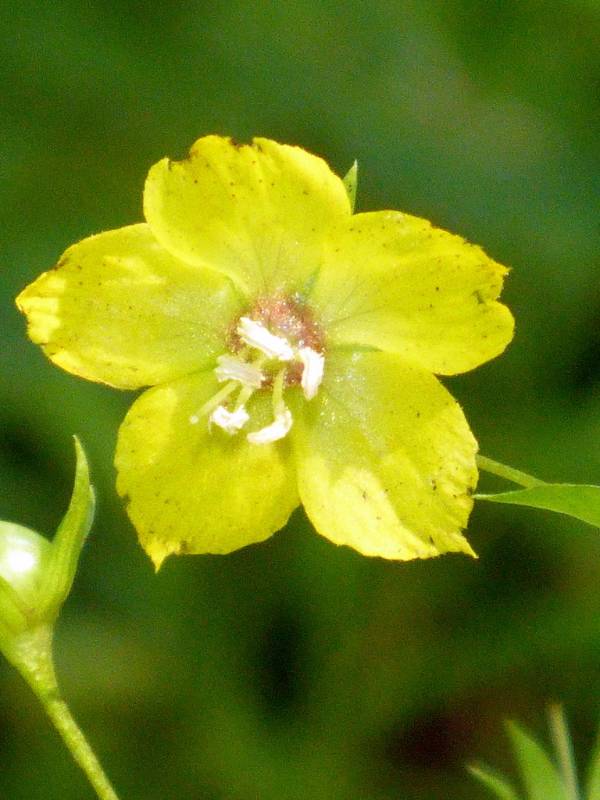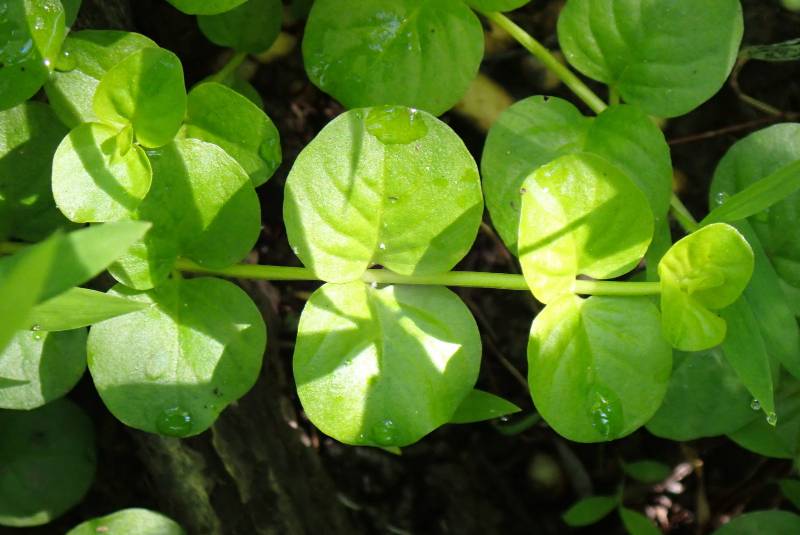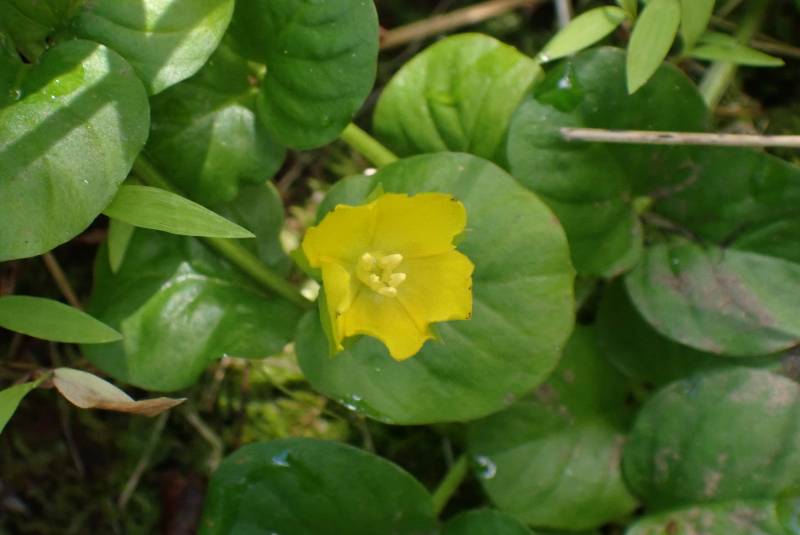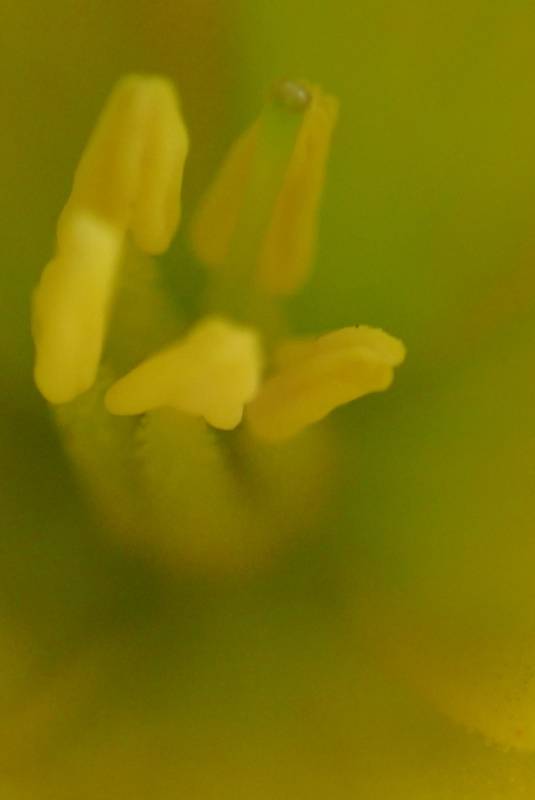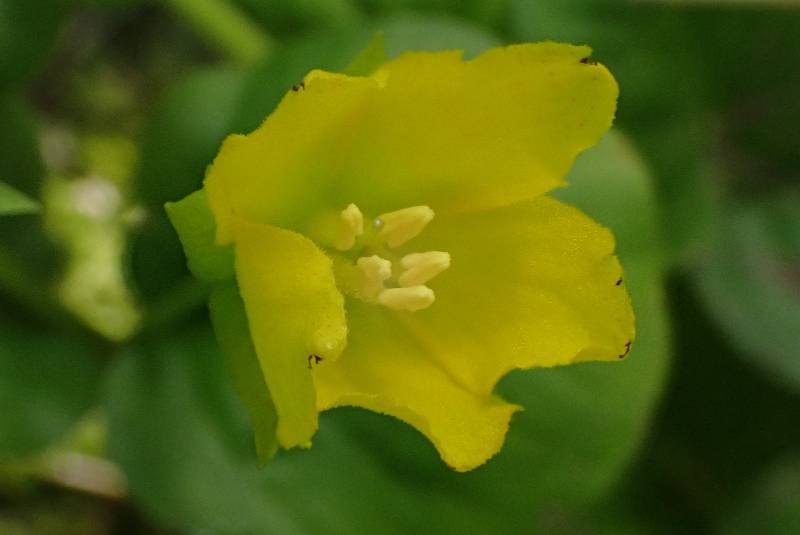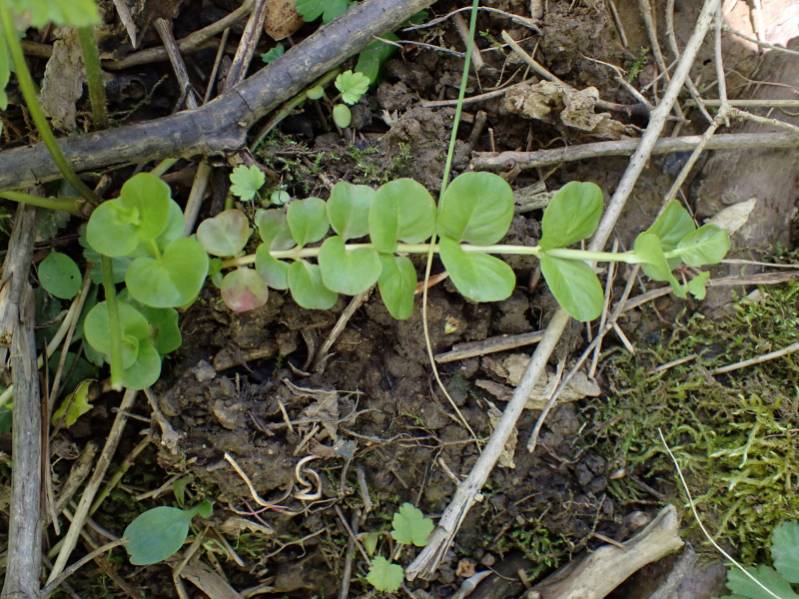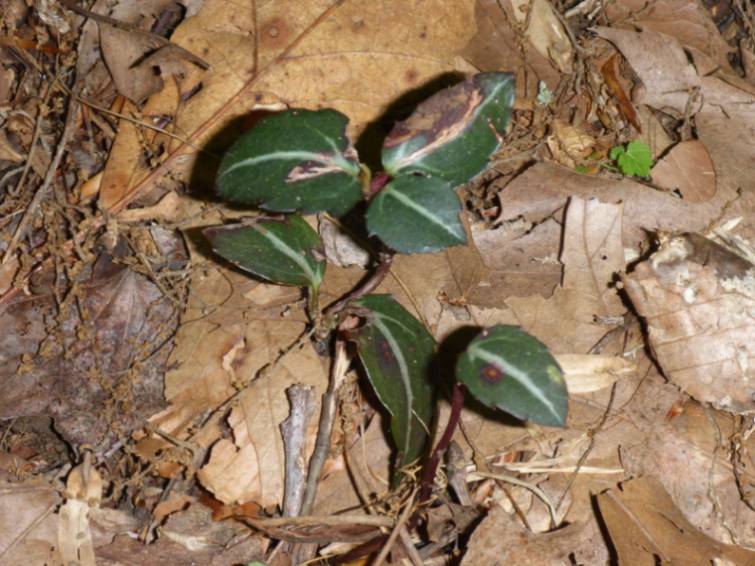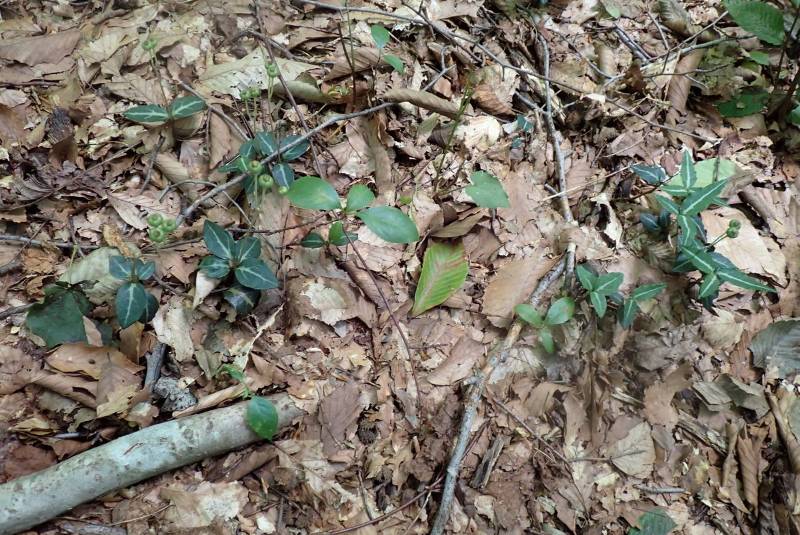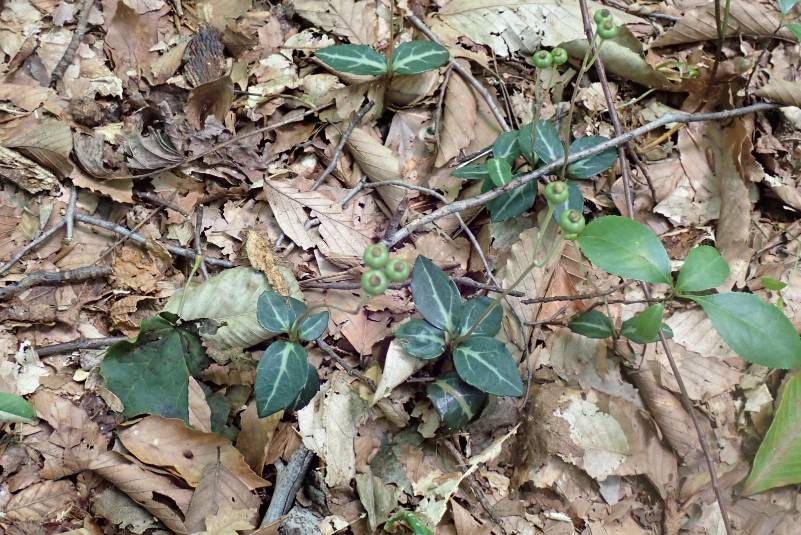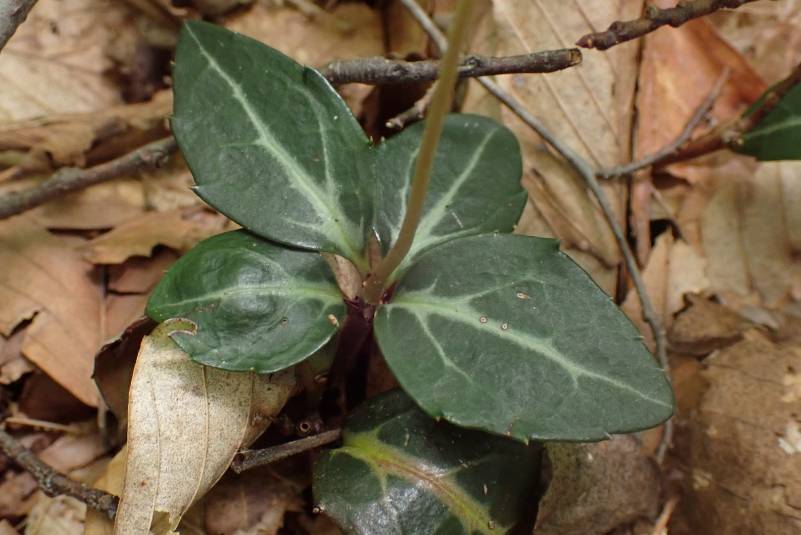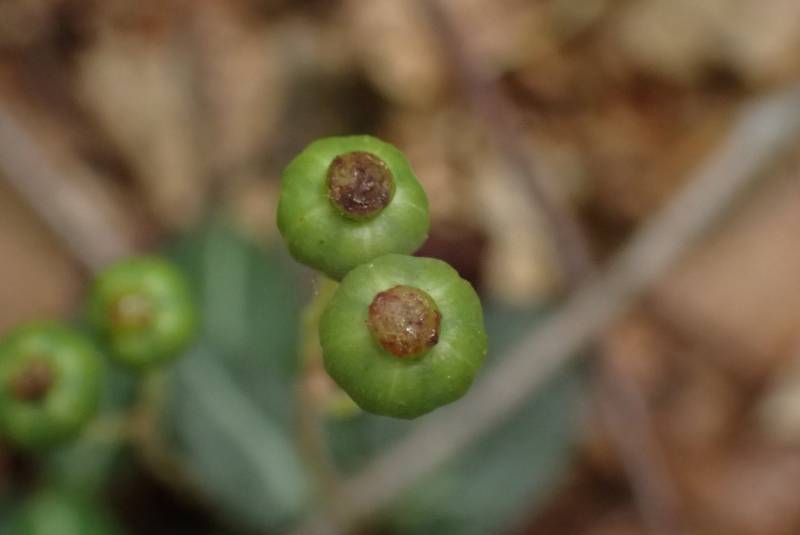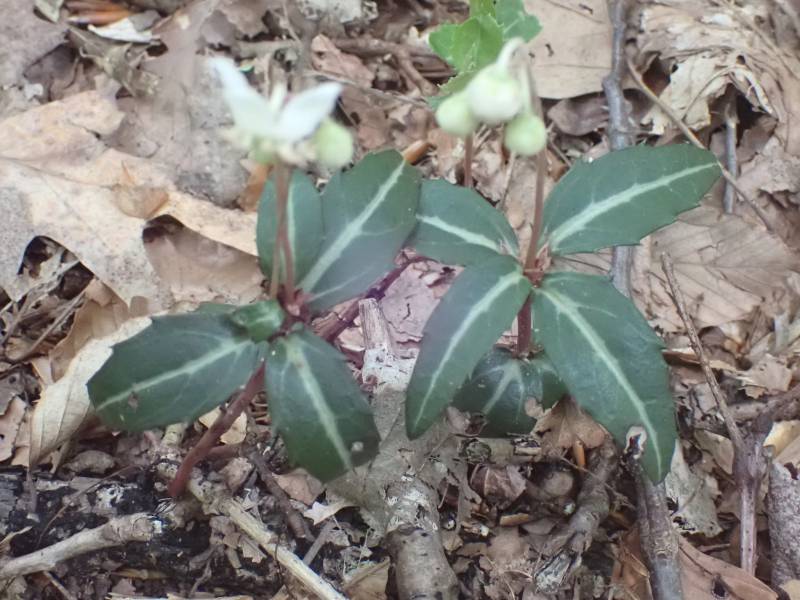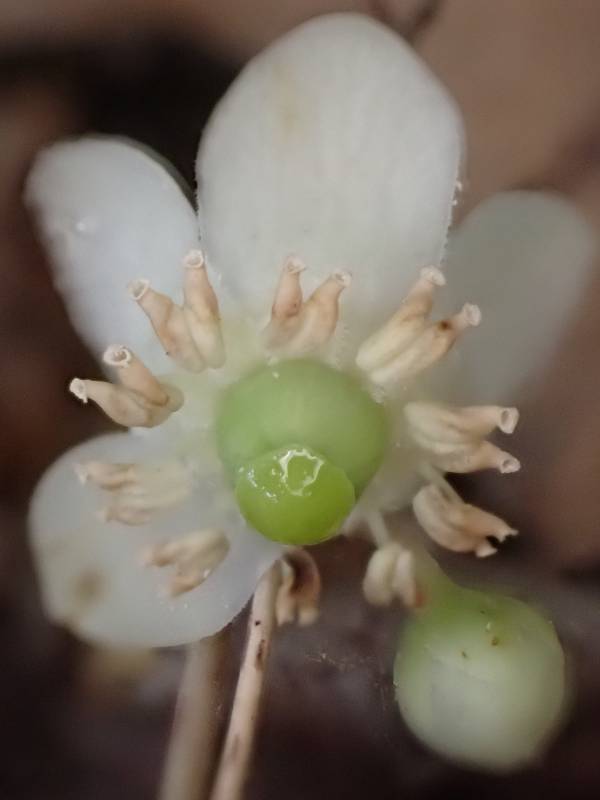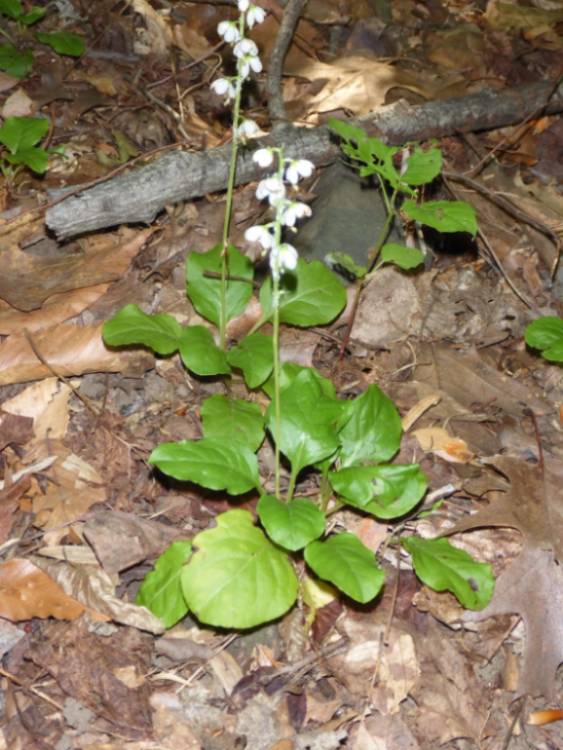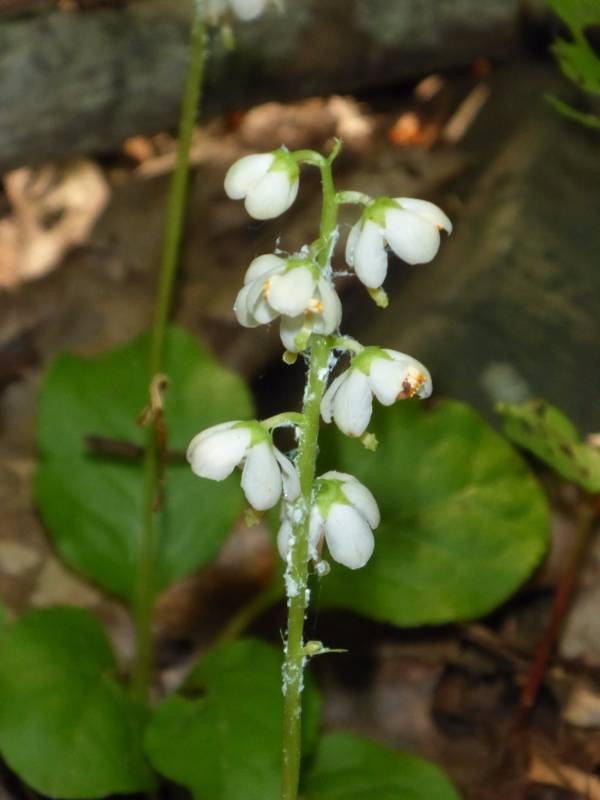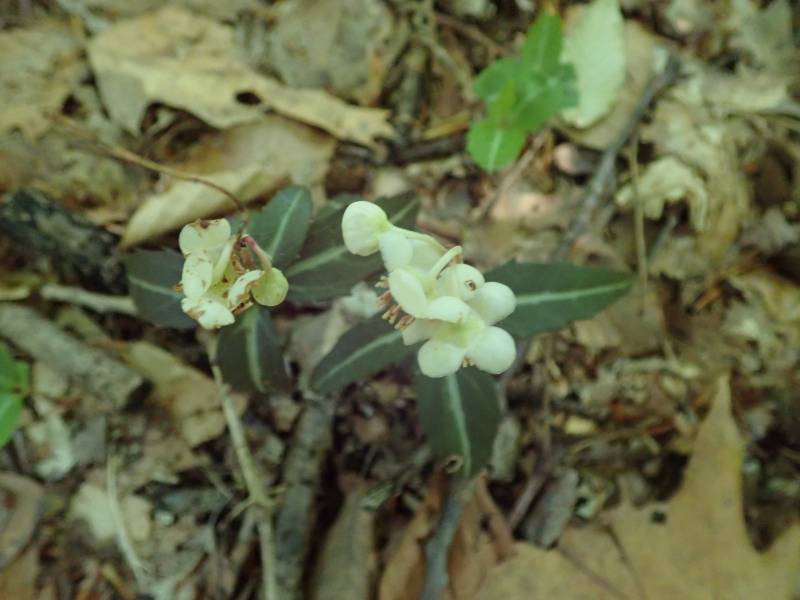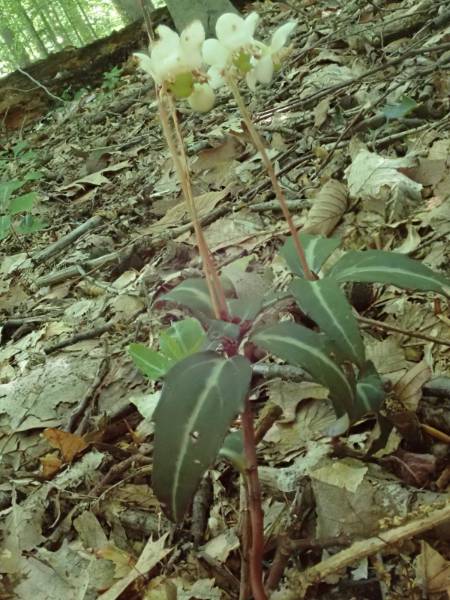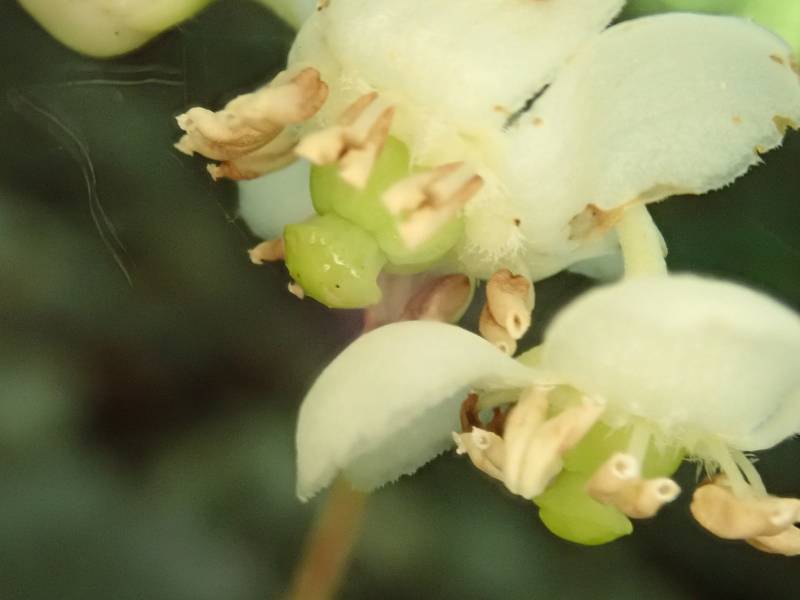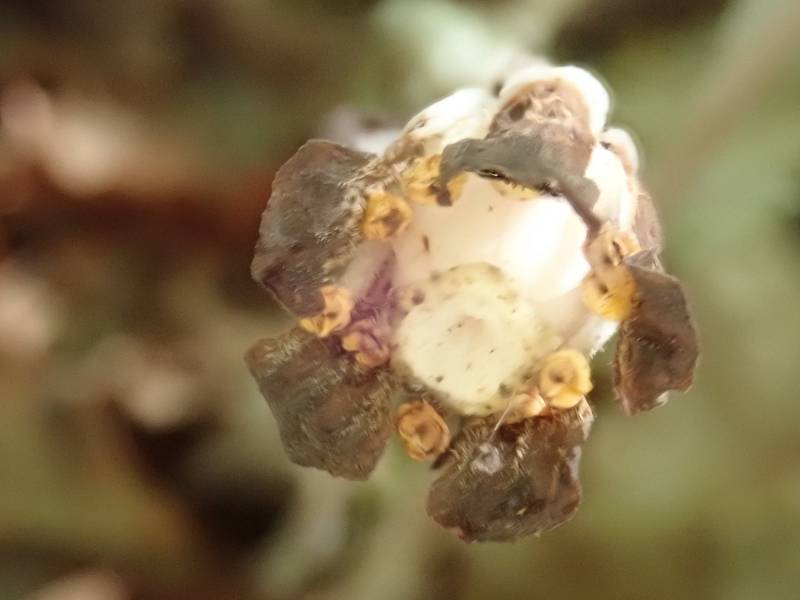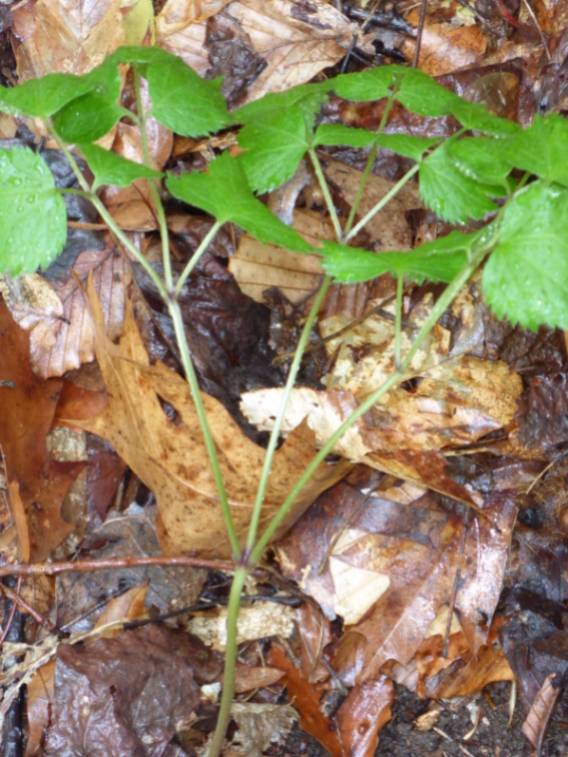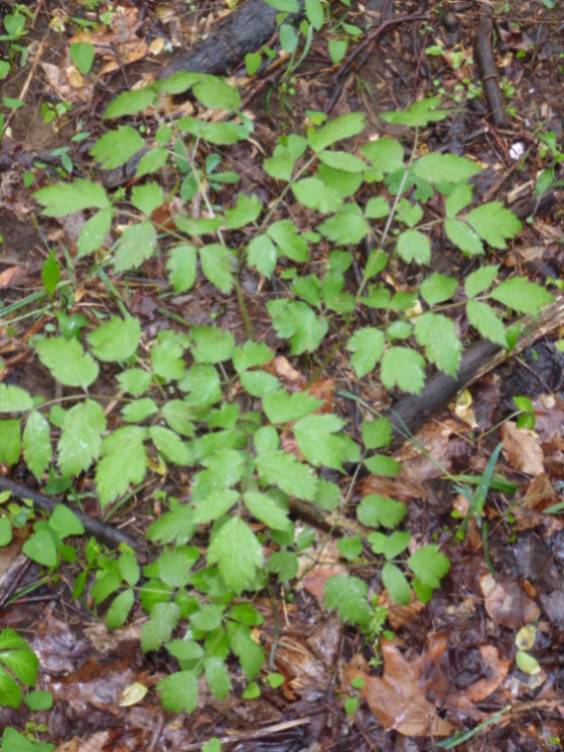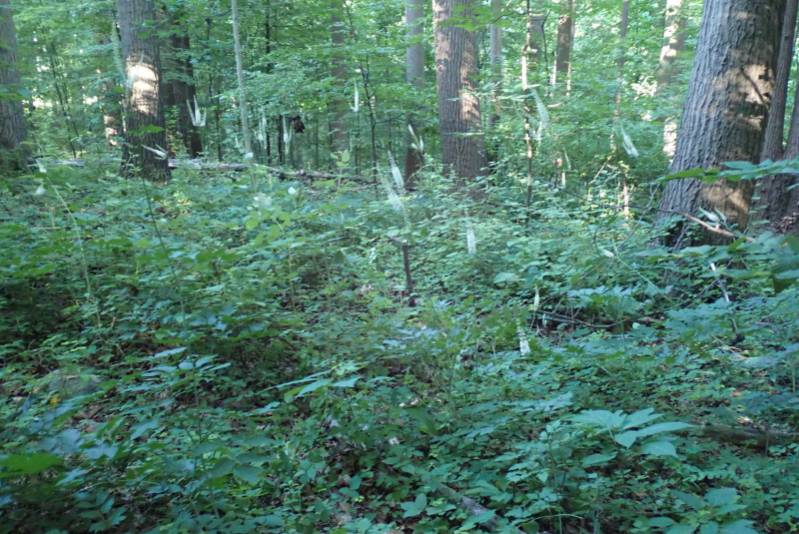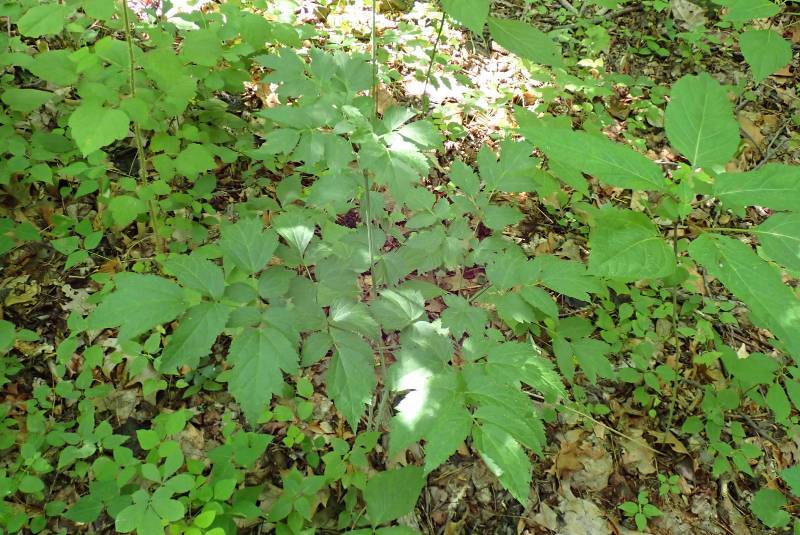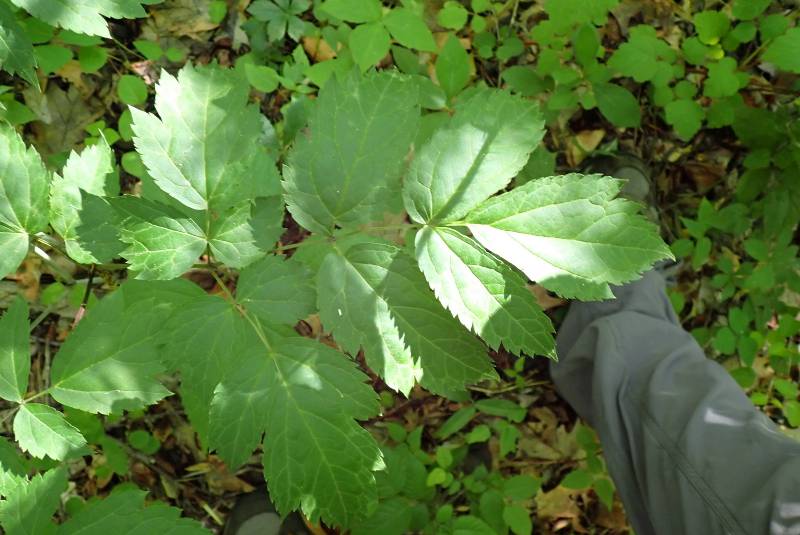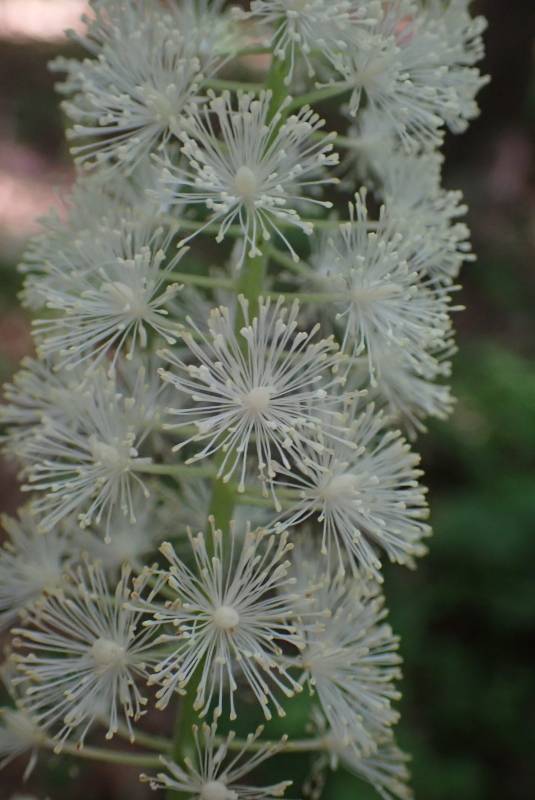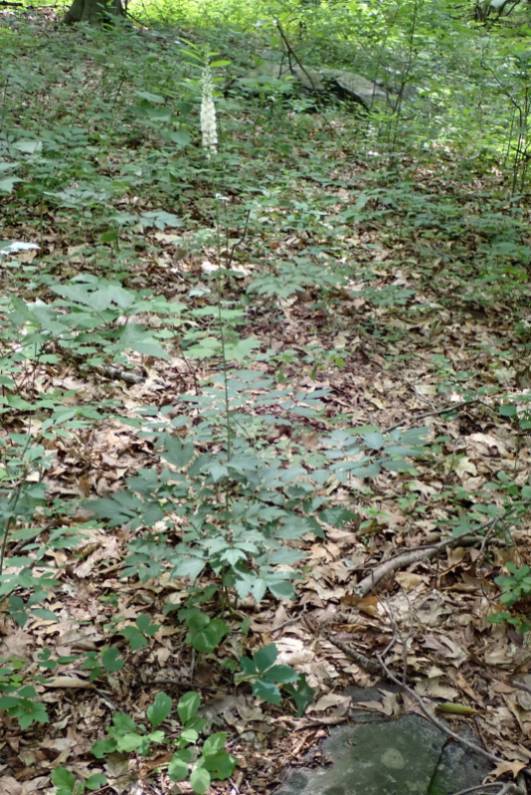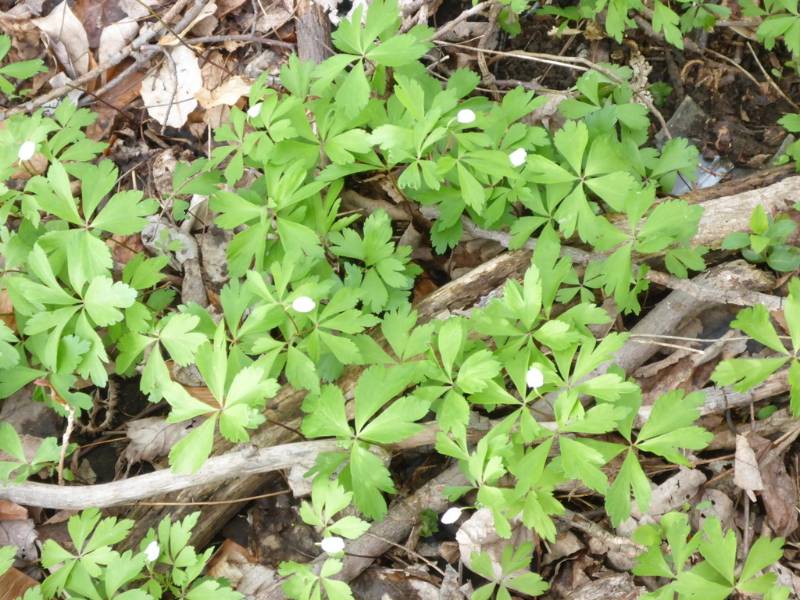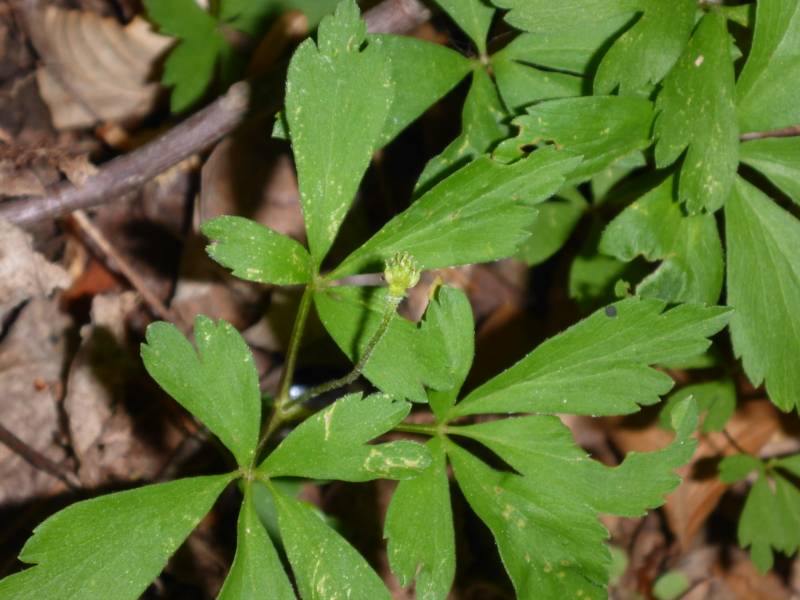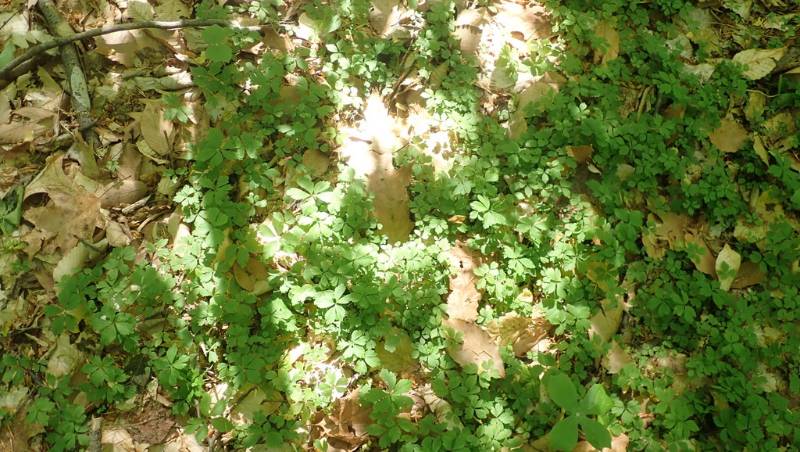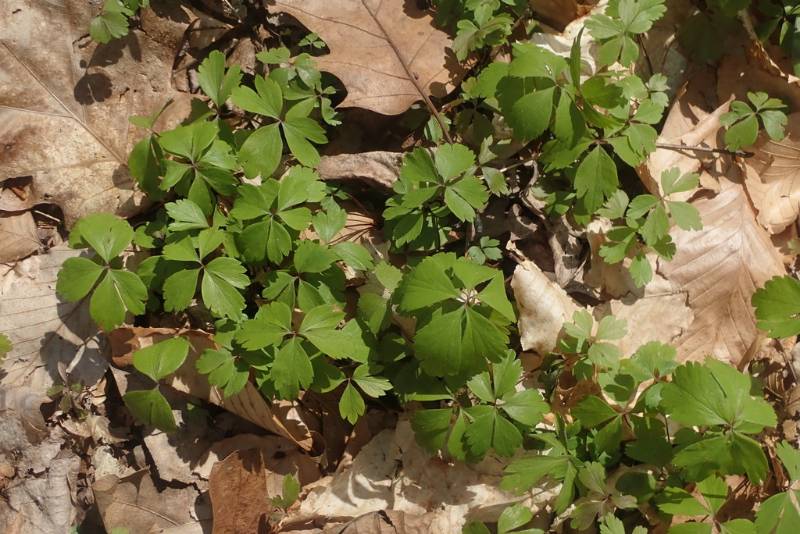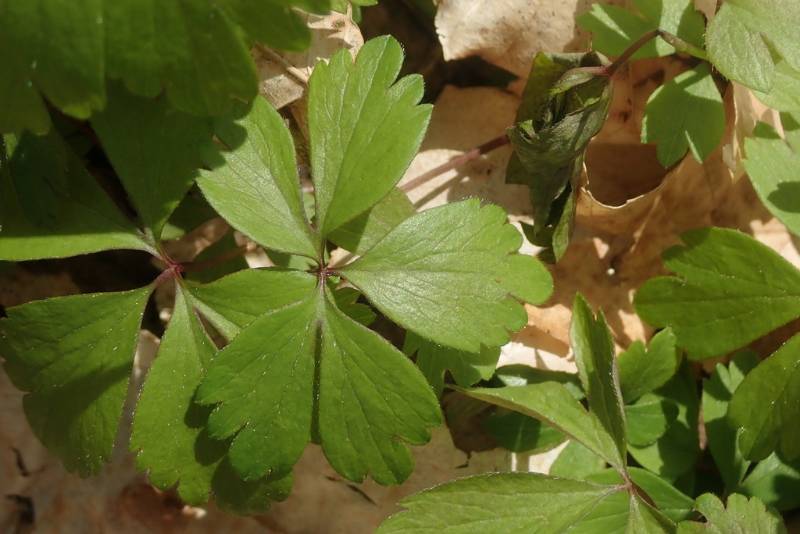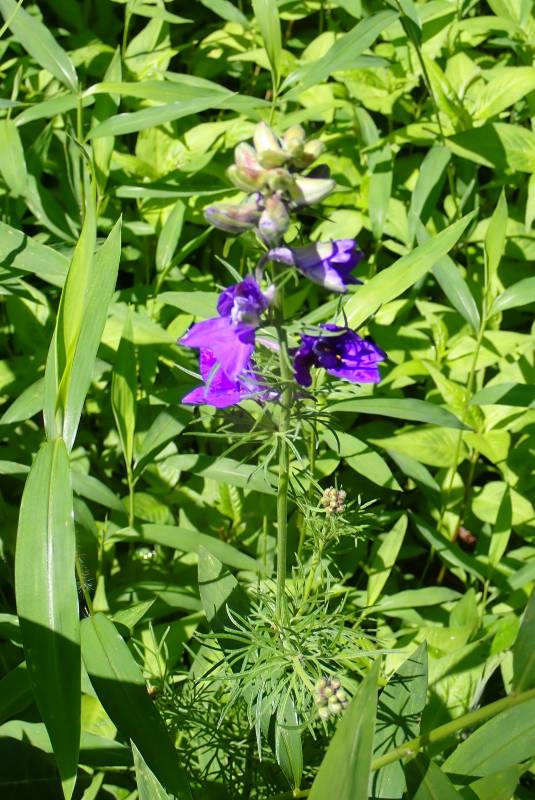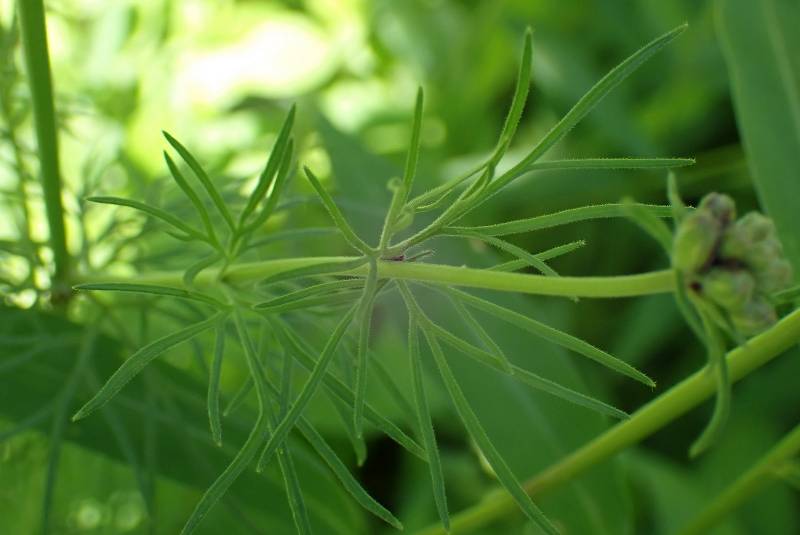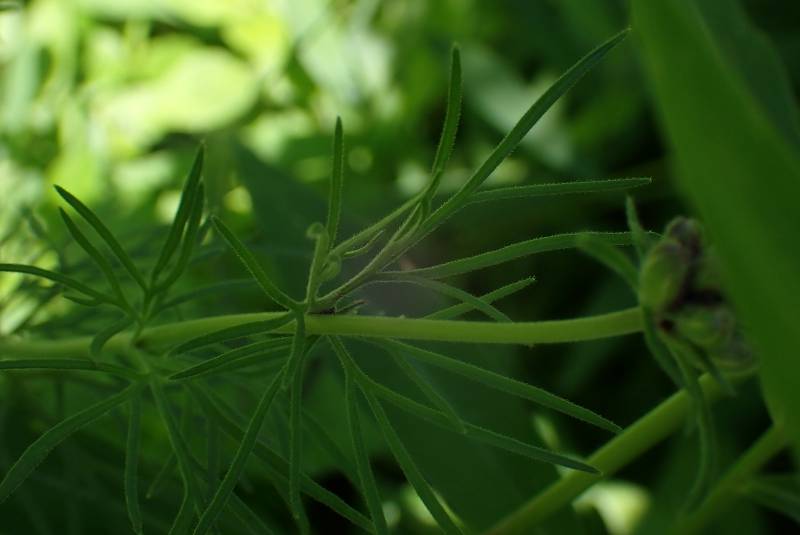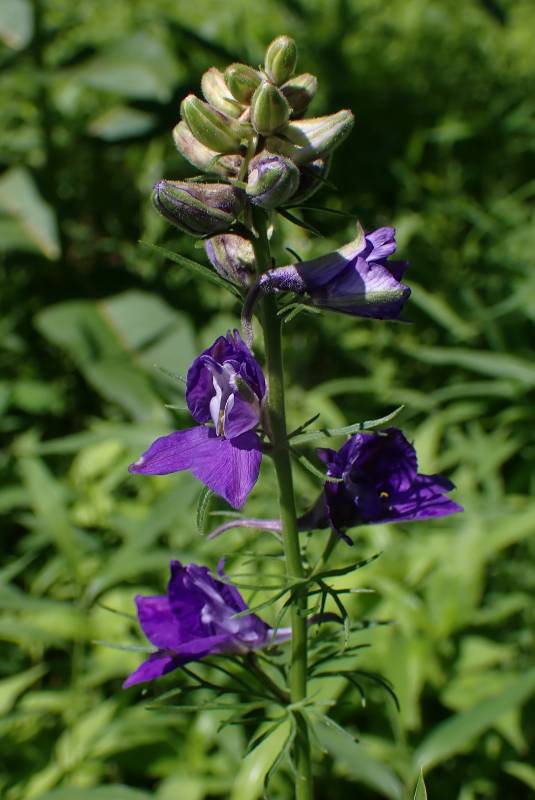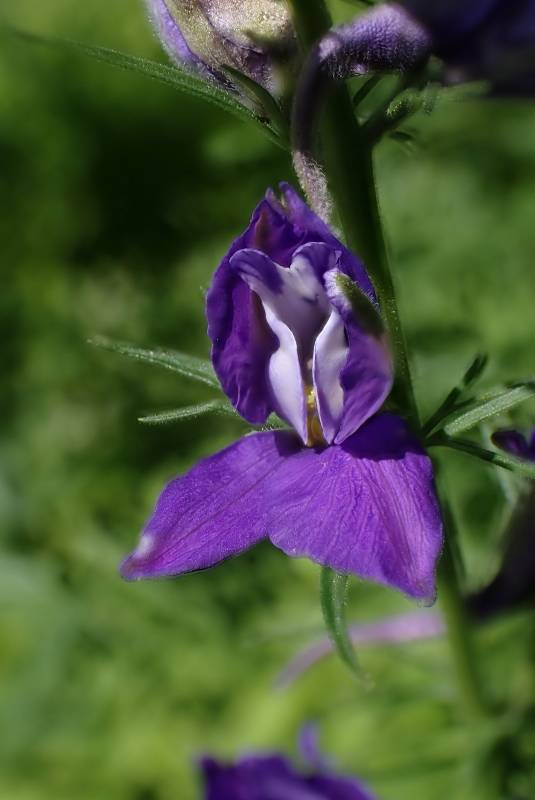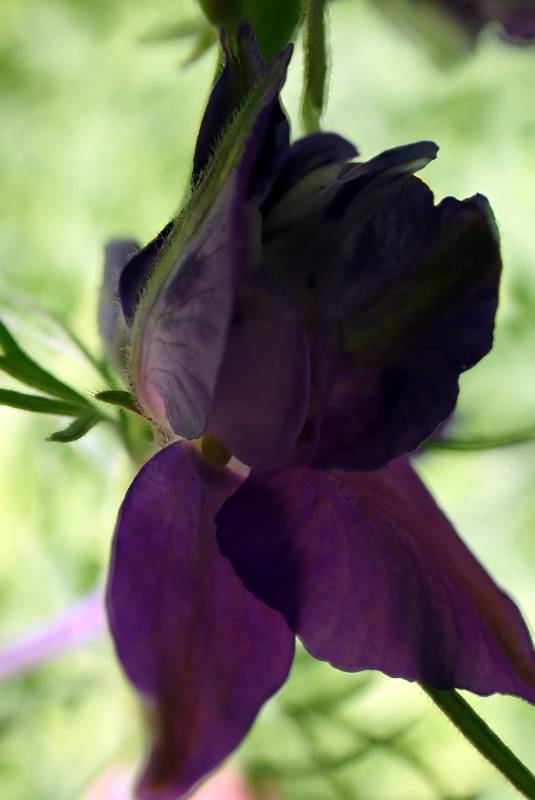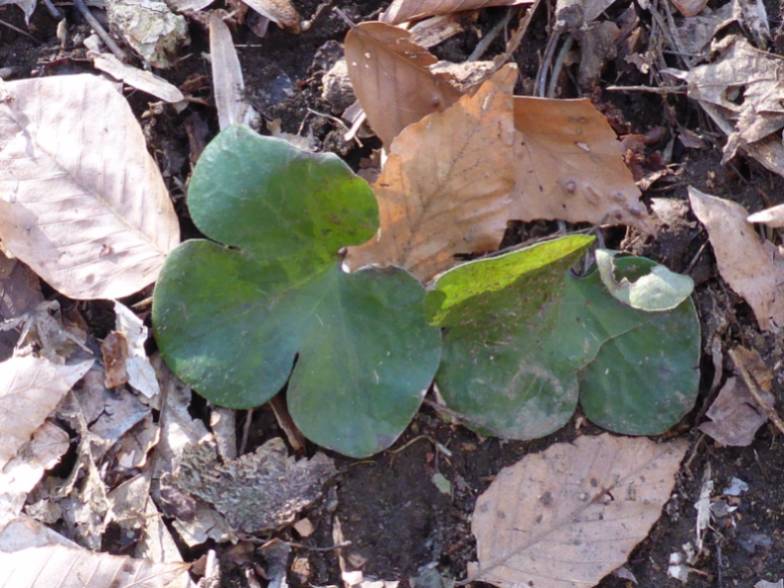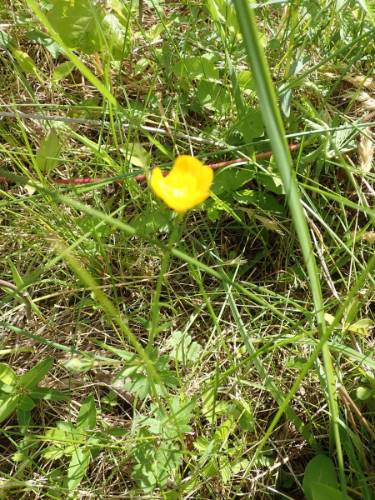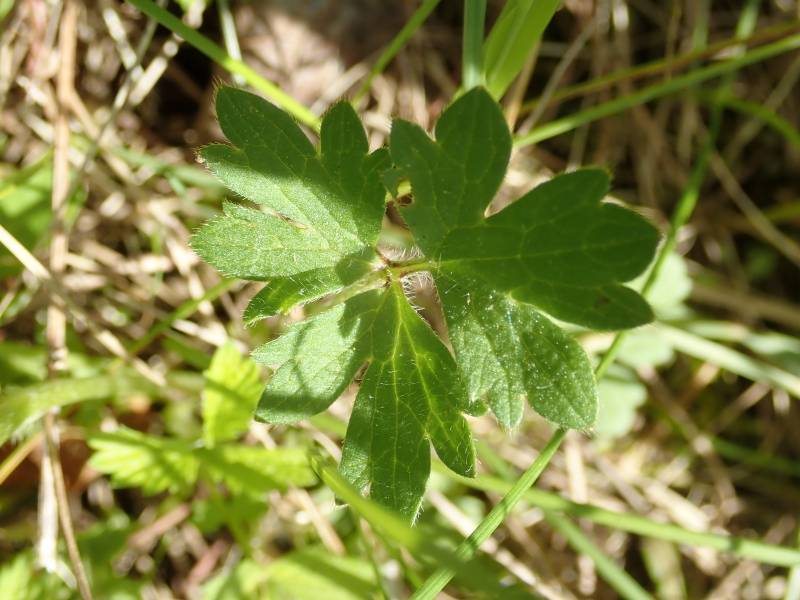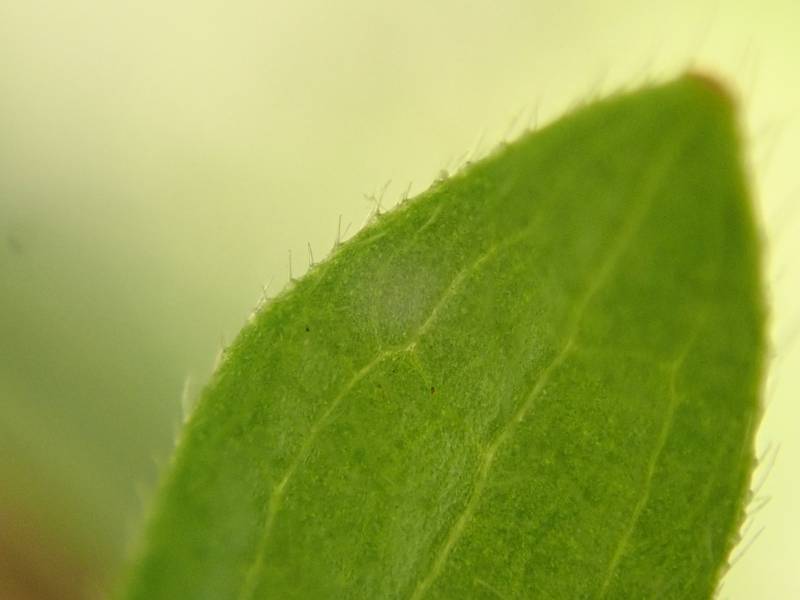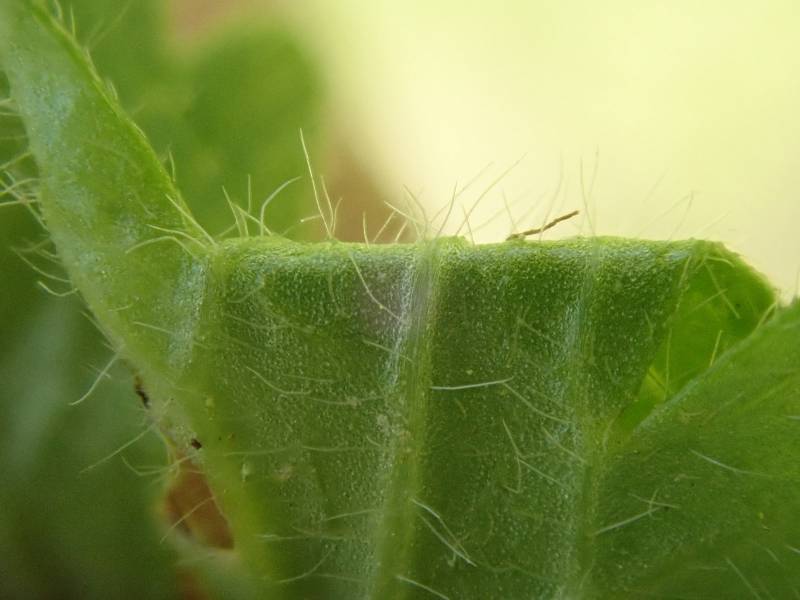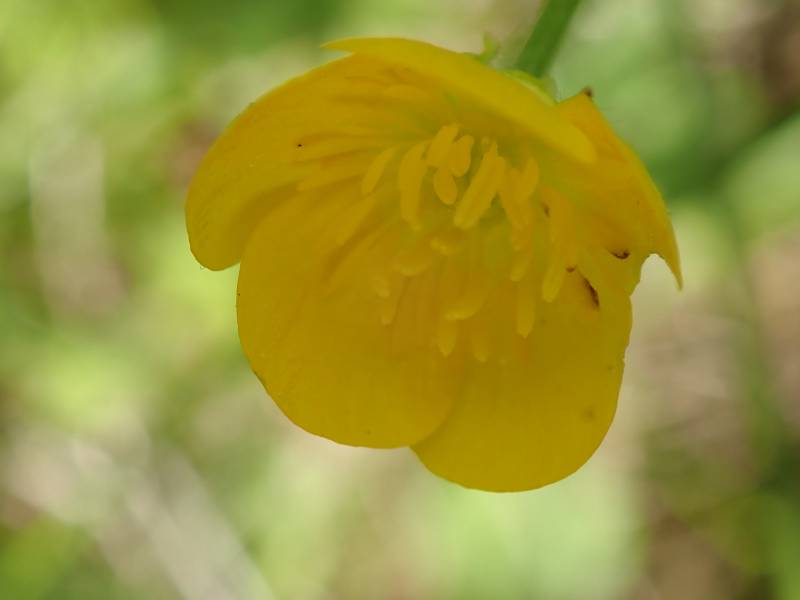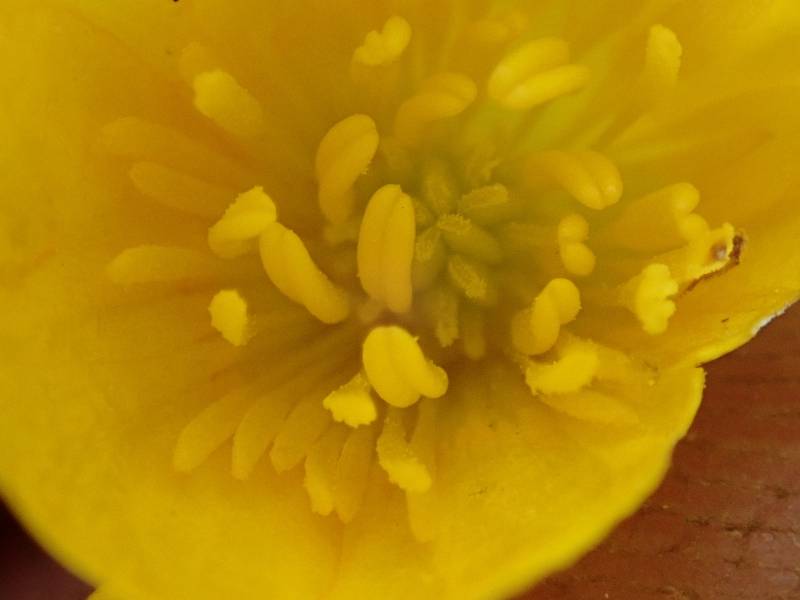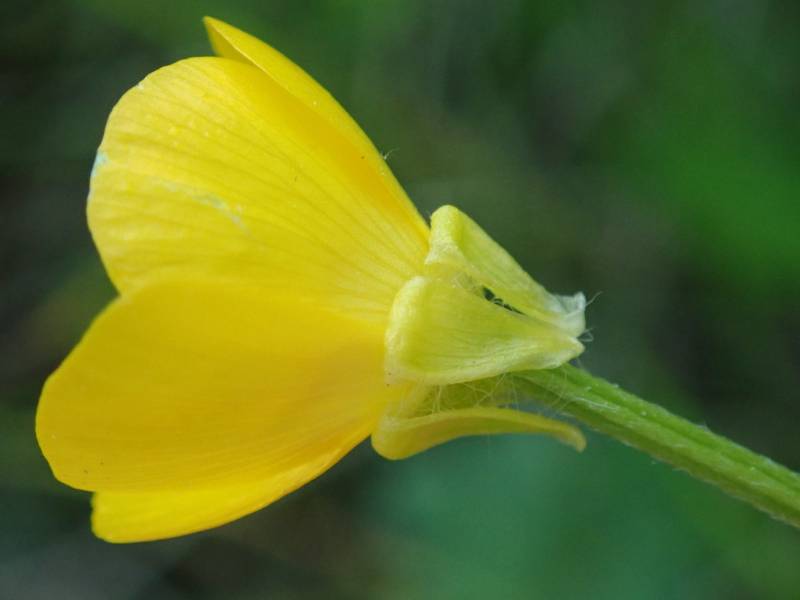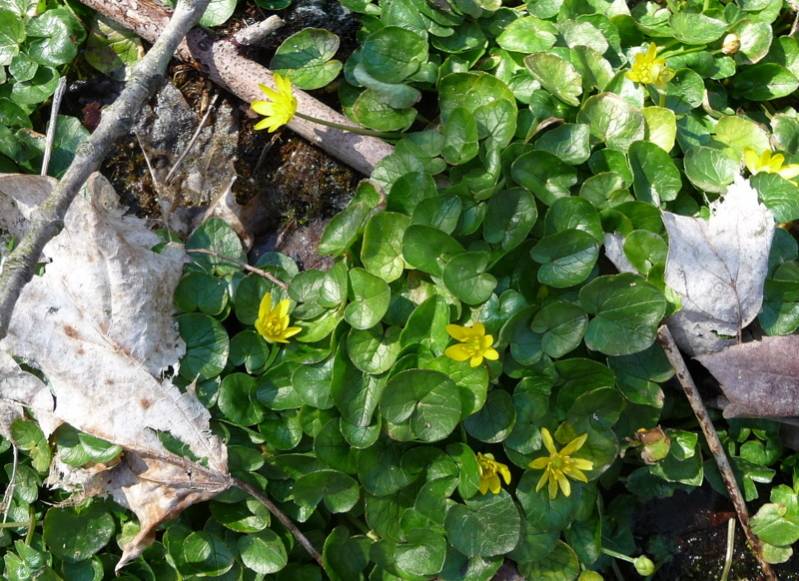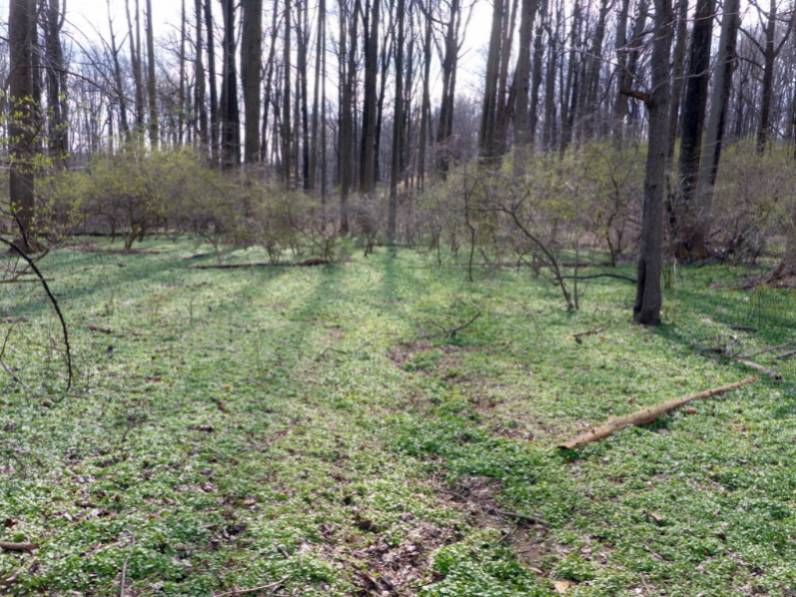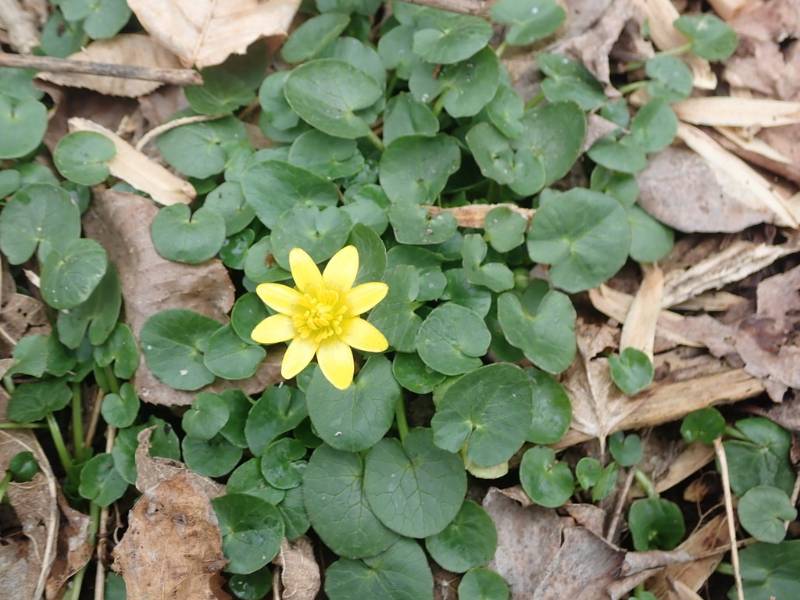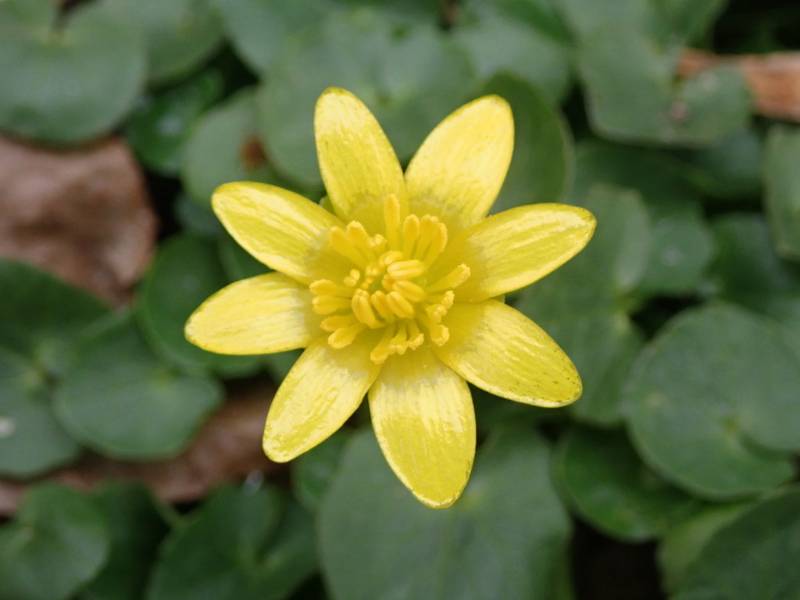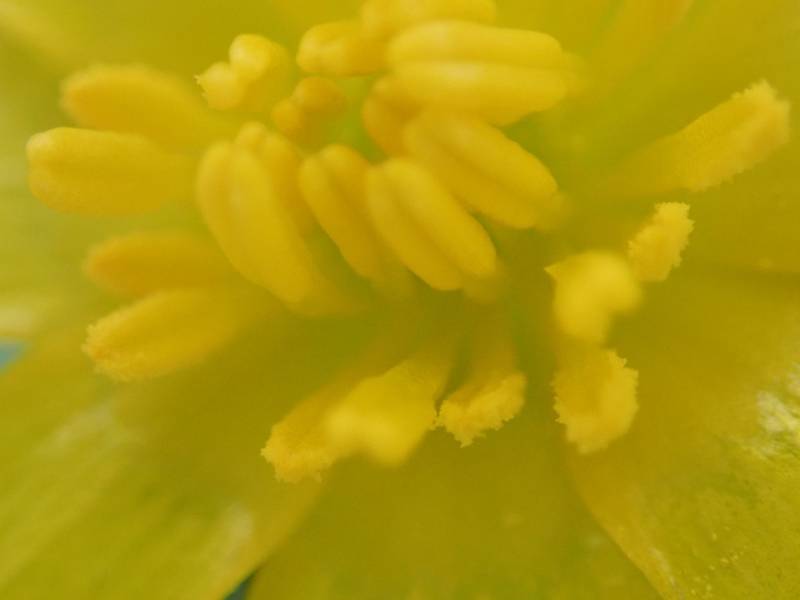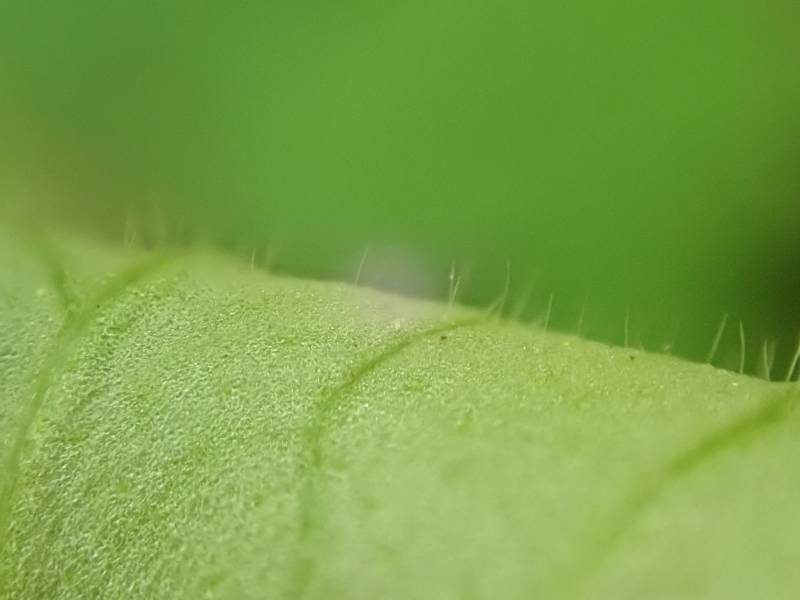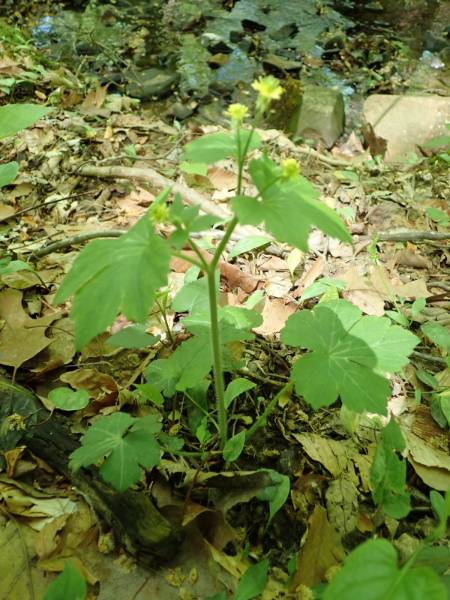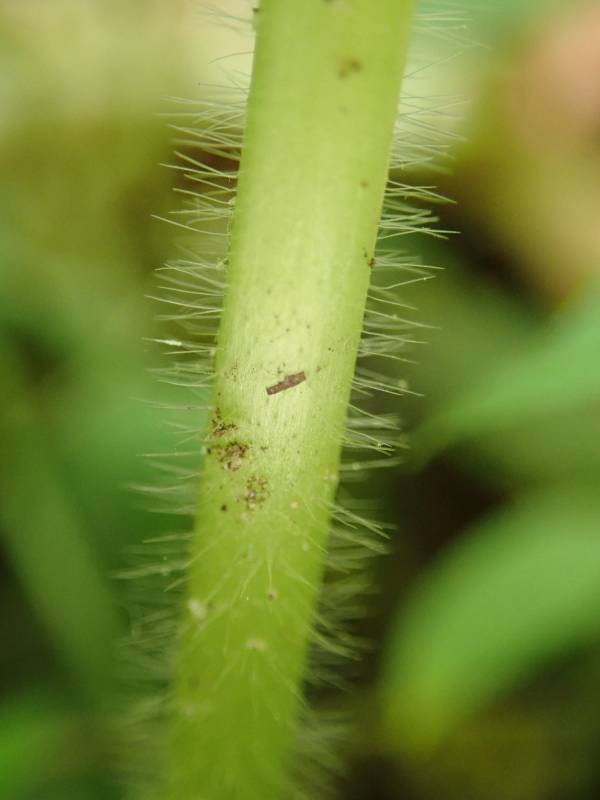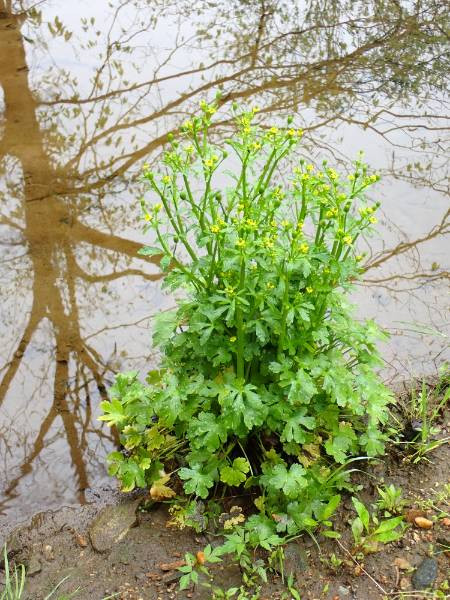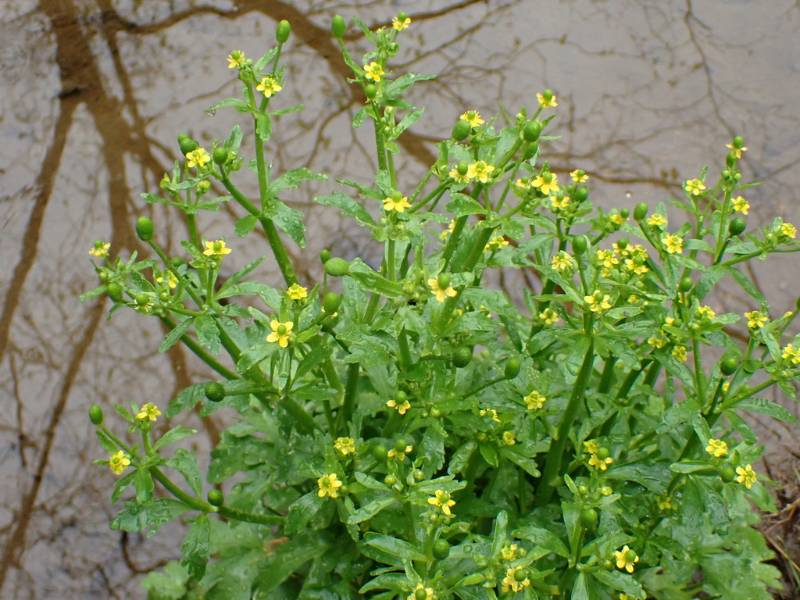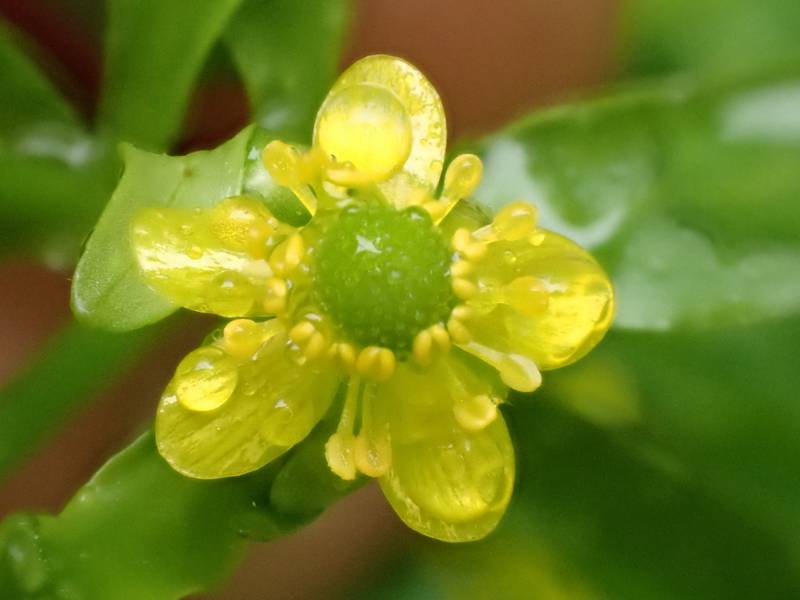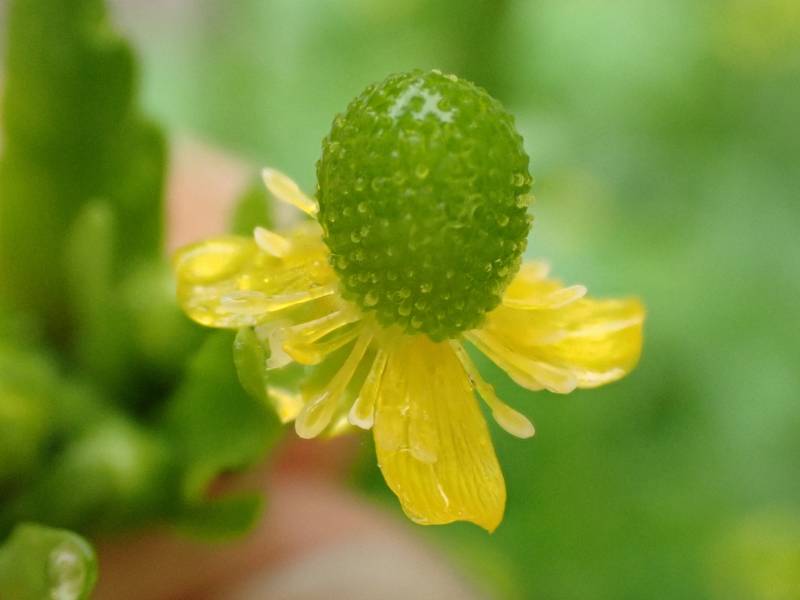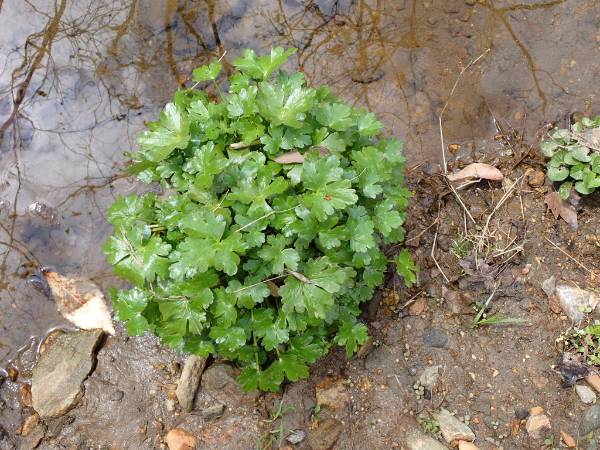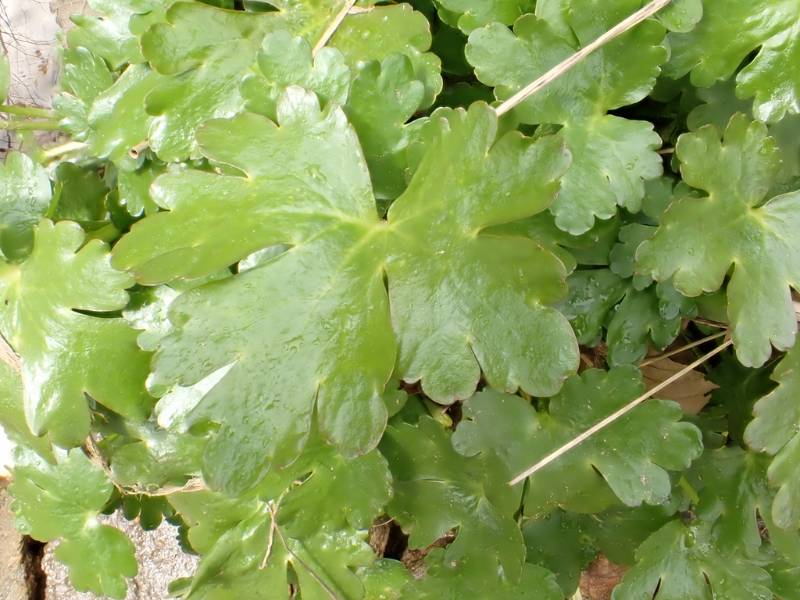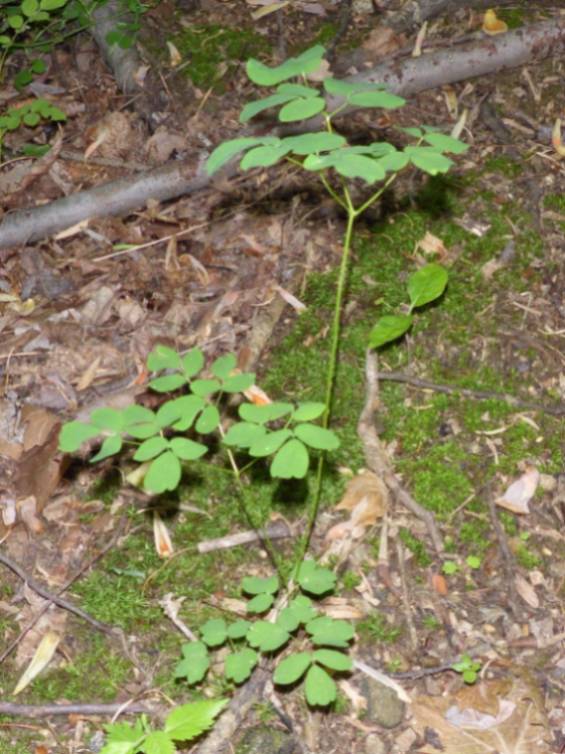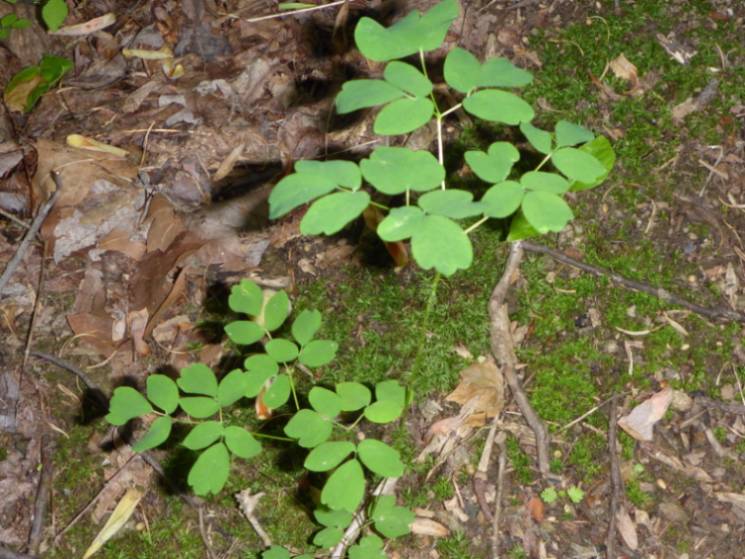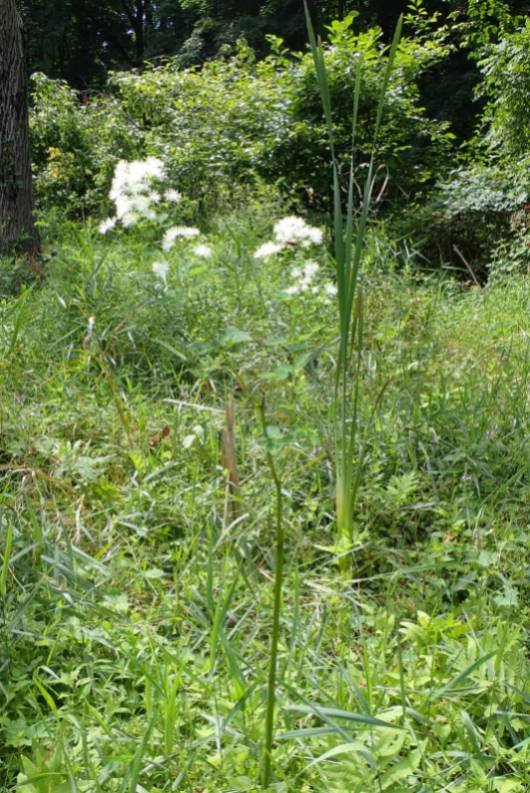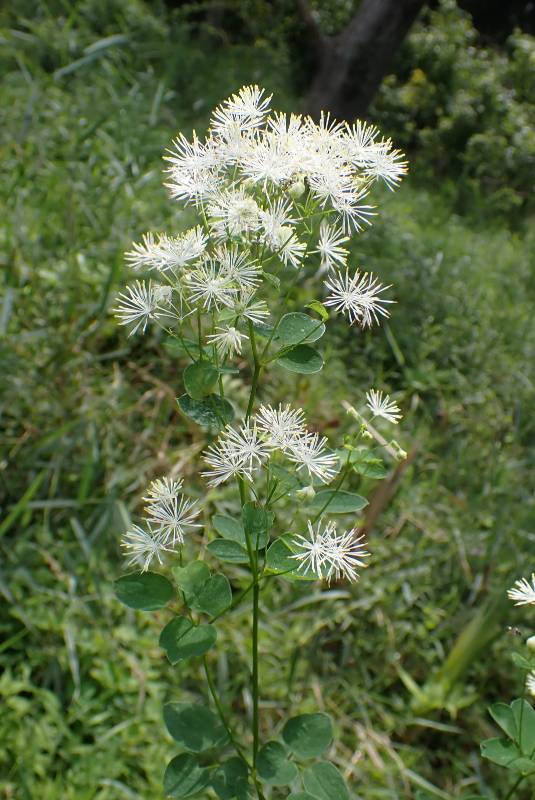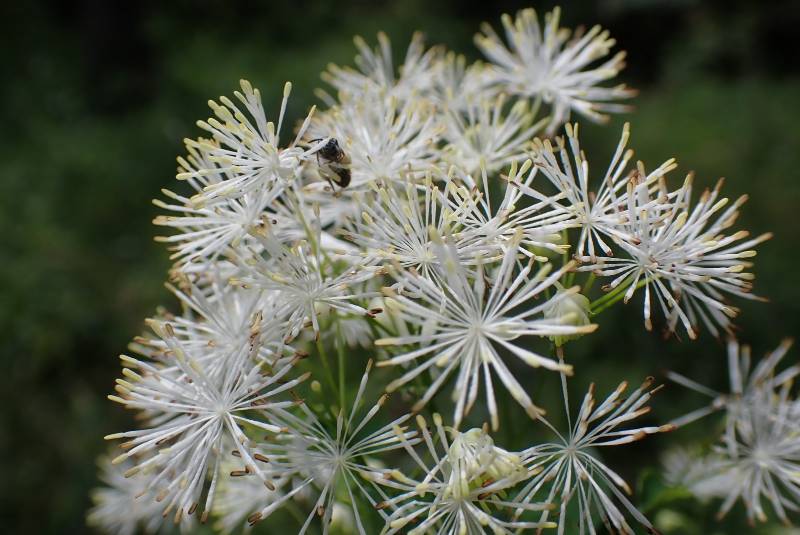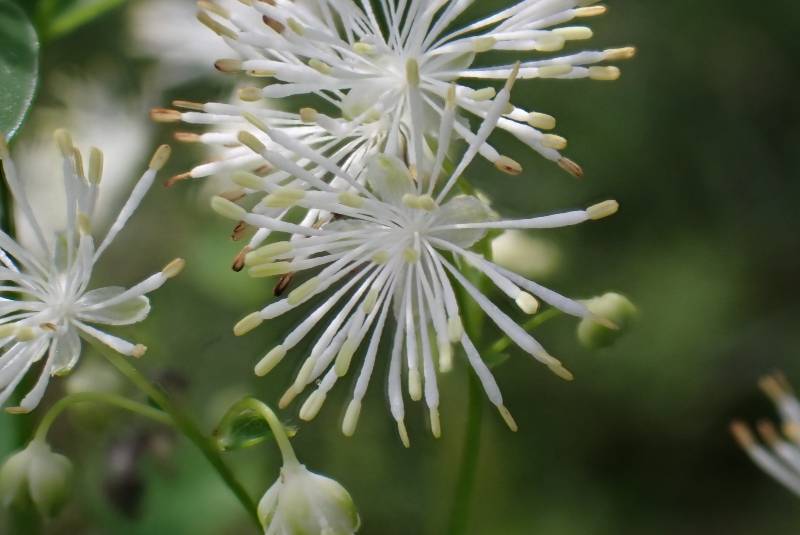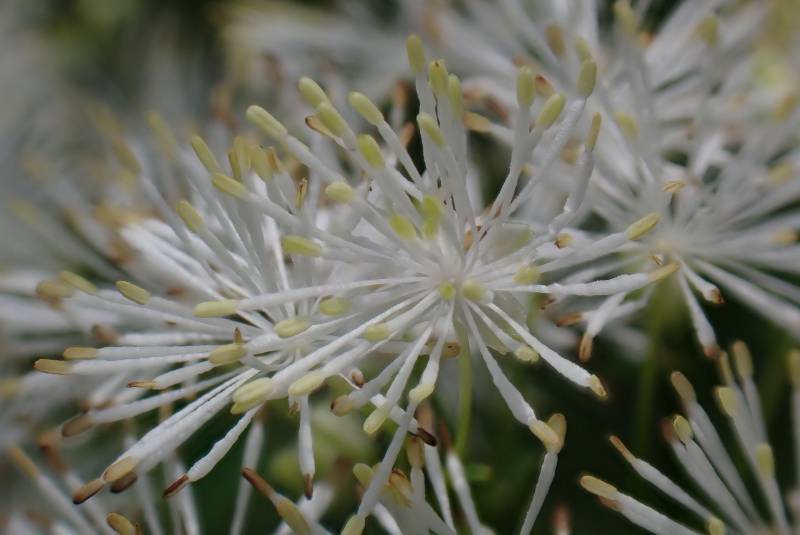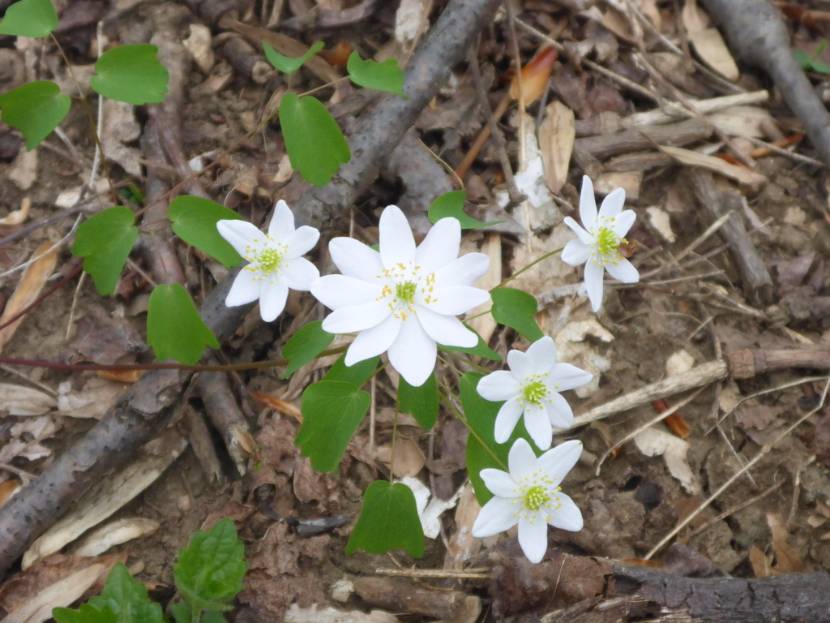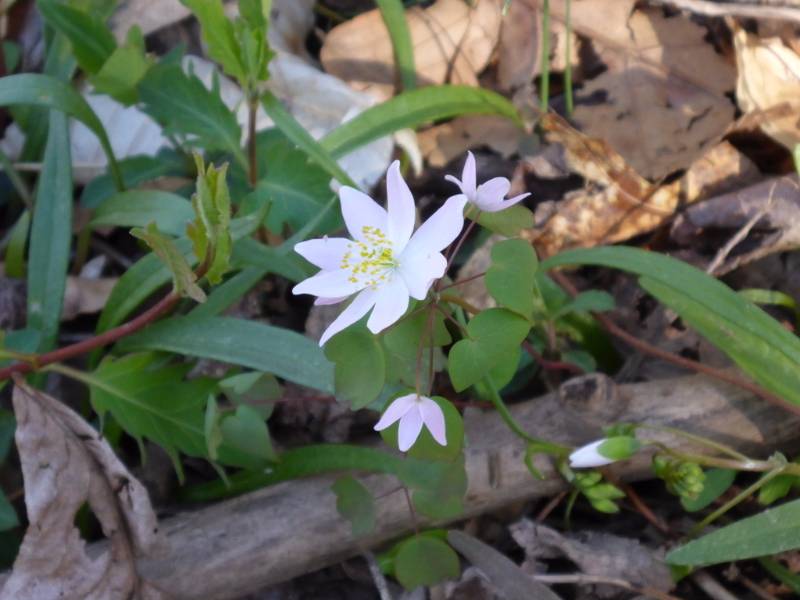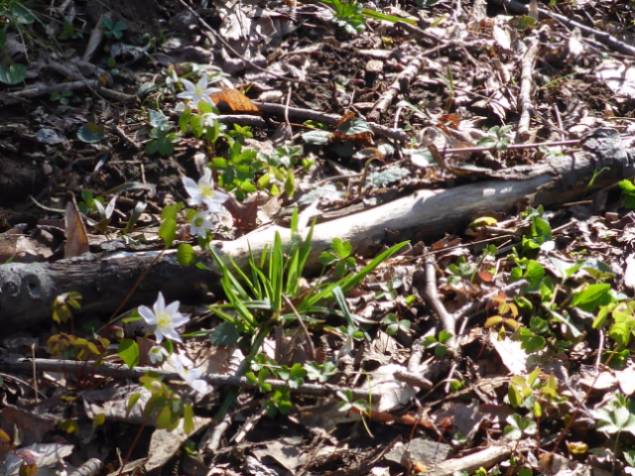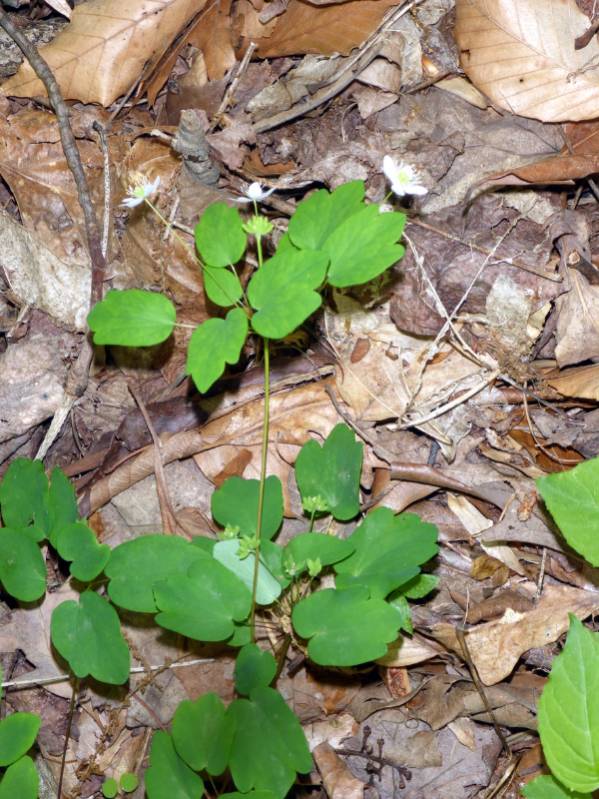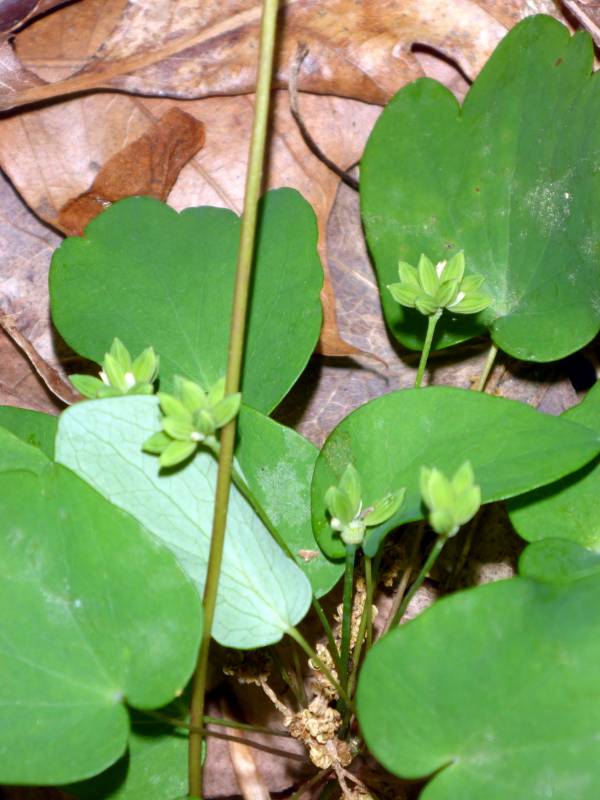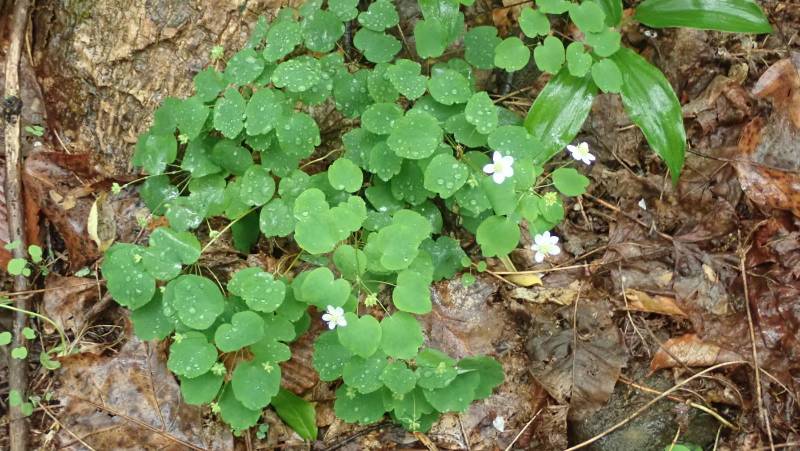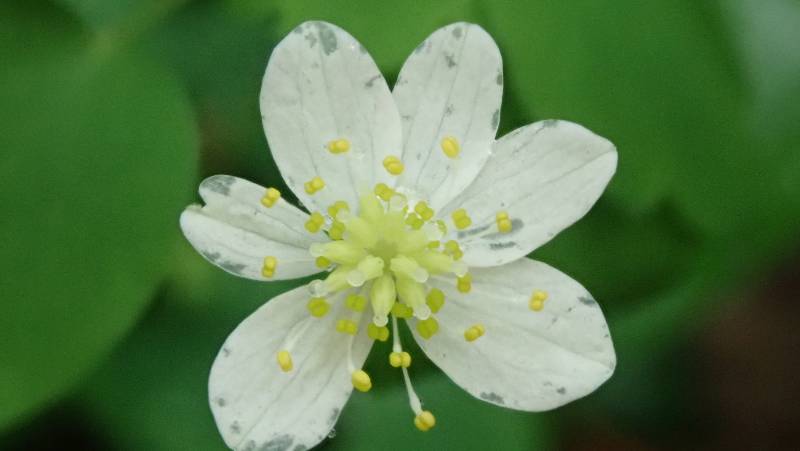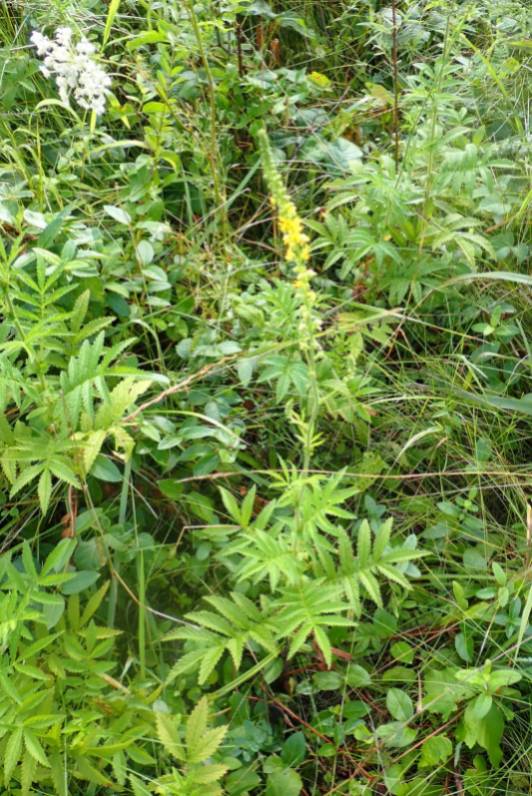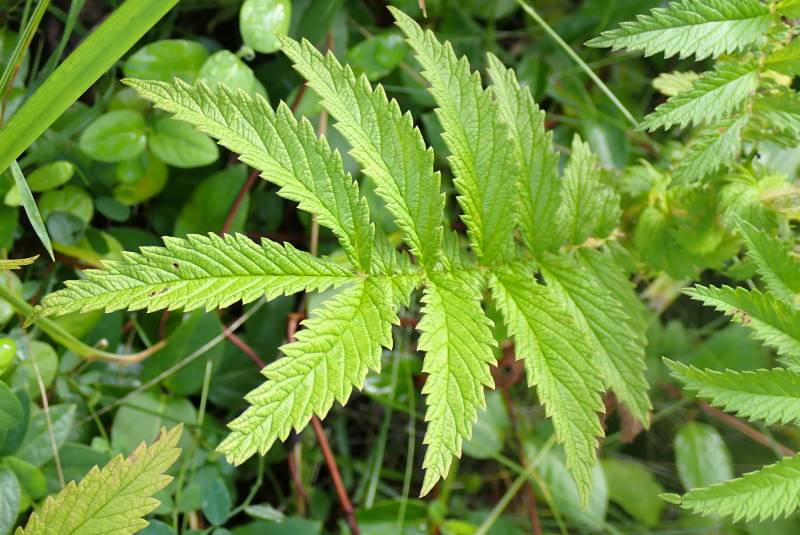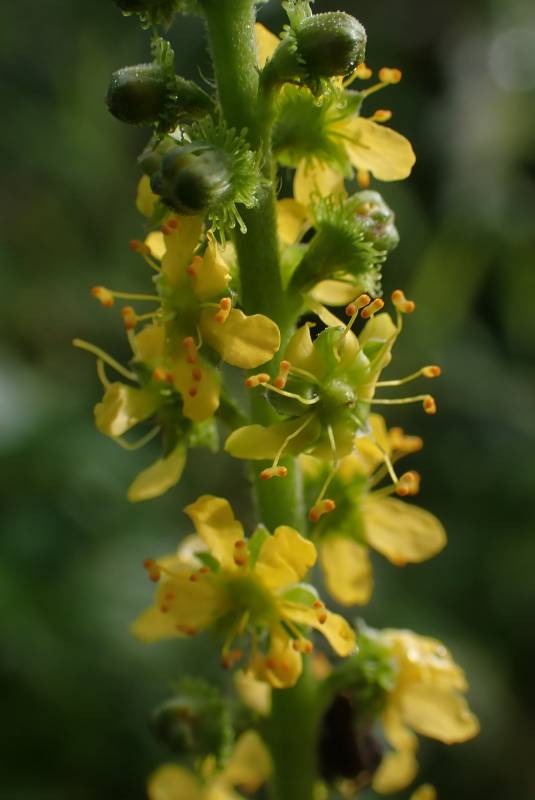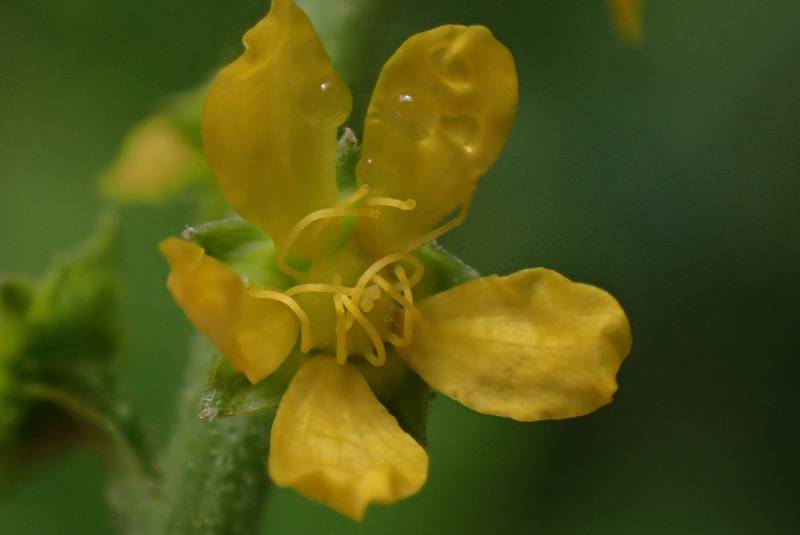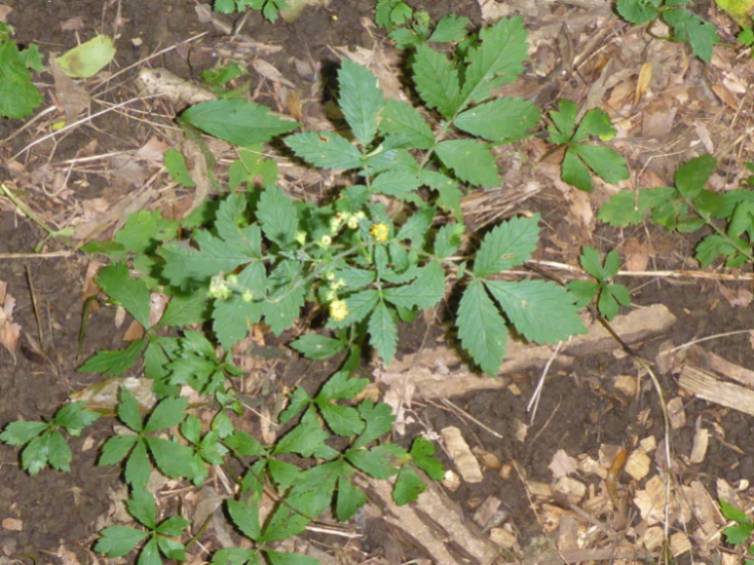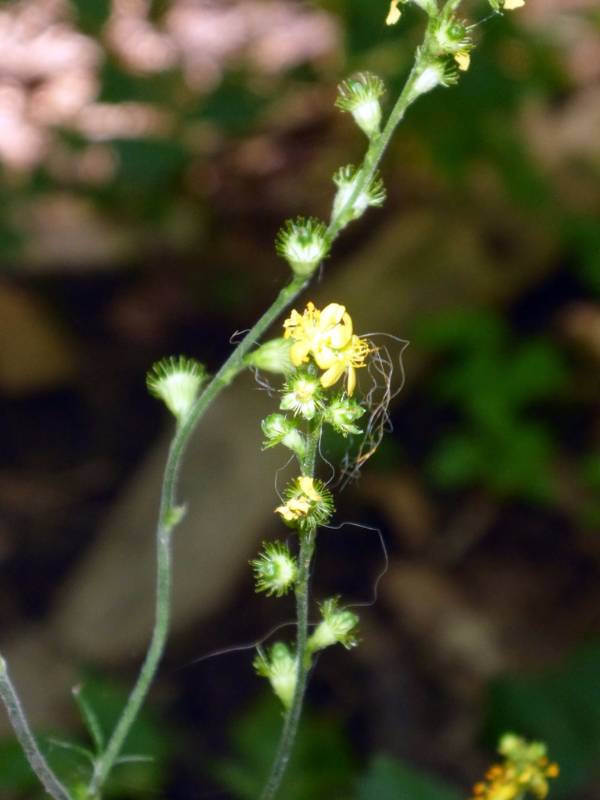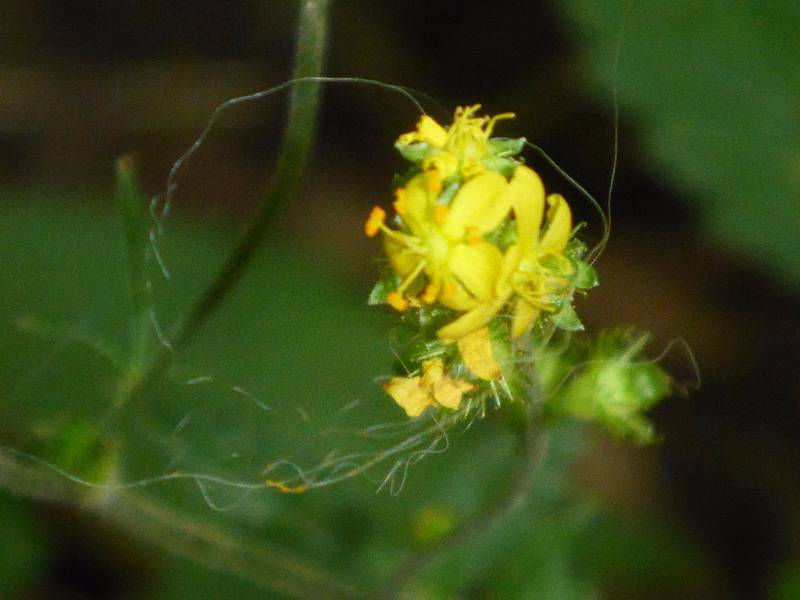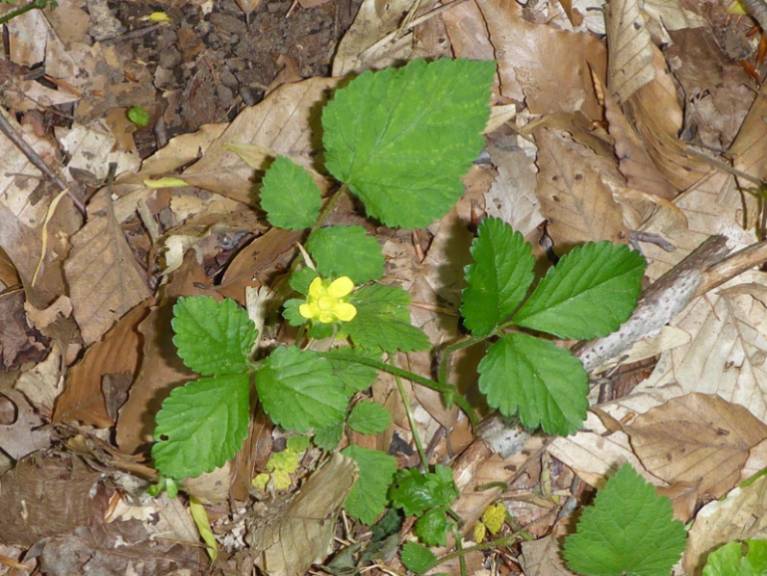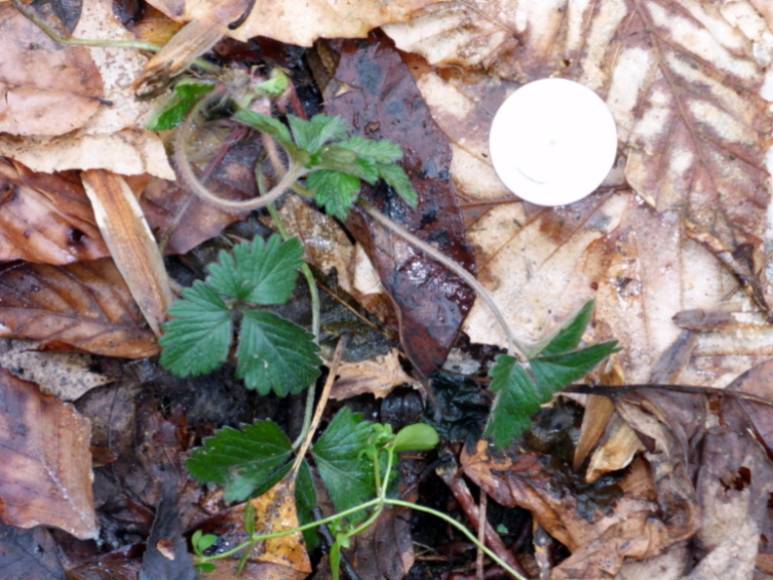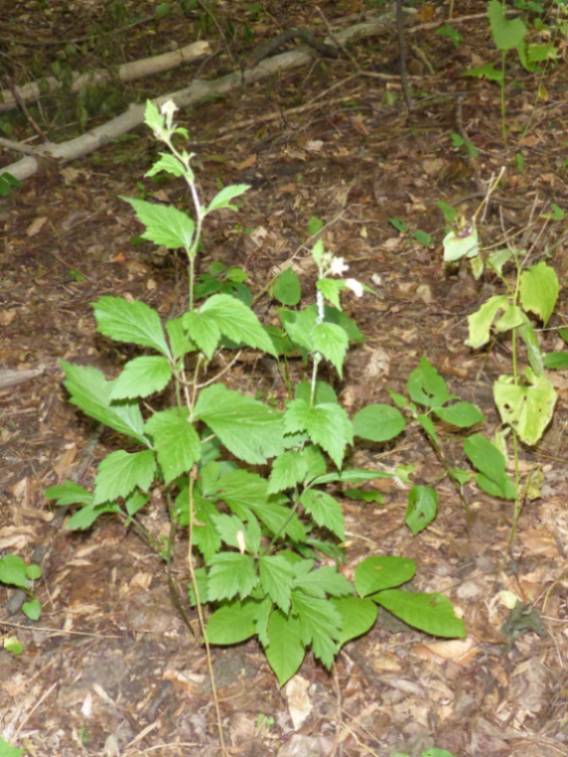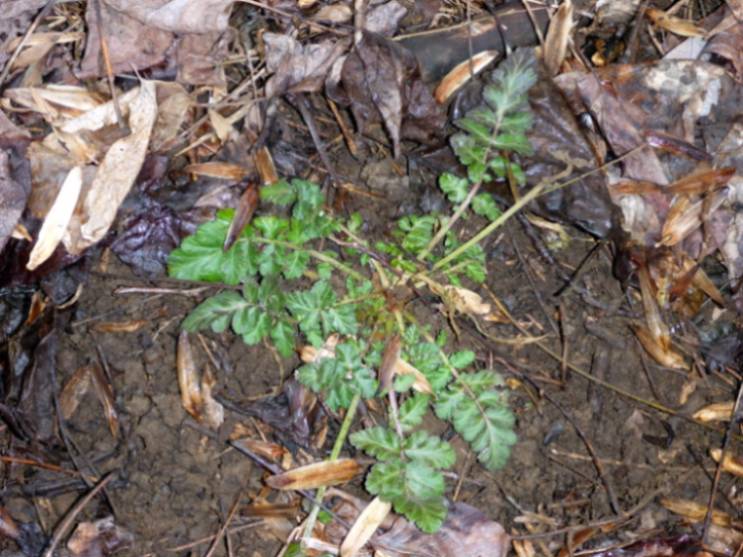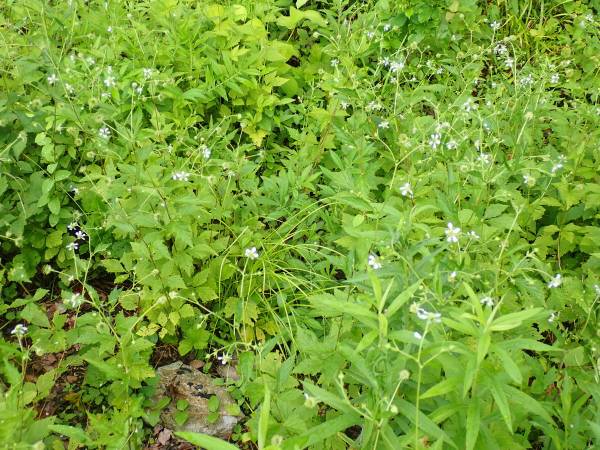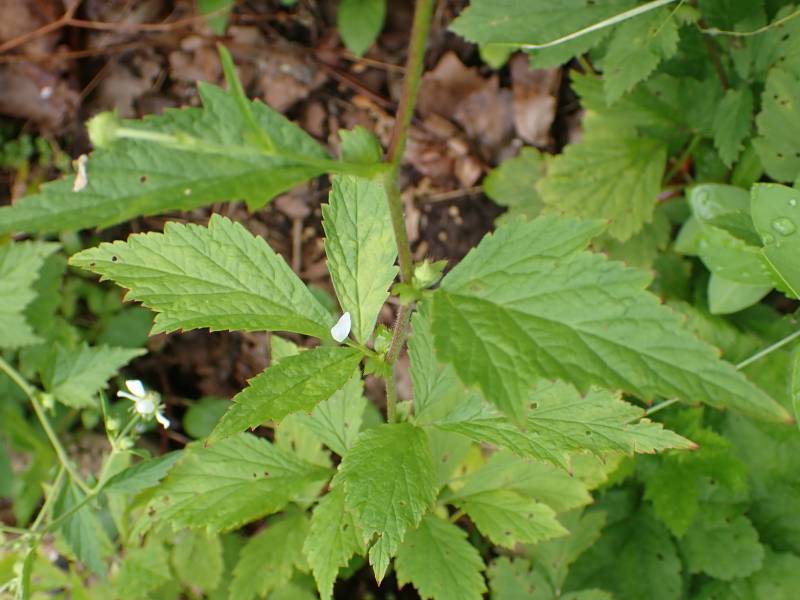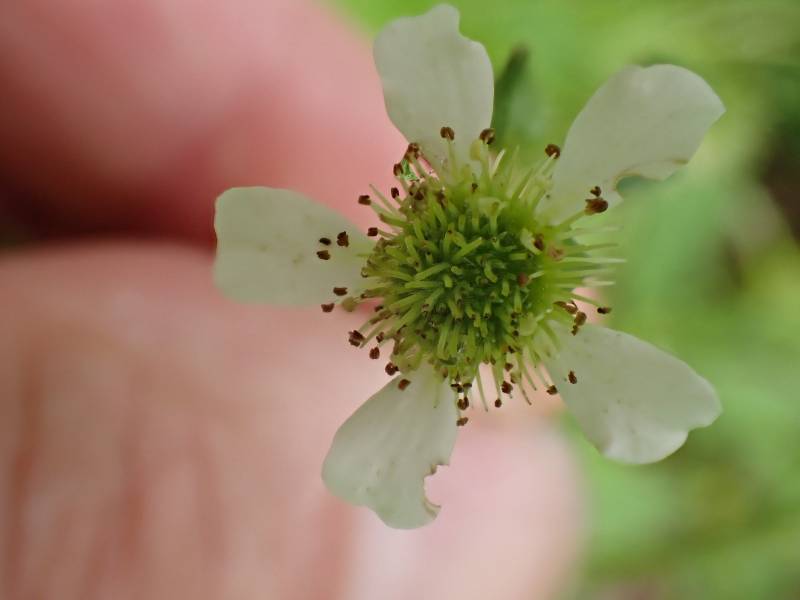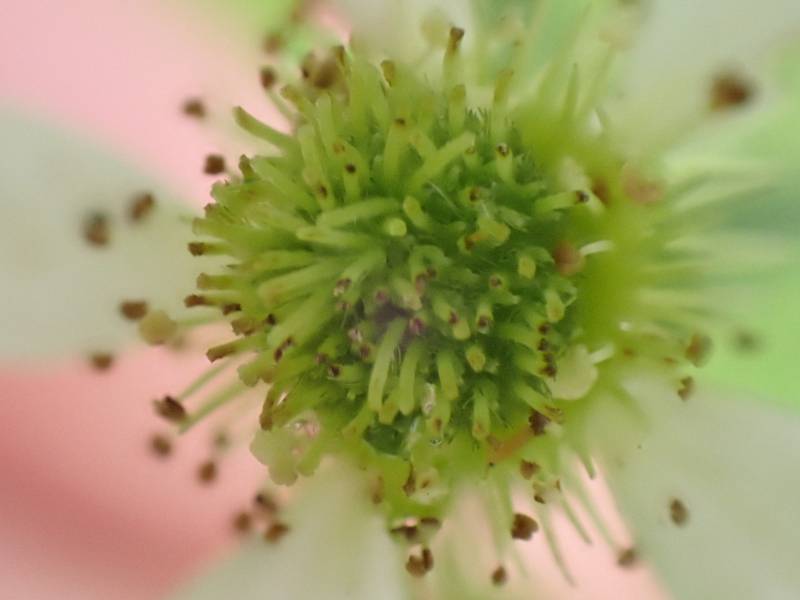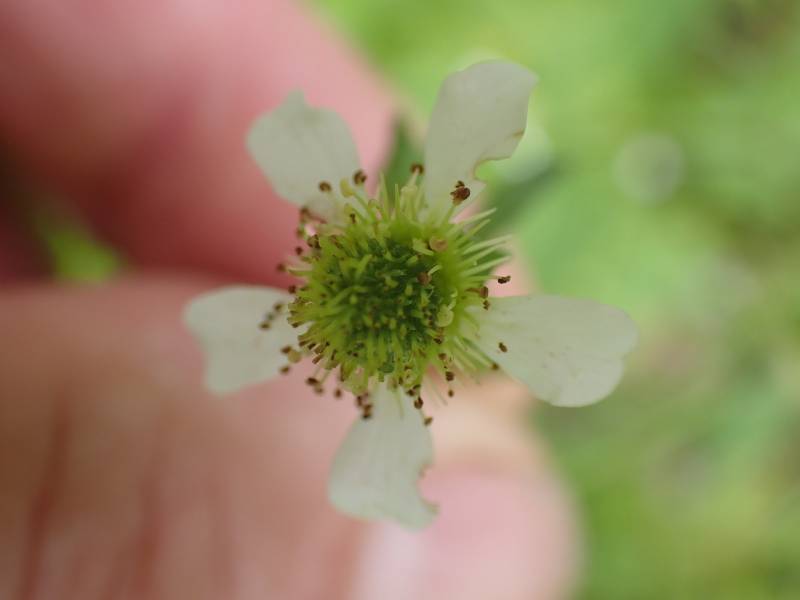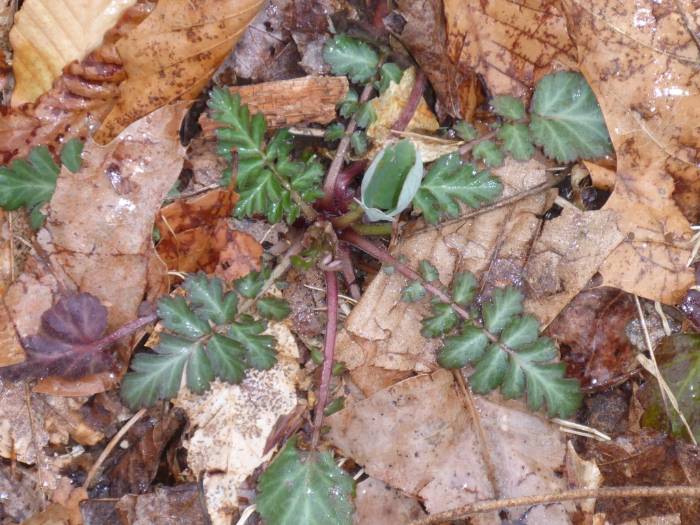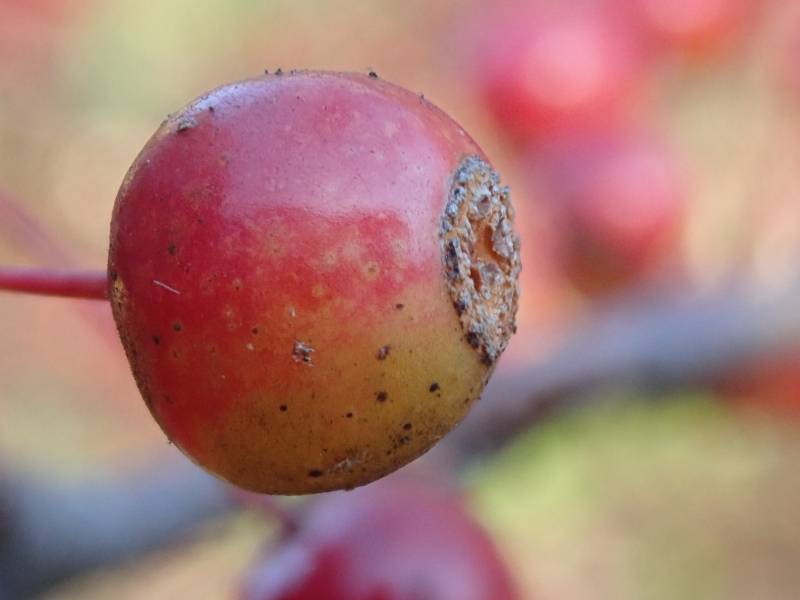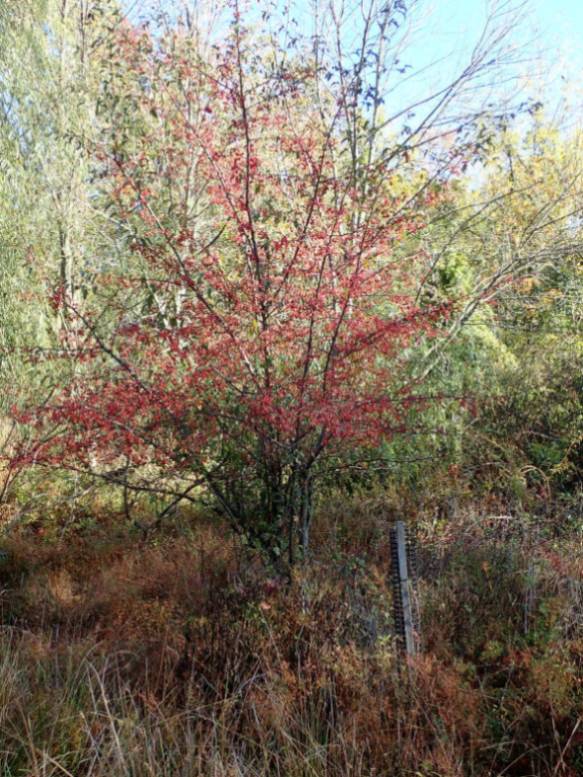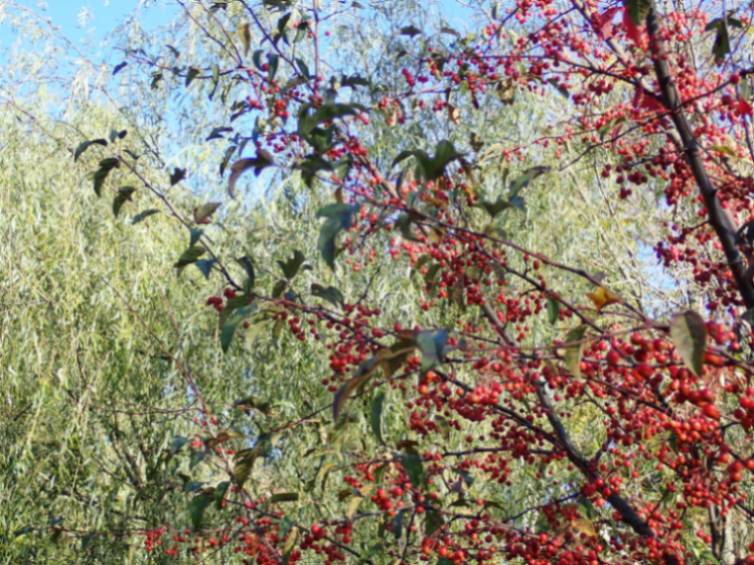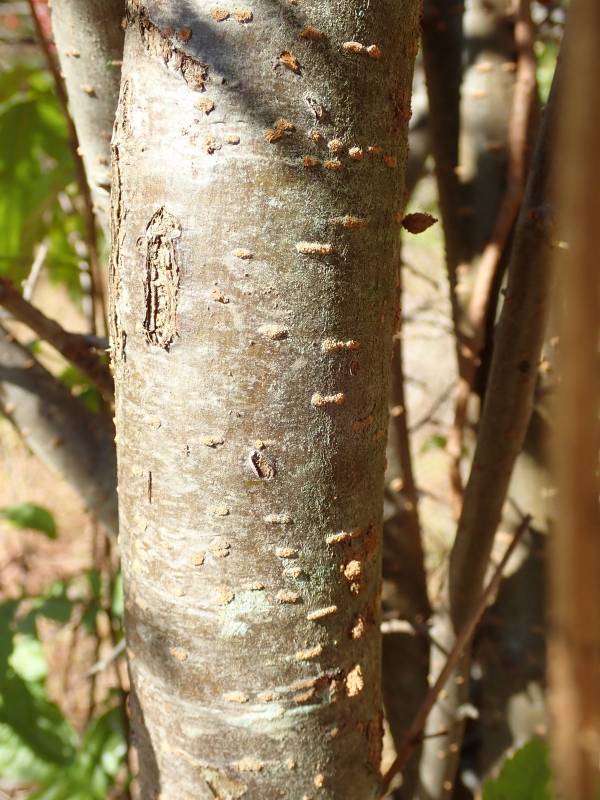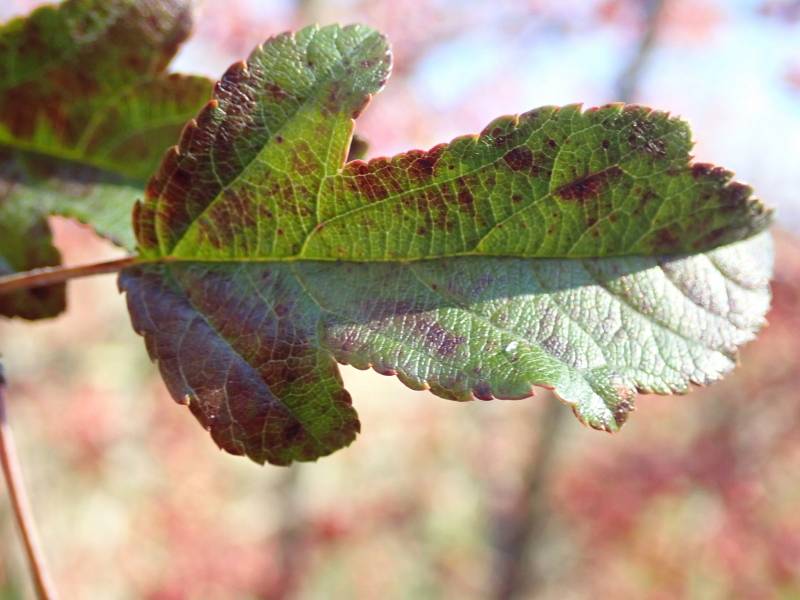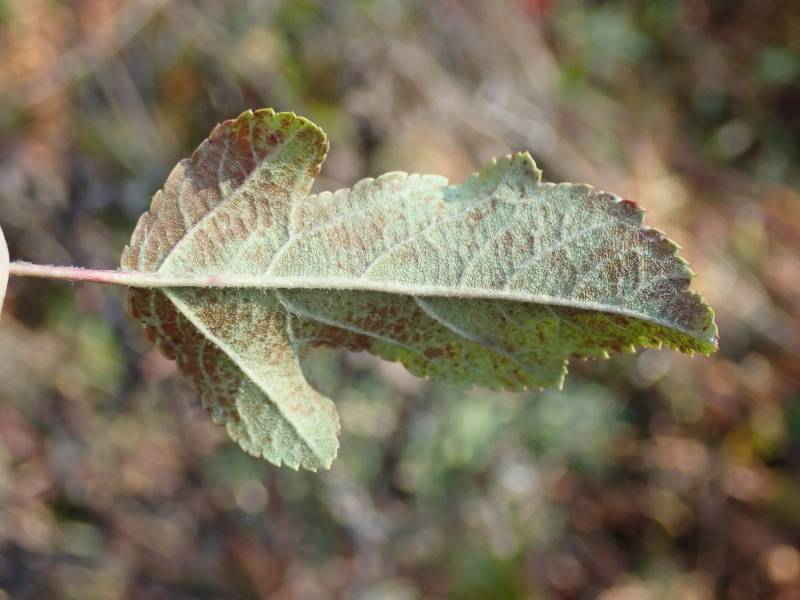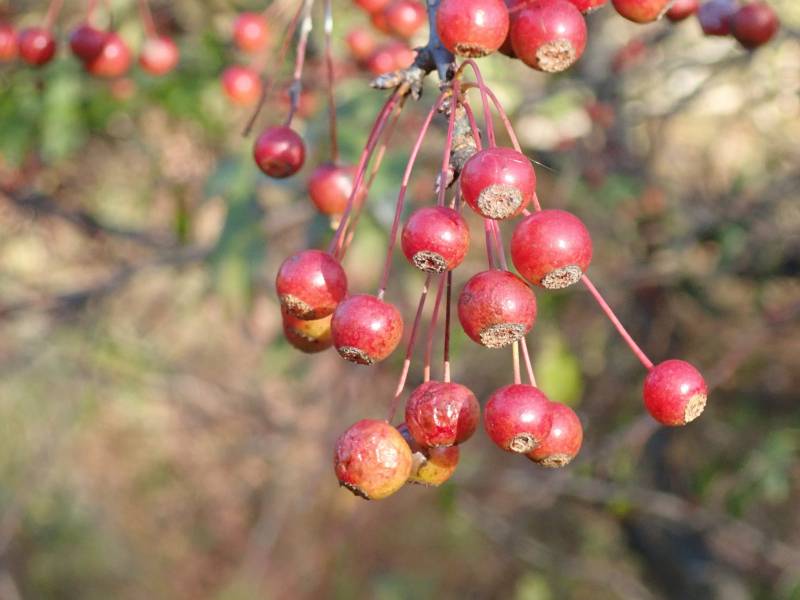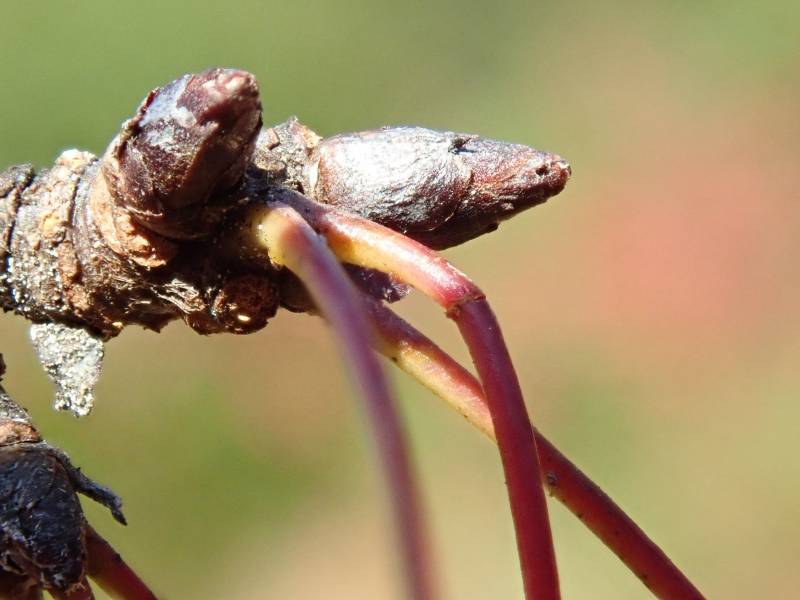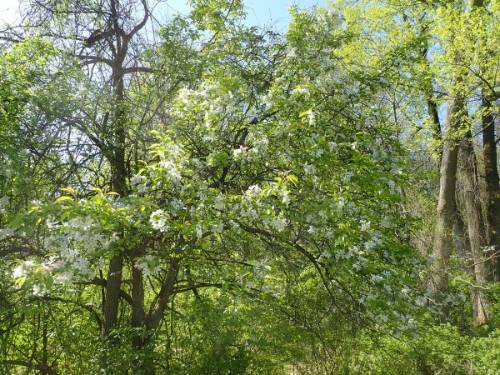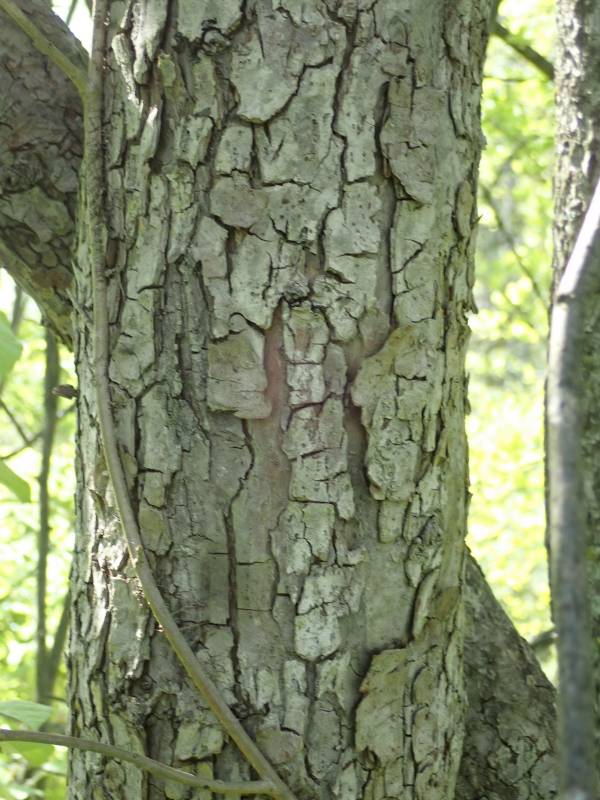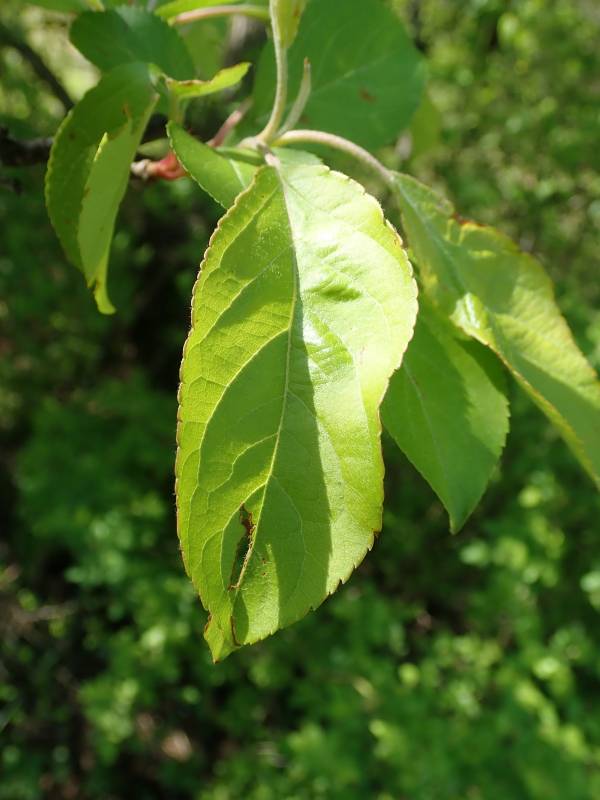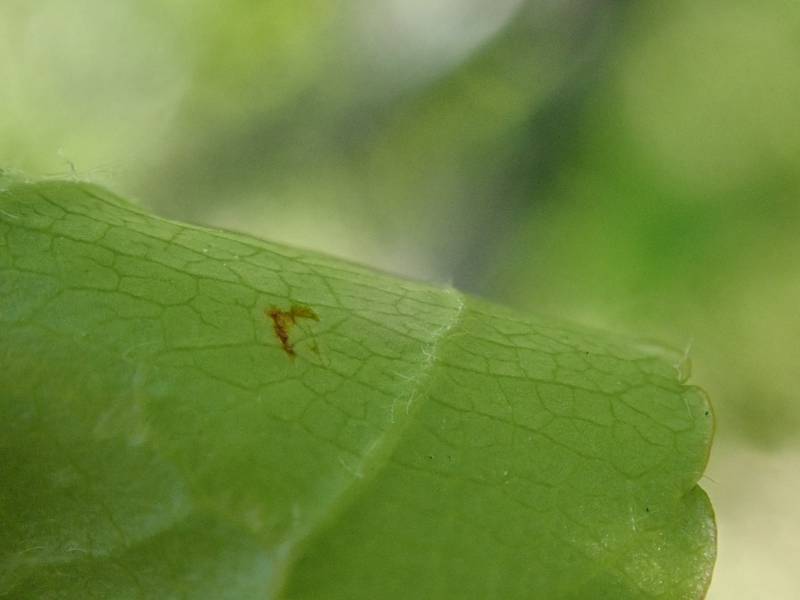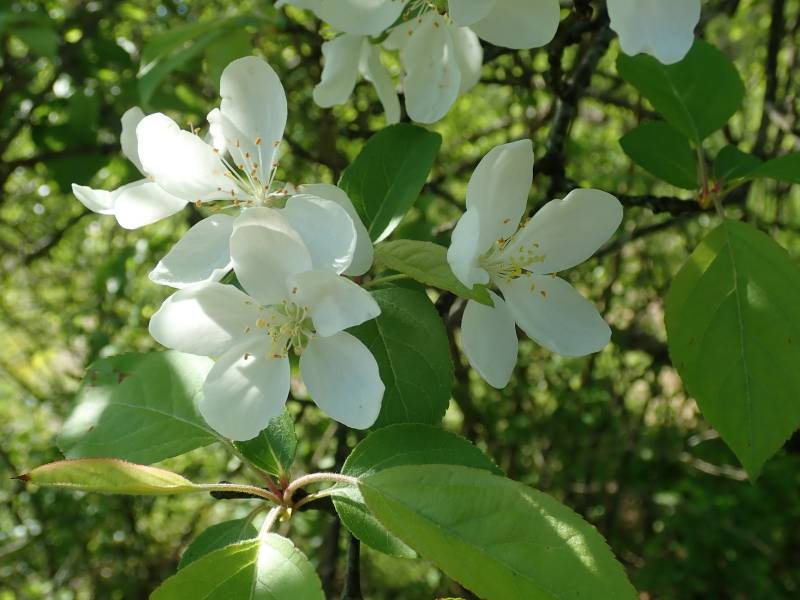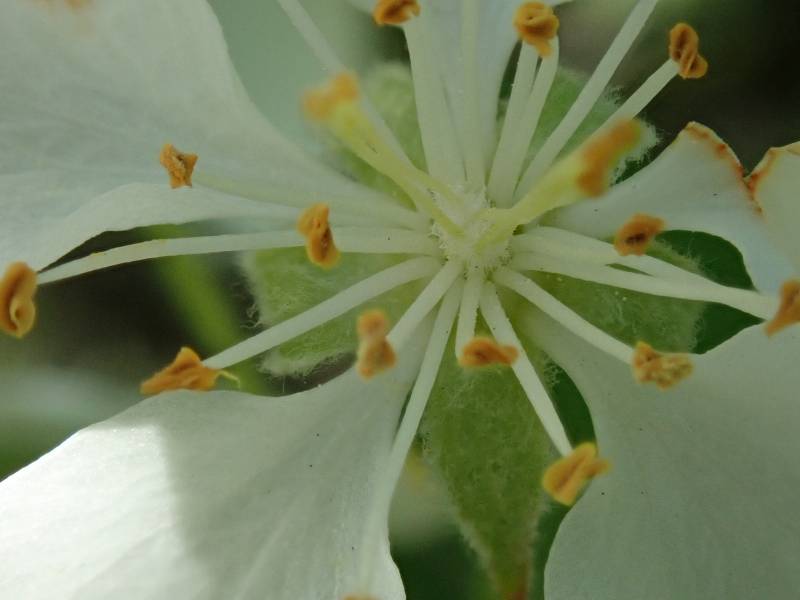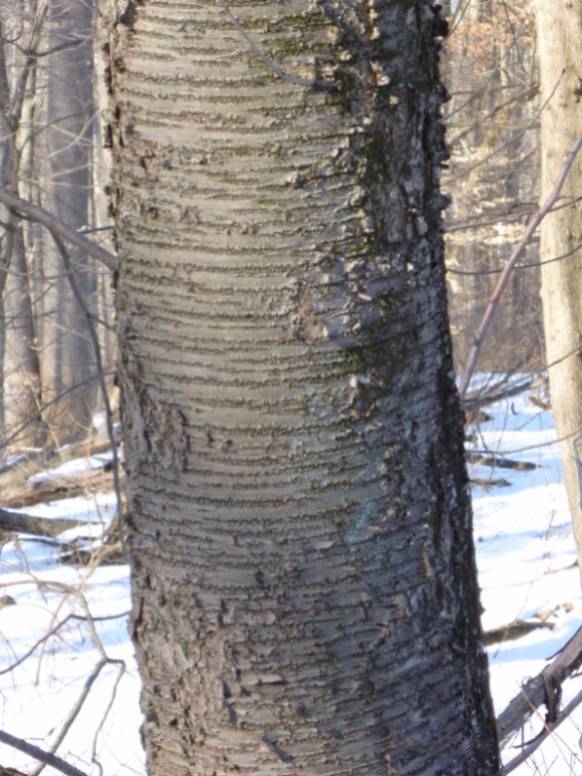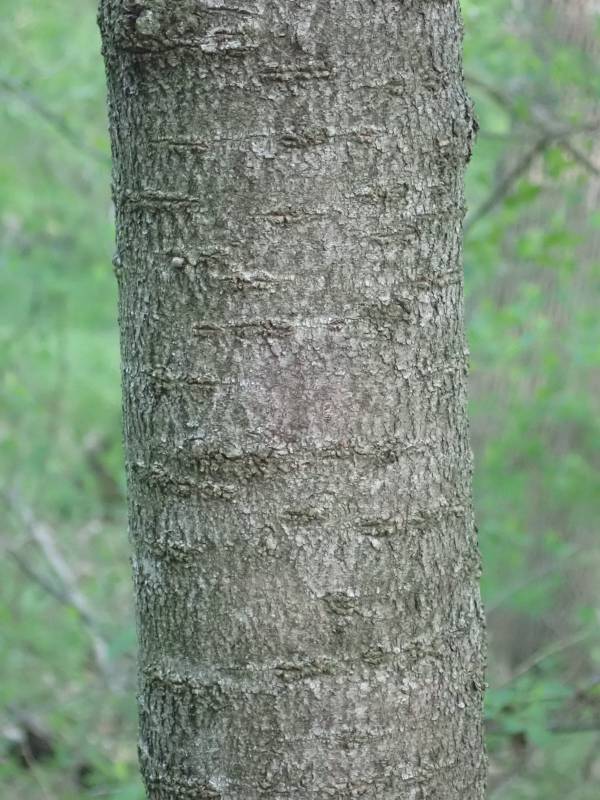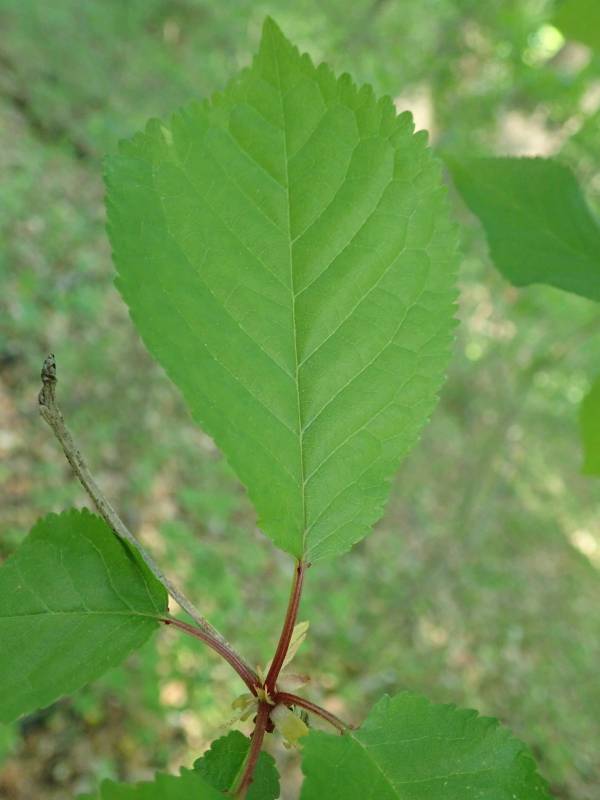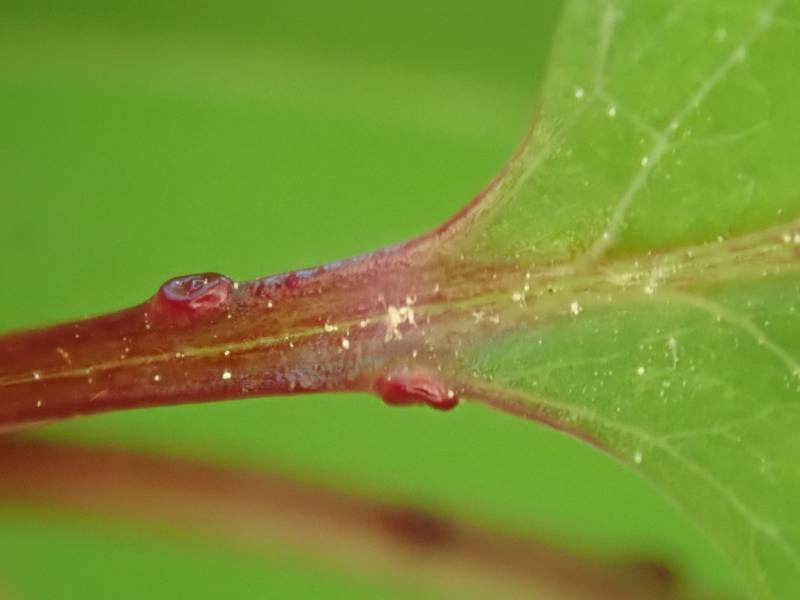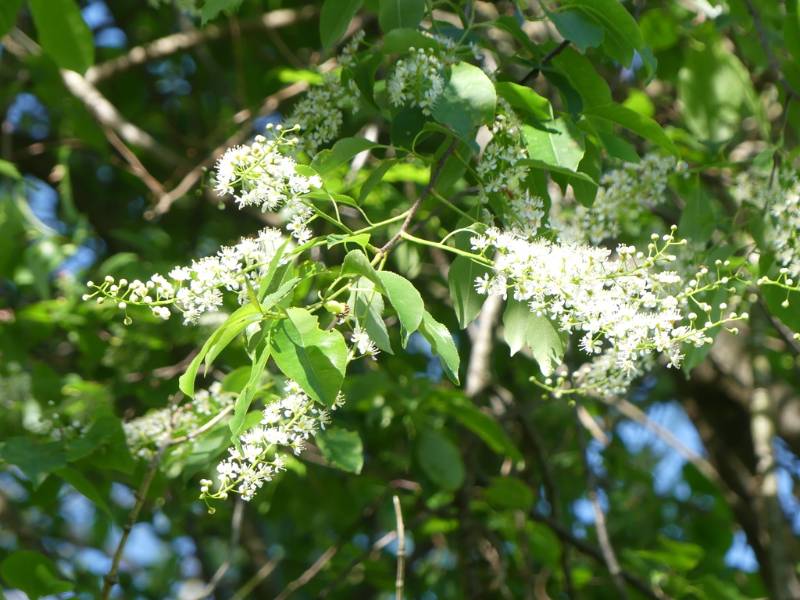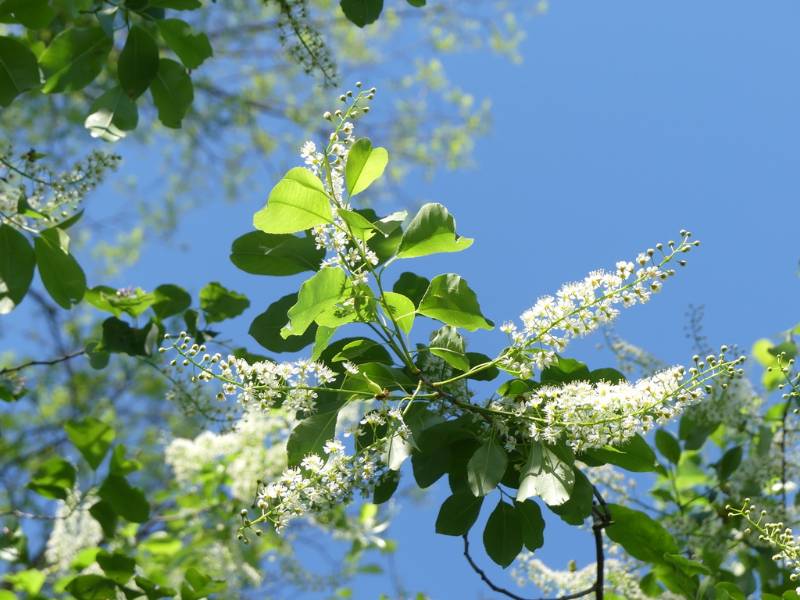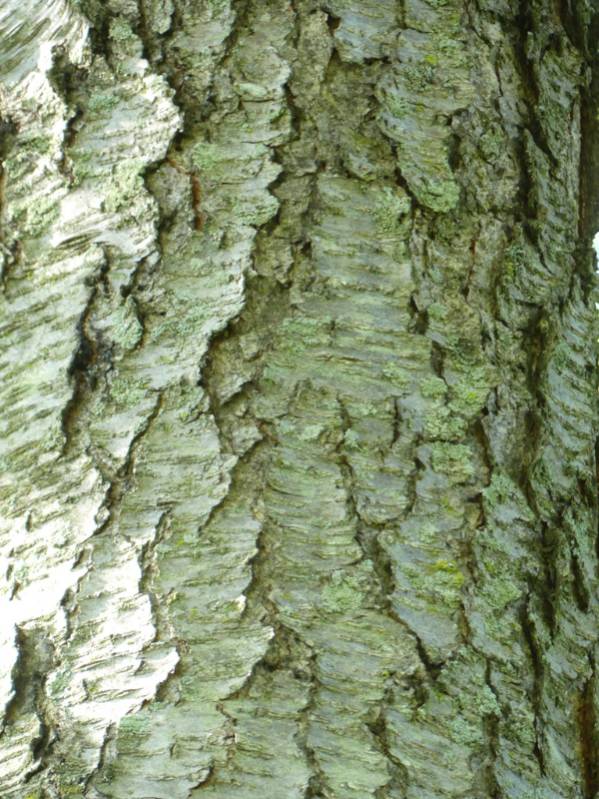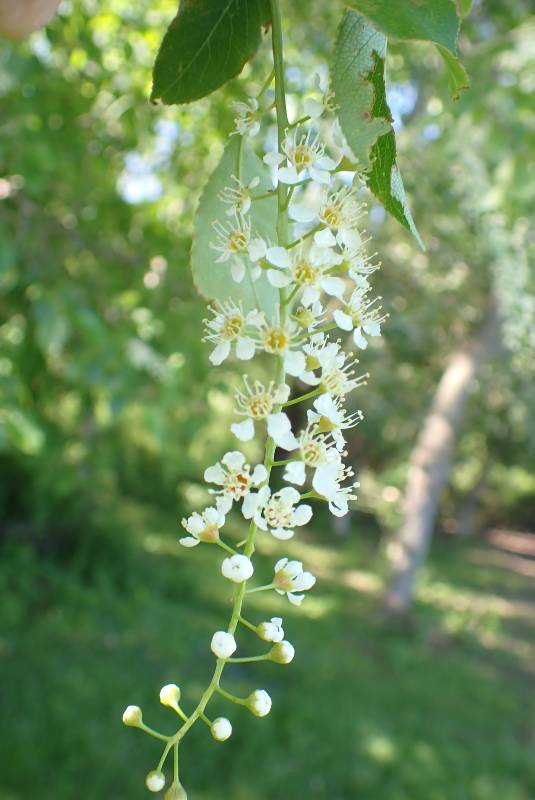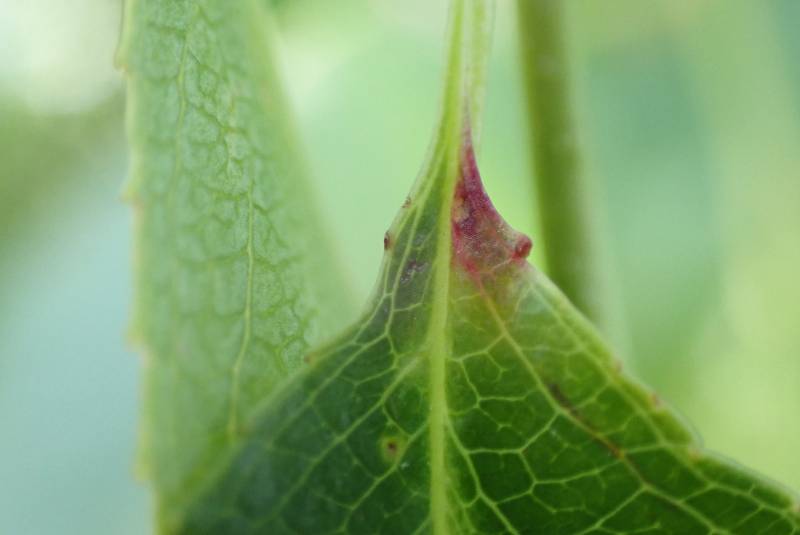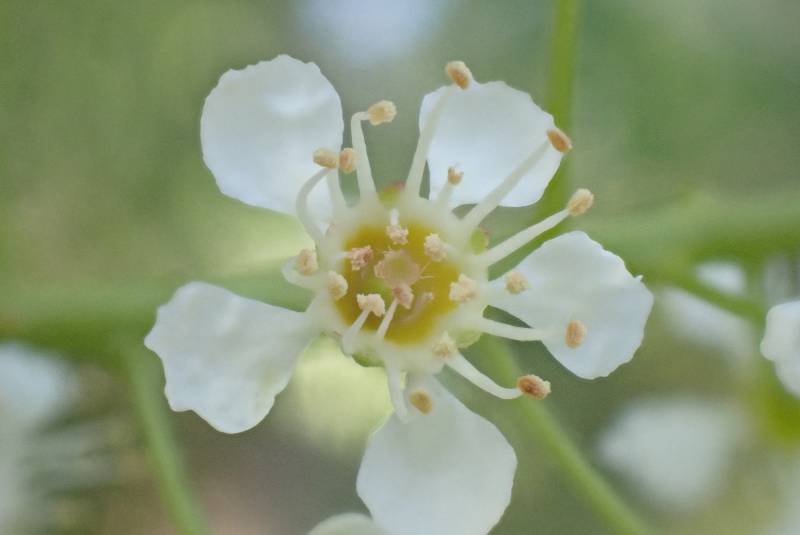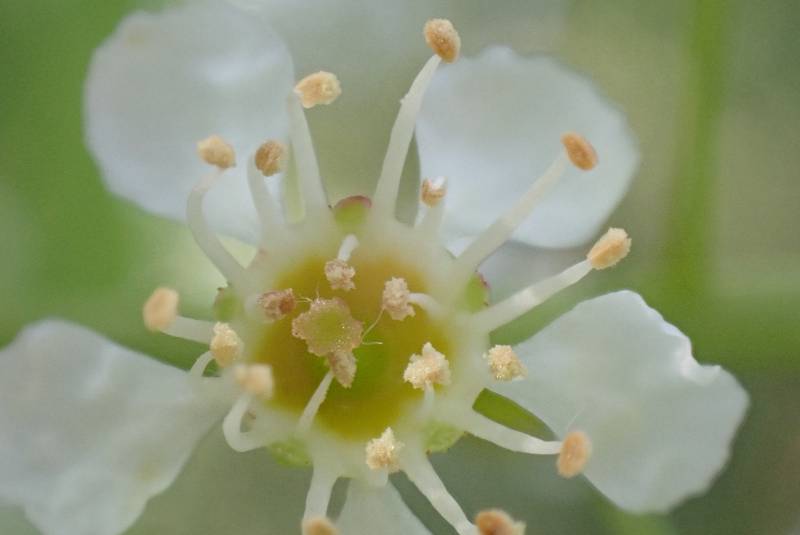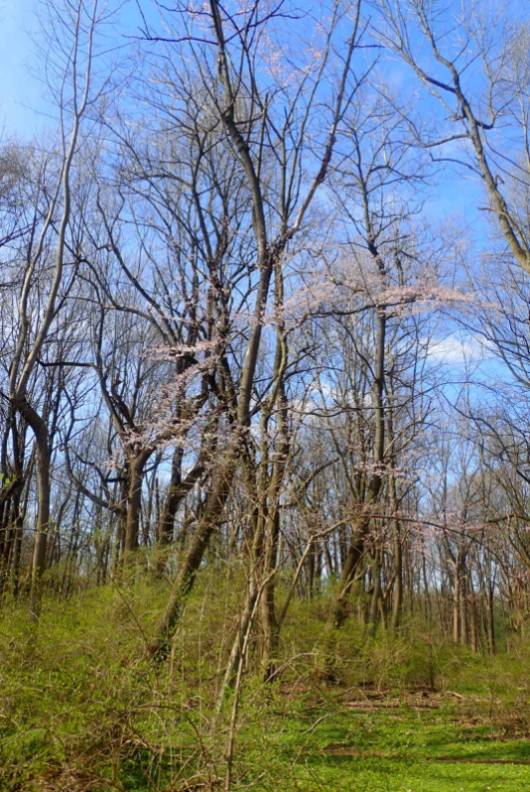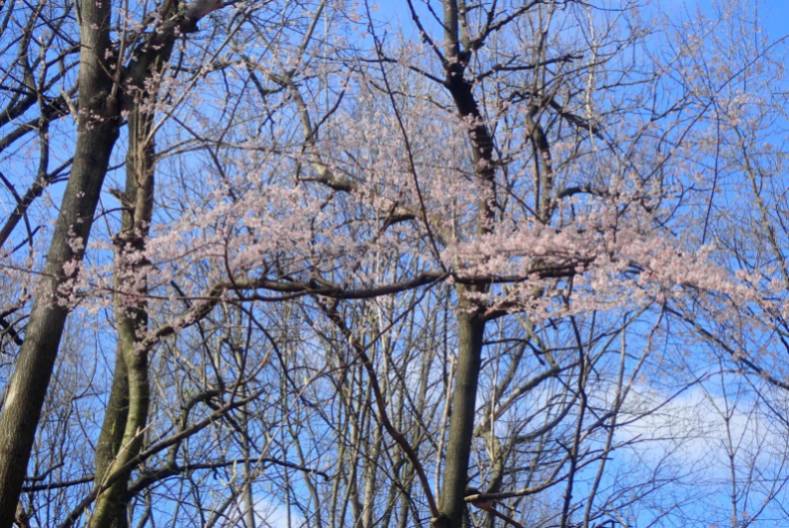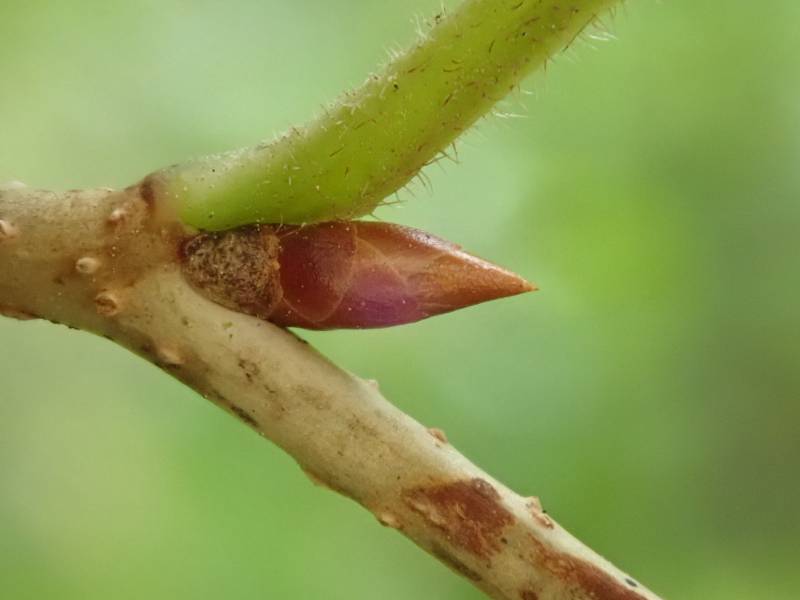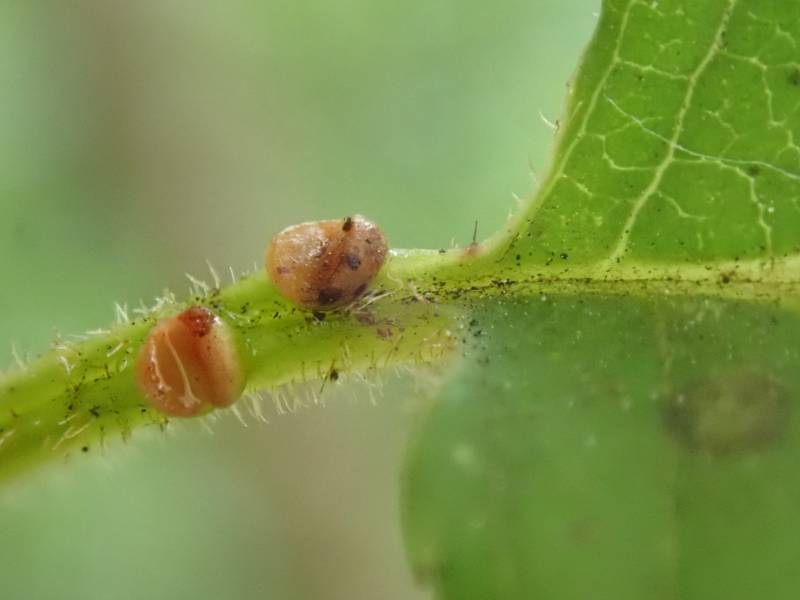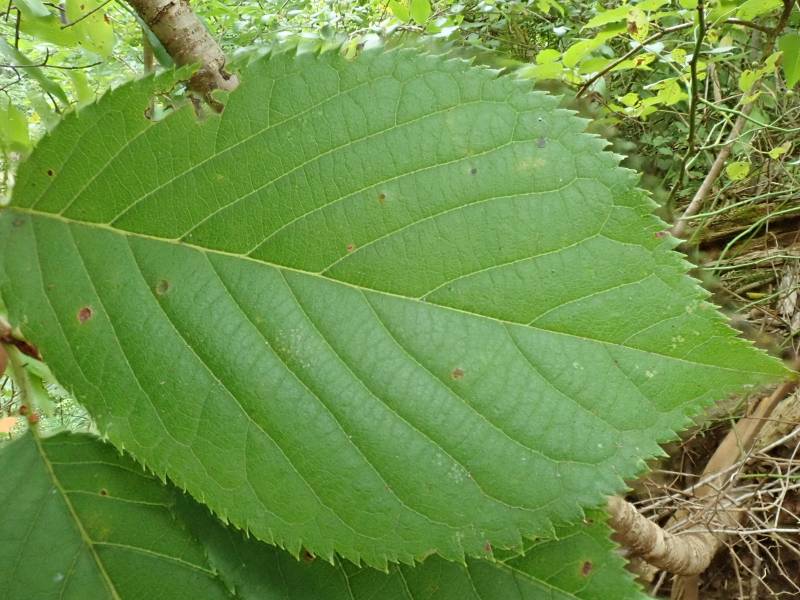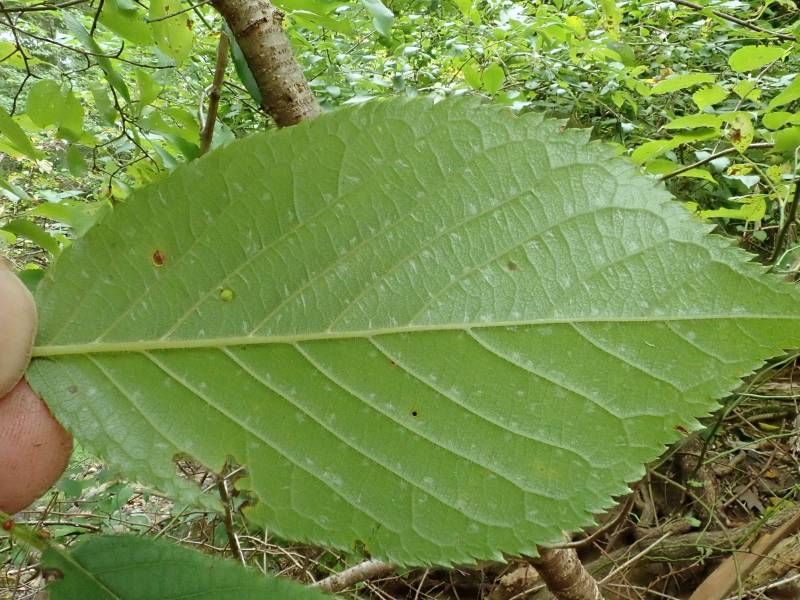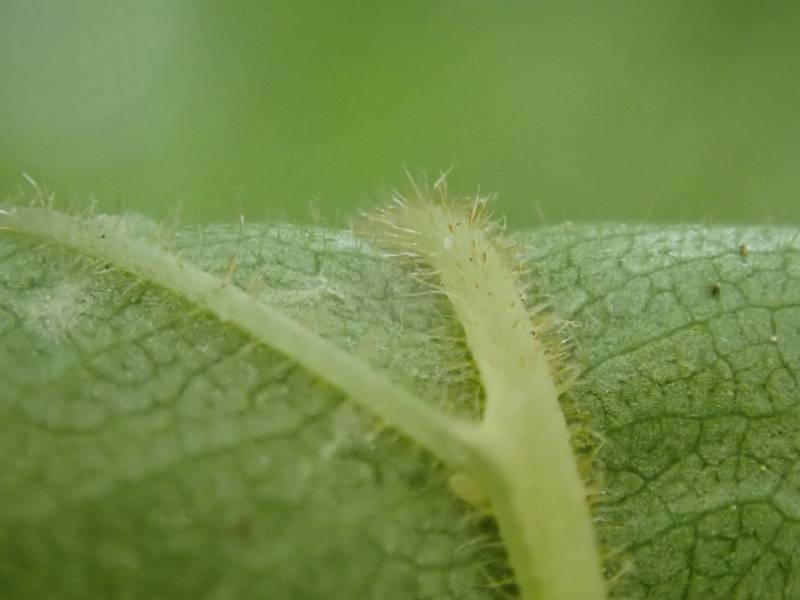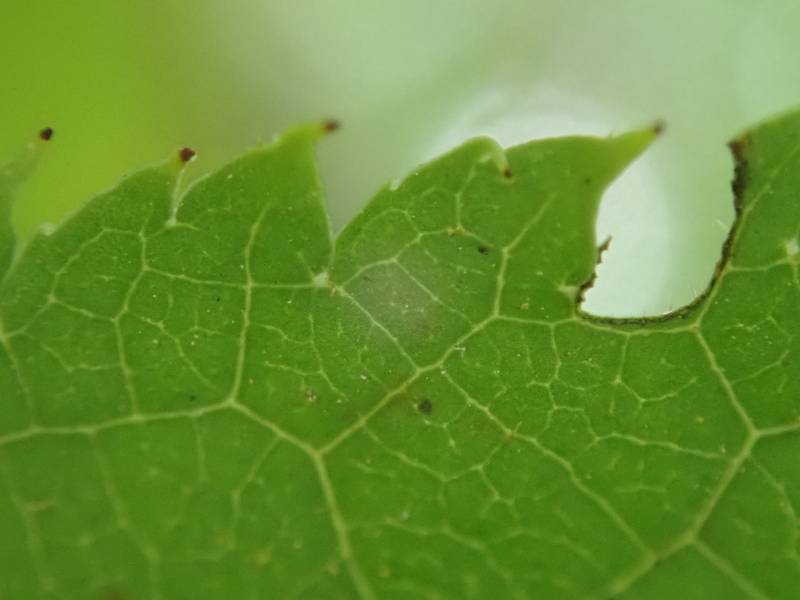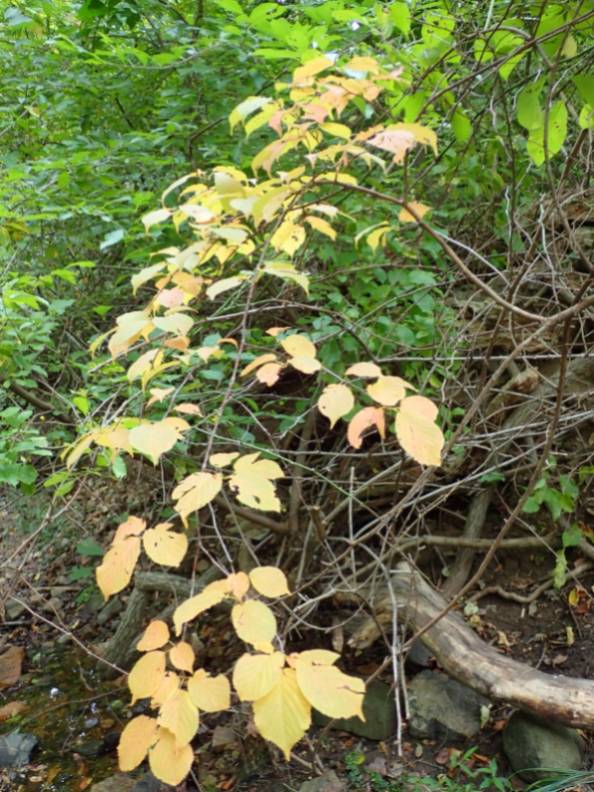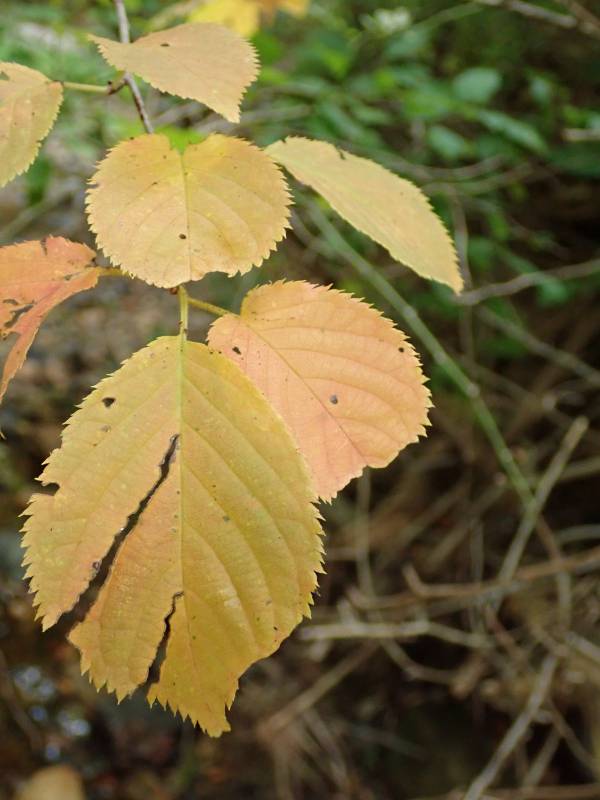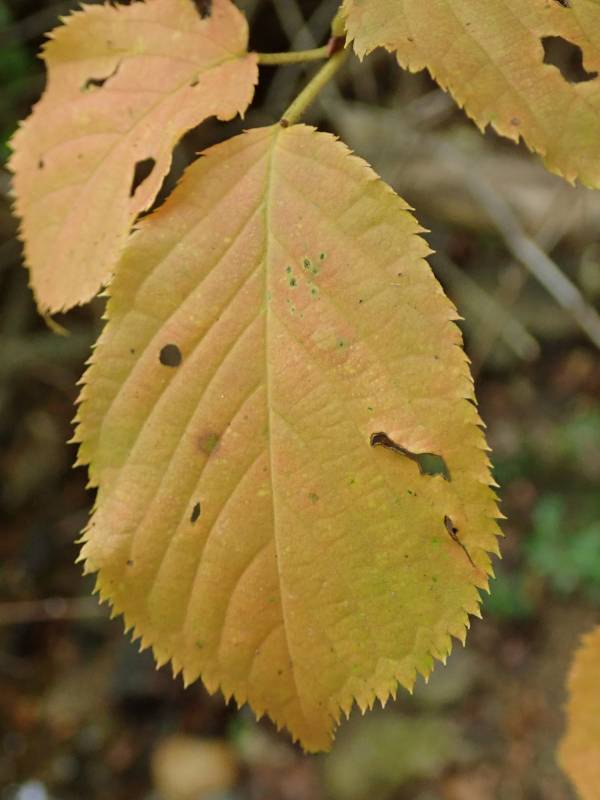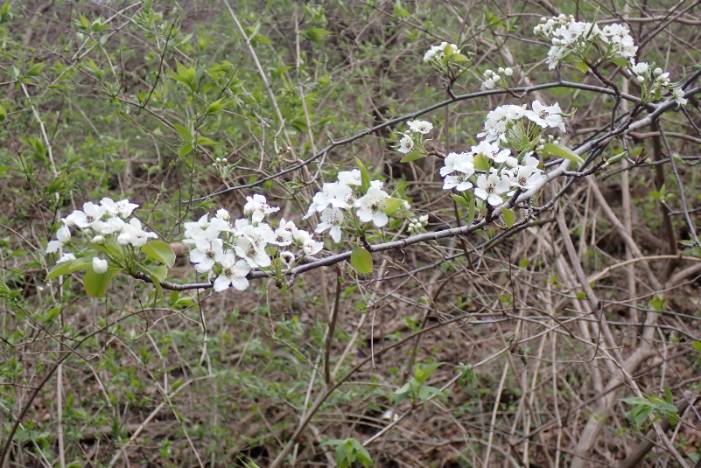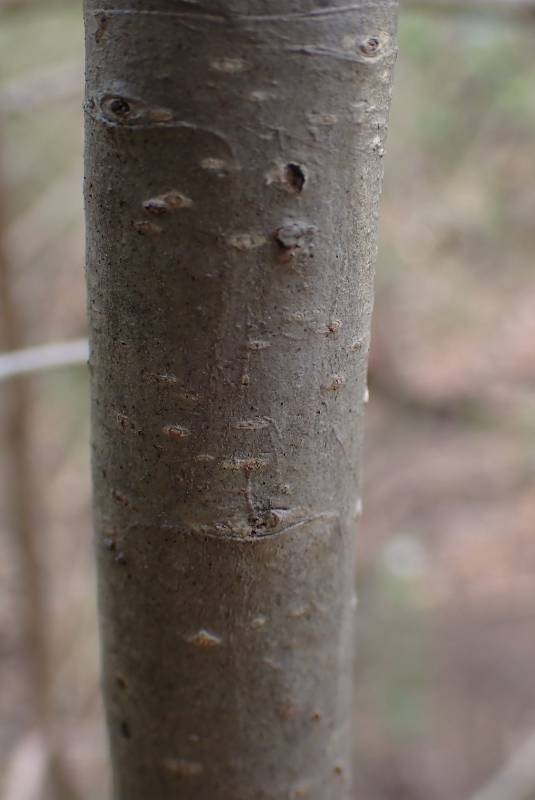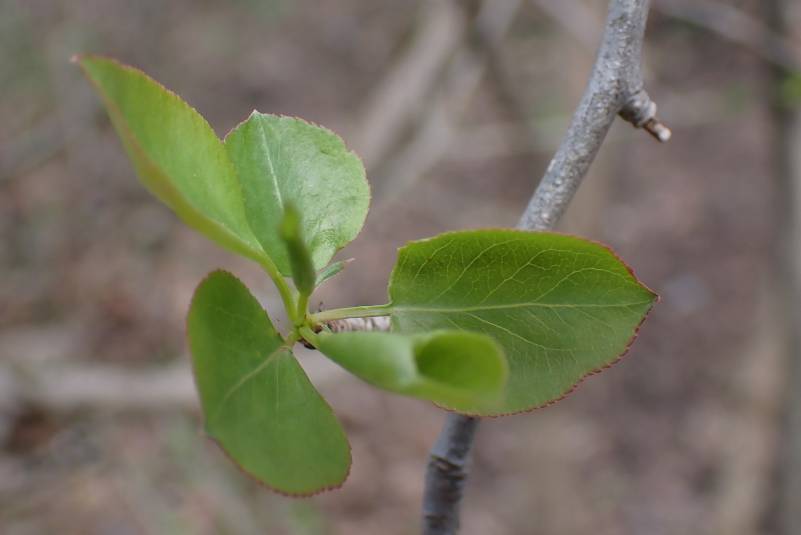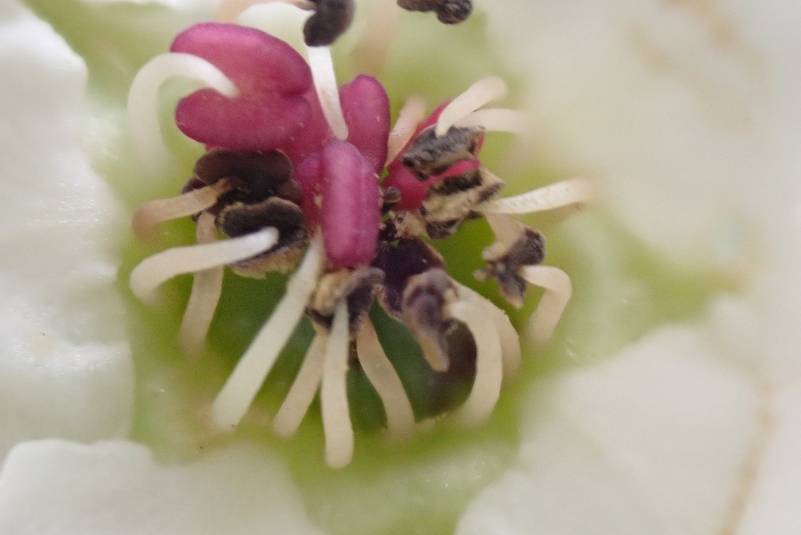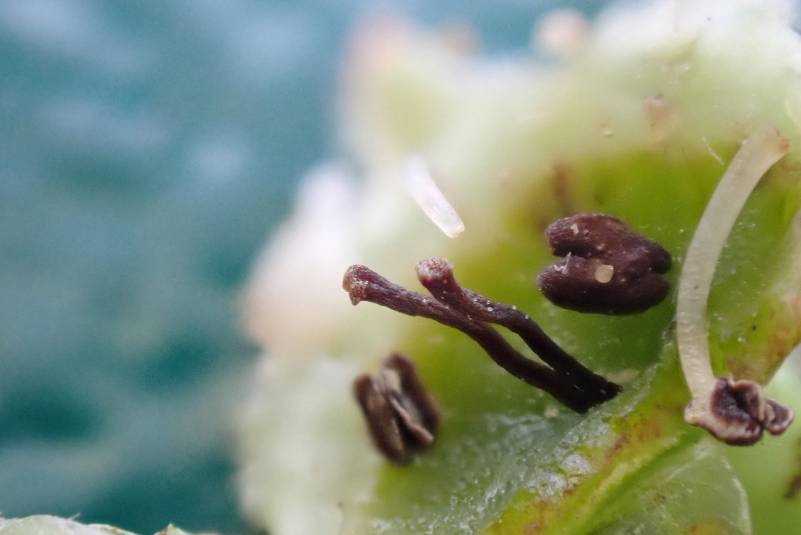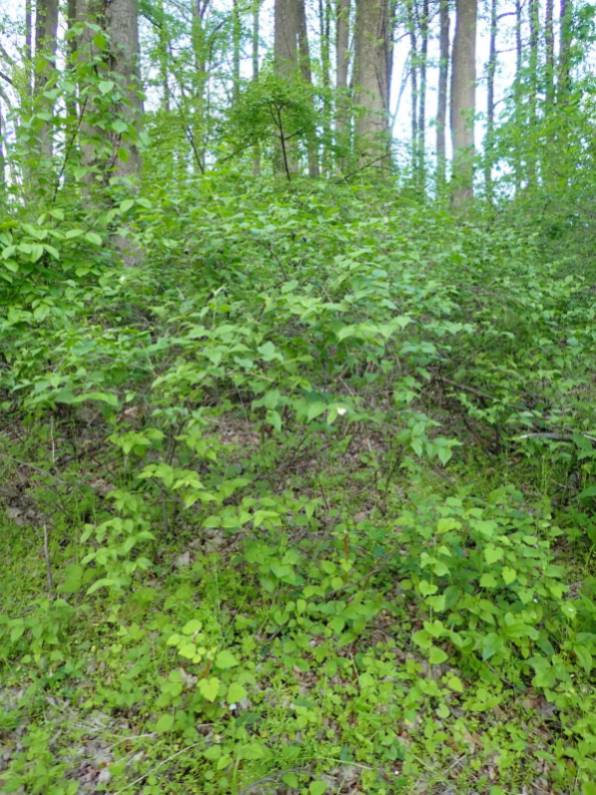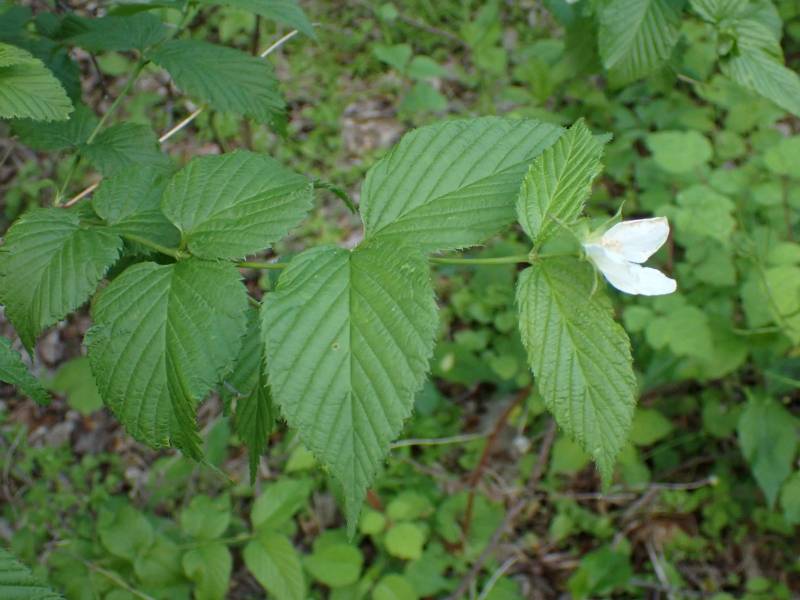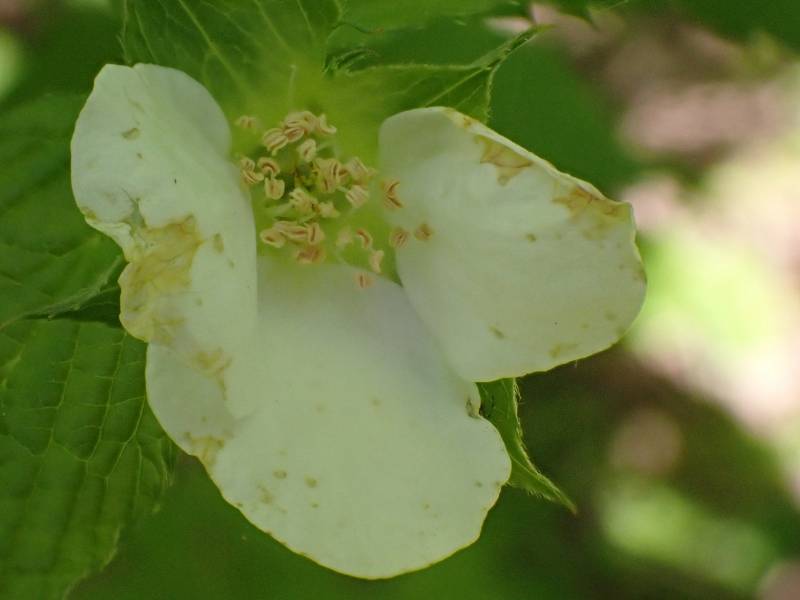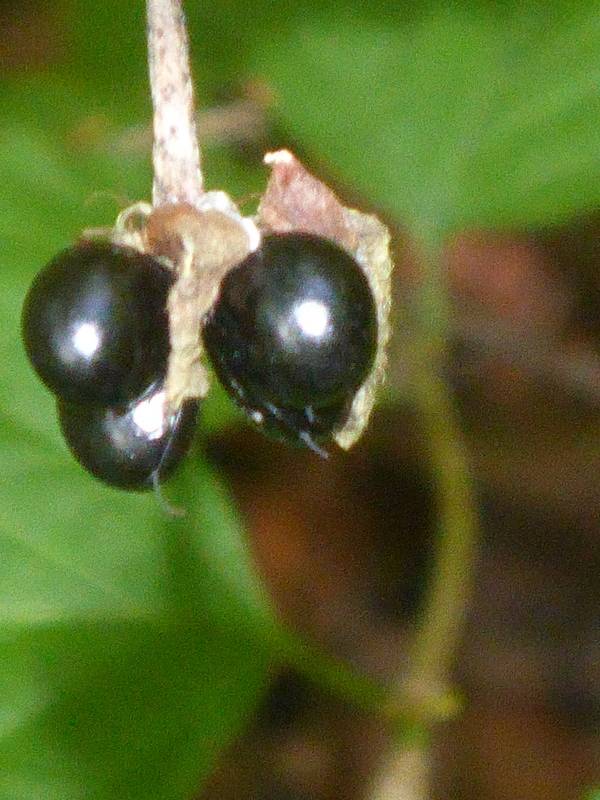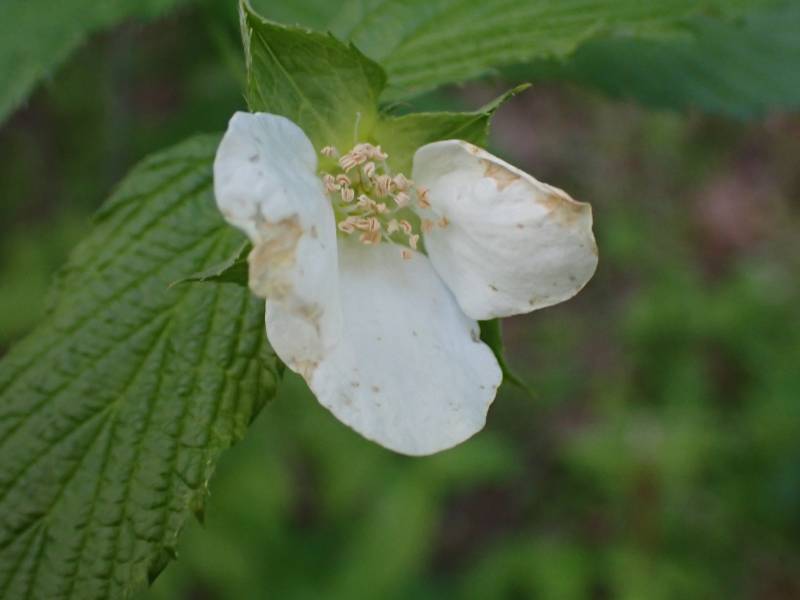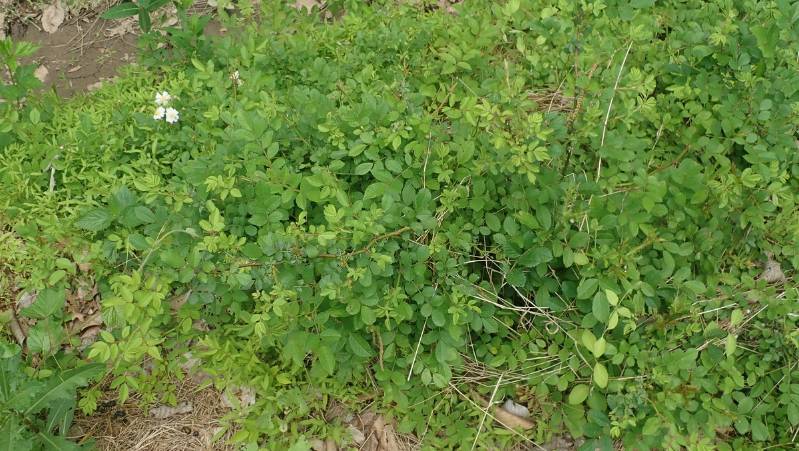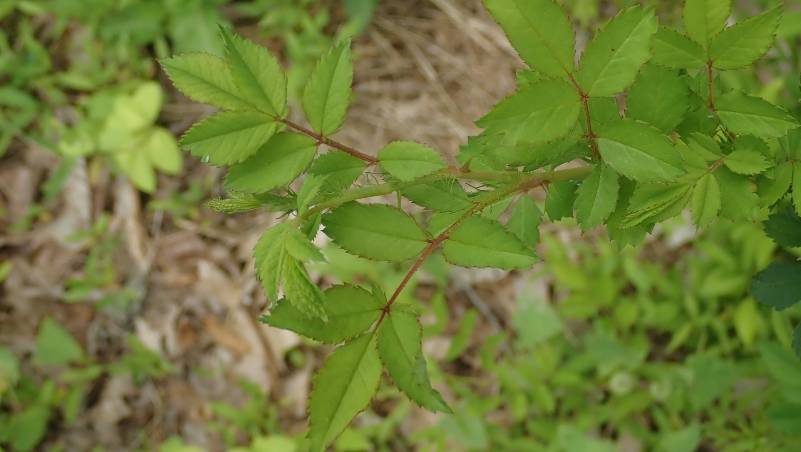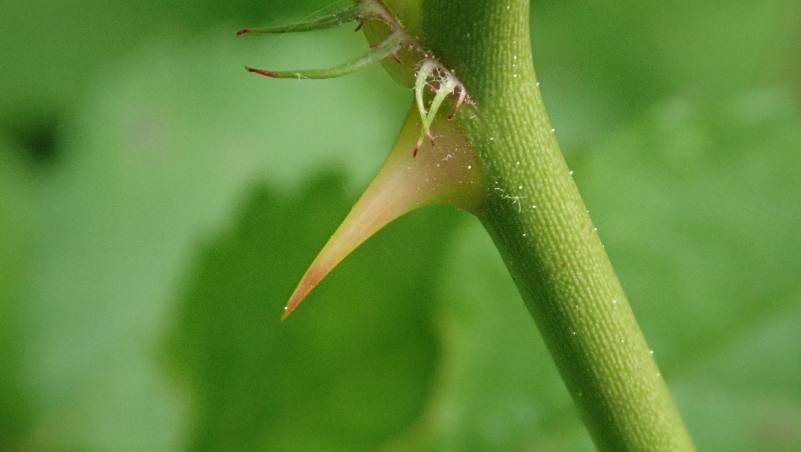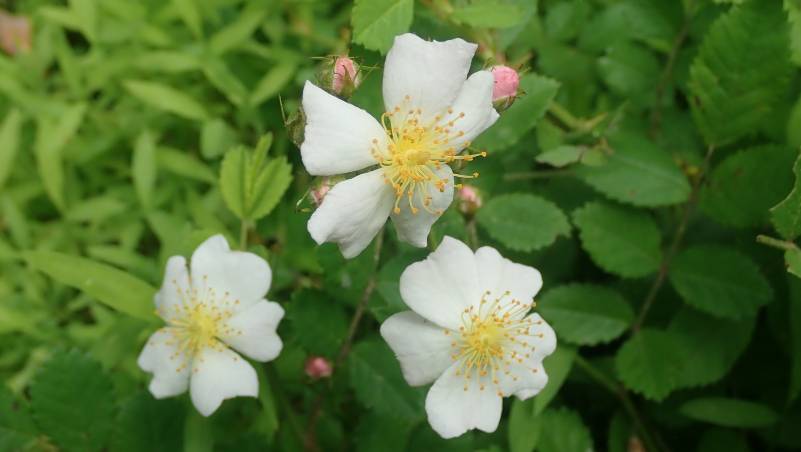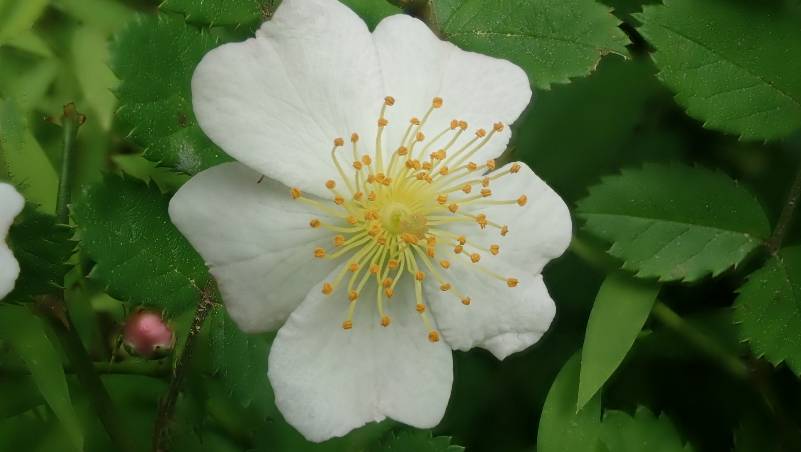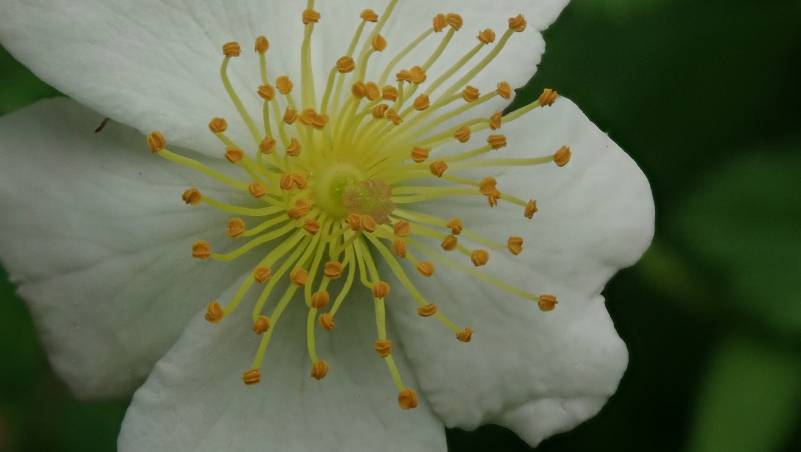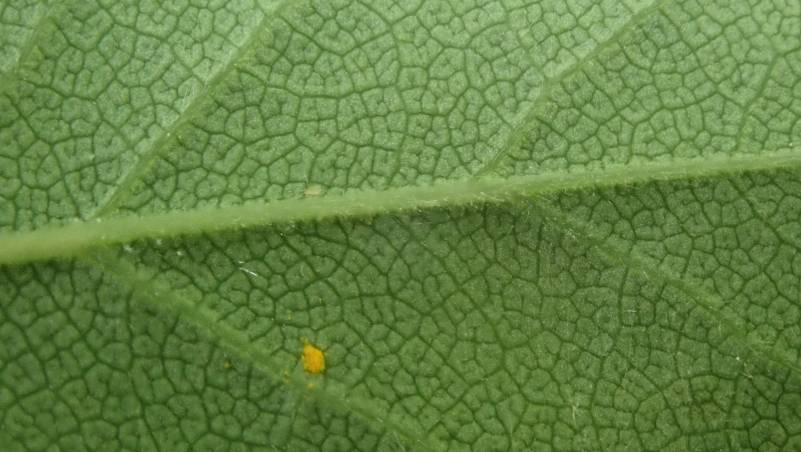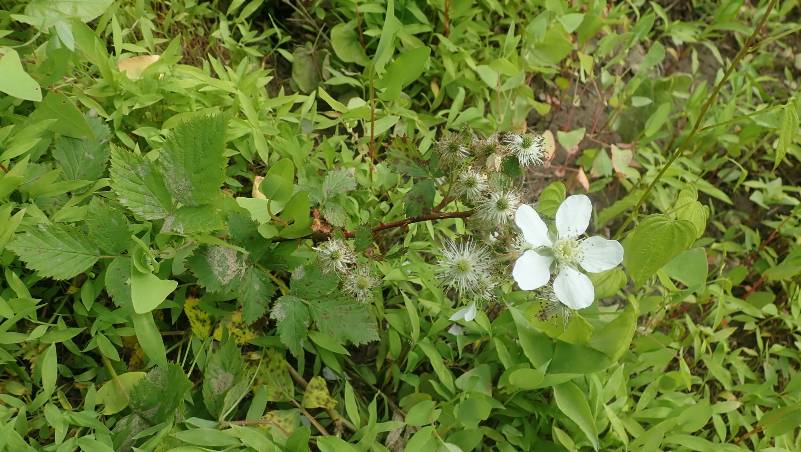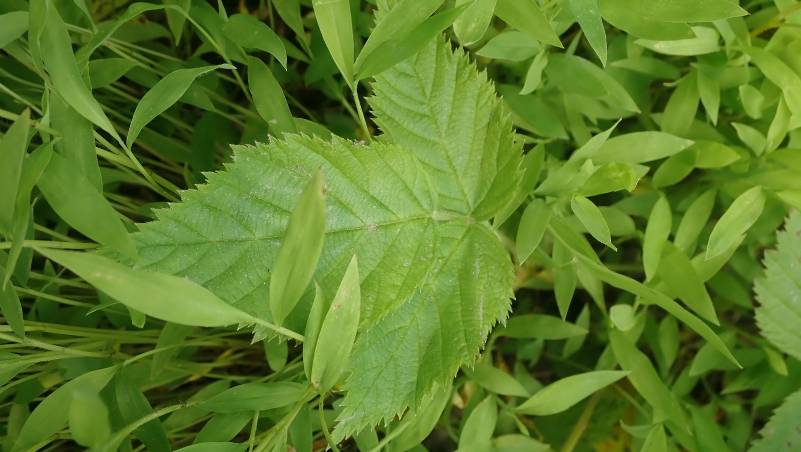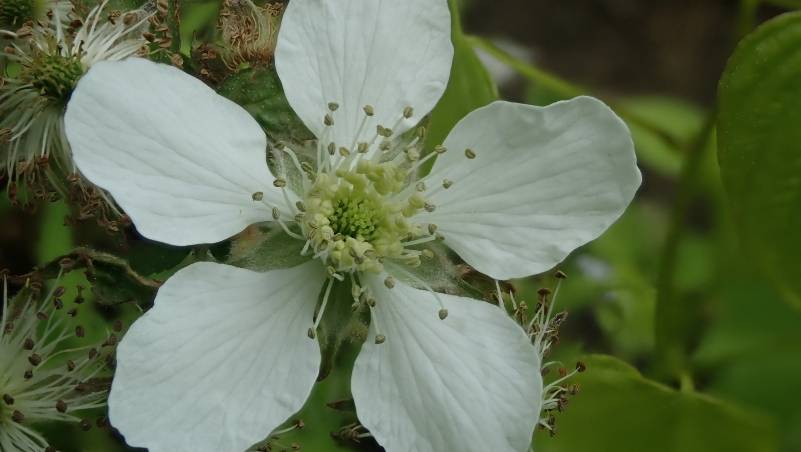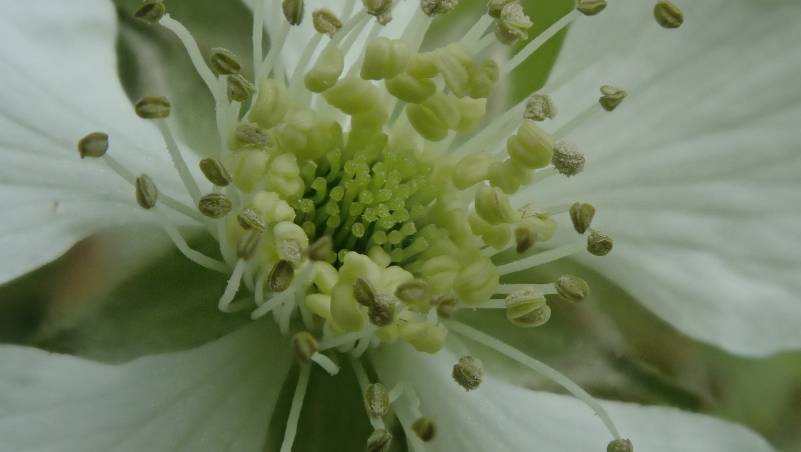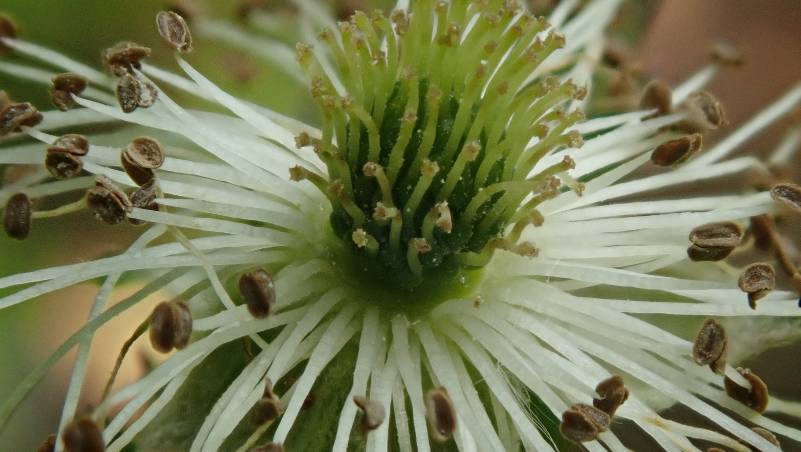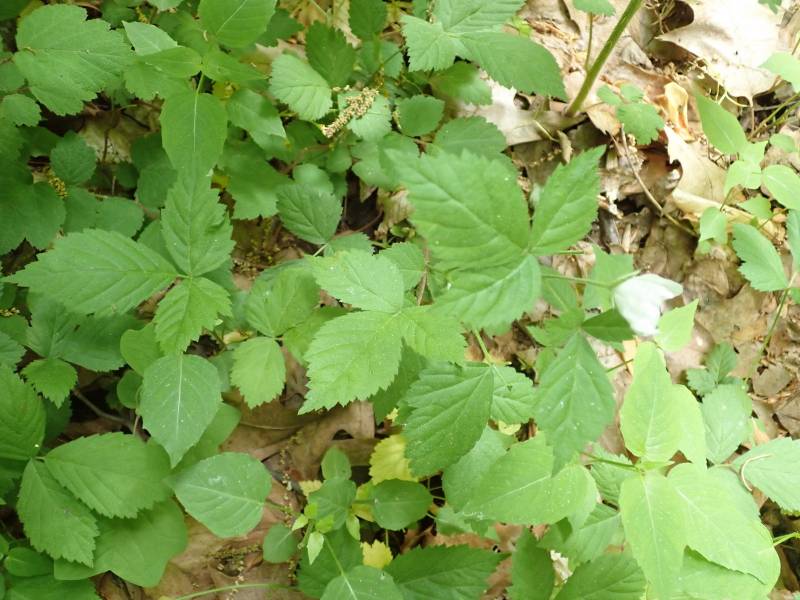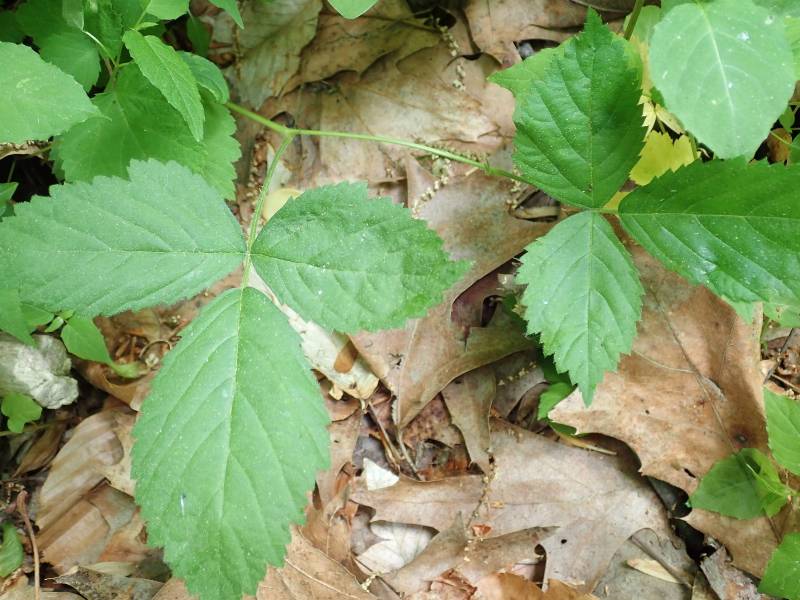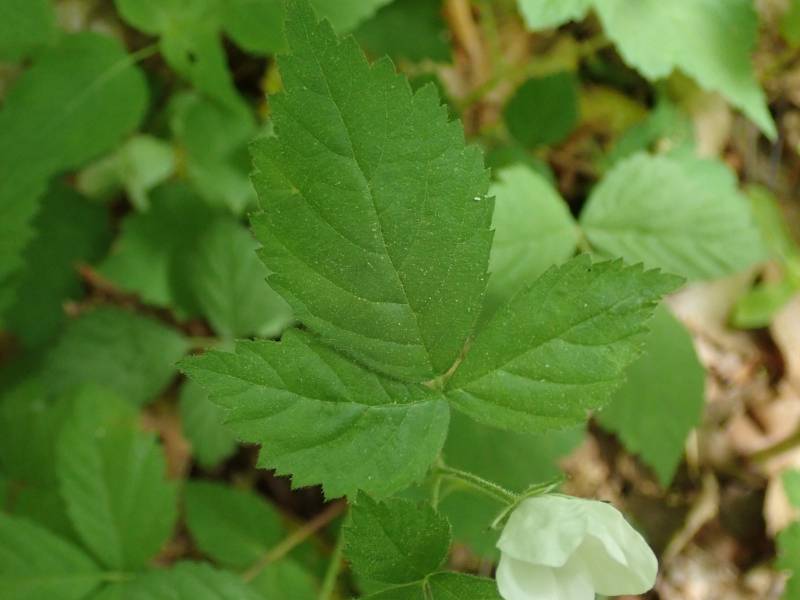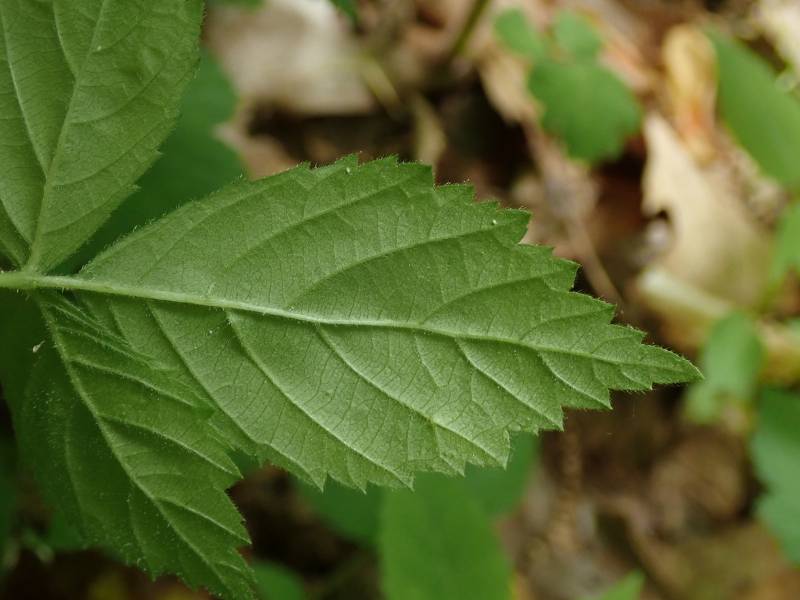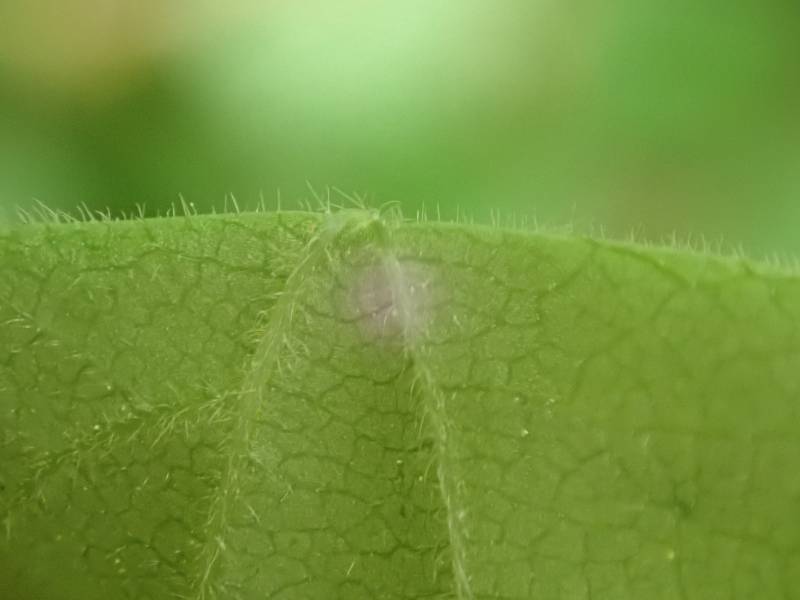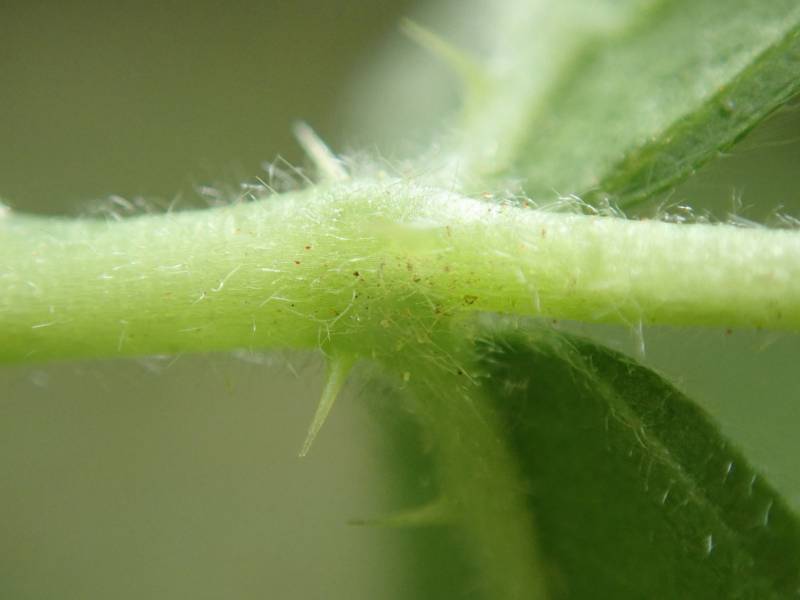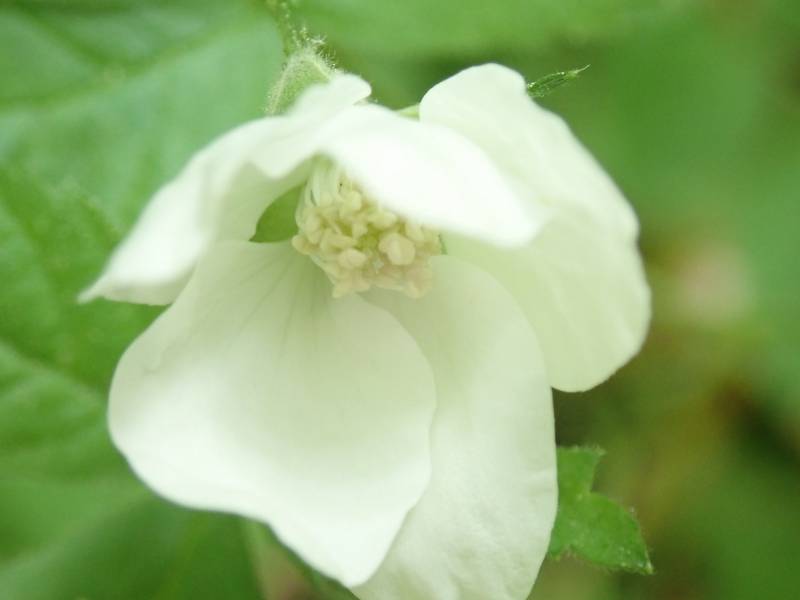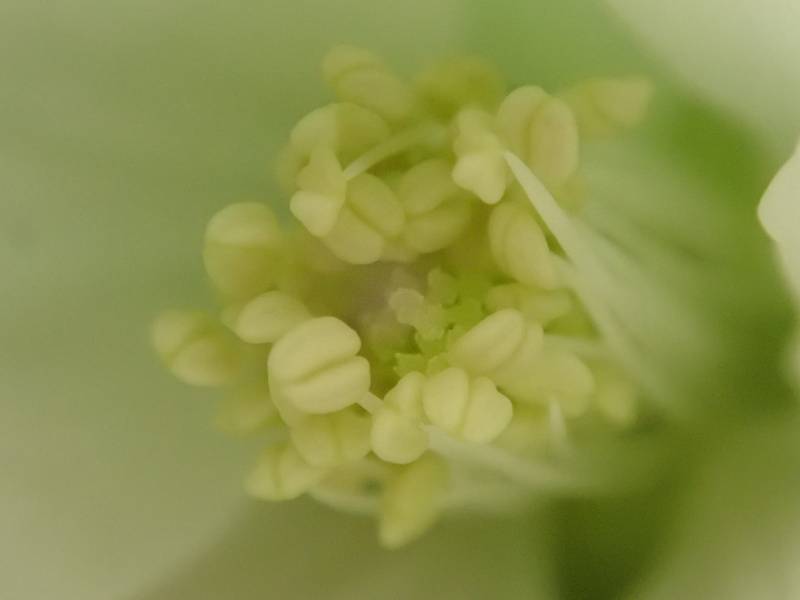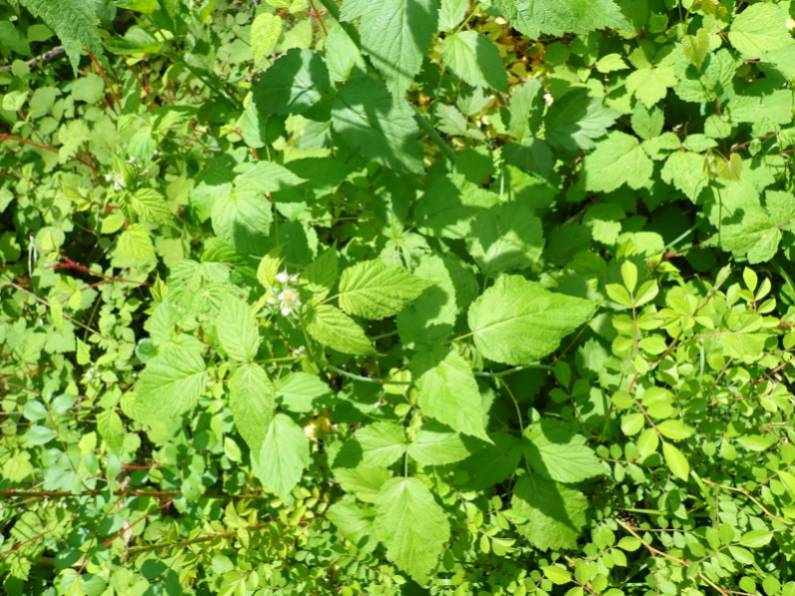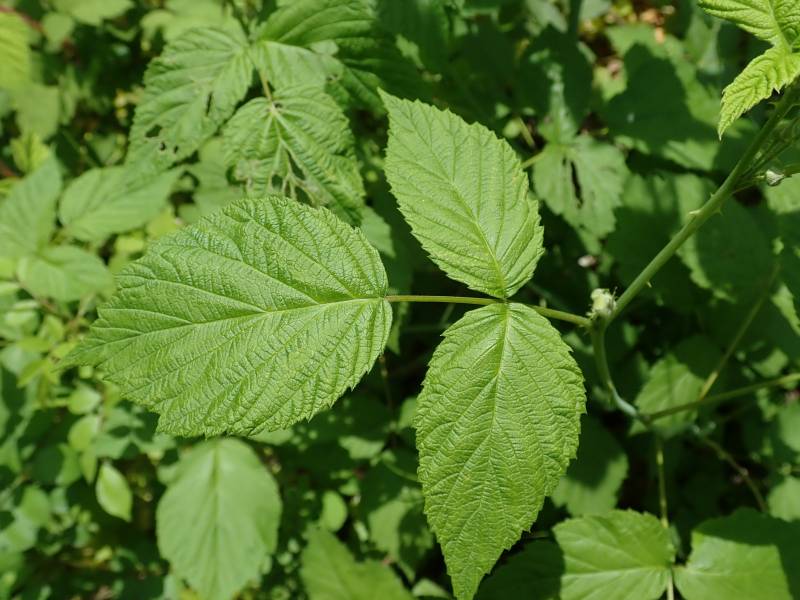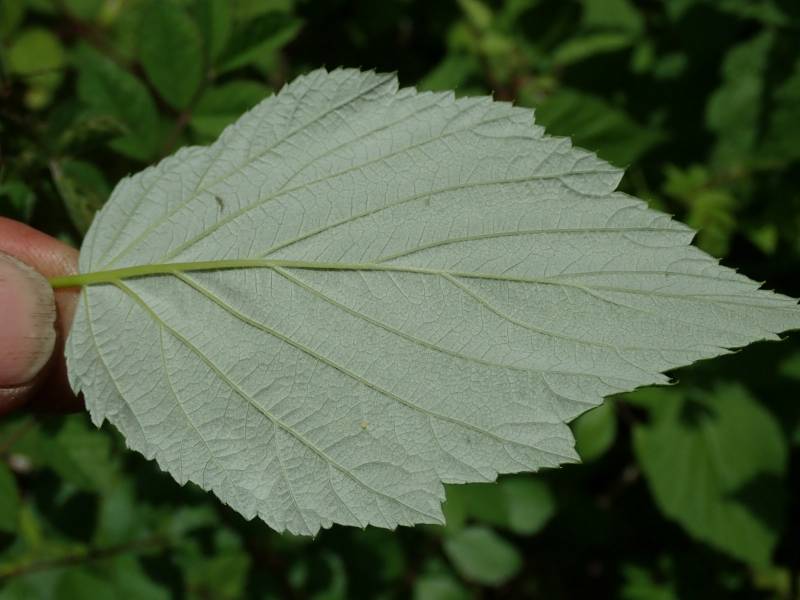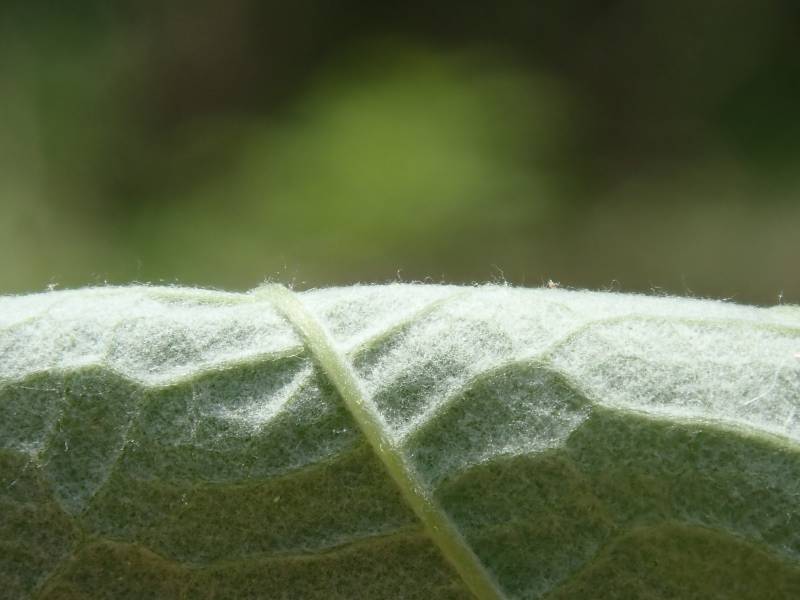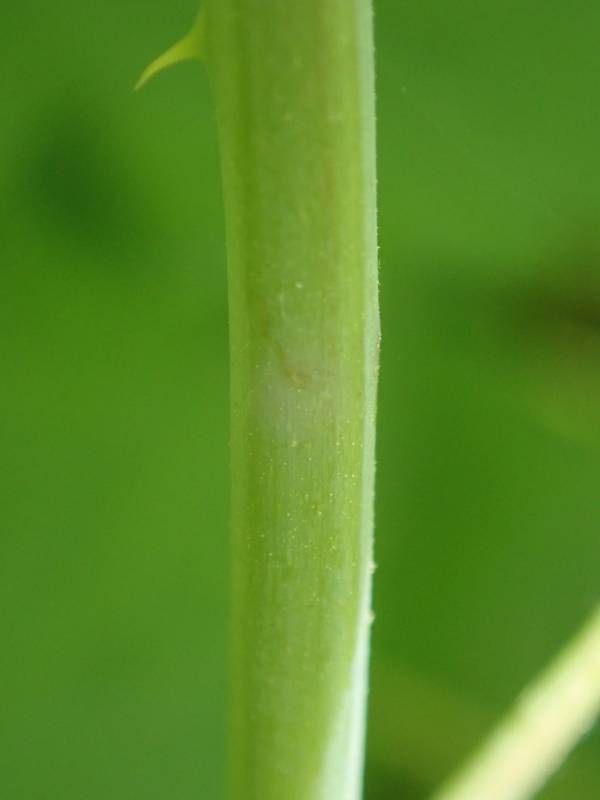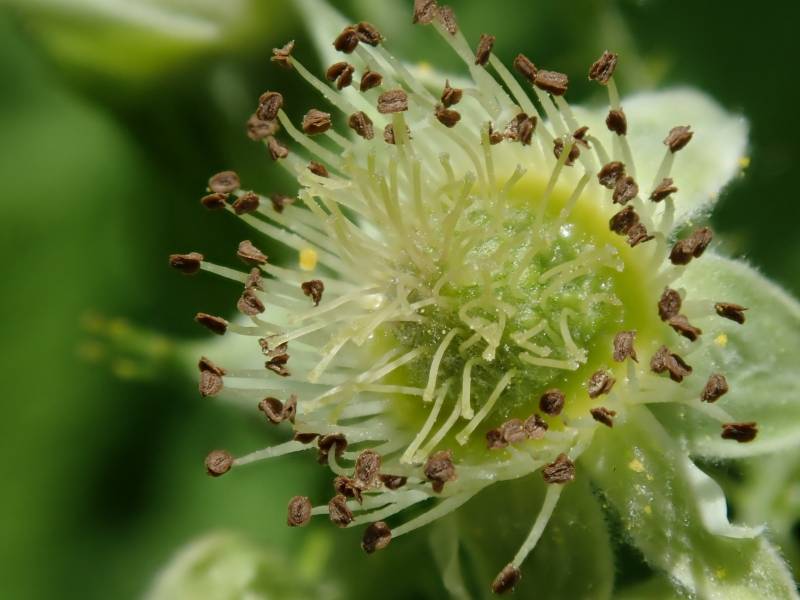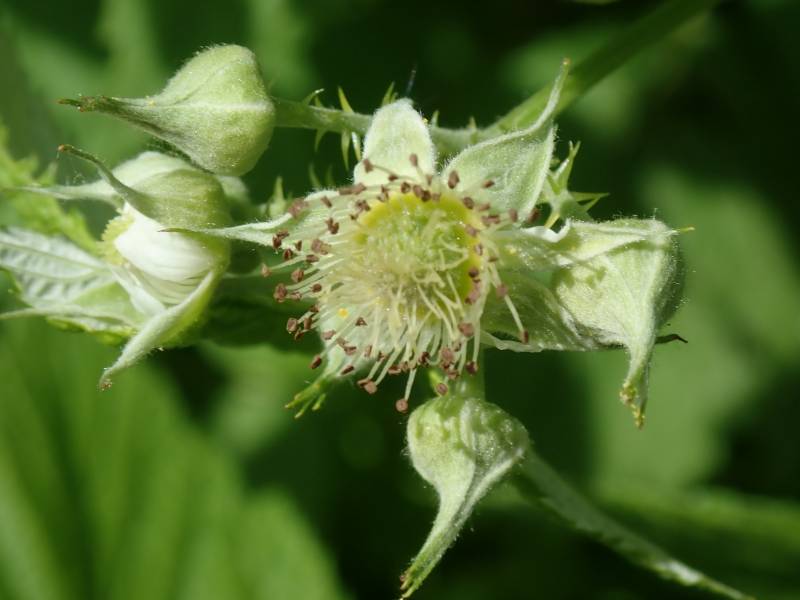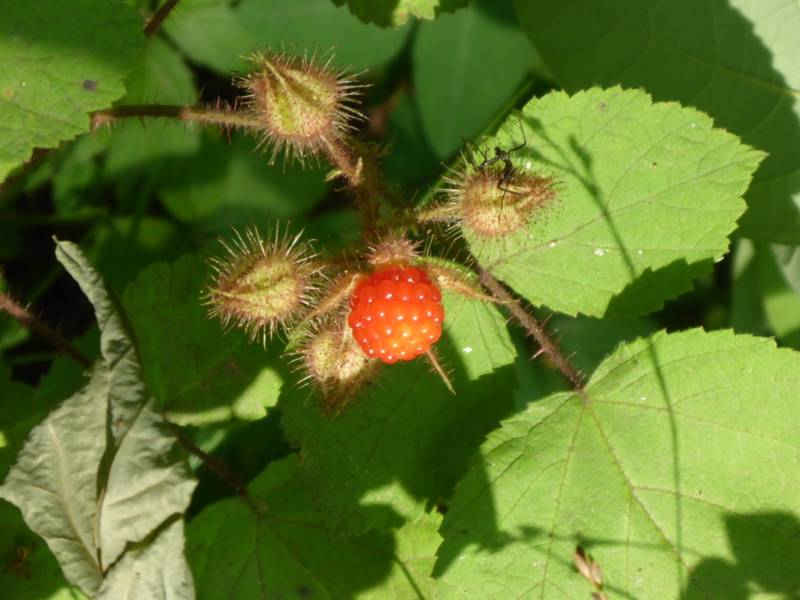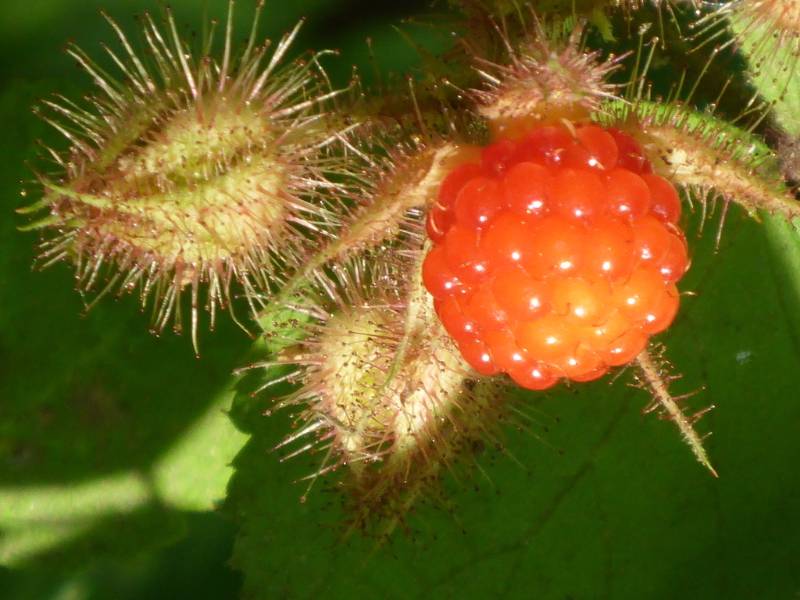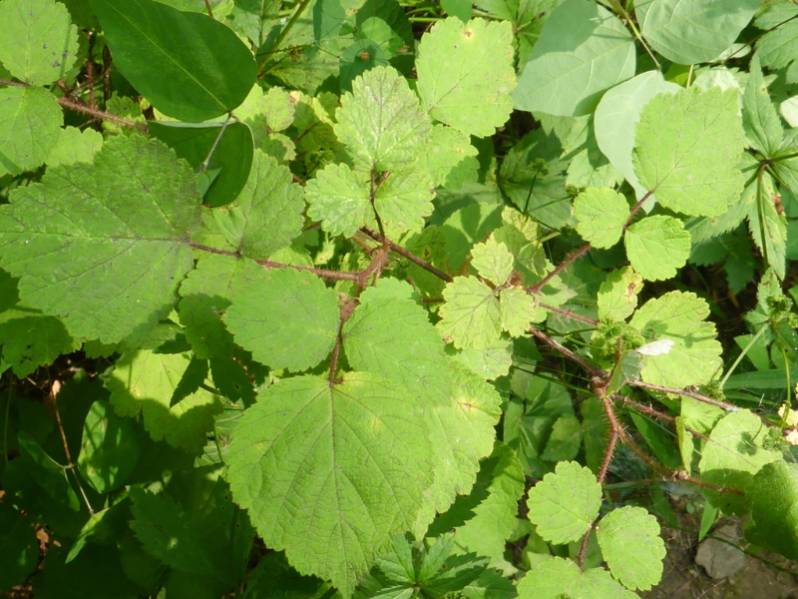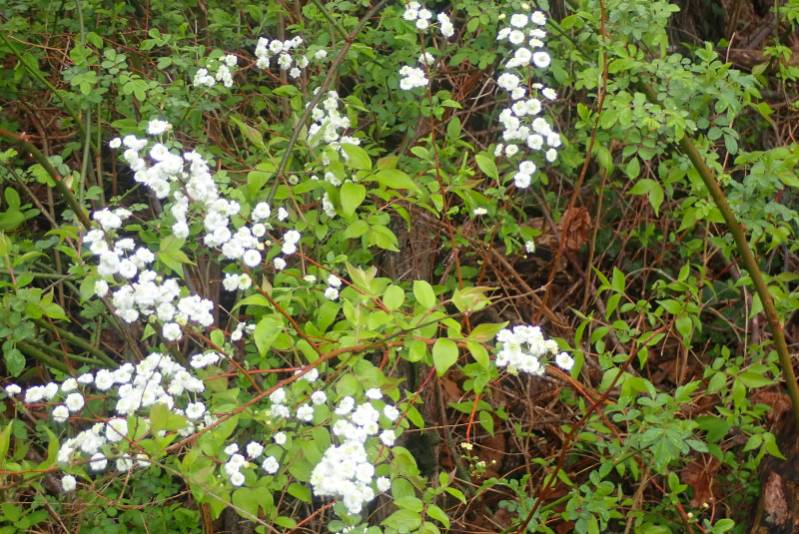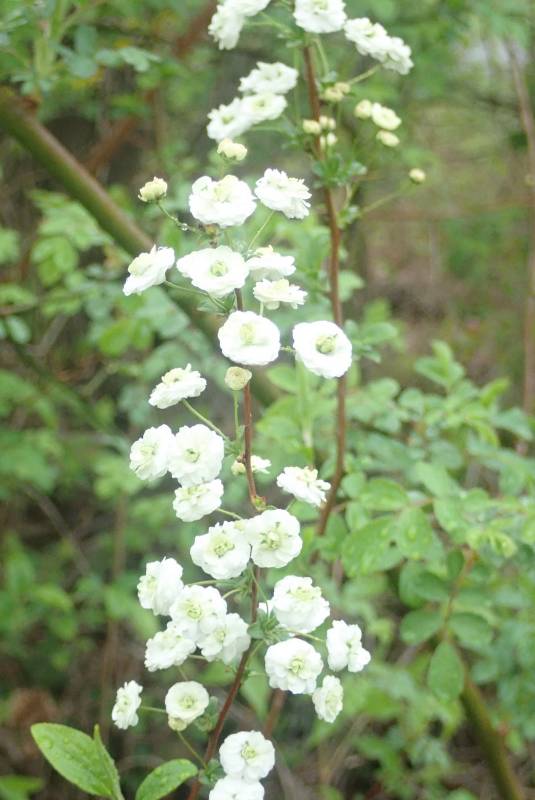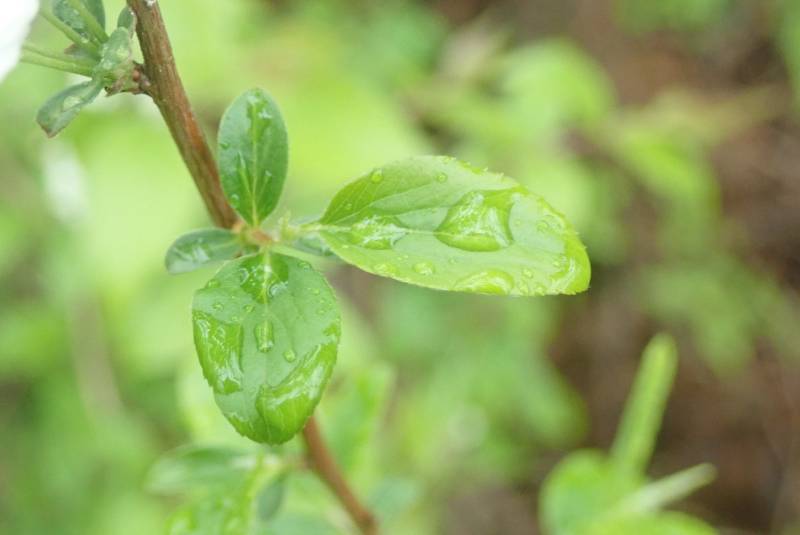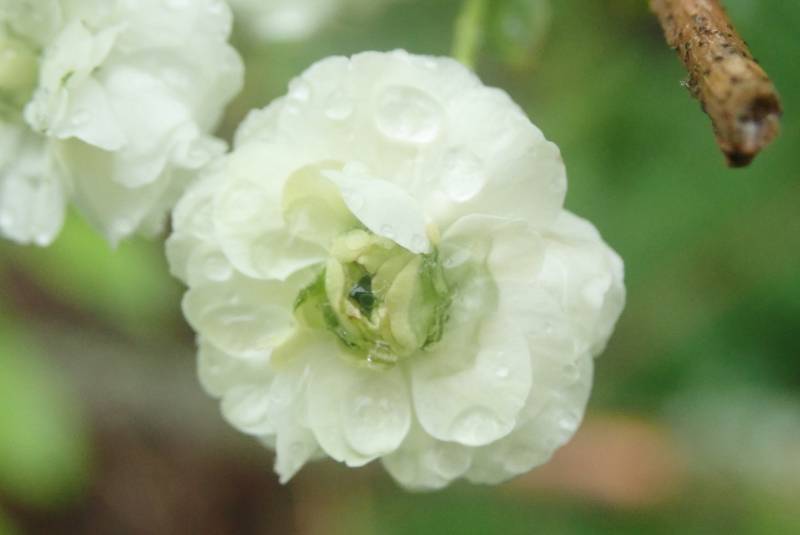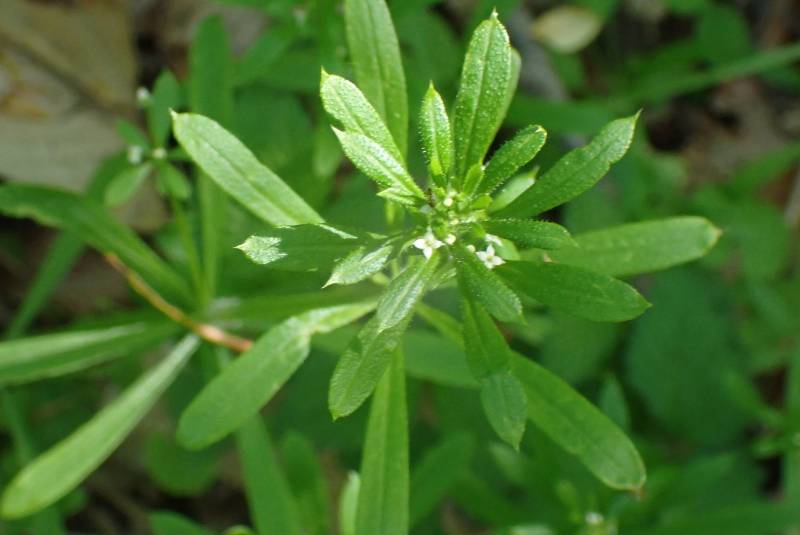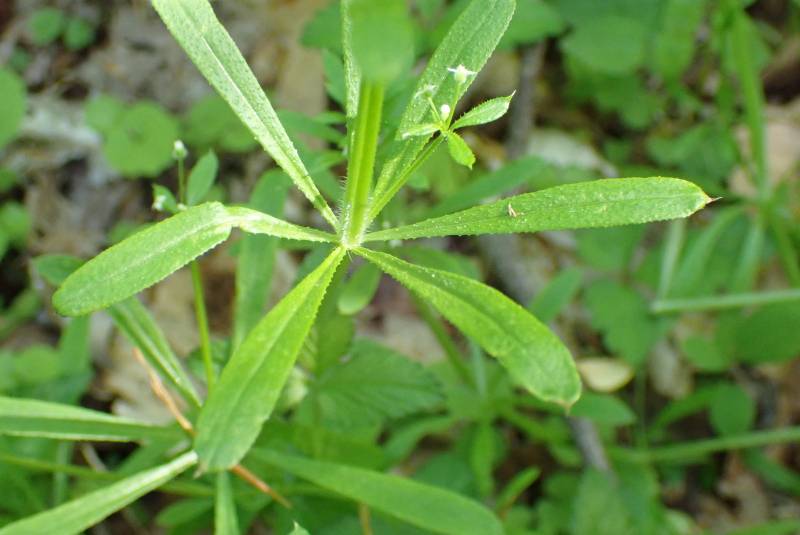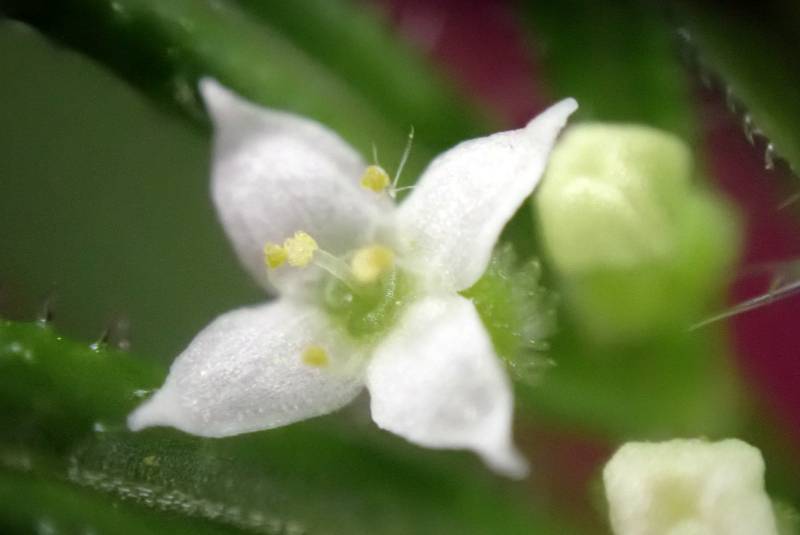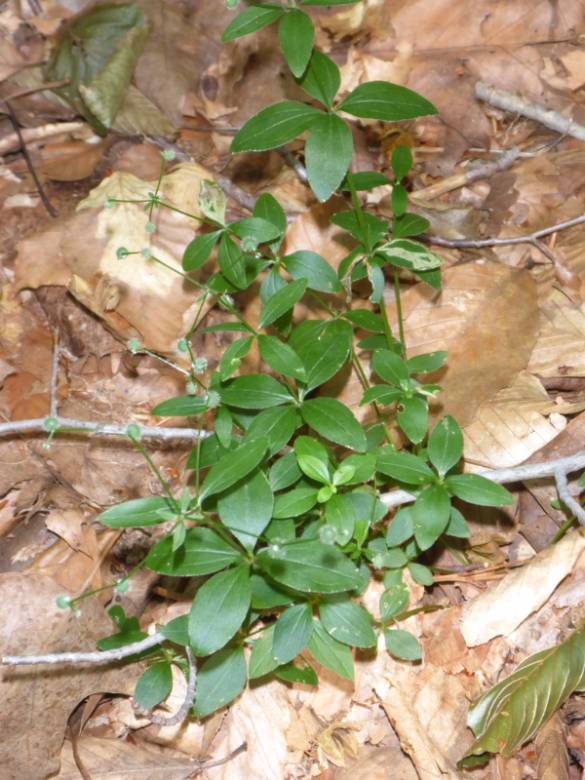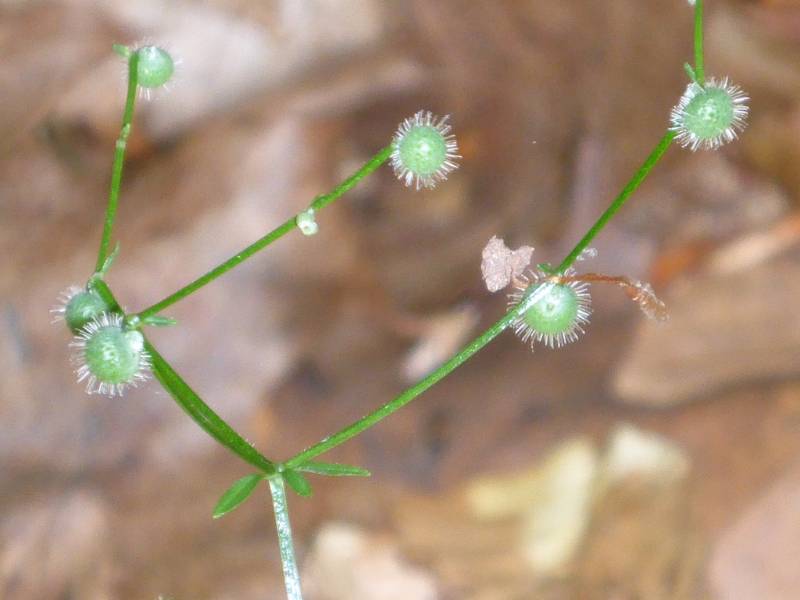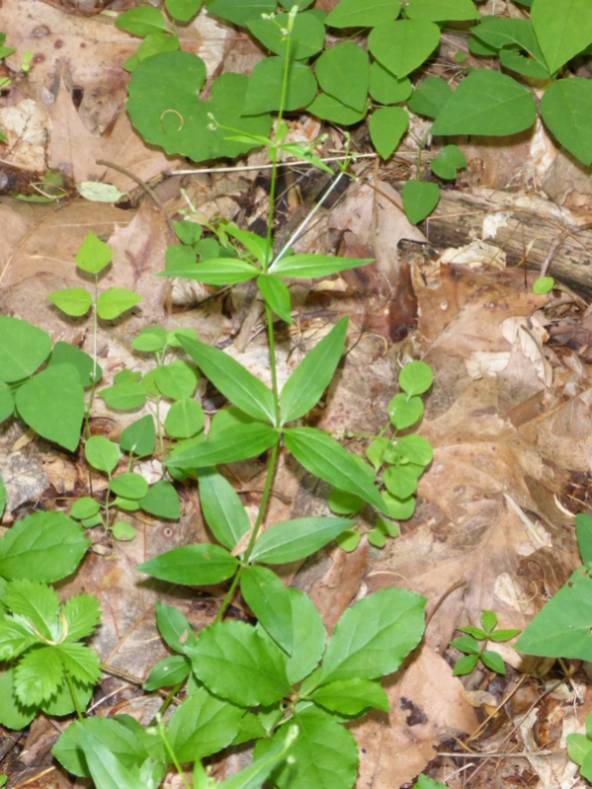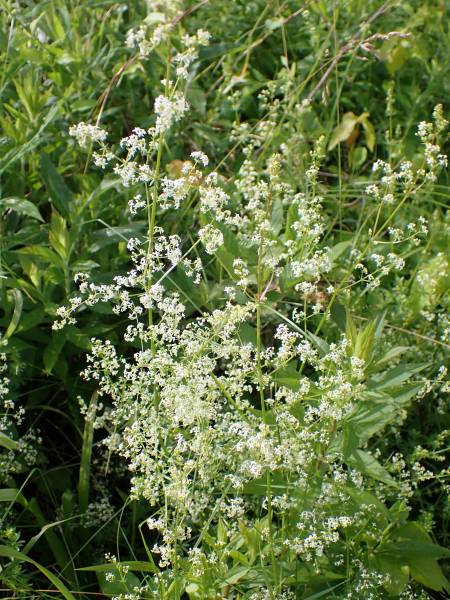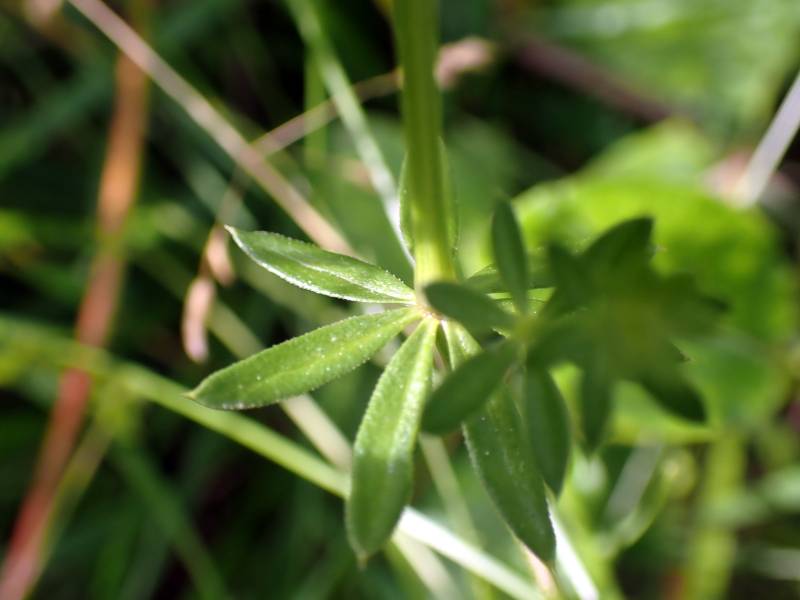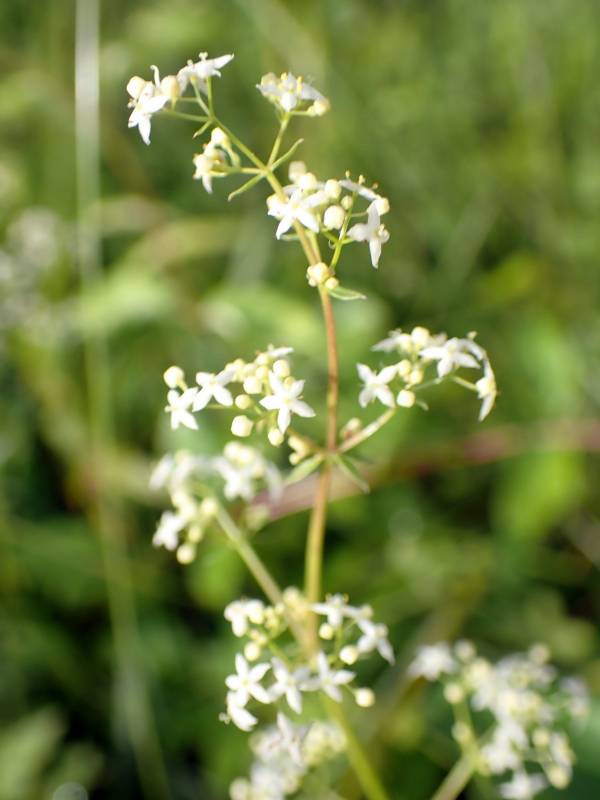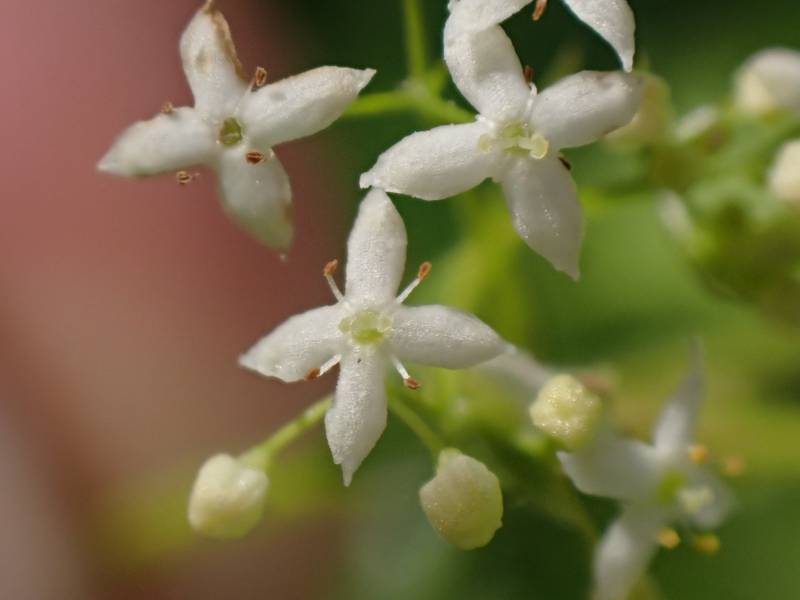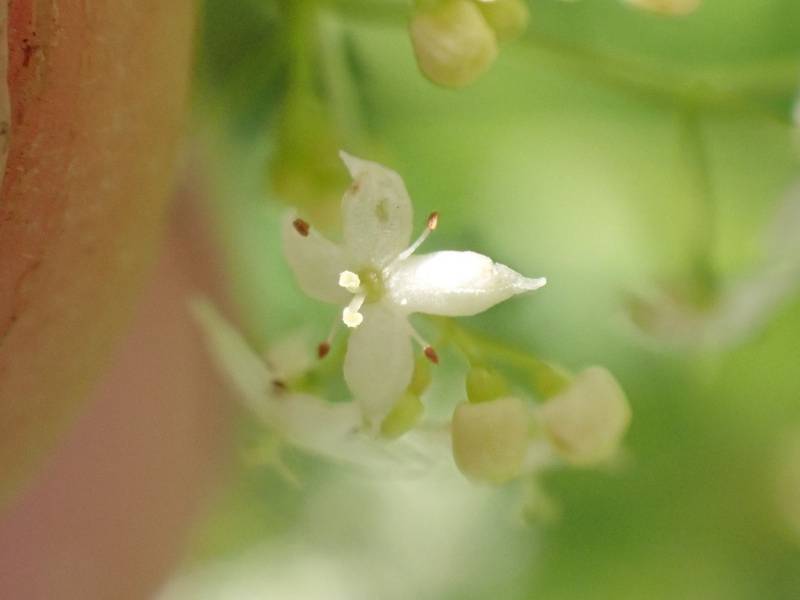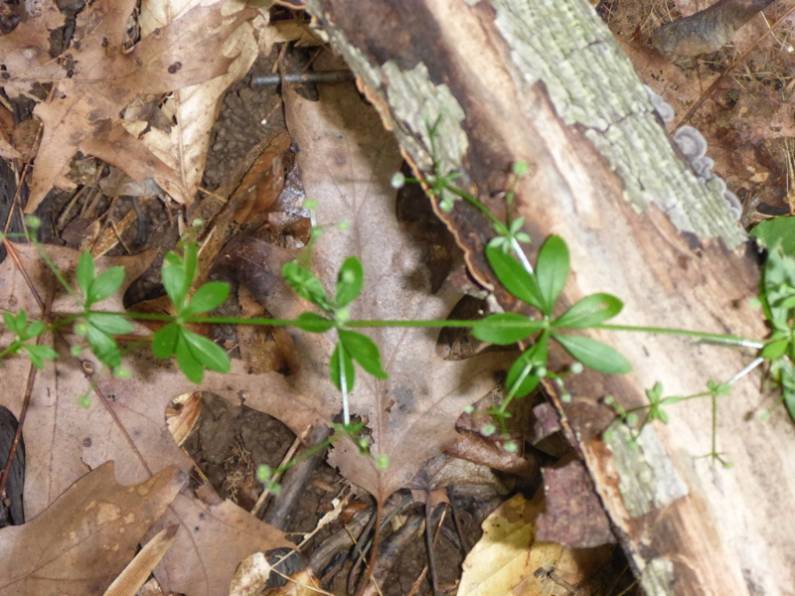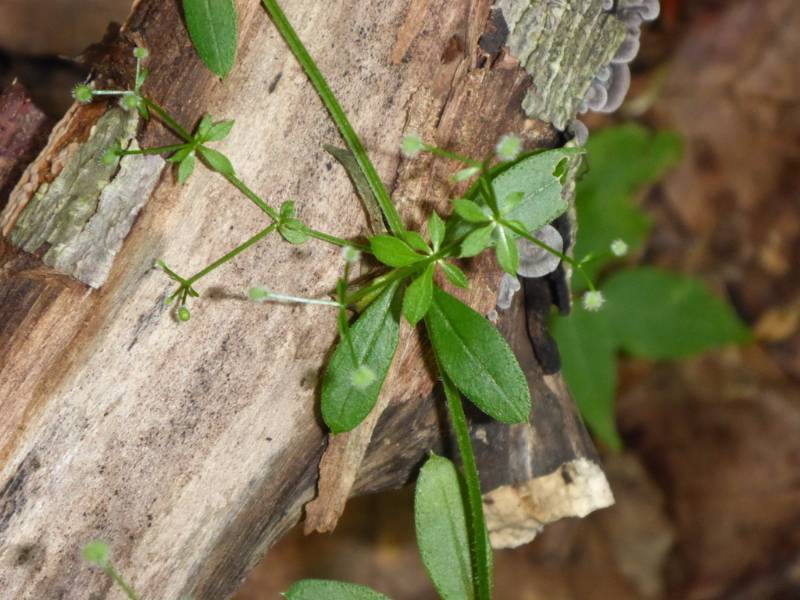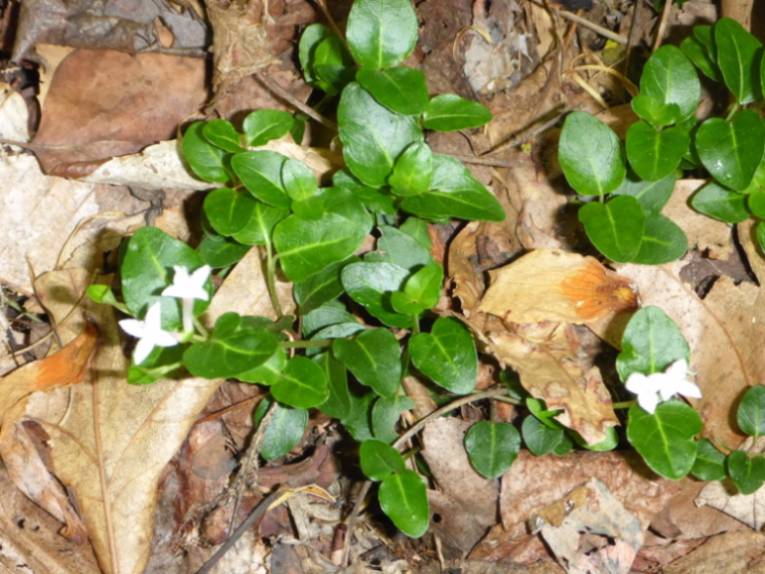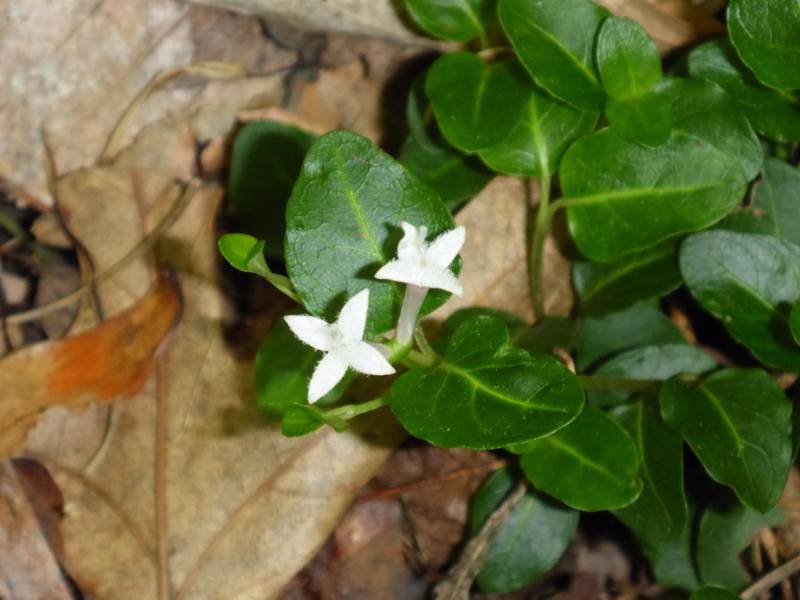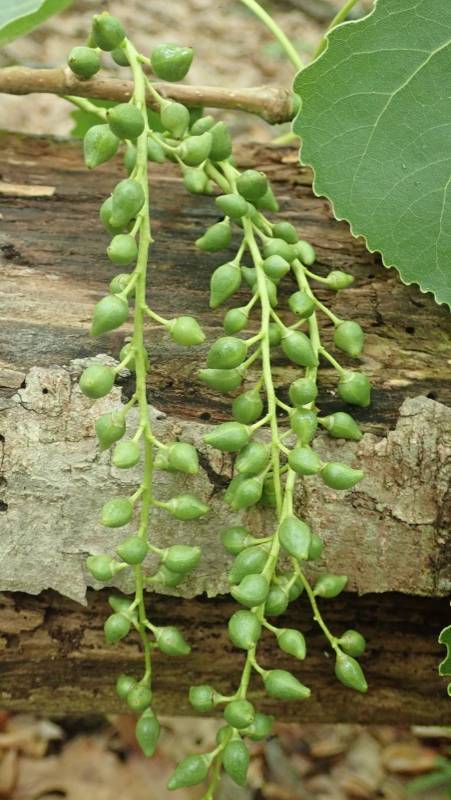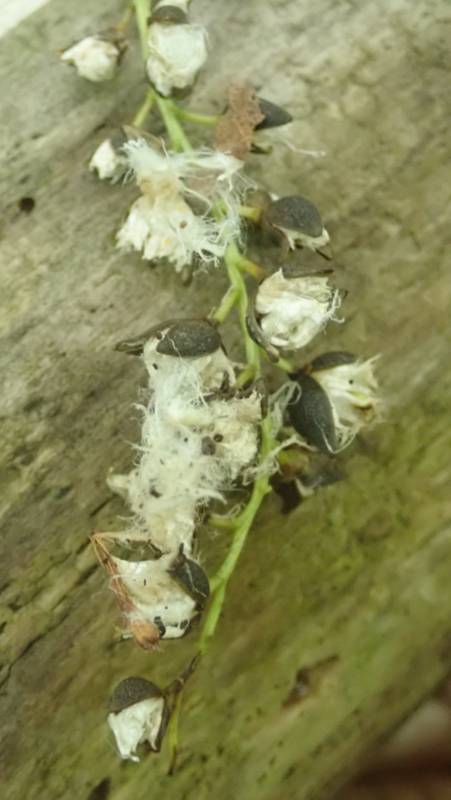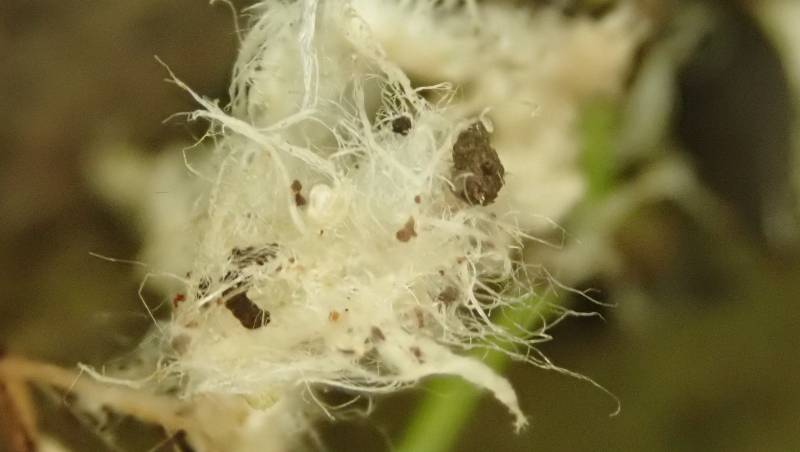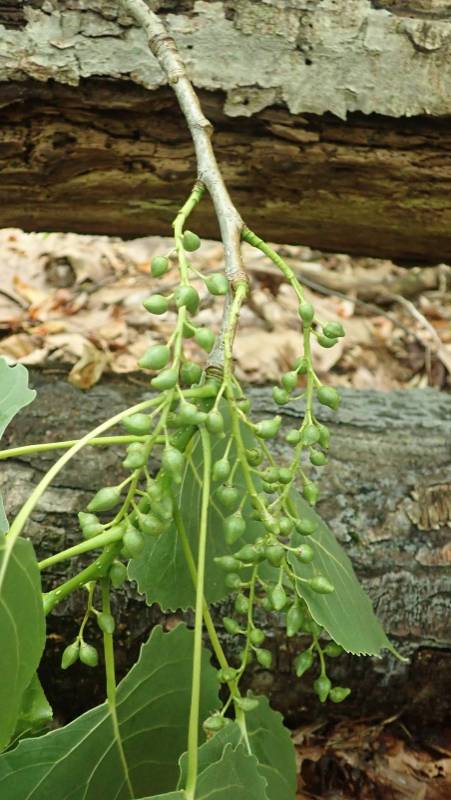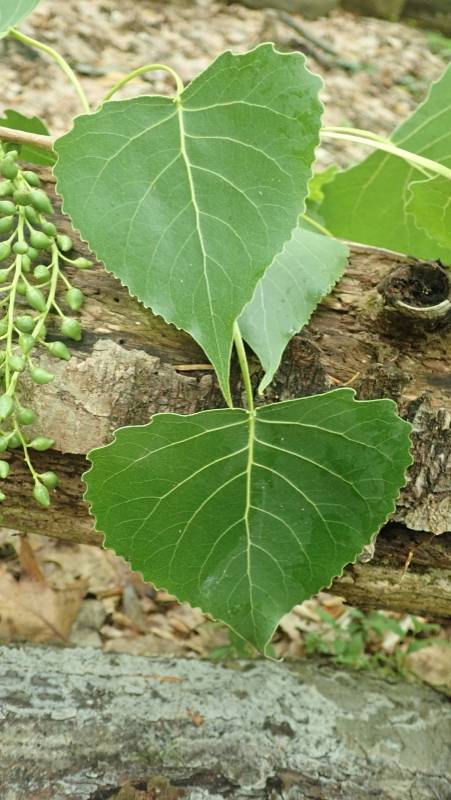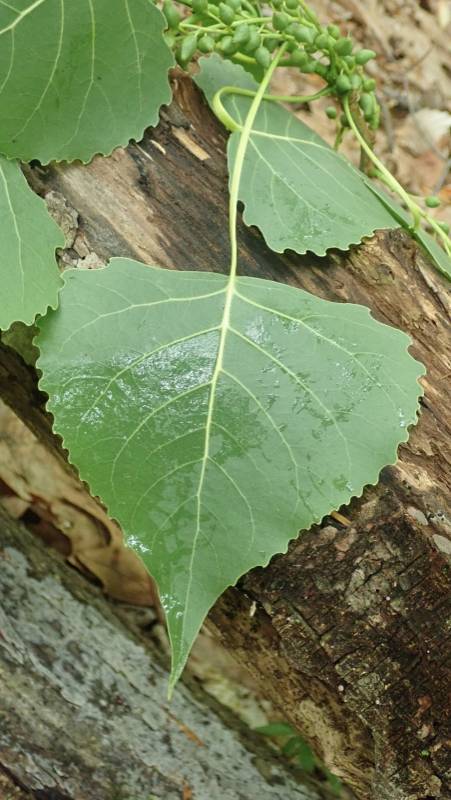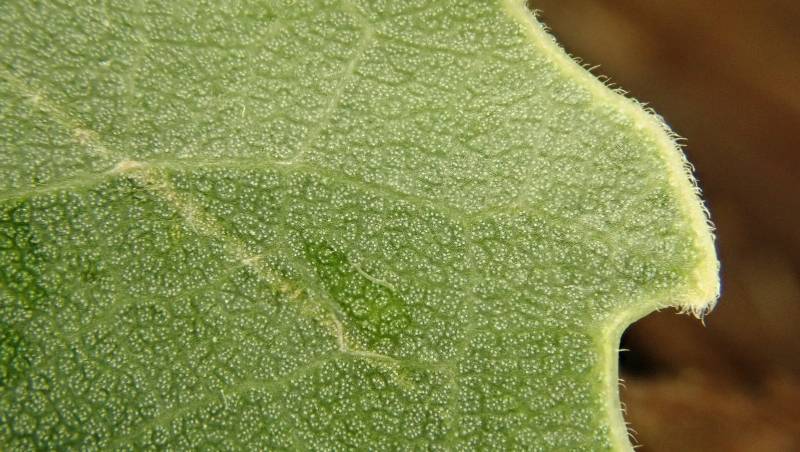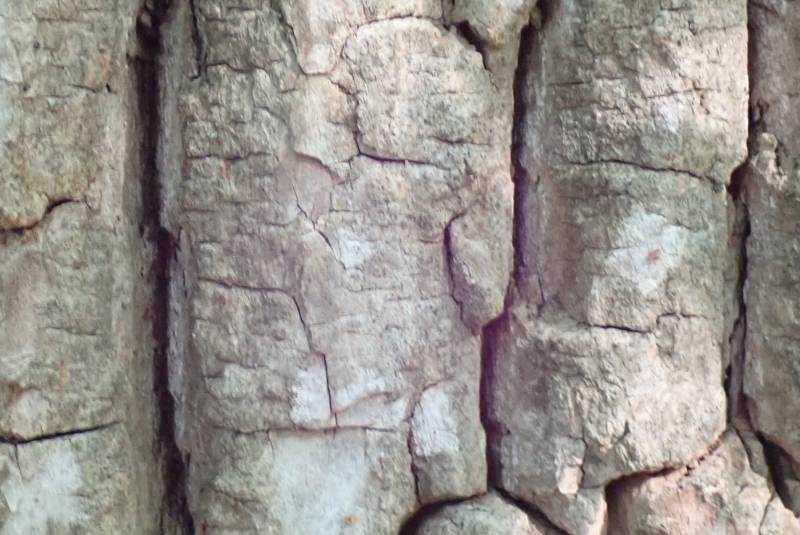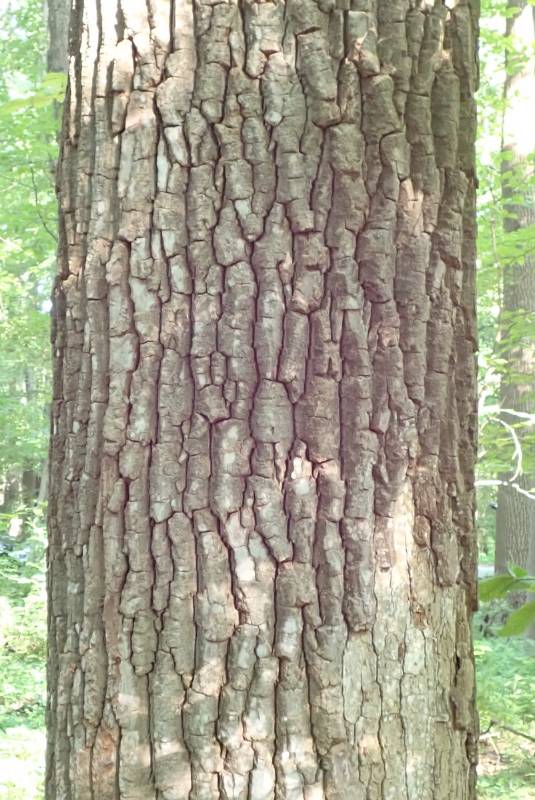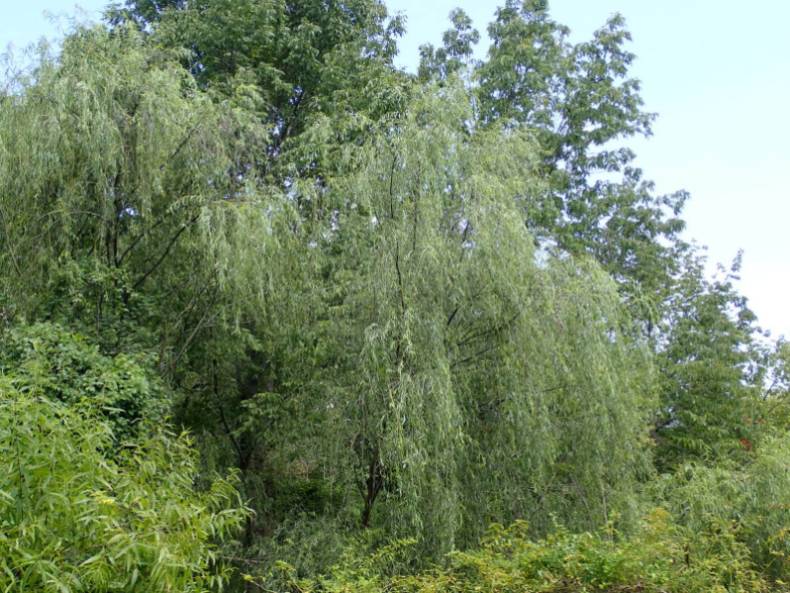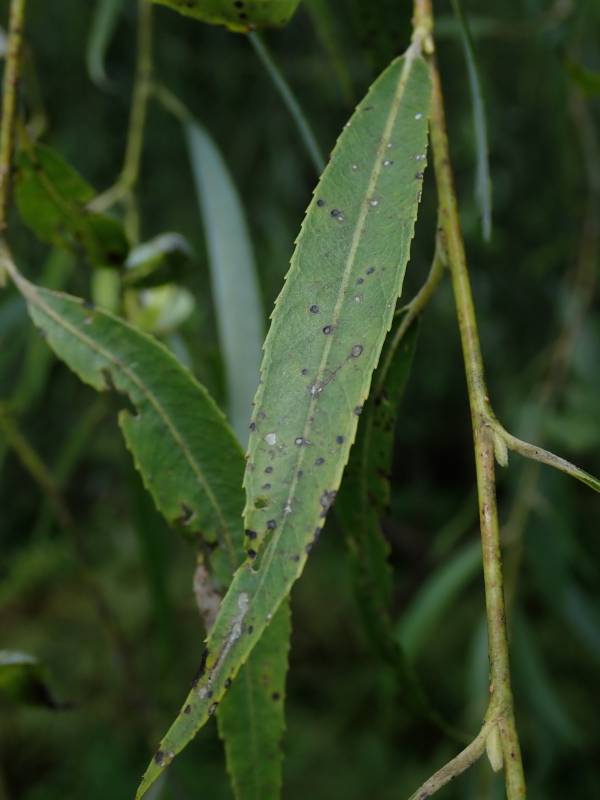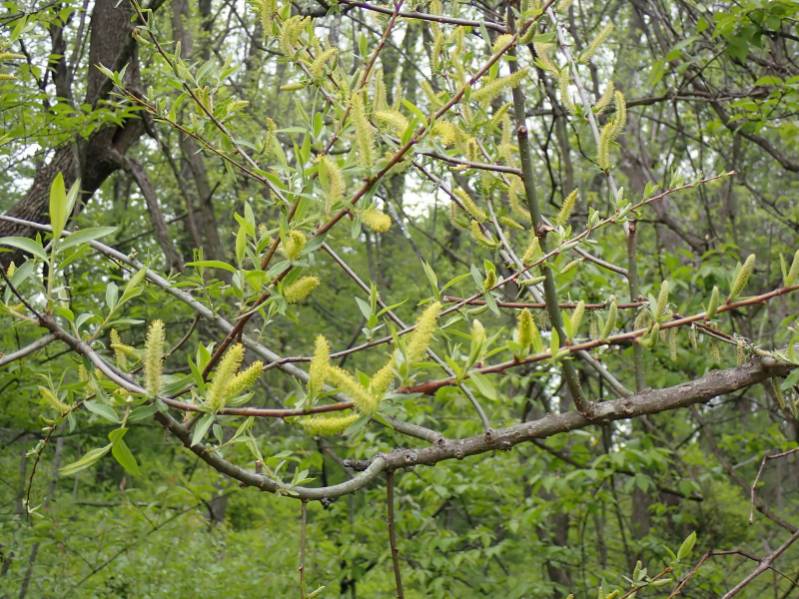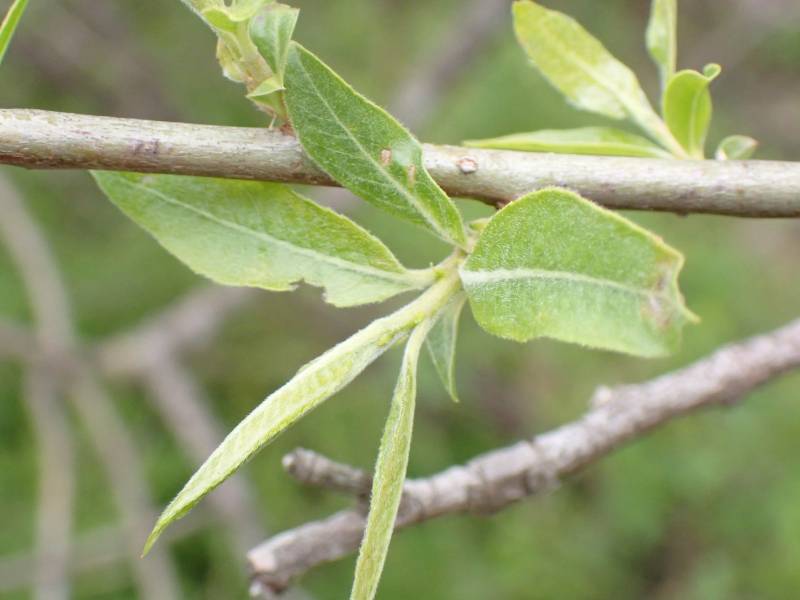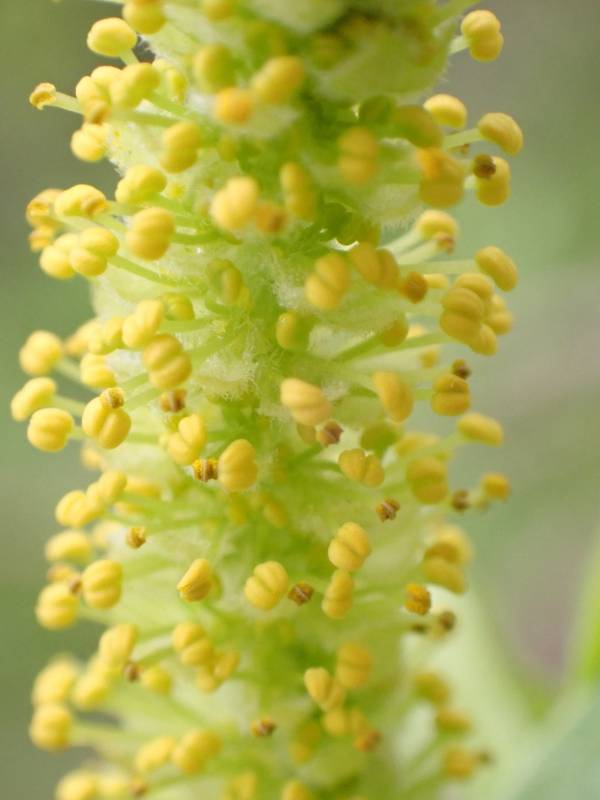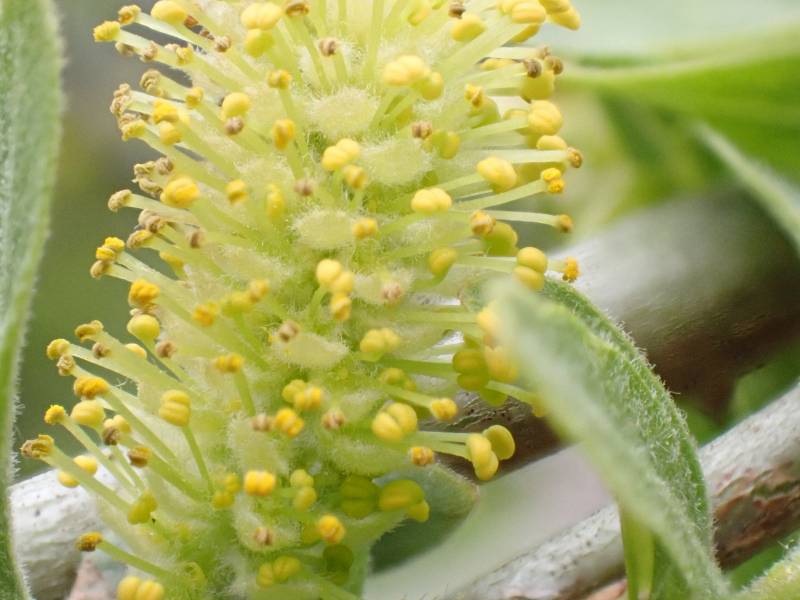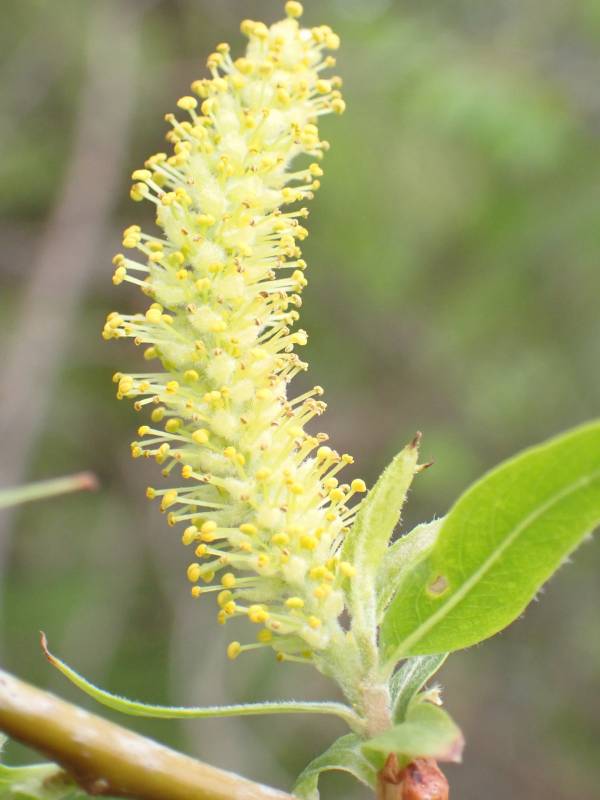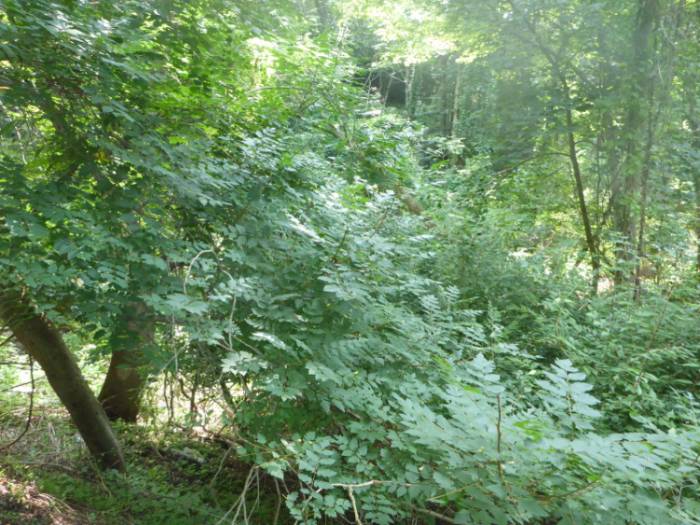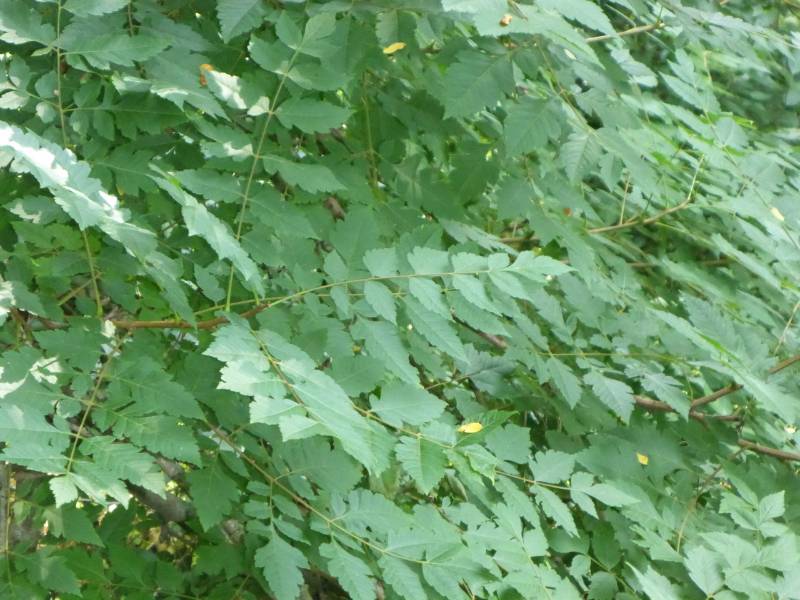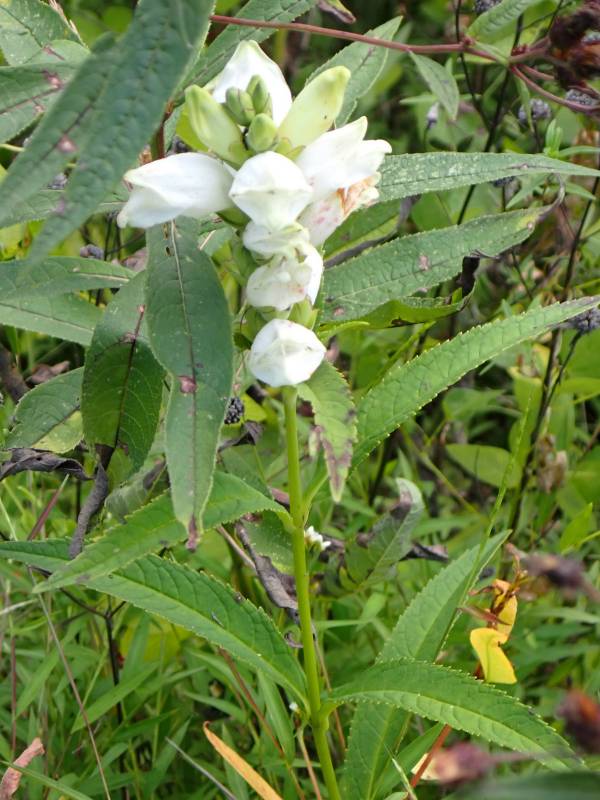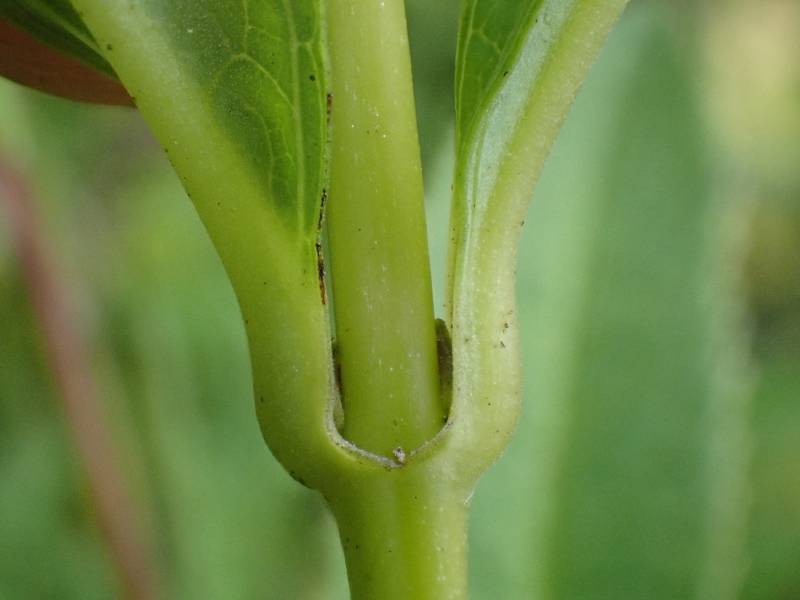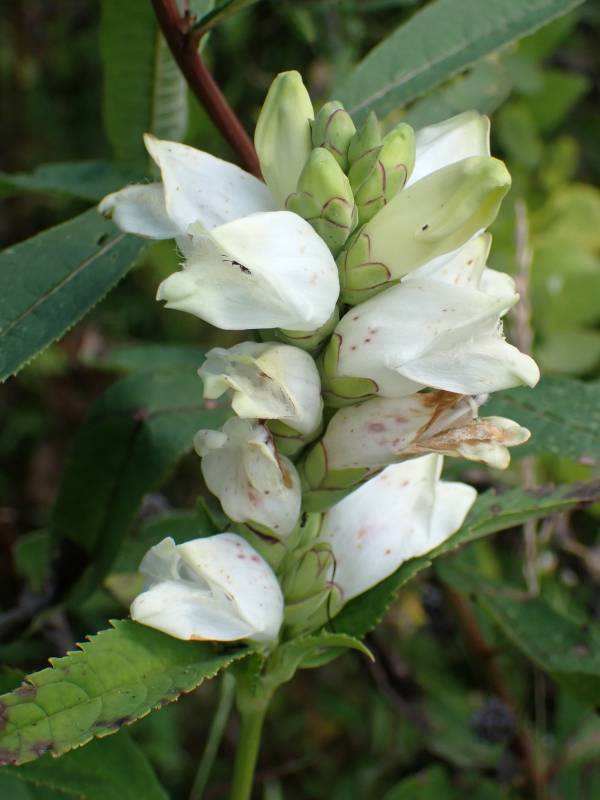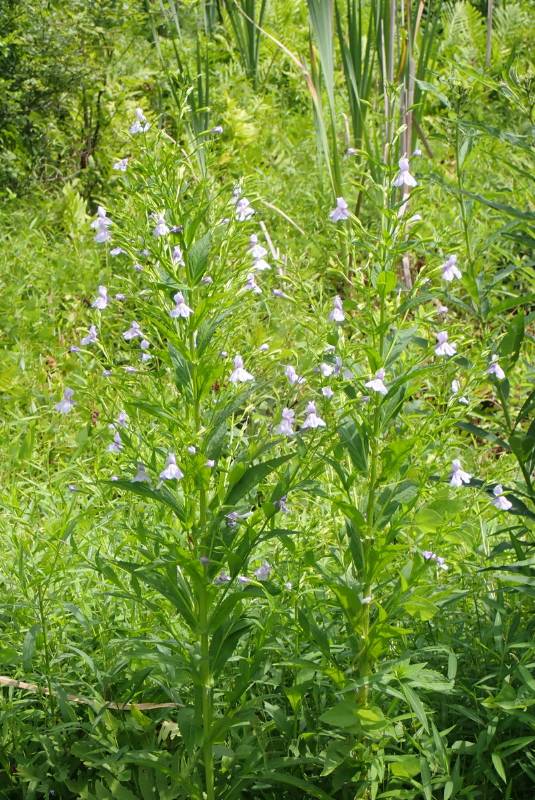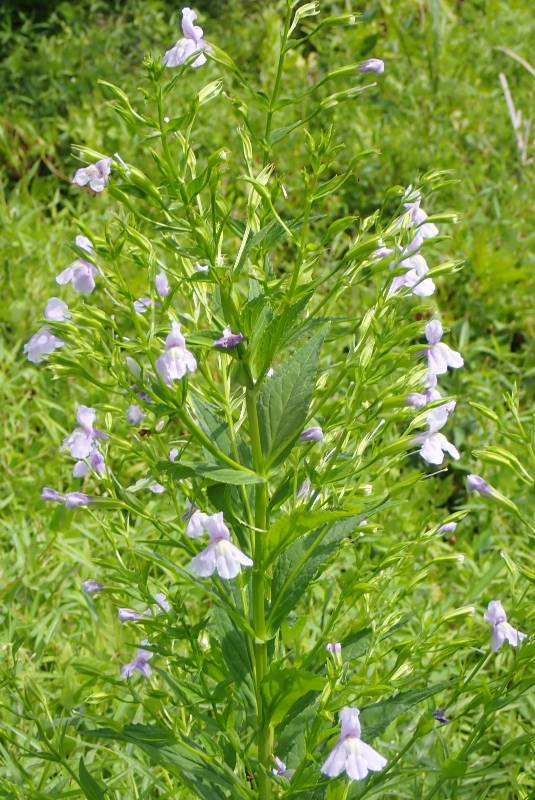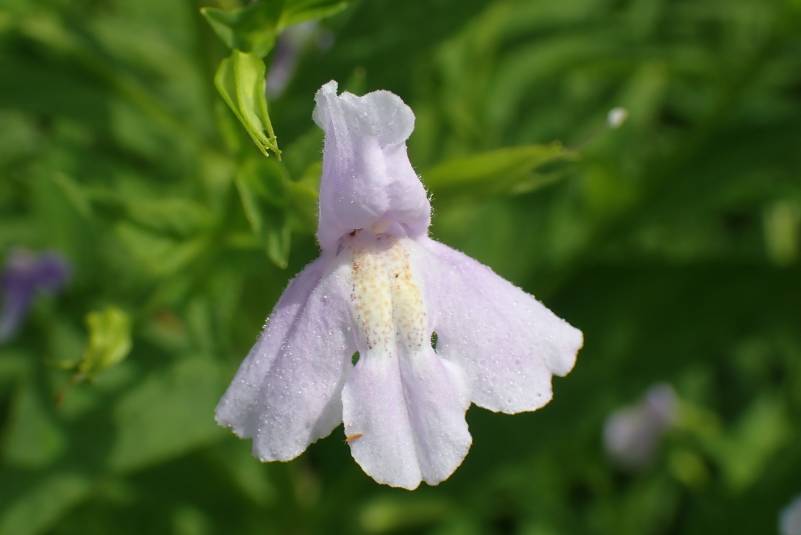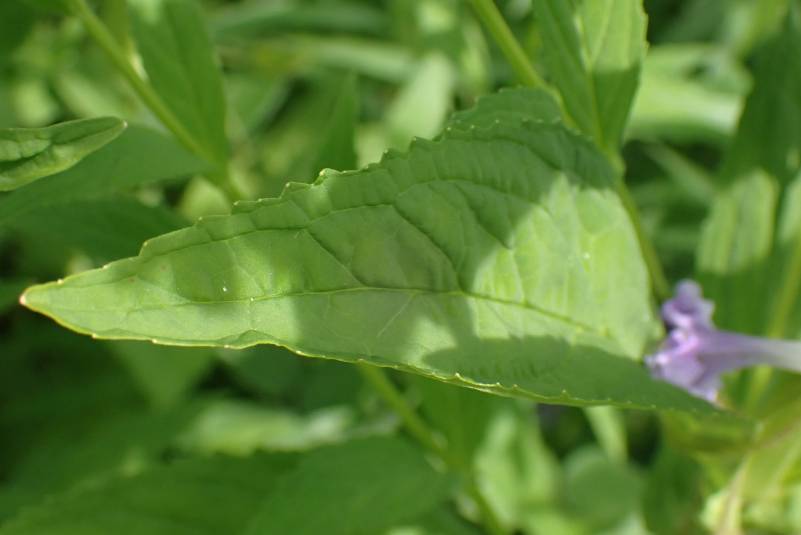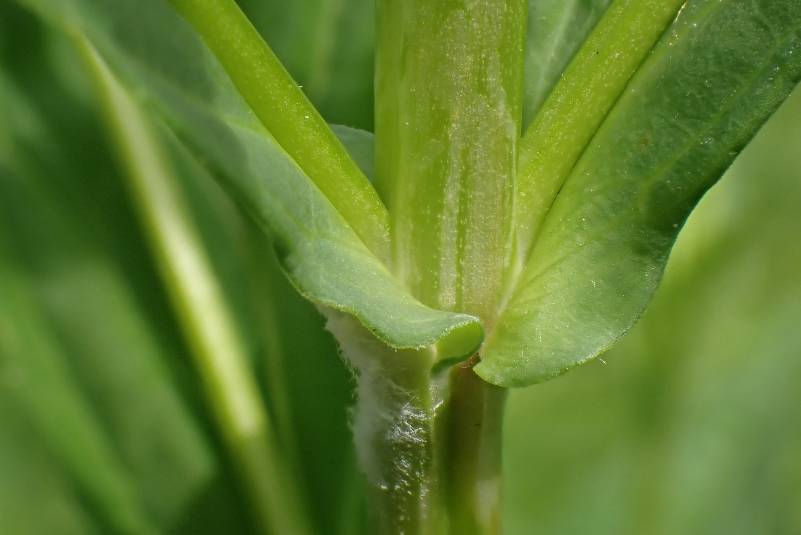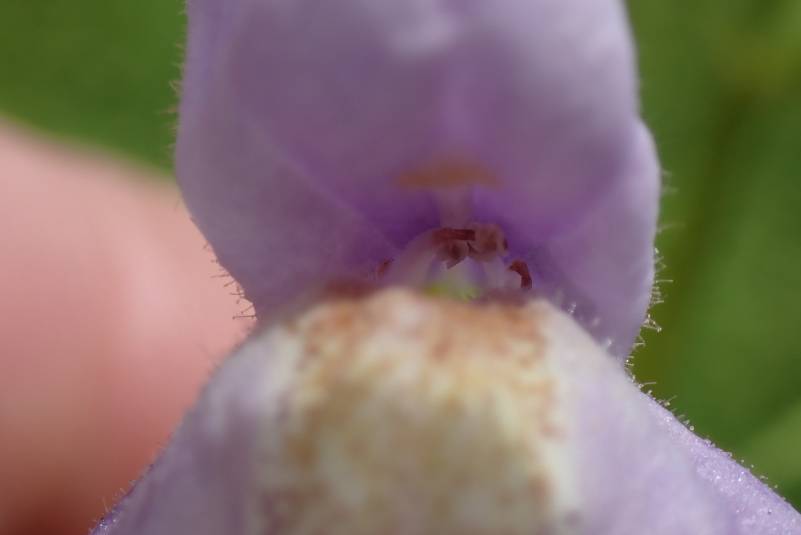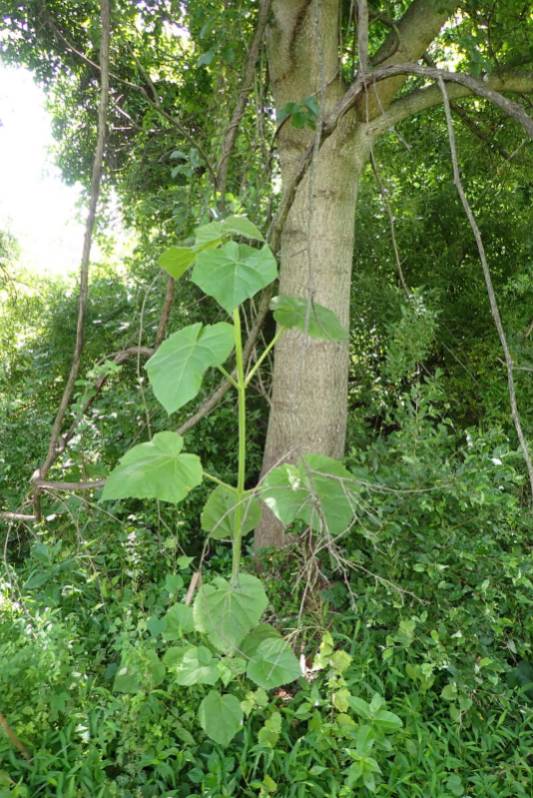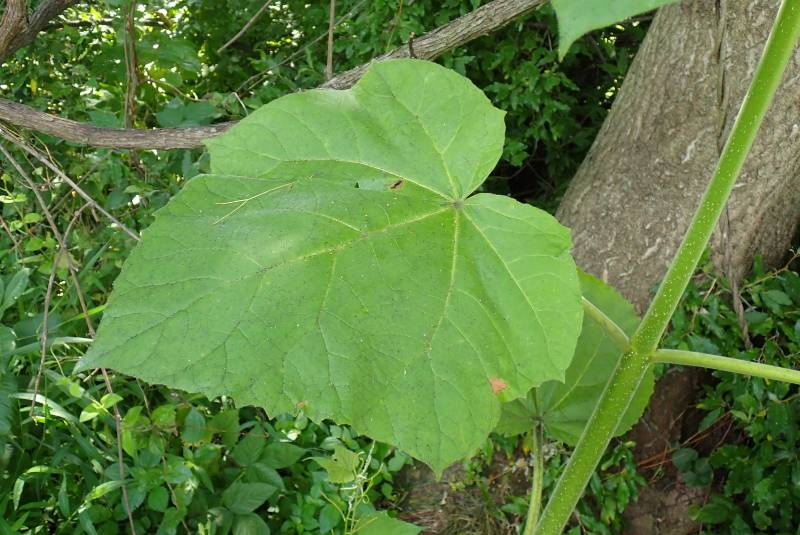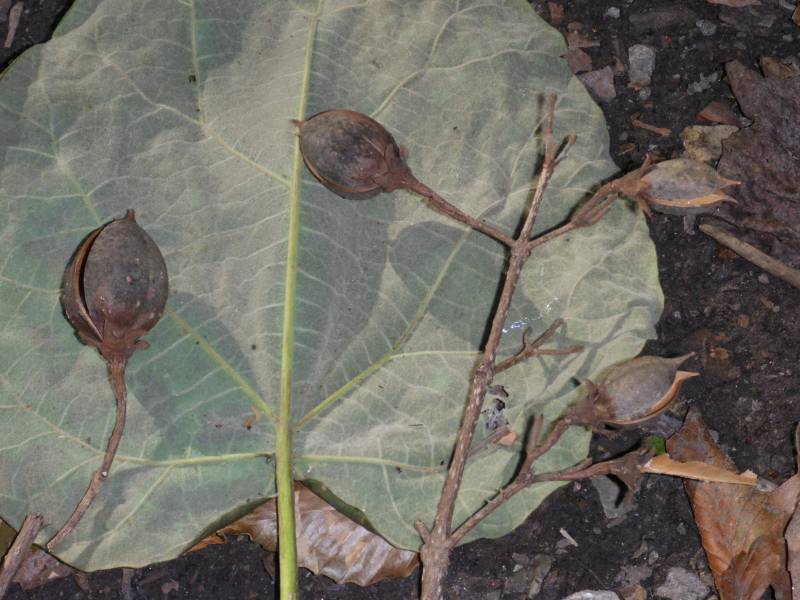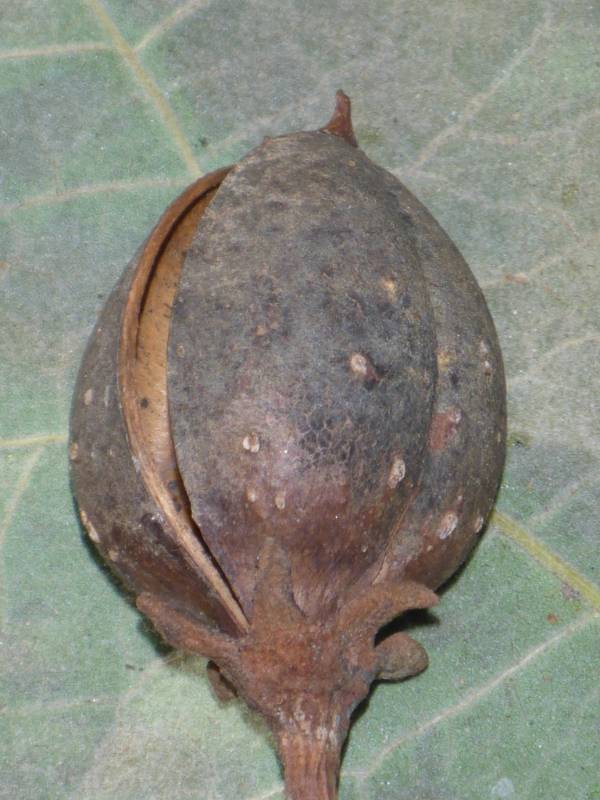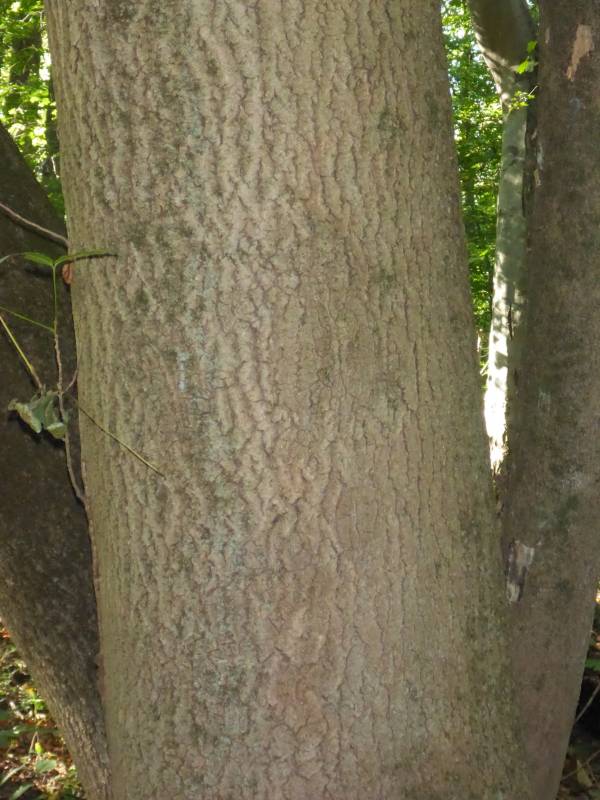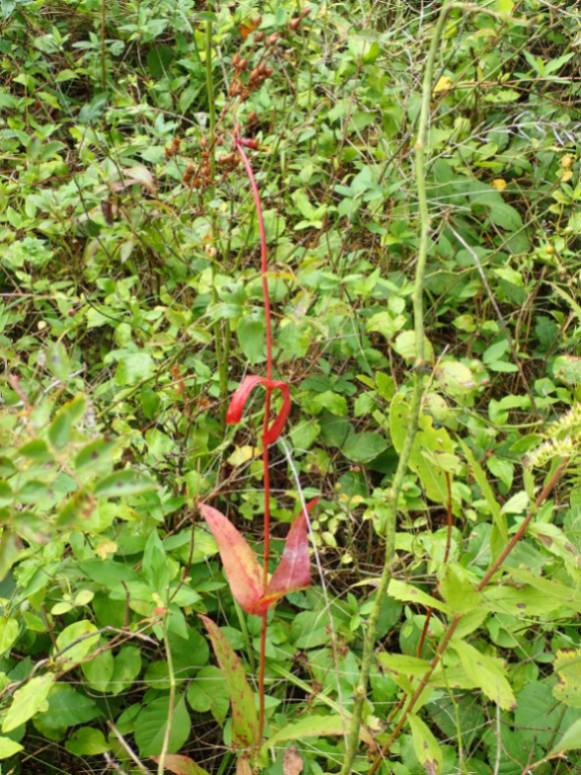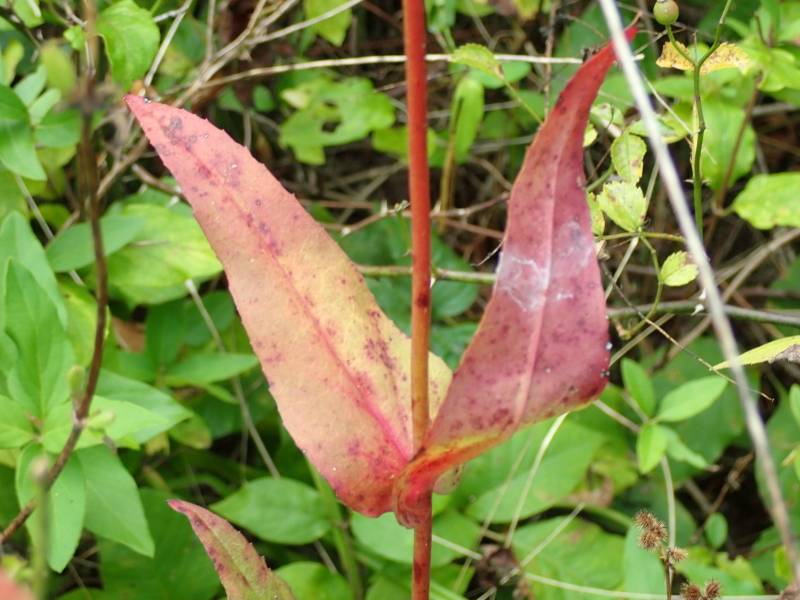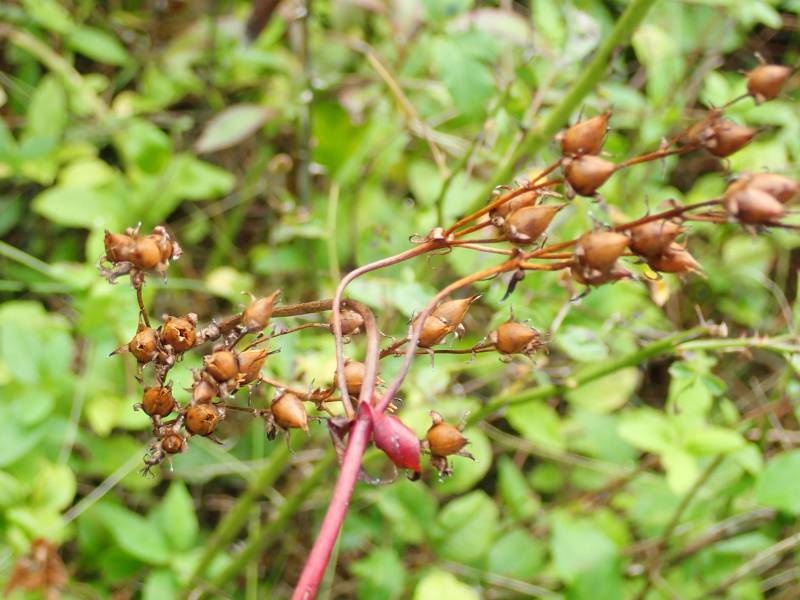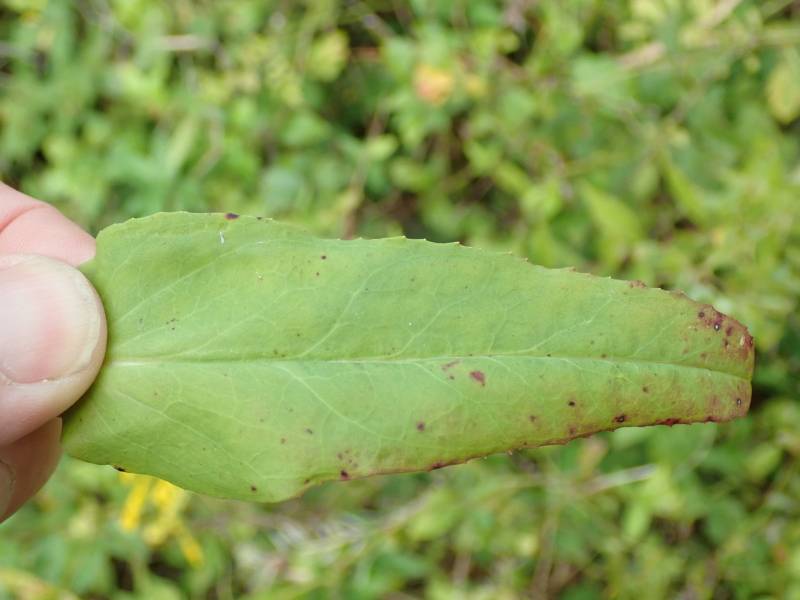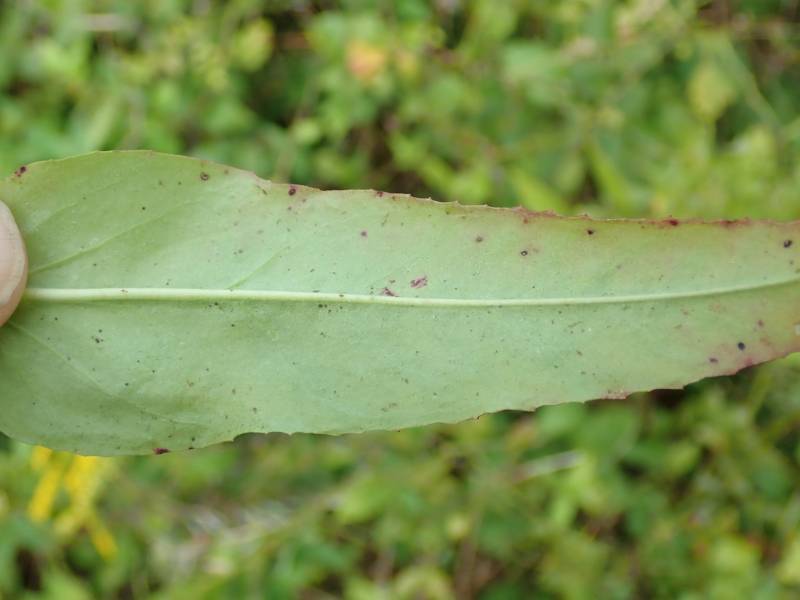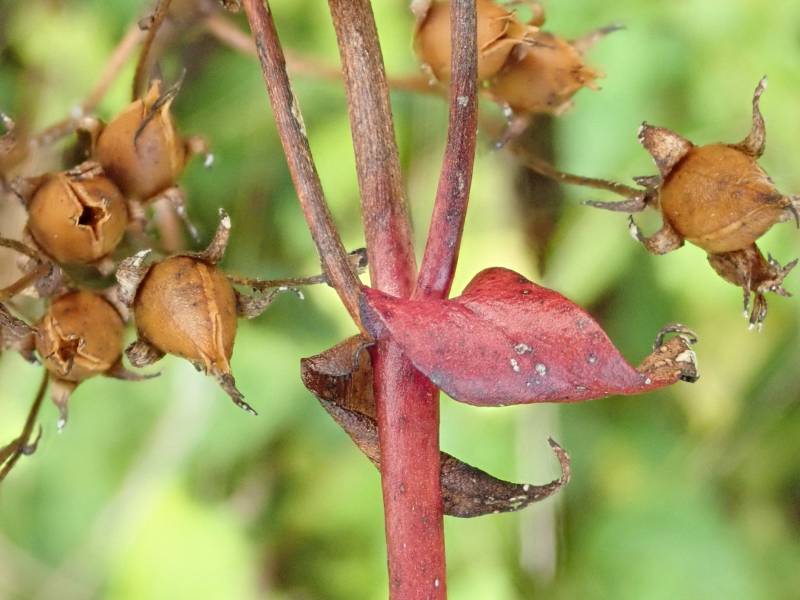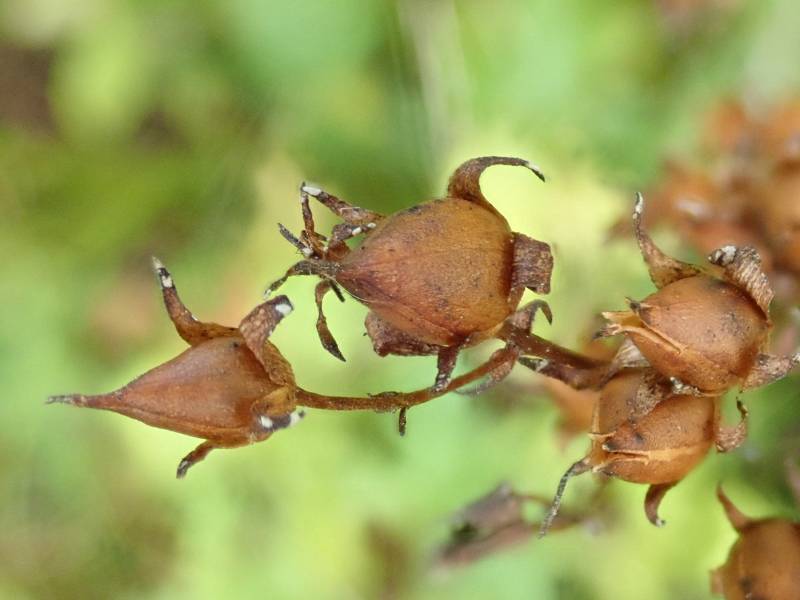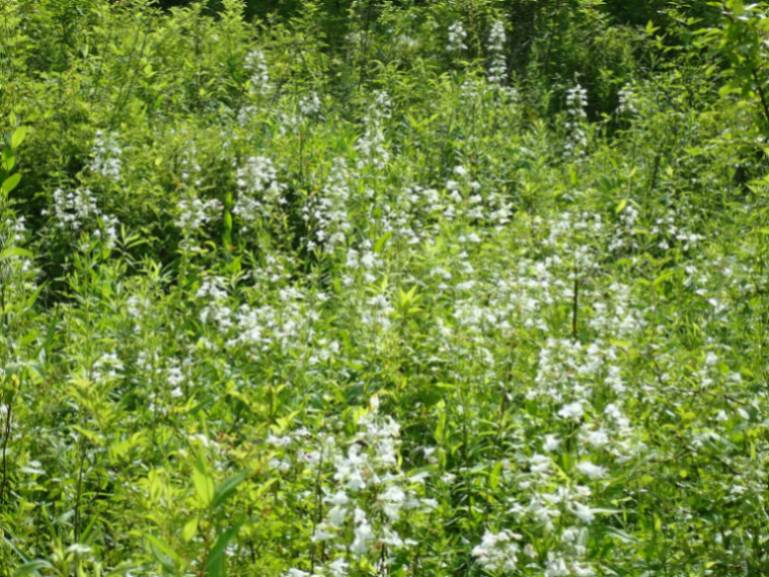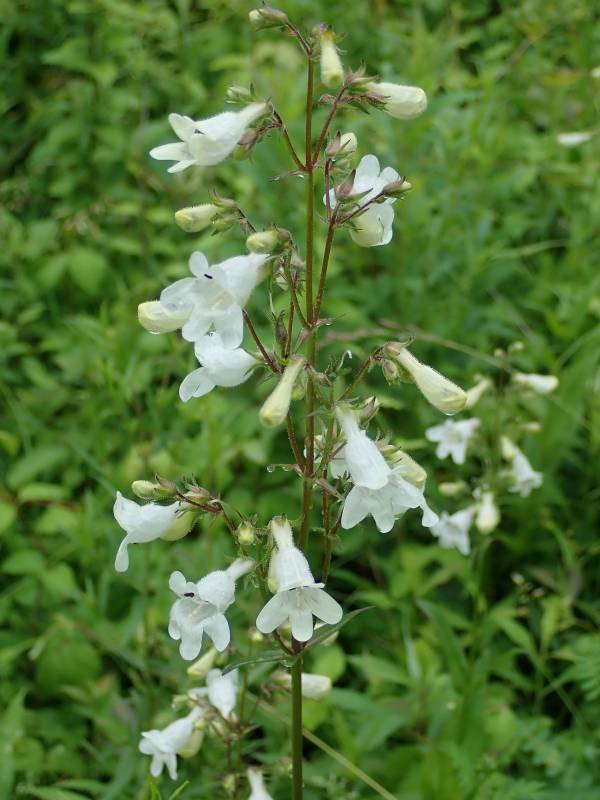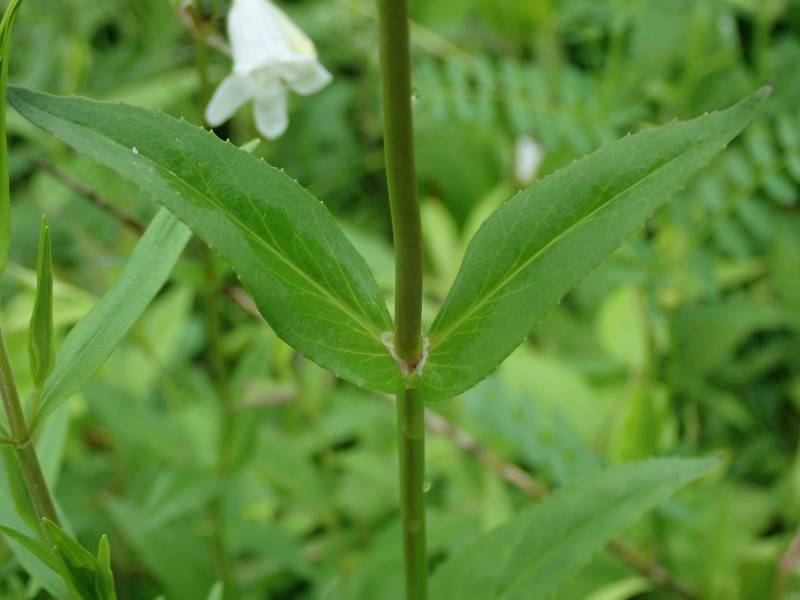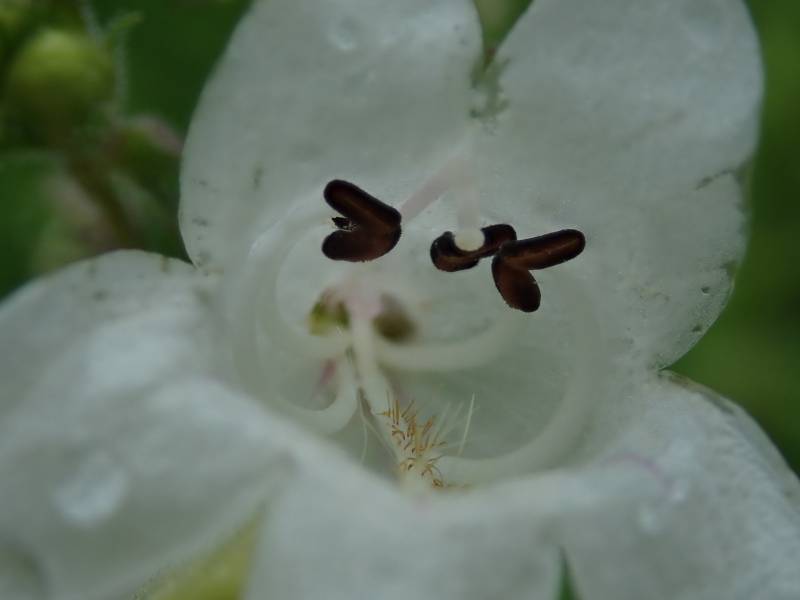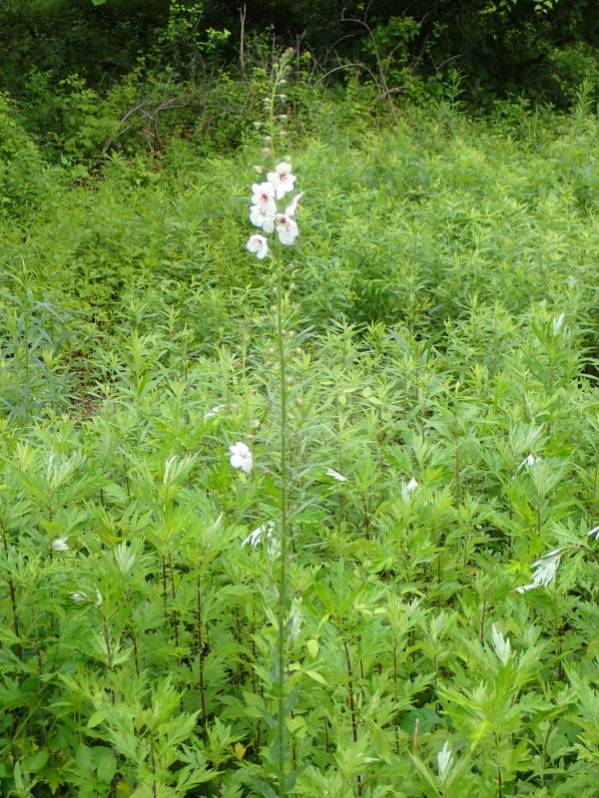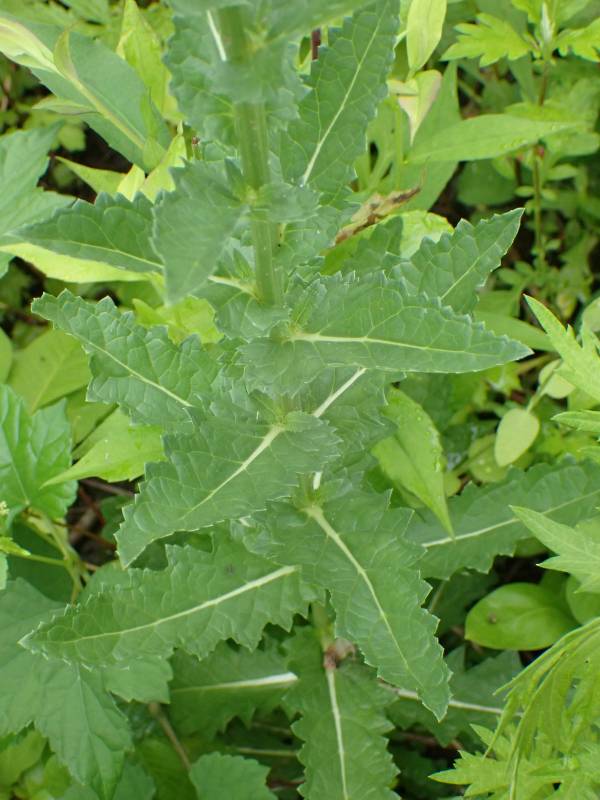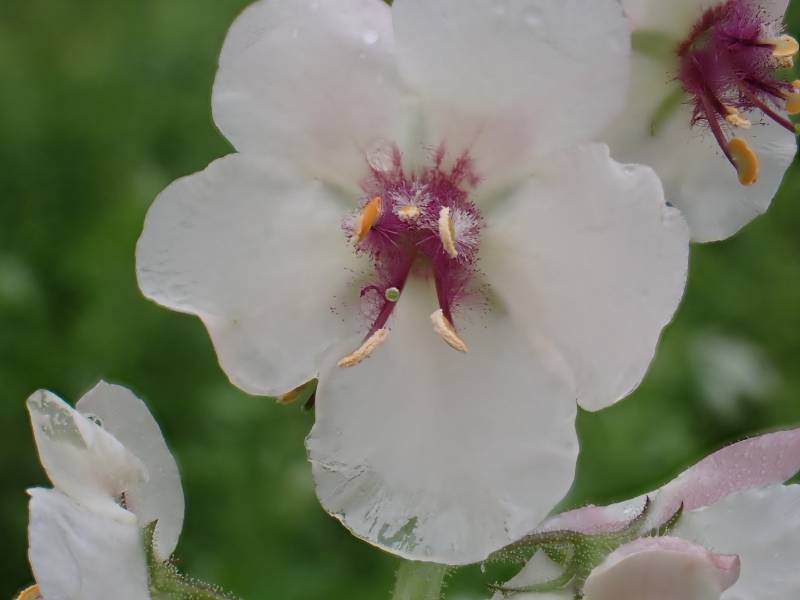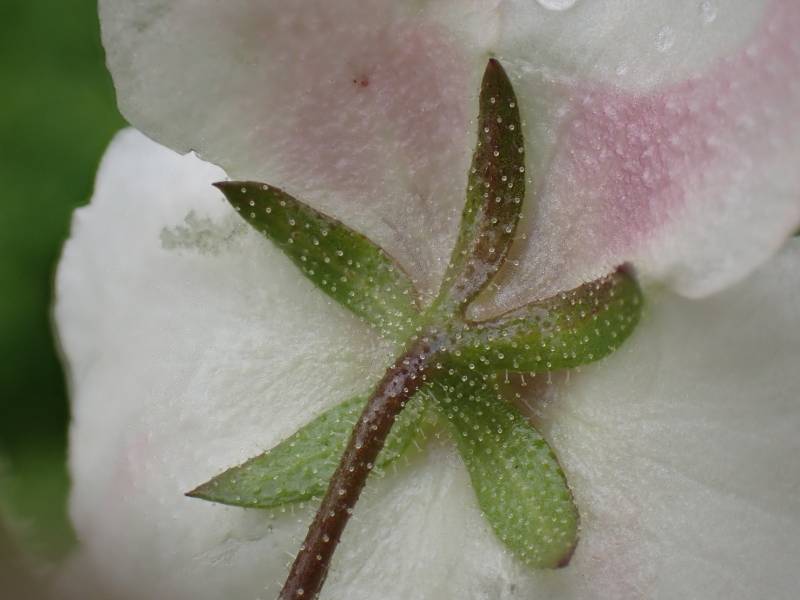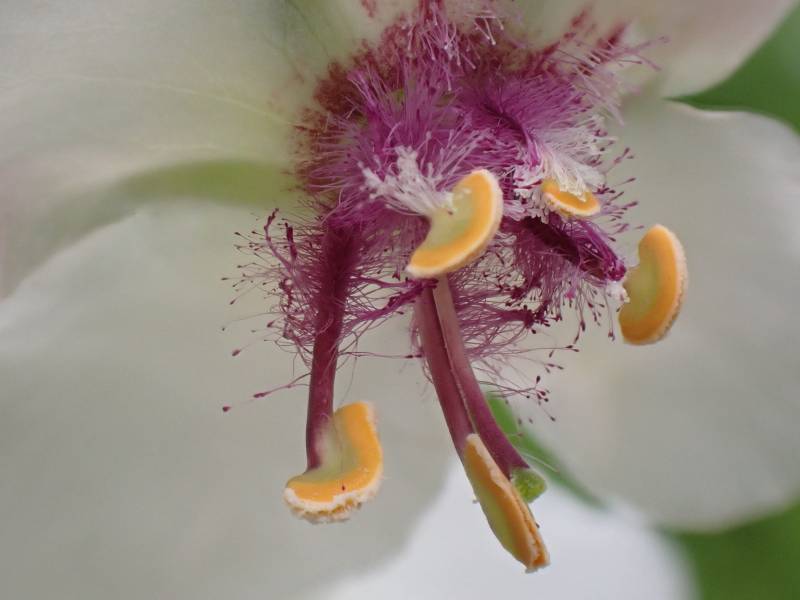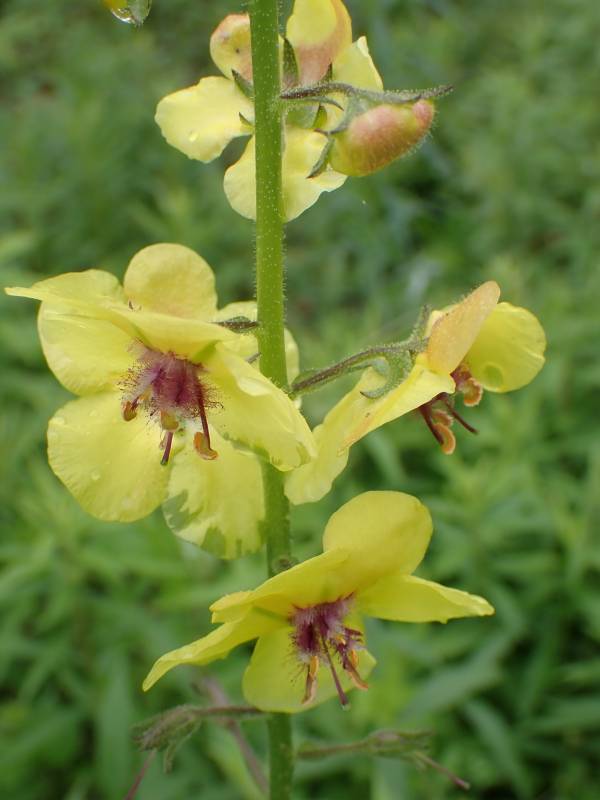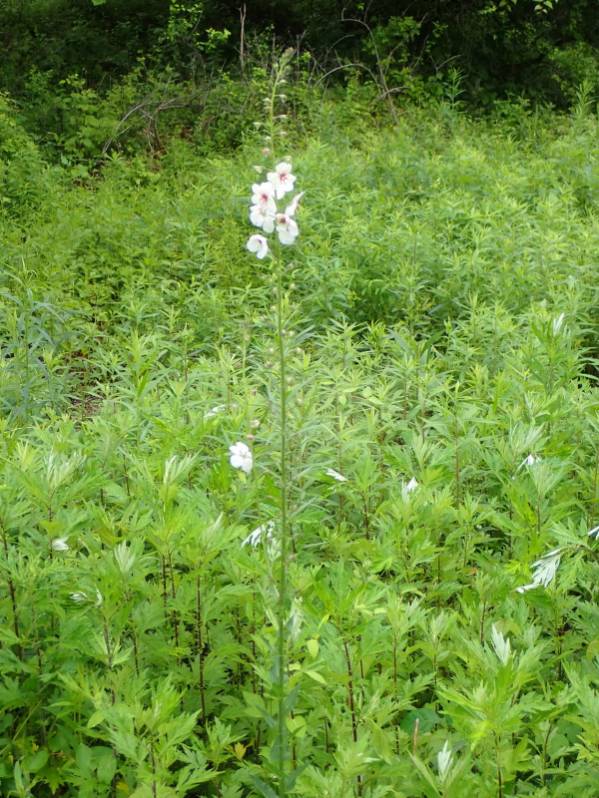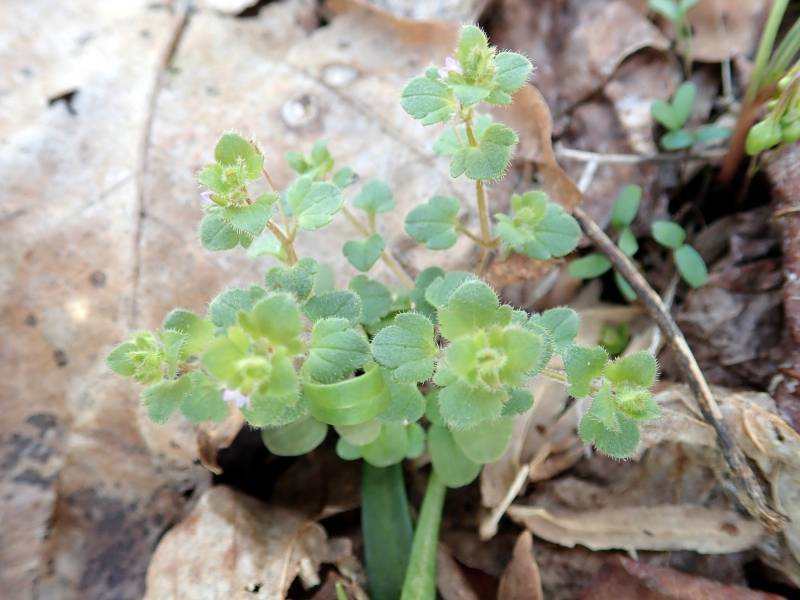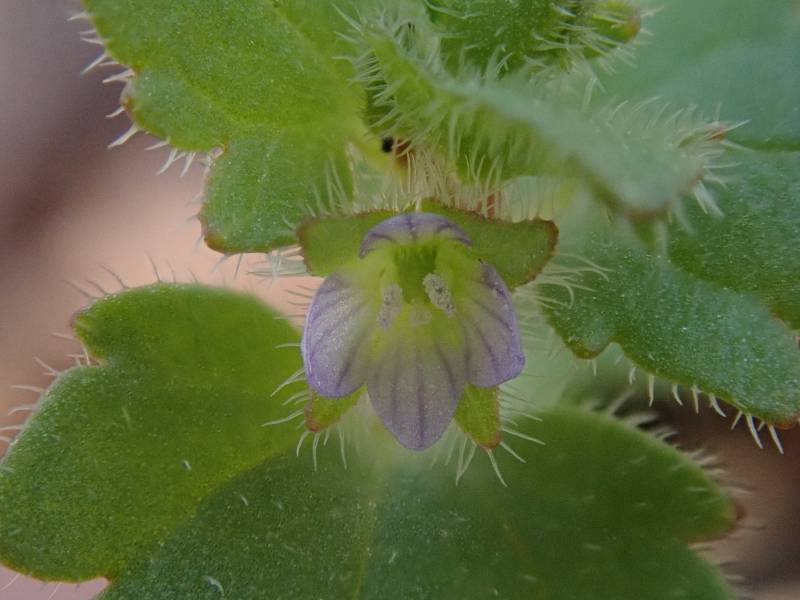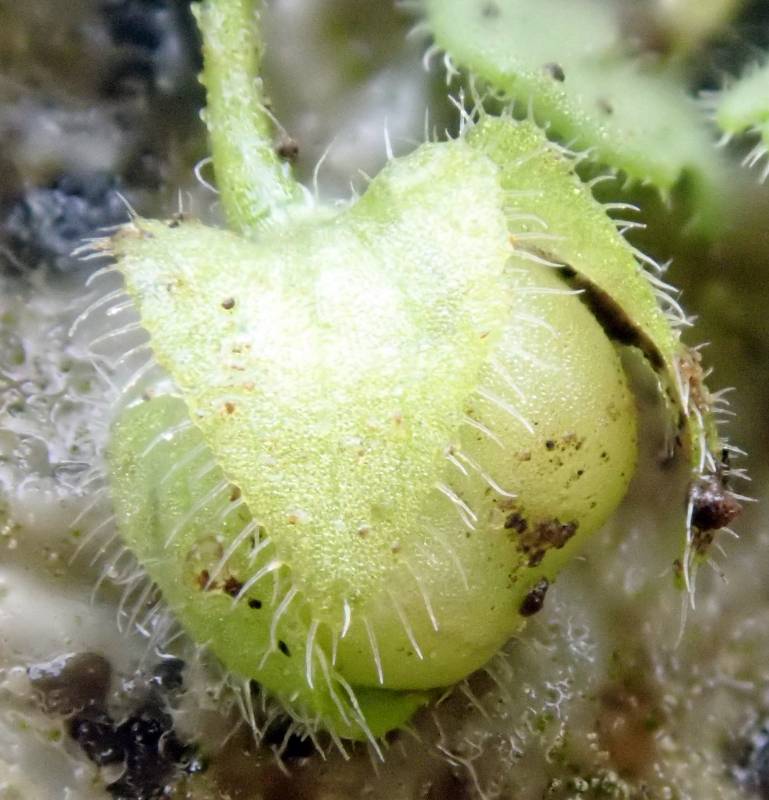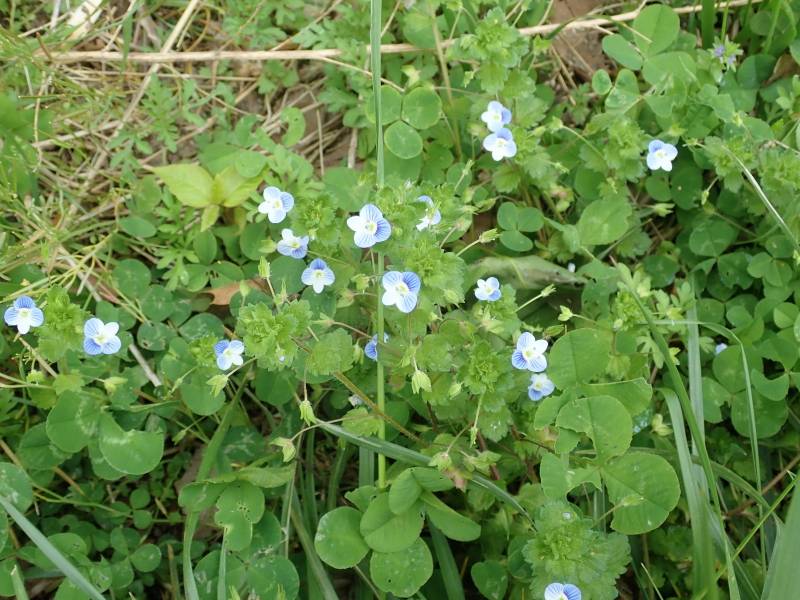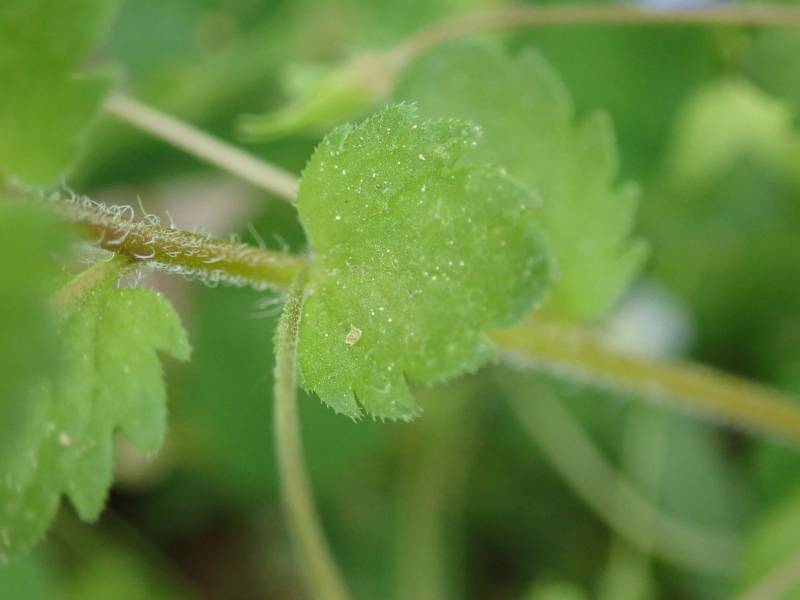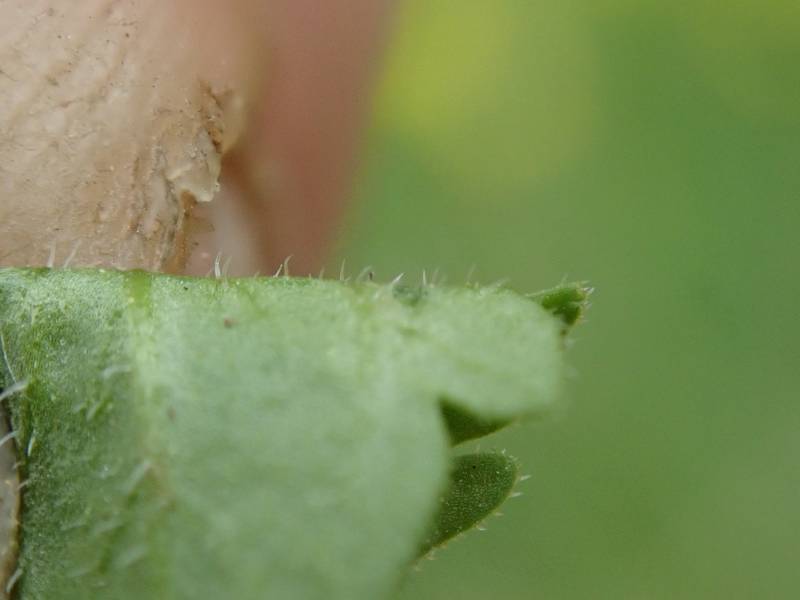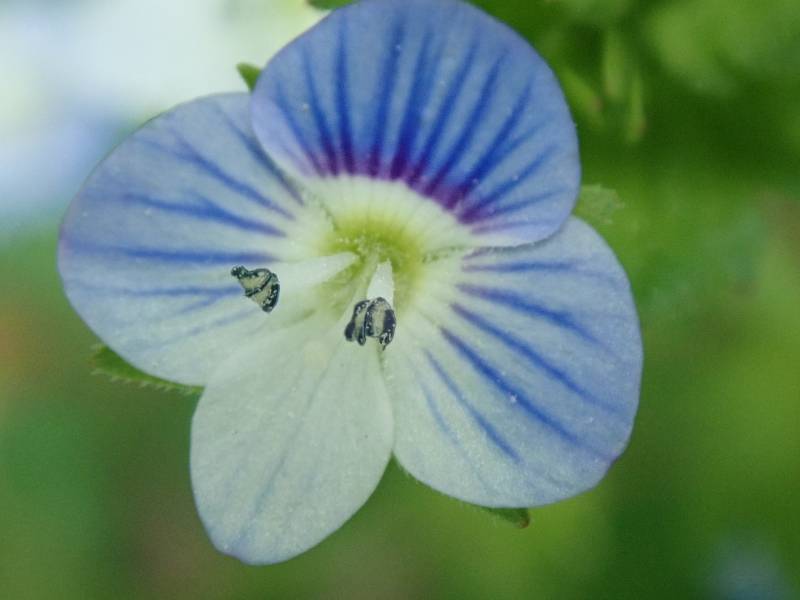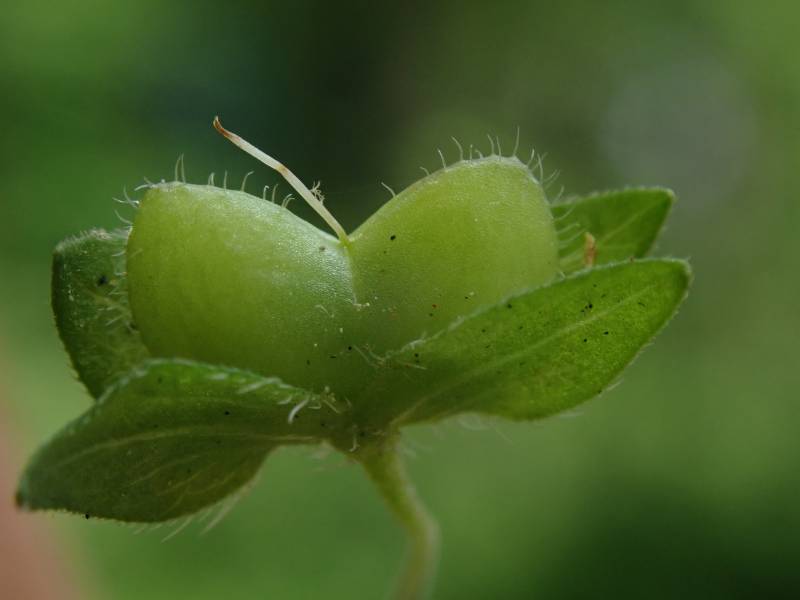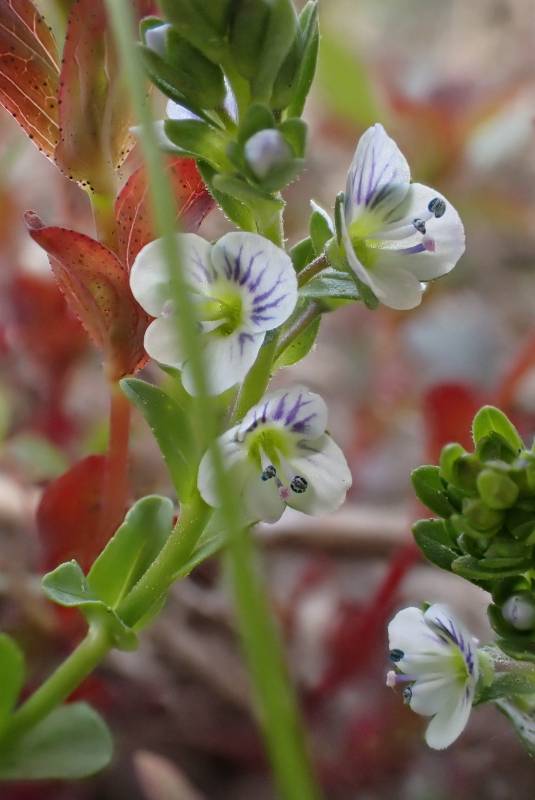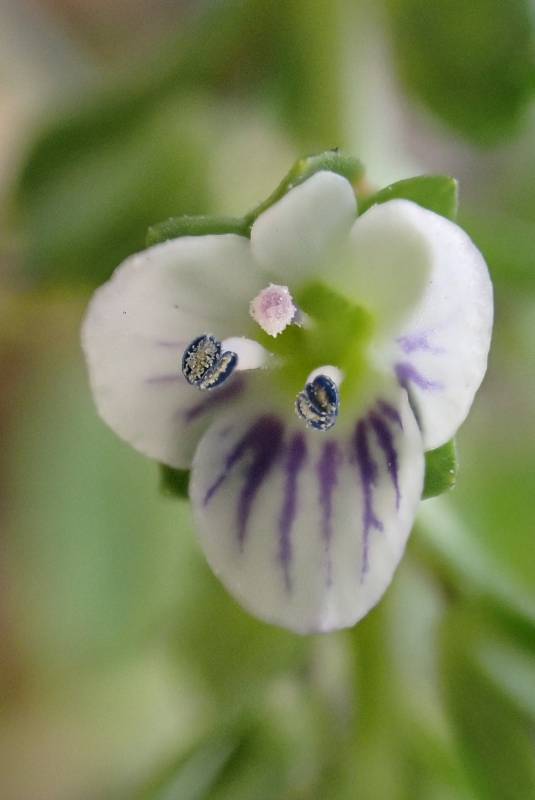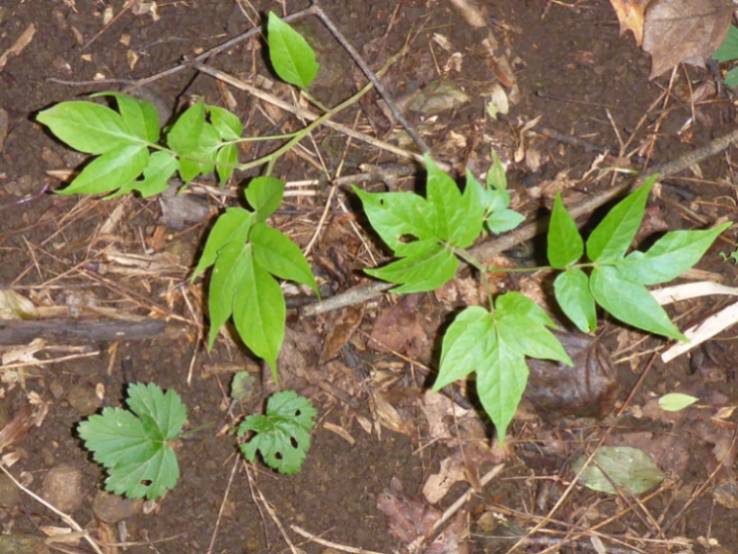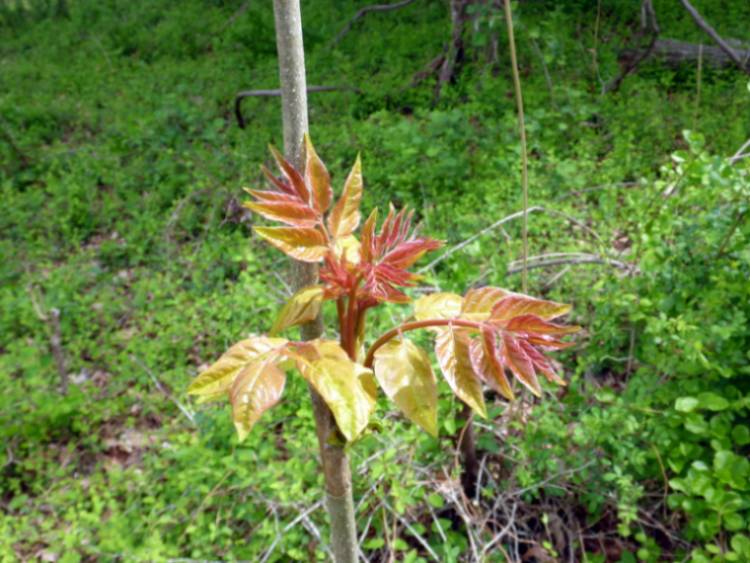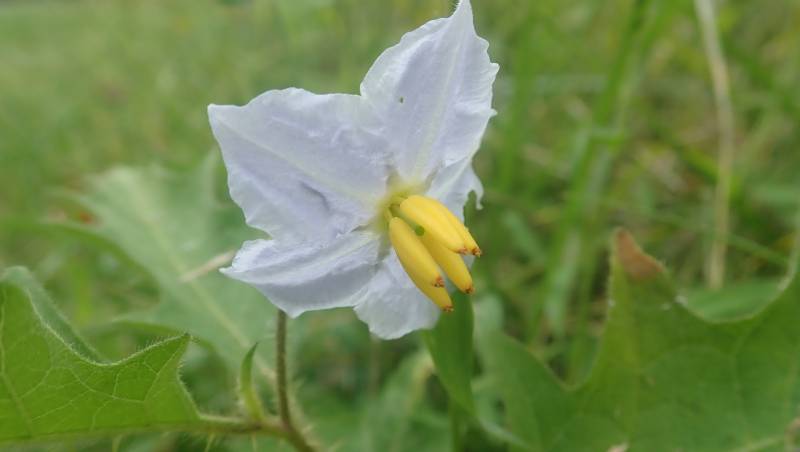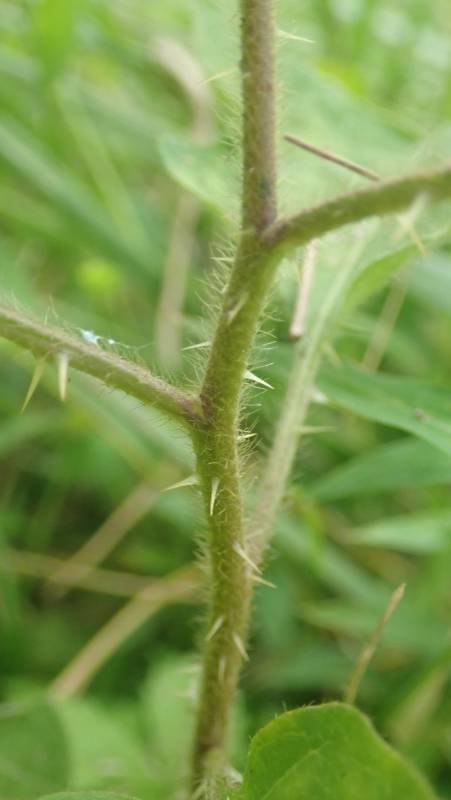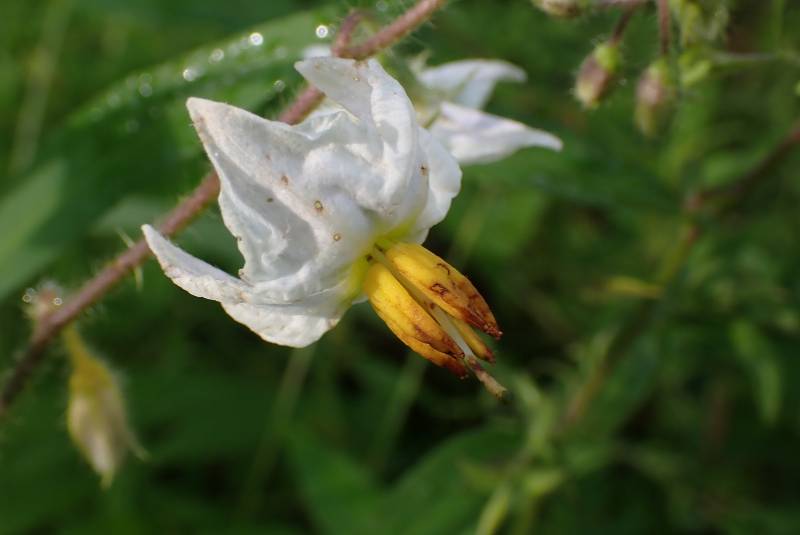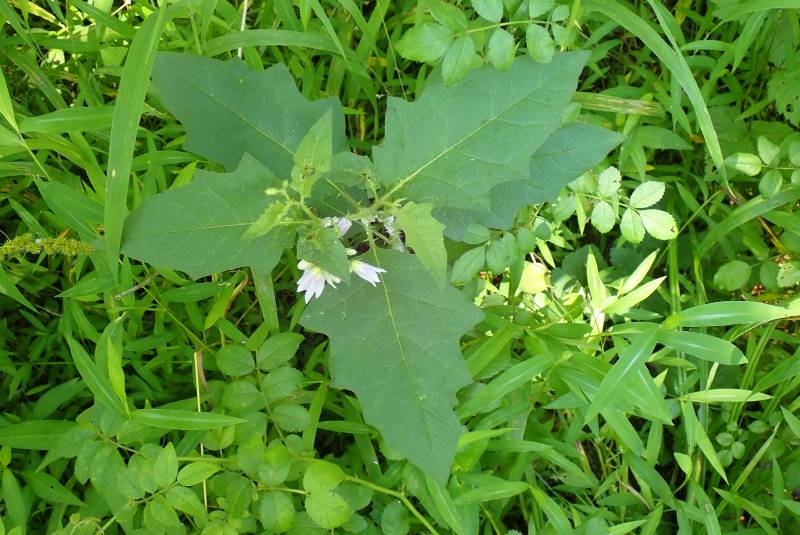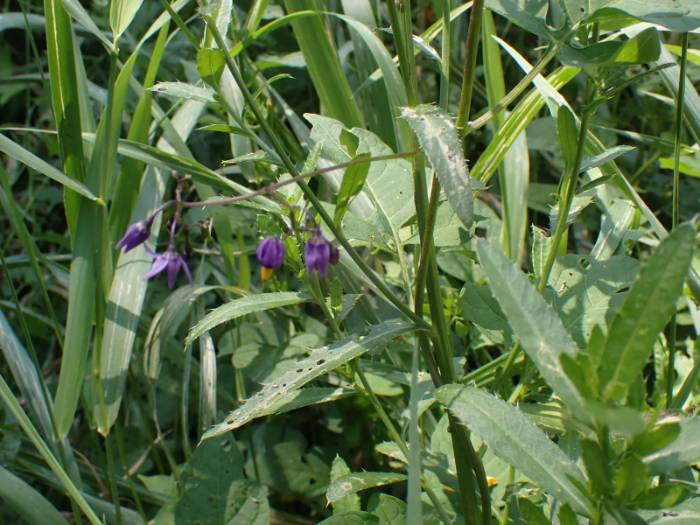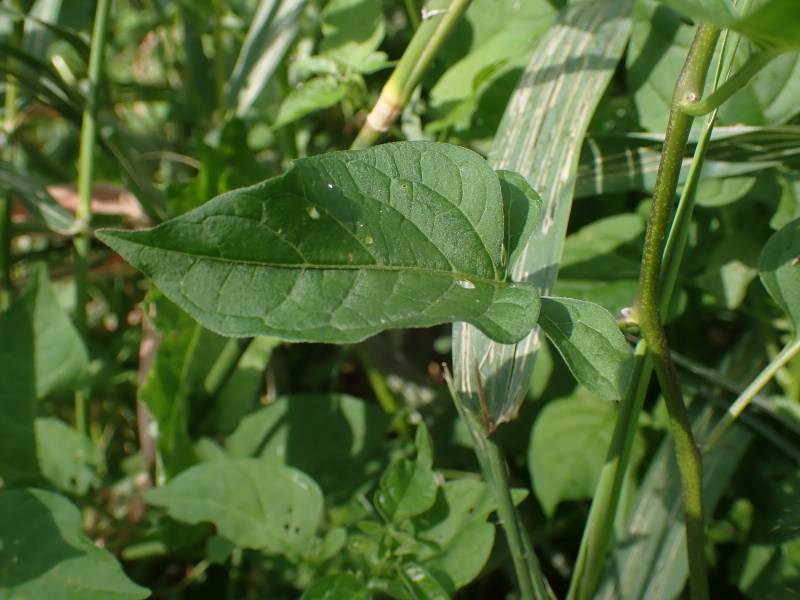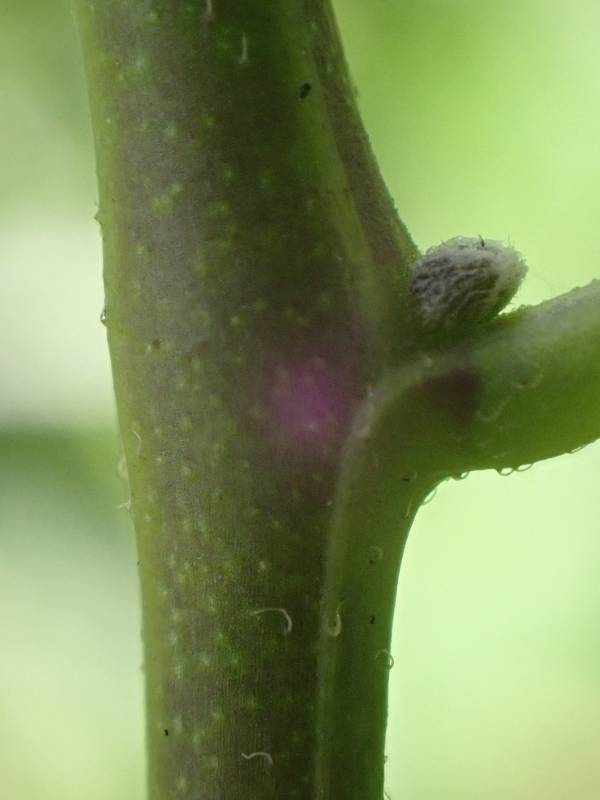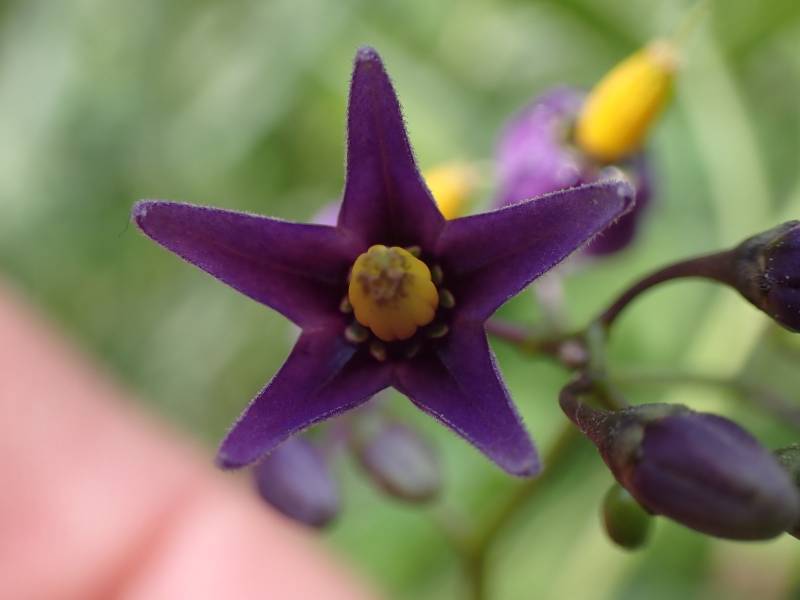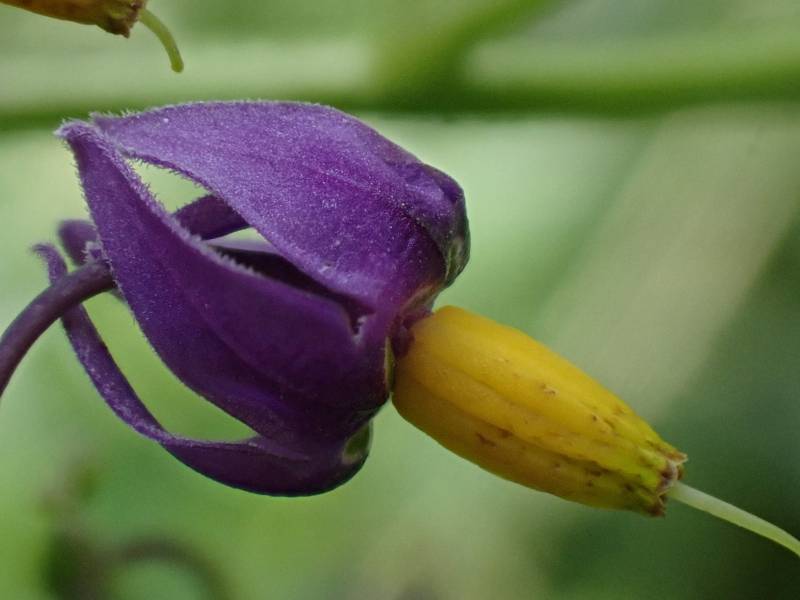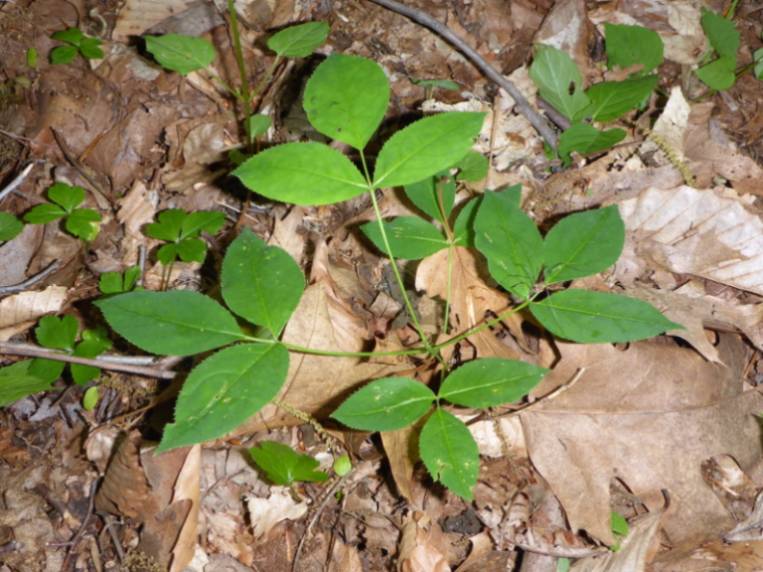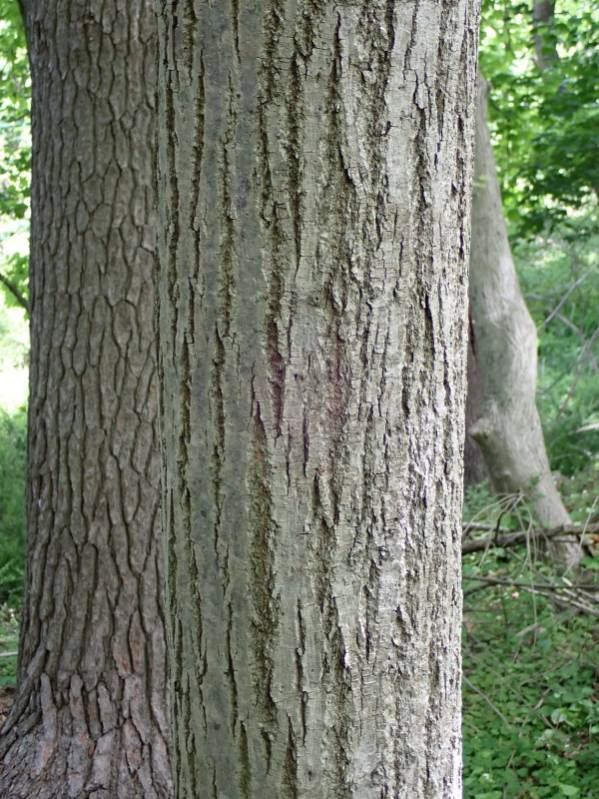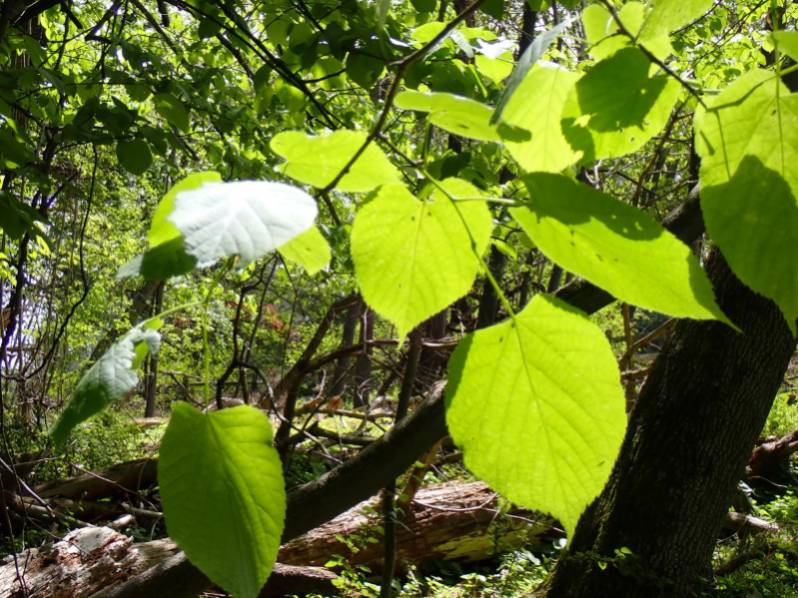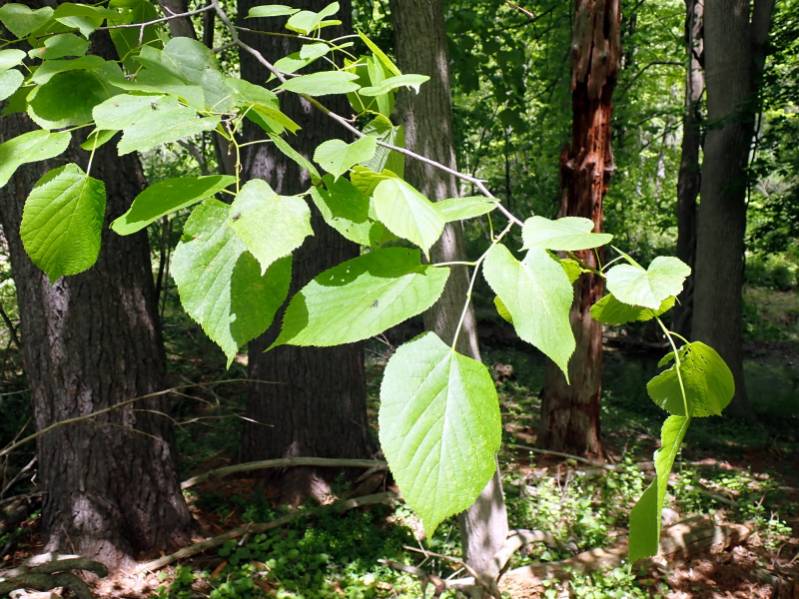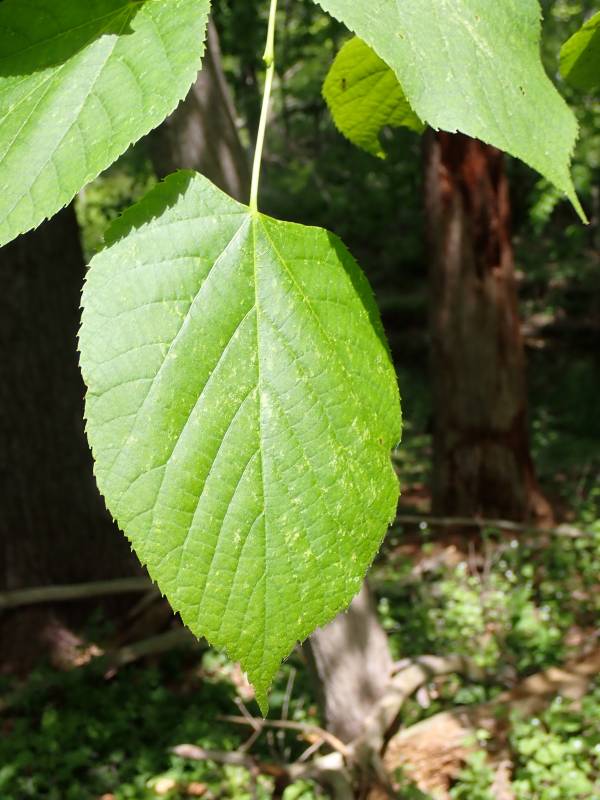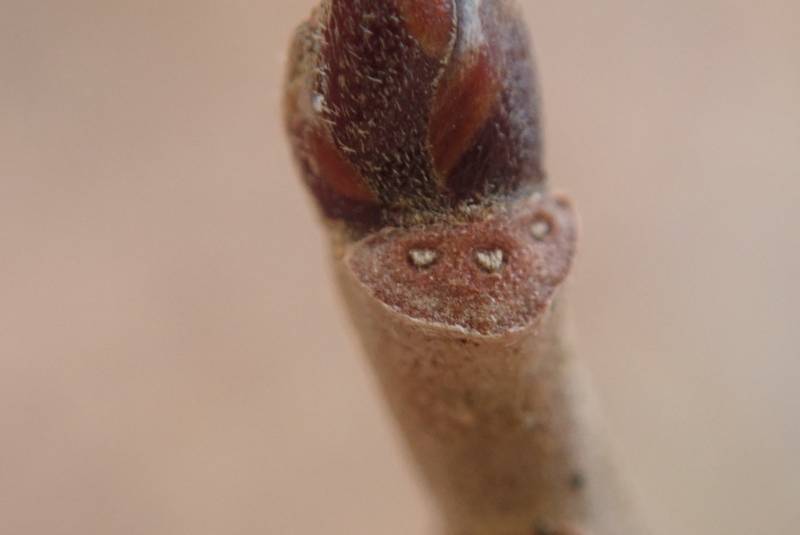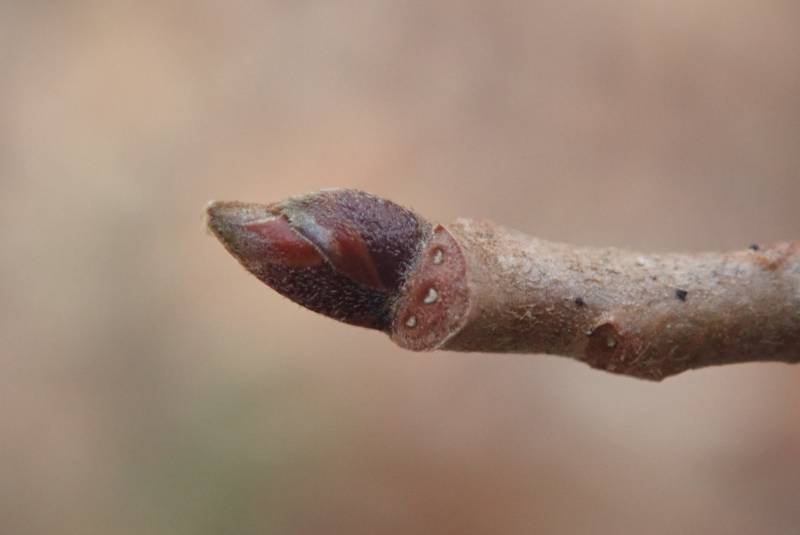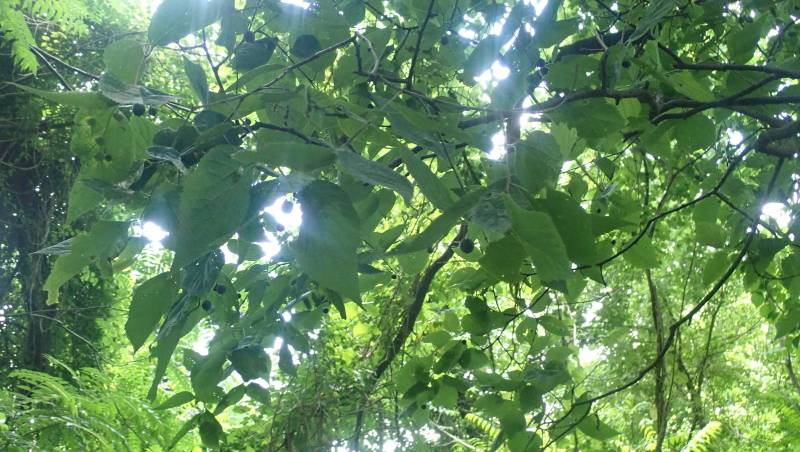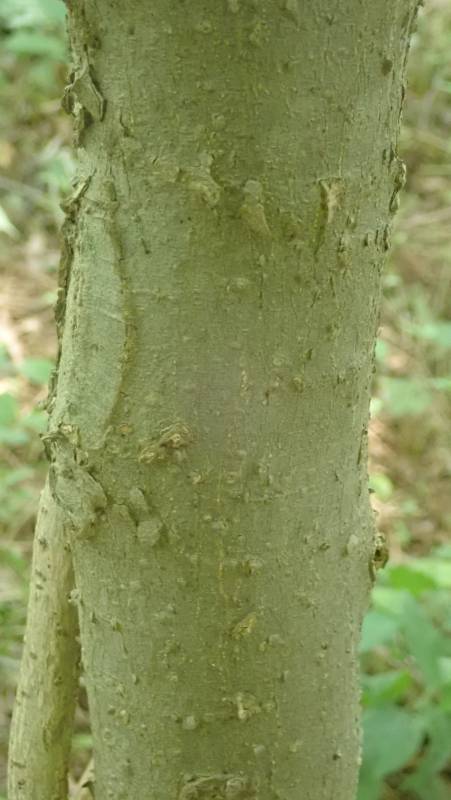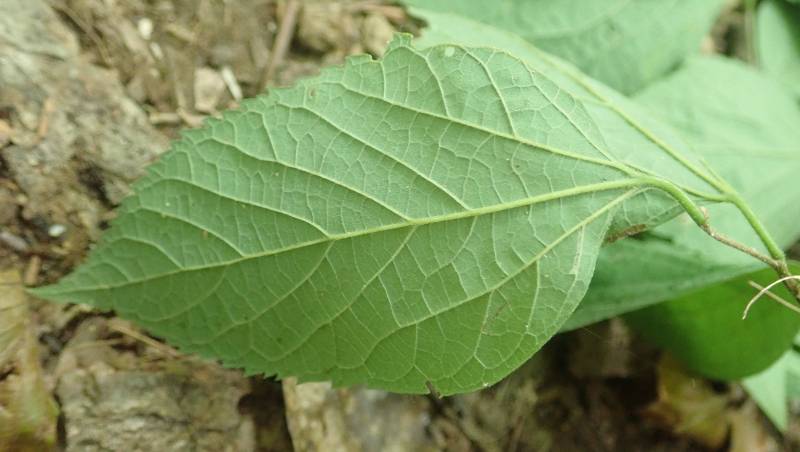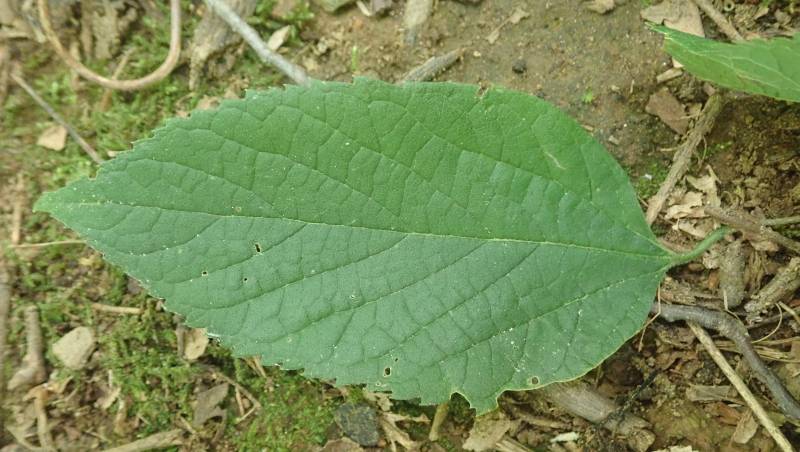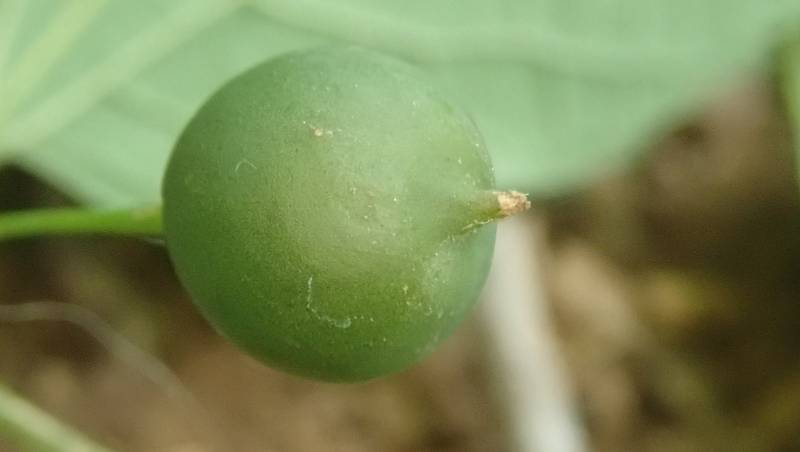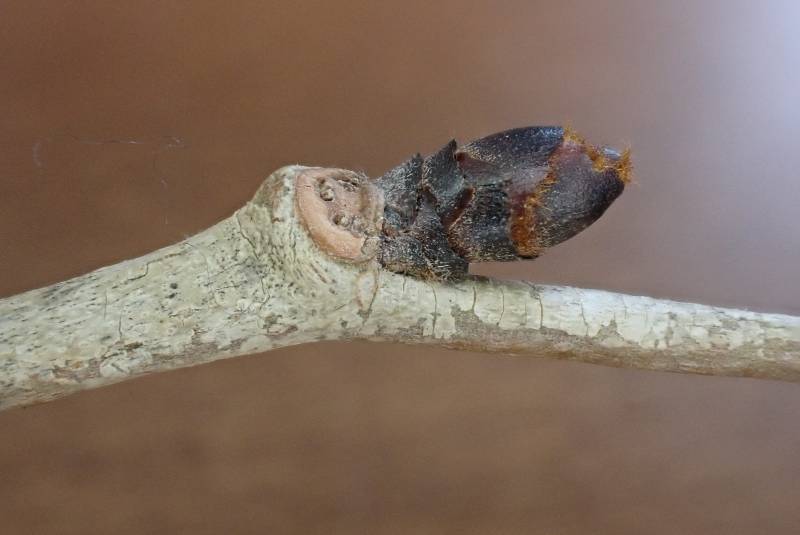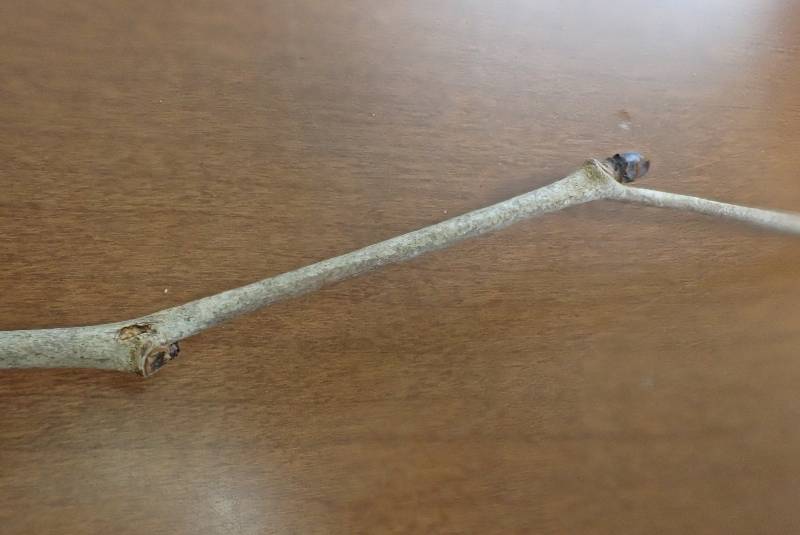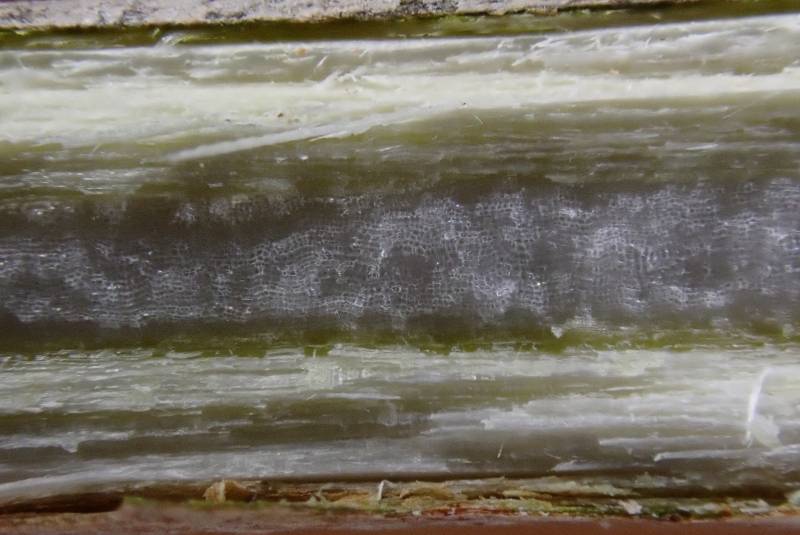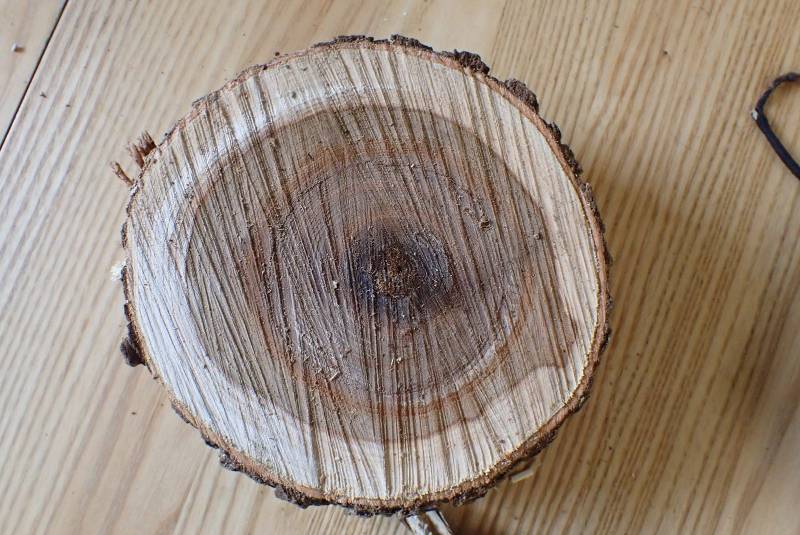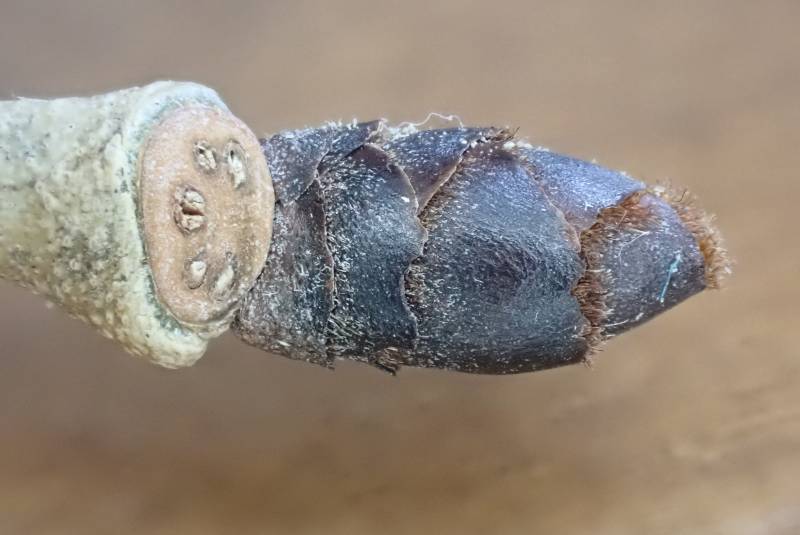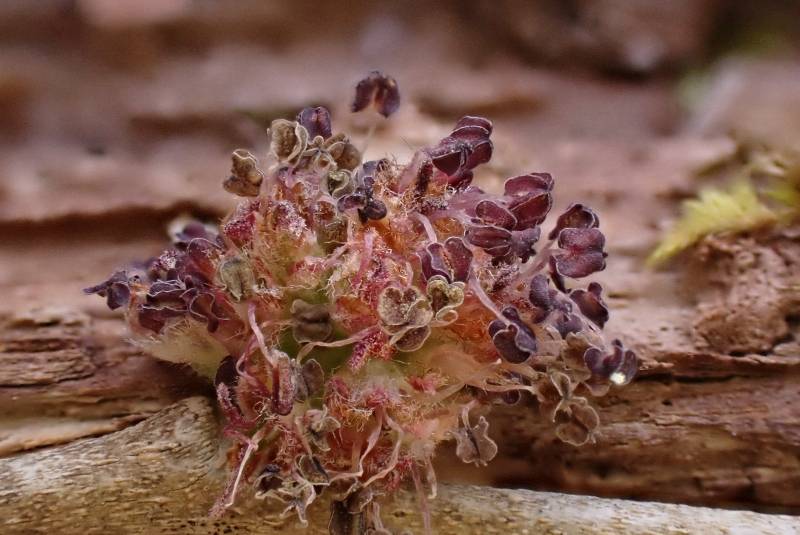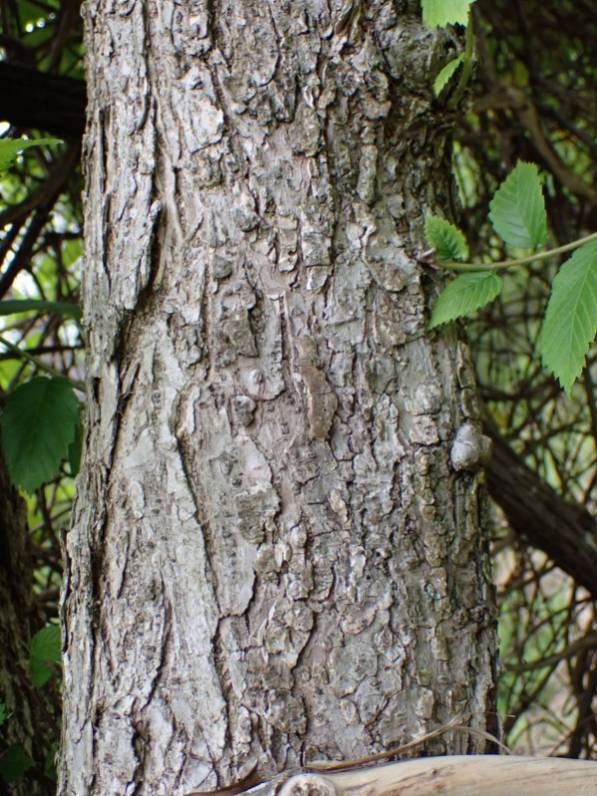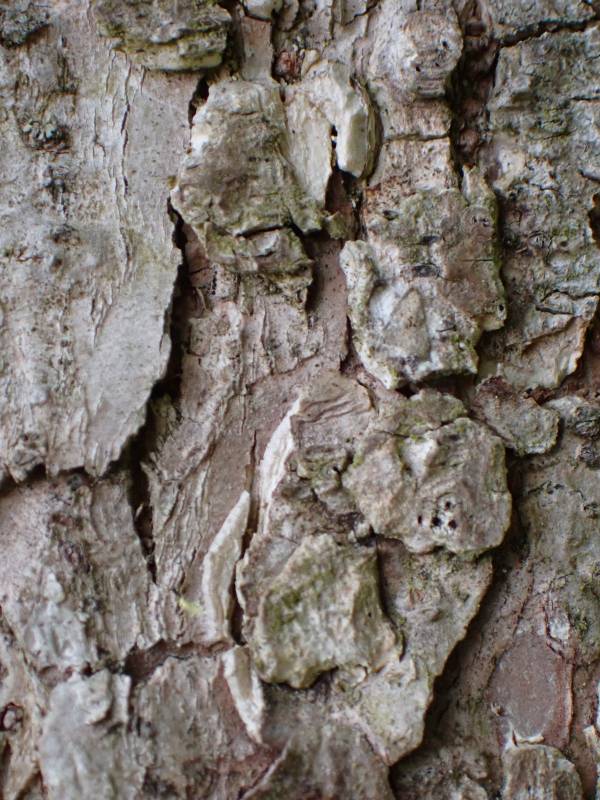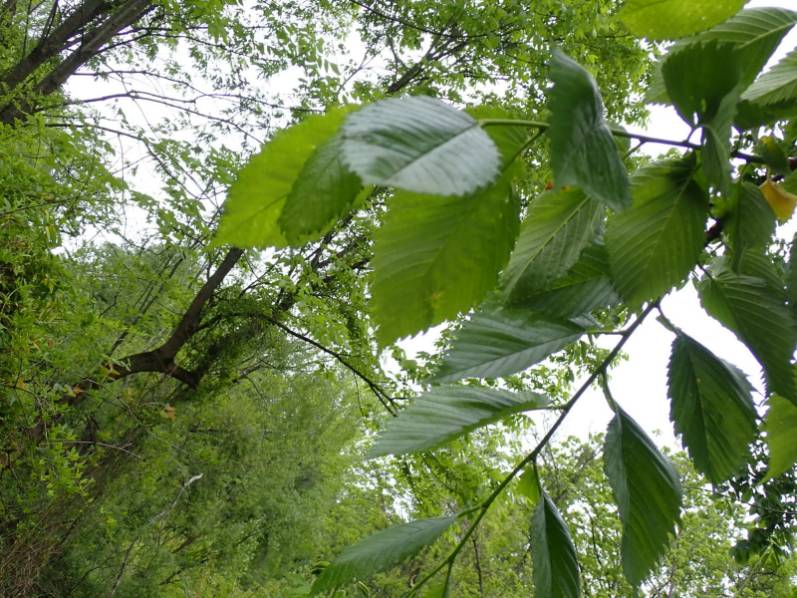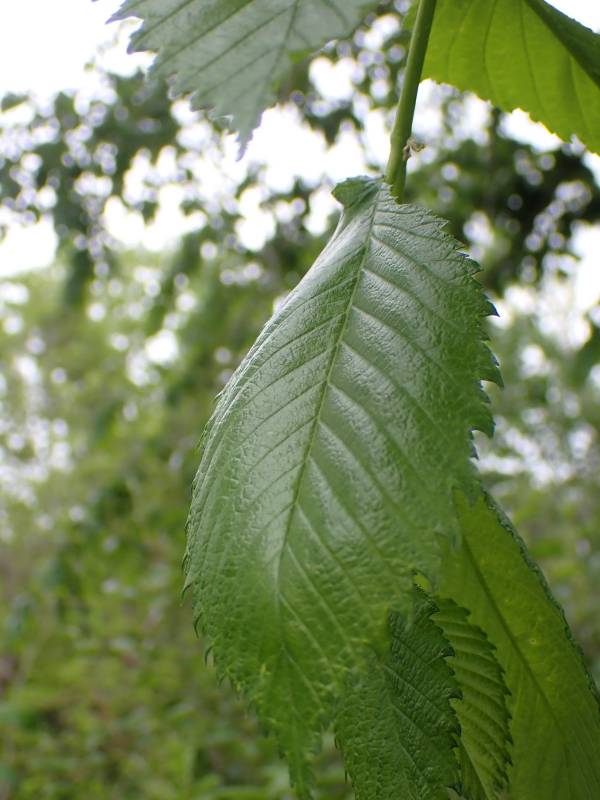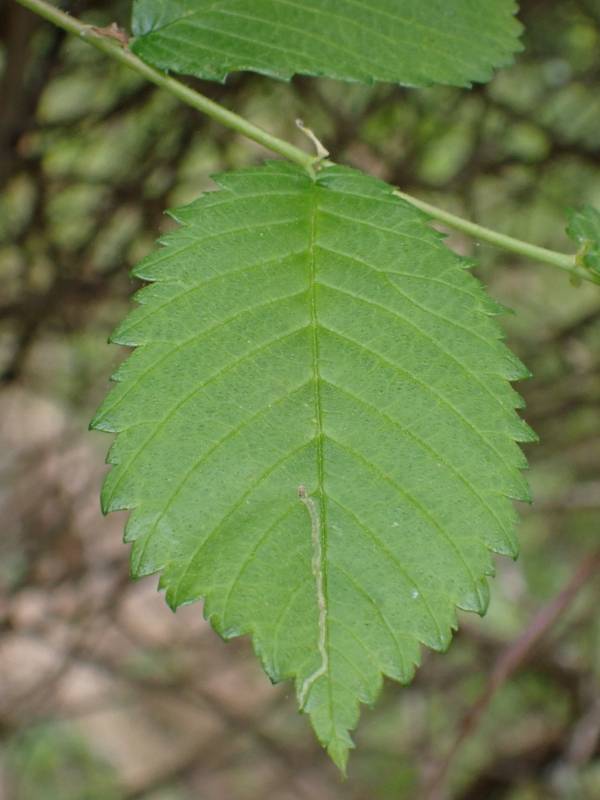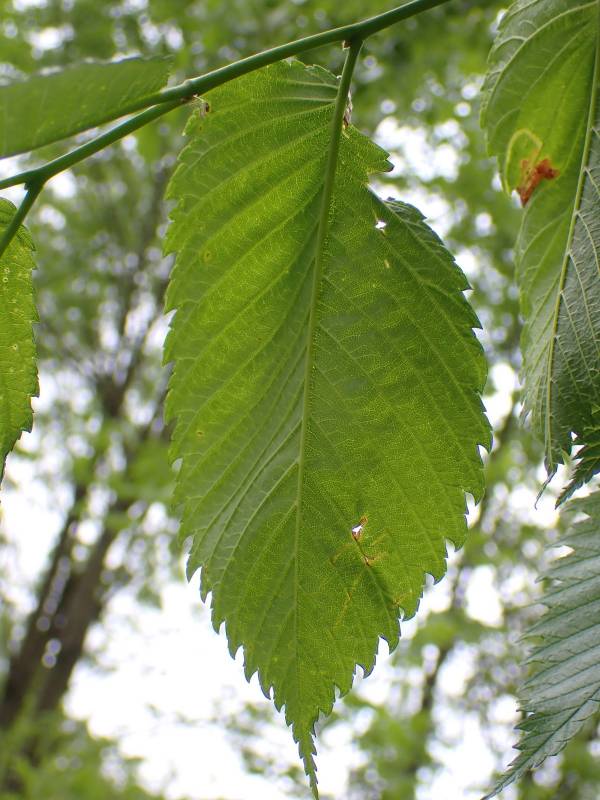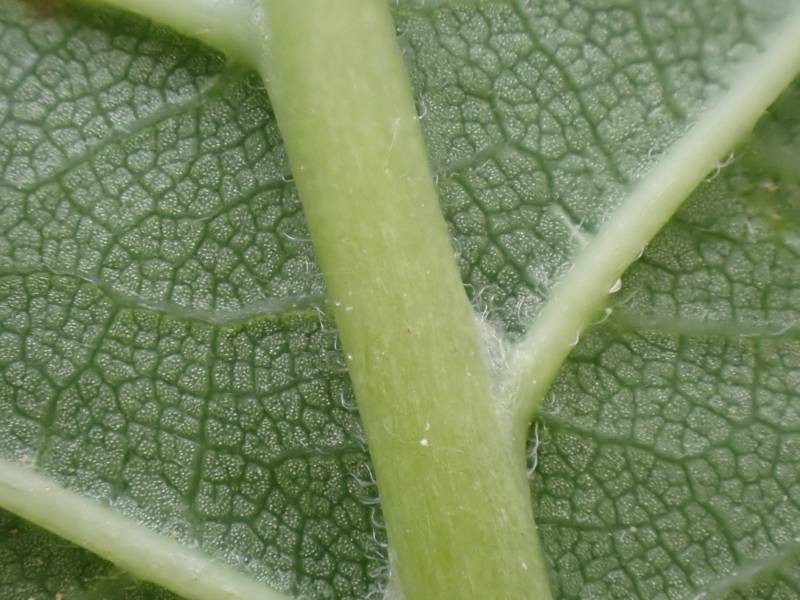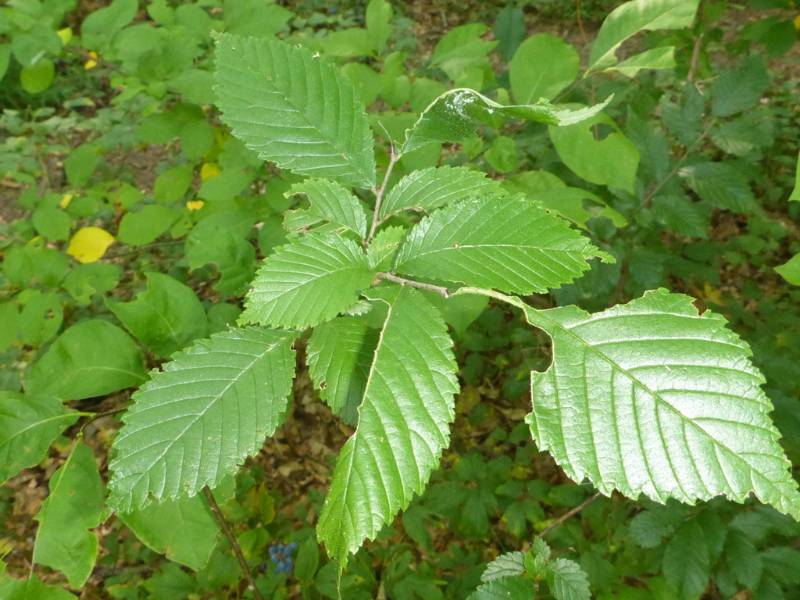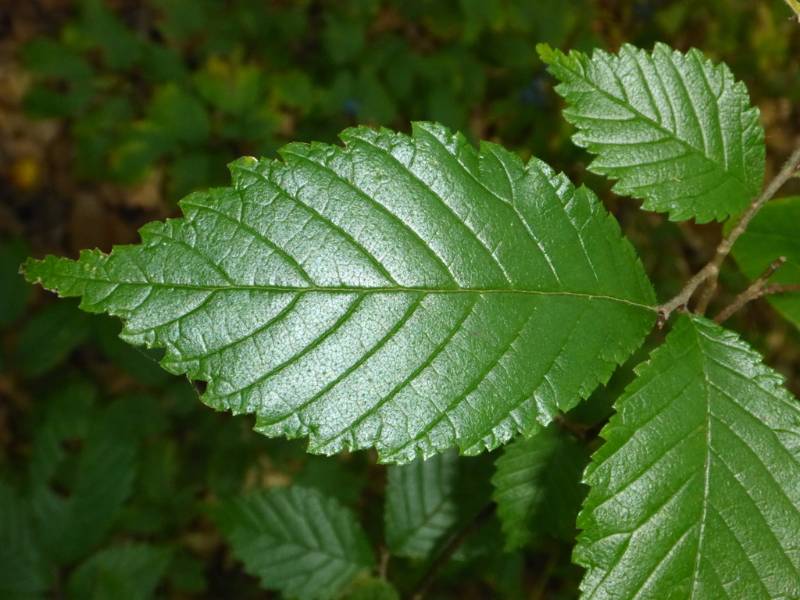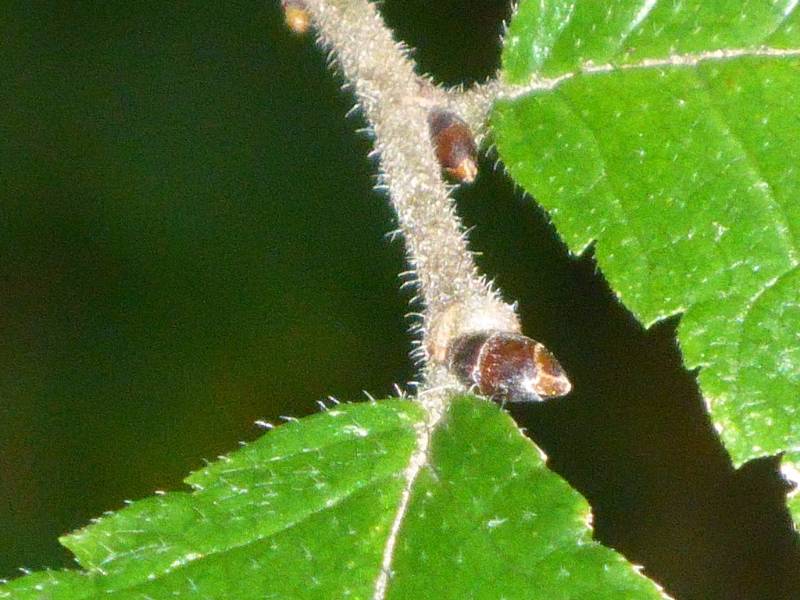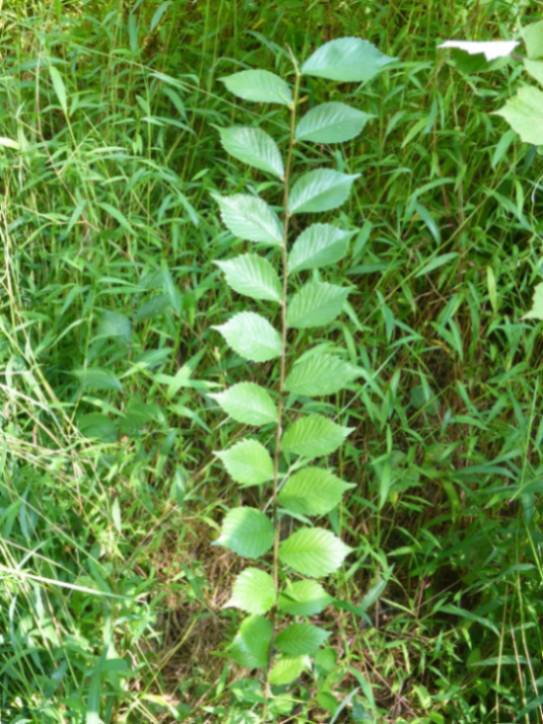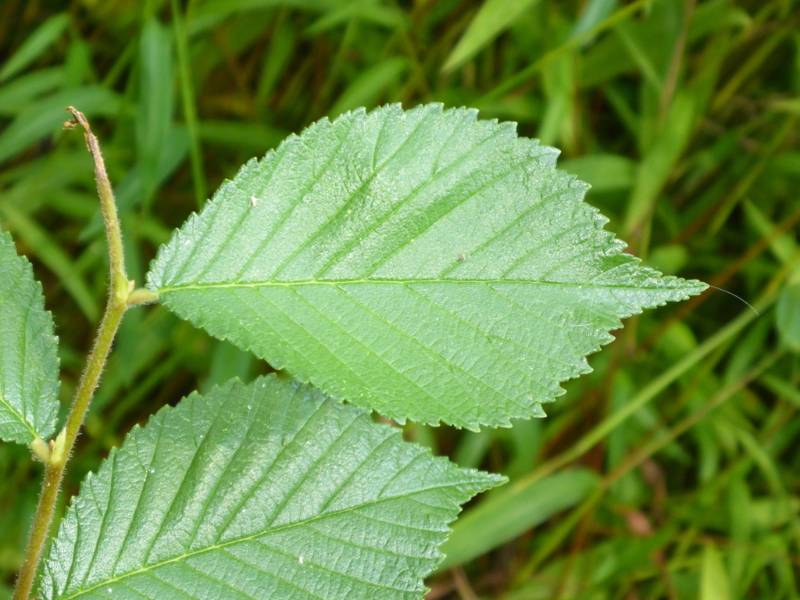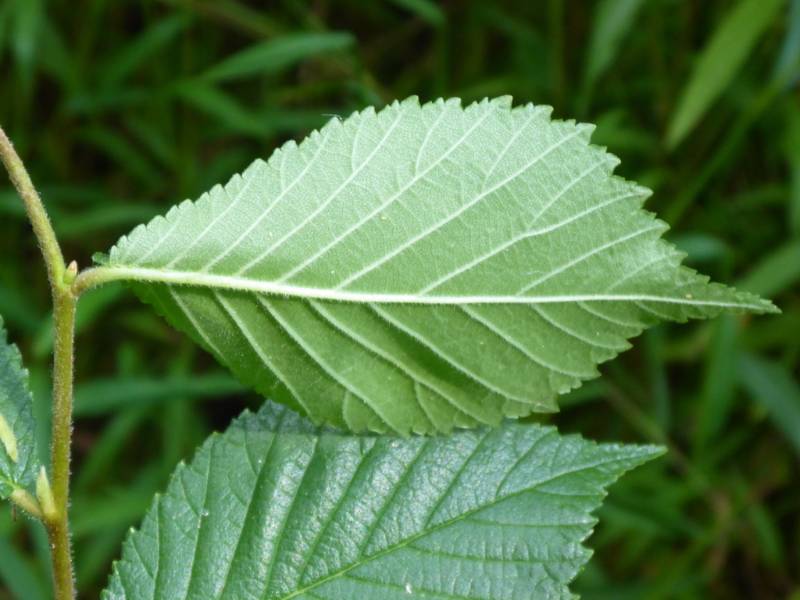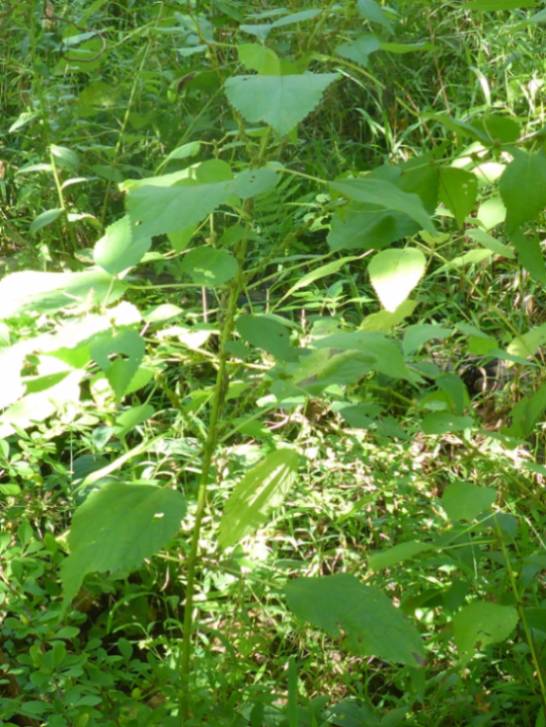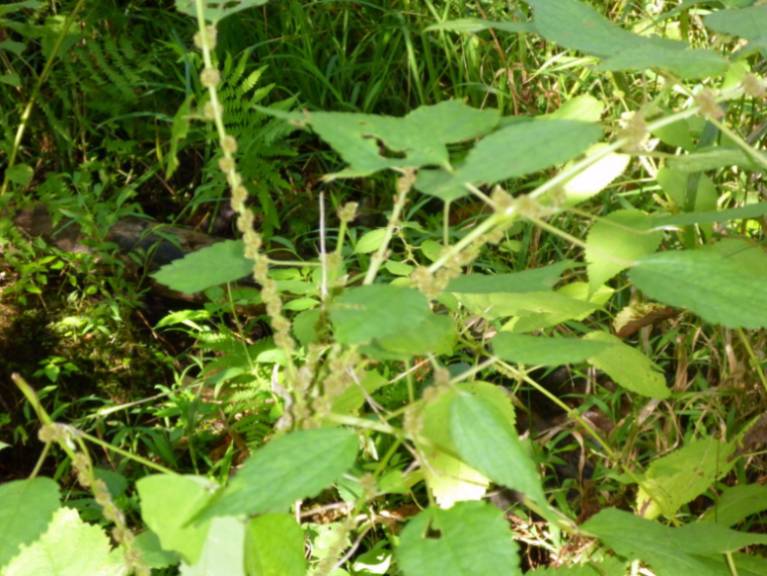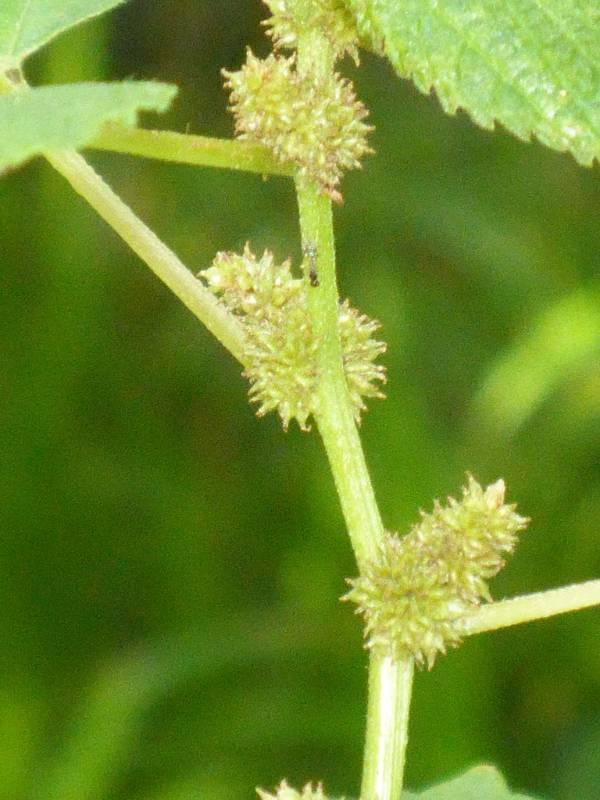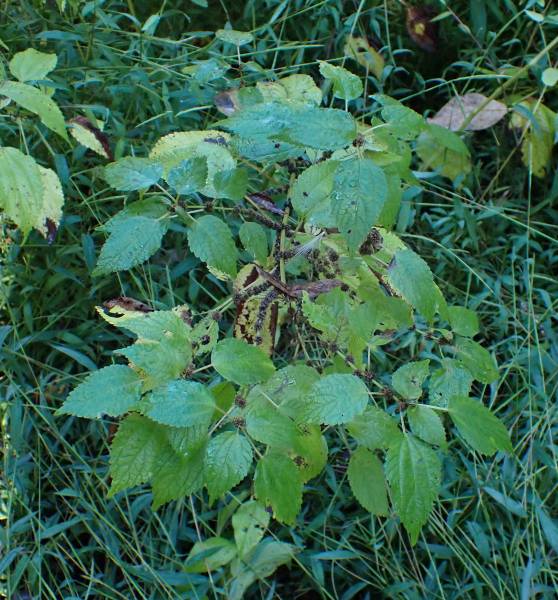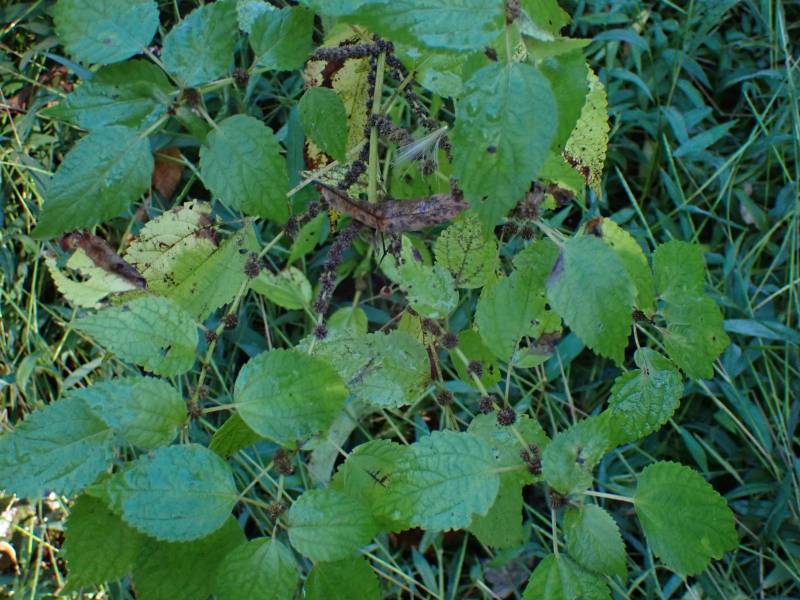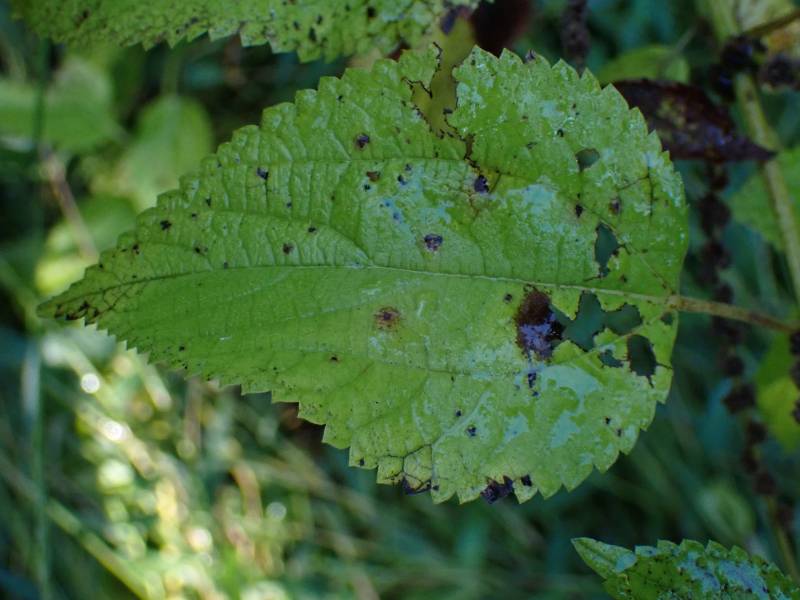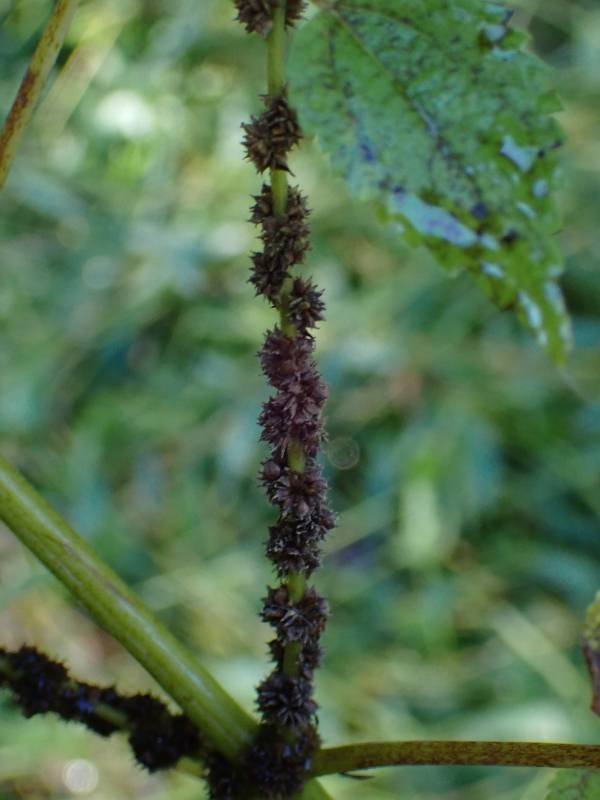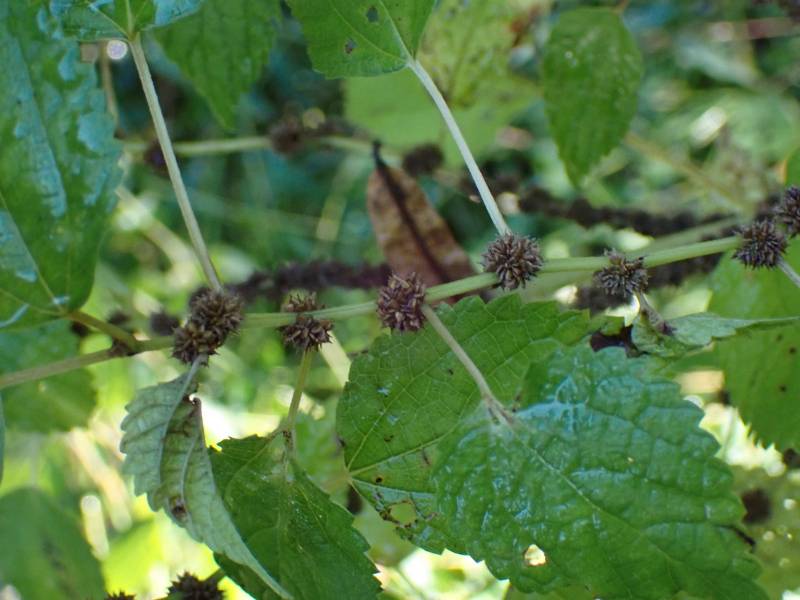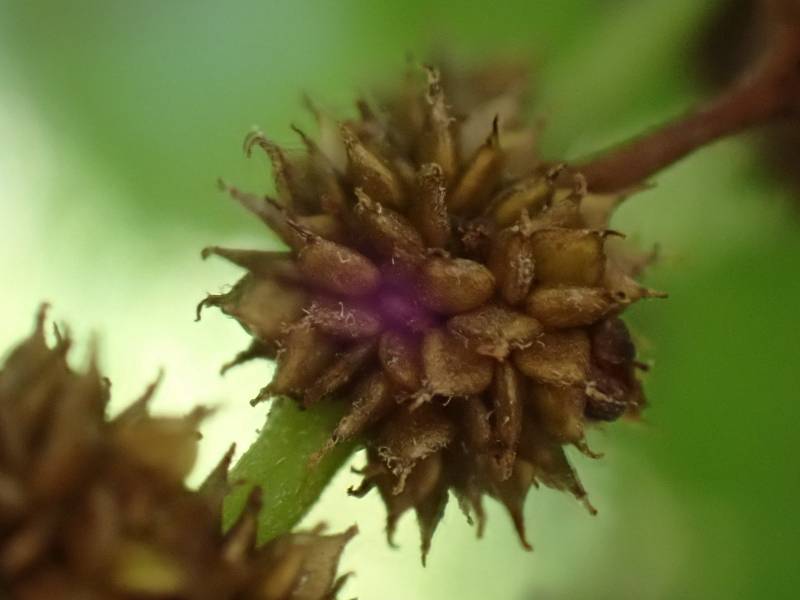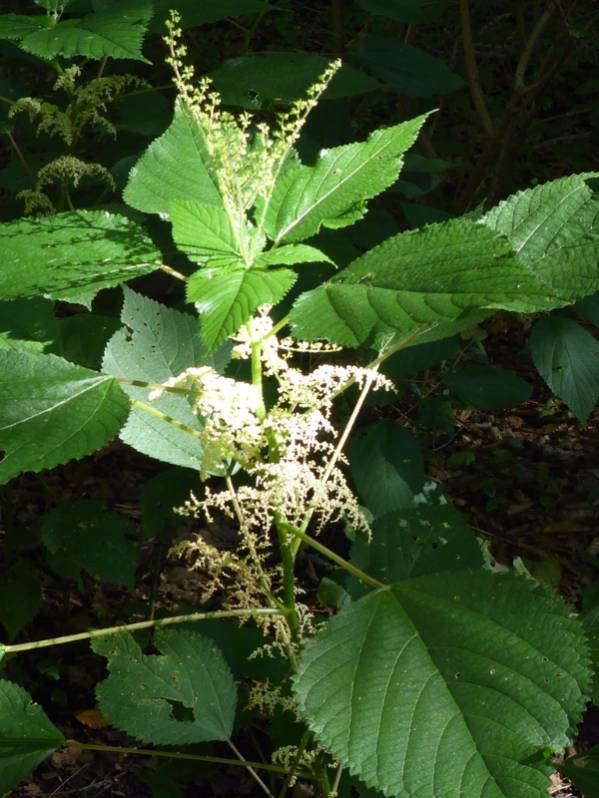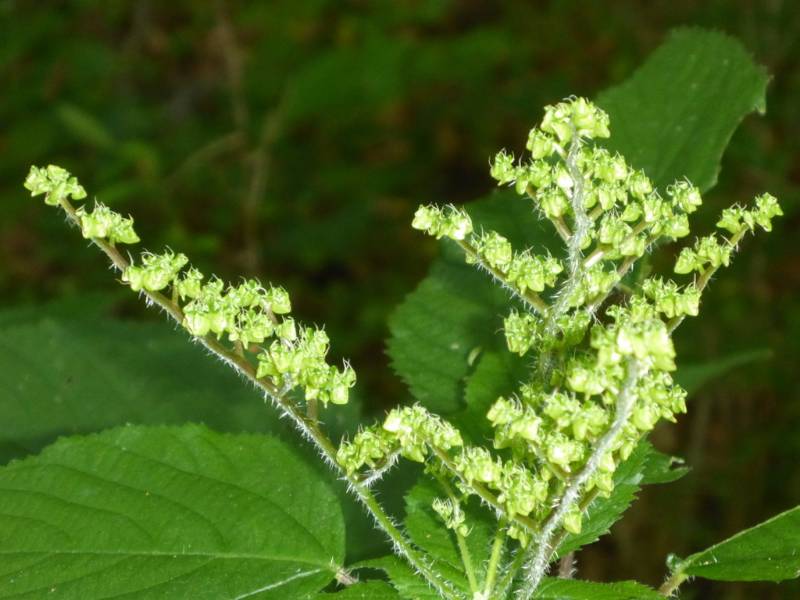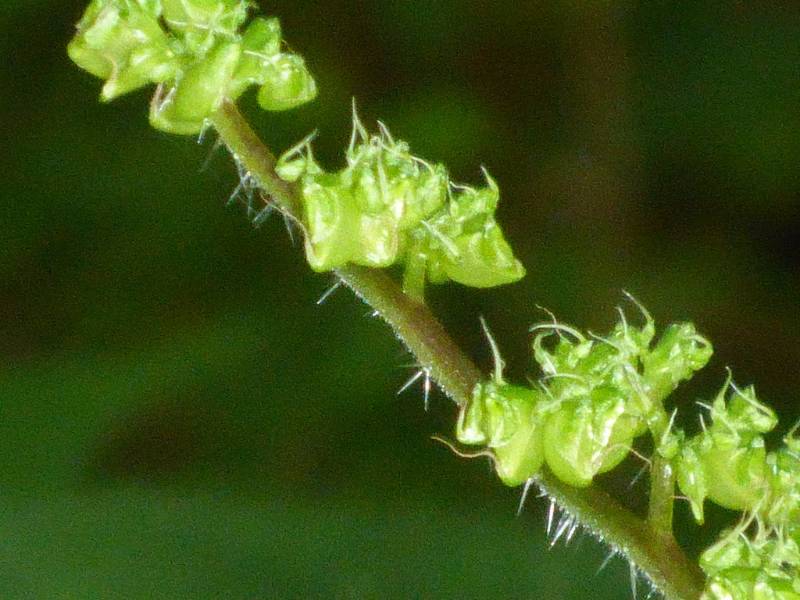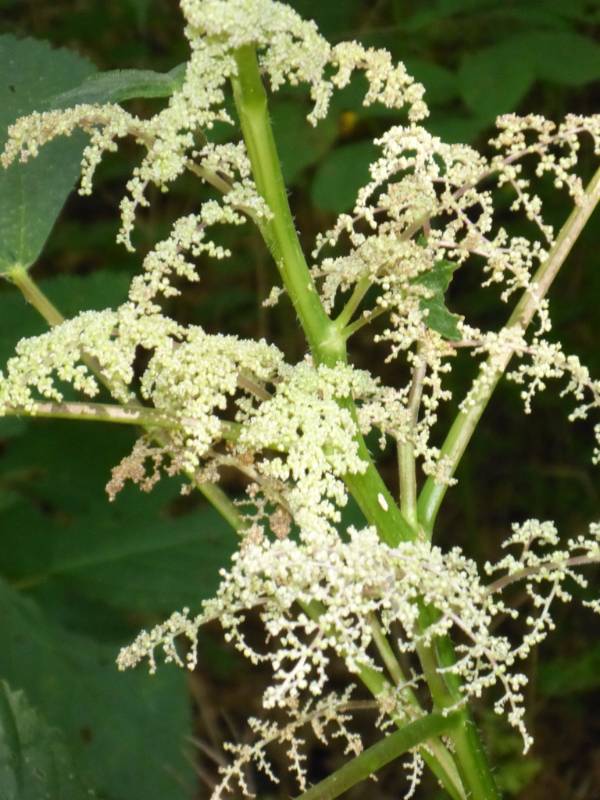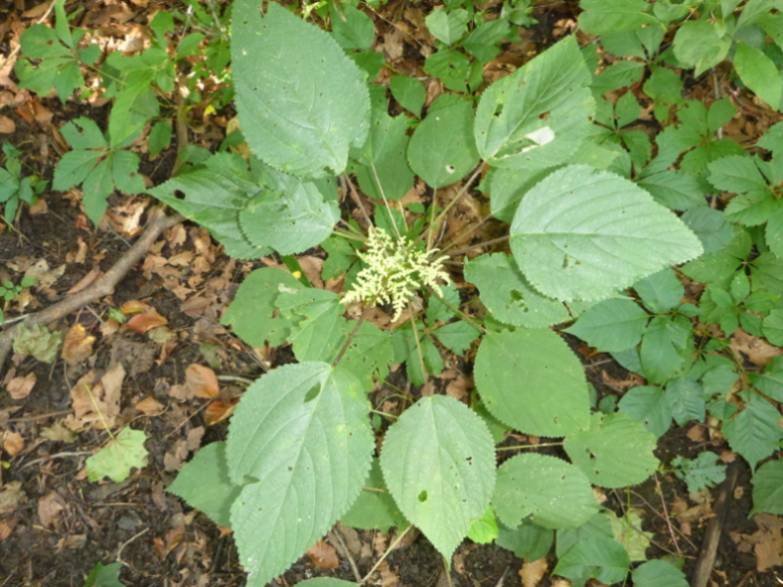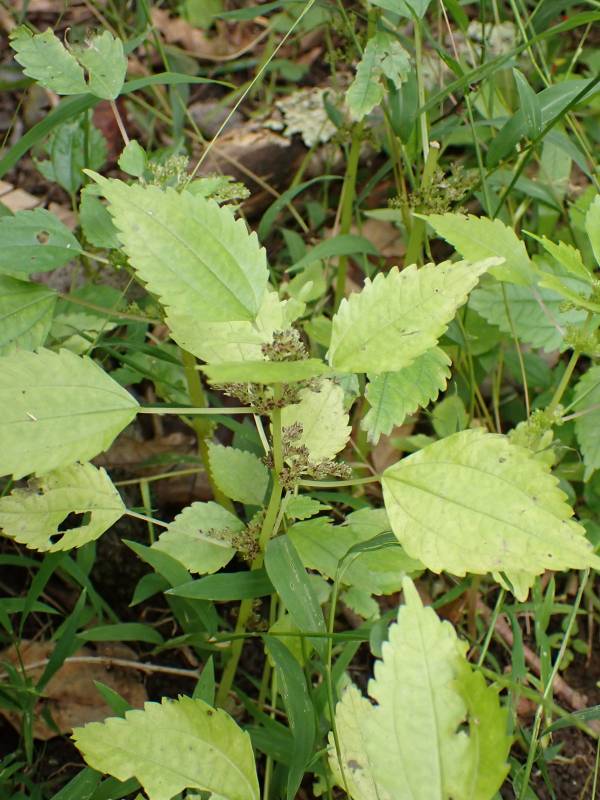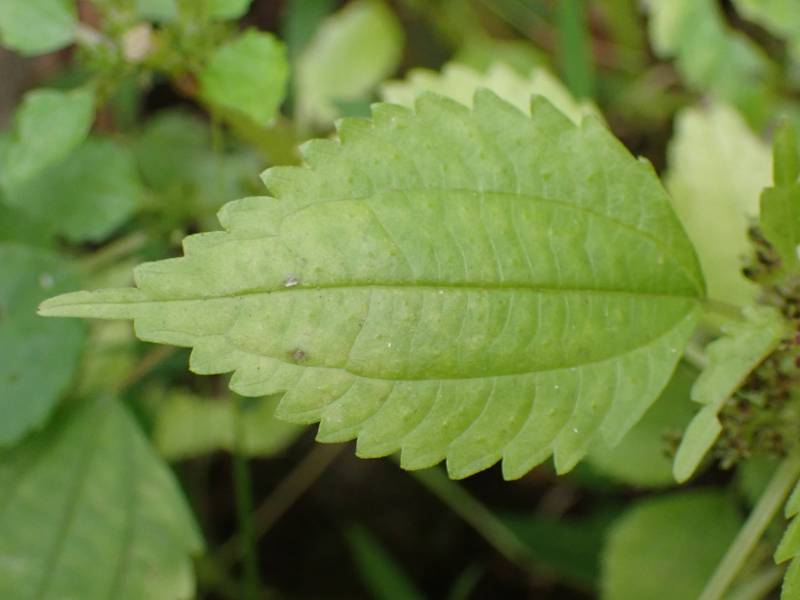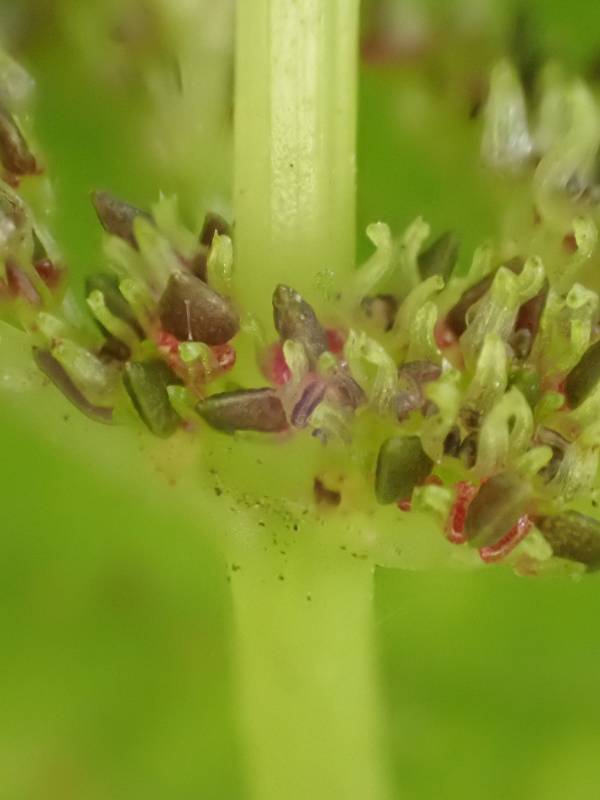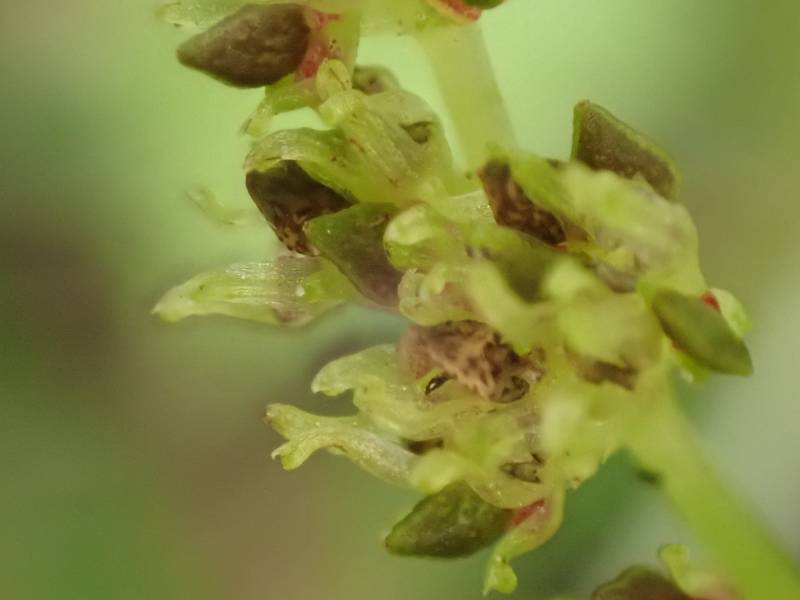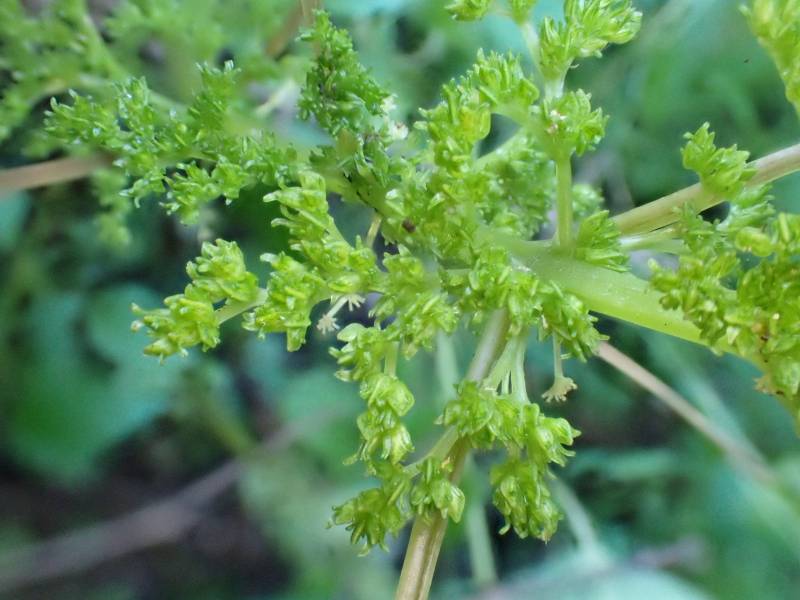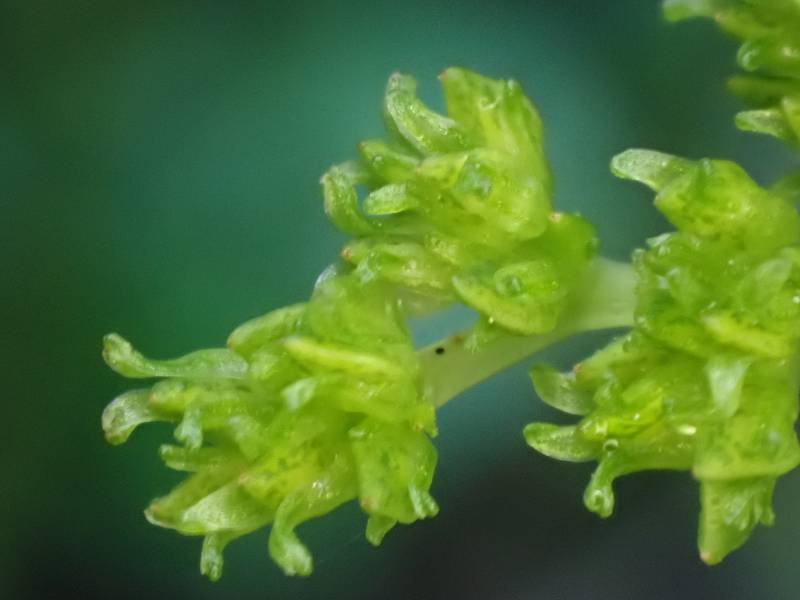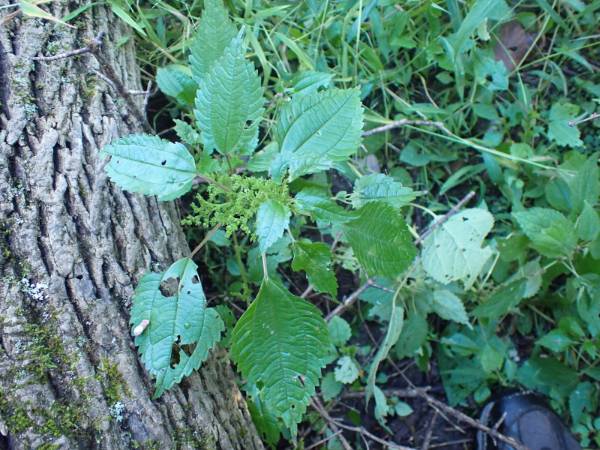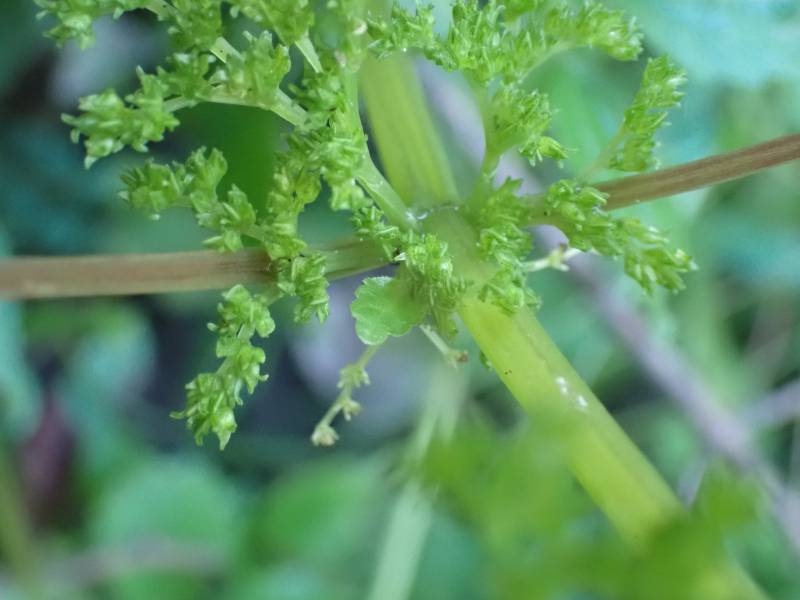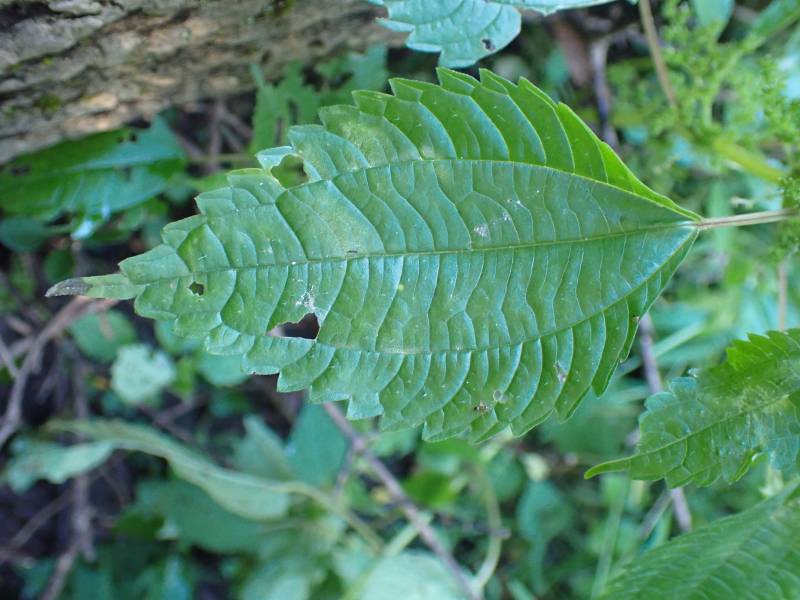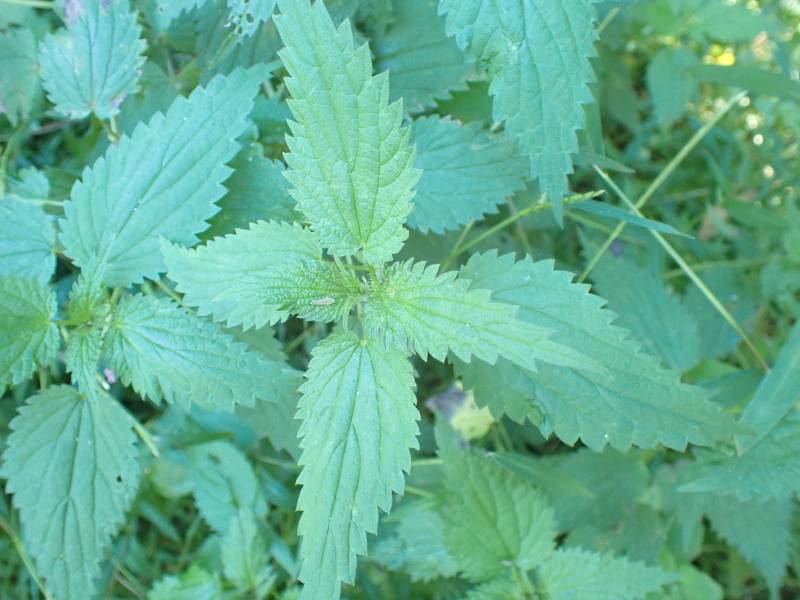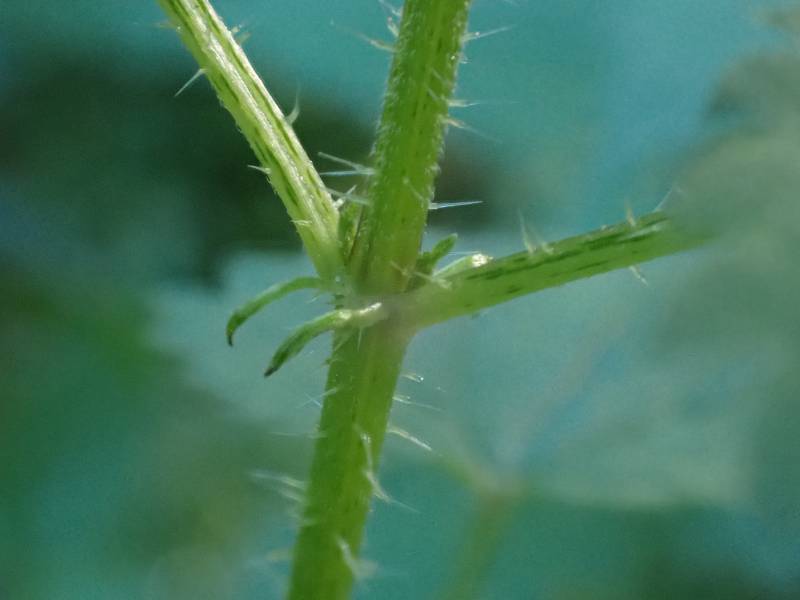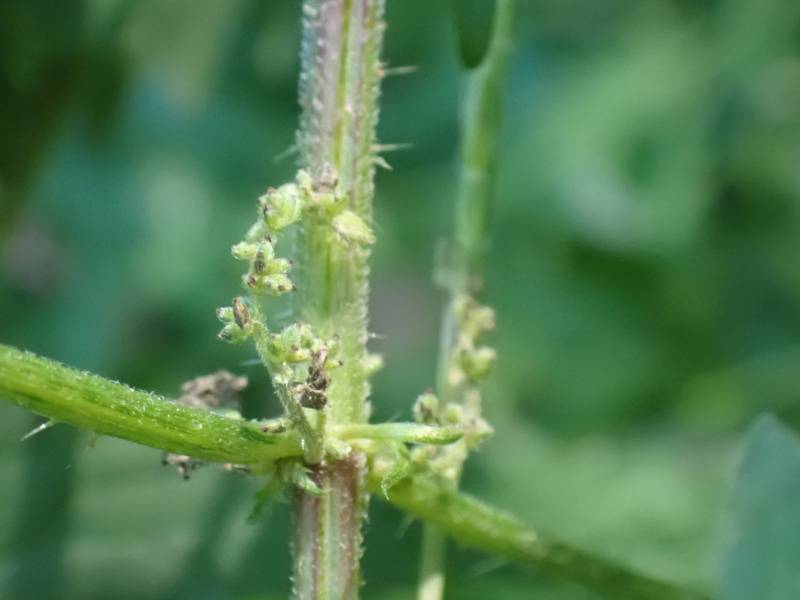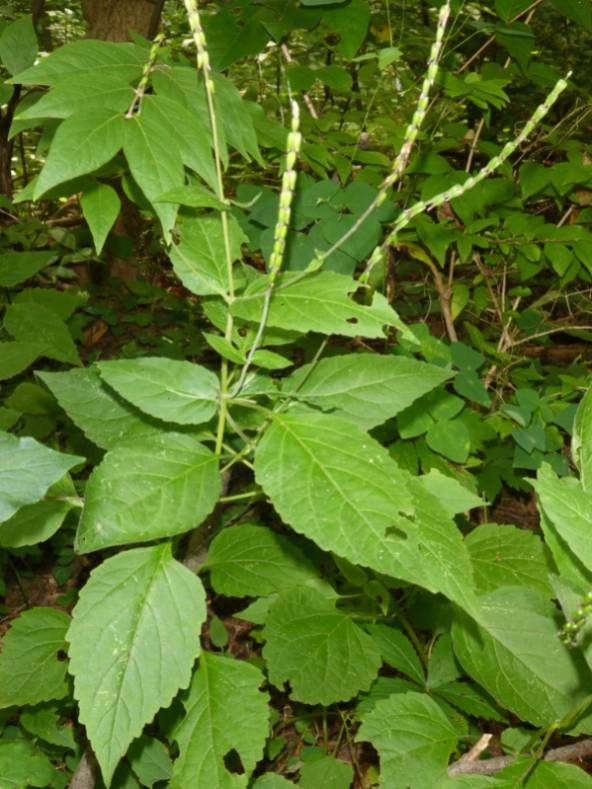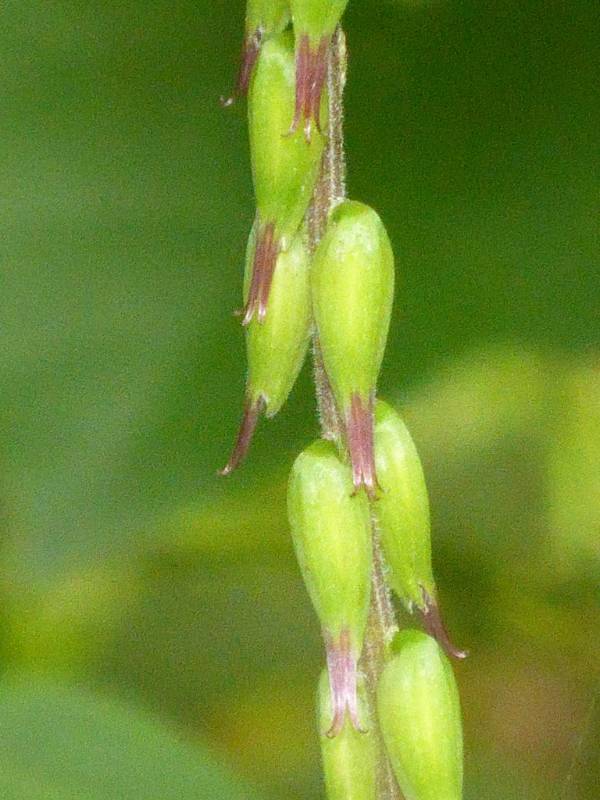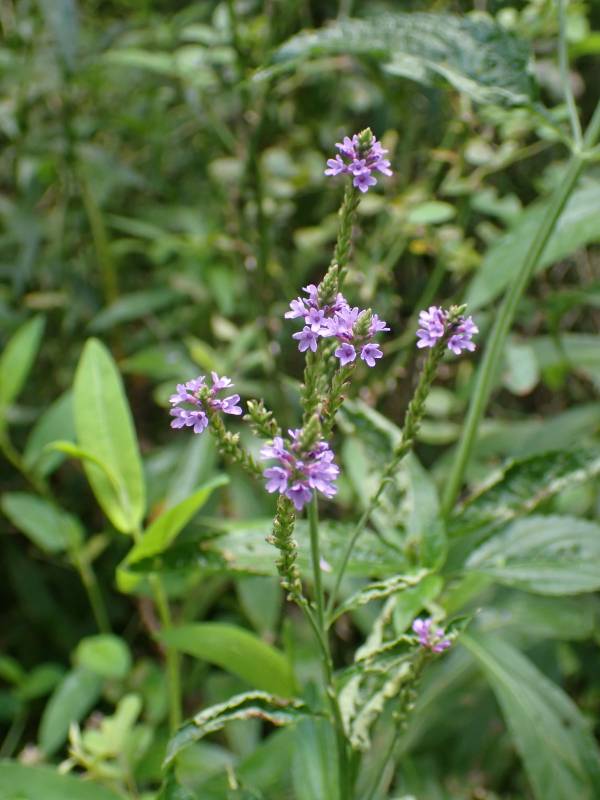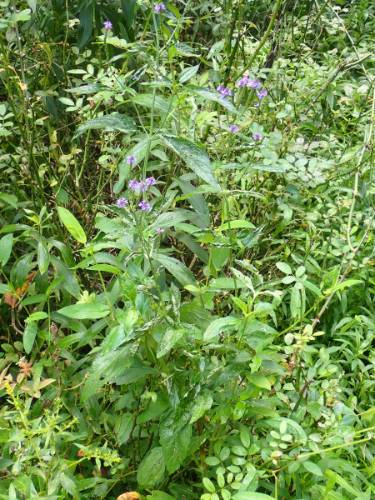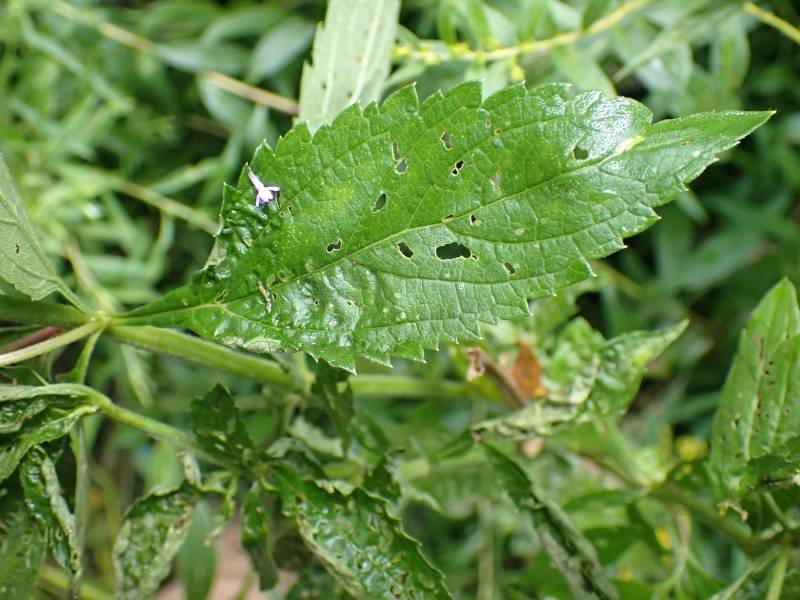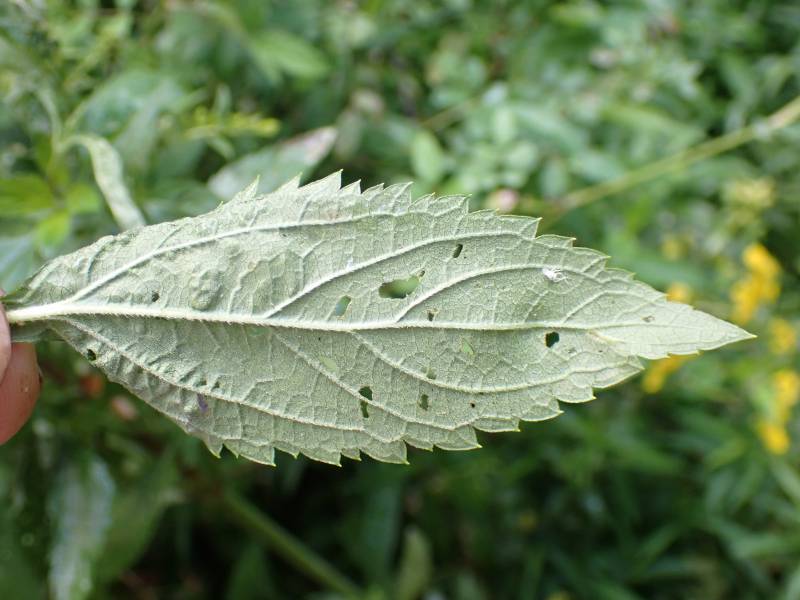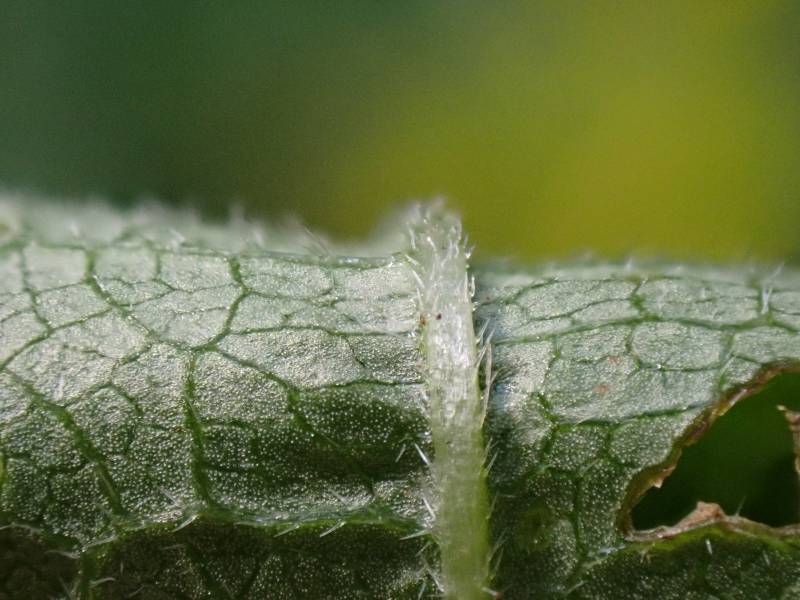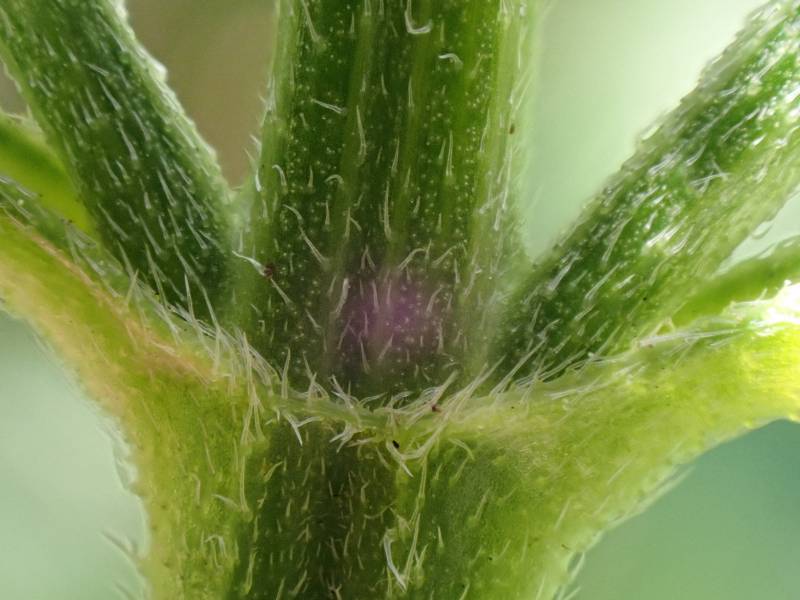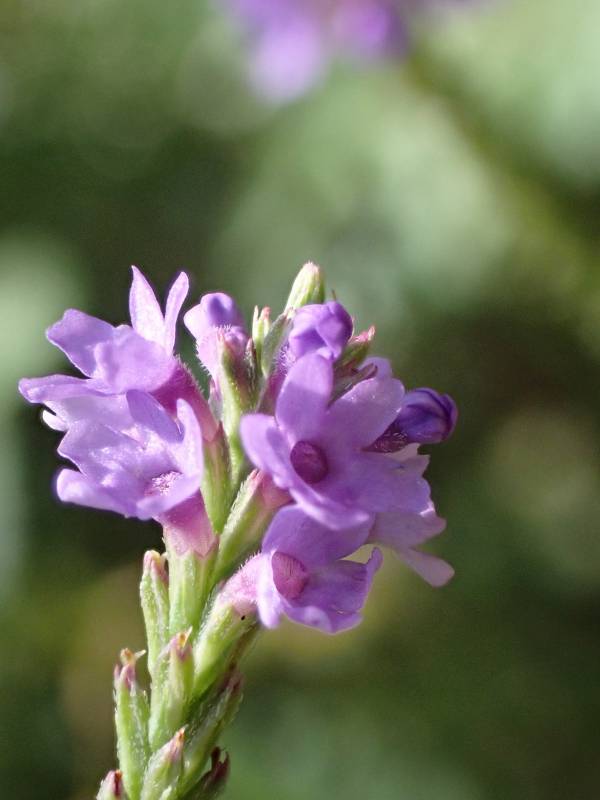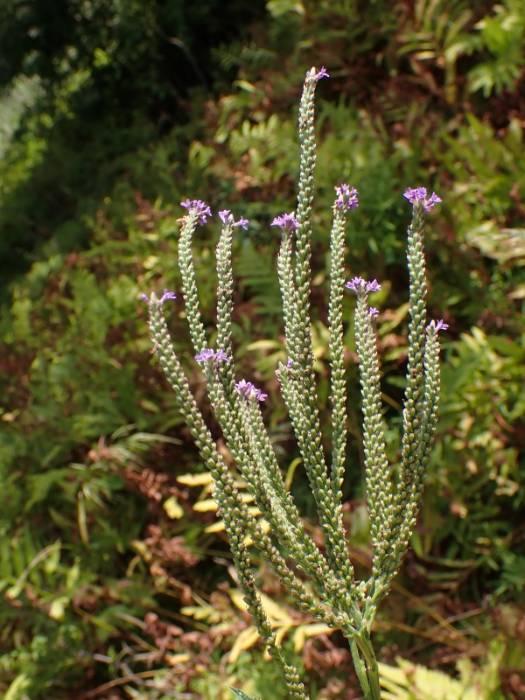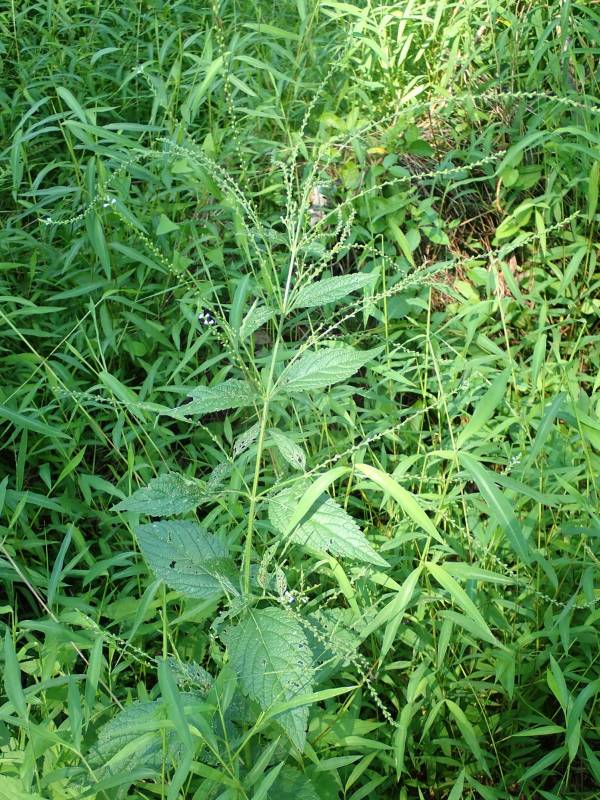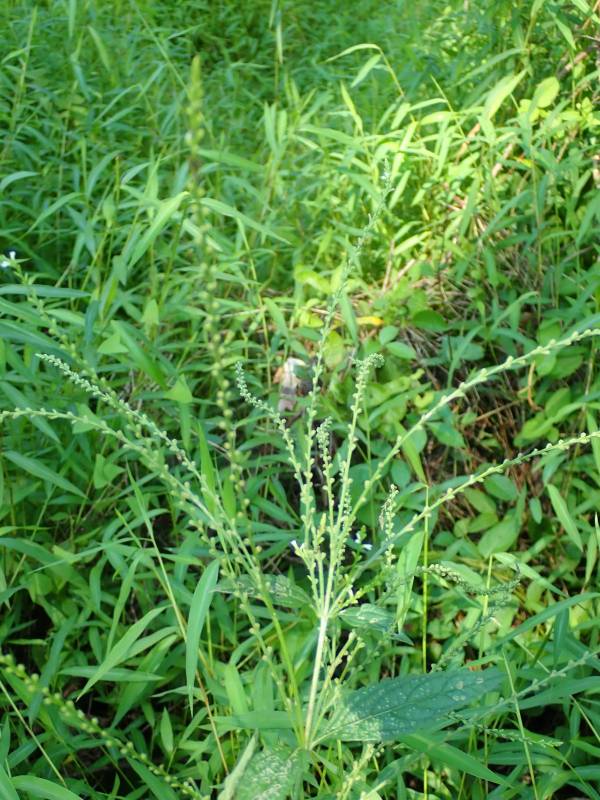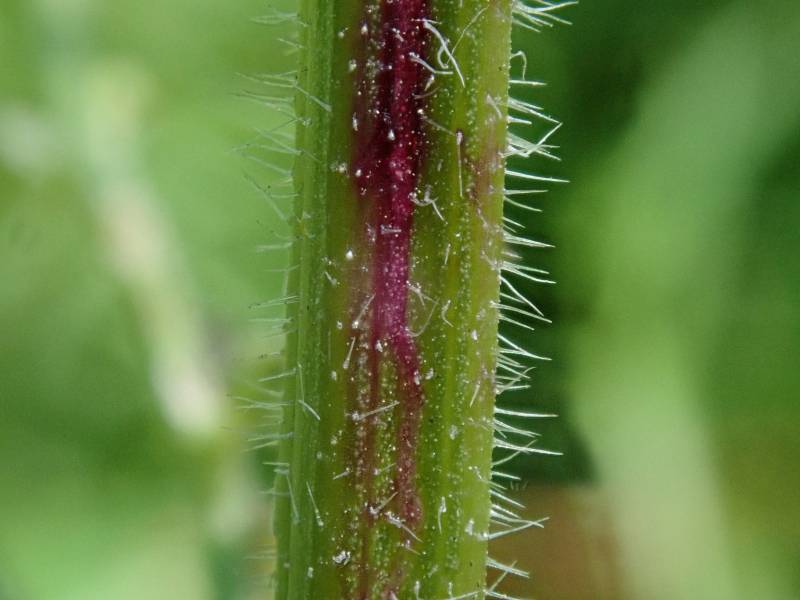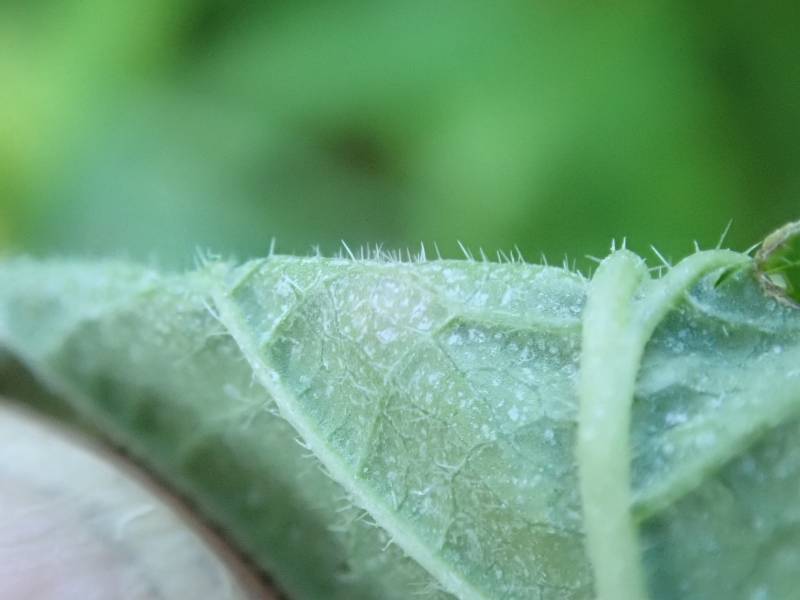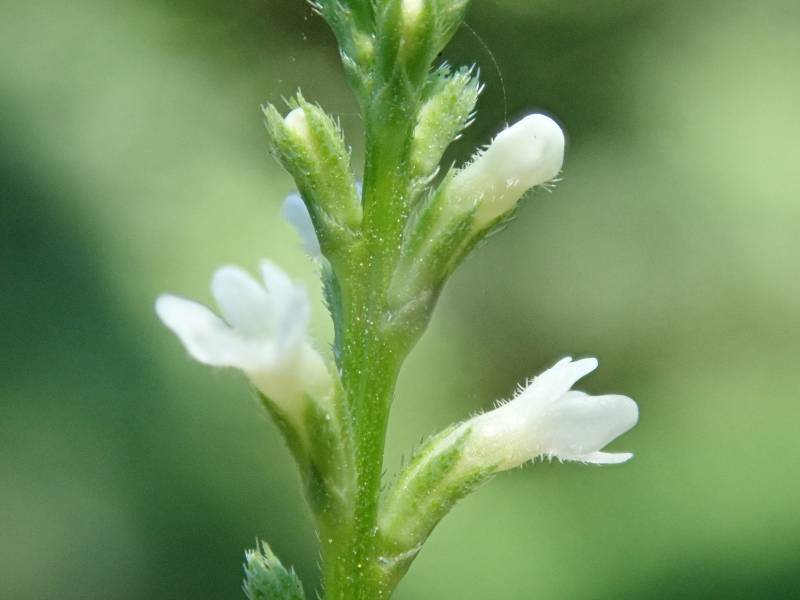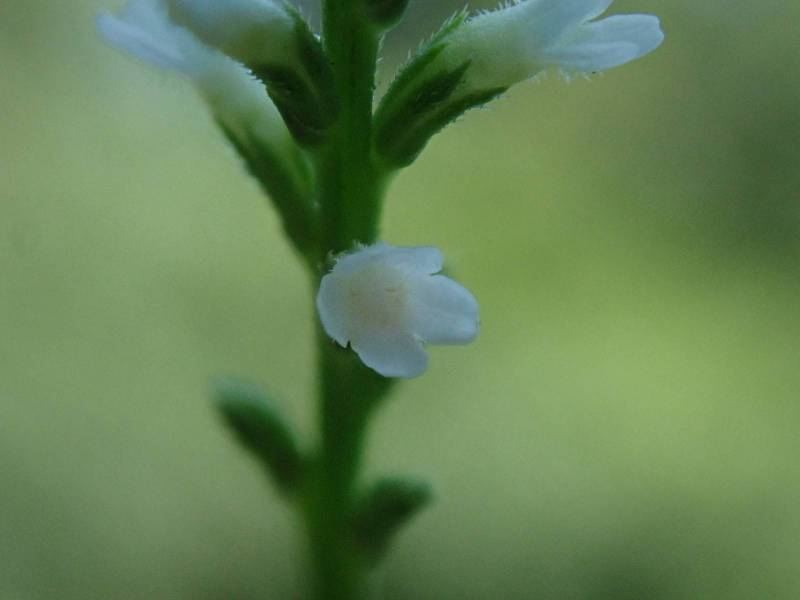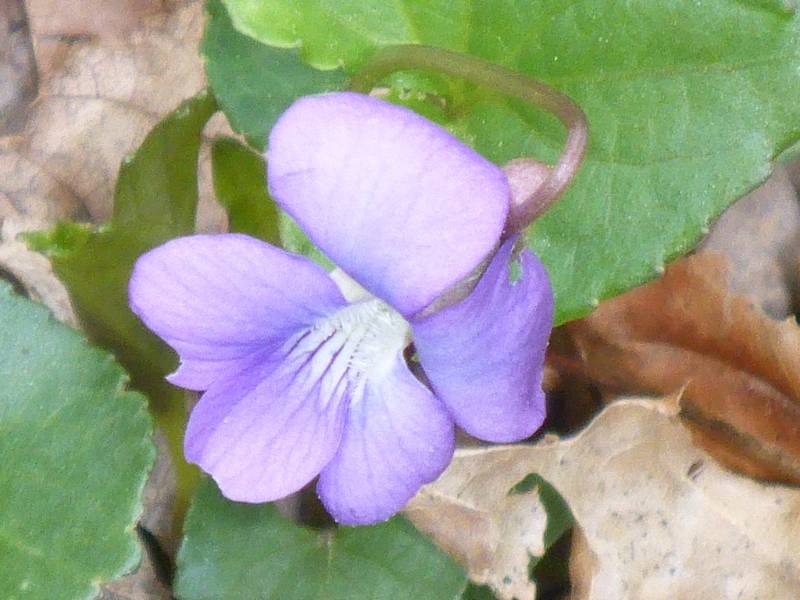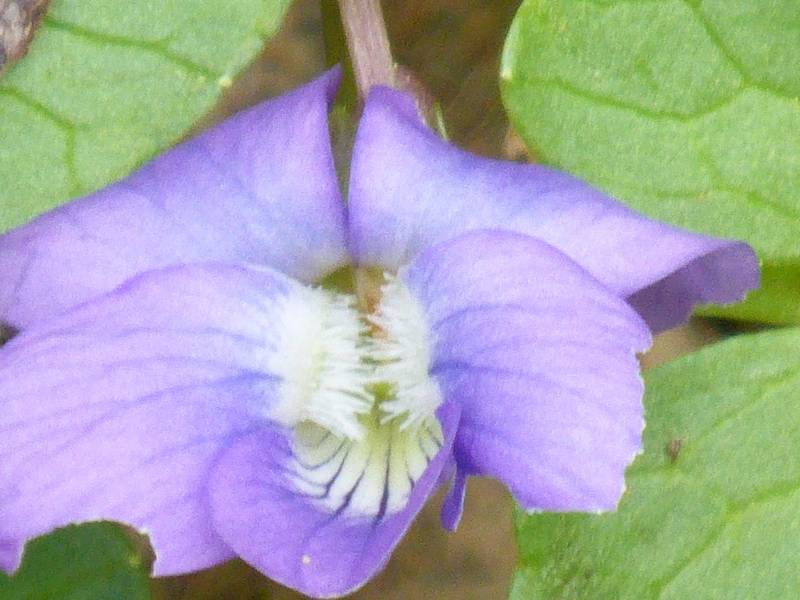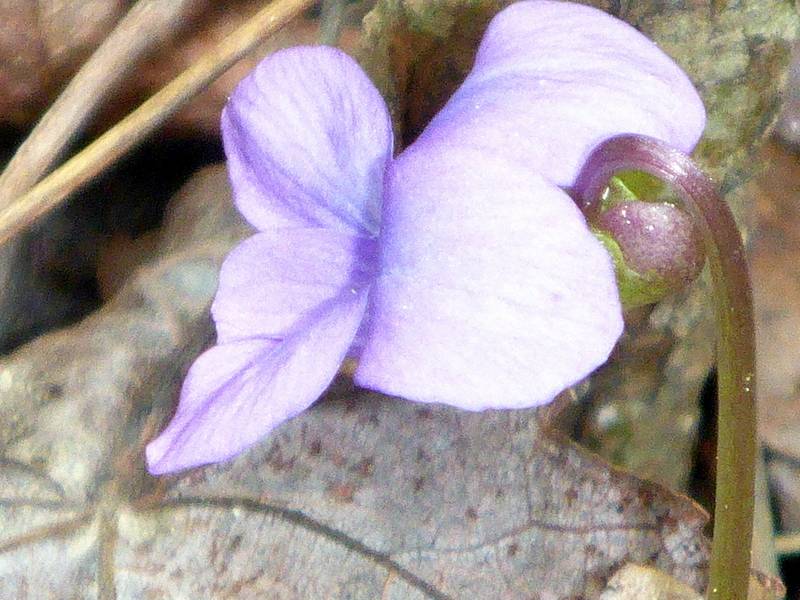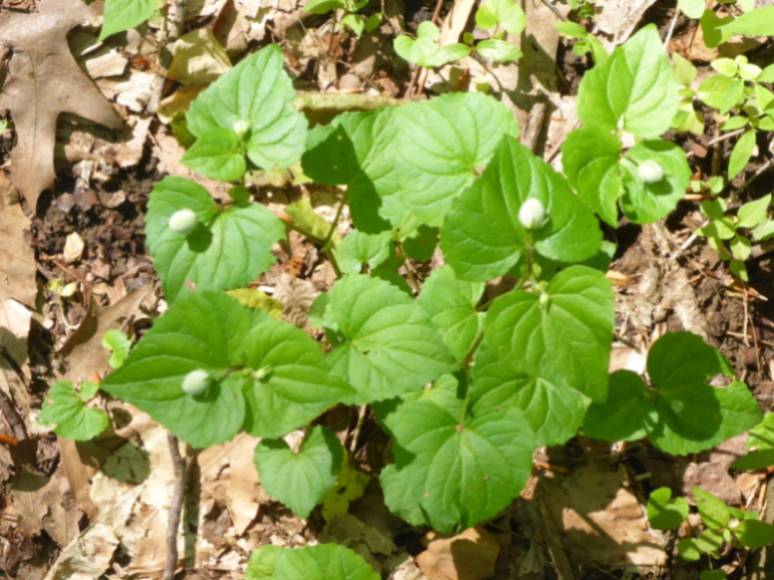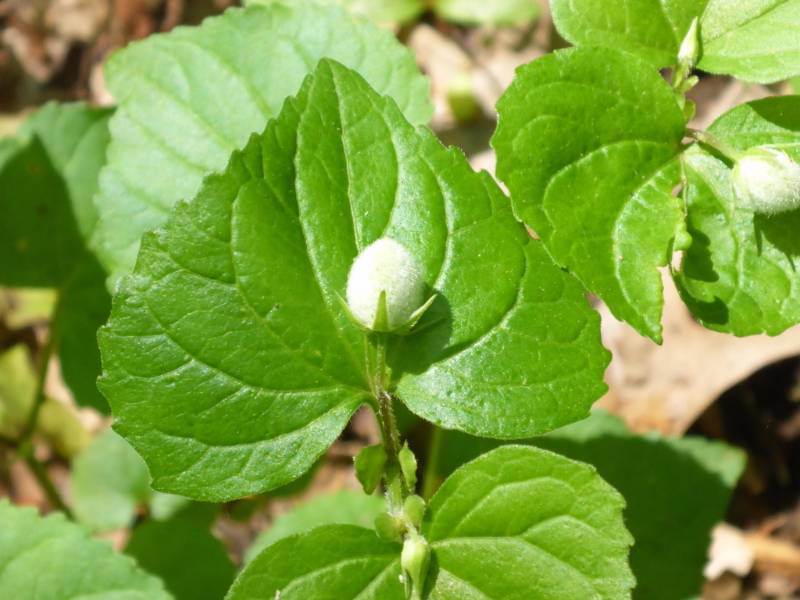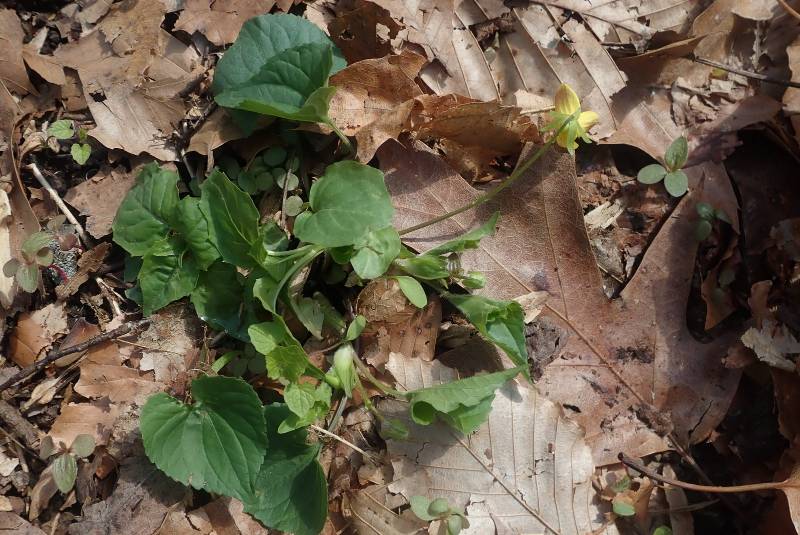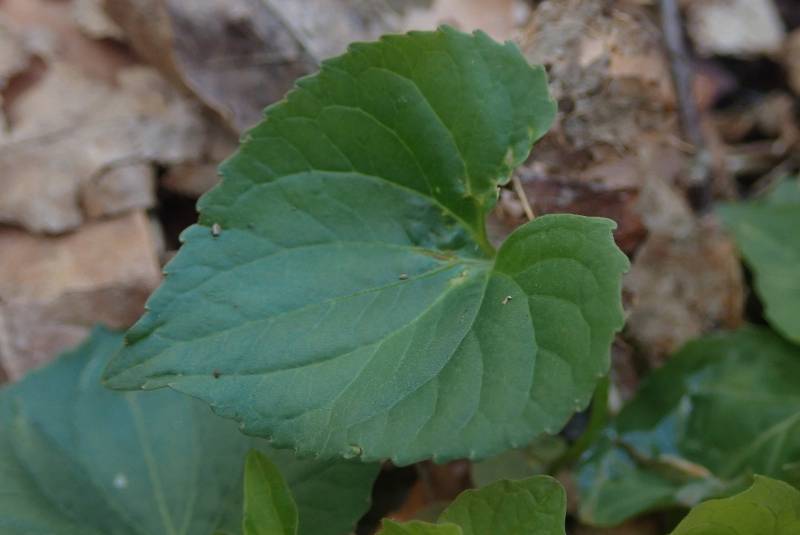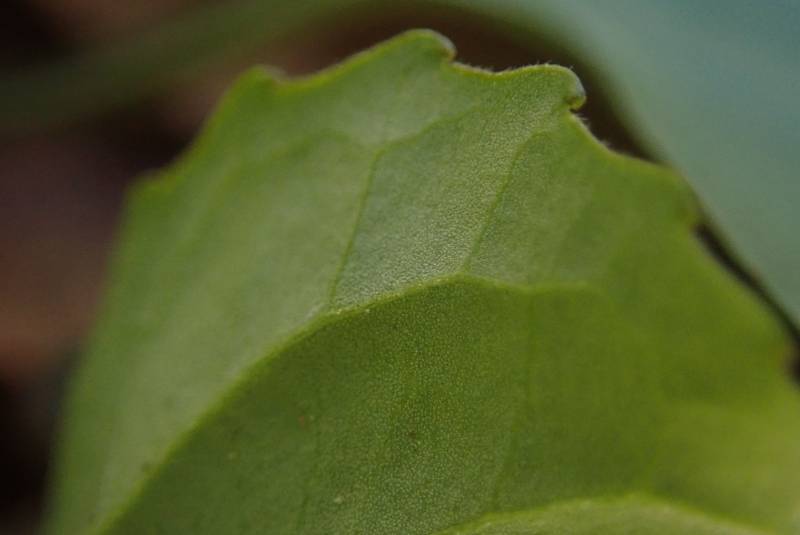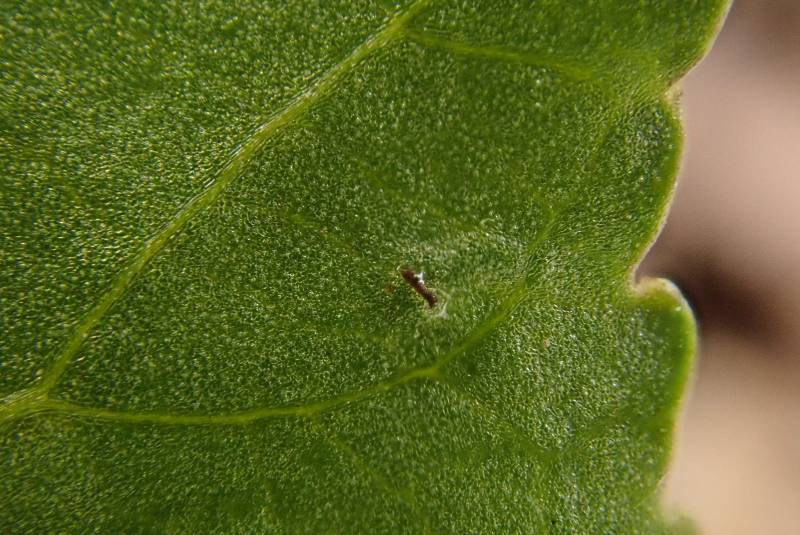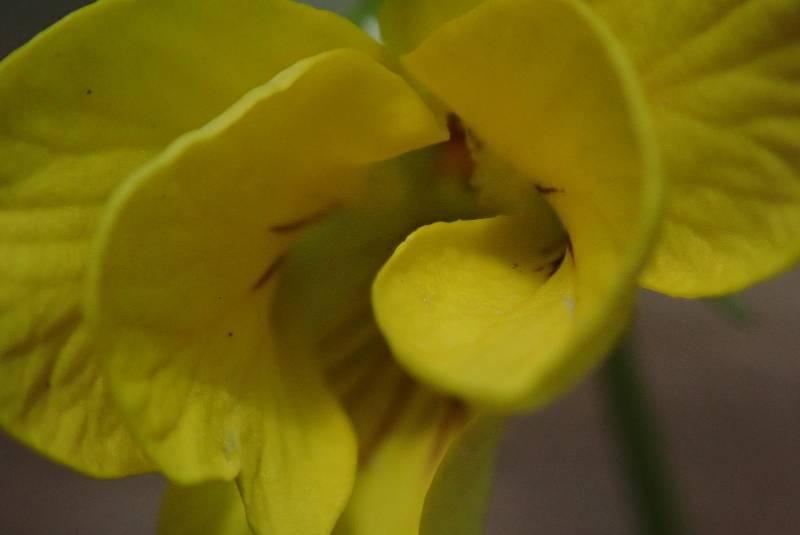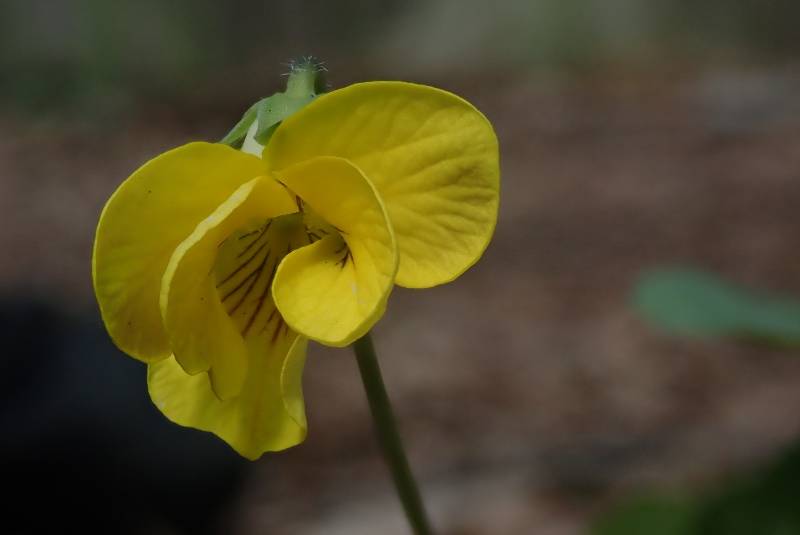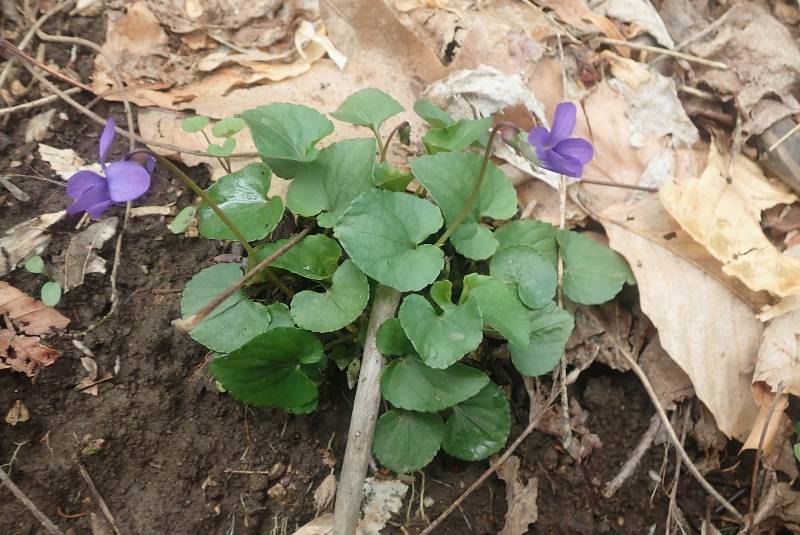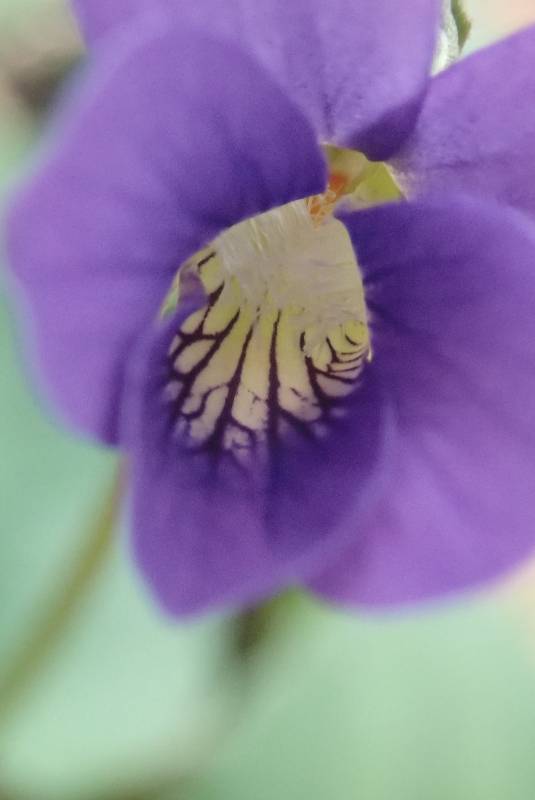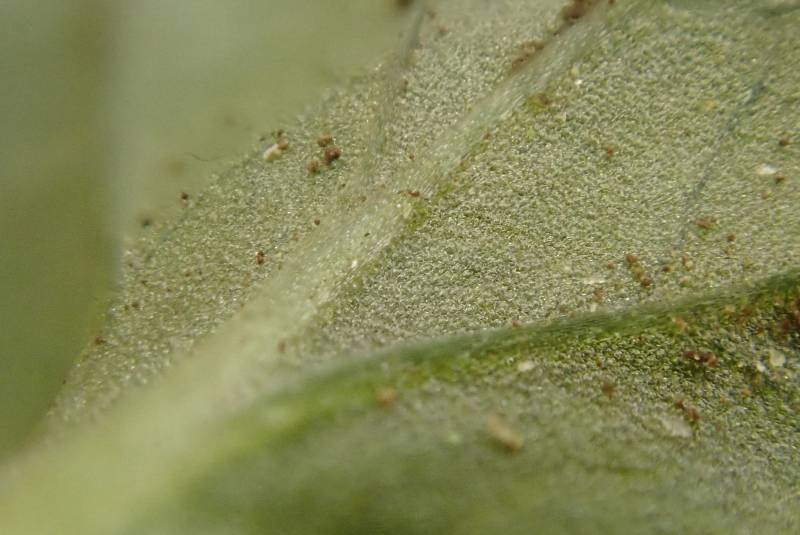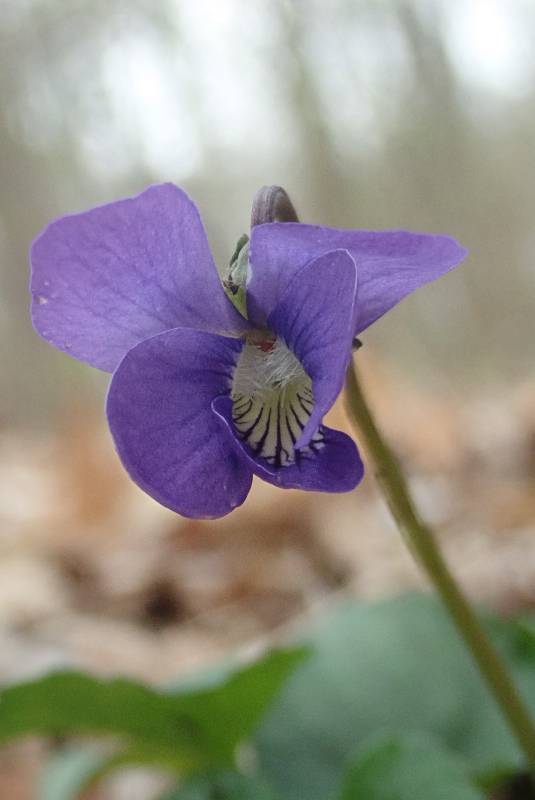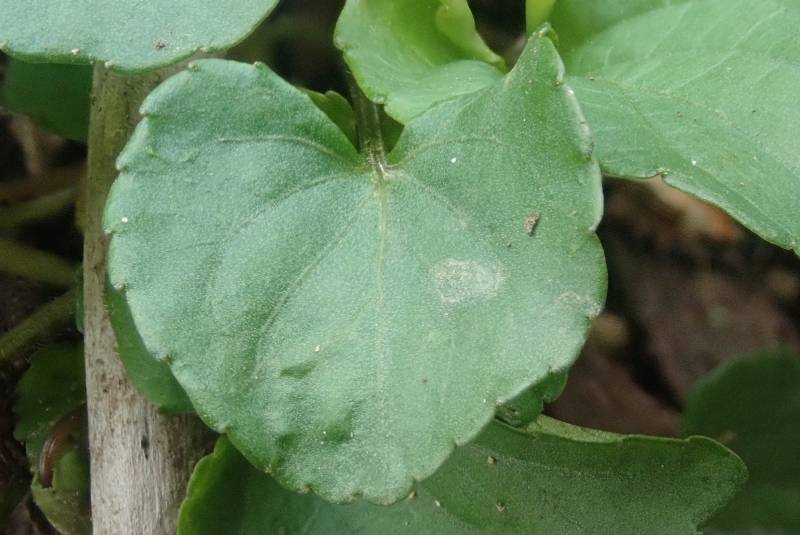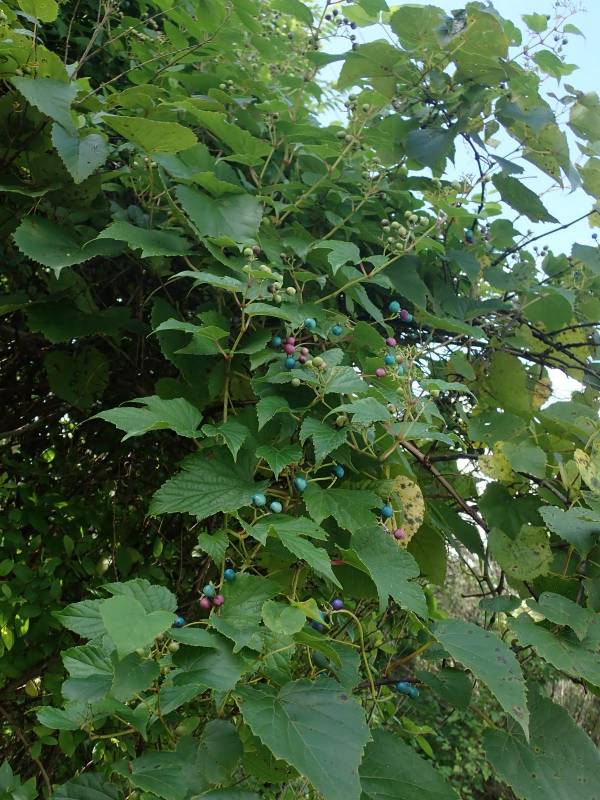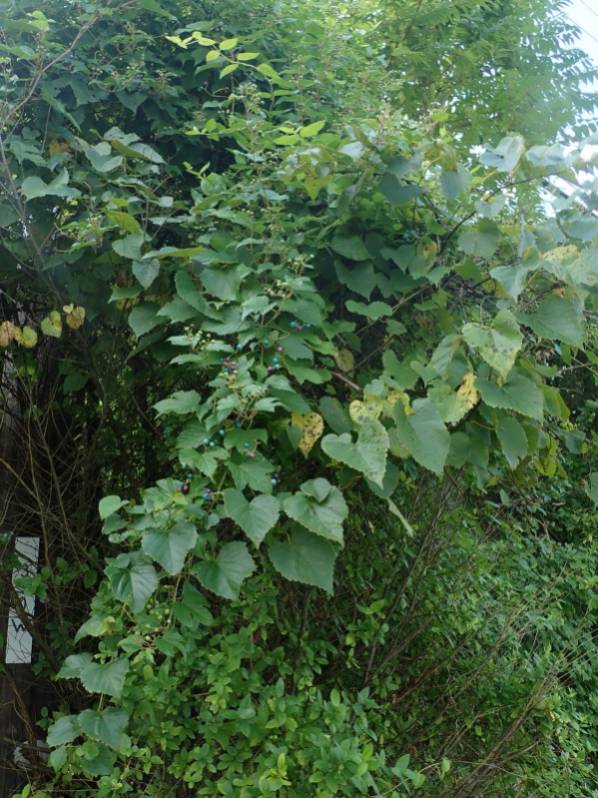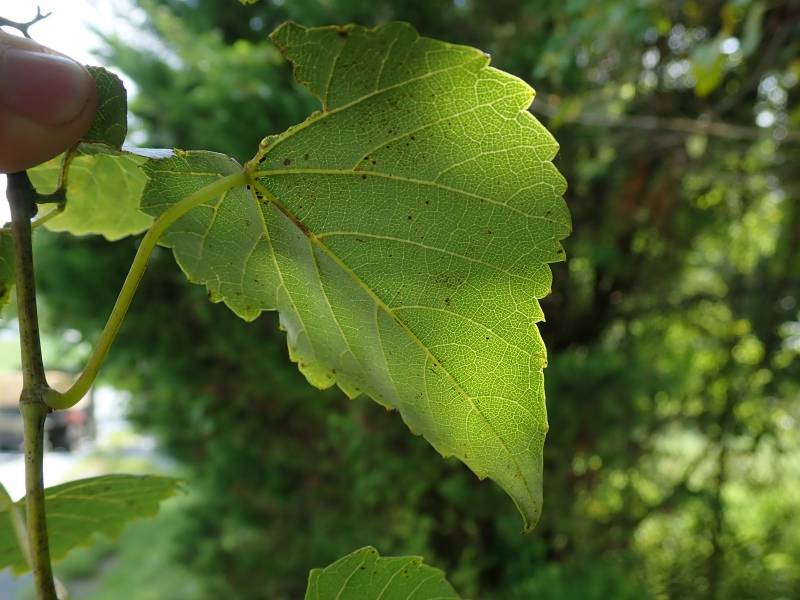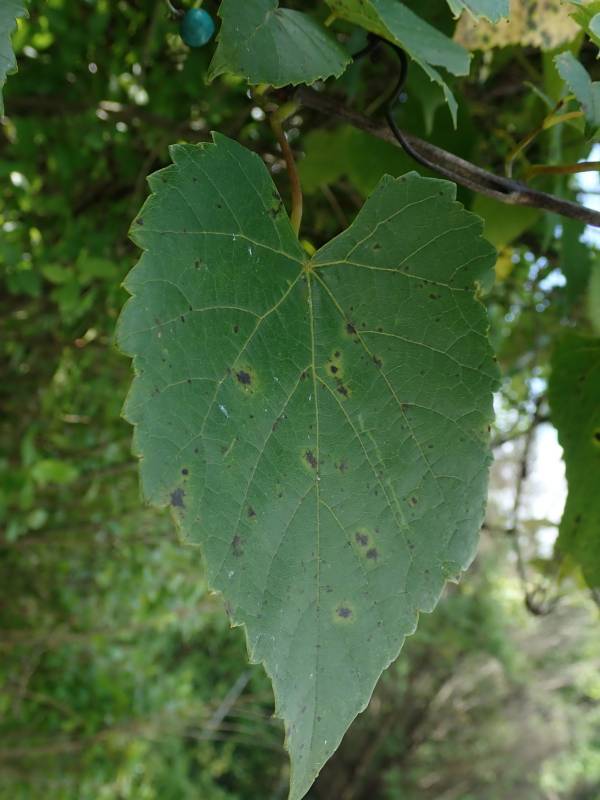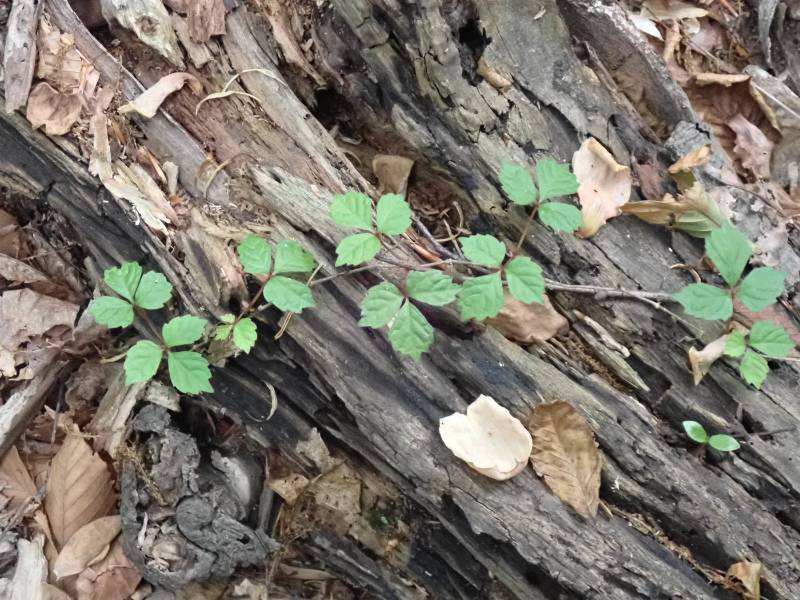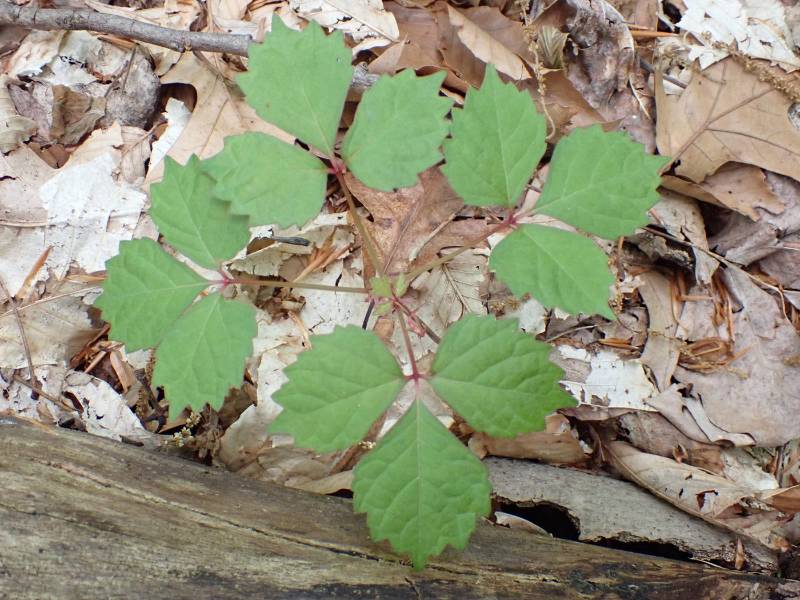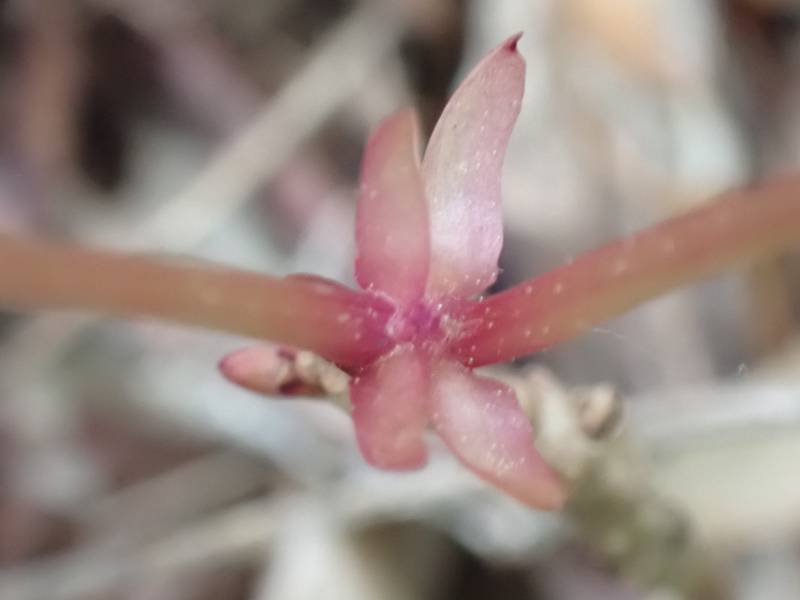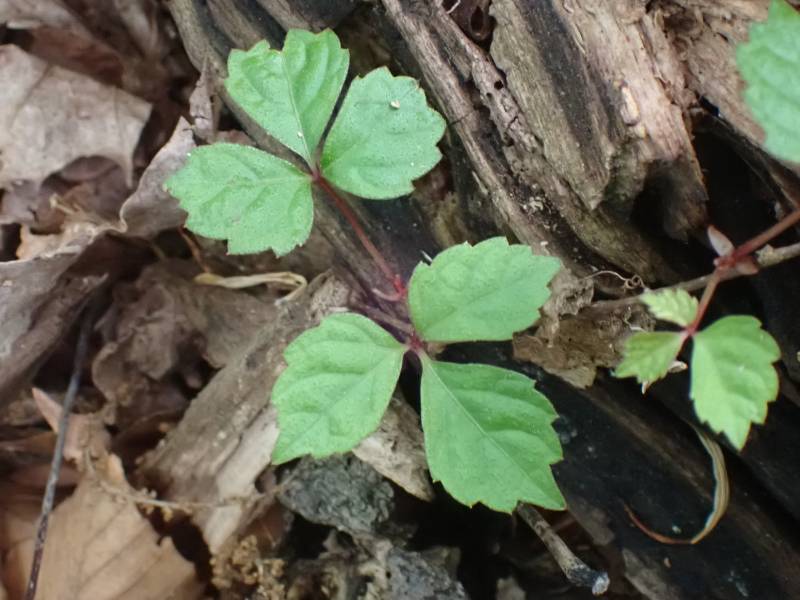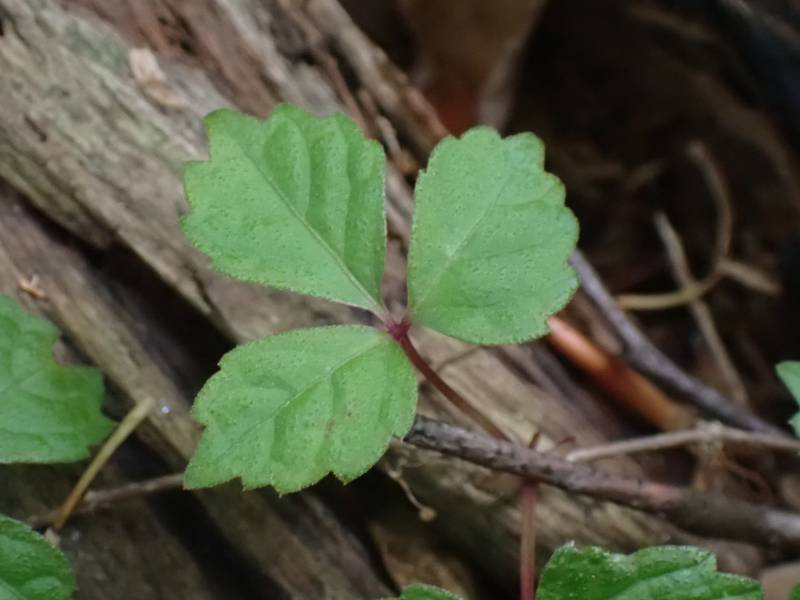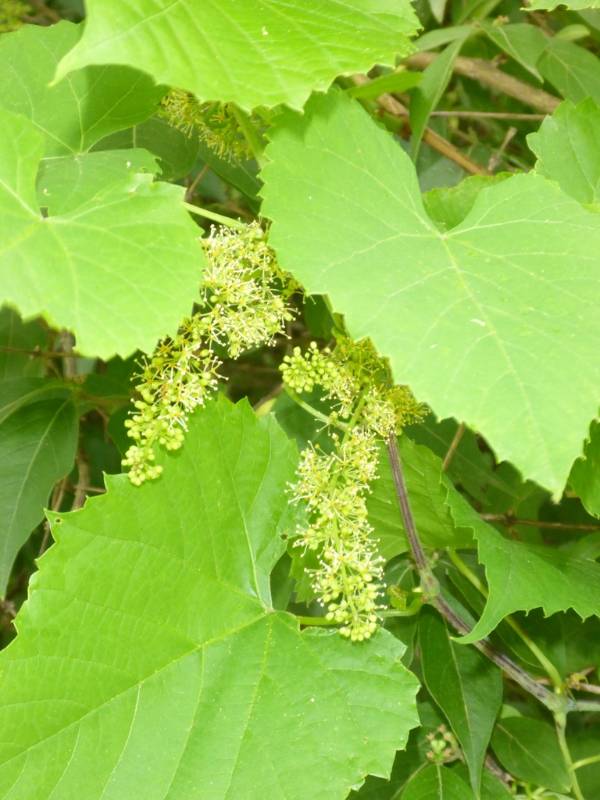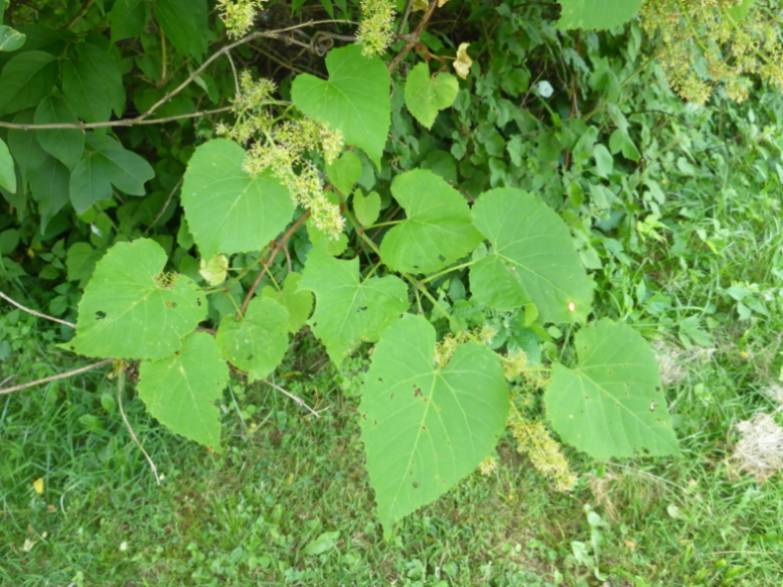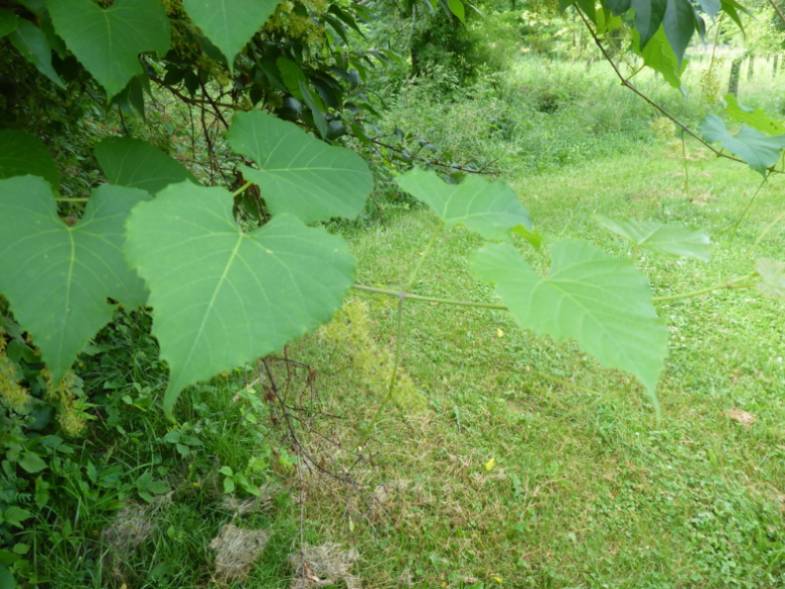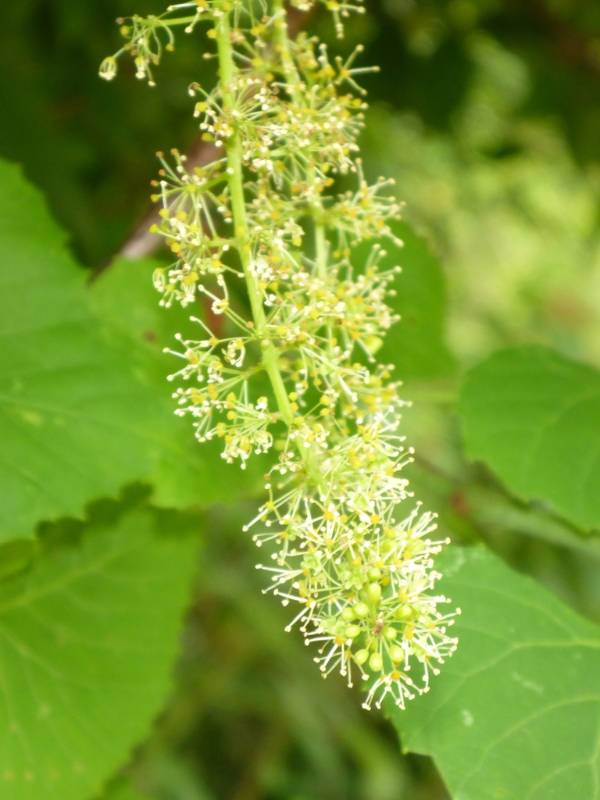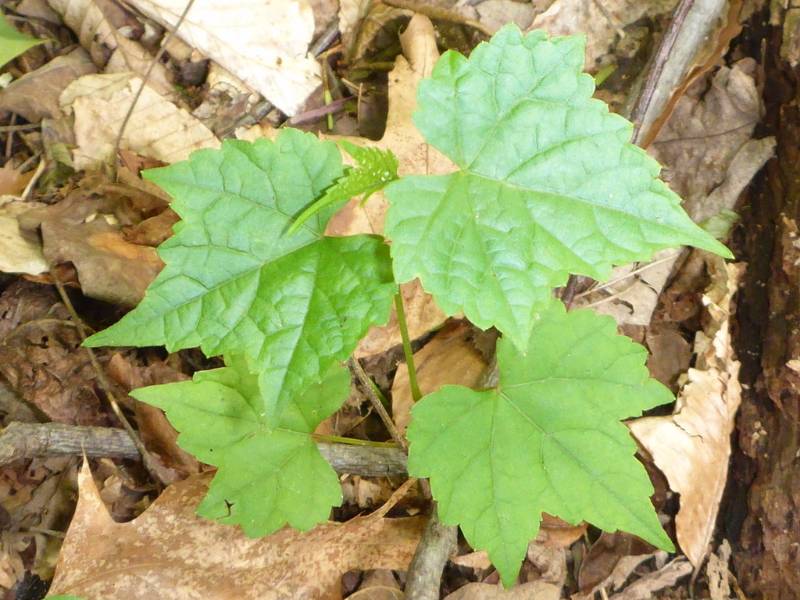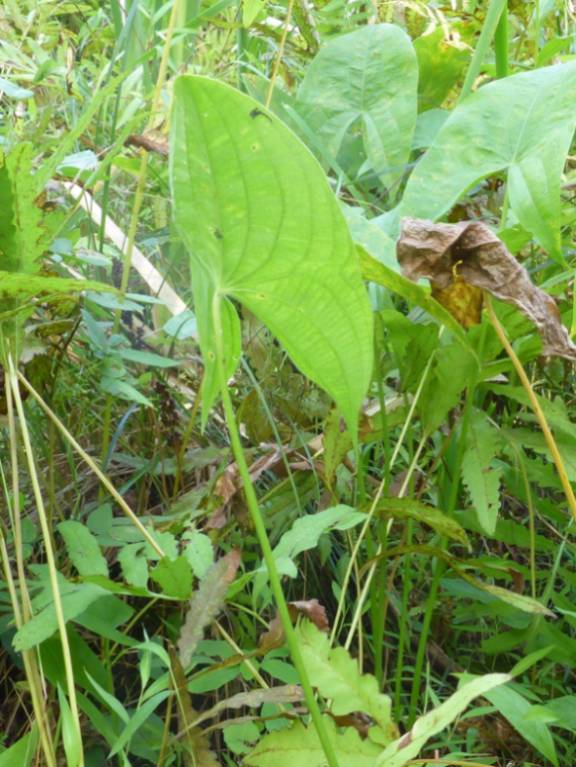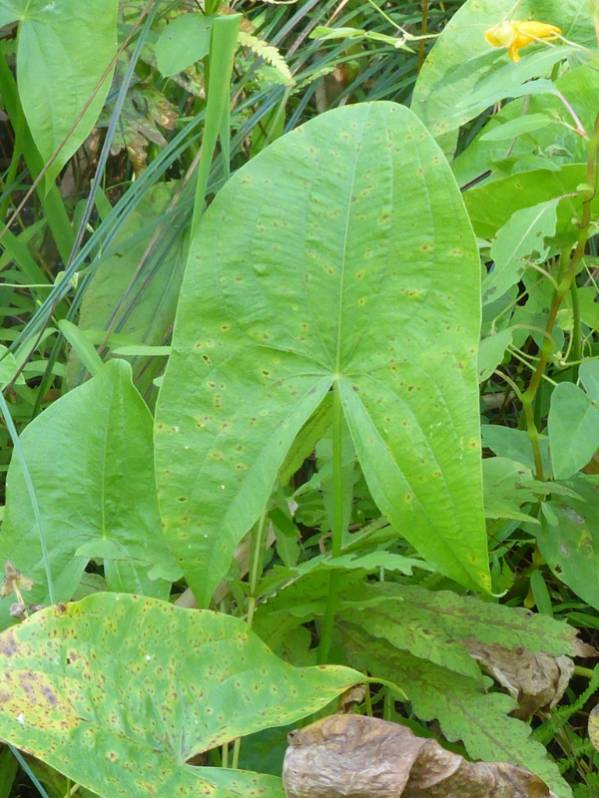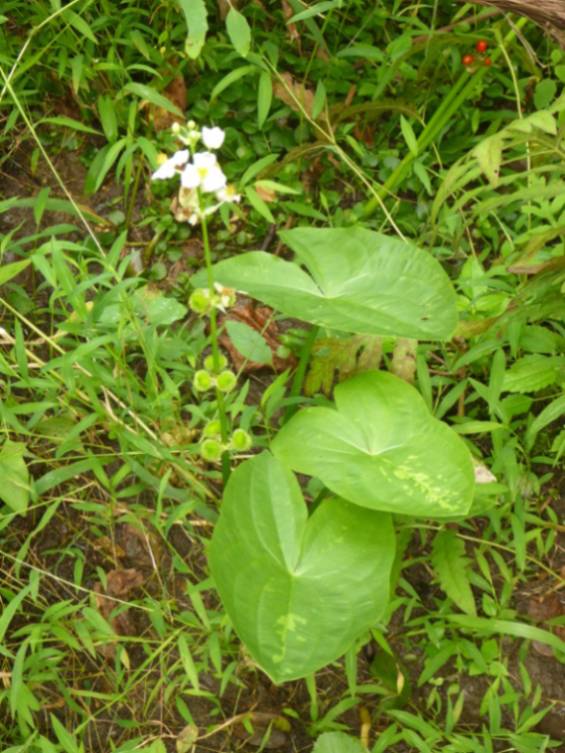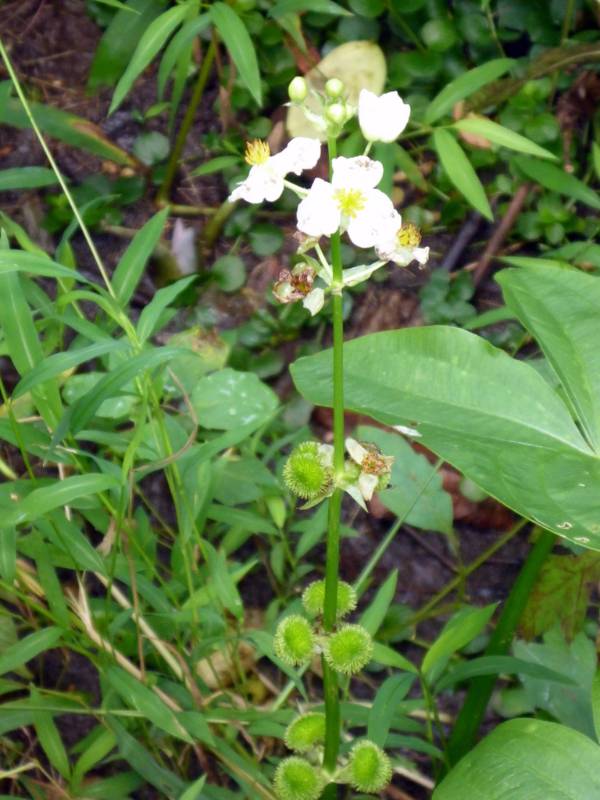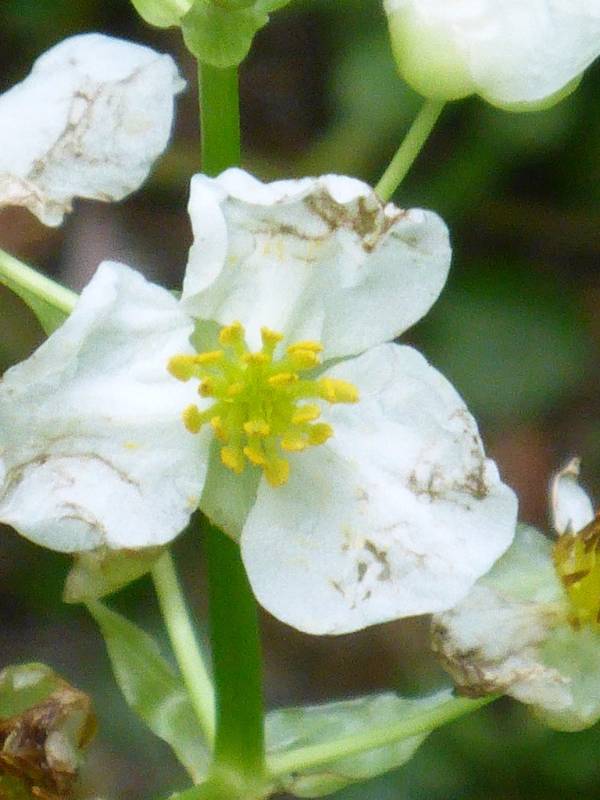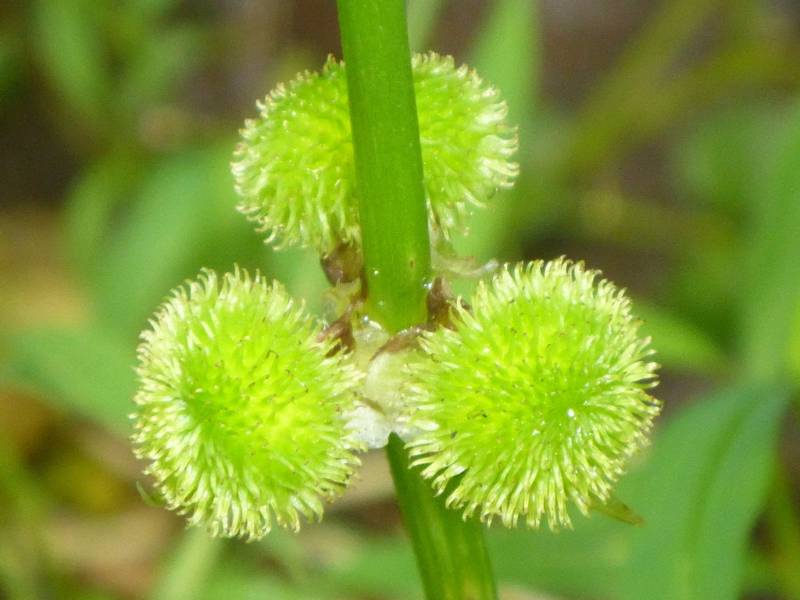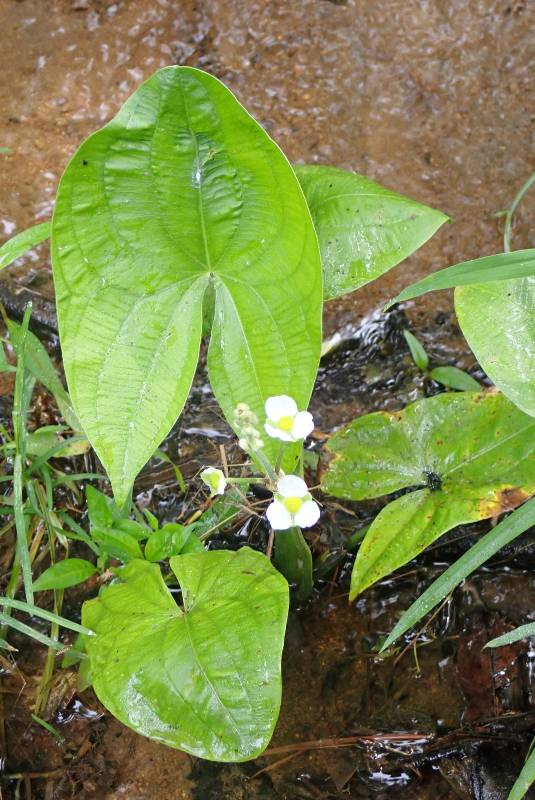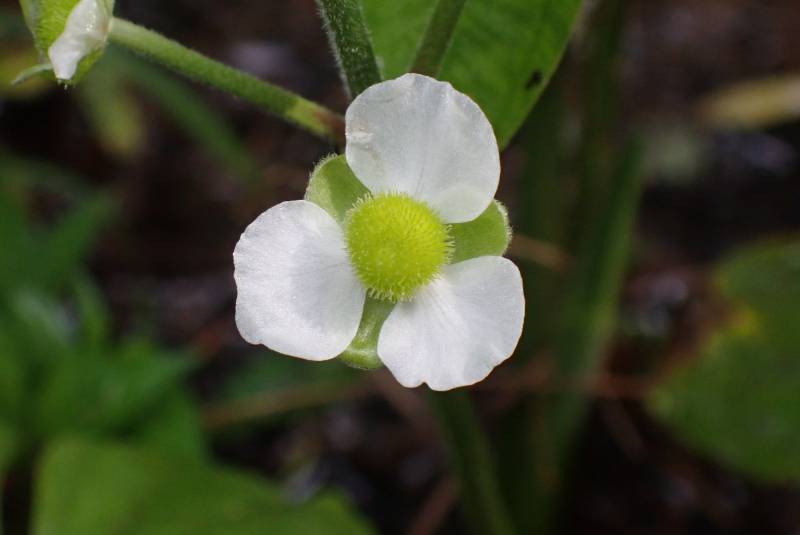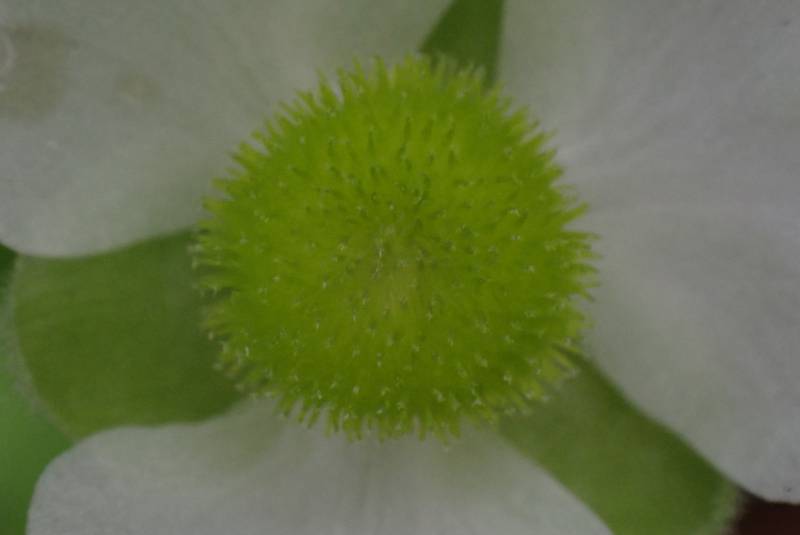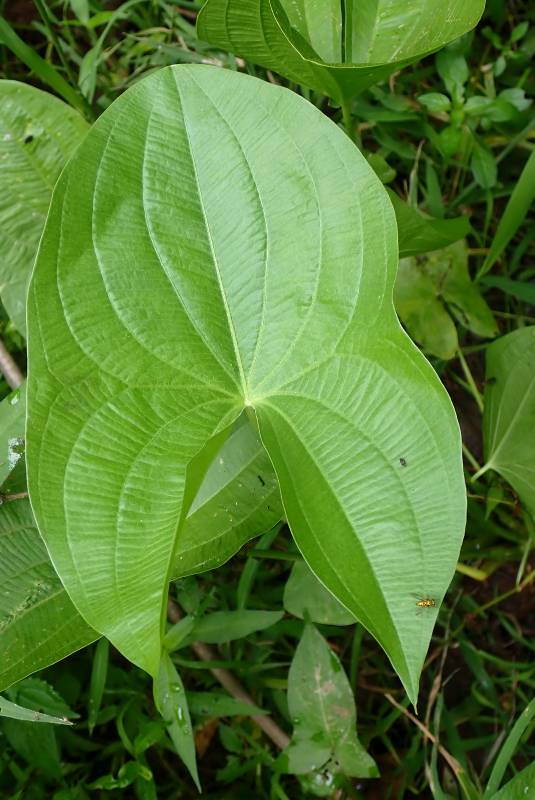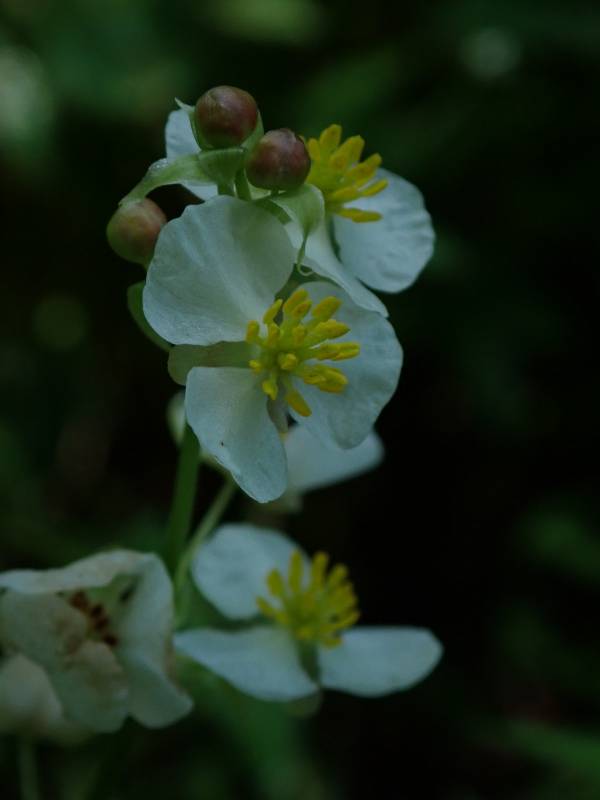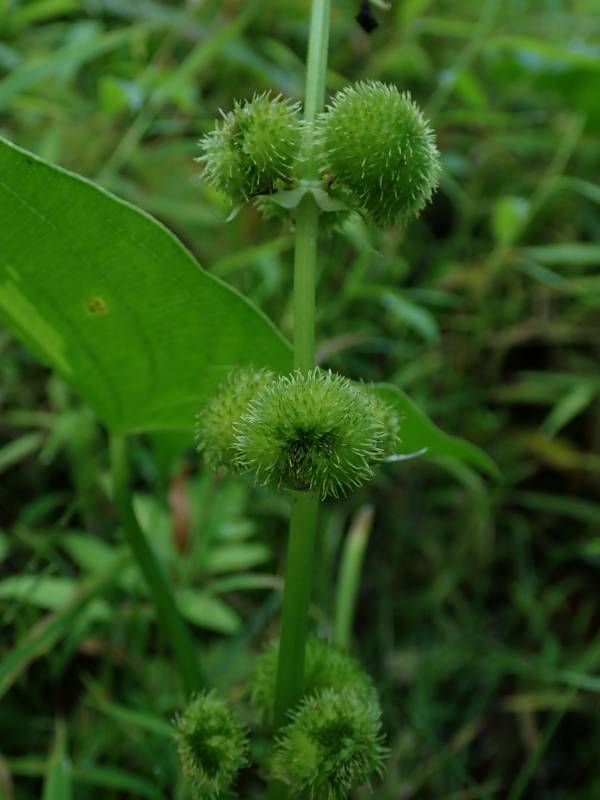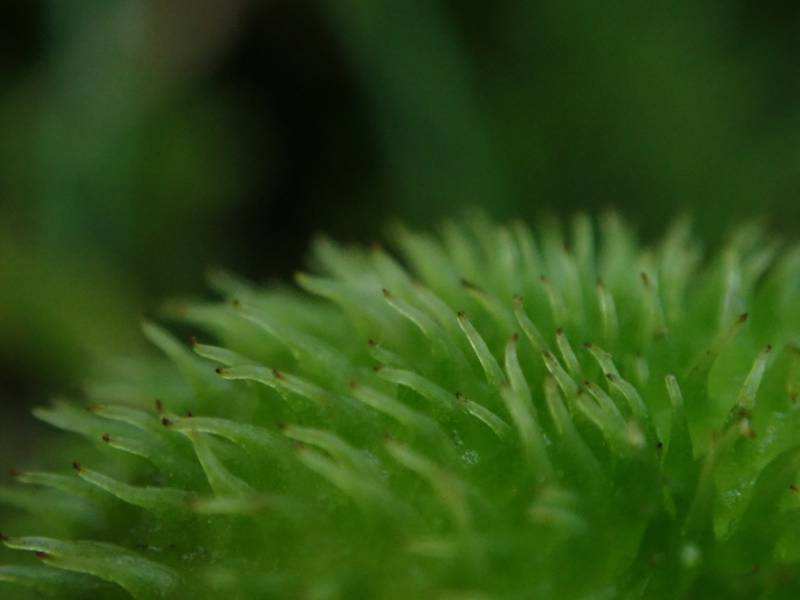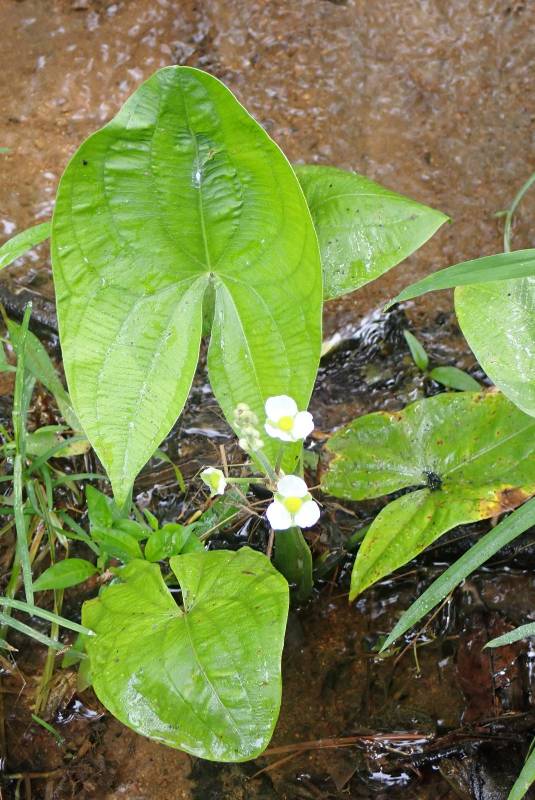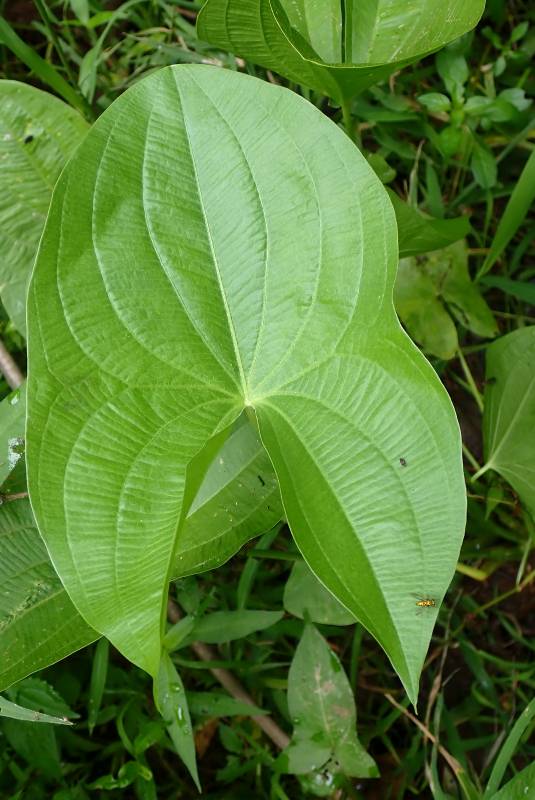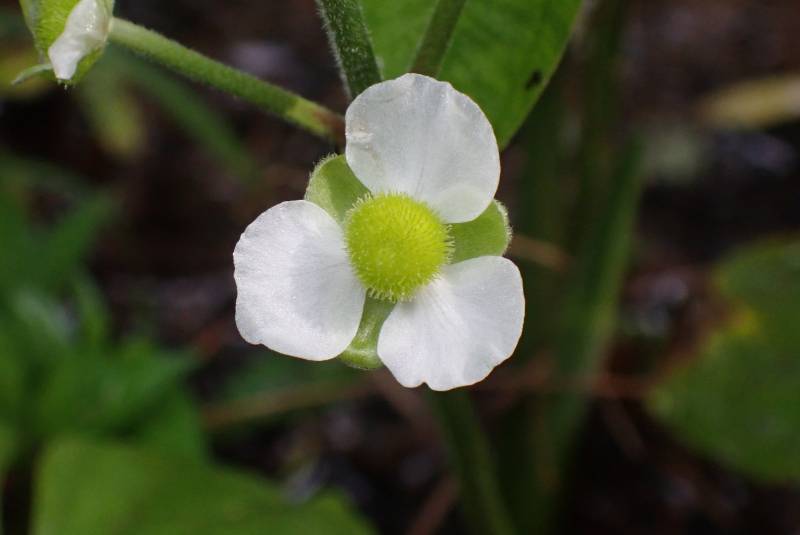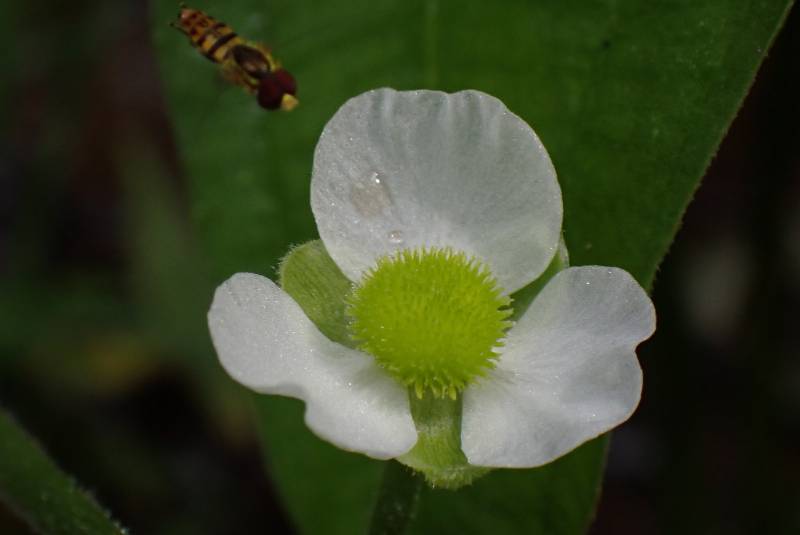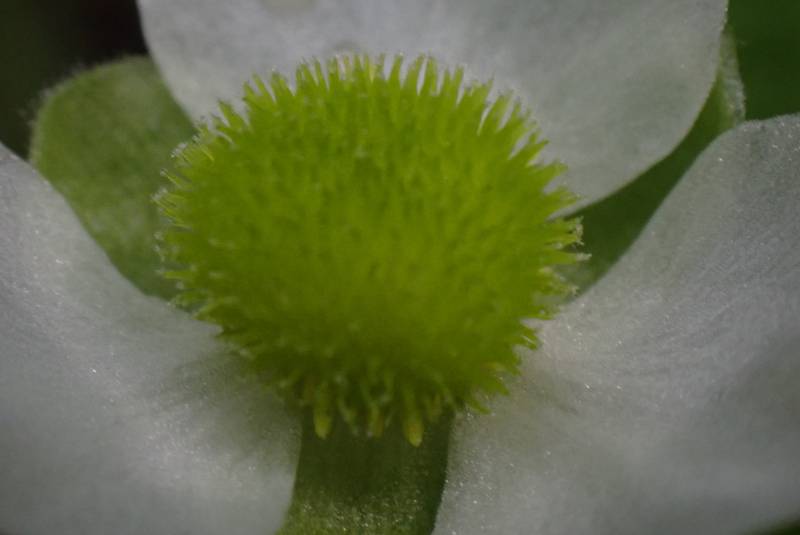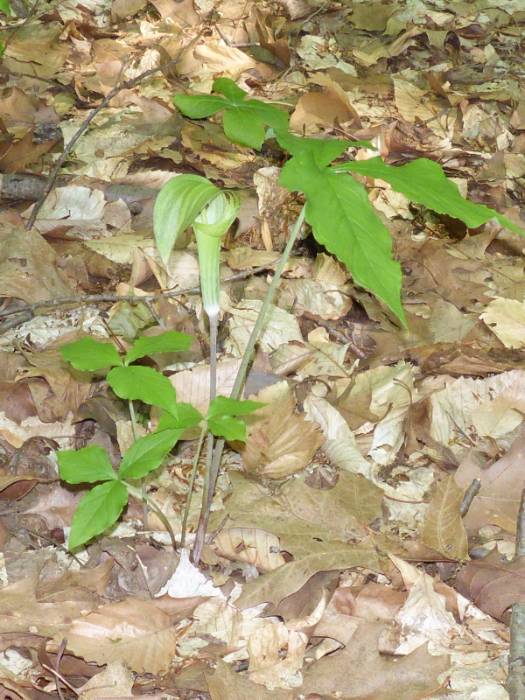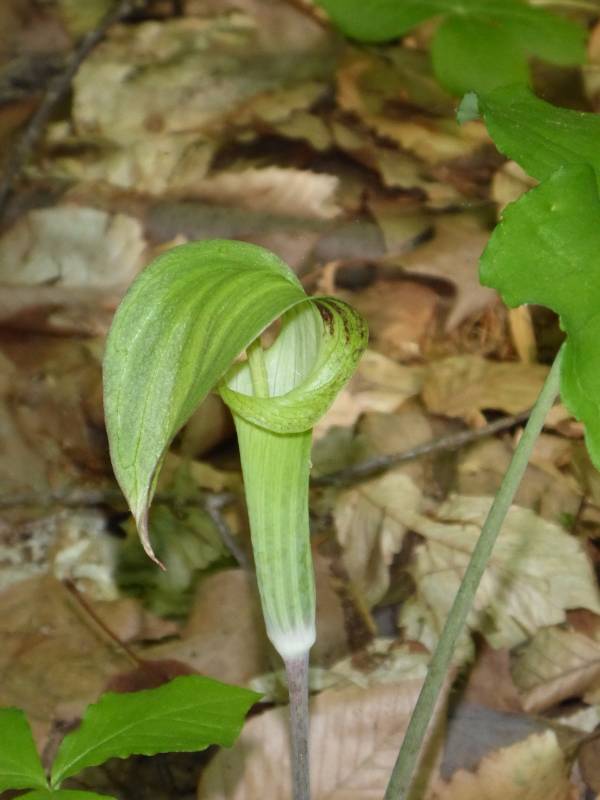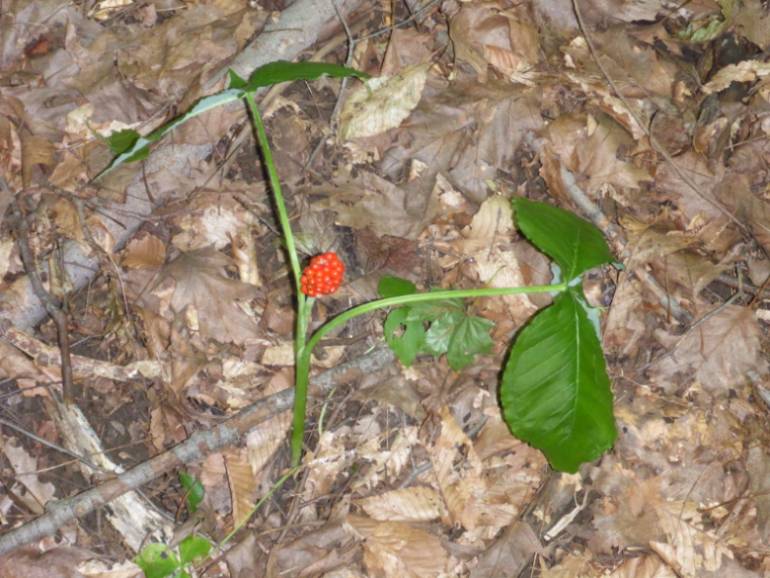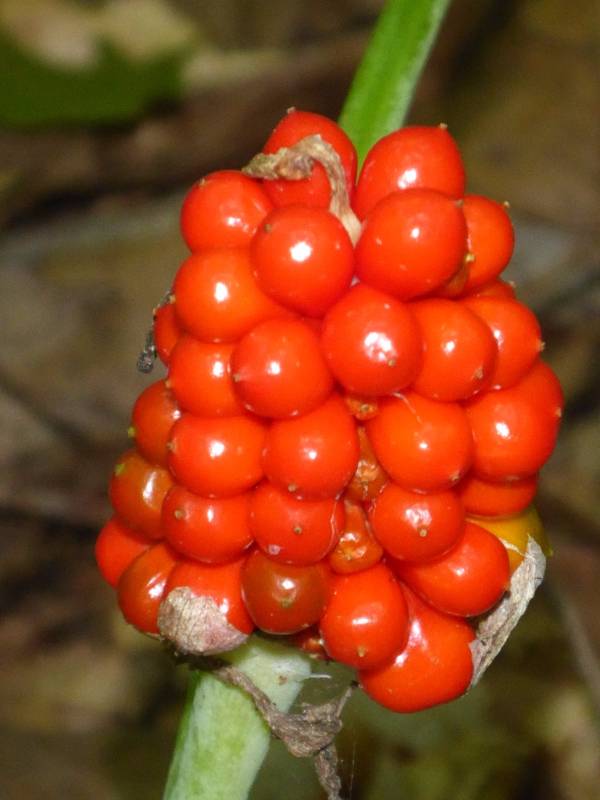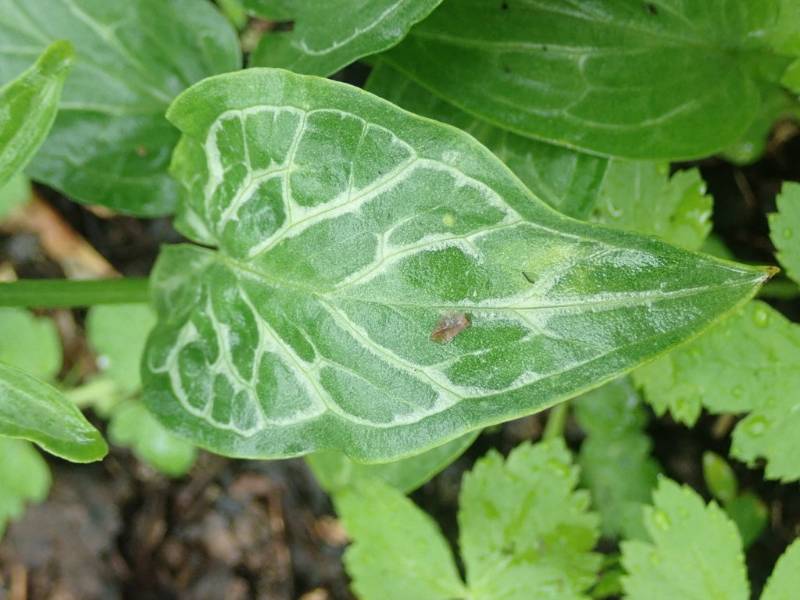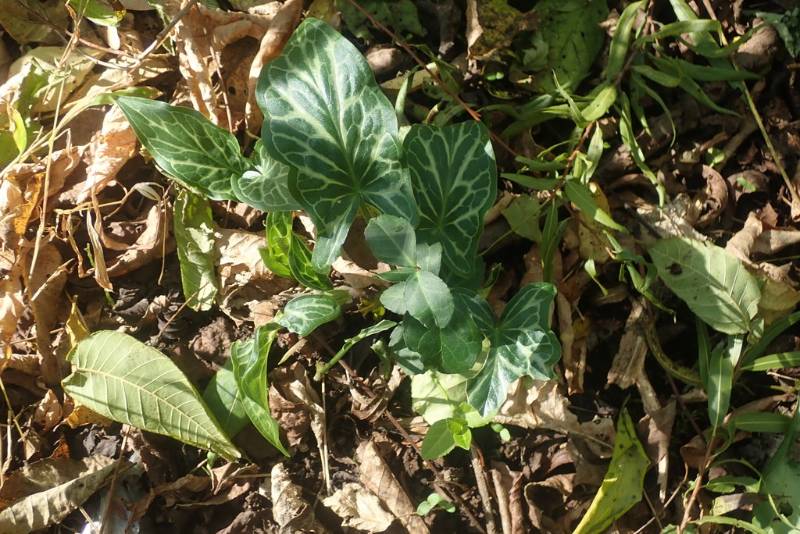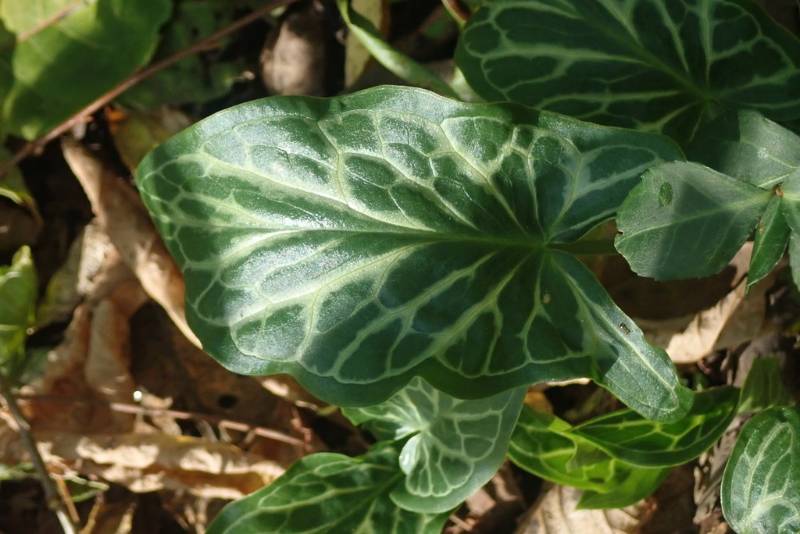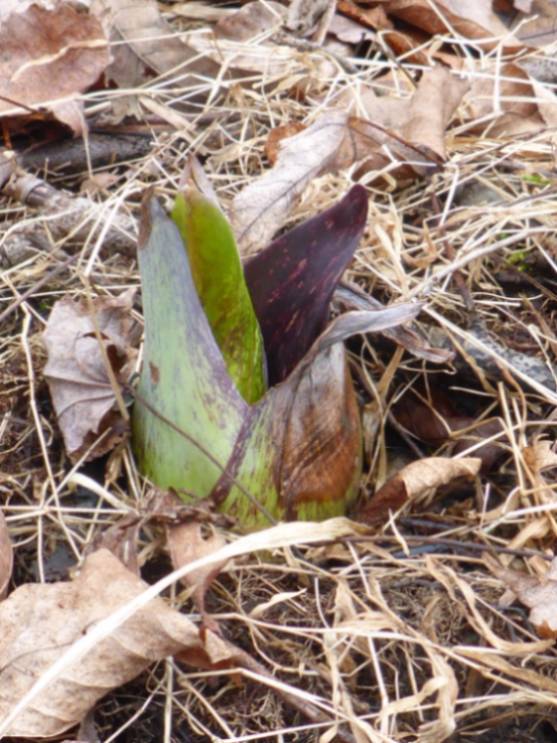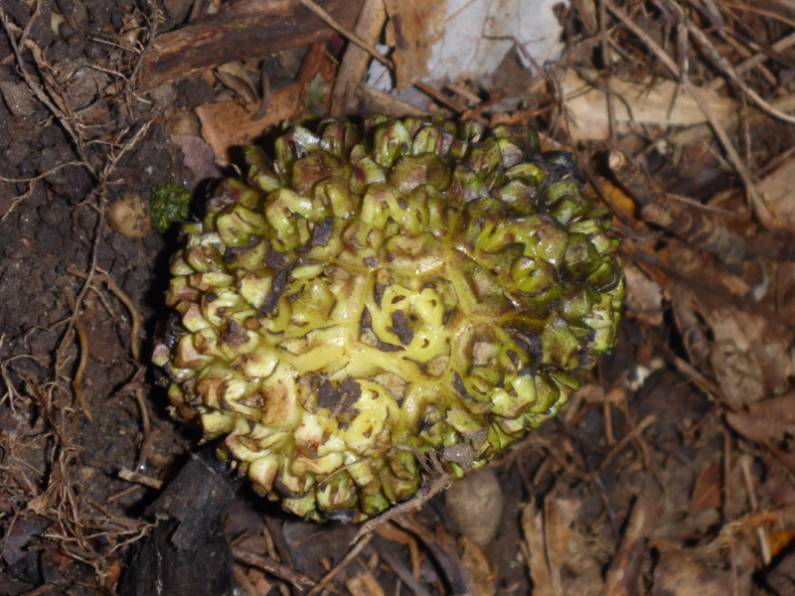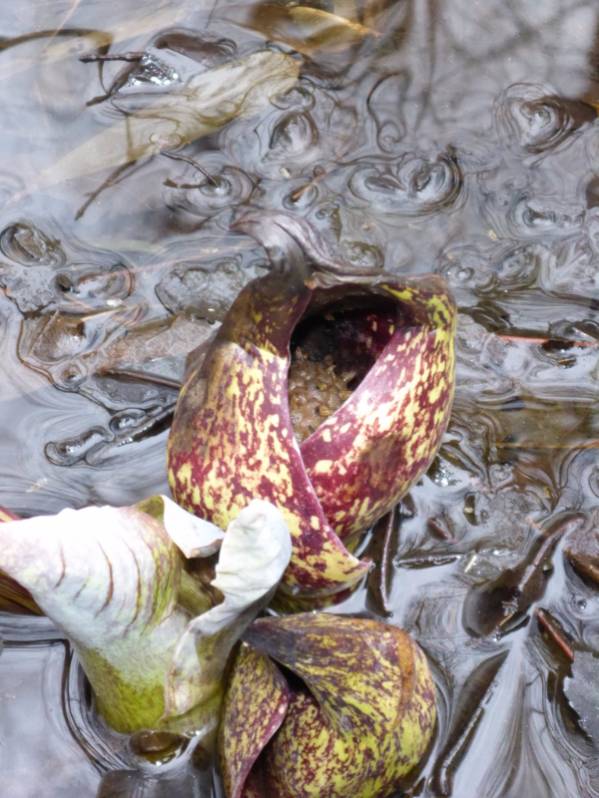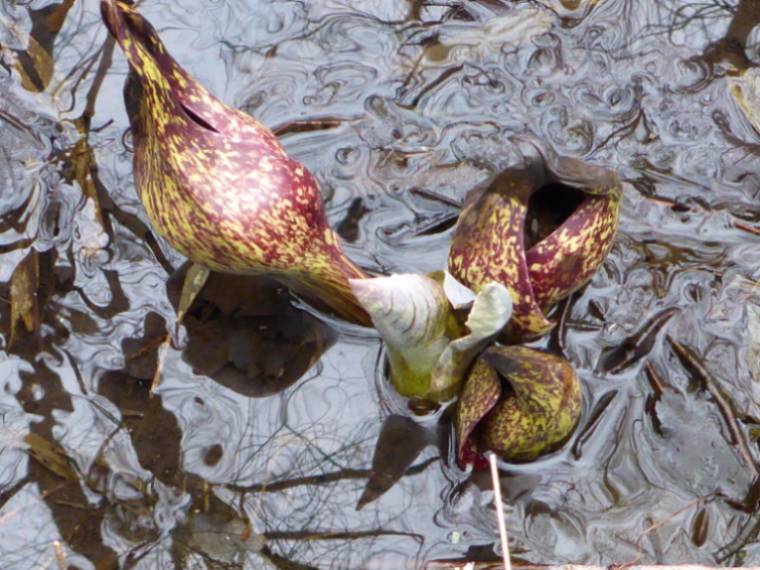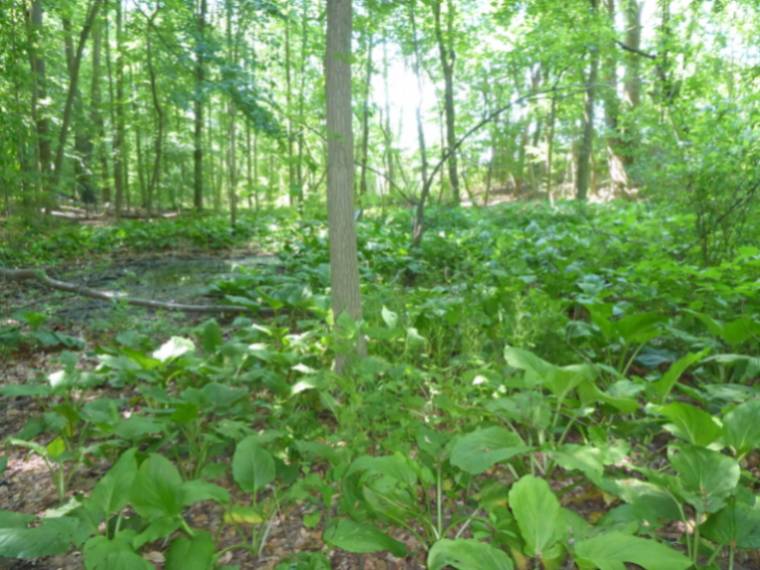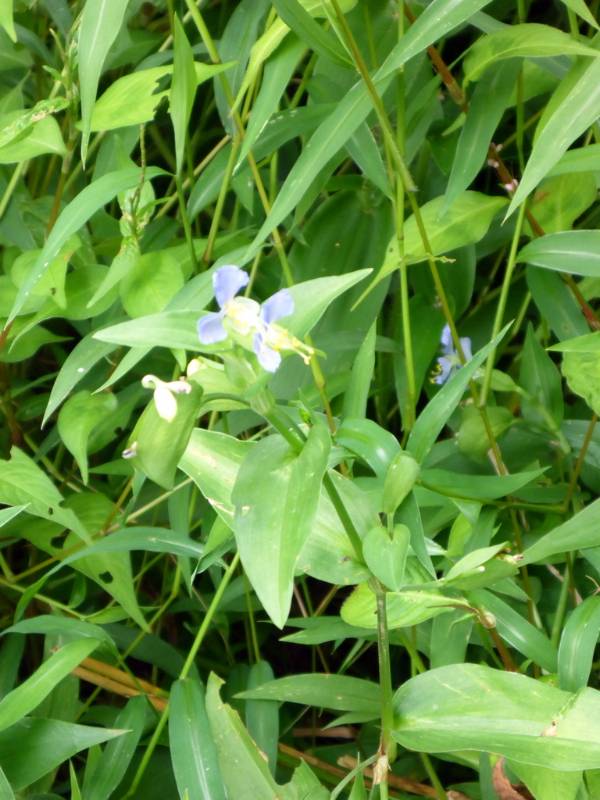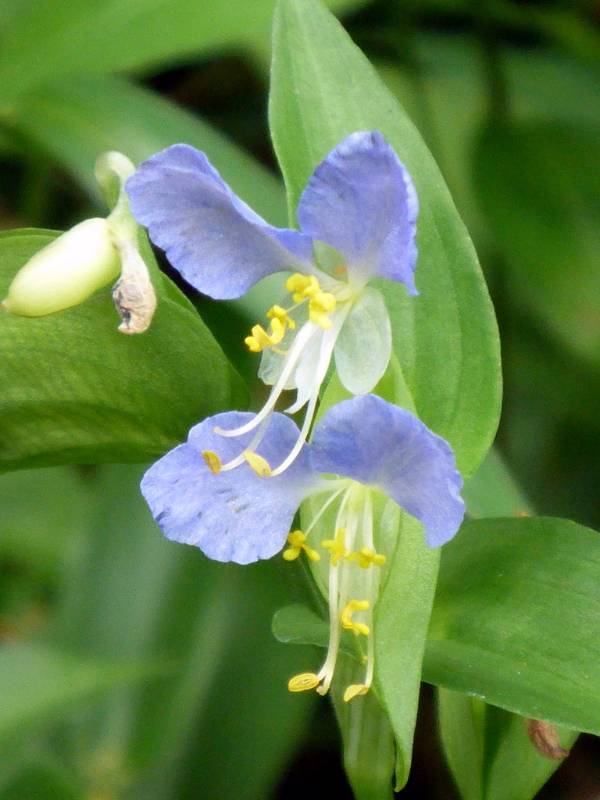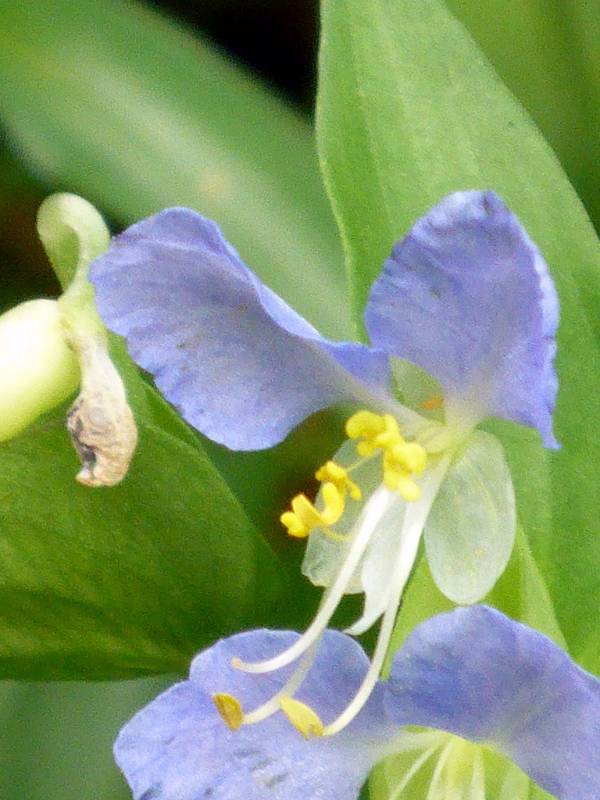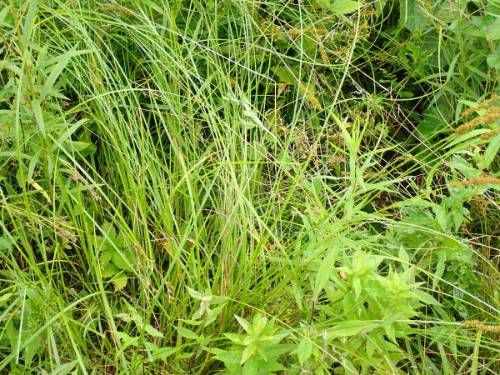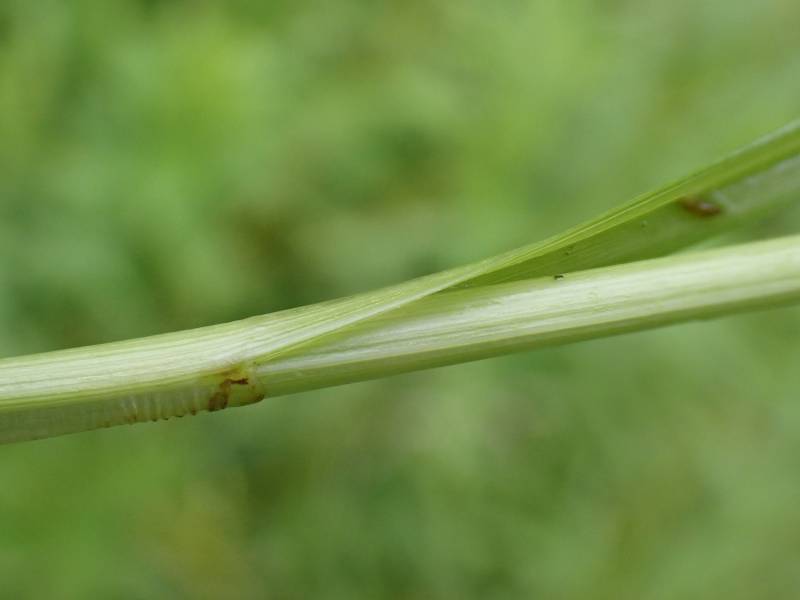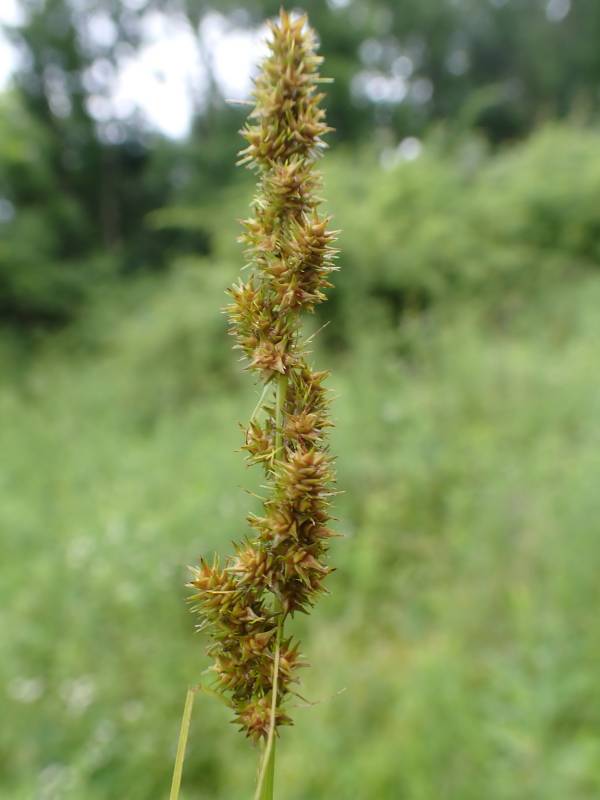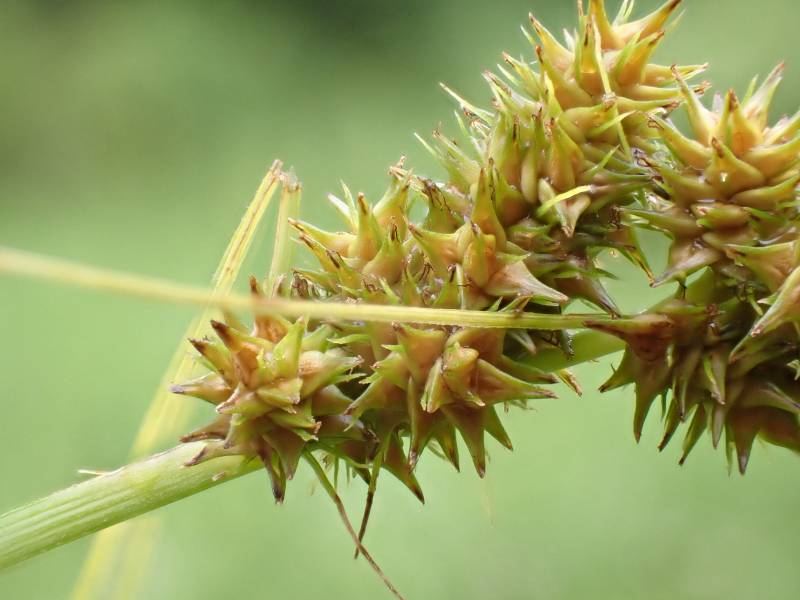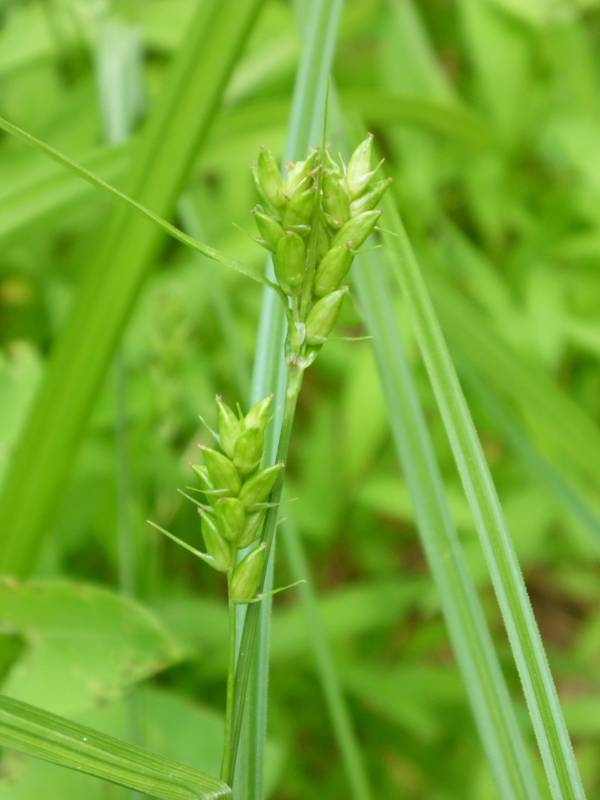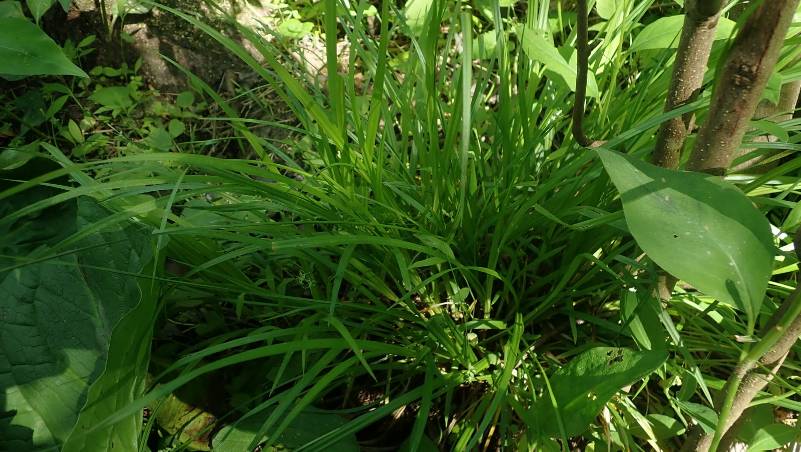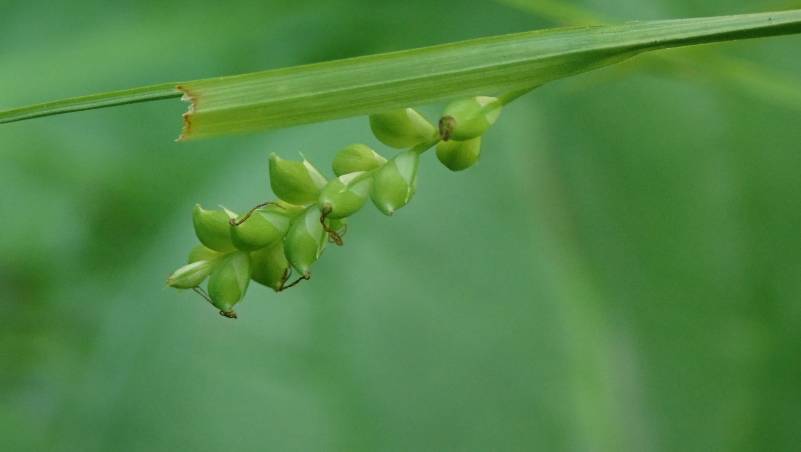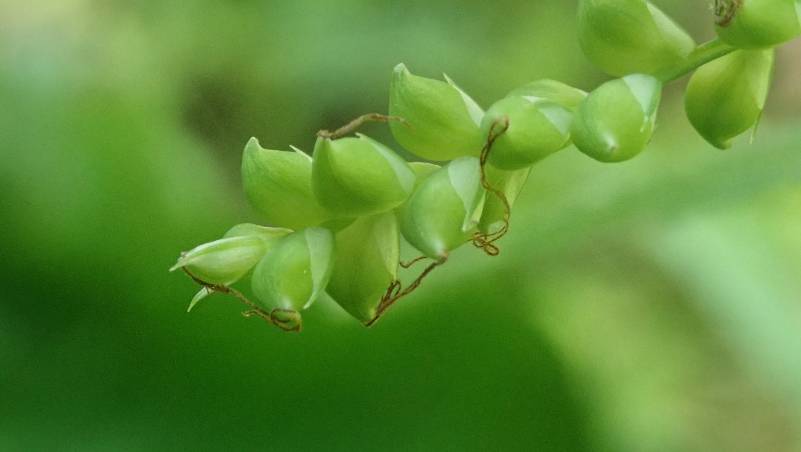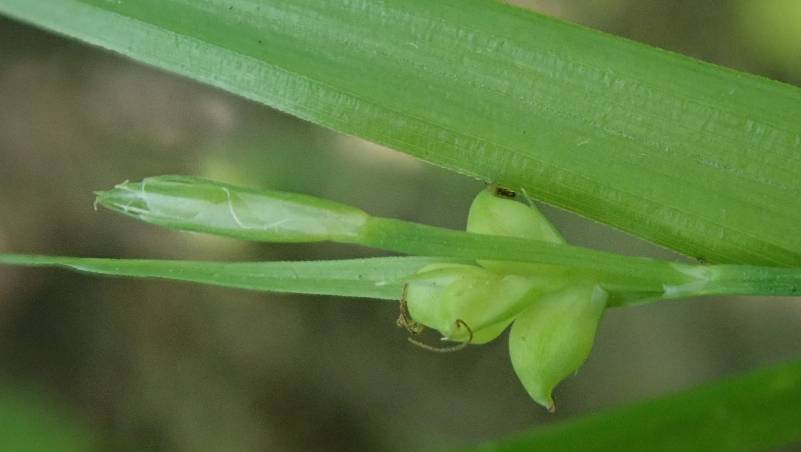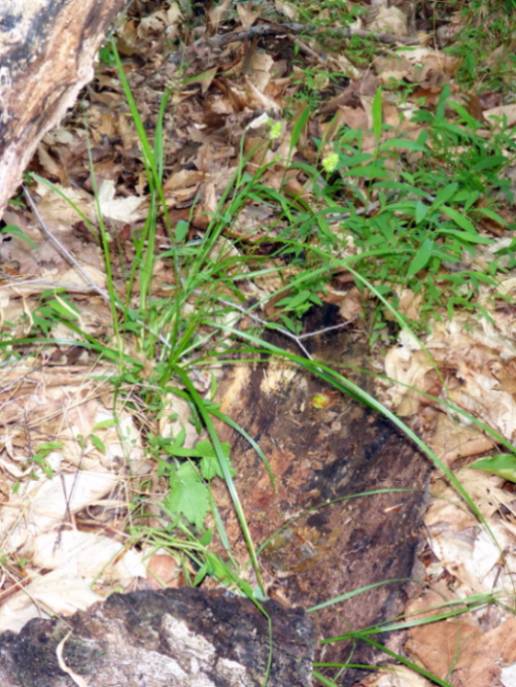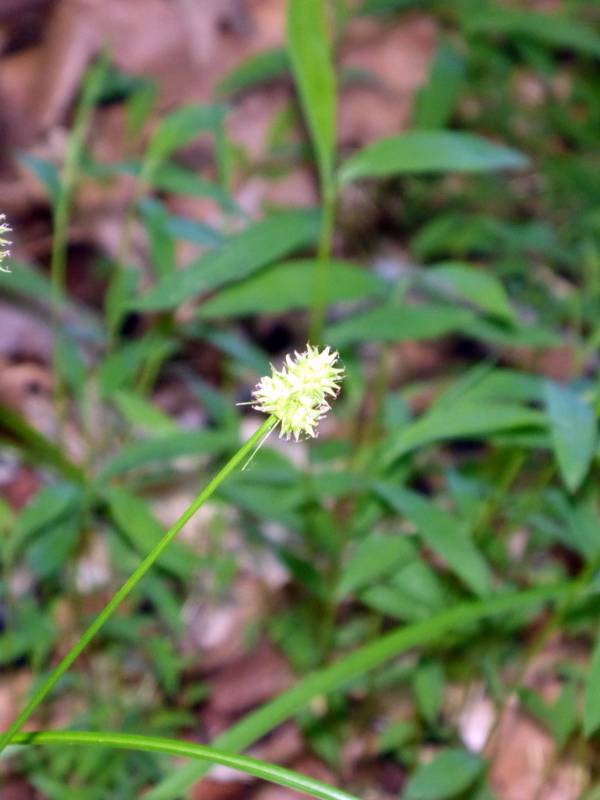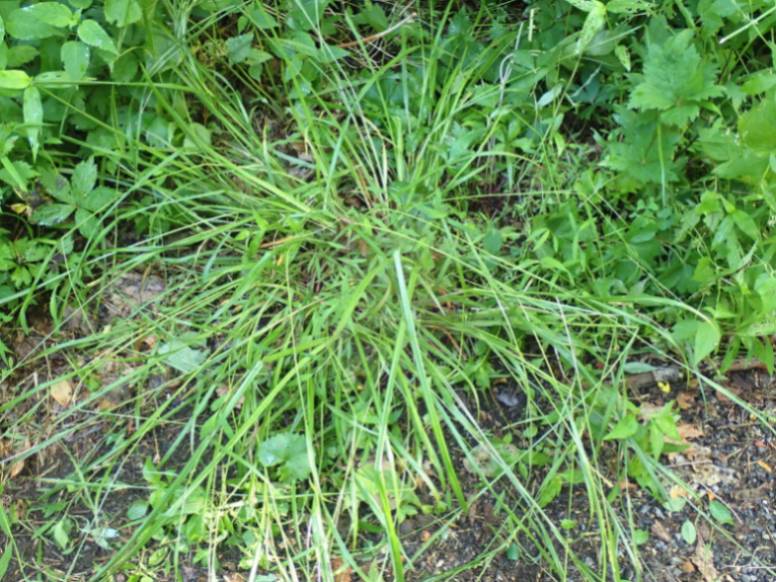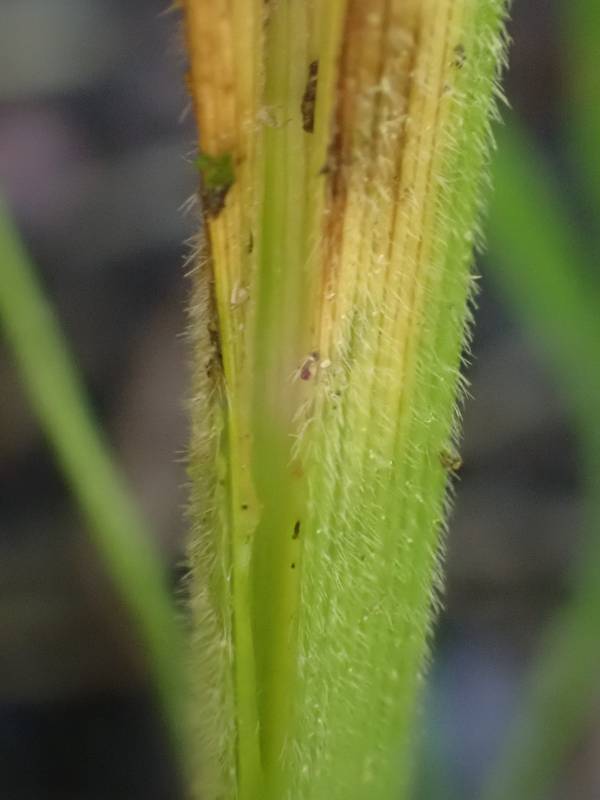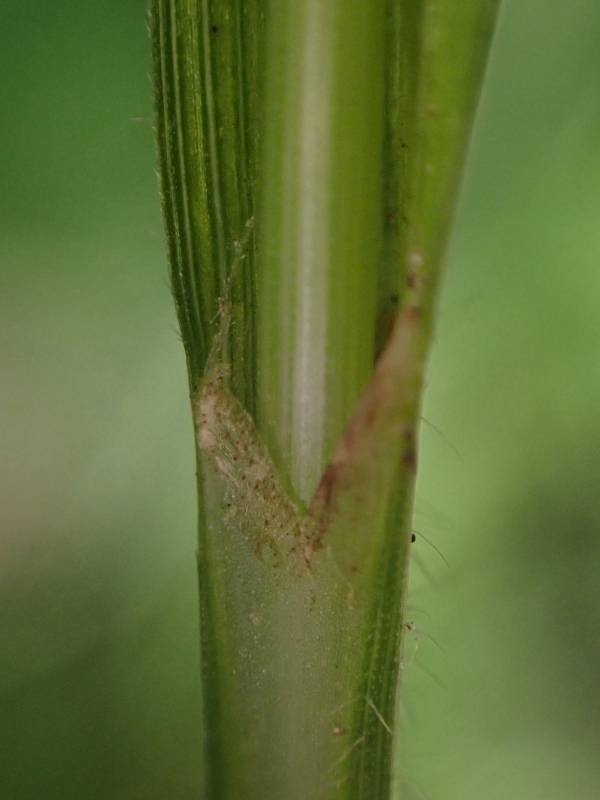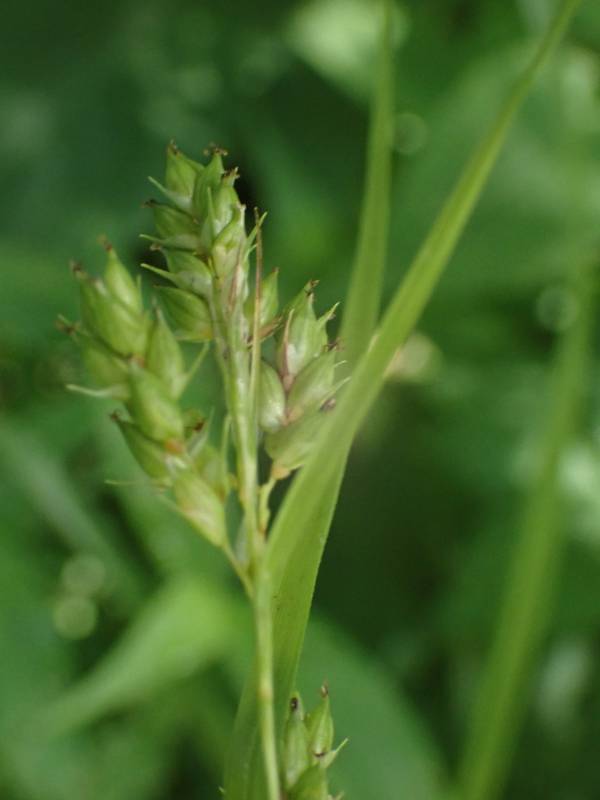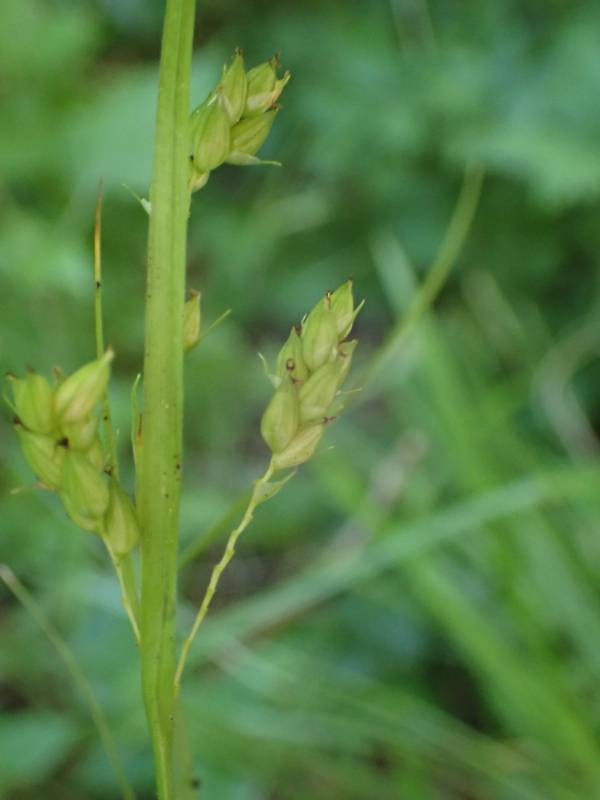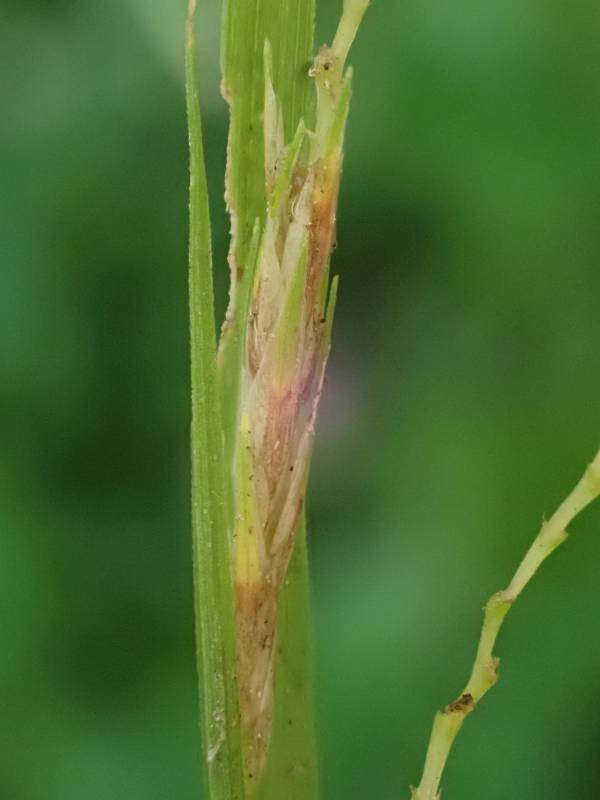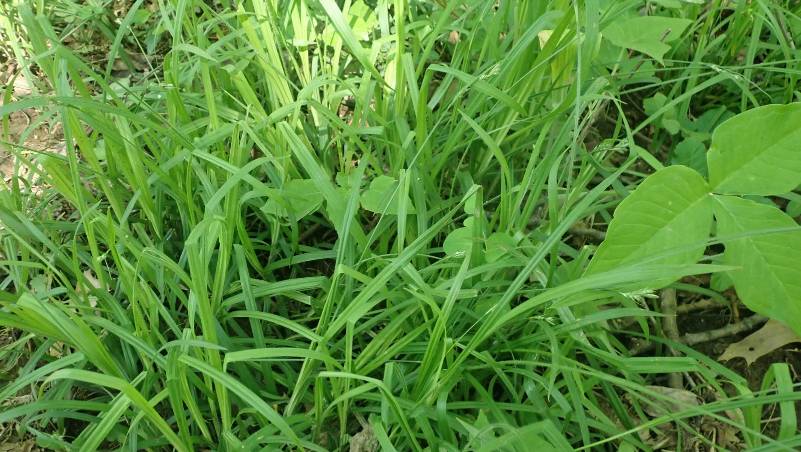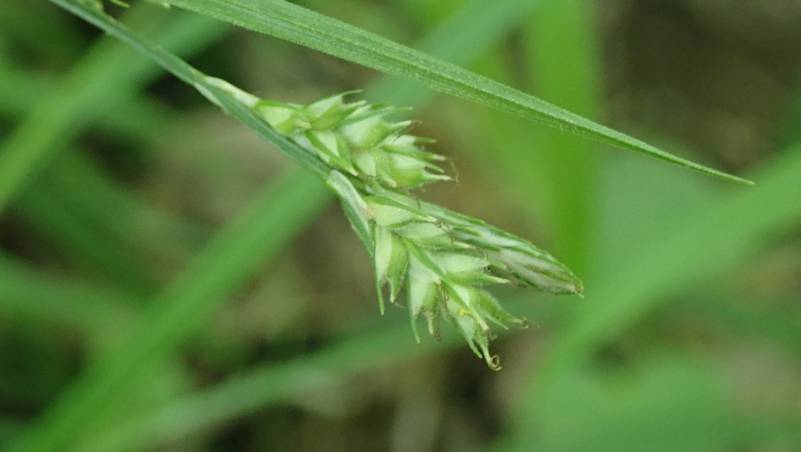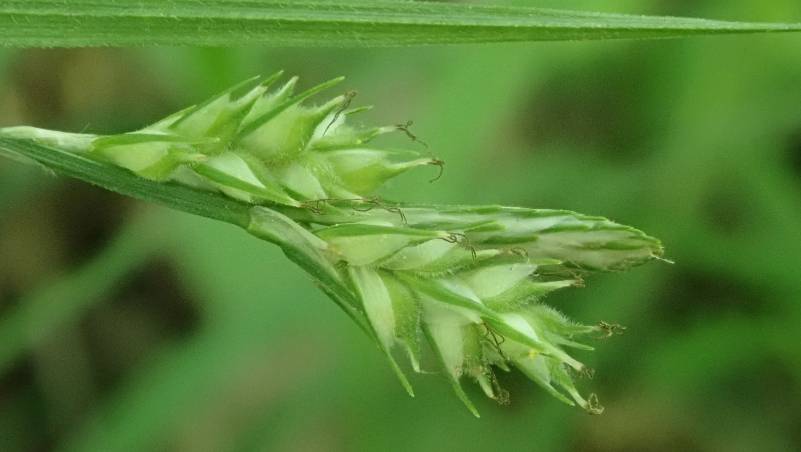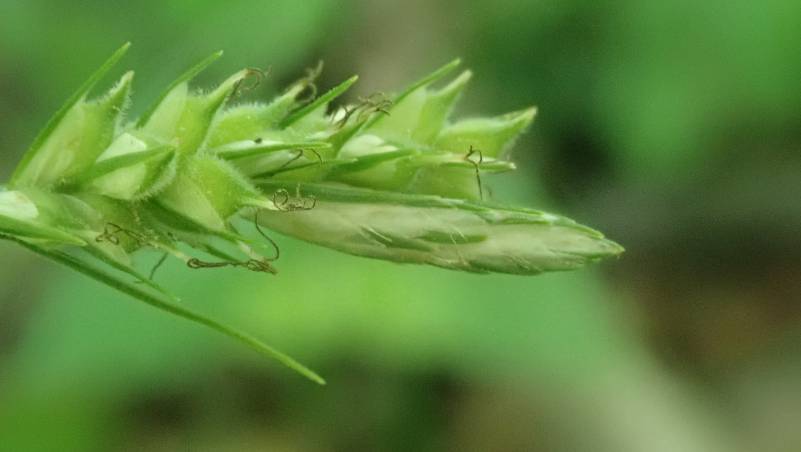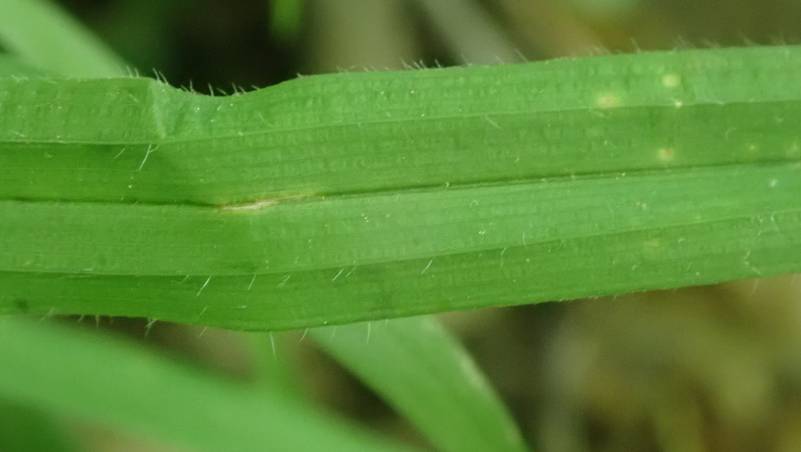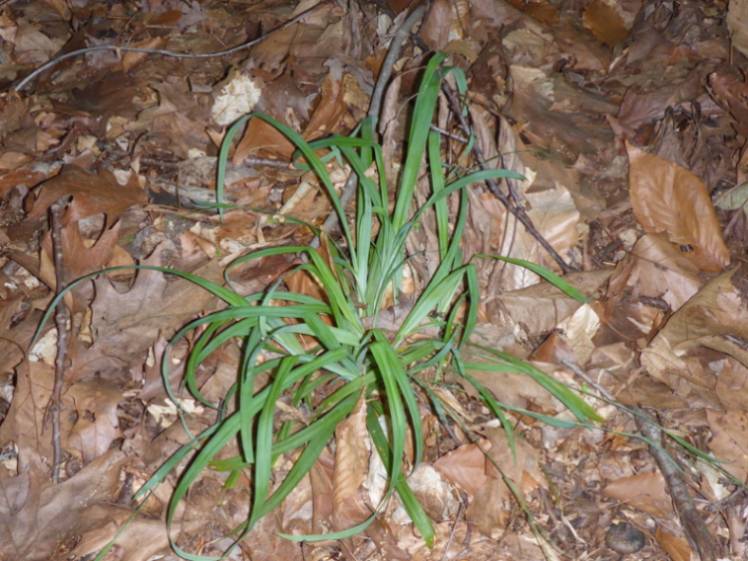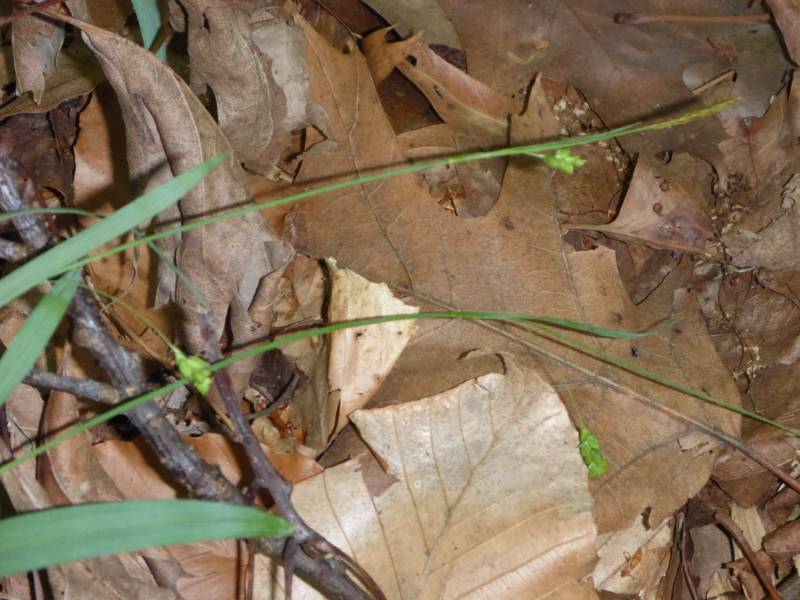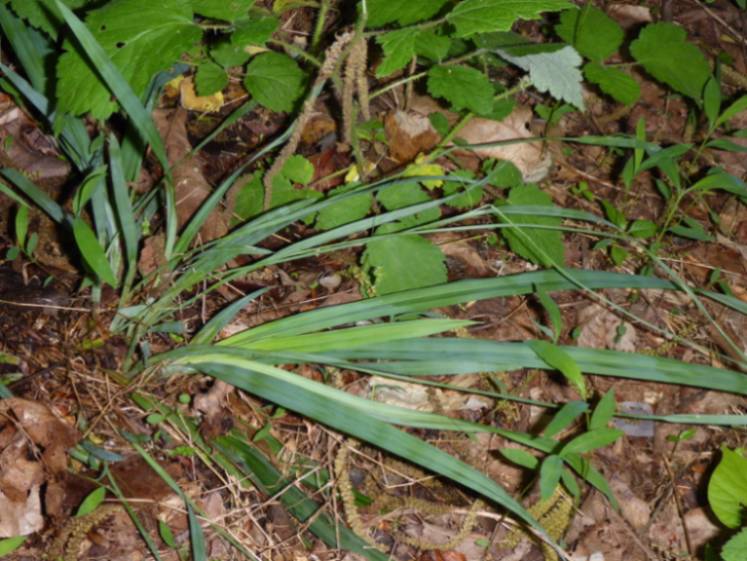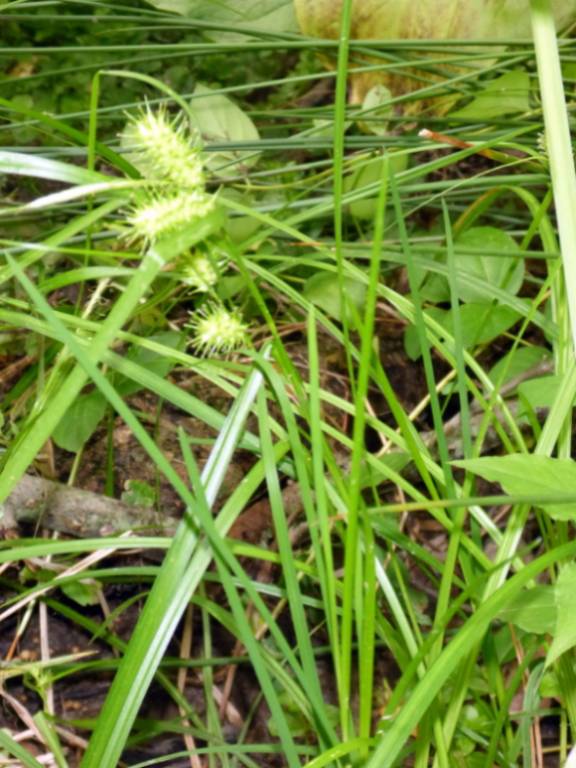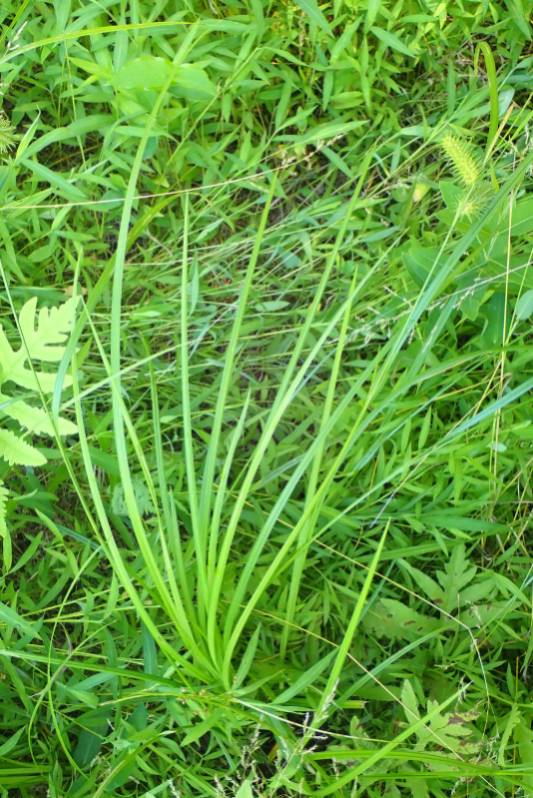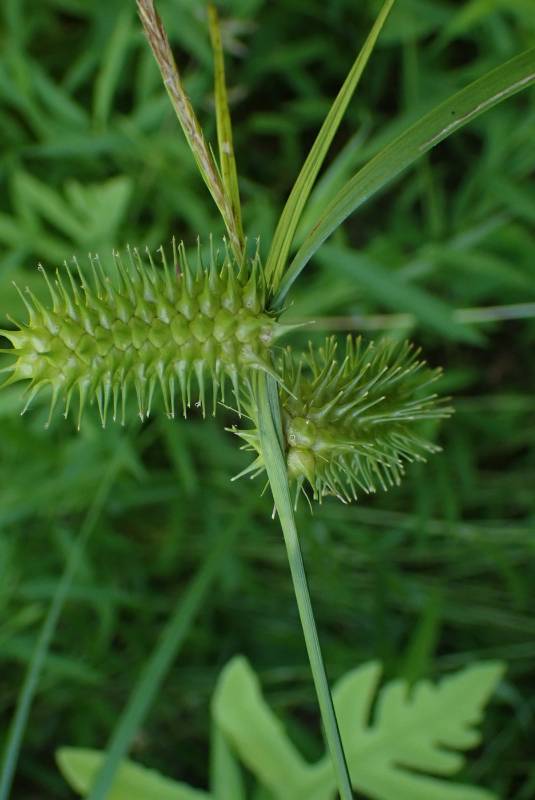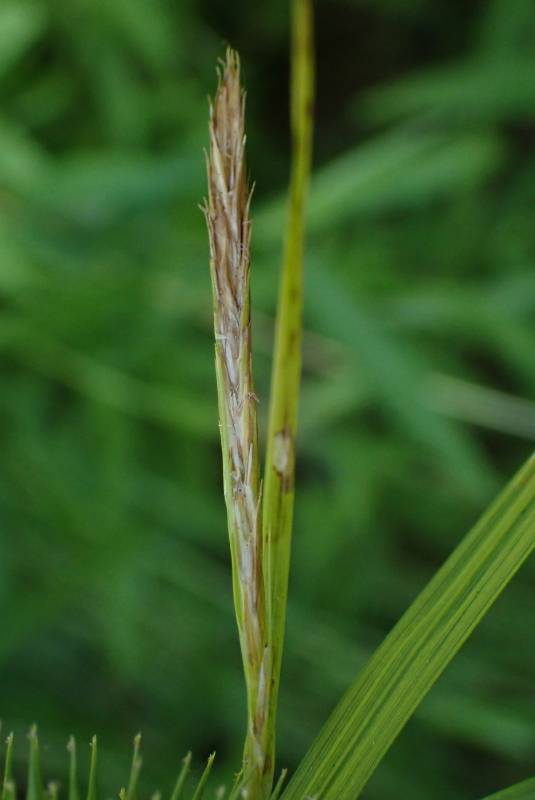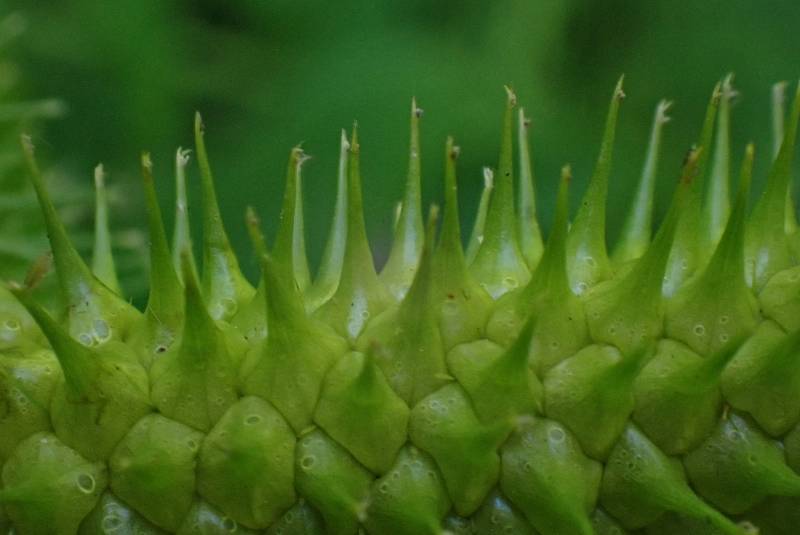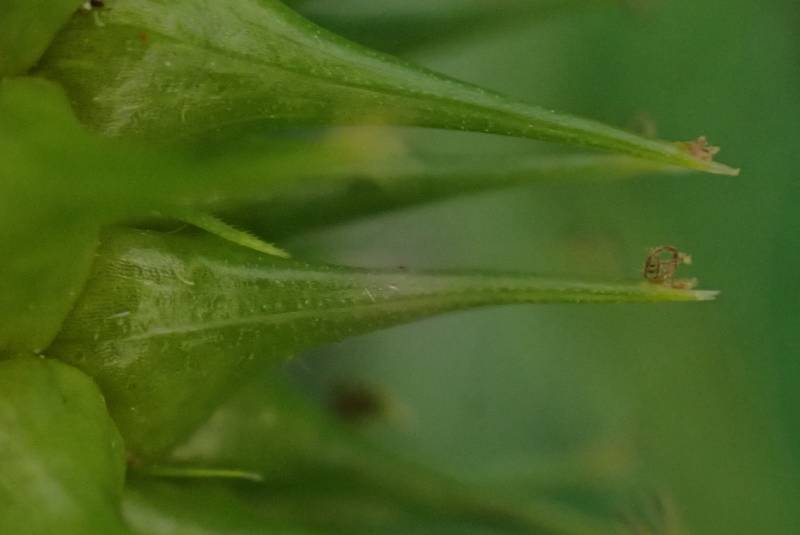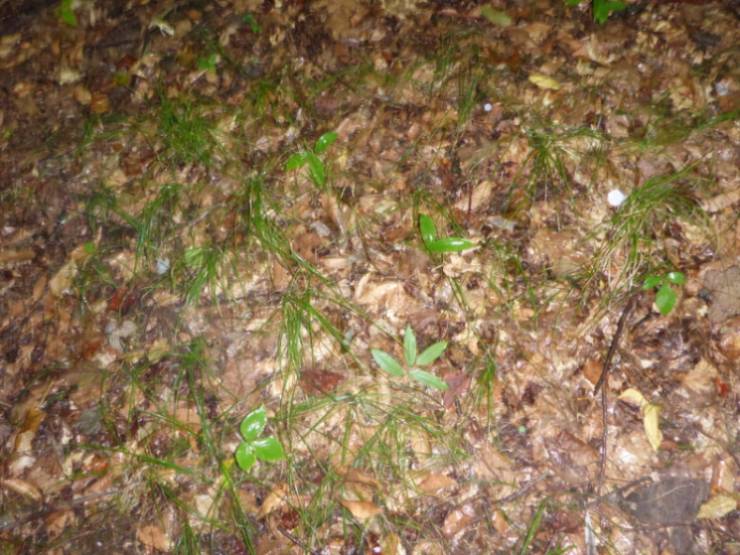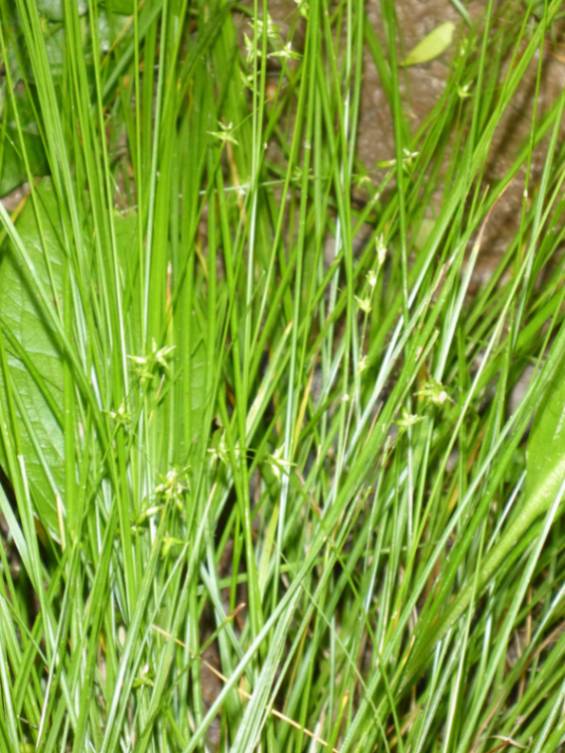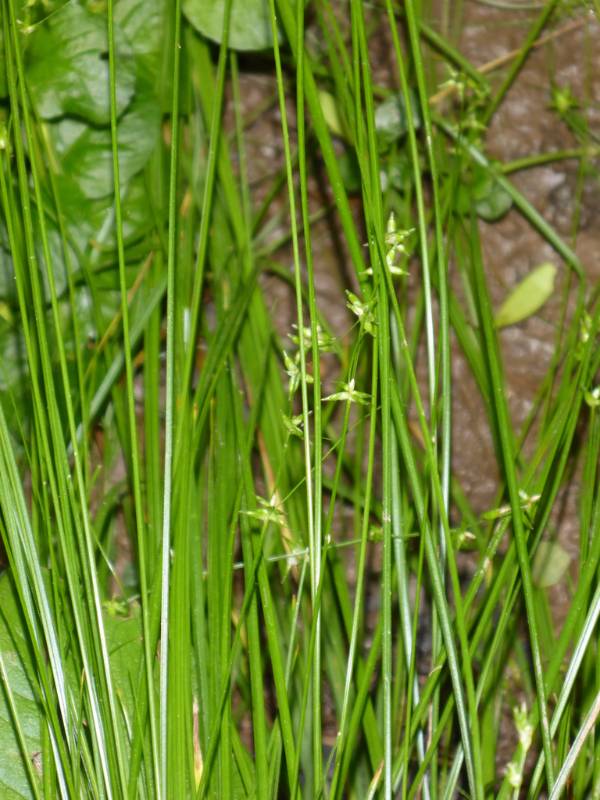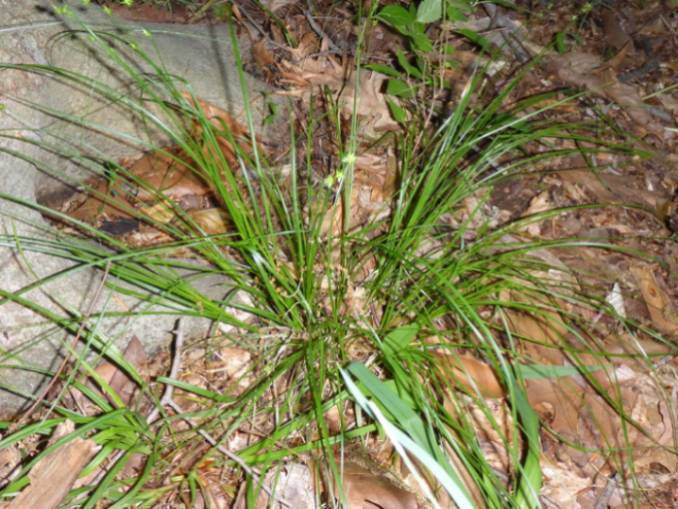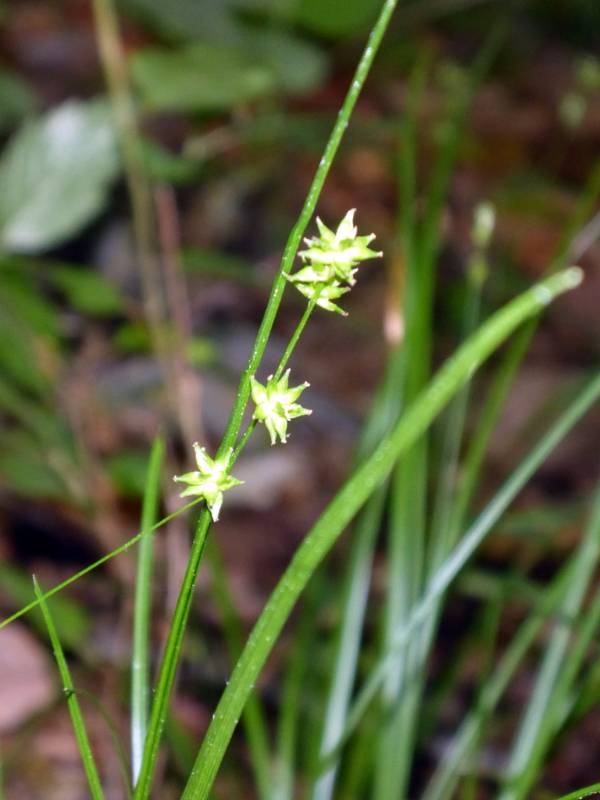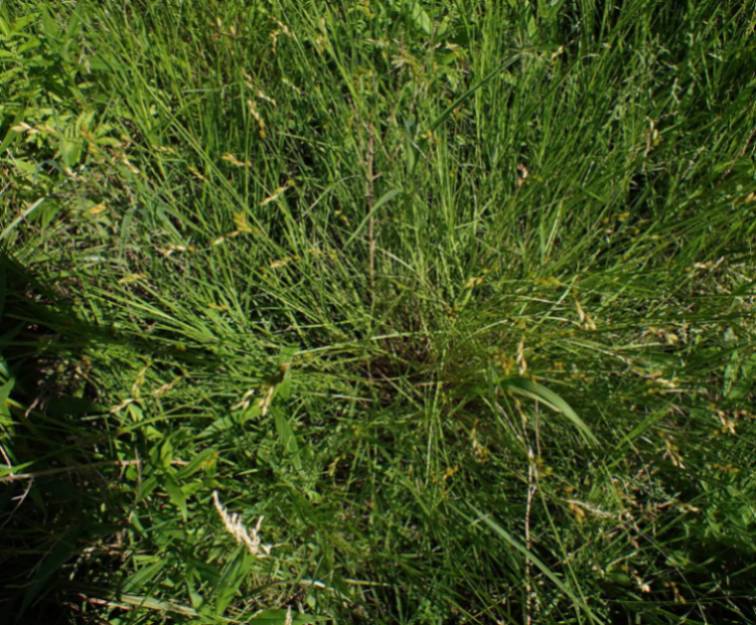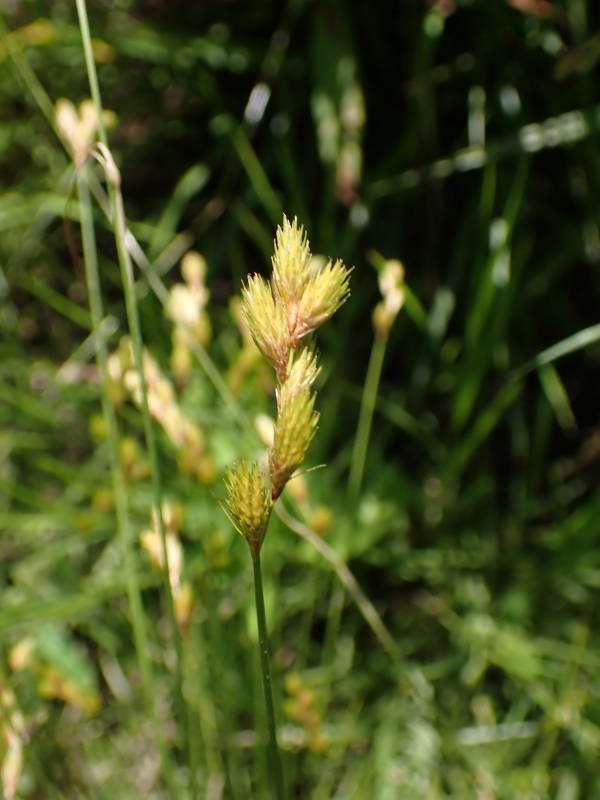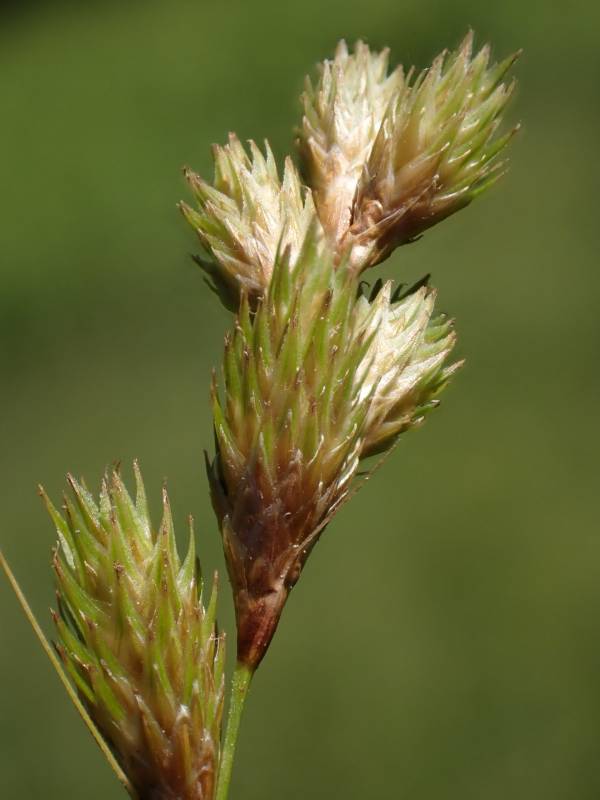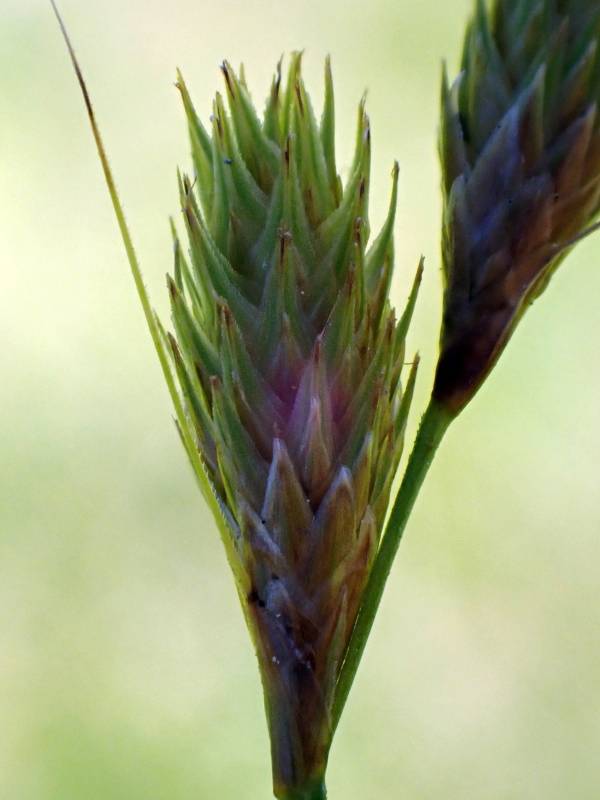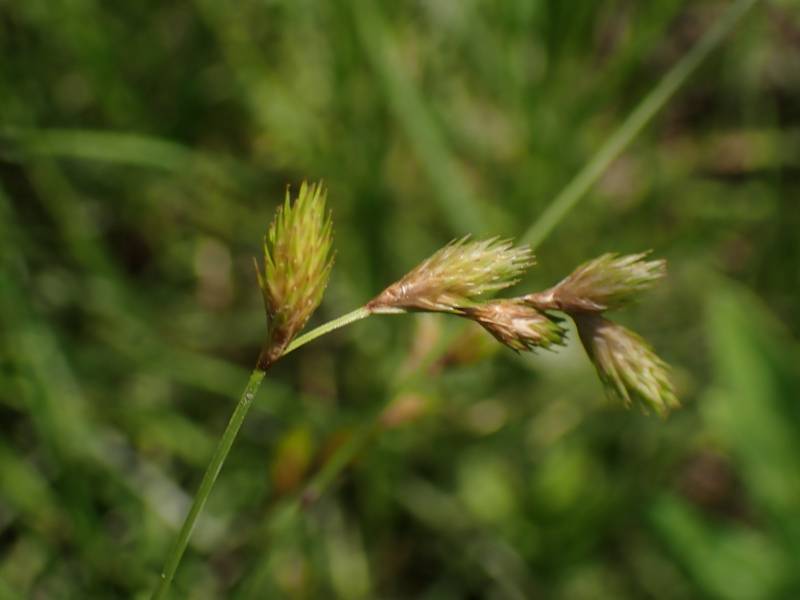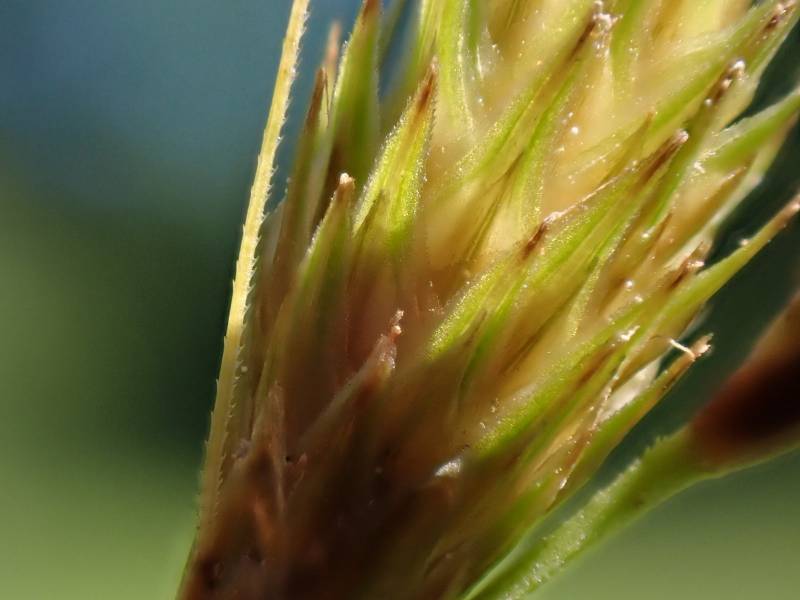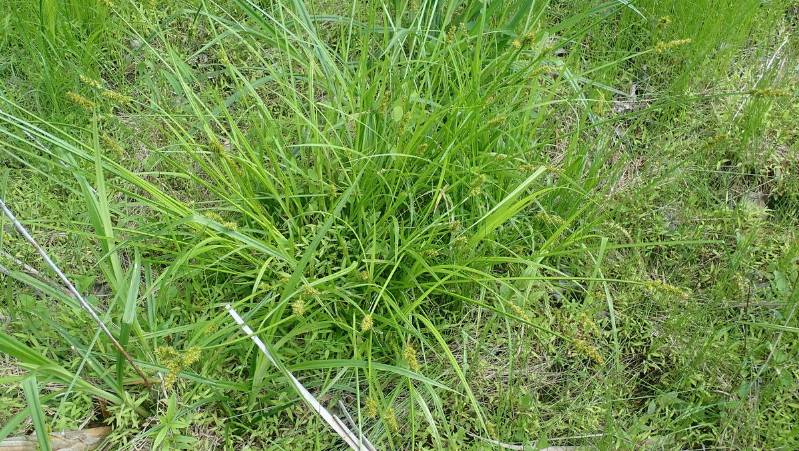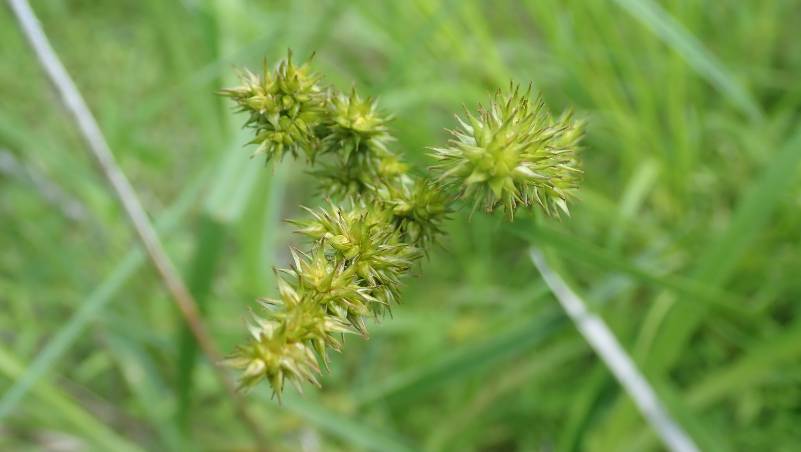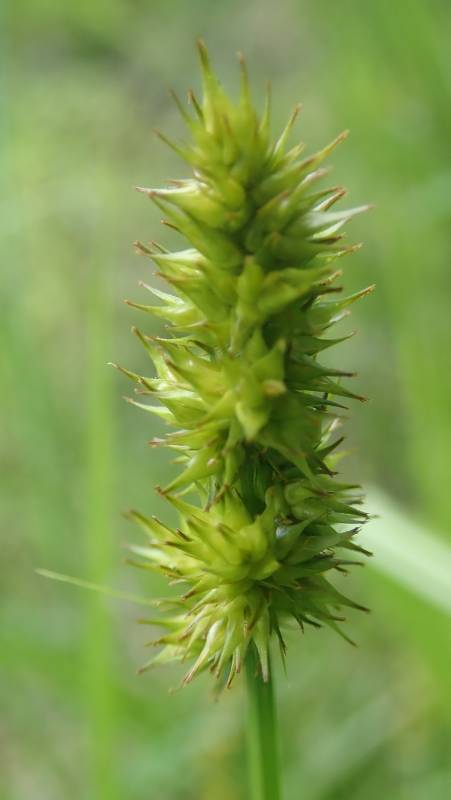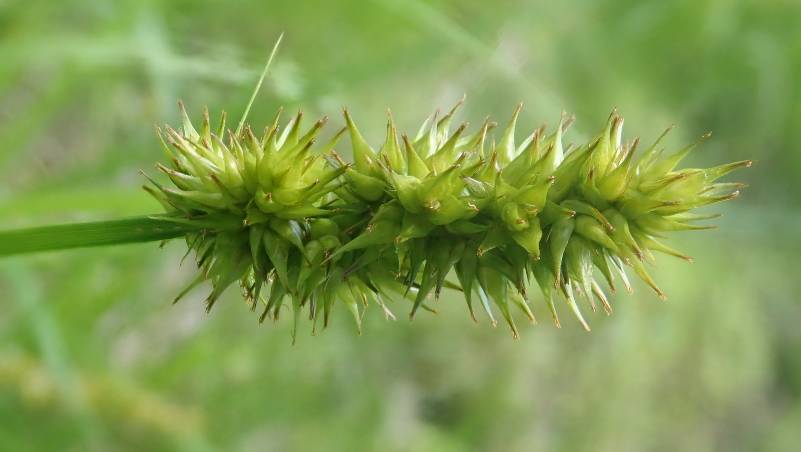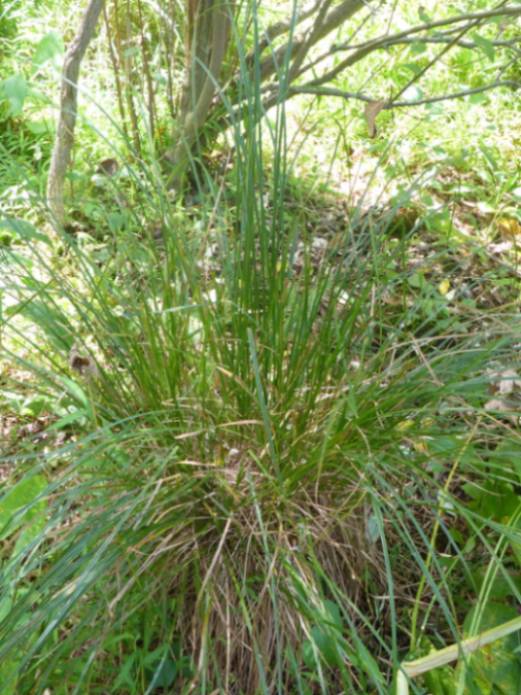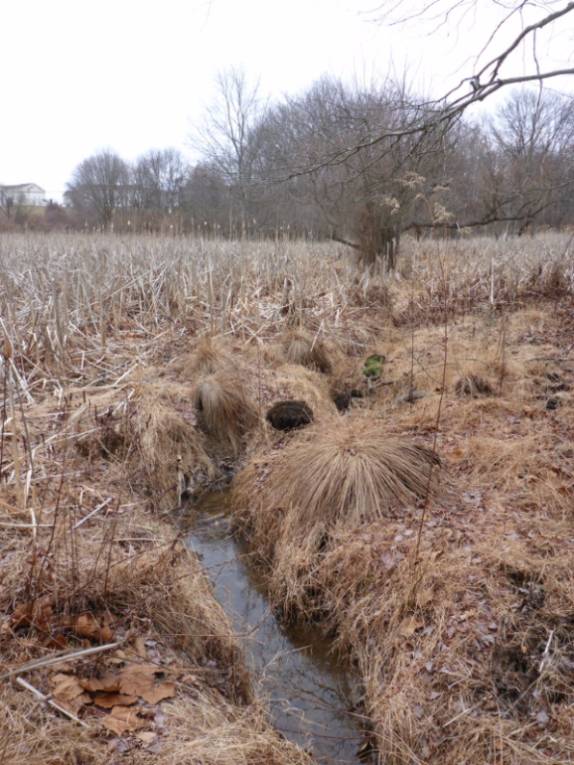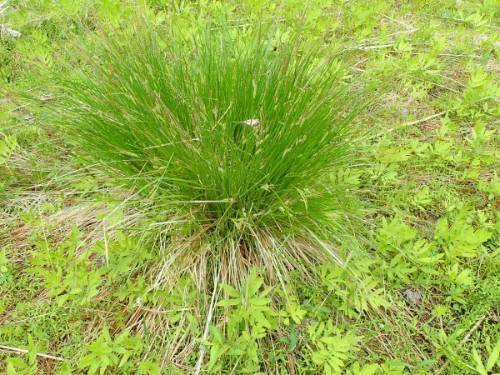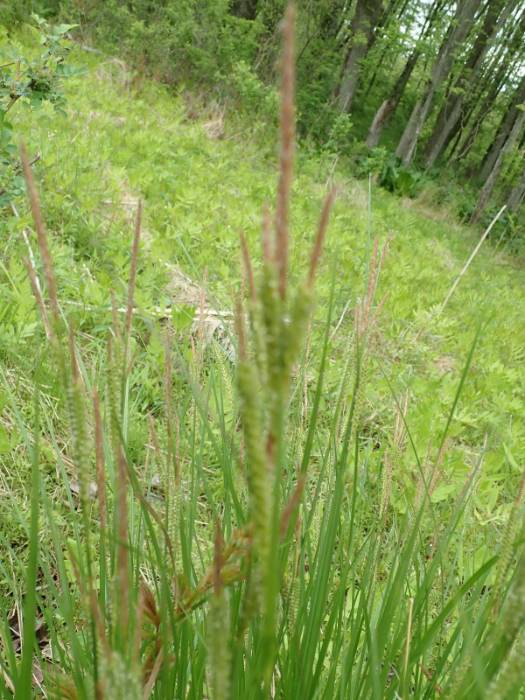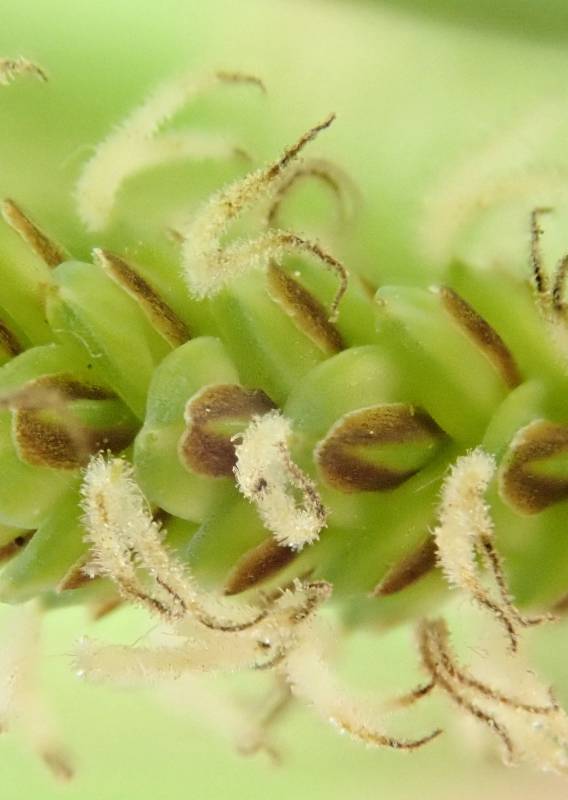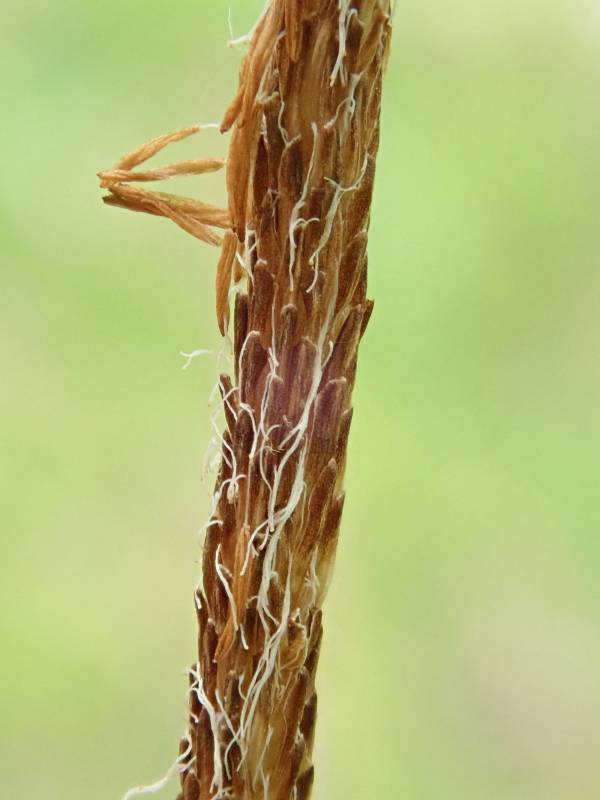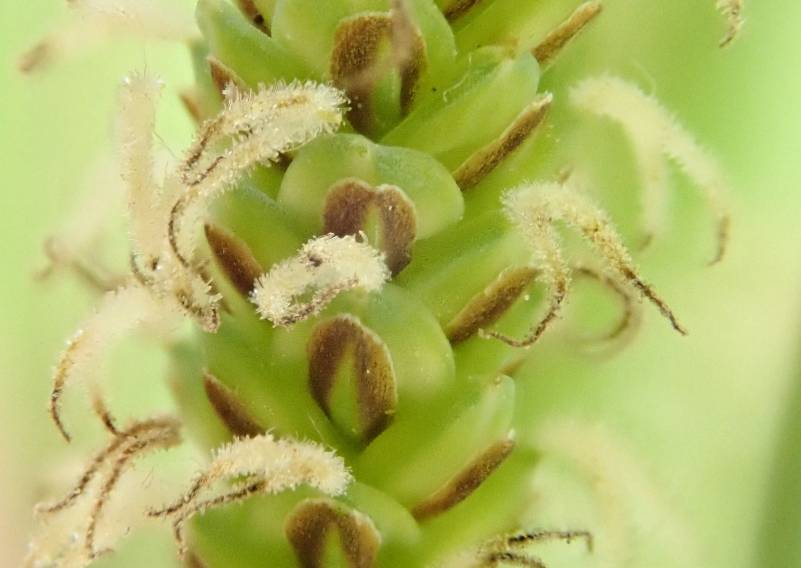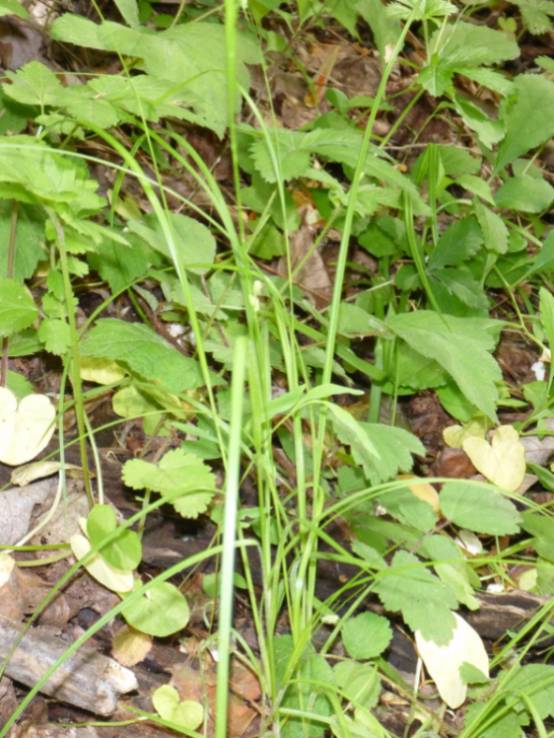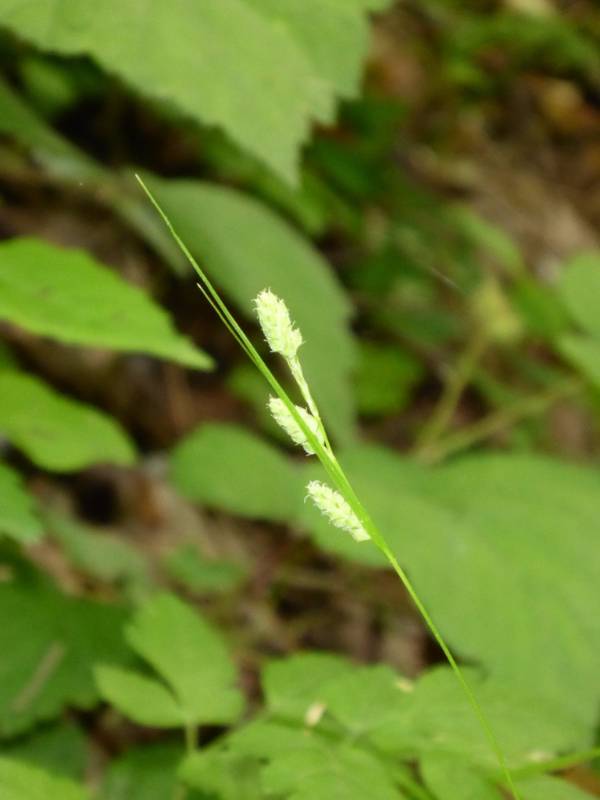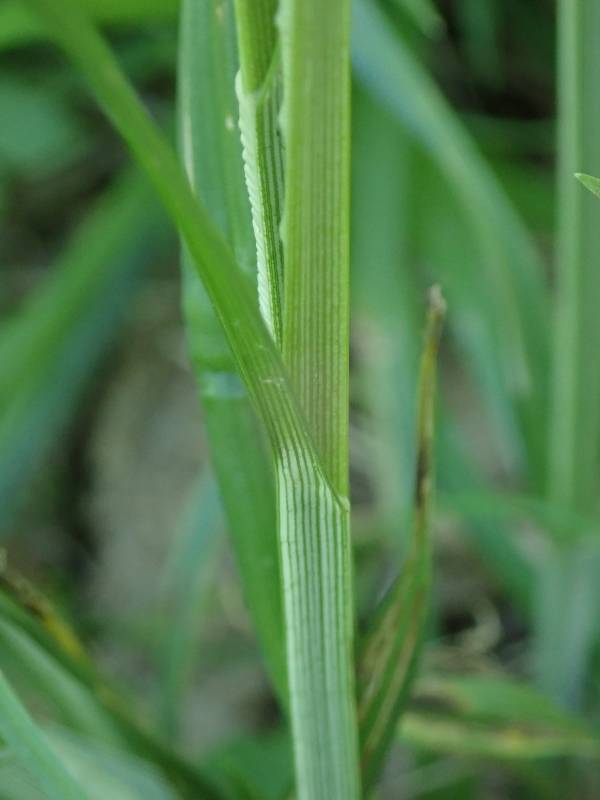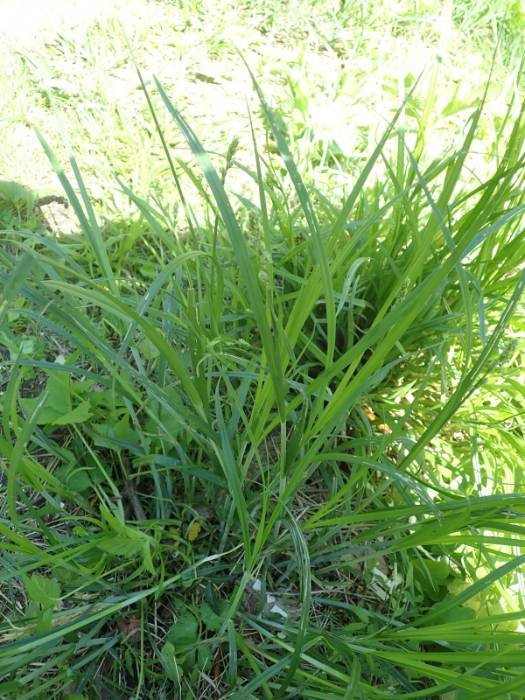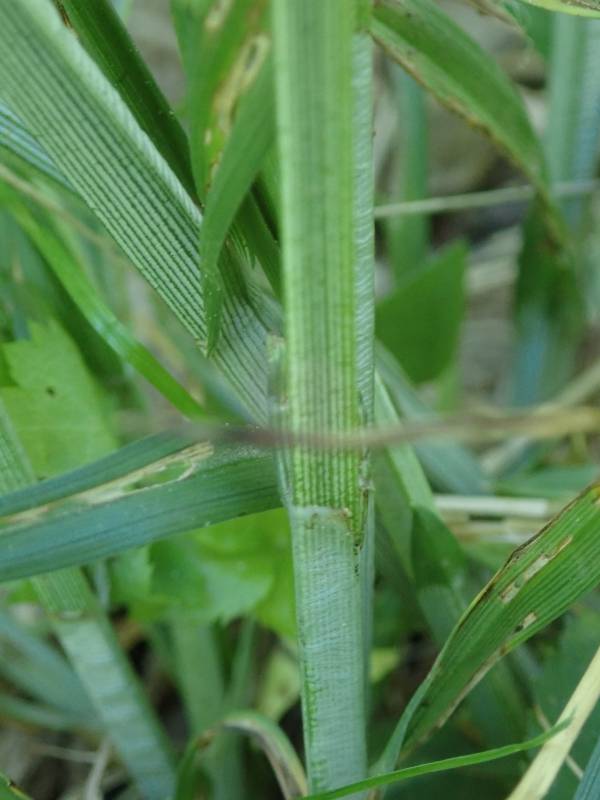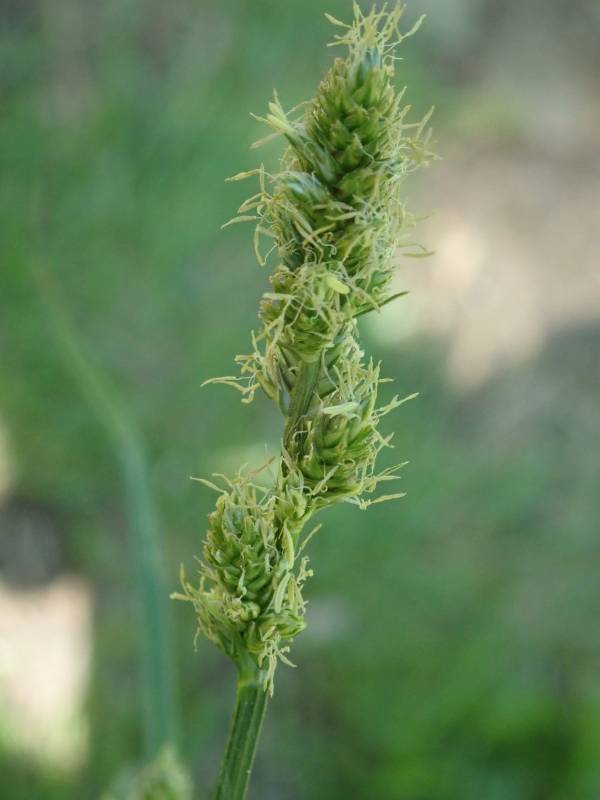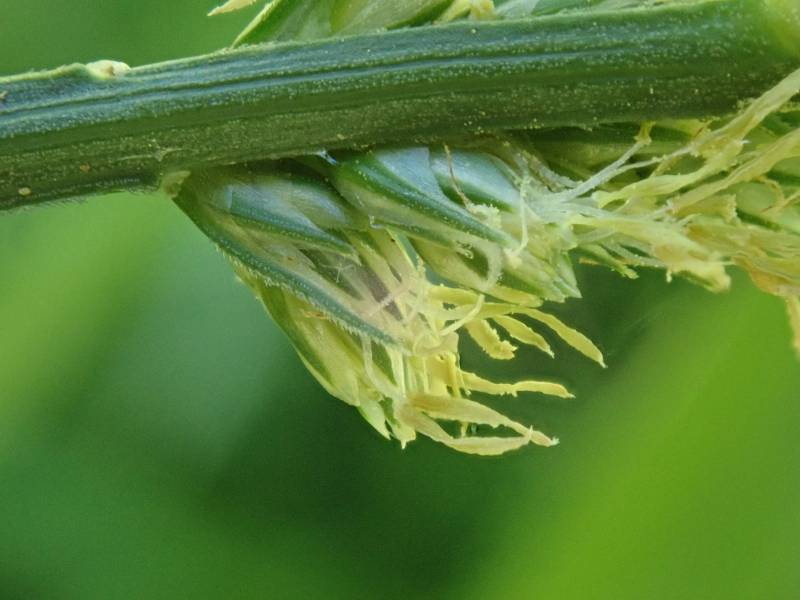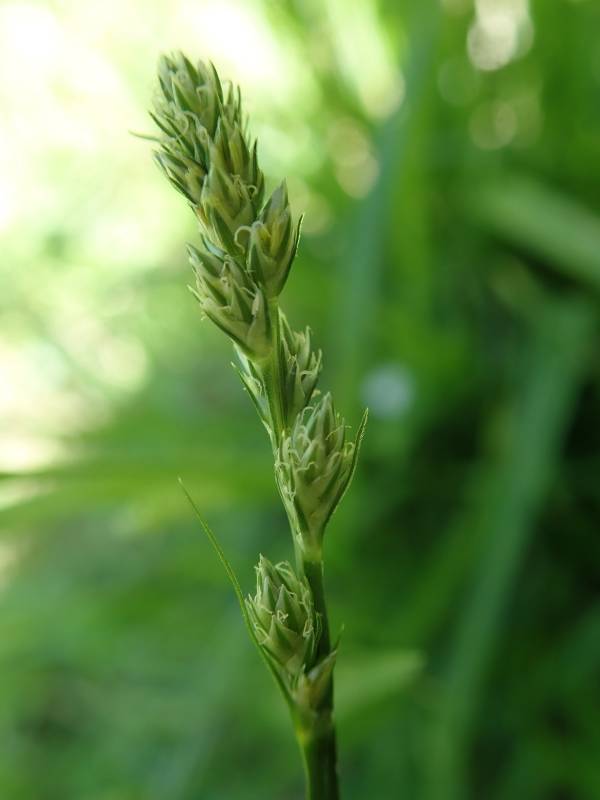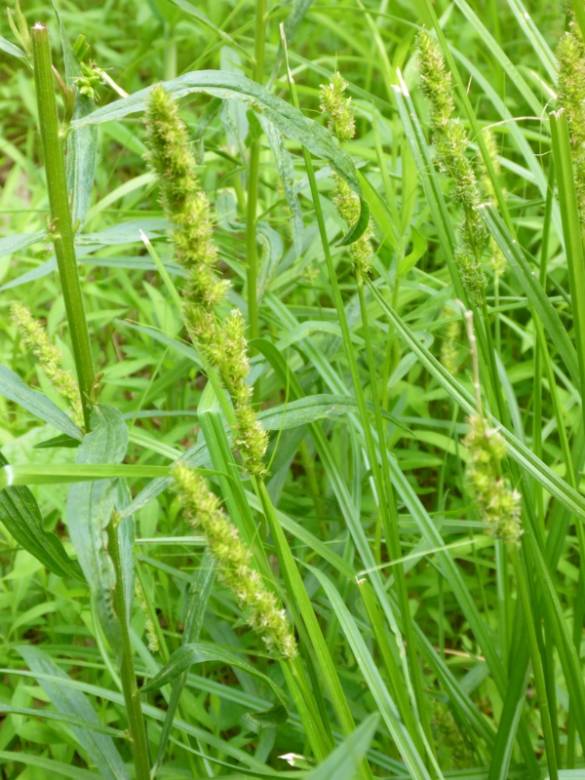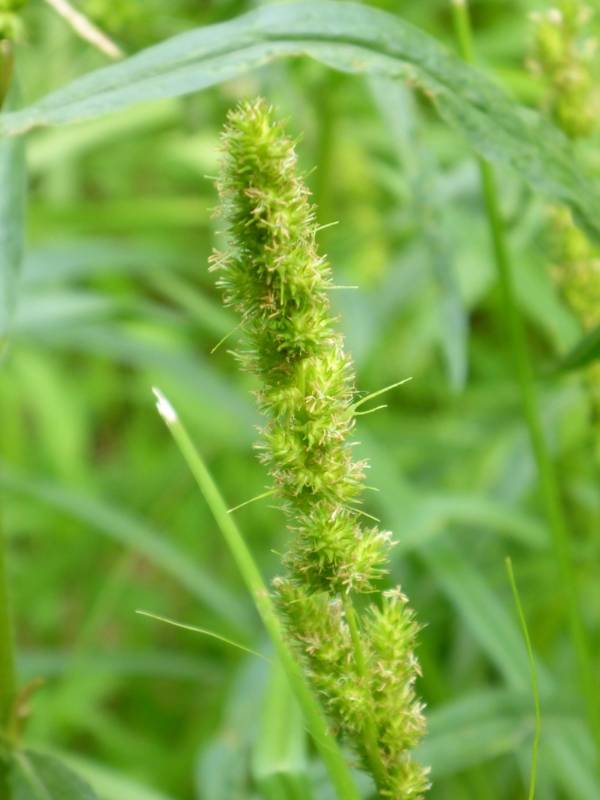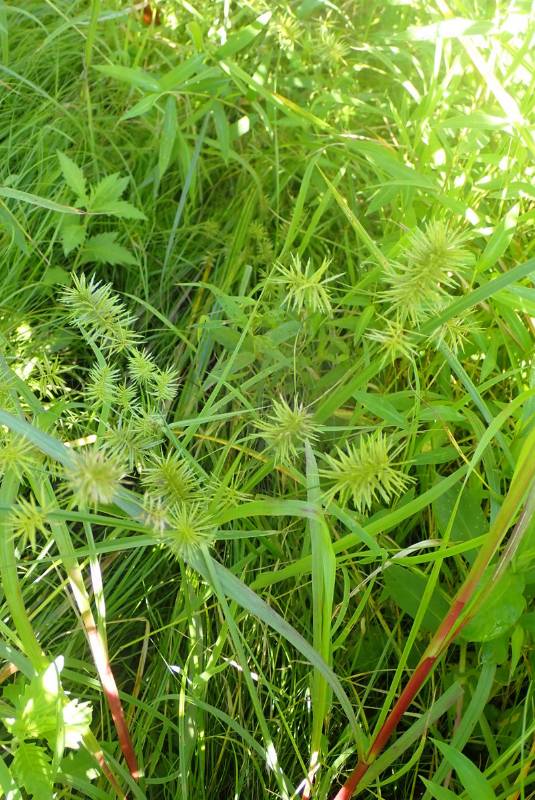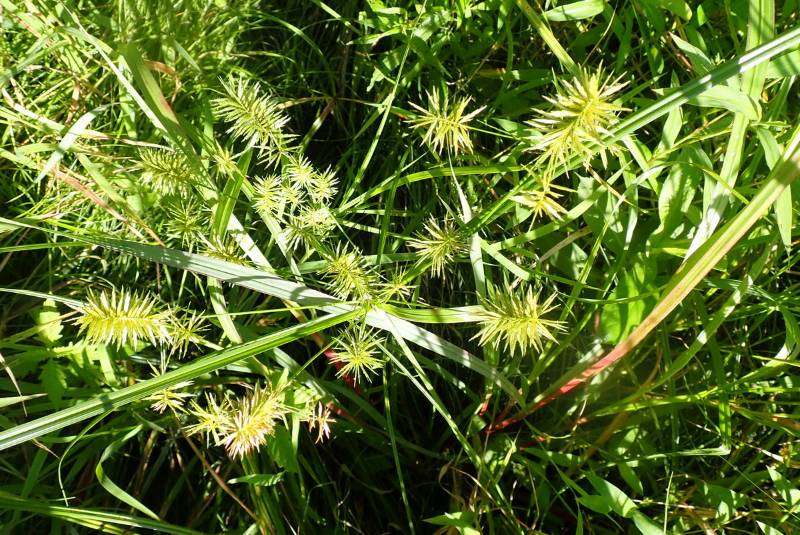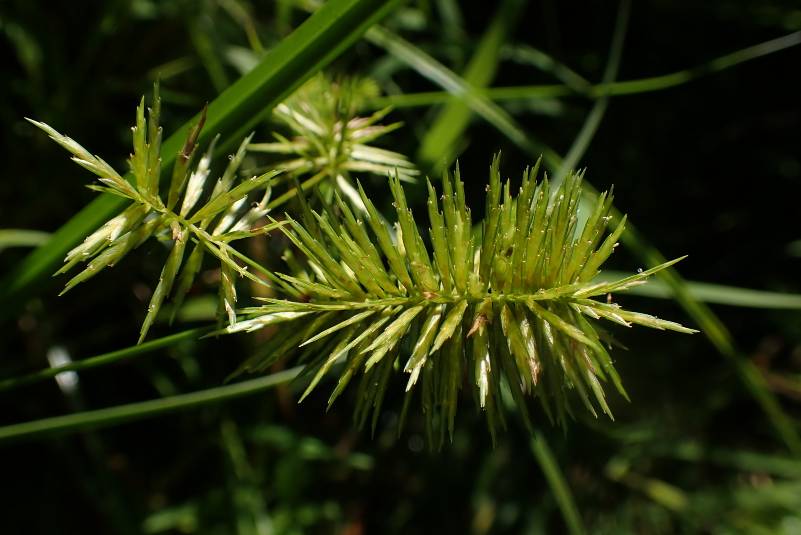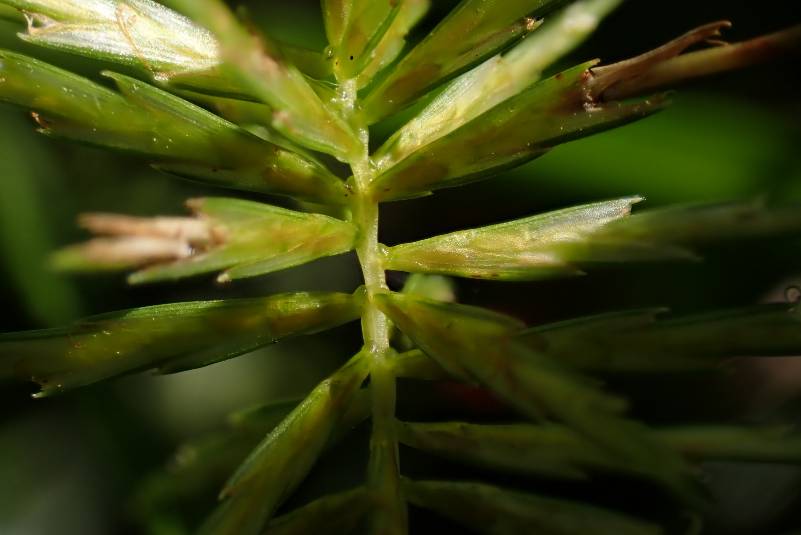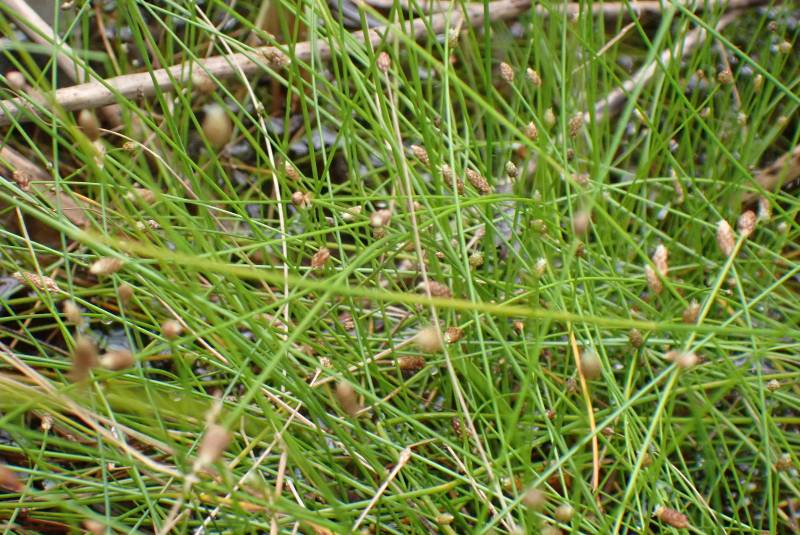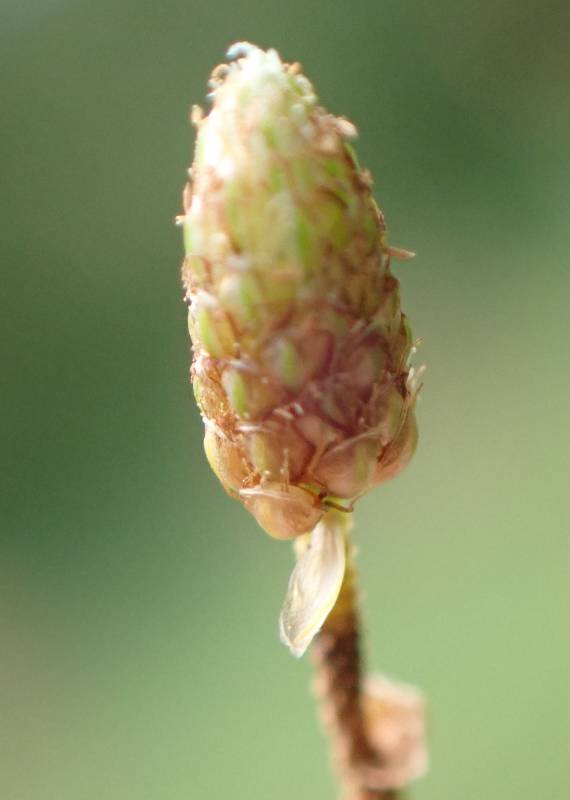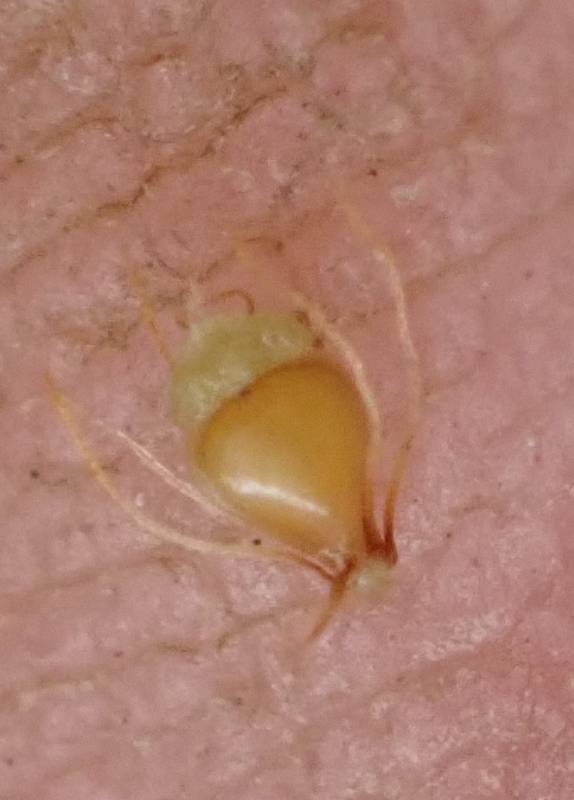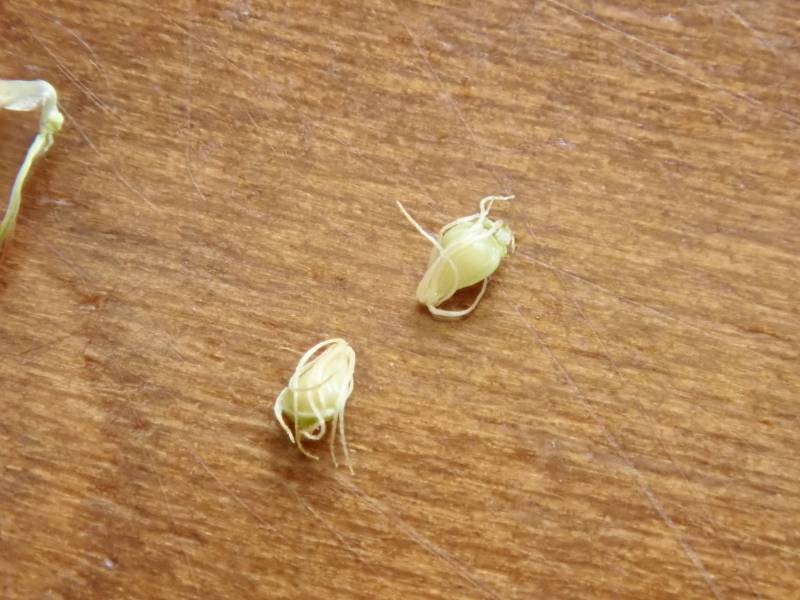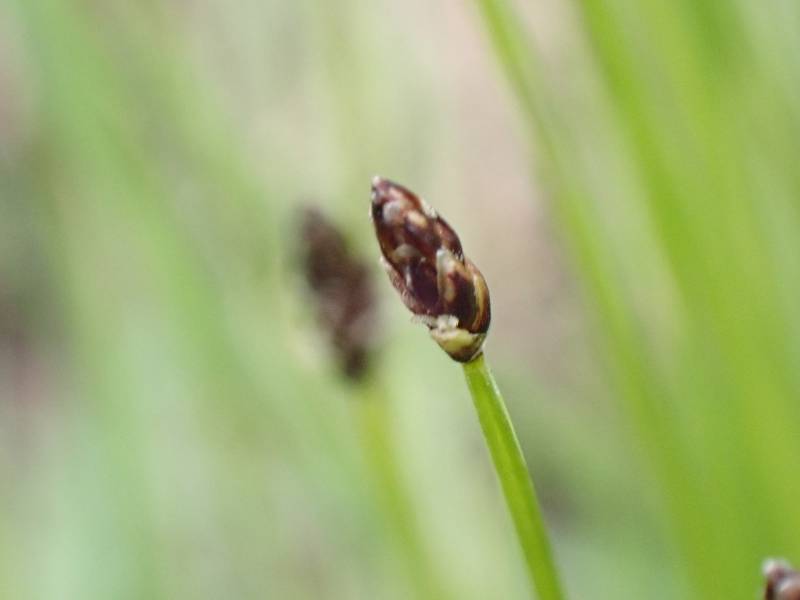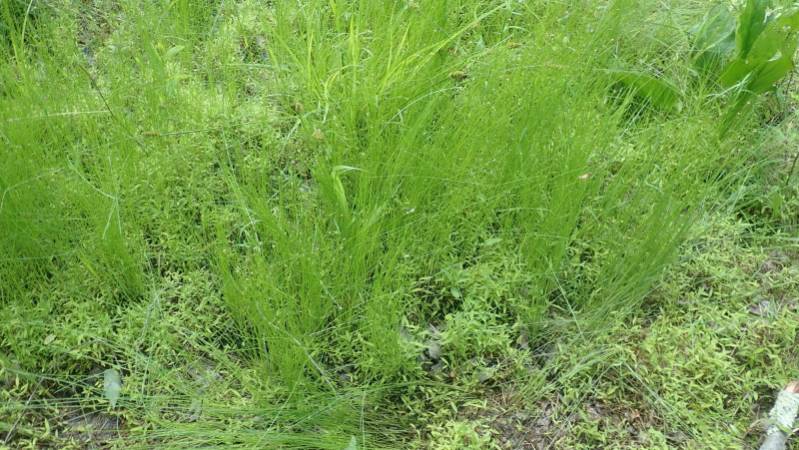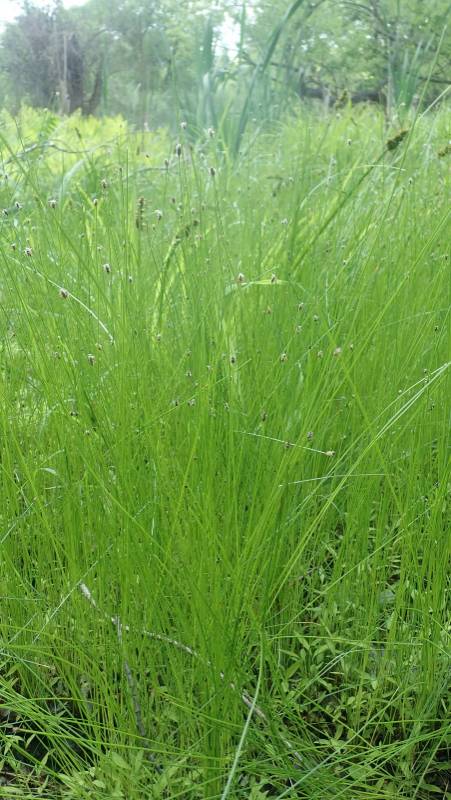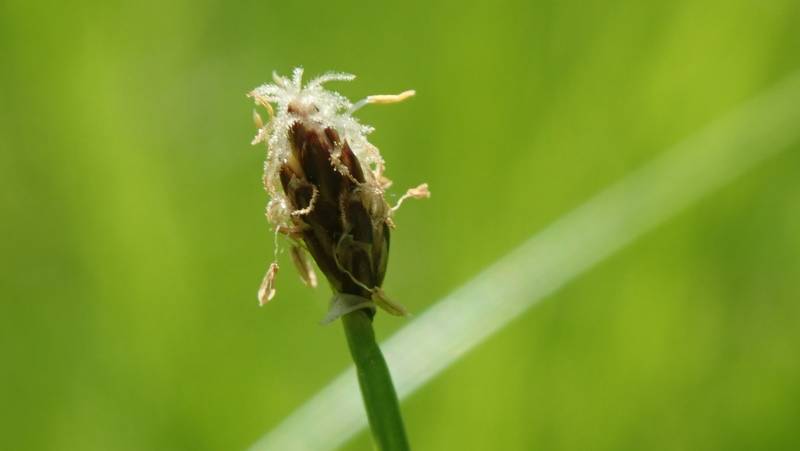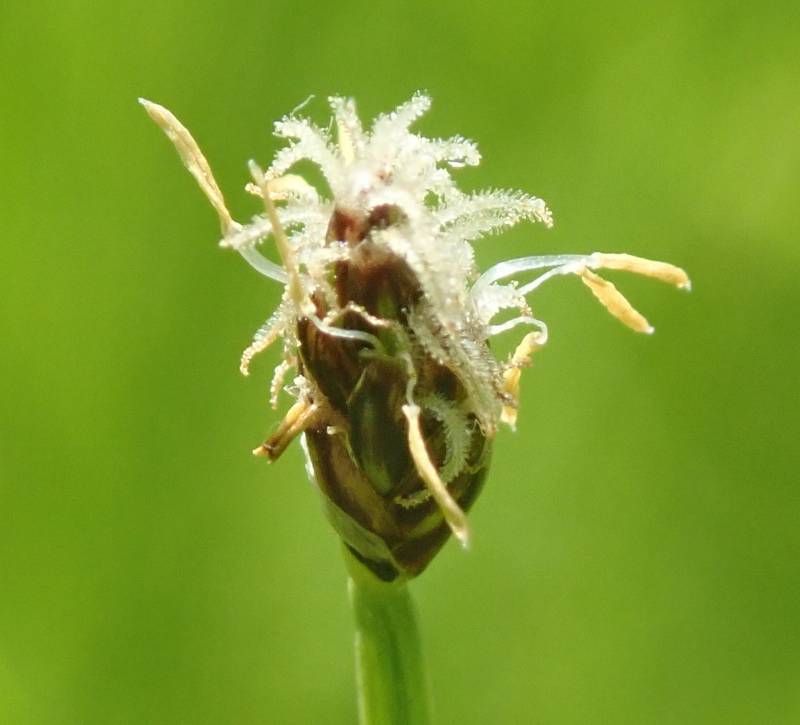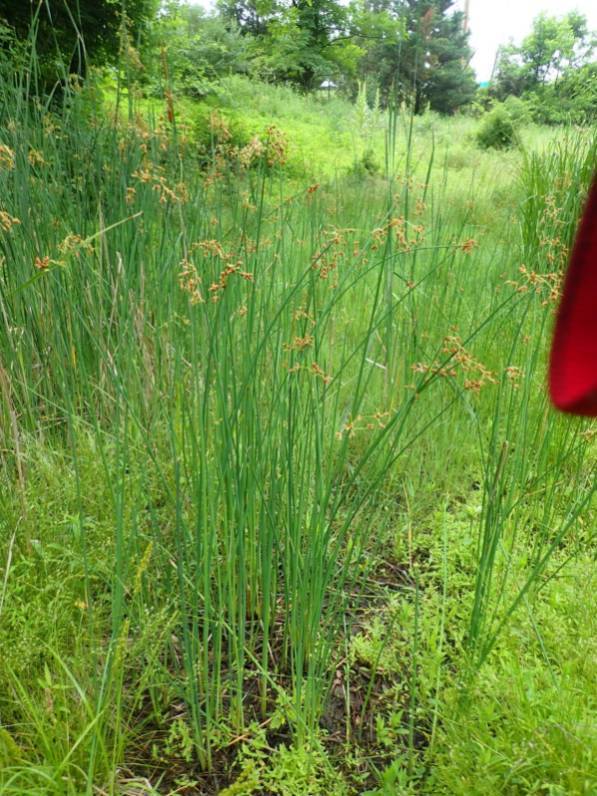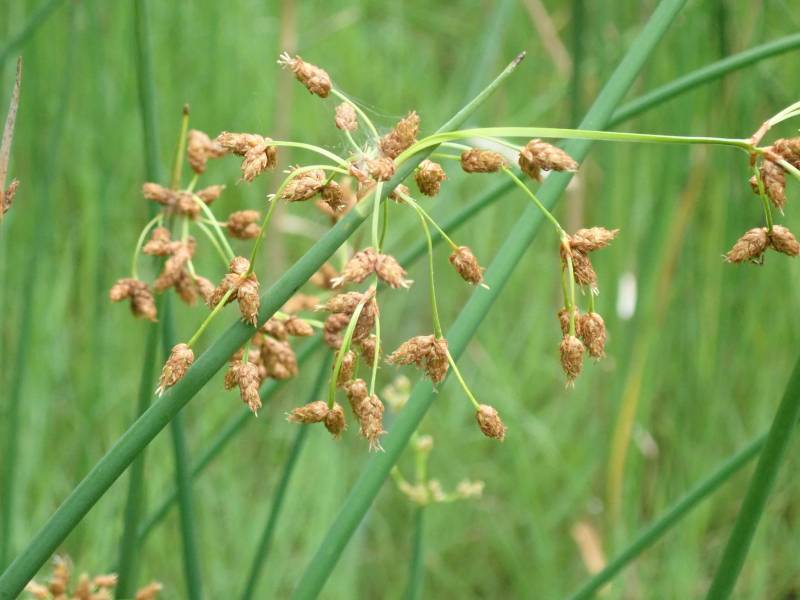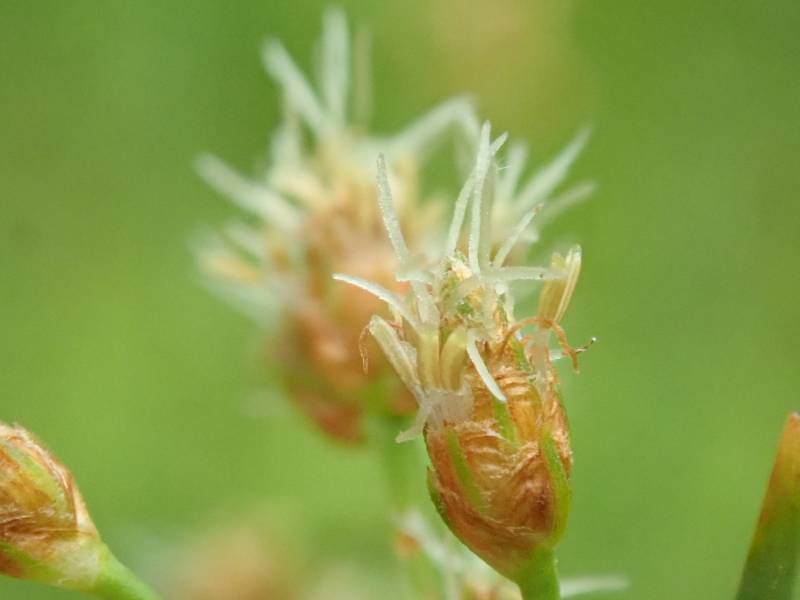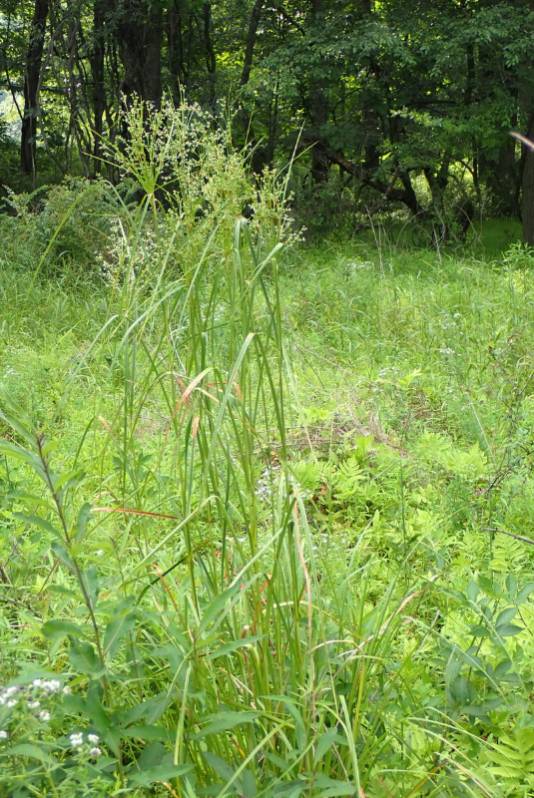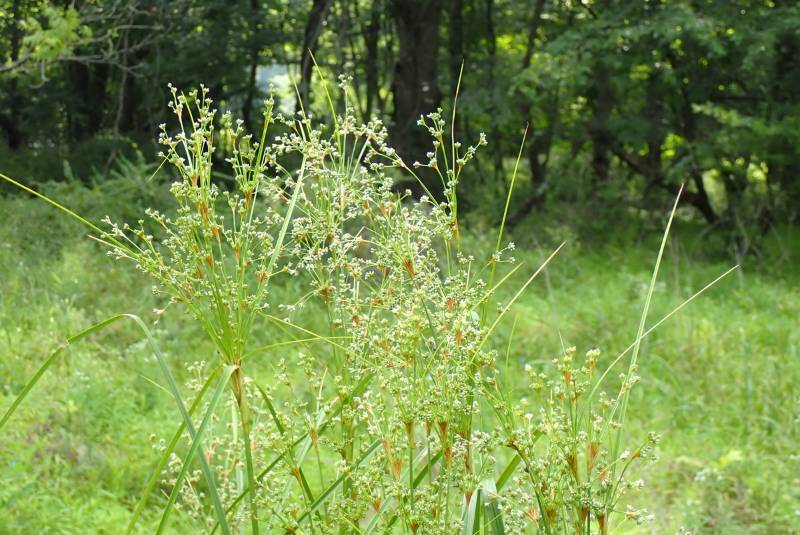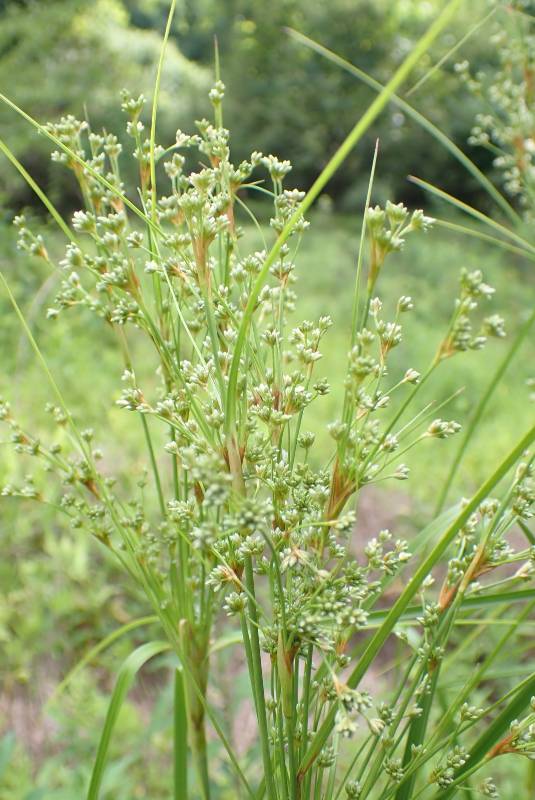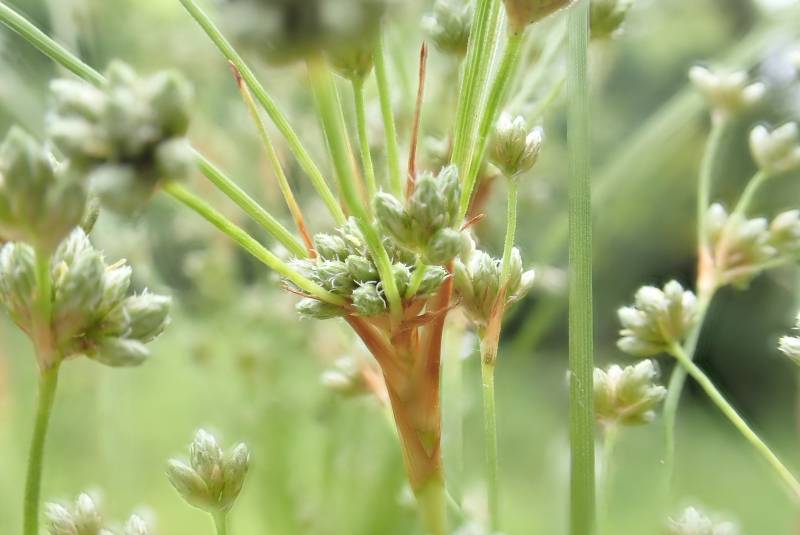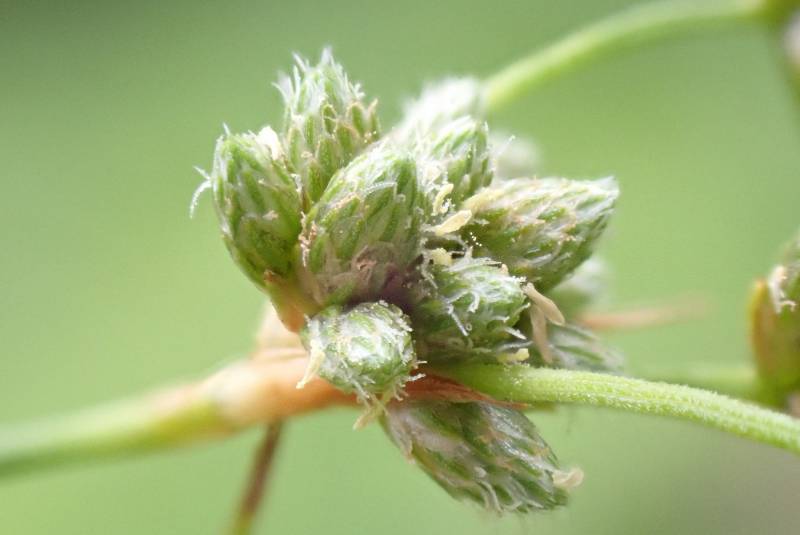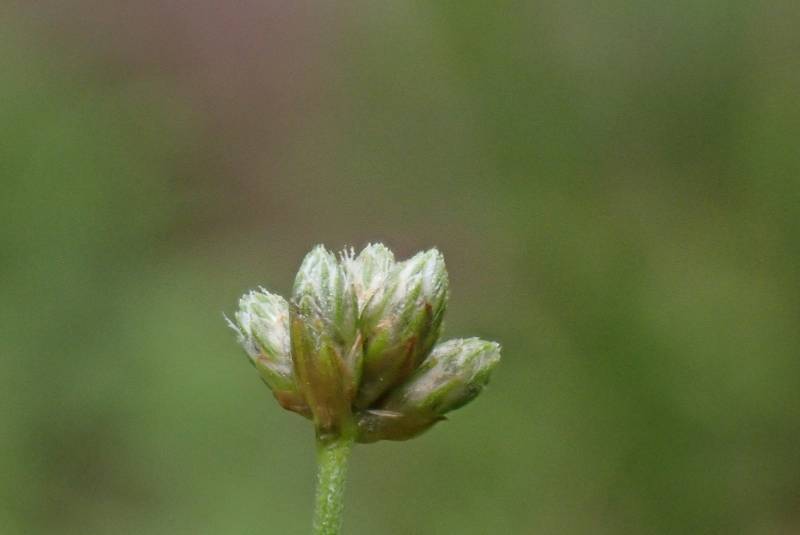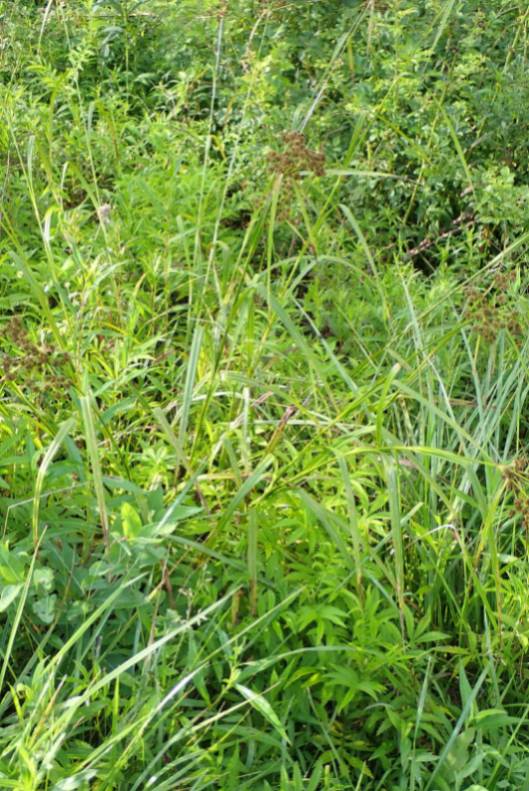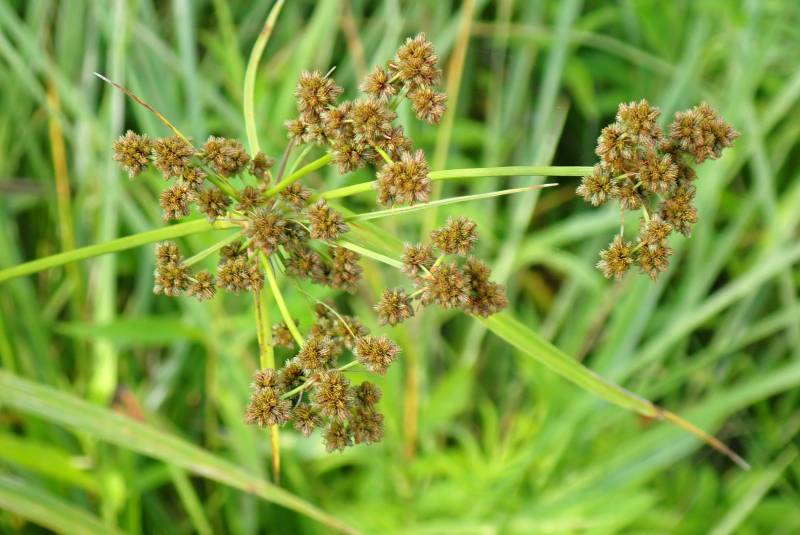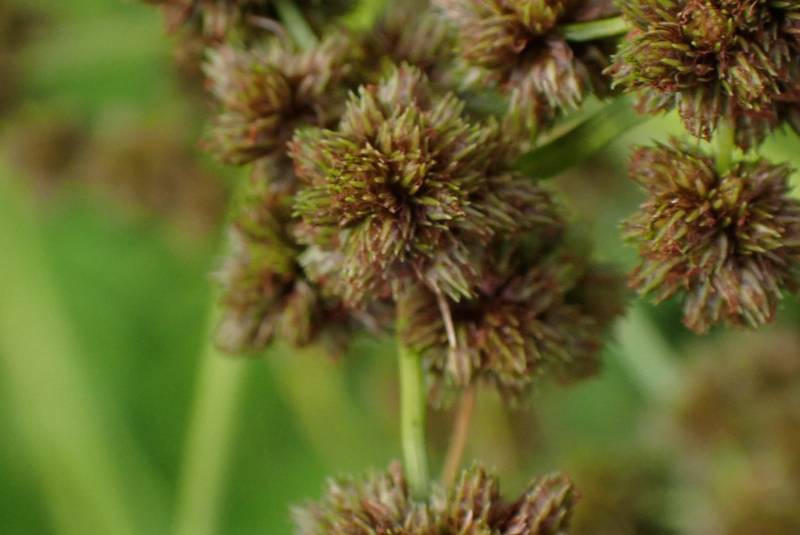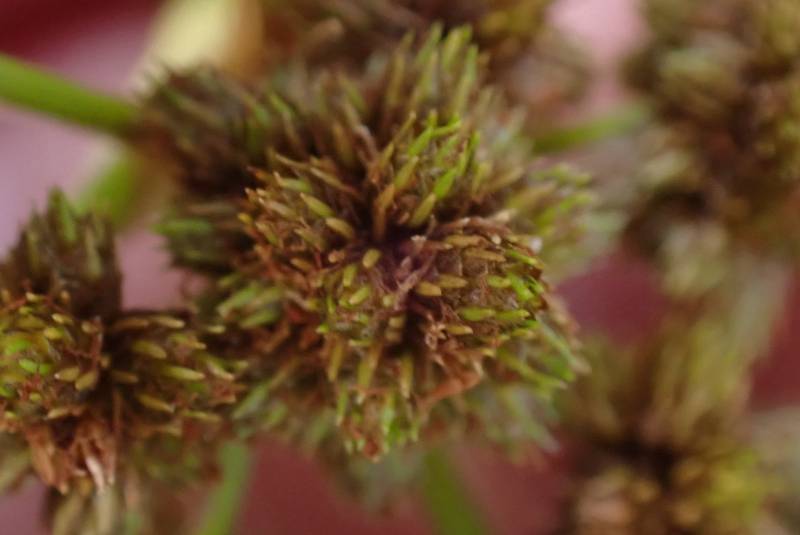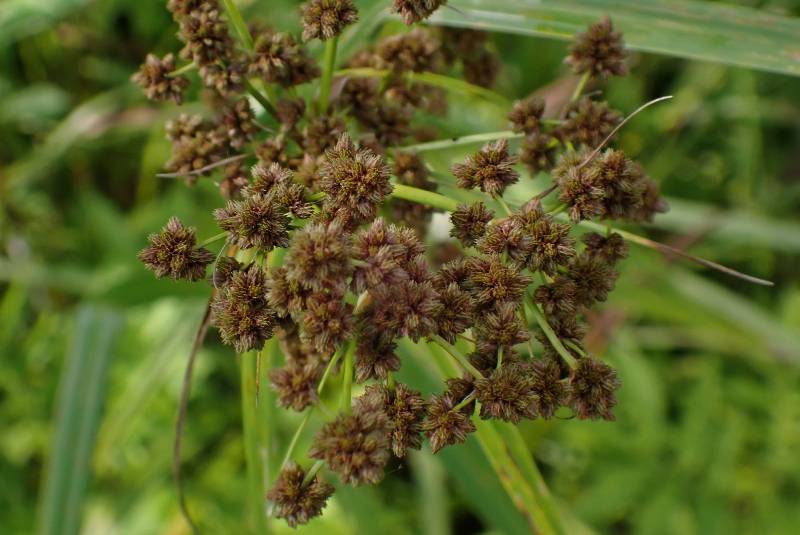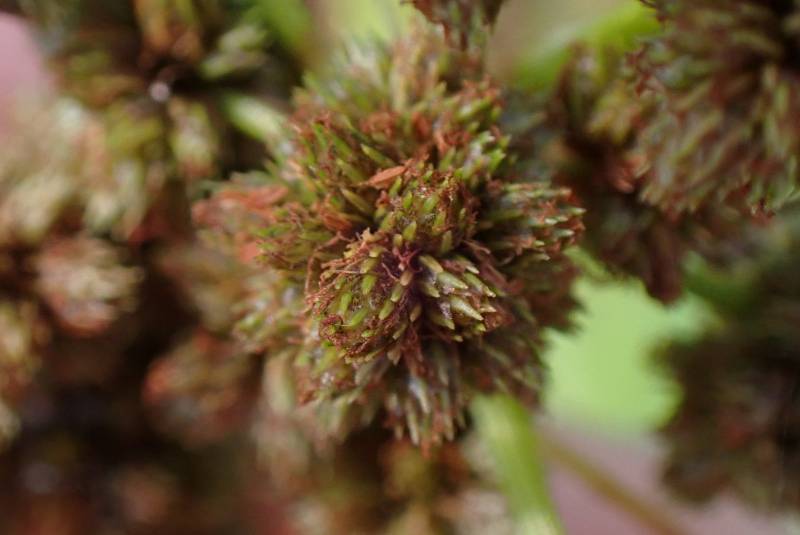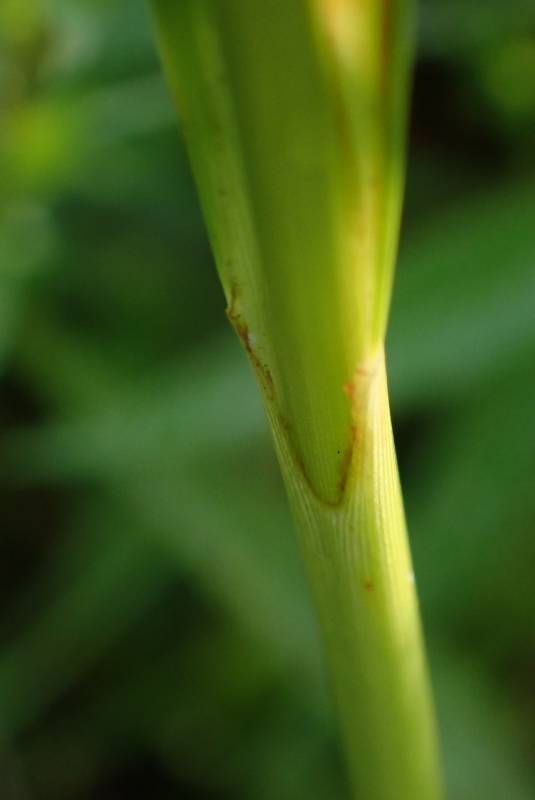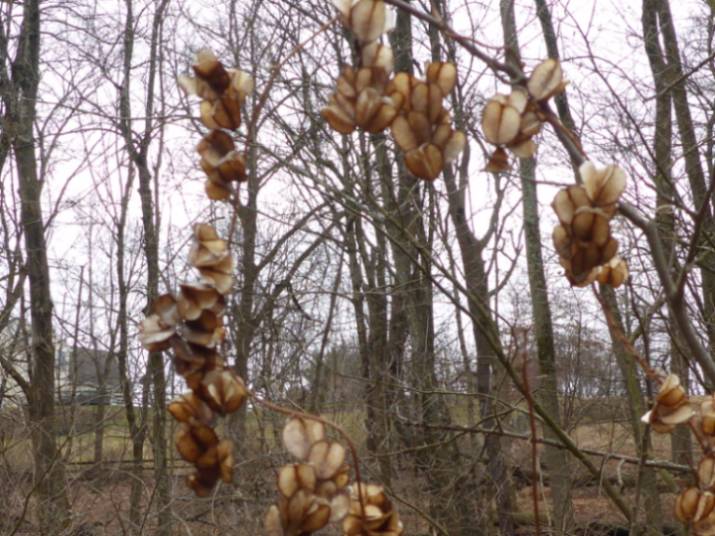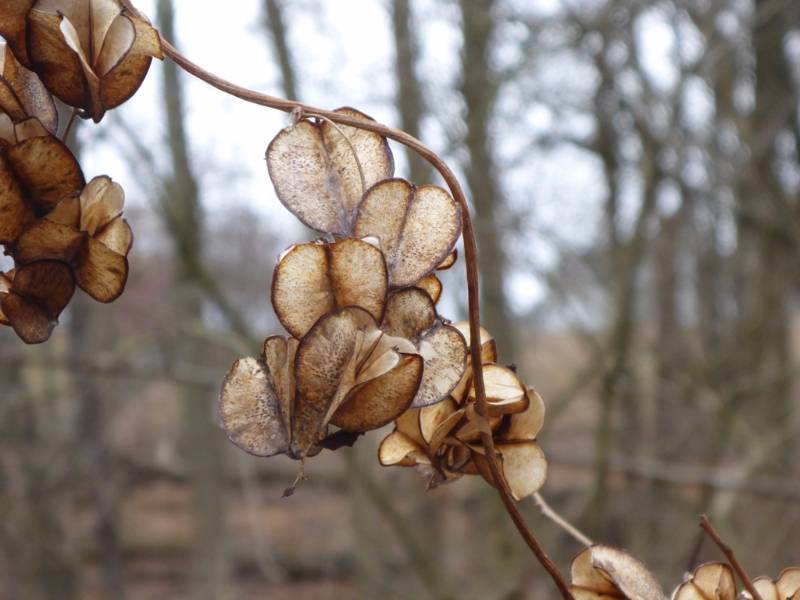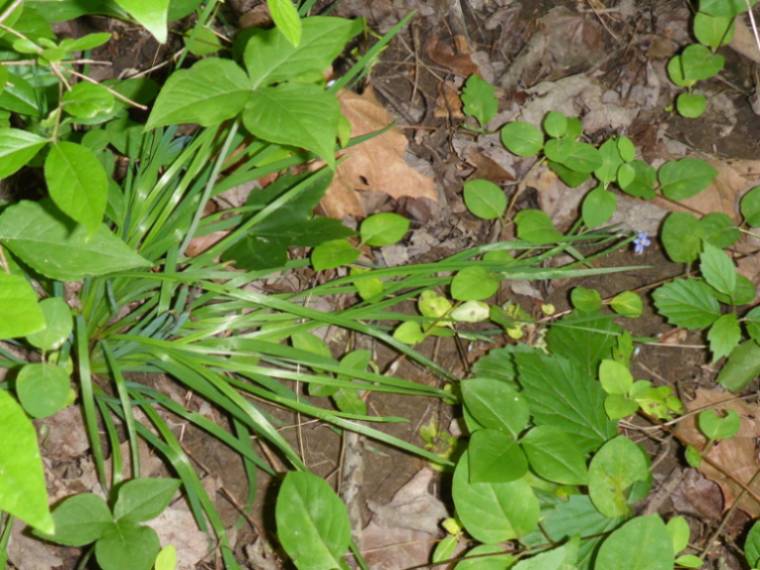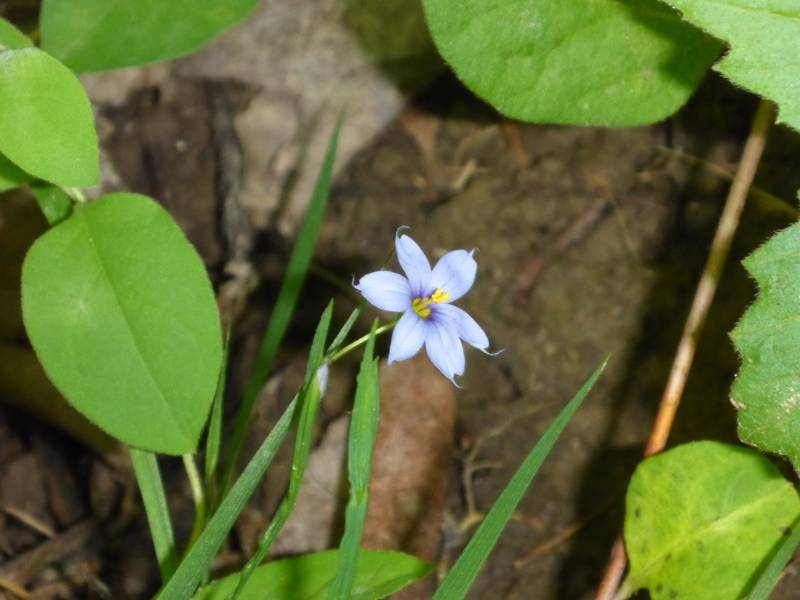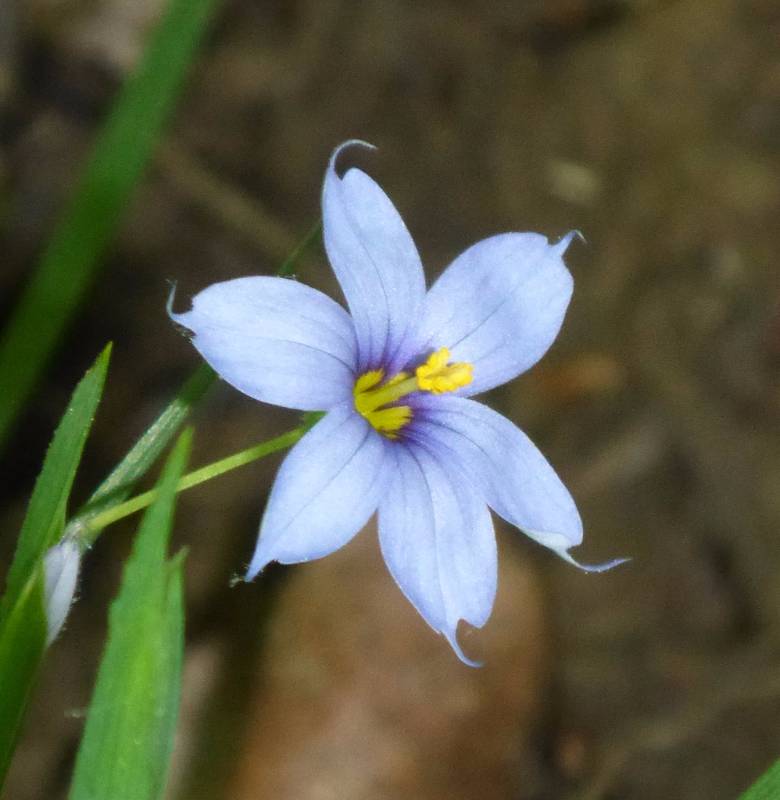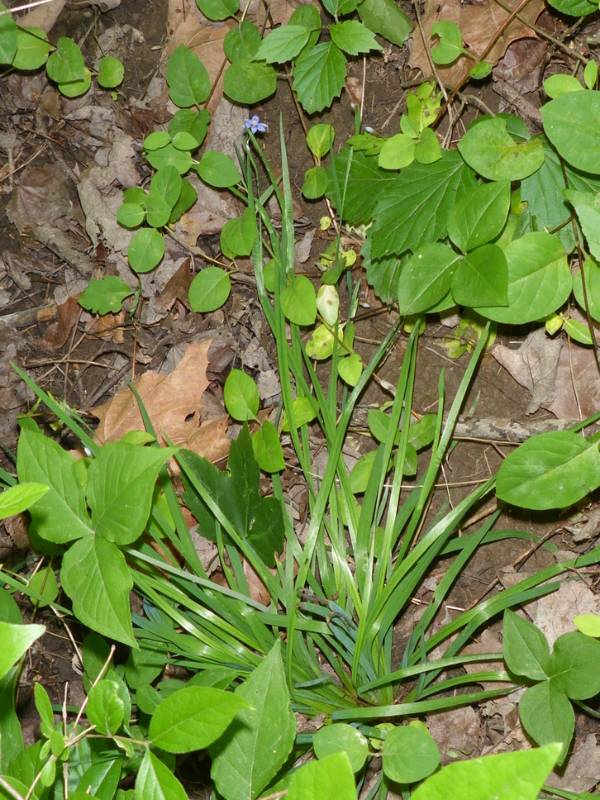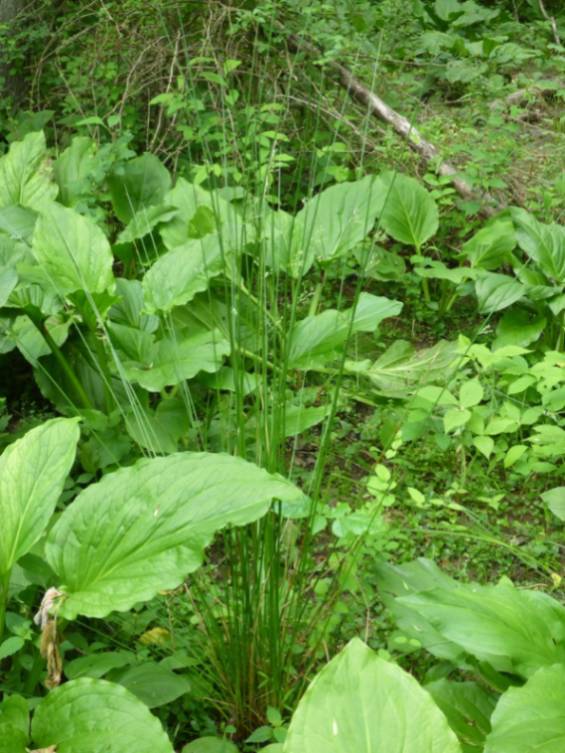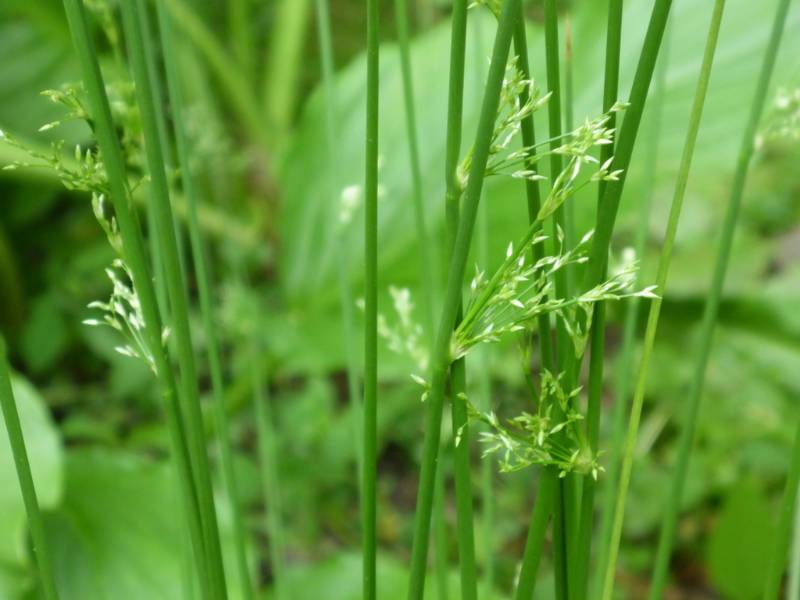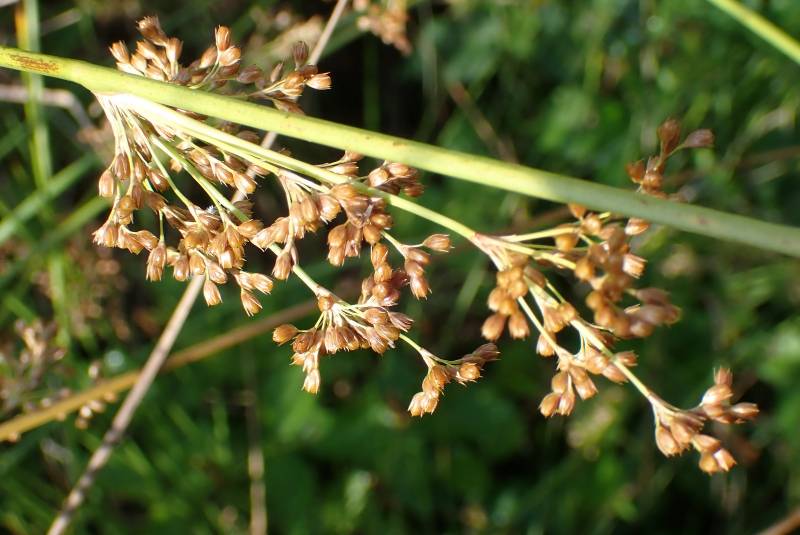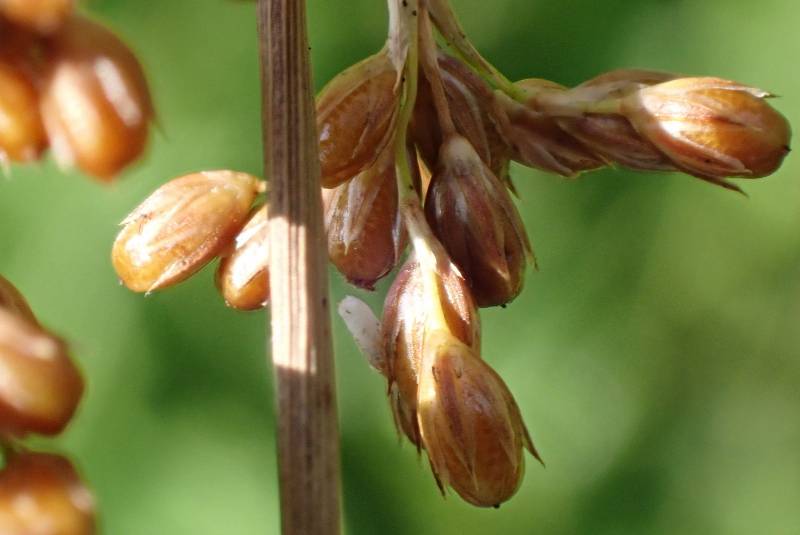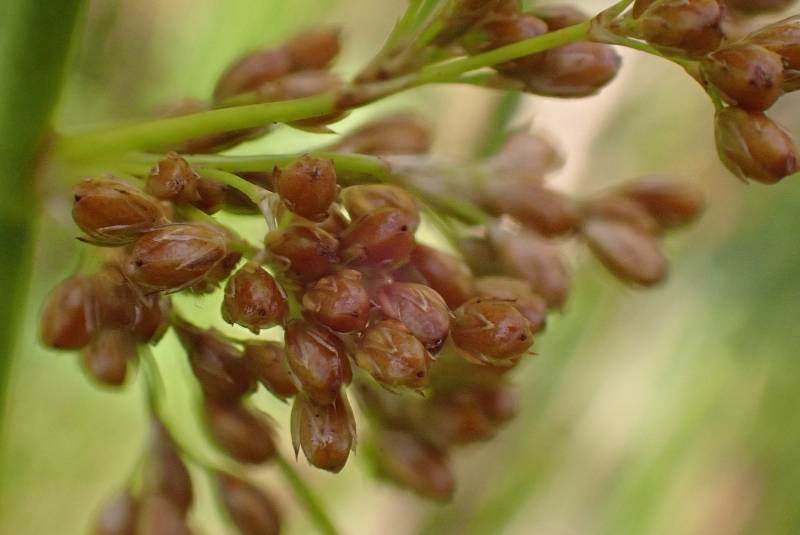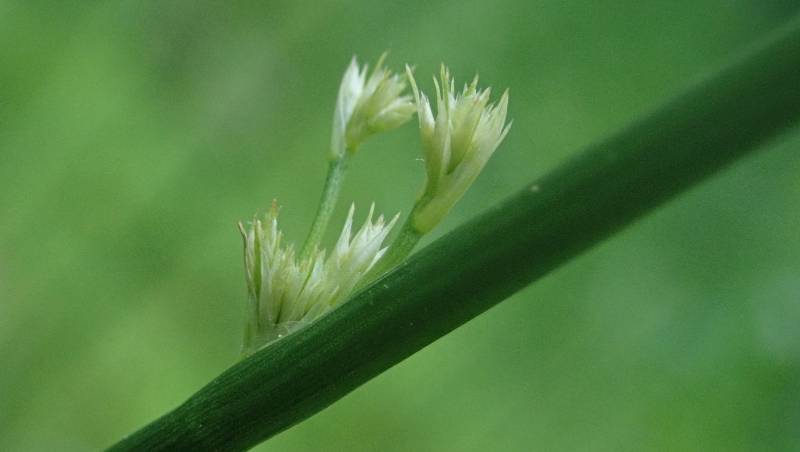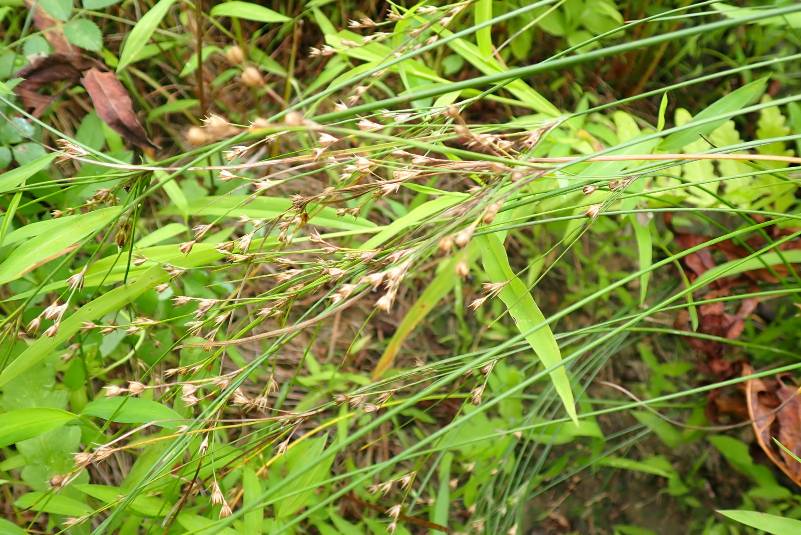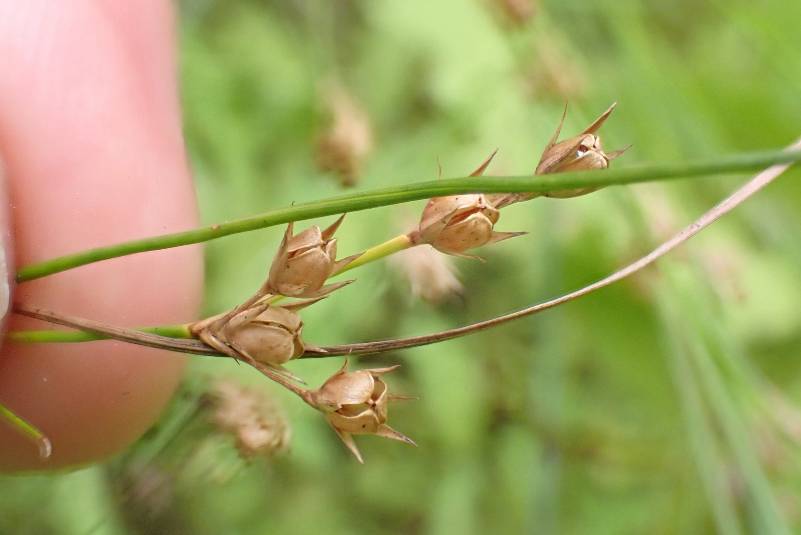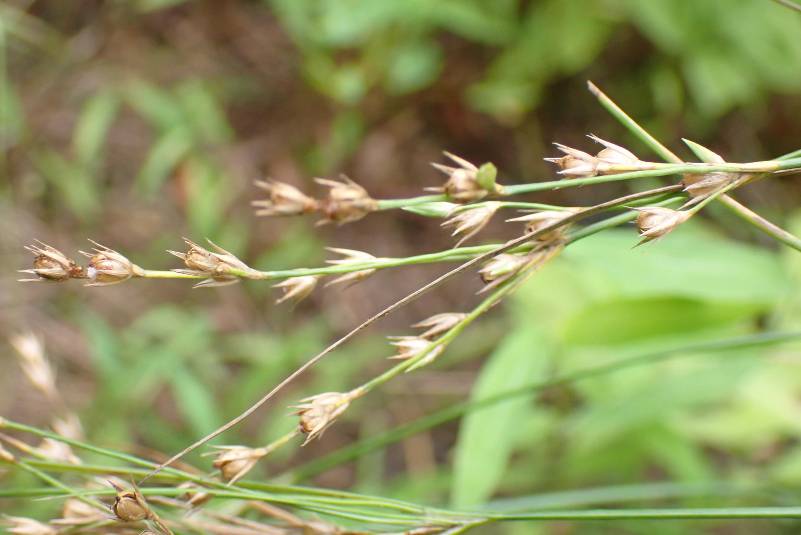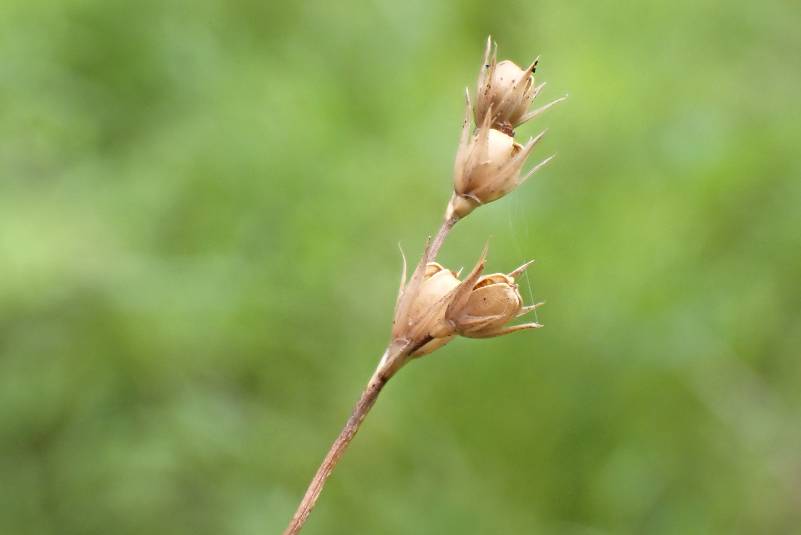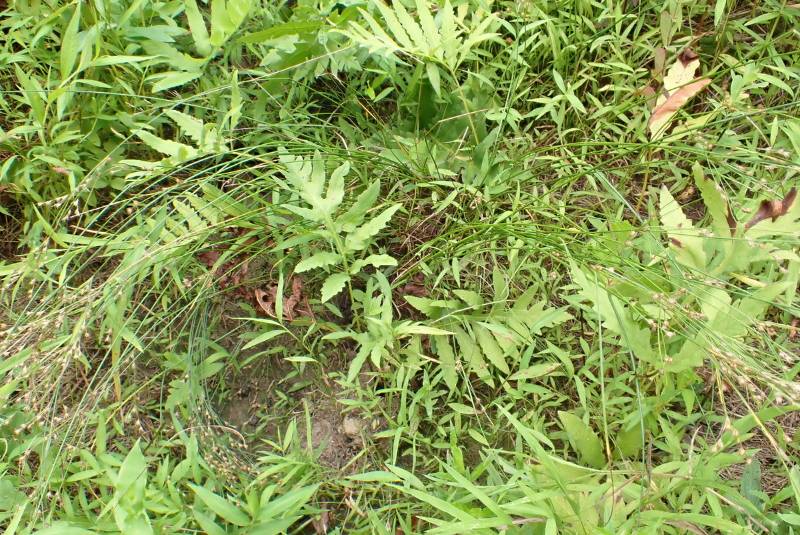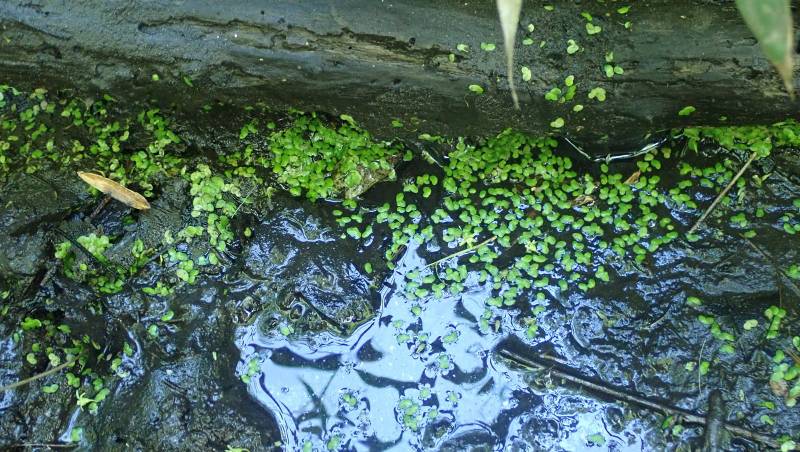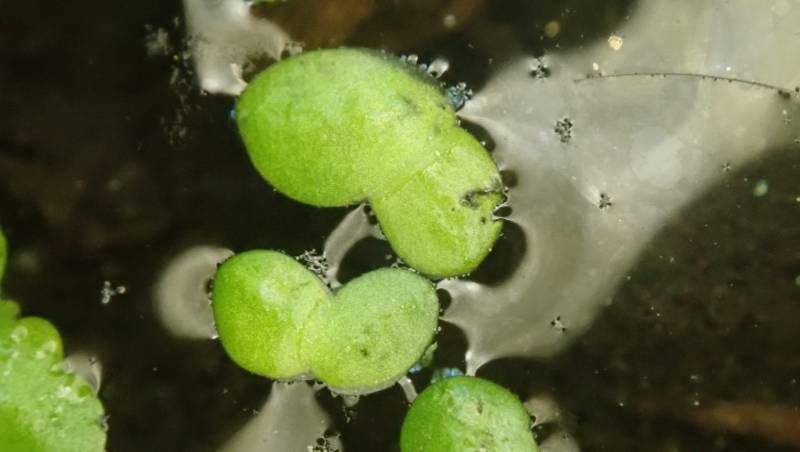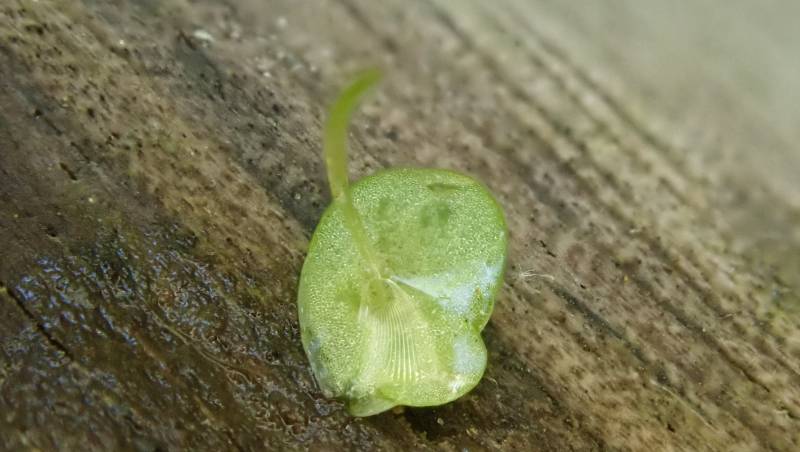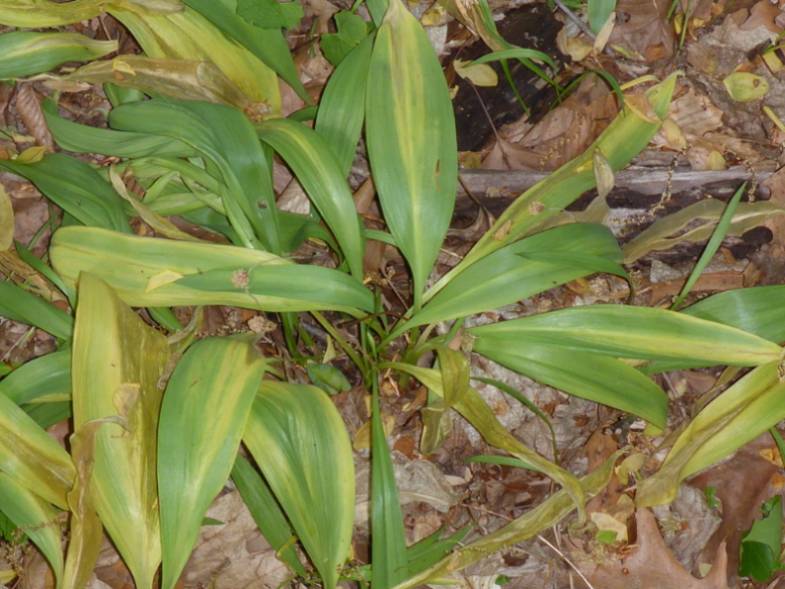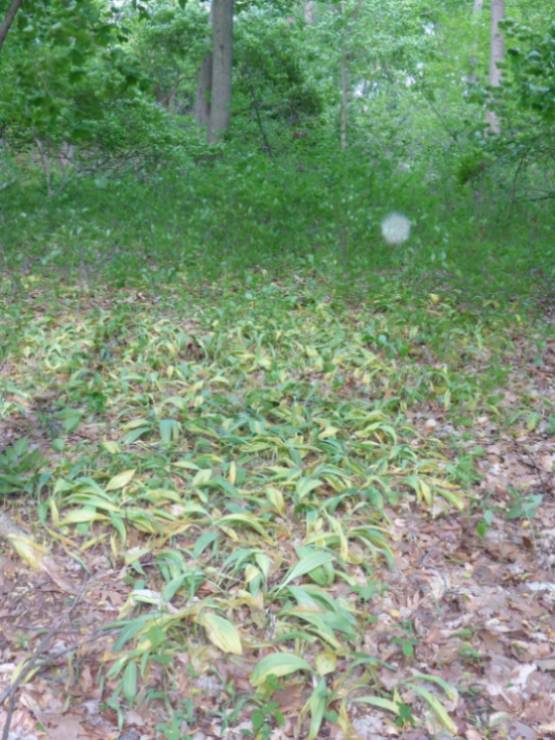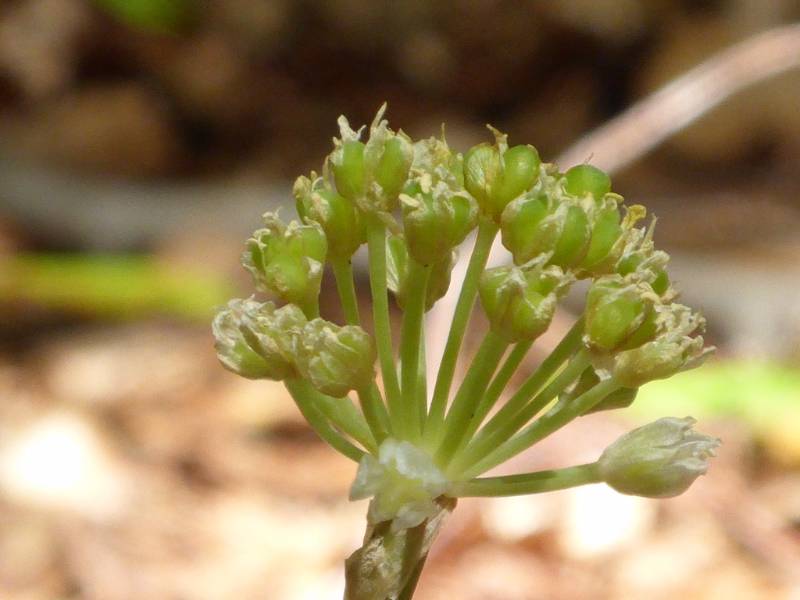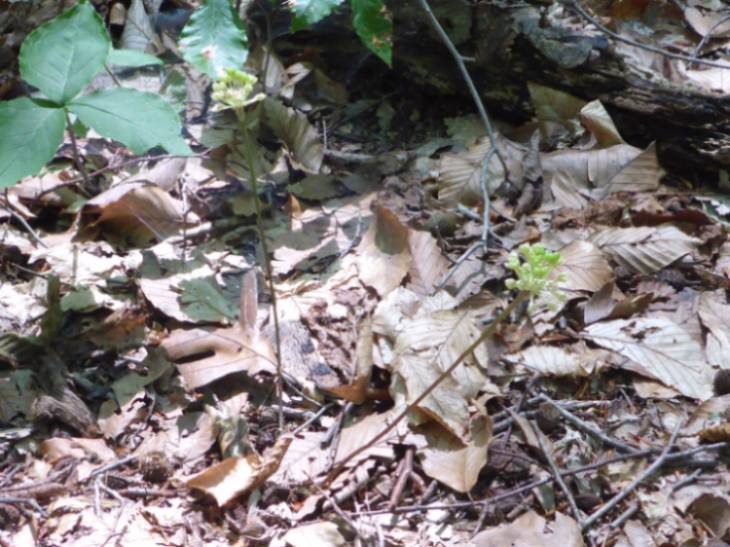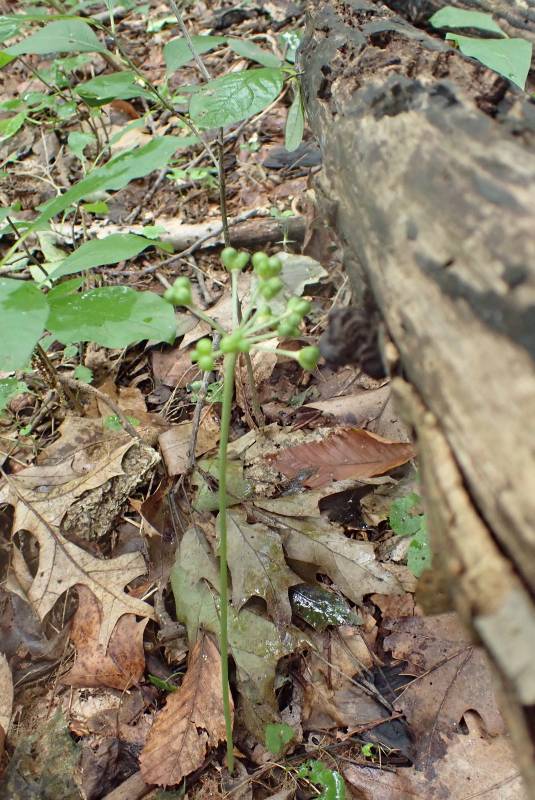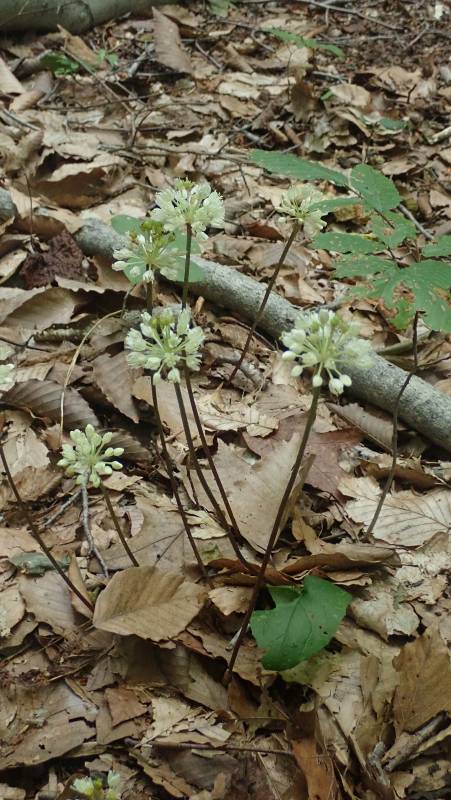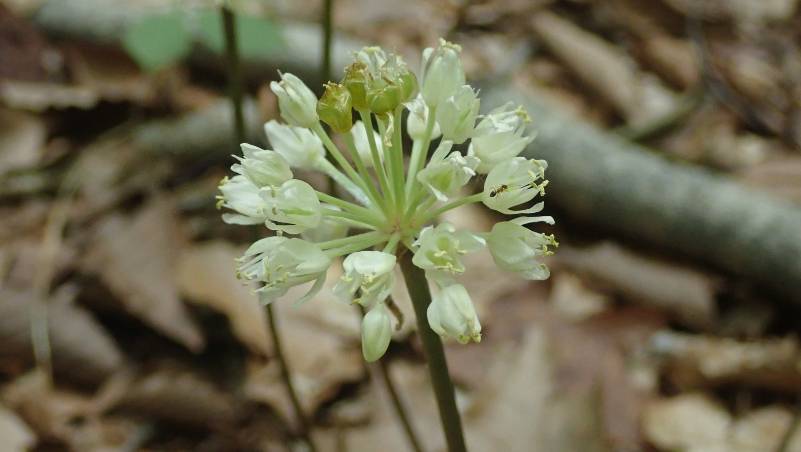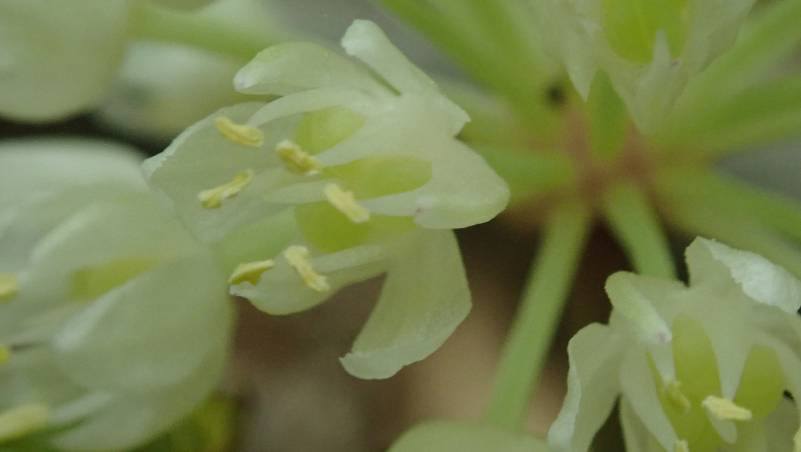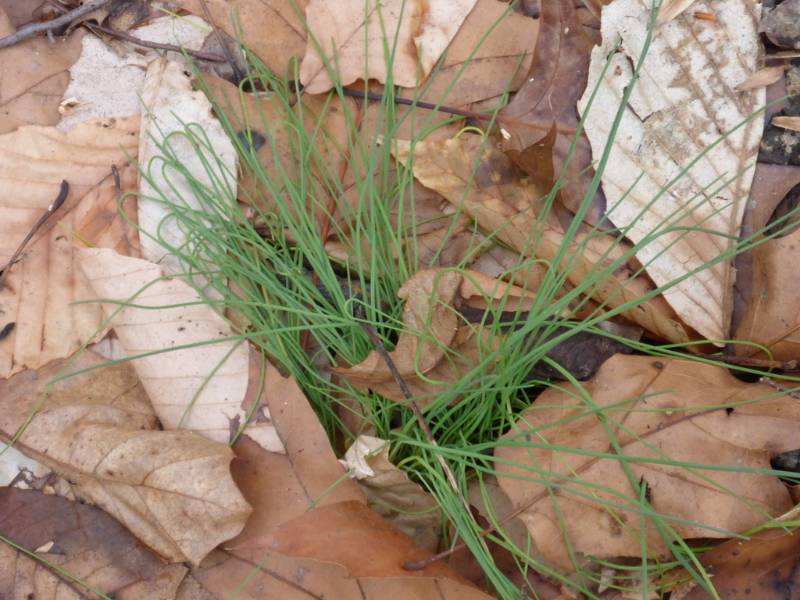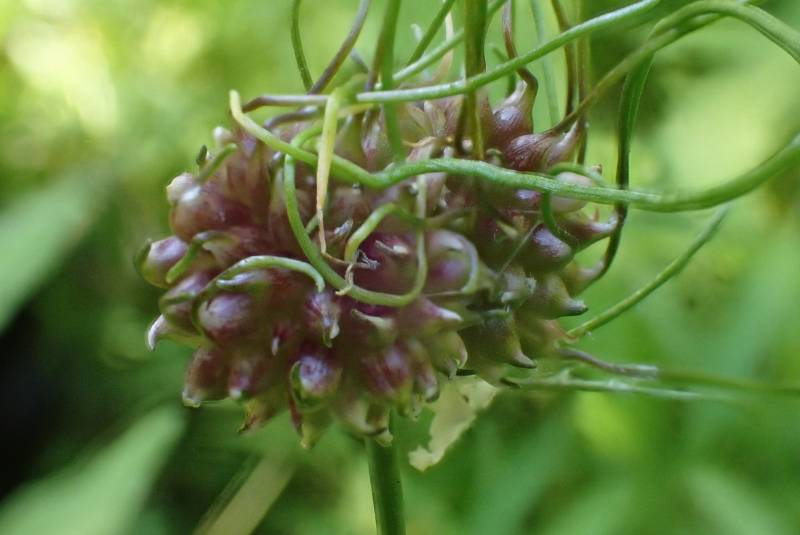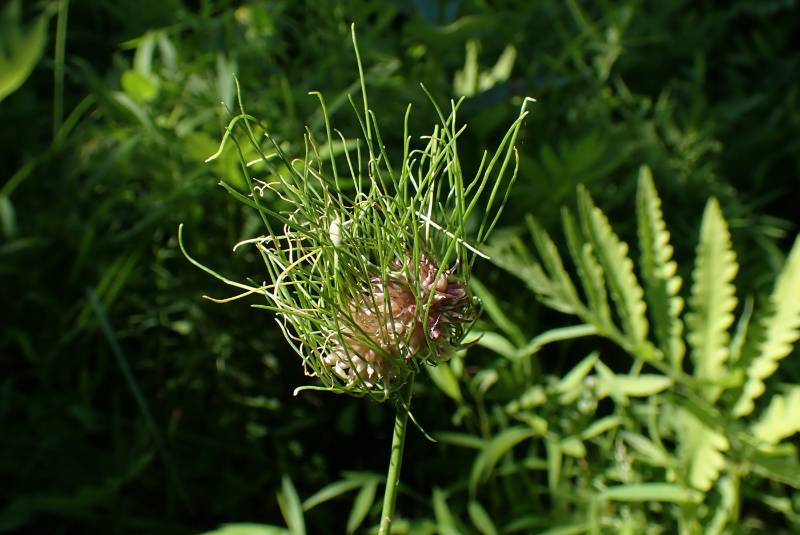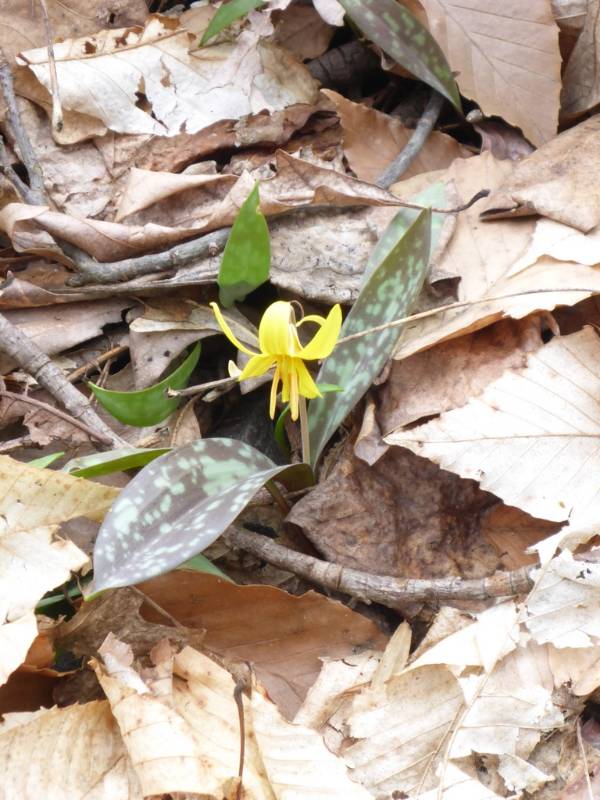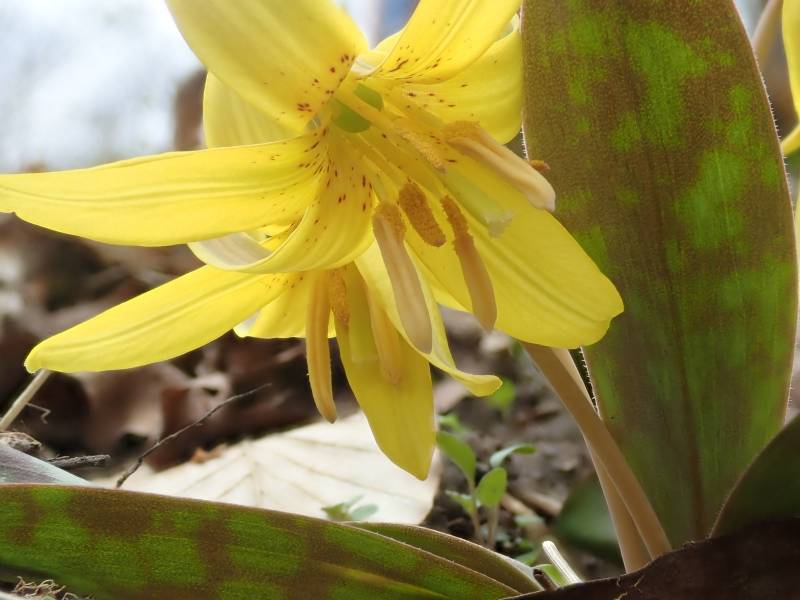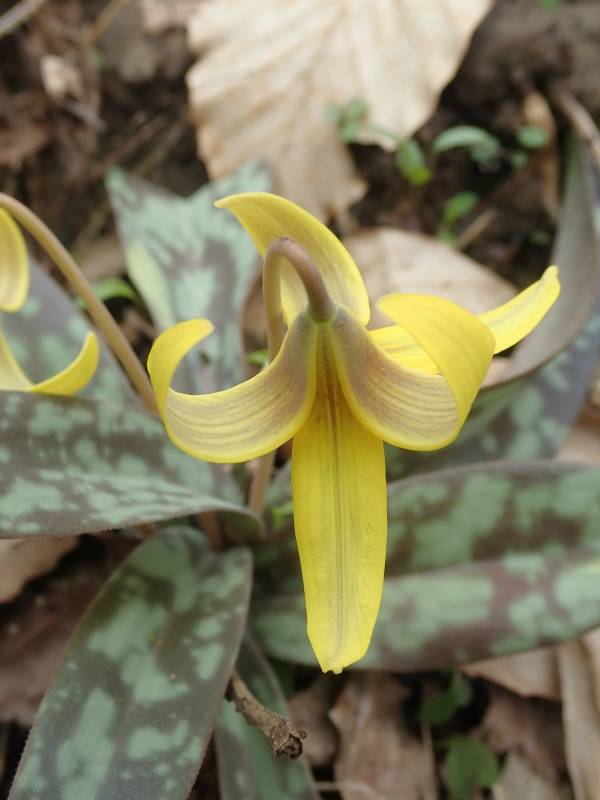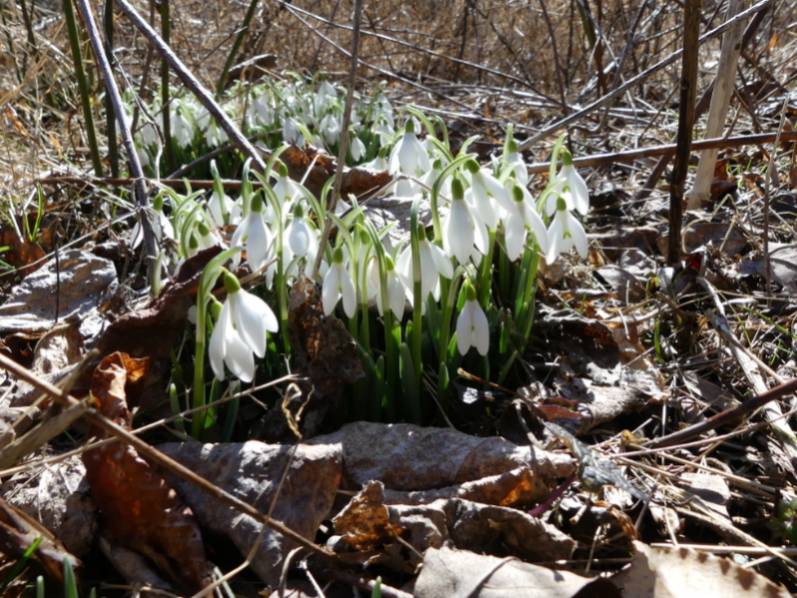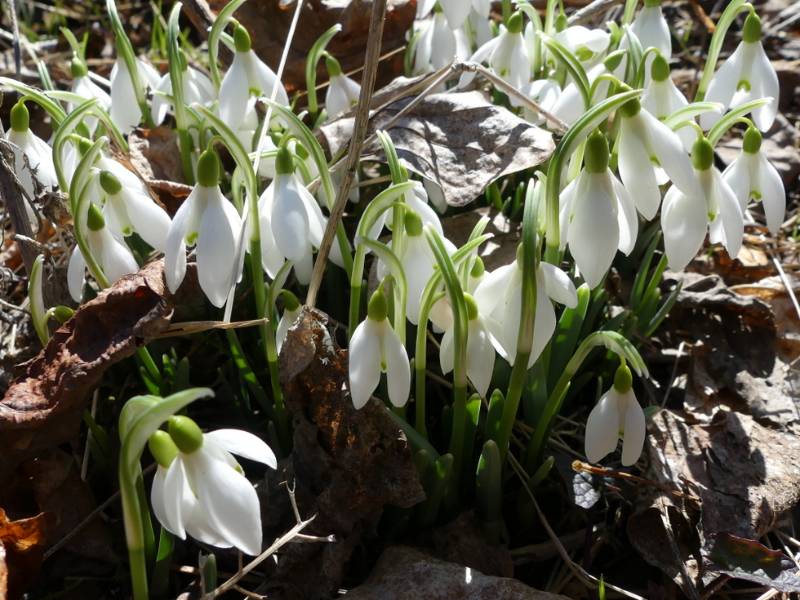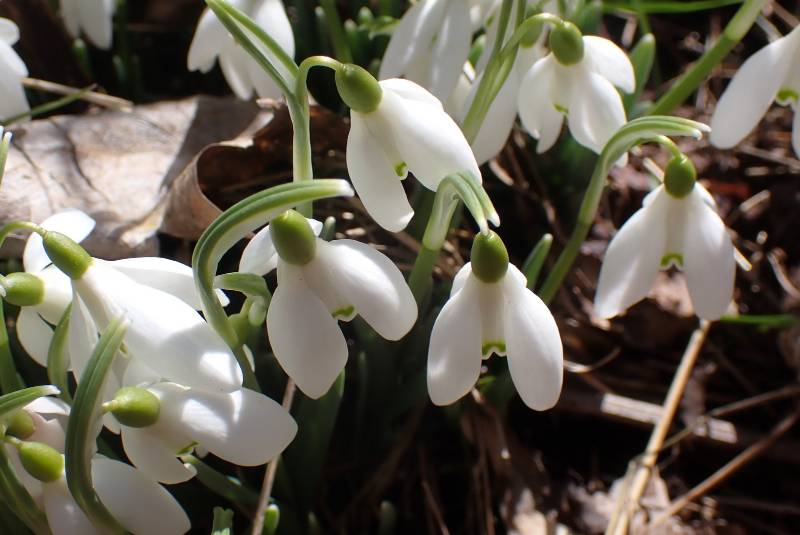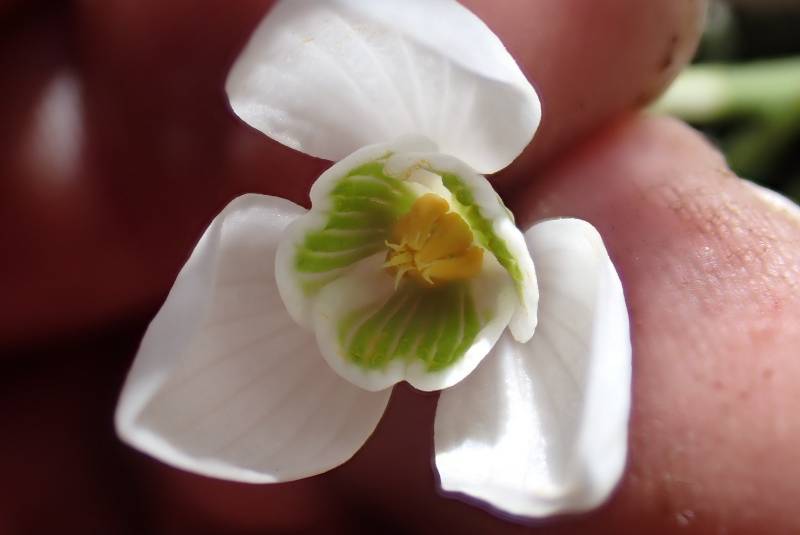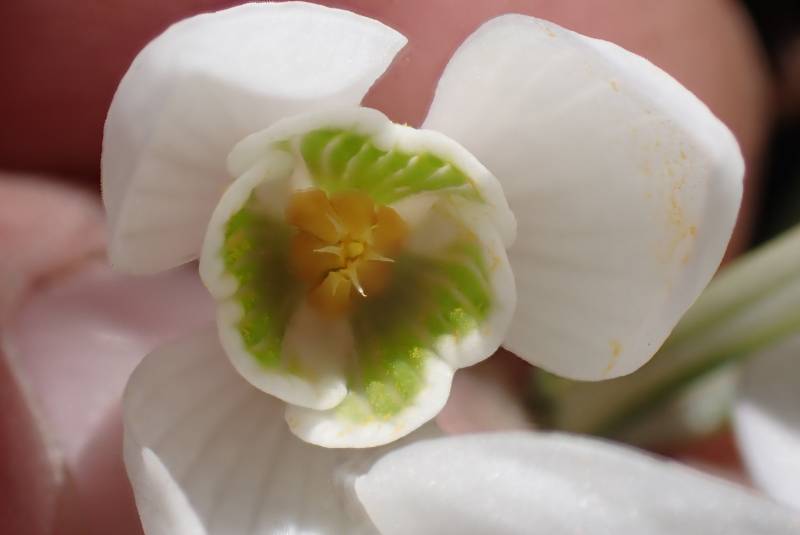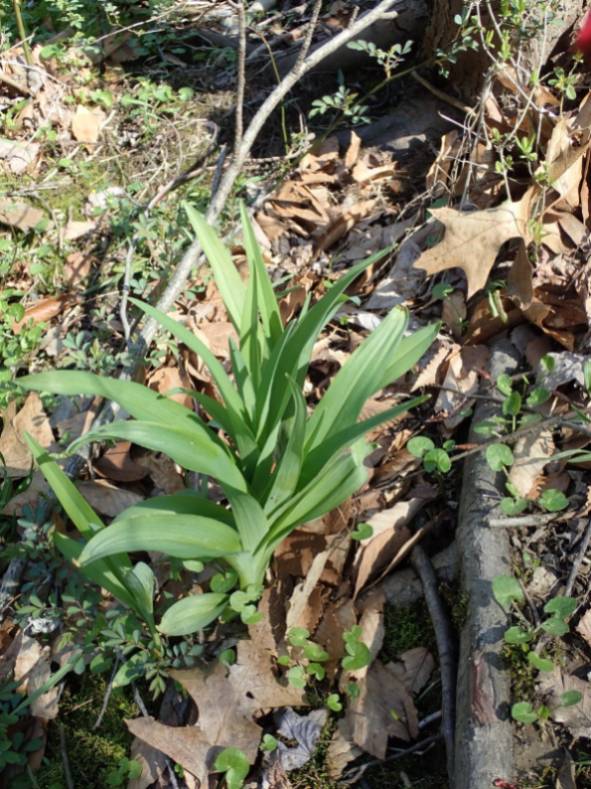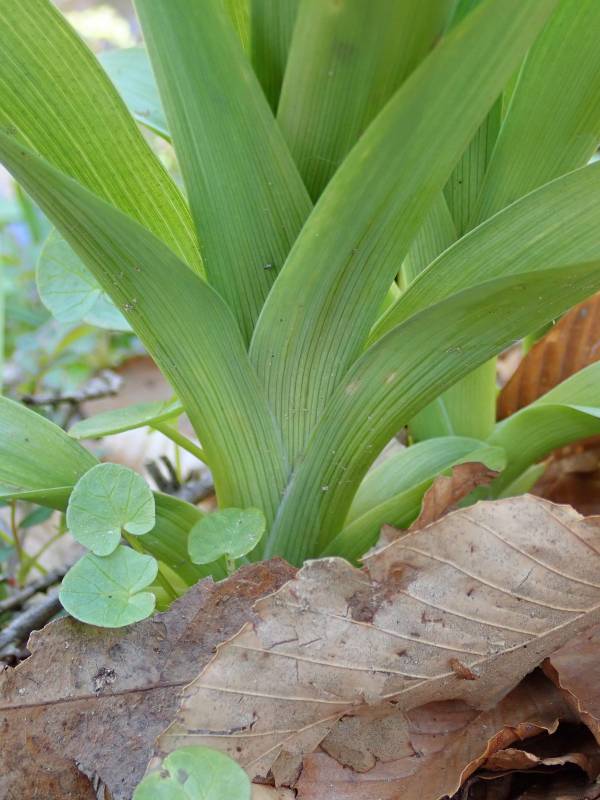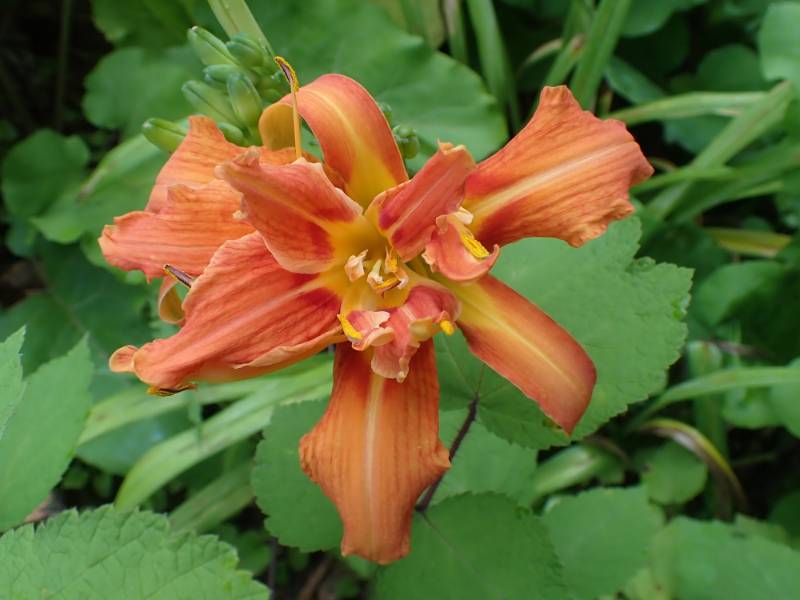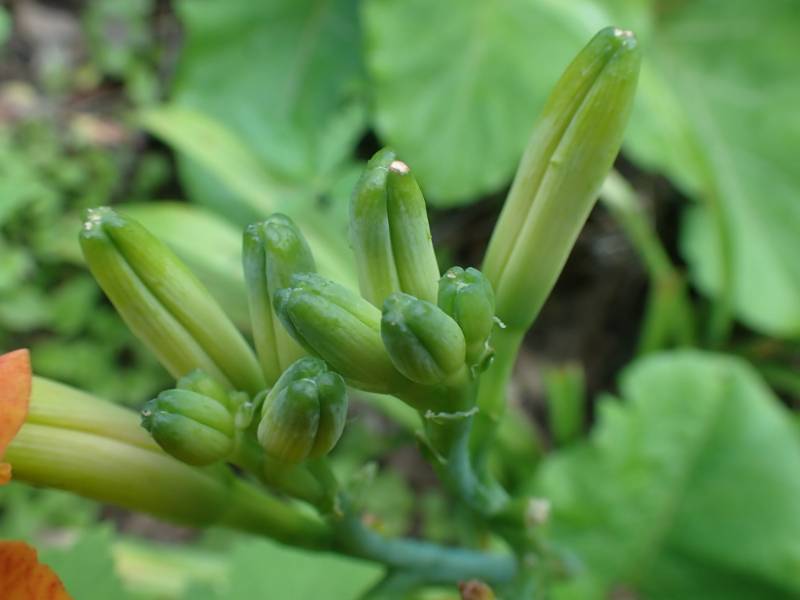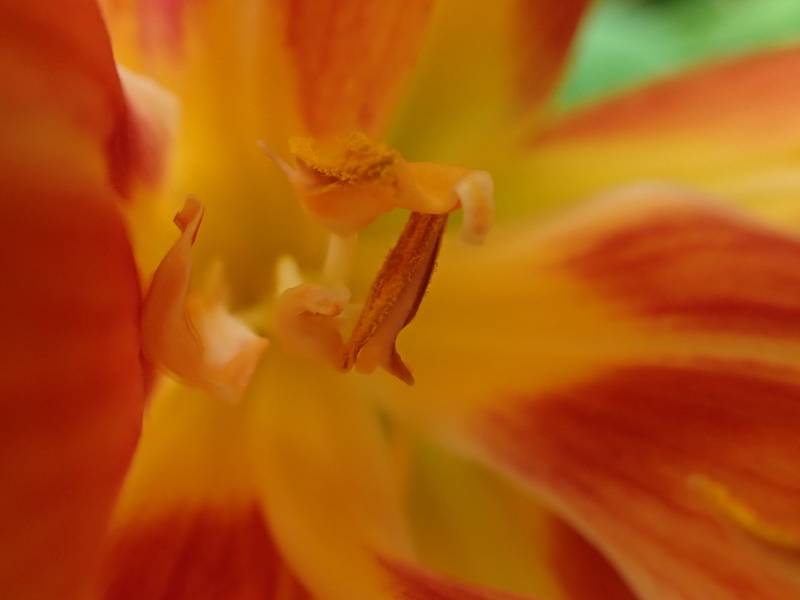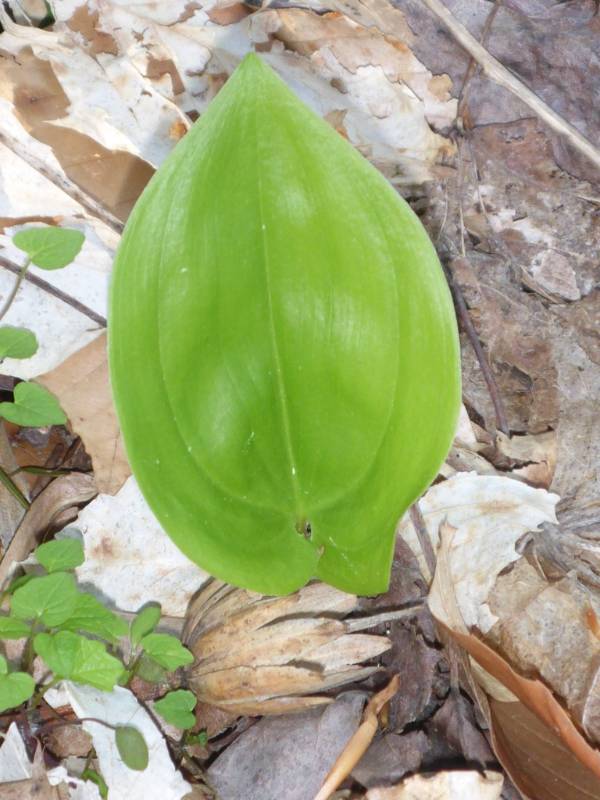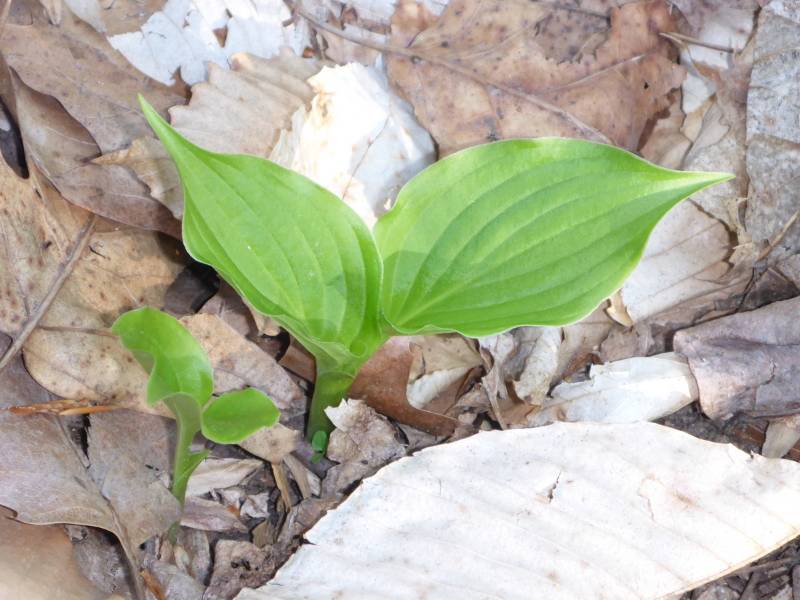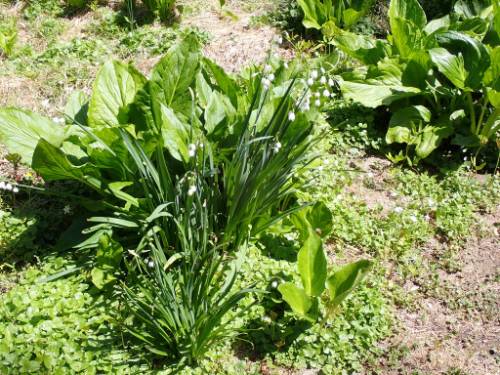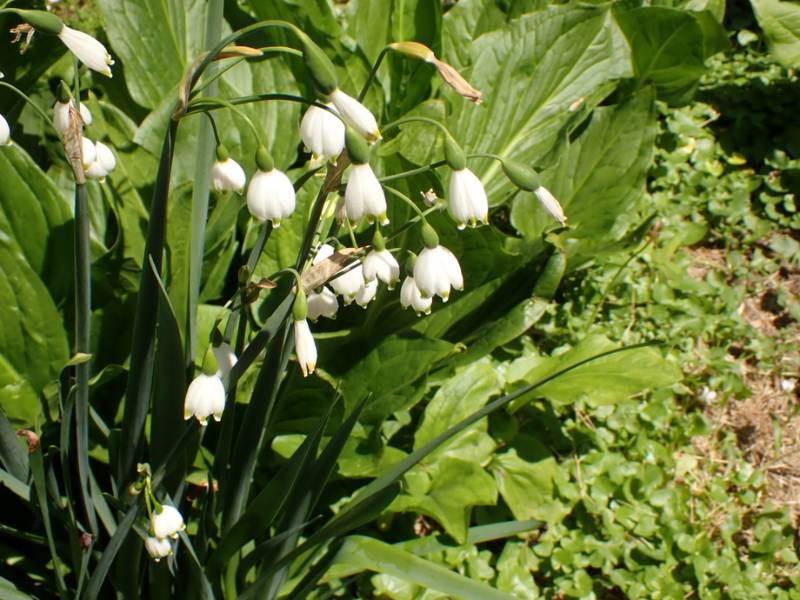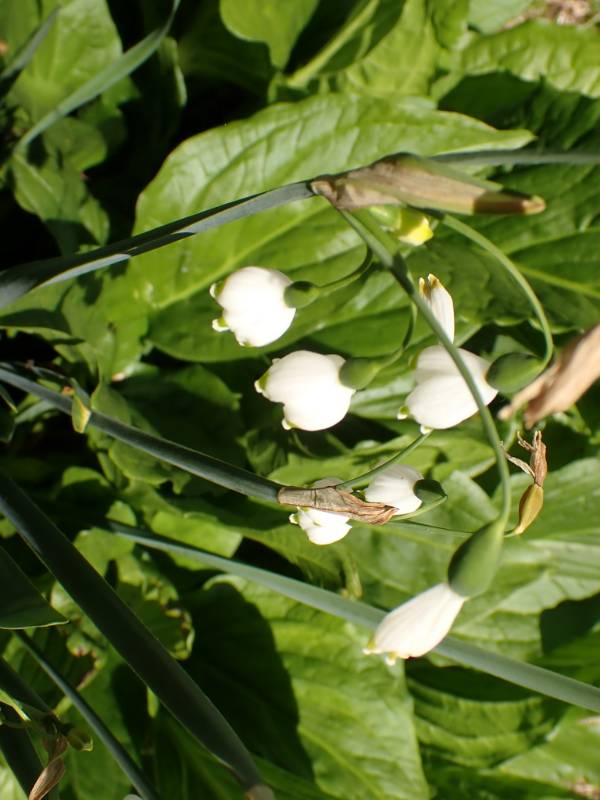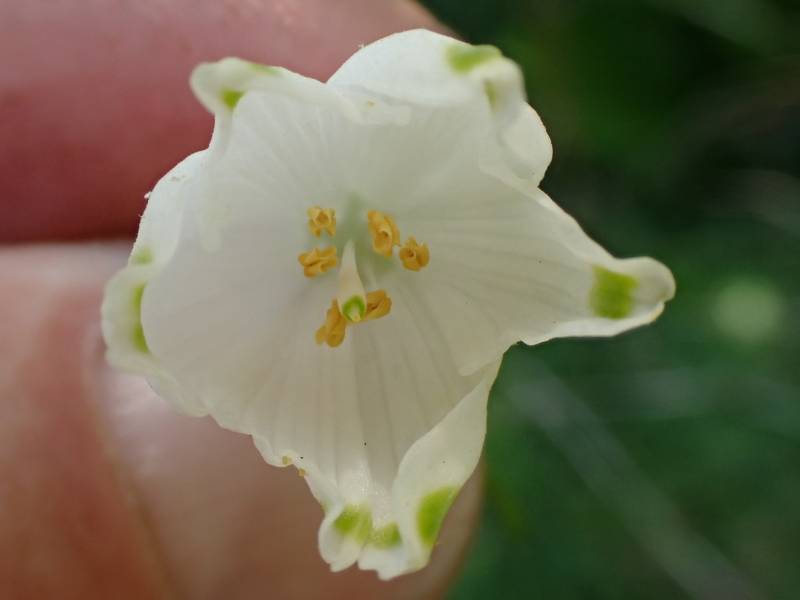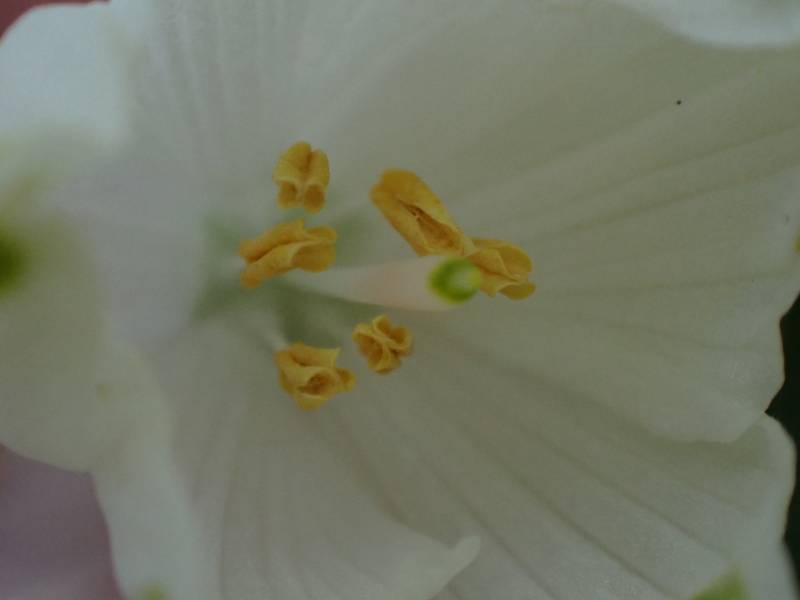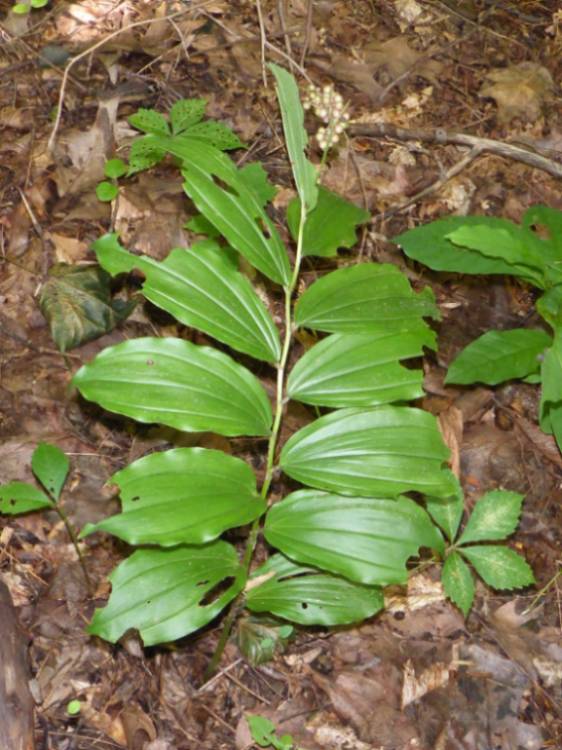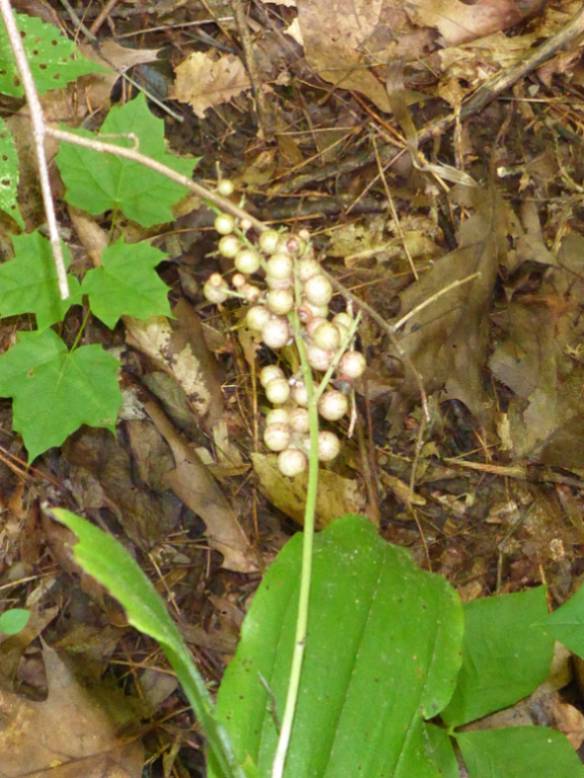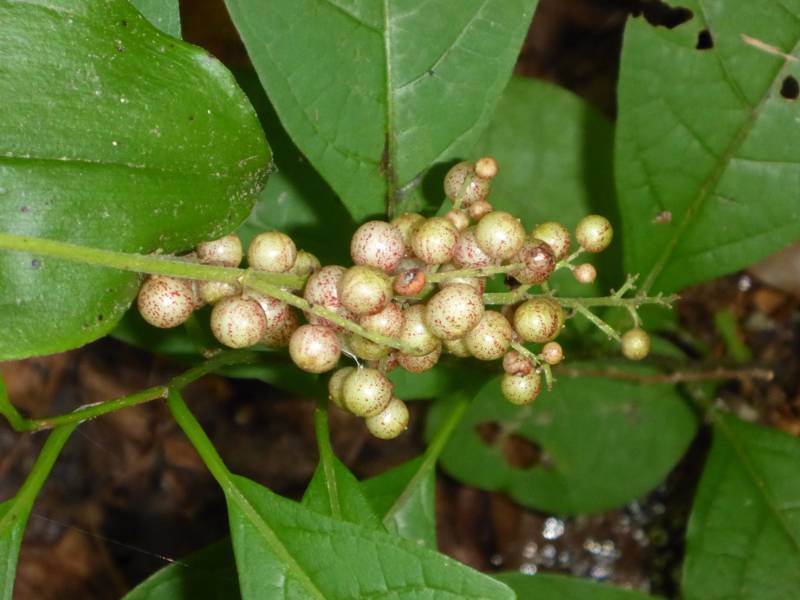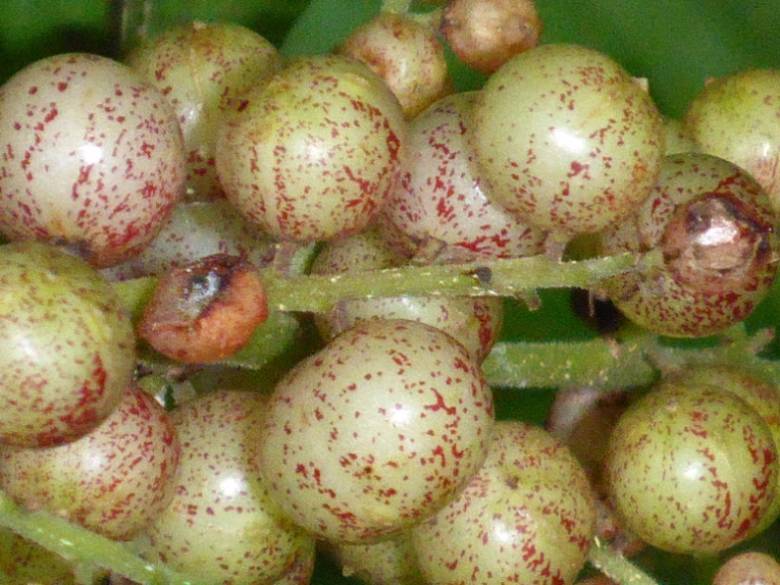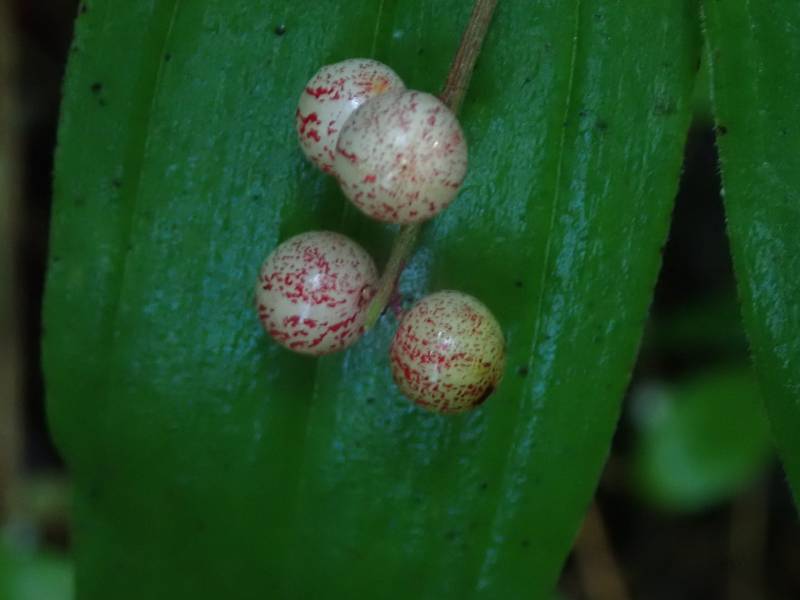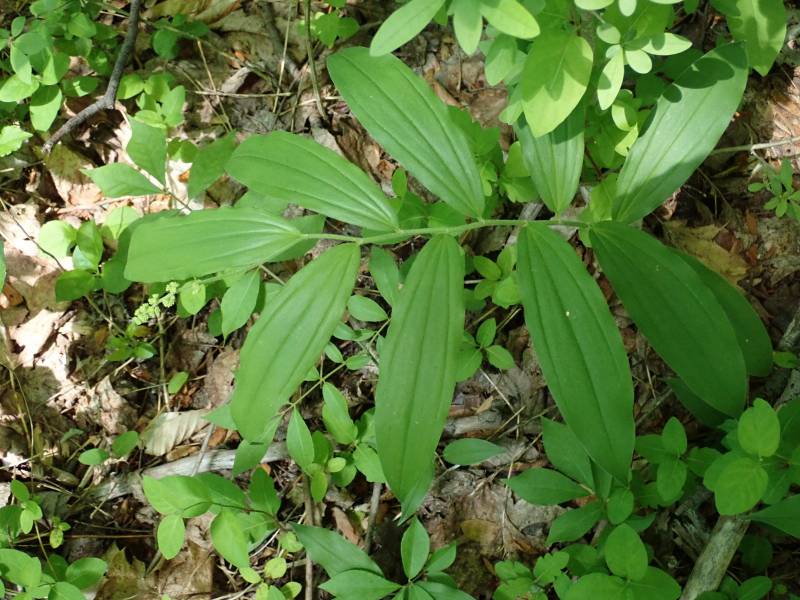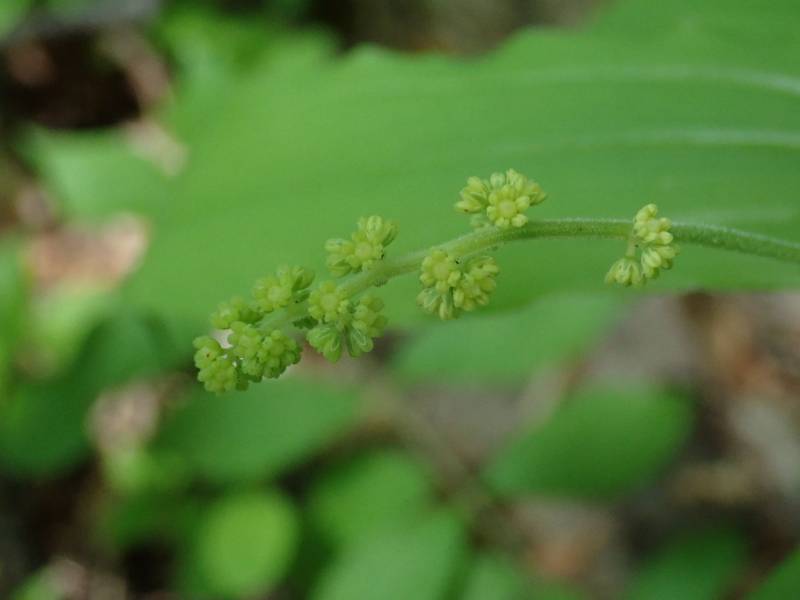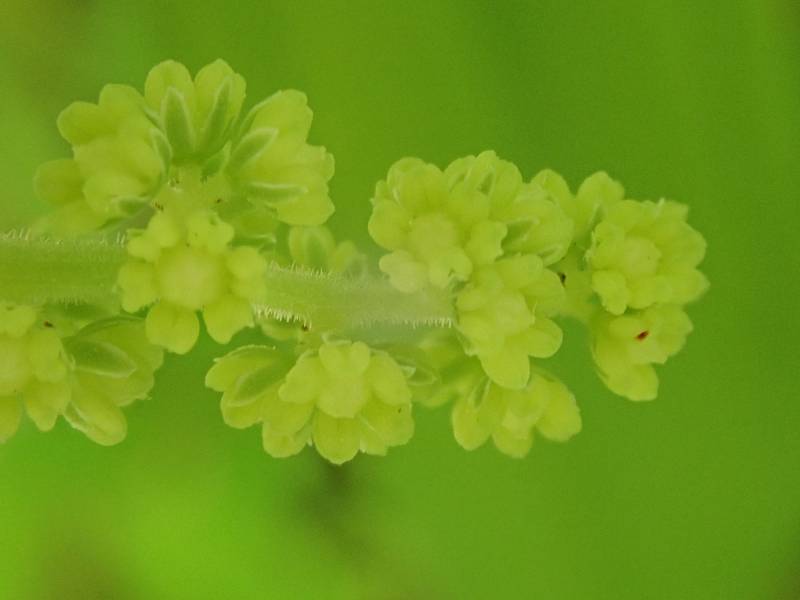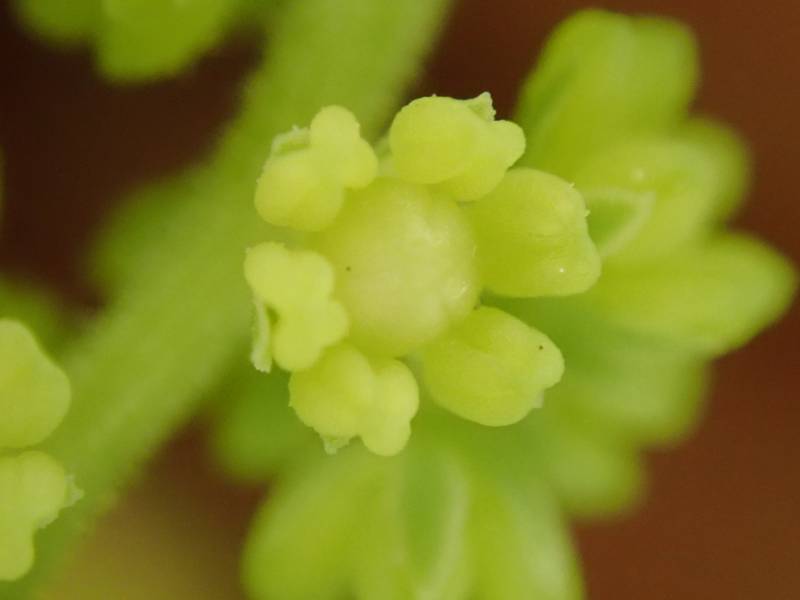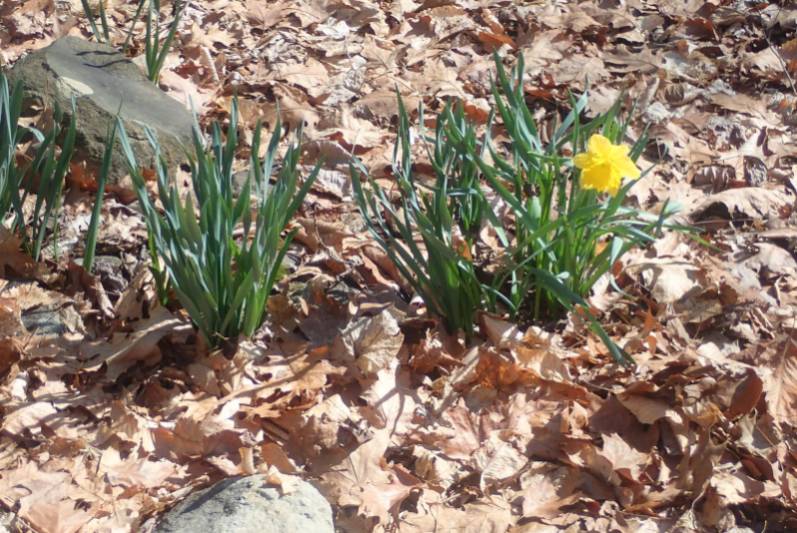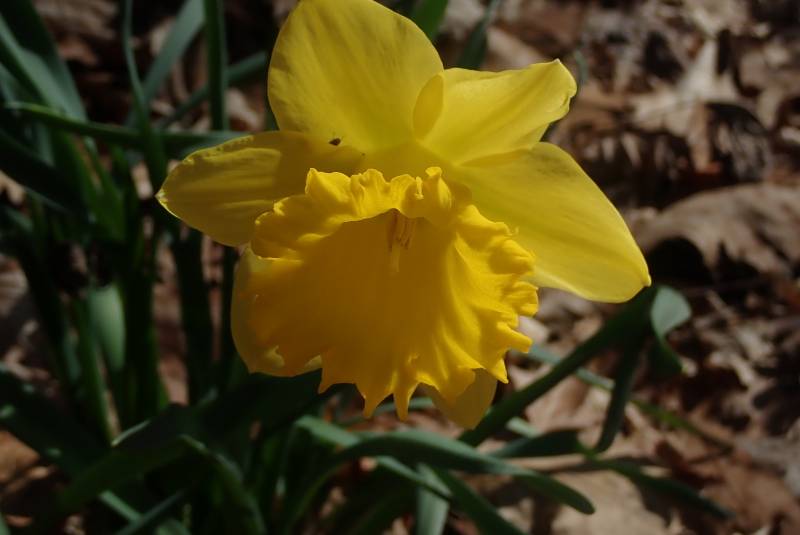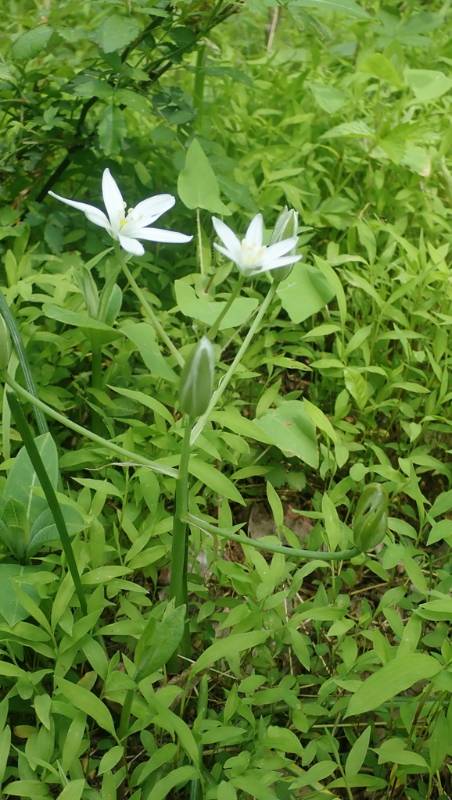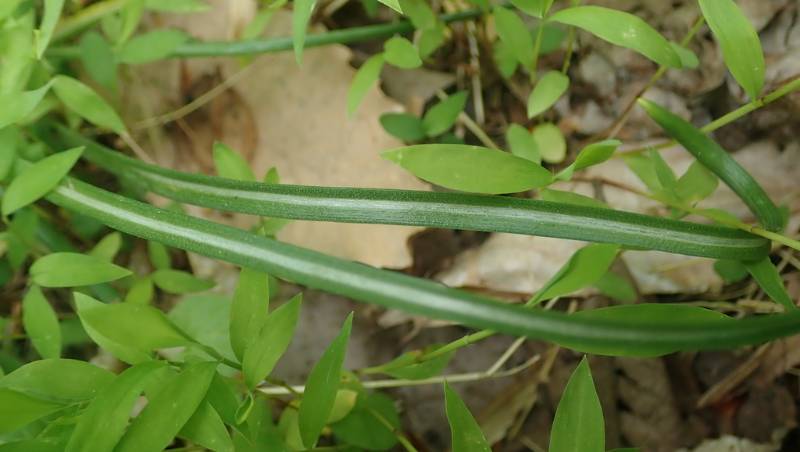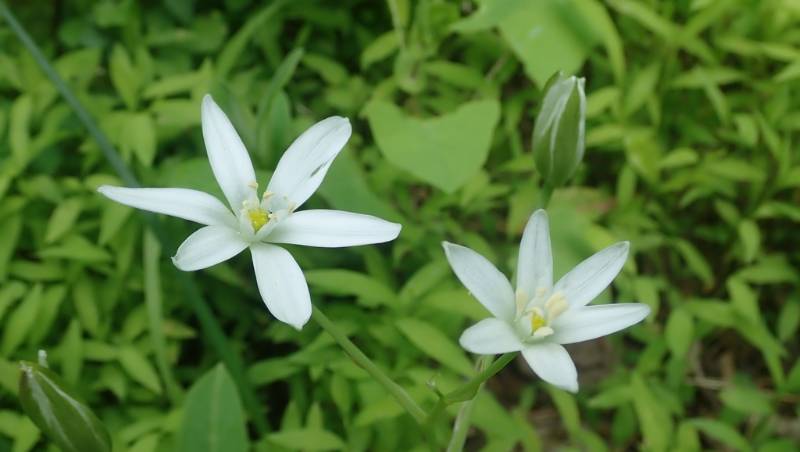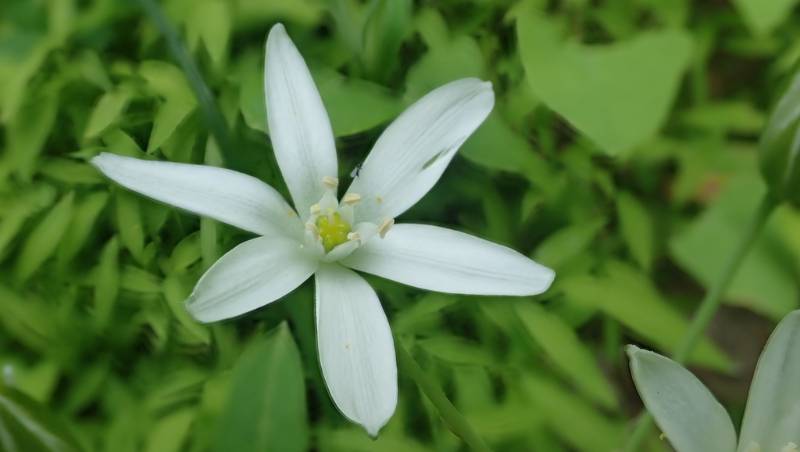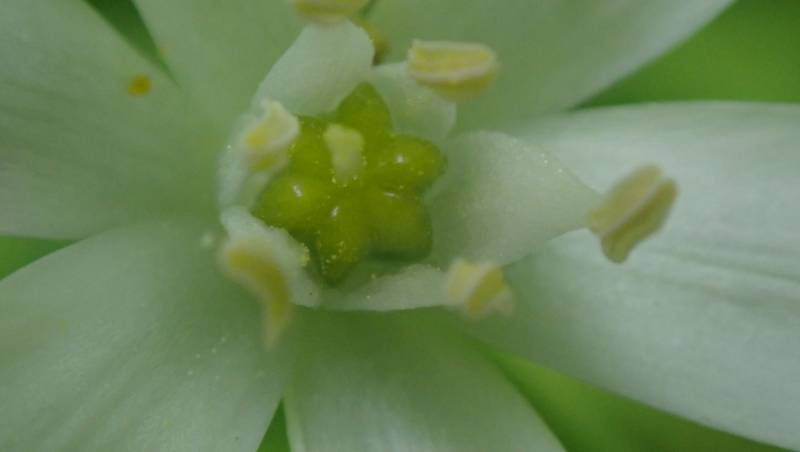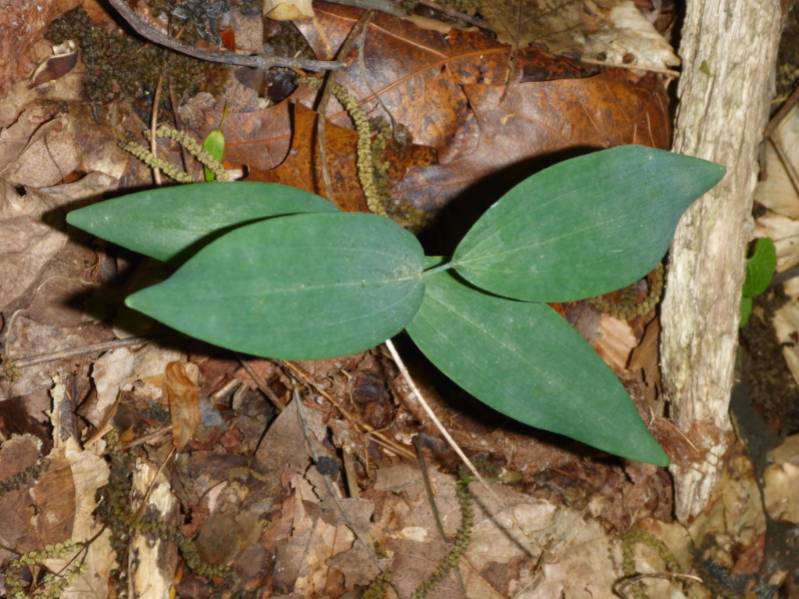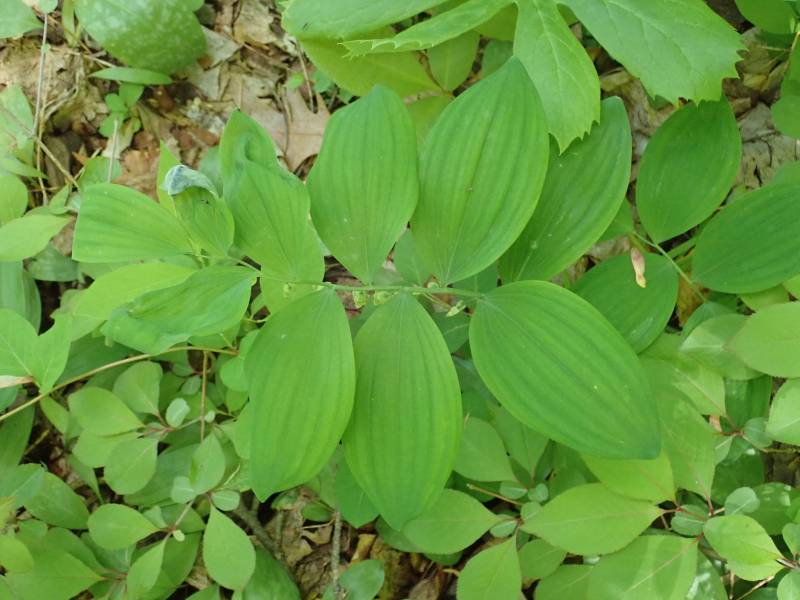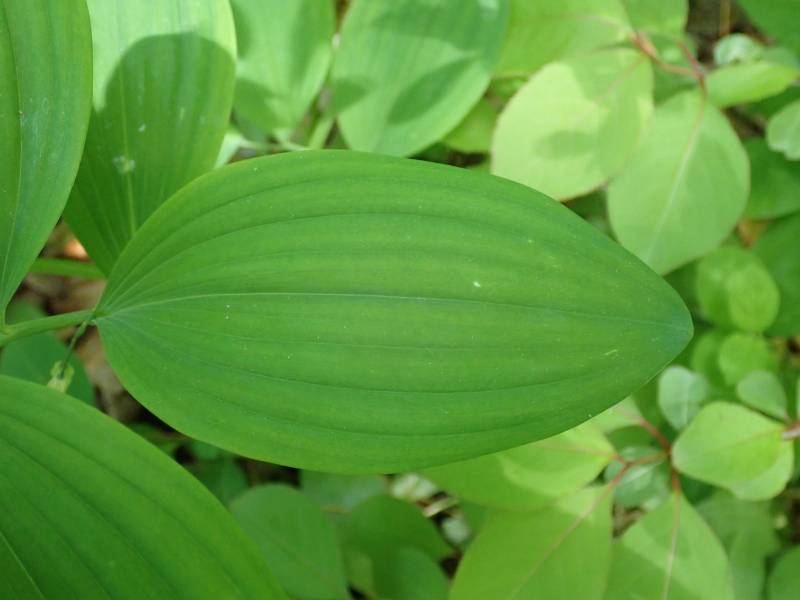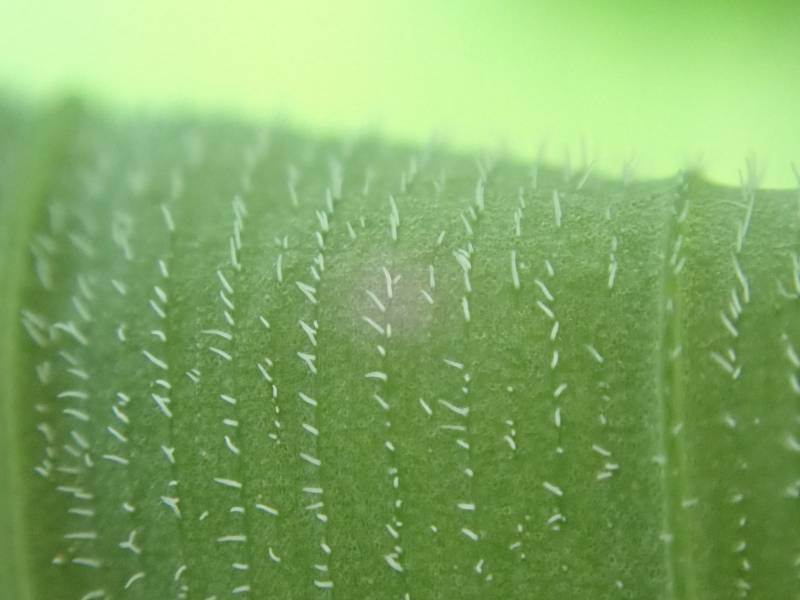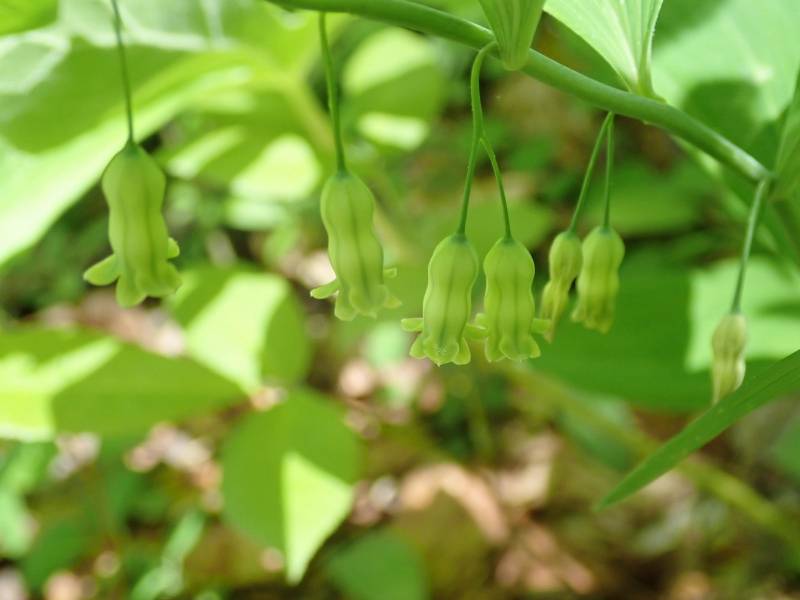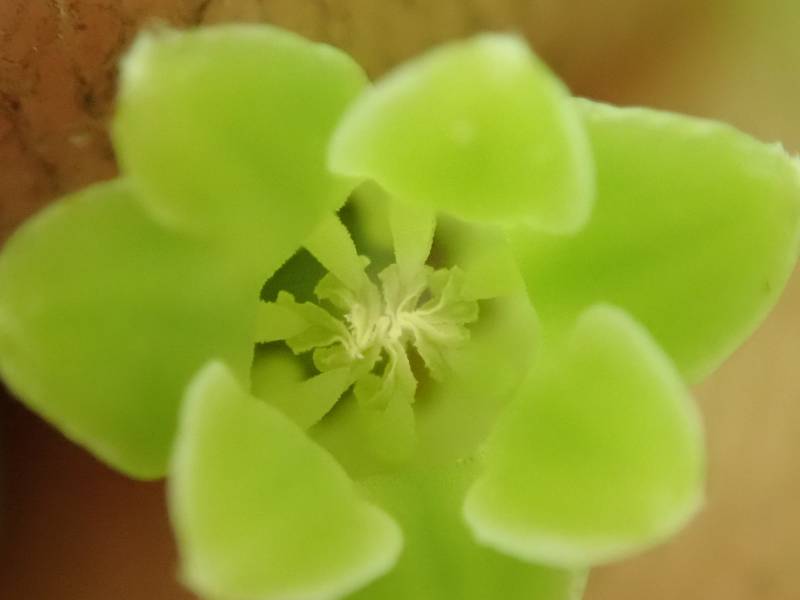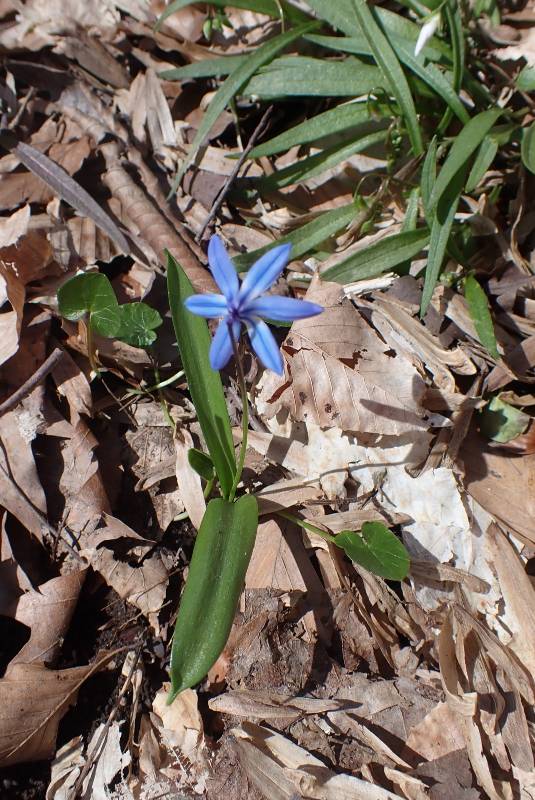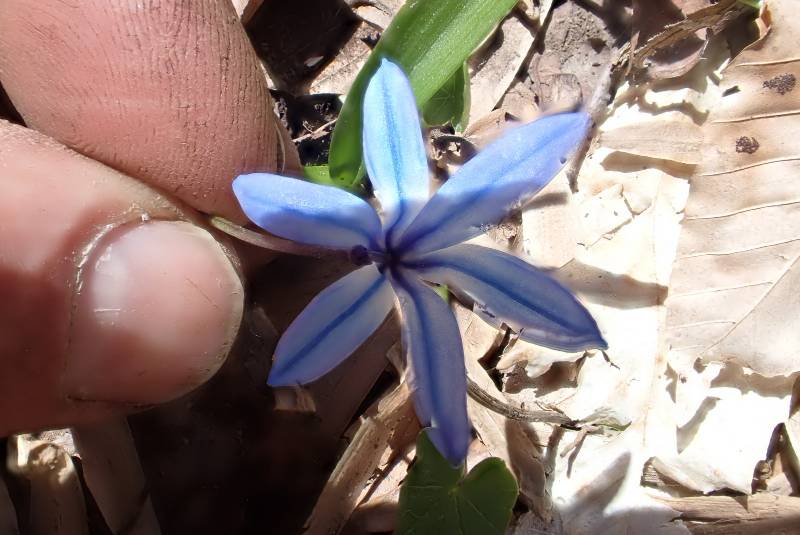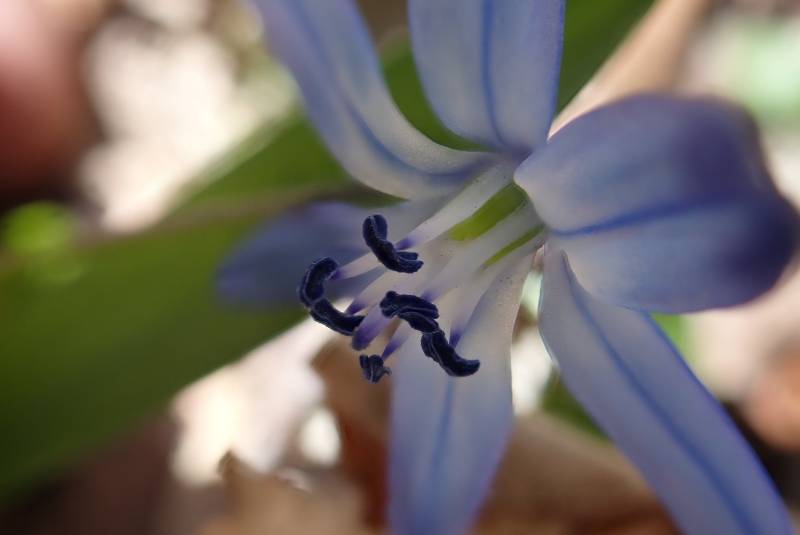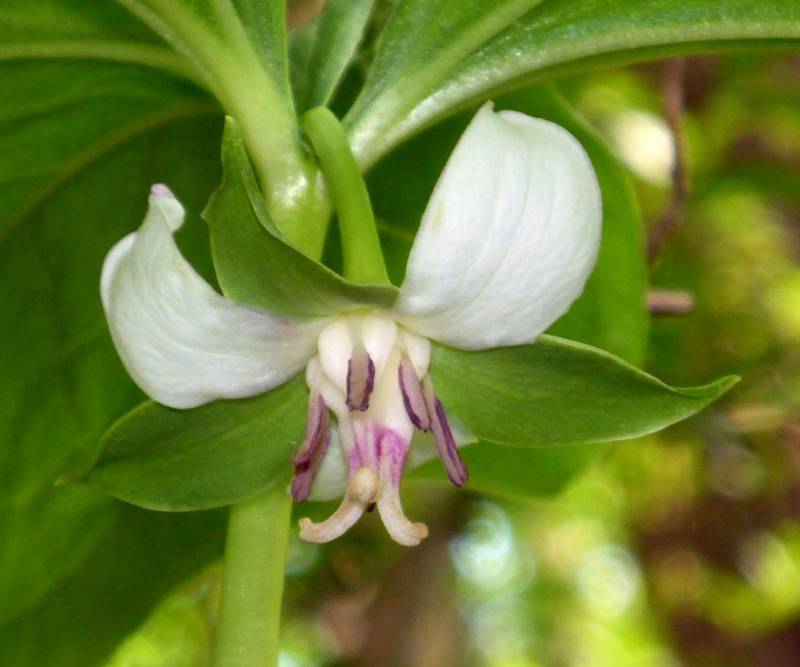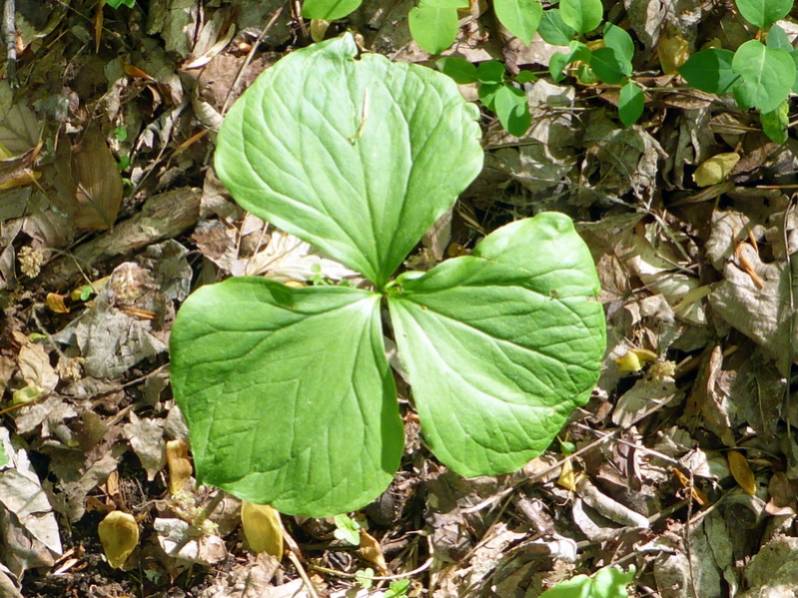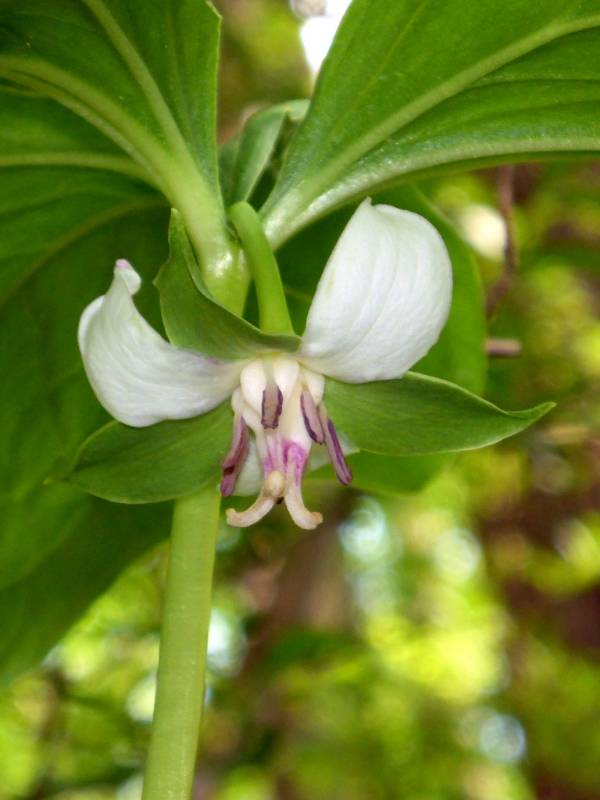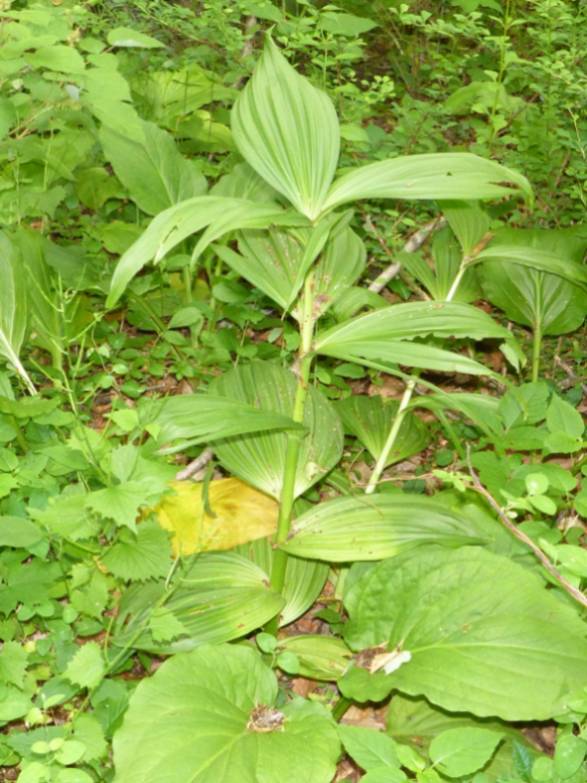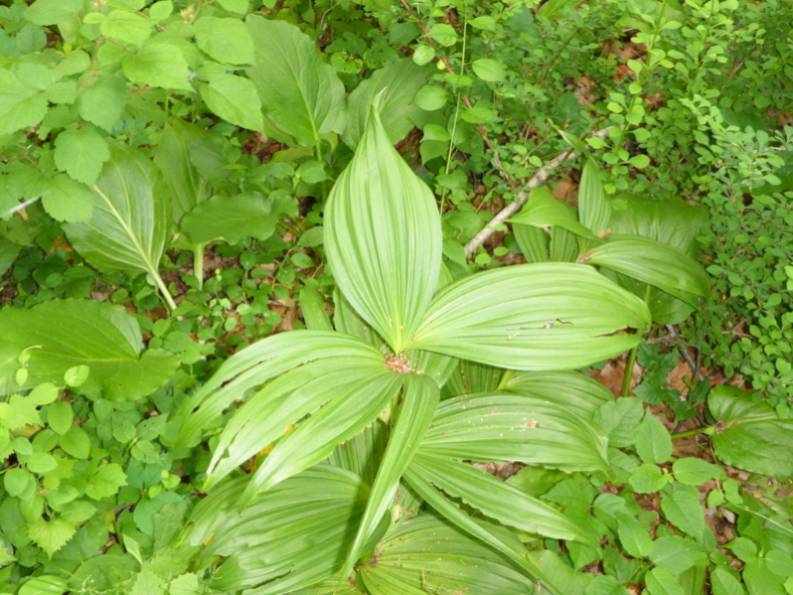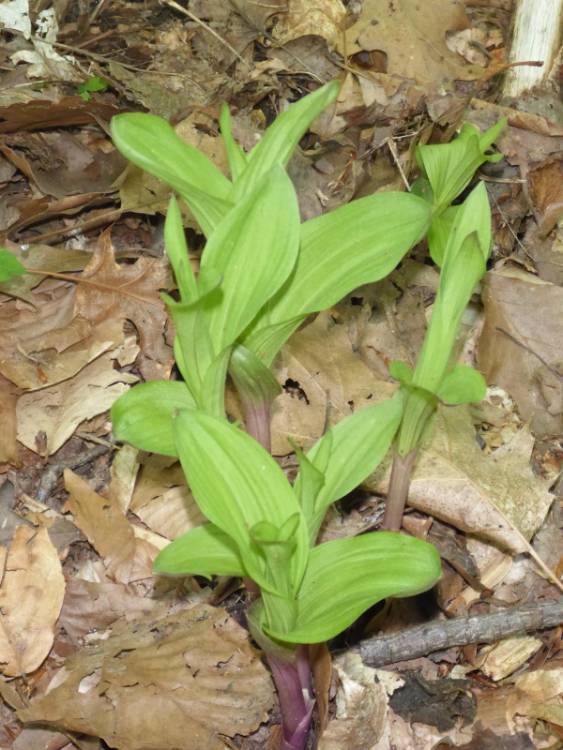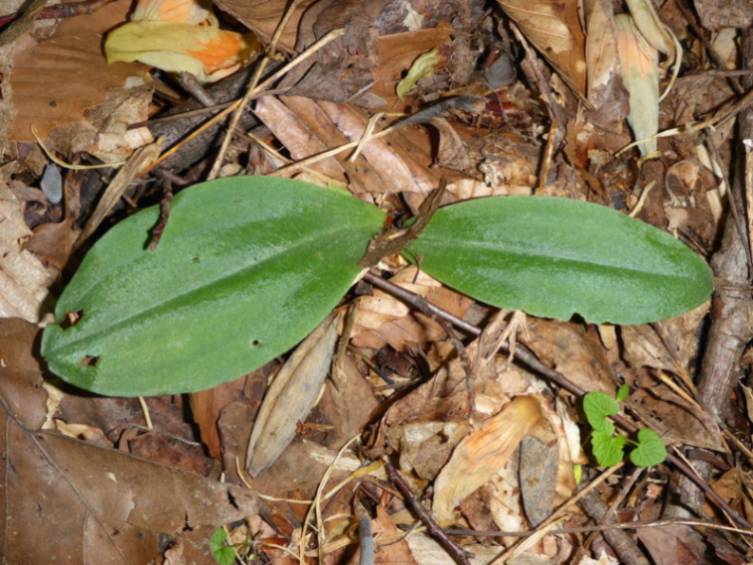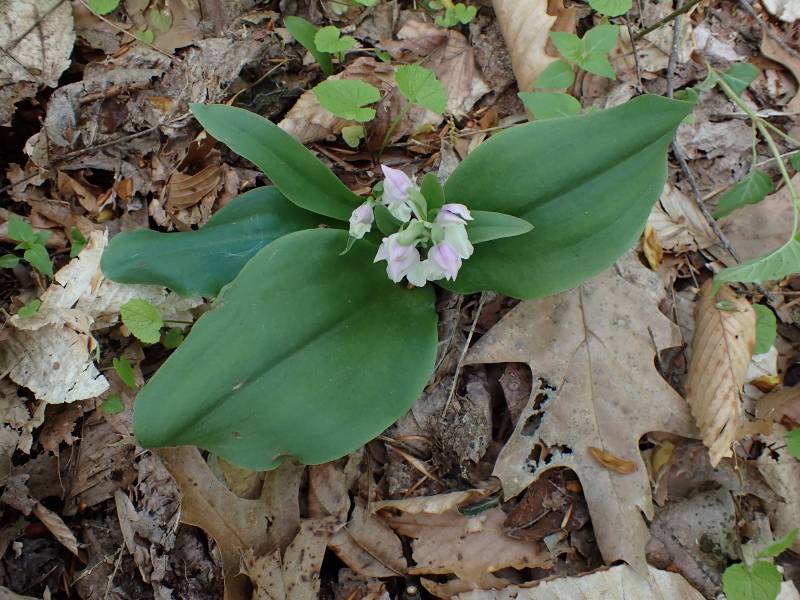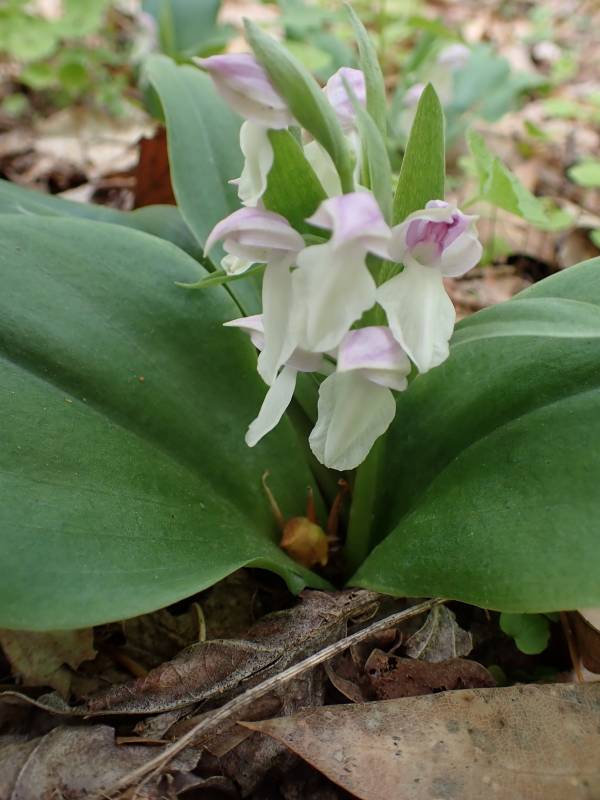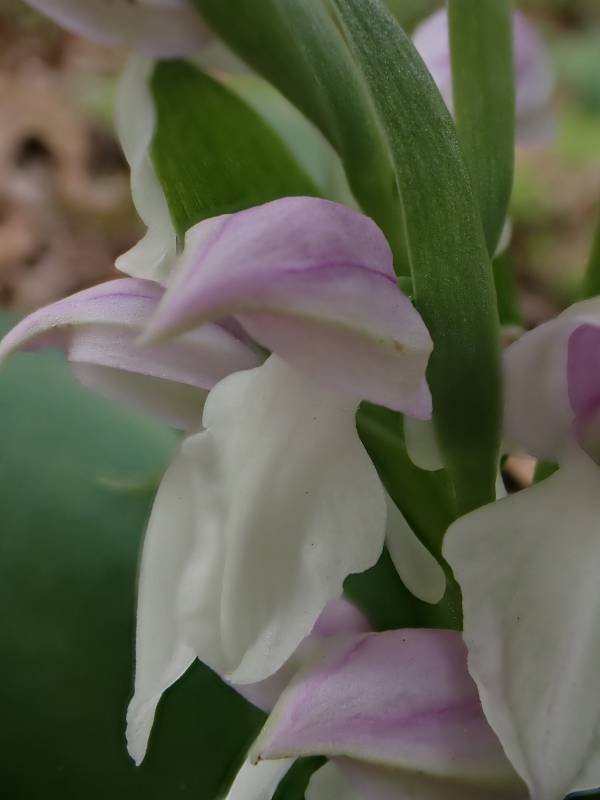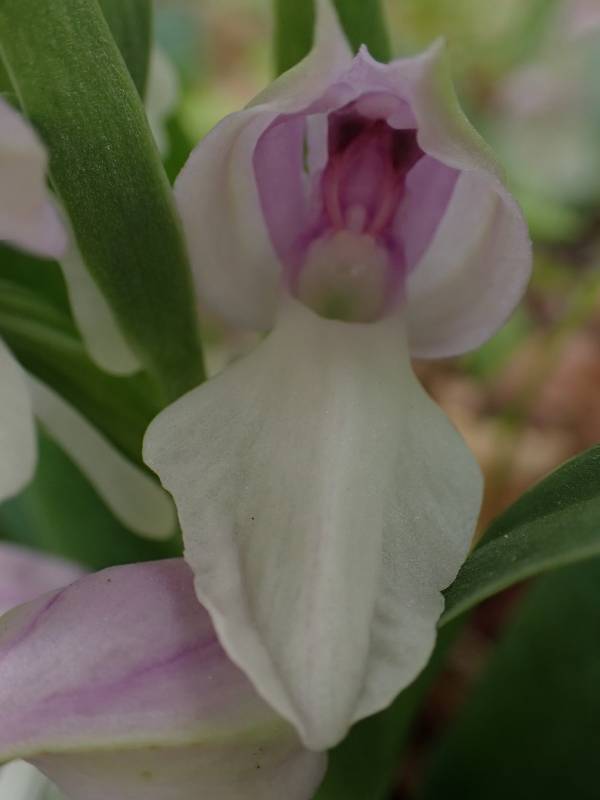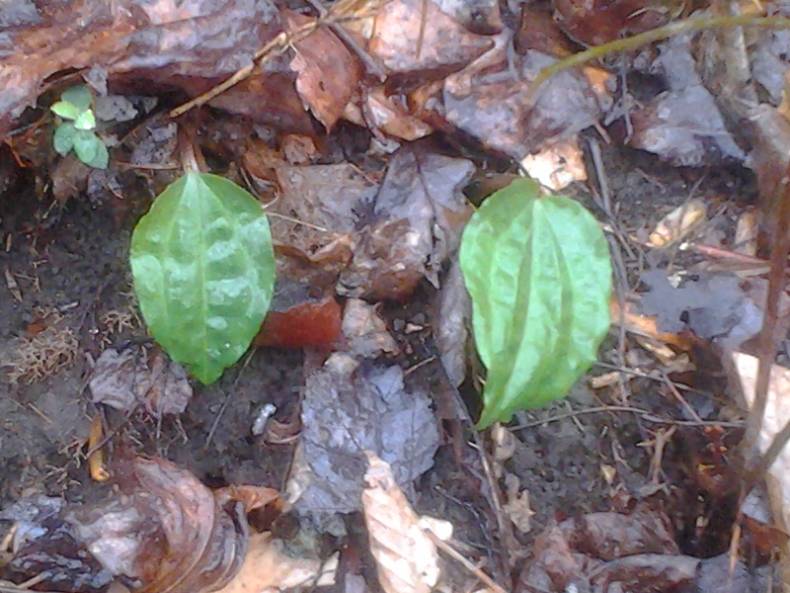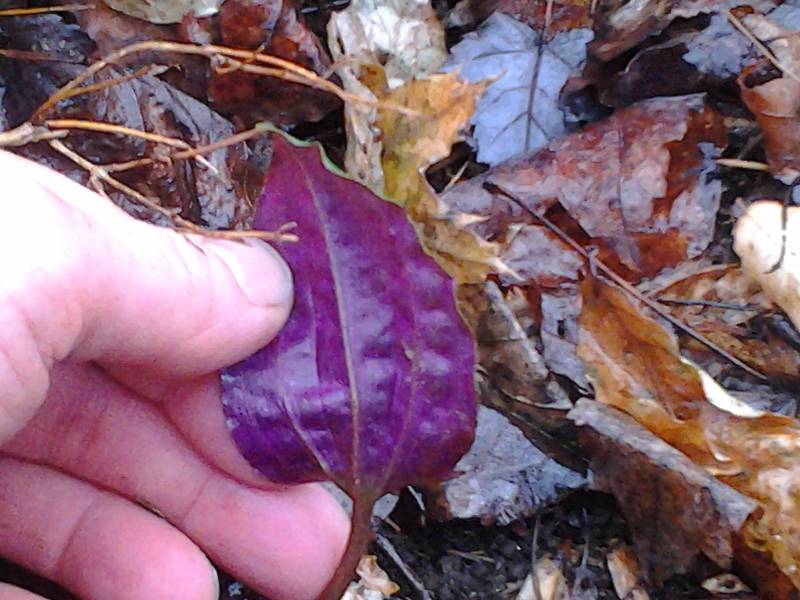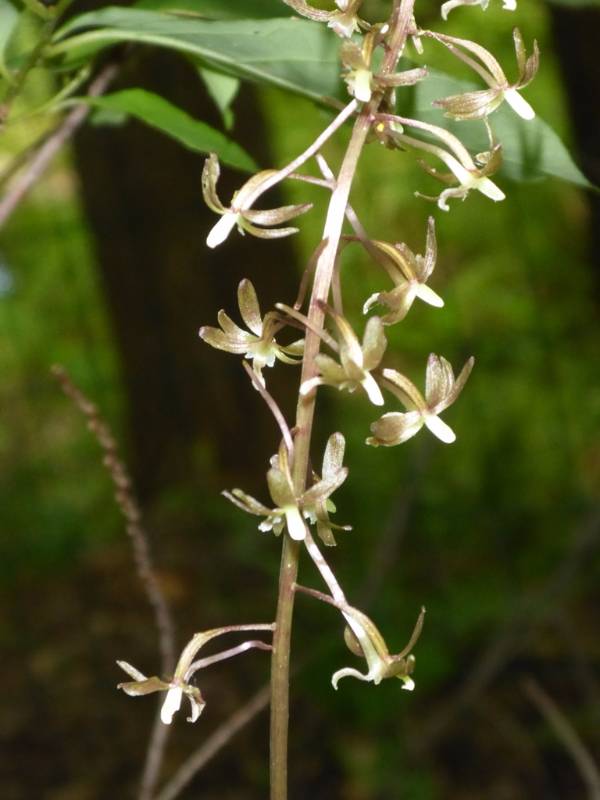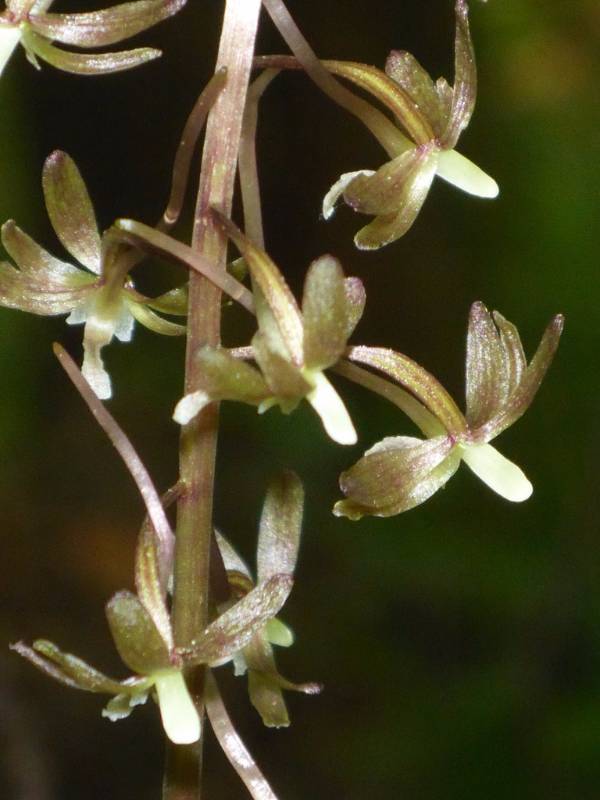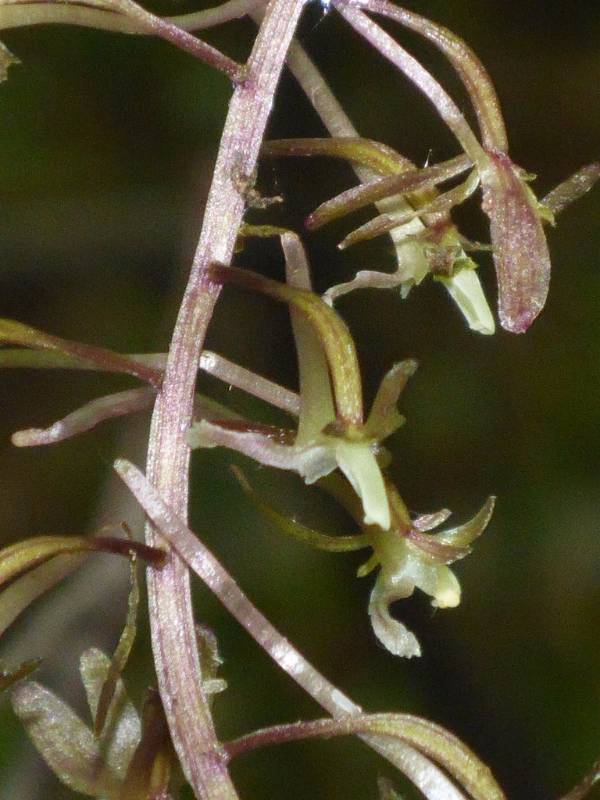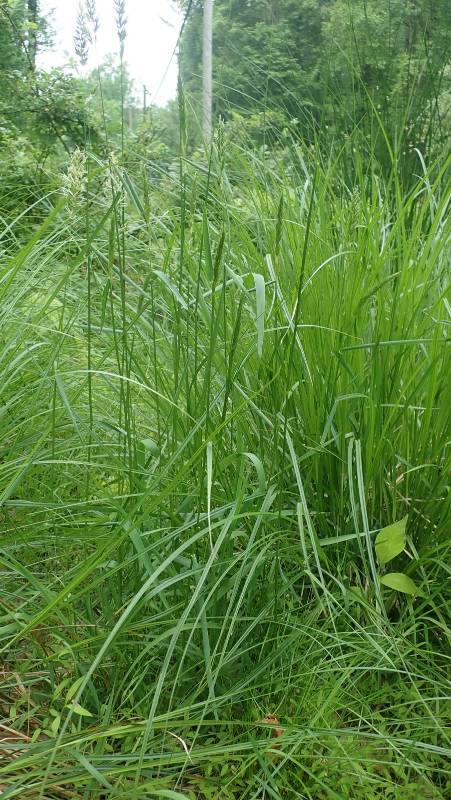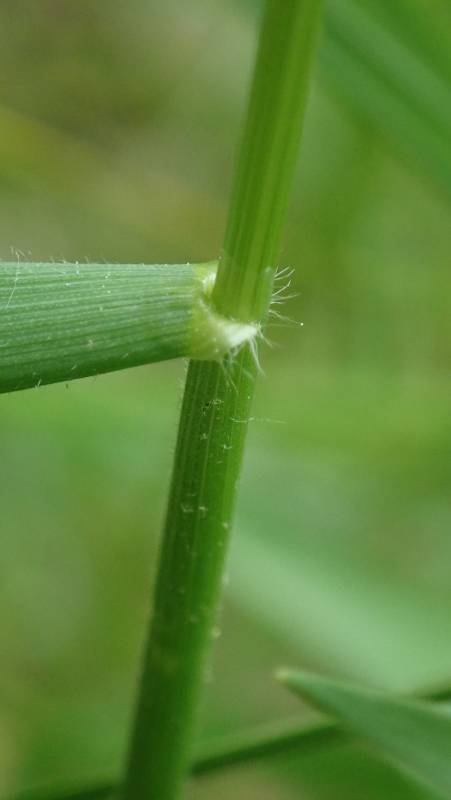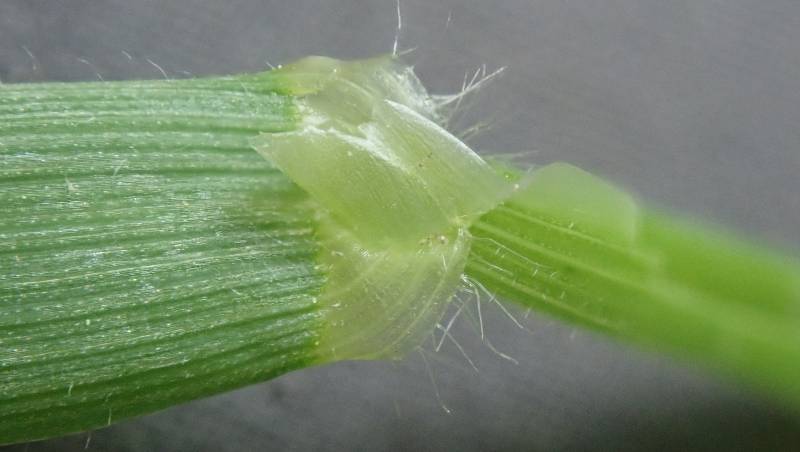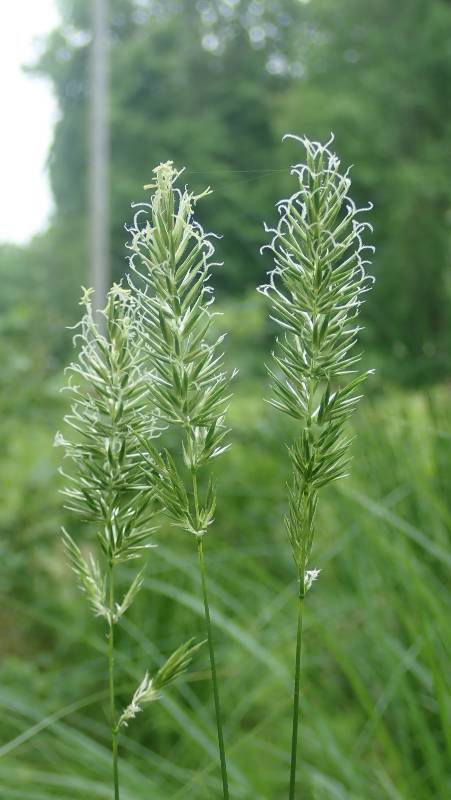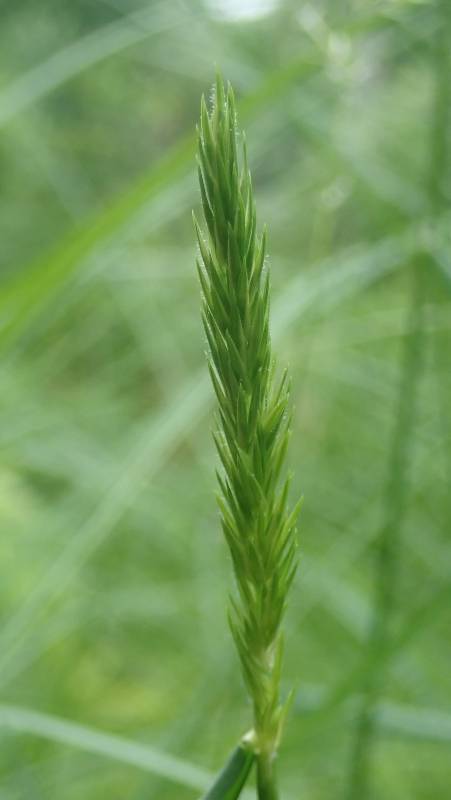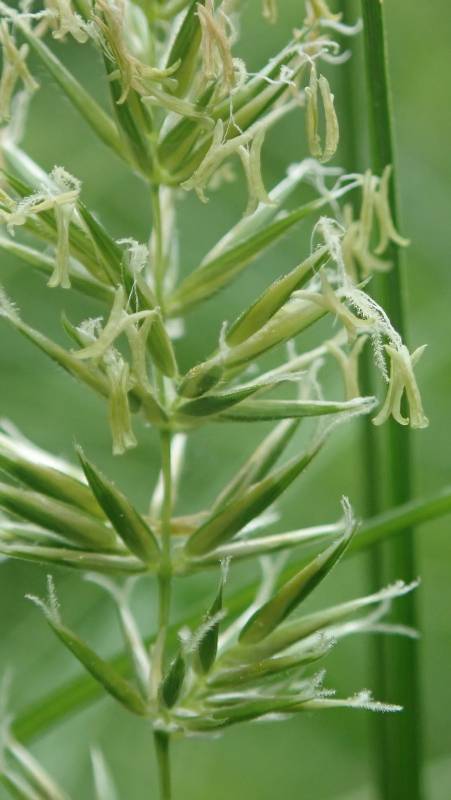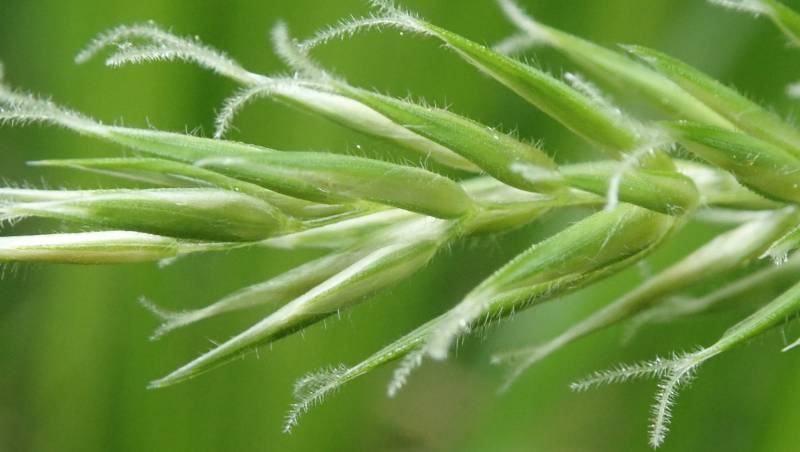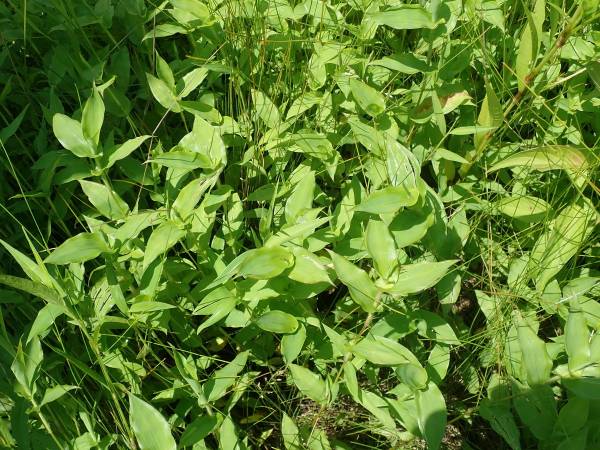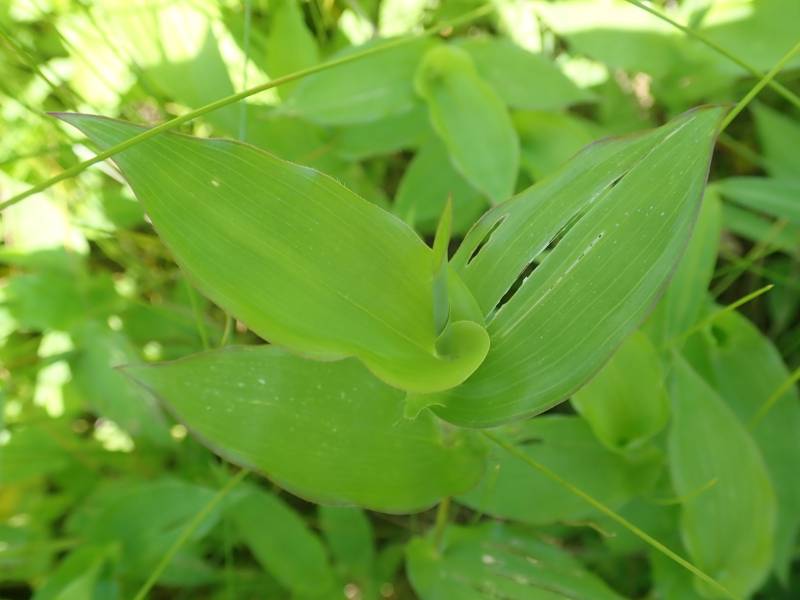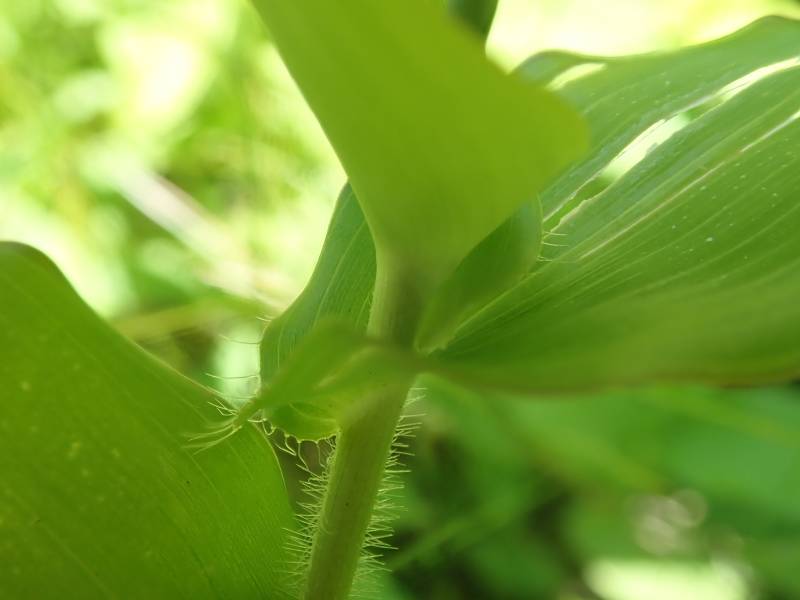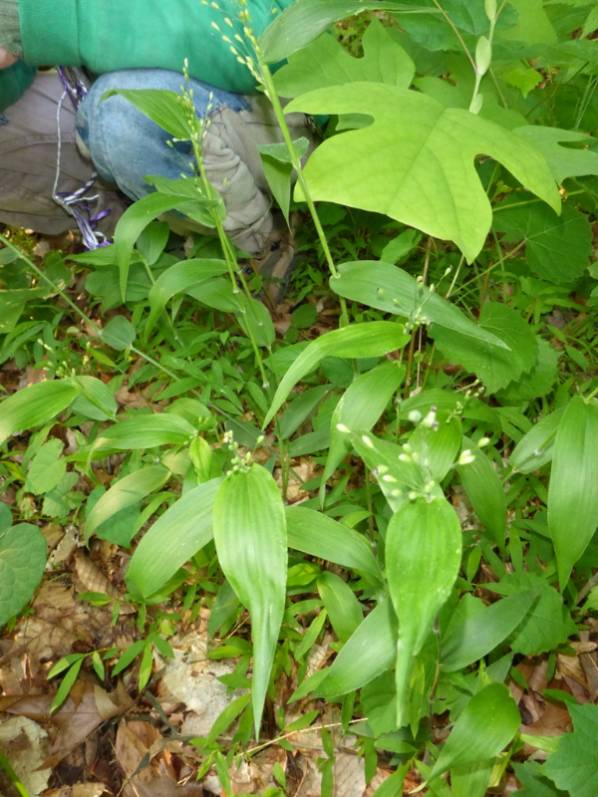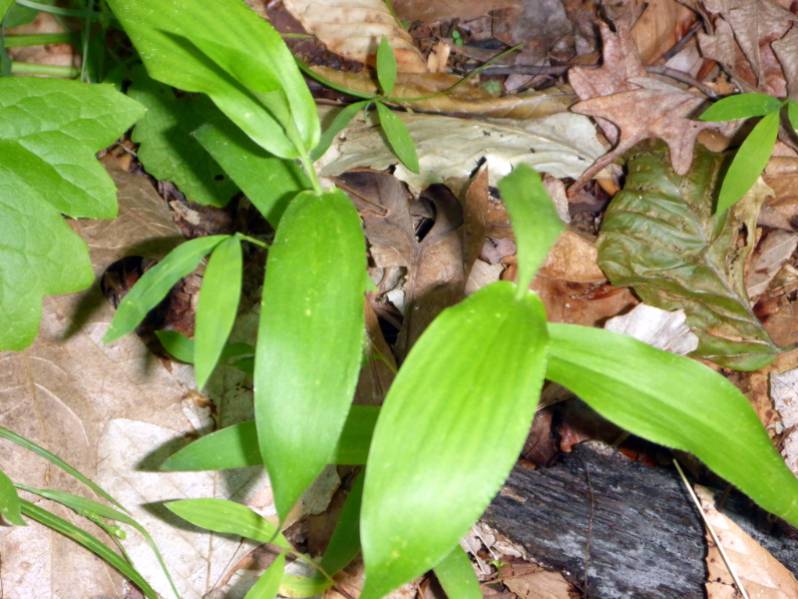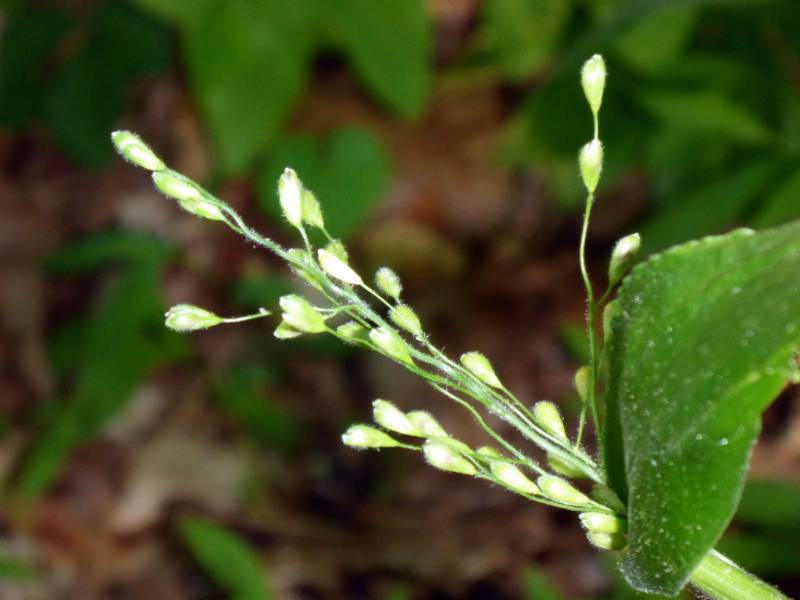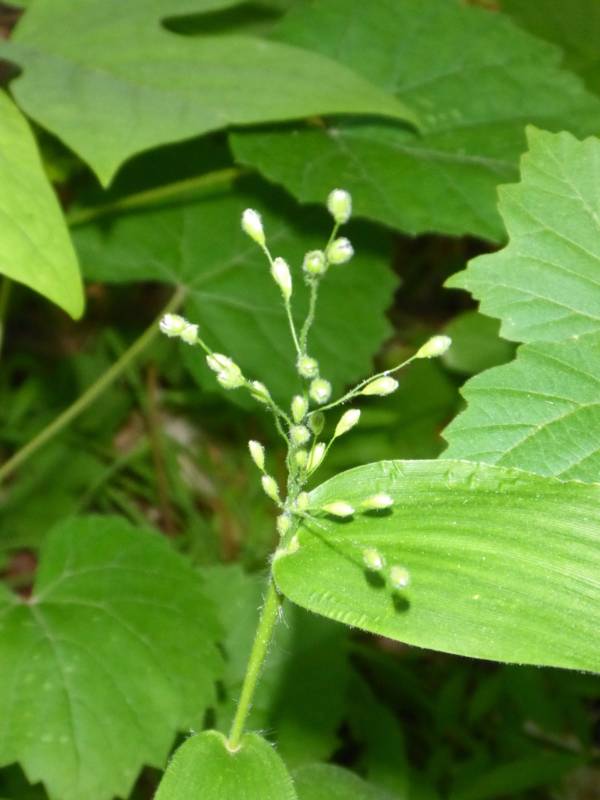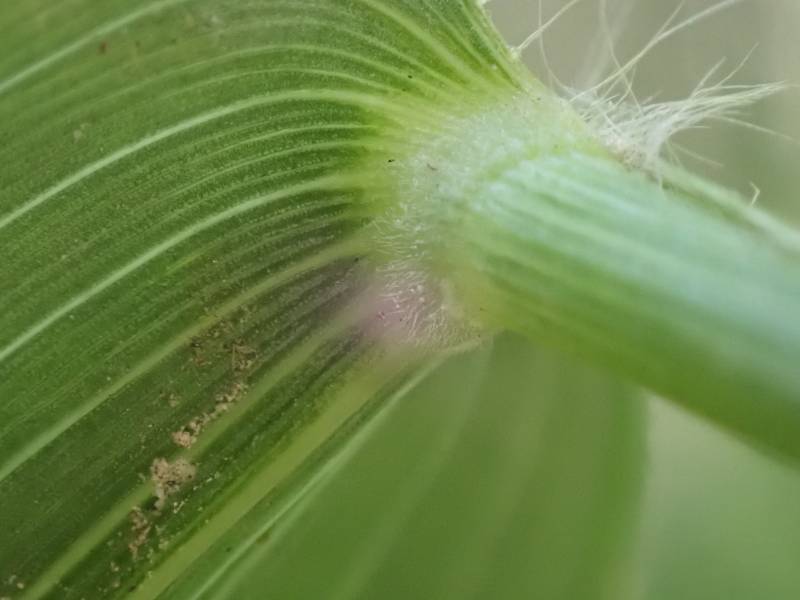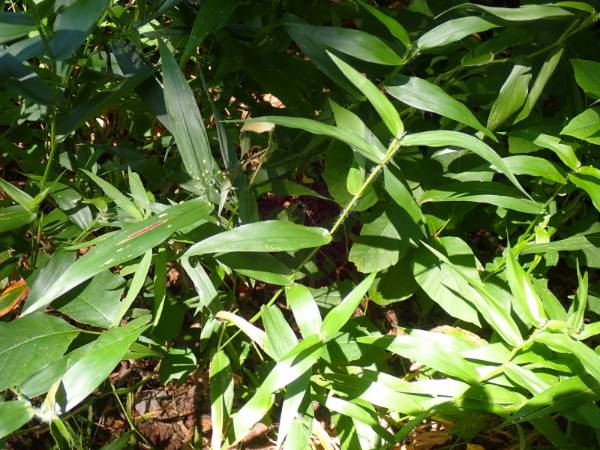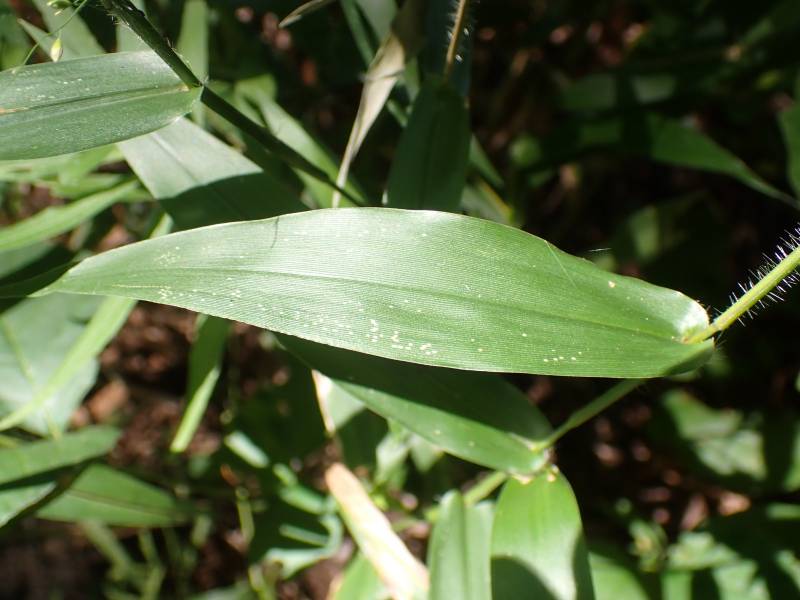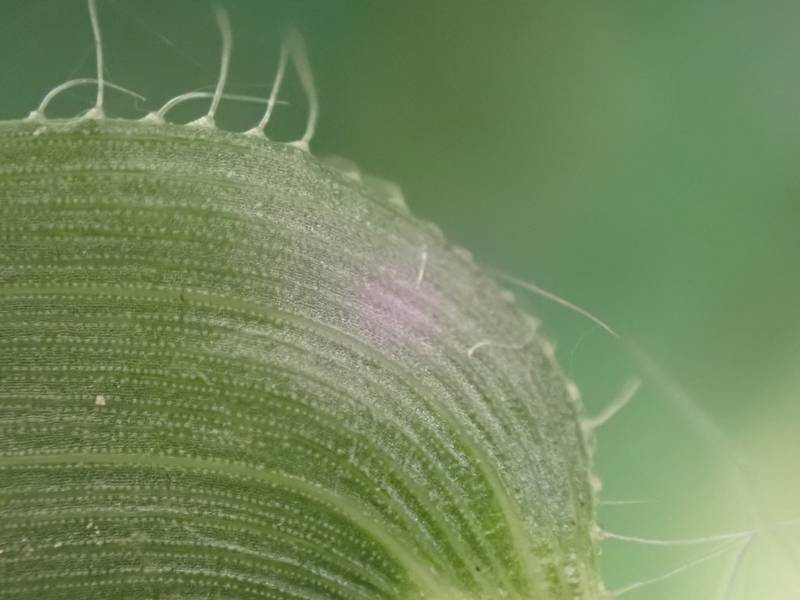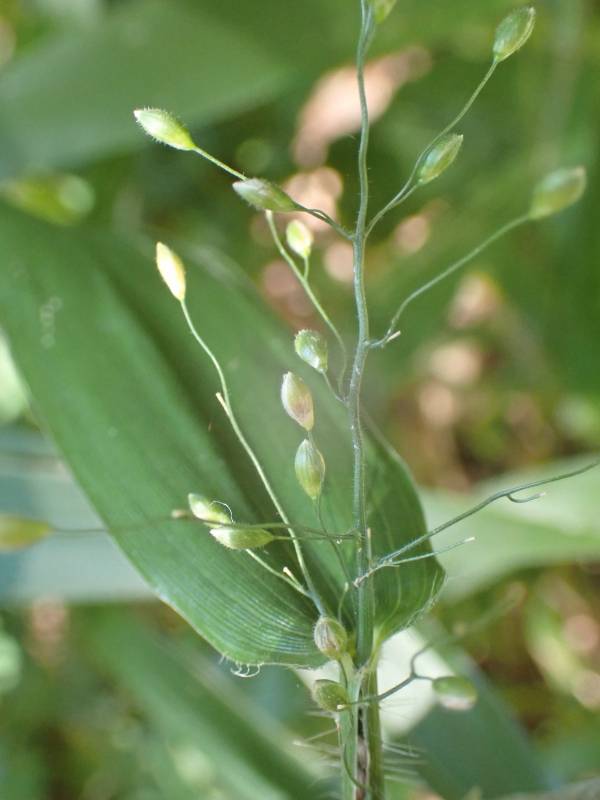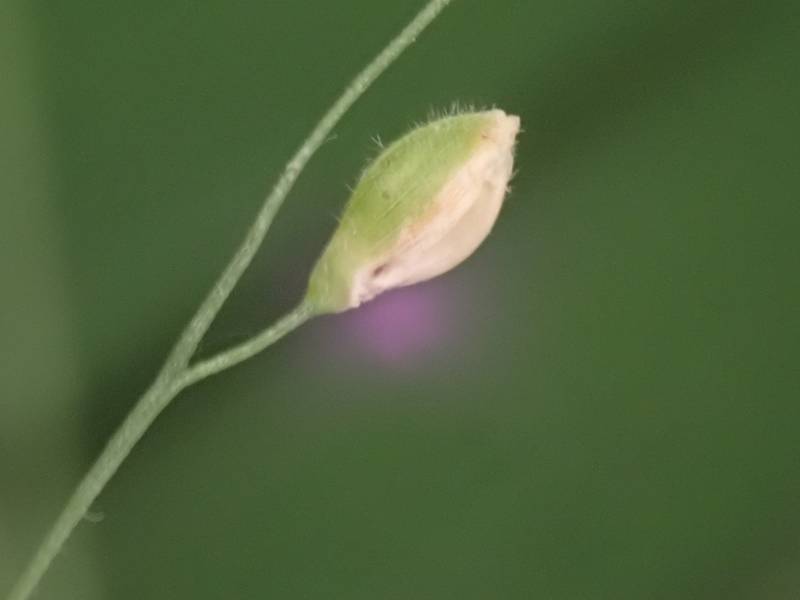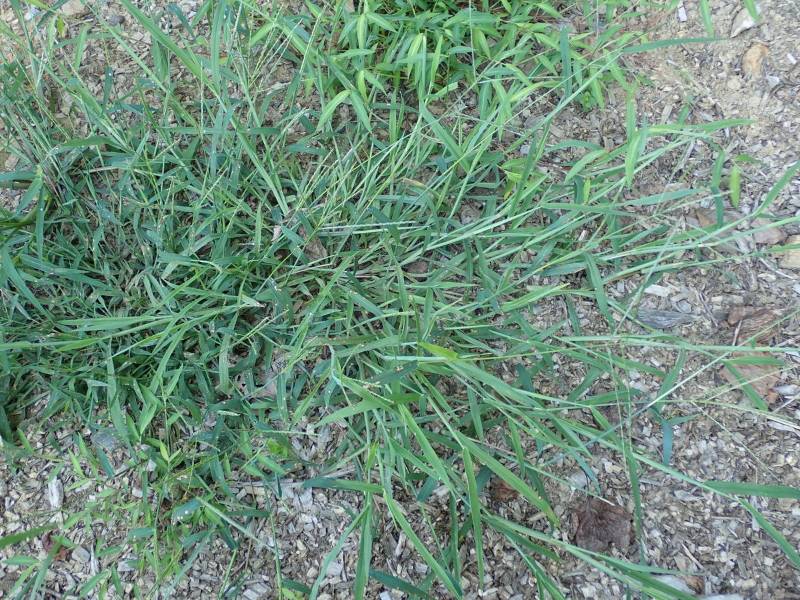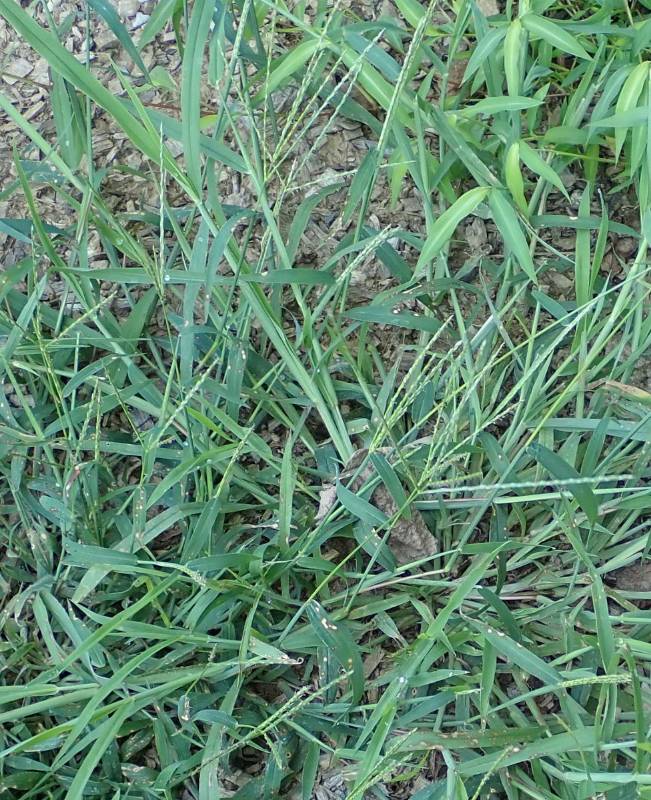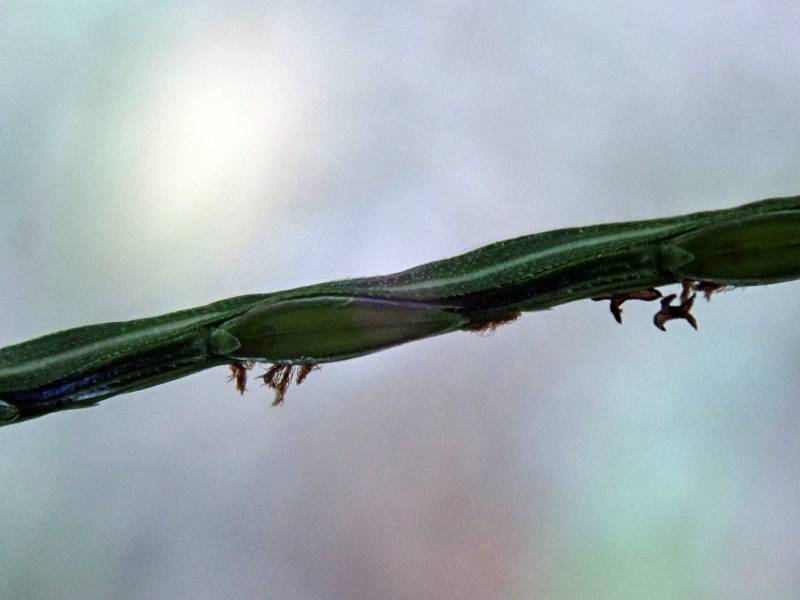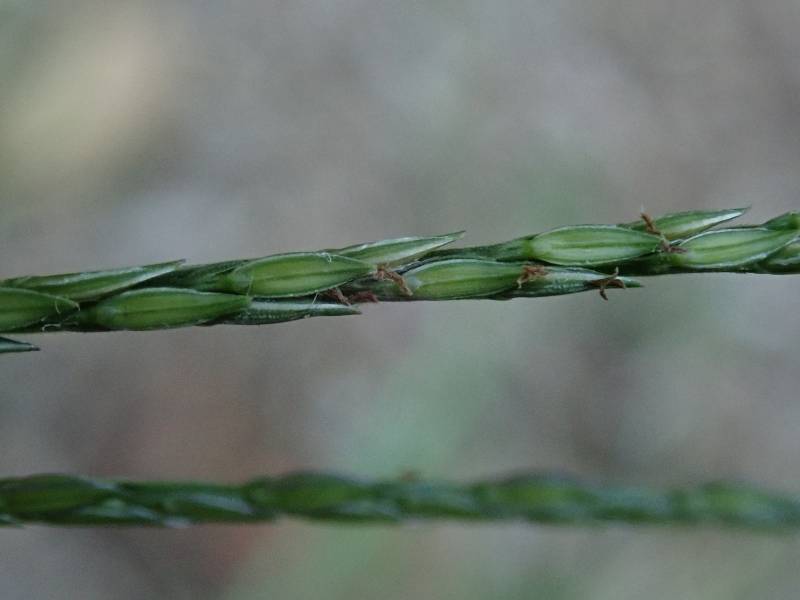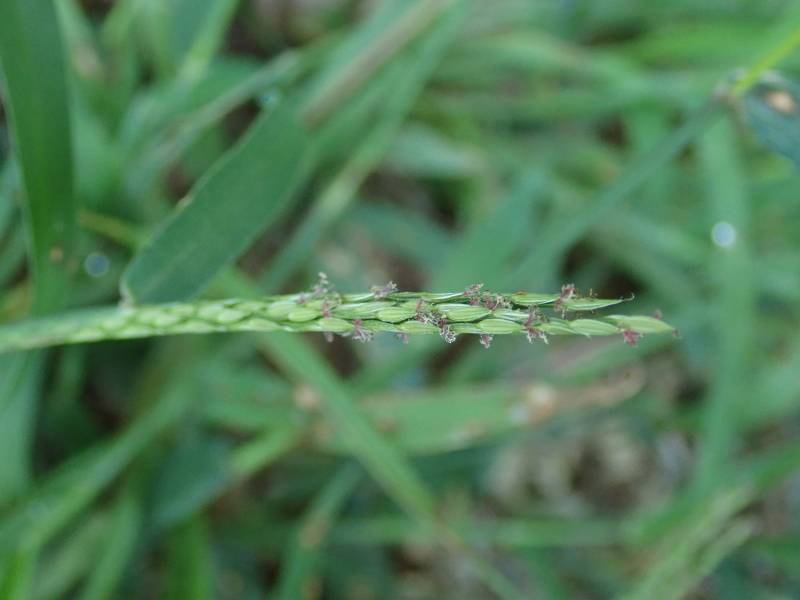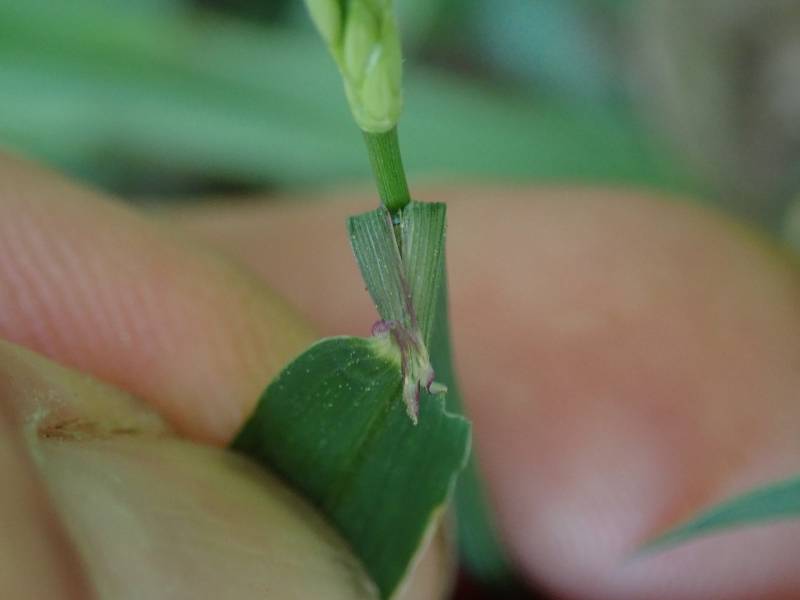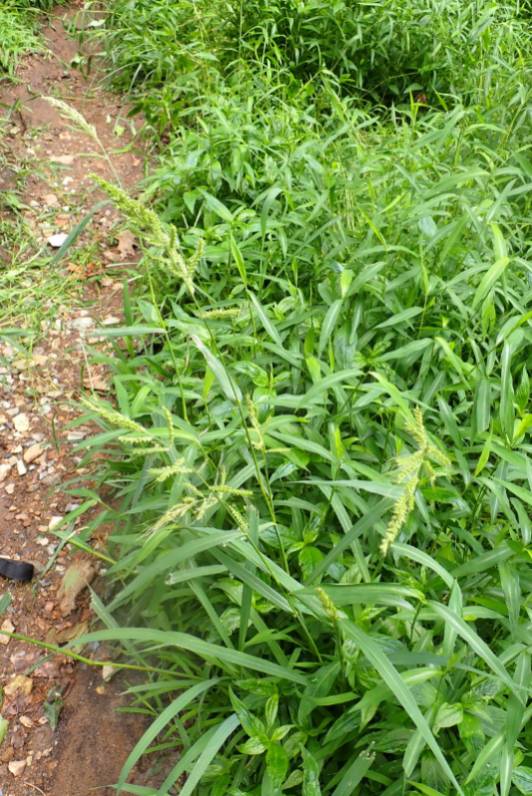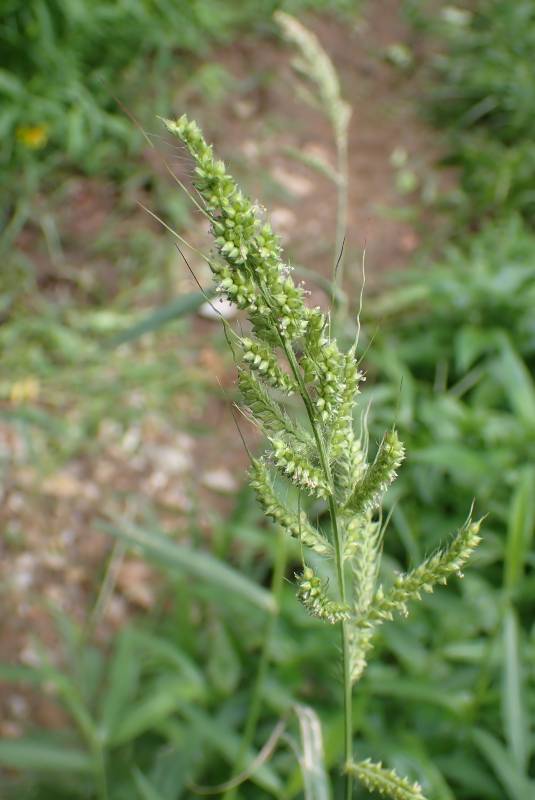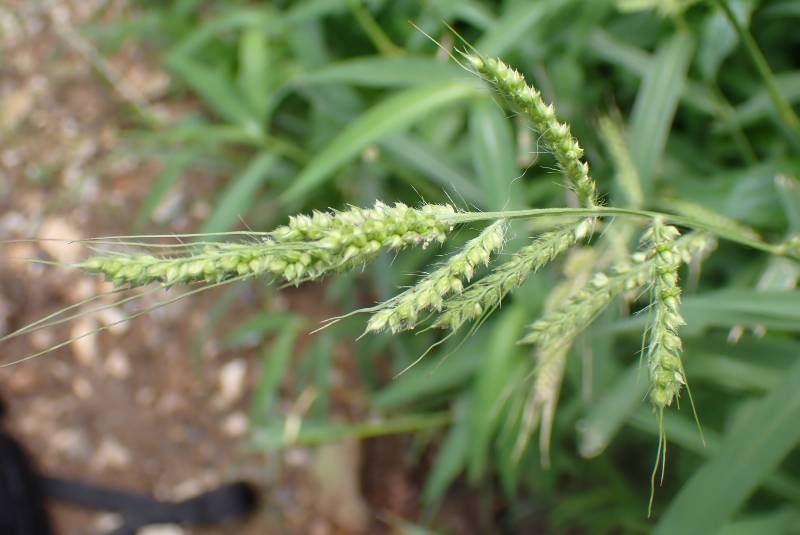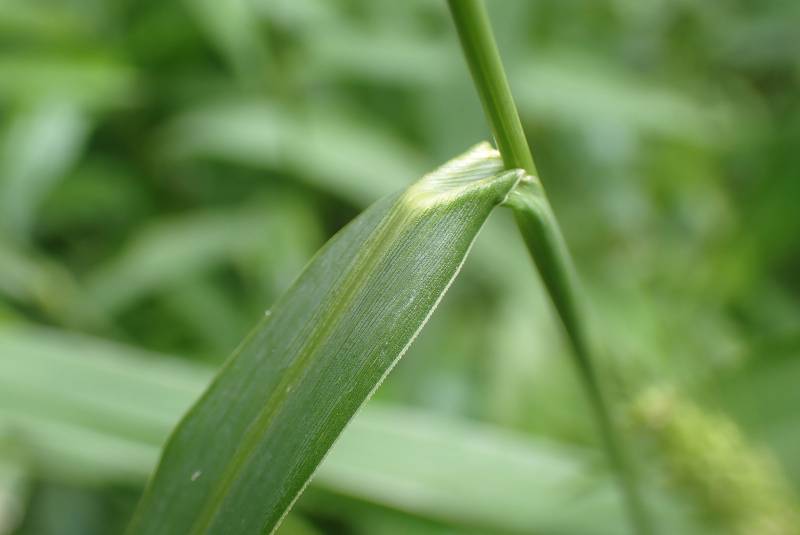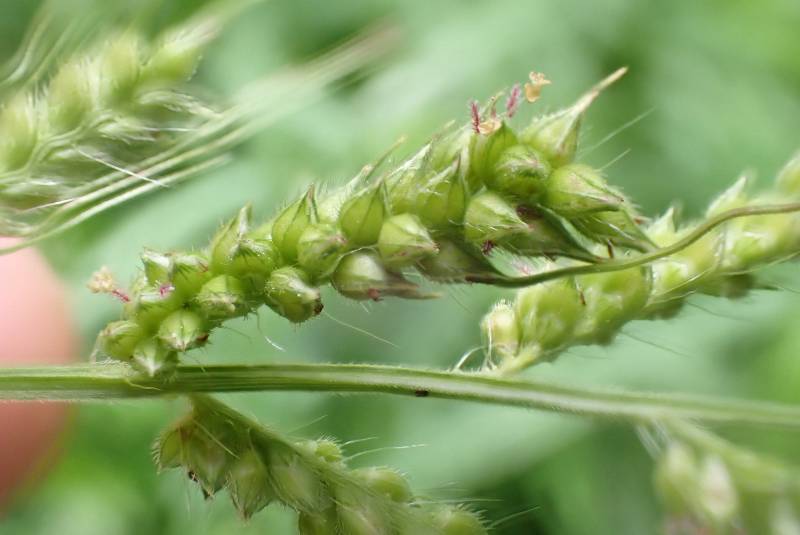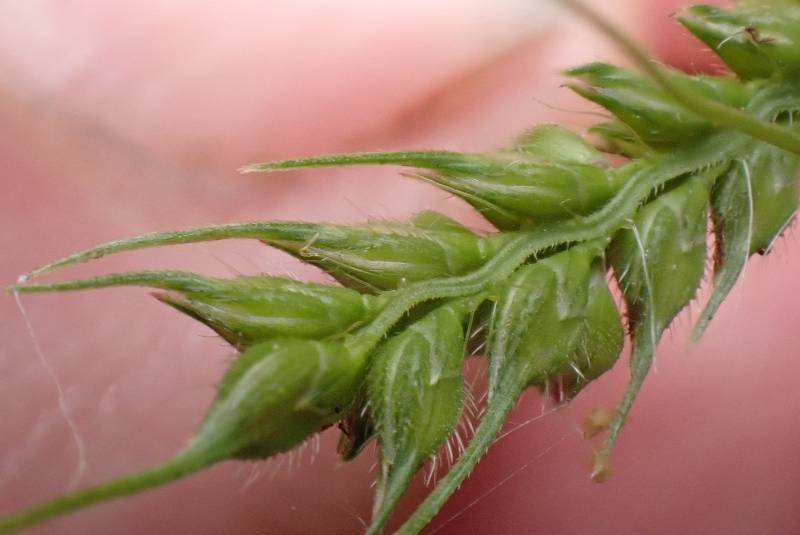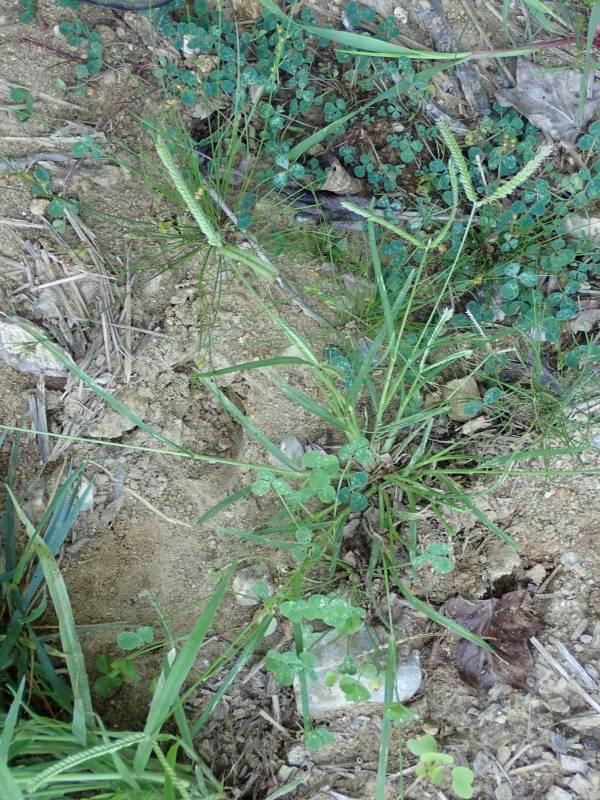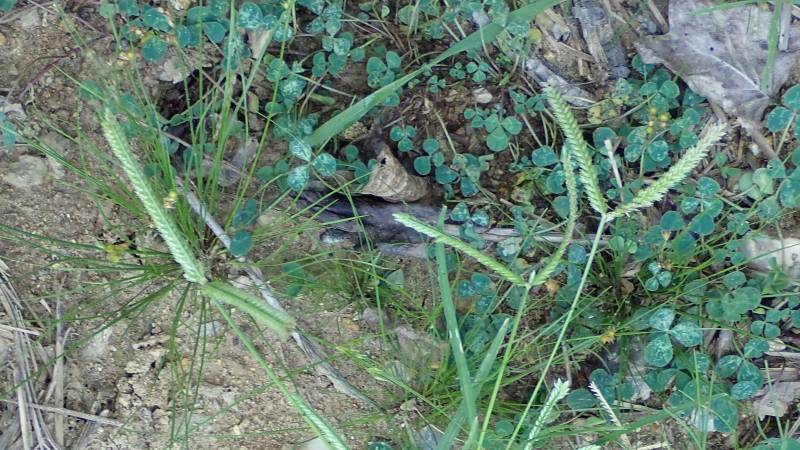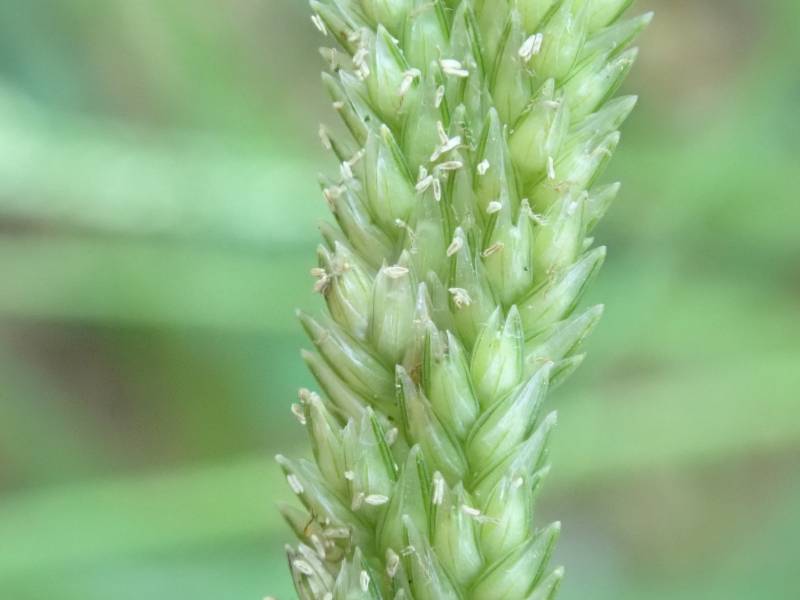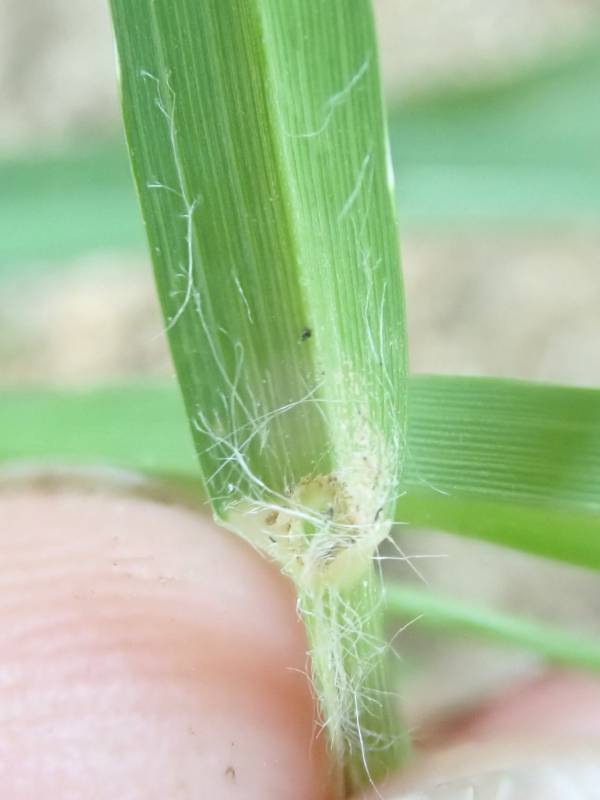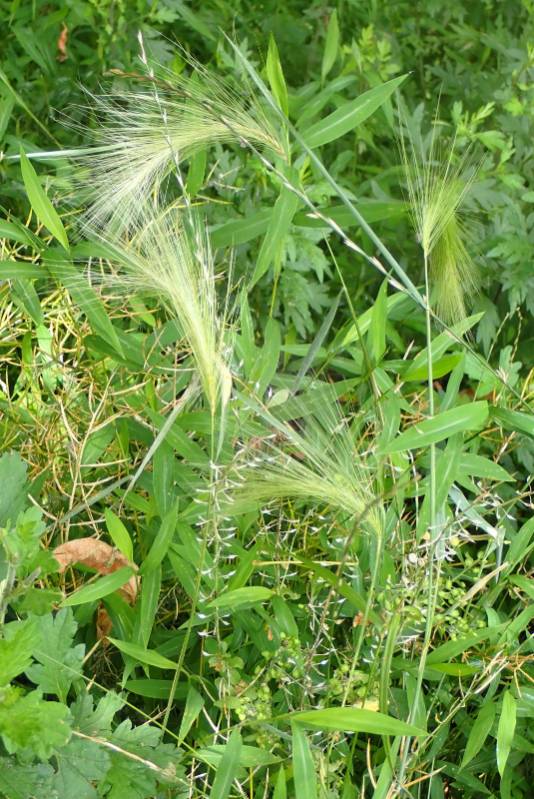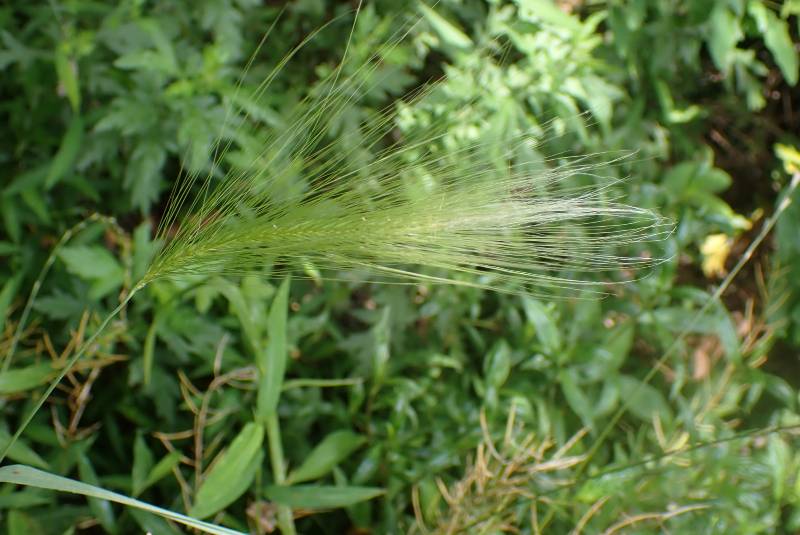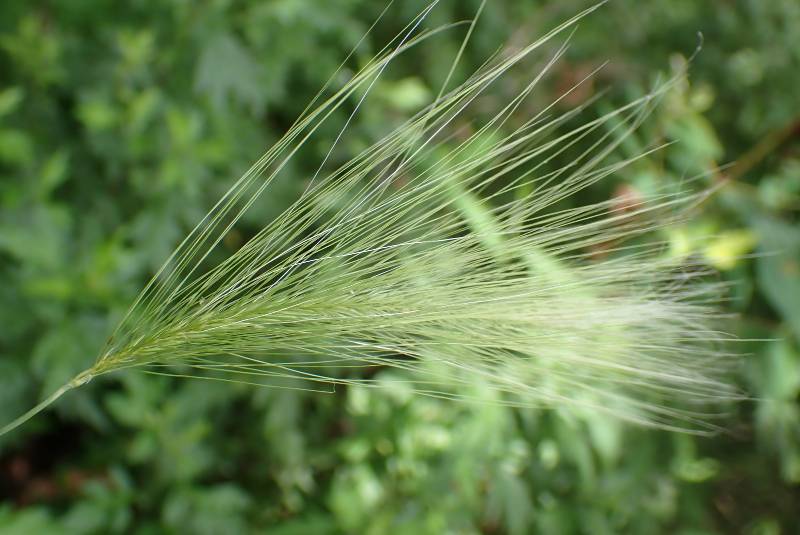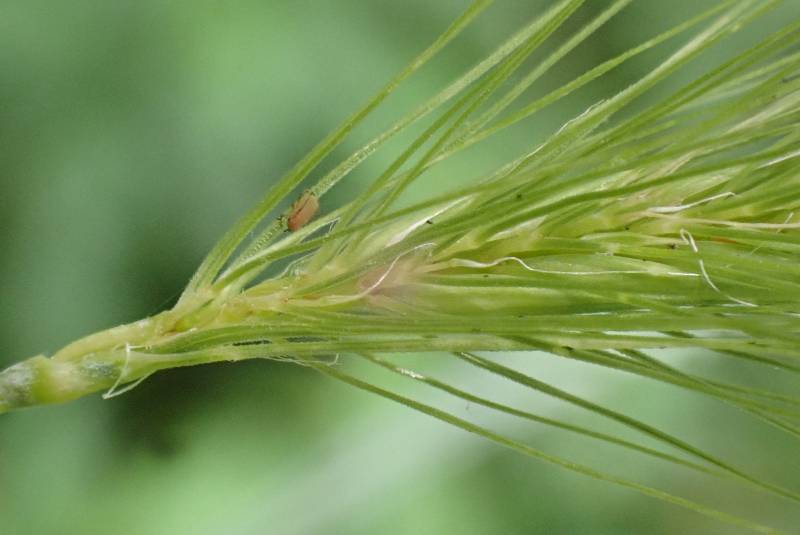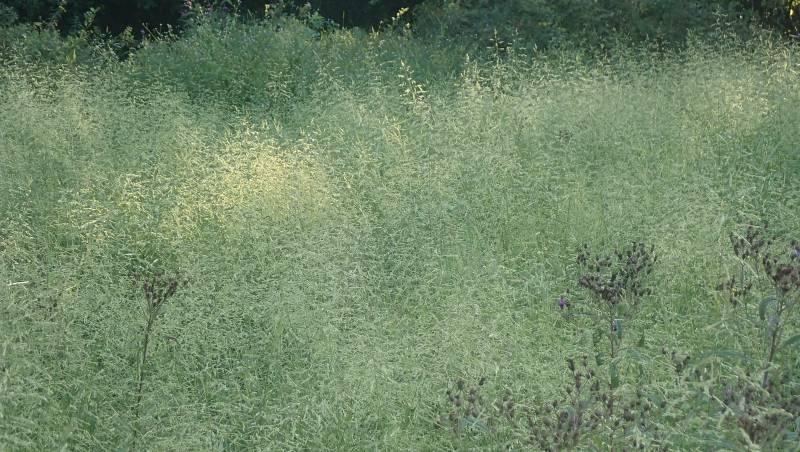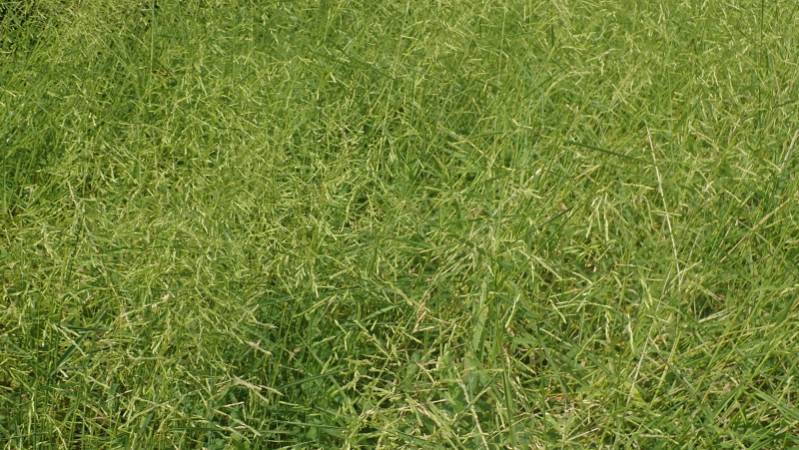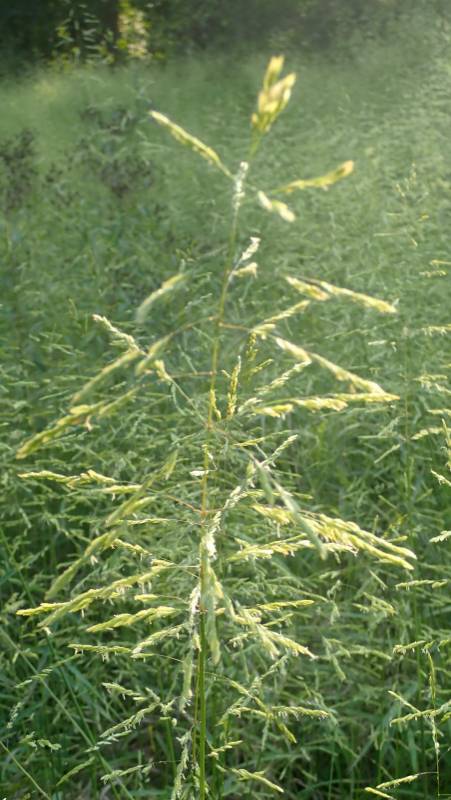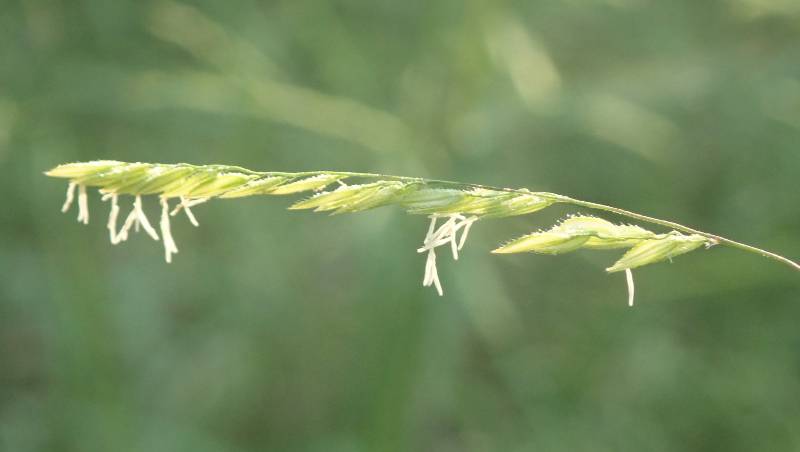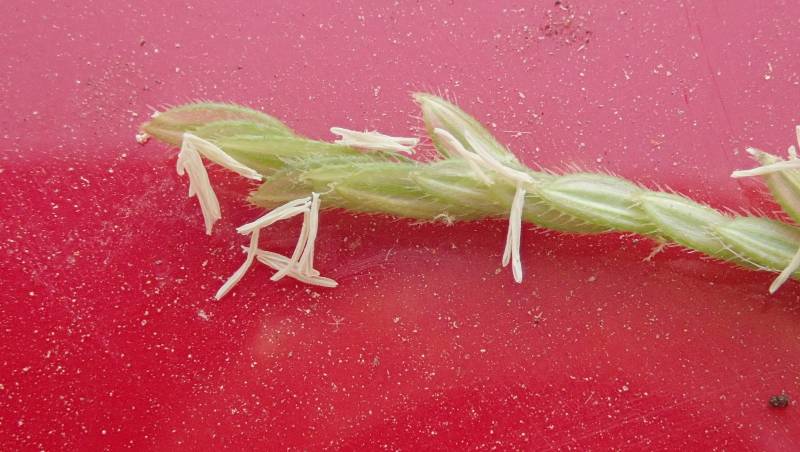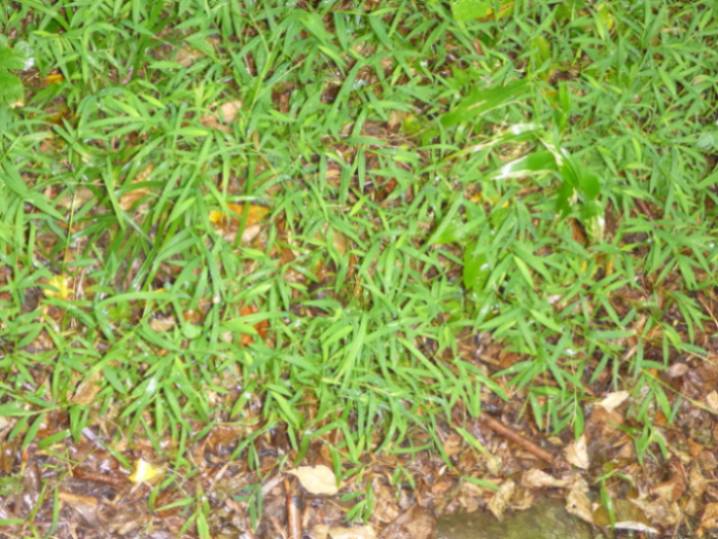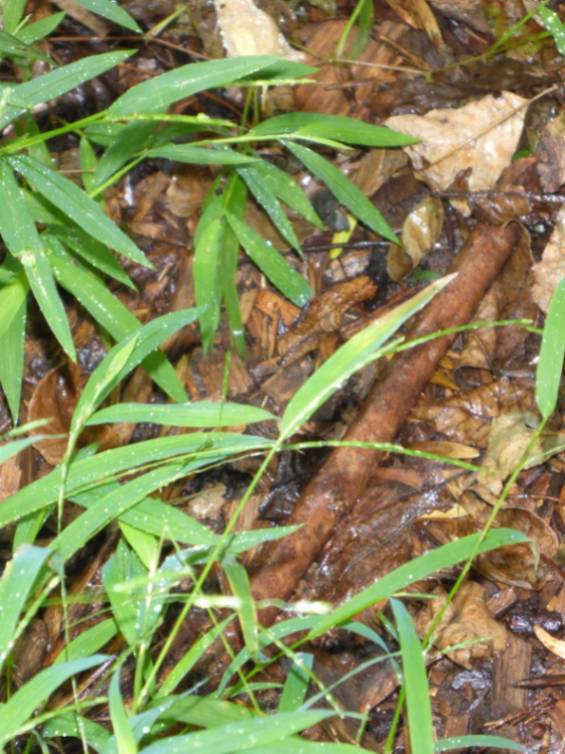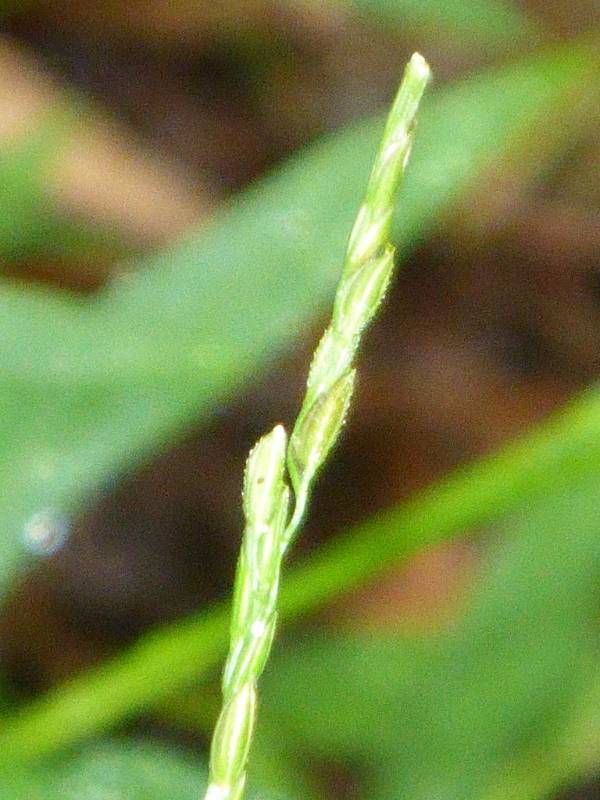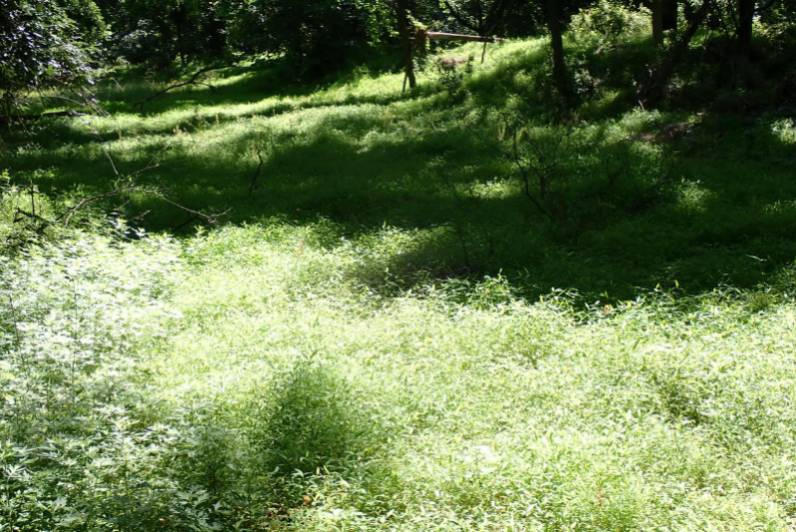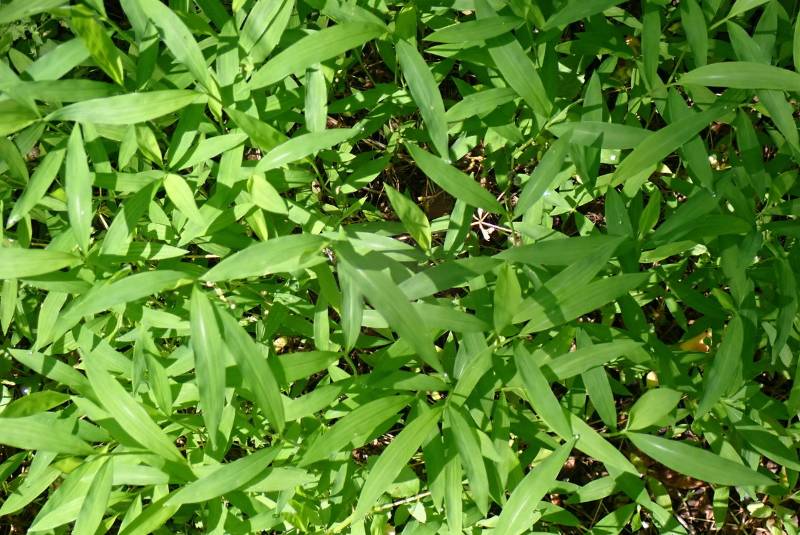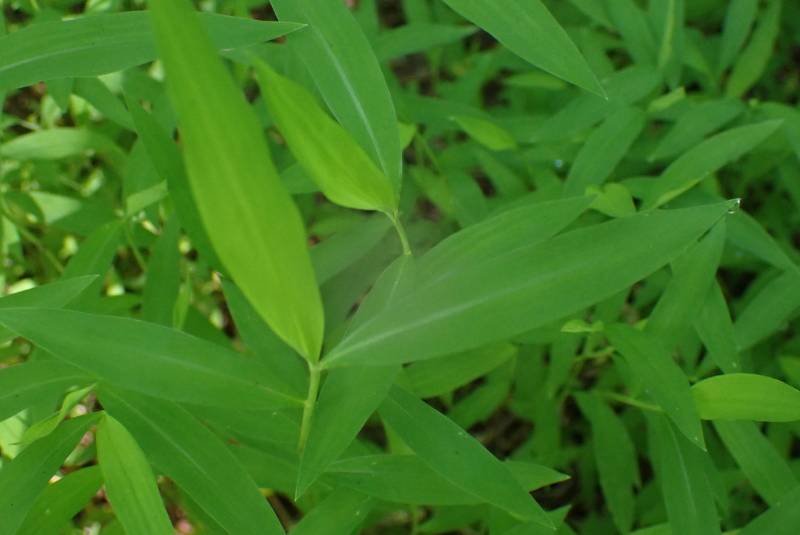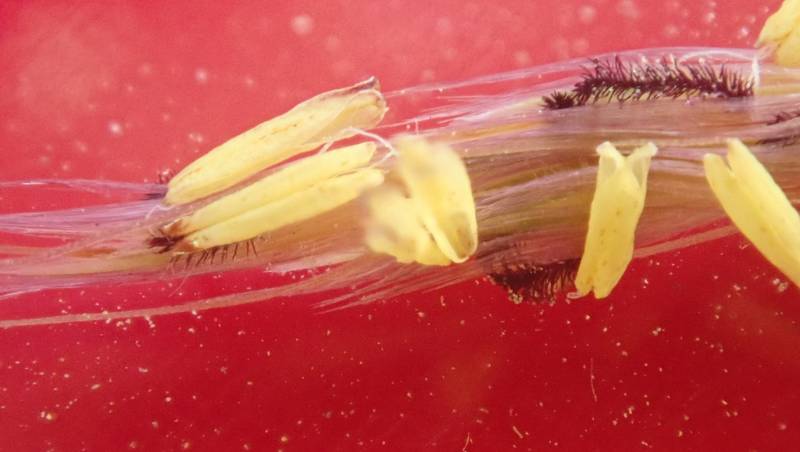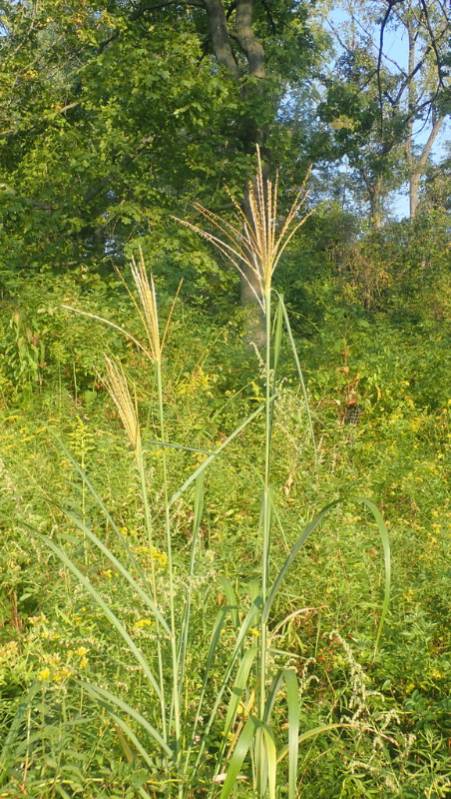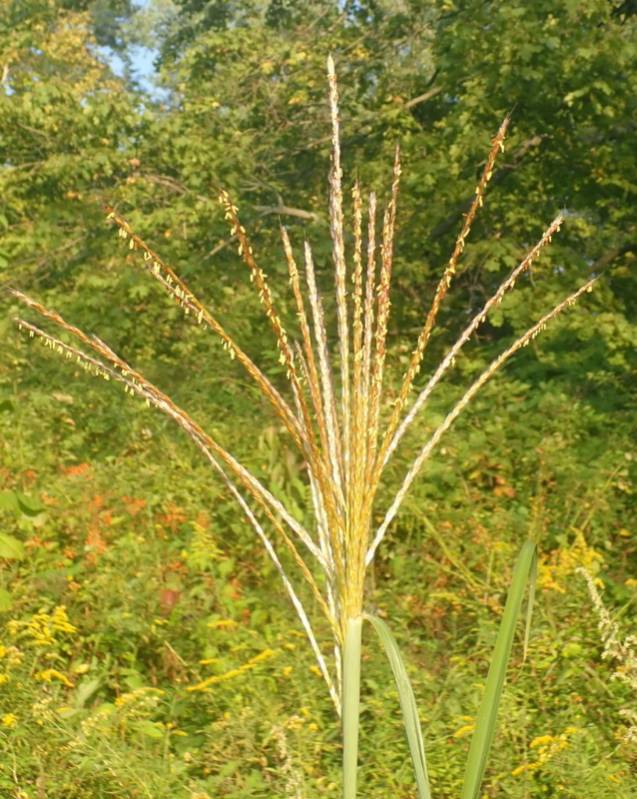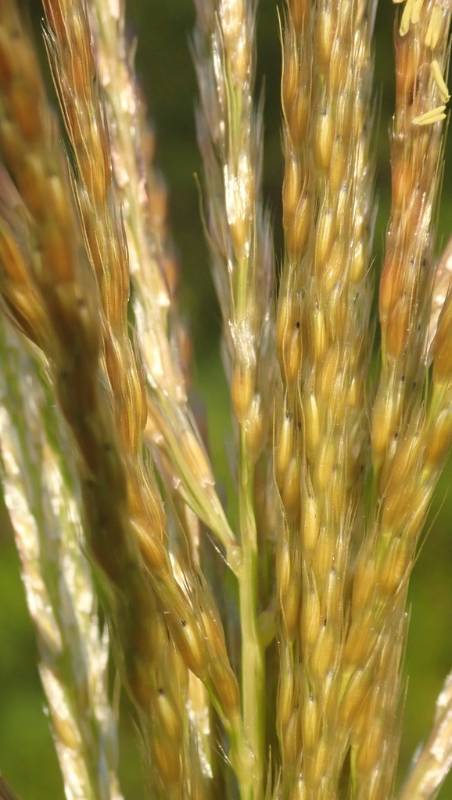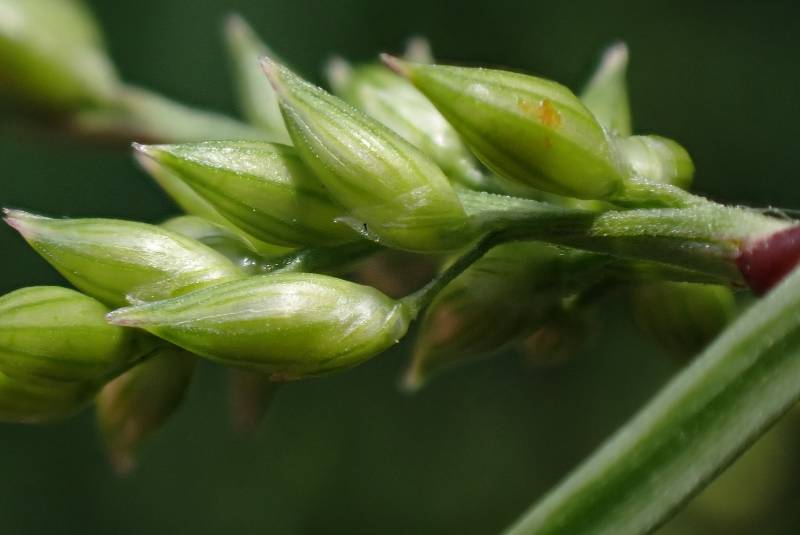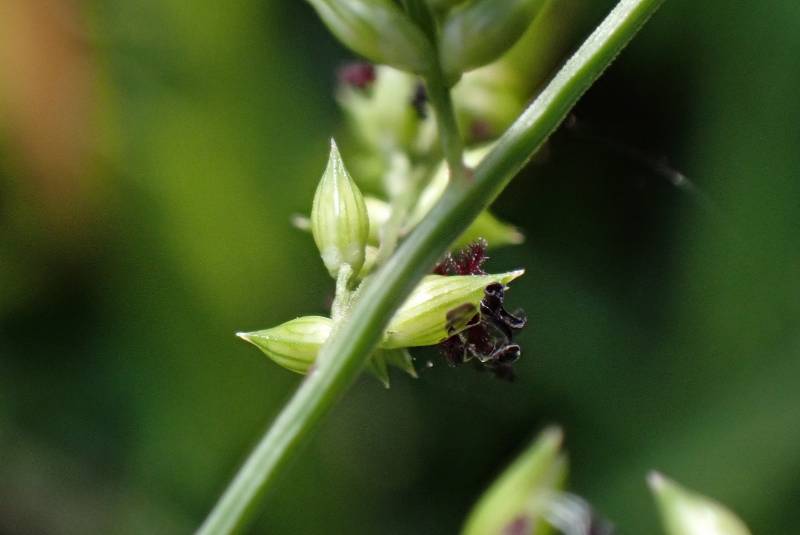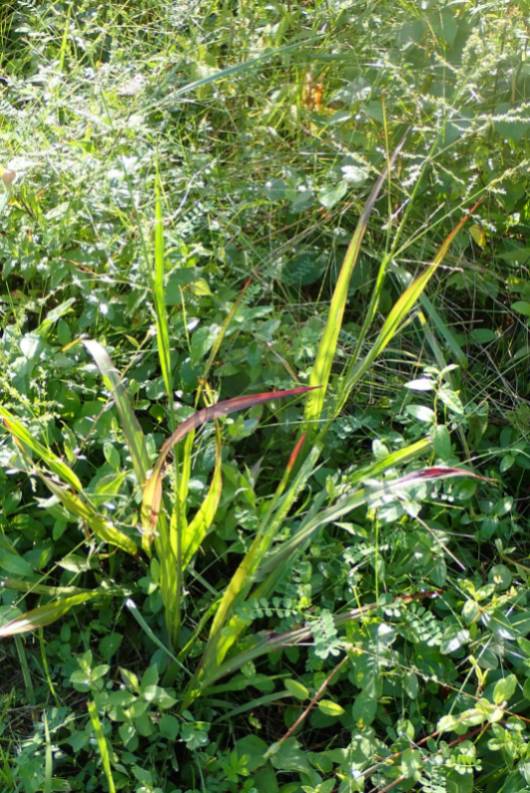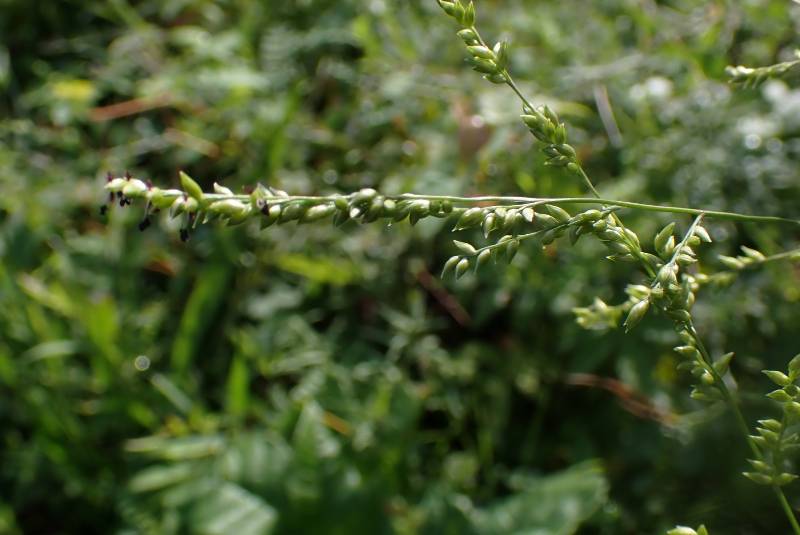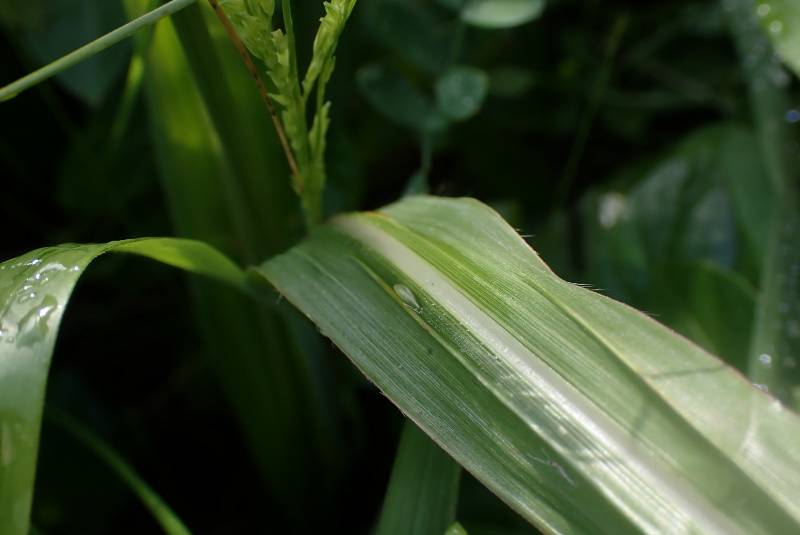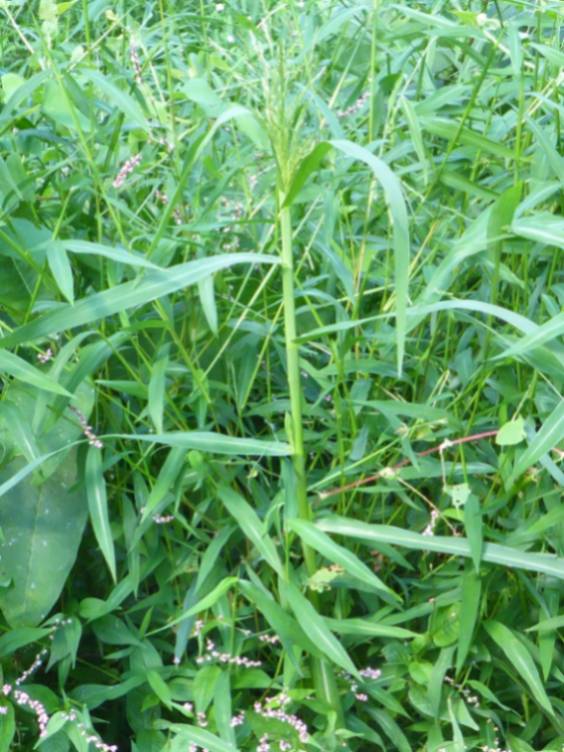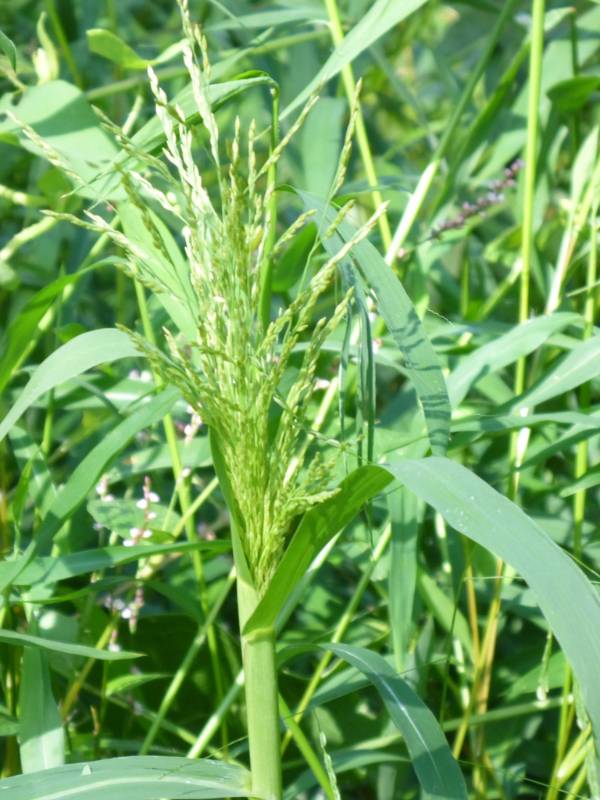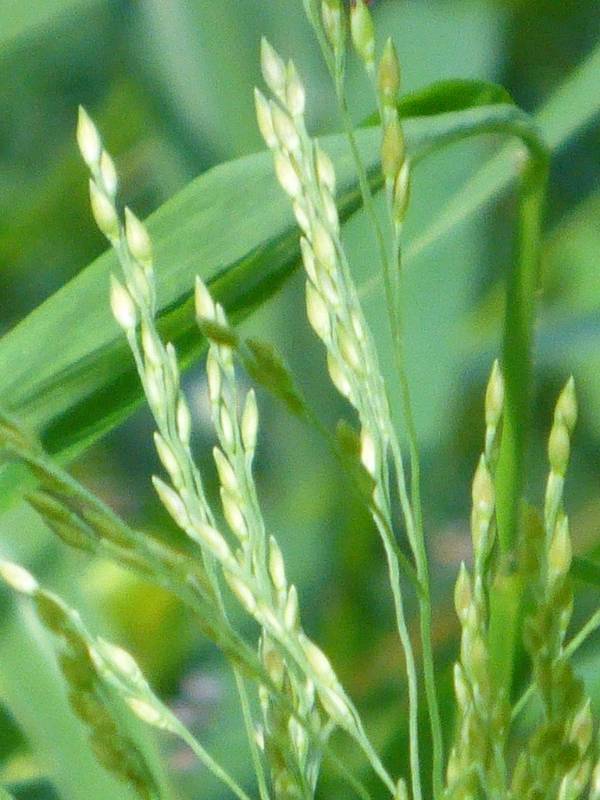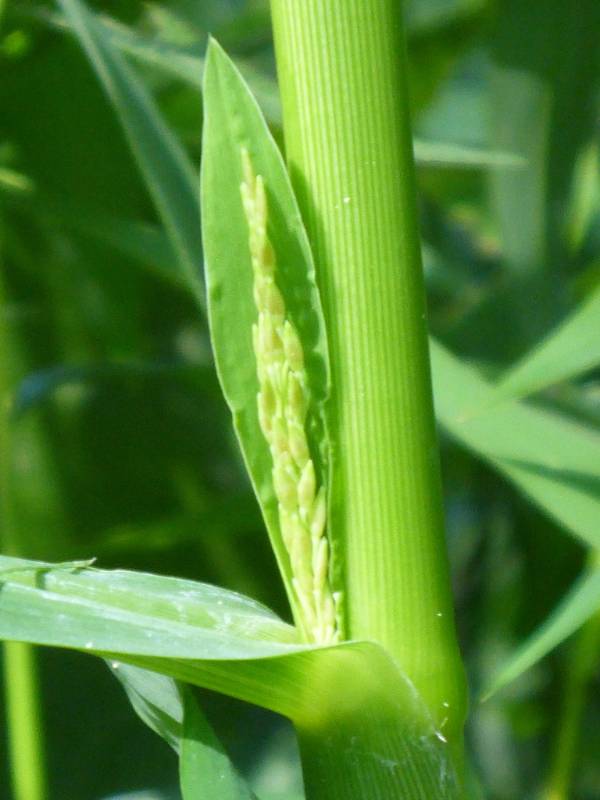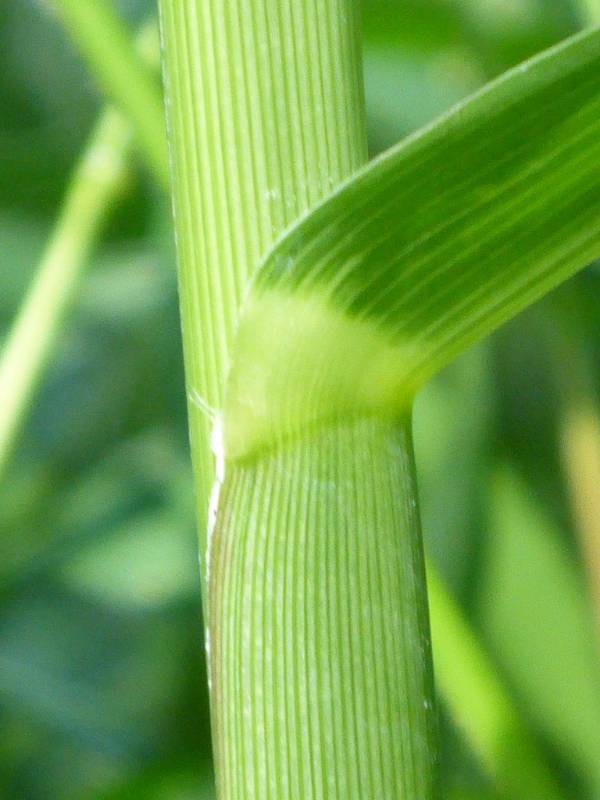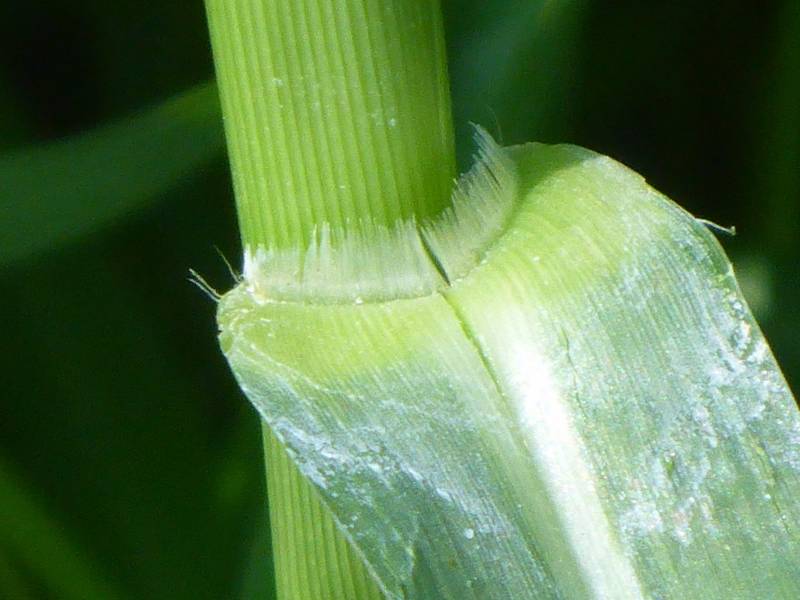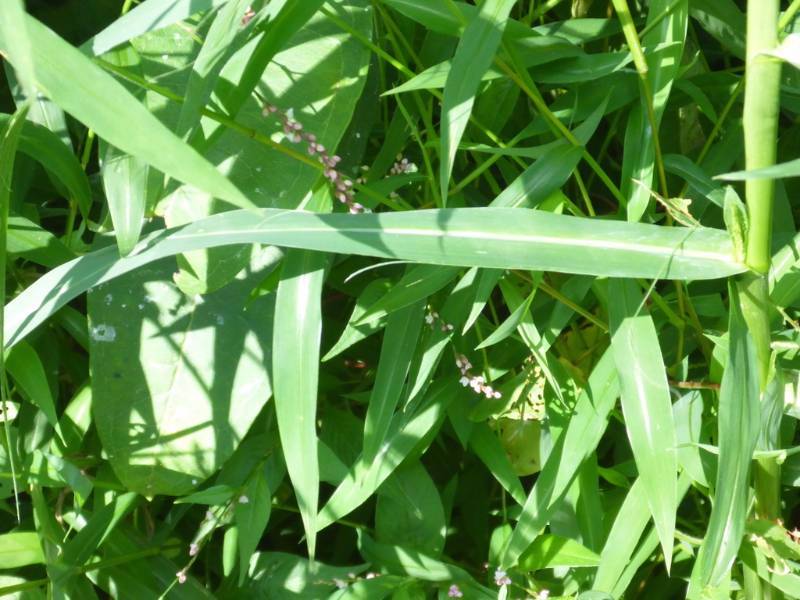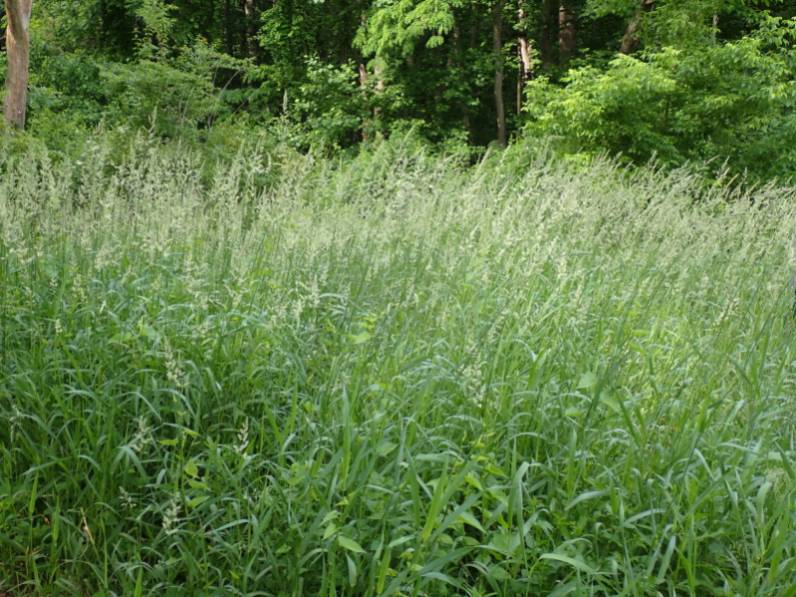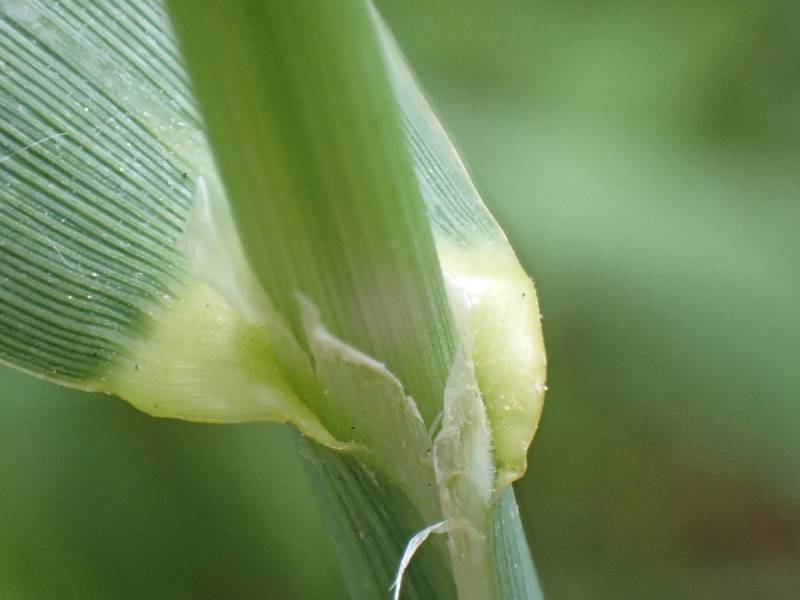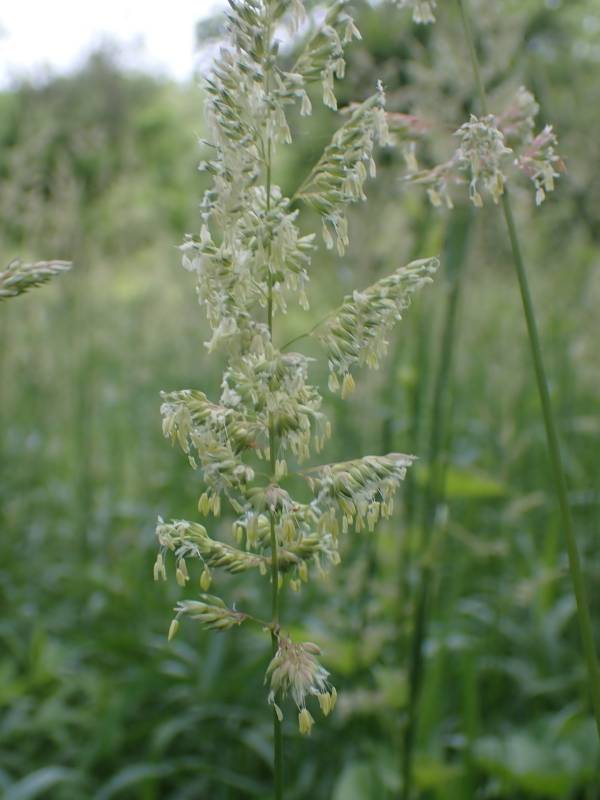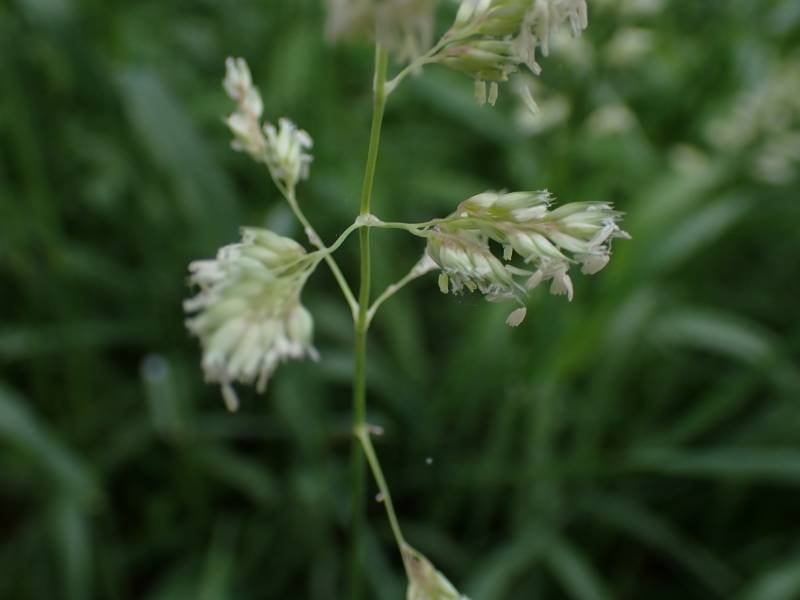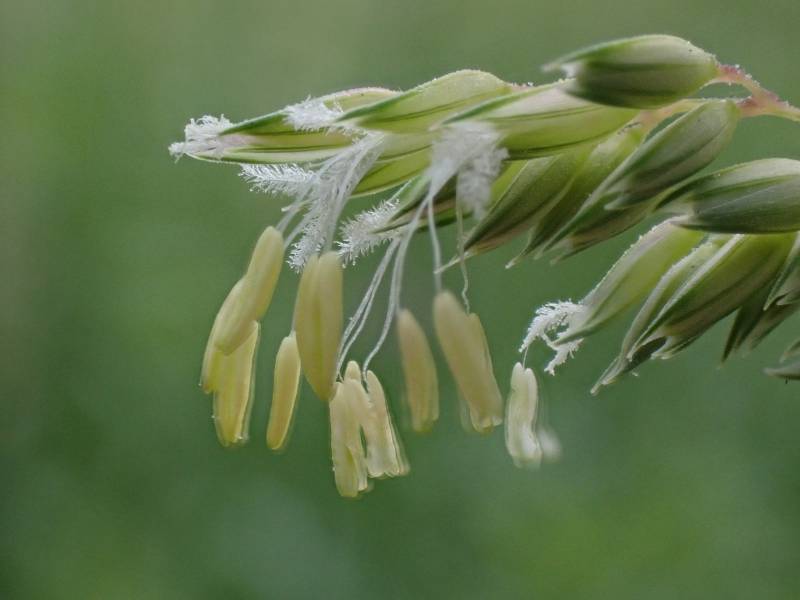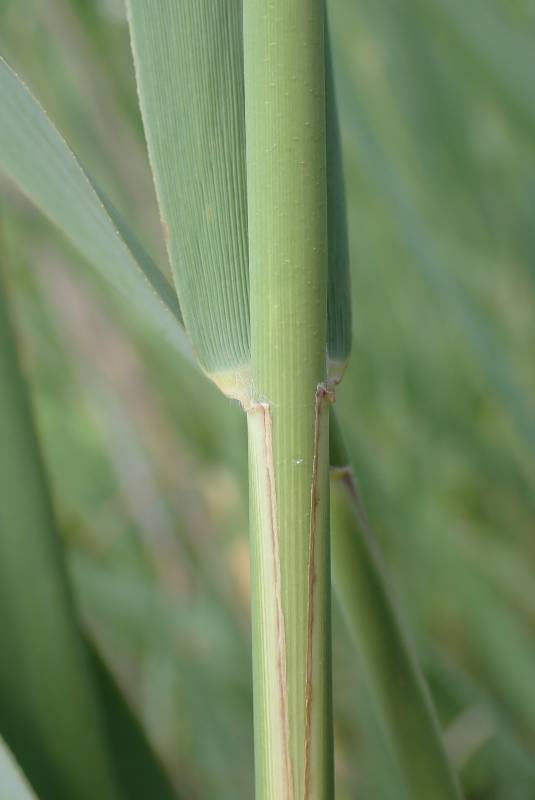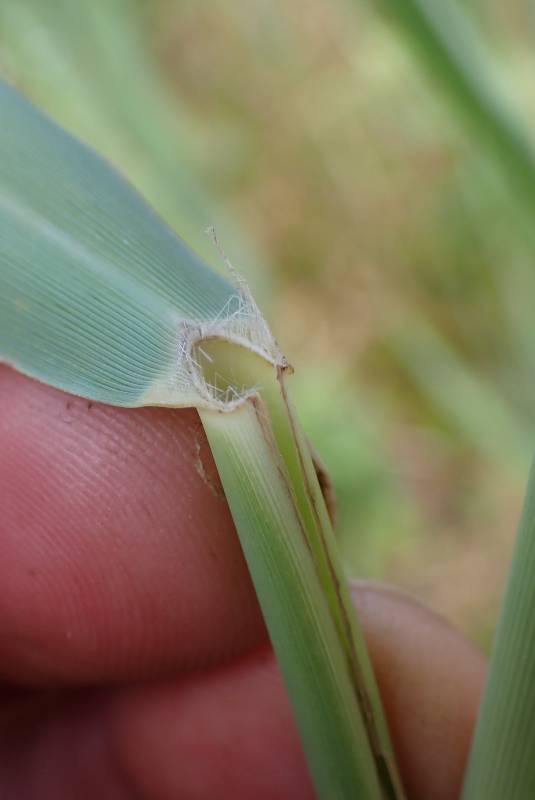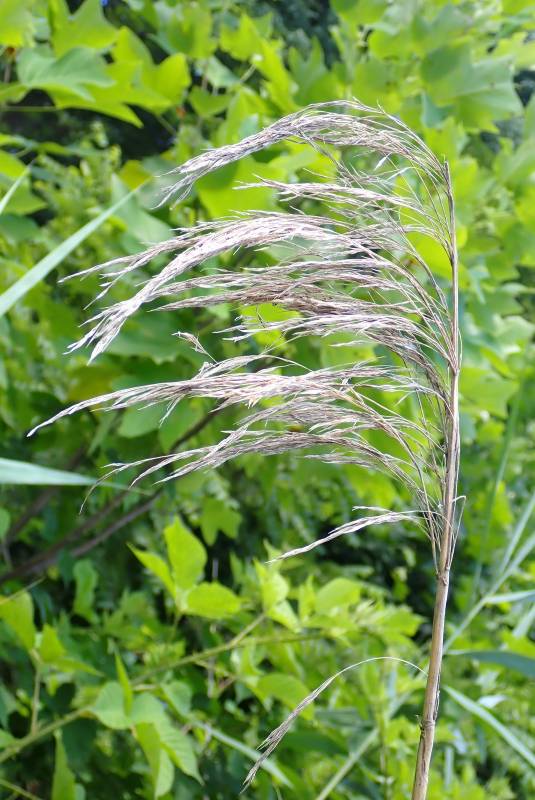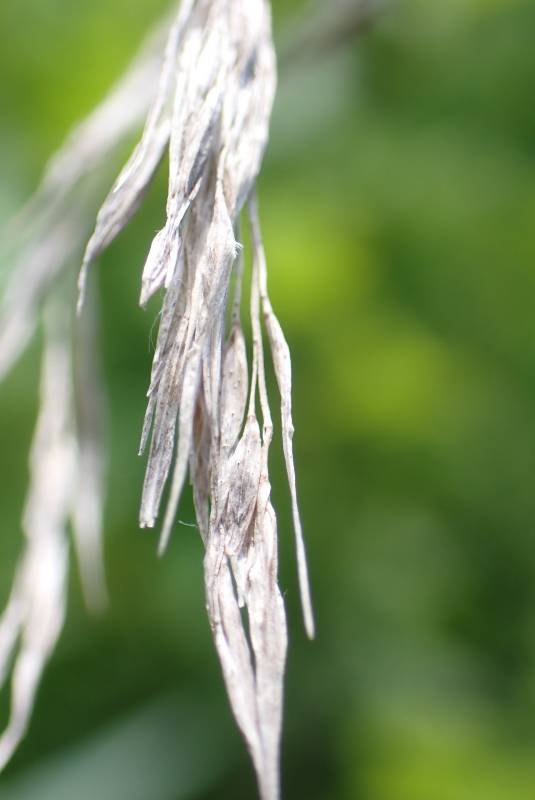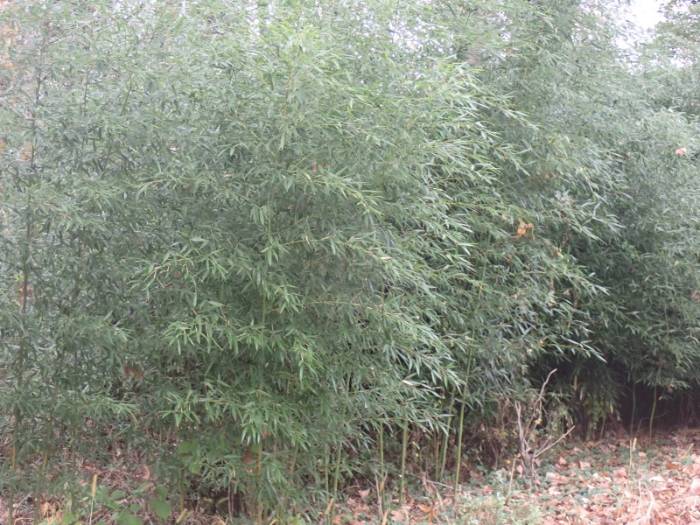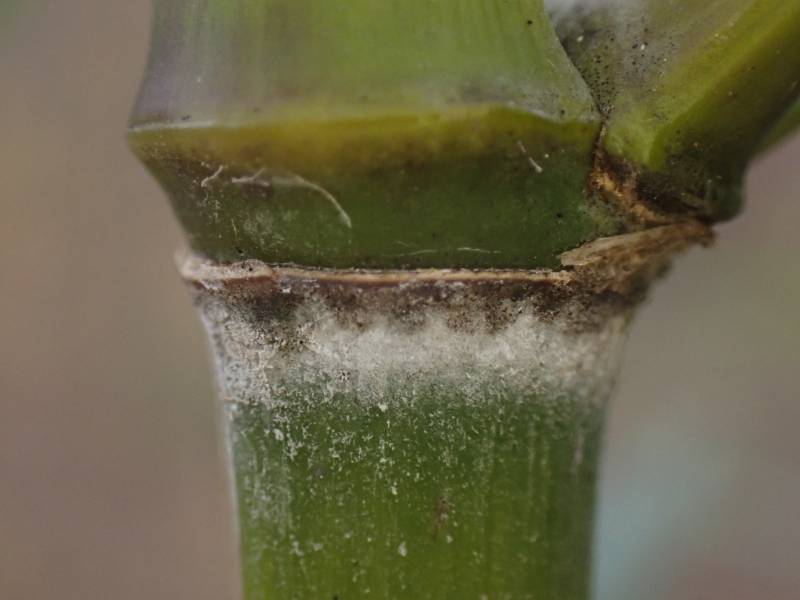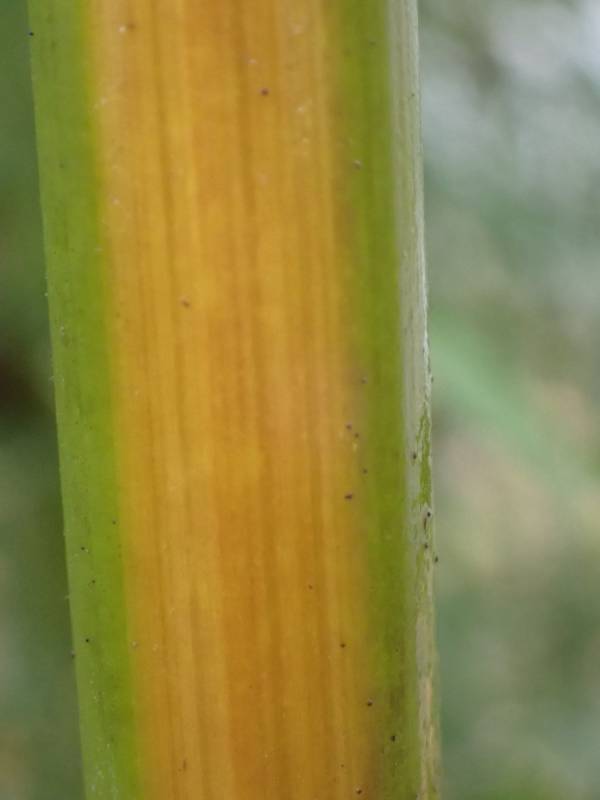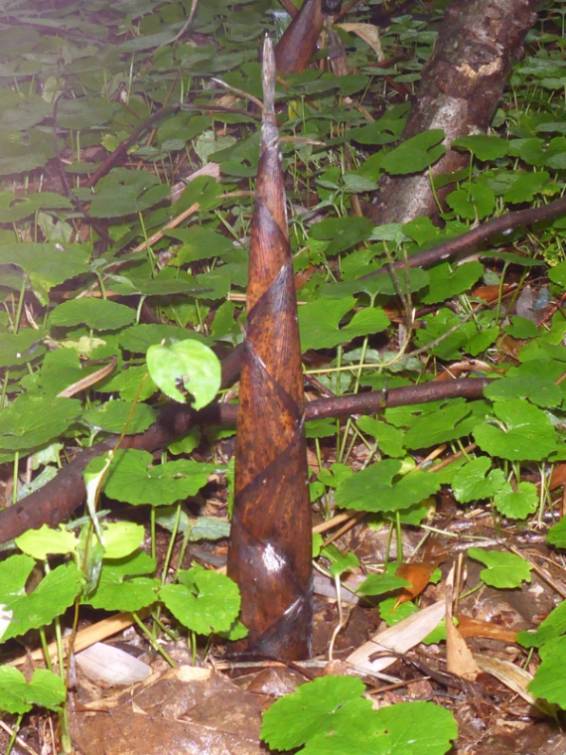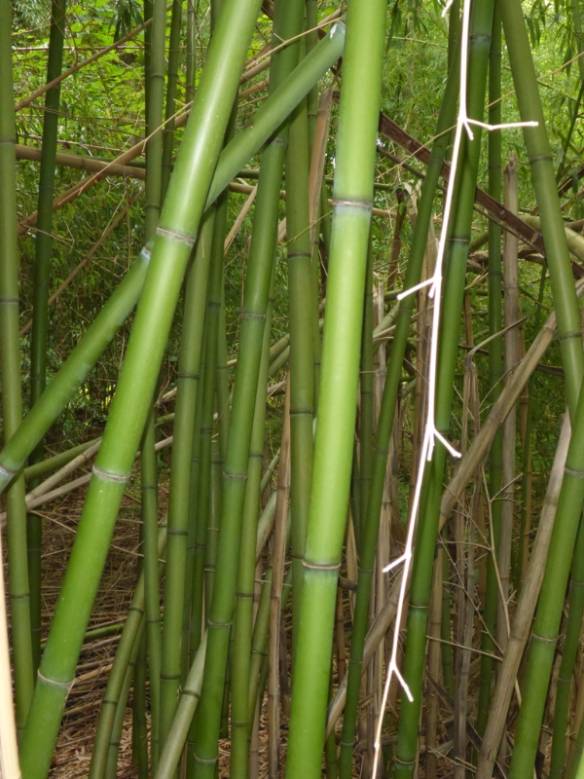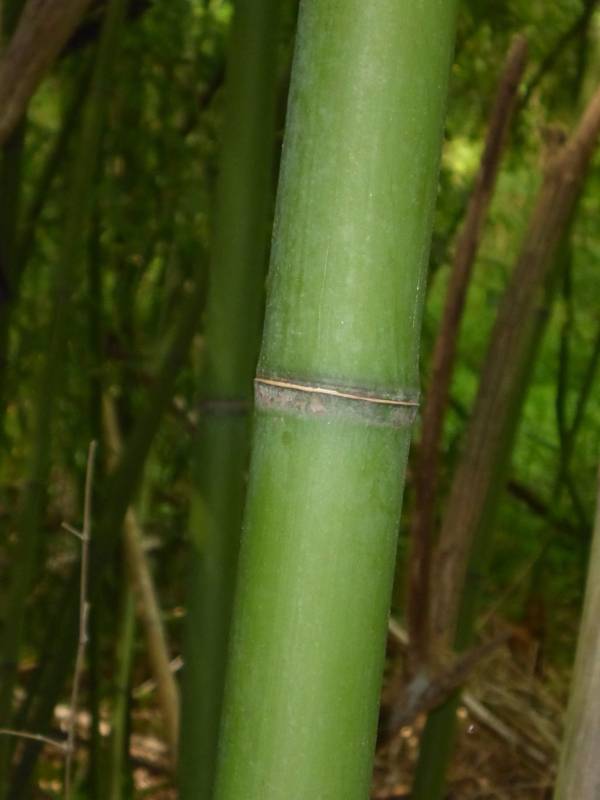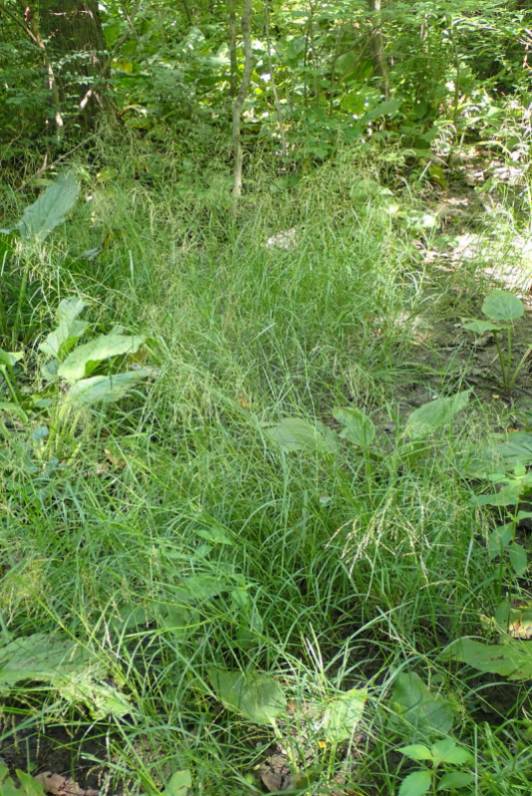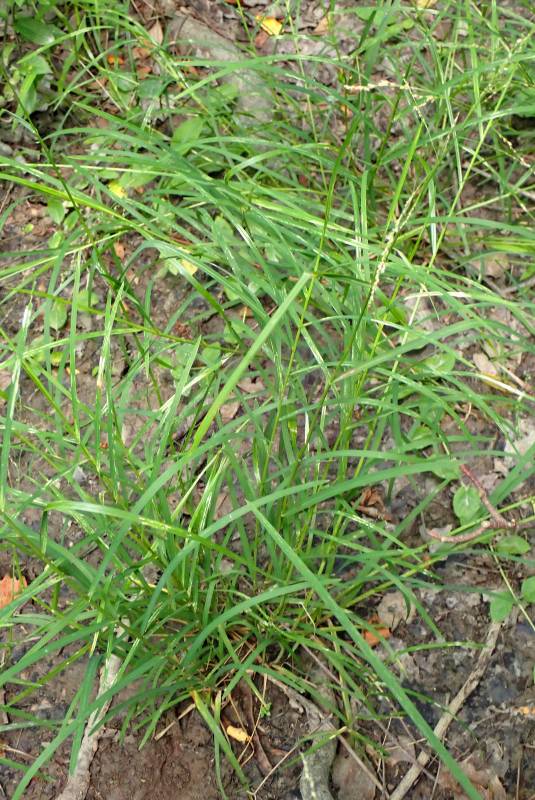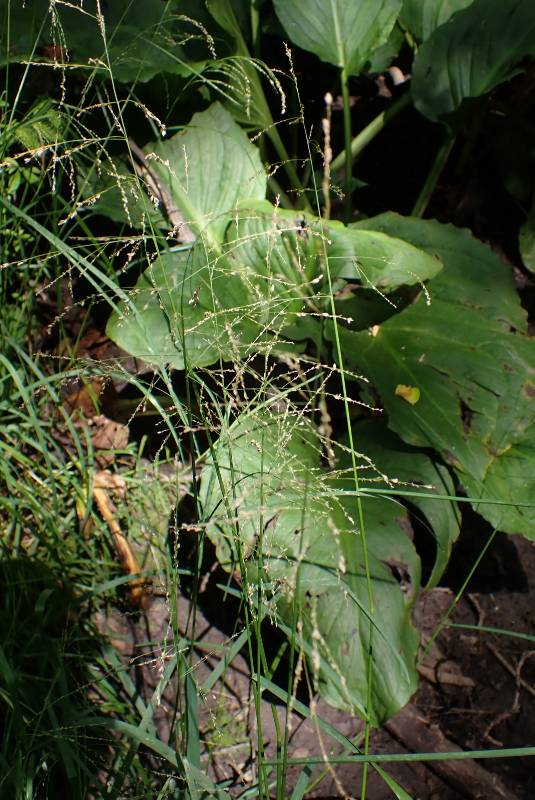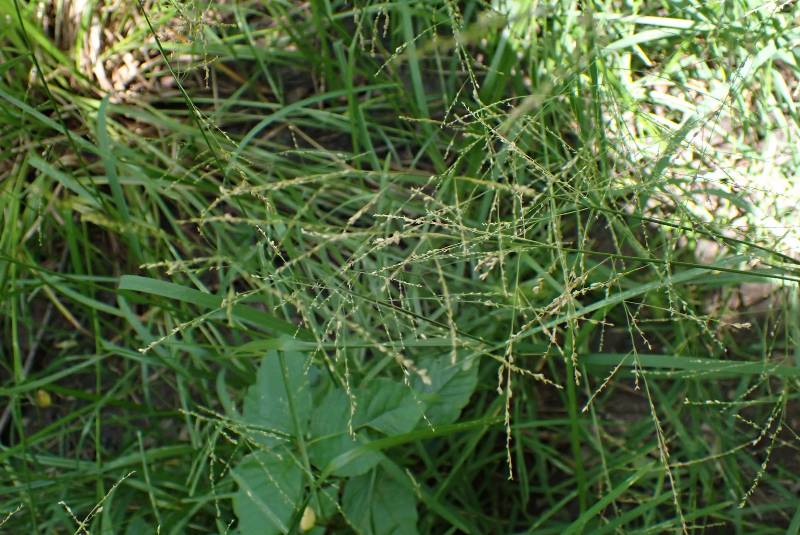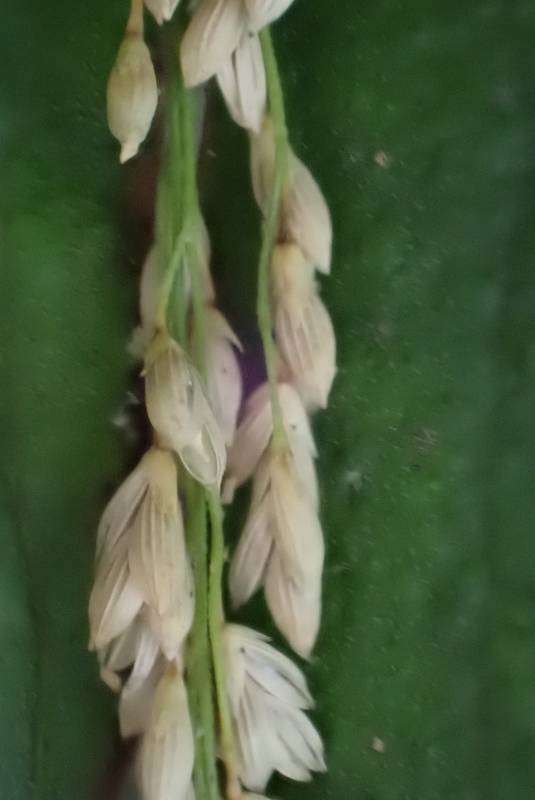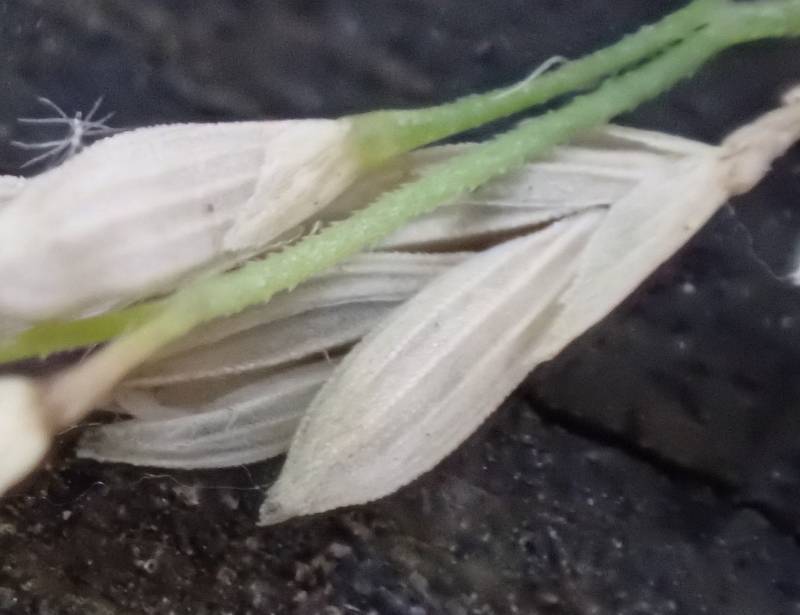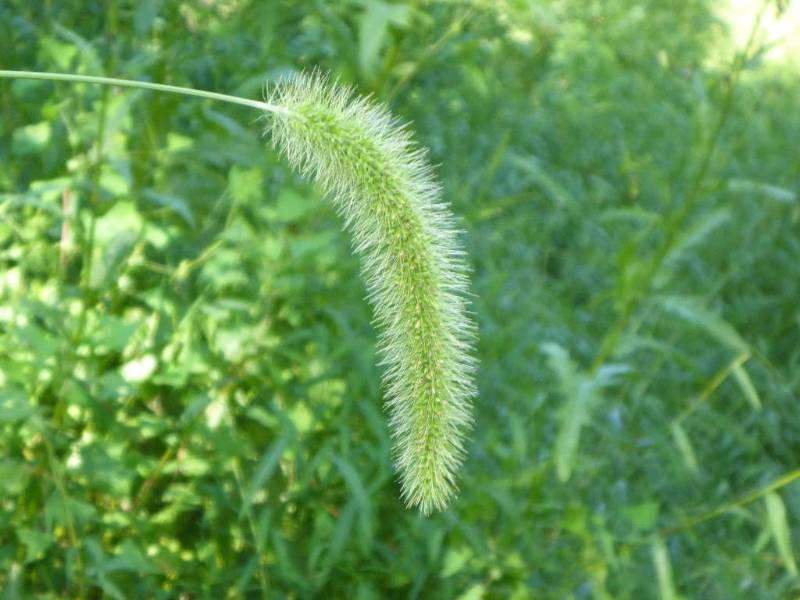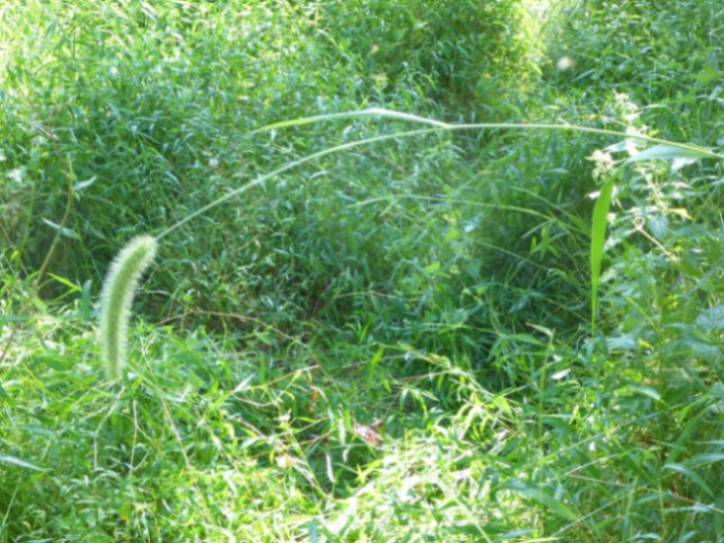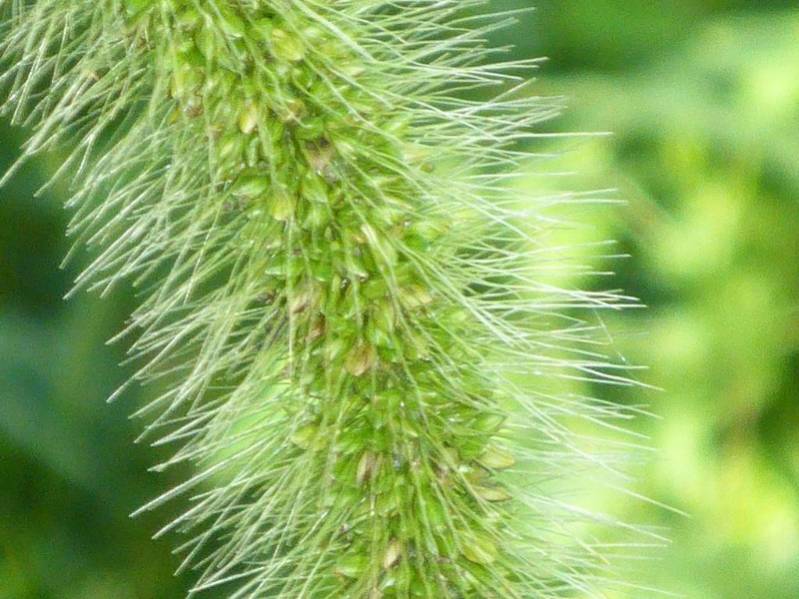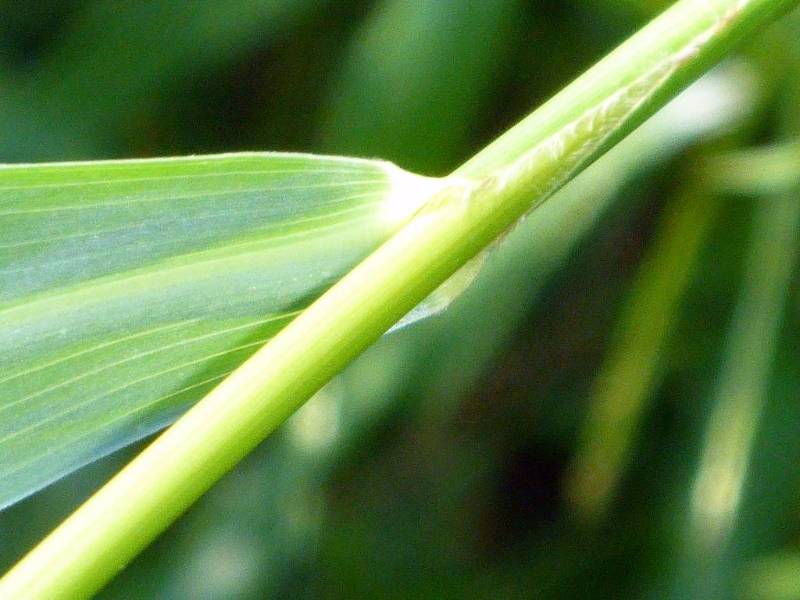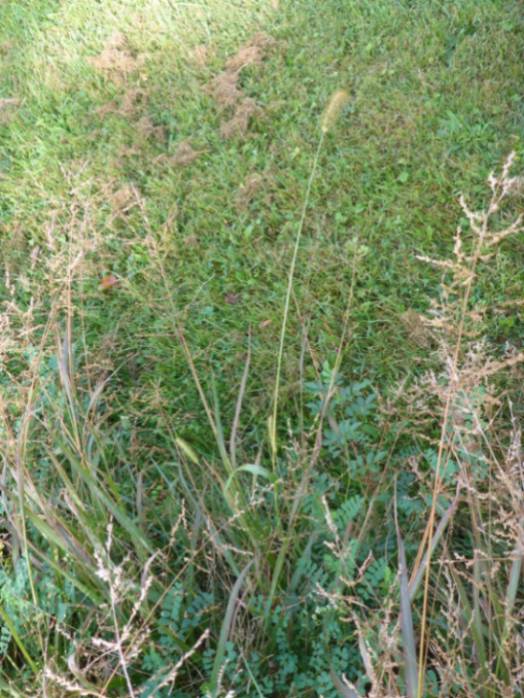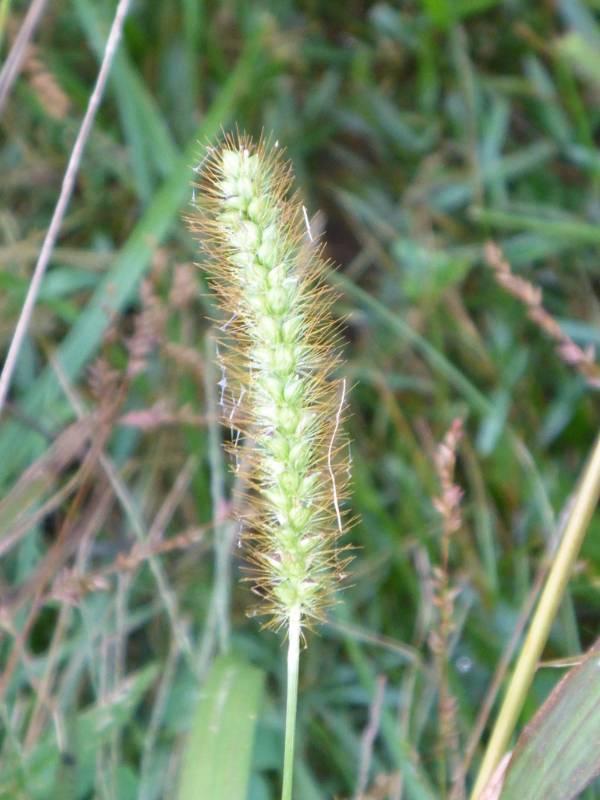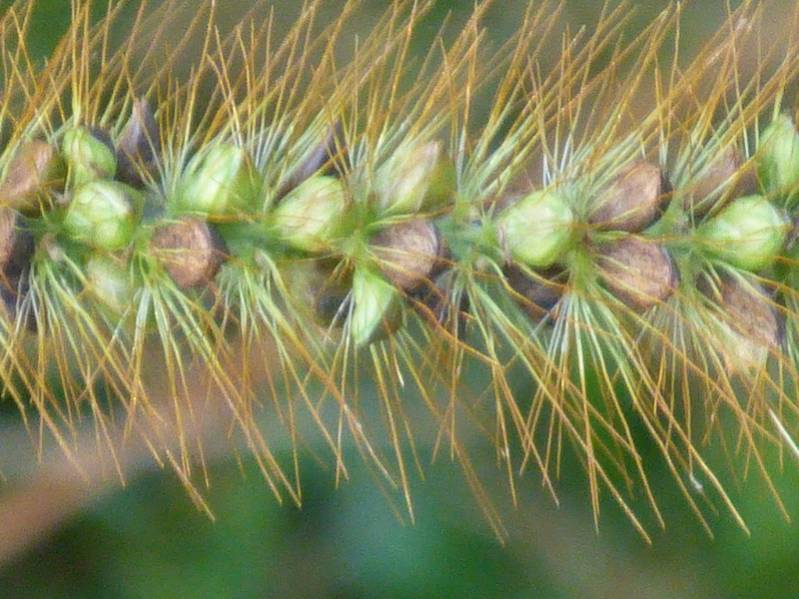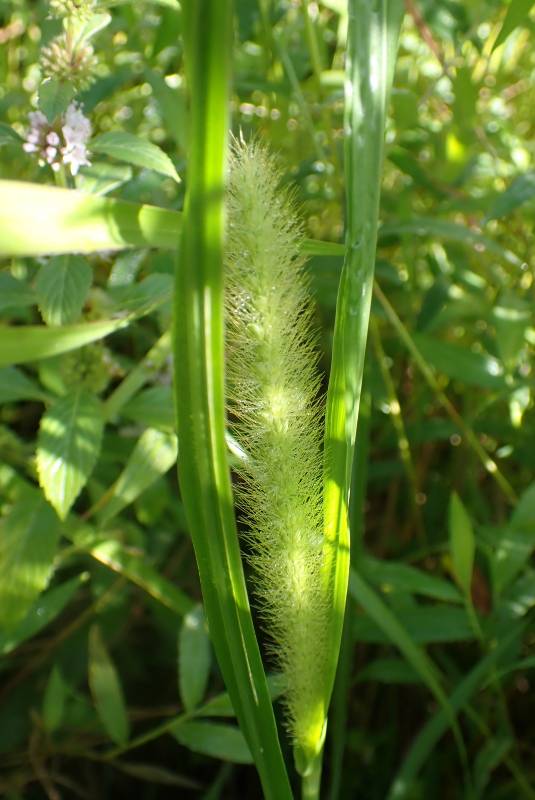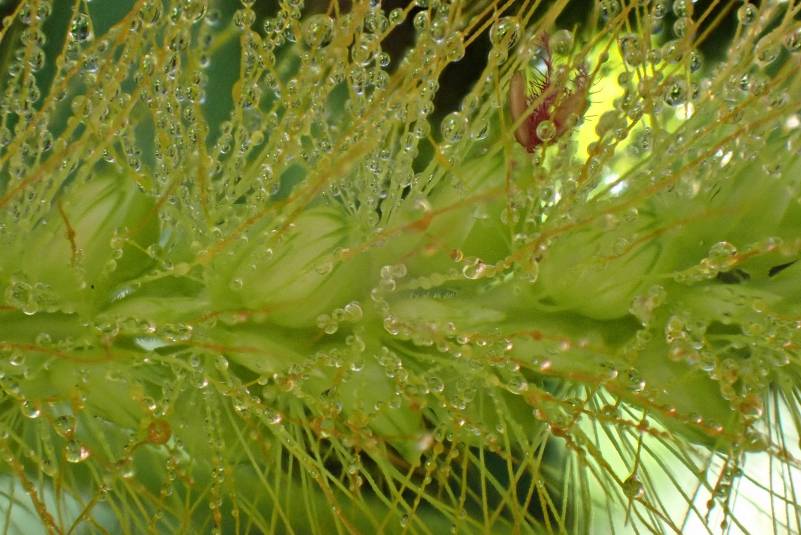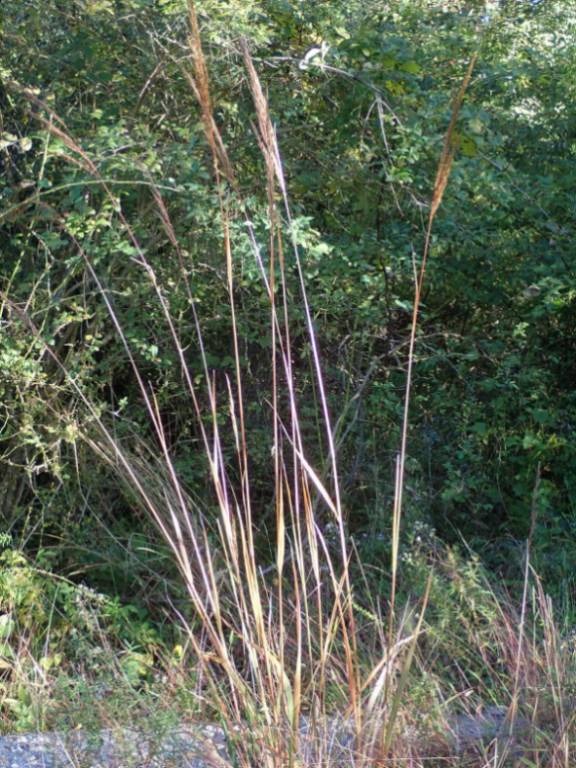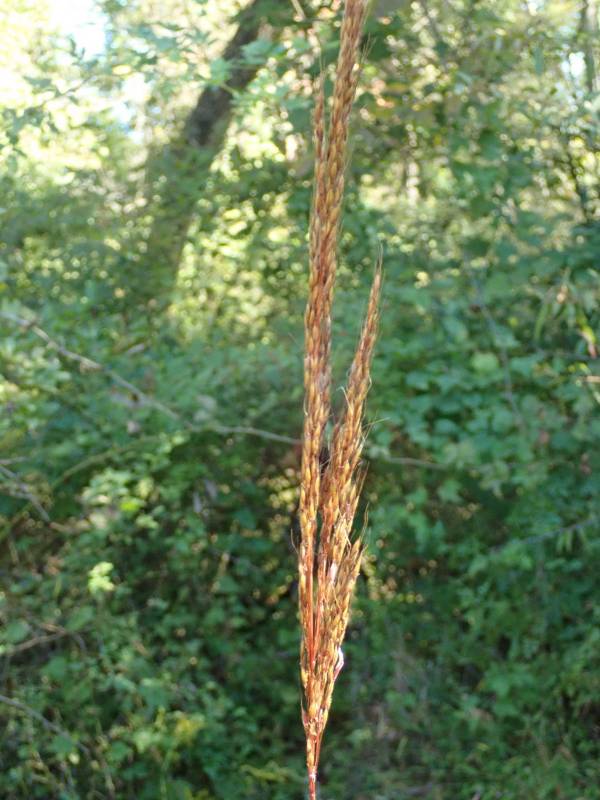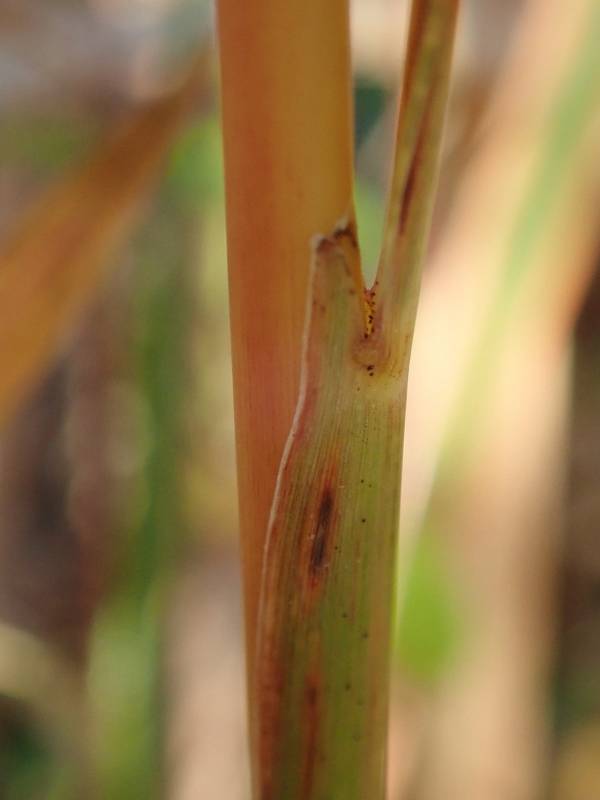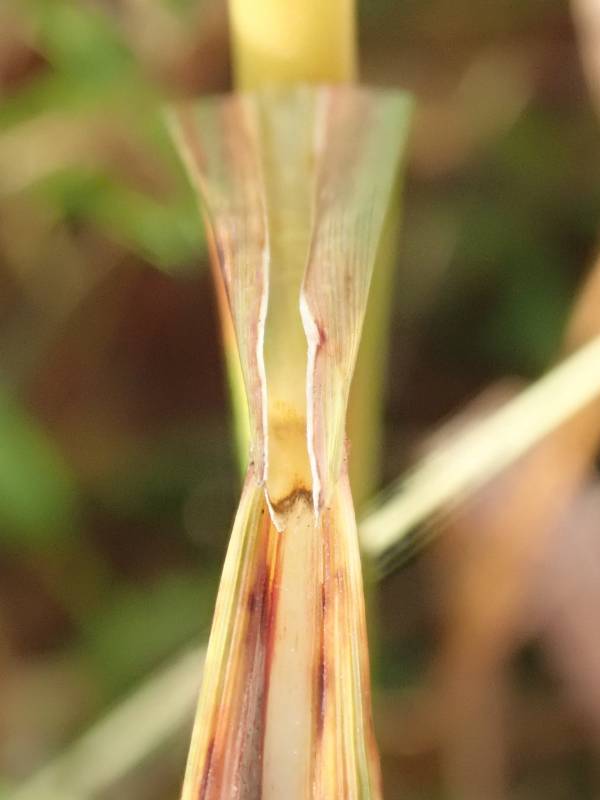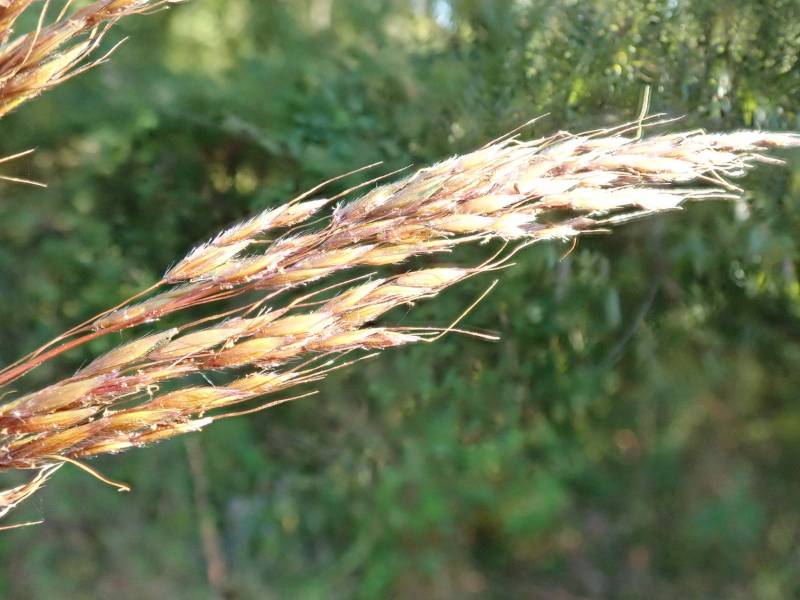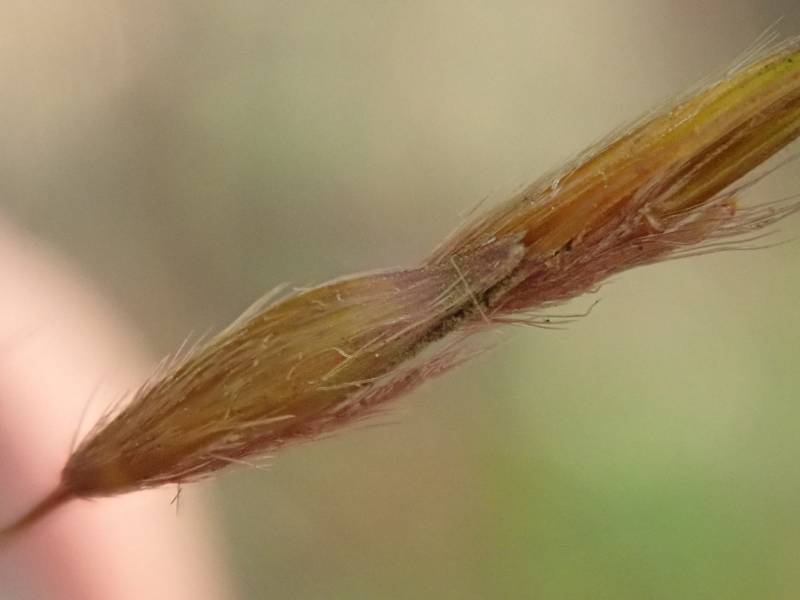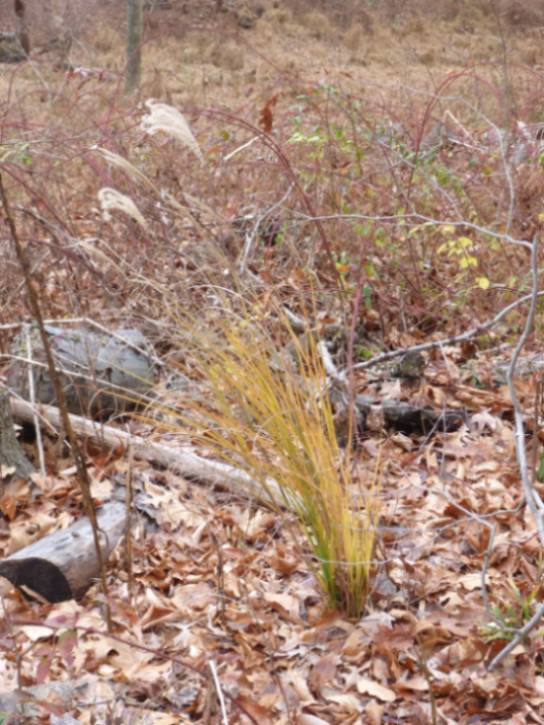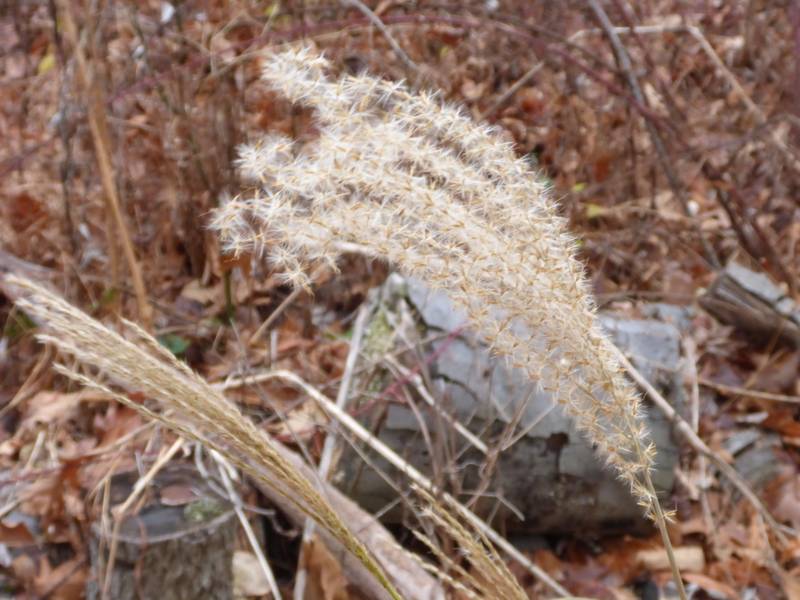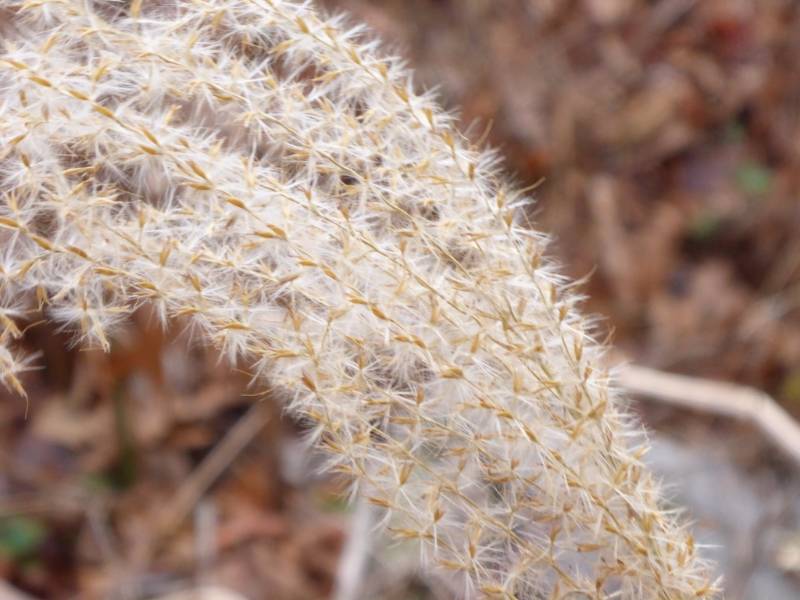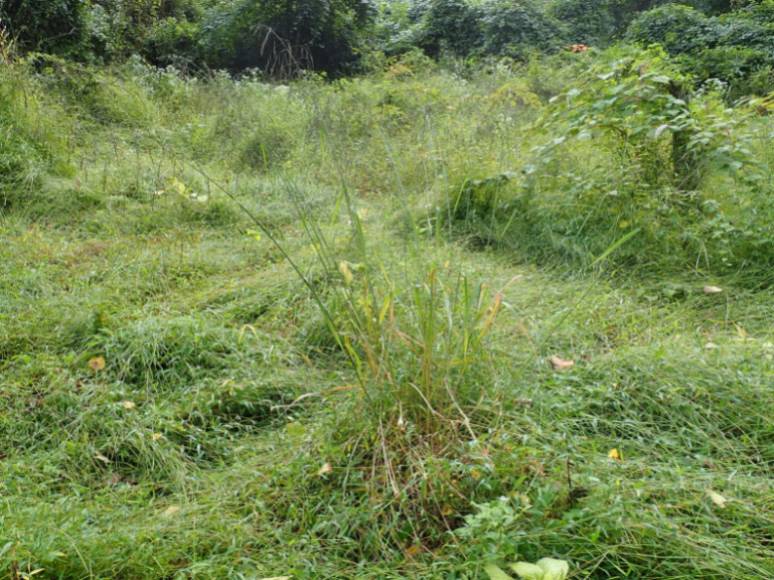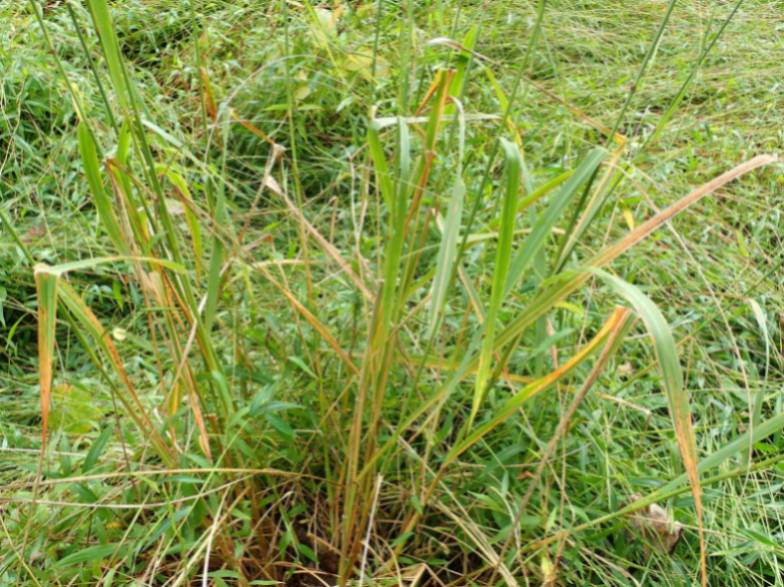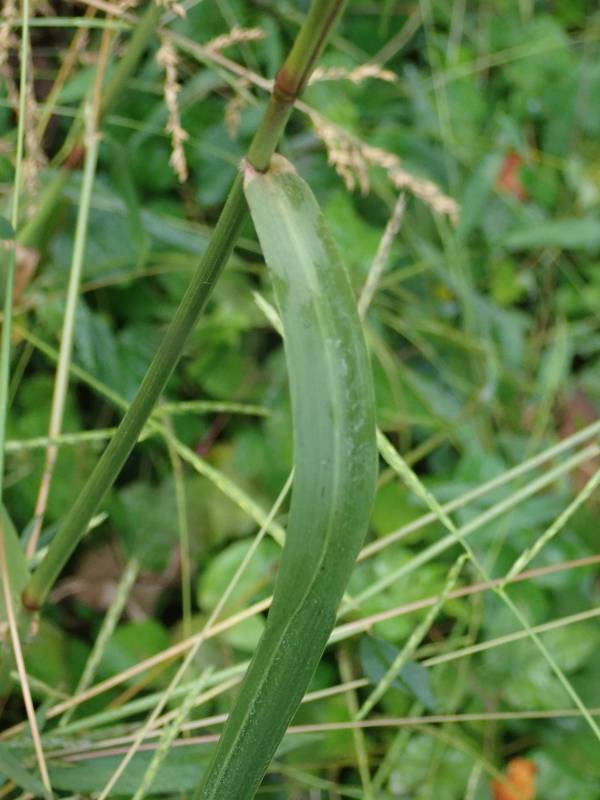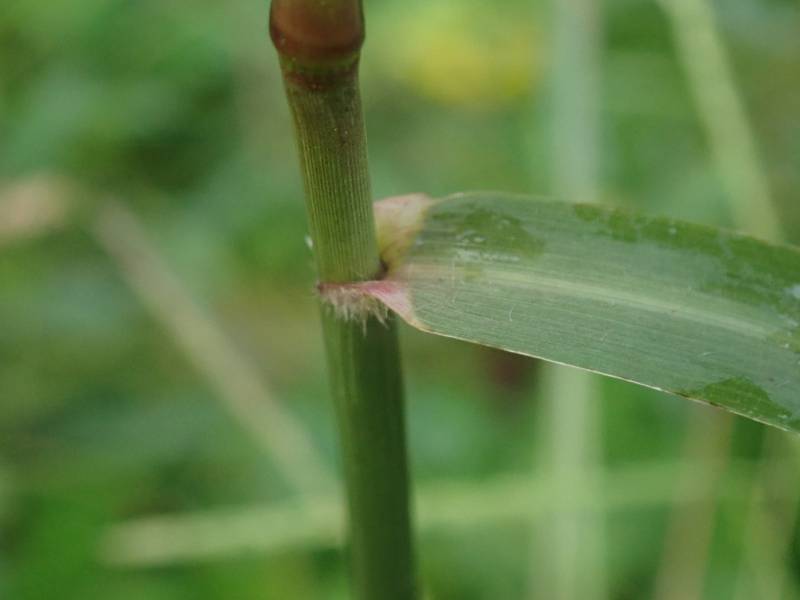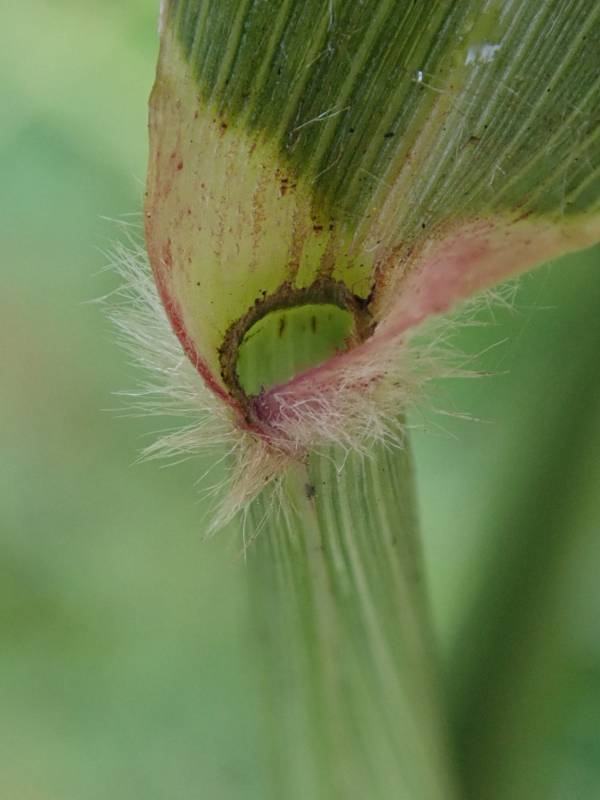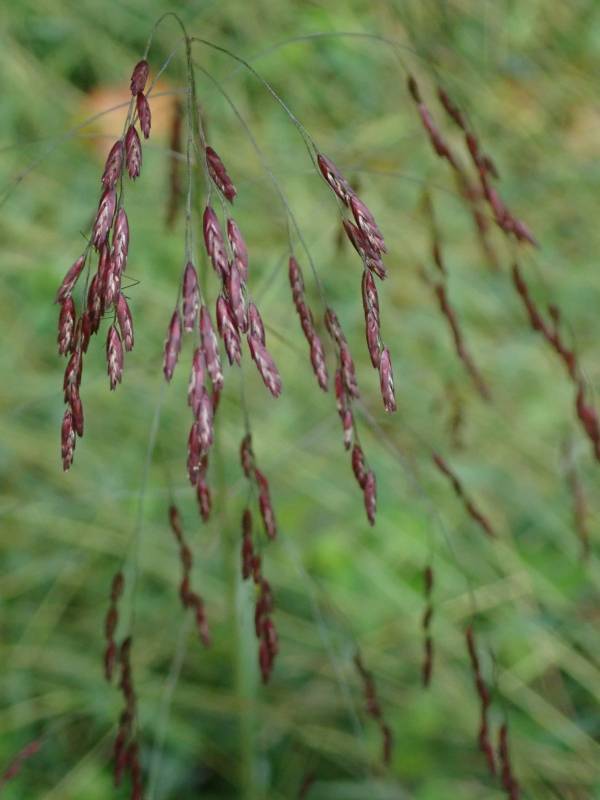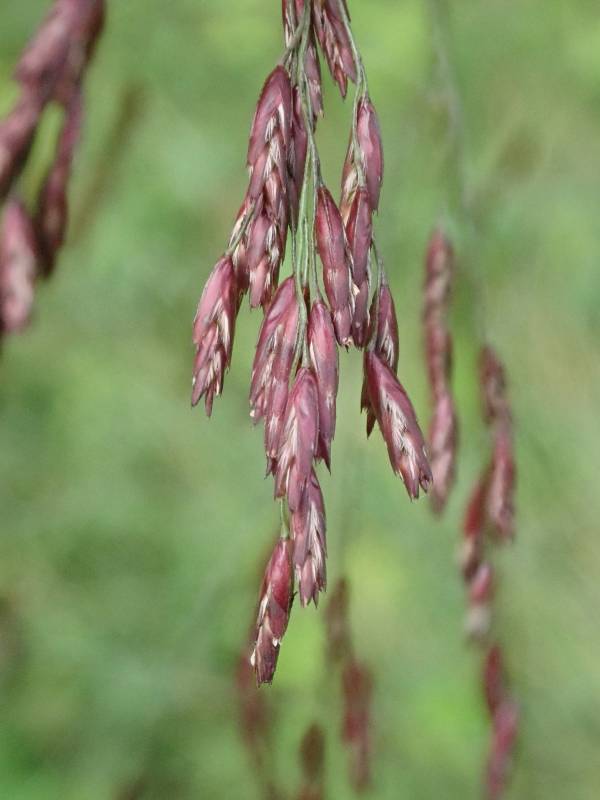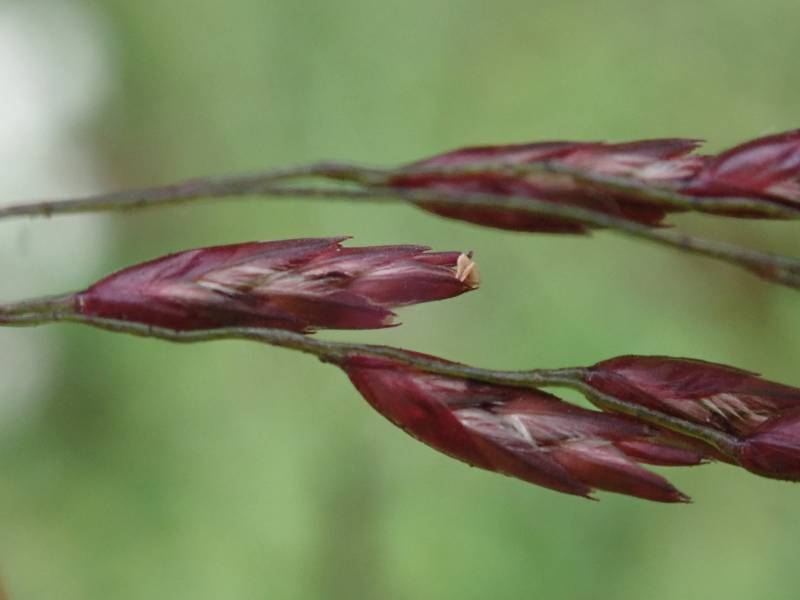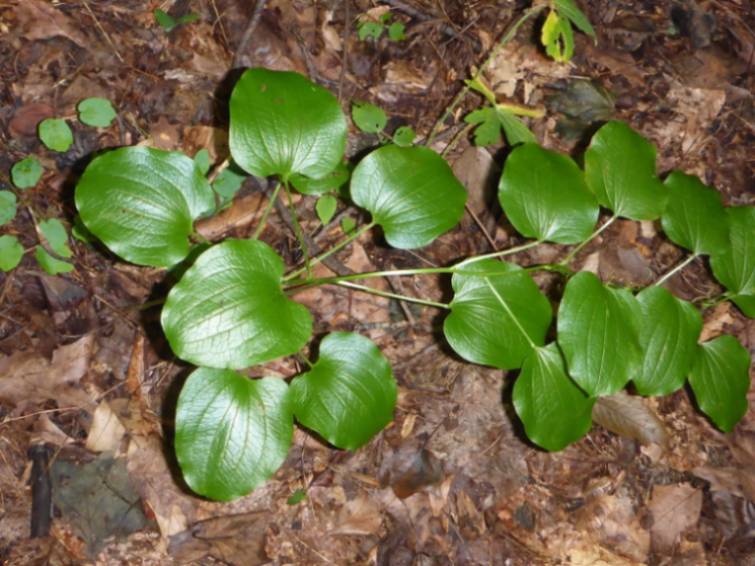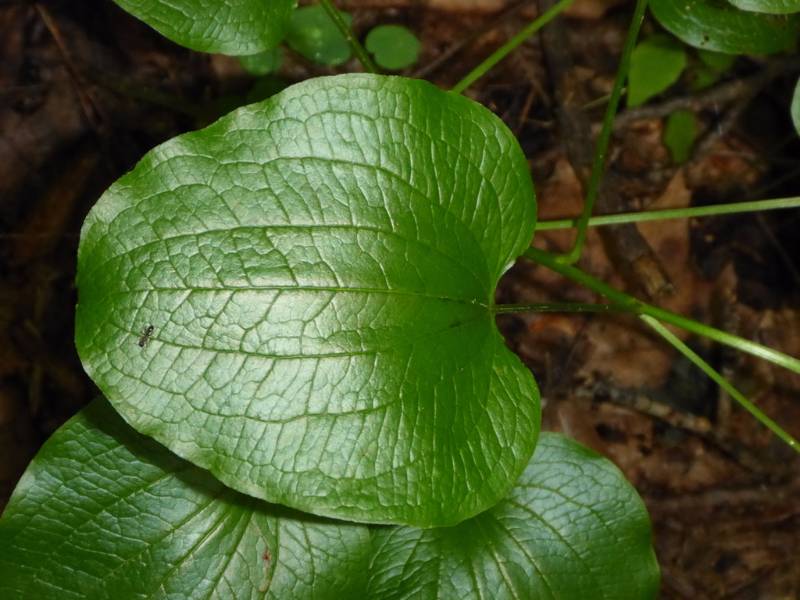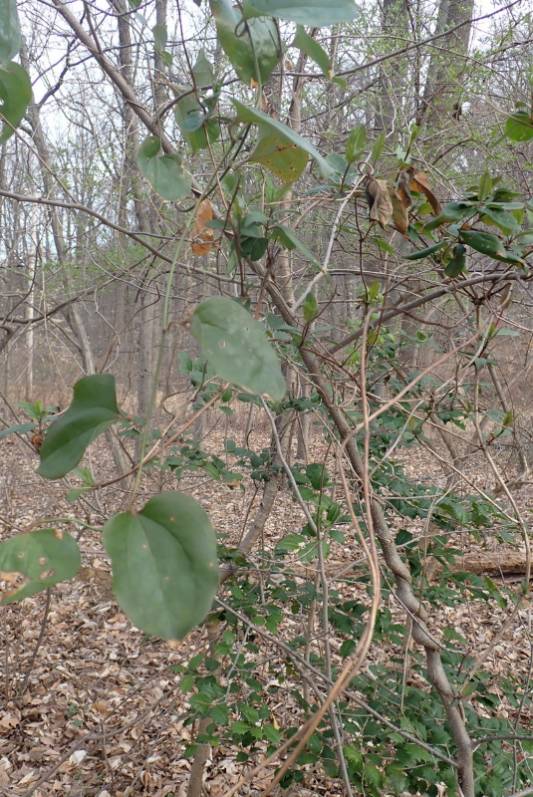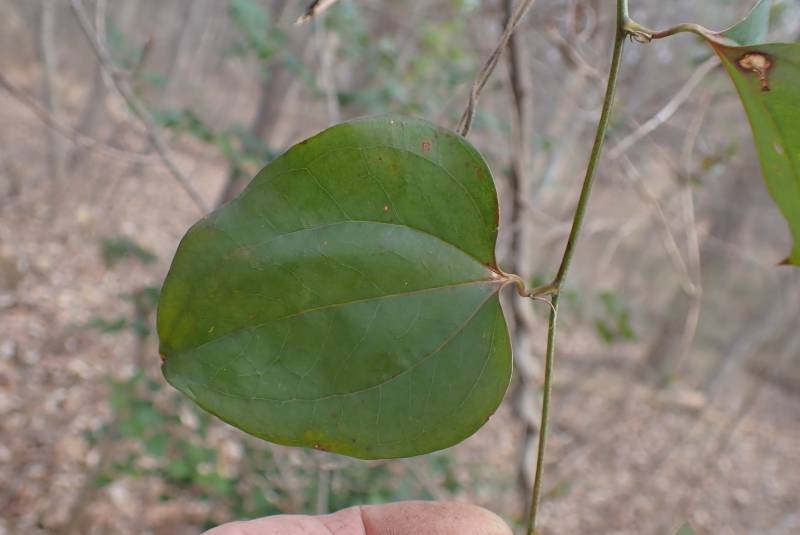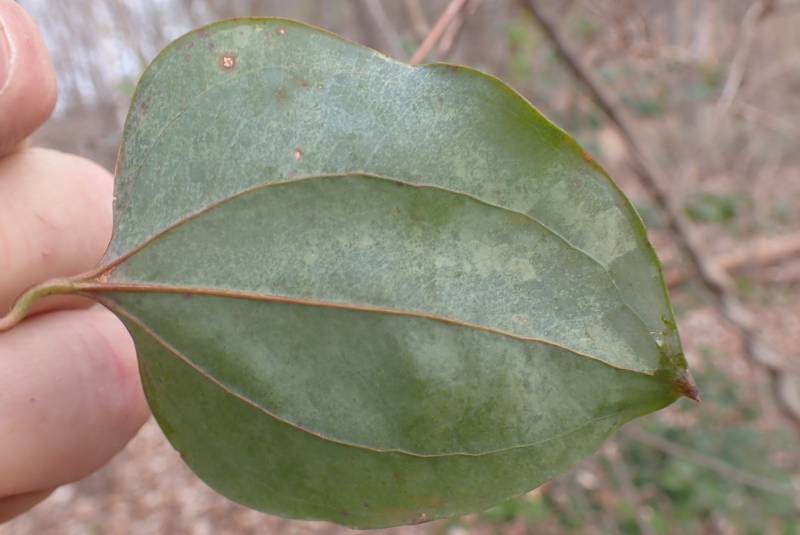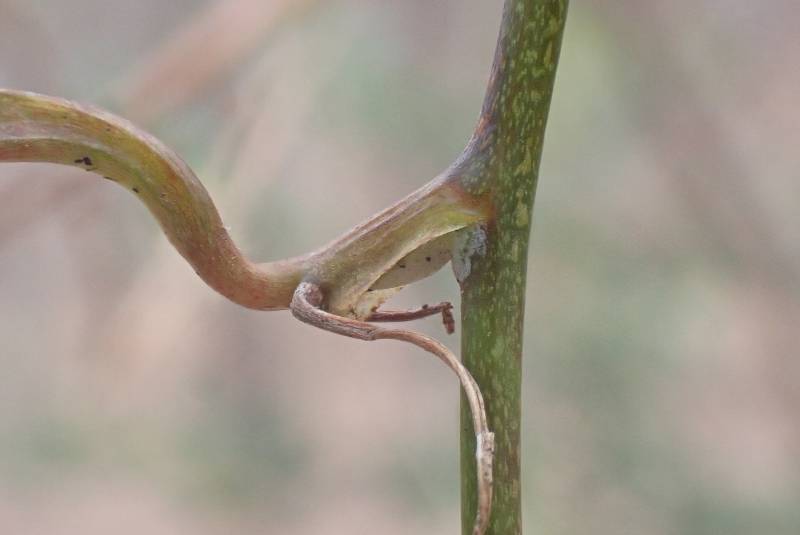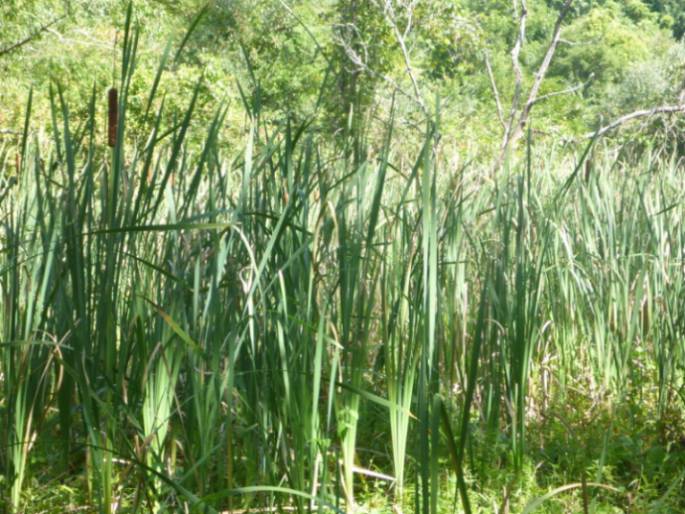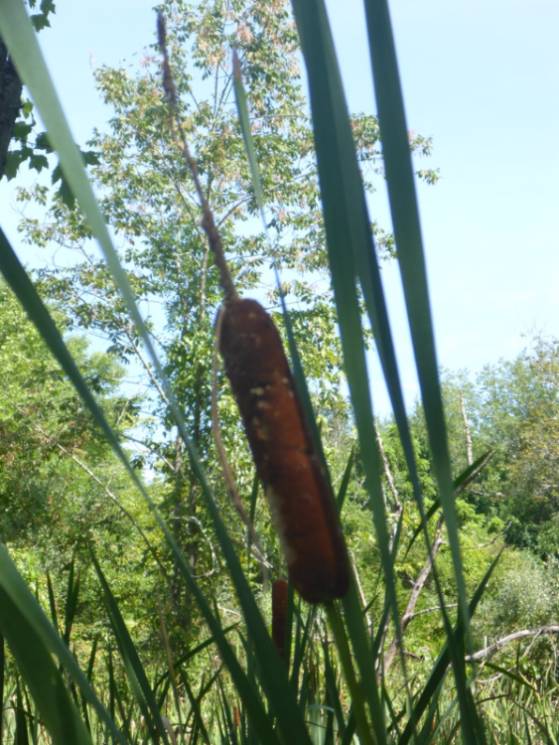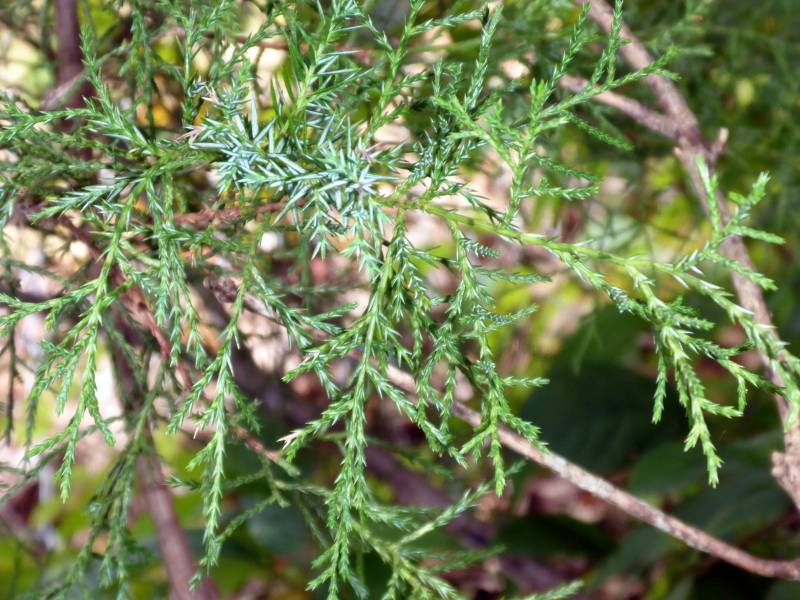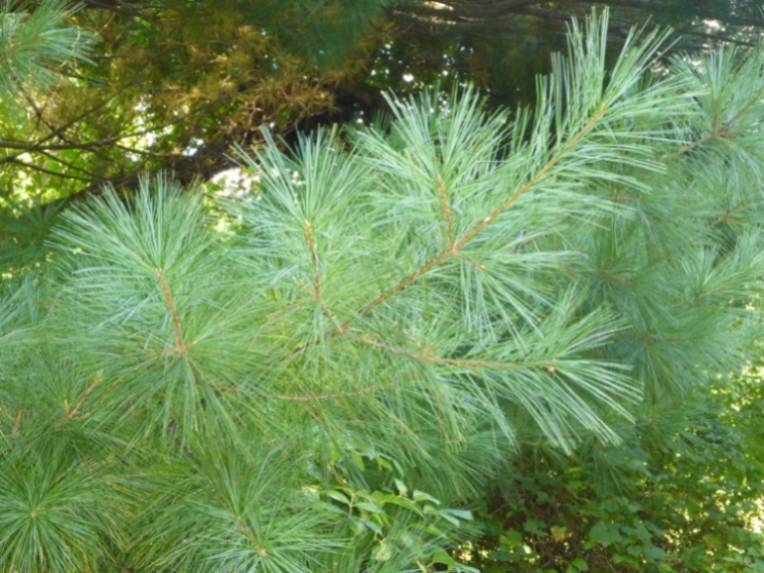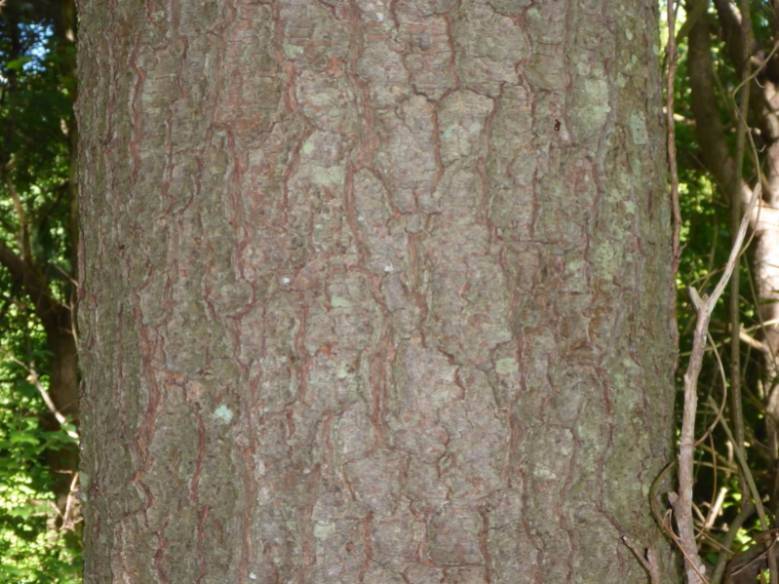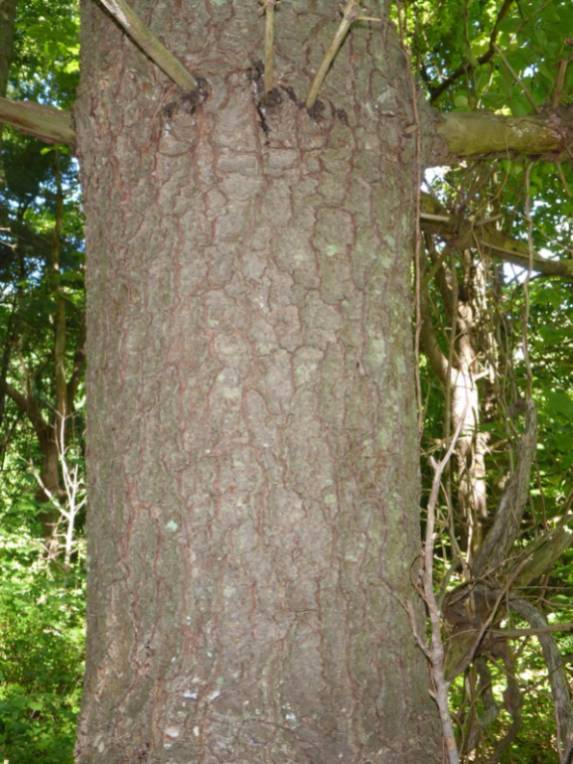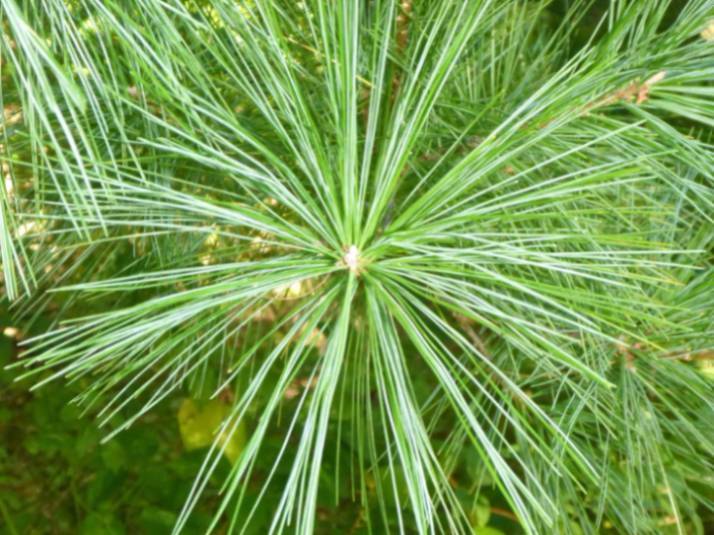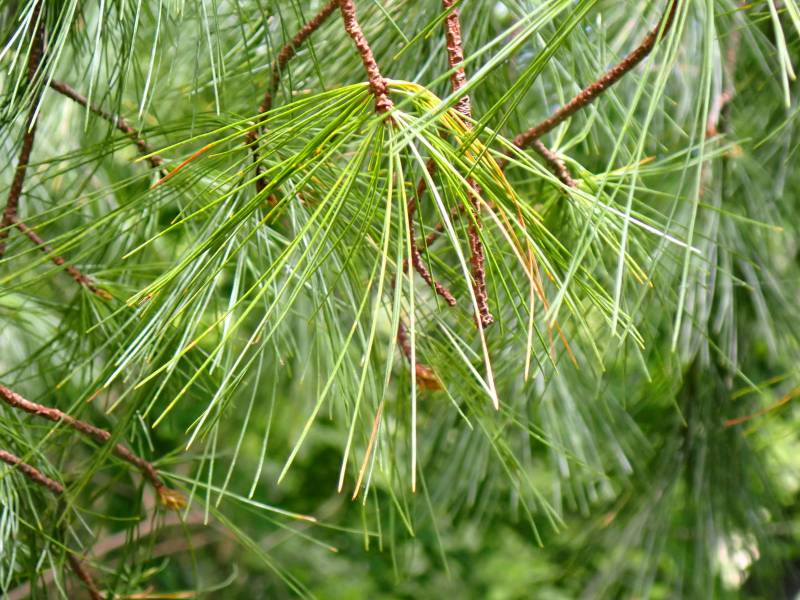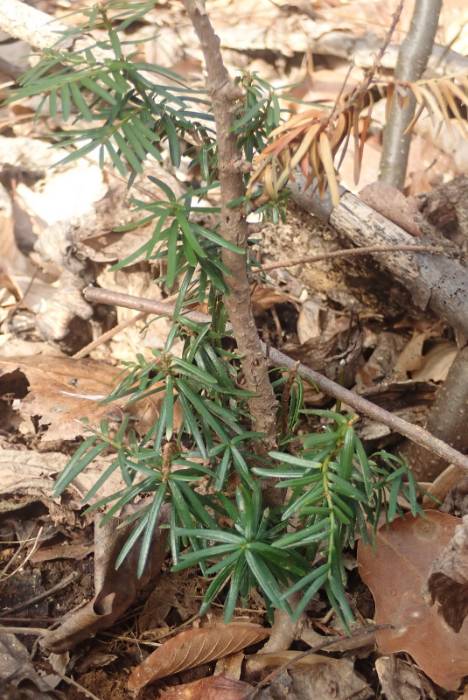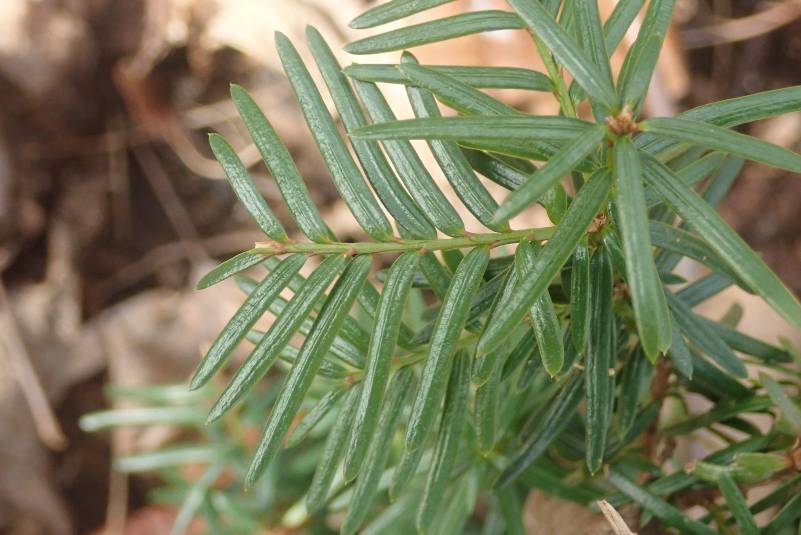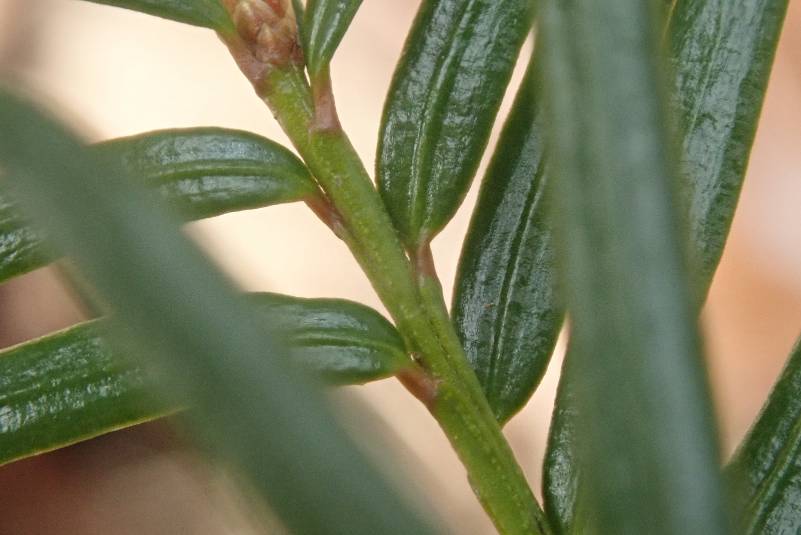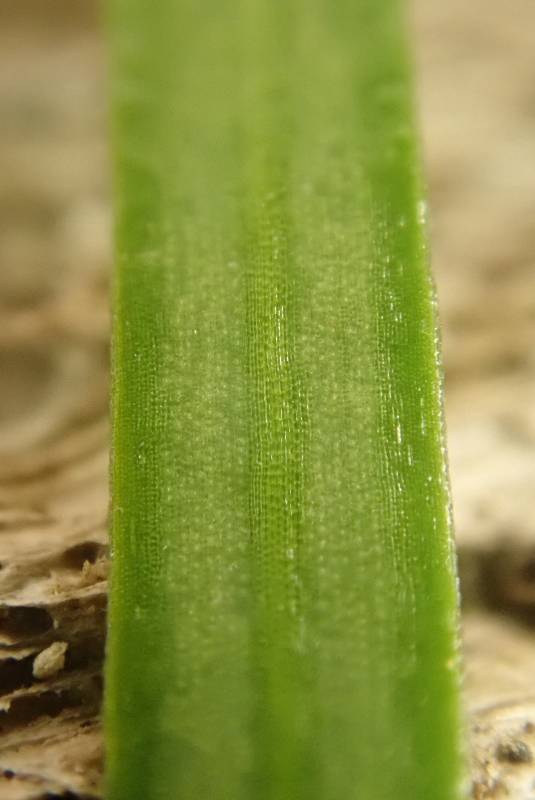The Biota of the Gordon Natural Area - Plants
Vascular Plants at the GNA
Plant life at the GNA has long held an attraction for both faculty (beginning with Dr. Gordon) and students. Dr. William Overlease conducted extensive research in the GNA, with much of his work focused on the vegetative succession of a former corn field in what is now the western part of the preserve. There have been three site-wide floristic surveys of the GNA: during 1984 (by biology students Jack Holt and Jim Plyler); during 2007 by botanical consultants Jack Holt (the former student) and Janet Ebert; and during 2017-19 in a ‘follow-up’ survey by Jack Holt and Janet Ebert. In 2002, former GNA Stewardship Manager Gerry Hertel began establishing what would become 22 ‘Floristic Health Management’ (FHM) plots. While these were primarily monitored only for woody plants, in 2004 the 18 plots that had been established by that time were also surveyed for herbaceous species. And throughout the history of the GNA there have been many student projects that focused on portions of the GNA flora. Because of this intensity of effort, vascular plants constitute the best-known biotic group at the GNA.
Despite the Gordon’s relatively small size (~ 126 acres) and its proximity to extensive development, the preserve supports an extremely high diversity of native plants (in addition to a large component of introduced plant species). The compiled plant list for the site currently contains 663 species in 364 genera, 110 families, and 56 orders. Five species are on the Pennsylvania Natural Heritage Program's list of species of conservation concern, and many additional species are locally significant.
It should be noted that these 663 species represent all vascular plant species that have been noted at the Gordon Natural Area since the inception of data collecting. Some species have only been observed a single time, and in some cases, the last observation occurred many years ago. For example, New Jersey Tea (Ceanothus americanus), which was formerly a state-listed species, was last noted in the GNA in 1978.
Perhaps a better measure of the GNA’s vascular plant richness can be obtained by looking only at those species that have been noted since the beginning of 2004 (i.e., at the initiation of comprehensive monitoring in the FHM plots). During that period (i.e., 2004-present), 606 species of vascular plants were noted in the GNA.
You can explore the vascular plant checklist below, or you can access a pdf copy of the checklist.
Asplenium platyneuron (Ebony Spleenwort)
Dennstaedtia punctilobula (Eastern Hayscented Fern)
Group: Plants
Type: Ferns & Fern Allies
Family: Dennstaedtiaceae
Notes
Common Name: Eastern Hayscented Fern
Growth Habit: Forb/herb
Duration: Perennial
Origin: Native to the conterminous United States
Years Noted: 1984; 2007; 2016-2023
Allelopathic: Yes
Deer Resistant: Yes
Images
Athyrium filix. femina (Common Ladyfern)
Group: Plants
Type: Ferns & Fern Allies
Family: Dryopteridaceae
Notes
Common Name: Common Ladyfern
Growth Habit: Forb/herb
Duration: Perennial
Origin: Native to the conterminous United States
Years Noted: 1984; 2004; 2007; 2016-2023
Dispersed By: Wind
Deer Resistant: Yes
iNaturalist Observations:
121637982 (Observed: 6/13/2022)
Images
Deparia acrostichoides (Silvery Glade Fern)
Group: Plants
Type: Ferns & Fern Allies
Family: Dryopteridaceae
Notes
Common Name: Silvery Glade Fern
Growth Habit: Forb/herb
Duration: Perennial
Origin: Native to the conterminous United States
Synonyms: Athyrium thelypterioides (Michx.) Desv.; Diplazium acrostichoides (Sw.) ButtersYears Noted: 1984; 2004; 2007; 2016-2019; 2022-2023
iNaturalist Observations:
121755913 (Observed: 6/13/2022)
121593724 (Observed: 5/25/2016)
Images
Dryopteris carthusiana (Spinulose Woodfern)
Group: Plants
Type: Ferns & Fern Allies
Family: Dryopteridaceae
Notes
Common Name: Spinulose Woodfern
Growth Habit: Forb/herb
Duration: Perennial
Origin: Native to the conterminous United States
Years Noted: 2004; 2007; 2009; 2017-2019; 2021
iNaturalist Observations:
45354922 (Observed: 5/7/2020)
68613836 (Observed: 1/25/2021)
Images
Dryopteris cristata (Crested Woodfern)
Group: Plants
Type: Ferns & Fern Allies
Family: Dryopteridaceae
Notes
Common Name: Crested Woodfern
Growth Habit: Forb/herb
Duration: Perennial
Origin: Native to the conterminous United States
Year Noted: 2004
Northeast Wetland Status: FACW
Dryopteris intermedia (Intermediate Woodfern)
Group: Plants
Type: Ferns & Fern Allies
Family: Dryopteridaceae
Notes
Common Name: Intermediate Woodfern
Growth Habit: Forb/herb
Duration: Perennial
Origin: Native to the conterminous United States
Years Noted: 1984; 2004; 2007; 2017
Matteuccia struthiopteris (Ostrich Fern)
Group: Plants
Type: Ferns & Fern Allies
Family: Dryopteridaceae
Notes
Common Name: Ostrich Fern
Growth Habit: Forb/herb
Duration: Perennial
Origin: Native to the conterminous United States
Years Noted: 2004; 2007; 2017-2023
Deer Resistant: Yes
iNaturalist Observations:
42464077 (Observed: 4/15/2020)
Images
Onoclea sensibilis (Sensitive Fern)
Group: Plants
Type: Ferns & Fern Allies
Family: Dryopteridaceae
Notes
Common Name: Sensitive Fern
Growth Habit: Forb/herb
Duration: Perennial
Origin: Native to the conterminous United States
Years Noted: 1984; 2004; 2007; 2009; 2011; 2016-2023
Deer Resistant: Yes
iNaturalist Observations:
155652072 (Observed: 4/19/2023)
111945358 (Observed: 4/18/2022)
Images
Polystichum acrostichoides (Christmas Fern)
Group: Plants
Type: Ferns & Fern Allies
Family: Dryopteridaceae
Notes
Common Name: Christmas Fern
Growth Habit: Forb/herb
Duration: Perennial
Origin: Native to the conterminous United States
Years Noted: 1984; 2004; 2007; 2009; 2016-2024
Deer Resistant: Yes
iNaturalist Observations:
183748156 (Observed: 8/31/2023)
191109147 (Observed: 11/15/2023)
168515879 (Observed: 6/20/2023)
64133867 (Observed: 11/3/2020)
Images
Equisetum arvense (Field Horsetail)
Group: Plants
Type: Ferns & Fern Allies
Family: Equisetaceae
Notes
Common Name: Field Horsetail
Growth Habit: Forb/herb
Duration: Perennial
Origin: Native to the conterminous United States
Years Noted: 1984; 2004; 2007; 2017-2021; 2023
Dispersed By: Wind
Deer Resistant: Yes
iNaturalist Observations:
154291714 (Observed: 4/10/2023)
46767664 (Observed: 5/21/2020)
Images
Huperzia lucidula (Shining Clubmoss)
Lycopodium digitatum (Fan Clubmoss)
Group: Plants
Type: Ferns & Fern Allies
Family: Lycopodiaceae
Notes
Common Name: Fan Clubmoss
Growth Habit: Forb/herb, Subshrub
Duration: Perennial
Origin: Native to the conterminous United States
Synonyms: Diphasiastrum digitatum (Dill. ex A. Braun) Holub; Lycopodium flabelliforme (Fernald) BlanchYear Noted: 1983-1984
Deer Resistant: Yes
Botrychium dissectum (Cutleaf Grapefern)
Group: Plants
Type: Ferns & Fern Allies
Family: Ophioglossaceae
Notes
Common Name: Cutleaf Grapefern
Growth Habit: Forb/herb
Duration: Perennial
Origin: Native to the conterminous United States
Synonyms: Sceptridium dissectum (Spreng.) LyonYears Noted: 1984; 2004; 2007; 2018
Botrychium virginianum (Rattlesnake Fern)
Group: Plants
Type: Ferns & Fern Allies
Family: Ophioglossaceae
Notes
Common Name: Rattlesnake Fern
Growth Habit: Forb/herb
Duration: Perennial
Origin: Native to the conterminous United States
Synonyms: Botrypus virginianus (L.) HolubYears Noted: 1984; 2004; 2007; 2016-2023
iNaturalist Observations:
140054882 (Observed: 5/14/2018)
79316500 (Observed: 5/13/2021)
74364916 (Observed: 4/17/2021)
Images
Osmunda cinnamomea (Cinnamon Fern)
Osmunda claytoniana (Interrupted Fern)
Group: Plants
Type: Ferns & Fern Allies
Family: Osmundaceae
Notes
Common Name: Interrupted Fern
Growth Habit: Forb/herb
Duration: Perennial
Origin: Native to the conterminous United States
Years Noted: 1984; 2007; 2016; 2022-2023
Deer Resistant: Yes
iNaturalist Observations:
119666013 (Observed: 5/31/2022)
Images
Osmunda regalis (Royal Fern)
Group: Plants
Type: Ferns & Fern Allies
Family: Osmundaceae
Notes
Common Name: Royal Fern
Growth Habit: Forb/herb
Duration: Perennial
Origin: Native to the conterminous United States
Year Noted: 2007
Northeast Wetland Status: OBL
Deer Resistant: Yes
Adiantum pedatum (Northern Maidenhair Fern)
Group: Plants
Type: Ferns & Fern Allies
Family: Pteridaceae
Notes
Common Name: Northern Maidenhair Fern
Growth Habit: Forb/herb
Duration: Perennial
Origin: Native to the conterminous United States
Years Noted: 1984; 2007; 2017-2023
Deer Resistant: Yes
iNaturalist Observations:
104421434 (Observed: 10/16/2021)
46427851 (Observed: 5/18/2020)
Images
Selaginella apoda (Meadow Spikemoss)
Group: Plants
Type: Ferns & Fern Allies
Family: Selaginellaceae
Notes
Common Name: Meadow Spikemoss
Growth Habit: Forb/herb
Duration: Perennial
Origin: Native to the conterminous United States
Years Noted: 2018; 2020-2021
Notes: Known from just one location near the western edge of the GNA. Growing on very steep banks above Plum Run. Approximately one week after this population was discovered, all individuals were 'scoured' by high water after a storm.
iNaturalist Observations:
87292568 (Observed: 1/17/2020)
37686905 (Observed: 1/17/2020)
65955636 (Observed: 11/24/2020)
Images
Phegopteris hexagonoptera (Broad Beechfern)
Group: Plants
Type: Ferns & Fern Allies
Family: Thelypteridaceae
Notes
Common Name: Broad Beechfern
Growth Habit: Forb/herb
Duration: Perennial
Origin: Native to the conterminous United States
Years Noted: 1984; 2004; 2007; 2016-2023
iNaturalist Observations:
104421429 (Observed: 10/16/2021)
41784940 (Observed: 4/9/2020)
73879802 (Observed: 4/13/2021)
Images
Thelypteris noveboracensis (New York Fern)
Group: Plants
Type: Ferns & Fern Allies
Family: Thelypteridaceae
Notes
Common Name: New York Fern
Growth Habit: Forb/herb
Duration: Perennial
Origin: Native to the conterminous United States
Synonyms: Parathelypteris novaeboracensis (L.) ChingYears Noted: 1984; 2004; 2007; 2017-2020; 2022-2023
Allelopathic: Yes
Deer Resistant: Yes
Notes: Fairly commonly encountered at the Gordon. As is often the case for ferns in overgrazed habitats, at the Gordon this species can often dominate large areas of the forest floor.
iNaturalist Observations:
121756488 (Observed: 6/13/2022)
Images
Thelypteris palustris (Eastern Marsh Fern)
Group: Plants
Type: Ferns & Fern Allies
Family: Thelypteridaceae
Notes
Common Name: Eastern Marsh Fern
Growth Habit: Forb/herb
Duration: Perennial
Origin: Native to the conterminous United States
Years Noted: 2004; 2007; 2017; 2022-2023
Deer Resistant: Yes
iNaturalist Observations:
136193771 (Observed: 9/23/2022)
Images
Acer negundo (Boxelder)
Group: Plants
Type: Flowering Plants - Dicots
Family: Aceraceae
Notes
Common Name: Boxelder
Growth Habit: Tree
Duration: Perennial
Origin: Native to the conterminous United States
Years Noted: 1971; 1984; 2002; 2004-2005; 2007-2014; 2016-2024
Dispersed By: Wind
Allelopathic: Yes
Bee Beneficial: Yes
Deer Resistant: Yes
iNaturalist Observations:
41947683 (Observed: 4/11/2020)
76542810 (Observed: 4/29/2021)
41789392 (Observed: 4/9/2020)
Images
Acer palmatum (Japanese Maple)
Group: Plants
Type: Flowering Plants - Dicots
Family: Aceraceae
Notes
Common Name: Japanese Maple
Growth Habit: Tree, Shrub
Duration: Perennial
Origin: Not native to the conterminous United States
Pennsylvania DCNR Invasive Plants Rating: Watch List — "Exotic plant species that are severe problems in surrounding states but have not been widely reported in Pennsylvania, OR may naturalize and become a problem in the future and require more monitoring."
Years Noted: 2004; 2007; 2017-2019; 2021-2022
Dispersed By: Wind
Allelopathic: Yes
Deer Resistant: Yes
iNaturalist Observations:
75701118 (Observed: 4/29/2021)
Images
Acer platanoides (Norway Maple)
Group: Plants
Type: Flowering Plants - Dicots
Family: Aceraceae
Notes
Common Name: Norway Maple
Growth Habit: Tree
Duration: Perennial
Origin: Not native to the conterminous United States
Pennsylvania DCNR Invasive Plants Rating: Rank 2 — "Significant Threat. Exotic plant species that possess characteristics of invasive species but are not presently considered to spread as easily and aggressively into native plant communities as those species listed as Rank 1."
Years Noted: 1965; 1967; 1970-1971; 1984; 1992; 2002; 2004; 2007-2010; 2013; 2016-2024
Dispersed By: Birds; Wind
Allelopathic: Yes
iNaturalist Observations:
41789299 (Observed: 4/9/2020)
58272328 (Observed: 9/1/2020)
Images
Acer pseudoplatanus (Sycamore Maple)
Group: Plants
Type: Flowering Plants - Dicots
Family: Aceraceae
Notes
Common Name: Sycamore Maple
Growth Habit: Tree
Duration: Perennial
Origin: Not native to the conterminous United States
Year Noted: 2015-2023
Dispersed By: Animals; Birds; General Zoochory; Water; Wind
Allelopathic: Yes
iNaturalist Observations:
46430297 (Observed: 5/18/2020)
Images
Acer rubrum (Red Maple)
Group: Plants
Type: Flowering Plants - Dicots
Family: Aceraceae
Notes
Common Name: Red Maple
Growth Habit: Tree
Duration: Perennial
Origin: Native to the conterminous United States
Years Noted: 1965; 1967; 1970-1971; 1984; 1992; 2002; 2004-2005; 2007-2014; 2016-2024
Dispersed By: Wind
iNaturalist Observations:
183748176 (Observed: 8/31/2023)
40103296 (Observed: 3/16/2020)
50917620 (Observed: 6/25/2020)
73156685 (Observed: 4/6/2021)
72393513 (Observed: 3/29/2021)
Images
Acer saccharinum (Silver Maple)
Group: Plants
Type: Flowering Plants - Dicots
Family: Aceraceae
Notes
Common Name: Silver Maple
Growth Habit: Tree
Duration: Perennial
Origin: Native to the conterminous United States
Years Noted: 1984; 2004; 2007; 2017-2018
Dispersed By: Wind
Allelopathic: Yes
Acer saccharum (Sugar Maple)
Group: Plants
Type: Flowering Plants - Dicots
Family: Aceraceae
Notes
Common Name: Sugar Maple
Growth Habit: Tree, Shrub
Duration: Perennial
Origin: Native to the conterminous United States
Years Noted: 1970; 2002; 2004; 2007-2008; 2010; 2013; 2016; 2018-2020
Dispersed By: Wind
Allelopathic: Yes
Bee Beneficial: Yes
Rhus glabra (Smooth Sumac)
Group: Plants
Type: Flowering Plants - Dicots
Family: Anacardiaceae
Notes
Common Name: Smooth Sumac
Growth Habit: Tree, Shrub
Duration: Perennial
Origin: Native to the conterminous United States
Year Noted: 1984
Dispersed By: Birds
Allelopathic: Yes
Rhus typhina (Staghorn Sumac)
Group: Plants
Type: Flowering Plants - Dicots
Family: Anacardiaceae
Notes
Common Name: Staghorn Sumac
Growth Habit: Shrub, Tree
Duration: Perennial
Origin: Native to the conterminous United States
Year Noted: 1984
Dispersed By: Animals; Birds; Deer; General Zoochory; Human Activities
iNaturalist Observations:
84896745 (Observed: 6/28/2021)
Toxicodendron radicans (Eastern Poison Ivy)
Group: Plants
Type: Flowering Plants - Dicots
Family: Anacardiaceae
Notes
Common Name: Eastern Poison Ivy
Growth Habit: Shrub, Subshrub, Vine
Duration: Perennial
Origin: Native to the conterminous United States
Years Noted: 1971; 1984; 2004; 2007; 2012-2013; 2016-2024
Dispersed By: Birds
Deer Resistant: Yes
iNaturalist Observations:
88177181 (Observed: 7/22/2021)
80222330 (Observed: 5/24/2021)
Images
Aegopodium podagraria (Bishops Goutweed)
Group: Plants
Type: Flowering Plants - Dicots
Family: Apiaceae
Notes
Common Name: Bishop's Goutweed
Growth Habit: Forb/herb
Duration: Perennial
Origin: Not native to the conterminous United States
Pennsylvania DCNR Invasive Plants Rating: Rank 3 — "Lesser Threat. Exotic plant species that spread in or near disturbed areas, and are not presently considered a major threat to undisturbed native plant communities."
Years Noted: 2007; 2016-2023
Dispersed By: Human Activities; Wind
Deer Resistant: Yes
iNaturalist Observations:
82199064 (Observed: 6/8/2021)
54857999 (Observed: 7/30/2020)
Images
Cicuta maculata (Spotted Water Hemlock)
Group: Plants
Type: Flowering Plants - Dicots
Family: Apiaceae
Notes
Common Name: Spotted Water Hemlock
Growth Habit: Forb/herb
Duration: Biennial, Perennial
Origin: Native to the conterminous United States
Years Noted: 1984; 2007; 2023
Northeast Wetland Status: OBL
Bee Beneficial: Yes
Conium maculatum (Poison Hemlock)
Group: Plants
Type: Flowering Plants - Dicots
Family: Apiaceae
Notes
Common Name: Poison Hemlock
Growth Habit: Forb/herb
Duration: Biennial
Origin: Not native to the conterminous United States
Pennsylvania DCNR Invasive Plants Rating: Rank 1 — "Severe Threat. Exotic plant species that possess characteristics of invasive species and spread easily into native plant communities and displace native vegetation. Includes species that are or could become widespread in Pennsylvania."
Years Noted: 1984; 2004; 2007; 2016-2018; 2020-2023
Dispersed By: Animals; General Zoochory; Water
iNaturalist Observations:
77878359 (Observed: 5/6/2021)
52512246 (Observed: 7/9/2020)
Images
Cryptotaenia canadensis (Canadian Honewort)
Group: Plants
Type: Flowering Plants - Dicots
Family: Apiaceae
Notes
Common Name: Canadian Honewort
Growth Habit: Forb/herb
Duration: Perennial
Origin: Native to the conterminous United States
Years Noted: 1984; 2004; 2007; 2011; 2016-2018
Bee Beneficial: Yes
Deer Resistant: Yes
Images
Daucus carota (Queen Annes Lace)
Group: Plants
Type: Flowering Plants - Dicots
Family: Apiaceae
Notes
Common Name: Queen Anne's Lace
Growth Habit: Forb/herb
Duration: Biennial
Origin: Not native to the conterminous United States
Years Noted: 1968; 1984; 2004; 2007; 2016-2023
Dispersed By: Animals; Birds; General Zoochory; Human Activities; Water; Wind
Allelopathic: Yes
Deer Resistant: Yes
iNaturalist Observations:
173761436 (Observed: 7/19/2023)
42808563 (Observed: 7/15/2019)
55827429 (Observed: 8/8/2020)
Images
Hydrocotyle americana (American Marshpennywort)
Group: Plants
Type: Flowering Plants - Dicots
Family: Apiaceae
Notes
Common Name: American Marshpennywort
Growth Habit: Forb/herb
Duration: Perennial
Origin: Native to the conterminous United States
Year Noted: 2018
Northeast Wetland Status: OBL
Osmorhiza claytonii (Claytons Sweetroot)
Group: Plants
Type: Flowering Plants - Dicots
Family: Apiaceae
Notes
Common Names: Clayton's Sweetroot; Hairy Sweet Cicely
Growth Habit: Forb/herb
Duration: Perennial
Origin: Native to the conterminous United States
Years Noted: 2007; 2009; 2016-2020
iNaturalist Observations:
41044980 (Observed: 3/29/2020)
Images
Osmorhiza longistylis (Longstyle Sweetroot)
Group: Plants
Type: Flowering Plants - Dicots
Family: Apiaceae
Notes
Common Name: Longstyle Sweetroot
Growth Habit: Forb/herb
Duration: Perennial
Origin: Native to the conterminous United States
Years Noted: 1984; 2004; 2007; 2009; 2011; 2017-2018
Images
Pimpinella saxifraga (Solidstem Burnet Saxifrage)
Group: Plants
Type: Flowering Plants - Dicots
Family: Apiaceae
Notes
Common Name: Solidstem Burnet Saxifrage
Growth Habit: Forb/herb
Duration: Perennial
Origin: Not native to the conterminous United States
Year Noted: 1994
Dispersed By: Animals; Ballistic; General Zoochory; Human Activities; Water; Wind
Sanicula canadensis (Canadian Blacksnakeroot)
Group: Plants
Type: Flowering Plants - Dicots
Family: Apiaceae
Notes
Common Name: Canadian Blacksnakeroot
Growth Habit: Forb/herb
Duration: Biennial
Origin: Native to the conterminous United States
Years Noted: 1984; 2004; 2007; 2009; 2017-2018; 2022
iNaturalist Observations:
139520732 (Observed: 10/20/2022)
Images
Sanicula odorata (Clustered Blacksnakeroot)
Group: Plants
Type: Flowering Plants - Dicots
Family: Apiaceae
Notes
Common Name: Clustered Blacksnakeroot
Growth Habit: Forb/herb
Duration: Perennial
Origin: Native to the conterminous United States
Years Noted: 2004; 2007; 2009; 2017-2019; 2021-2023
iNaturalist Observations:
13080966 (Observed: 6/3/2018)
159235358 (Observed: 5/2/2023)
79200870 (Observed: 5/17/2021)
Images
Sanicula trifoliata (Largefruit Blacksnakeroot)
Zizia aurea (Meadow Zizia)
Group: Plants
Type: Flowering Plants - Dicots
Family: Apiaceae
Notes
Common Name: Meadow Zizia
Growth Habit: Forb/herb
Duration: Perennial
Origin: Native to the conterminous United States
Year Noted: 1984
Deer Resistant: Yes
Listed As a Monarch Butterfly Plant In: Galea et. al 2015; Pollinator.org
Monarch Butterfly References
Galea, M., E. Cole, L. Davies Adams, and L. Stritch (eds). 2015. Conservation and Management of Monarch Butterflies A Land Manager’s Restoration Guide for the Eastern U.S. Pollinator Partnership and USDA Forest Service, San Francisco, CA. 27 pp.
Pollinator.org. 2022. https://www.pollinator.org/pollinator.org/assets/generalFiles/MonarchGardenPlants_170625_152424.pdf; File Accessed: 8-22-2022.
Apocynum cannabinum (Hemp Dogbane)
Group: Plants
Type: Flowering Plants - Dicots
Family: Apocynaceae
Notes
Common Names: Hemp Dogbane; Indianhemp
Growth Habit: Forb/herb
Duration: Perennial
Origin: Native to the conterminous United States
Years Noted: 1984; 2004; 2007; 2009; 2012; 2014; 2016-2023
Dispersed By: Wind
Bee Beneficial: Yes
Monarch Butterfly Value: High (NRCS 2018a)
Also Listed As a Monarch Butterfly Plant In: Galea et. al 2015
iNaturalist Observations:
183393491 (Observed: 9/15/2023)
51630437 (Observed: 7/1/2020)
Monarch Butterfly References
Galea, M., E. Cole, L. Davies Adams, and L. Stritch (eds). 2015. Conservation and Management of Monarch Butterflies A Land Manager’s Restoration Guide for the Eastern U.S. Pollinator Partnership and USDA Forest Service, San Francisco, CA. 27 pp.
Natural Resource Conservation Service [NRCS] (ed). 2018a. Important Plants of the Monarch Butterfly. Greater Appalachian Mountains Region Staff Guide. Natural Resources Conservation Service, U.S. Department of Agriculture 132 pp.
Images
Vinca minor (Common Periwinkle)
Group: Plants
Type: Flowering Plants - Dicots
Family: Apocynaceae
Notes
Common Name: Common Periwinkle
Growth Habit: Forb/herb, Vine
Duration: Perennial
Origin: Not native to the conterminous United States
Pennsylvania DCNR Invasive Plants Rating: Rank 3 — "Lesser Threat. Exotic plant species that spread in or near disturbed areas, and are not presently considered a major threat to undisturbed native plant communities."
Years Noted: 2007; 2016; 2018-2019; 2023; 2025
Dispersed By: Ants; Human Activities
Deer Resistant: Yes
iNaturalist Observations:
271056424 (Observed: 4/17/2025)
174092670 (Observed: 7/20/2023)
Images
Ilex crenata (Japanese Holly)
Group: Plants
Type: Flowering Plants - Dicots
Family: Aquifoliaceae
Notes
Common Name: Japanese Holly
Growth Habit: Tree, Shrub
Duration: Perennial
Origin: Not native to the conterminous United States
Years Noted: 2007; 2017-2020; 2022-2023
Deer Resistant: Yes
iNaturalist Observations:
107202638 (Observed: 2/21/2022)
Images
Ilex opaca (American Holly)
Group: Plants
Type: Flowering Plants - Dicots
Family: Aquifoliaceae
Notes
Common Name: American Holly
Growth Habit: Tree, Shrub
Duration: Perennial
Origin: Native to the conterminous United States
Years Noted: 1984; 2007-2008; 2013; 2016-2024
Dispersed By: Animals
Bee Beneficial: Yes
Deer Resistant: Yes
Images
Ilex verticillata (Common Winterberry)
Group: Plants
Type: Flowering Plants - Dicots
Family: Aquifoliaceae
Notes
Common Name: Common Winterberry
Growth Habit: Tree, Shrub
Duration: Perennial
Origin: Native to the conterminous United States
Years Noted: 2004; 2007; 2009; 2016-2021
Northeast Wetland Status: FACW
Bee Beneficial: Yes
Deer Resistant: Yes
iNaturalist Observations:
51615403 (Observed: 7/1/2020)
Images
Aralia elata (Japanese Angelica Tree)
Group: Plants
Type: Flowering Plants - Dicots
Family: Araliaceae
Notes
Common Name: Japanese Angelica Tree
Growth Habit: Tree
Duration: Perennial
Origin: Not native to the conterminous United States
Pennsylvania DCNR Invasive Plants Rating: Rank 1 — "Severe Threat. Exotic plant species that possess characteristics of invasive species and spread easily into native plant communities and displace native vegetation. Includes species that are or could become widespread in Pennsylvania."
Years Noted: 1984; 2016
Deer Resistant: Yes
Images
Aralia nudicaulis (Wild Sarsaparilla)
Aralia racemosa (American Spikenard)
Group: Plants
Type: Flowering Plants - Dicots
Family: Araliaceae
Notes
Common Names: American Spikenard; Black Cohosh
Growth Habit: Subshrub, Forb/herb
Duration: Perennial
Origin: Native to the conterminous United States
Years Noted: 1984; 2007; 2018
Deer Resistant: Yes
Hedera helix (English Ivy)
Group: Plants
Type: Flowering Plants - Dicots
Family: Araliaceae
Notes
Common Name: English Ivy
Growth Habit: Vine
Duration: Perennial
Origin: Not native to the conterminous United States
Pennsylvania DCNR Invasive Plants Rating: Rank 3 — "Lesser Threat. Exotic plant species that spread in or near disturbed areas, and are not presently considered a major threat to undisturbed native plant communities."
Years Noted: 2008; 2013; 2016-2024
Dispersed By: Animals; Birds; General Zoochory; Human Activities; Water
Allelopathic: Yes
Deer Resistant: Yes
Images
Panax quinquefolius (American Ginseng)
Group: Plants
Type: Flowering Plants - Dicots
Family: Araliaceae
Notes
Common Name: American Ginseng
Growth Habit: Forb/herb
Duration: Perennial
Origin: Native to the conterminous United States
Years Noted: 1984; 2004; 2007; 2016-2023
Images
Panax trifolius (Dwarf Ginseng)
Group: Plants
Type: Flowering Plants - Dicots
Family: Araliaceae
Notes
Common Name: Dwarf Ginseng
Growth Habit: Forb/herb
Duration: Perennial
Origin: Native to the conterminous United States
Years Noted: 1984; 2007; 2015-2023
Deer Resistant: Yes
iNaturalist Observations:
113170706 (Observed: 4/27/2022)
73797782 (Observed: 4/11/2021)
77875767 (Observed: 5/7/2021)
42278892 (Observed: 4/15/2020)
73156188 (Observed: 4/6/2021)
Images
Aristolochia serpentaria (Virginia Snakeroot)
Group: Plants
Type: Flowering Plants - Dicots
Family: Aristolochiaceae
Notes
Common Name: Virginia Snakeroot
Growth Habit: Forb/herb
Duration: Perennial
Origin: Native to the conterminous United States
Years Noted: 1984; 2007; 2017-2018
Dispersed By: Ants
Images
Asarum canadense (Canadian Wildginger)
Group: Plants
Type: Flowering Plants - Dicots
Family: Aristolochiaceae
Notes
Common Name: Canadian Wildginger
Growth Habit: Forb/herb
Duration: Perennial
Origin: Native to the conterminous United States
Years Noted: 1984; 2004; 2007; 2009; 2014; 2016-2023
Dispersed By: Ants
Deer Resistant: Yes
iNaturalist Observations:
46023956 (Observed: 5/12/2020)
41188618 (Observed: 4/23/2019)
Images
Asclepias exaltata (Poke Milkweed)
Group: Plants
Type: Flowering Plants - Dicots
Family: Asclepiadaceae
Notes
Common Name: Poke Milkweed
Growth Habit: Forb/herb
Duration: Perennial
Origin: Native to the conterminous United States
Years Noted: 2004; 2007
Deer Resistant: Yes
Listed As a Monarch Butterfly Plant In: Galea et. al 2015; Illinois Wildflowers
Monarch Butterfly References
Galea, M., E. Cole, L. Davies Adams, and L. Stritch (eds). 2015. Conservation and Management of Monarch Butterflies A Land Manager’s Restoration Guide for the Eastern U.S. Pollinator Partnership and USDA Forest Service, San Francisco, CA. 27 pp.
Illinois Wildflowers. 2022. Page for Danaus plexipes. Data Downloaded 8/17/22: http://www.illinoiswildflowers.info/flower_insects/insects/moths/danaus_plexippus.htm.
Asclepias incarnata (Swamp Milkweed)
Group: Plants
Type: Flowering Plants - Dicots
Family: Asclepiadaceae
Notes
Common Name: Swamp Milkweed
Growth Habit: Forb/herb
Duration: Perennial
Origin: Native to the conterminous United States
Years Noted: 2007; 2016; 2019-2023
Northeast Wetland Status: OBL
Deer Resistant: Yes
Monarch Butterfly Value: Very High (NRCS 2018a); Larval Host (NRCS 2018b)
Also Listed As a Monarch Butterfly Plant In: Galea et. al 2015; Illinois Wildflowers; Pollinator.org; Virginia DCR; Xerces Society - Mid-Atlantic List; Xerces Society - Northeast List
iNaturalist Observations:
171560021 (Observed: 7/7/2023)
52516111 (Observed: 7/9/2020)
42799714 (Observed: 8/2/2019)
Monarch Butterfly References
Galea, M., E. Cole, L. Davies Adams, and L. Stritch (eds). 2015. Conservation and Management of Monarch Butterflies A Land Manager’s Restoration Guide for the Eastern U.S. Pollinator Partnership and USDA Forest Service, San Francisco, CA. 27 pp.
Illinois Wildflowers. 2022. Page for Danaus plexipes. Data Downloaded 8/17/22: http://www.illinoiswildflowers.info/flower_insects/insects/moths/danaus_plexippus.htm.
Natural Resource Conservation Service [NRCS] (ed). 2018a. Important Plants of the Monarch Butterfly. Greater Appalachian Mountains Region Staff Guide. Natural Resources Conservation Service, U.S. Department of Agriculture 132 pp.
Natural Resource Conservation Service [NRCS] (ed). 2018b. Native Habitat Development for Pollinators, Honey Bees and Monarchs. Biology Jobsheet #16. Natural Resources Conservation Service, U.S. Department of Agriculture 6 pp.
Pollinator.org. 2022. https://www.pollinator.org/pollinator.org/assets/generalFiles/MonarchGardenPlants_170625_152424.pdf; File Accessed: 8-22-2022.
Virginia Department of Conservation and Recreation [DCR]. 2022. https://www.dcr.virginia.gov/natural-heritage/save-the-monarch; Date Accessed: 8/19/2022.
Xerces Society: Monarch Nectar Plants Mid-Atlantic. https://xerces.org/sites/default/files/2018-05/16-042_01_XercesSoc_MonarchNectarPlants_Mid-Atlantic_web-3page_0.pdf. File Accessed: 8-25-2022.
Xerces Society: Monarch Nectar Plants Northeast. https://xerces.org/sites/default/files/2018-05/16-044_01_XercesSoc_MonarchNectarPlants_Northeast_web-3page.pdf. File Accessed: 8-25-2022.
Images
Asclepias syriaca (Common Milkweed)
Group: Plants
Type: Flowering Plants - Dicots
Family: Asclepiadaceae
Notes
Common Name: Common Milkweed
Growth Habit: Forb/herb
Duration: Perennial
Origin: Native to the conterminous United States
Years Noted: 1968; 1984; 2004; 2007; 2016-2023
Dispersed By: Animals; General Zoochory; Human Activities; Water; Wind
Deer Resistant: Yes
Monarch Butterfly Value: Very High (NRCS 2018a); Larval Host (NRCS 2018b)
Also Listed As a Monarch Butterfly Plant In: Galea et. al 2015; Illinois Wildflowers; Pollinator.org; Xerces Society - Mid-Atlantic List; Xerces Society - Northeast List
iNaturalist Observations:
85002705 (Observed: 6/25/2021)
46770757 (Observed: 5/21/2020)
50914912 (Observed: 6/25/2020)
Monarch Butterfly References
Galea, M., E. Cole, L. Davies Adams, and L. Stritch (eds). 2015. Conservation and Management of Monarch Butterflies A Land Manager’s Restoration Guide for the Eastern U.S. Pollinator Partnership and USDA Forest Service, San Francisco, CA. 27 pp.
Illinois Wildflowers. 2022. Page for Danaus plexipes. Data Downloaded 8/17/22: http://www.illinoiswildflowers.info/flower_insects/insects/moths/danaus_plexippus.htm.
Natural Resource Conservation Service [NRCS] (ed). 2018a. Important Plants of the Monarch Butterfly. Greater Appalachian Mountains Region Staff Guide. Natural Resources Conservation Service, U.S. Department of Agriculture 132 pp.
Natural Resource Conservation Service [NRCS] (ed). 2018b. Native Habitat Development for Pollinators, Honey Bees and Monarchs. Biology Jobsheet #16. Natural Resources Conservation Service, U.S. Department of Agriculture 6 pp.
Pollinator.org. 2022. https://www.pollinator.org/pollinator.org/assets/generalFiles/MonarchGardenPlants_170625_152424.pdf; File Accessed: 8-22-2022.
Xerces Society: Monarch Nectar Plants Mid-Atlantic. https://xerces.org/sites/default/files/2018-05/16-042_01_XercesSoc_MonarchNectarPlants_Mid-Atlantic_web-3page_0.pdf. File Accessed: 8-25-2022.
Xerces Society: Monarch Nectar Plants Northeast. https://xerces.org/sites/default/files/2018-05/16-044_01_XercesSoc_MonarchNectarPlants_Northeast_web-3page.pdf. File Accessed: 8-25-2022.
Images
Asclepias tuberosa (Butterfly Milkweed)
Group: Plants
Type: Flowering Plants - Dicots
Family: Asclepiadaceae
Notes
Common Name: Butterfly Milkweed
Growth Habit: Forb/herb
Duration: Perennial
Origin: Native to the conterminous United States
Years Noted: 2004; 2007; 2012; 2018
Deer Resistant: Yes
Monarch Butterfly Value: Very High (NRCS 2018a); Larval Host (NRCS 2018b)
Also Listed As a Monarch Butterfly Plant In: Galea et. al 2015; Illinois Wildflowers; Pollinator.org; Virginia DCR; Xerces Society - Mid-Atlantic List; Xerces Society - Northeast List
Monarch Butterfly References
Galea, M., E. Cole, L. Davies Adams, and L. Stritch (eds). 2015. Conservation and Management of Monarch Butterflies A Land Manager’s Restoration Guide for the Eastern U.S. Pollinator Partnership and USDA Forest Service, San Francisco, CA. 27 pp.
Illinois Wildflowers. 2022. Page for Danaus plexipes. Data Downloaded 8/17/22: http://www.illinoiswildflowers.info/flower_insects/insects/moths/danaus_plexippus.htm.
Natural Resource Conservation Service [NRCS] (ed). 2018a. Important Plants of the Monarch Butterfly. Greater Appalachian Mountains Region Staff Guide. Natural Resources Conservation Service, U.S. Department of Agriculture 132 pp.
Natural Resource Conservation Service [NRCS] (ed). 2018b. Native Habitat Development for Pollinators, Honey Bees and Monarchs. Biology Jobsheet #16. Natural Resources Conservation Service, U.S. Department of Agriculture 6 pp.
Pollinator.org. 2022. https://www.pollinator.org/pollinator.org/assets/generalFiles/MonarchGardenPlants_170625_152424.pdf; File Accessed: 8-22-2022.
Virginia Department of Conservation and Recreation [DCR]. 2022. https://www.dcr.virginia.gov/natural-heritage/save-the-monarch; Date Accessed: 8/19/2022.
Xerces Society: Monarch Nectar Plants Mid-Atlantic. https://xerces.org/sites/default/files/2018-05/16-042_01_XercesSoc_MonarchNectarPlants_Mid-Atlantic_web-3page_0.pdf. File Accessed: 8-25-2022.
Xerces Society: Monarch Nectar Plants Northeast. https://xerces.org/sites/default/files/2018-05/16-044_01_XercesSoc_MonarchNectarPlants_Northeast_web-3page.pdf. File Accessed: 8-25-2022.
Images
Achillea millefolium (Common Yarrow)
Group: Plants
Type: Flowering Plants - Dicots
Family: Asteraceae
Notes
Common Name: Common Yarrow
Growth Habit: Forb/herb
Duration: Perennial
Origin: Not native to the conterminous United States
Years Noted: 1984; 2004; 2007; 2017-2022
Dispersed By: Animals; Ballistic; Birds; General Zoochory; Human Activities; Water; Wind
Deer Resistant: Yes
Listed As a Monarch Butterfly Plant In: Illinois Wildflowers; Xerces Society - Northeast List
iNaturalist Observations:
52517815 (Observed: 7/9/2020)
Monarch Butterfly References
Illinois Wildflowers. 2022. Page for Danaus plexipes. Data Downloaded 8/17/22: http://www.illinoiswildflowers.info/flower_insects/insects/moths/danaus_plexippus.htm.
Xerces Society: Monarch Nectar Plants Northeast. https://xerces.org/sites/default/files/2018-05/16-044_01_XercesSoc_MonarchNectarPlants_Northeast_web-3page.pdf. File Accessed: 8-25-2022.
Images
Ageratina altissima (White Snakeroot)
Group: Plants
Type: Flowering Plants - Dicots
Family: Asteraceae
Notes
Common Name: White Snakeroot
Growth Habit: Forb/herb
Duration: Perennial
Origin: Native to the conterminous United States
Years Noted: 1984; 2004; 2007; 2009; 2011-2012; 2017-2023
Bee Beneficial: Yes
Deer Resistant: Yes
iNaturalist Observations:
59736954 (Observed: 9/15/2020)
Images
Ambrosia artemisiifolia (Annual Ragweed)
Group: Plants
Type: Flowering Plants - Dicots
Family: Asteraceae
Notes
Common Name: Annual Ragweed
Growth Habit: Forb/herb
Duration: Annual
Origin: Native to the conterminous United States
Years Noted: 1967-1970; 1972; 1984; 2007; 2016-2023
Dispersed By: Human Activities; Rain (Assisted, i.e., ombrochory)
Allelopathic: Yes
iNaturalist Observations:
58987907 (Observed: 9/8/2020)
Images
Ambrosia trifida (Great Ragweed)
Group: Plants
Type: Flowering Plants - Dicots
Family: Asteraceae
Notes
Common Name: Great Ragweed
Growth Habit: Subshrub, Forb/herb
Duration: Annual
Origin: Native to the conterminous United States
Years Noted: 1984; 1989; 2007; 2017-2023
Dispersed By: Animals; General Zoochory; Human Activities; Rain (Assisted, i.e., ombrochory); Water
Allelopathic: Yes
iNaturalist Observations:
98229846 (Observed: 10/11/2021)
58988285 (Observed: 9/8/2020)
Images
Antennaria howellii (Howells Pussytoes)
Group: Plants
Type: Flowering Plants - Dicots
Family: Asteraceae
Notes
Common Name: Howell's Pussytoes
Growth Habit: Forb/herb
Duration: Perennial
Origin: Native to the conterminous United States
Synonyms: Antennaria neodioica Greene ssp. neodicoica (Greene) Bayer & StebbinsYear Noted: 2007
Antennaria neglecta (Field Pussytoes)
Group: Plants
Type: Flowering Plants - Dicots
Family: Asteraceae
Notes
Common Name: Field Pussytoes
Growth Habit: Forb/herb
Duration: Perennial
Origin: Native to the conterminous United States
Years Noted: 1984; 2007
Allelopathic: Yes
Bee Beneficial: Yes
Antennaria parlinii (Parlins Pussytoes)
Antennaria plantaginifolia (Womans Tobacco)
Group: Plants
Type: Flowering Plants - Dicots
Family: Asteraceae
Notes
Common Name: Woman's Tobacco
Growth Habit: Forb/herb
Duration: Perennial
Origin: Native to the conterminous United States
Years Noted: 1984; 2007
Bee Beneficial: Yes
Anthemis cotula (Stinking Chamomile)
Group: Plants
Type: Flowering Plants - Dicots
Family: Asteraceae
Notes
Common Name: Stinking Chamomile
Growth Habit: Forb/herb
Duration: Annual
Origin: Not native to the conterminous United States
Year Noted: 2007
Dispersed By: Animals; General Zoochory; Human Activities; Rain (Assisted, i.e., ombrochory)
Arctium lappa (Greater Burdock)
Group: Plants
Type: Flowering Plants - Dicots
Family: Asteraceae
Notes
Common Name: Greater Burdock
Growth Habit: Forb/herb
Duration: Biennial
Origin: Not native to the conterminous United States
Years Noted: 2007; 2016-2017; 2019-2023
Dispersed By: Animals; Animals (Accidental); Birds; General Zoochory; Mammals (non-bat); Water
iNaturalist Observations:
60651576 (Observed: 9/24/2020)
42062388 (Observed: 4/12/2020)
Images
Arctium minus (Lesser Burdock)
Group: Plants
Type: Flowering Plants - Dicots
Family: Asteraceae
Notes
Common Name: Lesser Burdock
Growth Habit: Forb/herb
Duration: Biennial
Origin: Not native to the conterminous United States
Years Noted: 1984; 2004; 2007; 2009; 2012; 2017-2018; 2022
Dispersed By: Animals; Birds; General Zoochory; Water
iNaturalist Observations:
139554649 (Observed: 10/21/2022)
Artemisia annua (Sweet Sagewort)
Group: Plants
Type: Flowering Plants - Dicots
Family: Asteraceae
Notes
Common Name: Sweet Sagewort
Growth Habit: Forb/herb
Duration: Annual
Origin: Not native to the conterminous United States
Year Noted: 2007
Dispersed By: Animals; General Zoochory
Artemisia ludoviciana ssp. ludoviciana (White Sagebrush)
Group: Plants
Type: Flowering Plants - Dicots
Family: Asteraceae
Notes
Common Name: White Sagebrush
Growth Habit: Subshrub, Forb/herb
Duration: Perennial
Origin: Not native to the conterminous United States
Year Noted: 2022
Deer Resistant: Yes
iNaturalist Observations:
136581391 (Observed: 9/26/2022)
Images
Artemisia vulgaris (Common Wormwood)
Group: Plants
Type: Flowering Plants - Dicots
Family: Asteraceae
Notes
Common Names: Common Wormwood; Common Mugwort
Growth Habit: Forb/herb, Subshrub
Duration: Perennial
Origin: Not native to the conterminous United States
Pennsylvania DCNR Invasive Plants Rating: Rank 3 — "Lesser Threat. Exotic plant species that spread in or near disturbed areas, and are not presently considered a major threat to undisturbed native plant communities."
Years Noted: 2004; 2007; 2017-2018; 2020-2022
Dispersed By: Animals; Birds; General Zoochory; Human Activities; Water; Wind
iNaturalist Observations:
58281795 (Observed: 9/1/2020)
59771438 (Observed: 9/15/2020)
Images
Bidens bipinnata (Spanish Needles)
Group: Plants
Type: Flowering Plants - Dicots
Family: Asteraceae
Notes
Common Name: Spanish Needles
Growth Habit: Forb/herb
Duration: Annual
Origin: Native to the conterminous United States
Years Noted: 2004; 2018
Dispersed By: Animals; Animals (Accidental); General Zoochory; Human Activities; Mammals (non-bat)
Bidens cernua (Nodding Beggartick)
Group: Plants
Type: Flowering Plants - Dicots
Family: Asteraceae
Notes
Common Name: Nodding Beggartick
Growth Habit: Forb/herb
Duration: Annual
Origin: Native to the conterminous United States
Year Noted: 1984
Northeast Wetland Status: OBL
Dispersed By: Animals; Animals (Accidental); Birds; General Zoochory; Mammals (non-bat); Water
Bee Beneficial: Yes
Listed As a Monarch Butterfly Plant In: Illinois Wildflowers
Monarch Butterfly References
Illinois Wildflowers. 2022. Page for Danaus plexipes. Data Downloaded 8/17/22: http://www.illinoiswildflowers.info/flower_insects/insects/moths/danaus_plexippus.htm.
Bidens connata (Purplestem Beggarticks)
Group: Plants
Type: Flowering Plants - Dicots
Family: Asteraceae
Notes
Common Name: Purplestem Beggarticks
Growth Habit: Forb/herb
Duration: Annual
Origin: Native to the conterminous United States
Years Noted: 2007; 2018; 2023
Northeast Wetland Status: FACW
Dispersed By: Animals; General Zoochory; Water
Bee Beneficial: Yes
Bidens frondosa (Devils Beggartick)
Group: Plants
Type: Flowering Plants - Dicots
Family: Asteraceae
Notes
Common Name: Devil's Beggartick
Growth Habit: Forb/herb
Duration: Annual
Origin: Native to the conterminous United States
Years Noted: 1984; 2004; 2007; 2017-2018; 2020-2022
Dispersed By: Animals; General Zoochory; Human Activities; Water
iNaturalist Observations:
136152347 (Observed: 9/22/2022)
58271810 (Observed: 9/1/2020)
60466744 (Observed: 9/22/2020)
Images
Carduus nutans (Nodding Plumeless Thistle)
Group: Plants
Type: Flowering Plants - Dicots
Family: Asteraceae
Notes
Common Name: Nodding Plumeless Thistle
Growth Habit: Forb/herb
Duration: Biennial, Perennial
Origin: Not native to the conterminous United States
Pennsylvania DCNR Invasive Plants Rating: Rank 3 — "Lesser Threat. Exotic plant species that spread in or near disturbed areas, and are not presently considered a major threat to undisturbed native plant communities."
Years Noted: 2007; 2017-2018
Dispersed By: Animals; Ants; General Zoochory; Water; Wind
Listed As a Monarch Butterfly Plant In: Illinois Wildflowers
Monarch Butterfly References
Illinois Wildflowers. 2022. Page for Danaus plexipes. Data Downloaded 8/17/22: http://www.illinoiswildflowers.info/flower_insects/insects/moths/danaus_plexippus.htm.
Centaurea cyanus (Garden Cornflower)
Group: Plants
Type: Flowering Plants - Dicots
Family: Asteraceae
Notes
Common Name: Garden Cornflower
Growth Habit: Forb/herb
Duration: Annual
Origin: Not native to the conterminous United States
Year Noted: 2020
Dispersed By: Animals; Ants; Birds; General Zoochory; Human Activities; Wind
Deer Resistant: Yes
Notes: Growing along the PECO right-of-way. Possibly planted as a dye plant, or brought in on someone's footwear.
iNaturalist Observations:
52521317 (Observed: 7/9/2020)
Images
Cichorium intybus (Chicory)
Group: Plants
Type: Flowering Plants - Dicots
Family: Asteraceae
Notes
Common Name: Chicory
Growth Habit: Forb/herb
Duration: Biennial, Perennial
Origin: Not native to the conterminous United States
Years Noted: 1984; 2007; 2011; 2017-2018; 2020-2023
Dispersed By: Animals; Birds; General Zoochory; Human Activities; Water
Deer Resistant: Yes
iNaturalist Observations:
86906204 (Observed: 7/13/2021)
50585156 (Observed: 6/22/2020)
Images
Cirsium arvense (Creeping Thistle)
Group: Plants
Type: Flowering Plants - Dicots
Family: Asteraceae
Notes
Common Names: Creeping Thistle; Canada Thistle
Growth Habit: Forb/herb
Duration: Perennial
Origin: Not native to the conterminous United States
Pennsylvania DCNR Invasive Plants Rating: Rank 2 — "Significant Threat. Exotic plant species that possess characteristics of invasive species but are not presently considered to spread as easily and aggressively into native plant communities as those species listed as Rank 1."
Years Noted: 1967-2000; 2004; 2007; 2017-2018; 2020-2022
Dispersed By: Animals; Ants; Birds; General Zoochory; Human Activities; Water; Wind
Listed As a Monarch Butterfly Plant In: Illinois Wildflowers
iNaturalist Observations:
123875283 (Observed: 6/27/2022)
90772796 (Observed: 8/10/2021)
52503689 (Observed: 7/9/2020)
53103171 (Observed: 7/14/2020)
Monarch Butterfly References
Illinois Wildflowers. 2022. Page for Danaus plexipes. Data Downloaded 8/17/22: http://www.illinoiswildflowers.info/flower_insects/insects/moths/danaus_plexippus.htm.
Images
Cirsium discolor (Field Thistle)
Group: Plants
Type: Flowering Plants - Dicots
Family: Asteraceae
Notes
Common Name: Field Thistle
Growth Habit: Forb/herb
Duration: Biennial, Perennial
Origin: Native to the conterminous United States
Years Noted: 1968; 1984; 2004; 2007; 2018; 2020; 2022
Allelopathic: Yes
Monarch Butterfly Value: Very High (NRCS 2018a)
Also Listed As a Monarch Butterfly Plant In: Galea et. al 2015; Illinois Wildflowers
iNaturalist Observations:
133124814 (Observed: 8/31/2022)
131999402 (Observed: 8/22/2022)
58658965 (Observed: 9/4/2020)
Monarch Butterfly References
Galea, M., E. Cole, L. Davies Adams, and L. Stritch (eds). 2015. Conservation and Management of Monarch Butterflies A Land Manager’s Restoration Guide for the Eastern U.S. Pollinator Partnership and USDA Forest Service, San Francisco, CA. 27 pp.
Illinois Wildflowers. 2022. Page for Danaus plexipes. Data Downloaded 8/17/22: http://www.illinoiswildflowers.info/flower_insects/insects/moths/danaus_plexippus.htm.
Natural Resource Conservation Service [NRCS] (ed). 2018a. Important Plants of the Monarch Butterfly. Greater Appalachian Mountains Region Staff Guide. Natural Resources Conservation Service, U.S. Department of Agriculture 132 pp.
Images
Cirsium pumilum (Pasture Thistle)
Cirsium vulgare (Bull Thistle)
Group: Plants
Type: Flowering Plants - Dicots
Family: Asteraceae
Notes
Common Name: Bull Thistle
Growth Habit: Forb/herb
Duration: Biennial
Origin: Not native to the conterminous United States
Pennsylvania DCNR Invasive Plants Rating: Rank 2 — "Significant Threat. Exotic plant species that possess characteristics of invasive species but are not presently considered to spread as easily and aggressively into native plant communities as those species listed as Rank 1."
Years Noted: 2007; 2012; 2017
Dispersed By: Animals; Ants; Birds; General Zoochory; Human Activities; Water; Wind
Listed As a Monarch Butterfly Plant In: Illinois Wildflowers
Monarch Butterfly References
Illinois Wildflowers. 2022. Page for Danaus plexipes. Data Downloaded 8/17/22: http://www.illinoiswildflowers.info/flower_insects/insects/moths/danaus_plexippus.htm.
Conoclinium coelestinum (Blue Mistflower)
Group: Plants
Type: Flowering Plants - Dicots
Family: Asteraceae
Notes
Common Name: Blue Mistflower
Growth Habit: Forb/herb
Duration: Perennial
Origin: Native to the conterminous United States
Years Noted: 1984; 2020
Deer Resistant: Yes
Monarch Butterfly Value: Very High (NRCS 2018a)
Also Listed As a Monarch Butterfly Plant In: Illinois Wildflowers; Xerces Society - Mid-Atlantic List
Notes: Until this species was noted growing in the PECO powerline right-of-way in 2020, it hadn't been noted at the Gordon since the 1984 Site-wide Survey by WCU undergrads Jack Holt and Jim Plyler. However, the single individual that was noted in 2020 most likely represents an escaped cultivar.
iNaturalist Observations:
60016111 (Observed: 9/18/2020)
Monarch Butterfly References
Illinois Wildflowers. 2022. Page for Danaus plexipes. Data Downloaded 8/17/22: http://www.illinoiswildflowers.info/flower_insects/insects/moths/danaus_plexippus.htm.
Natural Resource Conservation Service [NRCS] (ed). 2018a. Important Plants of the Monarch Butterfly. Greater Appalachian Mountains Region Staff Guide. Natural Resources Conservation Service, U.S. Department of Agriculture 132 pp.
Xerces Society: Monarch Nectar Plants Mid-Atlantic. https://xerces.org/sites/default/files/2018-05/16-042_01_XercesSoc_MonarchNectarPlants_Mid-Atlantic_web-3page_0.pdf. File Accessed: 8-25-2022.
Images
Conyza canadensis (Canadian Horseweed)
Group: Plants
Type: Flowering Plants - Dicots
Family: Asteraceae
Notes
Common Name: Canadian Horseweed
Growth Habit: Forb/herb
Duration: Annual, Biennial
Origin: Native to the conterminous United States
Synonyms: Erigeron canadensis L.Years Noted: 1967-1973; 1984; 1987; 1992; 1997; 2007; 2018
Dispersed By: Animals; Birds; Deer; General Zoochory; Human Activities; Rain (Assisted, i.e., ombrochory); Water; Wind
Coreopsis tinctoria (Dyers Coreopsis)
Group: Plants
Type: Flowering Plants - Dicots
Family: Asteraceae
Notes
Common Names: Dyer's Coreopsis; Golden Tickseed; Plain's Coreopsis
Growth Habit: Forb/herb
Duration: Annual, Biennial, Perennial
Origin: Native to the conterminous United States
Year Noted: 2020-2021
Deer Resistant: Yes
Notes: Growing along the PECO right-of-way. Possibly planted as a dye plant, or brought in on someone's footwear.
iNaturalist Observations:
86314728 (Observed: 7/9/2021)
52519782 (Observed: 7/9/2020)
Images
Eclipta prostrata (False Daisy)
Group: Plants
Type: Flowering Plants - Dicots
Family: Asteraceae
Notes
Common Name: False Daisy
Growth Habit: Forb/herb
Duration: Annual, Perennial
Origin: Native to the conterminous United States
Year Noted: 2020
iNaturalist Observations:
58260032 (Observed: 9/1/2020)
Images
Erechtites hieraciifolius (American Burnweed)
Group: Plants
Type: Flowering Plants - Dicots
Family: Asteraceae
Notes
Common Name: American Burnweed
Growth Habit: Forb/herb
Duration: Annual
Origin: Native to the conterminous United States
Years Noted: 1984; 2004; 2007; 2017-2018; 2020-2023
iNaturalist Observations:
171558400 (Observed: 7/7/2023)
57733640 (Observed: 8/26/2020)
Images
Erigeron annuus (Eastern Daisy Fleabane)
Group: Plants
Type: Flowering Plants - Dicots
Family: Asteraceae
Notes
Common Name: Eastern Daisy Fleabane
Growth Habit: Forb/herb
Duration: Annual
Origin: Native to the conterminous United States
Years Noted: 1984; 2007; 2009; 2017-2018; 2020; 2022
Dispersed By: Animals; Ants; General Zoochory; Human Activities; Rain (Assisted, i.e., ombrochory); Wind
Bee Beneficial: Yes
iNaturalist Observations:
137018916 (Observed: 9/29/2022)
51622395 (Observed: 7/1/2020)
Images
Erigeron canadensis (Canadian Horseweed)
Group: Plants
Type: Flowering Plants - Dicots
Family: Asteraceae
Notes
Common Name: Canadian Horseweed
Growth Habit: Forb/herb
Duration: Annual, Biennial
Origin: Native to the conterminous United States
Year Noted: 2023
Dispersed By: Wind
iNaturalist Observations:
179030895 (Observed: 8/18/2023)
Erigeron philadelphicus (Philadelphia Fleabane)
Group: Plants
Type: Flowering Plants - Dicots
Family: Asteraceae
Notes
Common Name: Philadelphia Fleabane
Growth Habit: Forb/herb
Duration: Biennial, Perennial
Origin: Native to the conterminous United States
Years Noted: 1984; 2007; 2017-2018; 2021; 2023
Deer Resistant: Yes
Listed As a Monarch Butterfly Plant In: Galea et. al 2015
Notes: Read a guide to differentiating between Philadelphia Fleabane and Robin's Plantain at bplant.org.
iNaturalist Observations:
79193660 (Observed: 5/17/2021)
Monarch Butterfly References
Galea, M., E. Cole, L. Davies Adams, and L. Stritch (eds). 2015. Conservation and Management of Monarch Butterflies A Land Manager’s Restoration Guide for the Eastern U.S. Pollinator Partnership and USDA Forest Service, San Francisco, CA. 27 pp.
Erigeron pulchellus (Robins Plantain)
Group: Plants
Type: Flowering Plants - Dicots
Family: Asteraceae
Notes
Common Name: Robin's Plantain
Growth Habit: Forb/herb
Duration: Perennial
Origin: Native to the conterminous United States
Years Noted: 1984; 2007; 2017
Bee Beneficial: Yes
Deer Resistant: Yes
Notes: Read a guide to differentiating between Philadelphia Fleabane and Robin's Plantain at bplant.org.
Erigeron strigosus (Prairie Fleabane)
Group: Plants
Type: Flowering Plants - Dicots
Family: Asteraceae
Notes
Common Name: Prairie Fleabane
Growth Habit: Forb/herb
Duration: Annual, Biennial, Perennial
Origin: Native to the conterminous United States
Years Noted: 1984; 2007; 2018; 2020
iNaturalist Observations:
58280390 (Observed: 9/1/2020)
61265331 (Observed: 9/15/2020)
Images
Eupatorium perfoliatum (Common Boneset)
Group: Plants
Type: Flowering Plants - Dicots
Family: Asteraceae
Notes
Common Name: Common Boneset
Growth Habit: Forb/herb
Duration: Perennial
Origin: Native to the conterminous United States
Years Noted: 1984; 2004; 2007; 2017; 2020-2022
Northeast Wetland Status: FACW
Deer Resistant: Yes
Monarch Butterfly Value: High (NRCS 2018a); Monarch Nectar Value: High (NRCS 2018b)
Also Listed As a Monarch Butterfly Plant In: Galea et. al 2015; Illinois Wildflowers; Pollinator.org; Xerces Society - Mid-Atlantic List; Xerces Society - Northeast List
iNaturalist Observations:
55822687 (Observed: 8/8/2020)
Monarch Butterfly References
Galea, M., E. Cole, L. Davies Adams, and L. Stritch (eds). 2015. Conservation and Management of Monarch Butterflies A Land Manager’s Restoration Guide for the Eastern U.S. Pollinator Partnership and USDA Forest Service, San Francisco, CA. 27 pp.
Illinois Wildflowers. 2022. Page for Danaus plexipes. Data Downloaded 8/17/22: http://www.illinoiswildflowers.info/flower_insects/insects/moths/danaus_plexippus.htm.
Natural Resource Conservation Service [NRCS] (ed). 2018a. Important Plants of the Monarch Butterfly. Greater Appalachian Mountains Region Staff Guide. Natural Resources Conservation Service, U.S. Department of Agriculture 132 pp.
Natural Resource Conservation Service [NRCS] (ed). 2018b. Native Habitat Development for Pollinators, Honey Bees and Monarchs. Biology Jobsheet #16. Natural Resources Conservation Service, U.S. Department of Agriculture 6 pp.
Pollinator.org. 2022. https://www.pollinator.org/pollinator.org/assets/generalFiles/MonarchGardenPlants_170625_152424.pdf; File Accessed: 8-22-2022.
Xerces Society: Monarch Nectar Plants Mid-Atlantic. https://xerces.org/sites/default/files/2018-05/16-042_01_XercesSoc_MonarchNectarPlants_Mid-Atlantic_web-3page_0.pdf. File Accessed: 8-25-2022.
Xerces Society: Monarch Nectar Plants Northeast. https://xerces.org/sites/default/files/2018-05/16-044_01_XercesSoc_MonarchNectarPlants_Northeast_web-3page.pdf. File Accessed: 8-25-2022.
Images
Eupatorium serotinum (Lateflowering Thoroughwort)
Group: Plants
Type: Flowering Plants - Dicots
Family: Asteraceae
Notes
Common Name: Lateflowering Thoroughwort
Growth Habit: Forb/herb
Duration: Perennial
Origin: Native to the conterminous United States
Years Noted: 2017; 2020; 2023
Deer Resistant: Yes
iNaturalist Observations:
188177819 (Observed: 10/18/2023)
57688417 (Observed: 8/26/2020)
Images
Eurybia divaricata (White Wood Aster)
Group: Plants
Type: Flowering Plants - Dicots
Family: Asteraceae
Notes
Common Name: White Wood Aster
Growth Habit: Forb/herb
Duration: Perennial
Origin: Native to the conterminous United States
Synonyms: Aster divaricatus L.Years Noted: 1984; 2004; 2007; 2009; 2011; 2017-2023
Deer Resistant: Yes
iNaturalist Observations:
183748162 (Observed: 8/31/2023)
110758825 (Observed: 4/8/2022)
7848129 (Observed: 9/9/2017)
61592637 (Observed: 10/1/2020)
139873185 (Observed: 10/21/2022)
94206126 (Observed: 8/31/2021)
58988926 (Observed: 9/8/2020)
Images
Euthamia graminifolia (Flat-top Goldentop)
Group: Plants
Type: Flowering Plants - Dicots
Family: Asteraceae
Notes
Common Name: Flat-top Goldentop
Growth Habit: Forb/herb
Duration: Perennial
Origin: Native to the conterminous United States
Years Noted: 1984; 2004; 2007; 2017-2018; 2020; 2022-2023
Deer Resistant: Yes
Monarch Butterfly Value: High (NRCS 2018a); Monarch Nectar Value: High (NRCS 2018b)
Also Listed As a Monarch Butterfly Plant In: Illinois Wildflowers; Xerces Society - Mid-Atlantic List; Xerces Society - Northeast List
iNaturalist Observations:
136927425 (Observed: 9/29/2022)
59003601 (Observed: 9/8/2020)
61768363 (Observed: 10/1/2020)
Monarch Butterfly References
Illinois Wildflowers. 2022. Page for Danaus plexipes. Data Downloaded 8/17/22: http://www.illinoiswildflowers.info/flower_insects/insects/moths/danaus_plexippus.htm.
Natural Resource Conservation Service [NRCS] (ed). 2018a. Important Plants of the Monarch Butterfly. Greater Appalachian Mountains Region Staff Guide. Natural Resources Conservation Service, U.S. Department of Agriculture 132 pp.
Natural Resource Conservation Service [NRCS] (ed). 2018b. Native Habitat Development for Pollinators, Honey Bees and Monarchs. Biology Jobsheet #16. Natural Resources Conservation Service, U.S. Department of Agriculture 6 pp.
Xerces Society: Monarch Nectar Plants Mid-Atlantic. https://xerces.org/sites/default/files/2018-05/16-042_01_XercesSoc_MonarchNectarPlants_Mid-Atlantic_web-3page_0.pdf. File Accessed: 8-25-2022.
Xerces Society: Monarch Nectar Plants Northeast. https://xerces.org/sites/default/files/2018-05/16-044_01_XercesSoc_MonarchNectarPlants_Northeast_web-3page.pdf. File Accessed: 8-25-2022.
Images
Eutrochium fistulosum (Hollow Joe-Pye Weed)
Group: Plants
Type: Flowering Plants - Dicots
Family: Asteraceae
Notes
Common Names: Hollow Joe-Pye Weed; Trumpetweed
Growth Habit: Forb/herb
Duration: Perennial
Origin: Native to the conterminous United States
Synonyms: Eupatoriadelphus fistulosus (Barratt) R.M. King & H. Rob.; Eupatorium fistulosum BarrattYears Noted: 1984; 2007; 2018; 2021-2022
Monarch Butterfly Value: High (NRCS 2018a)
Also Listed As a Monarch Butterfly Plant In: Xerces Society - Mid-Atlantic List; Xerces Society - Northeast List
iNaturalist Observations:
92391454 (Observed: 8/24/2021)
Monarch Butterfly References
Natural Resource Conservation Service [NRCS] (ed). 2018a. Important Plants of the Monarch Butterfly. Greater Appalachian Mountains Region Staff Guide. Natural Resources Conservation Service, U.S. Department of Agriculture 132 pp.
Xerces Society: Monarch Nectar Plants Mid-Atlantic. https://xerces.org/sites/default/files/2018-05/16-042_01_XercesSoc_MonarchNectarPlants_Mid-Atlantic_web-3page_0.pdf. File Accessed: 8-25-2022.
Xerces Society: Monarch Nectar Plants Northeast. https://xerces.org/sites/default/files/2018-05/16-044_01_XercesSoc_MonarchNectarPlants_Northeast_web-3page.pdf. File Accessed: 8-25-2022.
Images
Eutrochium purpureum (Joe Pye Weed)
Group: Plants
Type: Flowering Plants - Dicots
Family: Asteraceae
Notes
Common Name: Joe Pye Weed
Growth Habit: Forb/herb
Duration: Perennial
Origin: Native to the conterminous United States
Years Noted: 2004; 2007; 2017-2018; 2022
Deer Resistant: Yes
Listed As a Monarch Butterfly Plant In: Galea et. al 2015; Illinois Wildflowers; Pollinator.org; Xerces Society - Northeast List
iNaturalist Observations:
133908435 (Observed: 8/16/2022)
Monarch Butterfly References
Galea, M., E. Cole, L. Davies Adams, and L. Stritch (eds). 2015. Conservation and Management of Monarch Butterflies A Land Manager’s Restoration Guide for the Eastern U.S. Pollinator Partnership and USDA Forest Service, San Francisco, CA. 27 pp.
Illinois Wildflowers. 2022. Page for Danaus plexipes. Data Downloaded 8/17/22: http://www.illinoiswildflowers.info/flower_insects/insects/moths/danaus_plexippus.htm.
Pollinator.org. 2022. https://www.pollinator.org/pollinator.org/assets/generalFiles/MonarchGardenPlants_170625_152424.pdf; File Accessed: 8-22-2022.
Xerces Society: Monarch Nectar Plants Northeast. https://xerces.org/sites/default/files/2018-05/16-044_01_XercesSoc_MonarchNectarPlants_Northeast_web-3page.pdf. File Accessed: 8-25-2022.
Images
Galinsoga quadriradiata (Shaggy Soldier)
Group: Plants
Type: Flowering Plants - Dicots
Family: Asteraceae
Notes
Common Name: Shaggy Soldier
Growth Habit: Forb/herb
Duration: Annual
Origin: Not native to the conterminous United States
Synonyms: Galinsoga ciliata (Raf.) S.F. BlakeYears Noted: 1984; 2007; 2018
Dispersed By: Animals; Ants; General Zoochory; Human Activities
Helianthus decapetalus (Thinleaf Sunflower)
Group: Plants
Type: Flowering Plants - Dicots
Family: Asteraceae
Notes
Common Name: Thinleaf Sunflower
Growth Habit: Forb/herb
Duration: Perennial
Origin: Native to the conterminous United States
Years Noted: 1984; 2007
Bee Beneficial: Yes
Hieracium ×flagellare (Whiplash Hawkweed)
Group: Plants
Type: Flowering Plants - Dicots
Family: Asteraceae
Notes
Common Name: Whiplash Hawkweed
Growth Habit: Forb/herb
Duration: Perennial
Origin: Not native to the conterminous United States
Year Noted: 2007
Hieracium caespitosum (Meadow Hawkweed)
Group: Plants
Type: Flowering Plants - Dicots
Family: Asteraceae
Notes
Common Name: Meadow Hawkweed
Growth Habit: Forb/herb
Duration: Perennial
Origin: Not native to the conterminous United States
Synonyms: Hieracium pratense TauschYears Noted: 1984; 2007; 2018
Dispersed By: Animals; Ants; General Zoochory; Human Activities; Water; Wind
Hieracium gronovii (Queendevil)
Hieracium paniculatum (Allegheny Hawkweed)
Hieracium piloselloides (Tall Hawkweed)
Group: Plants
Type: Flowering Plants - Dicots
Family: Asteraceae
Notes
Common Name: Tall Hawkweed
Growth Habit: Forb/herb
Duration: Perennial
Origin: Not native to the conterminous United States
Year Noted: 2007
Dispersed By: Animals; Ants; General Zoochory; Human Activities; Water; Wind
Lactuca biennis (Tall Blue Lettuce)
Group: Plants
Type: Flowering Plants - Dicots
Family: Asteraceae
Notes
Common Name: Tall Blue Lettuce
Growth Habit: Forb/herb
Duration: Annual, Biennial
Origin: Native to the conterminous United States
Years Noted: 1984; 2004; 2007; 2017-2018; 2023
iNaturalist Observations:
179861062 (Observed: 8/23/2023)
Lactuca canadensis (Canada Lettuce)
Group: Plants
Type: Flowering Plants - Dicots
Family: Asteraceae
Notes
Common Name: Canada Lettuce
Growth Habit: Forb/herb
Duration: Annual, Biennial
Origin: Native to the conterminous United States
Years Noted: 1984; 2004
Images
Lactuca serriola (Prickly Lettuce)
Group: Plants
Type: Flowering Plants - Dicots
Family: Asteraceae
Notes
Common Name: Prickly Lettuce
Growth Habit: Forb/herb
Duration: Annual, Biennial
Origin: Not native to the conterminous United States
Years Noted: 1984; 2007; 2018; 2023
Dispersed By: Animals; Ants; General Zoochory; Human Activities; Water; Wind
Allelopathic: Yes
Lapsana communis (Common Nipplewort)
Group: Plants
Type: Flowering Plants - Dicots
Family: Asteraceae
Notes
Common Name: Common Nipplewort
Growth Habit: Forb/herb
Duration: Annual
Origin: Not native to the conterminous United States
Years Noted: 2017; 2020
Dispersed By: Agricultural Practices; Animals; Ants; Dispersal Unassisted; General Zoochory; Human Activities; Water; Wind
iNaturalist Observations:
50583417 (Observed: 6/22/2020)
Images
Leucanthemum vulgare (Oxeye Daisy)
Group: Plants
Type: Flowering Plants - Dicots
Family: Asteraceae
Notes
Common Name: Oxeye Daisy
Growth Habit: Forb/herb
Duration: Perennial
Origin: Not native to the conterminous United States
Synonyms: Chrysanthemum leucanthemum L.Years Noted: 1984; 2007; 2018; 2023
Dispersed By: Agricultural Practices; Animals; Ants; Ballistic; Deer; General Zoochory; Human Activities; Water; Wind
Matricaria discoidea (Disc Mayweed)
Group: Plants
Type: Flowering Plants - Dicots
Family: Asteraceae
Notes
Common Name: Disc Mayweed
Growth Habit: Forb/herb
Duration: Annual
Origin: Not native to the conterminous United States
Year Noted: 2017-2018
Dispersed By: Animals; Deer; General Zoochory; Human Activities; Water
Packera aurea (Golden Ragwort)
Group: Plants
Type: Flowering Plants - Dicots
Family: Asteraceae
Notes
Common Name: Golden Ragwort
Growth Habit: Forb/herb
Duration: Perennial
Origin: Native to the conterminous United States
Years Noted: 1984; 2007; 2016-2018; 2020-2023
Listed As a Monarch Butterfly Plant In: Galea et. al 2015
iNaturalist Observations:
116588510 (Observed: 5/11/2022)
77515719 (Observed: 5/5/2021)
75465541 (Observed: 4/27/2021)
46531876 (Observed: 5/18/2020)
Monarch Butterfly References
Galea, M., E. Cole, L. Davies Adams, and L. Stritch (eds). 2015. Conservation and Management of Monarch Butterflies A Land Manager’s Restoration Guide for the Eastern U.S. Pollinator Partnership and USDA Forest Service, San Francisco, CA. 27 pp.
Images
Prenanthes altissima (Tall Rattlesnakeroot)
Group: Plants
Type: Flowering Plants - Dicots
Family: Asteraceae
Notes
Common Name: Tall Rattlesnakeroot
Growth Habit: Forb/herb
Duration: Perennial
Origin: Native to the conterminous United States
Years Noted: 1984; 2004; 2007; 2009; 2011; 2016-2023
iNaturalist Observations:
41044511 (Observed: 3/29/2020)
27641323 (Observed: 6/25/2019)
Images
Pseudognaphalium obtusifolium (Rabbit-tobacco)
Group: Plants
Type: Flowering Plants - Dicots
Family: Asteraceae
Notes
Common Name: Rabbit-tobacco
Growth Habit: Forb/herb
Duration: Annual, Biennial
Origin: Native to the conterminous United States
Synonyms: Gnaphalium obtusifolium L.Year Noted: 1984
Bee Beneficial: Yes
Rudbeckia hirta (Blackeyed Susan)
Group: Plants
Type: Flowering Plants - Dicots
Family: Asteraceae
Notes
Common Name: Blackeyed Susan
Growth Habit: Forb/herb
Duration: Annual, Biennial, Perennial
Origin: Native to the conterminous United States
Years Noted: 1984; 2007; 2020; 2022-2023
Dispersed By: Animals; Ants; General Zoochory; Human Activities
Deer Resistant: Yes
Monarch Butterfly Value: High (NRCS 2018a); Monarch Nectar Value: High (NRCS 2018b)
Also Listed As a Monarch Butterfly Plant In: Galea et. al 2015; Illinois Wildflowers; Xerces Society - Mid-Atlantic List
iNaturalist Observations:
127013571 (Observed: 7/19/2022)
57688817 (Observed: 8/26/2020)
Monarch Butterfly References
Galea, M., E. Cole, L. Davies Adams, and L. Stritch (eds). 2015. Conservation and Management of Monarch Butterflies A Land Manager’s Restoration Guide for the Eastern U.S. Pollinator Partnership and USDA Forest Service, San Francisco, CA. 27 pp.
Illinois Wildflowers. 2022. Page for Danaus plexipes. Data Downloaded 8/17/22: http://www.illinoiswildflowers.info/flower_insects/insects/moths/danaus_plexippus.htm.
Natural Resource Conservation Service [NRCS] (ed). 2018a. Important Plants of the Monarch Butterfly. Greater Appalachian Mountains Region Staff Guide. Natural Resources Conservation Service, U.S. Department of Agriculture 132 pp.
Natural Resource Conservation Service [NRCS] (ed). 2018b. Native Habitat Development for Pollinators, Honey Bees and Monarchs. Biology Jobsheet #16. Natural Resources Conservation Service, U.S. Department of Agriculture 6 pp.
Xerces Society: Monarch Nectar Plants Mid-Atlantic. https://xerces.org/sites/default/files/2018-05/16-042_01_XercesSoc_MonarchNectarPlants_Mid-Atlantic_web-3page_0.pdf. File Accessed: 8-25-2022.
Images
Rudbeckia laciniata (Cutleaf Coneflower)
Group: Plants
Type: Flowering Plants - Dicots
Family: Asteraceae
Notes
Common Name: Cutleaf Coneflower
Growth Habit: Subshrub, Forb/herb
Duration: Perennial
Origin: Native to the conterminous United States
Years Noted: 1984; 2007; 2018
Dispersed By: Animals; Ants; Dispersal Unassisted; General Zoochory; Wind
Deer Resistant: Yes
Listed As a Monarch Butterfly Plant In: Illinois Wildflowers
Monarch Butterfly References
Illinois Wildflowers. 2022. Page for Danaus plexipes. Data Downloaded 8/17/22: http://www.illinoiswildflowers.info/flower_insects/insects/moths/danaus_plexippus.htm.
Senecio vulgaris (Old-Man-In-The-Spring)
Group: Plants
Type: Flowering Plants - Dicots
Family: Asteraceae
Notes
Common Name: Old-Man-In-The-Spring
Growth Habit: Forb/herb
Duration: Annual, Biennial
Origin: Not native to the conterminous United States
Years Noted: 2007; 2016-2017; 2022-2023
Dispersed By: Animals; Ants; Birds; General Zoochory; Human Activities; Rain (Assisted, i.e., ombrochory); Water; Wind
Images
Solidago altissima (Tall Goldenrod)
Group: Plants
Type: Flowering Plants - Dicots
Family: Asteraceae
Notes
Common Name: Tall Goldenrod
Growth Habit: Forb/herb
Duration: Perennial
Origin: Native to the conterminous United States
Years Noted: 1968-1990; 2020; 2022
Dispersed By: Wind
Allelopathic: Yes
Monarch Butterfly Value: High (NRCS 2018a)
Also Listed As a Monarch Butterfly Plant In: Xerces Society - Northeast List
iNaturalist Observations:
137440711 (Observed: 9/29/2022)
59770742 (Observed: 9/15/2020)
Monarch Butterfly References
Natural Resource Conservation Service [NRCS] (ed). 2018a. Important Plants of the Monarch Butterfly. Greater Appalachian Mountains Region Staff Guide. Natural Resources Conservation Service, U.S. Department of Agriculture 132 pp.
Xerces Society: Monarch Nectar Plants Northeast. https://xerces.org/sites/default/files/2018-05/16-044_01_XercesSoc_MonarchNectarPlants_Northeast_web-3page.pdf. File Accessed: 8-25-2022.
Images
Solidago bicolor (White Goldenrod)
Solidago caesia (Bluestem Goldenrod)
Group: Plants
Type: Flowering Plants - Dicots
Family: Asteraceae
Notes
Common Names: Bluestem Goldenrod; Wreath Goldenrod
Growth Habit: Forb/herb
Duration: Perennial
Origin: Native to the conterminous United States
Years Noted: 1984; 2004; 2007; 2017-2018; 2020; 2022
Deer Resistant: Yes
Monarch Butterfly Value: High (NRCS 2018a)
Also Listed As a Monarch Butterfly Plant In: Xerces Society - Mid-Atlantic List
iNaturalist Observations:
97894375 (Observed: 10/6/2021)
59765734 (Observed: 9/15/2020)
Monarch Butterfly References
Natural Resource Conservation Service [NRCS] (ed). 2018a. Important Plants of the Monarch Butterfly. Greater Appalachian Mountains Region Staff Guide. Natural Resources Conservation Service, U.S. Department of Agriculture 132 pp.
Xerces Society: Monarch Nectar Plants Mid-Atlantic. https://xerces.org/sites/default/files/2018-05/16-042_01_XercesSoc_MonarchNectarPlants_Mid-Atlantic_web-3page_0.pdf. File Accessed: 8-25-2022.
Images
Solidago canadensis (Canada Goldenrod)
Group: Plants
Type: Flowering Plants - Dicots
Family: Asteraceae
Notes
Common Name: Canada Goldenrod
Growth Habit: Forb/herb
Duration: Perennial
Origin: Native to the conterminous United States
Years Noted: 1984; 2004; 2007; 2017-2018
Dispersed By: Animals; Ants; Deer; General Zoochory; Human Activities; Rain (Assisted, i.e., ombrochory); Water; Wind
Allelopathic: Yes
Deer Resistant: Yes
Monarch Butterfly Value: High (NRCS 2018a)
Also Listed As a Monarch Butterfly Plant In: Galea et. al 2015; Illinois Wildflowers
Monarch Butterfly References
Galea, M., E. Cole, L. Davies Adams, and L. Stritch (eds). 2015. Conservation and Management of Monarch Butterflies A Land Manager’s Restoration Guide for the Eastern U.S. Pollinator Partnership and USDA Forest Service, San Francisco, CA. 27 pp.
Illinois Wildflowers. 2022. Page for Danaus plexipes. Data Downloaded 8/17/22: http://www.illinoiswildflowers.info/flower_insects/insects/moths/danaus_plexippus.htm.
Natural Resource Conservation Service [NRCS] (ed). 2018a. Important Plants of the Monarch Butterfly. Greater Appalachian Mountains Region Staff Guide. Natural Resources Conservation Service, U.S. Department of Agriculture 132 pp.
Solidago flexicaulis (Zigzag Goldenrod)
Group: Plants
Type: Flowering Plants - Dicots
Family: Asteraceae
Notes
Common Name: Zigzag Goldenrod
Growth Habit: Forb/herb
Duration: Perennial
Origin: Native to the conterminous United States
Years Noted: 1984; 2016-2017; 2020-2021
Deer Resistant: Yes
iNaturalist Observations:
61145465 (Observed: 9/28/2020)
Images
Solidago gigantea (Giant Goldenrod)
Group: Plants
Type: Flowering Plants - Dicots
Family: Asteraceae
Notes
Common Name: Giant Goldenrod
Growth Habit: Forb/herb
Duration: Perennial
Origin: Native to the conterminous United States
Years Noted: 1984; 2004; 2007; 2009; 2017-2018; 2020
Dispersed By: Animals; Ants; Deer; General Zoochory; Human Activities; Wind
Allelopathic: Yes
iNaturalist Observations:
57254394 (Observed: 8/20/2020)
Images
Solidago juncea (Early Goldenrod)
Group: Plants
Type: Flowering Plants - Dicots
Family: Asteraceae
Notes
Common Name: Early Goldenrod
Growth Habit: Forb/herb
Duration: Perennial
Origin: Native to the conterminous United States
Years Noted: 1984; 2004; 2007
Monarch Butterfly Value: High (NRCS 2018a)
Monarch Butterfly References
Natural Resource Conservation Service [NRCS] (ed). 2018a. Important Plants of the Monarch Butterfly. Greater Appalachian Mountains Region Staff Guide. Natural Resources Conservation Service, U.S. Department of Agriculture 132 pp.
Solidago nemoralis (Gray Goldenrod)
Group: Plants
Type: Flowering Plants - Dicots
Family: Asteraceae
Notes
Common Name: Gray Goldenrod
Growth Habit: Forb/herb
Duration: Perennial
Origin: Native to the conterminous United States
Years Noted: 1984; 2007; 2017
Deer Resistant: Yes
Monarch Butterfly Value: High (NRCS 2018a)
Also Listed As a Monarch Butterfly Plant In: Galea et. al 2015; Illinois Wildflowers
Monarch Butterfly References
Galea, M., E. Cole, L. Davies Adams, and L. Stritch (eds). 2015. Conservation and Management of Monarch Butterflies A Land Manager’s Restoration Guide for the Eastern U.S. Pollinator Partnership and USDA Forest Service, San Francisco, CA. 27 pp.
Illinois Wildflowers. 2022. Page for Danaus plexipes. Data Downloaded 8/17/22: http://www.illinoiswildflowers.info/flower_insects/insects/moths/danaus_plexippus.htm.
Natural Resource Conservation Service [NRCS] (ed). 2018a. Important Plants of the Monarch Butterfly. Greater Appalachian Mountains Region Staff Guide. Natural Resources Conservation Service, U.S. Department of Agriculture 132 pp.
Solidago patula (Swamp Goldenrod)
Group: Plants
Type: Flowering Plants - Dicots
Family: Asteraceae
Notes
Common Names: Swamp Goldenrod; Roundleaf Goldenrod
Growth Habit: Forb/herb
Duration: Perennial
Origin: Native to the conterminous United States
Years Noted: 1984; 2004; 2007; 2009; 2017
Northeast Wetland Status: OBL
Deer Resistant: Yes
Solidago rugosa (Wrinkleleaf Goldenrod)
Group: Plants
Type: Flowering Plants - Dicots
Family: Asteraceae
Notes
Common Name: Wrinkleleaf Goldenrod
Growth Habit: Forb/herb
Duration: Perennial
Origin: Native to the conterminous United States
Years Noted: 1984; 2004; 2007; 2017-2018; 2020; 2022
Allelopathic: Yes
Deer Resistant: Yes
Monarch Butterfly Value: High (NRCS 2018a)
iNaturalist Observations:
137020347 (Observed: 9/29/2022)
60347533 (Observed: 9/18/2020)
Monarch Butterfly References
Natural Resource Conservation Service [NRCS] (ed). 2018a. Important Plants of the Monarch Butterfly. Greater Appalachian Mountains Region Staff Guide. Natural Resources Conservation Service, U.S. Department of Agriculture 132 pp.
Images
Sonchus asper (Spiny Sowthistle)
Group: Plants
Type: Flowering Plants - Dicots
Family: Asteraceae
Notes
Common Name: Spiny Sowthistle
Growth Habit: Forb/herb
Duration: Annual
Origin: Not native to the conterminous United States
Years Noted: 1984; 2004; 2007
Dispersed By: Animals; Ants; Deer; General Zoochory; Human Activities; Rain (Assisted, i.e., ombrochory); Water; Wind
Symphyotrichum cordifolium (Common Blue Wood Aster)
Group: Plants
Type: Flowering Plants - Dicots
Family: Asteraceae
Notes
Common Name: Common Blue Wood Aster
Growth Habit: Forb/herb
Duration: Perennial
Origin: Native to the conterminous United States
Synonyms: Aster cordifolius L.Years Noted: 1983-1984; 2007; 2017-2018
Monarch Butterfly Value: High (NRCS 2018a)
Also Listed As a Monarch Butterfly Plant In: Pollinator.org; Xerces Society - Northeast List
Monarch Butterfly References
Natural Resource Conservation Service [NRCS] (ed). 2018a. Important Plants of the Monarch Butterfly. Greater Appalachian Mountains Region Staff Guide. Natural Resources Conservation Service, U.S. Department of Agriculture 132 pp.
Pollinator.org. 2022. https://www.pollinator.org/pollinator.org/assets/generalFiles/MonarchGardenPlants_170625_152424.pdf; File Accessed: 8-22-2022.
Xerces Society: Monarch Nectar Plants Northeast. https://xerces.org/sites/default/files/2018-05/16-044_01_XercesSoc_MonarchNectarPlants_Northeast_web-3page.pdf. File Accessed: 8-25-2022.
Symphyotrichum lanceolatum (White Panicle Aster)
Group: Plants
Type: Flowering Plants - Dicots
Family: Asteraceae
Notes
Common Name: White Panicle Aster
Growth Habit: Forb/herb
Duration: Perennial
Origin: Native to the conterminous United States
Years Noted: 1984; 2004; 2007; 2018; 2020; 2022
Listed As a Monarch Butterfly Plant In: Illinois Wildflowers; Pollinator.org
iNaturalist Observations:
136588198 (Observed: 9/26/2022)
60650029 (Observed: 9/24/2020)
62081895 (Observed: 10/8/2020)
Monarch Butterfly References
Illinois Wildflowers. 2022. Page for Danaus plexipes. Data Downloaded 8/17/22: http://www.illinoiswildflowers.info/flower_insects/insects/moths/danaus_plexippus.htm.
Pollinator.org. 2022. https://www.pollinator.org/pollinator.org/assets/generalFiles/MonarchGardenPlants_170625_152424.pdf; File Accessed: 8-22-2022.
Images
Symphyotrichum lateriflorum (Calico Aster)
Group: Plants
Type: Flowering Plants - Dicots
Family: Asteraceae
Notes
Common Name: Calico Aster
Growth Habit: Forb/herb
Duration: Perennial
Origin: Native to the conterminous United States
Synonyms: Aster lateriflorus (L.) BrittonYears Noted: 1984; 2007; 2017-2018; 2020-2023
Monarch Butterfly Value: High (NRCS 2018a)
iNaturalist Observations:
59732628 (Observed: 9/15/2020)
61441693 (Observed: 10/1/2020)
Monarch Butterfly References
Natural Resource Conservation Service [NRCS] (ed). 2018a. Important Plants of the Monarch Butterfly. Greater Appalachian Mountains Region Staff Guide. Natural Resources Conservation Service, U.S. Department of Agriculture 132 pp.
Images
Symphyotrichum novae. angliae (New England Aster)
Group: Plants
Type: Flowering Plants - Dicots
Family: Asteraceae
Notes
Common Name: New England Aster
Growth Habit: Forb/herb
Duration: Perennial
Origin: Native to the conterminous United States
Synonyms: Aster novae-angliae L.Years Noted: 1983-1984; 2000; 2017; 2020-2023
Dispersed By: Animals; General Zoochory
Allelopathic: Yes
Deer Resistant: Yes
Monarch Butterfly Value: Very High (NRCS 2018a); Monarch Nectar Value: Very High (NRCS 2018b)
Also Listed As a Monarch Butterfly Plant In: Galea et. al 2015; Illinois Wildflowers; Pollinator.org; Xerces Society - Mid-Atlantic List; Xerces Society - Northeast List
iNaturalist Observations:
136931182 (Observed: 9/29/2022)
60207385 (Observed: 9/20/2020)
Monarch Butterfly References
Galea, M., E. Cole, L. Davies Adams, and L. Stritch (eds). 2015. Conservation and Management of Monarch Butterflies A Land Manager’s Restoration Guide for the Eastern U.S. Pollinator Partnership and USDA Forest Service, San Francisco, CA. 27 pp.
Illinois Wildflowers. 2022. Page for Danaus plexipes. Data Downloaded 8/17/22: http://www.illinoiswildflowers.info/flower_insects/insects/moths/danaus_plexippus.htm.
Natural Resource Conservation Service [NRCS] (ed). 2018a. Important Plants of the Monarch Butterfly. Greater Appalachian Mountains Region Staff Guide. Natural Resources Conservation Service, U.S. Department of Agriculture 132 pp.
Natural Resource Conservation Service [NRCS] (ed). 2018b. Native Habitat Development for Pollinators, Honey Bees and Monarchs. Biology Jobsheet #16. Natural Resources Conservation Service, U.S. Department of Agriculture 6 pp.
Pollinator.org. 2022. https://www.pollinator.org/pollinator.org/assets/generalFiles/MonarchGardenPlants_170625_152424.pdf; File Accessed: 8-22-2022.
Xerces Society: Monarch Nectar Plants Mid-Atlantic. https://xerces.org/sites/default/files/2018-05/16-042_01_XercesSoc_MonarchNectarPlants_Mid-Atlantic_web-3page_0.pdf. File Accessed: 8-25-2022.
Xerces Society: Monarch Nectar Plants Northeast. https://xerces.org/sites/default/files/2018-05/16-044_01_XercesSoc_MonarchNectarPlants_Northeast_web-3page.pdf. File Accessed: 8-25-2022.
Images
Symphyotrichum pilosum (Hairy White Oldfield Aster)
Group: Plants
Type: Flowering Plants - Dicots
Family: Asteraceae
Notes
Common Name: Hairy White Oldfield Aster
Growth Habit: Forb/herb
Duration: Perennial
Origin: Native to the conterminous United States
Synonyms: Aster pilosus Willd. var. demotusYears Noted: 1967; 1969-2000; 2007; 2017-2018; 2020; 2022
Monarch Butterfly Value: High (NRCS 2018a)
Also Listed As a Monarch Butterfly Plant In: Illinois Wildflowers
iNaturalist Observations:
136924532 (Observed: 9/29/2022)
61204174 (Observed: 9/28/2020)
Monarch Butterfly References
Illinois Wildflowers. 2022. Page for Danaus plexipes. Data Downloaded 8/17/22: http://www.illinoiswildflowers.info/flower_insects/insects/moths/danaus_plexippus.htm.
Natural Resource Conservation Service [NRCS] (ed). 2018a. Important Plants of the Monarch Butterfly. Greater Appalachian Mountains Region Staff Guide. Natural Resources Conservation Service, U.S. Department of Agriculture 132 pp.
Images
Symphyotrichum puniceum (Swamp Aster)
Group: Plants
Type: Flowering Plants - Dicots
Family: Asteraceae
Notes
Common Names: Swamp Aster; Purplestem Aster
Growth Habit: Forb/herb, Subshrub
Duration: Perennial
Origin: Native to the conterminous United States
Synonyms: Aster puniceus L.Years Noted: 1984; 2007; 2018; 2022
Bee Beneficial: Yes
Monarch Butterfly Value: High (NRCS 2018a)
Also Listed As a Monarch Butterfly Plant In: Illinois Wildflowers
iNaturalist Observations:
137415236 (Observed: 9/29/2022)
136839589 (Observed: 9/28/2022)
136193538 (Observed: 9/23/2022)
Monarch Butterfly References
Illinois Wildflowers. 2022. Page for Danaus plexipes. Data Downloaded 8/17/22: http://www.illinoiswildflowers.info/flower_insects/insects/moths/danaus_plexippus.htm.
Natural Resource Conservation Service [NRCS] (ed). 2018a. Important Plants of the Monarch Butterfly. Greater Appalachian Mountains Region Staff Guide. Natural Resources Conservation Service, U.S. Department of Agriculture 132 pp.
Images
Taraxacum officinale (Common Dandelion)
Group: Plants
Type: Flowering Plants - Dicots
Family: Asteraceae
Notes
Common Names: Common Dandelion; Diente de León
Growth Habit: Forb/herb
Duration: Perennial
Origin: Not native to the conterminous United States
Years Noted: 1967; 1969-2000; 2004; 2007; 2009; 2011-2012; 2016-2023
Dispersed By: Animals; Deer; Wind
Listed As a Monarch Butterfly Plant In: Illinois Wildflowers
iNaturalist Observations:
79192981 (Observed: 5/17/2021)
Monarch Butterfly References
Illinois Wildflowers. 2022. Page for Danaus plexipes. Data Downloaded 8/17/22: http://www.illinoiswildflowers.info/flower_insects/insects/moths/danaus_plexippus.htm.
Images
Vernonia noveboracensis (New York Ironweed)
Group: Plants
Type: Flowering Plants - Dicots
Family: Asteraceae
Notes
Common Name: New York Ironweed
Growth Habit: Forb/herb
Duration: Perennial
Origin: Native to the conterminous United States
Years Noted: 1984; 2004; 2007; 2017; 2019-2023
Northeast Wetland Status: FACW
Bee Beneficial: Yes
Deer Resistant: Yes
Monarch Butterfly Value: High (NRCS 2018a)
Also Listed As a Monarch Butterfly Plant In: Virginia DCR; Xerces Society - Mid-Atlantic List; Xerces Society - Northeast List
iNaturalist Observations:
52526821 (Observed: 7/9/2020)
57181358 (Observed: 8/20/2020)
Monarch Butterfly References
Natural Resource Conservation Service [NRCS] (ed). 2018a. Important Plants of the Monarch Butterfly. Greater Appalachian Mountains Region Staff Guide. Natural Resources Conservation Service, U.S. Department of Agriculture 132 pp.
Virginia Department of Conservation and Recreation [DCR]. 2022. https://www.dcr.virginia.gov/natural-heritage/save-the-monarch; Date Accessed: 8/19/2022.
Xerces Society: Monarch Nectar Plants Mid-Atlantic. https://xerces.org/sites/default/files/2018-05/16-042_01_XercesSoc_MonarchNectarPlants_Mid-Atlantic_web-3page_0.pdf. File Accessed: 8-25-2022.
Xerces Society: Monarch Nectar Plants Northeast. https://xerces.org/sites/default/files/2018-05/16-044_01_XercesSoc_MonarchNectarPlants_Northeast_web-3page.pdf. File Accessed: 8-25-2022.
Images
Impatiens capensis (Jewelweed)
Group: Plants
Type: Flowering Plants - Dicots
Family: Balsaminaceae
Notes
Common Name: Jewelweed
Growth Habit: Forb/herb
Duration: Annual
Origin: Native to the conterminous United States
Years Noted: 1984; 1989; 2004; 2007; 2009; 2011; 2013; 2016-2020; 2022-2023
Dispersed By: Ballistic; Human Activities; Water
Deer Resistant: Yes
Listed As a Monarch Butterfly Plant In: Illinois Wildflowers
iNaturalist Observations:
55824855 (Observed: 8/8/2020)
Monarch Butterfly References
Illinois Wildflowers. 2022. Page for Danaus plexipes. Data Downloaded 8/17/22: http://www.illinoiswildflowers.info/flower_insects/insects/moths/danaus_plexippus.htm.
Images
Berberis bealei (Leatherleaf Mahonia)
Group: Plants
Type: Flowering Plants - Dicots
Family: Berberidaceae
Notes
Common Names: Leatherleaf Mahonia; Beale's Barberry
Growth Habit: Shrub
Duration: Perennial
Origin: Not native to the conterminous United States
Synonyms: Mahonia bealeiYear Noted: 2025
Deer Resistant: Yes
Images
Berberis thunbergii (Japanese Barberry)
Group: Plants
Type: Flowering Plants - Dicots
Family: Berberidaceae
Notes
Common Name: Japanese Barberry
Growth Habit: Shrub
Duration: Perennial
Origin: Not native to the conterminous United States
Pennsylvania DCNR Invasive Plants Rating: Rank 1 — "Severe Threat. Exotic plant species that possess characteristics of invasive species and spread easily into native plant communities and displace native vegetation. Includes species that are or could become widespread in Pennsylvania."
Years Noted: 1965; 1984; 2004; 2007; 2009; 2011-2014; 2016-2024
Dispersed By: Birds; Mammals (non-bat)
Deer Resistant: Yes
iNaturalist Observations:
183748161 (Observed: 8/31/2023)
157084320 (Observed: 4/18/2023)
Images
Caulophyllum thalictroides (Blue Cohosh)
Group: Plants
Type: Flowering Plants - Dicots
Family: Berberidaceae
Notes
Common Name: Blue Cohosh
Growth Habit: Forb/herb
Duration: Perennial
Origin: Native to the conterminous United States
Years Noted: 1984; 2004; 2007; 2016-2023
Dispersed By: Birds
Deer Resistant: Yes
iNaturalist Observations:
75464394 (Observed: 4/27/2021)
49872775 (Observed: 6/16/2020)
Images
Podophyllum peltatum (Mayapple)
Group: Plants
Type: Flowering Plants - Dicots
Family: Berberidaceae
Notes
Common Name: Mayapple
Growth Habit: Forb/herb
Duration: Perennial
Origin: Native to the conterminous United States
Years Noted: 1984; 2004; 2007; 2009; 2011; 2013; 2015-2024
Dispersed By: Reptiles; Turtles
Deer Resistant: Yes
iNaturalist Observations:
110750099 (Observed: 4/8/2022)
110758631 (Observed: 4/8/2022)
163179713 (Observed: 5/22/2023)
153581523 (Observed: 4/5/2023)
45024259 (Observed: 5/5/2020)
Images
Alnus serrulata (Hazel Alder)
Group: Plants
Type: Flowering Plants - Dicots
Family: Betulaceae
Notes
Common Name: Hazel Alder
Growth Habit: Tree, Shrub
Duration: Perennial
Origin: Native to the conterminous United States
Synonyms: Alnus incana var. serrulataYears Noted: 1984; 2008; 2017
Northeast Wetland Status: OBL
Dispersed By: Water; Wind
Deer Resistant: Yes
Images
Carpinus caroliniana (American Hornbeam)
Group: Plants
Type: Flowering Plants - Dicots
Family: Betulaceae
Notes
Common Names: American Hornbeam; Musclewood; Blue Beech
Growth Habit: Tree, Shrub
Duration: Perennial
Origin: Native to the conterminous United States
Years Noted: 1965; 1967; 1970-1971; 1984; 2004; 2007; 2010; 2013-2014; 2016-2024
Dispersed By: Wind
Deer Resistant: Yes
iNaturalist Observations:
156723973 (Observed: 4/26/2023)
Images
Corylus americana (American Hazelnut)
Group: Plants
Type: Flowering Plants - Dicots
Family: Betulaceae
Notes
Common Name: American Hazelnut
Growth Habit: Shrub
Duration: Perennial
Origin: Native to the conterminous United States
Years Noted: 1967; 1984
Dispersed By: Animals; Mammals (non-bat)
Deer Resistant: Yes
Ostrya virginiana (Hophornbeam)
Group: Plants
Type: Flowering Plants - Dicots
Family: Betulaceae
Notes
Common Name: Hophornbeam
Growth Habit: Tree, Shrub
Duration: Perennial
Origin: Native to the conterminous United States
Years Noted: 2007; 2016; 2018-2019
Dispersed By: Wind
Deer Resistant: Yes
Cynoglossum virginianum (Wild Comfrey)
Group: Plants
Type: Flowering Plants - Dicots
Family: Boraginaceae
Notes
Common Name: Wild Comfrey
Growth Habit: Forb/herb
Duration: Perennial
Origin: Native to the conterminous United States
Years Noted: 2007; 2014; 2017; 2019-2021
iNaturalist Observations:
159494226 (Observed: 5/3/2023)
Images
Hackelia virginiana (Beggars Lice)
Group: Plants
Type: Flowering Plants - Dicots
Family: Boraginaceae
Notes
Common Names: Beggars Lice; Virginia Stickseed
Growth Habit: Forb/herb
Duration: Biennial, Perennial
Origin: Native to the conterminous United States
Years Noted: 1984; 2004; 2007; 2009; 2011-2012; 2016-2023
Deer Resistant: Yes
iNaturalist Observations:
163689460 (Observed: 5/25/2023)
159491819 (Observed: 5/3/2023)
89830006 (Observed: 8/3/2021)
52518749 (Observed: 7/9/2020)
60458234 (Observed: 9/22/2020)
Images
Mertensia virginica (Virginia Bluebells)
Group: Plants
Type: Flowering Plants - Dicots
Family: Boraginaceae
Notes
Common Name: Virginia Bluebells
Growth Habit: Forb/herb
Duration: Perennial
Origin: Native to the conterminous United States
Year Noted: 2018-2019
Deer Resistant: Yes
Listed As a Monarch Butterfly Plant In: Illinois Wildflowers
Monarch Butterfly References
Illinois Wildflowers. 2022. Page for Danaus plexipes. Data Downloaded 8/17/22: http://www.illinoiswildflowers.info/flower_insects/insects/moths/danaus_plexippus.htm.
Images
Myosotis scorpioides (Water Forget-Me-Not)
Group: Plants
Type: Flowering Plants - Dicots
Family: Boraginaceae
Notes
Common Names: Water Forget-Me-Not; True Forget-Me-Not
Growth Habit: Forb/herb
Duration: Perennial
Origin: Not native to the conterminous United States
Years Noted: 2017; 2020; 2023
Northeast Wetland Status: OBL
Dispersed By: Animals; Birds; General Zoochory; Water
Deer Resistant: Yes
iNaturalist Observations:
50916745 (Observed: 6/25/2020)
Images
Alliaria petiolata (Garlic Mustard)
Group: Plants
Type: Flowering Plants - Dicots
Family: Brassicaceae
Notes
Common Name: Garlic Mustard
Growth Habit: Forb/herb
Duration: Annual, Biennial
Origin: Not native to the conterminous United States
Pennsylvania DCNR Invasive Plants Rating: Rank 1 — "Severe Threat. Exotic plant species that possess characteristics of invasive species and spread easily into native plant communities and displace native vegetation. Includes species that are or could become widespread in Pennsylvania."
Years Noted: 1984; 2004; 2007-2014; 2016-2024
Dispersed By: Human Activities; Water
Allelopathic: Yes
Deer Resistant: Yes
iNaturalist Observations:
163691021 (Observed: 5/25/2023)
154172920 (Observed: 4/9/2023)
99456559 (Observed: 5/14/2020)
5639942 (Observed: 4/10/2017)
Images
Arabidopsis thaliana (Mouseear Cress)
Group: Plants
Type: Flowering Plants - Dicots
Family: Brassicaceae
Notes
Common Name: Mouseear Cress
Growth Habit: Forb/herb
Duration: Annual
Origin: Not native to the conterminous United States
Year Noted: 2000
Dispersed By: Animals; Deer; Human Activities; Rain (Assisted, i.e., ombrochory); Water; Wind
Arabis canadensis (Sicklepod)
Arabis lyrata (Lyrate Rockcress)
Group: Plants
Type: Flowering Plants - Dicots
Family: Brassicaceae
Notes
Common Name: Lyrate Rockcress
Growth Habit: Forb/herb
Duration: Biennial, Perennial
Origin: Native to the conterminous United States
Years Noted: 2007; 2017
Deer Resistant: Yes
Barbarea vulgaris (Garden Yellowrocket)
Group: Plants
Type: Flowering Plants - Dicots
Family: Brassicaceae
Notes
Common Names: Garden Yellowrocket; Early Wintercress
Growth Habit: Forb/herb
Duration: Biennial
Origin: Not native to the conterminous United States
Years Noted: 1967; 1969-2000; 2004; 2007; 2017-2019; 2021-2023
Dispersed By: Animals; Birds; Deer; Dispersal Unassisted; Human Activities; Water; Wind
iNaturalist Observations:
113146324 (Observed: 4/27/2022)
157082758 (Observed: 4/18/2023)
118454560 (Observed: 5/11/2022)
75459319 (Observed: 4/27/2021)
74771869 (Observed: 4/21/2021)
57795826 (Observed: 5/16/2019)
Images
Brassica rapa (Field Mustard)
Group: Plants
Type: Flowering Plants - Dicots
Family: Brassicaceae
Notes
Common Name: Field Mustard
Growth Habit: Forb/herb
Duration: Annual, Biennial
Origin: Not native to the conterminous United States
Synonyms: Brassica campestris L.Years Noted: 1984; 2008
Dispersed By: Animals; General Zoochory; Human Activities
Allelopathic: Yes
Capsella bursa. pastoris (Shepherds Purse)
Group: Plants
Type: Flowering Plants - Dicots
Family: Brassicaceae
Notes
Common Name: Shepherd's Purse
Growth Habit: Forb/herb
Duration: Annual
Origin: Not native to the conterminous United States
Years Noted: 1967-1976; 1984; 2017
Dispersed By: Animals; Birds; Deer; General Zoochory; Human Activities; Rain (Assisted, i.e., ombrochory); Water; Wind
Cardamine bulbosa (Bulbous Bittercress)
Group: Plants
Type: Flowering Plants - Dicots
Family: Brassicaceae
Notes
Common Name: Bulbous Bittercress
Growth Habit: Forb/herb
Duration: Perennial
Origin: Native to the conterminous United States
Years Noted: 1984; 2017
Northeast Wetland Status: OBL
Cardamine concatenata (Cutleaf Toothwort)
Group: Plants
Type: Flowering Plants - Dicots
Family: Brassicaceae
Notes
Common Name: Cutleaf Toothwort
Growth Habit: Forb/herb
Duration: Perennial
Origin: Native to the conterminous United States
Synonyms: Dentaria concatenata Michx.; Dentaria laciniata Muhl. ex WilldYears Noted: 1984; 2007; 2016-2018; 2021-2023
iNaturalist Observations:
77264494 (Observed: 5/3/2021)
Images
Cardamine hirsuta (Hairy Bittercress)
Group: Plants
Type: Flowering Plants - Dicots
Family: Brassicaceae
Notes
Common Name: Hairy Bittercress
Growth Habit: Forb/herb
Duration: Annual
Origin: Not native to the conterminous United States
Years Noted: 2004; 2007-2008; 2017-2018; 2021-2022
Dispersed By: Animals; Ballistic; Human Activities; Rain (Assisted, i.e., ombrochory); Water; Wind
iNaturalist Observations:
108884679 (Observed: 3/18/2022)
73899173 (Observed: 4/13/2021)
Images
Cardamine impatiens (Narrowleaf Bittercress)
Group: Plants
Type: Flowering Plants - Dicots
Family: Brassicaceae
Notes
Common Name: Narrowleaf Bittercress
Growth Habit: Forb/herb
Duration: Annual, Biennial
Origin: Not native to the conterminous United States
Pennsylvania DCNR Invasive Plants Rating: Rank 3 — "Lesser Threat. Exotic plant species that spread in or near disturbed areas, and are not presently considered a major threat to undisturbed native plant communities."
Years Noted: 2004; 2007; 2009; 2016-2024
Dispersed By: Ballistic
Notes: An invasive species that has been progressively more abundant at the Gordon during the past six years (at least).
iNaturalist Observations:
146493632 (Observed: 1/11/2023)
40195112 (Observed: 3/18/2020)
46430815 (Observed: 5/18/2020)
Images
Cardamine pensylvanica (Pennsylvania Bittercress)
Group: Plants
Type: Flowering Plants - Dicots
Family: Brassicaceae
Notes
Common Name: Pennsylvania Bittercress
Growth Habit: Forb/herb
Duration: Annual, Biennial, Perennial
Origin: Native to the conterminous United States
Years Noted: 1984; 2007; 2017-2019; 2021
Northeast Wetland Status: OBL
iNaturalist Observations:
77516466 (Observed: 5/5/2021)
46962430 (Observed: 5/21/2020)
Images
Erysimum cheiranthoides (Wormseed Wallflower)
Group: Plants
Type: Flowering Plants - Dicots
Family: Brassicaceae
Notes
Common Name: Wormseed Wallflower
Growth Habit: Forb/herb
Duration: Annual, Biennial
Origin: Not native to the conterminous United States
Year Noted: 1984
Dispersed By: Animals; General Zoochory
Hesperis matronalis (Dames Rocket)
Group: Plants
Type: Flowering Plants - Dicots
Family: Brassicaceae
Notes
Common Name: Dames Rocket
Growth Habit: Forb/herb
Duration: Biennial, Perennial
Origin: Not native to the conterminous United States
Pennsylvania DCNR Invasive Plants Rating: Rank 2 — "Significant Threat. Exotic plant species that possess characteristics of invasive species but are not presently considered to spread as easily and aggressively into native plant communities as those species listed as Rank 1."
Years Noted: 2004; 2007; 2009; 2011-2012; 2017-2018; 2021-2023
Dispersed By: Animals; Water
Deer Resistant: Yes
iNaturalist Observations:
117769735 (Observed: 5/19/2022)
79566460 (Observed: 5/20/2021)
Images
Lepidium campestre (Field Peppergrass)
Group: Plants
Type: Flowering Plants - Dicots
Family: Brassicaceae
Notes
Common Names: Field Peppergrass; Pepperweed
Growth Habit: Forb/herb
Duration: Annual, Biennial
Origin: Not native to the conterminous United States
Years Noted: 1984; 2007; 2017; 2021
Dispersed By: Animals; Ballistic; General Zoochory; Human Activities; Rain (Assisted, i.e., ombrochory); Water
iNaturalist Observations:
77511736 (Observed: 5/5/2021)
Images
Lepidium densiflorum (Common Pepperweed)
Group: Plants
Type: Flowering Plants - Dicots
Family: Brassicaceae
Notes
Common Name: Common Pepperweed
Growth Habit: Forb/herb
Duration: Annual, Biennial
Origin: Native to the conterminous United States
Year Noted: 2007
Dispersed By: Animals; General Zoochory; Human Activities; Rain (Assisted, i.e., ombrochory)
Lepidium virginicum (Virginia Pepperweed)
Group: Plants
Type: Flowering Plants - Dicots
Family: Brassicaceae
Notes
Common Name: Virginia Pepperweed
Growth Habit: Forb/herb
Duration: Annual, Biennial, Perennial
Origin: Native to the conterminous United States
Year Noted: 2018
Dispersed By: Animals; General Zoochory; Human Activities; Rain (Assisted, i.e., ombrochory)
Allelopathic: Yes
Microthlaspi perfoliatum (Claspleaf Pennycress)
Group: Plants
Type: Flowering Plants - Dicots
Family: Brassicaceae
Notes
Common Name: Claspleaf Pennycress
Growth Habit: Forb/herb
Duration: Annual
Origin: Not native to the conterminous United States
Year Noted: 2017
Dispersed By: Animals; Ballistic; General Zoochory; Human Activities; Rain (Assisted, i.e., ombrochory); Water
Nasturtium officinale (Watercress)
Group: Plants
Type: Flowering Plants - Dicots
Family: Brassicaceae
Notes
Common Name: Watercress
Growth Habit: Forb/herb
Duration: Perennial
Origin: Not native to the conterminous United States
Years Noted: 1984; 2017-2018; 2020; 2024-2025
Northeast Wetland Status: OBL
Dispersed By: Animals; General Zoochory; Water
iNaturalist Observations:
57796849 (Observed: 5/16/2019)
Images
Sisymbrium officinale (Hedgemustard)
Group: Plants
Type: Flowering Plants - Dicots
Family: Brassicaceae
Notes
Common Name: Hedgemustard
Growth Habit: Forb/herb
Duration: Annual
Origin: Not native to the conterminous United States
Year Noted: 1984
Dispersed By: Animals; General Zoochory; Human Activities; Rain (Assisted, i.e., ombrochory); Wind
Thlaspi alliaceum (Roadside Pennycress)
Group: Plants
Type: Flowering Plants - Dicots
Family: Brassicaceae
Notes
Common Names: Roadside Pennycress; Garlic Penny-cress
Growth Habit: Forb/herb
Duration: Annual
Origin: Not native to the conterminous United States
Years Noted: 2017-2018; 2021-2022
iNaturalist Observations:
118452423 (Observed: 5/23/2022)
74773264 (Observed: 4/21/2021)
Images
Thlaspi arvense (Field Pennycress)
Group: Plants
Type: Flowering Plants - Dicots
Family: Brassicaceae
Notes
Common Name: Field Pennycress
Growth Habit: Forb/herb
Duration: Annual
Origin: Not native to the conterminous United States
Years Noted: 2007; 2017; 2020
Dispersed By: Animals; Birds; General Zoochory; Human Activities; Rain (Assisted, i.e., ombrochory); Water; Wind
iNaturalist Observations:
53101394 (Observed: 7/14/2020)
Pachysandra terminalis (Japanese Pachysandra)
Group: Plants
Type: Flowering Plants - Dicots
Family: Buxaceae
Notes
Common Name: Japanese Pachysandra
Growth Habit: Forb/herb, Subshrub
Duration: Perennial
Origin: Not native to the conterminous United States
Pennsylvania DCNR Invasive Plants Rating: Rank 3 — "Lesser Threat. Exotic plant species that spread in or near disturbed areas, and are not presently considered a major threat to undisturbed native plant communities."
Years Noted: 2007; 2016-2024
Deer Resistant: Yes
Images
Callitriche heterophylla (Twoheaded Water-starwort)
Group: Plants
Type: Flowering Plants - Dicots
Family: Callitrichaceae
Notes
Common Name: Twoheaded Water-starwort
Growth Habit: Forb/herb
Duration: Annual, Perennial
Origin: Native to the conterminous United States
Years Noted: 1984; 2007; 2017-2018
Northeast Wetland Status: OBL
Images
Campanula aparinoides (Marsh Bellflower)
Group: Plants
Type: Flowering Plants - Dicots
Family: Campanulaceae
Notes
Common Name: Marsh Bellflower
Growth Habit: Forb/herb
Duration: Perennial
Origin: Native to the conterminous United States
Year Noted: 2017
Northeast Wetland Status: OBL
Lobelia inflata (Indian-tobacco)
Group: Plants
Type: Flowering Plants - Dicots
Family: Campanulaceae
Notes
Common Names: Indian-tobacco; Puke Weed
Growth Habit: Forb/herb
Duration: Annual
Origin: Native to the conterminous United States
Years Noted: 1984; 2004; 2007; 2018; 2020-2021
Dispersed By: Animals; Deer
iNaturalist Observations:
94849486 (Observed: 9/10/2021)
57686666 (Observed: 8/26/2020)
Images
Lobelia siphilitica (Great Blue Lobelia)
Group: Plants
Type: Flowering Plants - Dicots
Family: Campanulaceae
Notes
Common Name: Great Blue Lobelia
Growth Habit: Forb/herb
Duration: Perennial
Origin: Native to the conterminous United States
Years Noted: 1984; 2007; 2016-2023
Northeast Wetland Status: FACW
Deer Resistant: Yes
Monarch Nectar Value: High (NRCS 2018b)
Also Listed As a Monarch Butterfly Plant In: Illinois Wildflowers; Pollinator.org
iNaturalist Observations:
92525143 (Observed: 8/25/2021)
32197451 (Observed: 9/5/2019)
57181263 (Observed: 8/20/2020)
58274717 (Observed: 9/1/2020)
Monarch Butterfly References
Illinois Wildflowers. 2022. Page for Danaus plexipes. Data Downloaded 8/17/22: http://www.illinoiswildflowers.info/flower_insects/insects/moths/danaus_plexippus.htm.
Natural Resource Conservation Service [NRCS] (ed). 2018b. Native Habitat Development for Pollinators, Honey Bees and Monarchs. Biology Jobsheet #16. Natural Resources Conservation Service, U.S. Department of Agriculture 6 pp.
Pollinator.org. 2022. https://www.pollinator.org/pollinator.org/assets/generalFiles/MonarchGardenPlants_170625_152424.pdf; File Accessed: 8-22-2022.
Images
Triodanis perfoliata (Clasping Venus Looking-glass)
Group: Plants
Type: Flowering Plants - Dicots
Family: Campanulaceae
Notes
Common Name: Clasping Venus' Looking-glass
Growth Habit: Forb/herb
Duration: Annual
Origin: Native to the conterminous United States
Year Noted: 1984
Deer Resistant: Yes
Humulus japonicus (Japanese Hop)
Group: Plants
Type: Flowering Plants - Dicots
Family: Cannabaceae
Notes
Common Name: Japanese Hop
Growth Habit: Vine, Forb/herb
Duration: Annual, Perennial
Origin: Not native to the conterminous United States
Pennsylvania DCNR Invasive Plants Rating: Rank 1 — "Severe Threat. Exotic plant species that possess characteristics of invasive species and spread easily into native plant communities and displace native vegetation. Includes species that are or could become widespread in Pennsylvania."
Years Noted: 1984; 2004; 2007; 2012; 2017-2023
iNaturalist Observations:
39925190 (Observed: 9/30/2019)
57677974 (Observed: 8/26/2020)
Images
Lonicera japonica (Japanese Honeysuckle)
Group: Plants
Type: Flowering Plants - Dicots
Family: Caprifoliaceae
Notes
Common Name: Japanese Honeysuckle
Growth Habit: Vine
Duration: Perennial
Origin: Not native to the conterminous United States
Pennsylvania DCNR Invasive Plants Rating: Rank 1 — "Severe Threat. Exotic plant species that possess characteristics of invasive species and spread easily into native plant communities and displace native vegetation. Includes species that are or could become widespread in Pennsylvania."
Years Noted: 1970; 1984; 1987; 1992; 1996; 1999; 2004; 2007; 2009; 2011-2013; 2016-2024
iNaturalist Observations:
39533008 (Observed: 2/25/2020)
34895358 (Observed: 7/9/2019)
40997396 (Observed: 3/29/2020)
49762313 (Observed: 6/15/2020)
62060383 (Observed: 10/8/2020)
Images
Lonicera maackii (Amur Honeysuckle)
Group: Plants
Type: Flowering Plants - Dicots
Family: Caprifoliaceae
Notes
Common Name: Amur Honeysuckle
Growth Habit: Shrub
Duration: Perennial
Origin: Not native to the conterminous United States
Pennsylvania DCNR Invasive Plants Rating: Rank 1 — "Severe Threat. Exotic plant species that possess characteristics of invasive species and spread easily into native plant communities and displace native vegetation. Includes species that are or could become widespread in Pennsylvania."
Years Noted: 1984; 2004; 2007; 2009-2014; 2016-2024
Allelopathic: Yes
Deer Resistant: Yes
iNaturalist Observations:
183748186 (Observed: 8/31/2023)
97399674 (Observed: 10/6/2021)
Images
Lonicera morrowii (Morrows Honeysuckle)
Group: Plants
Type: Flowering Plants - Dicots
Family: Caprifoliaceae
Notes
Common Name: Morrow's Honeysuckle
Growth Habit: Shrub
Duration: Perennial
Origin: Not native to the conterminous United States
Pennsylvania DCNR Invasive Plants Rating: Rank 1 — "Severe Threat. Exotic plant species that possess characteristics of invasive species and spread easily into native plant communities and displace native vegetation. Includes species that are or could become widespread in Pennsylvania."
Years Noted: 1970-1971; 1984; 2007; 2018
Dispersed By: Birds
Lonicera sempervirens (Trumpet Honeysuckle)
Group: Plants
Type: Flowering Plants - Dicots
Family: Caprifoliaceae
Notes
Common Name: Trumpet Honeysuckle
Growth Habit: Vine
Duration: Perennial
Origin: Native to the conterminous United States
Year Noted: 2007
Deer Resistant: Yes
Lonicera standishii (Standishs Honeysuckle)
Group: Plants
Type: Flowering Plants - Dicots
Family: Caprifoliaceae
Notes
Common Name: Standish's Honeysuckle
Growth Habit: Shrub
Duration: Perennial
Origin: Not native to the conterminous United States
Pennsylvania DCNR Invasive Plants Rating: Rank 1 — "Severe Threat. Exotic plant species that possess characteristics of invasive species and spread easily into native plant communities and displace native vegetation. Includes species that are or could become widespread in Pennsylvania."
Year Noted: 1978
Sambucus nigra ssp. canadensis (American Black Elderberry)
Group: Plants
Type: Flowering Plants - Dicots
Family: Caprifoliaceae
Notes
Common Name: American Black Elderberry
Growth Habit: Tree, Shrub
Duration: Perennial
Origin: Native to the conterminous United States
Synonyms: Sambucus canadensis L.Years Noted: 1970-1971; 1984; 2004; 2007; 2016-2018; 2020-2023
Dispersed By: Animals; Birds
Deer Resistant: Yes
iNaturalist Observations:
40998666 (Observed: 3/29/2020)
Viburnum acerifolium (Mapleleaf Viburnum)
Group: Plants
Type: Flowering Plants - Dicots
Family: Caprifoliaceae
Notes
Common Name: Mapleleaf Viburnum
Growth Habit: Shrub, Subshrub
Duration: Perennial
Origin: Native to the conterminous United States
Years Noted: 1967; 1984; 2004; 2007; 2016-2023
Deer Resistant: Yes
Listed As a Monarch Butterfly Plant In: Galea et. al 2015
iNaturalist Observations:
164700838 (Observed: 5/30/2023)
104468685 (Observed: 10/16/2021)
83681093 (Observed: 6/18/2021)
74365248 (Observed: 4/17/2021)
65099246 (Observed: 11/17/2020)
Monarch Butterfly References
Galea, M., E. Cole, L. Davies Adams, and L. Stritch (eds). 2015. Conservation and Management of Monarch Butterflies A Land Manager’s Restoration Guide for the Eastern U.S. Pollinator Partnership and USDA Forest Service, San Francisco, CA. 27 pp.
Images
Viburnum dentatum (Southern Arrowwood)
Group: Plants
Type: Flowering Plants - Dicots
Family: Caprifoliaceae
Notes
Common Name: Southern Arrowwood
Growth Habit: Tree, Shrub
Duration: Perennial
Origin: Native to the conterminous United States
Years Noted: 1967; 1984; 2004; 2007; 2017-2018; 2020
Deer Resistant: Yes
Listed As a Monarch Butterfly Plant In: Galea et. al 2015
iNaturalist Observations:
49763462 (Observed: 6/15/2020)
Monarch Butterfly References
Galea, M., E. Cole, L. Davies Adams, and L. Stritch (eds). 2015. Conservation and Management of Monarch Butterflies A Land Manager’s Restoration Guide for the Eastern U.S. Pollinator Partnership and USDA Forest Service, San Francisco, CA. 27 pp.
Images
Viburnum dilatatum (Linden Arrowwood)
Group: Plants
Type: Flowering Plants - Dicots
Family: Caprifoliaceae
Notes
Common Name: Linden Arrowwood
Growth Habit: Shrub
Duration: Perennial
Origin: Not native to the conterminous United States
Pennsylvania DCNR Invasive Plants Rating: Rank 2 — "Significant Threat. Exotic plant species that possess characteristics of invasive species but are not presently considered to spread as easily and aggressively into native plant communities as those species listed as Rank 1."
Years Noted: 2004; 2007; 2009; 2017-2018; 2021-2022
iNaturalist Observations:
133918860 (Observed: 6/1/2022)
99556907 (Observed: 10/19/2021)
52805734 (Observed: 9/15/2017)
Images
Viburnum opulus (European Cranberrybush)
Group: Plants
Type: Flowering Plants - Dicots
Family: Caprifoliaceae
Notes
Common Name: European Cranberrybush
Growth Habit: Tree, Shrub
Duration: Perennial
Origin: Not native to the conterminous United States
Pennsylvania DCNR Invasive Plants Rating: Rank 3 — "Lesser Threat. Exotic plant species that spread in or near disturbed areas, and are not presently considered a major threat to undisturbed native plant communities."
Years Noted: 2004; 2007; 2018
Dispersed By: Animals; Birds; General Zoochory; Water
Deer Resistant: Yes
Viburnum plicatum (Japanese Snowball)
Group: Plants
Type: Flowering Plants - Dicots
Family: Caprifoliaceae
Notes
Common Name: Japanese Snowball
Growth Habit: Shrub
Duration: Perennial
Origin: Not native to the conterminous United States
Pennsylvania DCNR Invasive Plants Rating: Rank 2 — "Significant Threat. Exotic plant species that possess characteristics of invasive species but are not presently considered to spread as easily and aggressively into native plant communities as those species listed as Rank 1."
Years Noted: 1978; 2007; 2017-2019; 2021; 2023
Deer Resistant: Yes
iNaturalist Observations:
46023059 (Observed: 5/12/2020)
77656063 (Observed: 5/6/2021)
Images
Viburnum prunifolium (Blackhaw)
Group: Plants
Type: Flowering Plants - Dicots
Family: Caprifoliaceae
Notes
Common Name: Blackhaw
Growth Habit: Tree, Shrub
Duration: Perennial
Origin: Native to the conterminous United States
Years Noted: 1967; 1970-1971; 1984; 2004; 2007; 2009; 2011; 2016-2023
Dispersed By: Birds
Deer Resistant: Yes
Listed As a Monarch Butterfly Plant In: Pollinator.org
iNaturalist Observations:
156596679 (Observed: 4/25/2023)
130150061 (Observed: 8/9/2022)
99653146 (Observed: 10/28/2021)
99629281 (Observed: 10/28/2021)
45211674 (Observed: 5/7/2020)
53788712 (Observed: 7/20/2020)
Monarch Butterfly References
Pollinator.org. 2022. https://www.pollinator.org/pollinator.org/assets/generalFiles/MonarchGardenPlants_170625_152424.pdf; File Accessed: 8-22-2022.
Images
Viburnum setigerum (Tea Viburnum)
Group: Plants
Type: Flowering Plants - Dicots
Family: Caprifoliaceae
Notes
Common Name: Tea Viburnum
Growth Habit: Shrub
Duration: Perennial
Origin: Not native to the conterminous United States
Year Noted: 2017
Viburnum sieboldii (Siebolds Arrowwood)
Group: Plants
Type: Flowering Plants - Dicots
Family: Caprifoliaceae
Notes
Common Name: Siebold's Arrowwood
Growth Habit: Tree, Shrub
Duration: Perennial
Origin: Not native to the conterminous United States
Pennsylvania DCNR Invasive Plants Rating: Rank 2 — "Significant Threat. Exotic plant species that possess characteristics of invasive species but are not presently considered to spread as easily and aggressively into native plant communities as those species listed as Rank 1."
Years Noted: 2007; 2017-2018; 2022
iNaturalist Observations:
130149132 (Observed: 8/9/2022)
Arenaria serpyllifolia (Thymeleaf Sandwort)
Group: Plants
Type: Flowering Plants - Dicots
Family: Caryophyllaceae
Notes
Common Name: Thymeleaf Sandwort
Growth Habit: Forb/herb
Duration: Annual
Origin: Not native to the conterminous United States
Year Noted: 2007
Dispersed By: Animals; Human Activities; Water; Wind
Cerastium fontanum (Common Mouse-ear Chickweed)
Group: Plants
Type: Flowering Plants - Dicots
Family: Caryophyllaceae
Notes
Common Name: Common Mouse-ear Chickweed
Growth Habit: Forb/herb
Duration: Biennial, Perennial
Origin: Not native to the conterminous United States
Synonyms: Cerastium holosteoides auct. non Fr.Years Noted: 1984; 2007; 2017
Dispersed By: Animals; Deer; General Zoochory; Human Activities; Water
Cerastium glomeratum (Sticky Chickweed)
Group: Plants
Type: Flowering Plants - Dicots
Family: Caryophyllaceae
Notes
Common Name: Sticky Chickweed
Growth Habit: Forb/herb
Duration: Annual
Origin: Not native to the conterminous United States
Years Noted: 2007; 2017-2018
Dispersed By: Animals; Birds; Dispersal Unassisted; General Zoochory; Human Activities; Water; Wind
Cerastium nutans (Nodding Chickweed)
Dianthus armeria (Deptford Pink)
Group: Plants
Type: Flowering Plants - Dicots
Family: Caryophyllaceae
Notes
Common Name: Deptford Pink
Growth Habit: Forb/herb
Duration: Annual, Biennial
Origin: Not native to the conterminous United States
Years Noted: 1984; 2007; 2023
Paronychia canadensis (Smooth Forked Nailwort)
Silene antirrhina (Sleepy Silene)
Silene latifolia (Bladder Campion)
Group: Plants
Type: Flowering Plants - Dicots
Family: Caryophyllaceae
Notes
Common Name: Bladder Campion
Growth Habit: Forb/herb
Duration: Biennial, Perennial
Origin: Not native to the conterminous United States
Synonyms: Silene alba MillYears Noted: 1967; 1969-2000; 2004; 2007; 2009; 2011; 2017-2018; 2020
Dispersed By: Animals; Birds; General Zoochory; Wind
iNaturalist Observations:
50584608 (Observed: 6/22/2020)
58280489 (Observed: 9/1/2020)
Images
Silene stellata (Widowsfrill)
Group: Plants
Type: Flowering Plants - Dicots
Family: Caryophyllaceae
Notes
Common Name: Widowsfrill
Growth Habit: Forb/herb
Duration: Perennial
Origin: Native to the conterminous United States
Years Noted: 1984; 2007; 2017
Deer Resistant: Yes
Spergularia salina (Salt Sandspurry)
Group: Plants
Type: Flowering Plants - Dicots
Family: Caryophyllaceae
Notes
Common Name: Salt Sandspurry
Growth Habit: Forb/herb
Duration: Annual, Biennial, Perennial
Origin: Native to the conterminous United States
Year Noted: 2018
Dispersed By: Animals; General Zoochory; Human Activities; Water; Wind
Stellaria longifolia (Longleaf Starwort)
Group: Plants
Type: Flowering Plants - Dicots
Family: Caryophyllaceae
Notes
Common Name: Longleaf Starwort
Growth Habit: Forb/herb
Duration: Perennial
Origin: Native to the conterminous United States
Years Noted: 1984; 2007; 2017-2018
Stellaria media (Common Chickweed)
Group: Plants
Type: Flowering Plants - Dicots
Family: Caryophyllaceae
Notes
Common Name: Common Chickweed
Growth Habit: Forb/herb
Duration: Annual, Perennial
Origin: Not native to the conterminous United States
Pennsylvania DCNR Invasive Plants Rating: Rank 3 — "Lesser Threat. Exotic plant species that spread in or near disturbed areas, and are not presently considered a major threat to undisturbed native plant communities."
Years Noted: 1984; 2007; 2017-2018; 2023
Dispersed By: Agricultural Practices; Animals; Ants; Birds; Deer; Dispersal Unassisted; General Zoochory; Human Activities; Rain (Assisted, i.e., ombrochory); Water
iNaturalist Observations:
146765753 (Observed: 1/11/2023)
Celastrus orbiculatus (Oriental Bittersweet)
Group: Plants
Type: Flowering Plants - Dicots
Family: Celastraceae
Notes
Common Name: Oriental Bittersweet
Growth Habit: Vine
Duration: Perennial
Origin: Not native to the conterminous United States
Pennsylvania DCNR Invasive Plants Rating: Rank 1 — "Severe Threat. Exotic plant species that possess characteristics of invasive species and spread easily into native plant communities and displace native vegetation. Includes species that are or could become widespread in Pennsylvania."
Years Noted: 1970-1971; 1984; 1999; 2004; 2007; 2009; 2011-2013; 2016-2023
Dispersed By: Birds
Allelopathic: Yes
Deer Resistant: Yes
iNaturalist Observations:
65956800 (Observed: 11/24/2020)
Images
Euonymus alatus (Burningbush)
Group: Plants
Type: Flowering Plants - Dicots
Family: Celastraceae
Notes
Common Name: Burningbush
Growth Habit: Shrub
Duration: Perennial
Origin: Not native to the conterminous United States
Pennsylvania DCNR Invasive Plants Rating: Rank 2 — "Significant Threat. Exotic plant species that possess characteristics of invasive species but are not presently considered to spread as easily and aggressively into native plant communities as those species listed as Rank 1."
Years Noted: 1984; 2004; 2007-2009; 2011; 2016-2024
Allelopathic: Yes
Deer Resistant: Yes
Images
Euonymus fortunei (Winter Creeper)
Group: Plants
Type: Flowering Plants - Dicots
Family: Celastraceae
Notes
Common Name: Winter Creeper
Growth Habit: Shrub
Duration: Perennial
Origin: Not native to the conterminous United States
Pennsylvania DCNR Invasive Plants Rating: Rank 2 — "Significant Threat. Exotic plant species that possess characteristics of invasive species but are not presently considered to spread as easily and aggressively into native plant communities as those species listed as Rank 1."
Years Noted: 2004; 2007; 2012; 2016-2024
iNaturalist Observations:
98229990 (Observed: 10/11/2021)
71325867 (Observed: 3/22/2019)
Images
Atriplex patula (Spear Saltbush)
Group: Plants
Type: Flowering Plants - Dicots
Family: Chenopodiaceae
Notes
Common Name: Spear Saltbush
Growth Habit: Forb/herb
Duration: Annual
Origin: Not native to the conterminous United States
Year Noted: 2017
Dispersed By: Animals; Birds; General Zoochory; Human Activities; Rain (Assisted, i.e., ombrochory); Water; Wind
Chenopodium album (Lambsquarters)
Group: Plants
Type: Flowering Plants - Dicots
Family: Chenopodiaceae
Notes
Common Name: Lambsquarters
Growth Habit: Forb/herb
Duration: Annual
Origin: Not native to the conterminous United States
Years Noted: 1967-1972; 1984; 1994; 2004; 2007; 2013; 2016; 2018
Dispersed By: Animals; Birds; Deer; Dispersal Unassisted; General Zoochory; Human Activities; Mammals (non-bat); Rain (Assisted, i.e., ombrochory); Water
Deer Resistant: Yes
Hypericum perforatum (Common St. Johnswort)
Group: Plants
Type: Flowering Plants - Dicots
Family: Clusiaceae
Notes
Common Name: Common St. Johnswort
Growth Habit: Forb/herb
Duration: Perennial
Origin: Not native to the conterminous United States
Years Noted: 1984; 2007; 2009
Dispersed By: Animals; Ants; Ballistic; General Zoochory; Human Activities; Water; Wind
Deer Resistant: Yes
Hypericum prolificum (Shrubby St. Johns-Wort)
Group: Plants
Type: Flowering Plants - Dicots
Family: Clusiaceae
Notes
Common Name: Shrubby St. John's-Wort
Growth Habit: Shrub, Subshrub
Duration: Perennial
Origin: Native to the conterminous United States
Year Noted: 2022-2023
Deer Resistant: Yes
iNaturalist Observations:
149996274 (Observed: 3/1/2023)
126369680 (Observed: 7/15/2022)
Images
Hypericum punctatum (Spotted St. Johnswort)
Group: Plants
Type: Flowering Plants - Dicots
Family: Clusiaceae
Notes
Common Name: Spotted St. Johnswort
Growth Habit: Forb/herb
Duration: Perennial
Origin: Native to the conterminous United States
Years Noted: 1984; 2007; 2017-2018; 2020-2023
iNaturalist Observations:
174671828 (Observed: 7/21/2023)
126364917 (Observed: 7/15/2022)
123875832 (Observed: 6/27/2022)
85262594 (Observed: 7/1/2021)
57689252 (Observed: 8/26/2020)
58992591 (Observed: 9/8/2020)
Images
Calystegia sepium (Hedge False Bindweed)
Group: Plants
Type: Flowering Plants - Dicots
Family: Convolvulaceae
Notes
Common Name: Hedge False Bindweed
Growth Habit: Forb/herb, Vine
Duration: Perennial
Origin: Undetermined
Years Noted: 1984; 2004; 2007; 2017-2018; 2020-2023
Dispersed By: Human Activities; Water
iNaturalist Observations:
126377825 (Observed: 7/15/2022)
88173427 (Observed: 7/22/2021)
53782842 (Observed: 7/20/2020)
Images
Ipomoea purpurea (Common Morning-Glory)
Group: Plants
Type: Flowering Plants - Dicots
Family: Convolvulaceae
Notes
Common Names: Common Morning-Glory; Tall Morning-Glory
Growth Habit: Vine, Forb/herb
Duration: Annual
Origin: Not native to the conterminous United States
Year Noted: 2023
Dispersed By: Dispersal Unassisted
Deer Resistant: Yes
iNaturalist Observations:
179858765 (Observed: 8/23/2023)
Cornus alternifolia (Alternateleaf Dogwood)
Group: Plants
Type: Flowering Plants - Dicots
Family: Cornaceae
Notes
Common Name: Alternateleaf Dogwood
Growth Habit: Tree, Shrub
Duration: Perennial
Origin: Native to the conterminous United States
Years Noted: 1970; 1984; 2004; 2007; 2017-2023
Dispersed By: Birds; Mammals (non-bat)
Deer Resistant: Yes
iNaturalist Observations:
76516160 (Observed: 4/29/2021)
Images
Cornus amomum (Silky Dogwood)
Group: Plants
Type: Flowering Plants - Dicots
Family: Cornaceae
Notes
Lenape Name: tuwchalakw. Note: The Lenape name is that which was used for the that genus of plants.
Common Name: Silky Dogwood
Growth Habit: Shrub
Duration: Perennial
Origin: Native to the conterminous United States
Years Noted: 1984; 2004; 2007; 2017-2025
Dispersed By: Birds; Mammals (non-bat)
Bee Beneficial: Yes
iNaturalist Observations:
123258472 (Observed: 6/24/2022)
83939658 (Observed: 6/21/2021)
84357761 (Observed: 6/24/2021)
58994006 (Observed: 9/8/2020)
Source for Lenape Name(s): delawaretribe.org/wp-content/uploads/Lenape-Names-of-Other-Trees.pdf
Images
Cornus florida (Flowering Dogwood)
Group: Plants
Type: Flowering Plants - Dicots
Family: Cornaceae
Notes
Common Name: Flowering Dogwood
Growth Habit: Tree, Shrub
Duration: Perennial
Origin: Native to the conterminous United States
Years Noted: 1965; 1967; 1970-1971; 1984; 1992; 2004-2005; 2007; 2010-2011; 2013; 2016-2023
Dispersed By: Birds
Images
Nyssa sylvatica (Black Tupelo)
Group: Plants
Type: Flowering Plants - Dicots
Family: Cornaceae
Notes
Common Names: Black Tupelo; Blackgum
Growth Habit: Tree
Duration: Perennial
Origin: Native to the conterminous United States
Years Noted: 1965; 1967; 1970-1971; 1984; 2002; 2004; 2007-2008; 2010; 2013; 2016-2024
Dispersed By: Birds
Bee Beneficial: Yes
Images
Penthorum sedoides (Ditch Stonecrop)
Group: Plants
Type: Flowering Plants - Dicots
Family: Crassulaceae
Notes
Common Name: Ditch Stonecrop
Growth Habit: Forb/herb
Duration: Perennial
Origin: Native to the conterminous United States
Years Noted: 1984; 2007; 2018; 2022
Northeast Wetland Status: OBL
iNaturalist Observations:
137048137 (Observed: 9/30/2022)
Images
Sedum sarmentosum (Stringy Stonecrop)
Group: Plants
Type: Flowering Plants - Dicots
Family: Crassulaceae
Notes
Common Name: Stringy Stonecrop
Growth Habit: Forb/herb
Duration: Perennial
Origin: Not native to the conterminous United States
Years Noted: 2018; 2020; 2023
Notes: One population noted: at the base of the Route 202 ramp at the eastern edge of the GNA.
iNaturalist Observations:
41776018 (Observed: 4/9/2020)
Images
Sedum ternatum (Woodland Stonecrop)
Group: Plants
Type: Flowering Plants - Dicots
Family: Crassulaceae
Notes
Common Name: Woodland Stonecrop
Growth Habit: Forb/herb
Duration: Perennial
Origin: Native to the conterminous United States
Years Noted: 1984; 2007; 2016-2024
Deer Resistant: Yes
iNaturalist Observations:
146845575 (Observed: 1/18/2023)
77874697 (Observed: 5/7/2021)
40101718 (Observed: 3/16/2020)
45018999 (Observed: 5/5/2020)
54858689 (Observed: 7/30/2020)
Images
Echinocystis lobata (Wild Cucumber)
Group: Plants
Type: Flowering Plants - Dicots
Family: Cucurbitaceae
Notes
Common Name: Wild Cucumber
Growth Habit: Vine, Forb/herb
Duration: Annual
Origin: Native to the conterminous United States
Years Noted: 1984; 2022
Dispersed By: Animals; Birds; Water
iNaturalist Observations:
132848661 (Observed: 8/29/2022)
Images
Sicyos angulatus (Oneseed Bur Cucumber)
Group: Plants
Type: Flowering Plants - Dicots
Family: Cucurbitaceae
Notes
Common Name: Oneseed Bur Cucumber
Growth Habit: Forb/herb, Vine
Duration: Annual
Origin: Native to the conterminous United States
Years Noted: 1984; 1993-1995; 2004; 2007; 2012; 2017-2018; 2022
Images
Cuscuta gronovii (Scaldweed)
Group: Plants
Type: Flowering Plants - Dicots
Family: Cuscutaceae
Notes
Common Name: Scaldweed
Growth Habit: Forb/herb, Vine
Duration: Perennial
Origin: Native to the conterminous United States
Years Noted: 1984; 2007; 2017-2018
Dispersed By: Water
Images
Dipsacus fullonum (Fullers Teasel)
Group: Plants
Type: Flowering Plants - Dicots
Family: Dipsacaceae
Notes
Common Name: Fuller's Teasel
Growth Habit: Forb/herb
Duration: Biennial
Origin: Not native to the conterminous United States
Year Noted: 2019-2023
Dispersed By: Animals; Birds; General Zoochory; Water
Listed As a Monarch Butterfly Plant In: Illinois Wildflowers
iNaturalist Observations:
108329682 (Observed: 3/10/2022)
88172861 (Observed: 7/22/2021)
83182844 (Observed: 6/14/2021)
57180106 (Observed: 8/20/2020)
59734041 (Observed: 9/15/2020)
Monarch Butterfly References
Illinois Wildflowers. 2022. Page for Danaus plexipes. Data Downloaded 8/17/22: http://www.illinoiswildflowers.info/flower_insects/insects/moths/danaus_plexippus.htm.
Images
Elaeagnus angustifolia (Russian Olive)
Group: Plants
Type: Flowering Plants - Dicots
Family: Elaeagnaceae
Notes
Common Name: Russian Olive
Growth Habit: Tree, Shrub
Duration: Perennial
Origin: Not native to the conterminous United States
Pennsylvania DCNR Invasive Plants Rating: Rank 2 — "Significant Threat. Exotic plant species that possess characteristics of invasive species but are not presently considered to spread as easily and aggressively into native plant communities as those species listed as Rank 1."
Year Noted: 1978
Dispersed By: Animals; Birds
Deer Resistant: Yes
Elaeagnus umbellata (Autumn Olive)
Group: Plants
Type: Flowering Plants - Dicots
Family: Elaeagnaceae
Notes
Common Name: Autumn Olive
Growth Habit: Shrub
Duration: Perennial
Origin: Not native to the conterminous United States
Pennsylvania DCNR Invasive Plants Rating: Rank 2 — "Significant Threat. Exotic plant species that possess characteristics of invasive species but are not presently considered to spread as easily and aggressively into native plant communities as those species listed as Rank 1."
Years Noted: 1984; 1991; 2004; 2007; 2009; 2012-2013; 2016-2023
Dispersed By: Animals; Birds; Deer
Deer Resistant: Yes
iNaturalist Observations:
135114078 (Observed: 9/14/2022)
100877716 (Observed: 11/11/2021)
83936795 (Observed: 6/21/2021)
40103175 (Observed: 3/16/2020)
46766371 (Observed: 5/21/2020)
58989460 (Observed: 9/8/2020)
Images
Lyonia ligustrina (Maleberry)
Rhododendron periclymenoides (Pinkster Bush)
Group: Plants
Type: Flowering Plants - Dicots
Family: Ericaceae
Notes
Common Names: Pinkster Bush; Pink Azalea
Growth Habit: Shrub
Duration: Perennial
Origin: Native to the conterminous United States
Years Noted: 1978; 1984; 2007; 2011; 2016-2020; 2022-2023
Images
Acalypha rhomboidea (Common Threeseed Mercury)
Group: Plants
Type: Flowering Plants - Dicots
Family: Euphorbiaceae
Notes
Common Names: Common Threeseed Mercury; Common Copperleaf
Growth Habit: Forb/herb
Duration: Annual
Origin: Native to the conterminous United States
Years Noted: 1984; 2004; 2007; 2018; 2020
iNaturalist Observations:
57678837 (Observed: 8/26/2020)
Images
Acalypha virginica (Virginia Threeseed Mercury)
Group: Plants
Type: Flowering Plants - Dicots
Family: Euphorbiaceae
Notes
Common Name: Virginia Threeseed Mercury
Growth Habit: Forb/herb
Duration: Annual
Origin: Native to the conterminous United States
Year Noted: 2004
Dispersed By: Animals; Ants; Birds; General Zoochory
Chamaesyce maculata (Spotted Sandmat)
Group: Plants
Type: Flowering Plants - Dicots
Family: Euphorbiaceae
Notes
Common Name: Spotted Sandmat
Growth Habit: Forb/herb
Duration: Annual
Origin: Native to the conterminous United States
Years Noted: 2007; 2018
Dispersed By: Ants; Ballistic; Human Activities
Allelopathic: Yes
Chamaesyce nutans (Eyebane)
Group: Plants
Type: Flowering Plants - Dicots
Family: Euphorbiaceae
Notes
Common Name: Eyebane
Growth Habit: Forb/herb
Duration: Annual, Perennial
Origin: Native to the conterminous United States
Synonyms: Euphorbia nutans Lag.Years Noted: 1984; 2007; 2018
Albizia julibrissin (Silktree)
Group: Plants
Type: Flowering Plants - Dicots
Family: Fabaceae
Notes
Common Name: Silktree
Growth Habit: Tree, Shrub
Duration: Perennial
Origin: Not native to the conterminous United States
Pennsylvania DCNR Invasive Plants Rating: Rank 2 — "Significant Threat. Exotic plant species that possess characteristics of invasive species but are not presently considered to spread as easily and aggressively into native plant communities as those species listed as Rank 1."
Years Noted: 2007; 2019-2022
Dispersed By: Wind
Allelopathic: Yes
Deer Resistant: Yes
iNaturalist Observations:
81415929 (Observed: 6/2/2021)
53100910 (Observed: 7/14/2020)
Images
Amphicarpaea bracteata (American Hogpeanut)
Group: Plants
Type: Flowering Plants - Dicots
Family: Fabaceae
Notes
Common Name: American Hogpeanut
Growth Habit: Vine, Forb/herb
Duration: Annual, Perennial
Origin: Native to the conterminous United States
Years Noted: 1984; 2004; 2007; 2009; 2011; 2013-2014; 2016-2023
Dispersed By: Dispersal Prevented
iNaturalist Observations:
32484853 (Observed: 9/10/2019)
58542708 (Observed: 9/4/2020)
Images
Cercis canadensis (Eastern Redbud)
Group: Plants
Type: Flowering Plants - Dicots
Family: Fabaceae
Notes
Lenape Name: nènèskakw.
Common Name: Eastern Redbud
Growth Habit: Tree, Shrub
Duration: Perennial
Origin: Native to the conterminous United States
Years Noted: 1984; 2004; 2008; 2013; 2016
Deer Resistant: Yes
iNaturalist Observations:
271105623 (Observed: 4/16/2025)
41947504 (Observed: 4/11/2020)
85480520 (Observed: 6/12/2021)
Source for Lenape Name(s): delawaretribe.org/wp-content/uploads/Lenape-Names-of-Other-Trees.pdf
Chamaecrista nictitans (Sensitive Partridge Pea)
Group: Plants
Type: Flowering Plants - Dicots
Family: Fabaceae
Notes
Common Name: Sensitive Partridge Pea
Growth Habit: Subshrub, Forb/herb
Duration: Annual, Perennial
Origin: Native to the conterminous United States
Synonyms: Cassia nictitans L.Year Noted: 1984
Desmodium glabellum (Tall Tick-Trefoil)
Group: Plants
Type: Flowering Plants - Dicots
Family: Fabaceae
Notes
Common Names: Tall Tick-Trefoil; Dillenius' Ticktrefoil
Growth Habit: Forb/herb
Duration: Perennial
Origin: Native to the conterminous United States
Year Noted: 2020
iNaturalist Observations:
56446898 (Observed: 8/14/2020)
Desmodium glutinosum (Pointedleaf Ticktrefoil)
Group: Plants
Type: Flowering Plants - Dicots
Family: Fabaceae
Notes
Common Name: Pointedleaf Ticktrefoil
Growth Habit: Forb/herb
Duration: Perennial
Origin: Native to the conterminous United States
Years Noted: 1984; 2007; 2016-2018
Images
Desmodium nudiflorum (Naked-flowered Tick-Trefoil)
Group: Plants
Type: Flowering Plants - Dicots
Family: Fabaceae
Notes
Common Name: Naked-flowered Tick-Trefoil
Growth Habit: Forb/herb
Duration: Perennial
Origin: Native to the conterminous United States
Years Noted: 1984; 2004; 2007; 2016-2018; 2023
Desmodium paniculatum (Panicledleaf Ticktrefoil)
Desmodium perplexum (Perplexed Ticktrefoil)
Group: Plants
Type: Flowering Plants - Dicots
Family: Fabaceae
Notes
Common Name: Perplexed Ticktrefoil
Growth Habit: Forb/herb
Duration: Perennial
Origin: Native to the conterminous United States
Years Noted: 1984; 2007; 2016-2017; 2020
Images
Gleditsia triacanthos (Honeylocust)
Group: Plants
Type: Flowering Plants - Dicots
Family: Fabaceae
Notes
Common Name: Honeylocust
Growth Habit: Shrub, Tree
Duration: Perennial
Origin: Native to the conterminous United States
Years Noted: 2004; 2007; 2009; 2017-2020
Dispersed By: Animals; Mammals (non-bat)
Allelopathic: Yes
Deer Resistant: Yes
iNaturalist Observations:
34479284 (Observed: 10/16/2019)
61141964 (Observed: 9/28/2020)
Images
Lespedeza repens (Creeping Lespedeza)
Lespedeza violacea (Violet Lespedeza)
Group: Plants
Type: Flowering Plants - Dicots
Family: Fabaceae
Notes
Common Name: Violet Lespedeza
Growth Habit: Forb/herb
Duration: Perennial
Origin: Native to the conterminous United States
Synonyms: Lespedeza intermedia sensu ClewellYears Noted: 1984; 2007
Lotus corniculatus (Birds-foot Trefoil)
Group: Plants
Type: Flowering Plants - Dicots
Family: Fabaceae
Notes
Common Name: Bird's-foot Trefoil
Growth Habit: Forb/herb
Duration: Perennial
Origin: Not native to the conterminous United States
Year Noted: 2004
Dispersed By: Animals; Ballistic; Deer; General Zoochory; Water
Medicago lupulina (Black Medick)
Group: Plants
Type: Flowering Plants - Dicots
Family: Fabaceae
Notes
Common Name: Black Medick
Growth Habit: Forb/herb
Duration: Annual, Perennial
Origin: Not native to the conterminous United States
Years Noted: 1984; 2007; 2018
Dispersed By: Animals; Birds; Deer; General Zoochory; Water
Melilotus officinalis (Sweetclover)
Group: Plants
Type: Flowering Plants - Dicots
Family: Fabaceae
Notes
Common Name: Sweetclover
Growth Habit: Forb/herb
Duration: Annual, Biennial, Perennial
Origin: Not native to the conterminous United States
Years Noted: 1984; 2007
Dispersed By: Animals; Deer; General Zoochory; Human Activities; Water; Wind
Allelopathic: Yes
Listed As a Monarch Butterfly Plant In: Illinois Wildflowers
Monarch Butterfly References
Illinois Wildflowers. 2022. Page for Danaus plexipes. Data Downloaded 8/17/22: http://www.illinoiswildflowers.info/flower_insects/insects/moths/danaus_plexippus.htm.
Robinia pseudoacacia (Black Locust)
Group: Plants
Type: Flowering Plants - Dicots
Family: Fabaceae
Notes
Common Name: Black Locust
Growth Habit: Tree
Duration: Perennial
Origin: Native to the conterminous United States
Years Noted: 1984; 1987; 1992; 1996; 1999-2000; 2002; 2004-2005; 2007-2009; 2012-2014; 2016-2023
Dispersed By: Dispersal Unassisted
Allelopathic: Yes
Deer Resistant: Yes
Listed As a Monarch Butterfly Plant In: Illinois Wildflowers
iNaturalist Observations:
61140403 (Observed: 9/28/2020)
Monarch Butterfly References
Illinois Wildflowers. 2022. Page for Danaus plexipes. Data Downloaded 8/17/22: http://www.illinoiswildflowers.info/flower_insects/insects/moths/danaus_plexippus.htm.
Images
Securigera varia (Crownvetch)
Group: Plants
Type: Flowering Plants - Dicots
Family: Fabaceae
Notes
Common Name: Crownvetch
Growth Habit: Forb/herb, Vine
Duration: Perennial
Origin: Not native to the conterminous United States
Pennsylvania DCNR Invasive Plants Rating: Rank 2 — "Significant Threat. Exotic plant species that possess characteristics of invasive species but are not presently considered to spread as easily and aggressively into native plant communities as those species listed as Rank 1."
Synonyms: Coronilla varia L.Years Noted: 1984; 2004; 2007; 2011; 2017-2020; 2022
Dispersed By: Animals; Deer
Allelopathic: Yes
iNaturalist Observations:
50585448 (Observed: 6/22/2020)
Images
Trifolium aureum (Golden Clover)
Group: Plants
Type: Flowering Plants - Dicots
Family: Fabaceae
Notes
Common Name: Golden Clover
Growth Habit: Forb/herb
Duration: Annual, Biennial
Origin: Not native to the conterminous United States
Years Noted: 2004; 2007
Dispersed By: Animals; General Zoochory; Water; Wind
Trifolium campestre (Field Clover)
Group: Plants
Type: Flowering Plants - Dicots
Family: Fabaceae
Notes
Common Name: Field Clover
Growth Habit: Forb/herb
Duration: Annual, Biennial
Origin: Not native to the conterminous United States
Years Noted: 2007; 2018
Dispersed By: Animals; General Zoochory; Rain (Assisted, i.e., ombrochory); Water; Wind
Trifolium hybridum (Alsike Clover)
Group: Plants
Type: Flowering Plants - Dicots
Family: Fabaceae
Notes
Common Name: Alsike Clover
Growth Habit: Forb/herb
Duration: Annual, Perennial
Origin: Not native to the conterminous United States
Years Noted: 1984; 2007
Dispersed By: Animals; General Zoochory; Human Activities; Water
Trifolium pratense (Red Clover)
Group: Plants
Type: Flowering Plants - Dicots
Family: Fabaceae
Notes
Common Name: Red Clover
Growth Habit: Forb/herb
Duration: Biennial, Perennial
Origin: Not native to the conterminous United States
Years Noted: 1984; 2004; 2007; 2018; 2020
Dispersed By: Animals; Deer; General Zoochory; Water; Wind
Listed As a Monarch Butterfly Plant In: Illinois Wildflowers
iNaturalist Observations:
57683057 (Observed: 8/26/2020)
Monarch Butterfly References
Illinois Wildflowers. 2022. Page for Danaus plexipes. Data Downloaded 8/17/22: http://www.illinoiswildflowers.info/flower_insects/insects/moths/danaus_plexippus.htm.
Images
Trifolium repens (White Clover)
Group: Plants
Type: Flowering Plants - Dicots
Family: Fabaceae
Notes
Common Name: White Clover
Growth Habit: Forb/herb
Duration: Perennial
Origin: Not native to the conterminous United States
Years Noted: 1984; 2004; 2007; 2017-2018
Dispersed By: Animals; Animals (Accidental); Birds; Deer; Dispersal Unassisted; General Zoochory; Human Activities; Mammals (non-bat); Rain (Assisted, i.e., ombrochory); Water
Listed As a Monarch Butterfly Plant In: Illinois Wildflowers
Monarch Butterfly References
Illinois Wildflowers. 2022. Page for Danaus plexipes. Data Downloaded 8/17/22: http://www.illinoiswildflowers.info/flower_insects/insects/moths/danaus_plexippus.htm.
Vicia sativa (Garden Vetch)
Group: Plants
Type: Flowering Plants - Dicots
Family: Fabaceae
Notes
Common Name: Garden Vetch
Growth Habit: Vine, Forb/herb
Duration: Annual
Origin: Not native to the conterminous United States
Years Noted: 2007; 2017
Dispersed By: Animals; Ballistic
Vicia tetrasperma (Lentil Vetch)
Group: Plants
Type: Flowering Plants - Dicots
Family: Fabaceae
Notes
Common Name: Lentil Vetch
Growth Habit: Vine, Forb/herb
Duration: Annual
Origin: Not native to the conterminous United States
Years Noted: 2007; 2018
Dispersed By: Animals; Ants; Ballistic; Deer; Human Activities; Water
Castanea dentata (American Chestnut)
Group: Plants
Type: Flowering Plants - Dicots
Family: Fagaceae
Notes
Common Name: American Chestnut
Growth Habit: Tree
Duration: Perennial
Origin: Native to the conterminous United States
Years Noted: 1971; 1978; 1984; 2007; 2017
Dispersed By: Animals; Mammals (non-bat)
Notes: Traits that characterize American Chestnut Buds and Stems (from the American Chestnut Foundation Website - https://acf.org/resources/identification/chinese-american-chestnuts/, Date Accessed: 4/5/2023): \"Pointed buds that angle away from the stem; Stems smooth and hairless; Stem color reddish brown to dark green' Small but numerous lenticels on stem.\"
Images
Castanea mollissima (Chinese Chestnut)
Group: Plants
Type: Flowering Plants - Dicots
Family: Fagaceae
Notes
Common Name: Chinese Chestnut
Growth Habit: Tree
Duration: Perennial
Origin: Not native to the conterminous United States
Years Noted: 1990; 2023
iNaturalist Observations:
151054916 (Observed: 3/13/2023)
Images
Fagus grandifolia (American Beech)
Group: Plants
Type: Flowering Plants - Dicots
Family: Fagaceae
Notes
Common Name: American Beech
Growth Habit: Tree
Duration: Perennial
Origin: Native to the conterminous United States
Years Noted: 1965; 1967; 1970-1971; 1984; 1992; 2002; 2004; 2007-2010; 2013-2014; 2016-2024
Dispersed By: Mammals (non-bat)
Deer Resistant: Yes
iNaturalist Observations:
183748155 (Observed: 8/31/2023)
154740945 (Observed: 4/13/2023)
94210489 (Observed: 9/2/2021)
69810886 (Observed: 10/4/2019)
Images
Quercus acutissima (Sawtooth Oak)
Group: Plants
Type: Flowering Plants - Dicots
Family: Fagaceae
Notes
Common Name: Sawtooth Oak
Growth Habit: Tree
Duration: Perennial
Origin: Not native to the conterminous United States
Pennsylvania DCNR Invasive Plants Rating: Watch List — "Exotic plant species that are severe problems in surrounding states but have not been widely reported in Pennsylvania, OR may naturalize and become a problem in the future and require more monitoring."
Year Noted: 2012
Quercus alba (White Oak)
Group: Plants
Type: Flowering Plants - Dicots
Family: Fagaceae
Notes
Common Name: White Oak
Growth Habit: Tree
Duration: Perennial
Origin: Native to the conterminous United States
Years Noted: 1965; 1967; 1970-1971; 1984; 2002; 2004; 2007-2008; 2010; 2013-2014; 2016-2023
Allelopathic: Yes
Quercus bicolor (Swamp White Oak)
Group: Plants
Type: Flowering Plants - Dicots
Family: Fagaceae
Notes
Common Name: Swamp White Oak
Growth Habit: Tree
Duration: Perennial
Origin: Native to the conterminous United States
Years Noted: 2013; 2016
Northeast Wetland Status: FACW
iNaturalist Observations:
163847308 (Observed: 5/26/2023)
Quercus coccinea (Scarlet Oak)
Quercus palustris (Pin Oak)
Group: Plants
Type: Flowering Plants - Dicots
Family: Fagaceae
Notes
Common Name: Pin Oak
Growth Habit: Tree
Duration: Perennial
Origin: Native to the conterminous United States
Years Noted: 1984; 2004; 2007; 2017-2019; 2022
Dispersed By: Water
iNaturalist Observations:
143956047 (Observed: 12/8/2022)
Quercus rubra (Northern Red Oak)
Group: Plants
Type: Flowering Plants - Dicots
Family: Fagaceae
Notes
Common Name: Northern Red Oak
Growth Habit: Tree
Duration: Perennial
Origin: Native to the conterminous United States
Years Noted: 1965; 1967; 1970-1971; 1984; 1992; 2002; 2004; 2007-2008; 2010; 2012-2014; 2016-2024
Dispersed By: Human Activities
Allelopathic: Yes
Quercus velutina (Black Oak)
Group: Plants
Type: Flowering Plants - Dicots
Family: Fagaceae
Notes
Common Name: Black Oak
Growth Habit: Tree
Duration: Perennial
Origin: Native to the conterminous United States
Years Noted: 1965; 1967; 1970-1971; 1984; 2002; 2004; 2007-2008; 2010; 2013; 2016-2018; 2020-2024
Dicentra cucullaria (Dutchmans Breeches)
Group: Plants
Type: Flowering Plants - Dicots
Family: Fumariaceae
Notes
Common Name: Dutchman's Breeches
Growth Habit: Forb/herb
Duration: Perennial
Origin: Native to the conterminous United States
Years Noted: 2007; 2018
Dispersed By: Ants
Deer Resistant: Yes
Images
Obolaria virginica (Virginia Pennywort)
Group: Plants
Type: Flowering Plants - Dicots
Family: Gentianaceae
Notes
Common Name: Virginia Pennywort
Growth Habit: Forb/herb
Duration: Perennial
Origin: Native to the conterminous United States
Years Noted: 1984; 2007; 2016-2023
iNaturalist Observations:
103382139 (Observed: 12/15/2021)
40995765 (Observed: 3/29/2020)
41791905 (Observed: 4/9/2020)
72393991 (Observed: 3/29/2021)
Images
Geranium carolinianum (Carolina Geranium)
Geranium dissectum (Cutleaf Geranium)
Group: Plants
Type: Flowering Plants - Dicots
Family: Geraniaceae
Notes
Common Name: Cutleaf Geranium
Growth Habit: Forb/herb
Duration: Annual, Biennial
Origin: Not native to the conterminous United States
Year Noted: 2018
Dispersed By: Animals; Ballistic; General Zoochory; Human Activities
Geranium maculatum (Spotted Geranium)
Group: Plants
Type: Flowering Plants - Dicots
Family: Geraniaceae
Notes
Common Name: Spotted Geranium
Growth Habit: Forb/herb
Duration: Perennial
Origin: Native to the conterminous United States
Years Noted: 1984; 2004; 2007; 2009; 2011; 2016-2018; 2020-2023
Deer Resistant: Yes
iNaturalist Observations:
77524061 (Observed: 5/3/2021)
Images
Ribes (Currant)
Group: Plants
Type: Flowering Plants - Dicots
Family: Grossulariaceae
Notes
Common Name: Currant
Growth Habit:
Duration:
Origin: Undetermined
Year Noted: 2017-2018
Deer Resistant: Yes
Hamamelis virginiana (American Witchhazel)
Group: Plants
Type: Flowering Plants - Dicots
Family: Hamamelidaceae
Notes
Common Name: American Witchhazel
Growth Habit: Tree, Shrub
Duration: Perennial
Origin: Native to the conterminous United States
Years Noted: 1965; 1970; 1984; 1992; 2004; 2007; 2010; 2013; 2016-2024
Dispersed By: Ballistic; Birds
Deer Resistant: Yes
iNaturalist Observations:
140880305 (Observed: 10/20/2022)
63432533 (Observed: 10/24/2020)
Images
Liquidambar styraciflua (Sweetgum)
Group: Plants
Type: Flowering Plants - Dicots
Family: Hamamelidaceae
Notes
Common Name: Sweetgum
Growth Habit: Tree
Duration: Perennial
Origin: Native to the conterminous United States
Year Noted: 2018-2024
Dispersed By: Wind
Notes: A single individual noted in the Gordon. Almost certainly introduced from nearby horticultural sources.
iNaturalist Observations:
92405052 (Observed: 8/24/2021)
Images
Philadelphus (Mock Orange)
Group: Plants
Type: Flowering Plants - Dicots
Family: Hydrangeaceae
Notes
Common Name: Mock Orange
Growth Habit:
Duration:
Origin: Undetermined
Years Noted: 2007; 2018
Carya cordiformis (Bitternut Hickory)
Group: Plants
Type: Flowering Plants - Dicots
Family: Juglandaceae
Notes
Common Name: Bitternut Hickory
Growth Habit: Tree
Duration: Perennial
Origin: Native to the conterminous United States
Years Noted: 1992; 2004; 2007; 2009; 2017-2018; 2023
Deer Resistant: Yes
Carya glabra (Pignut Hickory)
Group: Plants
Type: Flowering Plants - Dicots
Family: Juglandaceae
Notes
Common Name: Pignut Hickory
Growth Habit: Tree
Duration: Perennial
Origin: Native to the conterminous United States
Years Noted: 1984; 2002; 2004; 2007-2008; 2013-2014; 2016-2021; 2023
Deer Resistant: Yes
Images
Carya ovalis (Red Hickory)
Carya ovata (Shagbark Hickory)
Group: Plants
Type: Flowering Plants - Dicots
Family: Juglandaceae
Notes
Common Name: Shagbark Hickory
Growth Habit: Tree
Duration: Perennial
Origin: Native to the conterminous United States
Years Noted: 1984; 1992; 2002; 2004; 2007-2008; 2010; 2013-2014; 2016-2024
Allelopathic: Yes
iNaturalist Observations:
104421441 (Observed: 10/16/2021)
25467385 (Observed: 5/20/2019)
35098442 (Observed: 10/30/2019)
Images
Carya tomentosa (Mockernut Hickory)
Group: Plants
Type: Flowering Plants - Dicots
Family: Juglandaceae
Notes
Common Name: Mockernut Hickory
Growth Habit: Tree
Duration: Perennial
Origin: Native to the conterminous United States
Synonyms: Carya alba (L.) NuttYears Noted: 1984; 2002; 2004; 2007-2008; 2010; 2013-2014; 2016-2018; 2023
Deer Resistant: Yes
iNaturalist Observations:
156724978 (Observed: 4/25/2023)
Juglans nigra (Black Walnut)
Group: Plants
Type: Flowering Plants - Dicots
Family: Juglandaceae
Notes
Common Name: Black Walnut
Growth Habit: Tree
Duration: Perennial
Origin: Native to the conterminous United States
Years Noted: 1971; 1984; 1996; 2000; 2002; 2004-2005; 2007-2008; 2012-2014; 2016-2020; 2022-2023
Allelopathic: Yes
Deer Resistant: Yes
Images
Agastache nepetoides (Yellow Giant Hyssop)
Group: Plants
Type: Flowering Plants - Dicots
Family: Lamiaceae
Notes
Common Name: Yellow Giant Hyssop
Growth Habit: Subshrub, Forb/herb
Duration: Perennial
Origin: Native to the conterminous United States
Year Noted: 1984
Deer Resistant: Yes
Listed As a Monarch Butterfly Plant In: Galea et. al 2015; Illinois Wildflowers
Monarch Butterfly References
Galea, M., E. Cole, L. Davies Adams, and L. Stritch (eds). 2015. Conservation and Management of Monarch Butterflies A Land Manager’s Restoration Guide for the Eastern U.S. Pollinator Partnership and USDA Forest Service, San Francisco, CA. 27 pp.
Illinois Wildflowers. 2022. Page for Danaus plexipes. Data Downloaded 8/17/22: http://www.illinoiswildflowers.info/flower_insects/insects/moths/danaus_plexippus.htm.
Ajuga reptans (Carpet Bugleweed)
Group: Plants
Type: Flowering Plants - Dicots
Family: Lamiaceae
Notes
Common Names: Carpet Bugleweed; Common Bugle
Growth Habit: Forb/herb
Duration: Perennial
Origin: Not native to the conterminous United States
Year Noted: 2020
Dispersed By: Ants
Deer Resistant: Yes
iNaturalist Observations:
57571430 (Observed: 5/20/2019)
Images
Clinopodium vulgare (Wild Basil)
Group: Plants
Type: Flowering Plants - Dicots
Family: Lamiaceae
Notes
Common Name: Wild Basil
Growth Habit: Forb/herb
Duration: Perennial
Origin: Native to the conterminous United States
Synonyms: Satureja vulgaris (L.) FritschYears Noted: 1983-1984; 2007
Dispersed By: Animals; Birds; General Zoochory; Water
Allelopathic: Yes
Collinsonia canadensis (Richweed)
Group: Plants
Type: Flowering Plants - Dicots
Family: Lamiaceae
Notes
Common Names: Richweed; Citronella Horse Balm
Growth Habit: Forb/herb
Duration: Perennial
Origin: Native to the conterminous United States
Years Noted: 1984; 2004; 2007; 2009; 2016-2020; 2022-2023
iNaturalist Observations:
135276037 (Observed: 9/16/2022)
57666421 (Observed: 8/26/2020)
Images
Glechoma hederacea (Gill-over-the-ground)
Group: Plants
Type: Flowering Plants - Dicots
Family: Lamiaceae
Notes
Common Names: Gill-over-the-ground; Ground Ivy
Growth Habit: Forb/herb
Duration: Perennial
Origin: Not native to the conterminous United States
Years Noted: 1984; 2004; 2007; 2009; 2011; 2017-2023
Dispersed By: Animals; Ants; Human Activities; Water
iNaturalist Observations:
154853801 (Observed: 4/14/2023)
110579811 (Observed: 4/5/2022)
74364367 (Observed: 4/17/2021)
42062097 (Observed: 4/12/2020)
Images
Hedeoma pulegioides (American False Pennyroyal)
Lamium amplexicaule (Henbit Deadnettle)
Group: Plants
Type: Flowering Plants - Dicots
Family: Lamiaceae
Notes
Common Name: Henbit Deadnettle
Growth Habit: Forb/herb
Duration: Annual, Biennial
Origin: Not native to the conterminous United States
Year Noted: 1984
Dispersed By: Ants; Human Activities
Lamium purpureum (Purple Deadnettle)
Group: Plants
Type: Flowering Plants - Dicots
Family: Lamiaceae
Notes
Common Name: Purple Deadnettle
Growth Habit: Forb/herb
Duration: Annual
Origin: Not native to the conterminous United States
Years Noted: 1984; 2008; 2016-2018; 2021
Dispersed By: Ants; Human Activities
iNaturalist Observations:
74764961 (Observed: 4/21/2021)
Images
Leonurus cardiaca (Common Motherwort)
Group: Plants
Type: Flowering Plants - Dicots
Family: Lamiaceae
Notes
Common Name: Common Motherwort
Growth Habit: Forb/herb
Duration: Perennial
Origin: Not native to the conterminous United States
Year Noted: 1984
Dispersed By: Animals; General Zoochory; Water
Lycopus americanus (American Water Horehound)
Group: Plants
Type: Flowering Plants - Dicots
Family: Lamiaceae
Notes
Common Name: American Water Horehound
Growth Habit: Forb/herb
Duration: Perennial
Origin: Native to the conterminous United States
Years Noted: 2007; 2018
Northeast Wetland Status: OBL
Deer Resistant: Yes
Lycopus uniflorus (Northern Bugleweed)
Group: Plants
Type: Flowering Plants - Dicots
Family: Lamiaceae
Notes
Common Name: Northern Bugleweed
Growth Habit: Forb/herb
Duration: Perennial
Origin: Native to the conterminous United States
Years Noted: 1984; 2007; 2018; 2020
Northeast Wetland Status: OBL
iNaturalist Observations:
56448483 (Observed: 8/14/2020)
Images
Lycopus virginicus (Virginia Water Horehound)
Group: Plants
Type: Flowering Plants - Dicots
Family: Lamiaceae
Notes
Common Name: Virginia Water Horehound
Growth Habit: Forb/herb
Duration: Perennial
Origin: Native to the conterminous United States
Years Noted: 2004; 2007; 2009; 2017-2018
Northeast Wetland Status: OBL
Images
Mentha ×piperita (Peppermint)
Group: Plants
Type: Flowering Plants - Dicots
Family: Lamiaceae
Notes
Common Name: Peppermint
Growth Habit: Forb/herb
Duration: Perennial
Origin: Native to the conterminous United States
Year Noted: 2020
Northeast Wetland Status: FACW
Notes: A single 'occurrence' noted. Growing along the PECO power line right-of-way.
iNaturalist Observations:
57726281 (Observed: 8/26/2020)
Images
Mentha arvensis (Corn Mint)
Group: Plants
Type: Flowering Plants - Dicots
Family: Lamiaceae
Notes
Common Names: Corn Mint; Wild Mint
Growth Habit: Forb/herb
Duration: Perennial
Origin: Native to the conterminous United States
Years Noted: 2007; 2018; 2020-2021; 2023
Dispersed By: Animals; General Zoochory; Human Activities; Water
Bee Beneficial: Yes
Deer Resistant: Yes
iNaturalist Observations:
173760484 (Observed: 7/19/2023)
52515616 (Observed: 7/9/2020)
Images
Mentha spicata (Spearmint)
Group: Plants
Type: Flowering Plants - Dicots
Family: Lamiaceae
Notes
Common Name: Spearmint
Growth Habit: Forb/herb
Duration: Perennial
Origin: Not native to the conterminous United States
Years Noted: 2004; 2007; 2017; 2019; 2021-2022
Northeast Wetland Status: FACW
Dispersed By: Animals; General Zoochory; Human Activities; Water
Deer Resistant: Yes
iNaturalist Observations:
90770688 (Observed: 8/10/2021)
Nepeta cataria (Catnip)
Group: Plants
Type: Flowering Plants - Dicots
Family: Lamiaceae
Notes
Common Name: Catnip
Growth Habit: Forb/herb
Duration: Perennial
Origin: Not native to the conterminous United States
Year Noted: 2018
Dispersed By: Animals; Ants; Deer; General Zoochory; Human Activities
Deer Resistant: Yes
Perilla frutescens (Beefsteak Plant)
Group: Plants
Type: Flowering Plants - Dicots
Family: Lamiaceae
Notes
Common Name: Beefsteak Plant
Growth Habit: Forb/herb
Duration: Annual
Origin: Not native to the conterminous United States
Pennsylvania DCNR Invasive Plants Rating: Rank 2 — "Significant Threat. Exotic plant species that possess characteristics of invasive species but are not presently considered to spread as easily and aggressively into native plant communities as those species listed as Rank 1."
Years Noted: 2004; 2007; 2017-2018; 2020
Deer Resistant: Yes
Notes: Very common along roadsides and in other weedy 'edge' habitats.
iNaturalist Observations:
57676580 (Observed: 8/26/2020)
60459745 (Observed: 9/22/2020)
Images
Prunella vulgaris (Common Selfheal)
Group: Plants
Type: Flowering Plants - Dicots
Family: Lamiaceae
Notes
Common Name: Common Selfheal
Growth Habit: Forb/herb
Duration: Perennial
Origin: Native to the conterminous United States
Years Noted: 1984; 2004; 2007; 2017-2018
Dispersed By: Animals; Ants; Birds; Deer; General Zoochory; Human Activities; Rain (Assisted, i.e., ombrochory); Water
Pycnanthemum tenuifolium (Narrowleaf Mountainmint)
Group: Plants
Type: Flowering Plants - Dicots
Family: Lamiaceae
Notes
Common Name: Narrowleaf Mountainmint
Growth Habit: Forb/herb
Duration: Perennial
Origin: Native to the conterminous United States
Year Noted: 1984
Deer Resistant: Yes
Monarch Butterfly Value: High (NRCS 2018a)
Also Listed As a Monarch Butterfly Plant In: Xerces Society - Mid-Atlantic List
Monarch Butterfly References
Natural Resource Conservation Service [NRCS] (ed). 2018a. Important Plants of the Monarch Butterfly. Greater Appalachian Mountains Region Staff Guide. Natural Resources Conservation Service, U.S. Department of Agriculture 132 pp.
Xerces Society: Monarch Nectar Plants Mid-Atlantic. https://xerces.org/sites/default/files/2018-05/16-042_01_XercesSoc_MonarchNectarPlants_Mid-Atlantic_web-3page_0.pdf. File Accessed: 8-25-2022.
Pycnanthemum virginianum (Virginia Mountainmint)
Group: Plants
Type: Flowering Plants - Dicots
Family: Lamiaceae
Notes
Common Name: Virginia Mountainmint
Growth Habit: Forb/herb
Duration: Perennial
Origin: Native to the conterminous United States
Years Noted: 2004; 2007; 2012; 2016-2023
Deer Resistant: Yes
Listed As a Monarch Butterfly Plant In: Galea et. al 2015
iNaturalist Observations:
86911024 (Observed: 7/13/2021)
36404751 (Observed: 12/6/2019)
52500805 (Observed: 7/9/2020)
Monarch Butterfly References
Galea, M., E. Cole, L. Davies Adams, and L. Stritch (eds). 2015. Conservation and Management of Monarch Butterflies A Land Manager’s Restoration Guide for the Eastern U.S. Pollinator Partnership and USDA Forest Service, San Francisco, CA. 27 pp.
Images
Scutellaria elliptica (Hairy Skullcap)
Scutellaria integrifolia (Helmet Flower)
Scutellaria lateriflora (Blue Skullcap)
Group: Plants
Type: Flowering Plants - Dicots
Family: Lamiaceae
Notes
Common Name: Blue Skullcap
Growth Habit: Forb/herb
Duration: Perennial
Origin: Native to the conterminous United States
Years Noted: 1984; 2018
Northeast Wetland Status: FACW
Teucrium canadense (Canada Germander)
Group: Plants
Type: Flowering Plants - Dicots
Family: Lamiaceae
Notes
Common Names: Canada Germander; American Germander
Growth Habit: Forb/herb
Duration: Perennial
Origin: Native to the conterminous United States
Years Noted: 1984; 2004; 2007; 2009; 2016-2018; 2020-2023
Deer Resistant: Yes
iNaturalist Observations:
171559321 (Observed: 7/7/2023)
134056962 (Observed: 9/7/2022)
132860806 (Observed: 8/29/2022)
90773693 (Observed: 8/10/2021)
86911800 (Observed: 7/13/2021)
53772958 (Observed: 7/20/2020)
58281223 (Observed: 9/1/2020)
Images
Trichostema dichotomum (Forked Bluecurls)
Lindera benzoin (Northern Spicebush)
Group: Plants
Type: Flowering Plants - Dicots
Family: Lauraceae
Notes
Common Name: Northern Spicebush
Growth Habit: Tree, Shrub
Duration: Perennial
Origin: Native to the conterminous United States
Years Noted: 1965; 1967; 1970-1971; 1984; 2004; 2007; 2009; 2011-2014; 2016-2024
Dispersed By: Birds
Deer Resistant: Yes
iNaturalist Observations:
183748175 (Observed: 8/31/2023)
40669237 (Observed: 3/24/2020)
72393798 (Observed: 3/29/2021)
Images
Sassafras albidum (Sassafras)
Group: Plants
Type: Flowering Plants - Dicots
Family: Lauraceae
Notes
Common Name: Sassafras
Growth Habit: Tree, Shrub
Duration: Perennial
Origin: Native to the conterminous United States
Years Noted: 1965; 1967; 1970-1971; 1984; 2004; 2007; 2016-2024
Dispersed By: Birds
Allelopathic: Yes
Deer Resistant: Yes
iNaturalist Observations:
79316179 (Observed: 5/13/2021)
51627518 (Observed: 7/1/2020)
207972459 (Observed: 4/18/2024)
Images
Linum virginianum (Woodland Flax)
Lythrum salicaria (Purple Loosestrife)
Group: Plants
Type: Flowering Plants - Dicots
Family: Lythraceae
Notes
Common Name: Purple Loosestrife
Growth Habit: Subshrub, Forb/herb
Duration: Perennial
Origin: Not native to the conterminous United States
Pennsylvania DCNR Invasive Plants Rating: Rank 1 — "Severe Threat. Exotic plant species that possess characteristics of invasive species and spread easily into native plant communities and displace native vegetation. Includes species that are or could become widespread in Pennsylvania."
Years Noted: 1984; 2007; 2012; 2017; 2021; 2023
Northeast Wetland Status: FACW
Dispersed By: Animals; Birds; Deer; General Zoochory; Mammals (non-bat); Water; Wind
iNaturalist Observations:
94855995 (Observed: 9/14/2021)
Images
Liriodendron tulipifera (Tuliptree)
Group: Plants
Type: Flowering Plants - Dicots
Family: Magnoliaceae
Notes
Common Name: Tuliptree
Growth Habit: Tree
Duration: Perennial
Origin: Native to the conterminous United States
Years Noted: 1965; 1967; 1970-1971; 1984; 1992; 2002; 2004; 2007-2010; 2013-2014; 2016-2024
Dispersed By: Animals; Deer; Mammals (non-bat); Wind
Bee Beneficial: Yes
Deer Resistant: Yes
iNaturalist Observations:
81493896 (Observed: 6/3/2021)
49113166 (Observed: 6/4/2020)
Images
Magnolia acuminata (Cucumber-tree)
Magnolia tripetala (Umbrella-tree)
Group: Plants
Type: Flowering Plants - Dicots
Family: Magnoliaceae
Notes
Common Name: Umbrella-tree
Growth Habit: Tree
Duration: Perennial
Origin: Native to the conterminous United States
Year Noted: 2017-2023
iNaturalist Observations:
98229798 (Observed: 10/11/2021)
75701554 (Observed: 4/29/2021)
49058027 (Observed: 6/9/2020)
Images
Abutilon theophrasti (Velvetleaf)
Group: Plants
Type: Flowering Plants - Dicots
Family: Malvaceae
Notes
Common Names: Velvetleaf; Butter-print
Growth Habit: Forb/herb
Duration: Annual
Origin: Not native to the conterminous United States
Years Noted: 1984; 2023
Dispersed By: Human Activities
iNaturalist Observations:
179009540 (Observed: 8/18/2023)
Hibiscus syriacus (Rose-of-Sharon)
Group: Plants
Type: Flowering Plants - Dicots
Family: Malvaceae
Notes
Common Name: Rose-of-Sharon
Growth Habit: Tree, Shrub
Duration: Perennial
Origin: Not native to the conterminous United States
Year Noted: 2020-2023
Deer Resistant: Yes
iNaturalist Observations:
58274287 (Observed: 9/1/2020)
Images
Hibiscus trionum (Flower Of An Hour)
Group: Plants
Type: Flowering Plants - Dicots
Family: Malvaceae
Notes
Common Name: Flower Of An Hour
Growth Habit: Forb/herb
Duration: Annual
Origin: Not native to the conterminous United States
Years Noted: 1984; 2007; 2023
Dispersed By: Animals; General Zoochory; Human Activities
iNaturalist Observations:
167031437 (Observed: 6/12/2023)
Malva moschata (Musk Mallow)
Group: Plants
Type: Flowering Plants - Dicots
Family: Malvaceae
Notes
Common Name: Musk Mallow
Growth Habit: Forb/herb
Duration: Perennial
Origin: Not native to the conterminous United States
Year Noted: 1984
Dispersed By: Animals; General Zoochory; Water
Sida spinosa (Prickly Fanpetals)
Group: Plants
Type: Flowering Plants - Dicots
Family: Malvaceae
Notes
Common Name: Prickly Fanpetals
Growth Habit: Subshrub, Forb/herb
Duration: Annual, Perennial
Origin: Native to the conterminous United States
Year Noted: 1984
Dispersed By: Animals (Accidental); General Zoochory; Mammals (non-bat)
Menispermum canadense (Common Moonseed)
Group: Plants
Type: Flowering Plants - Dicots
Family: Menispermaceae
Notes
Common Name: Common Moonseed
Growth Habit: Vine
Duration: Perennial
Origin: Native to the conterminous United States
Years Noted: 2007; 2023
Dispersed By: Birds
iNaturalist Observations:
156721047 (Observed: 4/25/2023)
Mollugo verticillata (Green Carpetweed)
Group: Plants
Type: Flowering Plants - Dicots
Family: Molluginaceae
Notes
Common Name: Green Carpetweed
Growth Habit: Forb/herb
Duration: Annual
Origin: Native to the conterminous United States
Years Noted: 1984; 2018
Dispersed By: Animals; Deer
Monotropa uniflora (Indianpipe)
Group: Plants
Type: Flowering Plants - Dicots
Family: Monotropaceae
Notes
Common Name: Indianpipe
Growth Habit: Forb/herb
Duration: Perennial
Origin: Native to the conterminous United States
Years Noted: 1984; 2004; 2007; 2016-2023
iNaturalist Observations:
173759031 (Observed: 7/19/2023)
83638338 (Observed: 6/18/2021)
Images
Maclura pomifera (Osage Orange)
Group: Plants
Type: Flowering Plants - Dicots
Family: Moraceae
Notes
Common Name: Osage Orange
Growth Habit: Tree, Shrub
Duration: Perennial
Origin: Native to the conterminous United States
Years Noted: 2007; 2017
Dispersed By: Animals; Mammals (non-bat)
Deer Resistant: Yes
Images
Morus alba (White Mulberry)
Group: Plants
Type: Flowering Plants - Dicots
Family: Moraceae
Notes
Common Name: White Mulberry
Growth Habit: Tree, Shrub
Duration: Perennial
Origin: Not native to the conterminous United States
Pennsylvania DCNR Invasive Plants Rating: Rank 3 — "Lesser Threat. Exotic plant species that spread in or near disturbed areas, and are not presently considered a major threat to undisturbed native plant communities."
Years Noted: 1978; 1984; 2004; 2007; 2017
Dispersed By: Animals; Birds; Dispersal Unassisted; Mammals (non-bat)
iNaturalist Observations:
79197060 (Observed: 5/17/2021)
Morus rubra (Red Mulberry)
Group: Plants
Type: Flowering Plants - Dicots
Family: Moraceae
Notes
Common Name: Red Mulberry
Growth Habit: Tree
Duration: Perennial
Origin: Native to the conterminous United States
Years Noted: 1967; 1978; 1984
Dispersed By: Birds; Mammals (non-bat)
Forsythia (Forsythia)
Group: Plants
Type: Flowering Plants - Dicots
Family: Oleaceae
Notes
Common Name: Forsythia
Growth Habit:
Duration:
Origin: Not native to the conterminous United States
Year Noted: 2018
Deer Resistant: Yes
Fraxinus americana (White Ash)
Group: Plants
Type: Flowering Plants - Dicots
Family: Oleaceae
Notes
Common Name: White Ash
Growth Habit: Tree
Duration: Perennial
Origin: Native to the conterminous United States
Years Noted: 1965; 1967; 1970-1971; 1984; 1992; 1996; 2000; 2002; 2004-2005; 2007-2014; 2016-2023
Dispersed By: Wind
Deer Resistant: Yes
iNaturalist Observations:
154742886 (Observed: 4/13/2023)
Fraxinus pennsylvanica (Green Ash)
Group: Plants
Type: Flowering Plants - Dicots
Family: Oleaceae
Notes
Common Name: Green Ash
Growth Habit: Tree
Duration: Perennial
Origin: Native to the conterminous United States
Years Noted: 1978; 2007; 2017; 2023
Dispersed By: Wind
Deer Resistant: Yes
Ligustrum obtusifolium (Border Privet)
Group: Plants
Type: Flowering Plants - Dicots
Family: Oleaceae
Notes
Common Name: Border Privet
Growth Habit: Shrub
Duration: Perennial
Origin: Not native to the conterminous United States
Pennsylvania DCNR Invasive Plants Rating: Rank 2 — "Significant Threat. Exotic plant species that possess characteristics of invasive species but are not presently considered to spread as easily and aggressively into native plant communities as those species listed as Rank 1."
Years Noted: 2004; 2007; 2009; 2012; 2016-2024
Deer Resistant: Yes
iNaturalist Observations:
13242645 (Observed: 6/8/2018)
118453066 (Observed: 5/23/2022)
45918273 (Observed: 5/14/2020)
50922714 (Observed: 6/25/2020)
Images
Ligustrum vulgare (European Privet)
Group: Plants
Type: Flowering Plants - Dicots
Family: Oleaceae
Notes
Common Name: European Privet
Growth Habit: Shrub
Duration: Perennial
Origin: Not native to the conterminous United States
Pennsylvania DCNR Invasive Plants Rating: Rank 2 — "Significant Threat. Exotic plant species that possess characteristics of invasive species but are not presently considered to spread as easily and aggressively into native plant communities as those species listed as Rank 1."
Years Noted: 1971; 1978; 1984
Dispersed By: Animals; Birds; General Zoochory; Water
Deer Resistant: Yes
Circaea lutetiana (Broadleaf Enchanters Nightshade)
Group: Plants
Type: Flowering Plants - Dicots
Family: Onagraceae
Notes
Common Name: Broadleaf Enchanter's Nightshade
Growth Habit: Forb/herb
Duration: Perennial
Origin: Native to the conterminous United States
Synonyms: Circaea canadensis (L.) HillYears Noted: 1984; 2004; 2007; 2009; 2011-2012; 2016-2023
Dispersed By: Animals; Animals (Accidental); General Zoochory; Mammals (non-bat); Water
iNaturalist Observations:
50586904 (Observed: 6/22/2020)
Images
Epilobium coloratum (Purpleleaf Willowherb)
Group: Plants
Type: Flowering Plants - Dicots
Family: Onagraceae
Notes
Common Name: Purpleleaf Willowherb
Growth Habit: Forb/herb
Duration: Perennial
Origin: Native to the conterminous United States
Years Noted: 1984; 2004; 2007; 2017-2018; 2020-2023
Northeast Wetland Status: OBL
Dispersed By: Animals; Deer
iNaturalist Observations:
57727017 (Observed: 8/26/2020)
Images
Ludwigia alternifolia (Seedbox)
Group: Plants
Type: Flowering Plants - Dicots
Family: Onagraceae
Notes
Common Name: Seedbox
Growth Habit: Forb/herb
Duration: Perennial
Origin: Native to the conterminous United States
Years Noted: 2004; 2007; 2020
Northeast Wetland Status: FACW
iNaturalist Observations:
58992945 (Observed: 9/8/2020)
Images
Ludwigia palustris (Marsh Seedbox)
Group: Plants
Type: Flowering Plants - Dicots
Family: Onagraceae
Notes
Common Name: Marsh Seedbox
Growth Habit: Forb/herb
Duration: Perennial
Origin: Native to the conterminous United States
Years Noted: 2007; 2017-2018; 2020-2024
Northeast Wetland Status: OBL
Dispersed By: Water
iNaturalist Observations:
95091216 (Observed: 9/16/2021)
50917084 (Observed: 6/25/2020)
Images
Oenothera biennis (Common Evening Primrose)
Group: Plants
Type: Flowering Plants - Dicots
Family: Onagraceae
Notes
Common Name: Common Evening Primrose
Growth Habit: Forb/herb
Duration: Biennial
Origin: Native to the conterminous United States
Years Noted: 1984; 2007; 2012; 2017; 2020; 2022
Dispersed By: Animals; General Zoochory; Human Activities; Rain (Assisted, i.e., ombrochory); Water; Wind
Bee Beneficial: Yes
iNaturalist Observations:
58277669 (Observed: 9/1/2020)
Images
Epifagus virginiana (Beechdrops)
Group: Plants
Type: Flowering Plants - Dicots
Family: Orobanchaceae
Notes
Common Name: Beechdrops
Growth Habit: Forb/herb
Duration: Annual
Origin: Native to the conterminous United States
Years Noted: 1984; 2004; 2007; 2016-2024
iNaturalist Observations:
61780655 (Observed: 10/1/2020)
104468712 (Observed: 10/16/2021)
60459245 (Observed: 9/22/2020)
Images
Orobanche uniflora (One-flowered Broomrape)
Group: Plants
Type: Flowering Plants - Dicots
Family: Orobanchaceae
Notes
Common Name: One-flowered Broomrape
Growth Habit: Forb/herb
Duration: Annual
Origin: Native to the conterminous United States
Years Noted: 2007; 2019; 2021; 2023
Dispersed By: Wind
Notes: A root parasite who's stem is underground; hence, you only see this species when it's flowering.
iNaturalist Observations:
159496500 (Observed: 5/3/2023)
41194320 (Observed: 5/13/2019)
77872479 (Observed: 5/7/2021)
Images
Oxalis dillenii (Slender Yellow Woodsorrel)
Group: Plants
Type: Flowering Plants - Dicots
Family: Oxalidaceae
Notes
Common Name: Slender Yellow Woodsorrel
Growth Habit: Forb/herb
Duration: Perennial
Origin: Native to the conterminous United States
Years Noted: 2004; 2007; 2017-2018
iNaturalist Observations:
45210069 (Observed: 5/7/2020)
Oxalis stricta (Common Yellow Oxalis)
Group: Plants
Type: Flowering Plants - Dicots
Family: Oxalidaceae
Notes
Common Names: Common Yellow Oxalis; Upright Yellow Woodsorrel
Growth Habit: Forb/herb
Duration: Perennial
Origin: Native to the conterminous United States
Synonyms: Oxalis europaea Jord.Years Noted: 1967; 1969-2000; 2009; 2020-2022
Dispersed By: Animals
Deer Resistant: Yes
iNaturalist Observations:
139265548 (Observed: 10/17/2022)
90194420 (Observed: 8/6/2021)
Images
Oxalis violacea (Violet Woodsorrel)
Group: Plants
Type: Flowering Plants - Dicots
Family: Oxalidaceae
Notes
Common Name: Violet Woodsorrel
Growth Habit: Forb/herb
Duration: Perennial
Origin: Native to the conterminous United States
Years Noted: 2007; 2017
Images
Sanguinaria canadensis (Bloodroot)
Group: Plants
Type: Flowering Plants - Dicots
Family: Papaveraceae
Notes
Common Name: Bloodroot
Growth Habit: Forb/herb
Duration: Perennial
Origin: Native to the conterminous United States
Years Noted: 1984; 2004; 2007; 2009; 2011; 2016-2024
Dispersed By: Ants
Deer Resistant: Yes
iNaturalist Observations:
110758608 (Observed: 4/8/2022)
40669035 (Observed: 3/24/2020)
72469787 (Observed: 3/30/2021)
Images
Phytolacca americana (American Pokeweed)
Group: Plants
Type: Flowering Plants - Dicots
Family: Phytolaccaceae
Notes
Common Name: American Pokeweed
Growth Habit: Forb/herb
Duration: Perennial
Origin: Native to the conterminous United States
Years Noted: 1984; 2004; 2007; 2012-2013; 2016-2018; 2020
Dispersed By: Animals; Birds
Deer Resistant: Yes
iNaturalist Observations:
57735601 (Observed: 8/26/2020)
Images
Plantago lanceolata (Narrowleaf Plantain)
Group: Plants
Type: Flowering Plants - Dicots
Family: Plantaginaceae
Notes
Common Name: Narrowleaf Plantain
Growth Habit: Forb/herb
Duration: Annual, Biennial, Perennial
Origin: Not native to the conterminous United States
Years Noted: 1984; 2004; 2007-2008; 2017-2018; 2020-2021
Dispersed By: Animals; Ballistic; Birds; Deer; General Zoochory; Human Activities; Rain (Assisted, i.e., ombrochory); Water; Wind
iNaturalist Observations:
82467975 (Observed: 6/10/2021)
Images
Plantago major (Common Plantain)
Group: Plants
Type: Flowering Plants - Dicots
Family: Plantaginaceae
Notes
Common Name: Common Plantain
Growth Habit: Forb/herb
Duration: Perennial
Origin: Not native to the conterminous United States
Years Noted: 2007; 2017
Dispersed By: Animals; Birds; Deer; Dispersal Unassisted; General Zoochory; Human Activities; Mammals (non-bat); Rain (Assisted, i.e., ombrochory); Water
Plantago rugelii (Blackseed Plantain)
Group: Plants
Type: Flowering Plants - Dicots
Family: Plantaginaceae
Notes
Common Name: Blackseed Plantain
Growth Habit: Forb/herb
Duration: Perennial
Origin: Native to the conterminous United States
Years Noted: 1984; 2007; 2009; 2017-2018
Images
Platanus occidentalis (American Sycamore)
Group: Plants
Type: Flowering Plants - Dicots
Family: Platanaceae
Notes
Common Name: American Sycamore
Growth Habit: Tree
Duration: Perennial
Origin: Native to the conterminous United States
Years Noted: 1984; 2002; 2004; 2007-2008; 2010; 2013; 2017-2024
Dispersed By: Water; Wind
Allelopathic: Yes
Deer Resistant: Yes
iNaturalist Observations:
154742182 (Observed: 4/13/2023)
Images
Polygala sanguinea (Purple Milkwort)
Polygala verticillata (Whorled Milkwort)
Polygonum arifolium (Halberdleaf Tearthumb)
Group: Plants
Type: Flowering Plants - Dicots
Family: Polygonaceae
Notes
Common Name: Halberdleaf Tearthumb
Growth Habit: Vine, Forb/herb
Duration: Annual
Origin: Native to the conterminous United States
Synonyms: Persicaria arifolia (L.) HaroldsYears Noted: 1984; 2004; 2007; 2009; 2011; 2017-2018; 2020; 2022
Northeast Wetland Status: OBL
iNaturalist Observations:
46771350 (Observed: 5/21/2020)
Images
Polygonum aviculare (Prostrate Knotweed)
Group: Plants
Type: Flowering Plants - Dicots
Family: Polygonaceae
Notes
Common Name: Prostrate Knotweed
Growth Habit: Forb/herb
Duration: Annual, Perennial
Origin: Not native to the conterminous United States
Years Noted: 1984; 2007; 2017-2018; 2020
Dispersed By: Agricultural Practices; Animals; Birds; Deer; Dispersal Unassisted; General Zoochory; Human Activities; Rain (Assisted, i.e., ombrochory); Water
Allelopathic: Yes
iNaturalist Observations:
57679572 (Observed: 8/26/2020)
Images
Polygonum cespitosum var. longisetum (Oriental Ladys Thumb)
Group: Plants
Type: Flowering Plants - Dicots
Family: Polygonaceae
Notes
Common Name: Oriental Lady's Thumb
Growth Habit: Forb/herb
Duration: Annual
Origin: Not native to the conterminous United States
Pennsylvania DCNR Invasive Plants Rating: Rank 3 — "Lesser Threat. Exotic plant species that spread in or near disturbed areas, and are not presently considered a major threat to undisturbed native plant communities."
Synonyms: Persicaria longiseta (Bruijn) KitagYears Noted: 1984; 2004; 2007; 2012; 2017-2020
Dispersed By: Dispersal Unassisted
iNaturalist Observations:
61777636 (Observed: 10/1/2020)
58276284 (Observed: 9/1/2020)
Images
Polygonum hydropiper (Marshpepper Knotweed)
Group: Plants
Type: Flowering Plants - Dicots
Family: Polygonaceae
Notes
Common Name: Marshpepper Knotweed
Growth Habit: Forb/herb
Duration: Annual
Origin: Not native to the conterminous United States
Synonyms: Persicaria hydropiper (L.) OpizYears Noted: 2007; 2018; 2022
Northeast Wetland Status: OBL
Dispersed By: Animals; Birds; General Zoochory; Human Activities; Rain (Assisted, i.e., ombrochory); Water
iNaturalist Observations:
132859580 (Observed: 8/29/2022)
Polygonum lapathifolium (Curlytop Knotweed)
Group: Plants
Type: Flowering Plants - Dicots
Family: Polygonaceae
Notes
Common Name: Curlytop Knotweed
Growth Habit: Forb/herb
Duration: Annual
Origin: Native to the conterminous United States
Year Noted: 1984
Northeast Wetland Status: FACW
Dispersed By: Agricultural Practices; Animals; Birds; Deer; General Zoochory; Human Activities; Rain (Assisted, i.e., ombrochory); Water
Polygonum pensylvanicum (Pennsylvania Smartweed)
Group: Plants
Type: Flowering Plants - Dicots
Family: Polygonaceae
Notes
Common Name: Pennsylvania Smartweed
Growth Habit: Forb/herb
Duration: Annual
Origin: Native to the conterminous United States
Years Noted: 1984; 2007
Allelopathic: Yes
Monarch Butterfly Value: High (NRCS 2018a)
Also Listed As a Monarch Butterfly Plant In: Illinois Wildflowers
Monarch Butterfly References
Illinois Wildflowers. 2022. Page for Danaus plexipes. Data Downloaded 8/17/22: http://www.illinoiswildflowers.info/flower_insects/insects/moths/danaus_plexippus.htm.
Natural Resource Conservation Service [NRCS] (ed). 2018a. Important Plants of the Monarch Butterfly. Greater Appalachian Mountains Region Staff Guide. Natural Resources Conservation Service, U.S. Department of Agriculture 132 pp.
Polygonum perfoliatum (Mile-a-Minute Weed)
Group: Plants
Type: Flowering Plants - Dicots
Family: Polygonaceae
Notes
Common Names: Mile-a-Minute Weed; Asiatic Tearthumb
Growth Habit: Forb/herb, Vine
Duration: Annual
Origin: Not native to the conterminous United States
Pennsylvania DCNR Invasive Plants Rating: Rank 1 — "Severe Threat. Exotic plant species that possess characteristics of invasive species and spread easily into native plant communities and displace native vegetation. Includes species that are or could become widespread in Pennsylvania."
Synonyms: Persicaria perfoliata (L.) H. GrossYears Noted: 2004; 2007; 2009; 2011-2014; 2017-2023
Dispersed By: Dispersal Unassisted
Deer Resistant: Yes
Images
Polygonum persicaria (Spotted Ladysthumb)
Group: Plants
Type: Flowering Plants - Dicots
Family: Polygonaceae
Notes
Common Name: Spotted Ladysthumb
Growth Habit: Forb/herb
Duration: Annual, Perennial
Origin: Not native to the conterminous United States
Synonyms: Persicaria maculosa GrayYears Noted: 1971-1974; 2007; 2016-2020; 2023
Dispersed By: Agricultural Practices; Animals; Birds; Deer; General Zoochory; Human Activities; Rain (Assisted, i.e., ombrochory); Water
Allelopathic: Yes
iNaturalist Observations:
58282910 (Observed: 9/1/2020)
Images
Polygonum punctatum (Dotted Smartweed)
Group: Plants
Type: Flowering Plants - Dicots
Family: Polygonaceae
Notes
Common Name: Dotted Smartweed
Growth Habit: Forb/herb
Duration: Annual, Perennial
Origin: Native to the conterminous United States
Years Noted: 1984; 2004; 2007; 2012; 2018; 2020
Northeast Wetland Status: OBL
iNaturalist Observations:
57734877 (Observed: 8/26/2020)
59002024 (Observed: 9/8/2020)
Images
Polygonum sagittatum (Arrowleaf Tearthumb)
Group: Plants
Type: Flowering Plants - Dicots
Family: Polygonaceae
Notes
Common Name: Arrowleaf Tearthumb
Growth Habit: Vine, Forb/herb
Duration: Annual, Perennial
Origin: Native to the conterminous United States
Years Noted: 1984; 2004; 2007; 2009; 2017; 2019-2020; 2022-2023
Northeast Wetland Status: OBL
Deer Resistant: Yes
iNaturalist Observations:
132861857 (Observed: 8/29/2022)
57731727 (Observed: 8/26/2020)
61156594 (Observed: 9/13/2019)
Images
Polygonum scandens (Climbing False Buckwheat)
Group: Plants
Type: Flowering Plants - Dicots
Family: Polygonaceae
Notes
Common Name: Climbing False Buckwheat
Growth Habit: Vine, Forb/herb
Duration: Perennial
Origin: Undetermined
Synonyms: Fallopia scandens (L.) HolubYears Noted: 1984; 2004; 2007; 2009; 2017-2018; 2020; 2022
iNaturalist Observations:
136195551 (Observed: 9/23/2022)
61427982 (Observed: 10/1/2020)
Images
Polygonum virginianum (American Jumpseed)
Group: Plants
Type: Flowering Plants - Dicots
Family: Polygonaceae
Notes
Common Name: American Jumpseed
Growth Habit: Forb/herb
Duration: Annual, Perennial
Origin: Native to the conterminous United States
Years Noted: 1984; 2004; 2007; 2009; 2011-2012; 2016-2023
Dispersed By: Ballistic
iNaturalist Observations:
95842007 (Observed: 9/21/2021)
41859349 (Observed: 4/10/2020)
Images
Rumex acetosella (Common Sheep Sorrel)
Group: Plants
Type: Flowering Plants - Dicots
Family: Polygonaceae
Notes
Common Name: Common Sheep Sorrel
Growth Habit: Forb/herb
Duration: Perennial
Origin: Not native to the conterminous United States
Years Noted: 1984; 2007
Dispersed By: Animals; Birds; General Zoochory; Human Activities; Water; Wind
Rumex crispus (Curly Dock)
Group: Plants
Type: Flowering Plants - Dicots
Family: Polygonaceae
Notes
Common Name: Curly Dock
Growth Habit: Forb/herb
Duration: Perennial
Origin: Not native to the conterminous United States
Years Noted: 1967; 1969-2000; 2007; 2017-2019; 2022
Dispersed By: Animals; Birds; Dispersal Unassisted; General Zoochory; Human Activities; Water; Wind
Allelopathic: Yes
iNaturalist Observations:
120703016 (Observed: 6/6/2022)
Images
Rumex obtusifolius (Bitter Dock)
Group: Plants
Type: Flowering Plants - Dicots
Family: Polygonaceae
Notes
Common Name: Bitter Dock
Growth Habit: Forb/herb
Duration: Perennial
Origin: Not native to the conterminous United States
Years Noted: 1984; 2007; 2009; 2017-2018; 2022
Dispersed By: Animals; General Zoochory; Human Activities; Rain (Assisted, i.e., ombrochory); Water; Wind
iNaturalist Observations:
120701277 (Observed: 6/7/2022)
Images
Claytonia virginica (Virginia Springbeauty)
Group: Plants
Type: Flowering Plants - Dicots
Family: Portulacaceae
Notes
Common Name: Virginia Springbeauty
Growth Habit: Forb/herb
Duration: Perennial
Origin: Native to the conterminous United States
Years Noted: 1984; 2007-2008; 2011; 2016-2024
Dispersed By: Ants
Deer Resistant: Yes
iNaturalist Observations:
109168079 (Observed: 3/21/2022)
110758999 (Observed: 4/8/2022)
110759100 (Observed: 4/8/2022)
152736434 (Observed: 3/28/2023)
v152736434 (Observed: 3/28/2023)
72392723 (Observed: 3/29/2021)
40103070 (Observed: 3/16/2020)
67765344 (Observed: 1/8/2021)
Images
Anagallis arvensis (Scarlet Pimpernel)
Group: Plants
Type: Flowering Plants - Dicots
Family: Primulaceae
Notes
Common Name: Scarlet Pimpernel
Growth Habit: Forb/herb
Duration: Annual, Biennial
Origin: Not native to the conterminous United States
Synonyms: Lysimachia arvensisYears Noted: 2004; 2018; 2022
Dispersed By: Agricultural Practices; Human Activities; Water
iNaturalist Observations:
122937282 (Observed: 6/21/2022)
Images
Lysimachia ciliata (Fringed Loosestrife)
Group: Plants
Type: Flowering Plants - Dicots
Family: Primulaceae
Notes
Common Name: Fringed Loosestrife
Growth Habit: Forb/herb
Duration: Perennial
Origin: Native to the conterminous United States
Years Noted: 1984; 2004; 2007; 2017-2018; 2020
Bee Beneficial: Yes
iNaturalist Observations:
57690031 (Observed: 8/26/2020)
Images
Lysimachia nummularia (Creeping Jenny)
Group: Plants
Type: Flowering Plants - Dicots
Family: Primulaceae
Notes
Common Name: Creeping Jenny
Growth Habit: Forb/herb
Duration: Perennial
Origin: Not native to the conterminous United States
Pennsylvania DCNR Invasive Plants Rating: Rank 3 — "Lesser Threat. Exotic plant species that spread in or near disturbed areas, and are not presently considered a major threat to undisturbed native plant communities."
Years Noted: 1984; 2004; 2007; 2017-2018; 2020; 2022-2023
Northeast Wetland Status: OBL
Dispersed By: Water
Deer Resistant: Yes
iNaturalist Observations:
106571774 (Observed: 2/11/2022)
45209027 (Observed: 5/7/2020)
50916193 (Observed: 6/25/2020)
Images
Lysimachia quadrifolia (Whorled Yellow Loosestrife)
Group: Plants
Type: Flowering Plants - Dicots
Family: Primulaceae
Notes
Common Name: Whorled Yellow Loosestrife
Growth Habit: Forb/herb
Duration: Perennial
Origin: Native to the conterminous United States
Years Noted: 1984; 2007; 2017
Bee Beneficial: Yes
Chimaphila maculata (Striped Princes Pine)
Group: Plants
Type: Flowering Plants - Dicots
Family: Pyrolaceae
Notes
Common Name: Striped Prince's Pine
Growth Habit: Subshrub
Duration: Perennial
Origin: Native to the conterminous United States
Years Noted: 1984; 2004; 2007; 2017-2023
iNaturalist Observations:
42659982 (Observed: 6/3/2019)
73155996 (Observed: 4/6/2021)
56966071 (Observed: 8/19/2020)
13713618 (Observed: 6/23/2018)
Images
Pyrola americana (American Wintergreen)
Group: Plants
Type: Flowering Plants - Dicots
Family: Pyrolaceae
Notes
Common Name: American Wintergreen
Growth Habit: Subshrub
Duration: Perennial
Origin: Native to the conterminous United States
Synonyms: Pyrola rotundifolia auct. non L. p.pYears Noted: 1984; 2007
Pyrola elliptica (Waxflower Shinleaf)
Group: Plants
Type: Flowering Plants - Dicots
Family: Pyrolaceae
Notes
Common Name: Waxflower Shinleaf
Growth Habit: Subshrub
Duration: Perennial
Origin: Native to the conterminous United States
Years Noted: 1984; 2007; 2016-2018
iNaturalist Observations:
164822415 (Observed: 5/31/2023)
Images
Actaea racemosa (Black Cohosh)
Group: Plants
Type: Flowering Plants - Dicots
Family: Ranunculaceae
Notes
Common Names: Black Cohosh; Black Snakeroot; Black Baneberry
Growth Habit: Forb/herb
Duration: Perennial
Origin: Native to the conterminous United States
Synonyms: Cimicifuga racemosa (L.) NuttYears Noted: 1984; 2004; 2007; 2009; 2011; 2016-2023
Deer Resistant: Yes
iNaturalist Observations:
42202386 (Observed: 4/14/2020)
51629766 (Observed: 7/1/2020)
Images
Anemone quinquefolia (Wood Anemone)
Group: Plants
Type: Flowering Plants - Dicots
Family: Ranunculaceae
Notes
Common Name: Wood Anemone
Growth Habit: Forb/herb
Duration: Perennial
Origin: Native to the conterminous United States
Years Noted: 1984; 2004; 2007; 2017-2023
Dispersed By: Ants
iNaturalist Observations:
74196932 (Observed: 4/16/2021)
42260768 (Observed: 4/15/2020)
Images
Anemone virginiana (Tall Thimbleweed)
Consolida ajacis (Rocket Larkspur)
Group: Plants
Type: Flowering Plants - Dicots
Family: Ranunculaceae
Notes
Common Names: Rocket Larkspur; Doubtful Knight's-Spur
Growth Habit: Forb/herb
Duration: Annual
Origin: Not native to the conterminous United States
Year Noted: 2020
Dispersed By: Human Activities
Deer Resistant: Yes
Notes: Growing along the PECO right-of-way. Possibly planted as a dye plant, or brought in on someone's footwear.
iNaturalist Observations:
51609558 (Observed: 7/1/2020)
Images
Hepatica nobilis var. obtusa (Roundlobe Hepatica)
Group: Plants
Type: Flowering Plants - Dicots
Family: Ranunculaceae
Notes
Common Name: Roundlobe Hepatica
Growth Habit: Forb/herb
Duration: Perennial
Origin: Native to the conterminous United States
Synonyms: Anemone americana (DC.) H. Hara; Hepatica americana (DC.) Ker GawlYears Noted: 1984; 2004; 2007; 2016-2022
Dispersed By: Ants
iNaturalist Observations:
104421436 (Observed: 10/16/2021)
41791706 (Observed: 4/9/2020)
73155084 (Observed: 4/6/2021)
Images
Hydrastis canadensis (Goldenseal)
Group: Plants
Type: Flowering Plants - Dicots
Family: Ranunculaceae
Notes
Common Name: Goldenseal
Growth Habit: Forb/herb
Duration: Perennial
Origin: Native to the conterminous United States
Year Noted: 1984
Dispersed By: Bats; Birds
Ranunculus abortivus (Littleleaf Buttercup)
Group: Plants
Type: Flowering Plants - Dicots
Family: Ranunculaceae
Notes
Ranunculus bulbosus (Bulbous Buttercup)
Group: Plants
Type: Flowering Plants - Dicots
Family: Ranunculaceae
Notes
Common Names: Bulbous Buttercup; St. Anthony's Turnip
Growth Habit: Forb/herb
Duration: Perennial
Origin: Not native to the conterminous United States
Years Noted: 1984; 2007-2008; 2017-2018; 2021
Dispersed By: Animals; General Zoochory; Water; Wind
iNaturalist Observations:
78561413 (Observed: 5/12/2021)
Images
Ranunculus ficaria (Lesser Celandine)
Group: Plants
Type: Flowering Plants - Dicots
Family: Ranunculaceae
Notes
Common Name: Lesser Celandine
Growth Habit: Forb/herb
Duration: Perennial
Origin: Not native to the conterminous United States
Pennsylvania DCNR Invasive Plants Rating: Rank 1 — "Severe Threat. Exotic plant species that possess characteristics of invasive species and spread easily into native plant communities and displace native vegetation. Includes species that are or could become widespread in Pennsylvania."
Years Noted: 1984; 2007-2008; 2010-2011; 2015-2023
Dispersed By: Ants; Human Activities; Water
Allelopathic: Yes
Deer Resistant: Yes
iNaturalist Observations:
5639816 (Observed: 4/10/2017)
5641443 (Observed: 4/10/2017)
154172799 (Observed: 4/9/2023)
73240161 (Observed: 4/6/2021)
71844609 (Observed: 3/22/2021)
Images
Ranunculus hispidus (Bristly Buttercup)
Ranunculus recurvatus (Blisterwort)
Group: Plants
Type: Flowering Plants - Dicots
Family: Ranunculaceae
Notes
Common Name: Blisterwort
Growth Habit: Forb/herb
Duration: Perennial
Origin: Native to the conterminous United States
Years Noted: 1984; 2004; 2007; 2017-2018; 2021
Dispersed By: Animals; Deer
iNaturalist Observations:
77879013 (Observed: 5/6/2021)
Images
Ranunculus sceleratus (Cursed Buttercup)
Group: Plants
Type: Flowering Plants - Dicots
Family: Ranunculaceae
Notes
Common Names: Cursed Crowfoot; Cursed Buttercup
Growth Habit: Forb/herb
Duration: Annual, Perennial
Origin: Native to the conterminous United States
Years Noted: 1984; 2025
Northeast Wetland Status: OBL
Dispersed By: Animals; Ants; Birds; General Zoochory; Human Activities; Water
Notes: The largest gap in observations of any plant species in the Gordon: first noted in 1984 and not noted again until 2025! A poisonous plant: from Wikipedia (accessed: 5/16/2025): "While buttercups are toxic due to the presence of the substance protoanemonin, this applies in particular for the Cursed Buttercup: it is the most toxic buttercup and contains 2.5% protoanemonin. When the leaves are wrinkled, damaged or crushed, they bring out unsightly sores and blisters on human skin. All parts of the plant are considered to be poisonous. Side effects after ingestion can manifest themselves as extremely irritating to the skin and mucous membranes. It may cause sensation of pain and burning perceptions, tongue inflammation, and intensification in salivation. [Cited Source: Abid Aqsa, Mushtaq Ahmad, Muhammad Zafar, Sadia Zafar, Mohamed Fawzy Ramadan, Ashwaq T. Althobaiti, Shazia Sultana, Omer Kilic, Trobjon Makhkamov, Akramjon Yuldashev, Oybek Mamarakhimov, Khislat Khaydarov, Afat O. Mammadova, Komiljon Komilov, and Salman Majeed (December 2023). "Foliar epidermal and trichome micromorphological diversity among poisonous plants and their taxonomic significance". Folia Horticulturae. 35 (2): 243–274. doi:10.2478/fhort-2023-0019. ISSN 2083-5965.]
iNaturalist Observations:
270466383 (Observed: 4/14/2025)
Images
Thalictrum dioicum (Early Meadow-Rue)
Thalictrum pubescens (King Of The Meadow)
Group: Plants
Type: Flowering Plants - Dicots
Family: Ranunculaceae
Notes
Common Name: King Of The Meadow
Growth Habit: Forb/herb
Duration: Perennial
Origin: Native to the conterminous United States
Years Noted: 1984; 2004; 2007; 2009; 2017-2020; 2022-2023
Northeast Wetland Status: FACW
iNaturalist Observations:
53784601 (Observed: 7/20/2020)
Images
Thalictrum thalictroides (Rue Anemone)
Group: Plants
Type: Flowering Plants - Dicots
Family: Ranunculaceae
Notes
Common Name: Rue Anemone
Growth Habit: Forb/herb
Duration: Perennial
Origin: Native to the conterminous United States
Synonyms: Anemonella thalictroides (L.) SpachYears Noted: 1984; 2007; 2011; 2016-2023
Deer Resistant: Yes
iNaturalist Observations:
40996020 (Observed: 3/29/2020)
73156405 (Observed: 4/6/2021)
Images
Ceanothus americanus (New Jersey Tea)
Agrimonia gryposepala (Tall Hairy Agrimony)
Group: Plants
Type: Flowering Plants - Dicots
Family: Rosaceae
Notes
Common Name: Tall Hairy Agrimony
Growth Habit: Forb/herb
Duration: Perennial
Origin: Native to the conterminous United States
Years Noted: 1984; 2007; 2018; 2020; 2022
iNaturalist Observations:
55848238 (Observed: 8/8/2020)
Images
Agrimonia microcarpa (Smallfruit Agrimony)
Agrimonia parviflora (Harvestlice)
Group: Plants
Type: Flowering Plants - Dicots
Family: Rosaceae
Notes
Common Name: Harvestlice
Growth Habit: Forb/herb
Duration: Perennial
Origin: Native to the conterminous United States
Years Noted: 1984; 2004; 2007; 2016-2018
Deer Resistant: Yes
Agrimonia pubescens (Soft Agrimony)
Group: Plants
Type: Flowering Plants - Dicots
Family: Rosaceae
Notes
Common Name: Soft Agrimony
Growth Habit: Forb/herb
Duration: Perennial
Origin: Native to the conterminous United States
Years Noted: 1984; 2004; 2007; 2017-2018
Images
Crataegus crus. galli (Cockspur Hawthorn)
Group: Plants
Type: Flowering Plants - Dicots
Family: Rosaceae
Notes
Common Name: Cockspur Hawthorn
Growth Habit: Tree, Shrub
Duration: Perennial
Origin: Native to the conterminous United States
Year Noted: 2004
Dispersed By: Animals; Birds
Deer Resistant: Yes
Listed As a Monarch Butterfly Plant In: Illinois Wildflowers
Monarch Butterfly References
Illinois Wildflowers. 2022. Page for Danaus plexipes. Data Downloaded 8/17/22: http://www.illinoiswildflowers.info/flower_insects/insects/moths/danaus_plexippus.htm.
Crataegus phaenopyrum (Washington Hawthorn)
Group: Plants
Type: Flowering Plants - Dicots
Family: Rosaceae
Notes
Common Name: Washington Hawthorn
Growth Habit: Tree, Shrub
Duration: Perennial
Origin: Native to the conterminous United States
Years Noted: 2007-2008; 2017-2018
Bee Beneficial: Yes
Duchesnea indica (Indian Strawberry)
Group: Plants
Type: Flowering Plants - Dicots
Family: Rosaceae
Notes
Common Name: Indian Strawberry
Growth Habit: Forb/herb
Duration: Perennial
Origin: Not native to the conterminous United States
Years Noted: 1984; 2004; 2007; 2012; 2016-2024
Deer Resistant: Yes
iNaturalist Observations:
45208513 (Observed: 5/7/2020)
Images
Fragaria virginiana (Virginia Strawberry)
Group: Plants
Type: Flowering Plants - Dicots
Family: Rosaceae
Notes
Common Name: Virginia Strawberry
Growth Habit: Forb/herb
Duration: Perennial
Origin: Native to the conterminous United States
Years Noted: 1984; 2007-2008; 2011; 2013; 2016-2018
Deer Resistant: Yes
Geum canadense (White Avens)
Group: Plants
Type: Flowering Plants - Dicots
Family: Rosaceae
Notes
Common Name: White Avens
Growth Habit: Forb/herb
Duration: Perennial
Origin: Native to the conterminous United States
Years Noted: 1984; 2004; 2007; 2009; 2011-2012; 2016-2024
iNaturalist Observations:
123847095 (Observed: 6/27/2022)
42062318 (Observed: 4/12/2020)
Images
Malus baccata (Siberian Crabapple)
Group: Plants
Type: Flowering Plants - Dicots
Family: Rosaceae
Notes
Common Name: Siberian Crabapple
Growth Habit: Tree, Shrub
Duration: Perennial
Origin: Not native to the conterminous United States
Years Noted: 2020; 2022
Notes: A couple of individuals noted in the meadow at the eastern end of the Gordon (Area G1M).
iNaturalist Observations:
158712429 (Observed: 5/1/2023)
62070483 (Observed: 10/8/2020)
Images
Malus pumila (Paradise Apple)
Group: Plants
Type: Flowering Plants - Dicots
Family: Rosaceae
Notes
Common Name: Paradise Apple
Growth Habit: Tree
Duration: Perennial
Origin: Not native to the conterminous United States
Years Noted: 2007; 2017-2018; 2021-2023
iNaturalist Observations:
75468048 (Observed: 4/27/2021)
Images
Photinia villosa (Oriental Photinia)
Group: Plants
Type: Flowering Plants - Dicots
Family: Rosaceae
Notes
Common Names: Oriental Photinia; Christmas Berry
Growth Habit: Tree, Shrub
Duration: Perennial
Origin: Not native to the conterminous United States
Year Noted: 2017
Potentilla canadensis (Dwarf Cinquefoil)
Group: Plants
Type: Flowering Plants - Dicots
Family: Rosaceae
Notes
Common Name: Dwarf Cinquefoil
Growth Habit: Forb/herb
Duration: Perennial
Origin: Native to the conterminous United States
Years Noted: 1984; 2004; 2007-2008; 2017-2018
Bee Beneficial: Yes
Potentilla norvegica (Norwegian Cinquefoil)
Group: Plants
Type: Flowering Plants - Dicots
Family: Rosaceae
Notes
Common Name: Norwegian Cinquefoil
Growth Habit: Forb/herb
Duration: Annual, Biennial, Perennial
Origin: Native to the conterminous United States
Year Noted: 1984
Dispersed By: Animals; Ants; Deer; General Zoochory; Human Activities; Water
Bee Beneficial: Yes
Potentilla recta (Sulphur Cinquefoil)
Group: Plants
Type: Flowering Plants - Dicots
Family: Rosaceae
Notes
Common Name: Sulphur Cinquefoil
Growth Habit: Forb/herb
Duration: Perennial
Origin: Not native to the conterminous United States
Years Noted: 1984; 2007; 2017
Dispersed By: Animals; Ants; Deer; General Zoochory; Water
Potentilla simplex (Common Cinquefoil)
Group: Plants
Type: Flowering Plants - Dicots
Family: Rosaceae
Notes
Common Name: Common Cinquefoil
Growth Habit: Forb/herb
Duration: Perennial
Origin: Native to the conterminous United States
Years Noted: 1984; 2007; 2017-2018
Bee Beneficial: Yes
Deer Resistant: Yes
Prunus avium (Sweet Cherry)
Group: Plants
Type: Flowering Plants - Dicots
Family: Rosaceae
Notes
Common Name: Sweet Cherry
Growth Habit: Tree
Duration: Perennial
Origin: Not native to the conterminous United States
Years Noted: 1970; 1984; 2004; 2007; 2009; 2016-2023
Dispersed By: Animals; Birds; General Zoochory
iNaturalist Observations:
76696563 (Observed: 4/30/2021)
Images
Prunus serotina (Black Cherry)
Group: Plants
Type: Flowering Plants - Dicots
Family: Rosaceae
Notes
Common Name: Black Cherry
Growth Habit: Tree, Shrub
Duration: Perennial
Origin: Native to the conterminous United States
Years Noted: 1967; 1970; 1984; 1992; 2002; 2004-2005; 2007-2014; 2016-2024
Dispersed By: Animals; Birds
Allelopathic: Yes
Listed As a Monarch Butterfly Plant In: Illinois Wildflowers
iNaturalist Observations:
156596126 (Observed: 4/25/2023)
Monarch Butterfly References
Illinois Wildflowers. 2022. Page for Danaus plexipes. Data Downloaded 8/17/22: http://www.illinoiswildflowers.info/flower_insects/insects/moths/danaus_plexippus.htm.
Images
Prunus subhirtella (Winter-flowering Cherry)
Group: Plants
Type: Flowering Plants - Dicots
Family: Rosaceae
Notes
Common Names: Winter-flowering Cherry; Rosebud Cherry
Growth Habit: Tree
Duration: Perennial
Origin: Not native to the conterminous United States
Years Noted: 2004; 2007; 2011-2012; 2016-2024
iNaturalist Observations:
40669143 (Observed: 3/24/2020)
73236439 (Observed: 4/7/2021)
60652348 (Observed: 9/24/2020)
Images
Pyrus calleryana (Callery Pear)
Group: Plants
Type: Flowering Plants - Dicots
Family: Rosaceae
Notes
Common Name: Callery Pear
Growth Habit: Tree
Duration: Perennial
Origin: Not native to the conterminous United States
Pennsylvania DCNR Invasive Plants Rating: Rank 2 — "Significant Threat. Exotic plant species that possess characteristics of invasive species but are not presently considered to spread as easily and aggressively into native plant communities as those species listed as Rank 1."
Years Noted: 2007; 2018; 2022-2023
iNaturalist Observations:
110836677 (Observed: 4/8/2022)
Images
Rhodotypos scandens (Jetbead)
Group: Plants
Type: Flowering Plants - Dicots
Family: Rosaceae
Notes
Common Name: Jetbead
Growth Habit: Shrub
Duration: Perennial
Origin: Not native to the conterminous United States
Pennsylvania DCNR Invasive Plants Rating: Rank 1 — "Severe Threat. Exotic plant species that possess characteristics of invasive species and spread easily into native plant communities and displace native vegetation. Includes species that are or could become widespread in Pennsylvania."
Years Noted: 2004; 2007; 2016-2020; 2022-2024
iNaturalist Observations:
113170856 (Observed: 4/27/2022)
118573024 (Observed: 5/24/2022)
42202301 (Observed: 4/14/2020)
Images
Rosa multiflora (Multiflora Rose)
Group: Plants
Type: Flowering Plants - Dicots
Family: Rosaceae
Notes
Common Name: Multiflora Rose
Growth Habit: Vine, Subshrub
Duration: Perennial
Origin: Not native to the conterminous United States
Pennsylvania DCNR Invasive Plants Rating: Rank 1 — "Severe Threat. Exotic plant species that possess characteristics of invasive species and spread easily into native plant communities and displace native vegetation. Includes species that are or could become widespread in Pennsylvania."
Years Noted: 1984; 1999; 2004; 2007; 2009; 2011-2013; 2016-2024
Dispersed By: Animals; Birds; Deer; Mammals (non-bat)
iNaturalist Observations:
163180145 (Observed: 5/22/2023)
5641633 (Observed: 4/10/2017)
57564933 (Observed: 5/20/2019)
Images
Rosa rubiginosa (Sweetbriar Rose)
Group: Plants
Type: Flowering Plants - Dicots
Family: Rosaceae
Notes
Common Name: Sweetbriar Rose
Growth Habit: Subshrub
Duration: Perennial
Origin: Not native to the conterminous United States
Year Noted: 2018
Rosa wichuraiana (Memorial Rose)
Group: Plants
Type: Flowering Plants - Dicots
Family: Rosaceae
Notes
Rubus allegheniensis (Allegheny Blackberry)
Group: Plants
Type: Flowering Plants - Dicots
Family: Rosaceae
Notes
Common Name: Allegheny Blackberry
Growth Habit: Subshrub
Duration: Perennial
Origin: Native to the conterminous United States
Years Noted: 1965; 1971; 1984; 1999; 2004; 2007; 2009; 2012; 2016-2023
Dispersed By: Animals; Birds; Deer
Deer Resistant: Yes
iNaturalist Observations:
79440208 (Observed: 5/19/2021)
57559248 (Observed: 5/20/2019)
Images
Rubus flagellaris (Northern Dewberry)
Group: Plants
Type: Flowering Plants - Dicots
Family: Rosaceae
Notes
Common Name: Northern Dewberry
Growth Habit: Subshrub
Duration: Perennial
Origin: Native to the conterminous United States
Years Noted: 2004; 2007; 2009; 2011-2012; 2016-2018; 2021-2022
Dispersed By: Animals; Birds; Deer; Mammals (non-bat)
iNaturalist Observations:
80289880 (Observed: 5/25/2021)
78642987 (Observed: 5/13/2021)
Images
Rubus occidentalis (Black Raspberry)
Group: Plants
Type: Flowering Plants - Dicots
Family: Rosaceae
Notes
Common Name: Black Raspberry
Growth Habit: Subshrub
Duration: Perennial
Origin: Native to the conterminous United States
Years Noted: 1971; 1984; 2004; 2007; 2009; 2011; 2017-2018; 2020-2023
Dispersed By: Animals; Birds; Deer
iNaturalist Observations:
79199279 (Observed: 5/17/2021)
Images
Rubus odoratus (Purpleflowering Raspberry)
Group: Plants
Type: Flowering Plants - Dicots
Family: Rosaceae
Notes
Common Name: Purpleflowering Raspberry
Growth Habit: Subshrub
Duration: Perennial
Origin: Native to the conterminous United States
Year Noted: 2007
Dispersed By: Animals; Birds; Mammals (non-bat)
Rubus phoenicolasius (Wineberry)
Group: Plants
Type: Flowering Plants - Dicots
Family: Rosaceae
Notes
Common Names: Wineberry; Wine Raspberry
Growth Habit: Subshrub
Duration: Perennial
Origin: Not native to the conterminous United States
Pennsylvania DCNR Invasive Plants Rating: Rank 2 — "Significant Threat. Exotic plant species that possess characteristics of invasive species but are not presently considered to spread as easily and aggressively into native plant communities as those species listed as Rank 1."
Years Noted: 1965; 1971; 1984; 2004; 2007; 2009; 2011-2014; 2016-2024
Dispersed By: Animals; Birds; Deer
iNaturalist Observations:
171467558 (Observed: 7/6/2023)
57569201 (Observed: 5/20/2019)
Images
Rubus recurvicaulis (Arching Dewberry)
Spiraea prunifolia (Bridalwreath Spirea)
Group: Plants
Type: Flowering Plants - Dicots
Family: Rosaceae
Notes
Common Name: Bridalwreath Spirea
Growth Habit: Shrub
Duration: Perennial
Origin: Not native to the conterminous United States
Year Noted: 2020
Deer Resistant: Yes
iNaturalist Observations:
41775226 (Observed: 4/9/2020)
Images
Galium aparine (Stickywilly)
Group: Plants
Type: Flowering Plants - Dicots
Family: Rubiaceae
Notes
Common Name: Stickywilly
Growth Habit: Forb/herb, Vine
Duration: Annual
Origin: Native to the conterminous United States
Years Noted: 1975-1985; 1991; 2007; 2016-2018; 2020-2024
Dispersed By: Animals; Animals (Accidental); Birds; General Zoochory; Human Activities; Mammals (non-bat); Water
iNaturalist Observations:
41856750 (Observed: 4/10/2020)
67764919 (Observed: 1/8/2021)
Images
Galium asprellum (Rough Bedstraw)
Group: Plants
Type: Flowering Plants - Dicots
Family: Rubiaceae
Notes
Common Name: Rough Bedstraw
Growth Habit: Forb/herb
Duration: Perennial
Origin: Native to the conterminous United States
Years Noted: 1984; 2004; 2007; 2017
Northeast Wetland Status: OBL
Galium circaezans (Licorice Bedstraw)
Group: Plants
Type: Flowering Plants - Dicots
Family: Rubiaceae
Notes
Common Name: Licorice Bedstraw
Growth Habit: Subshrub, Forb/herb
Duration: Perennial
Origin: Native to the conterminous United States
Years Noted: 1984; 2004; 2007; 2017-2019; 2022
Dispersed By: Ants
Images
Galium lanceolatum (Lanceleaf Wild Licorice)
Group: Plants
Type: Flowering Plants - Dicots
Family: Rubiaceae
Notes
Common Name: Lanceleaf Wild Licorice
Growth Habit: Forb/herb
Duration: Perennial
Origin: Native to the conterminous United States
Years Noted: 1984; 2004; 2007; 2017
Images
Galium mollugo (False Babys Breath)
Group: Plants
Type: Flowering Plants - Dicots
Family: Rubiaceae
Notes
Common Names: False Baby's Breath; Hedge Bedstraw
Growth Habit: Forb/herb
Duration: Perennial
Origin: Not native to the conterminous United States
Years Noted: 2007; 2017-2018; 2022
Dispersed By: Animals; Deer; General Zoochory; Rain (Assisted, i.e., ombrochory); Water
Allelopathic: Yes
iNaturalist Observations:
120700804 (Observed: 6/7/2022)
Images
Galium pilosum (Hairy Bedstraw)
Galium tinctorium (Stiff Marsh Bedstraw)
Group: Plants
Type: Flowering Plants - Dicots
Family: Rubiaceae
Notes
Common Name: Stiff Marsh Bedstraw
Growth Habit: Forb/herb
Duration: Perennial
Origin: Native to the conterminous United States
Year Noted: 2004
Northeast Wetland Status: OBL
Dispersed By: Animals; Ballistic; General Zoochory; Water
Galium triflorum (Fragrant Bedstraw)
Group: Plants
Type: Flowering Plants - Dicots
Family: Rubiaceae
Notes
Common Name: Fragrant Bedstraw
Growth Habit: Vine, Forb/herb
Duration: Perennial
Origin: Native to the conterminous United States
Years Noted: 1984; 2004; 2007; 2009; 2011; 2017-2018
Dispersed By: Animals; General Zoochory
Images
Houstonia caerulea (Azure Bluet)
Group: Plants
Type: Flowering Plants - Dicots
Family: Rubiaceae
Notes
Common Name: Azure Bluet
Growth Habit: Forb/herb
Duration: Perennial
Origin: Native to the conterminous United States
Synonyms: Hedyotis caerulea (L.) HookYear Noted: 1984
Mitchella repens (Partridgeberry)
Group: Plants
Type: Flowering Plants - Dicots
Family: Rubiaceae
Notes
Common Name: Partridgeberry
Growth Habit: Subshrub, Forb/herb
Duration: Perennial
Origin: Native to the conterminous United States
Years Noted: 1984; 2004; 2007; 2016-2020; 2023-2024
iNaturalist Observations:
13081795 (Observed: 6/3/2018)
174087342 (Observed: 7/20/2023)
Images
Phellodendron japonicum (Japanese Corktree)
Group: Plants
Type: Flowering Plants - Dicots
Family: Rutaceae
Notes
Common Name: Japanese Corktree
Growth Habit: Tree
Duration: Perennial
Origin: Not native to the conterminous United States
Pennsylvania DCNR Invasive Plants Rating: Rank 2 — "Significant Threat. Exotic plant species that possess characteristics of invasive species but are not presently considered to spread as easily and aggressively into native plant communities as those species listed as Rank 1."
Year Noted: 2018
Populus deltoides (Eastern Cottonwood)
Group: Plants
Type: Flowering Plants - Dicots
Family: Salicaceae
Notes
Common Name: Eastern Cottonwood
Growth Habit: Tree
Duration: Perennial
Origin: Native to the conterminous United States
Years Noted: 2007; 2019-2023
Dispersed By: Water; Wind
Allelopathic: Yes
Deer Resistant: Yes
iNaturalist Observations:
83678275 (Observed: 6/18/2021)
26066113 (Observed: 5/30/2019)
Images
Populus grandidentata (Bigtooth Aspen)
Salix babylonica (Weeping Willow)
Group: Plants
Type: Flowering Plants - Dicots
Family: Salicaceae
Notes
Common Name: Weeping Willow
Growth Habit: Tree
Duration: Perennial
Origin: Not native to the conterminous United States
Years Noted: 1984; 2007; 2017-2023
iNaturalist Observations:
58991164 (Observed: 9/8/2020)
Images
Salix nigra (Black Willow)
Group: Plants
Type: Flowering Plants - Dicots
Family: Salicaceae
Notes
Common Name: Black Willow
Growth Habit: Tree
Duration: Perennial
Origin: Native to the conterminous United States
Years Noted: 1984; 2002; 2004; 2007-2008; 2013; 2016-2023
Northeast Wetland Status: FACW
Dispersed By: Water; Wind
Deer Resistant: Yes
Images
Koelreuteria paniculata (Goldenrain Tree)
Group: Plants
Type: Flowering Plants - Dicots
Family: Sapindaceae
Notes
Common Name: Goldenrain Tree
Growth Habit: Tree
Duration: Perennial
Origin: Not native to the conterminous United States
Pennsylvania DCNR Invasive Plants Rating: Watch List — "Exotic plant species that are severe problems in surrounding states but have not been widely reported in Pennsylvania, OR may naturalize and become a problem in the future and require more monitoring."
Years Noted: 2016-2019; 2021-2022
Dispersed By: Dispersal Unassisted
Allelopathic: Yes
Deer Resistant: Yes
iNaturalist Observations:
83937535 (Observed: 6/21/2021)
Images
Chrysosplenium americanum (American Golden Saxifrage)
Group: Plants
Type: Flowering Plants - Dicots
Family: Saxifragaceae
Notes
Common Name: American Golden Saxifrage
Growth Habit: Forb/herb
Duration: Perennial
Origin: Native to the conterminous United States
Year Noted: 1984
Northeast Wetland Status: OBL
Heuchera americana (American Alumroot)
Saxifraga virginiensis (Early Saxifrage)
Chelone glabra (White Turtlehead)
Group: Plants
Type: Flowering Plants - Dicots
Family: Scrophulariaceae
Notes
Common Name: White Turtlehead
Growth Habit: Forb/herb
Duration: Perennial
Origin: Native to the conterminous United States
Years Noted: 1984; 2007; 2017-2018; 2022
Northeast Wetland Status: OBL
Deer Resistant: Yes
iNaturalist Observations:
135813491 (Observed: 9/20/2022)
Images
Linaria vulgaris (Butter and Eggs)
Group: Plants
Type: Flowering Plants - Dicots
Family: Scrophulariaceae
Notes
Common Name: Butter and Eggs
Growth Habit: Forb/herb
Duration: Perennial
Origin: Not native to the conterminous United States
Years Noted: 1984; 2007; 2018; 2023
Dispersed By: Animals; Ants; Deer; General Zoochory; Human Activities; Water; Wind
Deer Resistant: Yes
Mimulus ringens (Allegheny Monkeyflower)
Group: Plants
Type: Flowering Plants - Dicots
Family: Scrophulariaceae
Notes
Common Name: Allegheny Monkeyflower
Growth Habit: Forb/herb
Duration: Perennial
Origin: Native to the conterminous United States
Years Noted: 2004; 2007; 2017-2023
Northeast Wetland Status: OBL
Deer Resistant: Yes
iNaturalist Observations:
174670651 (Observed: 7/21/2023)
88176580 (Observed: 7/22/2021)
53781737 (Observed: 7/20/2020)
Images
Paulownia tomentosa (Princesstree)
Group: Plants
Type: Flowering Plants - Dicots
Family: Scrophulariaceae
Notes
Common Name: Princesstree
Growth Habit: Tree
Duration: Perennial
Origin: Not native to the conterminous United States
Pennsylvania DCNR Invasive Plants Rating: Rank 2 — "Significant Threat. Exotic plant species that possess characteristics of invasive species but are not presently considered to spread as easily and aggressively into native plant communities as those species listed as Rank 1."
Years Noted: 1970; 1984; 2002; 2004; 2007-2008; 2013; 2016-2023
Dispersed By: Wind
iNaturalist Observations:
74772120 (Observed: 4/21/2021)
50919387 (Observed: 6/25/2020)
Images
Penstemon digitalis (Foxglove Beardtongue)
Group: Plants
Type: Flowering Plants - Dicots
Family: Scrophulariaceae
Notes
Common Names: Foxglove Beardtongue; Talus Slope Penstemon
Growth Habit: Forb/herb
Duration: Perennial
Origin: Native to the conterminous United States
Years Noted: 2007; 2016; 2020-2022
Dispersed By: Animals; Deer
Deer Resistant: Yes
Listed As a Monarch Butterfly Plant In: Galea et. al 2015
iNaturalist Observations:
81624319 (Observed: 6/4/2021)
59733784 (Observed: 9/15/2020)
Monarch Butterfly References
Galea, M., E. Cole, L. Davies Adams, and L. Stritch (eds). 2015. Conservation and Management of Monarch Butterflies A Land Manager’s Restoration Guide for the Eastern U.S. Pollinator Partnership and USDA Forest Service, San Francisco, CA. 27 pp.
Images
Scrophularia marilandica (Carpenters Square)
Group: Plants
Type: Flowering Plants - Dicots
Family: Scrophulariaceae
Notes
Common Name: Carpenter's Square
Growth Habit: Subshrub, Forb/herb
Duration: Perennial
Origin: Native to the conterminous United States
Years Noted: 1984; 2007; 2017
Verbascum blattaria (Moth Mullein)
Group: Plants
Type: Flowering Plants - Dicots
Family: Scrophulariaceae
Notes
Common Name: Moth Mullein
Growth Habit: Forb/herb
Duration: Biennial
Origin: Not native to the conterminous United States
Years Noted: 2017; 2022
Dispersed By: Human Activities
iNaturalist Observations:
121748358 (Observed: 6/14/2022)
Images
Verbascum thapsus (Common Mullein)
Group: Plants
Type: Flowering Plants - Dicots
Family: Scrophulariaceae
Notes
Common Name: Common Mullein
Growth Habit: Forb/herb
Duration: Biennial
Origin: Not native to the conterminous United States
Years Noted: 1984; 2007; 2017-2018
Dispersed By: Human Activities; Water; Wind
iNaturalist Observations:
38831475 (Observed: 1/31/2020)
Veronica americana (American Speedwell)
Group: Plants
Type: Flowering Plants - Dicots
Family: Scrophulariaceae
Notes
Common Name: American Speedwell
Growth Habit: Forb/herb
Duration: Perennial
Origin: Native to the conterminous United States
Year Noted: 1984
Northeast Wetland Status: OBL
Veronica arvensis (Corn Speedwell)
Group: Plants
Type: Flowering Plants - Dicots
Family: Scrophulariaceae
Notes
Common Name: Corn Speedwell
Growth Habit: Forb/herb
Duration: Annual
Origin: Not native to the conterminous United States
Years Noted: 1984; 2007; 2017-2018; 2023
Dispersed By: Animals; Ants; Birds; General Zoochory; Human Activities; Water
iNaturalist Observations:
167035345 (Observed: 6/12/2023)
Veronica hederifolia (Ivyleaf Speedwell)
Group: Plants
Type: Flowering Plants - Dicots
Family: Scrophulariaceae
Notes
Common Name: Ivyleaf Speedwell
Growth Habit: Forb/herb
Duration: Annual
Origin: Not native to the conterminous United States
Years Noted: 1984; 2007; 2017-2021; 2023-2024
Dispersed By: Animals; Ants; Birds; General Zoochory; Human Activities; Rain (Assisted, i.e., ombrochory); Water
iNaturalist Observations:
203092907 (Observed: 3/18/2024)
72389660 (Observed: 3/29/2021)
Images
Veronica officinalis (Common Gypsyweed)
Group: Plants
Type: Flowering Plants - Dicots
Family: Scrophulariaceae
Notes
Common Name: Common Gypsyweed
Growth Habit: Forb/herb
Duration: Perennial
Origin: Not native to the conterminous United States
Years Noted: 2004; 2007; 2017-2018
Dispersed By: Animals; Ants; Deer; General Zoochory; Water; Wind
Veronica peregrina (Neckweed)
Group: Plants
Type: Flowering Plants - Dicots
Family: Scrophulariaceae
Notes
Common Name: Neckweed
Growth Habit: Forb/herb
Duration: Annual
Origin: Native to the conterminous United States
Year Noted: 2007
Dispersed By: Animals; Ants; Deer; General Zoochory; Human Activities; Water
Veronica persica (Birdeye Speedwell)
Group: Plants
Type: Flowering Plants - Dicots
Family: Scrophulariaceae
Notes
Common Name: Birdeye Speedwell
Growth Habit: Forb/herb
Duration: Annual
Origin: Not native to the conterminous United States
Years Noted: 2007; 2017; 2021
Dispersed By: Agricultural Practices; Animals; Ants; Deer; General Zoochory; Human Activities; Rain (Assisted, i.e., ombrochory); Water; Wind
iNaturalist Observations:
77248772 (Observed: 5/3/2021)
Images
Veronica serpyllifolia (Thymeleaf Speedwell)
Group: Plants
Type: Flowering Plants - Dicots
Family: Scrophulariaceae
Notes
Common Name: Thymeleaf Speedwell
Growth Habit: Forb/herb
Duration: Perennial
Origin: Undetermined
Years Noted: 2017-2018; 2022
Dispersed By: Animals; Ants; Deer; General Zoochory; Rain (Assisted, i.e., ombrochory); Water
iNaturalist Observations:
115343363 (Observed: 5/3/2022)
Images
Veronicastrum virginicum (Culvers Root)
Group: Plants
Type: Flowering Plants - Dicots
Family: Scrophulariaceae
Notes
Common Name: Culver's Root
Growth Habit: Forb/herb
Duration: Perennial
Origin: Native to the conterminous United States
Year Noted: 1984
Deer Resistant: Yes
Monarch Butterfly Value: High (NRCS 2018a); Monarch Nectar Value: High (NRCS 2018b)
Also Listed As a Monarch Butterfly Plant In: Galea et. al 2015
Monarch Butterfly References
Galea, M., E. Cole, L. Davies Adams, and L. Stritch (eds). 2015. Conservation and Management of Monarch Butterflies A Land Manager’s Restoration Guide for the Eastern U.S. Pollinator Partnership and USDA Forest Service, San Francisco, CA. 27 pp.
Natural Resource Conservation Service [NRCS] (ed). 2018a. Important Plants of the Monarch Butterfly. Greater Appalachian Mountains Region Staff Guide. Natural Resources Conservation Service, U.S. Department of Agriculture 132 pp.
Natural Resource Conservation Service [NRCS] (ed). 2018b. Native Habitat Development for Pollinators, Honey Bees and Monarchs. Biology Jobsheet #16. Natural Resources Conservation Service, U.S. Department of Agriculture 6 pp.
Ailanthus altissima (Tree Of Heaven)
Group: Plants
Type: Flowering Plants - Dicots
Family: Simaroubaceae
Notes
Common Name: Tree Of Heaven
Growth Habit: Tree
Duration: Perennial
Origin: Not native to the conterminous United States
Pennsylvania DCNR Invasive Plants Rating: Rank 1 — "Severe Threat. Exotic plant species that possess characteristics of invasive species and spread easily into native plant communities and displace native vegetation. Includes species that are or could become widespread in Pennsylvania."
Years Noted: 1984; 2002; 2004; 2007-2010; 2013-2014; 2016-2023
Dispersed By: Wind
Allelopathic: Yes
Deer Resistant: Yes
Images
Physalis heterophylla (Clammy Groundcherry)
Physalis longifolia (Longleaf Groundcherry)
Group: Plants
Type: Flowering Plants - Dicots
Family: Solanaceae
Notes
Common Name: Longleaf Groundcherry
Growth Habit: Forb/herb
Duration: Perennial
Origin: Native to the conterminous United States
Synonyms: Physalis subglabrata Mack. & BushYears Noted: 1984; 2007; 2018
Solanum carolinense (Carolina Horsenettle)
Group: Plants
Type: Flowering Plants - Dicots
Family: Solanaceae
Notes
Common Name: Carolina Horsenettle
Growth Habit: Subshrub, Forb/herb
Duration: Perennial
Origin: Native to the conterminous United States
Years Noted: 1967; 1969-2000; 2004; 2007; 2009; 2012; 2018-2022
Dispersed By: Animals; Deer
iNaturalist Observations:
128032747 (Observed: 7/26/2022)
84999537 (Observed: 6/25/2021)
32184107 (Observed: 9/5/2019)
52497570 (Observed: 7/9/2020)
61428881 (Observed: 10/1/2020)
Images
Solanum dulcamara (Climbing Nightshade)
Group: Plants
Type: Flowering Plants - Dicots
Family: Solanaceae
Notes
Common Names: Climbing Nightshade; Bittersweet Nightshade
Growth Habit: Subshrub, Vine, Forb/herb
Duration: Perennial
Origin: Not native to the conterminous United States
Years Noted: 2004; 2007; 2017; 2022
Dispersed By: Animals; Birds; Deer; General Zoochory; Mammals (non-bat); Water
Allelopathic: Yes
iNaturalist Observations:
126376982 (Observed: 7/15/2022)
Images
Solanum nigrum (Black Nightshade)
Group: Plants
Type: Flowering Plants - Dicots
Family: Solanaceae
Notes
Common Name: Black Nightshade
Growth Habit: Subshrub, Forb/herb
Duration: Annual, Perennial
Origin: Not native to the conterminous United States
Years Noted: 1984; 2004
Dispersed By: Animals; Birds; Deer; Human Activities; Rain (Assisted, i.e., ombrochory)
Staphylea trifolia (American Bladdernut)
Group: Plants
Type: Flowering Plants - Dicots
Family: Staphyleaceae
Notes
Common Name: American Bladdernut
Growth Habit: Tree, Shrub
Duration: Perennial
Origin: Native to the conterminous United States
Years Noted: 1984; 2004; 2007; 2017-2018
Deer Resistant: Yes
Images
Tilia americana (American Basswood)
Group: Plants
Type: Flowering Plants - Dicots
Family: Tiliaceae
Notes
Common Name: American Basswood
Growth Habit: Tree
Duration: Perennial
Origin: Native to the conterminous United States
Years Noted: 1984; 2002; 2004; 2007-2009; 2013; 2016-2020; 2023-2024
Dispersed By: Animals; Mammals (non-bat); Wind
Allelopathic: Yes
iNaturalist Observations:
61781757 (Observed: 10/1/2020)
104421432 (Observed: 10/16/2021)
157253485 (Observed: 4/28/2023)
46770008 (Observed: 5/21/2020)
Images
Celtis occidentalis (Common Hackberry)
Group: Plants
Type: Flowering Plants - Dicots
Family: Ulmaceae
Notes
Common Name: Common Hackberry
Growth Habit: Tree, Shrub
Duration: Perennial
Origin: Native to the conterminous United States
Years Noted: 2004; 2007; 2018-2020; 2023
Dispersed By: Birds
Allelopathic: Yes
iNaturalist Observations:
159639872 (Observed: 5/3/2023)
Images
Ulmus pumila (Siberian Elm)
Group: Plants
Type: Flowering Plants - Dicots
Family: Ulmaceae
Notes
Common Name: Siberian Elm
Growth Habit: Tree, Shrub
Duration: Perennial
Origin: Not native to the conterminous United States
Pennsylvania DCNR Invasive Plants Rating: Watch List — "Exotic plant species that are severe problems in surrounding states but have not been widely reported in Pennsylvania, OR may naturalize and become a problem in the future and require more monitoring."
Years Noted: 1990; 2020-2022
Dispersed By: Wind
iNaturalist Observations:
183748168 (Observed: 8/31/2023)
46527782 (Observed: 5/18/2020)
Images
Ulmus rubra (Slippery Elm)
Group: Plants
Type: Flowering Plants - Dicots
Family: Ulmaceae
Notes
Common Name: Slippery Elm
Growth Habit: Tree
Duration: Perennial
Origin: Native to the conterminous United States
Years Noted: 1965; 1967; 1970-1971; 1984; 2004; 2007; 2013-2014; 2017-2022
Dispersed By: Wind
Deer Resistant: Yes
Images
Boehmeria cylindrica (Smallspike False Nettle)
Group: Plants
Type: Flowering Plants - Dicots
Family: Urticaceae
Notes
Common Name: Smallspike False Nettle
Growth Habit: Forb/herb
Duration: Perennial
Origin: Native to the conterminous United States
Years Noted: 1984; 2004; 2007; 2017-2018; 2022
Northeast Wetland Status: FACW
iNaturalist Observations:
136842896 (Observed: 9/28/2022)
Images
Laportea canadensis (Canadian Woodnettle)
Group: Plants
Type: Flowering Plants - Dicots
Family: Urticaceae
Notes
Common Name: Canadian Woodnettle
Growth Habit: Forb/herb
Duration: Perennial
Origin: Native to the conterminous United States
Years Noted: 1984; 2004; 2007; 2014; 2017-2020; 2022-2023
iNaturalist Observations:
55849615 (Observed: 8/8/2020)
59369264 (Observed: 9/12/2020)
Images
Pilea fontana (Lesser Clearweed)
Group: Plants
Type: Flowering Plants - Dicots
Family: Urticaceae
Notes
Common Name: Lesser Clearweed
Growth Habit: Forb/herb
Duration: Annual
Origin: Native to the conterminous United States
Years Noted: 2007; 2022
Northeast Wetland Status: FACW
iNaturalist Observations:
137052105 (Observed: 9/30/2022)
Images
Pilea pumila (Canadian Clearweed)
Group: Plants
Type: Flowering Plants - Dicots
Family: Urticaceae
Notes
Urtica dioica (Stinging Nettle)
Group: Plants
Type: Flowering Plants - Dicots
Family: Urticaceae
Notes
Common Name: Stinging Nettle
Growth Habit: Forb/herb
Duration: Perennial
Origin: Undetermined
Years Noted: 2017; 2022
Dispersed By: Animals; Birds; Deer; General Zoochory; Human Activities; Water; Wind
iNaturalist Observations:
136842229 (Observed: 9/28/2022)
Images
Phryma leptostachya (American Lopseed)
Group: Plants
Type: Flowering Plants - Dicots
Family: Verbenaceae
Notes
Common Name: American Lopseed
Growth Habit: Forb/herb
Duration: Perennial
Origin: Native to the conterminous United States
Years Noted: 1984; 2004; 2007; 2016-2018; 2020
iNaturalist Observations:
53099990 (Observed: 7/14/2020)
Images
Verbena hastata (Swamp Verbena)
Group: Plants
Type: Flowering Plants - Dicots
Family: Verbenaceae
Notes
Common Name: Swamp Verbena
Growth Habit: Forb/herb
Duration: Biennial, Perennial
Origin: Native to the conterminous United States
Years Noted: 2007; 2022-2023
Northeast Wetland Status: FACW
Bee Beneficial: Yes
Deer Resistant: Yes
Monarch Butterfly Value: High (NRCS 2018a)
Also Listed As a Monarch Butterfly Plant In: Galea et. al 2015
iNaturalist Observations:
132030336 (Observed: 8/23/2022)
Monarch Butterfly References
Galea, M., E. Cole, L. Davies Adams, and L. Stritch (eds). 2015. Conservation and Management of Monarch Butterflies A Land Manager’s Restoration Guide for the Eastern U.S. Pollinator Partnership and USDA Forest Service, San Francisco, CA. 27 pp.
Natural Resource Conservation Service [NRCS] (ed). 2018a. Important Plants of the Monarch Butterfly. Greater Appalachian Mountains Region Staff Guide. Natural Resources Conservation Service, U.S. Department of Agriculture 132 pp.
Images
Verbena urticifolia (White Vervain)
Group: Plants
Type: Flowering Plants - Dicots
Family: Verbenaceae
Notes
Common Name: White Vervain
Growth Habit: Forb/herb
Duration: Perennial
Origin: Native to the conterminous United States
Years Noted: 1984; 2004; 2007; 2009; 2017-2018; 2020-2023
iNaturalist Observations:
57722727 (Observed: 8/26/2020)
Images
Viola affinis (Sand Violet)
Viola cucullata (Marsh Blue Violet)
Group: Plants
Type: Flowering Plants - Dicots
Family: Violaceae
Notes
Common Name: Marsh Blue Violet
Growth Habit: Forb/herb
Duration: Perennial
Origin: Native to the conterminous United States
Years Noted: 1984; 2018; 2021
Northeast Wetland Status: FACW
Dispersed By: Ants
iNaturalist Observations:
77510343 (Observed: 5/5/2021)
Images
Viola hirsutula (Southern Woodland Violet)
Group: Plants
Type: Flowering Plants - Dicots
Family: Violaceae
Notes
Common Name: Southern Woodland Violet
Growth Habit: Forb/herb
Duration: Perennial
Origin: Native to the conterminous United States
Year Noted: 2017
Images
Viola labradorica (Alpine Violet)
Group: Plants
Type: Flowering Plants - Dicots
Family: Violaceae
Notes
Common Name: Alpine Violet
Growth Habit: Forb/herb
Duration: Perennial
Origin: Native to the conterminous United States
Synonyms: Viola conspersa RchbYears Noted: 1984; 2007; 2017
Viola pubescens var. scabriuscula (Downy Yellow Violet)
Group: Plants
Type: Flowering Plants - Dicots
Family: Violaceae
Notes
Common Name: Downy Yellow Violet
Growth Habit: Forb/herb
Duration: Perennial
Origin: Native to the conterminous United States
Synonyms: Viola pensylvanica MichxYears Noted: 1984; 2004; 2007; 2009; 2011; 2016-2023
iNaturalist Observations:
42279452 (Observed: 4/15/2020)
Images
Viola sororia (Common Blue Violet)
Group: Plants
Type: Flowering Plants - Dicots
Family: Violaceae
Notes
Common Name: Common Blue Violet
Growth Habit: Forb/herb
Duration: Annual, Perennial
Origin: Native to the conterminous United States
Years Noted: 1984; 2004; 2007; 2009; 2011-2012; 2017-2018; 2020-2023
Dispersed By: Ants
Deer Resistant: Yes
Listed As a Monarch Butterfly Plant In: Illinois Wildflowers
iNaturalist Observations:
41792778 (Observed: 4/9/2020)
74678888 (Observed: 4/19/2021)
Monarch Butterfly References
Illinois Wildflowers. 2022. Page for Danaus plexipes. Data Downloaded 8/17/22: http://www.illinoiswildflowers.info/flower_insects/insects/moths/danaus_plexippus.htm.
Images
Ampelopsis brevipedunculata (Amur Peppervine)
Group: Plants
Type: Flowering Plants - Dicots
Family: Vitaceae
Notes
Common Names: Amur Peppervine; Porcelainberry
Growth Habit: Vine
Duration: Perennial
Origin: Not native to the conterminous United States
Pennsylvania DCNR Invasive Plants Rating: Rank 1 — "Severe Threat. Exotic plant species that possess characteristics of invasive species and spread easily into native plant communities and displace native vegetation. Includes species that are or could become widespread in Pennsylvania."
Synonyms: Ampelopsis glandulosa (as per iNaturalist)Years Noted: 2004; 2007; 2009; 2011-2012; 2016-2023
iNaturalist Observations:
93388288 (Observed: 9/2/2021)
52514950 (Observed: 7/9/2020)
57730697 (Observed: 8/26/2020)
Images
Parthenocissus quinquefolia (Virginia Creeper)
Group: Plants
Type: Flowering Plants - Dicots
Family: Vitaceae
Notes
Common Name: Virginia Creeper
Growth Habit: Vine
Duration: Perennial
Origin: Native to the conterminous United States
Years Noted: 1967; 1970-1971; 1984; 2004; 2007; 2009; 2011-2013; 2016-2023
Dispersed By: Animals; Birds; Human Activities; Mammals (non-bat)
Deer Resistant: Yes
Parthenocissus tricuspidata (Boston Ivy)
Group: Plants
Type: Flowering Plants - Dicots
Family: Vitaceae
Notes
Common Name: Boston Ivy
Growth Habit: Vine
Duration: Perennial
Origin: Not native to the conterminous United States
Year Noted: 2020
Dispersed By: Animals; Human Activities; Mammals (non-bat)
iNaturalist Observations:
46429823 (Observed: 5/18/2020)
Images
Vitis aestivalis (Summer Grape)
Vitis labrusca (Fox Grape)
Group: Plants
Type: Flowering Plants - Dicots
Family: Vitaceae
Notes
Common Name: Fox Grape
Growth Habit: Vine
Duration: Perennial
Origin: Native to the conterminous United States
Years Noted: 1984; 2004; 2007; 2009; 2011; 2017-2018; 2020
Vitis vulpina (Frost Grape)
Group: Plants
Type: Flowering Plants - Dicots
Family: Vitaceae
Notes
Common Name: Frost Grape
Growth Habit: Vine
Duration: Perennial
Origin: Native to the conterminous United States
Years Noted: 2004; 2007; 2009; 2012; 2017-2018
Images
Sagittaria australis (Longbeak Arrowhead)
Group: Plants
Type: Flowering Plants - Monocots
Family: Alismataceae
Notes
Common Name: Longbeak Arrowhead
Growth Habit: Forb/herb
Duration: Perennial
Origin: Native to the conterminous United States
Years Noted: 2007; 2017-2020; 2022
Northeast Wetland Status: OBL
iNaturalist Observations:
58990963 (Observed: 9/8/2020)
Images
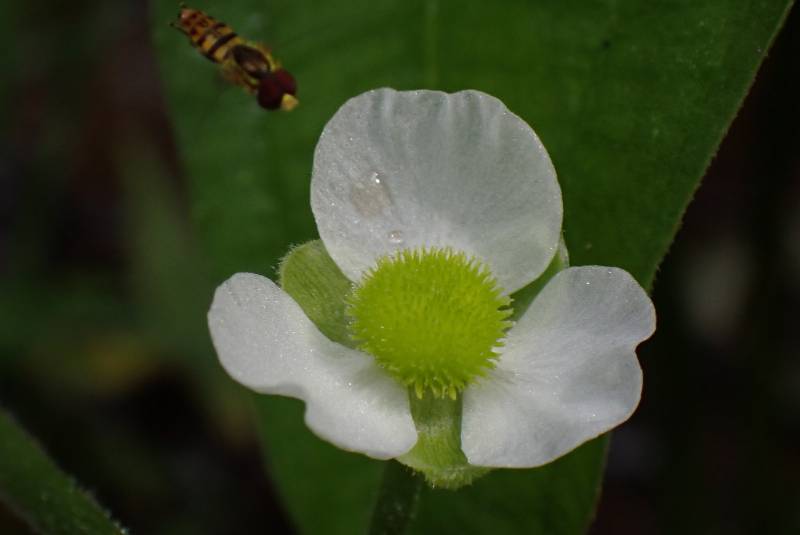

Longbeak Arrowhead (Sagittaria australis): being 'visited' by an Eastern Calligrapher (Toxomerus geminatus)
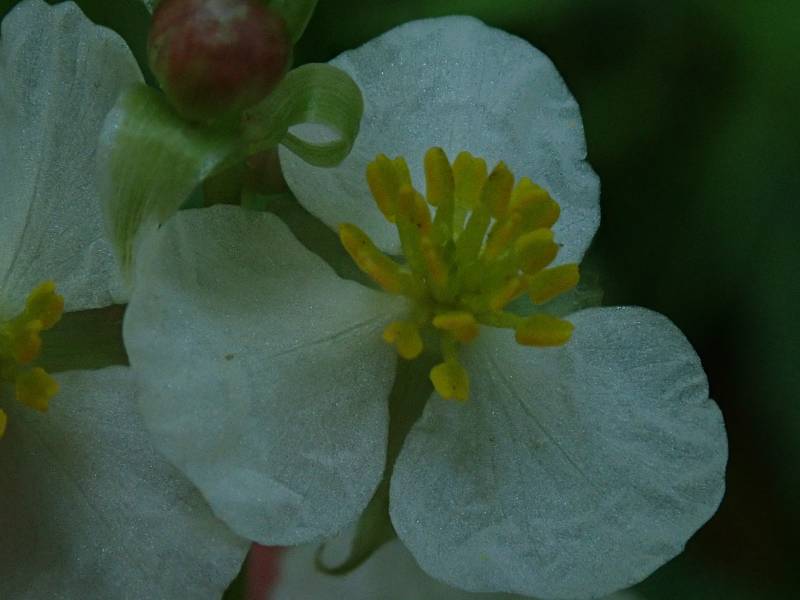

Longbeak Arrowhead (Sagittaria australis): infructescence. Note the 'boat-shaped' bracts beneath the upppermost group of fruits
Sagittaria latifolia (Broadleaf Arrowhead)
Group: Plants
Type: Flowering Plants - Monocots
Family: Alismataceae
Notes
Common Name: Broadleaf Arrowhead
Growth Habit: Forb/herb
Duration: Perennial
Origin: Native to the conterminous United States
Years Noted: 1984; 2004; 2007; 2017; 2020-2023
Northeast Wetland Status: OBL
Bee Beneficial: Yes
iNaturalist Observations:
88379744 (Observed: 7/23/2021)
59565912 (Observed: 7/20/2020)
Images
Arisaema triphyllum (Jack In The Pulpit)
Group: Plants
Type: Flowering Plants - Monocots
Family: Araceae
Notes
Common Name: Jack In The Pulpit
Growth Habit: Forb/herb
Duration: Perennial
Origin: Native to the conterminous United States
Years Noted: 1984; 2004; 2007; 2009; 2011-2013; 2015-2023
Dispersed By: Birds
Allelopathic: Yes
Deer Resistant: Yes
iNaturalist Observations:
113170734 (Observed: 4/27/2022)
113170794 (Observed: 4/27/2022)
113170819 (Observed: 4/27/2022)
113170942 (Observed: 4/27/2022)
75468483 (Observed: 4/27/2021)
74365537 (Observed: 4/17/2021)
57723128 (Observed: 8/26/2020)
Images
Arum italicum (Italian Lords And Ladies)
Group: Plants
Type: Flowering Plants - Monocots
Family: Araceae
Notes
Common Name: Italian Lords And Ladies
Growth Habit: Forb/herb
Duration: Perennial
Origin: Not native to the conterminous United States
Years Noted: 2019; 2021-2023
iNaturalist Observations:
79203435 (Observed: 5/17/2021)
68068967 (Observed: 1/14/2021)
Images
Symplocarpus foetidus (Skunk Cabbage)
Group: Plants
Type: Flowering Plants - Monocots
Family: Araceae
Notes
Common Name: Skunk Cabbage
Growth Habit: Forb/herb
Duration: Perennial
Origin: Native to the conterminous United States
Years Noted: 1984; 2004; 2007; 2009; 2013; 2015-2024
Northeast Wetland Status: OBL
Deer Resistant: Yes
iNaturalist Observations:
174975812 (Observed: 7/25/2023)
110758737 (Observed: 4/8/2022)
135114183 (Observed: 9/14/2022)
106748107 (Observed: 2/11/2022)
79279575 (Observed: 5/18/2021)
70519114 (Observed: 3/3/2021)
70339772 (Observed: 2/28/2021)
Images
Commelina communis (Asiatic Dayflower)
Group: Plants
Type: Flowering Plants - Monocots
Family: Commelinaceae
Notes
Common Name: Asiatic Dayflower
Growth Habit: Forb/herb
Duration: Annual
Origin: Not native to the conterminous United States
Years Noted: 1984; 2004; 2007; 2017-2018; 2020-2023
iNaturalist Observations:
90816063 (Observed: 8/6/2021)
88868178 (Observed: 7/27/2021)
55824718 (Observed: 8/8/2020)
Images
Carex aggregata (Glomerate Sedge)
Group: Plants
Type: Flowering Plants - Monocots
Family: Cyperaceae
Notes
Common Name: Glomerate Sedge
Growth Habit: Graminoid
Duration: Perennial
Origin: Native to the conterminous United States
Years Noted: 2007; 2017; 2022
iNaturalist Observations:
124152459 (Observed: 6/27/2022)
Images
Carex albicans (Whitetinge Sedge)
Carex amphibola (Eastern Narrowleaf Sedge)
Group: Plants
Type: Flowering Plants - Monocots
Family: Cyperaceae
Notes
Common Name: Eastern Narrowleaf Sedge
Growth Habit: Graminoid
Duration: Perennial
Origin: Native to the conterminous United States
Years Noted: 2004; 2007; 2009; 2011; 2017-2018
iNaturalist Observations:
123115991 (Observed: 6/4/2017)
57817597 (Observed: 5/16/2019)
Images
Carex annectens (Yellowfruit Sedge)
Carex blanda (Eastern Woodland Sedge)
Group: Plants
Type: Flowering Plants - Monocots
Family: Cyperaceae
Notes
Common Name: Eastern Woodland Sedge
Growth Habit: Graminoid
Duration: Perennial
Origin: Native to the conterminous United States
Years Noted: 2007; 2009; 2011; 2017-2019; 2022-2023
Deer Resistant: Yes
iNaturalist Observations:
160725249 (Observed: 5/8/2023)
119781632 (Observed: 6/1/2022)
57817019 (Observed: 5/16/2019)
Images
Carex bromoides (Brome-like Sedge)
Carex caroliniana (Carolina Sedge)
Carex cephalophora (Oval-leaf Sedge)
Group: Plants
Type: Flowering Plants - Monocots
Family: Cyperaceae
Notes
Common Name: Oval-leaf Sedge
Growth Habit: Graminoid
Duration: Perennial
Origin: Native to the conterminous United States
Years Noted: 2007; 2017-2018
Images
Carex davisii (Davis Sedge)
Group: Plants
Type: Flowering Plants - Monocots
Family: Cyperaceae
Notes
Common Name: Davis' Sedge
Growth Habit: Graminoid
Duration: Perennial
Origin: Native to the conterminous United States
Years Noted: 2007; 2016-2022
iNaturalist Observations:
122943847 (Observed: 6/17/2022)
Images
Carex debilis (Weak Sedge)
Carex digitalis (Slender Woodland Sedge)
Group: Plants
Type: Flowering Plants - Monocots
Family: Cyperaceae
Notes
Common Name: Slender Woodland Sedge
Growth Habit: Graminoid
Duration: Perennial
Origin: Native to the conterminous United States
Years Noted: 2004; 2007; 2016-2018
Carex frankii (Franks Sedge)
Group: Plants
Type: Flowering Plants - Monocots
Family: Cyperaceae
Notes
Common Name: Frank's Sedge
Growth Habit: Graminoid
Duration: Perennial
Origin: Native to the conterminous United States
Year Noted: 2007
Northeast Wetland Status: OBL
Carex glaucodea (Blue Sedge)
Carex gracilescens (Slender Looseflower Sedge)
Carex gracillima (Graceful Sedge)
Carex hirsutella (Fuzzy Wuzzy Sedge)
Carex hirtifolia (Pubescent Sedge)
Group: Plants
Type: Flowering Plants - Monocots
Family: Cyperaceae
Notes
Common Name: Pubescent Sedge
Growth Habit: Graminoid
Duration: Perennial
Origin: Native to the conterminous United States
Years Noted: 2004; 2007; 2009; 2011; 2017-2019
iNaturalist Observations:
57798369 (Observed: 5/16/2019)
Images
Carex laevivaginata (Smoothsheath Sedge)
Group: Plants
Type: Flowering Plants - Monocots
Family: Cyperaceae
Notes
Common Name: Smoothsheath Sedge
Growth Habit: Graminoid
Duration: Perennial
Origin: Native to the conterminous United States
Year Noted: 2007
Northeast Wetland Status: OBL
Carex laxiculmis (Spreading Sedge)
Group: Plants
Type: Flowering Plants - Monocots
Family: Cyperaceae
Notes
Common Name: Spreading Sedge
Growth Habit: Graminoid
Duration: Perennial
Origin: Native to the conterminous United States
Years Noted: 2004; 2007; 2016-2018
Dispersed By: Ants
Images
Carex laxiflora (Broad Looseflower Sedge)
Group: Plants
Type: Flowering Plants - Monocots
Family: Cyperaceae
Notes
Common Name: Broad Looseflower Sedge
Growth Habit: Graminoid
Duration: Perennial
Origin: Native to the conterminous United States
Years Noted: 2004; 2007; 2018; 2021-2022
Dispersed By: Ants
iNaturalist Observations:
77735574 (Observed: 5/6/2021)
Carex lurida (Shallow Sedge)
Group: Plants
Type: Flowering Plants - Monocots
Family: Cyperaceae
Notes
Common Name: Shallow Sedge
Growth Habit: Graminoid
Duration: Perennial
Origin: Native to the conterminous United States
Years Noted: 2004; 2007; 2017-2022
Northeast Wetland Status: OBL
iNaturalist Observations:
80280451 (Observed: 5/25/2021)
50923451 (Observed: 6/25/2020)
57578260 (Observed: 5/16/2019)
Images
Carex mesochorea (Midland Sedge)
Carex normalis (Greater Straw Sedge)
Carex pensylvanica (Pennsylvania Sedge)
Group: Plants
Type: Flowering Plants - Monocots
Family: Cyperaceae
Notes
Common Name: Pennsylvania Sedge
Growth Habit: Graminoid
Duration: Perennial
Origin: Native to the conterminous United States
Years Noted: 2007; 2016-2023
Dispersed By: Ants
Deer Resistant: Yes
iNaturalist Observations:
77735084 (Observed: 5/6/2021)
Images
Carex prasina (Drooping Sedge)
Group: Plants
Type: Flowering Plants - Monocots
Family: Cyperaceae
Notes
Common Name: Drooping Sedge
Growth Habit: Graminoid
Duration: Perennial
Origin: Native to the conterminous United States
Years Noted: 2007; 2017-2018
Northeast Wetland Status: OBL
Carex radiata (Eastern Star Sedge)
Group: Plants
Type: Flowering Plants - Monocots
Family: Cyperaceae
Notes
Common Name: Eastern Star Sedge
Growth Habit: Graminoid
Duration: Perennial
Origin: Native to the conterminous United States
Years Noted: 2004; 2007; 2009; 2017-2018; 2021-2023
iNaturalist Observations:
78293534 (Observed: 5/10/2021)
Images
Carex rosea (Rosy Sedge)
Group: Plants
Type: Flowering Plants - Monocots
Family: Cyperaceae
Notes
Common Name: Rosy Sedge
Growth Habit: Graminoid
Duration: Perennial
Origin: Native to the conterminous United States
Years Noted: 2007; 2017-2018
Images
Carex scoparia (Broom Sedge)
Group: Plants
Type: Flowering Plants - Monocots
Family: Cyperaceae
Notes
Common Name: Broom Sedge
Growth Habit: Graminoid
Duration: Perennial
Origin: Native to the conterminous United States
Years Noted: 2007; 2016; 2018; 2022
iNaturalist Observations:
120709052 (Observed: 6/6/2022)
Images
Carex sparganioides (Bur-reed Sedge)
Carex spicata (Prickly Sedge)
Group: Plants
Type: Flowering Plants - Monocots
Family: Cyperaceae
Notes
Common Name: Prickly Sedge
Growth Habit: Graminoid
Duration: Perennial
Origin: Not native to the conterminous United States
Year Noted: 2004
Dispersed By: Animals; General Zoochory; Water
Carex stipata (Awl-fruited Sedge)
Group: Plants
Type: Flowering Plants - Monocots
Family: Cyperaceae
Notes
Common Names: Awl-fruited Sedge; Prickly Sedge
Growth Habit: Graminoid
Duration: Perennial
Origin: Native to the conterminous United States
Years Noted: 2007; 2017-2019
Northeast Wetland Status: OBL
Deer Resistant: Yes
iNaturalist Observations:
57575137 (Observed: 5/16/2019)
Images
Carex striatula (Lined Sedge)
Group: Plants
Type: Flowering Plants - Monocots
Family: Cyperaceae
Notes
Common Name: Lined Sedge
Growth Habit: Graminoid
Duration: Perennial
Origin: Native to the conterminous United States
Years Noted: 2007; 2017-2018
Dispersed By: Ants
Carex stricta (Tussock Sedge)
Group: Plants
Type: Flowering Plants - Monocots
Family: Cyperaceae
Notes
Common Names: Tussock Sedge; Upright Sedge
Growth Habit: Graminoid
Duration: Perennial
Origin: Native to the conterminous United States
Years Noted: 2004; 2007; 2017; 2019-2023
Northeast Wetland Status: OBL
Deer Resistant: Yes
iNaturalist Observations:
78280209 (Observed: 5/10/2021)
Images
Carex swanii (Swans Sedge)
Group: Plants
Type: Flowering Plants - Monocots
Family: Cyperaceae
Notes
Common Name: Swan's Sedge
Growth Habit: Graminoid
Duration: Perennial
Origin: Native to the conterminous United States
Years Noted: 2004; 2007; 2009; 2011; 2017-2018
Images
Carex tribuloides (Blunt Broom Sedge)
Group: Plants
Type: Flowering Plants - Monocots
Family: Cyperaceae
Notes
Common Name: Blunt Broom Sedge
Growth Habit: Graminoid
Duration: Perennial
Origin: Native to the conterminous United States
Years Noted: 2004; 2007; 2018; 2021
Northeast Wetland Status: FACW
iNaturalist Observations:
123124229 (Observed: 5/6/2021)
Images
Carex vulpinoidea (Fox Sedge)
Group: Plants
Type: Flowering Plants - Monocots
Family: Cyperaceae
Notes
Common Name: Fox Sedge
Growth Habit: Graminoid
Duration: Perennial
Origin: Native to the conterminous United States
Years Noted: 2007; 2009; 2016-2018
Northeast Wetland Status: OBL
Deer Resistant: Yes
Images
Cyperus esculentus (Yellow Nutsedge)
Group: Plants
Type: Flowering Plants - Monocots
Family: Cyperaceae
Notes
Common Name: Yellow Nutsedge
Growth Habit: Graminoid
Duration: Perennial
Origin: Undetermined
Years Noted: 2007; 2018
Dispersed By: Human Activities; Water
Cyperus squarrosus (Bearded Flatsedge)
Cyperus strigosus (Straw-colored Flatsedge)
Group: Plants
Type: Flowering Plants - Monocots
Family: Cyperaceae
Notes
Common Name: Straw-colored Flatsedge
Growth Habit: Graminoid
Duration: Perennial
Origin: Native to the conterminous United States
Years Noted: 2007; 2018-2021; 2023
iNaturalist Observations:
88867085 (Observed: 7/27/2021)
32184310 (Observed: 9/5/2019)
32184765 (Observed: 9/5/2019)
57180465 (Observed: 8/20/2020)
Images
Eleocharis erythropoda (Bald Spikerush)
Group: Plants
Type: Flowering Plants - Monocots
Family: Cyperaceae
Notes
Common Name: Bald Spikerush
Growth Habit: Graminoid
Duration: Perennial
Origin: Native to the conterminous United States
Year Noted: 2018
Northeast Wetland Status: OBL
Eleocharis obtusa (Blunt Spikerush)
Group: Plants
Type: Flowering Plants - Monocots
Family: Cyperaceae
Notes
Common Name: Blunt Spikerush
Growth Habit: Graminoid
Duration: Annual, Perennial
Origin: Native to the conterminous United States
Year Noted: 2021-2023
Northeast Wetland Status: OBL
iNaturalist Observations:
83942063 (Observed: 6/21/2021)
95090726 (Observed: 9/16/2021)
Images
Eleocharis tenuis (Slender Spikerush)
Group: Plants
Type: Flowering Plants - Monocots
Family: Cyperaceae
Notes
Common Name: Slender Spikerush
Growth Habit: Graminoid
Duration: Perennial
Origin: Native to the conterminous United States
Years Noted: 2004; 2007; 2017; 2019-2021
Northeast Wetland Status: FACW
iNaturalist Observations:
78296168 (Observed: 5/10/2021)
45921487 (Observed: 5/14/2020)
Images
Schoenoplectus tabernaemontani (Softstem Bulrush)
Group: Plants
Type: Flowering Plants - Monocots
Family: Cyperaceae
Notes
Common Name: Softstem Bulrush
Growth Habit: Graminoid
Duration: Perennial
Origin: Native to the conterminous United States
Years Noted: 2018; 2021-2023
Deer Resistant: Yes
Images
Scirpus cyperinus (Woolgrass)
Group: Plants
Type: Flowering Plants - Monocots
Family: Cyperaceae
Notes
Common Name: Woolgrass
Growth Habit: Graminoid
Duration: Perennial
Origin: Native to the conterminous United States
Years Noted: 2007; 2017; 2019-2023
Northeast Wetland Status: FACW
Dispersed By: Wind
Deer Resistant: Yes
iNaturalist Observations:
95091542 (Observed: 9/16/2021)
88308016 (Observed: 7/23/2021)
53842687 (Observed: 7/20/2020)
Images
Scirpus georgianus (Georgia Bulrush)
Group: Plants
Type: Flowering Plants - Monocots
Family: Cyperaceae
Notes
Common Name: Georgia Bulrush
Growth Habit: Graminoid
Duration: Perennial
Origin: Native to the conterminous United States
Years Noted: 2004; 2007; 2016; 2018; 2020-2023
Northeast Wetland Status: OBL
iNaturalist Observations:
83181958 (Observed: 6/14/2021)
52796987 (Observed: 7/9/2020)
Images
Scirpus pendulus (Rufous Bulrush)
Group: Plants
Type: Flowering Plants - Monocots
Family: Cyperaceae
Notes
Common Name: Rufous Bulrush
Growth Habit: Graminoid
Duration: Perennial
Origin: Native to the conterminous United States
Year Noted: 2007
Northeast Wetland Status: OBL
iNaturalist Observations:
83942320 (Observed: 6/21/2021)
Scirpus polyphyllus (Leafy Bulrush)
Group: Plants
Type: Flowering Plants - Monocots
Family: Cyperaceae
Notes
Common Name: Leafy Bulrush
Growth Habit: Graminoid
Duration: Perennial
Origin: Native to the conterminous United States
Year Noted: 2007
Northeast Wetland Status: OBL
Dioscorea villosa (Wild Yam)
Group: Plants
Type: Flowering Plants - Monocots
Family: Dioscoreaceae
Notes
Common Name: Wild Yam
Growth Habit: Forb/herb, Vine
Duration: Perennial
Origin: Native to the conterminous United States
Years Noted: 1984; 2004; 2007; 2009; 2017-2020
iNaturalist Observations:
57564559 (Observed: 5/20/2019)
Images
Elodea nuttallii (Canadian Waterweed)
Group: Plants
Type: Flowering Plants - Monocots
Family: Hydrocharitaceae
Notes
Common Name: Canadian Waterweed
Growth Habit: Forb/herb
Duration: Perennial
Origin: Native to the conterminous United States
Year Noted: 1983-1984
Northeast Wetland Status: OBL
Dispersed By: Animals; Birds; General Zoochory
Sisyrinchium angustifolium (Narrowleaf Blue-eyed Grass)
Group: Plants
Type: Flowering Plants - Monocots
Family: Iridaceae
Notes
Common Name: Narrowleaf Blue-eyed Grass
Growth Habit: Forb/herb
Duration: Perennial
Origin: Native to the conterminous United States
Years Noted: 1984; 2007; 2016-2018; 2021-2023
iNaturalist Observations:
118453617 (Observed: 5/23/2022)
79577436 (Observed: 5/20/2021)
Images
Juncus effusus (Common Rush)
Group: Plants
Type: Flowering Plants - Monocots
Family: Juncaceae
Notes
Common Name: Common Rush
Growth Habit: Graminoid
Duration: Perennial
Origin: Native to the conterminous United States
Years Noted: 2004; 2007; 2016-2024
Northeast Wetland Status: FACW
Dispersed By: Animals; Birds; Deer; General Zoochory; Human Activities; Water
Deer Resistant: Yes
iNaturalist Observations:
119771697 (Observed: 6/1/2022)
52517392 (Observed: 7/9/2020)
Images
Juncus secundus (Lopsided Rush)
Juncus tenuis (Poverty Rush)
Group: Plants
Type: Flowering Plants - Monocots
Family: Juncaceae
Notes
Common Names: Poverty Rush; Slender Path Rush
Growth Habit: Graminoid
Duration: Perennial
Origin: Native to the conterminous United States
Years Noted: 2004; 2007; 2016-2018; 2020; 2022-2023
Dispersed By: Animals; Deer; General Zoochory; Human Activities
iNaturalist Observations:
53833288 (Observed: 7/20/2020)
Images
Luzula echinata (Hedgehog Woodrush)
Group: Plants
Type: Flowering Plants - Monocots
Family: Juncaceae
Notes
Common Name: Hedgehog Woodrush
Growth Habit: Graminoid
Duration: Perennial
Origin: Native to the conterminous United States
Years Noted: 2007; 2016-2023
Dispersed By: Ants
iNaturalist Observations:
41191803 (Observed: 4/26/2019)
Lemna minor (Common Duckweed)
Group: Plants
Type: Flowering Plants - Monocots
Family: Lemnaceae
Notes
Common Name: Common Duckweed
Growth Habit: Forb/herb
Duration: Perennial
Origin: Native to the conterminous United States
Years Noted: 1984; 2007; 2016-2024
Northeast Wetland Status: OBL
Dispersed By: Animals; Animals (Accidental); Birds; General Zoochory; Water
iNaturalist Observations:
144416880 (Observed: 12/14/2022)
57797142 (Observed: 5/16/2019)
70520144 (Observed: 3/3/2021)
Images
Allium tricoccum (Ramp)
Group: Plants
Type: Flowering Plants - Monocots
Family: Liliaceae
Notes
Common Name: Ramp
Growth Habit: Forb/herb
Duration: Perennial
Origin: Native to the conterminous United States
Years Noted: 2007; 2011; 2017-2023
Dispersed By: Birds
Deer Resistant: Yes
iNaturalist Observations:
72392176 (Observed: 3/29/2021)
56962639 (Observed: 8/19/2020)
Images
Allium vineale (Wild Garlic)
Group: Plants
Type: Flowering Plants - Monocots
Family: Liliaceae
Notes
Common Names: Wild Garlic; Field Garlic
Growth Habit: Forb/herb
Duration: Perennial
Origin: Not native to the conterminous United States
Years Noted: 1967; 1969-2000; 2004; 2007-2009; 2011-2012; 2016-2024
Dispersed By: Water
iNaturalist Observations:
162176629 (Observed: 5/2/2023)
83175998 (Observed: 6/15/2021)
50915486 (Observed: 6/25/2020)
61938763 (Observed: 10/6/2020)
Images
Asparagus officinalis (Garden Asparagus)
Group: Plants
Type: Flowering Plants - Monocots
Family: Liliaceae
Notes
Common Name: Garden Asparagus
Growth Habit: Forb/herb
Duration: Perennial
Origin: Not native to the conterminous United States
Years Noted: 1984; 2004; 2007; 2018
Dispersed By: Animals; Birds; Water
Deer Resistant: Yes
Erythronium americanum (Yellow Trout Lily)
Group: Plants
Type: Flowering Plants - Monocots
Family: Liliaceae
Notes
Common Name: Yellow Trout Lily
Growth Habit: Forb/herb
Duration: Perennial
Origin: Native to the conterminous United States
Years Noted: 1984; 2007; 2013; 2016-2023
Dispersed By: Ants
iNaturalist Observations:
110758895 (Observed: 4/8/2022)
110758938 (Observed: 4/8/2022)
110759126 (Observed: 4/8/2022)
152650599 (Observed: 3/28/2023)
41792128 (Observed: 4/9/2020)
74678582 (Observed: 4/19/2021)
72773411 (Observed: 4/2/2021)
Images
Galanthus nivalis (Common Snowdrop)
Group: Plants
Type: Flowering Plants - Monocots
Family: Liliaceae
Notes
Common Name: Common Snowdrop
Growth Habit: Forb/herb
Duration: Perennial
Origin: Not native to the conterminous United States
Year Noted: 2022-2023
Dispersed By: Ants
Deer Resistant: Yes
iNaturalist Observations:
107836720 (Observed: 3/3/2022)
Images
Hemerocallis fulva (Orange Daylily)
Group: Plants
Type: Flowering Plants - Monocots
Family: Liliaceae
Notes
Common Name: Orange Daylily
Growth Habit: Forb/herb
Duration: Perennial
Origin: Not native to the conterminous United States
Pennsylvania DCNR Invasive Plants Rating: Rank 3 — "Lesser Threat. Exotic plant species that spread in or near disturbed areas, and are not presently considered a major threat to undisturbed native plant communities."
Years Noted: 1984; 2007; 2017; 2021-2023
Dispersed By: Animals; General Zoochory; Human Activities
iNaturalist Observations:
73146646 (Observed: 4/6/2021)
Images
Hosta ventricosa (Blue Plantain Lily)
Group: Plants
Type: Flowering Plants - Monocots
Family: Liliaceae
Notes
Common Name: Blue Plantain Lily
Growth Habit: Forb/herb
Duration: Perennial
Origin: Not native to the conterminous United States
Years Noted: 1984; 2007; 2017-2018
Images
Hypoxis hirsuta (Common Goldstar)
Leucojum aestivum (Summer Snowflake)
Group: Plants
Type: Flowering Plants - Monocots
Family: Liliaceae
Notes
Common Name: Summer Snowflake
Growth Habit: Forb/herb
Duration: Perennial
Origin: Not native to the conterminous United States
Year Noted: 2025
Dispersed By: Animals; Water
iNaturalist Observations:
277054305 (Observed: 4/30/2025)
Images
Lilium canadense (Canada Lily)
Group: Plants
Type: Flowering Plants - Monocots
Family: Liliaceae
Notes
Common Name: Canada Lily
Growth Habit: Forb/herb
Duration: Perennial
Origin: Native to the conterminous United States
Years Noted: 1984; 2007; 2017-2018
Images
Liriope muscari (Big Blue Lilyturf)
Group: Plants
Type: Flowering Plants - Monocots
Family: Liliaceae
Notes
Common Name: Big Blue Lilyturf
Growth Habit: Forb/herb
Duration: Perennial
Origin: Not native to the conterminous United States
Year Noted: 2017-2018
Allelopathic: Yes
Maianthemum racemosum (False Solomons Seal)
Group: Plants
Type: Flowering Plants - Monocots
Family: Liliaceae
Notes
Common Names: False Solomon's Seal; Feathery False Lily Of The Valley; Solomon's Plume
Growth Habit: Forb/herb
Duration: Perennial
Origin: Native to the conterminous United States
Synonyms: Smilacina racemosa (L.) DesfYears Noted: 1984; 2004; 2007; 2016-2018; 2021-2023
iNaturalist Observations:
113171025 (Observed: 4/27/2022)
113171180 (Observed: 4/27/2022)
92392495 (Observed: 8/24/2021)
79315897 (Observed: 5/13/2021)
Images
Medeola virginiana (Indian Cucumber)
Muscari botryoides (Common Grape Hyacinth)
Group: Plants
Type: Flowering Plants - Monocots
Family: Liliaceae
Notes
Common Name: Common Grape Hyacinth
Growth Habit: Forb/herb
Duration: Perennial
Origin: Not native to the conterminous United States
Years Noted: 2007; 2016-2017; 2019; 2022
Dispersed By: Animals; General Zoochory; Rain (Assisted, i.e., ombrochory)
Narcissus pseudonarcissus (Daffodil)
Group: Plants
Type: Flowering Plants - Monocots
Family: Liliaceae
Notes
Common Name: Daffodil
Growth Habit: Forb/herb
Duration: Perennial
Origin: Not native to the conterminous United States
Years Noted: 2007-2008; 2016-2024
iNaturalist Observations:
107765501 (Observed: 3/1/2022)
40103348 (Observed: 3/16/2020)
73240323 (Observed: 4/6/2021)
Images
Ornithogalum umbellatum (Garden Star-of-Bethlehem)
Group: Plants
Type: Flowering Plants - Monocots
Family: Liliaceae
Notes
Common Names: Garden Star-of-Bethlehem; Sleepydick
Growth Habit: Forb/herb
Duration: Perennial
Origin: Not native to the conterminous United States
Years Noted: 1984; 2007-2008; 2017-2019
Dispersed By: Ants
Images
Polygonatum biflorum (Smooth Solomons Seal)
Group: Plants
Type: Flowering Plants - Monocots
Family: Liliaceae
Notes
Common Name: Smooth Solomon's Seal
Growth Habit: Forb/herb
Duration: Perennial
Origin: Native to the conterminous United States
Years Noted: 1984; 2004; 2007; 2017-2018
Deer Resistant: Yes
Images
Polygonatum pubescens (Hairy Solomons Seal)
Group: Plants
Type: Flowering Plants - Monocots
Family: Liliaceae
Notes
Common Name: Hairy Solomon's Seal
Growth Habit: Forb/herb
Duration: Perennial
Origin: Native to the conterminous United States
Years Noted: 1984; 2004; 2007; 2009; 2017-2018; 2021-2023
iNaturalist Observations:
131882277 (Observed: 5/6/2022)
77670073 (Observed: 5/6/2021)
74365751 (Observed: 4/17/2021)
Images
Scilla siberica (Siberian Squill)
Group: Plants
Type: Flowering Plants - Monocots
Family: Liliaceae
Notes
Common Name: Siberian Squill
Growth Habit: Forb/herb
Duration: Perennial
Origin: Not native to the conterminous United States
Years Noted: 2008; 2022-2023
Dispersed By: Ants
Deer Resistant: Yes
iNaturalist Observations:
110759030 (Observed: 4/8/2022)
111224212 (Observed: 4/12/2022)
Images
Trillium cernuum (Nodding Trillium)
Group: Plants
Type: Flowering Plants - Monocots
Family: Liliaceae
Notes
Common Names: Nodding Trillium; Whip-Poor-Will Flower
Growth Habit: Forb/herb
Duration: Perennial
Origin: Native to the conterminous United States
Years Noted: 2007; 2016-2023
Dispersed By: Ants
iNaturalist Observations:
69818589 (Observed: 5/9/2018)
41857011 (Observed: 4/10/2020)
Images
Uvularia perfoliata (Perfoliate Bellwort)
Group: Plants
Type: Flowering Plants - Monocots
Family: Liliaceae
Notes
Common Name: Perfoliate Bellwort
Growth Habit: Forb/herb
Duration: Perennial
Origin: Native to the conterminous United States
Years Noted: 1984; 2004; 2007; 2013; 2016-2023
Dispersed By: Ants
iNaturalist Observations:
81415626 (Observed: 6/2/2021)
Images
Uvularia sessilifolia (Sessileleaf Bellwort)
Group: Plants
Type: Flowering Plants - Monocots
Family: Liliaceae
Notes
Common Name: Sessileleaf Bellwort
Growth Habit: Forb/herb
Duration: Perennial
Origin: Native to the conterminous United States
Years Noted: 1984; 2016-2020; 2022
Dispersed By: Ants
Veratrum viride (Cornhusk Lily)
Group: Plants
Type: Flowering Plants - Monocots
Family: Liliaceae
Notes
Common Names: Cornhusk Lily; Indian Poke; Green False Hellebore
Growth Habit: Forb/herb
Duration: Perennial
Origin: Native to the conterminous United States
Years Noted: 1984; 2007; 2017-2018; 2020-2023
Northeast Wetland Status: FACW
iNaturalist Observations:
42226870 (Observed: 4/14/2020)
77491995 (Observed: 5/5/2021)
Images
Epipactis helleborine (Broadleaf Helleborine)
Group: Plants
Type: Flowering Plants - Monocots
Family: Orchidaceae
Notes
Common Name: Broadleaf Helleborine
Growth Habit: Forb/herb
Duration: Perennial
Origin: Not native to the conterminous United States
Years Noted: 2007; 2016-2019; 2021
Dispersed By: Water; Wind
iNaturalist Observations:
13241196 (Observed: 6/8/2018)
Images
Galearis spectabilis (Showy Orchis)
Group: Plants
Type: Flowering Plants - Monocots
Family: Orchidaceae
Notes
Common Name: Showy Orchis
Growth Habit: Forb/herb
Duration: Perennial
Origin: Native to the conterminous United States
Years Noted: 1984; 2007; 2017-2023
iNaturalist Observations:
86315227 (Observed: 6/24/2021)
77434174 (Observed: 5/4/2021)
45017132 (Observed: 5/5/2020)
Images
Platanthera flava var. herbiola (Palegreen Orchid)
Platanthera lacera (Green Fringed Orchid)
Spiranthes cernua (Nodding Ladys Tresses)
Spiranthes lacera var. gracilis (Northern Slender Ladys Tresses)
Tipularia discolor (Crippled Cranefly Orchid)
Group: Plants
Type: Flowering Plants - Monocots
Family: Orchidaceae
Notes
Common Name: Crippled Cranefly Orchid
Growth Habit: Forb/herb
Duration: Perennial
Origin: Native to the conterminous United States
Years Noted: 2008; 2013; 2016-2023
Dispersed By: Gravity
Notes: Various 'occurrences' of this species have been noted in the Gordon, but the locations weren't recorded. Currently, a single occurrence is known.
iNaturalist Observations:
88868904 (Observed: 7/27/2021)
69810933 (Observed: 8/11/2017)
39887673 (Observed: 3/12/2020)
Images
Agrostis altissima (Tall Bentgrass)
Group: Plants
Type: Flowering Plants - Monocots
Family: Poaceae
Notes
Common Name: Tall Bentgrass
Growth Habit: Graminoid
Duration: Perennial
Origin: Native to the conterminous United States
Years Noted: 2007; 2018
Deer Resistant: Yes
Agrostis gigantea (Redtop)
Group: Plants
Type: Flowering Plants - Monocots
Family: Poaceae
Notes
Common Name: Redtop
Growth Habit: Graminoid
Duration: Perennial
Origin: Not native to the conterminous United States
Years Noted: 2004; 2007; 2018
Dispersed By: Animals; Deer; General Zoochory; Water; Wind
Agrostis hyemalis (Winter Bentgrass)
Agrostis perennans (Upland Bentgrass)
Group: Plants
Type: Flowering Plants - Monocots
Family: Poaceae
Notes
Common Name: Upland Bentgrass
Growth Habit: Graminoid
Duration: Perennial
Origin: Native to the conterminous United States
Synonyms: Agrostis altissima (Walter) Tuck.Years Noted: 2004; 2007; 2018
Deer Resistant: Yes
Alopecurus pratensis (Meadow Foxtail)
Group: Plants
Type: Flowering Plants - Monocots
Family: Poaceae
Notes
Common Name: Meadow Foxtail
Growth Habit: Graminoid
Duration: Perennial
Origin: Not native to the conterminous United States
Year Noted: 2007
Dispersed By: Agricultural Practices; Animals; General Zoochory; Human Activities; Water; Wind
Andropogon gerardii (Big Bluestem)
Andropogon gyrans (Elliotts Bluestem)
Andropogon virginicus (Broomsedge Bluestem)
Group: Plants
Type: Flowering Plants - Monocots
Family: Poaceae
Notes
Common Name: Broomsedge Bluestem
Growth Habit: Graminoid
Duration: Perennial
Origin: Native to the conterminous United States
Years Noted: 2007; 2018
Allelopathic: Yes
Bee Beneficial: Yes
Deer Resistant: Yes
Anthoxanthum odoratum (Sweet Vernalgrass)
Group: Plants
Type: Flowering Plants - Monocots
Family: Poaceae
Notes
Common Name: Sweet Vernalgrass
Growth Habit: Graminoid
Duration: Perennial
Origin: Not native to the conterminous United States
Years Noted: 2004; 2007; 2017-2019
Dispersed By: Animals; General Zoochory; Human Activities; Water; Wind
Allelopathic: Yes
iNaturalist Observations:
57573337 (Observed: 5/20/2019)
Images
Arthraxon hispidus (Small Carpetgrass)
Group: Plants
Type: Flowering Plants - Monocots
Family: Poaceae
Notes
Common Name: Small Carpetgrass
Growth Habit: Graminoid
Duration: Annual
Origin: Not native to the conterminous United States
Pennsylvania DCNR Invasive Plants Rating: Rank 2 — "Significant Threat. Exotic plant species that possess characteristics of invasive species but are not presently considered to spread as easily and aggressively into native plant communities as those species listed as Rank 1."
Year Noted: 2022
iNaturalist Observations:
127127656 (Observed: 7/20/2022)
Images
Brachyelytrum erectum (Bearded Shorthusk)
Group: Plants
Type: Flowering Plants - Monocots
Family: Poaceae
Notes
Common Name: Bearded Shorthusk
Growth Habit: Graminoid
Duration: Perennial
Origin: Native to the conterminous United States
Years Noted: 2004; 2007; 2016-2018
Allelopathic: Yes
Bromus inermis (Smooth Brome)
Group: Plants
Type: Flowering Plants - Monocots
Family: Poaceae
Notes
Common Name: Smooth Brome
Growth Habit: Graminoid
Duration: Perennial
Origin: Not native to the conterminous United States
Years Noted: 2007; 2017-2018
Dispersed By: Animals; Ants; General Zoochory; Human Activities; Water; Wind
Bromus racemosus (Bald Brome)
Group: Plants
Type: Flowering Plants - Monocots
Family: Poaceae
Notes
Common Name: Bald Brome
Growth Habit: Graminoid
Duration: Annual
Origin: Not native to the conterminous United States
Synonyms: Bromus commutatus SchradYears Noted: 2004; 2007; 2018
Dispersed By: Animals; Animals (Accidental); General Zoochory; Water; Wind
Bromus sterilis (Poverty Brome)
Group: Plants
Type: Flowering Plants - Monocots
Family: Poaceae
Notes
Common Name: Poverty Brome
Growth Habit: Graminoid
Duration: Annual
Origin: Not native to the conterminous United States
Pennsylvania DCNR Invasive Plants Rating: Rank 3 — "Lesser Threat. Exotic plant species that spread in or near disturbed areas, and are not presently considered a major threat to undisturbed native plant communities."
Years Noted: 2007; 2018
Dispersed By: Animals; Birds; General Zoochory; Human Activities; Water
Bromus tectorum (Cheatgrass)
Group: Plants
Type: Flowering Plants - Monocots
Family: Poaceae
Notes
Common Name: Cheatgrass
Growth Habit: Graminoid
Duration: Annual
Origin: Not native to the conterminous United States
Pennsylvania DCNR Invasive Plants Rating: Rank 3 — "Lesser Threat. Exotic plant species that spread in or near disturbed areas, and are not presently considered a major threat to undisturbed native plant communities."
Year Noted: 2007
Dispersed By: Animals; Animals (Accidental); General Zoochory; Human Activities; Mammals (non-bat); Wind
Calamagrostis perplexa (Wood Reedgrass)
Cinna arundinacea (Sweet Woodreed)
Group: Plants
Type: Flowering Plants - Monocots
Family: Poaceae
Notes
Common Name: Sweet Woodreed
Growth Habit: Graminoid
Duration: Perennial
Origin: Native to the conterminous United States
Years Noted: 2004; 2007; 2012; 2017-2018
Northeast Wetland Status: FACW
Cynodon dactylon (Bermudagrass)
Group: Plants
Type: Flowering Plants - Monocots
Family: Poaceae
Notes
Common Name: Bermudagrass
Growth Habit: Graminoid
Duration: Perennial
Origin: Not native to the conterminous United States
Year Noted: 2018
Dispersed By: Animals; Dispersal Unassisted; General Zoochory; Human Activities; Wind
Allelopathic: Yes
Dactylis glomerata (Orchardgrass)
Group: Plants
Type: Flowering Plants - Monocots
Family: Poaceae
Notes
Common Name: Orchardgrass
Growth Habit: Graminoid
Duration: Perennial
Origin: Not native to the conterminous United States
Years Noted: 2004; 2007; 2009; 2017-2018
Dispersed By: Agricultural Practices; Animals; Deer; General Zoochory; Human Activities; Water; Wind
Danthonia spicata (Poverty Oatgrass)
Dichanthelium acuminatum (Tapered Rosette Grass)
Group: Plants
Type: Flowering Plants - Monocots
Family: Poaceae
Notes
Common Name: Tapered Rosette Grass
Growth Habit: Graminoid
Duration: Perennial
Origin: Native to the conterminous United States
Synonyms: Panicum acuminatum Sw.Years Noted: 2004; 2007; 2018
Dichanthelium boscii (Boscs Panicgrass)
Group: Plants
Type: Flowering Plants - Monocots
Family: Poaceae
Notes
Common Name: Bosc's Panicgrass
Growth Habit: Graminoid
Duration: Perennial
Origin: Native to the conterminous United States
Years Noted: 2007; 2017
Dispersed By: Ants
Images
Dichanthelium clandestinum (Deertongue)
Group: Plants
Type: Flowering Plants - Monocots
Family: Poaceae
Notes
Common Name: Deertongue
Growth Habit: Graminoid
Duration: Perennial
Origin: Native to the conterminous United States
Synonyms: Panicum clandestinum L.Years Noted: 2004; 2007; 2009; 2017-2018
Dichanthelium dichotomum (Cypress Panicgrass)
Group: Plants
Type: Flowering Plants - Monocots
Family: Poaceae
Notes
Common Name: Cypress Panicgrass
Growth Habit: Graminoid
Duration: Perennial
Origin: Native to the conterminous United States
Synonyms: Panicum dichotomum L.Years Noted: 2004; 2007; 2018
Dichanthelium latifolium (Broadleaf Rosette Grass)
Group: Plants
Type: Flowering Plants - Monocots
Family: Poaceae
Notes
Common Name: Broadleaf Rosette Grass
Growth Habit: Graminoid
Duration: Perennial
Origin: Native to the conterminous United States
Years Noted: 2007; 2022
iNaturalist Observations:
131886796 (Observed: 8/19/2022)
Images
Digitaria ciliaris (Southern Crabgrass)
Group: Plants
Type: Flowering Plants - Monocots
Family: Poaceae
Notes
Common Name: Southern Crabgrass
Growth Habit: Graminoid
Duration: Annual
Origin: Native to the conterminous United States
Years Noted: 2018; 2020
Notes: To date: a single occurrence noted. Growing along the PECO right-of-way.
iNaturalist Observations:
57680790 (Observed: 8/26/2020)
Images
Digitaria ischaemum (Smooth Crabgrass)
Group: Plants
Type: Flowering Plants - Monocots
Family: Poaceae
Notes
Common Name: Smooth Crabgrass
Growth Habit: Graminoid
Duration: Annual
Origin: Not native to the conterminous United States
Years Noted: 2007; 2018
Dispersed By: Animals; Animals (Accidental); Deer; General Zoochory; Human Activities; Mammals (non-bat)
Digitaria sanguinalis (Hairy Crabgrass)
Group: Plants
Type: Flowering Plants - Monocots
Family: Poaceae
Notes
Common Name: Hairy Crabgrass
Growth Habit: Graminoid
Duration: Annual
Origin: Native to the conterminous United States
Years Noted: 2004; 2007; 2018
Dispersed By: Animals; Animals (Accidental); Deer; General Zoochory; Human Activities; Mammals (non-bat); Rain (Assisted, i.e., ombrochory); Water
Echinochloa crus—galli (Barnyardgrass)
Group: Plants
Type: Flowering Plants - Monocots
Family: Poaceae
Notes
Common Name: Barnyardgrass
Growth Habit: Graminoid
Duration: Annual
Origin: Not native to the conterminous United States
Years Noted: 2007; 2018; 2020-2021; 2023
Dispersed By: Animals; General Zoochory; Human Activities; Rain (Assisted, i.e., ombrochory); Water
iNaturalist Observations:
179144484 (Observed: 8/18/2023)
95089499 (Observed: 9/16/2021)
55823968 (Observed: 8/8/2020)
Images
Eleusine indica (Indian Goosegrass)
Group: Plants
Type: Flowering Plants - Monocots
Family: Poaceae
Notes
Common Name: Indian Goosegrass
Growth Habit: Graminoid
Duration: Annual
Origin: Not native to the conterminous United States
Years Noted: 2007; 2017-2018; 2020
Dispersed By: Animals; Water
Allelopathic: Yes
iNaturalist Observations:
57677231 (Observed: 8/26/2020)
Images
Elymus glabriflorus (Southeastern Wildrye)
Elymus repens (Quackgrass)
Group: Plants
Type: Flowering Plants - Monocots
Family: Poaceae
Notes
Common Name: Quackgrass
Growth Habit: Graminoid
Duration: Perennial
Origin: Not native to the conterminous United States
Synonyms: Elytrigia repens (L.) Desv. ex NevskiYears Noted: 2007; 2018
Dispersed By: Animals; Animals (Accidental); Birds; Deer; General Zoochory; Human Activities; Water; Wind
Allelopathic: Yes
Eragrostis minor (Little Lovegrass)
Group: Plants
Type: Flowering Plants - Monocots
Family: Poaceae
Notes
Common Name: Little Lovegrass
Growth Habit: Graminoid
Duration: Annual
Origin: Not native to the conterminous United States
Year Noted: 2007
Dispersed By: Animals; General Zoochory; Human Activities
Eragrostis pectinacea (Tufted Lovegrass)
Group: Plants
Type: Flowering Plants - Monocots
Family: Poaceae
Notes
Common Name: Tufted Lovegrass
Growth Habit: Graminoid
Duration: Annual, Perennial
Origin: Native to the conterminous United States
Year Noted: 2007
Dispersed By: Wind
Eragrostis spectabilis (Purple Lovegrass)
Group: Plants
Type: Flowering Plants - Monocots
Family: Poaceae
Notes
Common Name: Purple Lovegrass
Growth Habit: Graminoid
Duration: Perennial
Origin: Native to the conterminous United States
Years Noted: 2007; 2018
Deer Resistant: Yes
Festuca rubra (Red Fescue)
Group: Plants
Type: Flowering Plants - Monocots
Family: Poaceae
Notes
Common Name: Red Fescue
Growth Habit: Graminoid
Duration: Perennial
Origin: Not native to the conterminous United States
Year Noted: 2007
Dispersed By: Animals; General Zoochory; Human Activities; Water; Wind
Festuca subverticillata (Nodding Fescue)
Group: Plants
Type: Flowering Plants - Monocots
Family: Poaceae
Notes
Common Name: Nodding Fescue
Growth Habit: Graminoid
Duration: Perennial
Origin: Native to the conterminous United States
Synonyms: Festuca obtusa BiehlerYears Noted: 2004; 2007; 2017-2018
iNaturalist Observations:
46965011 (Observed: 5/21/2020)
Glyceria striata (Fowl Mannagrass)
Group: Plants
Type: Flowering Plants - Monocots
Family: Poaceae
Notes
Common Name: Fowl Mannagrass
Growth Habit: Graminoid
Duration: Perennial
Origin: Native to the conterminous United States
Years Noted: 2004; 2007; 2009; 2011; 2017-2018
Northeast Wetland Status: OBL
Dispersed By: Animals; Deer; Water
Holcus lanatus (Common Velvetgrass)
Group: Plants
Type: Flowering Plants - Monocots
Family: Poaceae
Notes
Common Name: Common Velvetgrass
Growth Habit: Graminoid
Duration: Perennial
Origin: Not native to the conterminous United States
Pennsylvania DCNR Invasive Plants Rating: Rank 3 — "Lesser Threat. Exotic plant species that spread in or near disturbed areas, and are not presently considered a major threat to undisturbed native plant communities."
Years Noted: 2007; 2017
Dispersed By: Animals; Birds; Deer; General Zoochory; Human Activities; Water; Wind
Hordeum jubatum (Squirreltail)
Group: Plants
Type: Flowering Plants - Monocots
Family: Poaceae
Notes
Common Name: Squirreltail
Growth Habit: Graminoid
Duration: Perennial
Origin: Native to the conterminous United States
Years Noted: 2020; 2022
Dispersed By: Animals; General Zoochory; Water
iNaturalist Observations:
53779199 (Observed: 7/20/2020)
Images
Leersia oryzoides (Rice Cutgrass)
Group: Plants
Type: Flowering Plants - Monocots
Family: Poaceae
Notes
Common Name: Rice Cutgrass
Growth Habit: Graminoid
Duration: Perennial
Origin: Native to the conterminous United States
Years Noted: 2004; 2007; 2018-2019
Northeast Wetland Status: OBL
Dispersed By: Animals; Birds; General Zoochory; Water
Deer Resistant: Yes
iNaturalist Observations:
39927781 (Observed: 9/11/2019)
Images
Leersia virginica (Whitegrass)
Group: Plants
Type: Flowering Plants - Monocots
Family: Poaceae
Notes
Common Name: Whitegrass
Growth Habit: Graminoid
Duration: Perennial
Origin: Native to the conterminous United States
Years Noted: 2004; 2007; 2009; 2011; 2017-2018
Images
Leptochloa fusca (Malabar Sprangletop)
Group: Plants
Type: Flowering Plants - Monocots
Family: Poaceae
Notes
Common Name: Malabar Sprangletop
Growth Habit: Graminoid
Duration: Annual, Perennial
Origin: Native to the conterminous United States
Year Noted: 2018
Dispersed By: Wind
Lolium perenne (Perennial Ryegrass)
Group: Plants
Type: Flowering Plants - Monocots
Family: Poaceae
Notes
Common Name: Perennial Ryegrass
Growth Habit: Graminoid
Duration: Perennial, Annual
Origin: Not native to the conterminous United States
Year Noted: 2004
Dispersed By: Agricultural Practices; Animals; Birds; General Zoochory; Human Activities; Rain (Assisted, i.e., ombrochory); Water; Wind
Microstegium vimineum (Japanese Stiltgrass)
Group: Plants
Type: Flowering Plants - Monocots
Family: Poaceae
Notes
Common Name: Japanese Stiltgrass
Growth Habit: Graminoid
Duration: Annual
Origin: Not native to the conterminous United States
Pennsylvania DCNR Invasive Plants Rating: Rank 1 — "Severe Threat. Exotic plant species that possess characteristics of invasive species and spread easily into native plant communities and displace native vegetation. Includes species that are or could become widespread in Pennsylvania."
Years Noted: 1994; 1996; 2000; 2004-2005; 2007; 2009; 2011-2014; 2016-2023
Allelopathic: Yes
Deer Resistant: Yes
iNaturalist Observations:
183748157 (Observed: 8/31/2023)
50584039 (Observed: 6/22/2020)
58656024 (Observed: 9/4/2020)
Images
Miscanthus sinensis (Chinese Silvergrass)
Group: Plants
Type: Flowering Plants - Monocots
Family: Poaceae
Notes
Common Name: Chinese Silvergrass
Growth Habit: Graminoid
Duration: Perennial
Origin: Not native to the conterminous United States
Pennsylvania DCNR Invasive Plants Rating: Rank 3 — "Lesser Threat. Exotic plant species that spread in or near disturbed areas, and are not presently considered a major threat to undisturbed native plant communities."
Years Noted: 2016; 2018-2023
Dispersed By: Wind
Deer Resistant: Yes
Notes: An invasive species. A single clump noted in the meadow below the Route 202 ramp at the eastern edge of the GNA.
iNaturalist Observations:
179865041 (Observed: 8/23/2023)
32580277 (Observed: 9/11/2019)
42665114 (Observed: 12/8/2016)
Images
Muhlenbergia schreberi (Nimblewill)
Group: Plants
Type: Flowering Plants - Monocots
Family: Poaceae
Notes
Common Name: Nimblewill
Growth Habit: Graminoid
Duration: Perennial
Origin: Native to the conterminous United States
Years Noted: 2004; 2007; 2009; 2012; 2017-2018
Muhlenbergia tenuiflora (Slimflower Muhly)
Panicum anceps (Beaked Panicgrass)
Group: Plants
Type: Flowering Plants - Monocots
Family: Poaceae
Notes
Common Name: Beaked Panicgrass
Growth Habit: Graminoid
Duration: Perennial
Origin: Native to the conterminous United States
Years Noted: 2004; 2007; 2020
iNaturalist Observations:
55847232 (Observed: 8/8/2020)
Images
Panicum dichotomiflorum (Fall Panicgrass)
Group: Plants
Type: Flowering Plants - Monocots
Family: Poaceae
Notes
Common Name: Fall Panicgrass
Growth Habit: Graminoid
Duration: Annual
Origin: Native to the conterminous United States
Years Noted: 2007-2008; 2017-2018
Dispersed By: Animals; Human Activities
Images
Panicum gattingeri (Gattingers Panicgrass)
Panicum philadelphicum (Philadelphia Panicgrass)
Panicum virgatum (Switchgrass)
Paspalum laeve (Field Paspalum)
Paspalum setaceum (Thin Paspalum)
Phalaris arundinacea (Reed Canarygrass)
Group: Plants
Type: Flowering Plants - Monocots
Family: Poaceae
Notes
Common Name: Reed Canarygrass
Growth Habit: Graminoid
Duration: Perennial
Origin: Native to the conterminous United States
Pennsylvania DCNR Invasive Plants Rating: Rank 2 — "Significant Threat. Exotic plant species that possess characteristics of invasive species but are not presently considered to spread as easily and aggressively into native plant communities as those species listed as Rank 1."
Years Noted: 2004; 2007; 2017-2018; 2022-2023
Northeast Wetland Status: FACW
Dispersed By: Animals; Birds; General Zoochory; Water; Wind
Deer Resistant: Yes
iNaturalist Observations:
120698224 (Observed: 6/7/2022)
Images
Phleum pratense (Timothy)
Group: Plants
Type: Flowering Plants - Monocots
Family: Poaceae
Notes
Common Name: Timothy
Growth Habit: Graminoid
Duration: Perennial
Origin: Not native to the conterminous United States
Years Noted: 2007; 2018
Dispersed By: Animals; Birds; Deer; General Zoochory; Human Activities; Water; Wind
Allelopathic: Yes
Phragmites australis ssp. australis (European Common Reed)
Group: Plants
Type: Flowering Plants - Monocots
Family: Poaceae
Notes
Common Name: European Common Reed
Growth Habit: Graminoid, Shrub, Subshrub
Duration: Perennial
Origin: Not native to the conterminous United States
Pennsylvania DCNR Invasive Plants Rating: Rank 1 — "Severe Threat. Exotic plant species that possess characteristics of invasive species and spread easily into native plant communities and displace native vegetation. Includes species that are or could become widespread in Pennsylvania."
Year Noted: 2020-2023
Notes: At this time, a single population known for the Gordon: growing in the weedy area between the forest edge and the Grounds Department 'Organic Materials Processing Area.'
iNaturalist Observations:
53102164 (Observed: 7/14/2020)
Images
Phyllostachys aureosulcata (Yellow Groove Bamboo)
Group: Plants
Type: Flowering Plants - Monocots
Family: Poaceae
Notes
Common Name: Yellow Groove Bamboo
Growth Habit: Shrub, Graminoid
Duration: Perennial
Origin: Not native to the conterminous United States
Pennsylvania DCNR Invasive Plants Rating: Rank 2 — "Significant Threat. Exotic plant species that possess characteristics of invasive species but are not presently considered to spread as easily and aggressively into native plant communities as those species listed as Rank 1."
Year Noted: 2022-2023
iNaturalist Observations:
141707659 (Observed: 11/11/2022)
Images
Phyllostachys bambusoides (Japanese Timber Bamboo)
Group: Plants
Type: Flowering Plants - Monocots
Family: Poaceae
Notes
Common Name: Japanese Timber Bamboo
Growth Habit: Graminoid, Shrub
Duration: Perennial
Origin: Not native to the conterminous United States
Pennsylvania DCNR Invasive Plants Rating: Rank 2 — "Significant Threat. Exotic plant species that possess characteristics of invasive species but are not presently considered to spread as easily and aggressively into native plant communities as those species listed as Rank 1."
Years Noted: 2008; 2016-2023
Images
Poa alsodes (Grove Bluegrass)
Group: Plants
Type: Flowering Plants - Monocots
Family: Poaceae
Notes
Common Name: Grove Bluegrass
Growth Habit: Graminoid
Duration: Perennial
Origin: Native to the conterminous United States
Years Noted: 2007; 2017
Dispersed By: Animals; Deer
Poa annua (Annual Bluegrass)
Group: Plants
Type: Flowering Plants - Monocots
Family: Poaceae
Notes
Common Name: Annual Bluegrass
Growth Habit: Graminoid
Duration: Annual
Origin: Not native to the conterminous United States
Years Noted: 2007-2008; 2017-2018
Dispersed By: Agricultural Practices; Animals; Ants; Bats; Birds; Deer; General Zoochory; Human Activities; Rain (Assisted, i.e., ombrochory); Water; Wind
Poa autumnalis (Autumn Bluegrass)
Poa compressa (Canada Bluegrass)
Group: Plants
Type: Flowering Plants - Monocots
Family: Poaceae
Notes
Common Name: Canada Bluegrass
Growth Habit: Graminoid
Duration: Perennial
Origin: Not native to the conterminous United States
Year Noted: 2007
Dispersed By: Animals; Deer; General Zoochory; Human Activities; Water; Wind
Poa pratensis (Kentucky Bluegrass)
Group: Plants
Type: Flowering Plants - Monocots
Family: Poaceae
Notes
Common Name: Kentucky Bluegrass
Growth Habit: Graminoid
Duration: Perennial
Origin: Not native to the conterminous United States
Years Noted: 2004; 2007; 2009; 2017-2018
Dispersed By: Agricultural Practices; Animals; Deer; General Zoochory; Human Activities; Rain (Assisted, i.e., ombrochory); Water
Poa sylvestris (Woodland Bluegrass)
Poa trivialis (Rough Bluegrass)
Group: Plants
Type: Flowering Plants - Monocots
Family: Poaceae
Notes
Common Name: Rough Bluegrass
Growth Habit: Graminoid
Duration: Perennial
Origin: Not native to the conterminous United States
Pennsylvania DCNR Invasive Plants Rating: Rank 2 — "Significant Threat. Exotic plant species that possess characteristics of invasive species but are not presently considered to spread as easily and aggressively into native plant communities as those species listed as Rank 1."
Years Noted: 2004; 2007; 2009; 2012; 2017-2018; 2020
Dispersed By: Agricultural Practices; Animals; Birds; General Zoochory; Human Activities; Rain (Assisted, i.e., ombrochory); Water
iNaturalist Observations:
51618863 (Observed: 7/1/2020)
57581008 (Observed: 5/16/2019)
Images
Puccinellia distans (Weeping Alkaligrass)
Group: Plants
Type: Flowering Plants - Monocots
Family: Poaceae
Notes
Common Name: Weeping Alkaligrass
Growth Habit: Graminoid
Duration: Perennial
Origin: Undetermined
Year Noted: 2017-2018
Northeast Wetland Status: OBL
Dispersed By: Animals; Deer; General Zoochory; Human Activities; Water; Wind
Schedonorus arundinaceus (Tall Fescue)
Group: Plants
Type: Flowering Plants - Monocots
Family: Poaceae
Notes
Common Name: Tall Fescue
Growth Habit: Graminoid
Duration: Perennial
Origin: Not native to the conterminous United States
Pennsylvania DCNR Invasive Plants Rating: Rank 3 — "Lesser Threat. Exotic plant species that spread in or near disturbed areas, and are not presently considered a major threat to undisturbed native plant communities."
Synonyms: Festuca elatior L. ssp. arundinacea (Schreb.) Hack.Years Noted: 2007; 2017-2018
Allelopathic: Yes
Schedonorus pratensis (Meadow Fescue)
Group: Plants
Type: Flowering Plants - Monocots
Family: Poaceae
Notes
Common Name: Meadow Fescue
Growth Habit: Graminoid
Duration: Perennial
Origin: Not native to the conterminous United States
Synonyms: Festuca elatior L.Year Noted: 2004
Dispersed By: Animals; General Zoochory; Human Activities; Water; Wind
Schizachyrium scoparium (Little Bluestem)
Group: Plants
Type: Flowering Plants - Monocots
Family: Poaceae
Notes
Common Name: Little Bluestem
Growth Habit: Graminoid
Duration: Perennial
Origin: Native to the conterminous United States
Year Noted: 2007
Bee Beneficial: Yes
Deer Resistant: Yes
Setaria faberi (Japanese Bristlegrass)
Group: Plants
Type: Flowering Plants - Monocots
Family: Poaceae
Notes
Common Name: Japanese Bristlegrass
Growth Habit: Graminoid
Duration: Annual
Origin: Not native to the conterminous United States
Years Noted: 1967-2000; 2004; 2007-2008; 2017-2018
Dispersed By: Animals; General Zoochory
Allelopathic: Yes
Images
Setaria parviflora (Marsh Bristlegrass)
Group: Plants
Type: Flowering Plants - Monocots
Family: Poaceae
Notes
Common Name: Marsh Bristlegrass
Growth Habit: Graminoid
Duration: Perennial
Origin: Native to the conterminous United States
Synonyms: Setaria geniculata (Wild.) P. BeauvYears Noted: 2004; 2018
Setaria pumila (Yellow Foxtail)
Group: Plants
Type: Flowering Plants - Monocots
Family: Poaceae
Notes
Common Name: Yellow Foxtail
Growth Habit: Graminoid
Duration: Annual
Origin: Not native to the conterminous United States
Years Noted: 2004; 2007; 2017-2020
Dispersed By: Animals; General Zoochory; Human Activities; Water
iNaturalist Observations:
57181754 (Observed: 8/20/2020)
Images
Setaria viridis (Green Bristlegrass)
Group: Plants
Type: Flowering Plants - Monocots
Family: Poaceae
Notes
Common Name: Green Bristlegrass
Growth Habit: Graminoid
Duration: Annual
Origin: Not native to the conterminous United States
Year Noted: 2018
Dispersed By: Animals; Birds; General Zoochory; Human Activities; Rain (Assisted, i.e., ombrochory); Water
Allelopathic: Yes
Sorghastrum nutans (Indiangrass)
Group: Plants
Type: Flowering Plants - Monocots
Family: Poaceae
Notes
Common Name: Indiangrass
Growth Habit: Graminoid
Duration: Perennial
Origin: Native to the conterminous United States
Years Noted: 2004; 2007; 2016; 2018-2023
Bee Beneficial: Yes
Deer Resistant: Yes
iNaturalist Observations:
137416160 (Observed: 9/29/2022)
32184056 (Observed: 9/5/2019)
62080495 (Observed: 10/8/2020)
Images
Sphenopholis intermedia (Slender Wedgescale)
Tridens flavus (Purpletop Tridens)
Group: Plants
Type: Flowering Plants - Monocots
Family: Poaceae
Notes
Common Name: Purpletop Tridens
Growth Habit: Graminoid
Duration: Perennial
Origin: Native to the conterminous United States
Years Noted: 2004; 2007; 2018; 2020
Deer Resistant: Yes
iNaturalist Observations:
61767647 (Observed: 10/1/2020)
Images
Smilax glauca (Cat Greenbrier)
Group: Plants
Type: Flowering Plants - Monocots
Family: Smilacaceae
Notes
Common Name: Cat Greenbrier
Growth Habit: Shrub, Vine
Duration: Perennial
Origin: Native to the conterminous United States
Years Noted: 1984; 2004; 2007; 2009; 2012; 2017-2018; 2020
iNaturalist Observations:
65954281 (Observed: 12/1/2020)
Images
Smilax herbacea (Smooth Carrionflower)
Group: Plants
Type: Flowering Plants - Monocots
Family: Smilacaceae
Notes
Common Name: Smooth Carrionflower
Growth Habit: Forb/herb, Vine
Duration: Perennial
Origin: Native to the conterminous United States
Years Noted: 1984; 2007; 2016-2018; 2022
Dispersed By: Animals; Birds
Images
Smilax pulverulenta (Downy Carrionflower)
Group: Plants
Type: Flowering Plants - Monocots
Family: Smilacaceae
Notes
Common Name: Downy Carrionflower
Growth Habit: Vine, Forb/herb
Duration: Perennial
Origin: Native to the conterminous United States
Years Noted: 2004; 2007; 2017-2018
Smilax rotundifolia (Roundleaf Greenbrier)
Group: Plants
Type: Flowering Plants - Monocots
Family: Smilacaceae
Notes
Common Name: Roundleaf Greenbrier
Growth Habit: Vine, Shrub
Duration: Perennial
Origin: Native to the conterminous United States
Years Noted: 1965; 1971; 1984; 2004; 2007-2008; 2016-2018; 2022
iNaturalist Observations:
109240229 (Observed: 3/22/2022)
106571606 (Observed: 2/11/2022)
Images
Typha latifolia (Broadleaf Cattail)
Group: Plants
Type: Flowering Plants - Monocots
Family: Typhaceae
Notes
Common Name: Broadleaf Cattail
Growth Habit: Forb/herb
Duration: Perennial
Origin: Native to the conterminous United States
Years Noted: 2004; 2007; 2013; 2017-2023
Northeast Wetland Status: OBL
Dispersed By: Human Activities; Water; Wind
Deer Resistant: Yes
iNaturalist Observations:
58657353 (Observed: 9/4/2020)
Images
Juniperus virginiana (Eastern Redcedar)
Group: Plants
Type: Gymnosperms
Family: Cupressaceae
Notes
Common Name: Eastern Redcedar
Growth Habit: Tree
Duration: Perennial
Origin: Native to the conterminous United States
Years Noted: 1984; 2007; 2017-2020
Dispersed By: Animals; Birds; Deer
Allelopathic: Yes
Deer Resistant: Yes
Images
Pinus strobus (Eastern White Pine)
Group: Plants
Type: Gymnosperms
Family: Pinaceae
Notes
Common Name: Eastern White Pine
Growth Habit: Tree
Duration: Perennial
Origin: Native to the conterminous United States
Years Noted: 1984; 2002; 2004; 2007-2008; 2013; 2016-2023
Dispersed By: Wind
Allelopathic: Yes
Deer Resistant: Yes
iNaturalist Observations:
85456218 (Observed: 7/2/2021)
46768269 (Observed: 5/21/2020)
Images
Taxus cuspidata (Japanese Yew)
Group: Plants
Type: Gymnosperms
Family: Taxaceae
Notes
Common Name: Japanese Yew
Growth Habit: Tree
Duration: Perennial
Origin: Not native to the conterminous United States
Years Noted: 1984; 2004; 2018; 2020-2021
Dispersed By: Birds
Allelopathic: Yes
Notes: In the Gordon, only known from seedlings.
iNaturalist Observations:
71481354 (Observed: 3/24/2020)


